Category: Economics
WTO panel rules against India
20, Apr 2023
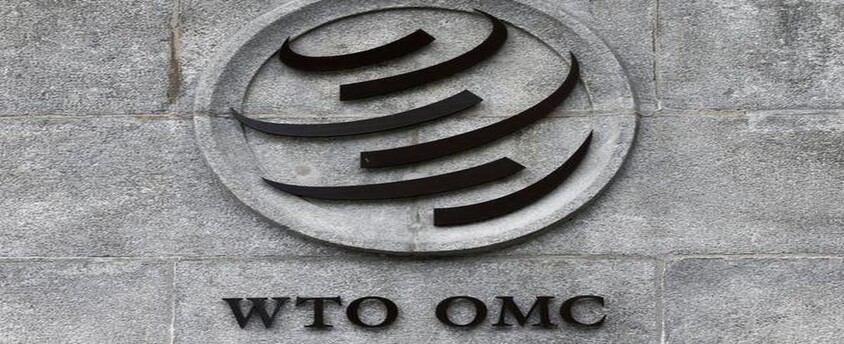
Why in News?
- World Trade Organization (WTO) panel has ruled that India has violated global trading rules by imposing import duties on IT products, such as mobile phones and components, and integrated circuits.
What was the case?
- The case involved a dispute over India’s introduction of import duties ranging from 7.5% to 20% on a wide range of IT products, including mobile phones, components, and integrated circuits.
- The EU, Japan, and Taiwan challenged these import duties in 2019, arguing that they exceeded the maximum rate allowed under global trading rules.
- The recent ruling by the WTO panel found that India had violated these rules and recommended that India bring its measures into conformity with its obligations.
WTO Panel’s Ruling:
- The WTO panel has ruled that India violated global trading rules by imposing these import duties.
- The panel recommended that India bring these measures into conformity with its obligations.
- While the panel broadly backed the complaints against India, it rejected one of Japan’s claims that India’s customs notification lacked “predictability”.
Implications of the ruling:
- The EU is India’s third-largest trading partner, accounting for 10.8% of total Indian trade in 2021, according to the European Commission.
- The ruling could have implications for trade relations between India and the EU, as well as Japan and Taiwan.
- India may be required to lower or eliminate the challenged import duties.
- It remains to be seen whether India will appeal against the ruling.
- If it does, the case will sit in legal purgatory since the WTO’s top appeals bench is no longer functioning due to US opposition to judge appointments.
About the World Trade Organization:
- The WTO started functioning on 1 January 1995, but its trading system is half a century older. Since 1948, the General Agreement on Tariffs and Trade (GATT) had given the rules for the system. (The second WTO ministerial meeting, held in Geneva in May 1998, included a celebration of the 50th anniversary of the system.)
- It did not take long for the General Agreement to give birth to an unofficial, extant international organization, also known informally as GATT.
- Over the years, GATT evolved through several rounds of negotiations.
- The General Agreement on Tariffs and Trade (GATT) had its last round in 1986 and it lasted till 1994.
- This was known as the Uruguay Round and it led to the formulation of the World Trade Organization (WTO).
- While GATT mostly dealt with trade in goods, the WTO and its agreements could not only cover goods but also trade in services and other intellectual properties like trade creations, designs, and inventions.
- The WTO has 164 members and 23 observer governments. Afghanistan became the 164th member in July 2016. In addition to states, the European Union, and each EU country in its own right is a member.India is the original member of the World Trade Organization.
Purpose of WTO:
- To establish rule of law in international trade.
- To ensure free and fair trade.
- To maintain transparency and predictability in international trade.
- To contribute to the development of developing countries.
WTO and developing countries:
- The WTO classifies nations into developed, developing, and least developed countries (LDCs).
- The terms “developed” and “developing” countries are not defined by the WTO.
- The members declare themselves whether their countries are “developed” or “developing.”
- However, other members have the right to challenge the member’s choice to use a provision that is available to developing nations.
- Like IMF and World Bank where a system of weighted voting exists, in WTO also each country has an equal vote. WTO agreements require consensus.
- The Developing Country status comes with certain rights. The status ensures special and differentiating treatment (S&DT).
GI Tag for Cumbum Grapes
17, Apr 2023
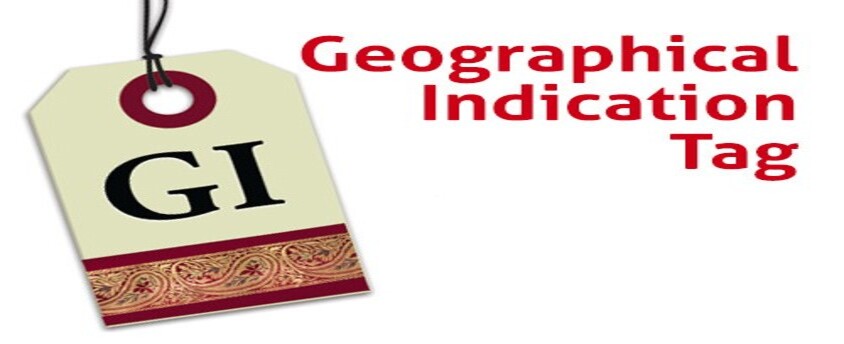
Why in News?
- Tamil Nadu’s famous Cumbum Panneer Thratchai, also known as Cumbum grapes recently earned the Geographical Indication (GI) tag.
About the Cumbum grapes:
- The Cumbum Valley located at the Western Ghats in Tamil Nadu is known as the ‘Grapes City of South India’ and cultivates the Panneer Thratchai.
- This variety, also known as Muscat Hamburg, is popular for its quick growth and early maturity, ensuring that the crop is available in the market almost throughout the year.
- The Panneer grapes were first introduced in Tamil Nadu by a French priest in 1832 and are rich in vitamins, tartaric acid and antioxidants and reduce the risk of some chronic diseases.
- They are also known for a superior taste apart from the purplish brown-colour.
What is GI Tag?
- A GI or Geographical Indication is a name or a sign given to certain products that relate to a specific geographical location or origins like a region, town or country.
- Using Geographical Indications may be regarded as a certification that the particular product is produced as per traditional methods, has certain specific qualities, or has a particular reputation because of its geographical origin.
- Geographical indications are typically used for wine and spirit drinks, foodstuffs, agricultural products, handicrafts, and industrial products.
- GI Tag ensures that none other than those registered as authorized users are allowed to use the popular product name.
- In order to function as a GI, a sign must identify a product as originating in a given place.
Who accords and regulates Geographical Indications?
- Geographical Indications are covered as a component of intellectual property rights (IPRs) under the Paris Convention for the Protection of Industrial Property.
- At the International level, GI is governed by the World Trade Organisation’s (WTO’s) Agreement on Trade-Related Aspects of Intellectual Property Rights (TRIPS).
- In India, Geographical Indications registration is administered by the Geographical Indications of Goods (Registration and Protection) Act, 1999 which came into force with effect from September 2003.
- The first product in India to be accorded with GI tag was Darjeeling tea in the year 2004-05.
What are the Benefits of GI Tags?
- The Geographical Indication registration confers the following benefits:
- Legal protection to the products
- Prevents unauthorised use of GI tag products by others
- It helps consumers to get quality products of desired traits and is assured of authenticity.
- Promotes the economic prosperity of producers of GI tag goods by enhancing their demand in national and international markets.
What are the Significances of GI Tags?
- A geographical indication right facilitates those who have the right to use the indication to prohibit its usage by a third party whose product does not conform to the applicable standards.
- For example, in the purview in which the Darjeeling geographical indication is protected, producers of Darjeeling tea can omit the term “Darjeeling” for tea not grown in their tea gardens or not produced according to the norms set out in the code of practice for the geographical indication.
- However, a protected GI does not permit the holder to forbid someone from making a product using the same approaches as those set out in the standards for that indication.
- Protection for a GI tag is usually procured by acquiring a right over the sign that constitutes the indication.
Challenges in GI Tags:
- The special treatment to wines and spirits in TRIPS Agreement appears to be developed country centric.
- Developing countries, including India, seek the same higher level of protection for all GIs as was given under TRIPS for wines and spirits.
- The battle for GI tag between states.
- False use of geographical indications by unauthorized parties is detrimental to consumers and legitimate producers.
- Cheap Power loom saris are sold as reputed Banarsi handloom saris, harming both the producers and consumers.
- Such unfair business practices result in loss of revenue for the genuine right-holders of the GI and also misleads consumers.
- Protection of GI has, over the years, emerged as one of the most contentious IPR issues.
Way Forward:
- The benefits of GI tag are realised only when these products are effectively marketed and protected against illegal copying.
- Effective marketing and protection require quality assurance, brand creation, post-sale consumer feedback and support, prosecuting unauthorised copiers, etc.
- For internationally recognised products like Darjeeling tea, international protection is of crucial importance.
- Legal protection to GIs also extends to protection of traditional knowledge and traditional cultural expression contained in the products.
- Hence Intellectual Property is a power tool for economic development and wealth creation particularly in the developing world.
- GIs have the potential to be our growth engine. Policy-makers must pay a heed to this and give Indian GI products their true reward.
Competition (Amendment) Bill, 2022
13, Apr 2023
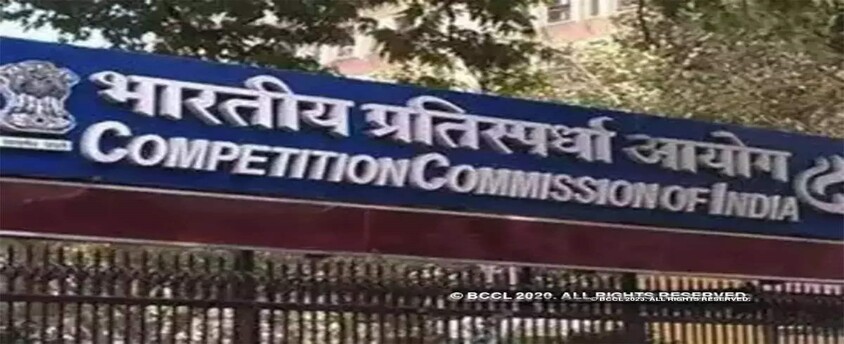
Why in News?
- President Droupadi Murmu has given assent to the bill to amend the competition law and the changes seek to ensure regulatory certainty and foster a trust-based business environment.
What is the Competition Act, 2002?
- The Competition Act, 2002, regulates competition in the Indian market and prohibits anti-competitive practices such as cartels, abuse of dominant market position, and mergers and acquisitions that may have an adverse effect on competition. The Act has been amended by the Competition (Amendment) Act, 2007.
- The Competition Commission of India (CCI) is responsible for implementing and enforcing the Act.
- The Competition Appellate Tribunal is a statutory body created in accordance with the Competition Act, 2002 to hear and regulate on appeals against any rules made, decisions made, or orders made by the Competition Commission of India.
- The government replaced the Competition Appellate Tribunal with the National Company Law Appellate Tribunal (NCLAT) in 2017.
What are the Amendments to the Competition Act Proposed?
Penalties for Competition Law Violations:
- The Bill amends the definition of “turnover” to include global turnover derived from all products and services by a person or an enterprise.
- The amendment allows for the imposition of penalties for competition law violations based on a company’s global turnover, rather than just its turnover in India.
Timelines for Approving Combinations:
- The Bill reduces the time limit for the CCI to form a prima facie opinion on a combination from 30 working days to 30 days.
- The change aims to speed up the process of approving mergers and acquisitions in India.
Review of Regulations:
- The Bill seeks to amend the Competition Act, 2002, to regulate mergers and acquisitions based on the value of transactions. Deals with transaction value of more than Rs 2,000 crore will require CCI’s approval.
- The Bill proposes to reduce the timeline for the CCI to pass an order on such transactions from 210 days to 150 days.
- The Bill decriminalizes certain offences under the Act by changing the nature of punishment from imposition of fine to civil penalties.
- These offences include failure to comply with orders of the CCI and directions of the Director General related to anti-competitive agreements and abuse of dominant position.
What are the Benefits of the Competition (Amendment) Bill?
- Promoting Ease of Doing Business: The amendments to the Competition Act aim to reduce regulatory hurdles and promote ease of doing business in India. The amendments are expected to provide greater clarity to businesses operating in India and reduce the compliance burden for companies.
- Enhancing Transparency: The inclusion of global turnover in the definition of “turnover” aims to enhance transparency and accountability in the Indian market. The amendment ensures that companies cannot escape penalties for competition law violations by shifting their revenue to other countries.
RBI’s Pause On Repo Rate Hike: Concerns Over Inflation And Global Pressures Remain
10, Apr 2023

Why in News?
- The RBI has decided to not increase the repo rate amid continuing hikes by important central banks such as the US Federal Reserve (Fed) and European Central Bank (ECB), and domestic inflation concerns. However, if incoming data point to rising inflation risks, this decision could prove to be only a pause in the rate hiking cycle.
The RBI’s decision to pause on rate hikes
- The RBI feels that money market rates have effectively risen more than the 250-basis-point yank in the repo rate since May 2022, and hence it decided to pause and assess the impact of rate hikes.
- The key reason behind the MPC decision is the expectation of a decline in inflation to 5.2% in the current fiscal, driven by a healthy rabi crop, normal monsoon, moderating international commodity prices, and the impact of rate hikes.The RBI acknowledges the upside risks and stated its readiness to fight any unexpected rise in inflation.
Impact on GDP growth:
- The RBI expects GDP growth to slow to 6% from 7% this fiscal as slowing global growth, domestic interest rates, and messy geopolitics bite.
- Slowing global growth will be net negative for India’s exports, and the growing dependence on commodity exports makes India more vulnerable to global growth volatility.
- Fiscal 2024 will, therefore, test the resilience of India’s domestic demand amid rising interest rates.
Reasons for the expected cooling of consumer inflation:
- Fuel inflation expected to reduce: Fuel inflation is expected to reduce to 3% from a high of over 10% in the current fiscal because some easing of crude oil prices is likely as global growth slows down.
- Decline in core inflation: Slowing domestic growth will ease core inflation from very sticky levels of over 6% last fiscal to 5.5% in the current one. However, the decline in core inflation will be limited as input cost pressures have not dissipated. To protect their margins, firms will continue to pass on input costs to end-consumer. Services inflation will also continue to exert pressure as the rotation of consumption demand from goods to services continues.
- Moderate food inflation: Food inflation, which has a high weightage in the Consumer Price Index and has driven headline inflation in the past, is projected to moderate to slightly below 5%, assuming a normal monsoon. However, food inflation has always been volatile and carries upside risks largely because of climate-related factors affecting agriculture output and prices.
How slowing global growth will have a negative impact on India’s exports?
- The impact of the growth slowdown in the US and Europe is deeper than the recovery in China: The US and Europe have a combined GDP that is twice that of China. Therefore, the impact of the growth slowdown in the US and Europe will be deeper than the recovery in China. This will have a negative impact on India’s exports to the US and Europe.
- India’s exports to the US and Europe are more than to China by a factor of six: India exports more to the US and Europe than to China by a factor of six. Therefore, the negative impact of the growth slowdown in the US and Europe will be felt more by India than by China.
- India’s growing dependence on commodity exports makes it more vulnerable to global growth volatility: India’s exports of petroleum products and steel are growing, and this makes India more vulnerable to global growth volatility. As global growth slows down, demand for commodities is likely to decline, which will have a negative impact on India’s exports.
External vulnerabilities
- India’s external vulnerability is expected to decline with a narrower current account deficit (CAD) and modest short-term external debt.
- The CAD is expected to narrow to 2% of GDP this fiscal from an estimated 2.5% last fiscal.
Conclusion:
- The RBI’s decision to pause on rate hikes is driven by expectations of a decline in inflation. However, inflation risks remain, and the impact of rate hikes on GDP growth is expected to be significant. India’s external vulnerabilities are expected to decline, but the banking turmoil playing out amid interest rate hikes by important central banks and elevated debt levels remains a risk. The RBI’s decision to pause on rate hikes will be closely watched, and further rate hikes may be necessary if inflation risks persist.
The NPCI’s new circular on levy charges
07, Apr 2023

Why in News?
- The National Payments Corporation of India (NPCI), which governs the Unified Payment Interface (UPI), directed the banks that they can now levy charges on merchant transactions made via Prepaid Instrument wallets using UPI.
- As these directions by NPCI got leaked to the media, the NPCI clarified that the usual bank-to-bank UPI transactions would not be charged and that customers will not have to pay for transactions made via Prepaid Payment Instruments (PPI) on UPI.
- NPCI clarified that the new interchange charges are only applicable for PPI merchant transactions.
Prepaid Payment Instruments (PPIs)
- Prepaid Payment Instruments (PPIs) are a type of payment method that is used to purchase various goods and services as well as send or receive money by using the stored value in the wallet.
- Under the PPI mode of transaction, the users must pre-load the digital wallet with a desired amount by using cash, or debit to a bank account, by credit/debit cards, or UPI.
- PPIs can be in the form of mobile wallets, vouchers, secure tokens, physical smart cards, or any other form that allows access to prepaid funds.
- The most prevalent form of PPI used in India at present is the mobile wallet.
- It is to be noted that PPIs can only be used in Indian rupees.
PPI interoperability
- Earlier, in order to use PPI at any merchant, it was mandatory for the respective merchant to be engaged directly by the specific PPI issuer (specific network).
- The PPIs with which the merchant did not have a direct tie-up used to get rejected.
- This provision restricted the customers of one specific mobile wallet to use the money in the wallet only at those merchant locations which had a direct tie-up with the same PPI wallet provider.
- e. if a customer had a Paytm wallet, he/she could only use the money in the wallet for making payments to those merchants who accepted Paytm QR codes.
- The RBI has now mandated interoperability among different PPI wallet providers to address the issues associated with this limitation of PPIs.
- The PPI issuers have now tied up with NPCI for issuing interoperable RuPay PPI cards and for developing interoperable wallets on UPI rails.
- PPIs in the form of mobile wallets can now be linked to UPI which creates interoperable wallets on UPI rails.
The working of PPI interoperability through UPI
- Linking one’s PPI wallet to UPI would enable individuals to transact using the Scan and Pay option on all UPI interoperable QR codes and facilitate the use of PPI wallets at all merchant locations.
- With the help of PPI interoperability, individuals can also send or receive money to any other wallet user.
- Likewise, a merchant with any UPI QR code would be able to accept payments from any PPI issuer or mobile wallet.
- PPI on UPI is expected to increase the incidence of merchant transactions in rural areas and enhance digital financial inclusion by catering to services such as healthcare, education, utility bills, transit, etc.
Charges associated with wallet transactions on UPI
- The PPI-enabled merchants were already paying charges to the PPI issuer for the acceptance of mobile wallets or prepaid cards.
- With the latest changes, the charges are now aligned at a network level with some standardisation.
- From April 1, 2023, an interchange fee of up to 1.1% would be levied on transactions made using PPIs such as gift cards, wallets, etc. for transactions on UPI.
- However, the charges are applicable if the transaction is more than ₹2,000.
- Further, it is clarified no charges are applicable if the merchant is accepting UPI payments from a customer’s bank account as the charges are only applicable if the merchant accepts transactions made using PPI wallet.
- Officially there are no charges to be paid by the customers. However, merchants could pass on the burden to customers in the form of price increases or other such means.
Foreign Trade Policy 2023: India Needs To Adopt 21st-century Trade Policy Instruments
06, Apr 2023
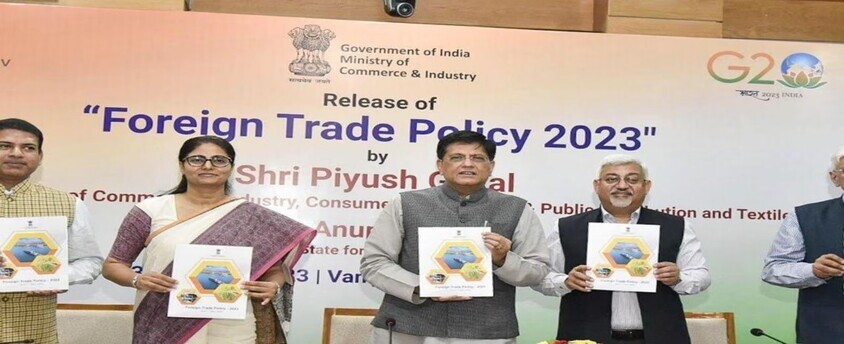
Why in News?
- The Foreign Trade Policy 2023 (FTP 2023) has been recently introduced, but it falls short of addressing the challenges that Indian exporters are likely to face in the global market. India needs to adopt 21st-century trade policy instruments such as product and process standards to improve the quality and efficiency of products.
Foreign Trade Policy, 2023:
- The policy is dynamic and open-ended to accommodate the emerging needs of the time.
- It aims to promote India’s overall exports, which has already crossed US$ 750 Billion.
- The key approach to the policy is based on these 4 pillars:
- Incentive to Remission,
- Export promotion through collaboration – Exporters, States, Districts, Indian Missions,
- Ease of doing business, reduction in transaction cost and e-initiatives and
- Emerging Areas – E-Commerce Developing Districts as Export Hubs and streamlining SCOMET (Special Chemicals, Organisms, Materials, Equipment, and Technologies) Policy
FTP 2023’s inadequate focus on 21st-century trade policy instruments
- 20th-century mindset: The FTP 2023’s primary focus is on regulating, prohibiting, and restricting trade, which is a 20th-century mindset. In contrast, most countries today rely on improving product quality and production efficiencies by rapidly infusing technology to expand their presence in global markets.
- Focus on upgrading the current standards: India needs to focus on upgrading institutions, production facilities, and promoting the development and facilitation of trade to meet the current standards.
Rejigging of export promotion schemes:
- Export promotion schemes: Export promotion schemes were modified after a WTO dispute settlement panel ruled against India in 2019, which found that these schemes provide export subsidies that are not allowed under WTO rules.
- Remission of Duties: The Remission of Duties or Taxes on Export Products (RoDTEP) Scheme was launched in 2021 to neutralize the effect of taxes and duties included in exported goods. The Rajya Sabha’s Standing Committee on Commerce found several weaknesses in the scheme, and FTP 2023 should have responded to the recommendations.
Developing districts as export hubs
- FTP 2023 introduces the novel idea of developing districts as export hubs, which could help achieve the objective of balanced regional development.
- However, the policy only speaks of setting up export promotion committees at the district and state/UT levels, with no mention of supporting efficient infrastructure.
E-commerce and India’s readiness to engage in the WTO:
- E-commerce is a focus area of FTP 2023, but India has opposed discussions on extending the rules of the WTO in this area.
- Moreover, advanced countries have been seeking data portability, which India has refused to accept.
- It remains unclear whether the mention of e-commerce in FTP 2023 implies that India is ready to engage in the WTO on this matter.
Conclusion:
- FTP 2023 falls short of addressing the challenges that Indian exporters are likely to face in the global market.
- It needs to focus on upgrading institutions, production facilities, and promoting the development and facilitation of trade, which requires the Directorate General of Foreign Trade (DGFT) to coordinate with all the standard-setting agencies of the government and relevant institutions in the private sector.
- Developing districts as export hubs could help achieve the objective of balanced regional development, but supporting efficient infrastructure is critical for the programme’s success.
In controlled digital lending, the issue of public interest
06, Apr 2023

Why in News?
- There was a legal tussle in the United States regarding the development of a globally accessible digital library.
Highlights:
- The four major publishers in the USA and Internet Archive (IA), a non-profit organization that is building a globally accessible digital library are engaged in a legal tussle.
- The incident has once again brought to the fore the issue of copyright law and technological advancements.
- It raises the question of “Whether copyright law should protect the public interests or the commercial interests of the copyright holders?”
Internet Archive:
- It is an American digital library to access information, especially for persons with disabilities.
- It is also a non-profit organization that advocates free and open Internet.
- It has archived approximately 735 billion web pages, 41 million books and texts, 14.7 million audio recordings, 8.4 million videos, 4.4 million images, and around 890000 software programs.
Legal Dispute:
- It has been alleged by the publishers that nearly 3.6 million books made available by the IA for borrowing are copyrighted.
- It is argued by the publishers that IA violated the rights provided under copyright law for 127 titles published by them.
- The publishers are especially concerned about the ‘National Emergency Library’, which was established at the peak of the Covid-19 pandemic.
- However, IA rebutted by highlighting that books under copyright protection are lent to the users in a regulated manner through ‘Controlled Digital Lending’ (CDL).
- IA also highlighted that through the CDL route, the sales of print and electronic copies from the publisher’s preferred platforms were not hampered.
- The district court for the Southern District of New York ruled that the activities of IA have violated several rights of publishers under copyright law.
- Furthermore, they do not constitute ‘fair use’ under the same law.
- The court concluded that the benefits provided by IA “cannot outweigh the market harm to the publishers.”
- It is argued that the court ignored the judgment of the U.S. Supreme Court in the Google LLC vs Oracle America, Inc. case (2021).
- It was directed that it is important to consider the public benefits of copying while analyzing potential financial losses for copyright holders.
Controlled Digital Lending:
- Under Controlled Digital Lending (CDL), IA avails one digital copy of each non-circulating print book it has stored. It then lends it like the physical library (i.e. lending one owned copy to one person at a time).
- Moreover, it counts one copy per library (from libraries participating in the digitization process), irrespective of the number of physical copies.
- It is found that lending books from libraries physically is on the decline. This was further hampered by the pandemic.
- However, it should be noted that the number of readers has not gone down, instead, they prefer reading on tablets and mobile phones.
CDL has various advantages:
- It bridges the gap between privileged and unprivileged readers and urban and rural readers.
- It increases the accessibility of books, even to the remotest locations.
- They also provide books that have gone out of print.
- It invokes benefits for education, research, and cultural participation.
India’s Scenario:
- Currently, India has no major CDL initiative. However, it is speculated that there can be CDL in the future as digitization projects in India have also begun (for example, the NLSIU initiative).
Conclusion:
- The case can have serious implications in other countries also.
- It is said that even the current lending process can be threatened if economic interests are prioritized over the public interest.
- It should be realized that the copyright system should not only protect the rights of copyright holders but also the interests of the users of copyrighted works.
NCLAT upholds penalty on Google
01, Apr 2023
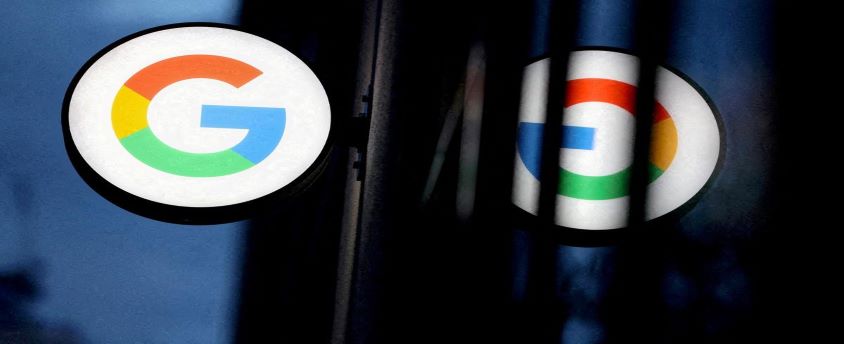
Why in News?
- The National Company Law Appellate Tribunal (NCLAT) has recently upheld the ₹1,337 crore fine imposed on Google by the Competition Commission of India (CCI).
- While holding that the CCI investigation did not violate principles of natural justice, the tribunal set aside certain directions issued by the CCI.
About the News:
- The court quashed the directions relating to the non-monetary directives that would have forced the tech giant to allow uninstalling of Google’s pre-installed apps on Android devices.
- The Tribunal also set aside directives that would have forced the company to allow developers of app stores to distribute their app store through Google Play Store.
- Additionally, the Tribunal also set aside orders directing Google to allow app developers to distribute apps through side-loading, and not deny access to its play services Application Programming Interface (APIs) to disadvantage Original Equipment Manufacturers, app developers, and its existing or potential competitors.
What’s the issue?
- CCI found that Google was dominant in the relevant market for licensable smart TV device operating systems in India.
- It also said that prima facie mandatory pre-installation of all the Google applications under Television App Distribution Agreement (TADA) amounts to imposition of unfair conditions on the smart TV device manufacturers.
- This is in contravention of Section 4(2)(a) of the Competition Act.
- So, CCI imposed a penalty on Google for “abusing its dominant position” in markets related to the Android mobile device ecosystem. Google filed an appeal with the NCLAT against the CCI order which was declined by NCLAT.
- Section 4 of the Act pertains to abuse of dominant position.
About Competition Commission Of India:
- The Competition Commission of India (CCI) was established under the Competition Act, 2002 for the administration, implementation and enforcement of the Act, and was duly constituted in March 2009. Chairman and members are appointed by the central government.
Functions of the commission:
- It is the duty of the Commission to eliminate practices having adverse effect on competition, promote and sustain competition, protect the interests of consumers and ensure freedom of trade in the markets of India.
- The Commission is also required to give opinion on competition issues on a reference received from a statutory authority established under any law and to undertake competition advocacy, create public awareness and impart training on competition issues.
About the Competition Act:
- The Monopolies and Restrictive Trade Practices Act, 1969 (MRTP Act) was repealed and replaced by the Competition Act, 2002, on the recommendations of Raghavan committee.
- The Competition Act, 2002, as amended by the Competition (Amendment) Act, 2007, prohibits anti-competitive agreements, abuse of dominant position by enterprises and regulates combinations (acquisition, acquiring of control and M&A), which causes or likely to cause an appreciable adverse effect on competition within India.
Why did India reject J&J’s patent on TB drug?
28, Mar 2023
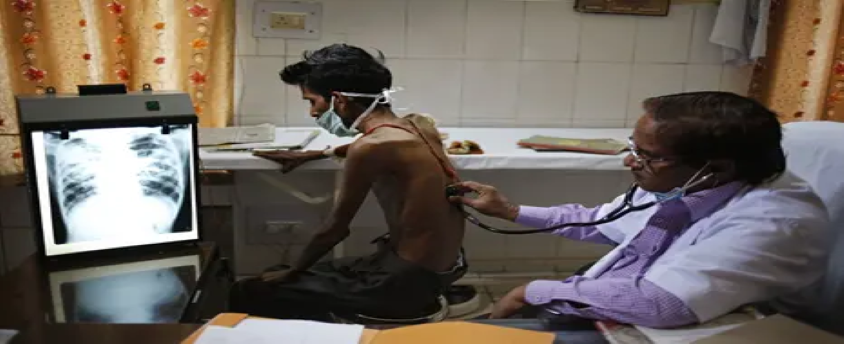
Why in News?
- An application by Johnson & Johnson (J&J) to extend its patent on the drug Bedaquiline beyond July 2023 was rejected by the Indian Patent office.
- Bedaquiline is used to treat drug-resistant TB.
- This would allow drug manufacturers to produce generic versions of Bedaquiline and make it more affordable.
- It would help in achieving India’s goal of eliminating TB by 2025.
Drug-resistant TB and its treatment:
- India accounts for almost one-fourth of the world’s burden of multi-drug-resistant (MDR) TB and extensively-drug-resistant (XDR) TB (as per 2017 findings).
- MDR TB resists treatment by at least two frontline drugs namely isoniazid and rifampicin.
- XDR TB resists treatment by isoniazid, rifampicin, fluoroquinolones, and any second-line injectable drug. There were approximately 2650 cases of XDR TB in 2017.
- It was found that in 2021, there were about 124000 cases of MDR TB in India.
- Despite the reduction of TB incidence in India, MDR and XDR TB endanger the efforts to locally eradicate the disease.
- Moreover, the COVID-19 pandemic has severely affected the treatment of the disease for two years due to supply chain disruption, inaccessibility of drugs, and shortage of healthcare workers.
- TB can be treated by strictly adhering to the drug doses. Deviation from the drug schedule might result in making the bacteria drug-resistant.
- A drug-resistant TB is harder to treat. The World Health Organization, in 2018, replaced two injectable drugs for MDR TB with an oral regimen comprising Bedaquiline.
BEDAQUILINE:
- It should be noted that second-line treatment options are mostly injected and can have severe side effects such as hearing loss. Bedaquiline is available in tablet form and is less harmful.However, it was found that it might have an impact on the heart and liver and thus it is recommended as a treatment of last resort.
- As per the guidelines prescribed by the Ministry of Health and Family Welfare, Bedaquiline should be used as part of the Programmatic Management of MDR TB under the National TB Elimination Programme.
Details about the rejection of patent treatment:
- The patent application of J&J was for a fumarate salt of a compound to produce Bedaquiline tablets.
- The application was opposed on the ground as the method used to produce a “solid pharmaceutical composition” of Bedaquiline is “obvious” and does not require an “inventive step”.
- The Indian Patent Act 1970 Section 2(1)(ja) describes an ‘inventive step’ to be an invention that is “not obvious to a person skilled in the art”.
- It was also argued that the current application was significantly based on the previous patent(WO 2004/011436). It is similar to the compound discussed in 2002.
- The opposing groups also highlighted the act of ‘evergreening’, which is disallowed in India.Evergreening is a method in which patent-owner continuously extends their rights and/or apply multiple patents for the same product.
- The Patent Office rejected the application on these grounds. It also referred to Sections 3d and 3e of the Act. Check inpatient alcohol rehab.
Consequences of the rejection of patent application:
- J&J’s patent on Bedaquiline resulted in the cost of the drug being $400 per person.
- The rejection of the application will reduce the cost of the drug by 80%.
- After July 2023, other manufacturers of generic drugs can produce generic versions of Bedaquiline.
India’s Foreign Trade Policy set to be revised from April 1
16, Mar 2023
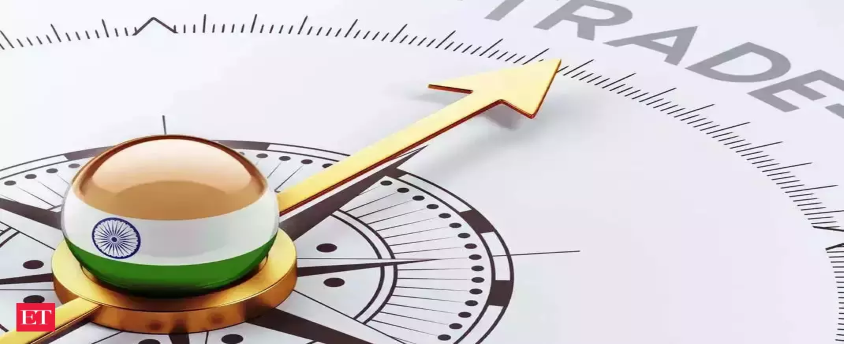
Why in News?
- The revision of India’s Foreign Trade Policy, which has been unchanged since 2015 and due for three years, may finally be announced by the end of this month.
What is a Foreign Trade Policy?
- India’s Foreign Trade Policy (FTP) is a set of guidelines for goods and services imported and exported.
- These are developed by the Directorate General of Foreign Trade (DGFT), the Ministry of Commerce and Industry’s regulating body for the promotion and facilitation of exports and imports.
- FTPs are enforceable under the Foreign Trade Development and Regulation Act 1992.
What is India’s Foreign Trade Policy?
- In line with the ‘Make in India,’ ‘Digital India,’ ‘Skill India,’ ‘Startup India,’ and ‘Ease of Doing Business initiatives, the Foreign Trade Policy (2015-20) was launched on April 1, 2015.
- It provides a framework for increasing exports of goods and services, creating jobs, and increasing value addition in the country.
- The FTP statement outlines the market and product strategy as well as the steps needed to promote trade, expand infrastructure, and improve the entire trade ecosystem.
- It aims to help India respond to external problems while staying on top of fast-changing international trading infrastructure and to make trade a major contributor to the country’s economic growth and development.
Issues with FTP (2015-2020)
- Acting on Washington’s protest, a WTO dispute settlement panel ruled in 2019 that India’s export subsidy measures are in violation of WTO norms and must be repealed.
- Tax incentives under the popular Merchandise Exports from India Scheme (MEIS) (now renamed as RODTEP Scheme)and Service Exports from India Scheme (SEIS) programmes were among them.
- The panel found that because India’s per capita gross national product exceeds $1,000 per year, it may no longer grant subsidies based on export performance.
Why such a delay in Foreign Trade Policy?
- Geopolitical uncertainty: The geo-political situation is not suitable for long-term foreign trade policy, said Union Commerce Minister.
- Global recession: Currently, fears of a recession in major economies like the US and Europe have escalated a panic among investors.
- Decline in USD inflows: Foreign investors have begun to pull back their money from equities.
- Rupee depreciation: The US Dollar is at a 22-year high, while the Rupee hit a new all-time low of $81.6.
- Huge trade deficit: The trade deficit widened by more than 2-folds to $125.22 billion (April – August 2022) compared to $53.78 billion in the same period last year.
Explained: Silicon Valley Bank (SVB) Crisis
15, Mar 2023
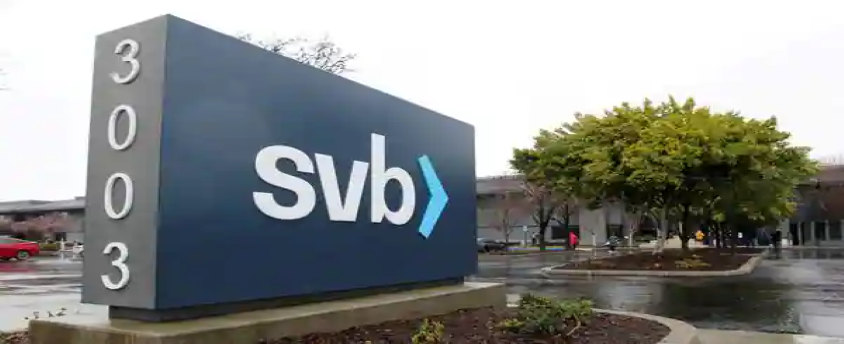
Why in News?
- The shutdown and takeover of Silicon Valley Bank (SVB) by US regulators has raised questions on how it impacts India’s startup industry. It was an important partner for the global startup economy.
Silicon Valley Bank (SVB):
- It is a financial institution that provides banking services to the technology industry and venture capital firms.
- Founded in 1983, it has since become the go-to bank for startups and entrepreneurs in Silicon Valley and beyond.
- It is unique in that it understands the specific needs and challenges of the tech industry, and provides a range of services that cater to startups, including loans, deposits, and investment management.
- It has become a critical player in the startup ecosystem, providing funding and financial services to many of the world’s most successful startups, including Tesla, Uber, and LinkedIn.
What is SVB crisis?
- SVB Financial Group runs one of the largest American commercial banks – Silicon Valley Bank.
- Last week, it had announced a $1.75 billion share sale programme to further strengthen its balance sheet.
- This programme triggered a massive sell-off in the group’s shares.
- Thereafter, market went severely bearish and bear rampage wiped out over $80 billion of its market value.
- Alongside, the bond prices of the group collapsed and created a panic in the market.
Reasons for SVB’s downfall
- Downturn of tech stocks: The bank was hit hard by the downturn in technology stocks over the past year as well as the Federal Reserve’s aggressive plan to increase interest rates to combat inflation.
- Lower bond yield due to lower interest rates: SVB bought billions of dollars’ worth of bonds over the past couple of years, using customers’ deposits as a typical bank would normally operate.
- Mostly startups account holders: SVB’s customers were largely startups and other tech-centric companies that started becoming needier for cash over the past year.
- Drying VC funding: Venture capital funding was drying up, companies were not able to get additional rounds of funding for unprofitable businesses.
- Fear over deposit insurance: Since its customers were largely businesses and the wealthy, they likely were more fearful of a bank failure since their deposits were over $250,000, which is the government-imposed limit on deposit insurance.
Immediate effects of SVB’s failure:
- Startups scramble: Many startups and other companies that relied on the bank’s services were suddenly left without access to their funds, which caused financial strain and uncertainty for these businesses.
- Ripple effect: They now fear that they might have to pause projects or lay off or furlough employees until they could access their funds.
Major implications for SVB:
- There are two large problems remaining with Silicon Valley Bank-
- Huge uninsured deposits: The vast majority of these were uninsured due to it’s largely startup and wealthy customer base.
- No scope for asset reconstruction: There is no potential buyer of Silicon Valley Bank.
Could this lead to a repeat of what happened in 2008?
- No probability: At the moment, experts do not expect any issues to spread to the broader banking sector.
- Diversified customer bases: Other banks are far more diversified across multiple industries, customer bases and geographies.
Impact on Indian startups:
- Uncertainty over deposits: The failure of SVB is likely to have a ripple effect on Indian startups, many of which have significant amounts of funds deposited with the bank.
- Hamper the funding: SVB has been a major player in the Indian startup ecosystem, providing banking services and funding to many of the country’s most successful startups, including Flipkart, Ola, and Zomato.
- Ripple effect: This could lead to a cash crunch for many companies, which may be forced to cut costs, delay projects, or lay off employees.
- Reduce global footprints: SVB has also been instrumental in helping Indian startups expand into the US market, by providing them with the necessary infrastructure and support to set up operations in Silicon Valley.
How can Indian startups mitigate the impact of SVB’s failure?
Diversify banking relations: Indian startups that have funds deposited with SVB may want to consider diversifying their banking relationships to reduce their exposure to any one bank.
- Alternative financing: This may involve opening accounts with multiple banks, or exploring alternative banking services such as digital banks or fintech startups.
2008 Financial Crisis:
- The bankruptcy of Lehman Brothers was a key event in the 2008 financial crisis.Lehman Brothers was one of the largest investment banks in the world, with assets of around $600 billion. However, the firm had invested heavily in the US housing market, and when the housing market began to decline in 2007, Lehman’s investments began to lose value.
- In addition, the firm had taken on a large amount of debt to finance its investments and operations.As the value of Lehman’s assets declined and its debt levels increased, the firm became insolvent and was unable to meet its obligations to creditors.In September 2008, Lehman Brothers filed for bankruptcy, triggering a financial panic and market turmoil.
Its impact:
- The Lehman crisis had far-reaching consequences, including the collapse of other financial institutions, a global recession, and widespread economic and social hardship.The crisis highlighted the risks of excessive leverage and the interconnectedness of financial institutions, and led to significant reforms in financial regulation and risk management practices.
Failure of Silicon Valley Bank
13, Mar 2023
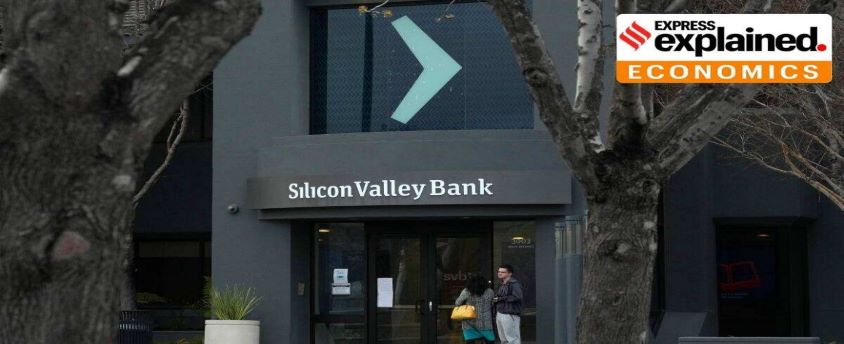
Why in News?
- On March 10,2023, Silicon Valley Bank became the largest bank to fail since the 2008 financial crisis.
- The California Department of Financial Protection and Innovation shut down Silicon Valley Bank.
- The move put nearly $175 billion in customer deposits under the control of the Federal Deposit Insurance Corp (FDIC).
- The FDIC created a new bank to hold the deposits and other assets of the failed one.
Reasons behind Bank’s Failure:
- SVB’s downfall can be attributed to a bank run, which is when a large number of depositors withdraw their funds from a bank all at once, typically due to fears of the bank’s insolvency.
- In SVB’s case, the bank was largely affected by the downturn in technology stocks over the past year as well as the Federal Reserve’s aggressive plan to increase interest rates to combat inflation.
- SVB bought billions of dollars’ worth of bonds over the past couple of years, using customers’ deposits.
- The value of those investments fell because they paid lower interest rates than what a comparable bond would pay if issued in today’s higher interest rate environment.
- SVB’s customers were largely startups and other tech-centric companies that started becoming more needy for cash over the past year. Venture capital funding was drying up, companies were not able to get additional rounds of funding for unprofitable businesses who then began to withdraw their money.
- To pay those requests, Silicon Valley Bank was forced to sell off some of its investments at a time when their value had declined.
- To fund the redemptions, Silicon Valley Bank on March 08,2023 sold a $21 billion bond portfolio consisting mostly of U.S. Treasuries.
- SVB’s decision to sell $2.25 billion in common equity and preferred convertible stock to fill its funding resulted in decline of share price by 60%, as investors believed that the deposit withdrawals may push it to raise even more capital.
- Several SVB clients pulled their money from the bank which spooked investors such as that SVB had lined up for the stock sale, and the capital raising effort collapsed resulting in the failure of the bank.
Effects of Silicon Valley Bank’s failure on India:
- SVB has been a major player in the Indian startup ecosystem, providing banking services and funding to many of the country’s most successful startups, including Flipkart, Ola, and Zomato.The closure has sent shock waves in the Indian startups’ sector, which was already facing a funding problem.
- It will also dent the fundraising ability of Indian startups as the US-based bank was a key source of funding for tech startups.
- This could lead to a cash crunch for many companies, which may be forced to cut costs, delay projects, or lay off employees.SVB has also been instrumental in helping Indian startups expand into the US market, by providing them with the necessary infrastructure and support to set up operations in Silicon Valley.
Second leg of Budget Session
13, Mar 2023
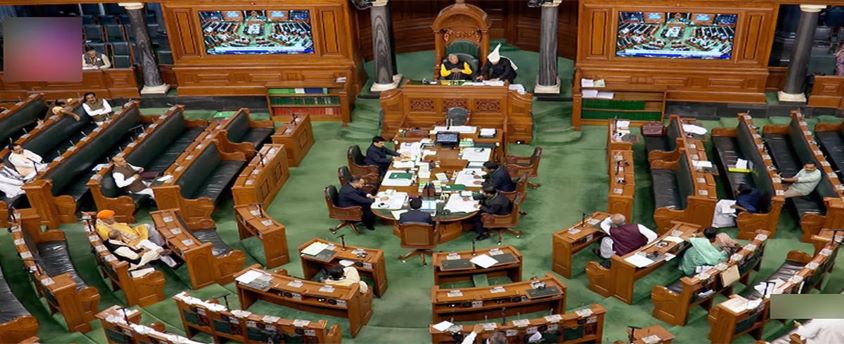
Why in News?
- The second leg of the Budget session will commence on March 13, 2023 with the government asserting that its priority is to pass the Finance Bill.
What is Budget?
- Annual Financial Statement is a documents presented to the Parliament in every financial year as a part of the Budget Process under Article 112 of the constitution of India.
- This document comprises the receipts and expenditures of the government of current year, previous year and budget year in three separate parts viz.
- Consolidated Fund of India, Contingency Fund of India and Public Account of India. The government has to present a statement of receipts and expenditure for each of these funds.
- Capital receipt comprises of loans raised by the Government, borrowing from the Reserve Bank of India and loans taken from foreign Governments/institutions.
- It also embraces recoveries of loans advanced by the Government and sale proceeds of government assets, including those realized from divestment of Government equity in PSUs.
Difference between Annual Financial Statement and Budget:
- The term budget is used for several documents together including the Annual Financial Statement. The other documents in budget include Demands for Grants (DG); Appropriation Bill; Finance Bill; Memorandum Explaining the Provisions in the Finance Bill; Macro-Economic Framework Statement; Fiscal Policy Strategy Statement; Medium Term Fiscal Policy Statement; Medium Term Expenditure Framework Statement etc.
- However, Annual Financial Statement distinguishes the expenditure on revenue account from the expenditure on other accounts, as is mandated in the Constitution of India. The Revenue and the Capital sections together, therefore make the Union Budget and that is why, Annual Financial Statements is essentially the Budget of the Government.
Budget Pre Independence:
- Budget was introduced on 7 April 1860 by the East India Company to the British Crown. It was presented by a Scottish Economist and politician James Wilson.
- For the first 30 years, the Budget didn’t have the word infrastructure. It was introduced in the Budget in the 1900s.
Budget Post Independence:
- First Union Budget of Independent India: It was introduced on 26 November 1947. It was present by the first Finance Minister R.K. Shanmukham Chetty. However, it was a review of the Indian economy and no new taxes were proposed. It is to be noted that almost 46% of the Budget or Rs. 92.74 crores were allocated for defence services department.
- Printing of Budget: The Budget was leaked in 1950, following which the government shifted the printing of budget from Rashtrapati Bhawan to a press at Minto Road. In 1980, it was shifted to a government press in North Block.
- Introduction of Hindi: Till 1955, the Budget was presented only in the English language. However, from 1955-56, the Budget documents are printed both in English and Hindi.
- First Prime Minister to present the Union Budget: Former Prime Minister Jawaharlal Nehru was the first PM to present the Union Budget for the FY 1958-1959. The Union Budget is usually presented by the Finance Minister. Other than Jawaharlal Nehru, Indira Gandhi and Rajiv Gandhi were the only Prime Ministers to have presented the Budget in their respective administration.
- First Woman to present the Union Budget: Former Prime Minister Indira Gandhi was the first woman to present the Union Budget for the FY 1970-71. On 5 July 2019, Finance Minister Nirmala Sitharaman became the first full-time woman Finance Minister on India.
- Maximum Union Budgets by a Minister: Former Finance Minister Moraji Desai presented the Union Budget a record 10 times, followed by former FM P. Chidambaram (9), former FM Pranab Mukherjee (8), former FM Yashwant Sinha (8), and former FM Manmohan Singh (6)
- Black Budget: For the FY 1973-74, the Budget was presented by the then Finance Minister Yashwantrao B. Chavan and is called as ‘Black Budget’ due to high budget deficit of Rs 550 crores– the maximum until that time. The Budget followed the Indo-Pak war of 1971 and failed the monsoon season.
- The Epochal Budget: The Budget presented by the then Finance Minister Manmohan Singh for the FY 1991-92 is known as ‘The Epochal Budget’– a budget that changed India forever as it marked the economic liberalisation of the nation.
- Dream Budget: The Budget presented by the then Finance Minister P. Chidambaram for the FY 1997-98 is known as ‘Dream Budget’ as it proposed to lower the tax slabs of personal and corporate taxes.
- The Millennium Budget: The Budget presented by the then Finance Minister Yashwant Sinha for the FY 2000-01 is known as ‘The Millennium Budget’– revolutionised India’s IT sector.
- Change in time: In the year 2001, Finance Minister Yashwant Sinha changed the time for the presentation of Union Budget from 5 p.m. to 11 a.m. on the last working day of February.
- Merging of Budgets and Change in date: In the year 2017, the Rail Budget was merged with the Union Budget. Also, since the said year, the Budget has been presented on 1 February following the changes introduced by the then Finance Minister Arun Jaitley.
- Gift Tax: Former Prime Minister Jawaharlal Nehru introduced the Gift Tax in the FY 1958-1959 Budget to make tax evasion more difficult.
- Goods and Services Tax: On 28 February 2006, Goods and Services Tax was introduced by the then Finance Minister P. Chidambaram in the Budget.
- Longest Budget speech: Former Finance Minister Arun Jaitley holds the record for delivering the longest Budget speech in 2014– 2.5 hours.
- Bahi Khata instead of a briefcase: In the year 2019, Finance Minister Nirmala Sitharaman replaced the standard Budget briefcase with the traditional ‘Bahi Khata’ with the National Emblem.
- Paperless Budget: For the first time in Independent India’s history, the Budget for the FY 2021-22 wass paperless.
Budgeting process in India:
- The procedure for presentation of the Budget in and its passing by Lok Sabha is as laid down in articles 112—117 of the Constitution of India, Rules 204—221 and 331-E of the Rules of Procedure and Conduct of Business in Lok Sabha and Direction 19-B of Directions by the Speaker.
- The Budget goes through six stages:
- Presentation of Budget.
- General discussion.
- Scrutiny by Departmental Committees.
- Voting on Demands for Grants.
- Passing of Appropriation Bill.
- Passing of Finance Bill.
Presentation:
- The Budget is presented to Lok Sabha on such day as the President may direct.
- Immediately after the presentation of the Budget, the following three statements under the Fiscal Responsibility and Budget Management Act, 2003 are also laid on the Table of Lok Sabha:
- The Medium-Term Fiscal Policy Statement;
- The Fiscal Policy Strategy Statement; and
- The Macro Economic Framework Statement.
India close to Hindu Rate of Growth: Raghuram Rajan
10, Mar 2023

Why in News?
- Former RBI Governor Raghuram Rajan has warned that India is “dangerously close to the Hindu rate of growth”.
What is Hindu Rate of Growth?
- The “Hindu Rate of Growth” is a term used to describe the slow growth rate of the Indian economy between the 1950s and the 1980s.
- It was coined by the Indian economist Raj Krishna in the 1970s.
- During this period, the Indian economy grew at an average rate of around 3.5% per year, which was much lower than other developing countries like South Korea, Taiwan, and Hong Kong.
- The term is considered controversial as it suggests that the slow growth rate was a result of cultural or religious factors rather than economic policies and structural issues.
- However, the term is still used in academic and policy discussions to refer to the slow growth of the Indian economy during this period.
Features of Hindu Rate of Growth:
- The then features which led to the coining of this term were-
- Low GDP growth rate: The term refers to the period from the 1950s to the 1980s when India’s economy grew at an average rate of around 3.5% per year, which was much lower than other developing countries.
- Slow Industrialization: The industrial sector was dominated by a few public sector companies, and the private sector was heavily regulated.
- Stagnant Agriculture: There was little investment in agriculture, and the sector was not given much priority in government policies.
- License Raj: India had a socialist economic model with heavy government regulation. The License Raj system required permits and licenses for businesses, creating a bureaucratic and corrupt system that hindered innovation and entrepreneurship.
- Import Substitution: India followed a policy of import substitution, where the government tried to develop domestic industries by protecting them from foreign competition.
- This led to a lack of competition, low quality of products, and high prices.
- Inefficient Public Sector: The public sector dominated the economy, but it was inefficient, unproductive, and plagued by corruption. Public sector companies were often overstaffed and poorly managed, resulting in low productivity.
- Lack of Foreign Investment: India was not attractive to foreign investors during this period, and there was little foreign investment in the economy. The government imposed strict controls on foreign investment, and the regulatory environment was not conducive to foreign investment.
Concerns flagged by Rajan:
- Rajan noted that India’s economic growth rate had been declining even before the COVID-19 pandemic hit the country.
(a) Decline in GDP growth rate
- India’s economic growth rate had fallen to 4.5% in the September quarter of 2019, before the pandemic hit in early 2020.During the pandemic, the Indian economy contracted sharply, with GDP falling by 7.7% in the 2020-21 fiscal year.
- The economy has rebounded somewhat, with the IMF forecasting GDP growth of 9.5% for the current fiscal year.
(b) Lower growth potential than hyped
- However, Rajan noted that India’s potential growth rate is likely to be lower than in the past, due to factors such as an aging population, a decline in the working-age population, and sluggish investment.
- He also cited the country’s poor performance on human development indicators, such as education and health, as a constraint on growth.
Key suggestions:
- Rajan called for measures to address the structural factors that are holding back growth, such as investment in infrastructure and education, and improving the ease of doing business in India.
- He also emphasized the importance of macroeconomic stability and maintaining fiscal discipline, to avoid inflation and currency depreciation.
- He also called for measures to address inequality, such as better targeting of subsidies to those who need them most.
Conclusion:
- Overall, Rajan’s remarks suggest that India faces significant challenges in maintaining high levels of economic growth, and that structural reforms will be needed to address these challenges.
SDGs: India’s Progress Analysis
04, Mar 2023
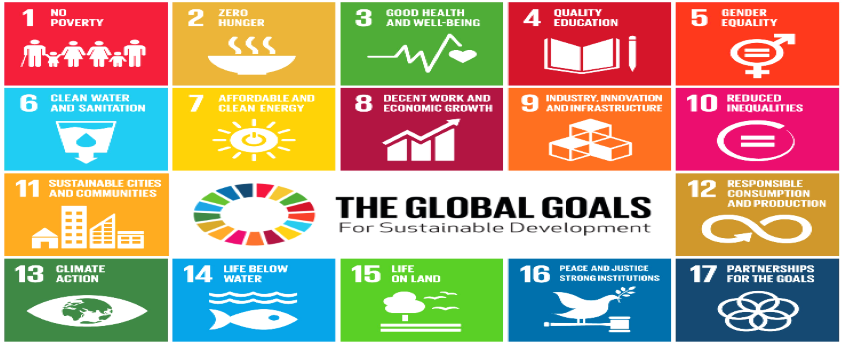
Why in News?
- A recent analysis published in The Lancet has concluded that India is not on-target to achieve 19 of the 33 Sustainable Development Goals (SDGs) indicators. The critical off-target indicators include access to basic services, wasting and overweight children, anaemia, child marriage, partner violence, tobacco use, and modern contraceptive use.
Analysis:
- On-Target: Districts that have not met the SDG target by 2021 and have observed a magnitude of improvement between 2016 and 2021 sufficient to meet the target by 2030.
- Off-Target: Districts that have not met the SDG target by 2021 and either observed worsening between 2016 and 2021 or observed an insufficient magnitude of improvement between 2016 and 2021. If these districts continue with either of these trends, they will not meet their targets by 2030.
- Progress in: Indicators shows the progress in reducing adolescent pregnancy, tobacco use in women, multidimensional poverty, teenage sexual violence, and improving electricity access.
- Areas where more efforts are needed: More efforts are needed for reducing anaemia in women, improving access to basic services, providing health insurance for women, and reducing anaemia in pregnant women.
Sustainable Development Goals (SDGs)
- The SDGs, otherwise known as the Global Goals, are a universal call to action to end poverty, protect the planet and ensure that all people enjoy peace and prosperity.
- The SDGs were adopted by the United Nations in 2015 with a vision to achieve a better and more sustainable future for all. The 17 SDGs came into force with effect from 1st January 2016 as a part of 2030 Agenda for Sustainable Development.
- India is one of the signatory countries that has committed to achieving these goals by 2030.
- Though not legally binding, the SDGs have become de facto international obligations and have the potential to reorient domestic spending priorities of the countries during the next fifteen years.
- Countries are expected to take ownership and establish a national framework for achieving these goals.
Targets set for each of the SDGs:
- No Poverty: By 2030, eradicate extreme poverty for all people everywhere, currently measured as people living on less than $1.25 a day.
- Zero Hunger: By 2030, end hunger and ensure access by all people, in particular the poor and people in vulnerable situations, including infants, to safe, nutritious and sufficient food all year round.
- Quality Education: By 2030, ensure that all girls and boys complete free, equitable and quality primary and secondary education leading to relevant and effective learning outcomes.
- Gender Equality: End all forms of discrimination, violence, harmful practices against all women and girls everywhere. Ensure women’s full and effective participation and equal opportunities for leadership at all levels of decision-making in political, economic, and public life.
SDG
India’s progress towards achieving SDGs so far
- SDG 1 (No Poverty): India has made significant progress in reducing poverty, with the poverty rate declining from 21.9% in 2011-12 to 4.4% in 2020. The government’s efforts to provide financial inclusion and social protection schemes have contributed to this progress.
- SDG 2 (Zero Hunger): India has made progress in reducing hunger, with the prevalence of undernourishment declining from 17.3% in 2004-06 to 14% in 2017-19. The government’s initiatives such as the National Food Security Act and the Pradhan Mantri Garib Kalyan Anna Yojana have contributed to this progress.
- SDG 3 (Good Health and Well-being): India has made progress in improving maternal and child health, with maternal mortality ratio declining from 167 per 100,000 live births in 2011-13 to 113 in 2016-18. The government’s efforts to strengthen health systems and increase access to healthcare services have contributed to this progress.
- SDG 4 (Quality Education): India has made progress in improving access to education, with the gross enrolment ratio for primary education increasing from 93.4% in 2014-15 to 94.3% in 2019-20. The government’s initiatives such as the Sarva Shiksha Abhiyan and the Right to Education Act have contributed to this progress.
- SDG 5 (Gender Equality): India has made progress in improving gender equality, with the sex ratio at birth increasing from 918 in 2011 to 934 in 2020. The government’s initiatives such as the Beti Bachao Beti Padhao and the Maternity Benefit Programme have contributed to this progress.
Recent findings by National Family Health Survey
- Multidimensional poverty declined: At a compounded annual average rate of 4.8 per cent per year in 2005-2011 and more than double that pace at 10.3 per cent a year during 2011-2021.
- Declining child mortality: There are some issues with the 2011 child-mortality data, but for each of the 10 components of the MPI index, the rate of decline in 2011-2021 is considerably faster than in 2005-2011.
- Average decline in overall indicators: The average equally weighted decline for nine indicators was 1.9 per cent per annum in 2005-2011 and a rate of 16.6 per cent per annum, more than eight times higher in 2011-2021.
- Consumption inequality decline: Every single household survey or analysis has shown that consumption inequality declined during 2011-2021. This is consistent with the above finding of highly inclusive growth during 2011-2021.
Conclusion:
- The analysis provides a valuable tool for policymakers to address the gaps and focus on the indicators that require more attention, thereby improving the well-being of its citizens and creating a sustainable future for all.
A Budget that signals growth with stability
03, Mar 2023

Why in News?
- Union Finance Minister Nirmala Sitharaman presented the Union Budget 2023-24 in Parliament on February 01.
Highlights:
- The Economic Survey 2022-23 has laid emphasis on India’s remarkable broad-based recovery to reach the level of income that existed before the outbreak of the coronavirus pandemic.
- The pandemic was followed by the Russia-Ukraine conflict and the accompanying sanctions that have been imposed by the West on Russia, the slowdown and the recession in major economies and the rise in inflation leading to sharp increases in interest rates, followed by capital outflow and the pressure on the exchange rate.
- Even though the economy has staged a recovery and surpassed the pre-pandemic income level, it is still 7% below the pre-pandemic GDP trend.
- This budget is termed as the “first Budget in Amrit Kaal” by the Union Finance Minister.
- With an eye on ‘India at 100’, the Budget proposals were aimed at actualising a technology-driven and knowledge-based economy with strong public finances, and a robust financial sector.
Growth and Fiscal Deficit Dilemma:
- The fiscal deficit ratio is to come down from 6.4% in FY23 to 5.9% in FY24, to achieve the fiscal deficit target of 4.5% of GDP by 2025-26. The fiscal deficit target assumes that the economy is on a relatively strong footing, with another year of healthy tax collections.
- However, a third of the global economy is expected to slip into recession in the calendar year 2023, as per the International Monetary Fund which may affect manufacturing and other related sectors and impact revenue collections.
- The fiscal deficit of ₹17.8 lakh crore is to be financed using short-term borrowings and the National Social Security Fund.
- Given the tight liquidity condition of the banking system, this will not exert pressure on the flow of funds.
- Inflation is beyond the upper tolerance limit and aggregate fiscal deficit (Centre and States) is in the range of 9% to 10% of GDP.
- Therefore, ensuring macroeconomic stability requires continued fiscal consolidation.
- Thus the government is faced with the dilemma of accelerating growth by increasing public investment while containing the fiscal deficit.
- With interest payments accounting for 40% of the net revenues of the Centre, there is hardly any room for complacency.
- Despite a significant increase in food and fertiliser subsidies of Rs. 2 lakh crore, the government has managed to keep its goal of the fiscal deficit in the current fiscal to a maximum of 6.4% of GDP mainly due to the increase in the nominal value of GDP and also the increase in tax collections.
A balancing act:
- Union Budget 2023-24 made a greater allocation to infrastructure spending, and the capital expenditure is budgeted to increase from 2.7% of GDP to 3.3% and considering that capital expenditure has a significant ‘crowding in’ effect, it should help to increase private capital expenditures as well.
- This comes after the 25% increase in capital expenditures in the last budget.
- This is also supplemented by the ₹79,000 crore on affordable housing on the revenue expenditure side.
- But the constraint is demand, as reflected in capacity utilisation, which is still around 75%. Hence, capex needs to percolate down to higher disposable incomes and increase demand.
- The Reserve Bank of India has estimated the multiplier effect of capital expenditure at 1.2 which should help revive the sluggish investment climate.
- With deleveraged balance sheets and an increase in commercial lending by banks, the investment climate is expected to further improve and arrest the declining trend in the overall investment-GDP ratio in the country.
- In addition, the continued provision of an interest-free loan to States to supplement their capital expenditures should contribute to an increase in capital spending by States.
- Expenditure on the social sector does not register a quantum jump, though there is an increase in absolute terms with some new initiatives towards skilling in both education and health.
Compression in subsidies:
- Target to achieve fiscal adjustment by mainly containing revenue expenditure will improve the quality of public spending.
- The budgeted increase in revenue expenditures for 2023-24 is just 1.2% higher than the revised estimate for the current year as there is a significant compression in subsidies.
- The fertiliser subsidy is expected to be reduced by ₹90,000 crore from ₹2.87 lakh crore to ₹1.87 lakh crore.
- The fertiliser subsidy is expected to be compressed by ₹50,000 mainly as fertiliser prices have come down.
- In addition, allocation to centrally sponsored schemes is expected to decrease by about ₹20,000 crore, and the overall current transfer to States is kept constant at 3.3%-3.4% of GDP.
- The Budget has provided direct tax sops for individuals and MSMEs which may not translate into higher consumption as it is an indexation of the lower tax brackets with inflation, which has been high in the recent past.
RBI’s new pilot project on Coin Vending Machines
02, Mar 2023

Why in News?
- The RBI in collaboration with banks is set to launch a pilot project to assess the functioning of a QR-code-based coin vending machine.
Coin Vending Machines:
- The vending machines would dispense coins with the requisite amount being debited from the customer’s account using United Payments Interface (UPI) instead of physical tendering of banknotes.
- Customers would be endowed the option of withdrawing coins in required quantities and denominations.
- The central idea here is to ease the accessibility to coins.
- With particular focus on ease and accessibility, the machines are intended to be installed at public places such as railway stations, shopping malls and marketplaces.
Why such a move?
- Prevent hoarding of coins: The situation with respect to coins is peculiar with the supply being very high. It is taking up a lot of storage space and is not getting properly distributed despite high demands.
- Eliminate the physical tendering of banknotes: It was observed that the currency being fed into the machines (for coin exchange) were often found to be fake and could not be checked right at that point of time.
How coins are significant in our economy?
- As per the latest RBI bulletin, the total value of circulation of rupee coins stood at ₹28,857 crore as of December 30 last year. The figure is an increase of 7.2% from the year-ago period.
- Circulation of small coins remained unchanged at ₹743 crore.
- The figures above could be compared to the volume of digital payments until December 2022 which stood at approximately ₹9,557.4 crore, as per the Digidhan Dashboard.
- The number is inclusive of mobile banking, internet banking, IMPS, BHIM-UPI and NEFT, among others.
- Hence the reliance on UPI for dispensing coins is particularly noteworthy.
Is it going against the digital push?
- RBI is in the midst of a pilot for the Central Bank Digital Currency (CBDC).
- But this proposal should not be viewed as a “zero-sum game of digital versus cash.”
- The two can easily supplement each other by re-circulating existing coins in the economy.
Essential Commodities Act
27, Feb 2023
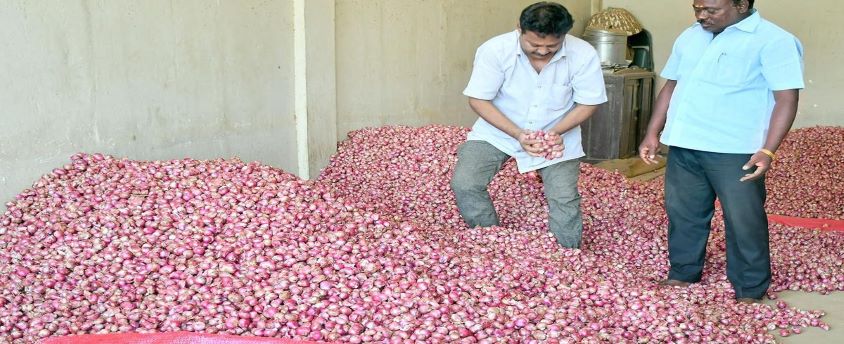
Why in News?
- The Centre has maintained that there is no move to ban the export of onions.
About the Essential Commodities act:
- The Essential Commodities Act, 1955 was enacted to ensure the easy availability of essential commodities to consumers and to protect them from exploitation by unscrupulous traders.
- The Act provides for the regulation and control of production, distribution and pricing of commodities which are declared as essential.
- Essential items under the Act include drugs, fertilisers, pulses and edible oils, and petroleum and petroleum products.
- The Act aim at maintaining/increasing supplies/securing equitable distribution and availability of these commodities at fair prices.
- Centre invokes the ECA Act’s provisions to impose stock limits in case of price/quantity distortions in the market to ensure adequate availability of essential commodities at reasonable prices.
- States are the implementing agencies to implement the EC Act, 1955 and the Prevention of Black marketing & Maintenance of Supplies of Essential Commodities Act, 1980, by exercising powers delegated to them.
- The list of essential commodities is reviewed from time to time with reference to their production and supply and in consultation with concerned Ministries/Departments.
- Currently, the restrictions like licensing requirement, stock limits and movement restrictions have been removed from almost all agricultural commodities.
- Exemptions: Wheat, pulses and edible oils, edible oilseeds and rice are certain exceptions.
- The recent amendment to the Legal Metrology (Packaged Commodities) Rules 2011 is linked to the ECA. The Government can fix the retail price of any packaged commodity that falls under the ECA.
Arguments against ECA:
- An archaic law: Essential Commodities Act has been in existence since 1955, when the economy was very different from what it is today. It was an economy ravaged by famine and food shortages.
- Difference between storage and hoarding: Recently there is evidence of interventions not working. It is because there is a distinction between storage and hoarding.
- As compared to older times, when the economy experiences acute shortages, today many shortage cases are actually that of hoarding.
- Stock limits led to onion price volatility: To control soaring prices of onions over the last few months, centre through ECA imposed stock limits on onions. Instead of decreasing prices, this actually increased price volatility.
- Although the restrictions on both retail and wholesale traders were meant to prevent hoarding and enhance supply in the market, the Survey showed that there was actually an increase in price volatility and a widening wedge between wholesale and retail prices.
- Lower stock limit led traders and wholesalers to immediately offload most of the kharif crop which led to a sharp increase in the volatility.
- Disincentivises storage infrastructure development: With too-frequent stock limits, traders may have no reason to invest in better storage infrastructure in the long run.
- Also, food processing industries need to maintain large stocks to run their operations smoothly. Stock limits curtail their operations. In such a situation, large scale private investments are unlikely to flow into food processing and cold storage facilities.
- Higher prices of medicines: Drug Price Control Order issued under the ECA also distorted the market and actually made medicines less affordable.
- The increase in prices is greater for more expensive formulations than for cheaper ones and for those sold in hospitals rather than retail shops.
- Rent seeking and Low conviction rates: Despite many raids conducted under the ECA in 2019, the conviction rate was abysmally low. The ECA only seems to enable rent-seeking and harassment.
Way Forward:
- Adequate supply: Given that almost all crops are seasonal, ensuring round-the-clock supply requires adequate build-up of stocks during the season.
- Without the ECA the common man would be at the mercy of opportunistic traders and shopkeepers.Genuine shortages: There can be genuine shortages triggered by weather-related disruptions in which case prices will move up.
- So, if prices are always monitored, farmers may have no incentive to farm.
- Difficult to differentiate between hording and shortage: It may not always be possible to differentiate between genuine stock build-up and speculative hoarding.
Four-day workweek: Analysis
25, Feb 2023

Why in News?
- Much is being made about the major breakthrough in one of the largest-ever experiments with a four-day workweek in Britain. Sixty-one companies were part of the six-month trial and 56 of them have opted to continue with the program, while 18 have made it permanent. 4 Day Week Global trial, overseen by Autonomy, aimed to improve work-life balance by allowing workers to work four days instead of five with the same salary and workload.
Advantages of implementing a four-day workweek:
- Improved Work-life balance: Having a positive work-life balance can also allow professionals to adopt a better attitude about their work, as they can return to their jobs well-rested. This can help employees remain productive and enthusiastic while working.
- Increased job satisfaction: With more free time, employees may feel more satisfied with their jobs and be more engaged at work.
- Reduced absenteeism and turnover: Offering a four-day workweek could make companies more attractive to potential employees, and employees may be less likely to miss work or leave their jobs if they have a better work-life balance.
- Increased productivity: Some studies have shown that shorter workweeks can actually boost productivity, as employees may be more focused and efficient during their work hours.
- Positive environmental impact: Working four days per week decreases the number of times a professional commute to work. This is helpful to the environment, as most vehicles produce emissions that can harm the environment.
Potential disadvantages:
- Limited impact: The benefits of a four-day workweek may be limited in certain industries or job types, such as those that require shift work or have strict deadlines.
- Increased workload: Employees may feel pressure to complete the same amount of work in fewer hours, resulting in an increased workload and potential burnout.
- Reduced productivity: Some employees may find it difficult to maintain focus and productivity over longer workdays. This could lead to a decrease in overall output and quality of work.
- Impact on customer service: If businesses are closed for an extra day each week, it may be more difficult to provide customer service or maintain consistent operating hours.
- Reduced income: With a shorter workweek, employees may see a reduction in their pay, which could be a disadvantage for those who rely on their income to cover living expenses.
Examples of companies/organizations considering a four-day workweek
- Microsoft Japan: In 2019, the tech giant conducted a trial where employees worked a four-day week and saw a 40% increase in productivity.
- Iceland: A number of companies and organizations in Iceland have experimented with shorter workweeks, including the country’s government, which is exploring a four-day workweek for public servants.
- New Zealand: Unilever New Zealand recently announced it would be trialing a four-day workweek for all of its employees, while the country’s prime minister, Jacinda Ardern, has previously spoken in favor of the idea.
- Spain: The government of Spain has proposed a three-year trial of a four-day workweek, with the goal of improving work-life balance and boosting productivity.
Feasibility of Four-day workweek in India’s context:
- Will require a careful analysis: The feasibility and impact of a four-day workweek in India would depend on various factors such as industry type, workforce demographics, and cultural norms. Implementing a four-day workweek in India would require careful analysis of various factors.
- For instance: With the rise of remote work and the increased focus on work-life balance four day week option could be helpful to enhance productivity with improved work life balance in corporate sector.
- Complex regulations: India’s labour laws and regulations are complex and provide significant protections for workers. Any changes to work arrangements, including a four-day workweek, would need to comply with these laws and ensure that employees’ rights and benefits are protected.
- For example: Any reduction in working hours would need to be accompanied by appropriate compensation and benefits to ensure that employees do not suffer financial losses.
- Specific needs of industries: The feasibility of a four-day workweek would depend on the specific needs of different industries.
- For instance: While some knowledge-based sectors may be well-suited to a four-day workweek, industries that require continuous operations or shift work, such as manufacturing or healthcare, may face significant challenges in implementing a shorter workweek.
Conclusion:
- It’s important to carefully consider the potential advantages and disadvantages of a four-day workweek before implementing it in any workplace. The impact may vary depending on the specific work arrangements and the needs of the employees and customers.
India needs a Budget for its young
23, Feb 2023
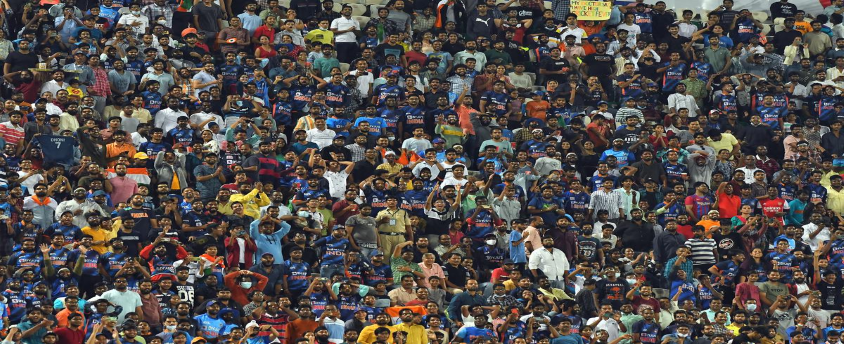
Why in News?
- India accounted for 20.6% of the global population of 15 to 29-year-olds in the year 2020. This implies that in the coming years, one out of every five workers in the world could be an Indian.
Key Proposals in Budget 2023-24:
- There is a considerable increase in capital expenditure. It is expected to be 3.2 lakh crore higher than the revised estimate of 2022-23.
- The government’s expenditure will fall for various social sector schemes and subsidies. For instance, food subsidies will reduce by ₹0.9 trillion, fertilizer subsidies by ₹0.5 trillion, and Mahatma Gandhi National Rural Employment Guarantee Act (MGNREGA) by ₹0.3 trillion. There are marginal increases in the budget allocations for health, education, agriculture, and the Angwandi scheme.
- For detailed information on the Budget, read here: Union Budget 2023 Summary
Associated concerns:
- An increase in capital expenditure is important to reinvigorate the economy. Investment as a proportion of income or GDP rose constantly during the mid-2000s and peaked at 42% in 2007 (even better than China).
- It further increased the economic growth in India which lasted till early 2010.
- However, the global financial crisis in 2007-08 had been a turning point. On one hand, China increased its domestic investment whereas India restrained its expenditures (due to fear of the rising fiscal deficits).
- As a result, public expenditures nosedived and private investors lost confidence. Investment as a proportion of GDP fell from 33.8% in 2013-14 to 27.3% in 2020-21.
- Though subsidies and social sector spending are considered to be ‘wasteful’ for economic growth, the reduction in these segments worsens the existing social inequalities and dampens the long-term growth prospects.
- There are serious issues of unaffordable education (both basic and higher education), and lack of employment opportunities. For example, in 2022, only 2.6% of the around 1.9 million appeared candidates for the National Eligibility cum Entrance Test (NEET) could secure admission to a government college.
- Apprehensions about the fiscal deficit and government debt can be counterproductive for a country like India which possesses huge reserves of untapped human resources.
- It should be noted that only 4.2% of GDP in 2022 is owed to external agencies.
- Moreover, it is largely held by domestic financial institutions like public sector banks, insurance companies, and provident funds.
Way Ahead:
- Notably, public expenditures on the social sectors are an investment for the future, particularly for the young population. For instance, the income a woman receives through MGNREGA can ensure education and nutrition for her children.
- Increased government expenditure on sectors like health and education can provide a boost to both the supply and the demand fronts in a knowledge-driven economy.
- Increased government borrowing to strengthen human resources that generate new jobs and incomes would set off a virtuous cycle. For instance, higher incomes and higher levels of development will also lead to fresh savings that will help to pay off debts.
Conclusion:
- The share of the population aged 30 years and above in India will rise to 58.6% in 2040 (from 37.5% in 2000). It is important to increase government expenditures to provide food security, health, and education as it will inspire millions of India’s youngsters to grow into bright stars that illuminate the world.
Vostro accounts and how they facilitate trade
23, Feb 2023
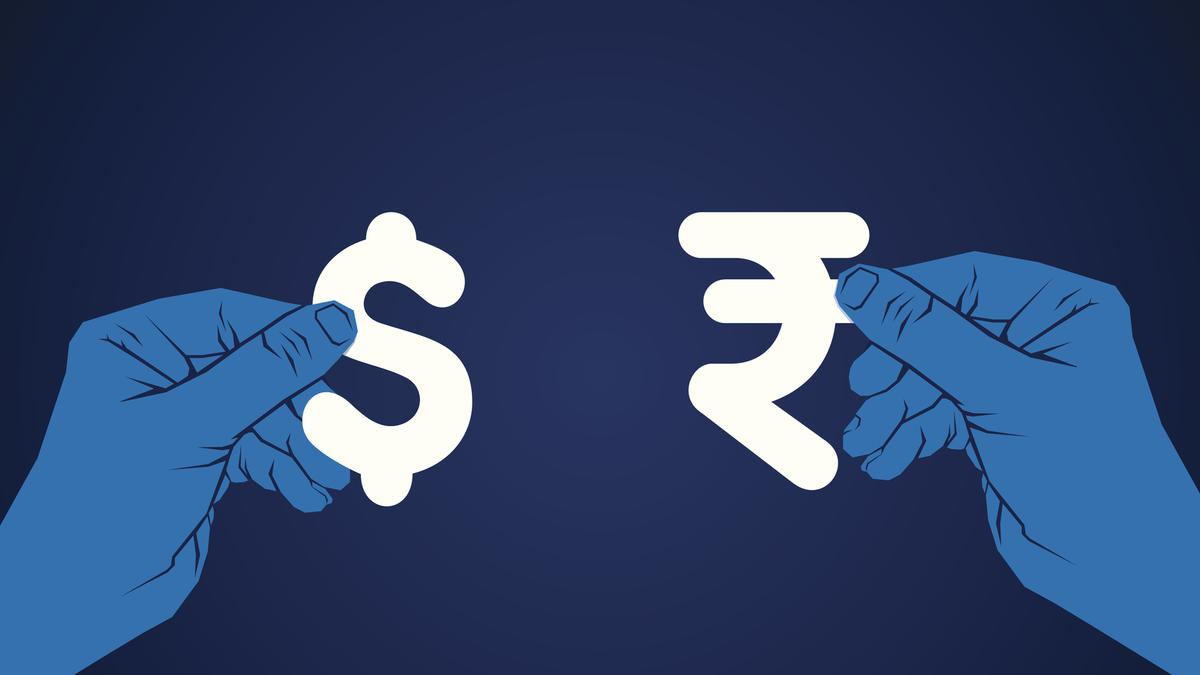
Why in News?
- About 20 Russian banks such as Centro Credit Bank, Credit Bank of Moscow, Rosbank, and Tinkoff Bank have opened Special Rupee Vostro Accounts (SRVA) with partner banks in India.
Special Rupee Vostro Accounts (SRVA) arrangement:
- A Vostro account refers to an account that a domestic bank holds for a foreign bank in the domestic bank’s currency.Such accounts are used by domestic banks to facilitate international banking services to their clients with global banking requirements.
- Vostro accounts arrangement is an offshoot of correspondent banking that helps the banks to provide wire transfers, conduct business transactions, accept deposits and gather documents on behalf of the other bank.
- This arrangement further aids domestic banks to gain broader access to foreign financial markets and serve international clients without the need for being physically present in their home countries.
- The Special Rupee Vostro Accounts or the SRVA arrangement is an additional arrangement that facilitates the establishment of a complementary system by using freely convertible currencies.
Nostro account:
- A Nostro Account refers to a bank account that a bank holds in a foreign currency.
- A bank, through a Nostro Account, holds the currency of the country where the funds are held. i.e Nostro accounts are denominated in foreign currencies.
- Nostro Accounts are generally used to simplify foreign exchange and trade transactions between countries.
- The word “Nostro” is derived from the Latin word that means “ours”.
Vostro account:
- The word “Vostro” is derived from the Latin word that means “yours”.
- A Vostro account refers to an account that a correspondent bank holds on behalf of another bank.
- Vostro account helps to enable a foreign correspondent bank to act as an agent or an intermediary for a domestic bank.
- Services provided by a Vostro account include wire transfers, withdrawals, and deposits for customers in countries where the domestic bank does not have a physical presence.
- If an Indian bank maintains an account in the US with dollars, such an account, maintained in a foreign currency at a foreign centre is called Nostro Account for that concerned Indian bank.
- The American bank which is holding dollars from the concerned Indian bank will refer to the same account as a Vostro Account.
Functioning of the SRVA arrangement:
- The SRVA framework mainly involves three important components which are invoicing, exchange rate and settlement.
- Invoicing requires all exports and imports to be denominated and invoiced in Indian Rupees.
- The exchange rate between the two currencies of the partner countries will be market-determined.
- The final settlement also takes place in Indian Rupees.
- To facilitate the SRVA arrangement, the authorised domestic banks are mandated to open SRVA accounts for the correspondent banks of the partner country.
- Further, domestic importers are required to make payments in Indian Rupees into the SRVA account of the correspondent bank against the invoices for the supply of goods or services from overseas suppliers.
- Likewise, the domestic exporters must be paid for their exports in Indian Rupees from the balances in the designated account of the correspondent bank of the partner country.
- The reporting of all such cross-border transactions must be done in accordance with the existing guidelines under the Foreign Exchange Management Act (FEMA), 1999.
Eligibility criteria for banks:
- Banks from the partner trading countries would approach an authorised domestic bank for opening the SRVA.
- The domestic bank is then required to seek approval from the Reserve Bank of India (RBI) which is the apex banking regulator in India.
- It is to be noted that, it is the responsibility of the domestic banks to ensure that the correspondent bank is not from a country listed under the updated Financial Action Task Force (FATF) Public Statement on High Risk & Non-Co-operative jurisdictions.
- Furthermore, domestic banks should also put forth for perusal, financial parameters pertaining to the corresponding bank.
- Authorised banks are free to open multiple SRV accounts for different banks from the same country and the balances in the account can be recovered in freely convertible currency or the currency of the partner country depending on the transactions for which the account was credited.
The need for SRVA arrangement:
- The Economic Survey 2022-23 highlighted the fact that such a framework could help reduce the demand for foreign exchange, especially the U.S. dollar, for the settlement of current account-related trade flows.
- As per the Economic Survey, the SRVA arrangement would also play a key role in reducing the need for holding foreign exchange reserves and dependence on foreign currencies which would make the country less vulnerable to external shocks.
- Further, the SRVA arrangements help Indian exporters get advance payments in Indian Rupee from foreign clients which in the long-term helps promote Indian Rupee as an international currency once the rupee settlement mechanism gains momentum.
Product Linked Incentive (PLI) scheme of pharmaceuticals
23, Feb 2023

Why in News?
- Department of Pharmaceuticals (DoP) has released the first tranche of incentives under the Product Linked Incentive (PLI) scheme of pharmaceuticals.
About the News:
- Under the Atmanirbharta initiative of the Government, the Department of Pharmaceuticals launched the PLI scheme for pharmaceuticals in 2021
- Objective: To enhance India’s manufacturing capabilities and contribute to product diversification towards high-value goods in the pharmaceutical sector
- Three different categories of products are being supported under the scheme:
- Category 1: Biopharmaceuticals; Complex generic drugs; Patented drugs or drugs nearing patent expiry; Cell-based or gene therapy drugs; Orphan drugs; Special empty capsules, Complex excipients,
- Category 2: Bulk drugs
- Category 3: Drugs not covered under Category 1 and Category 2 such as Repurposed drugs; Autoimmune drugs, anti-cancer drugs, etc.
About the PLI scheme:
- The scheme aims to make India a global hub for manufacturing telecom equipment.
- Its eligibility criteria include achievement of a minimum threshold of cumulative incremental investment and incremental sales of manufactured goods.
- The incentive structure ranges between 4% and 7% for different categories and years. Financial year 2019-20 will be treated as the base year for computation of cumulative incremental sales of manufactured goods net of taxes.
- Minimum investment threshold for MSMEs has been kept at Rs 10 crore and for others at Rs 100 crore.
- Once qualified, the investor will be incentivised up to 20 times of minimum investment threshold enabling them to utilise their unused capacity.
Why is the production linked scheme needed?
- According to experts, the idea of PLI is important as the government cannot continue making investments in these capital intensive sectors as they need longer times for start giving the returns.
- Instead, what it can do is to invite global companies with adequate capital to set up capacities in India.
- The kind of ramping up of manufacturing that we need requires across the board initiatives, but the government can’t spread itself too thin.
- Electronics and pharmaceuticals themselves are large sectors, so, at this point, if the government can focus on labour intensive sectors like garments and leather, it would be really helpful.
49th GST Council Meeting
22, Feb 2023
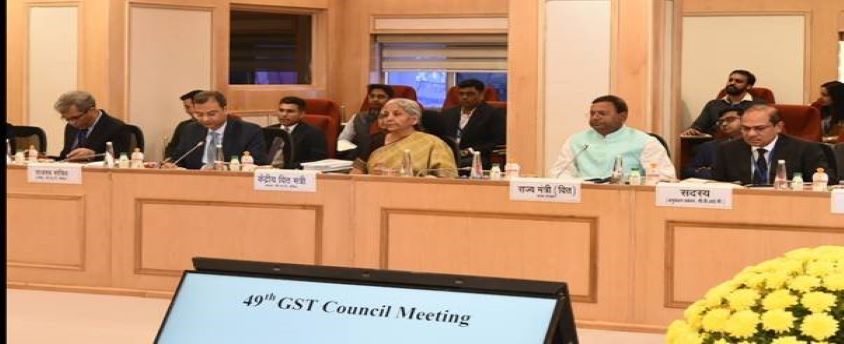
Why in News?
- Recently, the Goods and Services Tax (GST) Council in its 49th Meeting has reached consensus on the constitution of the GST Appellate Tribunal to resolve the rising number of disputes under the old indirect tax regime.
What are the Key Highlights of the GST Meeting?
- GST Appellate Tribunal:
- The council has approved the creation of a national tribunal mechanism with state benches for the redressal of disputes.
- The Tribunal will resolve the rising number of disputes under the GST regime that are now clogging High Courts and other judicial fora.
- This year’s Finance Bill can incorporate the enabling legislative provisions for the Tribunal.
- The GST Tribunal will have one principal bench in New Delhi and many benches or boards in states. The principal bench and state boards would have two technical and two judicial members each, with equal representation.
- But all four members would not sit to hear each case, which is likely to be decided based on the threshold or value of dues involved.
- Cleared Pending Compensation Dues:
- It has cleared the balance of Rs 16,982 crore (for June 2022).
- It has finalized GST compensation of Rs 16,524 crore to six states/UTs including, Delhi, Karnataka, Odisha, Puducherry, Tamil Nadu, and Telangana
- Lower Penal Charges:
- It approved lower penal charges for delayed filing of annual returns by businesses with a turnover of up to Rs 20 crore a year.
- The council has approved an Amnesty Scheme for taxpayers unable to file three statutory returns, that entail conditional waivers or reductions in late fees for such filings.
- The GST Amnesty Scheme was introduced to encourage non-filers to voluntarily come forward and file their GST returns by providing a one-time relief from late fees.
- Rate Changes:
- The GST rate on several items has been changed, such as pencil sharpeners, rab (liquid jaggery).
- The Council also decided to extend the GST exemption to educational institutions and central and state educational boards from conducting entrance examinations through any authority, including the National Testing Agency.
- Plugging Tax Evasion:
- The Council has decided to switch the compensation cess levied on pan masala and gutkha commodities from an ad valorem basis to a specific tax-based levy.
- The ad valorem tax is levied according to value.
- This will boost the first stage collection of the revenue.
- The Council also mandated that exports only be allowed against letters of undertaking assuring of GST compliance.
What is the GST Council?
- It is a joint forum of the Centre and the states.
- It was set up by the President as per Article 279A (1) of the amended Constitution.
- The members of the Council include the Union Finance Minister (chairperson), the Union Minister of State (Finance) from the Centre.
- Each state can nominate a minister in-charge of finance or taxation or any other minister as a member.
- According to Article 279 of the Constitution, the council can make recommendations to the Union and the states on important issues related to GST, like the goods and services that may be subjected or exempted from GST, model GST Laws”.
- Article 279 as well as Article 279A of the Indian Constitution deal with the financial provisions of the country.
- They are specifically related to the calculation of “net proceeds” from Union duties and taxes on goods and the formation of the Goods and Services Tax Council, respectively.
- It also decides on various rate slabs of GST.
- For instance, an interim report by a panel of ministers has suggested imposing 28 % GST on casinos, online gaming and horse racing.
What is Goods and Services Tax?
- GST was introduced through the 101st Constitution Amendment Act, 2016.
- It is one of the biggest indirect tax reforms in the country.
- It was introduced with the slogan of ‘One Nation One Tax’.
- The GST has subsumed indirect taxes like excise duty, Value Added Tax (VAT), service tax, luxury tax etc.
- It is essentially a consumption tax and is levied at the final consumption point.
- This has helped mitigate the double taxation, cascading effect of taxes, multiplicity of taxes, classification issues etc., and has led to a common national market.
- The GST that a merchant pays to procure goods or services (i.e. on inputs) can be set off later against the tax applicable on supply of final goods and services.
- The set off tax is called input tax credit.
- The GST avoids the cascading effect or tax on tax which increases the tax burden on the end consumer.
Tax Structure under GST:
- Central GST to cover Excise duty, Service tax etc,
- State GST to cover VAT, luxury tax etc.
- Integrated GST (IGST) to cover inter-state trade.
- IGST per se is not a tax but a system to coordinate state and union taxes.
- It has a 4-tier tax structure for all goods and services under the slabs- 5%, 12%, 18% and 28%.
What are the Issues Related to GST?
Complexity:
- The GST system in India is quite complex, with multiple tax rates, exemptions, and compliance requirements.
- It hampers the progress of a single indirect tax rate for all the goods and services in the country.
High Tax Rates:
- Some industries and goods are subject to high GST rates, which can make them unaffordable for many consumers.
- For example, the tax rate on luxury goods and services is 28%, which is quite high.
- Though rates are rationalized, 50% of items are under the 18% bracket.
Compliance Burden:
- The GST regime has a lot of compliance requirements, including filing of returns, maintaining records, and regular audits. This can be a burden for businesses, especially small and medium enterprises.
Technical Issues:
- There have been reports of technical glitches in the GST network, leading to delays in filing returns and claiming input tax credits.
Impact on the Unorganized Sector:
- The unorganized sector, which forms a significant part of the Indian economy, has been adversely affected by the GST.
- Many small businesses and traders have found it challenging to comply with the new tax regime.
Lack of Clarity:
- There is still a lack of clarity on some aspects of the GST regime, such as the classification of goods and services and the applicability of tax rates. This lack of clarity can create confusion and disputes.
Way Forward:
- Simplifying the compliance process, providing easier access to information, and increasing support for taxpayers can help address this issue.
- Technical issues such as system downtimes, portal errors, and other glitches can cause significant disruptions for businesses. Addressing these technical issues can help businesses comply with GST requirements more effectively.
- Many small businesses and traders are not fully aware of the GST system and its implications. Increasing awareness and education about the GST system can help improve compliance and reduce errors.
- GST is a collaborative effort between the central and state governments, and coordination between them is crucial to its success. Improving communication and coordination can help ensure a smooth implementation of the GST system.
Startup20 Engagement Group On India’s Proposal
18, Feb 2023
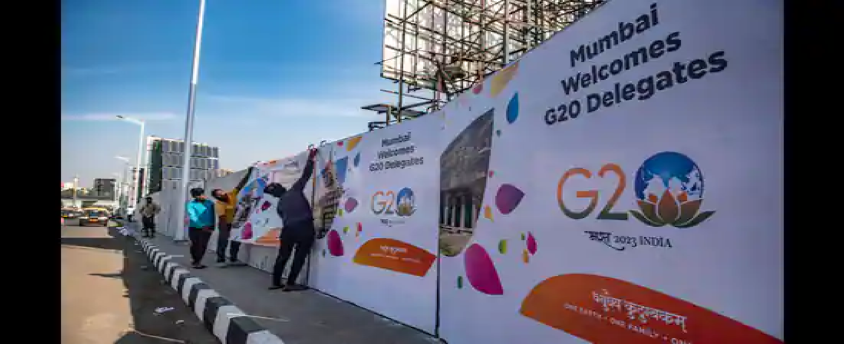
Why in News?
- By agreeing to India’s proposal to create the Startup20 Engagement Group, the only new group by which G20 has turned itself into an ambidextrous institution, one where both large corporations and startups have an equal voice in taking the economies forward.
- In the new architecture, while the existing B20 Engagement Group continues its focus on corporations, the Startup20 takes on the policy issues concerning the global startup ecosystem, with the necessary linkages between the two groups.
What is the mean by ambidexterity?
- Ambidexterity is the ability to use both hands with equal skill and ease.
- In the context of organizations, it is the ability to simultaneously pursue both exploratory and exploitative strategies. This means being able to balance the need for innovation and new opportunities with the need for efficiency and optimization of current operations.
- For example, Indian IT services companies like TCS and Infosys are investing in areas like artificial intelligence, blockchain, and the IoT, even as they continue to deliver traditional IT services to their clients.
What is B20 Engagement Group?
- Official G20 dialogue forum representing the global business community: The B20 (Business 20) Engagement Group is a forum for international business leaders from the G20 countries.
- Established in 2010: It is among the most prominent Engagement Groups in G20, with companies and business organizations as participants.
- A single voice for the entire G20 business community: The B20 leads the process of galvanizing global business leaders for their views on issues of global economic and trade governance and speaks in a single voice for the entire G20 business community.
- Aim is to provide recommendations: The group’s aim is to provide recommendations to the G20 on issues such as economic growth, trade, investment, digitalization, sustainability, and job creation.
- Platform for different stakeholders: The B20 is one of several engagement groups, which also include groups representing civil society, labor, think tanks, and youth, that provide a platform for different stakeholders to share their views and insights with the G20.
- B20 Secretariat: Confederation of Indian Industry (CII) has been designated as the Business 20 (B20) Secretariat for the India’s G20 Presidency.
What is Startup20?
- Initiated under India’s G20 Presidency: The Startup20 Engagement Group has been initiated under India’s G20 Presidency in 2023.
- Aims to support Startups: The group aims to create a global narrative for supporting startups and enabling synergies between startups, corporates, investors, innovation agencies and other key ecosystem stakeholders.
- Three taskforces: The engagement group comprises of three taskforces, namely Foundation & Alliance, Finance, and Inclusion & Sustainability, where delegates will come together to discuss efficient policy frameworks to promote scaling up of startups in the G20 nations.
How these taskforces will work?
Foundation and Alliances Taskforce:
- Promotes consensus-based ecosystem: The Foundation and Alliances Taskforce will work to harmonize the global Startup ecosystem through consensus-based definitions and promote a global community of knowledge sharing among the Startup ecosystems to explore opportunities.
- Help to bridge the knowledge gaps: It will also bridge the knowledge gap between the Startup ecosystems of G20 member countries and emerging economies through partnerships to enable more industry players across G20 nations to work with Startups and concrete solutions.
- To create supportive policies and point of contact: It will aim to create supportive policies for industry players and government organizations to work with Startups and provide points of contact for the participating G20 countries sustained collaboration.
The Finance Taskforce:
- To provide financing and investment platforms: The finance taskforce will aim to increase access to capital for Startups by providing financing and investment platforms specifically for early-stage Startups to broaden the array of financial instruments available to Startups.
- Networking opportunities: It will also create pitching and networking opportunities for Startups with the global investor community.
- Best practices for funding ecosystem: It will work to provide a framework built upon best practices for global investors to fund Startups across G20 member nations, helping build suggestive frameworks that could be implemented in emerging ecosystems for building investment capabilities.
Taskforce for Inclusion and Sustainability
- Women led startups and community inclusive: For Inclusion and Sustainability, the roadmap involves increasing support for women led Startups and organizations; promotion of Startups working on making communities more inclusive and to promote Startups working on SDGs in areas of global interest.
- Encouraging investors to invest in startups built upon sustainable practices: This Task Force aims to enable more investors to invest responsibly in Startups built upon sustainable practices and to encourage mentorship support to the Startup ecosystems of the G20 member countries and emerging economies.
Conclusion:
- Some of the most pressing challenges facing the world today require innovative solutions at scale. The need for solutions to global problems such as climate change, food security, and energy security is urgent. However, by leveraging global ambidexterity and taking advantage of the G20’s new architecture of B20 and Startup20, we can be optimistic about our ability to systematically solve these problems. With deliberate efforts and focused action, we can create a more sustainable and prosperous future for all.
Current Account Deficit
18, Feb 2023
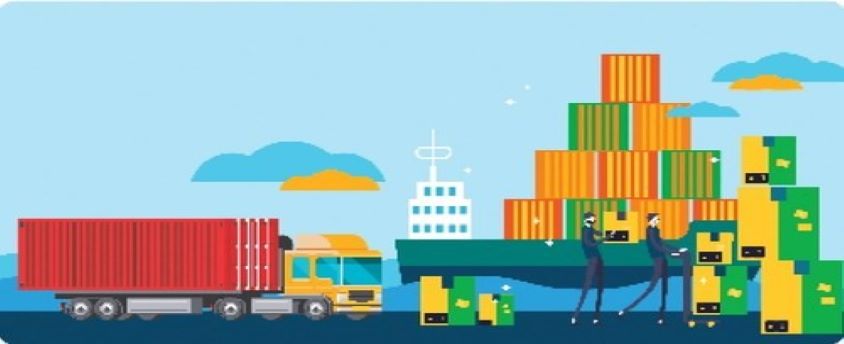
Why in News?
- Recently, the government released data showing that India’s exports and imports decreased by 6.59% and 3.63%, respectively, in January 2023, there are indications that the country’s current account deficit (CAD) will moderate despite the global slowdown triggered by the rising inflation and interest rates.
About the News:
- The moderation in CAD is expected to be aided by the fall in commodity prices, rising workers remittances and services exports, and abatement of selling pressure by foreign investors.
What is the Current Account Deficit?
- Current account deficit (CAD) is when the value of a country’s imports of goods and services is greater than its exports.
- CAD and fiscal deficit together make up twin deficits that can impact the stock market and investors.
- Fiscal Deficit is the gap between the government’s expenditure requirements and its receipts. This equals the money the government needs to borrow during the year.
Implication:
- The CAD is significant because it affects the economy, stock markets, and people’s investments.
- A lower CAD can boost investor sentiment and make the country’s currency more attractive to investors.
- A surplus in the current account indicates that money is flowing into the country, which can boost foreign exchange reserves and the value of the local currency.
Recent Status of India’s CAD:
- The CAD for the first half of 2022-23 was 3.3% of GDP, but the situation improved in Quarter 3:2022-23 due to lower commodity prices and moderated imports.
Negative Effects of CAD on Economy:
- Weaker Currency: When a country’s imports exceed its exports, it can cause a decrease in demand for its currency, leading to a weaker currency value (depreciation).
- This can make imports more expensive, leading to higher inflation and a reduction in purchasing power.
- Debt Accumulation: If a country is unable to finance its current account deficit with foreign investment, it may need to borrow to cover the gap.
- This can lead to an increase in debt levels, which can further harm the economy.
How India can Moderate Current Account Deficit?
- Encourage Exports: Increasing exports is one of the most effective ways to reduce CAD.
- The government can provide incentives for export-oriented industries, streamline export procedures and regulations, and negotiate better trade agreements with other countries.
- Promote Import Substitution: Encouraging domestic production of goods that are currently being imported can help to reduce the trade deficit.
- This can be achieved by providing incentives for domestic manufacturers and by imposing tariffs or import duties on certain goods.
- Improve Productivity and Competitiveness: Improving the productivity and competitiveness of the domestic economy can help to increase exports and reduce the trade deficit.
- This can be achieved through various measures such as investments in infrastructure, technology, and education.
RBI hikes repo rate by 25 basis points to control inflation
09, Feb 2023

Why in News?
- The Monetary Policy Committee (MPC) of the Reserve Bank of India (RBI) has recently decided to increase the policy repo rate by 25 basis points to 6.50%, with immediate effect.
About the News:
- Taking various factors into consideration, real GDP growth for 2023-24 is projected at 6.4% with Q1 at 7.8%; Q2 at 6.2%; Q3 at 6.0%; and Q4 at 5.8%.
- Taking into account several factors and assuming an average crude oil price (Indian basket) of US$ 95 per barrel, inflation is projected at 6.5% in 2022-23, with Q4 at 5.7%.
- On the assumption of a normal monsoon, CPI inflation is projected at 5.3% for 2023-24, with Q1 at 5.0%, Q2 at 5.4%, Q3 at 5.4% and Q4 at 5.6%.
What is Monetary Policy Committee?
- Strong recommendations to set monetary policy committee in India had come from Urjit Patel panel report.
- Monetary Policy Committee is an executive body of 6 members. Of these, three members are from RBI while three other members are nominated by the Central Government.
- Each member has one vote. In case of a tie, the RBI governor has casting vote to break the tie. MPC is required to meet for two days before deciding on rates. Further, it is needed to meet at least four times a year and make public its decisions following each meeting.
- The core mandate of MPC is to fix the benchmark policy interest rate {Repo Rate} to contain inflation within the target level.
- In that context, RBI is mandated to furnish necessary information to the MPC to facilitate its decision. Government also, if wishes to convey its views, can do so in writing to MPC.
Different Terminologies in Banking Sector:
- Loan moratorium period refers to a particular period of a loan tenure during which the borrower does not have repay anything. It can be described as a waiting period before the borrower will have to start paying the equated monthly instalments (EMIs) for his or her loan. It doesn’t mean that he is completely waived off his loans.
- REPO rate (now 6.5%) denotes Re Purchase Option – the rate by which RBI gives loans to other banks. In other words, it is the rate at which banks buy back the securities they keep with the RBI at a later period.
- Bank gives loan to the public at a higher rate, often 1% higher than REPO rate, at a rate known as Bank Rate (6.75%).
- RBI at times borrows from banks at a rate lower than REPO rate, and that rate is known as Reverse REPO rate (3.35%).
- CRR or Cash Reserve Ratio corresponds to the percentage of cash each bank have to keep as cash reserve with RBI (in their current accounts) corresponding to the deposits they have. For example, say if State Bank of India (SBI) got a total deposit of Rs. 1 crore with them, they need to keep 4.5 % of that as cash reserve with RBI (around 4.5 lakh rupees).
The banks and other financial institutions in India have to keep a fraction of their total net time and demand liabilities in the form of liquid assets such as G-secs, precious metals, approved securities etc. The Ratio of these liquid assets to the total demand and time liabilities is called Statutory Liquidity Ratio (18%).
The demand for MGNREGS work is unmet
08, Feb 2023

Why in News?
- A statement by People’s Action for Employment Guarantee and NREGA Sangharsh Morcha has provided an estimate of ₹2.72 lakh crore as the minimum budget required.
About the News:
- The allocation for MGNREGA in the Budget is ₹60,000 crore. This is less than 0.2% of the GDP, the lowest ever allocation as a percentage of GDP.
- World Bank economists had estimated that the allocation should be 1.6% of the GDP. In the last two years, the new financial year began with more than one-fourth of the allocation as pending wages from previous years.
- Assuming a conservative estimate that the next financial year will begin with pending wages of ₹15,000 crore and accounting for inflation, in real terms, the allocation for MGNREGA will be less than ₹45,000 crore.
- A statement by People’s Action for Employment Guarantee and NREGA Sangharsh Morcha has provided an estimate of ₹2.72 lakh crore as the minimum budget required.
- As per this, even ₹1.24 lakh crore can only generate 40 days of work per household per year.
About MGNREGA:
- The scheme was introduced in 2005 as a social measure that guarantees “the right to work”. The key tenet of this social measure and labour law is that the local government will have to legally provide at least 100 days of wage employment in rural India to enhance their quality of life.
Key objectives:
- Generation of paid rural employment of not less than 100 days for each worker who volunteers for unskilled labour.
- Proactively ensuring social inclusion by strengthening the livelihood base of rural poor.
- Creation of durable assets in rural areas such as wells, ponds, roads and canals.
- Reduce urban migration from rural areas.
- Create rural infrastructure by using untapped rural labour.
What are the eligibility criteria for receiving the benefits under MGNREGA scheme?
- Must be Citizen of India to seek MGNREGA benefits.
- Job seeker has completed 18 years of age at the time of application.
- The applicant must be part of a local household (i.e. application must be made with local Gram Panchayat).
- Applicants must volunteer for unskilled labour.
Implementation of the scheme:
- Within 15 days of submitting the application or from the day work is demanded, wage employment will be provided to the applicant.
- Right to get unemployment allowance in case employment is not provided within fifteen days of submitting the application or from the date when work is sought.
- Social Audit of MGNREGA works is mandatory, which lends to accountability and transparency.
- The Gram Sabha is the principal forum for wage seekers to raise their voices and make demands.
- It is the Gram Sabha and the Gram Panchayat which approves the shelf of works under MGNREGA and fix their priority.
What is Democratic Decentralisation?
- Democratic decentralization is the process of devolving the functions and resources of the state from the Centre to the elected representatives at the lower levels so as to facilitate greater direct participation of citizens in governance.
- Devolution, envisioned by the Indian Constitution, is not mere delegation.
- It implies that precisely defined governance functions are formally assigned by law to local governments, backed by adequate transfer of a basket of financial grants and tax handles, and they are given staff so that they have the necessary wherewithal to carry out their responsibilities.
Related Constitutional Provisions:
- Local government, including panchayats, is a state subject in the Constitution, and consequently, the devolution of power and authority to panchayats has been left to the discretion of states.
- The Constitution mandates that panchayats and municipalities shall be elected every five years and enjoins States to devolve functions and responsibilities to them through law.
- The 73rd and 74th Amendments, by constitutionally establishing Panchayati Raj Institutions (PRIs) in India, mandated the establishment of panchayats and municipalities as elected local governments.
- These amendments added two new parts to the Constitution, namely, Part IX titled “The Panchayats” (added by 73rd Amendment) and Part IXA titled “The Municipalities” (added by 74th Amendment).
- The 11th Schedule contains the powers, authority and responsibilities of Panchayats.
- The 12th Schedule contains the powers, authority and responsibilities of Municipalities.
- Article 40: Organization of a village panchayat.
Budget Session of Parliament
01, Feb 2023

Why in News?
- Parliamentary Affairs Minister Pralhad Joshi has hinted that the first leg of Budget session which is scheduled to end on February 13 is likely to end early.
What is Budget?
- Annual Financial Statement is a documents presented to the Parliament in every financial year as a part of the Budget Process under Article 112 of the constitution of India.
- This document comprises the receipts and expenditures of the government of current year, previous year and budget year in three separate parts viz. Consolidated Fund of India, Contingency Fund of India and Public Account of India. The government has to present a statement of receipts and expenditure for each of these funds.
- Capital receipt comprises of loans raised by the Government, borrowing from the Reserve Bank of India and loans taken from foreign Governments/institutions.
- It also embraces recoveries of loans advanced by the Government and sale proceeds of government assets, including those realized from divestment of Government equity in PSUs.
Difference between Annual Financial Statement and Budget:
- The term budget is used for several documents together including the Annual Financial Statement. The other documents in budget include Demands for Grants (DG); Appropriation Bill; Finance Bill; Memorandum Explaining the Provisions in the Finance Bill; Macro-Economic Framework Statement; Fiscal Policy Strategy Statement; Medium Term Fiscal Policy Statement; Medium Term Expenditure Framework Statement etc.
- However, Annual Financial Statement distinguishes the expenditure on revenue account from the expenditure on other accounts, as is mandated in the Constitution of India. The Revenue and the Capital sections together, therefore make the Union Budget and that is why, Annual Financial Statements is essentially the Budget of the Government.
Budget Pre Independence:
- Budget was introduced on 7 April 1860 by the East India Company to the British Crown. It was presented by a Scottish Economist and politician James Wilson.
- For the first 30 years, the Budget didn’t have the word infrastructure. It was introduced in the Budget in the 1900s.
Budget Post Independence:
- First Union Budget of Independent India: It was introduced on 26 November 1947. It was present by the first Finance Minister R.K. Shanmukham Chetty. However, it was a review of the Indian economy and no new taxes were proposed. It is to be noted that almost 46% of the Budget or Rs. 92.74 crores were allocated for defence services department.
- Printing of Budget: The Budget was leaked in 1950, following which the government shifted the printing of budget from Rashtrapati Bhawan to a press at Minto Road. In 1980, it was shifted to a government press in North Block.
- Introduction of Hindi: Till 1955, the Budget was presented only in the English language. However, from 1955-56, the Budget documents are printed both in English and Hindi.
- First Prime Minister to present the Union Budget: Former Prime Minister Jawaharlal Nehru was the first PM to present the Union Budget for the FY 1958-1959. The Union Budget is usually presented by the Finance Minister. Other than Jawaharlal Nehru, Indira Gandhi and Rajiv Gandhi were the only Prime Ministers to have presented the Budget in their respective administration.
- First Woman to present the Union Budget: Former Prime Minister Indira Gandhi was the first woman to present the Union Budget for the FY 1970-71. On 5 July 2019, Finance Minister Nirmala Sitharaman became the first full-time woman Finance Minister on India.
- Maximum Union Budgets by a Minister: Former Finance Minister Moraji Desai presented the Union Budget a record 10 times, followed by former FM P. Chidambaram (9), former FM Pranab Mukherjee (8), former FM Yashwant Sinha (8), and former FM Manmohan Singh (6)
- Black Budget: For the FY 1973-74, the Budget was presented by the then Finance Minister Yashwantrao B. Chavan and is called as ‘Black Budget’ due to high budget deficit of Rs 550 crores– the maximum until that time. The Budget followed the Indo-Pak war of 1971 and failed the monsoon season.
- The Epochal Budget: The Budget presented by the then Finance Minister Manmohan Singh for the FY 1991-92 is known as ‘The Epochal Budget’– a budget that changed India forever as it marked the economic liberalisation of the nation.
- Dream Budget: The Budget presented by the then Finance Minister P. Chidambaram for the FY 1997-98 is known as ‘Dream Budget’ as it proposed to lower the tax slabs of personal and corporate taxes.
- The Millennium Budget: The Budget presented by the then Finance Minister Yashwant Sinha for the FY 2000-01 is known as ‘The Millennium Budget’– revolutionised India’s IT sector.
- Change in time: In the year 2001, Finance Minister Yashwant Sinha changed the time for the presentation of Union Budget from 5 p.m. to 11 a.m. on the last working day of February.
- Merging of Budgets and Change in date: In the year 2017, the Rail Budget was merged with the Union Budget. Also, since the said year, the Budget has been presented on 1 February following the changes introduced by the then Finance Minister Arun Jaitley.
- Gift Tax: Former Prime Minister Jawaharlal Nehru introduced the Gift Tax in the FY 1958-1959 Budget to make tax evasion more difficult.
- Goods and Services Tax: On 28 February 2006, Goods and Services Tax was introduced by the then Finance Minister P. Chidambaram in the Budget.
- Longest Budget speech: Former Finance Minister Arun Jaitley holds the record for delivering the longest Budget speech in 2014– 2.5 hours.
- Bahi Khata instead of a briefcase: In the year 2019, Finance Minister Nirmala Sitharaman replaced the standard Budget briefcase with the traditional ‘Bahi Khata’ with the National Emblem.
- Paperless Budget: For the first time in Independent India’s history, the Budget for the FY 2021-22 wass paperless.
Budgeting process in India:
- The procedure for presentation of the Budget in and its passing by Lok Sabha is as laid down in articles 112—117 of the Constitution of India, Rules 204—221 and 331-E of the Rules of Procedure and Conduct of Business in Lok Sabha and Direction 19-B of Directions by the Speaker.
- The Budget goes through six stages:
- Presentation of Budget.
- General discussion.
- Scrutiny by Departmental Committees.
- Voting on Demands for Grants.
- Passing of Appropriation Bill.
- Passing of Finance Bill.
Presentation:
- The Budget is presented to Lok Sabha on such day as the President may direct.
- Immediately after the presentation of the Budget, the following three statements under the Fiscal Responsibility and Budget Management Act, 2003 are also laid on the Table of Lok Sabha:
- The Medium-Term Fiscal Policy Statement;
- The Fiscal Policy Strategy Statement; and
- The Macro Economic Framework Statement.
SC Refuses to Entertain Plea on Google-CCI Issue
21, Jan 2023

Why in News?
- The Supreme Court of India has refused to entertain a plea by Google against NCLAT’s order refusing the interim stay on ₹1,337 crore penalty on Google.
About the News:
- The SC has granted Google 7 days to deposit 10% of the penalty imposed by the Competition Commission of India (CCI). The Indian companies have welcomed the SC’s stance against Google.
What’s the issue?
- CCI found that Google was dominant in the relevant market for licensable smart TV device operating systems in India. It also said that prima facie mandatory pre-installation of all the Google applications under Television App Distribution Agreement (TADA) amounts to imposition of unfair conditions on the smart TV device manufacturers. This is in contravention of Section 4(2)(a) of the Competition Act.
- So, CCI imposed a penalty on Google for “abusing its dominant position” in markets related to the Android mobile device ecosystem. Google filed an appeal with the NCLAT against the CCI order which was declined by NCLAT.
- Section 4 of the Act pertains to abuse of dominant position.
About Competition Commission Of India:
- The Competition Commission of India (CCI) was established under the Competition Act, 2002 for the administration, implementation and enforcement of the Act, and was duly constituted in March 2009. Chairman and members are appointed by the central government.
Functions of the commission:
- It is the duty of the Commission to eliminate practices having adverse effect on competition, promote and sustain competition, protect the interests of consumers and ensure freedom of trade in the markets of India.
- The Commission is also required to give opinion on competition issues on a reference received from a statutory authority established under any law and to undertake competition advocacy, create public awareness and impart training on competition issues.
About the Competition Act:
- The Monopolies and Restrictive Trade Practices Act, 1969 (MRTP Act) was repealed and replaced by the Competition Act, 2002, on the recommendations of Raghavan committee.
- The Competition Act, 2002, as amended by the Competition (Amendment) Act, 2007, prohibits anti-competitive agreements, abuse of dominant position by enterprises and regulates combinations (acquisition, acquiring of control and M&A), which causes or likely to cause an appreciable adverse effect on competition within India.
GST revenues rise 15% in December 2022, says Finance Ministry
02, Jan 2023
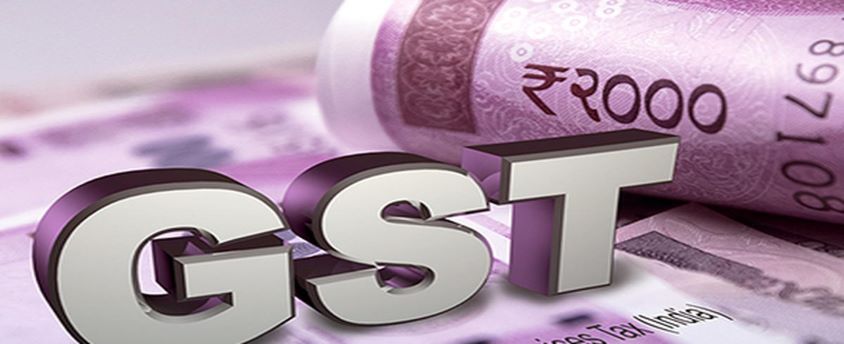
Why in News?
- India’s Goods and Services Tax (GST) revenues rose to nearly ₹1.5 lakh crore in December 2022, 15% higher than a year ago and 2.5% over November’s collections that had marked a three-month low.
About the News:
- This is the tenth month in a row that GST collections have crossed the ₹1.4 lakh crore mark, with revenues from import of goods rising 8% and revenues from domestic transactions (including import of services) up 18% from the revenues yielded by these sources during December 2021.
- The gross GST revenue collected during December 2022, which reflect transactions undertaken in November, is ₹1,49,507 crore, of which Central GST (CGST) is ₹26,711 crore, State GST (SGST) is ₹33,357 crore, Integrated GST (IGST) is ₹78,434 crore (including ₹40,263 crore collected on import of goods) and Cess is ₹11,005 crore (including ₹850 crore collected on import of goods), the Finance Ministry said.
- “The Government has settled ₹36,669 crore to the CGST and ₹31,094 crore to SGST from IGST as regular settlement. The total revenue of Centre and the States after regular settlements in the month of December 2022 is ₹63,380 crore for CGST and ₹64,451 crore for the SGST,” it added.
- On a sequential basis, while there was a 2.5% rise in revenues from November to December 2022, the number of e-way bills generated went up 3.95% to 7.9 crore in December.
- While revenues from domestic transactions rose 18% overall, a dozen States recorded higher growth in tax collections and 13 States reported slower growth rates.
- Goa, Odisha and Manipur reported a contraction in revenues of 22%, 6% and 5%, respectively, even as Chhatisgarh’s revenues were flat year-on-year.
- Bihar reported the highest growth in revenues at 36%, followed by Nagaland (30%), the erstwhile State of Jammu and Kashmir (28%), Arunachal Pradesh (27%), with Gujarat and Andhra Pradesh seeing GST inflows rise by 26% each. Tamil Nadu’s revenues rose 25%, followed closely by Rajasthan and West Bengal (24%), Madhya Pradesh (22%) and Maharashtra (20%).
- Among the Union Territories, Ladakh reported a sharp 68% spike in revenues, followed by Dadra Nagar Haveli (37%), Chandigarh (33%) and Puducherry (30%). However, Daman and Diu reported a whopping 86% drop in GST collections, with Lakshadweep and Andaman and Nicobar Islands also recording contractions of 36% and 19%, respectively.
- Abhishek Jain, partner indirect tax, KPMG said the robust GST collections suggest that ₹1.5 lakh crore may be ‘the new normal’ for monthly revenues, as the December’s numbers came in after peak festive sales are over.
What are the reasons for the Rise of the GST?
- The sharp surge has come on the back of anti-evasion measures, “especially action against fake billers”, and a pick-up in economic activity.
- Rate rationalization measures undertaken by the GST Council to correct ‘inverted duty structure’.
- Inverted Tax Structure refers to a situation where the rate of tax, that is GST, on inputs is higher than the rate of tax on output supplies or finished goods.
- Economic recovery and increased domestic consumption.
- The total number of e-way bills generated in February was 6.91 crore, higher than 6.88 crore seen a month ago, despite it being a shorter month, which indicates the “recovery of business activity at faster pace”.
What is Goods and Services Tax?
- GST was introduced through the 101st Constitution Amendment Act, 2016.
- It is one of the biggest indirect tax reforms in the country.
- It was introduced with the slogan of ‘One Nation One Tax’.
- The GST has subsumed indirect taxes like excise duty, Value Added Tax (VAT), service tax, luxury tax etc.
- It is essentially a consumption tax and is levied at the final consumption point.
- This has helped mitigate the double taxation, cascading effect of taxes, multiplicity of taxes, classification issues etc., and has led to a common national market.
- The GST that a merchant pays to procure goods or services (i.e. on inputs) can be set off later against the tax applicable on supply of final goods and services.
- The set off tax is called input tax credit.
- The GST avoids the cascading effect or tax on tax which increases the tax burden on the end consumer.
Tax Structure under GST:
- Central GST to cover Excise duty, Service tax etc,
- State GST to cover VAT, luxury tax etc.
- Integrated GST (IGST) to cover inter-state trade.
- IGST per se is not a tax but a system to coordinate state and union taxes.
- It has a 4-tier tax structure for all goods and services under the slabs- 5%, 12%, 18% and 28%.
Delhi HC in trademark infringement claim
28, Dec 2022

Why in News?
- The Delhi High Court granted an interim injunction in favour of Hamdard Laboratories in its plea against Sadar Laboratories Private Limited for infringing its registered trademark.
About the News:
- The Court has restrained the manufacture and sale of sweet beverage concentrate ‘Sharbat Dil Afza’ during the pendency of a lawsuit for alleged trademark infringement by Hamdard Dawakhana which sells ‘Rooh Afza’.
What is a Trademark?
- A trademark is a sign capable of distinguishing the goods or services of one enterprise from those of other enterprises. Trademarks are protected by Intellectual Property Rights (IPR).
- In India, trademarks are governed by the Trade Marks Act 1999, which was amended in 2010.
- It legally differentiates a product or service from all others of its kind and recognizes the source company’s ownership of the brand.
- Although trademarks do not expire, the owner must make regular use of it in order to receive the protections associated with them.
- It serves as a badge of origin exclusively identifying a particular business as a source of goods or services.
- Trademark infringement is the unauthorised usage of a sign that is identical or deceptively similar to a registered trademark.
- A mark is said to be strong when it is well-known and has acquired a high degree of goodwill.
- The degree of the protection of any trademark changes with the strength of the mark; the stronger the mark, the higher the requirement to protect it.
What is the Court’s Verdict?
- The court said Rooh Afza served as the source identifier for Hamdard for over a century and has acquired immense goodwill and it was essential to ensure that the competitors keep a safe distance from the mark.
- It is not difficult to conceive that a person who looks at the label of ‘DIL AFZA’ may recall the label of ‘ROOH AFZA’ as the word ‘AFZA’ is common and the meaning of the words ‘ROOH’ and ‘DIL’, when translated in English, are commonly used in conjunction.
- Both the products have the “same deep red colour and texture” and “structure of the bottles is not materially different” and thus opined that the “commercial impression of the impugned trademark is deceptively similar to the appellants’ trademark”.
Decriminalisation of offences under GST
21, Dec 2022

Why in News?
- The Finance Minister chaired the 48th GST Council, which recommended decriminalising certain offences under Section 132 of the Central Goods and Services Tax (CGST) Act, 2017
What is the issue?
- The GST law is still in its early stages of development. Hence, it is vital to recognise that imposing penal provisions in an uncertain ecosystem impacts an enterprise’s ability to conduct business.
What is Goods and Services Tax?
- GST was introduced through the 101st Constitution Amendment Act, 2016.
- It is one of the biggest indirect tax reforms in the country.
- It was introduced with the slogan of ‘One Nation One Tax’.
- The GST has subsumed indirect taxes like excise duty, Value Added Tax (VAT), service tax, luxury tax etc.
- It is essentially a consumption tax and is levied at the final consumption point.
- This has helped mitigate the double taxation, cascading effect of taxes, multiplicity of taxes, classification issues etc., and has led to a common national market.
- The GST that a merchant pays to procure goods or services (i.e. on inputs) can be set off later against the tax applicable on supply of final goods and services.
- The set off tax is called input tax credit.
- The GST avoids the cascading effect or tax on tax which increases the tax burden on the end consumer.
Offences under GST:
- Despite technology leverage, instances of tax evasion have surged due to culprits remaining undetected.
- The GST law imposes severe penalties and guidelines in order to combat corruption and maintain an efficient tax collection system.
Penalties under GST law:
- The department authorities have the jurisdiction to impose monetary fines and the seizure of goods as penalties for violating statutory provisions.
- Criminal penalties include imprisonment and fines but can be awarded only in a criminal court following a prosecution.
- The amount of tax evaded, the amount of Input Tax Credit (ITC) improperly claimed or used, etc, determines the length of the prison sentence.
- The Act also divides offences into – cognisable and bailable and non-cognisable and bailable.
Measures recommended at the 48th GST Council meeting:
- Raising the minimum tax amount for commencing a GST prosecution from one to two crore.
- Reducing the compounding amount from 50 to 150% of the tax amount to 25 to 100% of the tax amount.
- Decriminalising certain offences under Section 132 of the CGST Act, 2017, such as preventing an officer from doing his duties, deliberate tampering with material evidence and failure to supply information.
- Other suggestions include refunding unregistered individuals and facilitating e-commerce for small businesses.
What impact will the aforementioned measures have?
- Prosecution, arrest, and imprisonment in GST cases would occur only in the most exceptional cases.
- Ease of doing business will be made more effective.
GI Status for Kerala’s Five Agricultural Products
19, Dec 2022
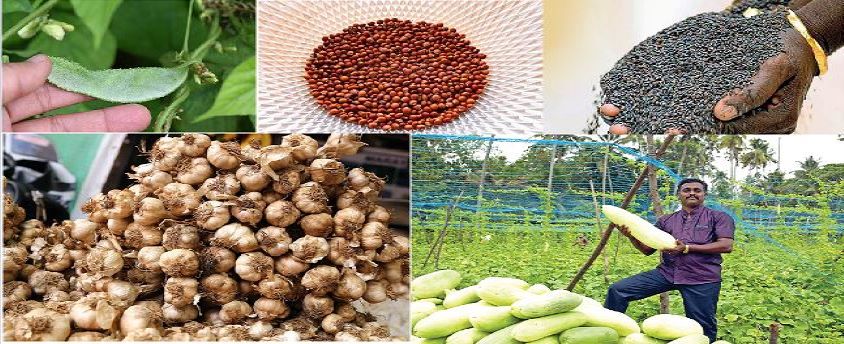
Why in News?
- The Geographical Indications Registry at Guindy, Chennai, has received an application from the Tribal Development Council, Andaman & Nicobar Islands, seeking the Geographical Indication (GI) tag for the Nicobari hodi boat which is the first application from the Union Territory seeking a tag for one its products.
What are the Key Facts about the Latest GIs?
- Attappady Attukombu Avara (Beans):
- It is curved like a goat’s horn as its name indicates.
- Its higher anthocyanin content compared to other dolichos beans imparts violet colour in the stem and fruits.
- Anthocyanin is helpful against cardiovascular diseases along with its antidiabetic properties.
- The higher phenolic content of Attappady Attukombu Avara imparts resistance against pest and diseases, making the crop suitable for organic cultivation.
- Attappady Thuvara (Red Gram):
- It is having seeds with white coat.
- Compared to other red grams, Attappady Thuvara seeds are bigger and have higher seed weight.
- Onattukara Ellu (Sesame):
- Onattukara Ellu and its oil are famous for its unique health benefits.
- Relatively higher antioxidant content in Onattukara Ellu helps in fighting the free radicals, which destroy the body cells.
- Also, the high content of unsaturated fat makes it beneficial for heart patients.
- Kanthalloor-Vattavada Veluthulli (Garlic):
- Compared to the garlic produced in other areas, this garlic contains higher amount of sulphides, flavonoids, proteins and also rich in essential oil.
- It is rich in allicin, which is effective against microbial infections, blood sugar, cancer, etc.
- Kodungalloor Pottuvellari (Snapmelon):
- This snap melon, which is harvested in summer, contains high amount of Vitamin C.
- Compared to other cucurbits, nutrients such as calcium, magnesium, fibre and fat content are also high in Kodungalloor Pottuvellari.
What is GI Tag?
- A GI or Geographical Indication is a name or a sign given to certain products that relate to a specific geographical location or origins like a region, town or country.
- Using Geographical Indications may be regarded as a certification that the particular product is produced as per traditional methods, has certain specific qualities, or has a particular reputation because of its geographical origin.
- Geographical indications are typically used for wine and spirit drinks, foodstuffs, agricultural products, handicrafts, and industrial products.
- GI Tag ensures that none other than those registered as authorized users are allowed to use the popular product name. In order to function as a GI, a sign must identify a product as originating in a given place.
Who accords and regulates Geographical Indications?
- Geographical Indications are covered as a component of intellectual property rights (IPRs) under the Paris Convention for the Protection of Industrial Property.
- At the International level, GI is governed by the World Trade Organisation’s (WTO’s) Agreement on Trade-Related Aspects of Intellectual Property Rights (TRIPS).
- In India, Geographical Indications registration is administered by the Geographical Indications of Goods (Registration and Protection) Act, 1999 which came into force with effect from September 2003.
- The first product in India to be accorded with GI tag was Darjeeling tea in the year 2004-05.
What are the Benefits of GI Tags?
- The Geographical Indication registration confers the following benefits:
- Legal protection to the products
- Prevents unauthorised use of GI tag products by others
- It helps consumers to get quality products of desired traits and is assured of authenticity.
- Promotes the economic prosperity of producers of GI tag goods by enhancing their demand in national and international markets.
What are the Significances of GI Tags?
- A geographical indication right facilitates those who have the right to use the indication to prohibit its usage by a third party whose product does not conform to the applicable standards.
- For example, in the purview in which the Darjeeling geographical indication is protected, producers of Darjeeling tea can omit the term “Darjeeling” for tea not grown in their tea gardens or not produced according to the norms set out in the code of practice for the geographical indication.
- However, a protected GI does not permit the holder to forbid someone from making a product using the same approaches as those set out in the standards for that indication. Protection for a GI tag is usually procured by acquiring a right over the sign that constitutes the indication.
Challenges in GI Tags:
- The special treatment to wines and spirits in TRIPS Agreement appears to be developed country centric.
- Developing countries, including India, seek the same higher level of protection for all GIs as was given under TRIPS for wines and spirits.
- The battle for GI tag between states. False use of geographical indications by unauthorized parties is detrimental to consumers and legitimate producers.
- Cheap Power loom saris are sold as reputed Banarsi handloom saris, harming both the producers and consumers.
- Such unfair business practices result in loss of revenue for the genuine right-holders of the GI and also misleads consumers.
- Protection of GI has, over the years, emerged as one of the most contentious IPR issues.
Way Forward:
- The benefits of GI tag are realised only when these products are effectively marketed and protected against illegal copying.
- Effective marketing and protection require quality assurance, brand creation, post-sale consumer feedback and support, prosecuting unauthorised copiers, etc.
- For internationally recognised products like Darjeeling tea, international protection is of crucial importance.
- Legal protection to GIs also extends to protection of traditional knowledge and traditional cultural expression contained in the products.
- Hence Intellectual Property is a power tool for economic development and wealth creation particularly in the developing world.
- GIs have the potential to be our growth engine. Policy-makers must pay a heed to this and give Indian GI products their true reward.
RBI’s MPC starts deliberations amid expectations of moderate rate hike
06, Dec 2022

Why in News?
- The Reserve Bank of India‘s (RBI’s) rate-setting panel recently started brainstorming for the next round of monetary policy amid expectations of a moderate interest rate hike of 25-35 basis points as inflation has started showing signs of easing and economic growth tapering.
About the News:
- The RBI has hiked key benchmark lending rate by 50 basis points (bps) thrice since June over and above an off-cycle 40 bps increase in repo in May.
- The current policy repo rate is 5.9%.
- Several other experts too expect the rate hike to be in the range of 25-35 basis points on December 7.
- On September 30, the RBI had hiked the key policy rate (repo) by 50 basis points with an aim to check inflation.
- It was the third successive hike of 50 bps. Before the September hike, the central bank had raised the repo rate by 50 bps each in June and August, and 40 bps in May.
What is Monetary Policy Committee?
- Strong recommendations to set monetary policy committee in India had come from Urjit Patel panel report.
- Monetary Policy Committee is an executive body of 6 members. Of these, three members are from RBI while three other members are nominated by the Central Government.
- Each member has one vote. In case of a tie, the RBI governor has casting vote to break the tie. MPC is required to meet for two days before deciding on rates. Further, it is needed to meet at least four times a year and make public its decisions following each meeting.
- The core mandate of MPC is to fix the benchmark policy interest rate {Repo Rate} to contain inflation within the target level.
- In that context, RBI is mandated to furnish necessary information to the MPC to facilitate its decision. Government also, if wishes to convey its views, can do so in writing to MPC.
Different Terminologies in Banking Sector:
- Loan moratorium period refers to a particular period of a loan tenure during which the borrower does not have repay anything. It can be described as a waiting period before the borrower will have to start paying the equated monthly instalments (EMIs) for his or her loan. It doesn’t mean that he is completely waived off his loans.
- REPO rate (now 5.9%) denotes Re Purchase Option – the rate by which RBI gives loans to other banks. In other words, it is the rate at which banks buy back the securities they keep with the RBI at a later period. Bank gives loan to the public at a higher rate, often 1% higher than REPO rate, at a rate known as Bank Rate.
- RBI at times borrows from banks at a rate lower than REPO rate, and that rate is known as Reverse REPO rate.
- CRR or Cash Reserve Ratio corresponds to the percentage of cash each bank have to keep as cash reserve with RBI (in their current accounts) corresponding to the deposits they have. For example, say if State Bank of India (SBI) got a total deposit of Rs. 1 crore with them, they need to keep 4.5 % of that as cash reserve with RBI (around 4.5 lakh rupees).
The banks and other financial institutions in India have to keep a fraction of their total net time and demand liabilities in the form of liquid assets such as G-secs, precious metals, approved securities etc. The Ratio of these liquid assets to the total demand and time liabilities is called Statutory Liquidity Ratio (18%).
Essential Commodities Act
06, Dec 2022

Why in News?
- States to set up district-wise price monitoring centres for essential items.
About the Essential Commodities act:
- The Essential Commodities Act, 1955 was enacted to ensure the easy availability of essential commodities to consumers and to protect them from exploitation by unscrupulous traders.
- The Act provides for the regulation and control of production, distribution and pricing of commodities which are declared as essential.
- Essential items under the Act include drugs, fertilisers, pulses and edible oils, and petroleum and petroleum products.
- The Act aim at maintaining/increasing supplies/securing equitable distribution and availability of these commodities at fair prices.
- Centre invokes the ECA Act’s provisions to impose stock limits in case of price/quantity distortions in the market to ensure adequate availability of essential commodities at reasonable prices.
- States are the implementing agencies to implement the EC Act, 1955 and the Prevention of Black marketing & Maintenance of Supplies of Essential Commodities Act, 1980, by exercising powers delegated to them.
- The list of essential commodities is reviewed from time to time with reference to their production and supply and in consultation with concerned Ministries/Departments.
- Currently, the restrictions like licensing requirement, stock limits and movement restrictions have been removed from almost all agricultural commodities.
- Exemptions: Wheat, pulses and edible oils, edible oilseeds and rice are certain exceptions.
- The recent amendment to the Legal Metrology (Packaged Commodities) Rules 2011 is linked to the ECA. The Government can fix the retail price of any packaged commodity that falls under the ECA.
Arguments against ECA:
- An archaic law: Essential Commodities Act has been in existence since 1955, when the economy was very different from what it is today. It was an economy ravaged by famine and food shortages.
- Difference between storage and hoarding: Recently there is evidence of interventions not working. It is because there is a distinction between storage and hoarding.
- As compared to older times, when the economy experiences acute shortages, today many shortage cases are actually that of hoarding.
- Stock limits led to onion price volatility: To control soaring prices of onions over the last few months, centre through ECA imposed stock limits on onions. Instead of decreasing prices, this actually increased price volatility.
- Although the restrictions on both retail and wholesale traders were meant to prevent hoarding and enhance supply in the market, the Survey showed that there was actually an increase in price volatility and a widening wedge between wholesale and retail prices.
- Lower stock limit led traders and wholesalers to immediately offload most of the kharif crop which led to a sharp increase in the volatility.
- Disincentivises storage infrastructure development: With too-frequent stock limits, traders may have no reason to invest in better storage infrastructure in the long run.
- Also, food processing industries need to maintain large stocks to run their operations smoothly. Stock limits curtail their operations. In such a situation, large scale private investments are unlikely to flow into food processing and cold storage facilities.
- Higher prices of medicines: Drug Price Control Order issued under the ECA also distorted the market and actually made medicines less affordable.
- The increase in prices is greater for more expensive formulations than for cheaper ones and for those sold in hospitals rather than retail shops.
- Rent seeking and Low conviction rates: Despite many raids conducted under the ECA in 2019, the conviction rate was abysmally low. The ECA only seems to enable rent-seeking and harassment.
Way Forward:
- Adequate supply: Given that almost all crops are seasonal, ensuring round-the-clock supply requires adequate build-up of stocks during the season.
- Without the ECA the common man would be at the mercy of opportunistic traders and shopkeepers.
- Genuine shortages: There can be genuine shortages triggered by weather-related disruptions in which case prices will move up.
- So, if prices are always monitored, farmers may have no incentive to farm.
- Difficult to differentiate between hording and shortage: It may not always be possible to differentiate between genuine stock build-up and speculative hoarding.
Government forms Panel to look into MGNREGA’s efficacy
28, Nov 2022
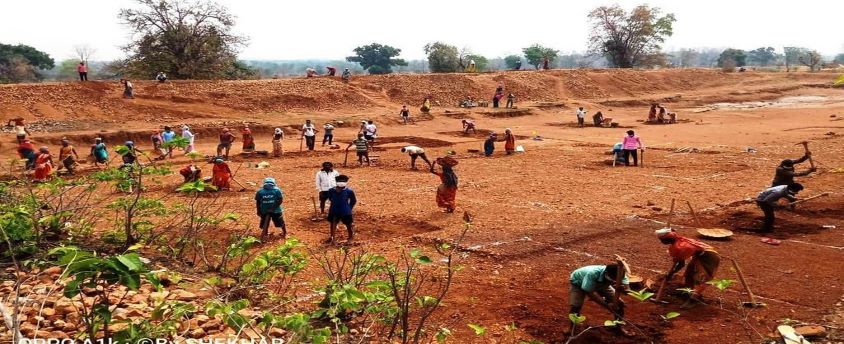
Why in News?
- The Central government has constituted a committee to review the implementation of the MGNREGA scheme, especially to assess the programme’s efficacy as a poverty alleviation tool.
Background:
- The Mahatma Gandhi National Rural Employment Guarantee Act (MGNREGA) was enacted in 2005, and the demand-driven scheme promises 100 days of unskilled work per year to every rural household that wishes to participate.
- It was launched as a poverty alleviation instrument for the rural region, providing them with a safety net in the form of guaranteed work and wages. The scheme now has 51 crore active workers enrolled.
- However, it was felt that states like UP and Bihar where there is a higher level of poverty, haven’t been able to utilise the scheme optimally.
- The scheme has also been criticised by economists like Jagdish Bhagwati and Arvind Panagariya as an “inefficient instrument of shifting income to the poor”.
About the committee:
- The Sinha committee (named after former Rural Development secretary Amarjeet Sinha) has now been tasked to study –
- The various factors behind the demand for MGNREGA work,
- The expenditure trends and inter-State variations, and
- The composition of work.
- It will suggest (within 3 months) what changes in focus and governance structures are required to make MGNREGA more effective.
Terms of reference of the committee:
- It will look at the argument that the cost of providing work has also shot up since the scheme first started.
- It will review the reasons and recommend ways to bring in a greater focus on poorer areas.
- It will study if the composition of work taken up presently under the scheme should be changed, i.e., whether it should focus more on community-based assets or individual works.
Criticism of the scheme:
- Lack of tangible asset creation: Bihar, for example, despite its levels of poverty, does not generate assets to make a concrete difference, while Kerala which is economically better has been utilising it for asset creation.
- Allocation of funds is not as per the needs of the states: From the above example, while Bihar needs MGNREGA more, Kerala cannot be denied funds because of the current structure of the programme.
India-Australia Economic Cooperation and Trade Agreement
23, Nov 2022

Why in News?
- Commerce and Industry Minister Piyush Goyal recently said that the trade pact with Australia that was ratified by the Australian Parliament on November 22 will “significantly open up opportunities” for many Indian business sectors.
About the News:
- In February 2022, India and Australia announced that they were going to sign such an agreement.
- The negotiations for India-Australia ECTA were formally re-launched in September 2021 and concluded on a fast-track basis by the end of March 2022.
What is the Economic Cooperation and Trade Agreement?
- It is the first Free Trade Agreement (FTA) that India has signed with a major developed country in over a decade.
- In February, India signed an FTA with the UAE and is currently working on FTAs with Israel, Canada, UK and the European Union.
- The Agreement encompasses cooperation across the entire gamut of bilateral economic and commercial relations between the two friendly countries, and covers areas like:
- Trade in Goods, Rules of Origin.
- Trade in Services.
- Technical Barriers to Trade (TBT).
- Sanitary and Phytosanitary (SPS) measures.
- Dispute Settlement, Movement of Natural Persons.
- Telecom, Customs Procedures.
- Pharmaceutical products, and Cooperation in other Areas.
- ECTA provides for an institutional mechanism to encourage and improve trade between the two countries.
- The ECTA between India and Australia covers almost all the tariff lines dealt in by India and Australia respectively.
- India will benefit from preferential market access provided by Australia on 100% of its tariff lines.
- This includes all the labour-intensive sectors of export interest to India such as Gems and Jewellery, Textiles, leather, footwear, furniture etc.
- On the other hand, India will be offering preferential access to Australia on over 70% of its tariff lines, including lines of export interest to Australia which are primarily raw materials and intermediaries such as coal, mineral ores and wines etc.
- Under the agreement, Indian graduates from STEM (Science, Technology, Engineering and Mathematics) will be granted extended post-study work visas.
- Australia will also set up a programme to grant visas to young Indians looking to pursue working holidays in Australia.
What is the Significance of the Agreement?
- It will provide zero-duty access to 96% of India’s exports to Australia including shipments from key sectors such as engineering goods, gems and jewellery, textiles, apparel and leather.
- It will boost bilateral trade in goods and services to USD 45-50 billion over five years, up from around USD 27 billion, and generate over one million jobs in India, according to a government estimate.
- It will also give about 85% of Australia’s exports zero-duty access to the Indian market, including coal, sheep meat and wool, and lower duty access on Australian wines, almonds, lentils, and certain fruits.
What are Free Trade Agreements?
- It is a pact between two or more nations to reduce barriers to imports and exports among them. Under a free trade policy, goods and services can be bought and sold across international borders with little or no government tariffs, quotas, subsidies, or prohibitions to inhibit their exchange.
- The concept of free trade is the opposite of trade protectionism or economic isolationism.
- FTAs can be categorised as Preferential Trade Agreement, Comprehensive Economic Cooperation Agreement (CECA), Comprehensive Economic Partnership Agreement (CEPA).
How has been the India- Australia Trade Relation so far?
- India and Australia enjoy excellent bilateral relations that have undergone transformational evolution in recent years, developing along a positive track, into a friendly partnership.
- This is a special partnership characterised by shared values of pluralistic, parliamentary democracies, Commonwealth traditions, expanding economic engagement, long standing people-to-people ties and increasing high level interaction.
- The India-Australia Comprehensive Strategic Partnership initiated during the India-Australia Leaders’ Virtual Summit held in June 2020 is the cornerstone of India-Australia multi-faceted bilateral relations.
- Growing India-Australia economic and commercial relations contribute to the stability and strength of a rapidly diversifying and deepening bilateral relationship between the two countries.
- India and Australia have been each other’s important trading partners.
- Australia is the 17th largest trading partner of India and India is Australia’s 9th largest trading partner.
- India-Australia bilateral trade for both merchandise and services is valued at USD 27.5 billion in 2021.
- India’s merchandise exports to Australia grew 135% between 2019 and 2021. India’s exports consist primarily of a broad-based basket largely of finished products and were USD 6.9 billion in 2021.
- India’s merchandise imports from Australia were USD 15.1 billion in 2021, consisting largely of raw materials, minerals and intermediate goods.
- India and Australia are partners in the trilateral Supply Chain Resilience Initiative (SCRI) arrangement along with Japan which seeks to enhance the resilience of supply chains in the Indo-Pacific Region.
- Further, India and Australia are also members of the QUAD grouping (India, the US, Australia and Japan), also comprising the US, and Japan, to further enhance cooperation and develop partnership across several issues of common concern.
Way Forward:
- Shared values, shared interests, shared geography and shared objectives are the bedrock of deepening India-Australia ties and the cooperation and coordination between the two countries have picked up momentum in recent years.
- Both India and Australia share a vision of a free, open, inclusive and rules-based Indo-Pacific region and cooperative use of the seas by adherence to international law including the United Nations Convention on the Law of the Sea (UNCLOS) and peaceful resolution of disputes rather than through unilateral or coercive actions.
- The India-Australia ECTA will further cement the already deep, close and strategic relations between the two countries and will significantly enhance bilateral trade in goods and services, create new employment opportunities, raise living standards, and improve the general welfare of the peoples of the two countries.
A & N seeks GI Tag for Nicobari hodi Boat
21, Nov 2022

Why in News?
- The Geographical Indications Registry at Guindy, Chennai, has received an application from the Tribal Development Council, Andaman & Nicobar Islands, seeking the Geographical Indication (GI) tag for the Nicobari hodi boat which is the first application from the Union Territory seeking a tag for one its products.
About the Brass and Bell Metal products:
- The hodi is the Nicobari tribe’s traditional craft.
- It is an outrigger canoe, very commonly operated in the Nicobar group of islands.
- The technical skills for building a hodi are based on indigenous knowledge inherited by the Nicobarese from their forefathers.
- The hodi is built using either locally available trees or from nearby islands, and its design varies slightly from island to island.
What is GI Tag?
- A GI or Geographical Indication is a name or a sign given to certain products that relate to a specific geographical location or origins like a region, town or country.
- Using Geographical Indications may be regarded as a certification that the particular product is produced as per traditional methods, has certain specific qualities, or has a particular reputation because of its geographical origin.
- Geographical indications are typically used for wine and spirit drinks, foodstuffs, agricultural products, handicrafts, and industrial products.
- GI Tag ensures that none other than those registered as authorized users are allowed to use the popular product name. In order to function as a GI, a sign must identify a product as originating in a given place.
Who accords and regulates Geographical Indications?
- Geographical Indications are covered as a component of intellectual property rights (IPRs) under the Paris Convention for the Protection of Industrial Property.
- At the International level, GI is governed by the World Trade Organisation’s (WTO’s) Agreement on Trade-Related Aspects of Intellectual Property Rights (TRIPS).
- In India, Geographical Indications registration is administered by the Geographical Indications of Goods (Registration and Protection) Act, 1999 which came into force with effect from September 2003.
- The first product in India to be accorded with GI tag was Darjeeling tea in the year 2004-05.
What are the Benefits of GI Tags?
- The Geographical Indication registration confers the following benefits:
- Legal protection to the products
- Prevents unauthorised use of GI tag products by others
- It helps consumers to get quality products of desired traits and is assured of authenticity.
- Promotes the economic prosperity of producers of GI tag goods by enhancing their demand in national and international markets.
What are the Significances of GI Tags?
- A geographical indication right facilitates those who have the right to use the indication to prohibit its usage by a third party whose product does not conform to the applicable standards.
- For example, in the purview in which the Darjeeling geographical indication is protected, producers of Darjeeling tea can omit the term “Darjeeling” for tea not grown in their tea gardens or not produced according to the norms set out in the code of practice for the geographical indication.
- However, a protected GI does not permit the holder to forbid someone from making a product using the same approaches as those set out in the standards for that indication.
- Protection for a GI tag is usually procured by acquiring a right over the sign that constitutes the indication.
Challenges in GI Tags:
- The special treatment to wines and spirits in TRIPS Agreement appears to be developed country centric.
- Developing countries, including India, seek the same higher level of protection for all GIs as was given under TRIPS for wines and spirits.
- The battle for GI tag between states.
- False use of geographical indications by unauthorized parties is detrimental to consumers and legitimate producers. Cheap Power loom saris are sold as reputed Banarsi handloom saris, harming both the producers and consumers.
- Such unfair business practices result in loss of revenue for the genuine right-holders of the GI and also misleads consumers.
- Protection of GI has, over the years, emerged as one of the most contentious IPR issues.
Way Forward:
- The benefits of GI tag are realised only when these products are effectively marketed and protected against illegal copying.
- Effective marketing and protection require quality assurance, brand creation, post-sale consumer feedback and support, prosecuting unauthorised copiers, etc.
- For internationally recognised products like Darjeeling tea, international protection is of crucial importance.
- Legal protection to GIs also extends to protection of traditional knowledge and traditional cultural expression contained in the products.
- Hence Intellectual Property is a power tool for economic development and wealth creation particularly in the developing world.
- GIs have the potential to be our growth engine. Policy-makers must pay a heed to this and give Indian GI products their true reward.
Pradhan Mantri Garib Kalyan Anna Yojana scheme (PMGKAY)
19, Nov 2022

Why in News?
- The extension of the Pradhan Mantri Garib Kalyan Anna Yojana (PMGKAY), a scheme to distribute free foodgrains to the poor, for another three months, comes as a surprise for many reasons.
What is PMGKAY?
- The Pradhan Mantri Garib Kalyan Anna Yojana scheme was part of the Centre’s initial COVID-19 relief package, back in March 2020 when the first lockdown was announced.
- It provides for 5 kg of rice or wheat per person per month to be distributed free of cost to the 80 crore beneficiaries of the National Food Security Act.
- This is over and above the 5 kg already provided to ration card holders at a subsidised rate, thus ensuring a doubling of foodgrain availability to poor people at a time when the pandemic and lockdown was decimating livelihoods.
- The scheme was initially meant to run from April to June 2020, but was then extended for another five months from July to November.
- In these first two phases, 320 lakh tonnes of grain were allotted and about 95% distributed to beneficiaries.
- Initially, one kg of pulses was also provided under the scheme, which was later restricted to chana dal only, and then discontinued in later phases.
- After the onset of the second wave of the pandemic, PMGKAY was rolled out for two months again, in May-June 2021, and was then further extended for another five months, from July to November.
- Another 278 lakh tonnes of grain were allotted for these two phases, and distribution is still ongoing.
Were all poor people covered under the scheme?
- The scheme only provided grain for those families who held ration cards.
- During the first lockdown, the plight of migrant workers who held cards registered in their home villages but were stranded without food or employment in the cities where they worked, came to the limelight.
- A number of other poor families did not possess ration cards at all for a variety of reasons, including the state quotas on the number of ration cards.
- In May and June 2020, the Centre allocated 8 lakh tonnes of foodgrain to be distributed by States under the Atma Nirbhar Bharat scheme for stranded migrants and others without ration cards, although only 40% had been distributed even by August. The scheme was not revived during the second lockdown.
- The 80 crore cap on NFSA beneficiaries and state ration card quotas are based on 2011 census data.
- Given the projected increase in population since then, economists have estimated that 10 crore eligible people are being excluded from the NFSA’s safety net.
- In its June 2021 judgement in a suo moto case on the plight of migrant workers, the Supreme Court directed that the Centre and State should continue providing foodgrains to migrants whether or not they had ration cards.
What are the arguments for and against extension of PMGKAY?
- As the economy is also reviving and the OMSS [or Open Market Sale Scheme] is also exceptionally good, there is no proposal from the department for extension.
- It was previously noted that States are free to buy rice and wheat under OMSS, and distribute it to migrants and other vulnerable communities.
- The Right to Food Campaign, pointing to the SC judgement and noting that the pandemic still exists, unemployment remains at record levels and there is widespread hunger among vulnerable communities.
- ThWhy in News?
- The extension of the Pradhan Mantri Garib Kalyan Anna Yojana (PMGKAY), a scheme to distribute free foodgrains to the poor, for another three months, comes as a surprise for many reasons.
What is PMGKAY?
- The Pradhan Mantri Garib Kalyan Anna Yojana scheme was part of the Centre’s initial COVID-19 relief package, back in March 2020 when the first lockdown was announced.
- It provides for 5 kg of rice or wheat per person per month to be distributed free of cost to the 80 crore beneficiaries of the National Food Security Act.
- This is over and above the 5 kg already provided to ration card holders at a subsidised rate, thus ensuring a doubling of foodgrain availability to poor people at a time when the pandemic and lockdown was decimating livelihoods.
- The scheme was initially meant to run from April to June 2020, but was then extended for another five months from July to November.
- In these first two phases, 320 lakh tonnes of grain were allotted and about 95% distributed to beneficiaries.
- Initially, one kg of pulses was also provided under the scheme, which was later restricted to chana dal only, and then discontinued in later phases.
- After the onset of the second wave of the pandemic, PMGKAY was rolled out for two months again, in May-June 2021, and was then further extended for another five months, from July to November.
- Another 278 lakh tonnes of grain were allotted for these two phases, and distribution is still ongoing.
Were all poor people covered under the scheme?
- The scheme only provided grain for those families who held ration cards.
- During the first lockdown, the plight of migrant workers who held cards registered in their home villages but were stranded without food or employment in the cities where they worked, came to the limelight.
- A number of other poor families did not possess ration cards at all for a variety of reasons, including the state quotas on the number of ration cards.
- In May and June 2020, the Centre allocated 8 lakh tonnes of foodgrain to be distributed by States under the Atma Nirbhar Bharat scheme for stranded migrants and others without ration cards, although only 40% had been distributed even by August. The scheme was not revived during the second lockdown.
- The 80 crore cap on NFSA beneficiaries and state ration card quotas are based on 2011 census data.
- Given the projected increase in population since then, economists have estimated that 10 crore eligible people are being excluded from the NFSA’s safety net.
- In its June 2021 judgement in a suo moto case on the plight of migrant workers, the Supreme Court directed that the Centre and State should continue providing foodgrains to migrants whether or not they had ration cards.
What are the arguments for and against extension of PMGKAY?
- As the economy is also reviving and the OMSS [or Open Market Sale Scheme] is also exceptionally good, there is no proposal from the department for extension.
- It was previously noted that States are free to buy rice and wheat under OMSS, and distribute it to migrants and other vulnerable communities.
- The Right to Food Campaign, pointing to the SC judgement and noting that the pandemic still exists, unemployment remains at record levels and there is widespread hunger among vulnerable communities.
- They argued that the government should not only extend PMGKAY for another six months, but also universalise the public distribution system itself, so that anyone in need would receive food support regardless of whether they possessed a ration card or not.
- They also suggested that pulses and cooking oils be added to the monthly entitlements, given the recent rise in prices of these commodities.
ey argued that the government should not only extend PMGKAY for another six months, but also universalise the public distribution system itself, so that anyone in need would receive food support regardless of whether they possessed a ration card or not.
- They also suggested that pulses and cooking oils be added to the monthly entitlements, given the recent rise in prices of these commodities.
Eklavya Model Residential Schools
16, Nov 2022
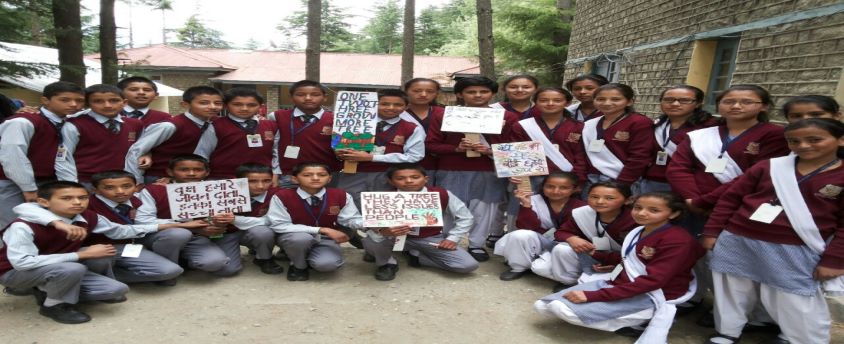
Why in News?
- The government is pushing to set up 740 Eklavya Model Residential Schools (EMRS) for Scheduled Tribe (ST) students.
What are EMRS?
- EMRS is a scheme for making model residential schools for STs across India.
- It started in the year 1997-98.
- Its nodal ministry is Ministry of Tribal Affairs.
- The aim of the scheme to build schools at par with the Jawahar Navodaya Vidyalayas and Kendriya Vidyalayas with focus on special state-of-the-art facilities for preserving local art and culture besides providing training in sports and skill development.
- The EMR School follows the CBSE curriculum.
- In 2018-19, revamping of the EMRS scheme was approved by the Cabinet.
- Since the new guidelines have been put into place, the Ministry of Tribal Affairs sanctioned 332 of the targeted 452 schools till 2021-22.
- As of November 2022, a total of 688 schools have been sanctioned, of which 392 are functional.
- Of the 688, 230 have completed construction and 234 are under construction, with 32 schools still stuck due to land acquisition issues.
What were the Old Guidelines?
- Although the Union government had sanctioned a certain number of preliminary EMRS, the States and Union Territories were responsible for seeking sanction of new schools as and when they needed it.
- The funds for these schools were to come from the grants under Article 275(1) and the guidelines mandated that unless States finished constructing the schools sanctioned by the Centre, they would not be entitled to funds for new ones.
- Apart from the infrastructural requirements of 20-acre plots for each EMRS, the guidelines did not have any criteria of where the EMRS could be set up, leaving it to the discretion of State governments.
What are the New Guidelines?
- The new guidelines in 2018-19 gave the Union government more power to sanction schools and manage them.
- A National Education Society for Tribal Students (NESTS) was set up and entrusted with the management of the State Education Society for Tribal Students (SESTS), which would run the EMRS on the ground.
- The new guidelines set a target of setting up an EMRS in every tribal sub-district and introduced a “population criteria” for setting them up.
- One EMRS will be set-up per sub-district that has at least a 20,000-odd Scheduled Tribe (ST) population, which must be 50% of the total population in that area.
- The minimum land requirement for setting up an EMRS was reduced from 20 acres to 15 acres.
What are the Challenges?
- Requirement of 15-acre Area:
- As per the Standing Committee Report, requirement of 15-acre area is making the identification and acquisition of land troublesome, especially in hilly areas, leftwing extremism-affected areas and the northeast.
- Population Criteria:
- The Standing Committee noted that the population criteria is depriving a scattered tribal population of the benefit of EMRS. Sometimes, when the population criteria are fulfilled, 15-acre plots are not available.
- Shortage of Teachers:
- Despite the setting up of the NESTS, there was a shortage of teachers.
- Though the new guidelines allowed NESTS to suggest measures for teacher recruitment, they never made them mandatory for the States to follow.
- This led to non-uniformity in the quality of teachers, not enough recruitment in reserved positions, and a large number of schools recruiting teachers contractually, in a bid to save on salary expenses.
- As of July 2022, all functional EMRS had a teaching strength of just under 4,000 against the 11,340 recommended by NESTS.
Way Forward:
- Guidelines regarding area of land and population criteria should be relaxed so that the less dense tribal populations can also reap the benefit of EMRS scheme.
- More control of school management should be given to NESTS to overcome the shortage of teachers.
- Also, mandatory guidelines about teacher recruitment must be issued for the States.
Declining Consumer Demand and Reluctant Investors
09, Nov 2022
Why in News?
- In September, Finance Minister Nirmala Sitharaman was anguished that industry was holding back from investing in manufacturing despite a significant cut in corporate tax rates in 2019.
Analyzing the corporate Investment since the pandemic:
- Less investment is not the result of losses: The slowdown in corporate investment did not happen because companies were making losses.
- More profit but less investments by corporates: In fact, private companies, boosted by considerable tax cuts, made windfall profits. A State Bank of India analysis shows that tax cuts contributed 19% to the top line of companies during the pandemic. But this did not result in increased investments.
- Dividends to shareholders: Before the pandemic, instead of investing in themselves, companies chose to reward shareholders with higher dividends.
- Investment in equity and debt instead of Infrastructure: During the pandemic, they did not use the profits for paying out dividends; they retained a big chunk of the profits. However, instead of investing in buildings, plants and machinery, they invested in equity shares and debt instruments.
- Corporate cited the slowdown in demand as reason for less investment: So, both before and after the outbreak, they shied away from capital investments. The hesitancy to invest can be explained by a slowdown in the demand side of the economy.
- Corporates didn’t invest in long term returns sectors: Consumer demand started to decline the year before the pandemic and worsened after the COVID19 outbreak. This forced companies to use the increased profits to decrease their debts, pay dividends and invest in financial instruments instead of increasing productivity by making capital investments.
What is the current consumer’s demand situation?
- Average Consumer sentiment index: Private companies invest when they are able to estimate profits, and that comes from demand. The Centre for Monitoring Indian Economy’s (CMIE) consumer sentiment index is still below pre-pandemic levels but is far higher than what was seen 12-18 months ago.
- Buoyant Aggregate demand: RBI’s Monetary policy report dated September 30 says, Data for Q2 (ended Sept) indicate that aggregate demand remained buoyant, supported by the ongoing recovery in private consumption and investment demand. It shows that seasonally adjusted capacity utilization rose to 74.3% in Q1 the highest in the last three years.
- High household savings: Along with household savings intentions remaining high, might hold the key to the investment cycle kicking in.
Statistic on demand and investment:
- New investment projects: The new investment projects announced as a % of GDP, since FY18, the share has remained below the 5% mark, compared to over 9% between FY05 and FY22.
- Collection of corporate tax decreased: Corporate tax and income tax collected in India as a % of GDP after the cut in 2019, the share of corporate tax declined dramatically, while the share of income tax gradually increased.
- Double burden on tax payers: The shift in tax burden from the corporates to the people came at a time of job losses and reduced income levels. This pushed more people into poverty.
- Corporate profit increased after tax cut: Profit after tax earned by non-financial private companies in ₹ trillion after the tax cut, the profits of these companies rose to ₹4-5 trillion in the last two financial years from ₹1-2 trillion in many of the previous periods.
- Increase and decrease in dividend to shareholders: Dividends paid by non-financial private companies as a share of profits earned after tax, Payouts to shareholders surged in FY20, the year before the pandemic, but reduced in the following years.
- Profit retention increased: Retained profits as a % of profit after tax surged to 63% in FY22 the highest in a decade (limited companies were analyzed in FY22, so data are provisional).
- Profits are invested in equities: In FY21, the debt-to-equity ratio came down to 0.86 the lowest in at least three decades. In FY22 (provisional data), it came down further to 0.71.
- Year on year decline in capital investment: Year on year change in the investments of non-financial private companies in fixed assets such as buildings, plants, machinery, transport and infrastructure have declined in recent years. But the year on year change in investments in financial instruments such as equity, debt and mutual funds have surged.
Conclusion:
- Corporates are holding their pockets in hope of demand rise in future. However, this affects the post-pandemic recovery of economy. IMF and RBI was right to revise their growth forecast this year. Unequal recovery of economy have certainly affected the income levels of middle class. Government has taken a lot of step on supply side (corporate side and banking reform) but no intervention in revival of demand.
The Protection of Children from Sexual Offences (POCSO) Act
09, Nov 2022
Why in News?
- The POCSO Act brings tribals in the Nilgiris into conflict with the law, as youth under the age of 18 in relationships within or outside marriage are subject to the Act’s stringent provisions.
About the News:
- The POCSO Act brings tribals in the Nilgiris into conflict with the law, as youth under the age of 18 in relationships within or outside marriage are subject to the Act’s stringent provisions.
About the Protection of Children from Sexual Offences (POCSO) Act:
- The Union Ministry of Women and Child Development led the introduction of the POCSO Act in 2012.
- The Act was designed to protect children from sexual assault, sexual harassment and pornography offences, as well as to provide for the establishment of Special Courts for the trial of such offences.
- The Act was amended in 2019 for enhancing the punishments for specific offences in order to deter abusers and ensure a dignified childhood.
Salient features:
- A gender-neutral law: The POCSO Act establishes a gender-neutral tone for the legal framework available to child sexual abuse victims by defining a child as “any person” under the age of 18.
- Not reporting abuse is an offence: Any person (except children) in charge of an institution who fails to report the commission of a sexual offence relating to a subordinate is liable to be punished.
- No time limit for reporting abuse: A victim can report an offence at any time, even a number of years after the abuse has been committed.
- Maintaining confidentiality of the victim’s identity: The Act prohibits disclosure of the victim’s identity in any form of media, except when permitted by the special courts established under the act.
New obligations under the POCSO Rules 2020:
- Any institution housing children or coming in regular contact is required to conduct a periodic police verification and background check of every employee.
- Such an institution must impart regular training to sensitise its employees on child safety and protection.
- The institution has to adopt a child protection policy based on the principle of zero tolerance for violence against children.
POCSO Act’s performance in comparison to global standards:
- A 2019 Economist Intelligence Unit report ranked India’s legal system for safeguarding children from sexual abuse and exploitation as the best of the countries surveyed.
- On this metric, India outranked the United Kingdom, Sweden and Australia.
Concerns:
- Despite the existence of such comprehensive child sexual abuse law, the scale of such abuse is staggering.
- According to a recent survey, one in every two children is a victim of sexual abuse in India.
- Furthermore, in the vast majority of cases, the perpetrators are known to the victim, causing the victim to be hesitant to approach authorities for redress.
- Incidents of child abuse have also risen exponentially since the Covid-19 pandemic, with the emergence of new forms of cybercrime.
- The general level of awareness or knowledge on the part of minor girls and boys of the POCSO Act remains severely inadequate in the country.
- Child marriage is common among certain tribal groups in the country, resulting in the criminalisation of 17-18 years old youths due to a lack of knowledge of the POCSO Act.
Way ahead:
- Recently, the Karnataka HC has directed the State Education Department to set up a mechanism for educating students, at least from Class IX onwards about the act and its provisions.
Pradhan Mantri Jan-Aushadhi Yojana
09, Mar 2022

Why in News?
- Janaushadhi Diwas week has been observed from 1st March to 7th March 2022.
About the News:
- Theme of 4th Janaushadhi Diwas: “Jan Aushadhi-Jan Upyogi”
- Pharmaceuticals & Medical Devices Bureau of India (PMBI) is the implementing agency of Pradhan Mantri Bhartiya Janaushadhi Pariyojana (PMBJP).
- All the districts of the country have been covered under the scheme.
- Effective IT-enabled logistics and supply-chain systems for ensuring real-time distribution of medicines at all outlets have also been introduced.
- Product basket of PMBJP presently comprises 1,451 drugs and 240 surgical instruments.
What is National Health Authority (NHA)?
- National Health Authority (NHA) is the apex body responsible for implementing India’s flagship public health insurance/assurance scheme called “Ayushman Bharat Pradhan Mantri Jan Arogya Yojana”.
- It has been entrusted with the role of designing strategy, building technological infrastructure and implementation of “National Digital Health Mission” to create a National Digital Health Eco-system.
- National Health Authority is the successor of the National Health Agency, which was functioning as a registered society since 23rd May, 2018.
- Pursuant to Cabinet decision for full functional autonomy, National Health Agency was reconstituted as the National Health Authority on 2nd January 2019, under Gazette Notification.
- NHA is governed by a Governing Board chaired by the Union Minister for Health and Family Welfare headed by a Chief Executive Officer (CEO), an officer of the rank of Secretary to the Government of India, who manages its affairs. The CEO is the Ex-Office Member Secretary of the Governing Board.
- To implement the scheme at the State level, State Health Agencies (SHAs) in the form of a society/trust have been set up by respective States. SHAs have full operational autonomy over the implementation of the scheme in the State including extending the coverage to non SECC beneficiaries.
- NHA is leading the implementation for national Digital Health Mission NDHM in coordination with different ministries/departments of the Government of India, State Governments, and private sector/civil society organizations.
About Universal Health Coverage:
- The scheme will ensure Universal Health Coverage and focus on providing financial risk protection and ensuring quality and affordable essential health services to all individuals and communities.
- Universal Health Coverage (UHC) includes the full spectrum of essential, quality health services, from health promotion to prevention, treatment, rehabilitation, and palliative care.
- UHC enables everyone to access the services, protecting people from the financial consequences of paying for health services out of their own pockets and reducing the risk that people will be pushed to poverty.
What is Ayushman Bharat PMJAY Yojana?
- The PMJAY, world’s largest health insurance/assurance scheme fully financed by the government, provides a cover of Rs. 5,00,000 per family per year for secondary and tertiary care hospitalisation across public and private empanelled hospitals in India.
- Pre-hospitalisation and Post-hospitalisation expenses such as diagnostics and medicines are also included in the scheme.
- Coverage: Over 10.74 crore poor and vulnerable entitled families (approximately 50 crore beneficiaries) are eligible for these benefits.
- Provides Cashless Access to health care services for the beneficiary at the point of service.
What is its Significance?
- Helps reduce catastrophic expenditure for hospitalizations, which pushes 6 crore people into poverty each year.
- Helps mitigate the financial risk arising out of catastrophic health episodes.
Eligibility Criteria’s:
- No Restrictions on family size, age or gender.
- All pre–existing conditions are covered from day one.
- Covers up to 3 days of pre-hospitalization and 15 days post-hospitalization expenses such as diagnostics and medicines.
- Benefits of the scheme are portable across the country.
- Services include approximately 1,393 procedures covering all the costs related to treatment, including but not limited to drugs, supplies, diagnostic services, physician’s fees, room charges, surgeon charges, OT and ICU charges etc.
- Public hospitals are reimbursed for the healthcare services at par with the private hospitals.
Challenges and Concerns:
- Medical audits have also revealed that private hospitals are more likely to indulge in fraud and abuse than public hospitals and more likely to discharge patients early post-surgery to cut Costs.
- Ensuring the Accountability of Private Hospitals to provide efficient and high-quality care is a pre-eminent challenge for scheme Implementation.
- There is huge State-wise variation in the share of Empanelled private hospitals from less than 25% in most of the north-eastern and hill States to 80% in Maharashtra.
- Private hospitals have fewer beds than public hospitals and are more likely to be empanelled for surgical packages and super-specialties.
GST Revenues Cross 1.3 Lakh Crore in Feb
09, Mar 2022
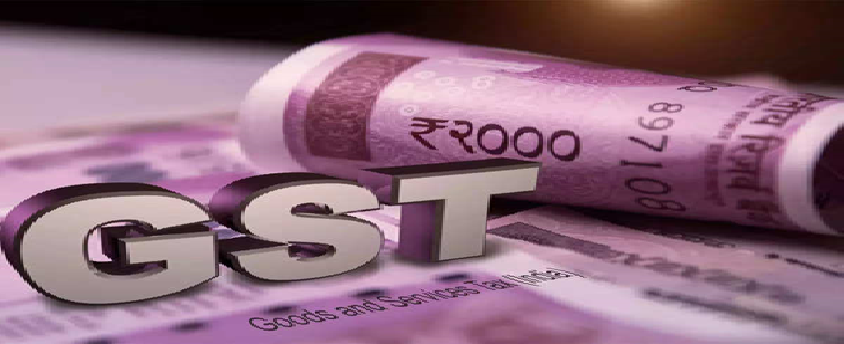
Why in News?
- The Gross Goods and Services Tax (GST) Revenue in February was 26% higher than the pre-pandemic levels at ₹1,33,026 crore.
What is GST?
- GST is an Indirect tax that has replaced many Indirect Taxes in India such as excise duty, VAT, services tax, etc.
- The Goods and Service Tax Act was passed in Parliament on 29th March 2017 and came into effect on 1st July 2017. It is a single domestic indirect tax law for the entire country.
- It is a comprehensive, multi-stage, destination-based tax that is levied on every value addition.
- Under the GST regime, the tax is levied at every point of sale. In the case of intra-state sales, Central GST and State GST are charged. All the inter-state sales are chargeable to the Integrated GST.
What are the Components of GST?
- There are three taxes applicable under this system:
- CGST: It is the tax collected by the Central Government on an intra-state sale (e.g., a transaction happening within Maharashtra)
- SGST: It is the tax collected by the state government on an intra-state sale (e.g., a transaction happening within Maharashtra)
- IGST: It is a tax collected by the Central Government for an inter-state sale (e.g., Maharashtra to Tamil Nadu)
Advantages Of GST:
- GST has mainly removed the cascading effect on the sale of goods and services.
- Removal of the cascading effect has impacted the cost of goods.
- Since the GST regime eliminates the tax on tax, the cost of goods decreases.
- Also, GST is mainly technologically driven.
- All the activities like registration, return filing, application for refund and response to notice needs to be done online on the GST portal, which accelerates the processes.
Issues with GST:
- High operational cost
- GST has given rise to complexity for many business owners across the nation.
- GST has received criticism for being called a ‘Disability Tax’ as it now taxes articles such as braille paper, wheelchairs, hearing aid etc.
- Petrol is not under GST, which goes against the ideals of the Unification of Commodities.
- Take a look at the share of GST in Government Earnings for the previous fiscal:
Amazon- Future Deal
06, Mar 2022

Why in News?
- The Amazon-Future Group Dispute over a ₹24, 731–crore merger deal with Reliance took an unexpected turn in the Supreme Court when the U.S.-based e-commerce giant proposed talks to possibly end the quarrel.
About the News:
- The SC Bench adjourned the case to March 15, giving Future time to take a call on the Amazon’s proposal.
- The apex court did not pass any orders on Amazon’s plea for ‘withholding’ proceedings in the company law tribunal and the Delhi High Court in connection with the dispute.
What’s the Issue?
- Future Group and Reliance Industries Limited had signed a Rs 24,713-crore deal in August 2020 for Future Retail to sell its retail, wholesale, logistics and warehousing units to Reliance Retail and Fashionstyle.
- Amazon is Future Group’s Indian partner.
- Amazon says Future violated a partnership contract with the asset sale to its rival and wants to scuttle it, while the indebted Indian group says it would collapse if the transaction fails.
Why did Amazon Approach SIAC?
- The parties in a deal usually sign a contractual agreement which specifies about:
- The arbitral institution administering the arbitration.
- The applicable rules.
- The seat of arbitration.
- In this case Amazon and Future Group have under their agreement agreed to refer their disputes to SIAC, with Singapore presumably being the contractual choice for the seat/place of arbitration.
How is the Dispute taken up at the SIAC? What is the Procedure to be followed?
- Once a dispute is referred to arbitration, the process of appointment of the arbitral tribunal takes place.
- Composition: Typically, in case of a three member tribunal, both the parties appoint one member each to the tribunal, while the third member is jointly appointed by the two nominees or, if they fail to agree, by SIAC.
Appointment of an Emergency Arbitrator:
- Appointment of the arbitral tribunal usually takes time.
- Therefore, under the rules of SIAC, parties can move SIAC to appoint an emergency arbitrator to get urgent interim relief, even as the process of appointment of the main Arbitral Tribunal is Underway.
What Happens when the Parties don’t comply with the Order Voluntarily?
- Currently under Indian law, there is no express mechanism for enforcement of the orders of the Emergency Arbitrator.
- But, the parties voluntarily comply with the Emergency Award.
- However, if the parties don’t comply with the order voluntarily, then the party which has won the emergency award, in this case Amazon, can move the High Court in India under Section 9 of the Arbitration & Conciliation Act, 1996, to get similar reliefs as granted by the Emergency Arbitrator.
Why has Singapore become the Hub of International Arbitration?
- Foreign investors investing in India typically want to avoid the rigmarole of the Indian courts.
- Foreign investors feel that Singapore is neutral ground for dispute resolution.
- Singapore itself over time has built a stellar reputation as jurisdiction driven by rule of law with international standards and high integrity. This gives comfort to investors that the arbitration process will be quick, fair and just”.
- According to the 2019 annual report of SIAC, India was the top user of its arbitration seat with 485 cases being referred to SIAC, followed by Philippines at 122, China at 76 and the United States at 65.
Does India has any International Arbitration centre?
- India now has its own international arbitration centre in Mumbai.
About Singapore International Arbitration Centre (SIAC):
It is a not-for-profit international arbitration organisation based in Singapore, which administers arbitrations under its own rules of arbitration and the United Nations Commission on International Trade Law (UNCITRAL) Arbitration Rules.
Time to Rationalize Fuel Taxes
16, Feb 2022
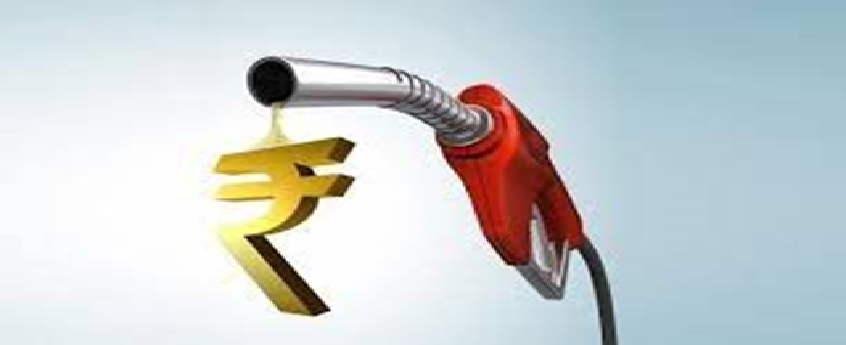
Why in News?
- The disconnect between retail and wholesale inflation suggests that the two measures are driven by distinct and Unrelated Shocks.
The Disconnect between retain Inflation and Wholesale Inflation:
- In the months between April 2020 and November 2020, retail inflation remained above 6%, while average wholesale inflation was -0.20%.
- During the financial crisis (2008-2009) wholesale inflation came down significantly as commodity prices crashed after a boom, but retail inflation kept rising.
- Correlation: This disconnect is reflected in the Contemporaneous correlation between these two measures of inflation, which we find to be very low (0.04), and not significant.
- Understanding the reasons for the Disconnect
- We cannot rule out feedback from wholesale inflation to retail inflation.
- To better explore this, it helps to understand the driving forces behind retail and wholesale inflation.
- Driving factors for CPI: Retail inflation is closely linked to food and beverage prices, partly because of their higher weightage in the consumer price index (CPI).
- The dominance of supply shocks: High retail inflation in 2020 was primarily due to the rising prices of food and beverages.
- The surge was likely led by the usual supply shocks—rainfall, agricultural productivity, or Covid-19-induced supply shocks.
- This suggests two important features of Indian retail inflation: it is predominantly led by supply shocks (food inflation shock) and it is transitory in nature.
- Driving factor for WPI: High wholesale inflation in recent months was mainly due to rising prices in fuel and power and manufacturing, which together comprise around 77% of the wholesale price index (WPI).
- Rising fuel and energy prices in India were a result of the recent increase in global oil prices.
Takeaways:
- High wholesale inflation should not warrant any immediate policy responses as the two inflation measures seem to reflect Different Things.
- Overall, the high correlation between world energy inflation and India’s wholesale inflation (0.88) Indicates that India’s wholesale inflation is predominantly driven by world Commodity Prices.
- On the other hand, the low correlation between India’s retail inflation and world energy Inflation (-0.13, and not significant), suggests that India’s retail inflation is primarily driven by domestic food prices.
- Higher wholesale inflation implies a higher profit margin for producers, which acts as an incentive for Investment.
- There are, in fact, some early signs of a revival in investment in recent quarters, and policy must be careful not to Derail this.
Policy Options:
- Given the pass-through of wholesale inflation into retail inflation, if the ongoing commodity boom persists, then the fuel and power component of the WPI is likely to raise retail inflation directly.
- At that point, there would be some urgency to increase the interest rate, which may be premature and could dampen the revival of growth prospects.
- To avoid the interest rate response, the best option going forward would be to rationalise fuel taxes, to reduce the pass-through of global commodity prices into wholesale prices and ultimately into retail inflation.
The Myth of the Trickle-Down
16, Feb 2022

Why in News?
- There is fear that the way the money will be used by the Centre will disempower the states further, just when they must do most of the heavy lifting on Public Welfare.
Wealth Creation and Trickle-Down:
- Failure of trickle-down: Evidence from around the world is that the economic policy paradigm, of first increasing the overall size of the pie by reducing taxes at the top and then “redistributing” the wealth, has not delivered benefits to people.
- Gandhiji had declared that he was not against wealth creators. He lauded wealth creation.
- However, it must not be at the cost of workers and welfare.
- Wealth creators must be trustees of the wealth they create, not its exclusive owners.
- The demand-side problem of the Indian Economy
- The Indian economy is suffering from a chronic “demand-side” problem that is becoming worse with Misguided Economic Policies.
- Young people who have been getting educated in larger numbers than before, even learning vocational skills, cannot find jobs.
- If people don’t earn, demand will not increase, and investments in businesses will not be attractive.
- Moreover, frustrated youth are tinderboxes for social unrest.
Financial Globalization and its Impact on India:
- Around the world, there is reaction to the Financial Globalisation of the last 30 years.
- In his book, Davos Man, Peter Goodman Explains how the wealthiest people have influenced economic policies in democratic countries from the 1990s to make themselves wealthier.
- Thomas Piketty has documented how wealth inequalities have increased alarmingly.
- Wealth has accumulated at the top, with regressive tax policies along with deregulation.
- Government expenditure on social reforms has been crimped.
Way Forward:
- The Global Economy must move on from hyper-financial, deregulated capitalism, which has given Easy Money too much Freedom.
- They must move out from their Ideological Ruts.
- Invest in Human Capital: That until the economy grows there will be no resources to invest in Human Development — whereas China invested in human development before its Economic take-off.
- Protection to Industrial Sector: That an unprepared industrial sector will thrive in Global Free Trade — whereas the UK and US (and Japan and China too), grew their industrial sectors behind walls of protection, and then demanded that the rest open their markets to the might of their Enterprises.
- Inclusive Growth: Political divisions by religion and caste are tearing India’s social fabric again. The Indian economy must grow inclusively to repair it.
Conclusion:
- Indian Policymakers must urgently discover India’s own, Contextually appropriate model of Development and shed Defunct Economic Theories.
Improvements in Agri-credit System can Revive Agriculture
15, Feb 2022
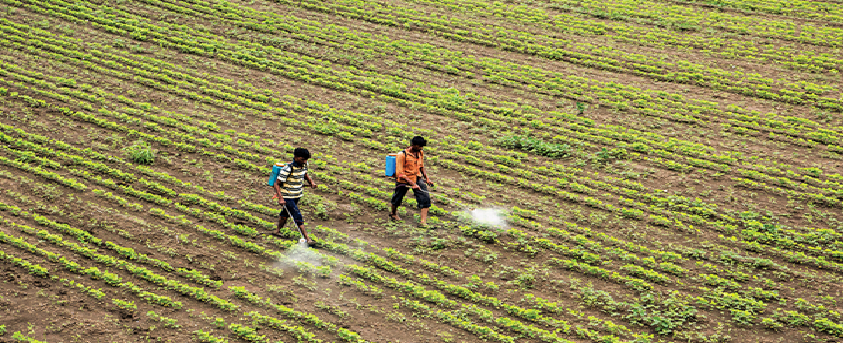
Why in News?
- The Budget Speech as well as the Economic Survey 2021-22 Recommended that priority should be given to crop Diversification and allied sectors including horticulture, organic Farming, Dairying and Fishing to increase farmers income.
Focus on Increasing the Institutional Credit:
- The Government has increased the agricultural credit target to Rs 18 lakh crore for 2022-23 from Rs 16.5 lakh crore for the current fiscal, with an allocated subsidy of Rs 20,870 crore.
- To enable small farmers to shift from wheat and paddy or improve their income through allied sectors, they must have access to institutional credit at reasonable rates of interest.
- Decreased quality and impact on agriculture: While the volume of credit has grown over the decades, its quality and impact on agriculture has deteriorated.
- Over the years, the growth rate in the agriculture sector has been falling.
- Agricultural credit has become less efficient in delivering growth.
- Small and marginal farmers left out
- Low penetration: In the last 10 years, agriculture credit increased by 350 per cent, but it has not reached even 15 per cent of the 12.56 crore small and marginal farmers.
- Agricultural households with the lowest landholding (up to two hectares) get only about 15 per cent of the subsidised loan from institutional sources.
- As per the Situation Assessment Survey of Agricultural Households by NSSO, the share of institutional loans increases with an increase in land possessed.
- The bulk of subsidised agri-credit is grabbed by a handful of big farmers and agri-business companies.A loose definition of agri-credit has led to the leakage of loans at subsidised rates to large agri-firms.
- One of the main reasons for this diversion is that subsidised credit disbursed at 4 per cent to 7 per cent rate interest is being refinanced to small farmers and in the open market at interest rates up to 24 per cent.
Way Forward:
- Institutional Development: The flow of agricultural credit has not been uniform across states.
- Institutional Development across states is a priority area for equitable flow of subsidised credit.
- Close coordination between State and NABARD: State governments should work in close coordination with the banking system for the promotion of more Joint Liability Groups (JLGs) as per NABARD guidelines to ensure that formal credit reaches financially-excluded farmers.
- States should monitor credit flow: State governments should regularly monitor credit flow.
- Low Interest Rate: Four, the rate of interest for long-term loans should be kept at 4 per cent.
- List of farm related activities: A comprehensive list of all farm-related activities should be prepared by the banks in consultation with NABARD, agriculture experts, farmers and administration.
- Simplify eligibility criteria: Eligibility conditions/criteria for providing agriculture loans should be further simplified and liberalised.
- The repayment schedule should be according to the farmers’ capacity.
Conclusion:
- Credit is critical for achieving higher farm output. Institutional credit will help Delink Farmers from non-institutional sources, where they are compelled to Borrow at Usurious rates of Interest.
Supreme Court examines allegations of rampant misuse of PMLA
15, Feb 2022
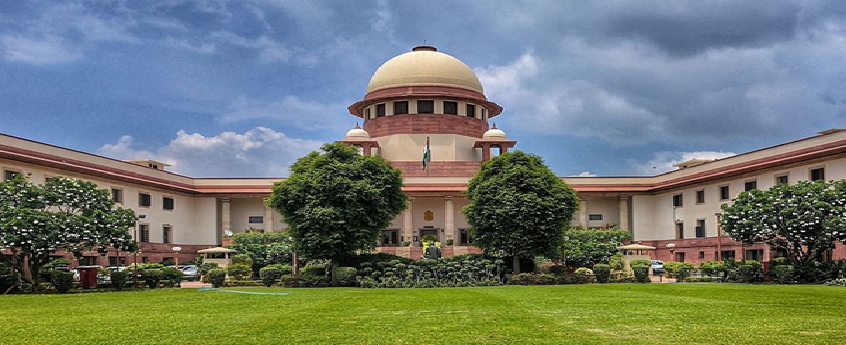
Why in News?
- The Supreme Court is looking into allegations of the metamorphosis of the Prevention of Money Laundering Act (PMLA), brought to sniff out drug money, into a potent weapon to raid rivals and Deny Rights.
Prevention of Money Laundering Act (PMLA):
- PMLA, 2002 is an Act of the Parliament of India enacted by the NDA government to prevent money-laundering and to provide for confiscation of property derived from money-laundering.
- It was enacted in response to India’s global commitment (including the Vienna Convention) to combat the menace of money laundering.
- PMLA and the Rules notified there under came into force with effect from July 1, 2005.
- The act was amended in the year 2005, 2009 and 2012.
Objectives of PMLA:
- The PMLA seeks to combat money laundering in India and has three main objectives:
- To prevent and control money laundering.
- To confiscate and seize the property obtained from the laundered money; and
- To deal with any other issue connected with money laundering in India.
Key Definitions:
- Payment System: A system that enables payment to be effected between a payer and a beneficiary, involving clearing, payment or settlement service or all of them. It includes the systems enabling credit card, debit card, smart card, money transfer or similar operations.
- Money-laundering: Whosoever directly or indirectly attempts to indulge or assist other person or actually involved in any activity connected with the proceeds of crime and projecting it as untainted property.
- Attachment: Prohibition of transfer, conversion, disposition or movement of property by an appropriate legal order.
- Proceeds of crime: Any property derived or obtained, directly or indirectly, by any person as a result of criminal activity relating to a scheduled offence.
Salient Features:
- Punishment and Jail term: The Act prescribes that any person found guilty of money-laundering shall be punishable with rigorous imprisonment from three years to seven years. The maximum punishment may extend to 10 years instead of 7 years.
- Powers of attachment of tainted property: The Director or officer above the rank of Deputy Director with the authority of the Director, can provisionally attach property believed to be “proceeds of crime”.
- Adjudicating Authority: It is the authority appointed by the central government which decides whether any of the property attached or seized is involved in money laundering.
- Presumption in inter-connected transactions: Where money laundering involves two or more inter-connected transactions. It is presumed that the remaining transactions form part of such inter-connected transactions.
- Burden of proof: A person, who is accused of having committed the offence of money laundering, has to prove that alleged proceeds of crime are in fact lawful property.
- Appellate Tribunal: It is given the power to hear appeals against the orders of the Adjudicating Authority and any other authority under the Act. Its orders are not final and can be challenged.
- Establishment of Special Court: To ensure speedy trial.
Issues with PMLA:
- Misuse of Central Agencies: PMLA is being pulled into the investigation of even ordinary crimes by the Enforcement Directorate.
- Seizing of Assets: Assets of genuine victims have been attached. The ED could just walk into anybody’s house.
- Politically Motivated Raids: In all this, the fundamental purpose of PMLA to investigate the conversion of “illegitimate money into legitimate money” was lost.
- Opacity of charges: Petitioners pointed out that even the Enforcement Case Information Report (ECIR) – an equivalent of the FIR – is considered an “internal document” and not given to the accused.
- Vagueness over Evidences: The accused is called upon to make statements which are treated as admissible in evidence.
- Harassment: The ED begins to summon accused persons and seeks details of all their Financial Transactions and of their family members.
- Against individual liberty: The initiation of an investigation by the ED has consequences which have the potential of curtailing the liberty of an individual.
Way Ahead:
- It is unlikely that corruption can be substantially reduced without modifying the way Government Agencies operate.
- The fight against Corruption is intimately linked with the reform of the Investigations.
- Therefore the adjudicating authorities must work in cooperation and ensure the Highest standards of Transparency and Fairness.
Capital Gains Tax
14, Feb 2022

Why in News?
- The capital gains tax structure in India is complicated, and it is time for a relook since the union budget has provisions for 30% tax on cryptocurrency.
What is Capital Gains Tax?
- Capital gains tax is levied on the profits made on investments.
- It covers real estate, gold, stocks, mutual funds, and various other financial and non- financial assets.
- Types
- It is divided into long-term capital gains tax (LTCG) and short-term capital gains tax (STCG) depending on how long you have held the investment in question.
- Unlike income tax, the percentage of tax does not change on the basis of your overall tax slab.
- The LTCG tax, excluding surcharge, on equity is the same for gains of ₹10 lakh or ₹10 crore.
- There is also a separate set of deductions that apply to LTCG, which do not apply to Ordinary Income.
Why is it so Complicated?
- Capital gains tax is complicated for a few primary reasons.
- First, the rate changes from asset to asset. LTCG tax on stocks and equity mutual funds is 10% but on debt mutual funds is 20% with indexation.
- Second, holding period changes from asset to asset. The holding period for LTCG tax is two years in real estate, one year for stocks, and three years for debt mutual funds and gold.
- Third, exemptions available against it come with their own complex conditions. For instance, buying a house after selling one can get you an exemption, but the new house must be bought in two years or built in three years of the sale.
Is cryptocurrency taxed as capital gains?
- The 2022 budget has proposed a 30% tax on cryptocurrency, which is higher than capital Gains Tax in many Cases.
- Besides, under Capital Gains Tax, Investors can adjust profits and losses on different investments against each other or against profits/losses in the future.
- However, this cannot be done with Cryptocurrency.
What Distortions does it Create?
- As capital gains tax is the same regardless of your overall income it can compound Inequality.
- For instance, a person with a salary of ₹40 lakh will pay 30% tax on it but just 10% LTCG tax on gains from stock trading.
- A person with a salary of ₹5 lakh will pay a 5% tax on it but the same 10% LTCG tax on stock trading.
- Second, the smaller one-year qualifying period for LTCG in stocks compared to three years in debt mutual funds may encourage short-term trading in equity.
What can be Done to fix these Anomalies?
- The government can bring about uniformity in rates and holding periods for various assets to ensure that the tax for one asset is not more attractive than another.
- A uniform and long holding period to qualify for LTCG can also discourage short-term trading and speculative behavior in assets such as stocks.
- The exemptions for LTCG such as reinvestment in another house property or capital gains bonds can also be made simpler, with fewer conditions.
- Small Investors can also be given relief by reducing rates of capital gains.
Ratings Agency
12, Feb 2022

Why in News?
- Finance Secretary has accused rating agencies of “Double Standards” when assessing Emerging Markets and Developing Economies.
What is the News?
- Fitch, a rating agency, has termed India as the most indebted emerging market.
- It claimed that the latest budget did not provide clarity on fiscal consolidation plans.
What is a Rating Agency?
- Rating agencies assess the creditworthiness or potential of an equity, debt or country.
- Their reports are read by investors to make an informed decision on whether or not to invest in a particular country or companies in that geography.
- They assess if a country, equity or debt is financially stable and whether it at a low/high default risk.
- In simpler terms, these reports help investors gauge if they would get a return on their Investment.
What do they do?
- The agencies periodically re-evaluate Previously assigned ratings after new developments Geopolitical Events or a significant Economic Announcement by the concerned entity.
- Their reports are sold and published in Financial and Daily Newspapers.
What Grading Pattern do they follow?
- The three prominent ratings agencies, viz., Standard & Poor’s, Moody’s and Fitch subscribe to largely similar grading patterns.
- Standard & Poor’s accord their highest grade, that is, AAA, to countries, equity or debt with the Exceedingly high capacity to meet their financial commitments.
- Its grading slab includes letters A, B and C with an addition a single or double letter denoting a higher grade.
- Moody’s separates ratings into short and long-term definitions. Its longer-term grading ranges from Aaa to C, with Aaa being the highest.
- Fitch, too, rates from AAA to D, with D being the lowest. It follows the same succession scheme as Moody’s and Fitch.
Criticism of Rating Agencies
- Popular ratings agencies publicly reveal their methodology, which is based on macroeconomic data publicly made available by a country, to lend credibility to their inferences.
- However, credit rating agencies were subjected to severe criticism for allegedly spurring the financial crisis in the United States, which began in 2017.
- The agencies underestimated the credit risk associated with structured credit products and failed to adjust their ratings quickly enough to deteriorating market conditions.
- They were charged for methodological errors and conflict of interest on multiple counts.
Do countries Pay Attention to Ratings Agencies?
- Lowered rating of a country can potentially cause panic selling or offloading of investment by a foreign investor.
- In 2013, the European Union opted for regulating the agencies.
- Over reliance on credit ratings may reduce incentives for investor to develop their own capacity for credit risk assessment.
- Ratings Agencies in the EU are now permitted to issue ratings for a country only thrice a year, and after close of trade in the entire Union.
RBI extends Liquidity Window for Healthcare
11, Feb 2022
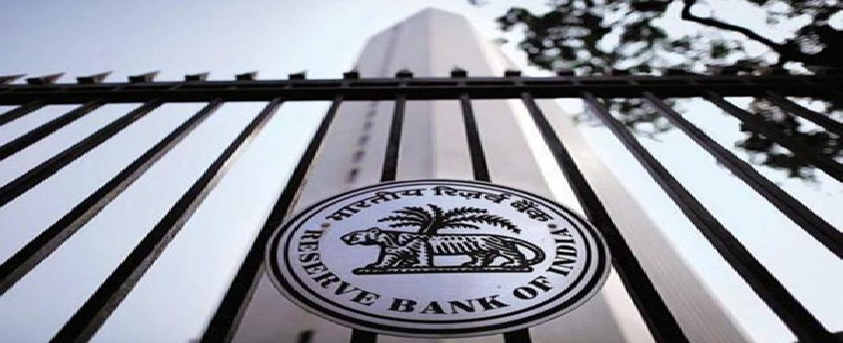
Why in News?
- The Reserve Bank of India (RBI) recently proposed to extend the term-liquidity facility of ₹50,000 crore offered to emergency health services by three months till June 30.
About the News:
- Last year in May, RBI had announced an on-tap liquidity window of ₹50,000 crore, at the repo rate with tenors of up to three years, to boost provision of immediate liquidity for ramping up COVID-19-related healthcare infrastructure and services in the country.
- Banks were incentivised for quick delivery of credit under the scheme through extension of priority-sector classification to such lending up to March 31, 2022.
- “In view of the response to the scheme, it is now proposed to extend this window up to June 30, 2022 from March 31, 2022 as announced earlier,” the RBI said in a statement on development and regulatory policies on Thursday.
- Under the scheme, banks were expected to create a COVID-19 loan book.
What is the Significance?
- Under the scheme, banks can provide fresh lending support to a wide range of entities including vaccine manufacturers, importers and suppliers of vaccines and priority medical devices, hospitals and dispensaries, pathology labs, manufactures and suppliers of oxygen and ventilators, importers of vaccines and Covid-related drugs, logistics firms and also patients for treatment.Banks are being incentivised for quick delivery of credit under the scheme through extension of priority sector classification to such lending.
- These loans will continue to be classified under priority sector till repayment or maturity, whichever is earlier. “Banks may deliver these loans to borrowers directly or through intermediary financial entities regulated by the RBI.
Step up agri-spending, boost farm incomes
10, Feb 2022
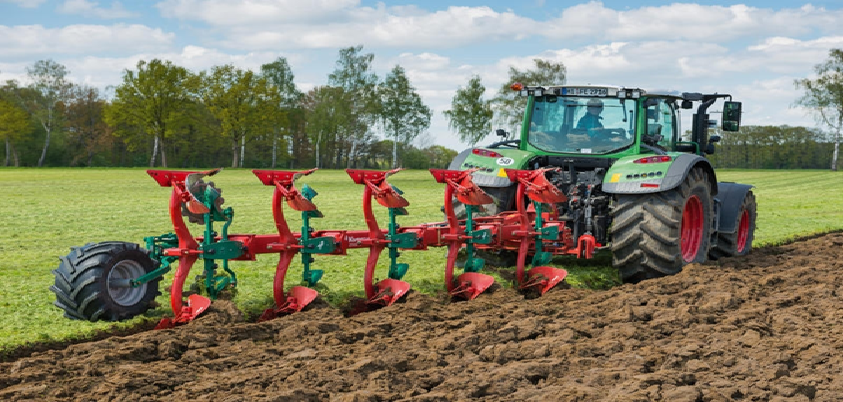
Why in News?
- While the overall budgetary allocation towards the agricultural sector has marginally increased by 4.4% in the Union Budget 2022-23, the rate of increase is lower than the current inflation rate of 5.5%-6%.
India’s low spending in Agriculture:
- The Food and Agriculture Organization (FAO) of the United Nations (UN) report for 2001 to 2019 shows that, globally, India is among the top 10 countries in terms of government spending in agriculture, constituting a share of around 7.3% of its total government expenditure.
- However, India lags behind several low-income countries such as Malawi (18%), Mali (12.4%), Bhutan (12%), Nepal (8%), as well as upper middle-income countries such as Guyana (10.3%) and China (9.6%).
- Low Budgetary Allocation:
- 1. Low allocation for important schemes
- A closer look at the budgetary allocation towards the agricultural sector shows that there has been a drastic slashing of funds toward important schemes such as crop insurance and minimum support price (MSP).
- Even with an overall increase in budgetary outlays, the allocation towards Market Intervention Scheme and Price Support Scheme (MIS-PSS) was only ₹1,500 crore.
- This is 62% less than the previous allocation of ₹3,959.61 crore in revised estimates (RE) of FY 2021-22.
- Similarly, the Pradhan Mantri Annadata Aay SanraksHan Abhiyan (PM-AASHA) was allocated just ₹1 crore for the year as against an expenditure of ₹400 crore in 2021-22.
- Both schemes are pertinent to ensure MSP-based procurement operations in the country, especially for pulses and oil seeds.
- 2. Low capital investment
- Capital investment in the agricultural sector is more crucial than price support programmes.
- However, there has not been any considerable and commensurate increase in the allocation towards capital investment, especially for promotion of rural infrastructure and marketing facilities.
- The allocation of funds towards schemes such as Pradhan Mantri Kisan Samman Nidhi (PM KISAN), Pradhan Mantri Kisan Maandhan Yojana, though desirable, will not result in long run asset generation.
Agriculture Orientation Index (AOI):
- It measures the ratio between government spending towards the agricultural sector and the sector’s contribution to GDP.
- AOI was developed as part of the Goal 2 (Zero Hunger) of the 2030 Agenda for Sustainable Development in 2015.
- What low AOI indicates: India’s index is one of the lowest, reflecting that the spending towards the agricultural sector is not commensurate with the sector’s contribution towards GDP.
- India holds only the 38th rank in the world.
- Although the AOI has shown an improvement since the mid-2000s, as part of the general revival that took place in several middle-income countries, India’s AOI is one of the lowest in Asia and among several other middle-income and upper-income countries.
- Low crop yield in India:
- The enormous spending on the agricultural sector by East Asian countries is also reflected in their higher crop yield.
- For example, the total cereal yield in India is only around 3,282 kilograms per hectare compared to 4,225 kg per hectare in Asia.
- In China, even with an average landholding size of 0.6 hectares, which is much lower than India’s average landholding size, the performance of the sector in terms of crop yield is much higher than India.
Way Forward:
- The focus on development of irrigation facilities, urban Infrastructure and development of national highways must be complemented with an emphasis on the Development of rural infrastructure and rural transportation facilities, along with an increase in the number of markets, as suggested by the National Commission on Farmers.
Green Bonds to have Long Tenure, says Centre
07, Feb 2022

Why in News?
- Asserting that the issuance of sovereign green bonds is part of the government’s overall borrowing programme, Economic Affairs Secretary Ajay Seth has said these rupee-denominated papers will have long tenure to suit the Requirement of Green Infrastructure Projects.
About the News:
- Finance Minister Nirmala Sitharaman in her Budget speech announced that the government proposes to issue sovereign green bonds to mobilise resources for green infrastructure.
- The proceeds will be deployed in public sector projects which help in reducing the carbon intensity of the economy which is a part of the overall borrowing for the Next Financial Year.
What is a Green Bond?
- A green bond is a type of fixed-income instrument that is specifically earmarked to raise money for climate and environmental projects.
- These bonds are typically asset-linked and backed by the issuing entity’s balance sheet, so they usually carry the same credit rating as their issuers’ other debt obligations.
- Green bonds may come with tax incentives to enhance their attractiveness to investors.
- The World Bank is a major issuer of green bonds. It has issued 164 such bonds since 2008, worth a combined $14.4 billion. In 2020, the total issuance of green bonds was worth almost $270 billion, according to the Climate Bond Initiative.
How Does a Green Bond Work?
- Green bonds work just like any other corporate or Government Bond.
- Borrowers issue these securities in order to secure financing for projects that will have a positive environmental impact, such as ecosystem restoration or reducing pollution.
- Investors who purchase these bonds can expect to make as the bond matures.
- In addition, there are often Tax Benefits for Investing in Green Bonds.
Green Bonds Vs Blue Bonds:
- Blue bonds are sustainability bonds to finance projects that protect the ocean and related ecosystems.
- This can include projects to support sustainable Fisheries, protection of coral reefs and other Fragile Ecosystems, or reducing Pollution and Acidification.
- All blue bonds are green bonds, but not all Green Bonds are blue bonds.
Green Bonds Vs Climate Bonds:
- “Green bonds” and “climate bonds” are sometimes used interchangeably, but some authorities use the latter term specifically for projects focusing on reducing carbon Emissions or Alleviating the effects of Climate Change.
Forex Reserves
03, Feb 2022

Why in News?
- According to recent data from Reserve bank of India (RBI), India’s Foreign Exchange (Forex) reserves posted a decline of USD 678 million during the week ended 21st January 2022 to reach USD 634.287 billion.
About the News:
- The slip in the reserves was on account of a drop in the Foreign Currency Assets (FCA), a vital component of the overall reserves. FCA declined by USD 1.155 billion to USD 569.582 billion in the reporting week.
- Gold reserves saw an increase of USD 567 million to USD 40.337 billion in the reported week.
- The Special Drawing Rights (SDRs) with the International Monetary Fund (IMF) fell USD 68 million to USD 19.152 billion.
About Foreign Exchange Reserves:
- Foreign exchange reserves are assets held on reserve by a central bank in foreign currencies, which can include bonds, treasury bills and other government securities.
- It needs to be noted that most foreign exchange reserves are held in US dollars.
- India’s Forex Reserve include:
- Foreign Currency Assets
- Gold reserves
- Special Drawing Rights
- Reserve position with the International Monetary Fund (IMF).
Objectives of Holding Forex Reserves:
- Supporting and maintaining confidence in the policies for monetary and exchange rate management.
- Provides the capacity to intervene in support of the national or Union Currency.
- Limits external vulnerability by maintaining foreign currency liquidity to absorb shocks during times of crisis or when access to borrowing is curtailed.
Significance of Rising Forex Reserves:
- Comfortable Position for the Government: The rising forex reserves give comfort to the government and the RBI in managing India’s external and internal financial issues.
- Managing Crisis: It serves as a cushion in the event of a Balance of Payment (BoP) crisis on the economic front.
- Rupee Appreciation: The rising reserves have also helped the rupee to strengthen against the dollar.
- Confidence in Market: Reserves will provide a level of confidence to markets and investors that a country can meet its external obligations.
Foreign Currency Assets:
- FCAs are assets that are valued based on a currency other than the country’s own currency.
- FCA is the largest component of the forex reserve. It is expressed in dollar terms.
- The FCAs include the effect of appreciation or depreciation of non-US units like the euro, pound and yen held in the foreign exchange reserves.
About Special Drawing Rights:
- The SDR is an international reserve asset, created by the IMF in 1969 to supplement its member countries’ official reserves.
- The SDR is neither a currency nor a claim on the IMF. Rather, it is a potential claim on the freely usable currencies of IMF members. SDRs can be exchanged for these currencies.
- The value of the SDR is calculated from a weighted basket of major currencies, including the US dollar, the euro, Japanese yen, Chinese yuan, and British pound.
- The interest rate on SDRs or (SDRi) is the interest paid to members on their SDR holdings.
- Recently, the IMF has made an allocation of SDR 12.57 billion (equivalent to around USD 17.86 billion) to India. Now, the total SDR holdings of India stand at SDR 13.66 billion.
Reserve Position in the International Monetary Fund:
- A reserve tranche position implies a portion of the required quota of currency each member country must provide to the IMF that can be utilized for its own purposes.
- The Reserve Tranche is basically an emergency account that IMF members can access at any time without Agreeing to conditions or paying a Service Fee.
Budget Session of Parliament
03, Feb 2022
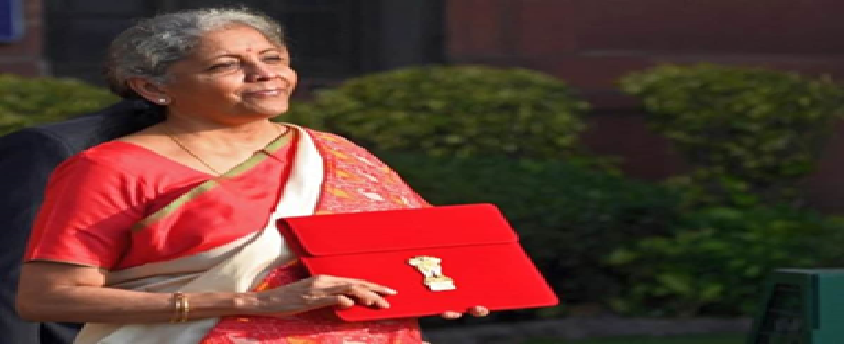
Why in News?
- The Budget Session of Parliament has begun and is scheduled to conclude on April 8.
What is Budget?
- Annual Financial Statement is a documents presented to the Parliament in every financial year as a part of the Budget Process under Article 112 of the constitution of India.
- This document comprises the receipts and expenditures of the government of current year, previous year and budget year in three separate parts viz. Consolidated Fund of India, Contingency Fund of India and Public Account of India. The government has to present a statement of receipts and expenditure for each of these funds.
- Capital receipt Comprises of loans raised by the Government, borrowing from the Reserve Bank of India and loans taken from foreign Governments/institutions.
- It also Embraces recoveries of loans advanced by the Government and sale proceeds of Government assets, including those realized from divestment of Government equity in PSUs.
Difference between Annual Financial Statement and Budget:
- The term budget is used for several documents together including the Annual Financial Statement. The other documents in budget include Demands for Grants (DG); Appropriation Bill; Finance Bill; Memorandum Explaining the Provisions in the Finance Bill; Macro-Economic Framework Statement; Fiscal Policy Strategy Statement; Medium Term Fiscal Policy Statement; Medium Term Expenditure Framework Statement etc.
- However, Annual Financial Statement distinguishes the expenditure on revenue account from the expenditure on other accounts, as is mandated in the Constitution of India.
- The Revenue and the Capital sections together, therefore make the Union Budget and that is why, Annual Financial Statements is essentially the Budget of the Government.
Budget Pre Independence:
- Budget was introduced on 7 April 1860 by the East India Company to the British Crown. It was presented by a Scottish Economist and politician James Wilson.
- For the first 30 years, the Budget didn’t have the word infrastructure. It was introduced in the Budget in the 1900s.
Budget Post Independence:
- First Union Budget of Independent India: It was introduced on 26 November 1947. It was present by the first Finance Minister R.K. Shanmukham Chetty. However, it was a review of the Indian economy and no new taxes were proposed. It is to be noted that almost 46% of the Budget or Rs. 92.74 crores were allocated for defence services department.
- Printing of Budget: The Budget was leaked in 1950, following which the government shifted the printing of budget from Rashtrapati Bhawan to a press at Minto Road. In 1980, it was shifted to a government press in North Block.
- Introduction of Hindi: Till 1955, the Budget was presented only in the English language. However, from 1955-56, the Budget documents are printed both in English and Hindi.
- First Prime Minister to present the Union Budget: Former Prime Minister Jawaharlal Nehru was the first PM to present the Union Budget for the FY 1958-1959. The Union Budget is usually presented by the Finance Minister. Other than Jawaharlal Nehru, Indira Gandhi and Rajiv Gandhi were the only Prime Ministers to have presented the Budget in their respective administration.
- First Woman to present the Union Budget: Former Prime Minister Indira Gandhi was the first woman to present the Union Budget for the FY 1970-71. On 5 July 2019, Finance Minister Nirmala Sitharaman became the first full-time woman Finance Minister on India.
- Maximum Union Budgets by a Minister: Former Finance Minister Moraji Desai presented the Union Budget a record 10 times, followed by former FM P. Chidambaram (9), former FM Pranab Mukherjee (8), former FM Yashwant Sinha (8), and former FM Manmohan Singh (6)
- Black Budget: For the FY 1973-74, the Budget was presented by the then Finance Minister Yashwantrao B. Chavan and is called as ‘Black Budget’ due to high budget deficit of Rs 550 crores– the maximum until that time. The Budget followed the Indo-Pak war of 1971 and failed the monsoon season.
- The Epochal Budget: The Budget presented by the then Finance Minister Manmohan Singh for the FY 1991-92 is known as ‘The Epochal Budget’– a budget that changed India forever as it marked the economic liberalisation of the nation.
- Dream Budget: The Budget presented by the then Finance Minister P. Chidambaram for the FY 1997-98 is known as ‘Dream Budget’ as it proposed to lower the tax slabs of personal and corporate taxes.
- The Millennium Budget: The Budget presented by the then Finance Minister Yashwant Sinha for the FY 2000-01 is known as ‘The Millennium Budget’– revolutionised India’s IT sector.
- Change in time: In the year 2001, Finance Minister Yashwant Sinha changed the time for the presentation of Union Budget from 5 p.m. to 11 a.m. on the last working day of February.
- Merging of Budgets and Change in date: In the year 2017, the Rail Budget was merged with the Union Budget. Also, since the said year, the Budget has been presented on 1 February following the changes introduced by the then Finance Minister Arun Jaitley.
- Gift Tax: Former Prime Minister Jawaharlal Nehru introduced the Gift Tax in the FY 1958-1959 Budget to make tax evasion more difficult.
- Goods and Services Tax: On 28 February 2006, Goods and Services Tax was introduced by the then Finance Minister P. Chidambaram in the Budget.
- Longest Budget speech: Former Finance Minister Arun Jaitley holds the record for delivering the longest Budget speech in 2014– 2.5 hours.
- Bahi Khata instead of a briefcase: In the year 2019, Finance Minister Nirmala Sitharaman replaced the standard Budget briefcase with the traditional ‘Bahi Khata’ with the National Emblem.
- Paperless Budget: For the first time in Independent India’s history, the Budget for the FY 2021-22 wass paperless.
Budgeting Process in India:
- The procedure for presentation of the Budget in and its passing by Lok Sabha is as laid down in articles 112—117 of the Constitution of India, Rules 204—221 and 331-E of the Rules of Procedure and Conduct of Business in Lok Sabha and Direction 19-B of Directions by the Speaker.
- The Budget goes through six stages:
- Presentation of Budget.
- General discussion.
- Scrutiny by Departmental Committees.
- Voting on Demands for Grants.
- Passing of Appropriation Bill.
- Passing of Finance Bill.
Presentation:
- The Budget is presented to Lok Sabha on such day as the President may direct.
- Immediately after the presentation of the Budget, the following three statements under the Fiscal Responsibility and Budget Management Act, 2003 are also laid on the Table of Lok Sabha:
- The Medium-Term Fiscal Policy Statement;
- The Fiscal Policy Strategy Statement; and
- The Macro Economic Framework Statement.
Demand for MGNREGA work softens
01, Feb 2022
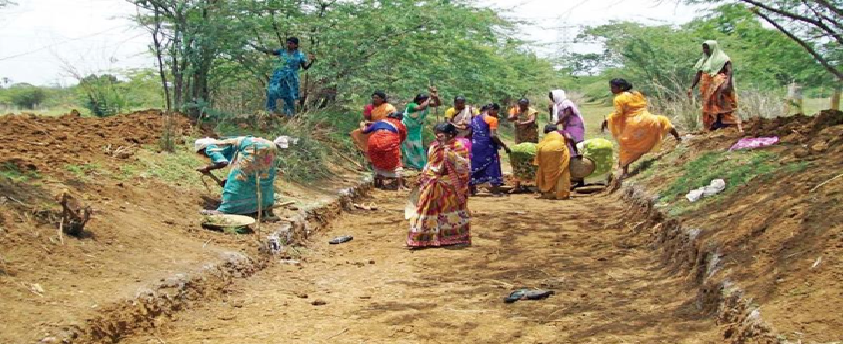
Why in News?
- The Department of Economic Affairs recently said in its annual Economic Survey, that the demand for work under the Mahatma Gandhi National Rural Employment Guarantee Act (MGNREGA) scheme has dropped from the peak of the first lockdown, but is still higher than pre-COVID levels.
About the News:
- However, it cautioned against drawing conclusions about the movement of migrant labour on the basis of MGNREGA employment, noting that the highest demand for work under the scheme was seen in States which are usually the destination of migrant workers, rather than source States.
- Advocates for rural workers argued that the drop in demand is also due to funding constraints, and urged a significant increase in allocations for the scheme in Union budget.
- According to the Survey’s analysis, though demand for work stabilised after the second COVID wave with a maximum of 4.59 crore persons in June 2021, aggregate MGNREGA employment is still higher than pre-pandemic levels of 2019, after accounting for the Seasonality of demand.
What is the Issue Now?
- In 2021-22, additional funding was not available until late in the year when many States had already run out of money, forcing an artificial suppression in demand on the ground.
- For the upcoming 2022-23 financial year, activists have asked for a budget allocation of Rs. 2.6 lakh crore, which would cover the guaranteed 100 days of work for all active job card holders.
- But anything less than Rs. 1.4 lakh crore, which is the amount spent in 2020-21 plus inflation, will be a clear Suppression of Demand by the Government.
Why this Imbalance?
- Intuitively, one may expect that higher MGNREGS demand may be directly related to the movement of migrant labour i.e. source States would be more impacted.
- Nevertheless, State-level analysis shows that for many migrant source States like West Bengal, Madhya Pradesh, Odisha, Bihar, the MGNREGS employment in most months of 2021 has been lower than the corresponding levels in 2020.
- According to the Survey, demand has been higher for migrant recipient States like Punjab, Maharashtra, Karnataka and Tamil Nadu.
- Karnataka, Tamil Nadu and Rajasthan have a record of administrative sensitivity and efficiency with regard to MGNREGA implementation even pre-COVID.
- These States also see high levels of short–term migration within their own borders.
About MGNREGA:
- The scheme was introduced in 2005 as a social measure that guarantees “the right to work”.
- The key tenet of this social measure and labour law is that the local government will have to legally provide at least 100 days of wage employment in rural India to enhance their quality of life.
Key Objectives:
- Generation of paid rural employment of not less than 100 days for each worker who volunteers for unskilled labour.
- Proactively ensuring social inclusion by strengthening the livelihood base of rural poor.
- Creation of durable assets in rural areas such as wells, ponds, roads and canals.
- Reduce urban migration from rural areas.
- Create rural infrastructure by using untapped rural labour.
What are the Eligibility Criteria for receiving the benefits under MGNREGA scheme?
- Must be Citizen of India to seek MGNREGA benefits.
- Job seeker has completed 18 years of age at the time of application.
- The applicant must be part of a local household (i.e. application must be made with local Gram Panchayat).
- Applicants must volunteer for Unskilled Labour.
Implementation of the scheme:
- Within 15 days of submitting the application or from the day work is demanded, wage employment will be provided to the applicant.
- Right to get unemployment allowance in case employment is not provided within fifteen days of submitting the application or from the date when work is sought.
- Social Audit of MGNREGA works is mandatory, which lends to accountability and transparency.
- The Gram Sabha is the principal forum for wage seekers to raise their voices and make demands.
- It is the Gram Sabha and the Gram Panchayat which approves the shelf of works under MGNREGA and fix their priority.
GI Tag Sought for Kumbakonam Vetrilai, Thovalai Manikka Malai
17, Jan 2022
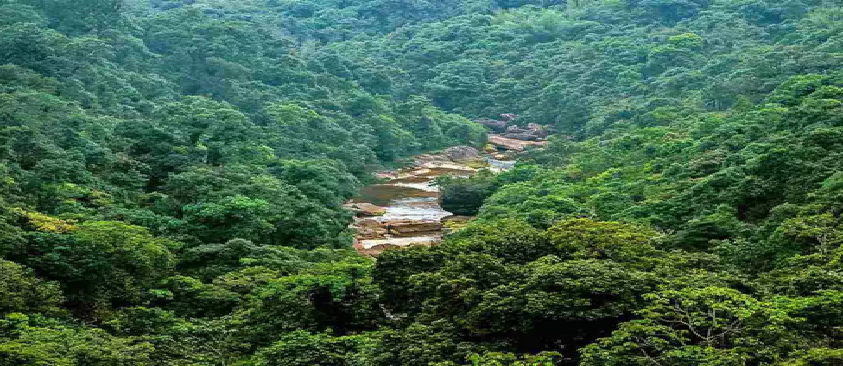
Why in News?
- Geographical Indications Registry in Chennai has received applications seeking GI tag for Two Famous products from Tamil Nadu — Kumbakonam Vetrilai and Thovalai Manikka Malai.
About the News:
- The application for Kumbakonam Vetrilai was filed by the Tamil Nadu Agricultural University, Coimbatore while the application for Thovalai Manikka Malai was given by the Thovalai Manikkamaalai Kaivinai Kalaingargal Nalasangam, Kanniyakumari.
About the Kumbakonam Betel Leaves:
- The Kumbakonam betel leaves were heart shaped and grown in the Cauvery delta region by small and marginal farmers. It is particularly grown in Ayyampettai, Rajagiri, Pandaravadai and Swamimalai in Thanjavur district.

- On an average, about 60-80 lakh betel leaves were harvested annually from a one-hectare plot. A betel leaf cultivator spends ₹10,000 to ₹50,000 to grow these leaves on a one-acre land.
- Harvested leaves are washed, cleaned, and graded according to their size and quality. They were traditionally packed in bamboo baskets but now there are several options such as Plantain Leaves and Cloth Bags.
About the Thovalai Manikka Malai:
- Thovalai Manikka Malai is a special type of garland that is made only in Thovalai, a small village in Kanniyakumari. The flowers used in this particular garland are positioned in a way that when folded they look like a gem.

- The flowers are generally arranged in five rows, but at times for other decorations, 20 rows are used. The height ranges from one foot to 24 feet and above.
- Chamba fibre, nochi leaves, oleander and rose flowers are the key materials used for making this garland. Thovalai is famous for its abundance of flowers and most of flowers are procured locally.
What is GI Tag?
- A GI or Geographical Indication is a name or a sign given to certain products that relate to a specific geographical location or origins like a region, town or country.
- Using Geographical Indications may be regarded as a certification that the particular product is produced as per Traditional Methods, has certain specific qualities, or has a particular reputation because of its geographical origin.
- Geographical indications are typically used for wine and spirit drinks, foodstuffs, agricultural products, handicrafts, and industrial products.
- GI Tag ensures that none other than those registered as authorized users are allowed to use the popular product name. In order to function as a GI, a sign must identify a product as originating in a given place.
Who Accords and Regulates Geographical Indications?
- Geographical Indications are covered as a component of intellectual property rights (IPRs) under the Paris Convention for the Protection of Industrial Property.
- At the International level, GI is governed by the World Trade Organisation’s (WTO’s) Agreement on Trade-Related Aspects of Intellectual Property Rights (TRIPS).
- In India, Geographical Indications registration is administered by the Geographical Indications of Goods (Registration and Protection) Act, 1999 which came into force with effect from September 2003.
- The first product in India to be accorded with GI tag was Darjeeling tea in the year 2004-05.
What are the Benefits of GI Tags?
- The Geographical Indication registration confers the following benefits:
- Legal protection to the products
- Prevents unauthorised use of GI tag products by others
- It helps consumers to get quality products of desired traits and is assured of Authenticity.
- Promotes the economic prosperity of producers of GI tag goods by enhancing their demand in national and International Markets.
What are the Significances of GI Tags?
- A geographical indication right facilitates those who have the right to use the indication to prohibit its usage by a third party whose product does not conform to the applicable standards.
- For example, in the purview in which the Darjeeling geographical indication is protected, Producers of Darjeeling tea can omit the term “Darjeeling” for tea not grown in their tea Gardens or not produced according to the norms set out in the code of practice for the Geographical Indication.
- However, a protected GI does not permit the holder to forbid someone from making a product using the same approaches as those set out in the standards for that indication. Protection for a GI tag is usually procured by acquiring a right over the sign that constitutes the Indication.
Challenges in GI Tags:
- The special treatment to wines and spirits in TRIPS Agreement appears to be developed Country Centric.
- Developing countries, including India, seek the same higher level of protection for all GIs as was given under TRIPS for wines and spirits.
- The battle for GI tag between states.
- False use of geographical indications by unauthorized parties is detrimental to consumers and Legitimate Producers.
- Cheap Power loom saris are sold as reputed Banarsi handloom saris, harming both the producers and consumers.
- Such unfair business practices result in loss of revenue for the genuine right-holders of the GI and also misleads consumers.
- Protection of GI has, over the years, emerged as one of the most contentious IPR issues.
Way Forward:
- The benefits of GI tag are realised only when these products are effectively marketed and protected against illegal copying.
- Effective marketing and protection require quality assurance, brand creation, post-sale consumer feedback and support, prosecuting Unauthorised Copiers, etc.
- For internationally recognised products like Darjeeling tea, international protection is of Crucial Importance.
- Legal protection to GIs also extends to protection of traditional knowledge and traditional Cultural Expression contained in the products.
- Hence Intellectual Property is a power tool for economic development and wealth creation particularly in the Developing World.
- GIs have the potential to be our growth engine. Policy-makers must pay a heed to this and give Indian GI products their true Reward.
Airtel Payments Bank is now a Scheduled Bank
08, Jan 2022
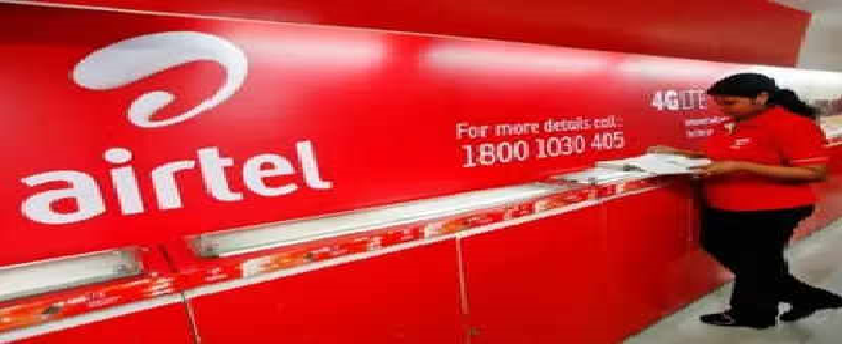
Why in News?
- The Reserve Bank of India (RBI) has announced the inclusion of Airtel Payments Bank Ltd. in the Second Schedule to the Reserve Bank of India Act, 1934.
Implications:
- With this, the bank can now pitch for Government-issued Requests for Proposals (RFP) and Primary Auctions and undertake both Central and State Government business.
What is a Schedule Bank?
- Scheduled Banks in India refer to those banks which have been included in the Second Schedule of Reserve Bank of India Act, 1934.
- Every Scheduled bank enjoys two types of principal facilities: It becomes eligible for debts/loans at the bank rate from the RBI; and, it automatically acquires the membership of Clearing House.
About Airtel Payments Bank:
- It is among the fastest-growing digital banks in the country, with a base of 115 million users.
- It offers a suite of digital solutions through the Airtel Thanks app and a retail network of over 500,000 Neighbourhood Banking Points.
- The bank Turned Profitable in the Quarter ended September 2021.
What is Payment’s bank?
- Payment banks were established to promote financial inclusion by offering; ‘modest savings accounts and payments/remittance services to migratory labour workforce, low-income households, small enterprises, other unorganised sector entities, and other users.’
- These banks can accept a restricted deposit, which is now capped at Rs 200,000 per person but could be raised in the future.
- These banks are unable to provide loans or credit cards. Banks of this type can handle both current and savings accounts.
- Payments banks can provide ATM and debit cards, as well as online and mobile banking.
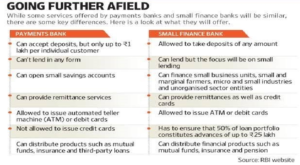
Extending the GST Compensation
07, Jan 2022
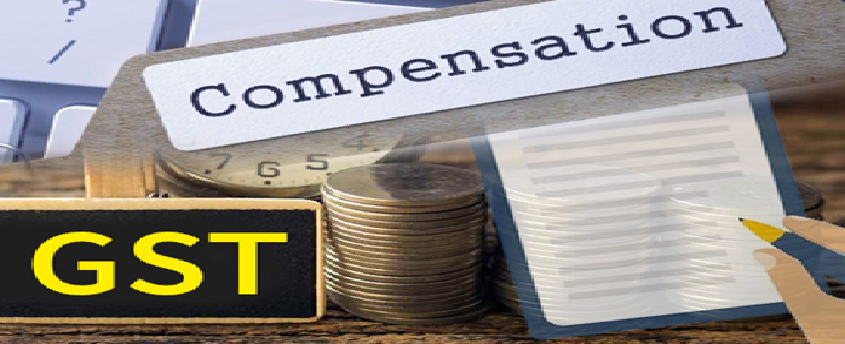
Why in News?
- Finance Ministers of several States have demanded that the GST compensation scheme be Extended beyond June 2022.
What’s the Issue?
- The adoption of GST was made possible by States ceding almost all their powers to impose local-level indirect taxes and Agreeing to let the prevailing multiplicity of imposts be Subsumed into the GST.
- This was agreed on the condition that revenue shortfalls arising from the transition to the new indirect taxes regime would be made good from a pooled GST Compensation Fund for a period of five Years that is set to end in June 2022.
Need for Extension:
- Citing the impact of the COVID-19 pandemic on the overall economy and more specifically States’ revenues, the States including Tamil Nadu, Kerala, West Bengal, Rajasthan and Chhattisgarh stressed that while their revenues had been adversely impacted by the introduction of GST, the hit from the pandemic had pushed back any possible rebound in revenue especially at a time when they had been forced to spend substantially more to address the public health emergency and its socio-economic fallout on their residents.
What is the GST Compensation?
- The Constitution (One Hundred and First Amendment) Act, 2016, was the law which created the mechanism for levying a common nationwide Goods and Services Tax (GST).
- While States would receive the SGST (State GST) component of the GST, and a share of the IGST (integrated GST), it was agreed that revenue shortfalls arising from the transition to the new indirect taxes regime would be made good from a pooled GST Compensation Fund for a period of five years that is currently set to end in June 2022.
How is the GST Compensation Fund funded?
- This corpus is funded through a Compensation cess that is levied on so-called ‘demerit’ Goods.
- The items are pan masala, Cigarettes and tobacco products, aerated water, caffeinated Beverages, Coal and certain Passenger motor vehicles.
Computation of the Shortfall:
- The computation of the shortfall is done annually by projecting a revenue assumption based on 14% compounded growth from the base year’s (2015-2016) revenue and calculating the difference between that figure and the actual GST collections in that year.
Can the deadline be Extended? If so, how?
- The deadline for GST compensation was set in the original legislation and so in order to extend it, the GST Council must first recommend it and the Union government must then move an amendment to the GST law allowing for a new date beyond the June 2022 deadline at which the GST compensation scheme will come to a close.
GI tag sought for Arunachal Pradesh Apatani textile product
31, Dec 2021

Why in News?
- An application seeking Geographical Indication (GI) tag for the Arunachal Pradesh Apatani textile product has been filed by a firm, Zeet Zeero Producer Company Ltd.
About the Apatani Weave:
- The Apatani weave comes from the Apatani tribe living at Ziro, the headquarters of Lower Subansiri district.
- The woven fabric of this tribe is known for its geometric and zigzag patterns and for its Angular Designs.
- The tribe predominantly weaves shawls known as jig-jiro, and jilan or jackets called supuntarii.
- The people use leaves and plant resources for organic dyeing of the cotton yarns in their traditional ways. And only women folk are engaged in weaving.
What is GI Tag?
- A GI or Geographical Indication is a name or a sign given to certain products that relate to a specific geographical location or origins like a region, town or country.
- Using Geographical Indications may be regarded as a certification that the particular product is produced as per traditional methods, has certain specific qualities, or has a particular reputation because of its Geographical Origin.
- Geographical indications are typically used for wine and spirit drinks, foodstuffs, agricultural Products, Handicrafts, and Industrial Products.
- GI Tag ensures that none other than those registered as authorized users are allowed to use the popular product name. In order to function as a GI, a sign must identify a product as originating in a given Place.
Who Accords and regulates Geographical Indications?
- Geographical Indications are covered as a component of intellectual property rights (IPRs) under the Paris Convention for the Protection of Industrial Property.
- At the International level, GI is governed by the World Trade Organisation’s (WTO’s) Agreement on Trade-Related Aspects of Intellectual Property Rights (TRIPS).
- In India, Geographical Indications registration is administered by the Geographical Indications of Goods (Registration and Protection) Act, 1999 which came into force with effect from September 2003.
- The first product in India to be accorded with GI tag was Darjeeling tea in the year 2004-05.
What are the Benefits of GI Tags?
- The Geographical Indication registration confers the following benefits:
- Legal protection to the products
- Prevents unauthorised use of GI tag products by others
- It helps consumers to get quality products of desired traits and is assured of authenticity.
- Promotes the economic prosperity of producers of GI tag goods by enhancing their demand in national and international markets.
What are the Significances of GI Tags?
- A geographical indication right facilitates those who have the right to use the indication to prohibit its usage by a third party whose product does not conform to the applicable standards.
- For example, in the purview in which the Darjeeling geographical indication is protected, producers of Darjeeling tea can omit the term “Darjeeling” for tea not grown in their tea Gardens or not produced according to the norms set out in the code of practice for the Geographical Indication.
- However, a protected GI does not permit the holder to forbid someone from making a product using the same approaches as those set out in the standards for that indication. Protection for a GI tag is usually procured by acquiring a right over the sign that Constitutes the indication.
Challenges in GI Tags:
- The special treatment to wines and spirits in TRIPS Agreement appears to be developed country centric.
- Developing countries, including India, seek the same higher level of protection for all GIs as was given under TRIPS for wines and spirits.
- The battle for GI tag between states.
- False use of geographical indications by unauthorized parties is detrimental to consumers and legitimate producers.
- Cheap Power loom saris are sold as reputed Banarsi handloom saris, harming both the producers and consumers.
- Such unfair business practices result in loss of revenue for the genuine right-holders of the GI and also misleads consumers.
- Protection of GI has, over the years, emerged as one of the most contentious IPR issues.
Way Forward:
- The benefits of GI tag are realised only when these products are effectively marketed and protected against illegal copying.
- Effective marketing and protection require quality assurance, brand creation, post-sale consumer feedback and support, prosecuting unauthorised copiers, etc.
- For internationally recognised products like Darjeeling tea, international protection is of crucial importance.
- Legal protection to GIs also extends to protection of traditional knowledge and traditional cultural expression contained in the products.
- Hence Intellectual Property is a power tool for economic development and wealth creation particularly in the developing world.
- GIs have the potential to be our growth engine. Policy-makers must pay a heed to this and give Indian GI products their true reward.
PLI scheme for Textile Sector
31, Dec 2021
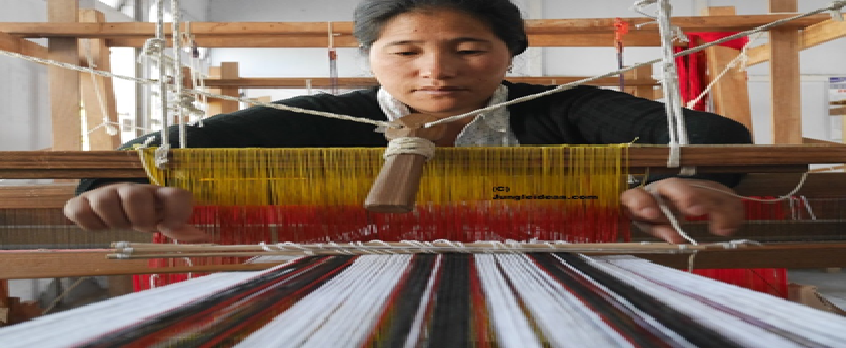
Why in News?
- The Ministry of Textiles has recently said that it will accept applications from January 1 for the Production Linked Scheme for Textiles announced in September this year.
About the News:
- The Union government in September approved production-linked incentive (PLI) for the textile sector with a budgetary outlay of ₹10,683 crore.
- The scheme is for man-made fibre (MMF) apparel, MMF fabrics and 10 segments/products of technical textiles.
- According to an official statement, the incentive structure for the textile sector is designed to Encourage investment in fresh capacities in MMF apparel, MMF fabrics, and 10 segments or products of technical textiles.
- The Scheme Envisages two types of investment with different set of incentive structure. In type one, any person, (which includes firm/company) willing to invest minimum ₹300 crore in Plant, Machinery, and civil works (excluding land and administrative building cost) to produce the notified products will be able to participate in the scheme. In the second type, anyone willing to invest minimum ₹100 crore will be eligible to participate.
- The government has already launched a National Technical Textiles Mission to promote research and development in that sector.
What is its Significance?
- The scheme is expected to attract fresh investment of more than ₹19,000 crore and cumulative turnover of over ₹3 lakh crore will be achieved under this scheme. It will create additional 7.5 lakh jobs in the sector.
- Further, priority will be given for investment in aspirational districts, tier-three, tier-four towns and Rural Areas.
- The scheme will benefit States such as Gujarat, U.P., Maharashtra, Tamil Nadu, Punjab, Andhra Pradesh, Telangana, and Odisha.
About the Textile Sector in India:
- Textiles & Garments industry is labour intensive sector that employs 45 mn people in India and is Second only to the agriculture sector in terms of employment.
- India’s textiles sector is one of the oldest industries in the Indian economy, and is a storehouse and carrier of traditional skills, heritage and culture.
- It can be divided into two segments-
- The unorganised sector is small scale and uses traditional tools and methods. It consists of handloom, handicrafts and sericulture (production of silk).
- The Organised sector uses modern machinery and techniques and consists of the spinning, apparel and Garments Segment.
Significance of the Textiles Sector:
- It contributes 2.3% to Indian Gross Domestic Product, 7% of Industrial Output, 12% to the export earnings of India and employs more than 21% of total employment.
- India is the 6th largest producer of Technical Textiles with 6% Global Share, largest producer of cotton & jute in the world.
- Technical textiles are functional fabrics that have applications across various industries including automobiles, civil engineering and construction, agriculture, healthcare, industrial safety, personal protection etc.
- India is also the second largest producer of silk in the world and 95% of the world’s hand woven fabric comes from India.
About the PLI Scheme:
- The scheme aims to make India a global hub for manufacturing telecom equipment.
- Its eligibility criteria include achievement of a minimum threshold of cumulative incremental investment and incremental sales of manufactured goods.
- The incentive structure ranges between 4% and 7% for different categories and years. Financial year 2019-20 will be treated as the base year for computation of cumulative incremental sales of manufactured goods net of taxes.
- Minimum investment threshold for MSMEs has been kept at Rs 10 crore and for others at Rs 100 Crore.
- Once qualified, the investor will be Incentivised up to 20 times of minimum investment threshold enabling them to utilise their Unused Capacity.
Why is the Production Linked Scheme Needed?
- According to experts, the idea of PLI is important as the government cannot continue making investments in these capital intensive sectors as they need longer times for start giving the Returns.
- Instead, what it can do is to invite global companies with adequate capital to set up capacities in India.
- The kind of ramping up of manufacturing that we need requires across the board Initiatives, but the government can’t spread itself too thin.
- Electronics and pharmaceuticals themselves are large sectors, so, at this point, if the Government can focus on labour intensive sectors like garments and leather, it would be Really helpful.
Anti-Dumping Duty on Five Chinese Goods
29, Dec 2021
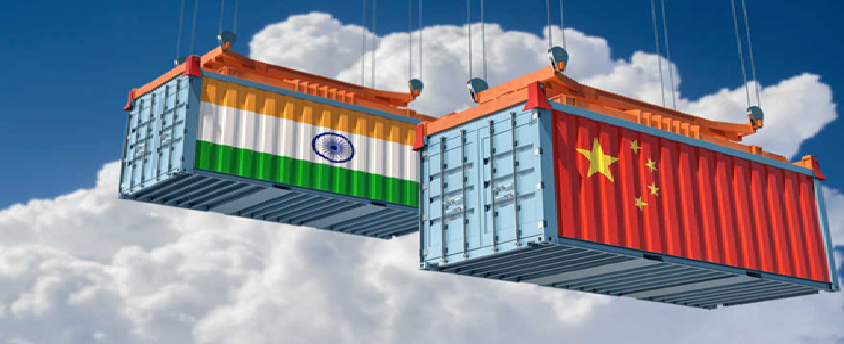
Why in News?
- India has imposed anti-dumping duty on five Chinese products, including certain Aluminium Goods and some Chemicals, for Five Years to guard local manufacturers from cheap imports from the Neighbouring Country.
About the News:
- According to Separate Notifications of the Central Board of Indirect Taxes and Customs (CBIC), the duties have been imposed on certain flat rolled products of aluminium; sodium hydrosulphite (used in dye industry); silicone sealant (used in manufacturing of solar photovoltaic modules, and thermal power applications); hydrofluorocarbon (HFC) component R-32; and Hydrofluorocarbon blends (both have uses in refrigeration industry).
- These duties were imposed following recommendations of the Commerce Ministry’s investigation arm, the Directorate General of Trade Remedies (DGTR).
- The DGTR, in separate probes, has concluded that these products have been exported at a price below normal value in Indian markets, which has resulted in Dumping and has suffered material injury due to the dumping.
- India’s exports to China during the April-September 2021 period were worth $12.26 billion while imports aggregated at $42.33 billion, leaving a trade deficit of $30.07 billion.
What is Dumping?
- In international trade practise, dumping happens when a country or a firm exports an item at a price lower than the price of that product in its domestic market.
- Dumping impacts the price of that product in the importing country, hitting margins and profits of local Manufacturing Firms.
What is Anti-Dumping Duty?
- Anti-dumping duty is imposed to rectify the situation arising out of the dumping of goods and its Trade Distortive Effect.
- According to Global Trade norms, including the World Trade Organization (WTO) regime, a country is allowed to impose tariffs on such dumped products to provide a level-playing field to Domestic Manufacturers.
- The duty is aimed at ensuring fair trading practices and creating a level-playing field for domestic producers vis-a-vis foreign producers and exporters.
- While the DGTR recommends the duty to be levied, the Finance Ministry imposes it.
How is it Different from CVD?
- Anti-dumping duty is different from countervailing duty. The latter is imposed in order to counter the negative impact of import subsidies to protect domestic producers.
- Countervailing Duties (CVDs) are tariffs levied on imported goods to offset subsidies made to producers of these goods in the exporting country.
- CVDs are meant to level the playing field between domestic producers of a product and foreign producers of the same product who can afford to sell it at a lower price because of the subsidy they receive from their Government.
Amazon- Future deal
28, Dec 2021

Why in News?
- The Competition Commission of India (CCI) has frozen its approval given in November 2019 to Amazon’s investment in a Future Group unit on the grounds that the U.S. e-commerce company had suppressed the scope and full details of its investment while seeking Regulatory Approval.
What are its Implications?
- The CCI decision further roils the legal landscape as Amazon seeks to block the Future Group’s 2020 decision to sell its retail assets to Reliance Industries.
What’s the Issue?
- Future Group and Reliance Industries Limited had signed a Rs 24,713-crore deal in August 2020 for Future Retail to sell its retail, wholesale, logistics and warehousing units to Reliance Retail and Fashionstyle.
- Amazon is Future Group’s Indian partner.
- Amazon says Future violated a partnership contract with the asset sale to its rival and wants to scuttle it, while the indebted Indian group says it would collapse if the Transaction Fails.
Why did Amazon Approach SIAC?
- The parties in a deal usually sign a contractual agreement which specifies about:
- The arbitral institution administering the arbitration.
- The applicable rules.
- The seat of arbitration.
- In this case Amazon and Future Group have under their agreement agreed to refer their disputes to SIAC, with Singapore presumably being the contractual choice for the seat/place of arbitration.
How is the dispute taken up at the SIAC? What is the procedure to be followed?
- Once a dispute is referred to arbitration, the process of Appointment of the arbitral tribunal takes place.
- Composition: Typically, in case of a three member Tribunal, both the parties appoint one member each to the tribunal, while the third member is jointly appointed by the two nominees or, if they fail to agree, by SIAC.
Appointment of an Emergency Arbitrator:
- Appointment of the arbitral tribunal Usually takes time.
- Therefore, under the rules of SIAC, parties can move SIAC to appoint an emergency arbitrator to get urgent Interim relief, even as the process of appointment of the main Arbitral Tribunal is Underway.
What happens when the Parties don’t comply with the Order Voluntarily?
- Currently under Indian law, there is no express mechanism for enforcement of the orders of the Emergency Arbitrator.
- But, the Parties Voluntarily comply with the Emergency Award.
- However, if the parties don’t comply with the order voluntarily, then the party which has won the emergency award, in this case Amazon, can move the High Court in India under Section 9 of the Arbitration & Conciliation Act, 1996, to get similar reliefs as granted by the Emergency Arbitrator.
Why has Singapore become the hub of International Arbitration?
- Foreign investors investing in India typically want to avoid the rigmarole of the Indian courts.
- Foreign investors feel that Singapore is neutral ground for dispute resolution.
- Singapore itself over time has built a stellar reputation as jurisdiction driven by rule of law with international standards and high integrity. This gives comfort to investors that the arbitration process will be quick, fair and just”.
- According to the 2019 annual report of SIAC, India was the top user of its arbitration seat with 485 cases being referred to SIAC, followed by Philippines at 122, China at 76 and the United States at 65.
Does India have any International Arbitration Centre?
- India now has its own international arbitration centre in Mumbai.
About Singapore International Arbitration Centre (SIAC):
- It is a not-for-profit international arbitration organisation based in Singapore, which administers arbitrations under its own rules of arbitration and the United Nations Commission on International Trade Law (UNCITRAL) Arbitration Rules.
RBI introduces Prompt Corrective Action Framework for NBFCs
28, Dec 2021
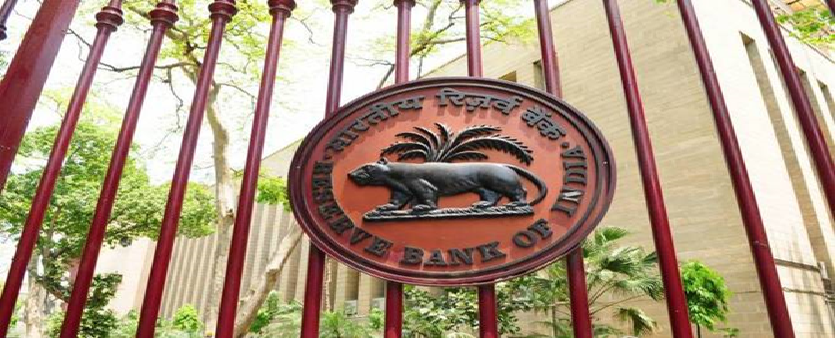
Why in News?
- The Reserve Bank of India (RBI) has introduced the prompt corrective action (PCA) Framework for non-banking Financial Companies (NBFCs).
About the News:
- The PCA framework for NBFCs will come into effect on October 1,2022 on the basis of their Financial Position on or after March 31.
What is PCA Framework?
- The objective of the framework is to enable supervisory intervention at the appropriate time and require the supervised entity to initiate and implement remedial measures in a timely manner, to restore its Financial Health.
Applicability:
- The framework will be applicable to all deposit-taking non-banking financial companies (NBFCs), all non-deposit taking NBFCs in the middle, upper and top layers including investment and credit companies, core investment companies, infrastructure debt funds, infrastructure finance companies and microfinance institutions.
- However, it has excluded NBFCs not accepting/not intending to accept public funds, primary dealers and Housing Finance companies along with government-owned ones.
Indicators based on which PCA will be Invoked for NBFC:
- The central bank will track three indicators — capital to risk-weighted assets ratio (CRAR), Tier I ratio and net non-performing assets (NNPAs) including non-performing investments (NPIs).
- In the case of core investment companies (CICs), the RBI will track adjusted net worth/aggregate risk-weighted assets, leverage ratio and NNPAs, including NPIs.
- A breach in any of the three risk thresholds under the above-mentioned indicators could result in invocation of PCA.
Need for:
- The PCA Framework for NBFCs has been brought after four big finance firms — IL&FS, DHFL, SREI and Reliance Capital — which collected public funds through fixed deposits and non-convertible debentures collapsed in the last three years despite the tight monitoring in the financial sector. They collectively owe over Rs 1 lakh crore to investors.
What will happen once the PCA is invoked for an NBFC?
- Based on the risk threshold, the RBI may prescribe mandatory corrective actions such as restriction on dividend distribution/remittance of profits, requiring promoters /shareholders to infuse equity and reducing leverage.
- The RBI can also restrict the issuance of guarantees or take other contingent liabilities on behalf of group companies (only for CICs).
- Further, the central bank may also restrict branch expansion, impose curbs on capital expenditure other than for technological up-gradation within board-approved limits and restrict/ directly reduce variable operating costs.
Cabinet Nod to Extend Irrigation Scheme for Another Five Years
28, Dec 2021
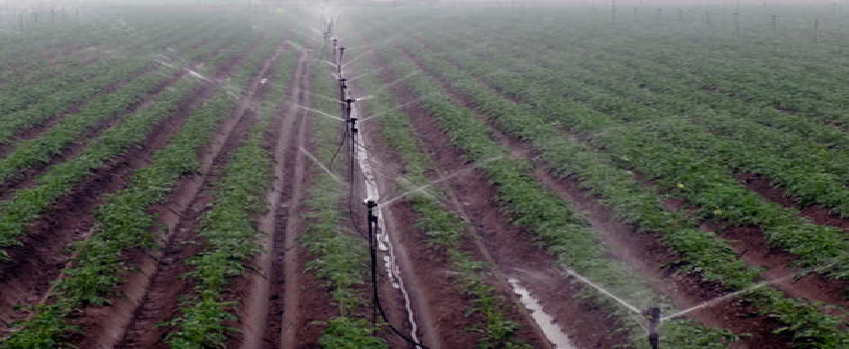
Why in News?
The Cabinet has recently given its approval to extend its umbrella scheme for irrigation, water supply, ground water and watershed development projects for another five years.
About the News:
- According to Jal Shakti Ministry, less than half of identified irrigation projects have been completed since the scheme began in 2015.
- The extension of the Pradhan Mantri Krishi Sinchayee Yojana till 2026 will cost ₹93,068 crore, benefit 22 lakh farmers and fund dams critical for water supply to Delhi and five other States in the upper Yamuna basin.
- In 2015-16, 99 projects were identified which were completed more than 50% but had been pending for years. Of the 99 projects, 46 have been completed. The rest of the projects will be completed by 2024-25.
- Har Khet Ko Pani, another component of the PMKSY, focuses on expanding physical access on farms and increasing the cultivable area under assured irrigation through surface water projects and by restoring water bodies. This is targeted to bring another 4.5 lakh hectares under irrigation by 2026.
- The Cabinet has now expanded inclusion criteria for water body rejuvenation projects, including both urban and rural water bodies, and enhancing Central assistance from 25% to 60%.
About Pradhan Mantri Krishi Sinchayee Yojana (PMKSY):
- Launched in 2015, PMKSY is a centrally sponsored scheme to provide assured irrigation to cultivated areas, reduce wastage of water and improve water-use efficiency.
- It not only focuses on creating sources for assured irrigation but also aims to create protective irrigation by harnessing rainwater at the micro-level through “Jal Sanchay’’ and “Jal Sinchan”.
- The scheme has been formulated by amalgamating other existing schemes like Accelerated Irrigation Benefit Programme (AIBP), Integrated Watershed Management Programme (IWMP), and On Farm Water Management (OFWM).
- Ministries of Agriculture, Water Resources, and Rural Development are the implementing agencies of the scheme.
- PMKSY is being implemented in an area development approach, adopting decentralized state-level planning and projectized execution, allowing the states to draw their irrigation development plans based on district/block plans with a horizon of 5 to 7 years. States can take up projects based on the District/State Irrigation Plan.
- All the States and Union Territories including the North-Eastern States are covered under the program
- The motto of the Scheme is ‘Har Khet Ko Pani’.
- The funding pattern of the Scheme is 60:40 center-state share in the case of States, for the Himalayan and North-Eastern states, the center-state cost-share is 90:10, and for the Union Territories, 100% of the cost is borne by the Central Government.
Focus areas of the Scheme:
- PMKSY will strategize by focussing on end-to-end solutions in the irrigation supply chain, viz. water sources, distribution network, efficient farm level applications, extension services on new technologies & information, etc. The major focus areas include,
- Creation of new water sources; repair, restoration, and renovation of defunct water sources; construction of water harvesting structures, secondary & micro storage, groundwater development, enhancing potentials of traditional water bodies at the village level.Developing/augmenting distribution network where irrigation sources (both assured and protective) are available or Created.
- Promotion of scientific moisture conservation and runoff control measures to improve Groundwater Recharge.
- Promoting efficient water conveyance and field application devices within the farm viz, underground piping system, drip & sprinklers, pivots, rain-guns, and other application devices, etc.
- Encouraging community irrigation through registered user groups/farmer producers’ organizations/NGOs.
- Farmer-oriented activities like capacity building, training and exposure visits, demonstrations, farm schools, skill development in efficient water and crop management practices (crop alignment) including large scale awareness through mass media campaigns, exhibitions, field days, and extension activities through short animation films, etc.
- More focus on irrigation development will be given to deficient states in terms of irrigation coverage.
Components of the Scheme:
- Accelerated Irrigation Benefit Programme (AIBP) focuses on faster completion of ongoing major and medium irrigation projects including national Projects.
- PMKSY (Har Khet ko Pani) focuses on the creation of new water sources through minor Irrigation (both surface and groundwater), repair, restoration, and renovation of water bodies; strengthening carrying capacity of traditional water sources, construction of rainwater harvesting structures; command area development, strengthening and creation of distribution network from source to farm, groundwater development in water-abundant areas, improvement in the water management and distribution system, diversion of water from water-abundant to water-deficient areas and creation and rejuvenation of traditional water storage systems.
- PMKSY (Per Drop More Crop) focuses on maximizing water use efficiency at the farm level through program management, promotion of efficient water conveyance, precision water application devices, and water-lifting devices. Construction of micro-irrigation structures, secondary storage structures, conducting extension activities for the promotion of scientific moisture conservation and agroeconomic measures, capacity building, training, and awareness campaign, and information technology interventions are other measures to promote water use efficiency.
- PMKSY (Watershed Development) focuses on effective management of runoff water and improved soil & moisture conservation activities, construction of water harvesting structures, and convergence with MGNREGS for the creation of a water-source to full potential in identified backward rainfed blocks including renovation of traditional water bodies.
Implementation Framework
- PMKSY follows a “decentralized” three-tiered institutional structure with High-Level Empowered Committee (HLEC) at the Central level, State Level Sanctioning Committee (SLSC) at the State level, and District Level Implementation Committee (DLIC) at the district level besides dynamic involvement of other stakeholders.
- At the national level, National Steering Committee (NSC) and National Executive Committee (NEC) are the key committees that oversee the implementation of programs, allocate resources, undertake monitoring and performance assessment, etc.
- At the State level, the State Department of Agriculture is the nodal department for implementation of the program.
- At the district level, the District Level Implementation Committee (DLIC) oversees the implementation of PMKSY.
WORLD BANK APPROVES $ 1 BILLION FOR INDIA TO FIGHT AGAINST COVID-19
16, May 2020
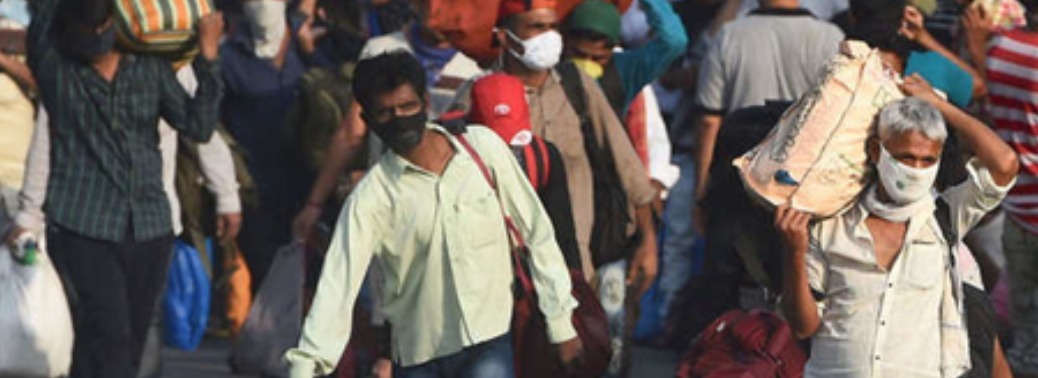
Why in News?
- The Government of India is getting $1 billion loan from the World Bank to support its COVID-19 relief measures and financial assistance for the poorest and most vulnerable communities.
About the News:
- The money will be used for reforms in social security net, making it more integrated, portable and focussed on the urban poor.
- The new support will be funded in two phases. An allocation of $750 million — more than ₹5,600 crore —will be made immediately to help fund the Pradhan Mantri Garib Kalyan Yojana, which the Centre announced in March to scale up cash transfers and free food grain distribution to vulnerable communities, pensioners and poor workers, and provide insurance support to health workers.
- The second phase will provide $250 million — almost ₹1,900 crore —post July, which will fund additional cash and in-kind benefits based on local needs through the State governments and portable social protection delivery systems.
- The COVID-19 pandemic has also put the spotlight on some of the gaps in the existing social protection systems.
- This programme will support the Government of India’s efforts towards a more consolidated delivery platform – accessible to both rural and urban populations across state boundaries.
About Pradhan Mantri Garib Kalyan Yojana:
- The Pradhan Mantri Garib Kalyan Yojana was launched in the year 2016 by PM Narendra Modi along with the other provisions of Taxation Laws (Second Amendment) Act, 2016.
- This scheme was valid from December 16, 2016 to March 31, 2017 and provided an opportunity to declare the unaccounted wealth and black money in a confidential manner and avoid prosecution after paying a fine of 50% on the undisclosed income.
- An additional 25% of the undisclosed income is invested in the scheme which can be refunded after four years, without any interest.
- Due to the outbreak of COVID-19 in India, the Finance Minister announced a ₹7 lakh crore Gareeb Kalyan package to mitigate the loss faced by the poor due to the coronavirus lockdown.
What are its Recent Updates?
- To provide an insurance cover of Rs 50 lakhs per health worker affected by COVID-19.
- To provide free resources of 5 kg wheat or rice and 1 kg of preferred pulses for 80 crore poor people for the next three months under the PM Garib Kalyan Ann Yojana.
- 20 crore Women Jan Dhan account holders will be provided Rs 500 per month for next three months.
- There will be an increase in MGNREGA wage to Rs 202 per day to benefit 13.62 crore families.
- The Central Government has given orders to State Governments to use the Building and Construction Workers Welfare Fund to provide relief to Construction Workers.
What are its Implications?
- The loan would help India move from more than 460 fragmented social protection schemes to an integrated system, which would be faster, more flexible and also acknowledge the diversity of needs across states.
- Geographic portability would be introduced to ensure that social protection benefits could be accessed from anywhere in the country, providing relief to inter-State migrant workers.
- There would also be a shift from the current rural focus of social protection schemes to include the needs of the urban poor as well.
- The platform draws on the country’s existing architecture of safety nets – the PDS, the digital and banking infrastructure, and Aadhaar – while positioning the overall social protection system for the needs of a 21st century India.Importantly, such a system will need to leverage India’s federalism enabling and supporting the States to respond quickly and effectively in their context
ECONOMIC STIMULUS PACKAGE – III
16, May 2020
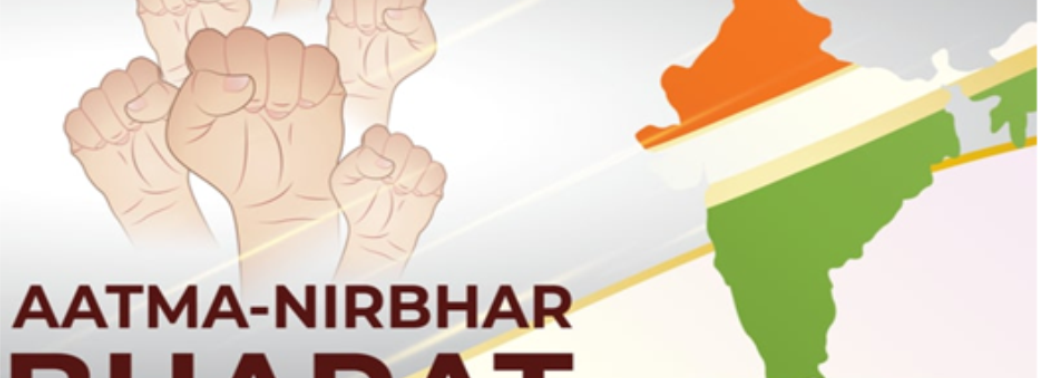
Why in News?
- In the third tranche of the COVID-19 economic package, the government announced a slew of measures for agriculture sector, including a ₹63 lakh crore outlay.
About the News:
- It also amended the stringent Essential Commodities Act to remove cereals, edible oil, oilseeds, pulses, onions and potato from its purview.
- The package would focus on infrastructure and building capacities in the agriculture and allied activities.
- The interest subvention will unlock ₹5,000 crore additional liquidity, benefitting 2 crore farmers.
- This also included ₹7 lakh crore package comprising free food grain and cash to poor for three months announced in March, and ₹5.6 lakh crore stimulus provided through various monetary policy measures by the Reserve Bank of India (RBI).
- Of the remaining, the government has made two tranches of announcements with a cumulative package of ₹1 lakh crore, comprising largely of credit lines to smaller firms, concessional credit to farmers and support to shadow banking and electricity distributors.
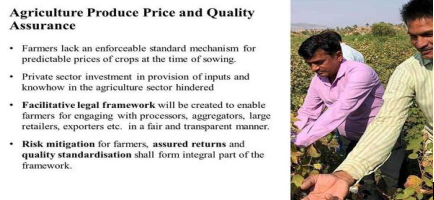
Regulating Essential Commodities:
- The government will amend the six-and-a-half-decade old Essential Commodities Act to deregulate food items, including cereals, edible oil, oilseeds, pulses, onion and potato.
- The amendment, besides deregulating production and sale of food products, will provide for no stock limit to be imposed on any produce.
- A stock limit will be imposed only under very exceptional circumstances like national calamities, famine with a surge in prices.
- Also, no stock limit shall apply to processors or value chain participants.
Other Important Announcements:
- ₹15,000 crore Animal Husbandry Infrastructure Development Fund will be set up to support investment in dairy processing, value addition and cattle feed infrastructure.
- To ensure 100 per cent vaccination of all livestock against foot and mouth disease (FMD) ₹13,343 crore will be provided, she said.
- As much as ₹10,000 crore will be provided for fishermen through Pradhan Mantri Matsya Sampada Yojana (PMMSY).
- For promoting herbal cultivation, ₹4,000 crore National Medicinal Plants Fund will be started to help 10 lakh hectares to be covered under herbal cultivation.
- Also, Operation Greens will be extended from tomato, onion and potato to all fruit and vegetables by providing 50 per cent subsidy on transportation and storage of these commodities.
- For beekeepers, a ₹500-crore scheme was announced for infrastructure development and post-harvest facilities.

ECONOMIC STIMULUS-II PACKAGE
16, May 2020
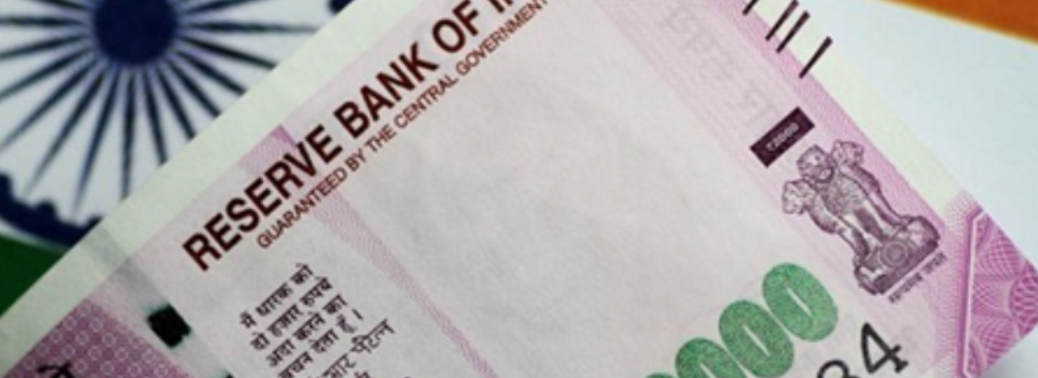
Context:
- The Union Finance Minister has recently announced the short term and long-term measures for supporting the poor, including migrants, farmers, tiny businesses and street vendors as part of the second tranche of Atmanirbhar Bharat Abhiyan.
About Free Food Grains:
- The allocation of additional food grain to all the States/UTs (5 kg per migrant labourer and 1 kg chana per family per month) for two months (May and June, 2020) free of cost. It is an extension of the Pradhan Mantri Gharib Kalyan Yojana.
- The Migrant labourers not covered under National Food Security Act (NFSA), 2013 or without a ration card in the State/UT in which they are stranded at present.
- The entire outlay of ₹3500 crores will be borne by the Government of India.
About One Nation One Ration Card:
- It is part of Technology Driven System Reforms and will enable migrant workers and their family members to access PDS benefits from any Fair Price Shop in the country.
- Around 67 crore beneficiaries covering 83% of Public Distribution System (PDS) population will be covered by National portability of Ration cards by August, 2020 and 100% National portability will be achieved by March, 2021.It will ensure that the people in transit, especially migrant workers can also get the PDS benefit across the country.
About Scheme for Affordable Rental Housing Complexes:
- It will be launched soon and under this, the Central Government will provide ease of living at affordable rent for Migrant Workers and Urban Poor.
- It will be converted into Affordable Rental Housing Complexes (ARHC) of government funded houses in the cities under PPP mode (Public Private Partnerships) through Concessionaires.
About Credit Linked Subsidy Scheme:
- This Scheme for Middle Income Group (MIG, annual income between ₹6 and ₹18 lakhs) will be extended up to March 2021. It comes under the Pradhan Mantri Awas Yojana (Urban).
- It will benefit 2.5 lakhs middle income families during 2020-21 and will lead to investment of over ₹70,000 crores in housing sector.
- It will create a significant number of jobs by giving a boost to the Housing sector and will stimulate demand for steel, cement, transport and other construction materials.
Credit Boost for Kisan Credit Card Scheme:
- It is a special drive to provide concessional credit to Pradhan Mantri Kisan Samman Nidhi (PM-KISAN) beneficiaries through Kisan Credit Cards.
- It will inject additional liquidity of ₹2 lakh crore in the farm sector.
- The 2.5 crore farmers will be covered and fisherman and animal husbandry farmers will also be included in this drive.
Shishu MUDRA loanees and their Interest Subvention:
- The Government will provide Interest subvention of 2% for prompt payees for a period of 12 months to MUDRA Shishu loanees, who have loans below ₹50,000.
- The current, MUDRA Shishu loans is around ₹62 Lakh crore. This will provide relief of about ₹1,500 crore to Shishu MUDRA loanees.
Street Vendors and Credit Facility:
- It will be launched to facilitate easy access to credit to Street vendors and enable them to restart their businesses.
- It is expected that 50 lakh street vendors will be benefited under this scheme and credit of ₹5,000 crores would be provided.
- The Bank credit facilities for initial working capital up to ₹10,000 for each enterprise will be extended.
About Employment using CAMPA Funds:
- Around ₹6,000 crore of funds under Compensatory Afforestation Management & Planning Authority (CAMPA) will be used.
- It will be utilised in afforestation and plantation works, artificial regeneration, forest management, soil & moisture conservation works, forest protection, forest and wildlife related infrastructure development, wildlife protection and management etc.
- The Government will grant immediate approval to these plans which will create job opportunities in urban, semi-urban and rural areas and also for Tribals.
Additional Emergency Working Capital:
- The NABARD will extend additional re-finance support of ₹30,000 crore for meeting crop loan requirements of Rural Cooperative Banks (RCBs) and Regional Rural Banks (RRBs).
- It is over and above ₹90,000 crore that will be provided by NABARD to this sector in the normal course.
- It will benefit around 3 crore farmers, mostly small and marginal and will meet their post-harvest Rabi and current Kharif requirements.
Demerits:
- The Economists feel, that this intervention was too little, too late, and that the free food grains provision should have been universalised to deal with widespread distress.
- They have asked the government for a one-time cash transfer to vulnerable sections like migrant labourers.
- Around 50 crore people in the country without ration cards, of which 10 crores are legally entitled to PDS grain under NFSA.
- There are many people who were managing in normal times, vegetable vendors, gig economy workers, auto rickshaw drivers, who are in dire straits now. PDS needed to be extended to all these people at this time.
- There were no steps taken to extend MGNREGA employment guarantee to at least 200 days. It aims to provide at least 100 days of wage employment.
MEASURES TO STRENGTHEN AGRICULTURE SECTOR IN INDIA
16, May 2020
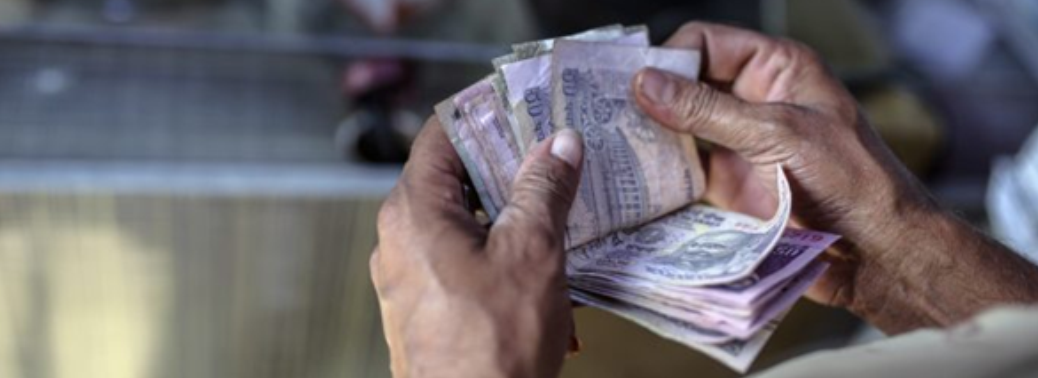
Why in News?
- Union Finance Minister announced the 3rd Tranche of measures to strengthen Infrastructure Logistics, Capacity Building, Governance and Administrative Reforms for Agriculture, Fisheries and Food Processing Sectors.
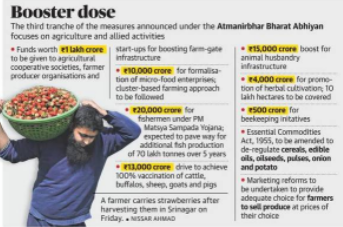
Highlights:
- The recent package is a part of the Special economic and comprehensive package of Rs 20 lakh crore – equivalent to 10% of India’s GDP, announced recently amid COVID-19 pandemic.
- Aatmanirbhar Bharat or Self-Reliant India Movement having five pillars – Economy, Infrastructure, System, Vibrant Demography and Demand, is what this special economic and comprehensive package called.
- Two significant Agriculture-related measures were also announced as part of 2nd tranche to support farmers –
- Additional Emergency Working Capital facility through NABARD to enable RRBs and Cooperative Banks extending farm loans for Rabi post-harvest and Kharif expenses and
- Credit boost to the farm sector by covering 2.5 crore PM-KISAN beneficiaries under Kisan Credit Card Scheme.
Measures Announced:
- Out of these 11 measures, 8 measures are for improving agricultural infrastructure and 3 measures are for administrative and governance reforms, including removing restrictions on sale and stock limits of farm produce. Measures are
- Rs 1 lakh crore Agri Infrastructure Fund for farm-gate infrastructure for farmers:
- Impetus for development of farm-gate & aggregation point, affordable and financially viable Post Harvest Management infrastructure. The fund will be created immediately.
- Rs 10,000 crore scheme for Formalisation of Micro Food Enterprises (MFE):
- A Scheme promoting the government’s vision: ‘Vocal for Local with Global outreach’ will be launched to help 2 lakh MFEs who need technical upgradation to attain FSSAI food standards, build brands and marketing.
- The focus will be on women and SC/ST owned units and those in Aspirational districts and a Cluster based approach (e.g. Mango in UP, Tomato in Karnataka, Chilli in Andhra Pradesh, Orange in Maharashtra etc.) will be followed.
Pradhan Mantri Matsya Sampada Yojana (PMMSY):
- The Government will launch the PMMSY for integrated, sustainable, inclusive development of marine and inland fisheries. The focus will be on Islands, Himalayan States, North-east and Aspirational Districts.
- Rs 11,000 crore for activities in Marine, Inland fisheries and Aquaculture and Rs. 9000 crore for Infrastructure – Fishing Harbours, Cold chain, Markets etc shall be provided.
- Impact: This will lead to Additional Fish Production of 70 lakh tonnes over 5 years, Employment to over 55 lakh persons and double the exports to Rs 1,00,000 crore.
National Animal Disease Control Programme:
- National Animal Disease Control Programme for Foot and Mouth Disease (FMD) and Brucellosis launched with total outlay of Rs. 13,343 crore to ensure 100% vaccination of cattle, buffalo, sheep, goat and pig population for Foot and Mouth Disease (FMD) and for brucellosis.
DIRECT SEEDING OF RICE (DSR)
14, May 2020
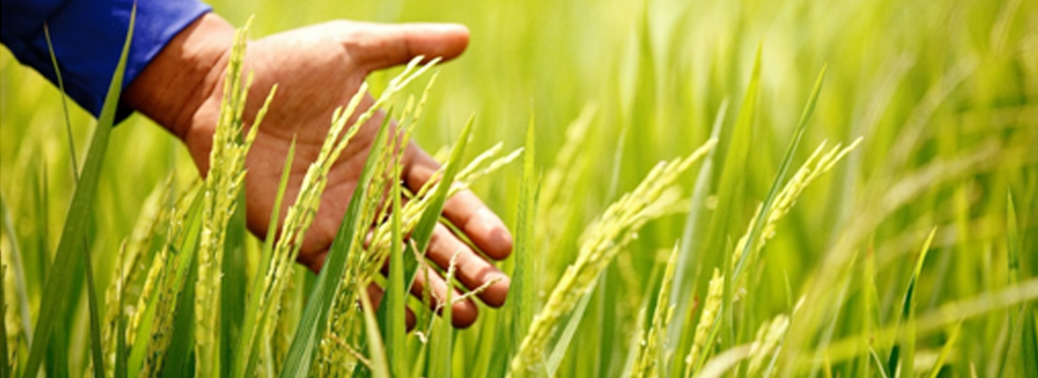
Why in News?
- Recently, the farmers are now being encouraged to adopt Direct Seeding of Rice (DSR) in place of Conventional Transplanting due to the Shortage of Labourers.
About Conventional Transplanting:
- The farmers prepare nurseries where the paddy seeds are first sown and raised into young Plants.
- These seedlings are then uprooted and replanted 25-35 days later in the main field.
- It is transplanted on fields that are “puddled” or tilled in standing water using tractor-drawn disc harrows.
Direct Seeding of Rice (DSR):
- There is no nursery preparation or transplantation. The seeds are instead directly drilled into the field by a tractor-powered machine.
- Conventionally the water act as a herbicide for paddy but in DSR, water is replaced by real chemical herbicides. Farmers have to only level their land and give one pre-sowing irrigation or rauni.
- Once the field has good soil moisture, they need to do two rounds of ploughing and planking (smoothening of soil surface), which is followed by the sowing of the seeds and spraying of herbicides.
Advantages of DSR:
- The most important one is water savings. The first irrigation (apart from the pre-sowing rauni) under DSR is necessary only 21 days after sowing.
- It is unlike in transplanted paddy, where watering has to be done practically daily to ensure submerged/flooded conditions in the first three weeks.
- It saves more number of working labours, which about three labourers are required to transplant one acre of paddy at almost Rs 2,400 Per Acre.
- Here, the cost of herbicides under DSR will not exceed Rs 2,000 per acre.
Disadvantages of DSR:
- The main issue is the Availability of Herbicides.
- The seed requirement for DSR is also higher, at 8-10 kg/acre, compared to 4-5 kg in Transplanting.
- The laser land levelling, which costs Rs 1,000/acre, is compulsory in DSR. This is not so in Transplanting.
- Here, the yields are as good as from normal transplanting, but one need to sow by the first fortnight of June. The plants have to come out properly before the Monsoon Rains Arrive.
- In Transplanting there is no such problem, where the saplings have already been raised in the Nursery.
GUJARAT AMENDS APMC ACT
14, May 2020
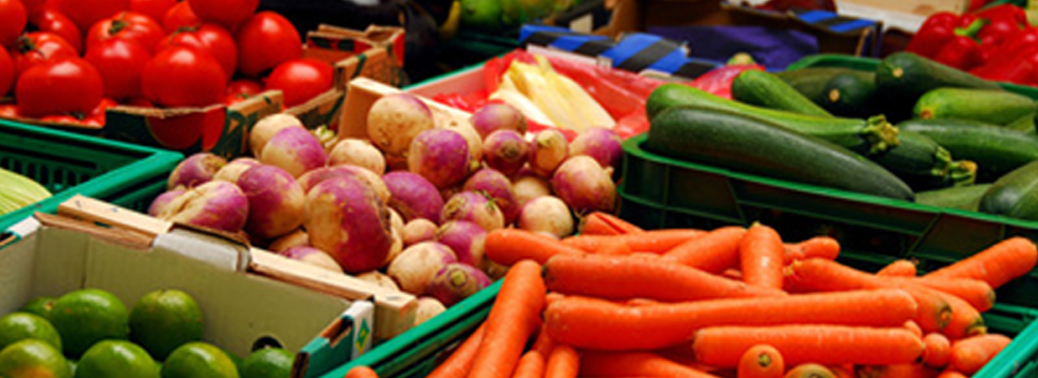
Why in News?
- Following the Centre’s directive to States to amend their Agricultural Produce Markets (APMC) Acts, the Gujarat government has promulgated an Ordinance expanding the purview of the Act to include livestock under agricultural produce and to provide better market access to farmers.
What is APMC?
- It is a statutory market committee constituted by a State Government in respect of trade in certain notified agricultural or horticultural or livestock products, under the Agricultural Produce Market Committee Act issued by that state government.
- The Ministry of Agriculture formulated a model law on agricultural marketing, State Agricultural Produce Marketing (Development and Regulation) Act, 2003 and requested the state governments to suitably amend their respective APMC Acts.
- Union Budgets of 2014-15 and 2015-16 had suggested the creation of a National Agricultural Market (NAM) following which e-NAM was launched on April 2016 as a pan-India electronic trade portal to link APMCs across the States.
What are its objectives?
- Ensure transparency in pricing systems and transactions taking place in the market area.
- Provide market-led extension services to farmers.
- Ensure payment for agricultural produce sold by farmers on the same day.
- Promote agricultural processing including activities for value addition in agricultural produce.
- Setup and promote public private partnership in the management of agricultural markets, etc.
Changes Made and Their Implications:
- As per the amendment, the new Act is termed Gujarat Agricultural Produce and Livestock Marketing (Promotion and Facilitation) Act, 1963.
- The Act paves the way for establishment of a livestock market.
- Also, it seeks to have involvement of local authorities, including Panchayati raj institutions that own and operate rural periodical markets such as haats within their area.
- Changed Structure of the market committee of a market yard. It is deemed to be of national importance with increased membership from farmers.
- A single licence will be applicable to the whole of the State for the traders to be granted or renewed by the Director. The existing trader licences granted by the market committees shall be converted into State wide single trader licence by the Director.
- Now, even private entities can set up their own market committees or sub-market yards that can compete and offer the best possible remuneration to farmers for their produce.
- The ordinance also restricts the jurisdiction of the market committees to the physical boundaries of their respective marketing yards. They can levy cess only on those transactions, happening within the boundary walls of their marketing yard.
Significance of these Changes:
- The changes help develop these markets to efficiently function as marketing platform nearest to the farm gate.
- They also ensure that the spirit of competition is encouraged and the principle of ‘farmer first’ is kept in mind.
- Also, the act removes the conventional involvement of middlemen by allowing farmers to sell their crops in a free market. This is a progressive step towards a more robust farm economy.
Concerns from APMC:
- APMCs have not welcomed the decision because it ends their monopoly and allows private players to enter.
- The ordinance will also affect revenues because no cess will be collected on transactions outside the physical boundaries of marketing yards.
- For example, last year, of the ₹5 crore earned as market fees, ₹1.5 crore came from transactions that were conducted outside the marketing yard. With the new ordinance in place, this revenue will be lost.
ECONOMIC PACKAGE TO MAKE INDIA SELF-RELIANT
14, May 2020
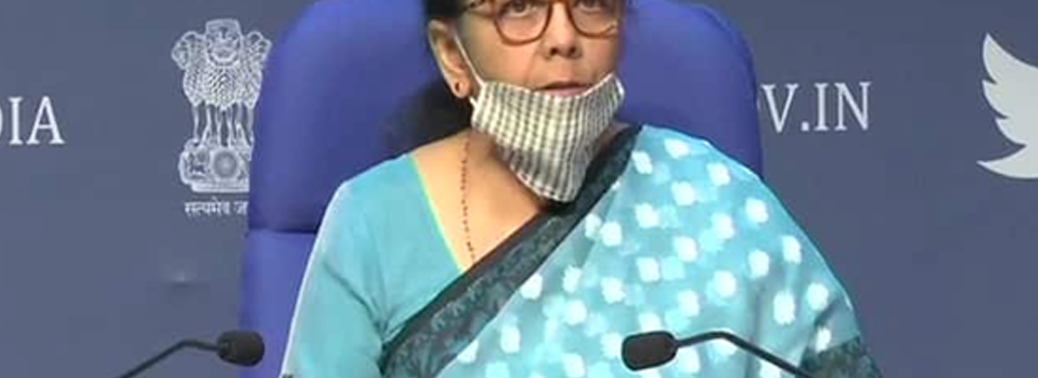
Why in News?
- Union Finance Minister announced a ₹20-lakh-crore economic stimulus package to deal with the COVID-19 pandemic.

Highlights:
- This is the first tranche of the Atmanirbhar Bharat Abhiyan announced by Prime Minister Narendra Modi recently as a ₹20 lakh crore economic package.
- That package includes the ongoing Pradhan Mantri Garib Kalyan Yojana, meant to support the poorest and most vulnerable communities during the pandemic, as well as several measures taken by the Reserve Bank of India to improve liquidity.
- More tranches are expected in the next few days.
Pradhan Mantri Garib Kalyan Package (1):
- 1.70 Lakh Crore relief package under Pradhan Mantri Garib Kalyan Yojana for the poor to help them fight the battle against Coronavirus which includes –
- Insurance cover to Health Worker
- 5 kg wheat or rice per person for next 3 months to poor people
- 20 crore women Jan Dhan account holders get Rs 500 per month for next 3 months;
- Gas cylinders, free of cost, provided to 8 crore poor families for the next 3 months;
- Increase in MNREGA wage to Rs 202 a day from Rs 182 to benefit 13.62 crore families;
- Ex-gratia of Rs 1,000 to 3 crore poor senior citizens, poor widows and poor Divyang.
Pradhan Mantri Garib Kalyan Package (2):
- Front-loaded Rs 2,000 paid to farmers under existing PM-KISAN to benefit 8.7 crore farmers; Building and Construction Workers Welfare Fund allowed to be used to provide relief to workers;
- Five crore workers registered under Employee Provident Fund (EPF) to get non-refundable advance of 75% of the amount or three months of the wages, whichever is lower, from their accounts;
- Limit of collateral free lending to be increased from Rs 10 to Rs 20 lakhs for Women Self Help Groups supporting 6.85 crore households;
- District Mineral Fund (DMF) to be used for supplementing and augmenting facilities of medical testing, screening etc.
Measures taken by Reserve Bank of India:
- Reduction of Cash Reserve Ratio (CRR) has resulted in liquidity enhancement of ₹1,37,000 crores Targeted Long Term Repo Operations (TLTROs) of ₹1,00,050 crore for fresh deployment in investment grade corporate bonds, commercial paper, and non-convertible debentures.
- Increased the banks’ limit for borrowing overnight under the marginal standing facility (MSF). Announced special refinance facilities to NABARD, SIDBI and the NHB for a total amount of ₹50,000 crore at the policy repo rate.
- Moratorium of three months on payment of instalments and payment of Interest on Working Capital Facilities in respect of all Term Loans.
- For loans by NBFCs to the commercial real estate sector, additional time of one year has been given for extension of the date for commencement for commercial operations (DCCO).
Other Measures:
- On the request of the Government of India, RBI raised the Ways and Means advance limits of States by 60% and enhanced the Overdraft duration limits;
- Issued all the pending income-tax refunds up to ₹5 lakh, immediately benefiting around 14 lakh taxpayers;
- Implemented “Special Refund and Drawback Disposal Drive” for all pending refund and drawback claims;
- Sanctioned Rs 15,000 crores for Emergency Health Response Package.
Dissecting the Current Economic Package:
- For Salaried Workers and Taxpayers:
- Some relief was provided in the form of an extended deadline for income tax returns for financial year 2019-20, with the due date now pushed to November 30, 2020.
- The rates of tax deduction at source (TDS) and tax collection at source (TCS) have been cut by 25% for the next year.
- While statutory provident fund (PF) payments have been reduced from 12% to 10% for both employers and employees for the next three months.
- MSMEs Get Attention:
- A major chunk (₹3 lakh crore) of this package is for collateral free loan schemes for businesses, especially micro, small and medium enterprises (MSMEs).
- The ₹3 lakh crore emergency credit line will ensure that 45 lakh units will have access to working capital to resume business activity and safeguard jobs.
- For two lakh MSMEs which are stressed or considered non-performing assets, the Centre will facilitate provision of ₹20,000 crore as subordinate debt.
- A ₹50,000 crore equity infusion is also planned, through an MSME fund of funds with a corpus of ₹10,000 crore.
- In a bid to fulfil the Prime Minister’s vision of a self-reliant or “Atmanirbhar” India, global tenders will not be allowed for government procurement up to ₹200 crore.
- Other interventions for MSMEs: e-market linkage and Fintech will be used to enhance transaction-based lending using the data generated by the e-marketplace.
- The definition of an MSME is being expanded to allow for higher investment limits and the introduction of turnover-based criteria.
- Non-banking finance companies (NBFCs):
- NBFCs/HFCs/MFIs are finding it difficult to raise money in debt markets.
- Government will launch a Rs 30,000 crore Special Liquidity Scheme;
- Under this scheme investment will be made in both primary and secondary market transactions in investment grade debt paper of NBFCs/HFCs/MFIs;
- Will supplement RBI/Government measures to augment liquidity;
- Securities will be fully guaranteed by GoI.
- This will provide liquidity support for NBFCs/HFC/MFIs and mutual funds and create confidence in the market.
- Power Distribution Companies:
- Revenues of Power Distribution Companies (DISCOMs) have plummeted. Unprecedented cash flow problem accentuated by demand reduction.
- PFC/REC to infuse liquidity of Rs 90,000 cr to DISCOMs against receivables.
- Loans to be given against State guarantees for the exclusive purpose of discharging liabilities of Discoms to Gencos.
- Linkage to specific activities/reforms: Digital payments facility by Discoms for consumers, liquidation of outstanding dues of State Governments, Plan to reduce financial and operational losses.
- Central Public Sector Generation Companies shall give rebate to Discoms which shall be passed on to the final consumers (industries).
- Relief to Contractors:
- Extension of up to 6 months (without costs to contractor) to be provided by all Central Agencies (like Railways, Ministry of Road Transport & Highways, Central Public Works Dept, etc)
- Covers construction/ works and goods and services contracts.
- Covers obligations like completion of work, intermediate milestones etc. and extension of Concession period in PPP contracts.
- Government agencies to partially release bank guarantees, to the extent contracts are partially completed, to ease cash flows
- The Real Estate Industry:
- Adverse impact due to COVID and projects stand the risk of defaulting on RERA timelines. Time lines need to be extended.
- Ministry of Housing and Urban Affairs will advise States/UTs and their Regulatory Authorities to the following effect:
- Treat COVID-19 as an event of ‘Force Majeure’ under RERA.
- Extend the registration and completion date suo-moto by 6 months for all registered projects expiring on or after 25th March, 2020 without individual applications.
- Issue fresh ‘Project Registration Certificates’ automatically with revised timelines.
- Extend timelines for various statutory compliances under RERA concurrently.
- These measures will de-stress real estate developers and ensure completion of projects so that homebuyers are able to get delivery of their booked houses with New Timelines.
KAILASH MANSAROVAR LINK ROAD
12, May 2020
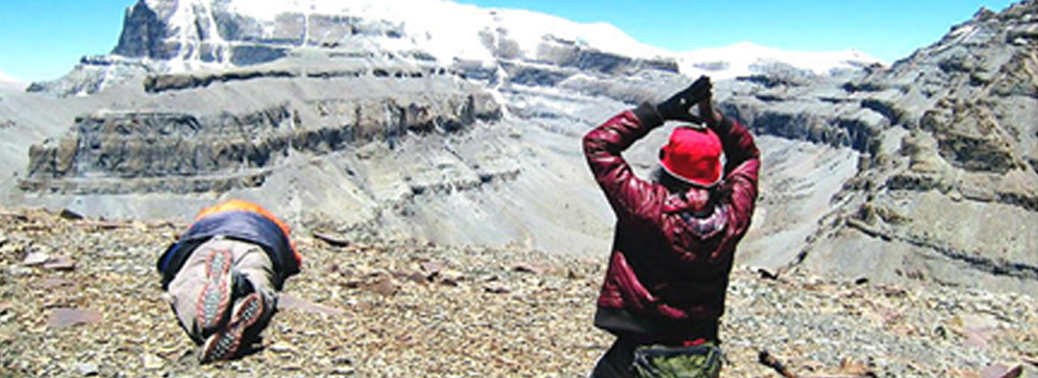
Why in News?
- Recently, Nepal has strongly objected to the newly inaugurated link road which connects Pithoragarh, Uttarkhand to Lipulekh pass, China border significantly reducing the time of Kailash Mansarovar Yatra.
Highlights:
- Nepal claims the territory at the Lipulekh pass around 400 sq km area east of Kali river in the tri-junction of Nepal, Tibet and India, through which the road passes as its own.
- It referred to the 2014 agreement between Prime Ministers of both countries, for Foreign Secretaries to work out the “outstanding boundary issues” on Kalapani where Lipulekh lies and Susta bordering Bihar.
- The unilateral decision to build a road there, is a breach of the 2014 agreement.
- Nepal has the maps during the 1816 Sugauli treaty and other complementing treaties that followed, fixing that Limpiadhura, Kalapani and Lipulekh were shown east of Kali river and part of Nepal.
- These arrangements were made following Nepal’s war with the British due to which Nepal had to cede a large part of territory which currently forms the present Uttarakhand.
- Nepal seeks to question China and India because both had signed an agreement in May 2015 to develop Lipulekh as a commercial passage without consulting Nepal which majorly affected the triangulation of the countries.
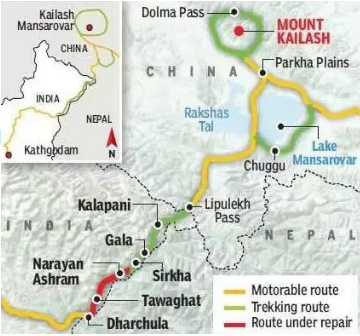
About India’s Stand:
- According to the External Affairs minister, the road going through Pithoragarh lies Completely within the Territory of India.
- It is the pre-existing route used by the pilgrims of the Kailash Mansarovar Yatra which has been made pliable for the ease and convenience of Pilgrims, Locals and Traders, under the Present Project.
- India held that the boundary delineation exercise with Nepal is in process and it is committed to resolving outstanding boundary issues through Diplomatic Dialogue.
Other Issues between Indian and Nepal:
- Nepal protested against the publication of Indian maps that included the Kalapani area.
- India rejected Nepal’s contention, asserting that the map accurately depicts the sovereign territory of India.
- Both nations are in the process of scheduling foreign secretary-level talks, which will be held once dates are finalised after the two governments have successfully dealt with the challenge of Covid-19.
About Kali River:
- It is also known as Sharda river or Kali Ganga in Uttarakhand.
- It joins Ghagra river in Uttar Pradesh, which is a tributary of Ganga.
- Its river projects are Tanakpur hydro-electric project, Chameliya hydro-electric project, Sharda Barrage.
About Lipulekh Pass:
- It is also known as Lipu-Lekh Pass/Qiangla or Tri-Corner is a high altitude mountain pass situated in the western Himalayas with a height of 5,334 metre or 17,500 feet.
- It is an International mountain pass between India, China and Nepal.
HELICOPTER MONEY
09, May 2020

Why in News?
- Telangana Chief Minister has recently suggested that the helicopter money can help states to come out of the economic chaos created by Covid-19 pandemic.
What is meant by Helicopter money?
- It is an unconventional monetary policy tool, which involves printing large sums of money and distributing it to the public, to stimulate the economy during a recession (decline in general economic activity) or when interest rates fall to zero.
- Under such a policy, a central bank “directly increases the money supply and, via the government, distribute the new cash to the population with the aim of boosting demand and inflation”.
- The term was coined by American economist Milton Friedman. It basically denotes a helicopter dropping money from the sky.
Difference between Helicopter Money and Quantitative Easing:
- Helicopter money should not be confused with quantitative easing, because both aim to boost consumer spending and increase inflation.
- In case of helicopter money, currency is distributed to the public and there is no repayment liability.
- Whereas in case of quantitative easing, it involves the use of printed money by central banks to buy government bonds. Here the government has to pay back for the assets that the central bank buys.
Pros of Helicopter Money:
- It boosts spending and Economic Growth more Effectively than quantitative easing because it increases aggregate demand – the demand for goods and services – immediately.
- It does not rely on increased borrowing to fuel the economy, which means that it doesn’t create more debt.
Cons of Helicopter Money:
- It may lead to over-inflation.
- It may devalue the currency in the foreign exchange market.
- It does not involve repayment liability, therefore many people argue that it’s not a feasible solution to revive the economy.
SBI TO EXTEND LOAN MORATORIUM TO NBFCS
07, May 2020
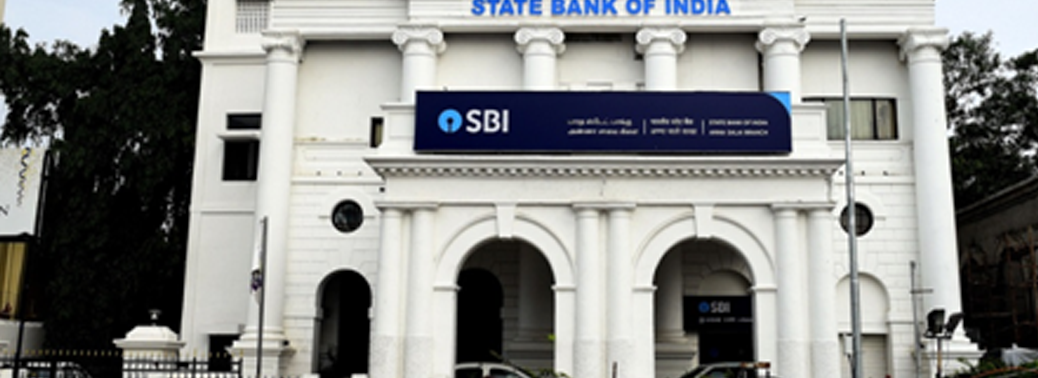
Why in News?
- The State Bank of India (SBI) has decided to extend loan moratorium to NBFCs that could give a huge relief to the entities facing a Cash Crunch.
What is Loan Moratorium?
- It refers to a particular period of a loan tenure during which the borrower does not have to repay anything.
- It can be described as a waiting period before the borrower will have to start paying the equated monthly instalments (EMIs) for his or her loan.
- It doesn’t mean that he is completely waived off his Loans.
Why this Move?
- At end March, following the nationwide lockdown, the RBI had allowed banks to extend three-month repayment moratorium to their term loan customers without classifying them as non-performing assets.
- While the banks had extended the facility to the retail borrowers, they were reluctant to extend the same to the NBFCs, including housing finance companies and micro-finance institutions.
- Bank funding is a key source of liquidity for the NBFCs. As a result, NBFCs that had extended the benefit to their customers but were not granted one from the banks were facing a severe liquidity crunch.
- Rating agency Crisil had said that the NBFCs rated by the agency would face a ₹75 lakh-crore debt obligation maturing by June end.
- Similarly, micro-finance institutions had informed the RBI during a recent meeting that they had to repay a debt of ₹18,500 crore in the next three months.
- With SBI now deciding to offer the moratorium, NBFCs expect other commercial banks also to follow suit.
What is Non-Banking Financial Company (NBFC)?
- A Non-Banking Financial Company (NBFC) is a company registered under the Companies Act, 1956 engaged in the business of loans and advances, acquisition of shares/stocks/bonds/debentures/securities issued by Government or local authority or other marketable securities of a like nature.
- NBFC does not include any institution whose principal business is that of agriculture activity, industrial activity, purchase or sale of any goods (other than securities) or providing any services and sale/purchase/construction of immovable property.
- A non-banking institution which is a company and has principal business of receiving deposits under any scheme or arrangement in one lump sum or in instalments by way of contributions or in any other manner, is also a non-banking financial company (Residuary non-banking company).
What are the Differences between banks & NBFCs?
- NBFCs lend and make investments and hence their activities are akin to that of banks; however there are a few differences as given below:
- NBFC cannot Accept Demand Deposits;
- NBFCs do not form part of the payment and settlement system and cannot issue cheques drawn on itself;
- Deposit insurance facility of Deposit Insurance and Credit Guarantee Corporation is not available to depositors of NBFCs, unlike in case of Banks.
PRADHAN MANTRI BHARTIYA JANAUSHADHI PARIYOJANA (PMBJP)
07, May 2020
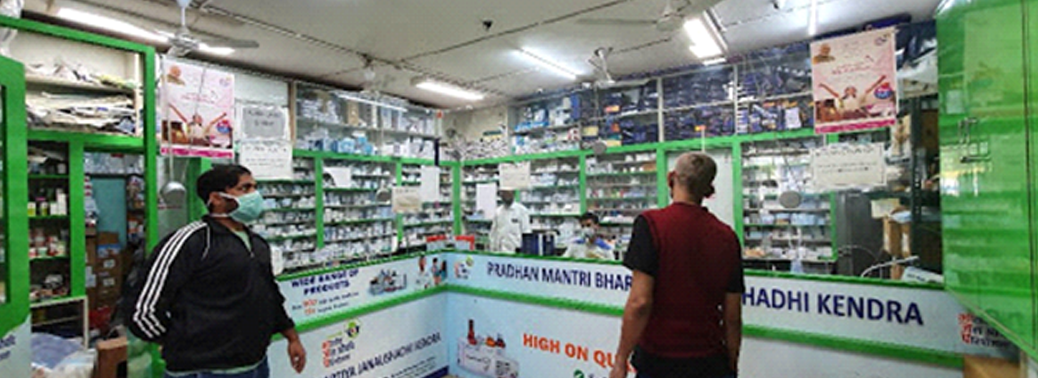
Why in News?
- Pradhan Mantri Bhartiya Janaushadhi Kendras (PMBJKs) are accepting orders on WhatsApp and e-mail and delivering on patient’s doorsteps to facilitate medicine procurement During Lockdown.
About PMBJP:
- ‘Pradhan Mantri Bhartiya Janaushadhi Pariyojana’ is a campaign launched by the Department of Pharmaceuticals, Govt. Of India, to provide quality medicines at affordable prices to the masses through special Kendra’s known as Pradhan Mantri Bhartiya Jan Aushadhi Kendra.
- Bureau of Pharma PSUs of India (BPPI) is the implementing agency of PMBJP. BPPI (Bureau of Pharma Public Sector Undertakings of India) has been established under the Department of Pharmaceuticals, Govt. of India, with the support of all the CPSUs.
What are the Salient Features of the scheme?
- Ensure access to quality medicines.
- Extend coverage of quality generic medicines so as to reduce the out of pocket expenditure on medicines and thereby redefine the unit cost of treatment per person.
- Create awareness about generic medicines through education and publicity so that quality is not synonymous with only high price.
- A public programme involving Government, PSUs, Private Sector, NGO, Societies, Co-operative Bodies and other Institutions.
- Create demand for generic medicines by improving access to better healthcare through low treatment cost and easy availability wherever needed in all therapeutic categories.
What is a Generic Medicine?
- There is no definition of generic or branded medicines under the Drugs & Cosmetics Act, 1940 and Rules, 1945 made thereunder. However, generic medicines are generally those which contain same amount of same active ingredient(s) in same dosage form and are intended to be administered by the same route of administration as that of branded medicine.
- The price of an unbranded generic version of a medicine is generally lower than the price of a corresponding branded medicine because in case of generic version, the pharmaceutical company does not have to spend money on promotion of its brand.
How are they Regulated in India?
- Drugs manufactured in the country, irrespective of whether they are generic or branded, are required to comply with the same standards as prescribed in the Drugs and Cosmetics Act, 1940 and Rules, 1945 made thereunder for their quality.
Outreach of Generic Medicines:
- With developments like more and more doctors prescribing generic medicines and opening of over 5050 Janaushadhi stores across 652 districts, awareness and availability of high quality affordable generic medicines has increased in the country.
- About 10-15 lakh people benefit from Janaushadhi medicines per day and the market share of generic medicines has grown over three fold from 2% to 7%in last 3 years.
- The Janaushadhi medicines have played a big role in bringing down the out of pocket expenditure of patients suffering from life threatening diseases in India.
- The PMBJP scheme has led to total savings of approximately Rs.1000 crores for common citizens, as these medicines are cheaper by 50% to 90% of average market price.
- The PMBJP is also providing a good source of self-employment with self-sustainable and regular earnings.
CO-OPERATIVE BANKS UNDER SARFAESI ACT
06, May 2020
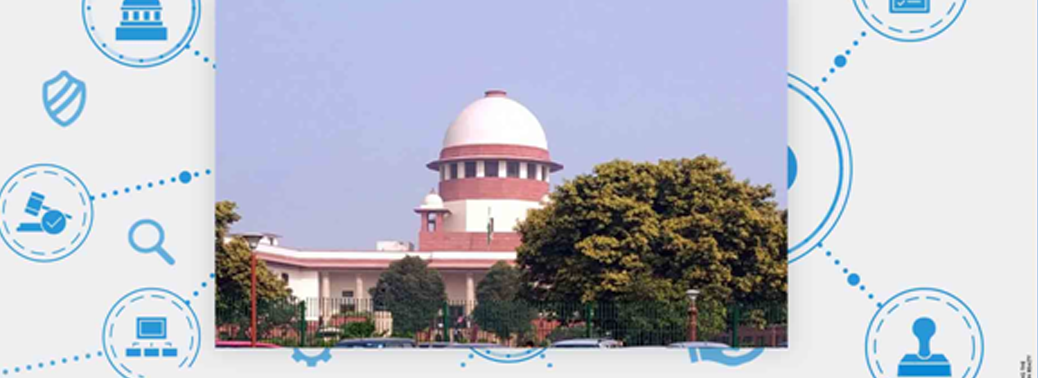
Why in News?
- The Supreme Court held that Co-operative banks established under a State law and multi-State level co-operative societies come within the ambit of the Securitisation and Reconstruction of Financial Assets and Enforcement of Security Interest (Sarfaesi) Act of 2002.
Issues Involved:
- The Judgment Came in view of Several Conflicting decisions by high courts on the issues of
- Whether the Co-operative banks can be called as “Banks (financial Institutions)” under the Banking Regulation Act of 1949
- Whether the Parliament has legislative competence to regulate financial assets of cooperative banks formed under state law.
- The argument was that under Lists I and II of the 7th Schedule, the Constitution provides for distinct fields of legislative entries for the state legislature and Parliament and once there is already a valid law made by the state referring to its own field, there should not be a parallel parliamentary law on the same topic.
Verdict of the Supreme Court:
- The court has upheld the central government’s notification which brought co-operative societies within the purview of the Sarfaesi Act.
- The Supreme court said Co-operative banks come within the definition of “Banks” under the Banking Regulation Act, 1949 for the purposes of the Sarfaesi Act. The recovery procedure under the Sarfaesi Act is also applicable to co-operative banks and there is no clash with the Banking Regulation Act, 1949.
- The court also ruled that the Parliament has legislative competence to provide procedures for recovery of loans under the Sarfaesi Act with respect to cooperative banks.
- The court was of the opinion that recovery of dues would be an essential function of any financial institution and co-operative banks cannot carry on any activity without compliance of provisions of the banking Act and any other legislation applicable to such banks and the RBI Act.
About Sarfaesi Act:
- Banks utilize Sarfaesi Act as an effective tool for bad loans (Non Performing Asset) recovery.
- The Sarfaesi Act is effective only against secured loans where banks can enforce the underlying security.
- Major feature of Sarfaesi is that it promotes the setting up of asset reconstruction companies (ARCs) and asset securitization companies (SCs) to deal with NPAs accumulated with the banks and financial institutions.
- Following are the main objectives of the Sarfaesi Act.
- Provides the legal framework for securitization activities in India.
- It gives the procedures for the transfer of NPAs to asset reconstruction companies for the reconstruction of the assets.
- Enforces the security interest without Court’s intervention.
- Gives powers to banks and financial institutions to take over the immovable property that is pledged to enforce the recovery of debt.
LIQUOR REVENUE FOR STATES
06, May 2020

Why in News?
- Recently, the central government eased restrictions in the third phase of the nationwide lockdown and allowed the sale of liquor.
About the News:
- The Delhi government announced a 70% hike as ‘Special Corona Fee’ in the price of liquor across categories. This shows the importance of liquor to the economy of the states.
- Liquor contributes a considerable amount to the exchequers of all states and Union Territories (UTs) except Gujarat and Bihar, both of which have enforced prohibition.
- Andhra Pradesh announced prohibition in 2019, however, sale of the liquor has been allowed with “prohibition tax”.
- States levy excise duty on manufacture and sale of liquor.
- States also charge special fees on imported foreign liquor, transport fee, and label & brand registration charges.
- A few states like Uttar Pradesh, have imposed a ‘special duty on liquor’ to collect funds for special purposes, such as maintenance of stray cattle.
RBI’s report on State Finance:
- The Reserve Bank of India published the report ‘State Finances: A Study of Budgets of 2019-20’ in September 2019.
- It shows that state excise duty on alcohol accounts for around 10-15% of Own Tax Revenue of a majority of states.
- In fact, state excise duties on liquor is the second or third largest contributor to the category State’s Own Tax revenue; Goods and Services Tax-GST is the largest.
- This is the reason states have always wanted liquor kept out of the purview of GST.
- According to the report, in 2019-20, state GST had the highest share, 43.5%, in states’ Own Tax Revenue, followed by Sale Tax at 23.5% (mainly on petroleum products which are out of GST), state excise at 12.5%, and taxes on property and capital transactions at 11.3%.
About State Excise:
- Excise duty on production of few items including that on liquor and other alcohol-based items is imposed and collected by state governments and is called ‘State Excise’ duty.
- Excise duty is basically a production tax. It is imposed on manufactured items in India that are meant for domestic consumption.Revenue receipts from state excise come mainly from commodities such as Country Spirits; Liquor; Foreign Liquors and Spirits; Medicinal and Toilet Preparations containing Alcohol, Opium etc; Opium, Hemp and other Drugs; Sales to Canteen Stores Depots. Apart from these, a substantial amount comes from licences, fine and confiscation of alcohol products.
What are the Sources of Revenue for States?
Tax Revenue:
- State’s Own Tax Revenue:
- Taxes on Income (agricultural income tax and taxes on professions, trades, callings and employment)
- Taxes on Property and Capital Transactions (land revenue, stamps and registration fees, urban immovable property tax)
- Taxes on Commodities and Services (sales tax, state sales tax/VAT, central sales tax, surcharge on sales tax, receipts of turnover tax, other receipts, state excise, taxes on vehicles, taxes on goods and passengers, taxes and duties on electricity, entertainment tax, state GST, and “other taxes and duties”)
Share in Central Taxes:
- Article 280 of the Indian Constitution requires the composition of the Finance Commission in every five years so that the states can get a reasonable part in the tax revenue of the Union Government.
Non-Tax Revenue:
- These are collected by the governments for providing/facilitating any goods and service.
- It is compulsory to pay a part of the income earned/generated and amount of goods and services consumed as tax. However, non-tax revenue becomes payable only when services offered by the government are availed.
Other Components:
- Interest:It comprises interest of loans given to states and union territories for reasons like non-plan schemes and planned schemes with a maturity period of 20 years and also interest on loans advanced to Public Sector Enterprises (PSEs), Port Trusts and other statutory bodies etc.
- Dividends and profits, Petroleum license, Power supply fees, Fees for Communication Services, Broadcasting fees, Road, Bridges usage fees, Examination fees etc.
DEPOSIT INSURANCE AND CREDIT GUARANTEE CORPORATION (DICGC)
06, May 2020

Why in News?
- RBI has asked the Registrar of Co-operative Societies, Maharashtra to start the process of winding up operations of CKP Co-operative bank and appoint a liquidator.
What’s the Issue?
- Recently, the Reserve Bank of India (RBI) recently cancelled the licence of Mumbai-based CKP Co-operative Bank for the Following Reasons:
- Financial position of the bank was highly adverse and unsustainable.
- The bank is not in a position to pay its present and future depositors.
- The bank failed to meet the regulatory requirement of maintaining a minimum capital adequacy ratio of 9% and reserves.
What is Capital to Risk Weighted Assets Ratio (CRAR)?
- The CRAR, also known as the Capital Adequacy Ratio (CAR), is the ratio of a bank’s capital to its risk. It is a measure of the amount of a bank’s core capital expressed as a percentage of its risk-weighted asset.
- It is decided by central banks and bank regulators to prevent commercial banks from taking excess leverage and becoming insolvent in the process.
- The Basel III norms stipulated a capital to risk weighted assets of 8%.
- However, as per RBI norms, Indian scheduled commercial banks are required to maintain a CRAR of 9%.
What is Deposit Insurance? How is it Regulated in India?
- Deposit insurance is providing insurance protection to the depositor’s money by receiving a premium.
- The government has set up Deposit Insurance and Credit Guarantee Corporation (DICGC) under RBI to protect depositors if a Bank Fails.
- DICGC charges 10 paise per ₹100 of deposits held by a bank. The premium paid by the insured banks to the Corporation is paid by the banks and is not to be passed on to depositors.
- DICGC last revised the deposit insurance cover to ₹5 lakh in Feb, 2020, raising it from ₹1 lakh since 1993.
What is the Procedure for Depositors to Claim the Money from a Failed Bank?
- The DICGC does not deal directly with depositors.
- The RBI (or the Registrar), on directing that a bank be liquidated, appoints an official liquidator to oversee the winding up process.
- Under the DICGC Act, the liquidator is supposed to hand over a list of all the insured depositors (with their dues) to the DICGC within three months of taking charge.
- The DICGC is supposed to pay these dues within two months of receiving this list.
Who are Insured by the DICGC?
- The corporation covers all commercial and co-operative banks, except in Meghalaya, Chandigarh, Lakshadweep and Dadra and Nagar Haveli.
- Besides, only primary cooperative societies are not insured by the DICGC.
Which type of depositors is not included under the DICGC?
- Deposits of Foreign Governments.
- Deposits of Central/State Governments.
- Inter-bank Deposits.
- Deposits of the State Land Development Banks with the state Co-operative Bank.
- Any amount due on account of Any Deposit received outside India.
- Any amount specifically Exempted by the DICGC with Previous Approval of RBI.
INSURANCE CLAIMS AMID COVID-19 OUTBREAK
05, May 2020

Why in News?
- Companies that suffered business interruption losses due to the Covid-19 outbreak and lockdown are likely to bat for the “loss of profit” clause in their insurance contracts.
- Many companies had taken insurance policies to cover loss arising due to certain unforeseen circumstances but the question has risen whether Covid-19 outbreak is covered by such policies.
- The net result is that they may not get any insurance claim from the insurance companies under the Standard Fire and Special Perils Policy, commonly known as property policy.
Types of Insurances:
- Corporations usually Take Two Types of insurance policies -Material damage policy and Business Interruption Policy.
- Material damage policy is triggered if there is loss of property due to fire or flood or machine breakdown.
- Business interruption, on the other hand, only comes into force if loss of profit has happened due to the clauses mentioned under the material damages policy.
Provisions of the “Property Policy”:
- If the insured plant or office is shut down due to any damage or fire, the company is eligible for claims.
- Also the Policy specifies if the building insured or containing the insured property becomes unoccupied and so remains for a period of more than 30 days (not applicable for dwellings), the insurance claims may not be applicable.
- For claim, before the occurrence of any loss or damage to the property, the continuation of the coverage needs to be ensured.
Relaxation from Policy Lapse:
- The insurers have given relief to corporates, which shut their units for more than a month. Their policies will be allowed to be operational despite the clause that “if a unit is shut for 30 days continuously – the policy cover will lapse”.
- The above relief is applicable for the “unoccupied properties” for more than one month till May 3 under the property policy.
- It means companies can claim insurance if the property is damaged due to fire or any other loss even if the factory or unit is not operational during the period till May 3.
Force Majeure, or “Act of God” Clause:
- Most insurers will also use the Force Majeure, or “Act of God” clause but again there is no concrete conclusion or clause stating that loss of profit due to Covid-19 is Force Majeure.
- Force majeure is a common clause in contracts that essentially frees both parties from liability or obligation when an extraordinary event or circumstance beyond the control of the parties occurs. It prevents one or both parties from fulfilling their obligations under the contract.
MANUFACTURING HITS RECORD LOW
05, May 2020

Why in News?
- According to a recent IHS Markit India monthly survey, Manufacturing Purchasing Managers’ Index (PMI) fell to 27.4 in April, 2020 from 51.8 in March, 2020.
- The Index (PMI) is compiled by IHS Markit for more than 40 economies worldwide. IHS Markit is a global leader in information, analytics and solutions for the major industries and markets that drive economies worldwide.
Highlights of the Report:
- The PMI slipped into contraction mode, after remaining in the growth territory for 32 consecutive months.
- In PMI’s language, a reading above 50 means expansion, while a score below that denotes contraction.
- According to the 12-month outlook for production the demand will rebound once the Covid-19 threat is diminished and lockdown restrictions are eased.
- The deteriorating demand conditions has led the manufacturers to drastically cut back staff numbers.Export orders have also witnessed a sharp decline.
- There was also evidence of supply-side disruption due to the lockdown.
Reasons Behind the Fall:
- India’s manufacturing sector activity has witnessed contraction in the month of April, 2020 due to national lockdown restrictions.
- The new business orders have collapsed at a record pace severely hampering the demand.
- This is the sharpest deterioration in business conditions across the manufacturing sector since data collection began over 15 years ago.
About Purchasing Managers’ Index:
- Purchasing Managers’ Index (PMI) is an indicator of business activity – both in the manufacturing and services sectors. It is calculated separately for the manufacturing and services sectors and then a composite index is also constructed.
- The PMI summarizes whether market conditions as viewed by purchasing managers are expanding, neutral, or contracting.
- The purpose of the PMI is to provide information about current and future business conditions to company decision makers, analysts, and investors.
- The PMI is a number from 0 to 100.
- PMI above 50 represents an expansion when compared to the previous month;
- PMI under 50 represents a contraction, and
- A reading at 50 indicates no change.
- The PMI is usually released at the start of every month. It is, therefore, considered a good leading indicator of economic activity.
- It is different from the Index of Industrial Production (IIP), which also gauges the level of activity in the economy.
FOREIGN PORTFOLIO INVESTORS (FPIS)
05, May 2020
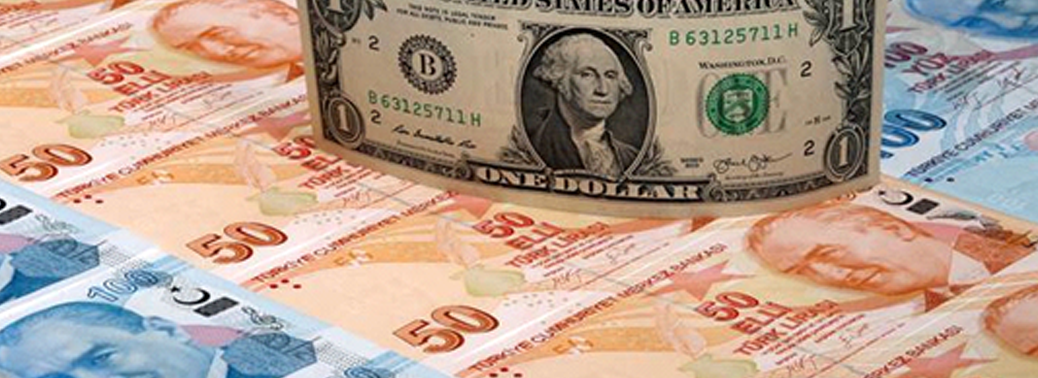
Why in News?
- Recently, the Foreign Portfolio Investors (FPIs) have significantly reduced the pace of outflows from the equity and debt market in April, 2020, according to the data from Central Depository Services Limited (CDSL).
Highlights:
- The Foreign Portfolio Investers sold a net of Rs 6,883 crore from the equities market and net holdings worth Rs 12,551 crore from the debt market in April.
- Equity market: Its shares are issued and traded, either through exchanges or over-the-counter markets (i.e directly). It is also known as the stock market.
- Debt market: It is the market where debt instruments are traded. Debt instruments are instruments that require a fixed payment to the holder, usually with interest. E.g. bonds (government or corporate) and mortgages.
- However, they invested a net of Rs 4,032 crore in debt Voluntary Retention Route (VRR) scheme.
- VRR scheme allows FPIs to participate in Repo Transactions and also invest in Exchange Traded Funds that Invest in Debt Instruments.
- The success on developing medicine and vaccines will lead to a V-shaped recovery in the Economy and Markets.
About Voluntary Retention Route (VRR) Scheme:
- It is aimed at attracting long-term and stable FPI investments into debt markets.
- Its Investment route will be free of the regulatory norms applicable to FPI investments in debt markets, provided investors maintain a minimum share of their investments for a fixed period.
- It has a minimum retention period of three years and investors need to maintain a minimum of 75% of their investments in India
- FPIs registered with Securities and Exchange Board of India (SEBI) are eligible to voluntarily invest through the route in government and corporate bonds.
About V-Shaped Recovery:
- It is characterized by a sharp economic decline followed by a quick and sustained recovery.
- The recession of 1953 is an example of a V-shaped recovery.
- It is different from an L-shaped recovery, in which the economy stays in a slump for a prolonged period of time.

About Foreign Portfolio Investment:
- It consists of securities and other financial assets passively held by foreign investors.
- It does not provide the investor with direct ownership of financial assets and is relatively liquid depending on the volatility of the market.
- It is part of a country’s capital account and is shown on its Balance of Payments (BOP).
- The BOP measures the amount of money flowing from one country to other countries over one monetary year.
- Its investor does not actively manage the investments through FPIs, he does not have control over the securities or the business. The investor’s goal is to create a quick return on his money.
- It is more liquid and less risky than Foreign Direct Investment (FDI).
About Foreign Direct Investment (FDI):
- It is an investment made by a firm or individual in one country into business interests located in another country.
- It lets an investor purchase a direct business interest in a foreign country.
- It is often referred to as “hot money” because of its tendency to flee at the first signs of trouble in an Economy.
- Bout FPI and FDI are important sources of funding for most economies. Foreign capital can be used to develop infrastructure, set up manufacturing facilities and service hubs, and invest in other productive assets such as machinery and equipment, which contributes to economic growth and stimulates employment.
DECLINE IN FPI OUTFLOWS
04, May 2020
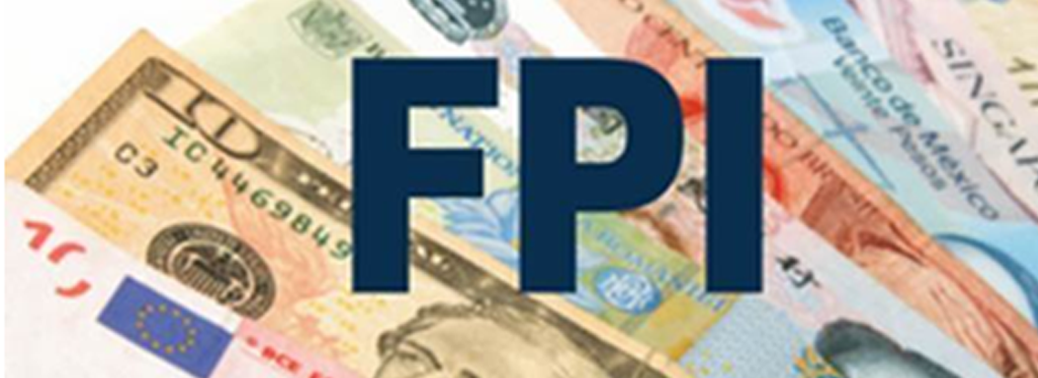
Why in News?
- As per the recent data published by Central Depository Services Limited (CDSL), the Foreign Portfolio Investors (FPIs) have significantly reduced the pace of outflows from the equity and debt market in April 2020, after a record net outflow in the month of March 2020.
Highlights of the Report:
- FPIs sold a net of Rs 6,883 crore from the equities market and net holdings worth Rs 12,551 crore from the debt market in April..
- However, they invested a net of Rs 4,032 crore in debt Voluntary Retention Route (VRR) scheme.
- VRR scheme allows FPIs to participate in repo transactions and also invest in exchange traded funds that invest in debt instruments.
- Outflows have continued due to uncertainty surrounding economic conditions caused by Covid-19 lockdown and investors are cautious. However, the pessimism also continues to grip the markets.
- So far, India has been able to contain the Covid-19 pandemic from spreading aggressively. The measures announced by the government and the Reserve Bank of India (RBI) periodically to revitalize the sagging economy have also resonated well with investors.
- With selective relaxation in the lockdown and gradual opening up of economic activity in the country, foreign investors will be closely watching the developments on this front.
- A success on developing medicine and vaccines will lead to a V-shaped recovery in the economy and markets.
Voluntary Retention Route (VRR) Scheme:
- The VRR scheme is aimed at attracting long-term and stable FPI investments into debt markets.Investments through the route will be free of the regulatory norms applicable to FPI investments in debt markets, provided investors maintain a minimum share of their investments for a fixed period.
- VRR Scheme has a minimum retention period of three years and investors need to maintain a minimum of 75% of their investments in India.
- FPIs registered with Securities and Exchange Board of India (SEBI) are eligible to voluntarily invest through the route in government and corporate bonds.
What is meant by Foreign Portfolio Investment?
- Foreign portfolio investment (FPI) consists of securities and other financial assets passively held by foreign investors. It does not provide the investor with direct ownership of financial assets and is relatively liquid depending on the volatility of the market.
- Foreign portfolio investment is part of a country’s capital account and is shown on its Balance of Payments (BOP).
- The BOP measures the amount of money flowing from one country to other countries over one monetary year.
- The investor does not actively manage the investments through FPIs, he does not have control over the securities or the business.
- The investor’s goal is to create a quick return on his money.
- FPI is more liquid and less risky than Foreign Direct Investment (FDI).
- A Foreign Direct Investment (FDI) is an investment made by a firm or individual in one country into business interests located in another country. FDI lets an investor purchase a direct business interest in a foreign country.
- FPI is often referred to as “hot money” because of its tendency to flee at the first signs of trouble in an economy.
- FPI and FDI are both important sources of funding for most Economies. Foreign capital can be used to develop infrastructure, set up manufacturing facilities and service hubs, and invest in other Productive assets such as Machinery and Equipment, which contributes to Economic Growth and Stimulates Employment.
FOREIGN EXCHANGE RESERVES
04, May 2020

Why in News?
- Recently, India’s Foreign Exchange (Forex) reserves declined by $113 million to $479.45 billion in the week to 24 April, 2020 due to a Fall in Foreign Currency Assets.
Highlights:
- The foreign currency assets (FCAs) decreased by $321 million to $441.56 billion. The Gold reserves rose by $221 million to $32.901 billion.
- The country’s reserve position with the IMF also was down by $8 million to $3.57 billion. The special drawing rights with the International Monetary Fund (IMF) fell by $6 million to $1.42 billion.
- Earlier, the reserve had touched a life-time high of $487.23 billion in the week ended by 6 March, 2020. During 2019-20, the country’s foreign exchange reserves rose by almost $62 billion.
About Foreign Exchange Reserves:
- It is an asset, which is held on reserve by a central bank in foreign currencies, which can include bonds, treasury bills and other government securities.
- It needs to be noted that most foreign exchange reserves are held in U.S. dollars. These assets serve many purposes but are most significantly held to ensure that the central bank has backup funds if the national currency rapidly devalues or becomes altogether insolvent.
- India’s Forex Reserve includes Foreign Currency Assets, Gold reserves, Special Drawing Rights and Reserve position with the International Monetary Fund (IMF).
About Reserve Position in the International Monetary Fund:
- A reserve tranche position implies a portion of the required quota of currency each member country must provide to the International Monetary Fund (IMF) that can be utilized for its own purposes.
- It is basically an emergency account that IMF members can access at any time without Agreeing to Conditions or Paying a Service Fee.
About Foreign Currency Assets (FCA):
- These are assets that are valued based on a currency other than the country’s own currency.
- It is the largest component of the forex reserve, which is expressed in dollar terms.
- It includes the effect of appreciation or depreciation of non-US units like the euro, pound and yen held in the foreign exchange reserves.
About Special Drawing Rights (SDR):
- It is an international reserve asset, created by the IMF in 1969 to supplement its member countries’ official reserves.
- It is neither a currency nor a claim on the IMF. Rather, it is a potential claim on the freely usable currencies of IMF members. SDRs can be exchanged for these currencies.
- Its value is calculated from a weighted basket of major currencies, including the U.S. dollar, the euro, Japanese yen, Chinese yuan, and British pound. The Interest rate on SDRs or (SDRi) is the interest paid to members on their SDR Holdings.
KASHMIR SAFFRON GETS GI TAG
02, May 2020

Why in News?
- Kashmir saffron, which is cultivated and harvested in the Karewa (highlands) of Jammu and Kashmir, has been given the Geographical Indication (GI) tag by the Geographical Indications Registry.

About Kashmir Saffron:
- Kashmir saffron is a very precious and costly product renowned globally as a spice.
- It rejuvenates health and is used in cosmetics and for medicinal purposes. It has been associated with traditional Kashmiri cuisine and represents the rich cultural heritage of the region.
- The unique characteristics of Kashmir saffron are its longer and thicker stigmas, natural deep-red colour, high aroma, bitter flavour, chemical-free processing, and high quantity of crocin (colouring strength), safranal (flavour) and picrocrocin (bitterness).
- Iran is the largest producer of saffron and India is a close competitor. With the GI tag, Kashmir saffron would gain more prominence in the export market.
- It is the only saffron in the world grown at an altitude of 1,600 m to 1,800 m AMSL (above mean sea level), which adds to its uniqueness and differentiates it from other saffron varieties available the world over.
What is GI Tag?
- A GI or Geographical Indication is a name or a sign given to certain products that relate to a specific geographical location or origins like a region, town or country.
- Using Geographical Indications may be regarded as a certification that the particular product is produced as per traditional methods, has certain specific qualities, or has a particular reputation because of its geographical origin.
- Geographical indications are typically used for wine and spirit drinks, foodstuffs, agricultural products, handicrafts, and industrial products.
- GI Tag ensures that none other than those registered as authorized users are allowed to use the popular product name. In order to function as a GI, a sign must identify a product as originating in a given place.
Who accords and regulates Geographical Indications?
- Geographical Indications are covered as a component of intellectual property rights (IPRs) under the Paris Convention for the Protection of Industrial Property.
- At the International level, GI is governed by the World Trade Organisation’s (WTO’s) Agreement on Trade-Related Aspects of Intellectual Property Rights (TRIPS).
- In India, Geographical Indications registration is administered by the Geographical Indications of Goods (Registration and Protection) Act, 1999 which came into force with effect from September 2003.
- The first product in India to be accorded with GI tag was Darjeeling tea in the year 2004-05.
What are the Benefits of GI Tags?
- The Geographical Indication registration confers the following benefits:
- Legal protection to the products
- Prevents un-authorised use of GI tag products by others
- It helps Consumers to get quality products of desired traits and is assured of authenticity.
- Promotes the economic prosperity of producers of GI tag goods by enhancing their demand in national and international markets.
What are the Significances of GI Tags?
- A geographical indication right facilitates those who have the right to use the indication to prohibit its usage by a third party whose product does not conform to the applicable standards.
- For example, in the purview in which the Darjeeling geographical indication is protected, producers of Darjeeling tea can omit the term “Darjeeling” for tea not grown in their tea gardens or not produced according to the norms set out in the code of practice for the geographical indication.
- However, a protected GI does not permit the holder to forbid someone from making a product using the same approaches as those set out in the standards for that indication. Protection for a GI tag is usually procured by acquiring a right over the sign that constitutes the Indication.
Challenges in GI Tags:
- The special treatment to wines and spirits in TRIPS Agreement appears to be developed country centric.
- Developing countries, including India, seek the same higher level of protection for all GIs as was given under TRIPS for wines and spirits.
- The battle for GI tag between states.
- False use of geographical indications by unauthorized parties is detrimental to consumers and legitimate producers.
- Cheap Power loom saris are sold as reputed Banarsi handloom saris, harming both the producers and consumers.
- Such unfair business practices result in loss of revenue for the genuine right-holders of the GI and also misleads consumers.
- Protection of GI has, over the years, emerged as one of the most contentious IPR issues.
Way Forward:
- The benefits of GI tag are realised only when these products are effectively marketed and protected against illegal copying.
- Effective marketing and protection require quality assurance, brand creation, post-sale consumer feedback and support, prosecuting unauthorised copiers, etc.
- For internationally Recognised products like Darjeeling tea, International Protection is of crucial importance.
- Legal protection to GIs also extends to protection of Traditional Knowledge and Traditional cultural expression contained in the products.
- Hence Intellectual Property is a Power Tool for economic development and wealth creation particularly in the Developing World.
- GIs have the potential to be our growth engine. Policy-makers must pay a heed to this and give Indian GI Products their True Reward.
FINAL REPORT ON NATIONAL INFRASTRUCTURE PIPELINE
30, Apr 2020
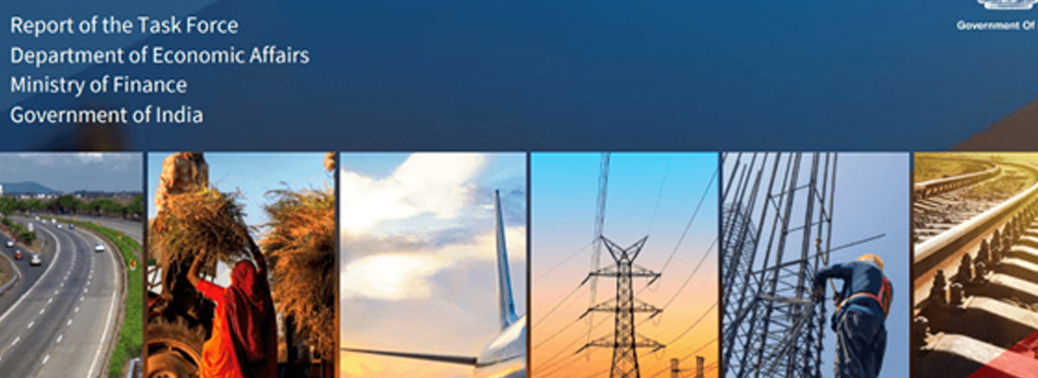
Why in News?
- The task force headed by Atanu Chakraborty on National Infrastructure Pipeline (NIP) submitted its final report to the Finance Minister recently.
- The summary report for, National Infrastructure Pipeline (NIP), 2020-25 was released by the finance minister in the month of December,2019.
Highlights of the Report:
- The final report has revised up NIP from earlier Rs 100 lakh crore in light of additional data provided by central ministries/state governments since the release of summary NIP report.
- The taskforce has forecast an investment need of ₹111 lakh crore over the next five years (2020-2025) to build infrastructure projects and drive economic growth.
- Bulk Share: Energy, roads, railways and urban projects are estimated to account for the bulk of projects (around 70%).
Various Measures Suggested by the Report:
- Aggressive Push towards Asset Sales
- Monetisation of Infrastructure Assets
- Setting up of Development Finance Institutions
- Strengthening the Municipal Bond MARKET
Various Committees need to be set up (Recommended in the Report):
- The task force has also recommended set up of three committees:
- Timely Execution: Panel to monitor NIP progress and eliminate delays.
- Follow Up: Steering committee in each infrastructure ministry for following up implementation
- Raising Financial Resources: Committee in the Department of Economic Affairs for raising financial resources for the NIP.
About National Infrastructure Pipeline:
- The task force was set up after the Prime Minister, in his Independence Day speech of 2019, promised to roll out an infrastructure push worth ₹100 trillion over five years to make India a $5 trillion economy.
- NIP will enable a forward outlook on infrastructure projects which will create jobs, improve ease of living, and provide equitable access to infrastructure for all, thereby making growth more inclusive.
- NIP includes economic and Social Infrastructure Projects.
- It also includes both greenfield and Brownfield Projects.
- It will help in stepping-up annual infrastructure investment to achieve the Gross Domestic Product (GDP) of $5 trillion by 2024-25.
- The Centre and states are expected to have almost equal share in implementing NIP, while the private sector contribution is expected to be around 21%.
- Out of the total expected capital expenditure of Rs 111 lakh crore
- Projects worth Rs 44 lakh crore (40 % of NIP) are under implementation.
- Projects worth Rs 33 lakh crore (30 % of NIP) are at conceptual stage.
- Projects worth Rs 22 lakh crore (20 % of NIP) are under development.
PM LAUNCHES SWAMITVA YOJANA ON PANCHAYATI RAJ DIWAS
27, Apr 2020

Why in News?
- On Panchayati Raj Diwas (April 24th), the Prime Minister of India launched ‘Swamitva Yojana’ or Ownership Scheme to map residential land ownership in the Rural Sector using Modern Technology like the use of drones.
About Swamitva Yojana:
- The scheme is piloted by the Panchayati Raj ministry that aims to revolutionise property record maintenance in India.
- The residential land in villages will be measured using drones to create a non-disputable record.
- Property card for every property in the village will be prepared by states using accurate measurements delivered by drone-mapping. These cards will be given to property owners and will be Recognised by the Land Revenue Records Department.
What would be the Benefits of the Scheme?
- The delivery of property rights through an official document will enable villagers to access bank finance using their property as collateral.
- The property records for a village will also be maintained at the Panchayat level, allowing for the collection of associated taxes from the owners. The money generated from these local taxes will be used to build rural infrastructure and facilities.
- Freeing the residential properties including land of title disputes and the creation of an official record is likely to result in appreciation in the market value of the properties.
- The accurate property records can be used for facilitating tax collection, new building and structure plan, issuing of permits and for thwarting attempts at Property Grabbing.
What is the Significance of the Scheme?
- The need for this Yojana was felt since several villagers in the rural areas don’t have papers proving ownership of their land.
- In most states, survey and measurement of the populated areas in the villages has not been done for the purpose of attestation/verification of properties.
- The new scheme is likely to become a tool for empowerment and entitlement, reducing social strife on account of discord over properties.
About Panchayati Raj:
- After the Constitution came into force, Article 40 made a mention of Panchayat and Article 246 empowered the state legislature to legislate with respect to any subject relating to local self-government.
- Panchayati Raj Institution (PRI) was constitutionalized through the 73rd Constitutional Amendment Act, 1992 to build democracy at the grass roots level and was entrusted with the task of rural development in the country.
- PRI is a system of rural local self-government in India. Local Self Government is the management of local affairs by such local bodies who have been elected by the local people.
About the 73rd constitutional Amendment:
- The 73rdConstitutional Amendment added Part IX titled “The Panchayats” to the Constitution.
- Basic unit of democratic system-Gram Sabhas (villages) comprising all the adult members registered as voters.
- Three-tier system of panchayats at village, intermediate block/taluk/mandal and district levels except in States with population is below 20 lakhs (Article 243B).
- Seats at all levels to be filled by direct elections Article 243C (2).
- Reservation of Seats:
- Seats reserved for Scheduled Castes (SCs) and Scheduled Tribes (STs) and the chairpersons of the Panchayats at all levels also shall be reserved for SCs and STs in proportion to their population.
- One-third of the total number of seats to be reserved for women.
- One-third offices of chairpersons at all levels reserved for women (Article 243D).
- Uniform Five Year Term and elections to constitute new bodies to be completed before the expiry of the term.
- In the event of dissolution, elections compulsorily within six months (Article 243E).
- Independent Election Commission in each State for superintendence, direction and control of the electoral rolls (Article 243K).
- Panchayats have been authorised to prepare plans for economic development and social justice in respect of subjects illustrated in Eleventh Schedule (Article 243G).
- Source of Revenue (Article 243H):State legislature may authorise the Panchayats with
- Budgetary allocation from State Revenue.
- Share of revenue of certain taxes.
- Collection and retention of the revenue it raises.
- Establish a Finance Commission in each State to determine the principles on the basis of which adequate financial resources would be ensured for panchayats and municipalities (Article 243I).
- The following areas have been exempted from the operation of the Act because of the socio-cultural and administrative considerations:
- Scheduled areas listed under the Schedule V in the states of Andhra Pradesh, Bihar, Gujarat, Himachal Pradesh, Madhya Pradesh, Maharashtra, Orissa and Rajasthan.
- The states of Nagaland, Meghalaya and Mizoram.
- The hill areas of the district of Darjeeling in the state of West Bengal for which Darjeeling Gorkha Hill Council exists.
- However, an Act called the Provisions of Panchayats (Extension to the Scheduled Areas) Act, 1996 passed by the Government of India for the mentioned scheduled areas.
OPERATION TWIST
27, Apr 2020
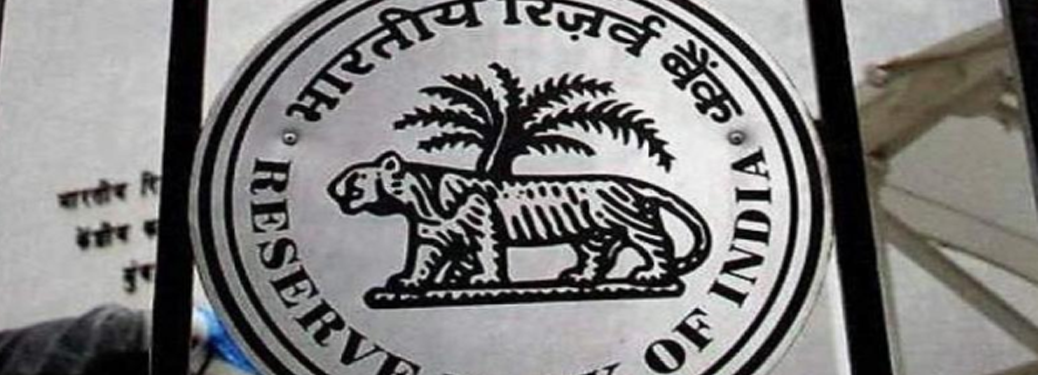
Why in News?
- The Reserve bank of India has decided to bring back its bond swapping programmed billed as India’s Operation Twist with an aim to help monetary transmission. The RBI said that it will conduct purchase and sale of government securities under open market operations (OMO) for Rs10,000 crore each on 27 April.
Operation Twist:
- Operation Twist is the name given to a US Federal Reserve monetary policy operation, which involves the purchase and sale of Government Securities to boost the economy by bringing down long-term Interest Rates.
- Operation Twist normally leads to lower longer-term yields, which will help boost the economy by making loans less expensive, while saving becomes less desirable because it doesn’t pay as much Interest.
Functioning of Operation Twist by RBI:
- This operation involves buying and selling government securities simultaneously in order to bring down long-term interest rates and bolster short-term rates.
- There is an inverse relationship between the bond prices and their yields. As the central bank buys long-term securities (bonds), their demand rise which in turn pushes up their prices.
- However, the bond yield comes down with an increase in prices. Yield is the return an investor gets on his (bond) holding/investment.
- The interest rate in an economy is determined by yield. Thus, lower long-term interest rates mean people can avail long-term loans (such as buying houses, cars or financing projects) at lower rates.
- This also results in a dip in the expected returns from long-term savings which tilts the balance from saving towards spending. Hence, cheaper retail loans can help encourage consumption spending which is the largest GDP component in the Economy.
COMMODITY MARKETS OUTLOOK
25, Apr 2020
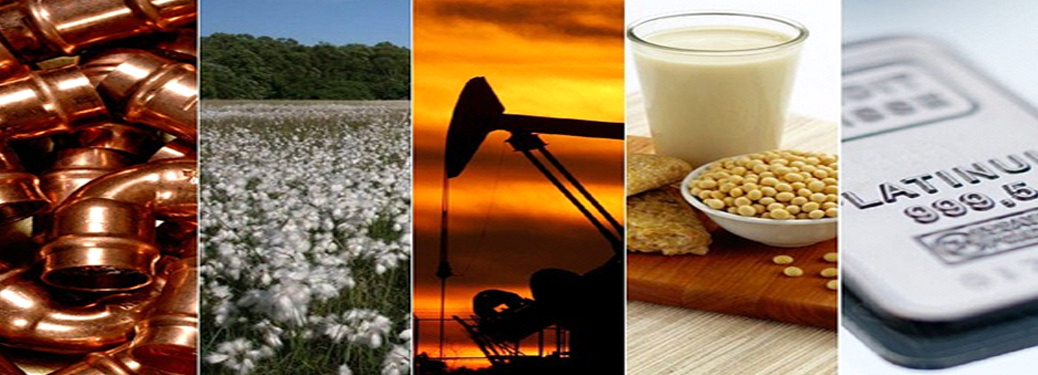
Why in News:
- Recently, the World Bank’s has released Commodity Markets Outlook.
About Commodity Markets Outlook
- It provides market analysis for major commodity groups – energy, metals, agriculture, precious metals, and fertilizers.
- The Report Forecasts Prices for 46 Key Commodities, Including Oil.
Highlights
- Energy and metals commodities:They are the most affected by the sudden stop to economic activity and the serious global slowdown that is anticipated. Commodities associated with transportation, including oil, have experienced the steepest declines.
- Agricultural prices: They are likely to stay broadly stable in 2020 because of relatively stable demand and all-time high levels of staple production and stock. However, supply chain disruptions and government steps to restrict exports or stockpile commodities raise concerns that food security may be at risk in places.
- Gold prices:They were up 6.9% in the last quarter (January- March,2020) – its sixth consecutive quarterly rise. The strong investor demand propped gold up despite weak jewelry demand in India and China.
- Oil Prices:These are expected to average at $35 per barrel in 2020. The decline in crude oil prices has been exacerbated by uncertainty around production agreements among the Organization of the Petroleum Exporting Countries (OPEC) and other oil producers.
- Importers and Exporters:They are likely to see some long-term shifts in their markets due to the pandemic. These include Increasing transport costs due to enhanced border checks and thus impact on supply chains and substituting for imports with domestic goods.
- The Changing consumer behaviour, such as, people may choose to work remotely, travel less, and this could impact permanent drops in demand for oil, favourably impacting the accounts for oil importers.
- This leads to reduction in emissions of the harmful gases caused by the restrictions may also increase public pressure for greener transport and lowered fossil fuel use.
World Bank:
- The Bretton Woods Conference held in 1944, created the International Bank for Reconstruction and Development (IBRD) along with the International Monetary Fund (IMF).
- The IBRD later became the World Bank.
- The World Bank Group is a unique global partnership of five institutions working for sustainable solutions that reduce poverty and build shared prosperity in developing countries.
- It has 189 Member Countries.
Few Important Reports Released by the World Bank are:
- Ease of Doing Business
- Human Capital Index and
- World Development Report
The Development Institutions of the World Bank are:
- International Bank for Reconstruction and Development (IBRD)
- International Development Association (IDA)
- International Finance Corporation (IFC)
- Multilateral Guarantee Agency (MIGA)
- International Centre for the Settlement of Investment Disputes (ICSID)
PAYMENT OF MGNREGS IN FOODGRAINS
24, Apr 2020
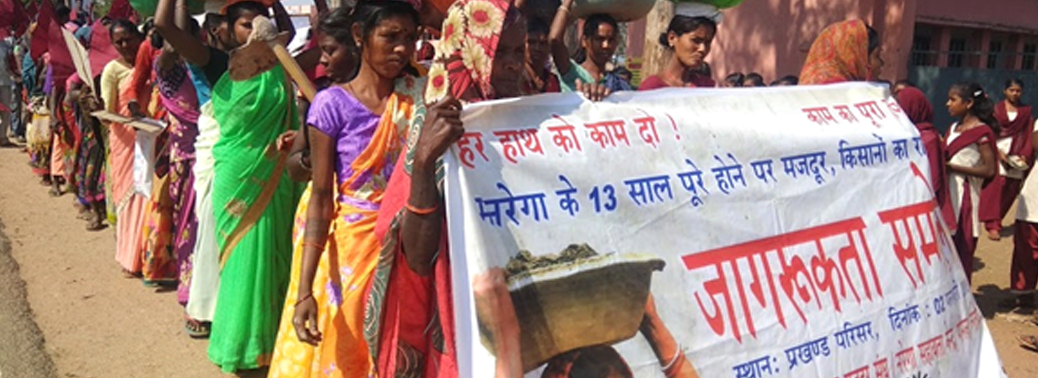
Why in News?
- Chhattisgarh Chief Minister Bhupesh Baghel in a letter to Union Rural Development Minister Narendra Singh Tomar has asked the Centre to allow payment of the MGNREGA wages in the form of Foodgrains.
What is the reason for Chhattisgarh’s demand?
- The Chief Minister proposed that handing the workers foodgrains directly is better due to the lockdown and the continuing scare of the COVID-19.
- “Once we credit the MGNREGA wages, the worker will have to go to the banks to withdraw the money. This would not only be a bother but also could jeopardise social distancing norms.”
- Chhattisgarh does not have many bank branches and faces the problem of Internet connectivity in Naxal-affected areas. “Due to this, there are often problems like link failure and workers have to contact the branch many times to withdraw the amount,” he wrote in his letter.
What is the Concern?
- There are many concerns about making payments through foodgrains like at what rate the grains would be charged. Will the government make the payments based on the PDS or the FCI rates.
- The other concern is that the pay-outs during the pandemic should not exhaust the 100-day entitlement.
- These payments via food grains should not eat into the 100-day entitlement per family. Because they will need employment even after this pandemic subsides.
- If accessibility to banks is a problem, then the government must make timely cash payments in a public place.
About MGNREGA:
- The scheme was introduced as a social measure that guarantees “the right to work”.
- The key tenet of this social measure and labour law is that the local government will have to legally provide at least 100 days of wage employment in rural India to enhance their quality of life.
Key Objectives of the Scheme:
- Generation of paid rural employment of not less than 100 days for each worker who volunteers for unskilled labour.
- Proactively ensuring social inclusion by strengthening livelihood base of rural poor.
- Creation of durable assets in rural areas such as wells, ponds, roads and canals.
- Reduce urban migration from rural areas.
- Create rural infrastructure by using untapped rural labour.
Eligibility criteria for receiving the benefits under MGNREGA scheme:
- Must be Citizen of India to seek NREGA benefits.
- Job seeker has completed 18 years of age at the time of application.
- The applicant must be part of a local household (i.e. application must be made with local Gram Panchayat).
- Applicant must volunteer for unskilled labour.
What are the other Key Facts Related to the Scheme?
- The Ministry of Rural Development (MRD), Government of India is monitoring the entire implementation of this scheme in association with state governments.
- Individual beneficiary oriented works can be taken up on the cards of Scheduled Castes and Scheduled Tribes, small or marginal farmers or beneficiaries of land reforms or beneficiaries under the Indira Awaas Yojana of the Government of India.
- Within 15 days of submitting the application or from the day work is demanded, wage employment will be provided to the applicant.
- Right to get unemployment allowance in case employment is not provided within fifteen days of submitting the application or from the date when work is sought.
- Social Audit of MGNREGA works is mandatory, which lends to accountability and transparency.
- The Gram Sabha is the principal forum for wage seekers to raise their voices and make demands.
- It is the Gram Sabha and the Gram Panchayat which approves the shelf of works under MGNREGA and fixes their priority.
What is the Role of Gram Sabha?
- It determines the order of priority of works in the meetings of the Gram Sabha keeping in view potential of the local area, its needs, and local resources.
- Monitor the execution of works within the GP.
What are the Roles of Gram Panchayat?
- Receiving applications for registration
- Verifying registration applications
- Registering households
- Issuing Job Cards (JCs)
- Receiving applications for work
- Issuing dated receipts for these applications for work
- Allotting work within fifteen days of submitting the application or from the date when work is sought in the case of an advance application.
- Identification and planning of works, developing shelf of projects including determination of the order of their priority.
What are the Responsibilities of State Government in MGNREGA?
- Frame Rules on matters pertaining to State responsibilities under Section 32 of the Act and to Develop and notify the Rural Employment Guarantee Scheme for the State.
- Set up the State Employment Guarantee Council (SEGC).
- Set up a State level MGNREGA implementation agency/ mission with adequate number of high calibre professionals.
- Set up a State level MGNREGA social audit agency/directorate with adequate number of people with knowledge on MGNREGA processes and demonstrated commitment to social audit.
- Establish and operate a State Employment Guarantee Fund (SEGF).
OIL PRICE FELL BELOW ZERO
23, Apr 2020

Context:
- Recently, the oil prices of West Texas Intermediate (WTI) fell to minus $40.32 a barrel in interlay trade in New York (the USA). It has the best quality of crude oil in the world.
- It is the lowest crude oil price ever recorded below the zero mark while the previous lowest was recorded immediately after World War II (WWII).
Oil Pricing Around the World:
- The Organization of the Petroleum Exporting Countries (OPEC) used to work as a cartel and fix prices in a favourable band. It is led by Saudi Arabia, which is the largest exporter of crude oil in the world (single-handedly exporting 10% of the global demand).
- It could bring down prices by increasing oil production and raise prices by cutting production.The global oil pricing mainly depends upon the partnership between the global oil exporters instead of well-functioning competition.
- Cutting oil production is a difficult decision, because restarting it is immensely costly and complicated. If a country cuts production, it risks losing market share if other countries do not follow the suit.
Causes for the Oil Price Fall:
- The Crude oil prices were already falling before the global lockdown due to the higher supply and lower demand.
- The price was close to $60 a barrel at the start of 2020 and, by March-end, they were closer to $20 a barrel. The Problems arose when Saudi Arabia and Russia disagreed over the production cuts, required to keep prices stable.
- Likewise, Saudi Arabia led oil-exporting countries started undercutting each other on price while producing the same quantities of oil.
- The global spread of Covid-19 made it even worse as it sharply reduced the economic activity and the oil-demand, which made the Oil-exporting countries to cut production by 10 million barrels a day (the highest production cuts) and yet the demand for oil was reducing even further.
- The supply demand mismatch resulted in exhausted storage capacities. The oil prices started falling steeply because the May contracts for WTI were due to expire on 21st April, 2020 which posed huge challenges for both the oil producers and the consumers (contractors/buyers).
- The Producers started selling the oil at unbelievably low prices because shutting production would have been costlier to restart when compared to the marginal loss on May sales.The Consumers were facing the problem of storage. There is no space to store the oil even if they decided to buy and take the delivery.
- Accepting the oil delivery, paying for the transportation and storage would have been costlier than the hit on contract price.
- For both the holders of the delivery contract and the oil producers, it was less costly to pay $40 a barrel and get rid of the oil instead of storing it (consumers/buyers) or stopping production (producers). So this led to the negative WTI oil contract prices.
Impact of Oil pricing in India:
- It does not have any direct impact on India because Indian crude oil basket does not comprise WTI and it only has Brent and oil from some of the Gulf countries.
- But, the weakness in WTI reflects on the falling prices of Indian basket as well because oil is traded globally and has indirect impacts.
- The fall of oil pricing will benefit India in two ways:
- 1.If the government passes on the lower prices to consumers, then individual consumption will be boosted whenever the economic recovery starts in India.
- 2.If both, central and the state, governments decide to levy higher taxes on oil, it can boost Government Revenues.
Way Ahead:
- It was the WTI price for May in the US markets that went so low. Crude oil prices at other places fell but not too much. The prices for June and the coming months are pegged between $20 and $35 a barrel.The Investment budgets of exploration and production companies are expected to drop because of the low shale oil prices.
- Normally, this should force oil exporting countries to cut back production and negate the excess supply, restoring balance in the oil markets but the possibility of recent events from happening again cannot be ruled out.Eventually, it would be the demand-supply mismatch (adjusted for how much can be stored away) that will decide the fate of oil prices.
INDIAN TRADE CURBS AGAINST WTO PRINCIPLES, SAYS CHINA
21, Apr 2020
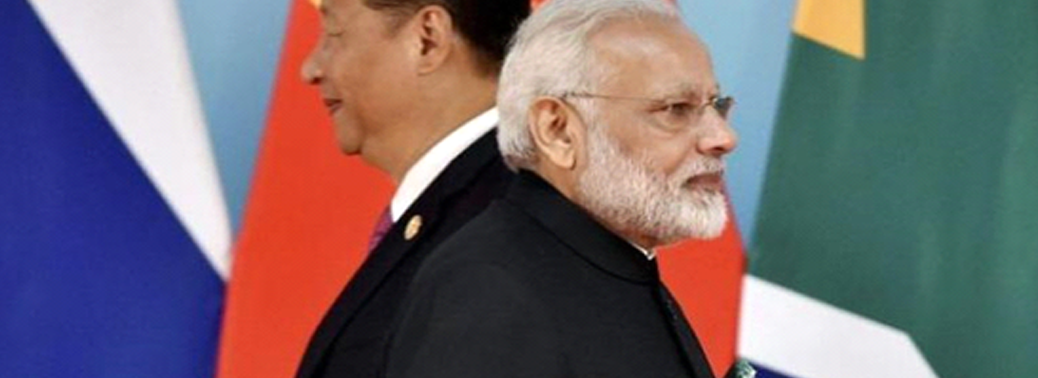
Why in News?
- China has recently stated that India’s recently adopted policy to curb opportunistic takeovers of domestic companies goes against the principles of the World Trade Organisation (WTO).
What is the Issue?
- The Government has amended certain sections of the FDI policy for curbing opportunistic takeovers/acquisitions of Indian companies due to the current COVID-19 pandemic.
- While India shares a land border with Pakistan, Bangladesh, Myanmar, Nepal, Bhutan, China and Afghanistan, the move appears directed mostly at China.
What were the Changes Introduced?
- All FDI proposals from countries sharing border with India will be under the government approval route.
- The so-called automatic route, under which the central bank simply had to be informed after money was invested, has been blocked in such cases.
- Companies whose beneficial ownership also lies in such countries will have to undergo government scrutiny for any change in Foreign Holding.
How was the FDI Policy for Neighbours so far?
- A non-resident entity can invest in India, subject to the FDI Policy except in those sectors/activities which are prohibited.
- However, a citizen of Bangladesh or an entity incorporated in Bangladesh can invest only under the Government route.
- Further, a citizen of Pakistan or an entity incorporated in Pakistan can invest, only under the Government route, in sectors/activities other than defence, space, atomic energy and sectors/activities prohibited for foreign investment.
What Would be the Impact?
- The amended policy makes every type of investment by Chinese investors subject to government approval. Such a blanket application could create unintended problems.
- It does not distinguish between Greenfield and Brownfield investments. It may pose obstacles to Greenfield investments where Chinese investors bring fresh capital to establish new factories and generate employment in India.
- Greenfield investments include building new production facilities in a foreign country. It refers to investment in a manufacturing, office, or other physical company-related structure or group of structures in an area where no previous facilities exist.
- Brownfield investments are those used for purchasing or leasing existing production facilities to launch a new production activity.
- The new policy does not distinguish between the different types of investors, such as industry players, financial institutions, or venture capital funds. The restrictions on Venture capital funds may impact the prospects of many start-ups in the Indian market.
Why Chinese investment in India is Targeted?
- China’s footprint in the Indian business space has been expanding rapidly, especially since 2014.
- The Chinese investment in India in 2014 stood at $1.6 billion. This involved mostly investment from Chinese state-owned players in the infrastructure space in India.
- By 2017, the total investment had increased five-fold to at least $8 billion accompanied by a marked shift from a state-driven to market-driven approach.
- Total current and planned Chinese investment in India has crossed $26 billion in March 2020.
What is China’s Point on WTO Trade Violation?
- The additional barriers set by Indian side for investors from specific countries violate WTO’s principle of non-discrimination, and go against the general trend of liberalisation and facilitation of trade and investment.
- India also do not conform to the consensus of the G20 leaders and Trade Ministers to realise a free, fair, non-discriminatory, transparent, predictable and stable trade and investment environment, and to keep our markets open.
WAYS AND MEANS ADVANCES
20, Apr 2020

Why in News?
- The Reserve Bank of India (RBI) has announced a 60% increase in the Ways and Means Advances (WMA) limit of state governments over and above the level as on March 31.
What is the Significance of this Move?
- It was done with a view to enabling them “to undertake COVID-19 containment and mitigation efforts” and “to better plan their market borrowings”.
- The increased limit comes at a time when government expenditure is expected to rise as it battles the fallout of a spreading Coronavirus.
- The availability of these funds will give government some room to undertake short term expenditure over and above its long term market borrowings.
What are Ways and Means Advances?
- The WMA scheme for the Central Government was introduced on April 1, 1997, after putting an end to the four-decade old system of adhoc (temporary) Treasury Bills to finance the Central Government deficit.
- They are temporary loan facilities provided by RBI to the government to enable it to meet temporary mismatches between revenue and expenditure.
- The government makes an interest payment to the central bank when it borrows money.
- The rate of interest is the same as the repo rate, while the tenure is three months.
- The limits for WMA are mutually decided by the RBI and the Government of India.
- They aren’t a source of finance per se. Section 17(5) of the RBI Act, 1934 authorises the central bank to lend to the Centre and state governments subject to their being repayable “not later than three months from the date of the making of the advance”.
What if the Government needs Extra Money for Extra Time?
- When the WMA limit is crossed the government takes recourse to overdrafts, which are not allowed beyond 10 consecutive working days.
- The interest rate on overdrafts would be 2 percent more than the repo rate.
Types of WMA:
- There are two types of Ways and Means Advances — normal and special.
- Special WMA or Special Drawing Facility is provided against the collateral of the government securities held by the state. After the state has exhausted the limit of SDF, it gets normal WMA. The interest rate for SDF is one percentage point less than the repo rate.
- The number of loans under normal WMA is based on a three-year average of actual revenue and capital expenditure of the state.
What are the existing WMA limits and Overdraft Conditions?
- For the Centre, the WMA limit during the first half of 2020-21 (April-September) has been fixed at Rs 120,000 crore. This is 60% higher than the Rs 75,000 crore limits for the same period of 2019-20. The limit for the second half of the last fiscal (October-March) was Rs 35,000 crore.
- For the states, the aggregate WMA limit was Rs 32,225 crore till March 31, 2020. On April 1, the RBI announced a 30% hike in this limit, which has now been enhanced to 60%, taking it to Rs 51,560 crore. The higher limit will be valid till September 30.
- The central bank, on April 7, also extended the period for which a state can be in overdraft from 14 to 21 consecutive working days, and from 36 to 50 working days during a quarter.
SPECIAL DRAWING RIGHTS (SDR)
20, Apr 2020
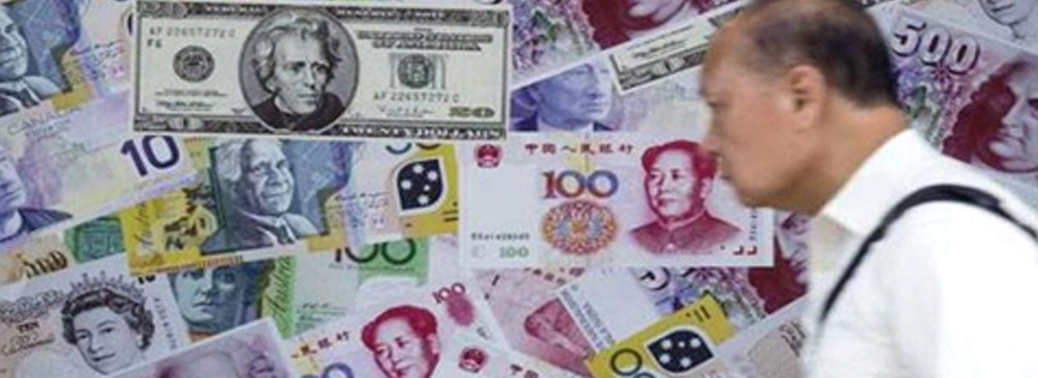
Why in News?
- India is not supporting a general allocation of new Special Drawing Rights (SDR) by the International Monetary Fund (IMF) because it feels it might not be effective in easing COVID-19-driven financial pressures.
What is a Special Drawing Right (SDR)?
- The SDR is an international reserve asset, created by the IMF in 1969 to supplement its member countries’ official reserves.
- The value of the SDR is based on a basket of five currencies—the U.S. dollar, the euro, the Chinese renminbi, the Japanese yen, and the British pound sterling.
- So far SDR 204.2 billion (equivalent to about US$281 billion) have been allocated to members, including SDR 182.6 billion allocated in 2009 in the wake of the global financial crisis.
What is the Reason Behind India’s Stand?
- The new SDR allocation was supposed to provide all 189 members with new foreign exchange reserves with no conditions.
- Such a major liquidity injection could produce potentially costly side-effects if countries used the funds for “extraneous” purposes.
What is the role of the SDR?
- The SDR was created as a supplementary international reserve asset in the context of the Bretton Woods fixed exchange rate system.
- The SDR serves as the unit of account of the IMF and some other international organizations.
- The SDR is neither a currency nor a claim on the IMF. Rather, it is a potential claim on the freely usable currencies of IMF members.
- SDRs can be exchanged for these currencies.
Do SDRs are Reviewed Periodically?
- Yes, the SDR basket is reviewed every five years or earlier if warranted, to ensure that the basket reflects the relative importance of currencies in the world’s trading and financial systems.
- The reviews cover the key elements of the SDR method of valuation, including criteria and indicators used in selecting SDR basket currencies and the initial currency weights used in determining the amounts (number of units) of each currency in the SDR basket.
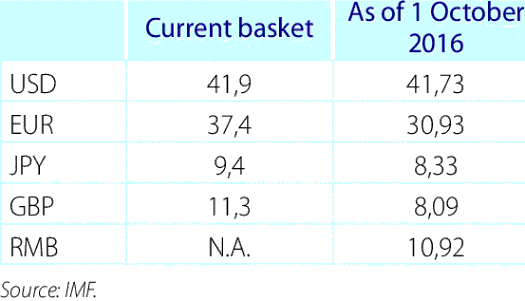
NBFC’S GETS 50,000 CRORE BOOSTER
18, Apr 2020
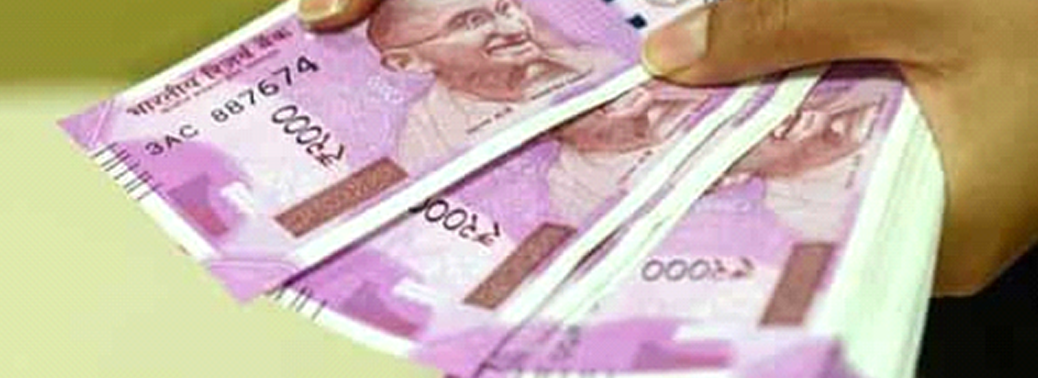
Why in News?
- The Reserve Bank of India (RBI) has announced a host of measures to provide liquidity support to non-banking financial companies (NBFCs), apart from giving them certain benefits for loans extended to the commercial Real Estate Sector.
What Measures did RBI took?
- Banks have to invest the funds availed under targeted long-term repo operation (TLTRO), in investment grade bonds, commercial paper, and non-convertible debentures of NBFCs. Small and mid-sized NBFCs and micro-finance institutions (MFIs) should receive at least 50% of these funds.
- Banks can avail Rs. 50,000 crore through the targeted long-term repo operation. The first auction of TLTRO for Rs. 25,000 crore will be conducted on April 23.
- The RBI has also decided to provide special refinance facility of Rs. 50,000 crore to NABARD, SIDBI and NHB to enable them to meet sectoral credit needs.
- The regulator has also allowed non-banking institutions to extend the date for commencement for commercial operations (DCCO) by an additional one year, without treating the same as restructuring, if the project is delayed due to reasons beyond the control of the promoter.
What are the NBFC’s?
- A Non-Banking Financial Company (NBFC) is a company registered under the Companies Act, 1956 engaged in the business of loans and advances, acquisition of shares/stocks/bonds/debentures/securities issued by Government or local authority or other marketable securities of a like nature.
- NBFC does not include any institution whose principal business is that of agriculture activity, industrial activity, purchase or sale of any goods (other than securities) or providing any services and sale/purchase/construction of immovable property.
- A non-banking institution which is a company and has principal business of receiving deposits under any scheme or arrangement in one lump sum or in installments by way of contributions or in any other manner, is also a non-banking financial company (Residuary non-banking company).
How they are Differed from other Commercial Banks?
- NBFCs lend and make investments and hence their activities are akin to that of banks; however there are a few differences as given below:
- 1.NBFC cannot Accept Demand Deposits;
- 2.NBFCs do not form part of the payment and settlement system and cannot issue cheques drawn on itself;
- 3.Deposit insurance facility of Deposit Insurance and Credit Guarantee Corporation is not available to depositors of NBFCs, unlike in case of Banks.
SOVEREIGN GOLD BONDS
18, Apr 2020
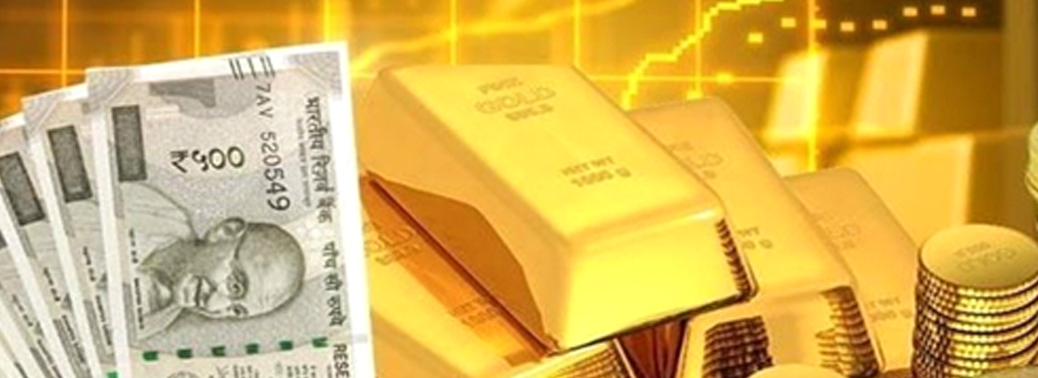
Why in News?
- Recently, Reserve Bank of India (RBI) has decided to issue Sovereign Gold Bonds (SGBs) in six instalments, from April 2020 to September 2020.
About Sovereign Gold Bonds:
- They are government securities denominated in grams of gold. They are substitutes for holding physical gold.
- Its objective is to reduce the demand for physical gold and shift a part of the domestic savings (used for the purchase of gold) into financial savings.
- The Investors have to pay the issue price in cash and the bonds will be redeemed (bought back by the issuer) in cash on maturity. Issue price is the price at which bonds are offered for sale when they first become available to the public.
- The investor gets a fixed rate of interest on the investment amount throughout the tenure of the fund.
- The government will pay an interest at the rate of 2.5% per annum. The interest is payable semi-annually.
- It has a tenure of eight years, with exit options are available from the fifth year.
- It will be restricted for sale to resident individuals, Hindu Undivided Families (HUFs), Trusts, Universities and Charitable Institutions.
- Its minimum Permissible Investment Unit is 1 Gram of Gold.
How to Buy this Bonds?
- It can be bought through designated scheduled commercial banks (except Small Finance Banks and Payment Banks), Stock Holding Corporation of India Limited, and designated post offices.
- We can also buy these bonds through National Stock Exchange of India Limited and Bombay Stock Exchange(BSE) Limited.
Advantages of the Gold Bond:
- It is advisable to invest in gold for portfolio diversification.
- It is considered one of the better ways of investing in gold as along with capital appreciation an investor gets a fixed rate of interest.
- It is tax efficient as no capital gains is charged in case of redemption on maturity.
- It a good way to ensure an investment that does not need physical storage of Gold.
Disadvantages of the Gold Bonds
- In long term investment unlike physical gold which can be sold immediately.
- It is listed on exchange but the trading volumes are not high, therefore it will be difficult to exit before Maturity.
IMF PROJECTS 1.9% GROWTH FOR INDIA IN 2020
16, Apr 2020
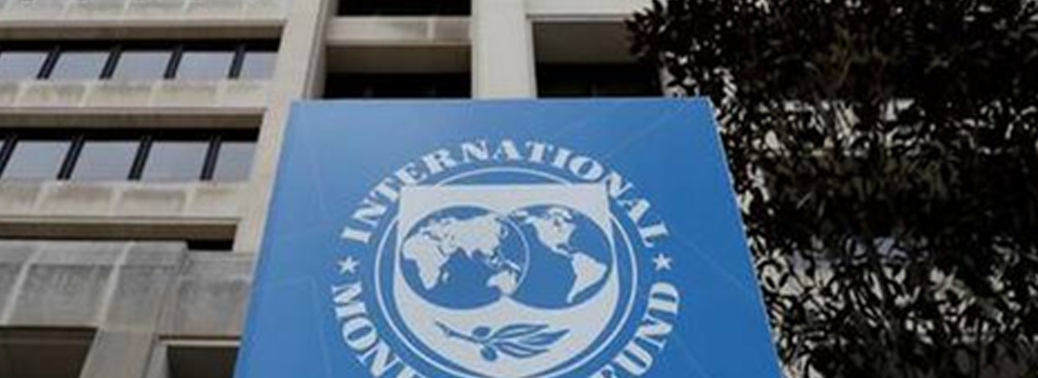
Why in News?
- The COVID-19 pandemic is expected to cause a -3% change in global output in 2020, much worse than the 2008-09 financial crises, as per the International Monetary Fund’s (IMF) World Economic Outlook (WEO).
Highlight:
- A rare disaster, a coronavirus pandemic, has resulted in a tragically large number of Human Lives being lost.
- As countries implement necessary quarantines and social distancing practices to contain the pandemic, the world has been put in a Great Lockdown.
- The magnitude and speed of collapse in activity that has followed is unlike anything experienced in our lifetimes.

World Economic Outlook (WEO), April 2020:
- India’s growth is expected to dip to 1.9% in 2020 and rebound to 7.4% in 2021.
- Assuming that the pandemic fades in the second half of 2020, the world economy is projected to grow at 5.8% in 2020 as economic activity normalizes, aided by policy.
- If the pandemic does not recede in the second half of 2020, global GDP would fall an additional 3% in 2020 and if the pandemic continues into 2021, global GDP may fall by an additional 8% relative to the baseline scenario.
- The cumulative loss to global GDP over 2020 and 2021 from the pandemic crisis could be around 9 trillion dollars, greater than the economies of Japan and Germany, combined.
Emerging Asia:
- Emerging Asia is projected to be the only region that grows in 2020, at a rate of 1.0%.
- Apart from India’s modest 1.9% in 2020, Indonesia is expected to grow at 0.5%, while others in the region experience contractions.
Factors of Economic Impact of the Disease:
- The economic impact of the disease depends on a number of factors and their unpredictable interaction, including the pandemic’s pathway, the intensity and effectiveness of containment efforts, supply chain disruptions, spending pattern changes, behavioural changes (for example around people visiting shopping malls and public transport use), significant tightening of global financial market conditions and so forth.
Way Forward:
- The IMF called on policymakers to make targeted fiscal, monetary and financial sector interventions to support impacted households and businesses.
- Fiscal measures should be two-fold, cushioning the impact on the most-exposed households and businesses, and reducing firm closures, i.e., preserving economic relationships.
- Fiscal support will need scaling up, if activity does not pick up sufficiently once restrictions are lifted or if economic activity stoppages are persistent.
- Monetary stimulus by large central banks and liquidity facilities to reduce systemic stress would be required to limit the shock, positioning the economy for a better recovery.
- Further Strong multilateral cooperation is essential to overcome the effects of the pandemic, including to help financially constrained countries facing twin health and funding shocks, and for channelling aid to countries with weak healthcare systems.
HELICOPTER MONEY
15, Apr 2020

Why in News?
Telangana Chief Minister K. Chandrashekar Rao has suggested RBI to adopt the concept of Helicopter Money to help state governments tide over the current crisis and kick-start economic activity in India.
What is Helicopter Money?
- This is an unconventional monetary policy tool aimed at bringing a flagging economy back on track.
- It involves printing large sums of money and distributing it to the public. American economist Milton Friedman coined this term.
Why it is Called So?
- It basically denotes a helicopter dropping money from the sky. Friedman used the term to signify “unexpectedly dumping money onto a struggling economy with the intention to shock it out of a deep slump.”
- Under such a policy, a central bank “directly increase the money supply and, via the government, distribute the new cash to the population with the aim of boosting demand and inflation.”
Why is Helicopter Money Needed Now?
- With the coronavirus-hit economy falling deeper and deeper into a chasm with each passing day, Telangana chief minister KC Rao has said helicopter money can help states comes out of this crisis.
- He asked for the release of 5% funds from GDP by way of quantitative easing (QE).
Is Helicopter Money the Same as Quantitative Easing?
- Quantitative easing also involves the use of printed money by central banks to buy government bonds. But not everyone views the money used in QE as helicopter money.
- It sure means printing money to monetise government deficits, but the government has to pay back for the assets that the central bank buys. It’s not the same as bond-buying by central banks “in which bank-owned assets are swapped for new central bank reserves.”
How will Helicopter Money Help Indian Economy?
- Simply put, Helicopter Money means extension of non-repayable money transfer from the central bank to the state and central governments, to infuse liquidity in the system.
- The policy aims at putting more money into the pockets of people to nudge them to spend more money and in turn pick-up economic activity in the country.
- The direct impact of Helicopter Money is rise in disposable incomes of the people, increase in money supply with an intention to boost demand and inflation in the economy.
RETAIL INFLATION
15, Apr 2020

Why in News?
- Recently, The Consumer Price Index (CPI) data has been released by the National Statistical Office (NSO), the retail inflation in March 2020 dropped to 5.91% due to decrease in demand and lowered food prices.
Highlights:
- Its rate was based on 66% of the usual price quotations as the nationwide lockdown to counter Covid-19 pandemic had led to suspension of fieldwork for price collection after March 19,2020.
- The inflation rate in March 2020 remained within the Reserve Bank of India’s (RBI’s) medium-term target of 4±2% for Consumer Price Index (CPI) inflation, which is due to suppressed demand, especially for non-essential items, as the lockdown was imposed towards the end of March,2020.
- The inflation rose to 6.59% from 6.36% in Fuel and Light segment February 2020. The Food inflation moderated to 8.76% from 10.81% in March 2020.The inflation of various items like vegetables, spices, pulses continue to be in double digits.
- Pressure is expected due to the shortages witnessed in different centres with mandi arrivals being affected due to lockdown.
- The inflation is expected to be brought down by low energy prices and subdued economic activity. However, the food price inflation of 8.7% will tend to increase.
- It is expected that the Reserve Bank of India (RBI) undertakes further repo rate cuts. Repo Rate is the rate at which the RBI lends money to commercial banks in the event of any shortfall of funds.
- When RBI increases the repo rate, this acts as a disincentive for banks to borrow from the central bank. This ultimately reduces the money supply in the economy and thus helps in Arresting Inflation.
- The RBI reduces the repo rate in the event of a fall in inflationary pressures. Ideally, a low repo rate should translate into low-cost loans for general masses.
Inflation:
- It refers to the rise in the prices of most goods and services of daily or common use, such as food, clothing, housing, recreation, transport, consumer staples, etc.
- It measures the average price change in a basket of commodities and services over time.
- It is indicative of the decrease in the purchasing power of a unit of a country’s currency. This could ultimately lead to a deceleration in economic growth.
- It is measured by the Ministry of Statistics and Programme Implementation.
- It is primarily measured by two main indices — WPI (Wholesale Price Index) and CPI (Consumer Price Index) which measure wholesale and retail-level price changes.
- The CPI has five sub-groups including food and beverages, fuel and light, housing and clothing, bedding and footwear.
About the National Statistical Office:
- It is the central statistical agency of the Government mandated under the Statistical Services Act 1980under the Ministry of Statistics and Programme Implementation.
- It is responsible for the development of arrangements for providing statistical information services to meet the needs of the Government and other users for information on which to base policy, planning, monitoring and management decisions.
- Its services include collecting, compiling and disseminating official statistical information.
- All business operations in NSO are done in compliance with international standards, procedures and best practices.
COVID-19: GLOBAL MARKETS AND ECONOMY
15, Apr 2020

Context:
- The COVID-19 pandemic has caused an unprecedented human and health crisis. The measures necessary to contain the virus have triggered an economic downturn. The latest Global Financial Stability Report shows that the financial system has already felt a dramatic impact, and a further intensification of the crisis could affect global financial stability.
- Volatility has spiked –
- The uncertainty about the economic impact of the pandemic, had increased the volatility in the market.
- With the spike in volatility, market liquidity has deteriorated significantly.
- The First Line of Defense –
- To preserve the stability of the global financial system and support the global economy, central banks across the globe have been the first line of defense.
- 1. First,they have significantly eased monetary policy by cutting policy rates.
- 2. Second,central banks have provided additional liquidity to the financial system, including through open market operations.
- 3. Third,a number of central banks have agreed to enhance the provision of U.S. dollar liquidity through swap line arrangements.
- 4. And finally, central banks have reactivated programs used during the global financial crisis, including to purchase riskier assets such as corporate bonds.
- By effectively stepping in as “buyers of last resort” in these markets and helping contain upward pressures on the cost of credit, central banks are ensuring that households and firms continue to have access to credit at an Affordable Price.
- The Vulnerability of Emerging Markets –
- As so often happens at times of financial distress, emerging markets risk bearing the heaviest burden.
- In fact, emerging markets have experienced the sharpest portfolio flow reversal on record (FPIs cashing out all they can) posing stark challenges to more vulnerable countries.
- The Spiralling Effect –
- Tougher & lasting containment measures = further tightening of global financial conditions = more severe and prolonged downturn.
- Such a tightening may, in turn, expose financial vulnerabilities that have built in recent years in the environment of extremely low interest rates. This would further exacerbate the COVID-19 shock.
- As firms become distressed and default rates climb higher, credit markets may come to a sudden stop.
- Looking Ahead –
- Central banks will remain crucial to safeguarding the stability of global financial markets and maintaining the flow of credit to the economy.
- But this crisis is not simply about liquidity.
- It is primarily about solvency—at a time when large segments of the global economy have come to a complete stop.
- As a result, both monetary and fiscal policy have a vital role to Play.
- The Troubled Path of India –
- The immediate economic and market impacts of the coronavirus have been on India’s financial markets as well as the rupee, which hit a new low.
- For firms laden with dollar-denominated debts, a continuous weakening of the rupee is likely to intensify their struggles to repay their obligations.
- Beyond the financial shocks, India has to urgently find a way to cushion the demand-side shocks induced by ongoing containment measures.
- Although the recent drop in oil prices offers some reprieve, it is inevitable that India will have to undertake more aggressive counter-cyclical fiscal measures at some stage to buffer against acute negative shocks arising from the spread of Covid-19.
- Together, monetary, fiscal, and financial policies should aim to cushion the impact of the COVID-19 shock and to ensure a steady, sustainable recovery once the pandemic is under control. Close, continuous international coordination will be essential to support vulnerable countries, to restore market confidence, and to contain Financial Stability Risks.
DEVELOPING COUNTRY STATUS IN WTO
14, Apr 2020
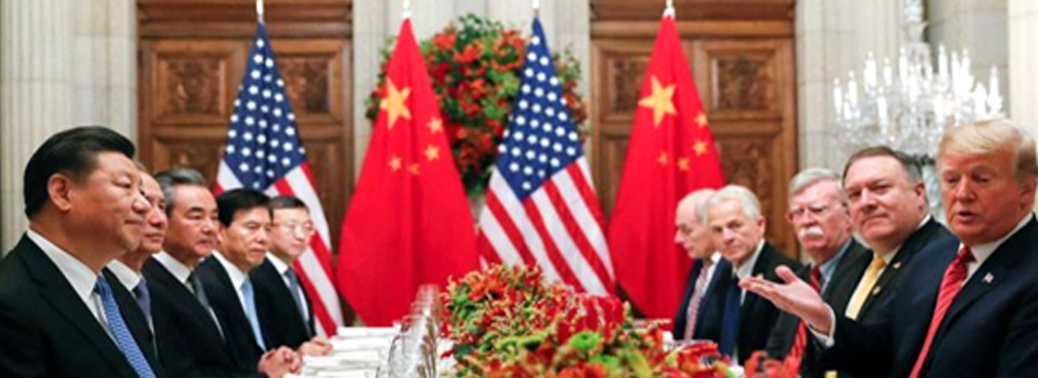
Why in News?
- US president has asked for changing the WTO rules for changing the developing country status of China.
China – a developing country or Developed Country?
- China became a WTO member in 2001. By 2011, China became the second-largest economy in GDP terms, the first largest merchandise exporter, the fourth largest commercial services exporter and the first destination for inward FDI among developing countries.
- So if China is forced to take on the duties of a developed country and forego the benefits of a developing country, the West could soon ask other developing countries that are ahead of China (at least in per capita terms) to do the same.
Who are the developing countries in the WTO?
- There are no WTO definitions of “developed”and “developing”
- Members announce for themselves whether they are “developed” or “developing” countries.
- However, other members can challenge the decision of a member to make use of provisions available to developing countries.
What are the advantages of “Developing Country” status?
- Developing country status in the WTO brings certain rights.
- Developing country status ensures special and differential treatment (S&DT)or provisions which allow them more time to implement agreements and commitments, include measures to increase trading opportunities, safeguard their trade interests, and support to build capacity to handle disputes and implement technical standards.
WTO Norms for Recognition of Developed, Developing and LDCs:
- Under the WTO system, generally, countries are designated as developed, developing, and least developed countries (LDCs).
- The uneven level of development between developed and developing countries in the WTO is a well-recognised fact.
- Article XVIII of the General Agreement on Tariffs and Trade (GATT) recognises that attaining the objectives of this agreement would require facilitating the progressive development of those countries that can only support low levels of development and are at the early stages of development.
- Accordingly, countries self-designate themselves as ‘developing country’ to take advantage of provisions like Article XVIII of GATT and other special and differential treatment (S&DT) provisions in the WTO agreements.
- These provisions are aimed at increasing trade opportunities for developing countries, ensuring longer transitional periods to comply with WTO obligations, and affording technical assistance to countries, among other things.
What are “Special and Differential Treatment” Provisions?
- Longer time periods for implementing Agreements and commitments,
- Measures to increase trading opportunities for developing countries,
- Provisions requiring all WTO members to safeguard the trade interests of developing countries,
- Support to help developing countries build the capacity to carry out WTO work, handle disputes, and implement technical standards, and
- Provisions related to least-developed country (LDC) Members.
- The concept of non-reciprocal preferential treatment for developing countries that when developed countries grant trade concessions to developing countries, they should not expect the developing countries to make matching offers in return.
Demands by Developed Countries:
- For some time now, developed countries, mainly the US, have been asking the WTO to end the benefits being given to developing countries.
- Nearly two-thirds of the members of the World Trade Organization (WTO) have been able to avail themselves of special treatment and to take on weaker commitments under the WTO framework by designating themselves as Developing Countries.
CORPORATE SOCIAL RESPONSIBILITY (CSR) EXPENDITURE
14, Apr 2020

Why in News?
- The Ministry of Commerce and Industry has clarified that the contributions to the Chief Minister’s Relief Fund or the State relief fund will not qualify as Corporate Social Responsibility (CSR) expenditure, while any donation to the PM CARES Fund will.
What are the Key Points?
- The Chief Minister’s Relief Fund or State Relief Fund for COVID-19 is not included in Schedule VII of the Companies Act, 2013, and therefore any contribution to such funds shall not qualify as admissible CSR expenditure.
- Schedule VII of the Companies Act, 2013 provides the list of activities that can be included in CSR.
- Some political parties criticised this saying it is discriminatory and goes against the constitutional principle of federalism.
- However, donations to the State Disaster ManagementAuthority to combat COVID-19 can be counted as admissible CSR expenditure.
What is Corporate Social Responsibility?
- The term “Corporate Social Responsibility” in general can be referred to as a corporate initiative to assess and take responsibility for the company’s effects on the environment and impact on social welfare.In India, the concept of CSR is governed by clause 135 of the Companies Act, 2013. India is the first country in the world to mandate CSR spending along with a framework to identify potential CSR activities.
- The CSR provisions within the Act is applicable to companies with an annual turnover of 1,000 crore and more, or a net worth of Rs. 500 crore and more, or a net profit of Rs. 5 crore and more.
- The Act requires companies to set up a CSR committee which shall recommend a Corporate Social Responsibility Policy to the Board of Directors and also monitor the same from time to time.
- The Act encourages companies to spend 2% of their average net profit in the previous three years on CSR activities.
- The indicative activities, which can be undertaken by a company under CSR, have been specified under Schedule VII of the Act. The activities include:
- Eradicating extreme hunger and poverty,
- Promotion of education, gender equality and empowering women,
- Combating Human Immunodeficiency Virus, Acquired Immune Deficiency Syndrome and other diseases,
- Ensuring environmental sustainability;
- Contribution to the Prime Minister’s National Relief Fund or any other fund set up by the Central Government for socio-economic development and relief and funds for the welfare of the Scheduled Castes, the Scheduled Tribes, other backward classes, minorities and women etc.
Strategic importance of Social Responsibility:
- A healthy business can only succeed in a healthy society. Thus, it is in the best interest of a company to produce only goods and services which strengthen the health of society
- If the company wants to succeed in the long term it needs to have the acceptance—or licence to operate—from social actors affected by the company’s’ operations.
PRADHAN MANTRI JAN AROGYA (PM-JAY)
14, Apr 2020

Context:
- Recently, the National Health Authority has launched an express empanelment process called Hospital Empanelment Module (HEM) Lite to bring a large number of private hospitals under Ayushman Bharat Pradhan Mantri Jan Arogya Yojana (AB PM-JAY).
Highlights:
- With the launch of express empanelment process, patients suffering from serious illnesses, such as cancer, cardiac issues and diabetes that require continuous treatment, will be able to continue getting inpatient services without the fear of contracting the Covid -19 infection.
- Hospitals can empanel themselves for a temporary period of 3 months through a simpler, user friendly online system available on the scheme’s website pmjay.gov.in.
- Using the HEM Lite process, the system has been built in a way to ensure that the rest of the process of approvals by concerned authorities is expeditious.
- The hospitals have the choice whether to provide regular treatment for serious illnesses such as cancer and cardiac illnesses under the scheme or convert themselves into covid-19 only hospitals providing dedicated testing and treatment to covid-19 patients.
- The government recently decided to bring testing and treatment of covid-19 under AB PM-JAY scheme.
About Pradhan Mantri Jan Arogya (PM-JAY):
- It offers a sum insured of Rs.5 lakhs per family for secondary care (which doesn’t involve a super specialist) as well as tertiary care (which does).
- It is an entitlement-based scheme that targets the beneficiaries as identified by latest Socio-Economic Caste Census (SECC) data. Once identified by the database, the beneficiary is considered insured and can walk into any empanelled hospital.
- The insurance cost is shared by the centre and the state mostly in the ratio of 60:40.
- Empanelled hospitals agree to the packaged rates under PM-JAY—there are about 1,400 packaged rates for various medical procedures under the scheme.
- It also has prescribed a daily limit for medical management.
Significance of PM_JAY:
- It will be cashless and largely paperless. The poor and vulnerable stand to benefit from the scheme.
- It will be an enabler of quality, affordability and accountability in the health system.
- Ayushman Bharat is expected to advance India’s pursuit of universal health coverage (UHC).
- This will ensure all people can access quality health services when and where they need them,without suffering financial hardship, which is also one of the WHO South-East Asia Region’s Flagship
- From the day PMJAY was launched, almost half of all eligible families are now covered for hospital
- Another impact of the PMJAY will be rationalisation of the cost of care in the private sector.The scheme will create lakhs of jobs for professionals and non-professionals — especially women.
About State Health Agency (SHA)
- It is the apex body of the State Government responsible for the implementation of AB PM-JAY in the State.It will sign an MoU with express empanelled hospital for three months only. It can continue with the empanelment on mutual agreement between hospital and SHA after this period, but only after the detailed empanelment process is followed i.e. hospital has filled the entire form and District Implementation Unit (DIU) and SHA have verified the details, etc.
- These packaged rates also mention the number of average days of hospitalization for a medical procedure and supporting documents that are needed.
- These rates are flexible, but once fixed hospitals can’t change it and under no circumstances can they charge the beneficiary.
- The National Health Agency has been constituted as an autonomous entity under the Society Registration Act, 1860 for effective implementation of PM-JAY in alliance with state governments.
Way Forward:
- There is a Need for real-time monitoring of implementation. This will allow problems to be detected early on, thereby enhancing accountability, as well as facilitating course corrections where necessary.
- Money must be spent wisely. The investment in frontline services is cost-effective. This must be backed up by effective and affordable hospital care. Special attention is needed to build confidence in and demand for the country’s primary care services.
INDUSTRIAL BODIES CLAIMS FOR A RELIEF PACKAGE
10, Apr 2020
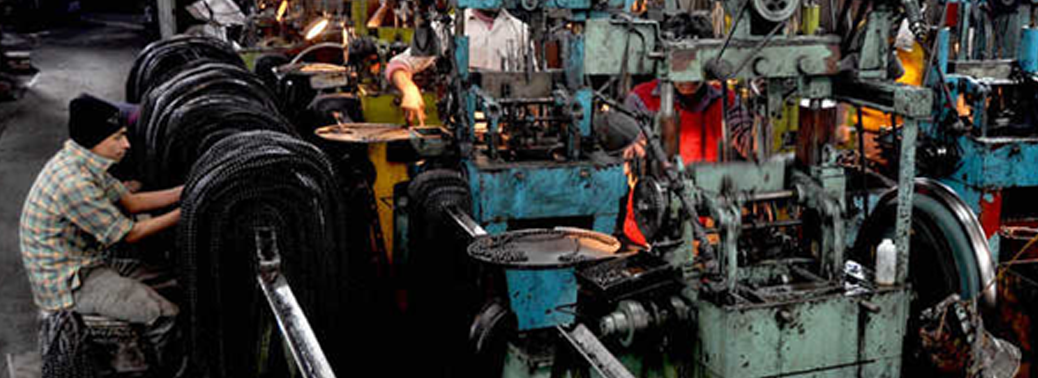
Why in News?
- The National Real Estate Development Council (NAREDCO) and the Associated Chambers of Commerce and Industry of India (ASSOCHAM) have sought 200 billion dollars from the government as a relief package to minimise the economic impact of COVID-19.
- The relief package demanded is around 10% of the nation’s Gross Domestic Product (GDP).
Demands of the Industrial Bodies:
- They have also called for a partial lifting of the lockdown on construction sites to reduce job losses.
- NAREDCO also called for suspending all cases under the National Company Law Tribunal (NCLT) for the next six months amid economic slowdown.
- The real estate sector accounts for 7% of the GDP and employs 11% of the country’s population.
About NAREDCO:
- NAREDCO is hailed as the apex national body for the real estate industry.
- National Real Estate Development Council (NAREDCO) was established as an autonomous self-regulatory body in 1998. It comes under the aegis of the Ministry of Housing and Urban Affairs, Govt. of India.
About ASSOCHAM:
- The Associated Chambers of Commerce and Industry of India is one of the highest trade associations in India. It was established in 1920.
CORONA BONDS
08, Apr 2020

Context:
- Corona bonds is recently seen in news, which could be a possible resolution to alleviate Eurozone financial struggles amid the coronavirus crisis.
About Corona Bonds:
- It would be a collective debt amongst EU member states, with the aim of providing financial relief to Eurozone countries battered by the coronavirus.
- It would also be mutualised and supplied by the European Investment Bank, with the debt taken collectively by all member states of the European Union.
- The idea of corona bonds has received reinforcement from nine EU countries, all keen to reach a financial solution as soon as possible. Not all countries in the European Union (EU) are in favour of this idea.
- The resistance has come most notably from the ‘Frugal Four’. The Frugal Four consists of Germany, The Netherlands, Finland, Austria
- These countries are of the opinion that finance is an individual nation’s responsibility. They believe that each EU member state should keep their finances in order.
Significance:
- It would allow European countries to gain essential financial support.
- Their States could receive economic aid without expanding their national debt.
- If all the EU member states support this idea, then this would likely strengthen confidence amongst Europe.
Way Forward:
- Its disadvantage is that it would not necessarily enhance debt sustainability.
- Its concept would only aid future debt forgiveness, distinguishing between coronavirus related debt and legacy debt.
- The implementation of a common bond amongst EU member states could also potentially take a lot of time. The delay is not ideal for countries who require access to funds immediately.
IHS MARKIT INDIA SERVICES BUSINESS ACTIVITY INDEX
07, Apr 2020

Why in News?
- The IHS Markit India Services Business Activity Index (i.e Service Purchasing Managers’ Index (PMI)) has registered a fall in the month of March.
Key Points:
- The Index registered 49.3 in March, down from February’s 85-month high of 57.5.
- In PMI parlance, a print above 50 means expansion, while a score below that denotes contraction. The fall implies contraction in India’s services sector activity during March basically due to COVID-19.
- The COVID-19 pandemic has reduced demand, particularly in overseas markets. Nationwide store closures and prohibition to leave the house weighed heavily on the services economy.
Composite PMI Output Index:
- The Composite PMI Output Index that maps both the manufacturing and services sector also fell to 50.6 in March, down 7 points from February’s 57.6.
- This signals a sharp slowdown in private sector output growth and brought an abrupt end to the recent strong upward-moving Expansion Trend.
What is Purchasing Managers’ Index:
- The Index is compiled by IHS Markit for more than 40 economies worldwide.
- IHS Markit is a global leader in information, analytics and solutions for the major industries and markets that drive economies worldwide.
- PMI is an index of the prevailing direction of economic trends in the manufacturing and service sectors.
- It consists of a diffusion index that summarizes whether market conditions, as viewed by purchasing managers, are expanding, staying the same, or contracting.
- The purpose of the PMI is to provide information about current and future business conditions to company decision makers, analysts, and Investors.
RBI PLANS FOR AN FRAUD OVERSIGHT WING
06, Apr 2020
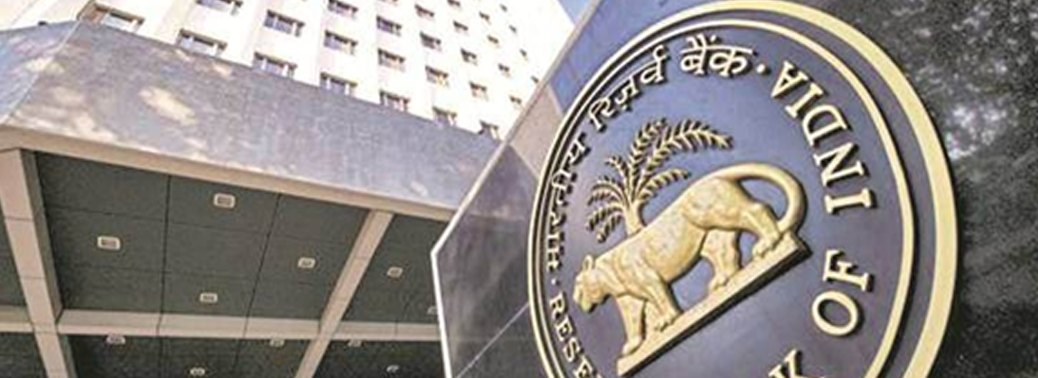
Why in News?
- The Reserve Bank of India (RBI) is in the process of putting together an exclusive wing for banking fraud oversight.
About “Fraud Oversight Wing”:
- This wing will have teams for meta-data processing and analysis, artificial intelligence analysis units, as well as proactive risk assessment cells.
- The banking fraud oversight wing may comprise up to 600 officers along with experts from the private sector. The RBI plans to hire industry veterans to lead the teams.
- Experts from the private sector working in all these domains will be brought in to train the new members in the fraud oversight wing. These training sessions will be repeated every year in the initial years.
- These new teams will also be given training in the latest technologies, so that they can also prevent another Yes Bank kind of event.
Need of such an Institution:
- The RBI had been mulling ways to proactively detect such frauds after various Bank loan fiascos.
- 1.Punjab National Bank Fraud. The bank fraud was of the tune of Rs 11,450 crore involving diamond merchant Nirav Modi.
- 2.Yes Bank Case: Even though there were representatives of RBI on the Yes Bank board, it was found to be difficult for them to flag the risk, as they had never done a credit risk assessment task in their career so far.
Earlier Attempts of RBI:
- The banking regulator in 2019 had moved to create a separate cadre of its own employees who would work in regulation and oversight sections.
- However, the working conditions were very strict and anyone opting for that cadre would not be allowed to leave for three years. To overcome this problem, the RBI sought to create a fraud oversight wing.
THE SPECTRE OF A POST-COVID-19 WORLD
04, Apr 2020

Context:
- In many parts of the world, borders are closed, airports, hotels and businesses shut, and school cancelled. These unprecedented measures are tearing at the social fabric of some societies and disrupting many economies, resulting in mass job losses and raising the spectre of widespread hunger.
Digital Factor:
- The physical analog world is being decimated, with traditional analog businesses including hotels, restaurants and airplanes in crisis.
- The digital world, however, is thriving. We are surviving through this pandemic because of technology like smartphones.
- In the post-pandemic world, technology will be as ubiquitous as it is now, if not more, and tech companies will become even more powerful and dominant.
- Use of surveillance –
- It is a useful weapon to fight the virus – for instance, countries like Israel are using smartphones to figure out who’s been where in order to track clusters of the virus.
- The technocratic authoritarian model in Beijing and East Asia, such as in Singapore and to some extent South Korea are dealing more effectively with the virus.
- But at the same time, such moves threaten to undermine individual freedom and privacy.
- The sophistication of such technologies may determine our socio-political rights in the future.
Social Change:
- Changes in people:
- COVID-19 can have lasting effects on people’s values.
- It changes the habits of the people– they work and travel in a different way, their daily routines and the very rhythm of their lives change, including when they eat and how they communicate with their families
- Religion – one of the biggest sources of culture for the human being will undergo changes, the epistemology of society – will never again be the same.
- Police States:
- COVID-19 will fast-forward the fourth industrial revolution and digitalization of all services, including public services. .
- Digital technology makes it possible to create subtle police states as citizens might voluntarily offer private data in hope the state can provide security.
- International cooperation:
- On the international level, there will be less cooperation.
- The trend of nationalism and self-reliance will continue, especially as the fear of the “external” and “foreign” can be exploited by populists.
- Fragile healthcare and weak Economy:
- Most states are challenged in their resilience economically, socially and in terms of public health.
- The public health crisis compounds existing domestic economic crises amid a global economic depression following the end of the COVID-19 crisis.
- This might overthrow those regimes whose legitimacy is undermined by inability to manage the crisis.
Prognosis for India
- India was estimated to be among the 15 most affected economies by the COVID-19 epidemic
- An early estimate by the Asian Development Bank, soon after the epidemic was declared, was that it would cost the Indian economy $29.9 billion.
- A recent industry estimate pegs the cost of the lockdown at around $120 billion or 4% of India’s GDP.
- The Confederation of Indian Industry (CII) had at one point warned that India would require up to six months even after the entire course of the COVID-19 epidemic is over to restore normalcy and business continuity.
- To compensate for this loss, massive inflows of government funds would be needed.
- India, like any other developing country, might find it difficult to find adequate resources for this purpose. Hence, it would be wise to start thinking of what next, if at least to try and handle a situation created by the most serious pandemic in Recent Centuries.
INDIA’S DEFENCE EXPORT -IMPORT
03, Apr 2020

Why in News?
- Based on the latest estimates released by the Stockholm International Peace Research Institute (SIPRI) in the period between 2009-13 and 2014-18, Indian defence imports fell even as Exports Increased.
Highlights:
- Indeed, the period between 2012 and 2019 saw Indian defence exports experiencing a considerable jump sourced from Indian public and private sector enterprises.
- In the last two fiscal years, 2017-18 and 2018-19, exports have witnessed a surge from 7,500 crore to 11,000 crore, representing a 40% increase in exports. Small naval crafts account for the bulk of India’s major defence exports. However, export of ammunition and arms remain low.
- As a percentage of total Indian trade, defence-related exports for the fiscal years 2017-18 and 2018-19 were 0.8 and 0.73%, respectively.
- Russia’s arms export to India fell 42?tween 2014-18 and 2009-2013. In the same period, India’s arms imports decreased 24%.
- Although India is still the second-largest arms importer in the world over the last five years, with Pakistan ranking at 11th.
- Broadly, Two Factors appear to be driving this shift.
- The first is the ‘Make in India’ initiative, as part of which a number of components from Indian private and public sector enterprises have been prioritised by the government.
- The second set of factors is extraneous to India in the form of delays in supplying equipment by vendors and the outright cancellation of contracts by the Indian government or at least a diminution of existing contracts.
Role of Make in India and DPP:
- Under the ‘Make in India’ initiative, the Defence Procurement Procedure (DPP) lays out the terms, regulations and requirements for defence acquisitions as well as the measures necessary for building India’s defence industry.
- It created a new procurement category in the revised DPP of 2016 dubbed ‘Buy Indian Indigenously Designed, Developed and Manufactured’ (IDDM).
- The ‘Make’ procedure has undergone simplification “earmarking projects not exceeding ten crores” that are government funded and 3 crore for Micro, Small and Medium Enterprises (MSMEs) that are industry funded.
- In addition, the government has also introduced provisions in the DPP that encourages technology transfers.
- Further Government dispensed with the erstwhile No Objection Certificate (NOC) under the DPP restricting exports of aerospace products, several dual-use items and did away with two-thirds of all products under these heads.
Public Sector Support:
- According to government of India data for the financial year 2018-19, the three armed services for their combined capital and revenue expenditures sourced 54% of their defence equipment from Indian industry which in turn helped decrease imports and augment exports.
- Among arms producers, India has four companies among the top 100 biggest arms producers of the world.
- Hindustan Aeronautics Limited (HAL)
- Indian ordnance factories
- Bharat Electronics Limited (BEL)
- Bharat Dynamics Limited (BDL)
- It is estimated, according to SIPRI, their combined sales were $7.5 billion in 2017, representing a 6.1% jump from 2016.
Impact on Exports-Imports owing to Cancellation and Delays:
- Indian defence acquisitions have also fallen due to the cancellation of big-ticket items.
- Take for instance the India-Russia joint venture for the development of the advanced
Su- 57 stealth Fifth Generation Fighter Aircraft (FGFA).
- India cancelled involvement in 2018 due to rising dissatisfaction in delays with the project as well as the absence of capabilities that would befit a fifth generation fighter jet.
- In 2015, the government also reduced the size of the original acquisition of 126 Rafale Medium Multi-Role Combat Aircraft (MMRCA) from Dassault to 36 aircraft, which is also responsible for significantly driving down the import bill.
- The delays in the supplies of T-90 battle tanks, and Su-30 combat aircraft from Russia and submarines from France, in 2009-13 and 2014-18, also depressed imports.
Bottlenecks in the Defence Sector:
- Governments, including the incumbent, have tended to privilege Defence Public Sector Units (DPSUs) over the private sector, despite ‘Make in India’.
- This model is highly skewed, undermining the growth of private players and diminishes the strength of research and development, thereby impairing development of the sector.
Stockholm International Peace Research Institute:
- SIPRI is an independent international institute dedicated to research into conflict, armaments, arms control and disarmament.
- Established in 1966, SIPRI provides data, analysis and recommendations, based on open sources, to policymakers, researchers, media and the interested public.
- Based in Stockholm, SIPRI is regularly ranked among the most respected think tanks worldwide.
ELECTRONIC MANUFACTURING SCHEME
03, Apr 2020
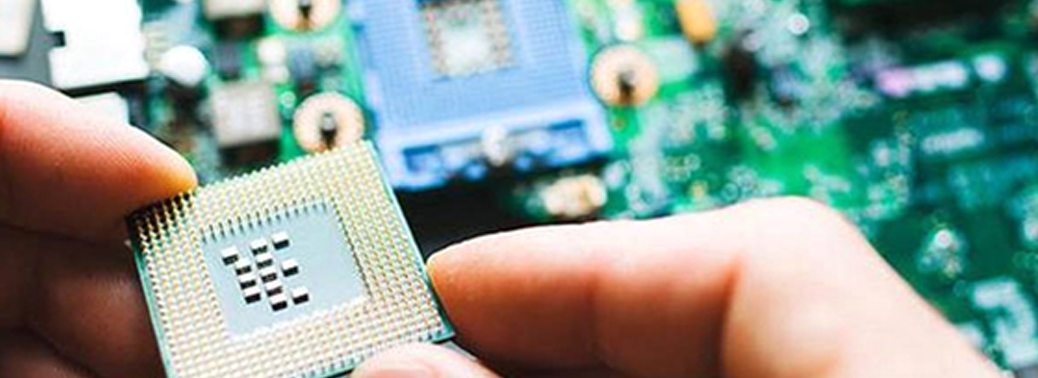
Why in News:
- The government has recently notified three Electronic Manufacturing Scheme involving total incentives of around Rs 48,000 crore for Electronics Manufacturing.
About:
- The Three Schemes are
- The Production Linked Incentive Scheme (PLI) for large scale electronics manufacturing.
- The scheme for Promotion of Manufacturing of Electronic Components and Semiconductors (SPECS).
- The modified Electronics Manufacturing Clusters (EMC 2.0) Scheme.
- They are expected to attract Rs 1 lakh crore investment in the sector, Boost local electronics manufacturing and generate manufacturing revenue potential of Rs 10 lakh crore by 2025 and create 20 lakh direct and indirect jobs by 2025.
About Production Linked Incentive Scheme (PLI) for Large Scale Electronics Manufacturing:
- It proposes a financial incentive to boost domestic manufacturing and attract large investments in the electronics value chain including electronic components and semiconductor packaging.
- It will get an incentive of 4 to 6% to electronic manufacturing companies on incremental sales (over base year) of goods manufactured in India and covered under target segments, to eligible companies over a period of next 5 years.
- It shall only be applicable for target segments namely mobile phones and specified electronic components.
- The production of mobile phones in the country has surged eight-times in the last four years.
About the Scheme for Promotion of Manufacturing of Electronic Components and Semiconductors:
- It is notified for manufacturing of electronics components and semiconductors has a budget outlay of Rs 3,285 crore spread over a period of eight years.
- Under the scheme, a financial incentive of 25% of capital expenditure has been approved by the Union Cabinet for the manufacturing of goods that constitute the supply chain of an electronic product.
- It is estimated by the government that the push for manufacturing of electronics components and electronic chips will create around 6 lakh direct and Indirect Jobs.
About Modified Electronics Manufacturing Clusters 2.0 Scheme:
- It has a total incentive outlay of Rs 3,762.25 crore spread over a period of 8 years with an objective to create 10 lakh direct and indirect jobs under the scheme.
- It will provide financial assistance up to 50% of the project cost subject to a ceiling of Rs 70 crore per 100 acres of land for setting up of Electronics Manufacturing Cluster projects.
- Under the scheme, the Electronic manufacturing clusters to be set up will be spread in an area of 200 acres across India and 100 acres in North East part of the country.
BATTLE TO SET OIL PRICES
03, Apr 2020

Context:
- The global economy, grappling with the COVID-19 pandemic, is now facing an energy war, with crude oil prices crashing in the international market. Crude oil prices crashed, as the Organisation of the Petroleum Exporting Countries (OPEC) and its alliance partners failed to reach any consensus on cutting back production to levels that would enable prices to Remain Stable.
COVID-19 and its Impact on Oil market:
- There has been a spectacular fall of around 30% in crude oil prices.
- The International Energy Agency (IEA) has scaled down global demand for oil, a move not taken by the energy watchdog since 2009.
- Demand for oil had already weakened owing to the global economic slowdown, and this weakening has become more pronounced due to the COVID-19 pandemic, which has hit China’s economy and reduced consumption by the world’s largest importer.
US – Russia: Capturing the Market:
- The U.S., as the largest oil producer today, has stayed away from the OPEC-plus arrangement, hoping that production cuts by OPEC-plus countries will help it increase its market share.
- Russia refused any production cuts, unleashing an energy war with Saudi Arabia.
- Russia’s decision to reject any production cuts is driven directly by its strategy of denying market share to American shale oil producers.
American Shale:
- The American producers rely on higher prices in the range of $50-$60 to remain profitable because of higher production costs.
- At $31 per barrel, not more than five American shale oil producers can remain profitable at current prices.
- President Donald Trump has scrambled to put together a rescue package for the shale oil companies.
Sanctions on Rosneft:
- Russia also remains resentful of sanctions imposed on Rosneft, which is building the gas pipeline project Nord Stream 2 across the Baltic Sea, carrying Siberian gas to Germany, a major consumer.
- This pipeline was delayed due to opposition from Denmark’s environmental activists and could not be completed before the U.S. sanctions kicked in.
- Moscow has accused Washington of using geopolitical tools for Commercial Reasons.
Saudi Arabia and Russia:
- Both Saudi Arabia and Russia depend heavily on oil revenues — upwards of 80% of export revenues accrue from crude oil.
- Both are also fighting to retain market share.
- It has been reported that Saudi Arabia has agreed to supply crude oil at lower rates to refiners in India and China, two primary customers, but refused to supply to other refiners in Asia.
- This will impact on India’s oil procurement from the U.S.
- Can Russia and Saudi Arabia sustain the energy war for long? –
- Saudi Arabia’s production cost is the cheapest in the world and it can ramp up production to around 12 million barrels a day.
- By offering discounts, it can undercut other producers, including Russia. Domestic considerations also matter.
Benefit to Importing Countries:
- Lower crude oil prices are not necessarily bad news for oil importing countries like India, which is the world’s third-largest importer of crude oil and the fourth largest importer of LNG.
- Impact on the global economy: The global economy, already impacted by President Donald Trump’s trade war with China and other countries, including India, and the COVID-19 pandemic, may find lower energy costs helpful in overall growth.
Benefits for India:
- From a high of $147 per barrel in 2008, crude oil prices have fallen to around $24 per barrel and may even go further southwards.
- India, with 80% of its energy requirements met by imports from the international market, stands to save ₹10,700 crores for every $1 drop in prices.
- While this may help manage the current account deficit, fiscal deficit and inflation.
- If the cost of fuel at the pump is passed on to consumers, it will have a multiplier effect.
- Lower cost will reduce transportation costs and boost demand.
- The consumer, however, may not benefit much since the government may choose to use this financial windfall for other purposes, like bailing out banks which have been hollowed out by NPAs to leading Indian companies.
COVID-19: MEASURES BY RBI
02, Apr 2020

Context:
- The Reserve Bank of India (RBI) has announced measures to fight economic disruptions caused by COVID19, including extension of the realisation period of export proceeds and allowing States to Borrow More.
Realisation Period of Export Proceeds:
- Presently, the value of the goods or software exports made by exporters is required to be realised fully and repatriated to the country within nine months from the date of exports.
- In view of the disruption caused by the pandemic, the time period for realisation and repatriation of export proceeds for exports made up to or on July 31, 2020, has been extended to 15 months from the date of export.
- The measure will enable exporters to realise their receipts, especially from COVID19 affected countries, within the extended period.
- This will also provide greater flexibility to exporters to negotiate future export contracts with buyers abroad.
Ways and means limit for the states:
- The RBI has formed an advisory committee to review the ways and means limit for State governments and union territories.
- Till the panel submits its report, the RBI has increased the ways and means advances limit by 30% for States and union territories.
- This would enable State governments to tide over the situation arising from the outbreak of the COVID19 pandemic.
- The revised limits will come into force with effect from April 1, 2020 and will be valid till September 30, 2020.
‘Ways and Means Advances’:
- It is a temporary facility to meet revenue mismatches – mismatches in receipts and payments of the government.Under this scheme, a government can avail itself of immediate cash from the RBI.
Counter Cyclical Capital Buffers (CCyB):
- The central bank has also deferred the implementation of counter cyclical capital buffers (CCyB) for banks.
- Based on the review and empirical analysis of CCyB indicators, RBI has decided that it is not necessary to activate CCyB for a period of one year or earlier, as may be necessary.
CCyB:
- Counter Cyclical Capital buffer is the capital to be kept by a bank to meet business cycle related risks.
- It is aimed to protect the banking sector against losses from changes in economic conditions.
- Banks may face difficulties in phases like recession when the loan amount doesn’t return. To meet such situations, banks should have their own additional capital.
- This is an important theme of the Basel III norms.
WAYS AND MEANS ADVANCE SCHEME
02, Apr 2020

Why in News?
- The Government has recently hiked Ways and Means Advance (WMA) limit with the Reserve Bank of India (RBI) by 60%.
Highlights:
- The government has announced a Rs 1.7 lakh crore package (Pradhan Mantri Garib Kalyan Yojana) to provide income support, free food and other facilities to the poor to help them during the 21-day national lockdown.
- The fundraising resources are not only from the market, but also from institutions such as the RBI.
- The 2020-21 budget has pegged the Centre’s net market borrowing, including government securities, treasury bills and post office life insurance fund.
- In FY21, the Centre also plans to issue the Debt Exchange Traded Fund comprising government securities to widen the base of investors.
- This will enable retail investors, who otherwise find it difficult to buy government bonds directly, take an exposure in this risk free instrument.
About Ways and means Advance scheme:
- It was introduced in 1997 to meet mismatches in the receipts and payments of the government.
- The government can avail of immediate cash from the RBI, if required. But it has to return the amount within 90 days. Interest is charged at the existing repo rate.
- If exceeds 90 days, it would be treated as an overdraft (the interest rate on overdrafts is 2 percentage points more than the repo rate).
- Its limits are decided by the government and RBI mutually and revised periodically. A higher limit provides the government flexibility to raise funds from RBI without borrowing them from the market.
- There are two types of Ways and Means Advances, Special WMA and Normal WMA
- Special WMA or Special Drawing Facility is provided against the collateral of the government securities held by the state. After the state has exhausted the limit of SDF, it gets normal WMA. The interest rate for SDF is one percentage point less than the repo rate.
- The loans Normal WMA is based on a three-year average of actual revenue and capital expenditure of the state.
About Exchange Traded Fund:
- It is a basket of securities that trade on an exchange, just like a stock.
- It reflects the composition of an Index, like BSE Sensex. Its trading value is based on the Net Asset Value (NAV) of the underlying stocks (such as shares) that it represents.
- It shares prices fluctuate all day as it is bought and sold. This is different from mutual funds that only trade once a day after the market closes.
- It can own hundreds or thousands of stocks across various industries, or it could be isolated to one particular industry or sector.
RBI INTRODUCES “FULLY ACCESSIBLE ROUTE (FAR)”
01, Apr 2020
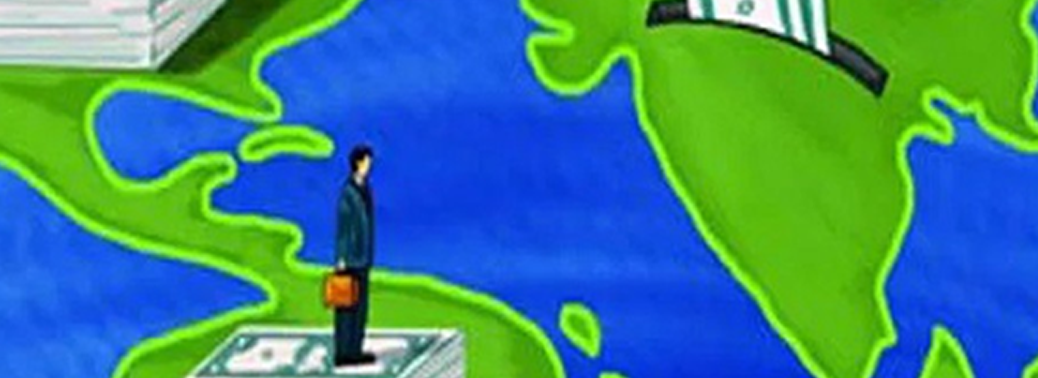
Why in News?
- In the Union Budget, it has been announced that certain specified categories of government securities would be opened fully for non-resident investors without any restrictions.
- As a follow up of the announcement, the Reserve Bank of India (RBI) has introduced a separate channel called “Fully Accessible Route (FAR)” to enable non-residents to invest in specified Government of India dated securities.
- ‘Specified securities’ shall mean Government Securities as periodically notified by the Reserve Bank for investment under the FAR route.
Key Points:
- FPI consists of securities and other financial assets passively held by foreign investors.
- The RBI has said that all new issuances of Government securities (G-secs) of 5-year, 10-year, and 30-year tenors will be eligible for investment as specified securities.
- Non Resident investors can invest in specified government securities without being subject to any investment ceilings.
- This scheme shall operate along with the two existing routes: The Medium Term Framework (MTF) for Foreign Portfolio Investment (FPI) in Central Government Securities (G-secs) and State Government Securities (SDLs), which was introduced in October 2015.
- The Voluntary Retention Route (VRR) encourages Foreign Portfolio Investors to undertake long-term investments in Indian debt markets.
Benefits of the Scheme:
- This would facilitate inflow of stable foreign investment in government bonds.
- This would facilitate inclusion in global bond indices.
- Being part of the global bond indices would help Indian G-secs attract large funds from major global investors, including Pension Funds.
- This will ease the access of non-residents to Indian Government Securities Markets.
What is meant by Government Security (G-Sec)
- A G-Sec is a tradable instrument issued by the Central Government or the State Governments.
- It acknowledges the Government’s debt obligation. Such securities are short term (usually called treasury bills, with original maturities of less than one year- presently issued in three tenors, namely, 91 day, 182 day and 364 day) or long term (usually called Government bonds or dated securities with original maturity of one year or more).
- In India, the Central Government issues both treasury bills and bonds or dated securities while the State Governments issue only bonds or dated securities, which are called the State Development Loans (SDLs).
COMPANIES FRESH START SCHEME, 2020
01, Apr 2020

Why in News?
- Ministry of Corporate Affairs introduces the “Companies Fresh Start Scheme, 2020” and revised the “LLP Settlement Scheme, 2020” to provide relief to law abiding companies and Limited Liability Partnerships (LLPs) in the wake of COVID 19.
What do these Schemes Entail?
- These schemes incentivise compliance and reduce compliance burden during the unprecedented public health situation caused by COVID-19.
- The schemes provide a one-time waiver of additional filing fees for delayed filings by the companies or LLPs with the Registrar of Companies during the currency of the Schemes, i.e. during the period starting from 1stApril, 2020 and ending on 30th September, 2020.
- They also significantly reduce the related financial burden on them, especially for those with long standing defaults, thereby giving them an opportunity to make a “fresh start”.
- Both the Schemes also contain provision for giving immunity from penal proceedings, including against imposition of penalties for late submissions.
- They also provide additional time for filing appeals before the concerned Regional Directors against imposition of penalties, if already imposed.
What is a LLP?
- A Limited Liability Partnership (LLP) is a partnership in which some or all partners have limited liability. It therefore exhibits elements of partnerships and corporations.
- In an LLP, one partner is not responsible or liable for another partner’s misconduct or negligence.
Salient features of an LLP:
- An LLP is a body corporate and legal entity separate from its partners. It has perpetual Succession.
- Being the separate legislation (i.e. LLP Act, 2008), the provisions of Indian Partnership Act, 1932 are not applicable to an LLP and it is regulated by the contractual agreement between the partners.
- Every Limited Liability Partnership shall use the words “Limited Liability Partnership” or its acronym “LLP” as the last words of its Name.
Composition:
- Every LLP shall have at least two designated partners being individuals, at least one of them being resident in India and all the partners shall be the agent of the Limited Liability Partnership but not of other partners.
Need for and significance LLP:
- LLP format is an alternative corporate business vehicle that provides the benefits of limited liability of a company but allows its members the flexibility of organizing their internal management on the basis of a mutually arrived agreement, as is the case in a partnership firm.
- This format would be quite useful for small and medium enterprises in general and for the enterprises in services sector in particular.
- Internationally, LLPs are the preferred vehicle of business particularly for service industry or for activities involving professionals.
KERALA SOUGHT RELAXATION OF FRBM RULES
31, Mar 2020
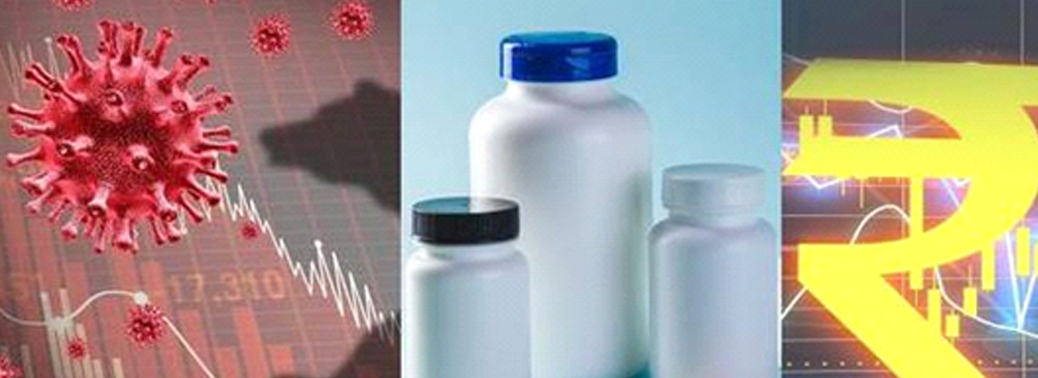
Why in News?
- To help fund the emergency relief package, Kerala proposes to borrow ₹12,500 crore from the market and has urged the Centre to provide Kerala with flexibility under the Fiscal Responsibility and Budget Management (FRBM) Act.
What is the FRBM Act?
- The Fiscal Responsibility and Budget Management Act (FRBM Act), 2003, establish financial discipline to Reduce Fiscal Deficit.
What are the objectives of the FRBM Act?
- The FRBM Act aims to introduce transparency in India’s fiscal management systems.
- The Act’s long-term objective is for India to achieve fiscal stability and to give the Reserve Bank of India (RBI) flexibility to deal with inflation in India.
- The Act was enacted to introduce more equitable distribution of India’s debt over the years.
How does a relaxation of the FRBM Work?
- The law does contain what is commonly referred to as an ‘escape clause’.
- Under Section 4(2) of the Act, the Centre can exceed the annual fiscal deficit target citing grounds that include national security, war, national calamity, collapse of agriculture, structural reforms and decline in real output growth of a quarter by at least three percentage points below the average of the previous four quarters.
Key Features of the FRBM Act:
- The FRBM Act made it mandatory for the government to place the following along with the Union Budget documents in Parliament Annually:
- Medium Term Fiscal Policy Statement.
- Macroeconomic Framework Statement.
- Fiscal Policy Strategy Statement.
- The FRBM Act proposed that revenue deficit, fiscal deficit, tax revenue and the total outstanding liabilities be projected as a percentage of gross domestic product (GDP) in the medium-term fiscal policy statement.
What are the Amendments Made?
- The Act has been amended several times.
- In 2013, the government introduced a change and introduced the concept of effective revenue deficit. This implies that effective revenue deficit would be equal to revenue deficit minus grants to states for the creation of capital assets.
- In 2016, a committee under N K Singhwas set up to suggest changes to the Act. According to the government, the targets set under FRBM Act previously were too rigid.
What are the various recommendations made by N.K. Singh Committee?
- Targets:The committee suggested using debt as the primary target for fiscal policy and that the target must be achieved by 2023.
- Fiscal Council:The committee proposed to create an autonomous Fiscal Council with a chairperson and two members appointed by the Centre (not employees of the government at the time of appointment).
- Deviations:The committee suggested that the grounds for the government to deviate from the FRBM Act targets should be clearly specified
- Borrowings:According to the suggestions of the committee, the government must not borrow from the RBI, except when:
- The Centre has to meet a temporary shortfall in Receipts.
- RBI subscribes to government securities to Finance Any Deviations.
- RBI purchases government securities from the Secondary Market.
COAL CAPACITY PIPELINE DECLINES IN INDIA
30, Mar 2020

Why in News?
- The latest report ‘Boom and Bust 2020:Tracking the Global Coal Plant Pipeline’ which is the fifth annual survey of the coal plant pipeline has been released recently. The report highlights that the capacity of coal power plants in the pre-construction phase fell by half from 2018 to 2019 in the country.
- Jointly released by the Centre for Research on Energy and Clean Air (CREA), Greenpeace International, the Sierra Club and Global Energy Monitor.
Highlights:
- The capacity of coal power plants which was 60.2GW in 2018, saw a sharp fall to 29.3GWlast year.
- In India, capacity under construction and in pre-construction phase declined 80% from311.1GW in 2015 to 66GW in 2019, with only 2.8GW newly proposed in 2019
- The findings state that the biggest growth in construction took place in South Asia in 2019, with India starting construction of 8.8GW of new coal power capacity.
- Along with this, 8.1GW coal- based capacity was commissioned in the country last year.
- The new construction includes four coal plants-Adani Godda, Patratu and Udangudi having 1.6GW each and Yadadri with 4GW.
- All the 8.8GW of new construction received substantial financing from the Power Finance Corporation or the Rural Electrification Corporation, both of which fall under the jurisdiction of the Ministry of Power and are set to merge this year.
- The report indicated that the private sector is exiting coal plant development in the country, the public sector is stepping in and footing the bill.
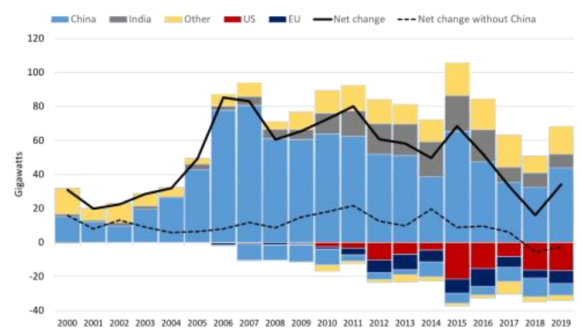
Concerns:
- The shrinking coal pipeline in India, forced by huge over-capacity, subdued demand for electricity, falling utilization factor, falling prices of renewable energy, drying investments, and increasing public resistance due to pollution gives hope for a future with reduced fossil footprint for the country.
- But, at the same time new capacity is being added to the grid, new projects are given clearances and infusion of public money into new projects by the government stresses on the environmental and economic crisis faced by the country.
- A strict policy against building or clearing new coal-based plants with rapid retirement of older units is urgently required.
LOCKDOWN AND THE AGRI SECTOR
30, Mar 2020
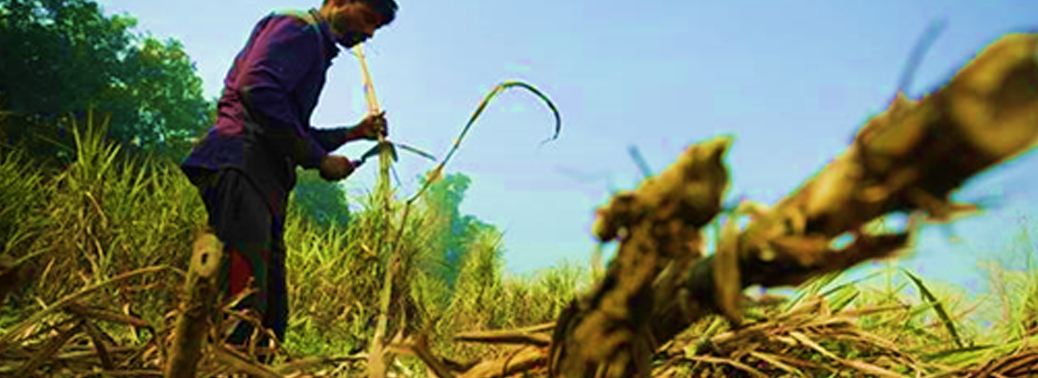
Context:
- COVID-19 and the 21-day lockdown to contain it, has brought all the sectors of the economy to a standstill. During such lockdowns, it is relatively easy to shut factories, IT parks, hotels, malls and multiplexes. But the agriculture and animal husbandry will continue to produce and also they must.
- The Great Bengal Famine of 1943, as Amartya Sen famously documented, wasn’t brought about by a decline in food availability. Instead, it was a result of people not having access to food due to a collapse of “exchange entitlements”.
Lockdown and the Agriculture Supply Chain:
- The Food Corporation of India’s current wheat and rice stocks are over 3.5 times the required normative buffer reserve.
- Farmers are also set to harvest a bumper crop of wheat, chana, mustard, onion and other rabi season produce.
- What India is at present facing is not a “supply”, but a “supply chain” problem.
- Inter-state movement restrictions and arbitrary actions by local authorities to enforce the lockdown had hit the supply chain.
- This includes closing down of produce collection centres and warehouses of organised retailers, which has broken the links in the chain connecting farmers to consumers.
- This in turn has opened up arbitrage opportunities for unscrupulous speculators and middlemen.
- It is the government’s responsibility to ensure that farmers are able to keep their animals alive and market the crop that has been, or will be, harvested during the lockdown period.
- There is an urgent need to ensure that those keeping supply chains of essential items running are protected against COVID-19 lockdown.
Problems in the Supply Chain:
- Many essential services were kept out of the purview of the lockdown. Food, feed and agricultural inputs have been specifically notified as essential services.
- But there are several implementational hurdles due to the vague specifications in the Government Notifications.
- There are also reports of conflict between the police and citizens, including people involved in the transportation and delivery of food as well as inputs to farms.
- Thelabour shortage has become a problem in the labour intensive dairy and poultry sectors. There were also issues of hoarding, done by the middlemen expecting shortages to increase their profits.
Way Forward:
- The government needs an immediate action plan to manage the agriculture and livestock sectors in the interest of both producers and consumers.
- Ensure free movement of farm produce, livestock feed and veterinary medicines.
- The Centre must issue a single notification relating to food items in a standard format and uniform language so that all ambiguities are removed.
- This needs to be finalised after consultations with the stakeholders.
- The Essential Services Maintenance Act (ESMA) be invoked for the delivery of all essential services relating to food to prevent disruption of supplies.
- The government must start planning now to prevent post-lockdown chaos, especially profiteering in the event of shortages.
- Place all food items, agri-inputs, packaging material and transport services under ESMA for a six-month period to prevent profiteering.
- Suspend APMC (agricultural produce market committee) laws for the next six months.
- As traders with APMC licence are bound to act as cartels during rush hour, which will hurt both farmers and consumers.
- Even in the Bengal Famine, the maintenance of essential food supplies to Calcutta was accorded very high priority by the authorities; the three million who died then were mostly the rural masses or those who did not survive after trekking from the districts to the city. That lesson from history should not be forgotten. This is the moment to free movement and trade in all agricultural produce and prevent the unfortunate.
RBI CUTS RATES, ALLOWS LOAN MORATORIUM
28, Mar 2020

Why in News?
- To ease impact of lockdown, RBI reduced the repo and reverse repo rates and the EMIs deferred for three months.
About the News:
- The Reserve Bank of India (RBI) has opened up the liquidity floodgates for banks even as it reduced the key interest rate sharply by 75 bps and allowed equated monthly instalments (EMIs) to be deferred by three months in a move to fight the economic impact of the countrywide lockdown to check the spread of novel coronavirus.

- The repo rate was reduced to by 75 bps 4.4% while the reverse repo rate was cut by 90 bps point to 4%.
- The higher reduction in the reverse repo rate was aimed at prompting banks to lend more rather than keeping their excess liquidity with the RBI.
- Apart from cutting the repo rate, RBI has also reduced the cash reserve ratio of banks which released ₹37 lakh crore liquidity. This, along with other measures, will see an infusion of ₹3.74 lakh crore into the banking system.
- RBI has also allowed banks to defer payment of EMIs on home, car, personal loans as well as credit card dues for three months. Since non-payment will not lead to non-performing asset classification by banks, there will be no impact on credit score of the borrowers.
- The following decisions were taken after the meeting of the Monetary Policy Committee headed by the RBI Governor.
What is Monetary Policy Committee?
- Strong recommendations to set monetary policy committee in India had come from Urjit Patel panel report.
- Monetary Policy Committee is an executive body of 6 members. Of these, three members are from RBI while three other members are nominated by the Central Government.
- Each member has one vote. In case of a tie, the RBI governor has casting vote to break the tie. MPC is required to meet for two days before deciding on rates. Further, it is needed to meet at least four times a year and make public its decisions following each meeting.
- The core mandate of MPC is to fix the benchmark policy interest rate {Repo Rate} to contain inflation within the target level.
- In that context, RBI is mandated to furnish necessary information to the MPC to facilitate its decision. Government also, if wishes to convey its views, can do so in writing to MPC.
Different Terminologies in Banking Sector:
- Loan moratorium period refers to a particular period of a loan tenure during which the borrower does not have repay anything. It can be described as a waiting period before the borrower will have to start paying the equated monthly instalments (EMIs) for his or her loan. It doesn’t mean that he is completely waived off his loans.
- REPO rate (now 4.4%) denotes Re Purchase Option – the rate by which RBI gives loans to other banks. In other words, it is the rate at which banks buy back the securities they keep with the RBI at a later period.
- Bank gives loan to the public at a higher rate, often 1% higher than REPO rate, at a rate known as Bank Rate.
- RBI at times borrows from banks at a rate lower than REPO rate, and that rate is known as Reverse REPO rate (now 4%).
- CRR or Cash Reserve Ratio corresponds to the percentage of cash each bank have to keep as cash reserve with RBI (in their current accounts) corresponding to the deposits they have. For example, say if State Bank of India (SBI) got a total deposit of Rs. 1 crore with them, they need to keep 4 % of that as cash reserve with RBI (around 4 lakh rupees).
- The banks and other financial institutions in India have to keep a fraction of their total net time and demand liabilities in the form of liquid assets such as G-secs, precious metals, approved securities etc. The Ratio of these liquid assets to the total demand and time liabilities is called Statutory Liquidity Ratio(18.25%).
INDIAN RED CROSS SOCIETY AND COVID-19
28, Mar 2020

Context:
- Recently, President Ramnath Kovind exhorted the collective strength of the society and urged Governors, LGs and Administrators to mobilise volunteers of Indian Red Cross society, voluntary and religious organisations to contain the menace of COVID 19 at the Earliest.
COVID-19 and Indian Red Cross Society:
- The President of India stressed the role of the Red Cross, civil society/voluntary organisations in complementing the efforts of the Union and State governments to contain the spread of the Novel Coronavirus, especially with the lockdown and other challenges emerging from the evolving situation.
- In general, the Indian Red Cross’s programmes are grouped into four Main Core Areas:
- Promoting humanitarian principles and values;
- Disaster response;
- Disaster preparedness; and
- Health and Care in the Community.
- Indian Red Cross Society is currently, used to create awareness among the masses on COVID-19 and educate them about social distancing
- In Karnataka, around 8000 Indian Red Cross volunteers are involved in the awareness creation activities.
- Also, the Red Cross has been helping to supply food packets in Chandigarh to the people in need.
- The health care expertise of Indian Red Cross Society is used to make efficient delivery of such services to the society.
- Red Cross Ambulance services are used widely by the District authorities to support other measures.
Indian Red Cross Society:
- The Indian Red Cross is a voluntary humanitarian organization providing relief in times of disasters/emergencies and promotes health & care of the vulnerable people and communities.
- It is a leading member of the largest independent humanitarian organization in the world, the International Red Cross & Red Crescent Movement.
- Indian Red Cross Society (IRCS) was established in 1920 under the Indian Red Cross Society Act and incorporated under Parliament Act XV of 1920. The act was last amended in 1992 and rules were formed in 1994.
- The President of India serves as the President and Union Health Minister serves as the Chairman of the Society.
- The Vice Chairman is elected by the members of the Managing Body.
- The National Managing Body consists of 18 members.
- The Chairman and 6 members are nominated by the President. The remaining 12 are elected by the state and union territory branches through an electoral college.
- The IRCS adopted RED CROSS as its emblem.
History of Red Cross and Red Crescent Movement:
- Jean Henry Dunant, a young Swiss businessman, was deeply influenced by the condition of the wounded soldiers he witnessed in the battlefield during the Franco – Austrian war(1859).
- During the war, he arranged relief services with the help of the local community.
- In his book ‘Memory of Solferino’, he suggested that a neutral organization be established to aid the wounded soldiers in times of war.
- An international conference was convened in Geneva to consider the suggestions of Henry Dunant and thus the Red Cross Movement was established by Geneva Convention of 1864.
- The name and the emblem of the movement are derived from the reversal of the Swiss national flag, to honor the country in which the Red Cross was found.
- In the Russo-Turkish war the Ottoman empire used a Red Crescent in place of the Red Cross. Egypt too opted for the Red Crescent while Persia chose a Red Lion on a white background. These symbols were written and accepted into the 1929 Geneva Conventions.
- During the General Assembly and the council of Delegates in November 2005 at Geneva, Red Crystal was adopted as another emblem for the Red Cross Red Crescent movement.
RBI REGULATION FOR PAYMENT AGGREGATORS AND PAYMENT GATEWAYS
27, Mar 2020

Why in News?
- The Reserve Bank of India recently released guidelines for regulating payment aggregators and Payment Gateways.
About Payment Aggregators and Payment Gateways:
- Payment Aggregators facilitate e-commerce sites and merchants in accepting payment instruments from the customers for completion of their payment obligations without the need for merchants to create a separate payment integration system of their own. Example: Billdesk.
- Payment Gateways are entities that provide technology infrastructure to route and facilitate processing of an online payment transaction without any involvement in handling of funds. PGs in India mainly include banks.
- A Payment Gateway allows the merchants to deal in a specific payment option put on the portal, whereas a Payment Aggregator allows one to have multitudes of options for payment. Thus, a Payment Aggregator covers a payment gateway in its ambit.
What are the various Guidelines?
Authorisation
- Non-bank PAs will require authorisation from the RBI under the Payment and Settlement Systems Act, 2007 (PSSA). A PA should be a company incorporated in India under the Companies Act, 1956 / 2013.
- Banks provide PA services as part of their normal banking relationship and do not therefore require a separate authorisation from RBI.
- E-commerce marketplaces (e.g. flipkart, Paytm) providing PA services should separate PA services from the marketplace business and they should apply for authorisation on or before 30th June, 2021.
- PGs will be considered as ‘Technology Providers’ or ‘Outsourcing Partners’ of banks or non-banks, as the case may be.
Capital Requirement:
- Existing PAs have to achieve a net worth of ₹15 crore by 31st March, 2021 and a net worth of ₹25 crore on or before 31st March, 2023. The net worth of ₹25 crore has to be maintained at all times thereafter.
- New PAs should have a minimum net worth of ₹15 crore at the time of application for authorisation and have to attain a net worth of ₹25 crore by the end of the third financial year of the grant of authorisation. The net worth of ₹25 crore has to be maintained at all times thereafter.
Disclosure Requirements:
- PAs need to disclose comprehensive information regarding merchant policies, customer grievances, privacy policy and other terms and conditions on the website and / or their mobile application.
- They need to undertake background and antecedent checks of the merchants to ensure that such merchants do not have any malafide intention of duping customers, and do not sell fake / counterfeit / prohibited products.
MSP FOR MINOR FOREST PRODUCE
27, Mar 2020
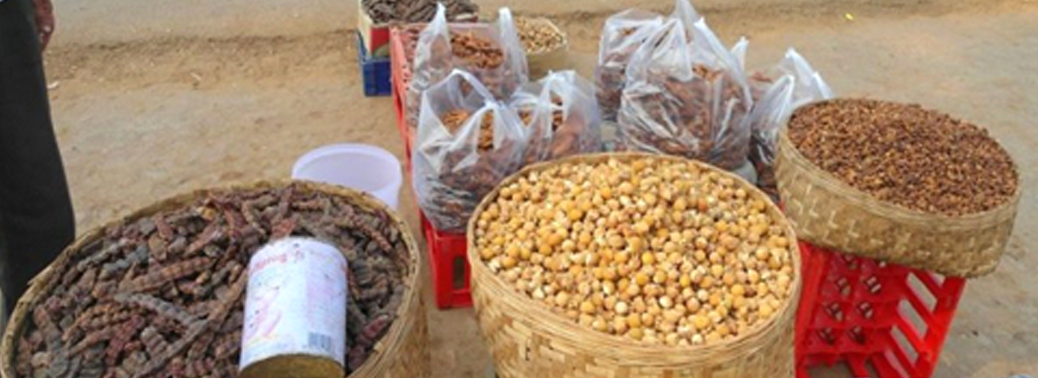
Why in News?
- According to experts, the Union government’s ‘mechanism for marketing of minor forest produce (MFP) through minimum support price (MSP) and development of value chain for MFP’ scheme can offer respite to forest-dependent labourers in the wake of novel coronavirus (COVID-19) outbreak.
About the Scheme:
- The Union Cabinet, in 2013, approved a Centrally Sponsored Scheme for marketing of non-nationalized / non monopolized Minor Forest Produce (MFP) and development of a value chain for MFP through Minimum Support Price (MSP).
- This was a measure towards social safety for MFP gatherers, who are primarily members of the Scheduled Tribes (STs) most of them in Left Wing Extremism (LWE) areas.
- The scheme had Rs. 967.28 crore as Central Government share and Rs. 249.50 crore as the States share for the current Plan period.
Key Features of the Scheme:
- Ensure that the tribal population gets a remunerative price for the produce they collect from the forest and provide alternative employment avenues to them.
- Establish a system to ensure fair monetary returns for forest dweller’s efforts in collection, primary processing, storage, packaging, transportation etc., while ensuring sustainability of the resource base.
- Get them a share of revenue from the sales proceeds with costs deducted.
Coverage of the Scheme:
- Earlier, the scheme was extended only to Scheduled Areas in eight states and fixed MSPs for 12 MFPs. Later expanded to all states and UTs.
- Total number of MFPs covered under the list includes 49.
- Implementation: The responsibility of purchasing MFP on MSP will be with State designated agencies.
- To ascertain market price, services of market correspondents would be availed by the designated agencies particularly for major markets trading in MFP.
- The scheme supports primary value addition as well as provides for supply chain infrastructure like cold storage, warehouses etc.
- The Ministry of Tribal Affairs will be the nodal Ministry for implementation and monitoring of the scheme. The Minimum Support Price would be determined by the Ministry with technical help of
What are the Significances of the Scheme?
- The Minor Forest Produce (MFP), also known as Non-Timber Forest Produce (NTFP), is a major source of livelihood and provides essential food, nutrition, medicinal needs and cash income to a large number of STs who live in and around forests. An estimated 100 million forest dwellers depend on the Minor Forest Produce for food, shelter, medicines, cash income, etc.
- However, MFP production is highly dispersed spatially because of the poor accessibility of these areas and competitive market not having evolved. Consequently, MFP gatherers who are mostly poor are unable to bargain for fair prices. This package of intervention can help in organizing unstructured MFP markets.
DOUBLE TROUBLE FOR THE AUTO SECTOR
25, Mar 2020

Context:
- The auto sector, which has been grappling with multiple challenges over the past year, is headed for tougher times due to the COVID-19 outbreak. Automakers and suppliers, struggling with muted demand, have shut production facilities both in India and overseas.
COVID-19 effect on Automobile Sector:
On the Demand Side:
- The duration and the extent of COVID-19 will determine the income loss of the consumers, and thus will have a bearing on the retail buying sentiment.
- The sector has shed over 37 per cent over the past month due to subdued demand.
- The virus threat have reduced the demand in the market
- The sector’s transition from BS-IV to BS-VI, has increased its cost.
On the supply side:
- The planned transition from BS-IV to BS-VI is not happening as smoothly as planned.
- The two-wheeler segment has been the worst-hit
- Given the curfew-like conditions, the BS-IV inventory cannot be sold to the consumers before the deadline of March, 2020.
- Auto makers are not expected to restart production till authorities relax the lockdown measures.
On the Workers:
- The government has instructed the industries to pay remuneration to the employees, during the times of COVID-19 lockdown.
- However, the MSME sector which employs a large section of the population, supplying goods and services to the automobile sector will be affected largely.
- Unorganized workers indirectly linked to the automobile sector will be affected due to the lockdown and the resultant Job Losses.
Future prospects for the Auto Sector:
- Two-wheelers and truck makers will be the worst hit from the sharp rise in costs due to new BS-VI norms.
- This COVID-19 may further weaken the sector due to weak consumer sentiment and low industrial production, rising uncertainty and slowdown in exports – leading to reduced transit of goods.
- Falling capacity utilisation, partial absorption of the BS-VI price hike, and impairment of the leftover BS-IV inventory are expected to affect the sector for yet another year.
- However, the sharp fall in raw material costs, on account of the global demand crash, is a positive sign for the future of the sector.
Way Forward:
- The rural automobile market, which is still under-utilized, shall be used as a growth focus to revive the sector.
- Proper relief to the workers shall help in sustaining the skilled workforce of the sector.
- In case of early withdrawal of the outbreak, a stimulus package to boost overall consumption, shall increase the demand.
- Government should come forward to extend the date for BS-VI implementation.
- A scrappage policy to replace the pre-BS-IV vehicles can boost the market and help revive the growth of the sector.
INSURANCE COVER FOR A PANDEMIC
23, Mar 2020

Context:
- In case if a person gets infected by COVID-19, he/she must have a comprehensive health insurance plan to cover Hospitalisation expenses.
How to secure our Health?
- While pandemics such as COVID-19 are not new to the world, it is important to stay protected in every manner possible.
- While we may take all required precautionary measures such as maintaining social distancing to stay protected, what is more important here is to understand how we can secure your health.
- If you are still confused as to whether your health insurance policy will cover hospitalisation expenses incurred due to COVID-19, it is important for you to know that any claim for COVID-19 will be payable by your insurer if you are hospitalised for at least 24 hours.
- As per a circular from the Insurance Regulatory and Development Authority of India (IRDAI) to all health insurers regarding the guidelines all claims will be processed as per regular norms and will be covered as any other illness.
24-hour hospitalisation – Is it Mandatory?
- However, it is mandatory for the policyholder to stay hospitalised for a minimum of 24 hours.
- IRDAI has even made it clear that the entire cost of admissible medical expenses during the course of treatment, including the treatment during quarantine period, shall be settled in accordance with the regular health insurance policy.
- Also, the infection caused due to COVID-19 does not fall under the pre-existing disease category and hence, the claims will be covered for the illness from day one.
- Every basic health insurance plan will compensate the policyholder for expenses incurred on pre-hospitalisation, post-hospitalisation, in-patient treatment, OPD and ambulance expenses, should one seek treatment for COVID-19.
About the Fixed Benefit Plan:
- While the above features are for an indemnity-based health plan, those looking for a fixed benefit health plan that compensates them for loss of income due to hospitalisation following COVID-19 can invest in the fixed benefit health plan offered by Digit Insurance.
- Offered under the IRDAI’s regulatory sandbox framework, Health Care Plus plan is available for a sum insured of between ₹25,000 and ₹2 lakh.
- The premiums start at ₹299 at the lower end, while the maximum sum insured entails a premium of ₹2,027 plus GST.
- As to the pay-out process, in case a policyholder tests positive for COVID-19, the insurer will pay out the entire sum insured. If quarantine is advised in a government or a military hospital, the insurer will pay 50% of the sum insured.
- Retired people may consider it for additional benefits even if they have a standalone plan since they are more vulnerable to the virus. Those suffering from symptoms of cold or respiratory diseases will not be able to purchase this plan.
About IRDAI:
- Insurance Regulatory and Development Authority of India or the IRDAI is the apex body responsible for regulating and developing the insurance industry in India.
- It is an autonomous body established by an act of Parliament known as the Insurance Regulatory and Development Authority Act, 1999.
- IRDAI is headquartered in Hyderabad in Telangana. Prior to 2001, it was headquartered in New Delhi.
- The organization fought for an increase in the FDI limit in the insurance sector to 49% from the previous 26%. The FDI cap was hiked to 49% in July of 2014.
- Its Functions include:
- Its primary purpose is to protect the rights of the policyholders in India.
- It gives the registration certificate to insurance companies in the country.
- It also engages in the renewal, modification, cancellation, etc. of this registration.
- It also creates regulations to protect policyholders’ interests in India.
INDIA BECOMES 3RD LARGEST PRODUCER OF ELECTRICITY
21, Mar 2020
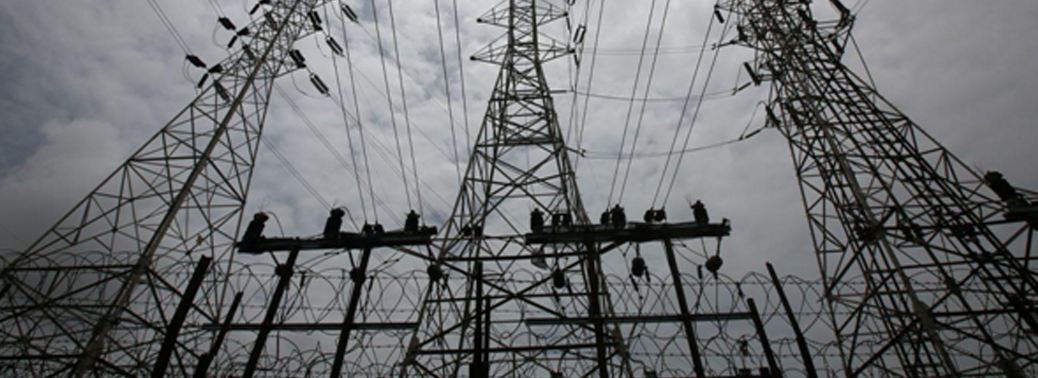
Why in News?
- As per the Key World Energy Statistics 2019 published by the International Energy Agency, India has been ranked as the 3rdlargest producer of electricity in the world.
Highlights of the Report:
- With a generation of 1,497 Terawatt-hour (TWh), India is the third largest producer and the third largest consumer of electricity in the world after the US and China.
- India was 106th in terms of per capita consumption in 2017.
- Although power generation has grown more than 100-fold since independence, growth in demand has been even higher due to accelerating economic activity.
Government Interventions in the Electricity Sector:
- The Ujwal Discom Assurance Yojana:UDAY was launched by the Ministry of Power to help turn around the poor financial situation of state discoms. It also envisages development of renewable energy sector and availability of 24*7 Power For All at an affordable price.
- Saubhagya Scheme: It was launched by the Government of India with the aim of providing electricity access to over 40 million families in the country.
- Unnat Jyoti by Affordable LEDs for All (UJALA): It aims to promote efficient lighting, enhance awareness on using efficient equipment which reduce electricity bills and help preserve the environment. The project is spearheaded by the Energy Efficiency Services Limited.
About Key World Energy Statistics:
- KWES is published by the International Energy Agency.
- It is part of the IEA’s annual edition of the world’s most comprehensive series of energy databases and data services, which include World Energy Statistics and Balances and the full range of Fuel Information Data Services.
GLOBAL UNEMPLOYMENT AMIDST COVID-19
20, Mar 2020

Why in News?
- The International Labour Organization (ILO) has recently said that the COVID-19 pandemic will drastically increase global unemployment, leaving up to 25 million more people out of work and slashing incomes.
About ILO:
- It is the only tripartite U.N. agency. It brings together governments, employers and workers of 187 member States, to set labour standards, develop policies and devise programmes promoting decent work for all women and men.
- It was established in 1919 by the Treaty of Versailles as an affiliated agency of the League of Nations and also became the first affiliated specialized agency of the United Nations in 1946.
- Headquarters:Geneva, Switzerland.
- India is a founding member of the ILO and it has been a permanent member of the ILO Governing Body since 1922.
- The organization has played a key role in
- Ensuring labour rights during the Great Depression
- Decolonization process
- The creation of Solidarnosc( trade union) in Poland
- The victory over apartheid in South Africa
What are its Key Findings?
- The International Labour Organization (ILO) has warned that the economic and labour crisis sparked by the coronavirus will have far-reaching impacts on labour market outcomes.
- The ILO said that by comparison, the global financial crisis of 2008-09 increased global unemployment by 22 million.
- A study based on the report suggests that the world should prepare to see a significant rise in unemployment and underemployment in the wake of the pandemic.
- In the best-case scenario, 5.3 million more people will be pushed into unemployment.
- In the worst case scenario, 24.7 million more will become jobless, on top of the 188 million registered as unemployed in 2019.
- Underemployment is also expected to increase on a large scale, as the economic consequences of the virus outbreak translate into reductions in working hours and wages.
- Self-employment in developing countries usually serves to cushion the impact of economic shifts but this time due to the severe restrictions on the movement of people and goods, it might not help.
- Reductions in access to work will also mean large income losses for workers.
- The study estimates the income loss between $860 billion and $3.4 trillion by the end of 2020, which will translate into falls in consumption of goods and services, in turn affecting the prospects for businesses and economies.
- The number of people who live in poverty despite holding one or more jobs will also increase significantly.
- The strain on incomes resulting from the decline in economic activity will devastate workers close to or below the poverty line.
- Some groups will be disproportionately impacted by the jobs crisis, including youth, older workers, women and migrants which will only increase the already Prevailing Inequality.
What are its Suggestions?
- The ILO has called for urgent, large-scale and coordinated measures to protect workers in the workplace and stimulate the economy, employment and job support through social protections, paid leave and other subsidies.
- It is suggested to tackle this pandemic in the same way the global financial crisis of 2008 was tackled, by presenting a united front to address the consequences.
INDIA NOT OBLIGATED TO IMPLEMENT WTO’S DISPUTE PANEL RECOMMENDATIONS
20, Mar 2020

Why in News?
- As per the reply of Commerce and Industry Minister in Lok Sabha, India is under no obligation to implement the recommendations of the WTO’s dispute panel on its export promotion schemes.
What is the Issue?
- A dispute settlement panel of World Trade Organization (WTO) in its report issued to members on 31 October 2019 has ruled that India’s export-related schemes (including SEZ scheme) are in the nature of prohibited subsidies under the Agreement on Subsidies and Countervailing Measures and are inconsistent with WTO norms.
- The panel had given a time-frame of 180 days for withdrawal of Special Economic Zone (SEZ) scheme.
- India had appealed at the WTO’s appellate body against this ruling.
- But due to non-functioning of appellate body (of the WTO’s dispute settle mechanism), the appeal has been kept in suspension.
- Till the appeal is disposed of, India is under no obligation to implement the recommendations of panel.
WTO’s Dispute Settlement Mechanism:
- The Appellate Body of the World Trade Organization set up in 1995, is a standing body of 7 persons that hears appeals from reports issued by panels in disputes brought on by WTO members.
- A dispute arises when a member government believes another member government is violating an agreement or a commitment that it has made in the WTO.
- By joining the WTO, member countries have agreed that if they believe fellow members are in violation of trade rules, they will use the multilateral system of settling disputes instead of taking action unilaterally.
Current Scenario:
- The dispute settlement mechanism requires at least three members to function.
- The United States has blocked the appointments of new members and the reappointments of members who had completed their four-year tenures, the membership of the body has decreased to three persons (instead of the required seven).
- The US believes the WTO is biased against it, and has criticized it for being unfair.
- In 2019, several developing countries met in India to discuss ways to prevent the WTO’s dispute resolution system from collapsing all together.
- India is involved in 15 trade disputes, mostly against the US, at the WTO at Present.
RBI TO INFUSE RS. 10,000 CRORE VIA OMO
19, Mar 2020

Why in News?
- The Reserve Bank of India (RBI) has decided to infuse ₹10,000 crore liquidity in the banking system by buying government securities through open market operations (OMO).
What is Open Market Operations?
- Open Market Operations (OMO) is one of the quantitative (to regulate or control the total volume of money) monetary policy tools which is employed by the central bank of a country to control the money supply in the economy.
- OMOs are conducted by the RBI by way of sale or purchase of government securities (g-secs) to adjust money supply conditions.
- The central bank sells g-secs to remove liquidity from the system and buys back g-secs to infuse liquidity into the system.
- These operations are often conducted on a day-to-day basis in a manner that balances inflation while helping banks continue to lend.
- RBI carries out the OMO through commercial banks and does not directly deal with the public.
- The RBI uses OMO along with other monetary policy tools such as repo rate, cash reserve ratio and statutory liquidity ratio to adjust the quantum and price of money in the system.
How it would be done?
- RBI will conduct simultaneous purchase and sale of government securities under Open Market Operations (OMO) for ₹10,000 crore each.
- It will purchase the longer-term maturities (i.e. government bonds maturing in 2029), and simultaneously sell the shorter duration ones (i.e. short-term bonds maturing in 2020).
- The eligible participants can bid or submit offers in electronic format on RBI’s Core Banking Solution (E-Kuber).
Why such a Decision Taken now?
- With the heightening of COVID-19 pandemic risks, certain financial market segments have been experiencing a tightening of financial conditions as reflected in the hardening of yields and widening of spreads.
- To ensure that all market segments remain liquid and stable, and function normally, the Reserve Bank of India (RBI) has decided to infuse ₹10,000 crore liquidity in the banking system by buying government securities through open market operations.
What are its Benefits?
- This simultaneous purchase and sale will bring down interest on long term loans which can lead to increase in economic spending.
- OMOs are primarily done to maintain ample liquidity in the system, which reflects that the RBI is keen that banks should transmit lower rates to borrowers.
- The action of Operation Twist by the RBI is encouraging for the market. This step may become a driving factor for long-term economic activity and the addition of new investment stock.
- 1.‘Operation Twist’ is when the central bank uses the proceeds from the sale of short-term securities to buy long-term government debt papers, leading to easing of interest rates on the long term papers.
- 2.Operation Twist first appeared in 1961 as a way to strengthen the U.S. dollar and stimulate cash flow into the economy.
- 3.In June 2012, Operation Twist was so effective that the yield on the 10-year U.S. Treasury dropped to a 200-year low.
RBI GUIDELINES TO REGULATE PAYMENT AGGREGATORS AND GATEWAYS
18, Mar 2020

Why in News?
- The Reserve Bank of India has recently released guidelines for regulating activities of Payment Aggregators and Payment Gateways functioning in India.
What is meant by Payment Aggregators and Payment Gateways?
- Payment Aggregators (PA) facilitates e-commerce sites and merchants in accepting payment instruments from the customers for completion of their payment obligations without the need for merchants to create a separate payment integration system of their own.
- Payment Gateways (PG) are entities that provide technology infrastructure to route and facilitate processing of an online payment transaction without any involvement in handling of funds. PGs in India mainly include banks.
Difference between PA and PG:
- A Payment Gateway allows the merchants to deal in a specific payment option put on the portal, whereas a Payment Aggregator allows one to have multitudes of options for payment. Thus, a Payment Aggregator covers a payment gateway in its ambit.
Key Guidelines given by RBI:
1. Mandatory Authorisation:
- A PA should be a company incorporated in India under the Companies Act, 1956 / 2013.
- Non-bank PAs will require authorisation from the RBI under the Payment and Settlement Systems Act, 2007 (PSSA).
- Banks provide PA services as part of their normal banking relationship and do not therefore require a separate authorisation from RBI.
- E-commerce marketplaces (e.g. flipkart, Paytm) providing PA services should separate PA services from the marketplace business and they should apply for authorisation on or before 30th June, 2021.
- PGs will be considered as ‘technology providers’ or ‘outsourcing partners’ of banks or non-banks, as the case may be.
2. Disclosure Requirements:
- As need to disclose comprehensive information regarding merchant policies, customer grievances, privacy policy and other terms and conditions on the website and / or their mobile application.
- They need to undertake background and antecedent checks of the merchants to ensure that such merchants do not have any malafide intention of duping customers, and do not sell fake / counterfeit / prohibited products.
3. Capital Requirement:
- Existing PAs have to achieve a net worth of ₹15 crore by 31st March, 2021 and a net worth of ₹25 crore on or before 31st March, 2023. The net worth of ₹25 crore has to be maintained at all times thereafter.
- New PAs should have a minimum net worth of ₹15 crore at the time of application for authorisation and have to attain a net worth of ₹25 crore by the end of the third financial year of the grant of authorisation. The net worth of ₹25 crore has to be maintained at all times thereafter.
SHORTFALL – DEFENCE FUND
17, Mar 2020

Why in News?
- Parliamentary Standing Committee on Defence has recently shown concern at the widening gap between projections and allocations in the defence budget.
Key Findings of the Committee
- It noted that since 2015-16, none of the three Services (Army, Navy and Air Force) has been given the matching allocation as per the projection. There is a considerable shortage in the allocation in the Capital Head, which is 35% less than the projection.
- It noted that the committedliabilities constitute a significant part of the Capital Head and inadequate allocation would definitely lead to ‘default situation’ on contractual obligations. They are payments anticipated during a financial year for contracts concluded in previous years.
- It opines that such a situation is not conducive for preparation of the country to modern-day warfare, where possession of capital intensive modern machines is a prerequisite for tilting the result of the war in favour and also to have a credible deterrence.
- Both the Navy and the Indian Air Force (IAF) have a situation where their committed liabilities are more than their share of the capital allocation in the Budget.
- To offset this, the Services have been forced to defer payment of committed liabilities of the Defence Public Sector Undertakings (DPSU) among other measures.
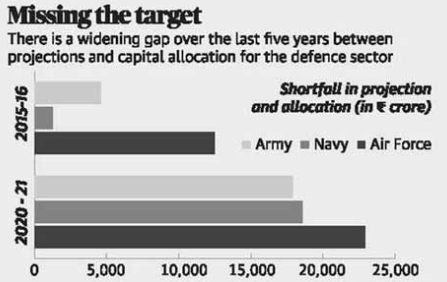
The shortfall in Defence Expenditure will Affect:
- Operational readiness of Andaman and Nicobar Command (ANC).
- Maintenance of SIGINT (Signal Intelligence) equipment.
- Administration of training institutes and operational units.
- Operationalisation of three tri-service organizations i.e. Defence Space Agency (DSA), Defence Cyber Agency (DCYA) and Armed Forces Special Operations Division (AFSOD).
Recommendations of the Committee:
- It has recommended a dedicated fund for committed liabilities and procurements before the shortfall impacts modernisation, invariably from next Budget onwards (2021-22)
UNNAT BHARAT ABHIYAN
17, Mar 2020
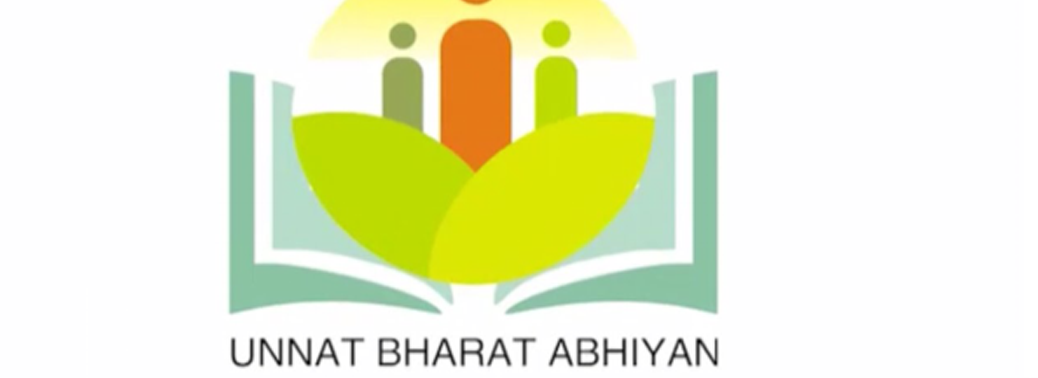
Why in News?
- Ministry for Human Resource Development (MHRD) has submitted the information related to the Unnat Bharat Abhiyan (UBA) recently.
Unnat Bharat Abhiyan (UBA):
- It is a flagship program of the Ministry for Human Resource Development (MHRD).
- It aims to link the Higher Education Institutions with a set of at least (5) village, so that these institutions can contribute to the economic and social betterment of these village communities using their knowledge base.
Objectives of the Scheme:
- To engage the faculty and students of Higher Educational Institutions (HEIs) in identifying development issues in rural areas and finding sustainable solutions for the same.
- Identify & select existing innovative technologies, enable customisation of technologies, or devise implementation methods for innovative solutions, as required by the people.
- To allow HEIs to contribute to devising systems for smooth implementation of various Government programmes.
About Unnat Bharat Abhiyan 2.0:
- It is the upgraded version of Unnat Bharat Abhiyan 1.0 launched in the year 2018.
- The scheme used to be extended to all educational institutes. But under Unnat Bharat Abhiyan 2.0 participating institutes are selected based on the fulfilment of certain criteria.
- The technological interventions under the UBA cover different subjects broadly categorized like in the area of sustainable agriculture; water resource management; artisans, industries and livelihood; basic amenities (Infrastructure & Services) and Rural Energy System.
AIR INDIA SALE: 100% FDI BY NRIS
14, Mar 2020

Context:
- Recently, the cabinet approved 100 percent Foreign Direct Investment (FDI) in Air India by foreign entities/NRIs under the automatic route. Earlier, the FDI limit permitted for NRIs was 49 per cent. This is considered to be a major development in the run-up to the Air India sale process, expected to be completed by this year.
Air India:
- It was founded as Tata Airlines (division of Tata Sons Ltd) in 1932 by J R D Tata
- In 1946, it became a Public Ltd Company with the name of Air India
- The government nationalized the carrier in 1953 and passed Air Corporations Act 1953, which provided the monopoly rights to Air India and its associates.
- This act was repealed after a standing committee headed by Pramod Mahajan recommended for it in 1993 and since 1994 the private sector players are allowed to participate in the aviation business
- In 2007 the decision to merge Air India with Indian Airlines to form NACIL (National Aviation Company of India Ltd) was taken.
- The merger is based on the recommendations of Justice Dharmadhikari committee report.
- The objective was to ensure lower administrative costs and other services.
- AI and Indian Airlines had been running profitably till 2005–06.
- It is commented that the merger of Air India with Indian Airlines has created woes due to lack of effective leadership and erroneous government policies.
Reasons for the failure of Air India:
Decision Making:
- Decision making is not quick enough due to the red tapism at different stages and there were various constraints on the operations.
The Rising Fuel Costs:
- The rising fuel costs have led to higher cost of operations which have eaten up the profit margins
Competition:
- The AI has been competing with private sector airlines which are more efficient in terms of ticket pricing, decision making, choosing the right routes, providing value-added services, etc.
AI and Indian Airlines Merger:
- The ill-timed merger was the biggest reason as it led to huge losses
Overstaffing:
- The number of staff/workers is very high compared to industry standards
Failure Gaining Momentum:
- Air India’s precarious financial situation was first made public in June 2009.
- But the government, instead of tackling the core problem of the lack of a strategic and operational direction within the airline, decided to focus on a financial package.
- The bailout package of over Rs.30,000 crore, which is being infused over an eight-year span ending 2021, has not helped Air India evolve into a robust carrier.
- In 2017, NITI Aayog recommended disinvestment but the government, in its wisdom, decided to not only retain 24% equity, it also wanted the acquirer to absorb a major chunk of the non-aircraft related debt.
Present Situation:
- The government has put Air India for disinvestment.
- It is driven by the Centre’s anxiety to get rid of the airline. Thus, it can spare itself of the responsibility of further infusion of funds.
- The reality is that the airline’s survival depends on several factors, most notably
- induction of a professional management with an effective leadership,
- a sound financial package that does not come with political interference in its day-to-day operations,
- trade unions allowing reasonable changes in work conditions and pay packages.
- After a failed attempt at Air India divestment in 2018, the government in January 2020 invited bids again for privatising the airline.
- Learning its lesson from the 2018 failure, the preliminary information memorandum states that 100% stake will be offloaded, unlike 76% offered in the previous attempt.
- However, the new owners would be required to continue to use the “Air India” brand name. The government has also retained a provision that substantial ownership and effective control of the airline must remain with an Indian entity.
Why are There No Buyers?
- The airline’s poor financial situation is what makes it largely unappealing.
- The airline had a debt burden of around ₹48,781 crore as of March 2017, which poses a huge financial risk to a buyer.
- Though the government has offered to transfer some of the debt to a special purpose entity, a buyer will still have to assume responsibility for debt of around Rs.30,000 crore after acquisition – still a significant burden for many.
- Apart from the huge debt burden, Air India has also been losing money for over a decade, with accumulated losses
- A major reason behind its huge losses is the cost of paying interest on its massive debt.
- Some analysts believe that Air India may not be worth anything to its buyers as they are unlikely to obtain any free cash flow after paying money to lenders.
- In fact, they may have to pay money from their own pockets if they assume personal liability for the debt.
100% FDI by NRIs:
- The FDI (foreign direct investment) policy would be amended to allow NRIs who are Indian nationals to own up to 100% of Air India “under automatic route”.
- Besides Air India, the government is also offloading its 100% stake in its low-cost subsidiary, Air India Express (AIXL), and 50% of AISATS, which provides cargo and ground handling services at major Indian airports.
- Apart from reducing the debt of the loss-making airline, the government has made a number of changes in the eligibility criteria for prospective bidders.
- Government had made changes so that the buyer would have to take over debt and liabilities worth Rs 32,986 crore, against around Rs 85,000 crore earlier.
- This means that the prospective buyer would now have to take over only 39% of the total debt and liabilities, unlike 61% in the 2018 bid document.
- The disinvestment of Air India would not just add to the government’s non-tax revenue next fiscal but also stop persistent loss to exchequer. The government has set an ambitious disinvestment target of Rs 2.1 lakh crore for FY21, against a revised Rs 65,000 crore for this fiscal. This part of disinvestment is highly necessary for the government to plug in the fiscal deficit amidst the chaos of slumping economy and a gloomy future in trade due to the Corona outbreak.
RAJYA SABHA NOD FOR VIVAD SE VISHWAS BILL
14, Mar 2020

Why in News?
- Recently, the Parliament has passed an amendment to the ‘Direct Tax Vivad se Vishwas Bill, 2020’ in order to widen its scope to cover litigation pending in various Debt Recovery Tribunals (DRTs).
About the Amendment:
- The amendment also includes certain search and seizure cases where the recovery is up to Rs. 5 crore.
- Therefore, the Bill in current form allows taxpayers to settle cases pending before the Commissioner (Appeals), Income Tax Appellate Tribunals (ITATs), Debt Recovery Tribunals (DRTs), High Courts and the Supreme Court.
- The Direct Tax Vivad se Vishwas Bill, 2020 is similar to the ‘Sabka Vishwas Scheme’, which was brought in to reduce litigation in indirect taxes in the year 2019. It resulted in settling over 1, 89,000 cases.
- Under the Sabka Vishwas Scheme, the government expected to raise around 39,500 crore. However, after the closure of the amnesty window in January 2020 application in relation to taxes worth Rs. 90,000 crore were received. This shows the success of the scheme.
What are its Key Features?
- Objective: The Bill provides a mechanism for resolution of pending tax disputes related to direct taxes (Income Tax and Corporate Tax)in simple and speedy manner.
- Reduce Litigation: According to the Finance Ministry, at present there are 4.83 lakh pending direct tax cases worth Rs.9 lakh crore in the courts. Through this scheme, the government wants to recover this money in a swift and simple way
- Addressing Revenue Shortfall: The government is witnessing a big shortfall in revenues, especially tax revenues, hence, increasing revenues in one of the priorities of the Government.
- Direct Tax collections have been lower than their budget targets due to the overall economic slowdown and a cut in the corporate tax rate in September, 2019.
- Mechanism: In case of payment of tax, a taxpayer would be required to pay only the amount of the disputed taxes and will get complete waiver of interest, penalty and prosecution provided he/she pays by March 31, 2020.
- But, if the tax arrears relate to disputed interest or penalty only, then 25% of disputed penalty or interest will have to be paid.
- Those who avail this scheme after March 31, 2020 will have to pay some additional 10% amount. However, the scheme will remain open till June 30, 2020.
- Immunity to Appellant: Once a dispute is resolved, the designated authority cannot levy interest or penalty in relation to that dispute.
- Further, no appellate forum can make a decision in relation to the matter of dispute once it is resolved.
- Revival of Disputes: However, if an appellant provides false information or violates the Income Tax Act, 1961, then case of dispute can be revived.
Other Issues Related to the Bill:
- Few MP’s also raised concern about the Hindi name of the bill, which claimed to be a violation of Article 348.
- Article 348 talks about the Language to be used in the Supreme Court and in the High Courts and for Acts, Bills, etc.
- Notwithstanding anything in the foregoing provisions of this Part, until Parliament by law otherwise provides
- all proceedings in the Supreme Court and in every High Court,
- the authoritative texts
- of all Bills to be introduced or amendments thereto to be moved in either House of Parliament or in the House or either House of the Legislature of a State,
- of all Acts passed by Parliament or the Legislature of a State and of all Ordinances promulgated by the President or the Governor of a State, and
- of all orders, rules, regulations and bye laws issued under this Constitution or under any law made by Parliament or the Legislature of a State, shall be in the English language.
MASKS, SANITISERS NOW ESSENTIAL COMMODITIES
14, Mar 2020
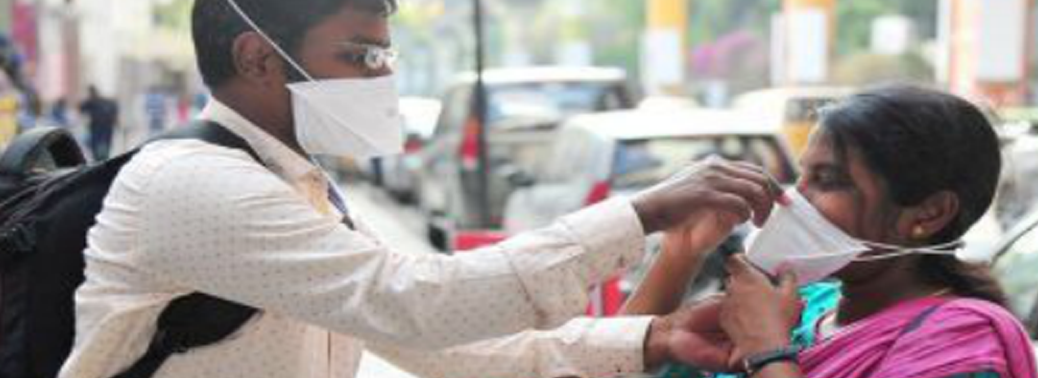
Why in News?
- The Centre recently brought masks and hand sanitisers under the Essential Commodities Act, 1955 (EC Act) in the wake of COVID-19 outbreak.
About the Essential Commodities Act:
- The Essential Commodities Act, 1955was enacted to ensure the easy availability of essential commodities to consumers and to protect them from exploitation by unscrupulous traders.
- The Act provides for the regulation and control of production, distribution and pricing of commodities which are declared as essential.
- Essential items under the Act include drugs, fertilisers, pulses and edible oils, and petroleum and petroleum products.
- The Act aim at maintaining/increasing supplies/securing equitable distribution and availability of these commodities at fair prices.
- Centre invokes the ECA Act’s provisions to impose stock limits in case of price/quantity distortions in the market to ensure adequate availability of essential commodities at reasonable prices.
- States are the implementing agenciesto implement the EC Act, 1955 and the Prevention of Black marketing & Maintenance of Supplies of Essential Commodities Act, 1980, by exercising powers delegated to them.
- The list of essential commodities is reviewed from time to timewith reference to their production and supply and in consultation with concerned Ministries/Departments.
- Currently, the restrictions like licensing requirement, stock limits and movement restrictions have been removed from almost all agricultural commodities.
- Exemptions:Wheat, pulses and edible oils, edible oilseeds and rice are certain exceptions.
- The recent amendment to the Legal Metrology (Packaged Commodities) Rules 2011 is linked to the ECA. The Government can fix the retail price of any packaged commodity that falls under the ECA.
What Masks and Sanitisers under ESA?
- Taking note of the fact that masks (2ply and 3ply surgical masks and N95 masks) and hand sanitisers are not easily available and vendors are charging exorbitant prices for them, the government declared these items as essential commodities till June 30 under the EC Act.
What are its Impact?
- Under this Act, the States and Union Territories can ask manufacturers to enhance their production capacity so that these products are widely available to consumers.
- Under the Act, an offender may be punished with an imprisonment up to seven years.
- The Consumer Affairs Ministry has also invoked the Prevention of Black marketing and Maintenance of Supplies of Essential Commodities Act, 1980 which would carry out action against those involved in overpricing and black marketing of the products.
Arguments against ECA:
- An archaic law:Essential Commodities Act has been in existence since 1955, when the economy was very different from what it is today. It was an economy ravaged by famine and food shortages.
- Difference between storage and hoarding:Recently there is evidence of interventions not working. It is because there is a distinction between storage and hoarding.
- As compared to older times, when the economy experiences acute shortages, today many shortage cases are actually that of hoarding.
- Stock limits led to onion price volatility:To control soaring prices of onions over the last few months, centre through ECA imposed stock limits on onions. Instead of decreasing prices, this actually increased price volatility.
- Although the restrictions on both retail and wholesale traders were meant to prevent hoarding and enhance supply in the market, the Survey showed that there was actually an increase in price volatility and a widening wedge between wholesale and retail prices.
- Lower stock limit led traders and wholesalers to immediately offload most of the kharif crop which led to a sharp increase in the volatility.
- Disincentivises storage infrastructure development:With too-frequent stock limits, traders may have no reason to invest in better storage infrastructure in the long run.
- Also, food processing industries need to maintain large stocks to run their operations smoothly. Stock limits curtail their operations. In such a situation, large scale private investments are unlikely to flow into food processing and cold storage facilities.
- Higher prices of medicines:Drug Price Control Order issued under the ECA also distorted the market and actually made medicines less affordable.
- The increase in prices is greater for more expensive formulations than for cheaper ones and for those sold in hospitals rather than retail shops.
- Rent seeking and Low conviction rates:Despite many raids conducted under the ECA in 2019, the conviction rate was abysmally low. The ECA only seems to enable rent-seeking and harassment.
Way Forward:
- Adequate supply:Given that almost all crops are seasonal, ensuring round-the-clock supply requires adequate build-up of stocks during the season.
- Without the ECA the common man would be at the mercy of opportunistic traders and shopkeepers.
- Genuine shortages:There can be genuine shortages triggered by weather-related disruptions in which case prices will move up.
- So, if prices are always monitored, farmers may have no incentive to farm.
- Difficult to differentiate between hording and shortage:It may not always be possible to differentiate between genuine stock build-up and speculative hoarding.
AT-1 BONDS
14, Mar 2020
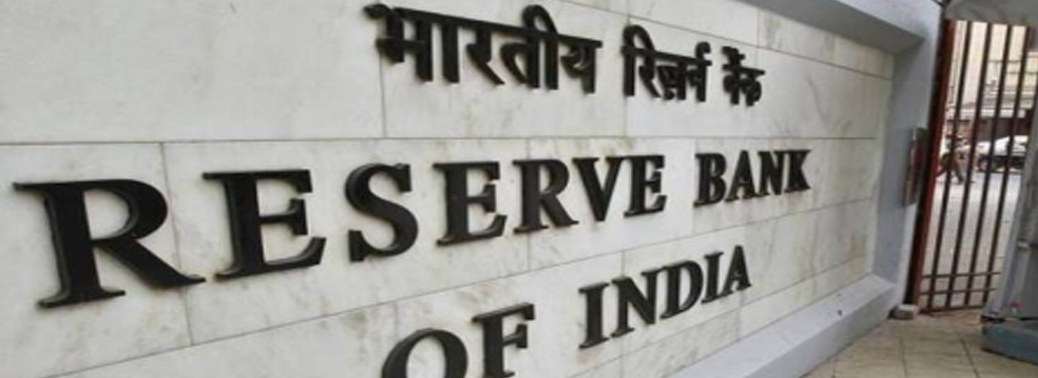
Why in News?
- Recently, the Reserve Bank of India (RBI) has made a proposal to write-down Additional Tier-1 (AT-1) bonds as part of the SBI-led restructuring package for Yes Bank.
What are AT-1 Bonds?
- AT-1 bonds are a type of unsecured, perpetual bonds that banks issue to shore up their core capital base to meet the Basel-III norms.
- AT-1 bonds are like any other bonds issued by banks and companies, but pay a slightly higher rate of interest compared to other bonds.
There are Two Routes through which these bonds can be Acquired:
- Initial private placement offers of AT-1 bonds by banks seeking to raise money.
- Secondary market buys of already-traded AT-1 bonds.
Key points about AT-1 Bonds:
- These bonds are also listed and traded on the exchanges. So, if an AT-1 bondholder needs money, he can sell it in the secondary market.
- Investors cannot return these bonds to the issuing bank and get the money. i.e there is no put optionavailable to its holders.
- However, the issuing banks have the option to recall AT-1 bonds issued by them (termed call options that allow banks to redeem them after 5 or 10 years).
- Banks issuing AT-1 bonds can skip interest payouts for a particular year or even reduce the bonds’ face value.
- AT-1 bonds are regulated by RBI. If the RBI feels that a bank needs a rescue, it can simply ask the bank to write off its outstanding AT-1 bonds without consulting its investors.
Basel-III Norms:
- It is an international regulatory accord that introduced a set of reforms designed to improve the regulation, supervision and risk management within the banking sector, post 2008 financial crisis.
- Under the Basel-III norms, banks were asked to maintain a certain minimum level of capital and not lend all the money they receive from deposits.
RBI’s Regulations over Banks:
- In a situation where a bank faces severe losses leading to erosion of regulatory capital, the RBI can decide if the bank has reached a situation wherein it is no longer viable.
- The RBI can then activate a Point of Non-Viability Trigger (PONV) and assume executive powers of the bank.
- By doing so, the RBI can do whatever is required to get the bank on track, including superseding the existing management, forcing the bank to raise additional capital and so on.
- However, activating PONV is followed by a write down of the AT-1 bonds, as determined by the RBI through the Banking Regulation Act, 1949.
IBC (AMENDMENT) BILL, 2020
13, Mar 2020

Context:
- Recently, the Indian parliament passed amendments to the insolvency law that will help safeguard successful bidders of insolvent companies from the risk of criminal proceedings for offences committed by the previous promoters. The bill seeks to remove bottlenecks and streamline the corporate insolvency resolution process. The latest changes pertain to various sections of the IBC as well as theintroduction of a new section.
About the Insolvency and Bankruptcy Code, 2016:
- The code is a comprehensive law, which covers all individuals, companies, Limited Liability Partnerships (LLPs) and partnership firms.
- It provides for a time-bound process to resolve insolvency.
- When a default in repayment occurs, creditors gain control over debtor’s assets and must take decisions to resolve insolvency.
- The Code also consolidates provisions of the current legislative framework to form a common forum for debtors and creditors of all classes to resolve insolvency.
- The Code creates various institutions to facilitate resolution of insolvency. These are as follows:
- Insolvency Professionals:
- A specialised cadre of licensed professionals who would administer the resolution process, manage the assets of the debtor, and provide information for creditors to assist them in decision making.
- Insolvency Professional Agencies:
- The insolvency professionals must be registered with insolvency professional agencies.
- The agencies conduct examinations to certify the insolvency professionals and enforce a code of conduct for their performance.
- Information Utilities:
- Creditors will report financial information of the debt owed to them by the debtor. Such information will include records of debt, liabilities and defaults.
- Adjudicating authorities:
- The proceedings of the resolution process will be adjudicated by the National Companies Law Tribunal (NCLT), for companies; and the Debt Recovery Tribunal (DRT), for individuals.
- The duties of the authorities will include approval to initiate the resolution process, appoint the insolvency professional, and approve the final decision of creditors.
- Insolvency and Bankruptcy Board:
- The Board regulates the insolvency professionals, insolvency professional agencies and information utilities set up under the Code.
- The Board consists of representatives of Reserve Bank of India, and the Ministries of Finance, Corporate Affairs and Law.
IBC (Amendment) Bill, 2020:
- Insolvency commencement date
- The Bill clarifies that the insolvency commencement date is the date of admission of an application for initiating corporate insolvency resolution process (CIRP).
- Presently under the Code, the insolvency resolution process commences when the Insolvency Resolution Professional (IRP) is appointed by the adjudicating authority.
- Threshold for initiating resolution process
- The Bill also specifies the minimum threshold for certain classes of financial creditors for initiating insolvency resolution process.
- The Code allows the creditors to initiate an insolvency resolution process, if the amount of default by the debtor is at least one lakh rupees.
- The Bill adds an additional requirement for certain classes of financial creditors for filing application. These classes include real estate allottees and security or deposit holders represented by a trustee or agent.
- Corporate debtors entitled to make application
- The Bill further clarifies that a corporate debtor should not be prevented from filing an application for initiation of corporate insolvency resolution process against other Corporate Debtors.
- Liabilities for Prior Offences
- The bill provides safeguard for the successful bidders of insolvent companies from the risk of criminal proceedings for offences committed by the previous promoters.
- Further, the Bill provides immunity to the company from attachment, seizure, retention, or confiscation of their property in relation to such offences.
- Licenses and permits not to be terminated due to Insolvency
- The Bill also amends the Code the effect that a licence, permit, registration, quota, concession, clearances or a similar grant or right will now not be terminated or suspended during the Moratorium period.
- This provision will be applicable as long as the debtor does not default in the payment of current dues arising for the use or continuation of such licenses or permits.
- IBC and its Shortcomings:
- The insolvency and bankruptcy law has resulted in recovery of just 10 percent of defaulted loans in case of companies other than the seven big cases referred for resolution.
- Of the 970 cases referred to IBC, 780 have been liquidated, indicating a mortality rate of 80 percent.
- Experts opine that only 43 percent of the loans has been recovered, implying that banks took a haircut of 57 percent on their loans
- There is also a concern over the MSMEs that will be compelled to supply goods to debt-ridden companies, under examination by the Resolution Professional.
- Though the bill is equipped to remove bottlenecks and streamline the corporate insolvency resolution process, it needs furthermore scrutiny to iron out the shortcomings and make the resolution process much more efficient and creditor friendly..
WOMEN IN WORKFORCE
11, Mar 2020

Context:
- According to a statement by the non- government organisation Azad Foundation – women workforce in the country fell to 18 per cent in 2019 from 37 per cent in 2006, The World Economic Forum’s Global Gender Gap Report this year ranks India at 149th position out of 153 countries on economic participation and opportunity.
Observations by the Azad Foundation:
- According to the Foundation, the Global Gender Gap Report estimates that raising women’s participation in the labour force can increase India’s GDP significantly.
- The declining women’s labour force participation, gender pay gap, high rates of informal work with lack of social security are seen as impediments to the goal of gender equality and empowerment of women in India. Over the last few years more women have taken up Science, Technology, Engineering and Mathematics courses and are aspiring to enter the workforce. However dropout rates among women is also high, particularly around marriage, maternity and motherhood.
Safeguards for Women:
- The principle of gender equality has been put forward in the Indian Constitution through its Preamble, Fundamental Rights, Fundamental Duties and Directive Principles.
- The Constitution not only grants equality to women, but also empowers the State to adopt measures of positive discrimination in favour of women.
- From the Fifth Five Year Plan (1974-78) onwards has been a marked shift in the approach to women’s issues from welfare to development.
- The National Commission for Women was set up by an Act of Parliament in 1990 to safeguard the rights and legal entitlements of women.
- The 73rdand 74th Amendments (1993) to the Constitution of India have provided for reservation of seats in the local bodies of Panchayats and Municipalities for women, laying a strong foundation for their participation in decision making at the local levels.
- India has also ratified various international conventions and human rights instruments committing to secure equal rights for women.
- Key among them is the ratification of the Convention on Elimination of All Forms of Discrimination against Women (CEDAW) in 1993.
- The Government of India attempted to gender sensitise the Budget initially through the Women’s Component Plan (by state governments also) and then more intensively with Gender Responsive Budgeting institutionalized through the Gender Budget Statement published every year since 2005 ‐2006 with the Union Budget (in some states as well).
- The women’s movement and a wide-spread network of non-Government Organisations which have strong grass-roots presence.
- The Indian government is running many schemes for women’s empowerment such as the Pradhan Mantri Ujjwala Yojana, Beti Bachao Beti Padhao, Mahila E-haat Scheme, Sukanya Samriddhi Yojana, Sakhi Yojana, Ladli Yojana, Digital Laado and the Swachh Bharat Mission.
- Maternity Benefits Act – Maternity benefits are generous for a small minority of Indian women employed in the formal sector and covered under the Maternity Benefit Act.
- NFSA – Under the National Food Security Act, 2013, all pregnant women (except those already receiving similar benefits under other laws) are entitled to maternity benefits of ₹6,000 per child.
- Maternity benefits scheme – a maternity benefit scheme was rolled out in 2017: the Pradhan Mantri Matru Vandana Yojana (PMMVY).
Challenges in Bringing Gender Equality
- For millions of years, except in few matriarchal societies, the man has always been considered the head of the family.
- Even among the educated, there are deep rooted biases that prevent people from admitting that the man is no longer the provider-in-chief.
- A study at the University of Chicago found that marriages in which the woman earned more were less likely in the first place and more likely to end in divorce.
- It also found that women who out-earned their husbands were more likely to seek jobs beneath their potential and do significantly more housework and child care than their husbands to make their husbands feel less threatened.
- The norms in our families act as a huge deterrent to achieving gender parity.
- Annual Crime in India Report 2018 by NCRB
- According to the report, 3,78,277 cases of crime against women were reported in the country, up from 3,59,849 in 2017.
- Uttar Pradesh topped the list with 59,445 cases, followed by Maharashtra (35,497) and West Bengal (30,394).
- The conviction rate in rape-related cases stood at 27.2% even though the rate of filing chargesheets was 85.3% in such cases.
- Cruelty by husband or his relatives (31.9%) followed by assault on women with intent to outrage her modesty (27.6%) constituted the major share of crimes against women.
Sociology behind the Gender-Divide in Workplace:
- Research shows that when men and women apply for jobs — be in the labour market, or in places where high level qualifications are demanded, men candidates engage in self-promotion, and are boastful while equally qualified women are more ‘modest’ and ‘undersell’ themselves.
- Even in groups and situations where men and women are present as colleagues, the views of women are either ignored or listened to less seriously than those of men.
- As a result, women tend to underestimate their ability relative to men, especially in public settings, and negotiate less successfully.
- Dual role played by women as a part of the workforce and as a caretaker of the family, makes it difficult for her to align in the same position as that of men.
Why Female Labour Force Participation Matters Beyond Social Cause?
- Ignoring India’s declining female labour force participation at a time of economic distress is a mistake.
- Women in workforce improve overall efficiency and the country’s economy
- In India, where young women’s education is now at par with men’s, ignoring that half of the population isn’t participating equally in the economy means we are missing out on many things, like-
- Innovation
- Enterpreneurship
- Productivity gains.
- Large potential to increase in GDP
- A report by McKinsey Global Institute suggests that if women participated in the Indian economy at the level men do, annual GDP could be increased by 60 per cent above its projected GDP by 2025.
- The same analysis also suggested that India’s potential GDP gains through achieving
MICRO-IRRIGATION HIT BY LACK OF FUNDS
11, Mar 2020
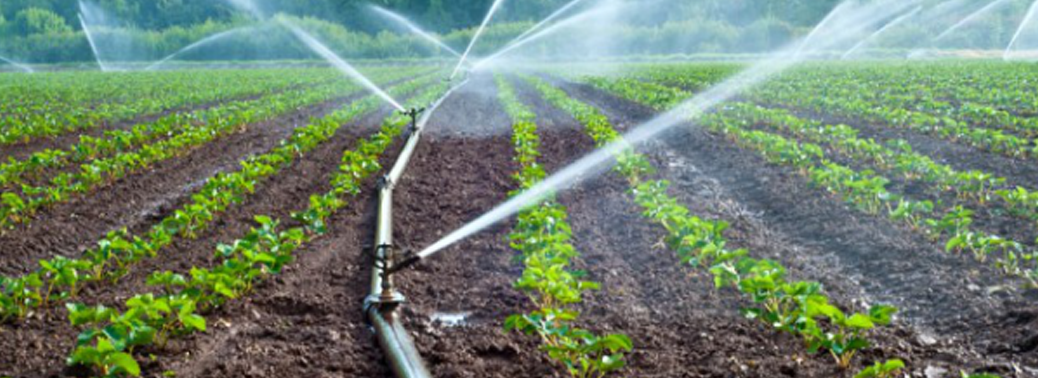
Why in News?
- The prevailing economic slowdown appears to have affected the implementation of the projects to provide drip and sprinkler implements to farmers in state of Telangana.
Highlights:
- For providing the drip and sprinkler implements to the targeted extent of land, an amount of Rs 669 crore is required, including RS 270 crore contribution of the Centre and about Rs 400 crore share of the State.
Micro-irrigation:
- Drip irrigation is a type of micro-irrigation system that has the potential to save water and nutrients by allowing water to drip slowly to the roots of plants, either from above the soil surface or buried below the surface.
- The goal is to place water directly into the root zone and minimize evaporation. Drip irrigation systems distribute water through a network of valves, pipes, tubing, and emitters.
- Depending on how well designed, installed, maintained, and operated it is, a drip irrigation system can be more efficient than other types of irrigation systems, such as surface irrigation or sprinkler irrigation.
Advantages:
- Fertilizer and nutrient loss is minimized due to a localized application and reduced leaching.
- Water application efficiency is high if managed correctly. Field leveling is not necessary.
- Fields with irregular shapes are easily accommodated. Recycled non-potable water can be safely used.
- Moisture within the root zone can be maintained at field capacity. Soil erosion is lessened.
- Weed growth is lessened. Water distribution is highly uniform, controlled by the output of each nozzle.
- Labour cost is less than other irrigation methods.
Disadvantages:
- Initial cost can be more than overhead systems.
- The sun can affect the tubes used for drip irrigation, shortening their lifespan.
- If the water is not properly filtered and the equipment not properly maintained, it can result in clogging or bio clogging.
- Drip tape causes extra clean-up costs after harvest. Users need to plan for drip tape winding, disposal, recycling or reuse.
- In lighter soils subsurface drip may be unable to wet the soil surface for germination. Requires careful consideration of the installation depth.
- The PVC pipes often suffer from rodent damage, requiring replacement of the entire tube and increasing expenses.
#SHEINSPIRESUS
10, Mar 2020

Context:
- Prime Minister of India on 8th March 2020 marked International Women’s Day by handing over control of his social media accounts to seven women achievers. It is claimed to be an unique initiative and it is expected to inspire many women from various echelons of the society who are contributing to its development in their own ways.
International Women’s Day 2020:
- International Women’s Day (March 8) is a global day celebrating the social, economic, cultural and political achievements of women.
- The day also marks a call to action for accelerating gender parity.
- The 2020 theme for International Women’s Day (8 March) is, “I am Generation Equality: Realizing Women’s Rights”.
History:
- The early years of the 20th century saw rapid industrialisation in many countries and the working conditions of most of the women employed in factories and on the production lines gave cause for considerable concern.
- In 1910 a second International Conference of Working Women was held in Copenhagen. A woman named Clara Zetkin (Leader of the ‘Women’s Office’ for the Social Democratic Party in Germany) tabled the idea of an International Women’s Day.
- She proposed that every year in every country there should be a celebration on the same day – a Women’s Day – to press for their demands.
- The conference of over 100 women from 17 countries, representing unions, socialist parties, working women’s clubs – and including the first three women elected to the Finnish parliament – greeted Zetkin’s suggestion with unanimous approval and thus International Women’s Day was the result.
- International Women’s Day was celebrated for the first time by the United Nations in 1975.
- Then in December 1977, the General Assembly adopted a resolution proclaiming a United Nations Day for Women’s Rights and International Peace to be observed on any day of the year by Member States, in accordance with their historical and national traditions.
- 2011 saw the 100 year centenary of International Women’s Day – with the first IWD event held exactly 100 years ago in 1911 in Austria, Denmark, Germany and Switzerland.
The Super Seven:
- PM Narendra Modi’s social media accounts were handled by seven women from different fields on International Women’s Day. A look at the achievements of these women:
- Arifa Jaan:
- Kashmir-based Arifa Jaan is passionate about reviving Namda, the traditional craft of the region
- Sneha Mohandoss:
- Inspired by her mother, Chennai-based Sneha Mohandoss started an initiative called Foodbank India, aimed at eradicating hunger through food donation campaigns.
- Kalavati Devi:
- A mason from Kanpur, Uttar Pradesh, she collected funds from the public and built toilets for better hygiene in her locality.
- Kalpana Ramesh:
- The Hyderabad-based architect is focused on water conservation projects, especially rainwater harvesting, and spreads awareness on the responsible use of water
- Malvika lyer:
- An award winning disability rights activist, social worker and model
- She lost both arms in a bomb blast at Bikaner when she was 13
- Vjaya Pawar:
- She promotes handicrafts from the Banjara Community of rural Maharashtra
- Veena Devi:
- An organic farmer from Munger, Bihar, she has been cultivating mushrooms at some since 2013, setting an example in self-Sufficiency. She gained recognition for cultivating 1 kg mushrooms under her bed
- Namda Traditional Art:
- Namda is a local term used for traditional felted wool floor coverings, made out of a coarse variety of wool.
- Namda comes from the root word Namata (Sanskrit for woollen stuff).
- Namda making is practised as a craft in several cultures, especially in the countries throughout Asia, viz. Iran, Afghanistan and India.
- Srinagar in Kashmir and Tonk in Rajasthan are the two major namda making centres in India.
- In India, it is known to have come from Iran and was actively promoted in the state under the patronage of the Mughal monarchs and the Rajput royals.
- Rich hues and exquisite designing are the characteristics of the handcrafted Namda.
- Unique themes and floral patterns provide the themes for these masterpieces and flowers and leaves, buds and fruits are the essence of the designs.
STATUS OF GOVERNMENT SCHOOLS IN INDIA
10, Mar 2020
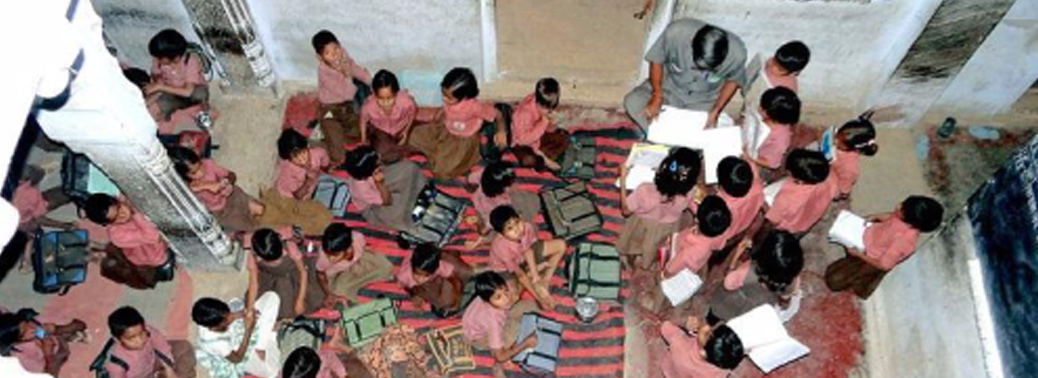
Why in News?
- The Parliamentary Standing Committee on Human Resource Development (HRD) recently submitted its report on the 2020-2021 demand for grants for school education to the Rajya Sabha and has made various observations on state of government schools in India.
What are the Key Findings?
- Almost half the government schools in the country do not have electricity or playgrounds.
- The budgetary allocations saw a 27% cut from proposals made by the School Education Department, despite proposals for 82,570 crore, only Rs. 59,845 crore was allocated.
- There is slow progress in building classrooms, labs and libraries to strengthen government higher secondary schools.
- Overall, for the core Samagra Shiksha Scheme, the department had only spent 71% of revised estimates by December 31, 2019.
- India is also dealing with a scenario of significant teacher vacancies, which are to the tune of almost 60-70 per cent in some states.
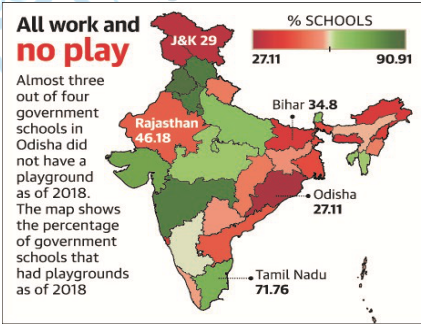
About Samagra Shiksha Abhiyan:
- Samagra Shiksha is an integrated scheme for school education extending from pre-school to class XII to ensure inclusive and equitable quality education at all levels of school education.
- It subsumes the three Schemes of Sarva Shiksha Abhiyan (SSA), Rashtriya Madhyamik Shiksha Abhiyan (RMSA) and Teacher Education (TE).
- The scheme treats school education holistically as a continuum from Pre-school to Class 12.
- The main emphasis of the Scheme is on improving the quality of school education by focussing on the two T’s – Teacher and Technology.
What are its Key Recommendations?
- Core schemes should get additional funds at the revised estimates stage.
- HRD Ministry should collaborate with the Mahatma Gandhi National Rural Employment Guarantee Scheme to construct boundary walls.
- It should also work with the Ministry of New and Renewable Energy to provide solar and other energy sources so that schools have access to power.
What is the Concern?
- The learning crisis is evident in the fact that almost half of the children in grade 5 in rural India cannot solve a simple two-digit subtraction problem, while 67 per cent of children in grade 8 in public schools score less than 50 per cent in competency-based assessments in mathematics.
Need of an Hour:
- The Delhi Model of Education:
- For too long, there have been two kinds of education models in the country: one for the classes and another for the masses. The AAP government in Delhi sought to bridge this gap.
- Its approach stems from the belief that quality education is a necessity, not a luxury. Hence, it built a model which essentially has five major components and is supported by nearly 25% of the State Budget.
- Key components of the model:
1. Transformation of school infrastructure.
2. Training of teachers and principals.
3. Engaging with the community by reconstituting school management committees (SMC).
4. Curricular reforms in teaching learning.
5. No fee increase in private schools.
MADRAS HC DISMISSES M. P’S PLEA ON GI TAG FOR BASMATI RICE
10, Mar 2020
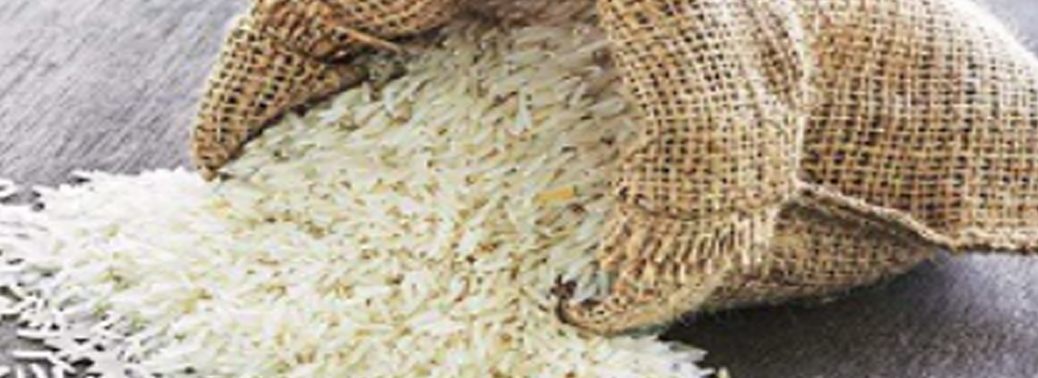
Why in News?
- The Madras High Court has set aside the State of Madhya Pradesh and the Madhya Shetra Basmati Growers Association plea to restrict the production of Basmati rice to certain regions in the Indo-Gangetic plain.
About Basmati Rice:
- It is one of the best known varieties of rice all across the globe.
- It is a long grain rice which has its origin from India and some parts of Pakistan.
- It has a unique position in the rice world due to its price, fragrance, grain morphology as well as quality.
- Basmati rice has a unique fragrance and flavour caused due to the presence of a chemical called 2-acetyl-1-pyrroline.
- This chemical is found in basmati rice at about 90 parts per million (ppm) which is 12 times more than non-basmati rice varieties.
- Basmati rice needs specific climatic conditions to grow which is why it is cultivated in selected regions of India.
- It is cultivated in the states of Himachal Pradesh, Punjab, Haryana, Delhi, Uttarakhand, Madhya Pradesh, Jammu and Kashmir and western Uttar Pradesh (Indo Gangetic Plains).
Production of Basmati Rice in India:
- India is the largest producer of Basmati rice with about 70 per cent share in global production.
- Basmati rice constitutes one of India’s significant exports both in terms of soft power and hard money.
- India is leading exporter of Basmati rice in the global market.
- During 2016-17, India exported 40, 00,471.56 MT of Basmati Rice.
- Major Export Destinations in 2016-17 included Saudi Arabia, Iran, United Arab Emirates, Iraq and Kuwait.
- According to a report, the Indian Basmati rice industry is on the verge of clocking its highest ever export of around 30,000 crore rupees in the financial year 2019.
- India has always been involved in protecting the name Basmati as a geographic indicator. In other words, Basmati is a term that should be restricted to the product from its geographic location.
About the Issue:
- Agricultural and Processed Food Products Export Development Authority (APEDA) had initiated steps to protect and get GI recognition for Basmati cultivated in the IGP.
- It had applied for registration of GI basmati rice in its favour in May 2010.
- APEDA was established by the Government of India under the Agricultural and Processed Food Products Export Development Authority Act, passed by the Parliament in December, 1985.
- It is a statutory body under the Ministry of Commerce and Industry and is the apex organization engaged in work related to the development of export of agricultural products and processed food from India.
- It is responsible for putting in place a system for administration of GI and authentication of the product in India and abroad.
About Geographical Indication (GI):
- Geographical Indication is an insignia on products having a unique geographical origin and evolution over centuries with regards to its special quality or reputation attributes.
- It is a mark of authenticity and ensures that registered authorised users (or at least those residing inside the geographic territory) are allowed to use the popular product name.
- GI registration confers:(i) Legal protection to the products (ii) Prevents unauthorised use of a GI tags by others (iii) Helps consumers to get quality products of desired traits (iv) Promotes economic prosperity of producers of GI tag goods by enhancing their demand in national and international markets.
- Legal Authorities:At international level, GI is governed by World Trade Organisation’s (WTO’s) Agreement on Trade-Related Aspects of Intellectual Property Rights (TRIPS).
- In India, GI registration is governed by the Geographical Indications of goods (Registration and Protection) Act, 1999. Darjeeling tea was the first product in India accorded with GI tag.
- Presently, there are total 218 GI tag products from India. Some of them are Mysore Silk, Mysore Pak, Thanjavaur Veena, etc.
YES BANK CRISIS
07, Mar 2020
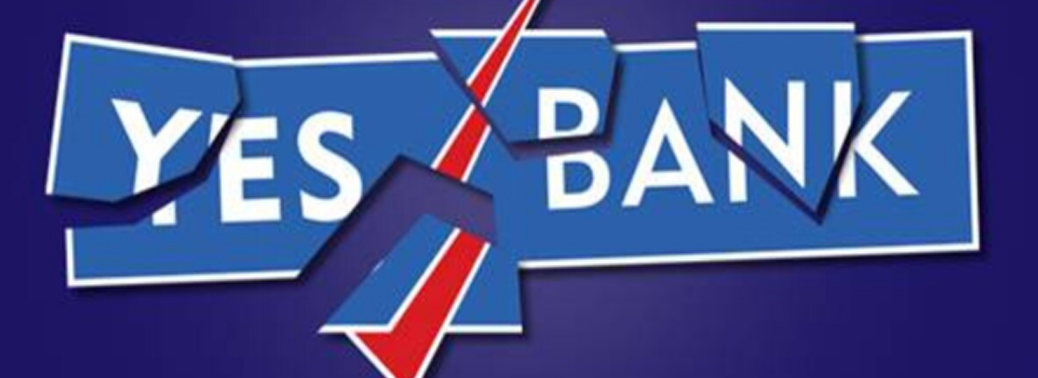
Context:
- Recently, the Reserve Bank of India (RBI) on March 5 imposed a moratorium on the private sector lender Yes Bank, limiting withdrawal of deposits to Rs 50,000. The RBI has also superseded the institution’s board of directors and had imposed a 30-day moratorium.RBI has appointed Prashant Kumar, former CFO of State Bank of India as its administrator.
What’s a Moratorium?
- It means the bank’s normal operations including lending and deposit mobilization are restricted.
- Under Section 45 of the Banking Regulation Act 1949, the one-month moratorium imposed on Yes Bank came into effect from March 5 and will be on till April, 6.
- During this period, deposit withdrawals are capped, while the bank cannot give fresh loans or renew existing loans besides others
Why did Yes Bank Collapse?
- Deteriorating Financial Position
- The bank was making losses and inadequate profits for consecutive quarters
- The bank was unable to raise capital to address potential loan losses and resultant downgrades
- In FY’19 alone, it reported a divergence of Rs 3,277 crore in bad loans and Rs 978 crore in NPA provisions.
- Governance Issues:
- The bank has also experienced serious governance issues and practices.
- In 2018, the RBI refused to give Yes Bank’s boss Rana Kapoor an extension as chief executive and managing director due to his highly irregular credit management practices.
- Failure in Raising Capital
- There was no concrete proposal from investors to put the kind of money that the bank required to survive and grow.
- In August 2019, it raised Rs 1,930.46 crore through qualified institutional placement (QIP), but this only scratched the surface of what it needed.
- Outflow of Liquidity
- The bank was facing regular outflow of liquidity due to withdrawal of deposits from customers.
- Although the government has limited withdrawals from Yes bank accounts to a maximum of Rs 50,000 per month, the deposits with Yes Bank are insured for up to Rs 5 lakh by the DICGC.
- Budget 2020 proposed to increase insurance coverage of deposits with scheduled banks from Rs 1 lakh to Rs 5 lakh by Deposit Insurance and Credit Guarantee Corporation (DICGC).
- DICGC came into existence in 1978 after the merger of Deposit Insurance Corporation (DIC) and Credit Guarantee Corporation of India Ltd. (CGCI) after passing of the Deposit Insurance and Credit Guarantee Corporation Act, 1961 by the Parliament.
- It serves as a deposit insurance and credit guarantee for banks in India.
- It is a fully owned subsidiary of and is governed by the Reserve Bank of India.
- What DICGC does?
- DICGC charges 10 paise per ₹ 100 of deposits held by a bank. The premium paid by the insured banks to the Corporation is paid by the banks and is not to be passed on to depositors.
- DICGC last revised the deposit insurance cover to ₹ 1 lakh on May 1, 1993, raising it from ₹ 30,000 since 1980. The protection cover of deposits in Indian banks through insurance is among the lowest in the world.
- The Damodaran Committee on ‘Customer Services in Banks’ (2011) had recommended a five-time increase in the cap to ₹5 lakh due to rising income levels and increasing size of individual bank deposits.
- Budget 2020 proposed to increase insurance coverage of deposits with scheduled banks from Rs 1 lakh to Rs 5 lakh.
- What kind of deposits are covered
- DICGC covers all deposits such as savings, fixed, current, recurring and so on except for the following deposits:
The safety of the Depositors:
Deposit Insurance and Credit Guarantee Corporation (DICGC):
1.Deposits of foreign governments;
2.Deposits of Central/State Governments;
3.Inter-bank deposits;
4.Deposits of the State Land Development Banks with the State co-operative bank;
5.Any amount due on account of and deposit received outside India
6.Any amount, which has been specifically exempted by the corporation with the previous approval of Reserve Bank of India
DISABILITY PENSION
07, Mar 2020

Why in News?
- Recently, the government has withdrawn a circular, that had directed banks to deduct income tax on pension and disability benefits provided to disabled retired military personnel.
About Categories of Disabled Veterans:
- They are classified under three categories: battle casualties (war wounded), battle casualties and disabilities due to service conditions.
- The military personnel who have been disabled due to wounds or injuries suffered by them in operations with the enemy or terrorists/ insurgents or suchlike operations are battle casualties (war wounded), while personnel who have been declared battle casualties but have not suffered injuries due to physical wounds are classified under battle casualties.
- The third category pertains to personnel who have been disabled due to conditions of service, wherein some of the disabilities akin to lifestyle diseases are also included.
Benefits are based on the Percentage of Disability:
- Less than 20% disability is not entitled to any benefits.
- Those with disability from 21% to 50% are categorised as 50% disabled,
- Those with 51% to 75% disability are classified as 75% disabled, and
- Those with 76% or more disability are classified as 100% disabled.
- The Amount of disability pension is based on two categories
The first rate is for battle casualties (war wounded) and battle casualties:
- For 21% to 50% disability, 30% of the last pay drawn is given as disability pension;
- for 51% to 75% disability, 45% of the last pay; and
- for 76% of more disability, 60% of last pay drawn on retirement is given as disability pension.
The second rate applies to personnel with disabilities due to service conditions:
- For 21% to 50% disability, 15% of the last pay drawn is the disability pension;
- for 51% to 75% disability, 22.5% of the last pay; and for 76% of more disability,
- 30% of the last pay drawn on retirement is given as disability pension.
Are These Disability Pensions Tax-Free?
- The entire pension and disability element of pension in all the categories is exempt from payment of income tax.
- But the Central Board of Direct Taxes (CBDT) notified that tax exemption on disability pension would be available only to personnel who had been invalidated from service and not to personnel who had retired otherwise.
- This has been challenged in the Supreme Court which, in an order dated August, 2019, directed all parties to maintain ‘status quo’ on the matter.
About Central Board of Direct Taxes (CBDT):
- It is a statutory body established as per the Central Board of Revenue Act, 1963.
- It is India’s official financial action task force unit.
- It is administered by the Department of Revenue under the Ministry of Finance.
About CBDT Structure:
- The Central Board of Direct Taxes consists of a Chairman and six members that deal with the following:
1.Income Tax
2.Revenue
3.Legislation and Computerisation
4.Audit and Judicial
5.Investigation
6.Personnel and Vigilance
- The Members of the CBDT are selected from the Indian Revenue Service (IRS). The members constitute the top management of the Income Tax Department.
Functions of CBDT:
- It deals with matters related to levying and collecting Direct Taxes.
- Formulation of various policies.
- Supervision of the entire Income Tax Department
- Suggests legislative changes in Direct Tax Enactments
- Suggests changes in tax rates
- Proposes changes in the taxation structure in line with the Government policies.
Current Controversy:
- The Principal Controller of Defence Accounts, Allahabad issued a circular on February 20, for “necessary action” on the June 2019 CBDT notification to deduct income tax from pensions of disabled soldiers.
- The State Bank of India then started debiting tax at source for the entire financial year 2019-20 from the February pension of retired military personnel who were receiving disability pension. This led to several pensioners receiving as little as Rs 1000 in their accounts.
THE ECONOMIC IMPACT OF CORONAVIRUS
05, Mar 2020

Why in News?
- The outbreak of Corona virus in China and its spread to neighbouring countries has been having a devastating impact on the various sectors of the economy at both global and national level.
- Thus the impact of this spread on various sectors has been discussed here.
Global Scenario:
1. Slowdown in Global Growth: The world’s economy could grow at its slowest rate since 2009 this year due to the corona virus outbreak, according to OECD. The OECD has forecast growth of just 2.4% in 2020, down from 2.9% in November 2019.
2. Travel Industry: The number of cases diagnosed is increasing around the world every day. Thus, many countries have introduced travel restrictions to try to contain the virus’s spread, impacting the travel industry massively.
3. Fall in Customer Demand: Some people are choosing to avoid activities that might expose them to the risk of infection, such as going out shopping. Restaurants, car dealerships and shops have all reported a fall in customer demand.
4. Beneficiaries: Consumer goods giant Reckitt Benckiser, for example, has seen a boost in sales for its Dettol and Lysol products. The disinfectant is seen as providing protection against the spread of the disease, although its effectiveness has not yet been scientifically proven.
Impact on Indian Economy:
1. GDP Growth Rate:
- OECD has slashed India’s growth forecast for 2020-21 by 110 basis points to 5.1%, warning that the impact of the Covid-19 outbreak on business confidence, financial markets and the travel sector, including disruption to supply chains, could shave 50 bps off global growth in 2020.
2. Automobile Industry:
- China is one of the leading suppliers of auto components in India, accounting for 27% of the total imports.
- The corona virus is expected to have an impact on the Indian automotive industry and therefore also on the automobile component and forging industries, which had already reduced their production rate due to the market conditions and on account of the impending change over to BS-VI emission norms from BS-IV from April 2020.
3. Impact on Pharmaceuticals Sector:
- Given the pharmaceutical industry’s deep linkages to China, the supply chain of raw materials of drugs has taken a hit.
- The production facilities in Himachal Pradesh — largest pharma hub of Asia — have warned of suspension.
- India is heavily import-dependent for APIs from China. India’s API imports stand at around $3.5 billion per year, and around 70%, or $2.5 billion, come from China.
4. Currency
- The month of March is typically good for the Indian currency as remittances, from both overseas citizens and companies, tend to boost the exchange rate.
- In the past decade, the rupee has appreciated seven times against the dollar in March. But March 2020 could be hard on the exchange rate and the rupee’s sharp drop to 73.25 per dollar on 3rd March, 2020 is evidence of this. One of the reasons is an increase in the number of reported cases of coronavirus in India.
Response at Global level:
- Vaccines are being developed.
- The COVID-19 outbreak was declared a Public Health Emergency of International Concern by the WHO.
- According to recommendations by the World Health Organization, the diagnosis of COVID-19 must be confirmed by the Real Time- Polymerase Chain Reaction (PCRT-PCR) or gene sequencing for respiratory or blood specimens, as the key indicator for hospitalisation.
- $15 million dollars has been released from the UN’s Central Emergency Fund to help fund global efforts to contain the spread of the COVID-19 corona virus, particularly vulnerable countries with weak health care systems.
Response at National Level:
- The Indian health minister advised people to approach the government helpline numbers regarding the doubts related to symptoms of the deadly disease. The situation is being monitored at the highest level.
- The government has already introduced travel restrictions and suspended visas from affected countries.
- A detailed containment plan has been shared with states. States have been asked to identify possible isolation areas in hospitals that can accommodate larger numbers.
- PCR Test: If PCR test is positive, the sample is sent to the National Institute of Virology in Pune, which is the only government laboratory currently doing genome sequencing, for final confirmation.
ROAD SAFETY IN INDIA
04, Mar 2020

Context:
- The 3rdGlobal Ministerial Conference on Road Safety “Achieving Global Goals 2030” was held February this year, where the conference aimed to chart future strategic directions for global road safety, and define ways to accelerate action on proven strategies.
Road safety in India:
Data on “Road Accidents in India 2018”:
- As per the ‘Road Accidents in India, 2018’ Report, Road accidents in the country have increased marginally by 0.46 % during 2018 compared to 2017.
- The fatalities during the same period have also risen by about 2.37% and 1,51,471 persons were killed in 2018 as against 1,47,913 in 2017.
- Road accident injuries have however shown a decrease of 0.33% in 2018 as compared to 2017.
- As per the report, 62 pedestrians die daily on Indian roads.
- Till 2014, it was 32, a rise of 84% in just four years (2014 to 2018).
- West Bengal tops the list of pedestrian related fatalities with 2618 deaths in 2018.
Significance of Road Safety:
- Road transport is the dominant mode of transport in India, in terms of traffic share and in terms of contribution to the national economy.
- To meet the demand for road transport, the number of vehicles and the length of road network have increased over the years.
- A negative externality of expansion in road network, motorization and urbanization in the country is the increase in road accidents and road crash fatalities.
- Road traffic injuries are one of the leading causes of death, disabilities and hospitalization in the country imposing huge socio-economic costs.
Impact of lack of Road Safety:
- Road accident injuries are the leading causes of deaths and disabilities.
- The age profile of road accidents victims in year 2016 reveals that the productive age group of 18 to 35 years accounts for the high share of 46.3 percent and the age group of 18-45 accounted for a share of 68.6% in the total road accident fatalities.
- India loses 3% of its GDP due to road accidents, most of which are preventable.
Causes of Road Accident:
- Many road accidents are the result of faulty road-design especially a single-lane one with a sharp curve.
- Infrastructural deficits: Pathetic conditions of roads and vehicles, poor visibility and poor road design and engineering – including quality of material and construction.
- Negligence and risks: Over speeding, driving under the influence of alcohol or drugs, tiredness or riding without a helmet, driving without seatbelts.
- Distraction while driving like talking over mobile phones while driving has become a major cause of road accidents.
- Overloading to save cost of transportation.
- Weak Vehicle Safety Standards in India: In 2014, crash tests carried out by the Global New Car Assessment Programme (NCAP) revealed that some of India’s top-selling car models have failed the UN’s frontal impact crash test.
- Lack of awareness among people regarding the importance of safety features like airbags, Anti-lock Braking system etc. Moreover, Vehicle manufacturers do not provide them as standard fitment but only in higher class vehicles reducing their reach.
Steps taken by the Government:
- In 2015 the Indian government announced the application of new regulations consistent with the UN standards for front and side impact and also pedestrian protection.
- For new car models, the use of front and side crash tests came into force from October 2017 and will apply to all new cars from October 2019.
- The pedestrian protection regulation for new models came into force from October 2018 and will apply to all new cars from October 2020.
- In addition, new cars are required to have airbags fitted as standard and to have a speed warning device above 80 km/h.
- KS Radhakrishnan panel on Road Safety
- Supreme Court had set up the three-member KS Radhakrishnan panel on road safety in April 2014.The main recommendation of the committee was
- Ban on the sale of alcohol on highways (both state and national) to restrain drunk driving.
- The states were directed to implement laws on wearing helmets.
- Audit of road safety to be implemented by states to ensure the safety standards in the design, construction, and maintenance of roads.
- The committee stressed the importance of creating awareness among people on road safety rules.
- 3 Year Action Agenda NITI Aayog also highlighted need for Road Safety and set the following Agenda:
- Create Road Safety Boards to reduce accidents. Use data to monitor accidents. We can do this by using data to monitor accidents in real time and use this input to direct efforts towards correction on specific points.
- Standardize reporting of accidents and enhance preparedness through better logistics.
- Provisions to ensure that whenever an emergency situation occurs, the victims are rushed to a nearby medical centre within 10 minutes of the accident.
- Create supporting infrastructure and economic models to support better safety and efficiency.
- India signed the Brasilia declaration and committed to reduction in fatalities.
Brasilia Declaration on Road Safety:
- The declaration was signed at the Second Global High-Level conference on Road Safety held in Brazil.
- Through the Brasilia Declaration Countries plan to achieve the Sustainable Development Goal 3.6: By 2020, halve the number of global deaths and injuries from road traffic accidents.
- United Nations has also declared 2010-2020 as the decade of action for Road Safety.
The Plight of the Pedestrians:
- Despite a weak legal framework, the rights of pedestrians to have encroachment free footpaths and streets and maintenance of the same is still a dream.
- In the landmark Olga Tellis v. Bombay Municipal Corporation casein 1985, the Supreme Court talked extensively (and for the first time) on the rights of pedestrians.
- The same was held true in the recent judgment of Omprakash Gupta and others v. Mumbai Municipal Corporation (2018) by the Mumbai High Court.
- In 2017, Navdeep Asija, a renowned road safety expert, filed a petition in the Punjab and Haryana High Court for the enforcement of ‘right to walk’.
- The petition was based on Article 21 of the Constitution – right to life – arguing that the right to walk was a substantial part of right to life. But the court has not ruled on the petition so far.
- In 2005, the Manmohan Singh government constituted an expert committee under the chairmanship of S Sundar, which studied road safety management pan India.The main recommendation were
- The setting up of an apex body, the “National Road Safety and Traffic Board” having regulatory and advisory powers under the National Road Safety and Traffic Management Act.
- It also suggested the Board be vested with power to issue directives and undertake road safety audits.
- But no action has been taken on the Sundar committee recommendations so far
The Motor Vehicles (Amendment) Act, 2019:
- The Motor Vehicles Act, 1988 is the principal instrument through which road transport is regulated in the country.
- The same has been amended first time in a comprehensive way after thirty years in 2019.
- Road Safety Provisions and Penalties:
- It facilitates electronic monitoring of vehicles for enforcing traffic rules.
- Provision of a refresher training course to obtain the DL after its suspension or revocation for certain offences like over speeding, drunken driving etc.
- Penalties have been introduced for new offences and enhanced for existing offences.
- For offences committed by Juveniles:
- penalty of Rs. 25000 and imprisonment up to 3 years for the owner/guardian.
- Digital intermediaries and aggregators (Ola and Uber) will follow guidelines prescribed by the Centre.
- Constitution of National Road Safety Board to render advice on Road Safety and Traffic Management.
- Citizen facilitation, Transparency and Reduction in Corruption:
- All forms, fees and documents under the Act can be submitted online to avoid human intervention.
- Dealer point registration – for registration of new motor vehicles, the onus to apply for registration has been shifted to dealers and the requirement to produce vehicles before authority has been removed.
- Formulation of National Registers for DLs and registrations to bring transparency.
- Automated testing.
- The validity periods for DLs have been extended.
- DLs can be renewed anytime between 1 year before its expiry till 1 year after its expiry to facilitate citizen away from home, visiting abroad, chronic patients etc.
- Employment Facilitation:
- The requirement of minimum educational qualification for license to drive transport vehicles has been removed.
- Scheme for setting up driving schools with the Central assistance.
- Increased accountability of manufacturers of Motor Vehicles
- Centre can order recall of motor vehicles for any defect.
- Insurance and Compensation
- Constitution of Motor Vehicle Accident Fund.
- compensation for hit and run cases.
- Cashless treatment of road accident victims during golden hour.
- Drivers and Co-driver/helper have been included as third parties, for the purpose of insurance.
- Behavioral Changes:
- Increasing the motorcycle helmet, seat-belt usage and increasing child restraint use.
- Awareness regarding the influence of alcohol on driving.
- Post Crash response and Effective Trauma Care:
- Simple and affordable post-crash care interventions can save lives. Effective care for the injured requires timely care at the scene, prompt transport to appropriate emergency and surgical care at the hospital, and early access to rehabilitation services.
- Safe Roads:
- Safety consideration during the planning, design, and operation of roads, can contribute to reducing road traffic deaths and injuries.
- Vehicular Safety Standards:
- Vehicle safety features such as electronic stability control, effective Car Crash Standards and advanced braking should be made mandatory.
- Awareness and Publicity:
- Mass media and social media should be used effectively for spreading awareness about road safety.
- Training and Capacity Building:
- Training courses and training workshops shall be organized for building capacity in road safety audits and road safety engineering.
PUSHING THE WRONG ENERGY BUTTONS
04, Mar 2020

Context:
- In the backdrop of the recent visit of the US President to India, the joint statement highlighted the setting of up of 6 nuclear reactors at Kovvada, AP by Westinghouse.
- This article flags some of the issues with respect to the deal setting up nuclear reactors.
Background:
- In March 2019, India and USA agreed to set up the long-pending 6 nuclear reactors in Kovvada, Andhra Pradesh.
- Under the agreement, the US Company Westinghouse Electric will sell 6 AP-1000 nuclear reactors to India.
- AP-1000 reactors are light water reactors where fuel used is U-235. Ordinary water acts as both coolant and moderator.
- The Westinghouse electric will supply the nuclear reactor technology and NPCIL will be responsible for construction and operation of the plant.
Problems Associated with these Projects:
1. High Cost
- Electricity from American reactors would be more expensive than competing sources of energy.
- According to estimates the first year tariff for electricity from nuclear reactors is about Rs. 25 per unit. In comparison the wind and solar energy costs have declined by around 70% to 90% in the last 10 years and are estimated to be around Rs.3/unit.
2. Safety and Civil Liability
- Given the experience of Chernobyl and Fukushima nuclear reactors are prone to serious accidents.
- In this context the operator of the reactor would be responsible for compensation and not the supplier. This is true after India ratified the Convention of Supplementary Compensation for Nuclear Damage in 2015.
3. Past Experiences
- The past experience of setting up imported reactors such as Tarapur reactors in Maharashtra and Kudankulam reactors in Tamil Nadu has been poor as they have faced repeated shut downs.
- For instanceTarapur reactors and Kudankulam reactors produced just 32% and 38%, respectively, of their capacity in 2018-19.
India’s Civil Nuclear Cooperation – In Brief
- In the aftermath of 1998 Pokhran Test India faced a nuclear isolation across the world.
- This changed after the 2005 Indo-US Civil Nuclear Agreement.
- In addition India also signed an agreement with IAEA in 2009 to place its civil nuclear facilities under IAEA safeguards. (IAEA Additional Protocols)
- This paved the way for US companies to engage in nuclear commerce with India.
- However despite the Indo-US nuclear deal, the nuclear liability regime in India was seen as hurdle for foreign companies to invest in India’s nuclear sector.
- The major hurdle for companies to do nuclear commerce with India was the Civil Liability for Nuclear Damage Act, 2010 (CLINDA) which held the suppliers of nuclear power projects liable in case of nuclear accidents.
Ratification of CSC:
- This was solved in 2016 when India ratified the Convention of Supplementary Compensation.
- This marked India’s willingness to accede to international nuclear liability regime which holds the operator liable to pay up for damage in case of nuclear accidents. (However it provides for operator to have the right to recourse with the supplier in the contract)
- Besides India has also launched an insurance pool with a liability cap of ₹ 1,500 crore to cover the suppliers’ risk of potential liability.
- As a result of this, foreign companies have showed interest in nuclear commerce with India.
- Accordingly India has signed civil nuclear agreements with 14 countries including USA, France, Russia, Canada, Argentina, Australia, Sri Lanka, the UK, Japan, Vietnam, Bangladesh, Kazakhstan, South Korea and Czech Republic.
CORONAVIRUS: IMPACT ON TRADE
03, Mar 2020
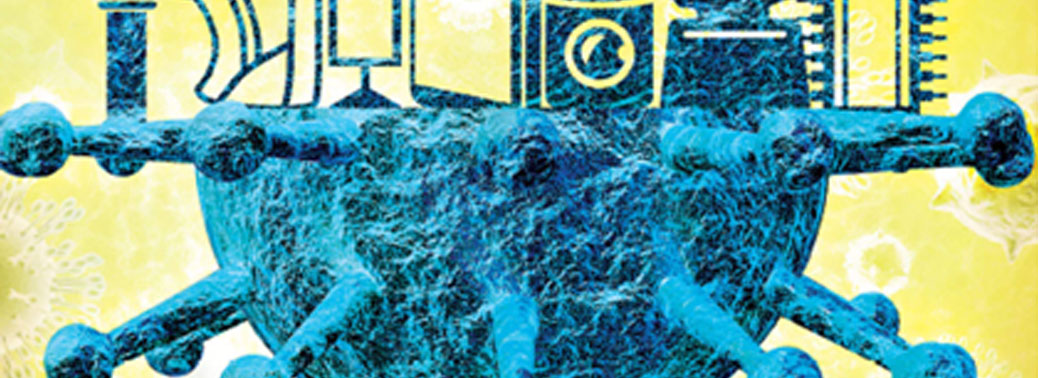
Context:
- Recently, the OECD in its Interim Economic Outlook, has warned that the coronavirus presents “greatest danger” to the world economy since the times of the financial crisis. Businesses are dealing with lost revenue and disrupted supply chains due to China’s factory shutdowns, lockdown in dozens of cities and other countries extending travel restrictions.
Impact on Trade and Commerce:
- With many companies and countries depending on the health of China’s economy, here are a few ways the outbreak is sending ripples around the world.
- Predicted slump
- China is the world’s second-largest economy and leading trading nation, so economic fallout from coronavirus also threatens global growth.
- Experts predicted China’s economic growth to slump to 4.5% in the first quarter of 2020, down from 6% in the previous quarter – the slowest pace since the financial crisis.
- However, the economists were optimistic China’s economy would recover quickly if the virus could be contained.
- Falling oil demand
- China is the world’s biggest oil importer.
- With coronavirus hitting manufacturing and travel, the International Energy Agency (IEA) has predicted the first drop in global oil demand in a decade.
- Disruption to Commerce
- The shortage of products and parts from China is affecting companies around the world.
- Apple’s manufacturing partner in China, Foxconn, is facing a production delay. Some carmakers including Nissan and Hyundai temporarily closed factories outside China because they couldn’t get parts.
- The pharmaceutical industry is also bracing for disruption to global production.
- Many trade shows and sporting events in China, Asia and across the world have been cancelled or postponed.
- Travel and Tourism
- The travel and tourism industries were hit early on by economic disruption from the outbreak.
- Global airline revenues are expected to fall by $4-5 billion in the first quarter of 2020 as a result of flight cancellations, according to a report from the UN’s International Civil Aviation Organization (ICAO).
- ICAO also forecasts that Japan could lose $1.29 billion of tourism revenue in the first quarter due to the drop in Chinese travellers while Thailand could lose $1.15 billion.
Impact on India
- India’s reliance on China is spread across almost all the sectors.
- Indian pharma industry is dependent on Chinese imports to make medicines — the APIs (active pharma ingredients) come from China.
- The $30 billion domestic smartphone market, the world’s second largest now, will see major disruptions as it is heavily dependent on imports.
- Solar power parks are dependent on Chinese imports. More than 80% of solar cells and modules used in India are imported from China-based manufacturers.
- Apart from these, sectors such as toys, furniture, computers, cars and white goods are dependent on China.
- A supply crunch in smartphones, TVs and electronics will impact ecommerce sales dearly.
- These items comprise about half of the gross merchandise value of $31 billion ecommerce sales.
A hidden opportunity for India:
- The dependence on China has decreased, though only slightly, over the last five years.
- From importing finished products, India is now assembling products and developing the ecosystem here as well.
- Investments from Chinese companies are helping boost the local ecosystem by expanding their manufacturing facilities in India.
- India shall also accrue benefits from the lower oil prices, which have fallen as the virus attack brought down demand across the world.
- Through this, longer-term benefits can accrue to us if India can take advantage of supply chain disruption as many suppliers will try to shift their manufacturing base from China to the rest of the world.
- The Indian exporters of electronics, pharmaceuticals, speciality chemicals and automobile segments depend on China for raw material and are facing supply constraints, but there are several areas where there are increased opportunities for domestic traders.
- The coronavirus can be used as a catalyst in driving India’s course correction towards a global export pathway or towards self-subsistence. Through this India can improve its global presence and as an additional benefit can generate employment opportunities to its citizens, where India’s unemployment rate is at 45 year low.
TECHNICAL TEXTILES MISSION
29, Feb 2020
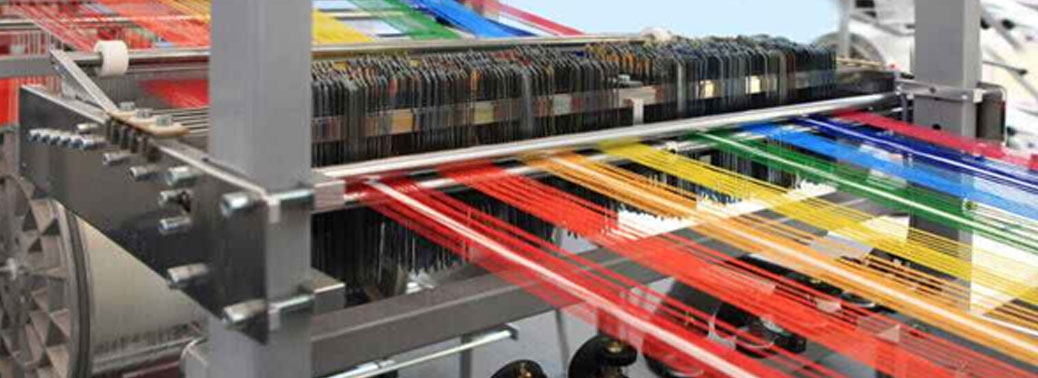
Why in News?
- The Cabinet Committee on Economic Affairs (CCEA) has approved the setting up of a National Technical Textiles Mission at a total outlay of ₹1,480 Crore.
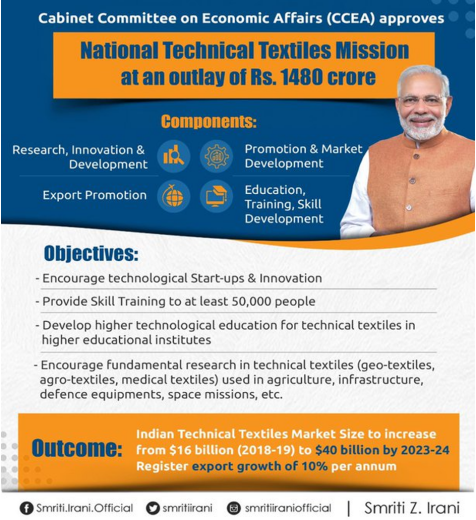
Technical Textiles Mission:
- Objective: To position India as a global leader in technical textiles and increase the use of technical textiles in the domestic market.
- Implementation: For 4 years from 2020-2021.
Components of the National Technical Textiles Mission:
Component -l (Research, Innovation and Development):
- Will focus on research and development at both, fibre level and application-based in geo, agro, medical, sports and mobile textiles and development of bio-degradable technical textiles.
- Research activities will also focus on development of indigenous machinery and process equipment.
- Will have an outlay of ₹1,000 crores.
Component -II (Promotion and Market Development):
- Will be for promotion and development of market for technical textiles.
- Will aim at average growth rate of 15-20% per annum taking the level of domestic market size to 40-50 Billion USD by the year 2024.
Component – III (Export Promotion):
- Will focus on export promotion so that technical textile exports from the country reach from the ₹14,000 crore now to ₹20,000 crores by 2021-2022.
- Ensure 10% average growth every year till the Mission ends.
- An export promotion council for technical textiles will be set up.
Component- IV (Education, Training, Skill Development):
- Will promote technical education at higher engineering and technology levels related to technical textiles and its application areas.
Significance of the Mission:
- The Mission will focus on usage of technical textiles in various flagship missions, including strategic sectors. The use of technical textiles in agriculture, aquaculture, dairy, poultry, etc. JalJivan Mission; Swachch Bharat Mission; Ayushman Bharat will bring an overall improvement in cost economy, water and soil conservation, better agricultural productivity and higher income to farmers per acre of land holding in addition to promotion of manufacturing and exports activities in India.
- The use of geo-textiles in highways, railways and ports will result in robust infrastructure, reduced maintenance cost and higher life cycle of the infrastructure assets.
- Promotion of innovation amongst young engineer will be taken up by the Mission; along with creation of incubation centres and promotion of ‘start-up’ and Ventures’.
- The research output will be reposited with a ‘Trust’ with the Government for easy and assessable proliferation of the knowledge.
- A sub-component of the research will focus on development of bio degradable technical textiles materials, particularly for agro-textiles, geo-textiles and medical textiles.
- It will also develop suitable equipment for environmentally sustainable disposal of used technical textiles, with emphasis on safe disposal of medical and hygiene wastes.
- There is another important sub-component in the research activity aiming at development of indigenous machineries and process equipment for technical textiles, in order to promote ‘Make In India’ and enable competitiveness of the industry by way of reduced capital costs.
Current scenario of Indian Textiles segment:
- Indian technical textiles segment is estimated at $16 billion which is approximately 6% of the $250 billion global technical textiles market.
- The penetration level of technical textiles in India varies between 5% and 10% against the level of 30% to 70% in developed countries.
- Indian textile industry is the 2nd largest manufacturer and exporter in the world, after China.
- The share of textile and clothing in India’s total exports stands at a significant 13 % (2017-18).
- The textile industry contributes to 7% of industry output in value terms, 2% of India’s GDP and to 15% of the country’s export earnings.
What are Technical Textiles?
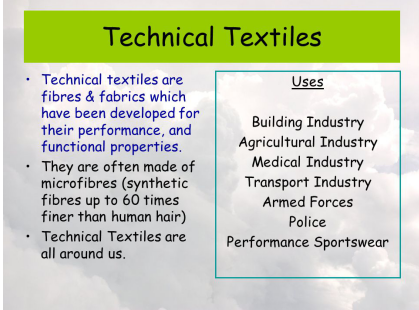
- Technical textiles are textiles materials manufactured primarily for technical performance and functional properties rather than aesthetic characteristics.
- Technical Textiles products are divided into 12 broad categories (Agrotech, Buildtech, Clothtech, Geotech, Hometech, Indutech, Mobiltech, Meditech, Protech, Sportstech, Oekotech, Packtech) depending upon their application areas.
DAIRY SECTOR IN INDIA
29, Feb 2020
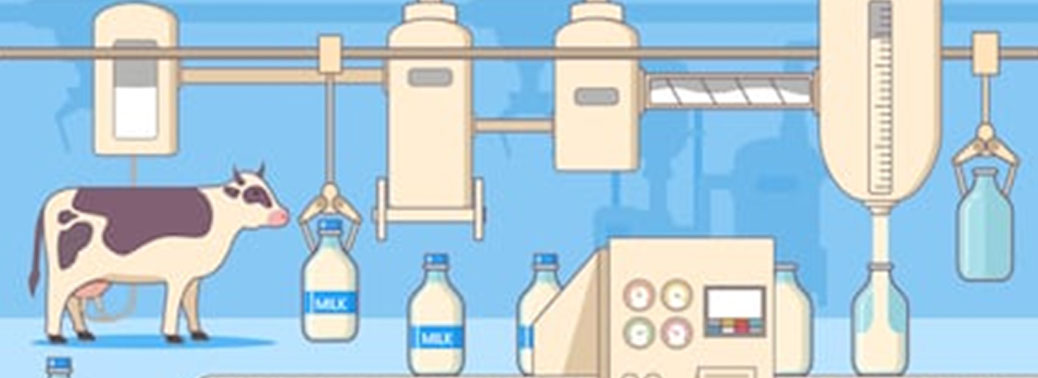
Context:
- The Cabinet Committee on Economic Affairs, has given its approval for upward revision of interest subvention to 2.5% per annum under the scheme Dairy Processing and Infrastructure Development Fund with the revised outlay of Rs 11,184 Cr.
Key Facts – Dairy Sector in Budget 2020-21:
- The government aims to “facilitate” doubling of India’s annual milk processing capacity from 53.5 million tonnes (mt) to 108 mt by 2025.
- Building a seamless national cold supply chain for perishables, inclusive of milk, meat and fish, by setting up of a “Kisan Rail” – through PPP arrangements.
- There shall be refrigerated coaches in Express and Freight trains as well.
- Eliminating Foot and Mouth disease, brucellosis in cattle and also peste des petits ruminants (PPR) in sheep and goats by 2025.
- Increasing the coverage of artificial insemination from the present 30% to 70%.
- NREGA would be dovetailed to develop fodder farms.
- The Budget Estimates for the Department of Animal Husbandry and Dairying stands at 3,289 in the Budget 2020-21.
- Recently, the Ministry of Science and Technology has launched the “Scientific Utilization through Research Augmentation-Prime Products from Indigenous Cows” (SUTRA-PIC India).
- It is one of the research programmes into indigenous cattle announced during the 2019-20 Union Budget, which aims to develop products as well as improve the genetic quality of indigenous cattle breeds.
Dairy Sector in India:
- Over the span of three decades, India has transformed from a country of acute milk shortage to the world’s leading milk producer, with estimated production of milk in 2018-19 at 187 million tonnes.
- Milk production in India has been growing at over 4% annually and its share in milk production in the world has also been increased.
- This phenomenal success is attributed to the programme ‘Operation Flood’ (1970–1996) and its intense focus on dairy development activities.
- Now, India is the leading producer and consumer of dairy products globally with sustained growth over the years.
- The dairy industry and milk hold equal importance to farmers and consumers.
Major Programmes:
- Department of Animal Husbandry And Dairying, Government of India has been supplementing the efforts of State Governments by implementing following dairy development schemes for creation/ strengthening of infrastructure for production of quality milk, procurement, processing and marketing of milk and milk products across the country:
- 1.National Programme for Dairy Development (NPDD)
- 2.Dairy Entrepreneurship Development Scheme (DEDS)
- 3.National Dairy Plan-I (NDP-I)
- 4.Dairy Processing and Infrastructure Development Fund (DIDF)
- 5.Supporting Dairy Cooperatives and Farmer Producer Organizations engaged in dairy activities (SDCFPO)
Challenges Faced by the Indian Dairy Sector:
- Milk is a source of liquidity for the farmers. It provides them with ready cash whereas crops fetch them cash only 2-3 times a year. The Indian dairy sector is different from other dairy producing countries as emphasis is placed on both cattle and buffalo milk.
- Indian dairy sector faces the following challenges:
- Productivity of Indian dairy animals is lower compared to other countries.
- Lack of scientific livestock feeding practice.
- Inadequacy and unavailability of livestock healthcare.
- Improper milk marketing facilities and uncertain price of milk for producers.
- Lack of infrastructure for milk collection, transportation, processing.
- Lack of veterinary and extension services.
- Milk losses due to lack of cold chain facilities.
- Lack of milk production standards and clean milk production practices.
Suggestions by NITI Aayog’s ‘Strategy for New India @ 75’
- Breed indigenous cattle with exotic breeds:
- Breeding of indigenous cattle with exotic breeds needs to be encouraged to arrest the issue of inbreeding.
- This will enable greater gene coverage, reduced diseases and greater resilience to climate change.
- Promote and develop Bull Mother Farms:
- Employing multiple ovulation and embryo transfer technologies, these farms can significantly enhance milk productivity through the supply of cattle with enhanced milk potential to farmers.
- Village Level Procurement Systems:
- Installing of bulk milk chillers and facilities for high value conversion of milk are needed to promote dairy in states.
- The private sector should be incentivized to create a value chain for HVCs and dairy products at the village level.
The Way Forward:
- Milk is highly perishable, therefore value addition such as processing, packaging, and conversion to long life products such as sterilized milks (UHT) is more a necessity than a luxury.
- India needs to achieve a balance between free trade and import restriction.
- Bring down the cost of production to the farmers and improve the quality and quantity of milk. This can help farmers stabilise their milk prices.
- Expand domestic demand for higher milk consumption through concerted campaigns, especially in the 115 aspirational districts where malnutrition is high.
- Indian dairy industry needs to be mechanised and modernised to achieve sustainability in the export competitive environment.
- Apart from that, the focus should also be on increasing the yields so that India can be a major player in milk and milk products’ exports.
- After the fulfilment of supplies, extra milk and milk powder can be subsidised and distributed to BPL farmers and families.
- Dairy is mainly a women-led industry so strengthening it would mean more opportunities for women and more avenues for their growth and development.
EASE 3.0 FOR TECH-ENABLED BANKING
28, Feb 2020
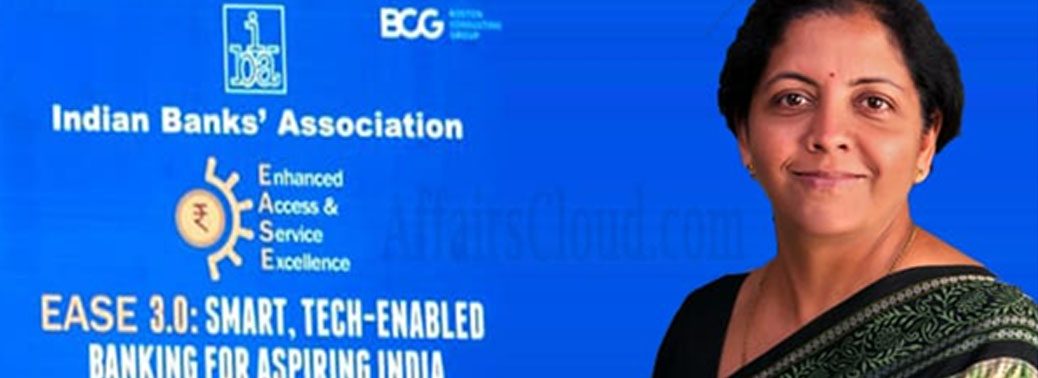
Why in News?
- Finance Minister Nirmala Sitharaman has recently launched Ease 3.0 for tech-enabled to change the customer’s experience at the Public Sector Banks (PSBs).
About:
- Ease (Enhanced Access and Service Excellence) 3.0 reform agenda aims at providing smart, tech-enabled public sector banking for aspiring India.
- New features that customers of public sector banks may experience under EASE 3.0 reforms agenda include facilities like:
- Palm Banking for “End-to-end digital delivery of financial service”.
- “Banking on Go” via EASE banking outlets at frequently visited spots like malls, stations, complexes, and campuses.
- PSB Reforms EASE Agenda is a common reform agenda for PSBs aimed at institutionalizing clean and smart banking.
- It was launched in January 2018, and the subsequent edition of the program ― EASE 2.0 built on the foundation laid in EASE 1.0 and furthered the progress on reforms.
- In EASE 2.0, the government had proposed pushing liquidity in the public sector banks, reconstituting the management committee and possible mergers among the ideal partners in the Indian banking sector.
Why EASE 3.0 was Launched?
- The Ministry has the idea of establishing paperless and digitally-enabled banking at places where people visit the most.
- The government aims to focus on digitalization in the Public Sector Banks (PSBs) among themes that include responsible banking, PSBs as Udyami Mitra, customer responsiveness, credit take-off, and deep financial inclusions.

INVESTMENT IN RESEARCH AND DEVELOPMENT (R&D)
24, Feb 2020

Why in News?
- In an effort to stimulate investment in research and development (R&D), the Department of Science and Technology is mooting a fund that will match the contributions made by private companies in R&D.
About:
- The idea is to pool funds from a group of companies willing to invest in fundamental research, such as quantum computers or artificial intelligence, and whatever is invested government will match that.
- The scheme will be coordinated through the department’s Science and Engineering Research Board, which funds a variety of basic science projects in several universities.
- Public sector institutions form the lion’s share of India’s investment in R&D. In 2004-2005, private sector accounted for 28% of India’s research spend and in 2016-17 this increased to 40%. In most advanced economies, private R&D accounts for the bulk of investment in R&D.
- It is well below that in major nations such as the U.S. (2.8), China (2.1), Israel (4.3) and Korea (4.2), according to a 2019 report by the Economic Advisory Council to the Prime Minister.
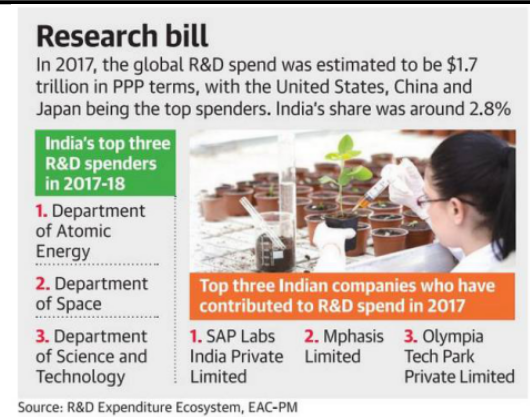
What is the Concern?
- As a lower middle-income country, it is not surprising that India’s spending on R&D lags upper-middle income and high-income countries such as China, Israel, and the U.S.
- However, it currently under spends even relative to its income level.
- In fact, in 2015, there was a sizeable decline in R&D spending even as GDP per capita continued to Rise.
ONE IN THREE PAYMENTS FOR MATERNITY BENEFIT SCHEME CREDITED TO WRONG ACCOUNT
24, Feb 2020

Why in News?
- The progress report on Poshan Abhiyan released by Niti Aayog recently has flagged the failure of Aadhaar-based payments under Pradhan Mantri Matru Vandana Yojana.
Issues Highlighted by the Report:
1. Faulty Payment System
- Only 66% of pregnant and lactating mothers under PMMVY are getting the benefits from Aadhaar-based payment system.
- Out of that, about 28% of total Aadhaar-based DBT towards Pradhan Mantri Matru Vandana Yojana was credited to a Wrong Bank Account.
2. Delay in Payment:
- According to the report a huge number of beneficiaries had not received the Cash Incentive since 2 years.
- This was as a result of red tapism that has been so vividly entrenched across data entry operators at taluk-level offices who has to update the data.
3. Cumbersome Application
- Besides it is said that the application form required to be filled up for availing the benefits under the scheme is too long and cumbersome (32 pages).
About Poshan Abhiyaan:
- POSHAN Abhiyaan (National Nutrition Mission) was launched by the government in 2018.
- The Abhiyaan targets to reduce stunting, undernutrition, anemia and low birth weight by 2%, 2%, 3% and 2% per annum respectively.
- Mission 25:The target of the mission is to bring down stunting among children in the age group 0-6 years from 38.4% to 25% by 2022.
- POSHAN Abhiyaan aims to ensure service delivery and interventions by use of technology, behavioural change through convergence and lays-down specific targets to be achieved across different monitoring parameters.
- Under the Abhiyaan, Swasth Bharat Preraks will be deployed one in each district for coordinating with district officials and enabling fast and efficient execution of the Abhiyaan across the country. Swasth Bharat Preraks would function as catalyst for fast tracking the implementation of the Abhiyaan.
About Pradhan Mantri Matru Vandana Yojana:
- Pradhan Mantri Matru Vandana Yojana (PMMVY) is a maternity benefit programme being implemented in all districts of the country from 2017.
- It is a centrally sponsored scheme being executed by the Ministry of Women and Child Development.
- Direct Benefit Transfer Scheme: Cash benefits are provided to pregnant women in their bank account directly to meet enhanced nutritional needs and partially compensate for wage loss.
Target Beneficiaries:
- All Pregnant Women and Lactating Mothers (PW&LM), excluding those who are in regular employment with the Central Government or the State Governments or PSUs or those who are in receipt of similar benefits under any law for the time being in force.
- All eligible Pregnant Women and Lactating Mothers who have their pregnancy for the first child in the family.
Benefits under the Scheme:
- Under PMMMY cash incentive of Rs 5000 is provided to pregnant and lactating mothers in three installments.
- 1stinstallment of Rs 1000/ – on early registration of pregnancy at the Anganwadi Centre
- 2ndinstallment of Rs 2000/ – after six months of pregnancy on receiving at least one ante-natal check-up (ANC)
- 3rdinstallment of Rs 2000/ – after child birth is registered and the child has received the first cycle of BCG, OPV, DPT and Hepatitis – B, or its equivalent/ substitute.
- The eligible beneficiaries also receive cash incentive under Janani Suraksha Yojana (JSY). Thus, on an average, a woman gets Rs. 6,000.
Distinctive Feature:
- Implementation of the scheme is closely monitored by the central and state governments through the Pradhan Mantri Matru Vandana Yojana – Common Application Software (PMMVY-CAS).
- PMMVY-CAS is a web based software application that enables tracking the status of each beneficiary under the scheme, resulting in expedited, accountable and better grievance redressal.
DEDICATED FREIGHT CORRIDOR
22, Feb 2020

Why in News?
- The World Bank has offered to give financial assistance to the last remaining portion of the Eastern Dedicated Freight Corridor (EDFC) between Sonnagar (Bihar) and Dankuni (West Bengal),
- India has originally slated to construct this in the private public-private partnership (PPP) mode. As of now, the entire EDFC is being built with loan from World Bank, except for the last portion between Bihar and West Bengal.
About Eastern Dedicated Freight Corridor (EDFC):
- The Eastern Dedicated Freight Corridor (EDFC) with a route length of 1856 km runs from Dankuni in West Bengal to Ludhiana (Punjab).
- It covers Punjab, Haryana, Uttar Pradesh, Bihar, Jharkhand and West Bengal.
- The railway is one of the multiple freight corridors.
Two components from EDFC:
- First component is to provide additional rail transport capacity, improved service quality and higher freight throughput.
- The second component is institutional development to assist DFCCIL and Ministry of Railways (MOR) to develop their capabilities to best utilize heavy haul freight systems.
About Western Dedicated Freight Corridor:
- The 1,504-km western freight corridor begins at Dadri in Uttar Pradesh and stretches till the country’s largest container port — Jawaharlal Nehru Port Trust, near Mumbai — passing through Uttar Pradesh, Haryana, Rajasthan, Gujarat and Maharashtra.]
About Dedicated Freight Corridor Corporation of India Ltd. (DFCCIL):
- DFCCIL under the Ministry of Railways is a special purpose vehicle tasked with planning and completion of 3,306 kms of Dedicated Freight Corridors (DFCs), consisting of western freight corridor and eastern freight corridor (1,856 kms).
- The construction of DFCs project would enable the decongestion of existing over-saturated paths which, thereby, will effectively improve punctuality of Passenger Trains.
RESTRUCTURING CROP INSURANCE SCHEMES
21, Feb 2020
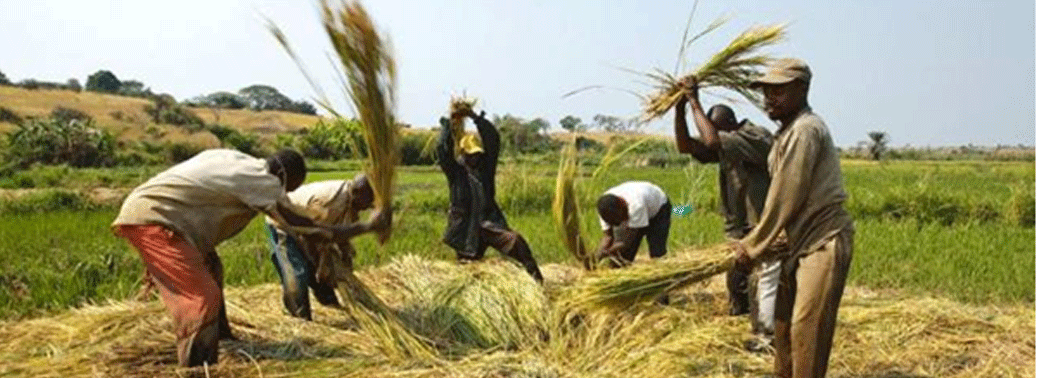
Why in News?
- Recently, the Union Cabinet has approved the revamp of the Pradhan Mantri Fasal Bima Yojana (PMFBY)and the Restructured Weather Based Crop Insurance Scheme (RWBCIS) which will be effective from 2020 Kharif season.
About Pradhan Mantri Fasal Bima Yojana (PMFBY):
- The Pradhan Mantri Fasal Bima Yojana was launched in 2016 and is being administered by the Ministry of Agriculture and Farmers Welfare.
- It provides a comprehensive insurance cover against the failure of the crop thus helping in stabilizing the income of the farmers.
- All food & oilseed crops and annual commercial/horticultural crops for which past yield data is available.
- The prescribed premium is 2% to be paid by farmers for all Kharif crops and 1.5% for all Rabi crops. In the case of annual commercial and horticultural crops, the premium is 5%.
- The scheme is implemented by empanelled general insurance companies. The selection of the Implementing Agency (IA) is done by the concerned State Government through bidding.
About Restructured Weather Based Crop Insurance Scheme:
- Restructured Weather Based Crop Insurance Scheme(RWBCIS) was launched in 2016 and is being administered by the Ministry of Agriculture and Farmers Welfare.
- It aims to mitigate the hardship of the insured farmers against the likelihood of financial loss on account of anticipated crop loss resulting from adverse weather conditions relating to rainfall, temperature, wind, humidity etc.
- WBCIS uses weather parameters as “proxy”for crop yields in compensating the cultivators for deemed crop losses.
What are the Key Changes Made?
- Reduced Share of the Centre:
- The Centre has slashed its share of the premium subsidy from the current 50% to just 25% in irrigated areas and 30% for unirrigated areas.
- Farmers pay a fixed share of the premium: 2% of the sum insured for Kharif crops, 1.5% for Rabi crops and 5% for cash crops.
- Currently, the Centre and State split the balance of the premium equally. However, the revamp now reduces the burden on the Centre and increases the share of States.
- Central Share in Premium Subsidy to be increased to 90% for North Eastern States from the existing sharing pattern of 50:50.
- Voluntary Enrollment:
- The enrolment in these schemes has been made voluntary for all farmers, including those with existing crop loans.
- When the PMFBY was launched in 2016, it was made mandatory for all farmers with crop loans to enroll for insurance cover under the scheme.
- Flexibility to Select Risk Cover:
- It has also allowed states the flexibility to select varied additional risk covers, with or without opting for the base PMFBY cover.
- Andhra Pradesh, West Bengal and Bihar had decided to exit the scheme citing high costs and the need to customise it based on geographical diversities.
- Cut-off Dates for State to Release its Share:
- It has also introduced cut-off dates for states to release its share of premium subsidy.
- If states don’t release their share before March 31 for the Kharif season and September 30 for Rabi, they won’t be allowed to implement the scheme.
- Data shows a large number of states that participate in the scheme don’t release their share on time, which leads to a delayed compensation paid to farmers.
- Compulsory Serving Time Period for Insurance Firms:
- The government has made it compulsory for the States to allow crop insurance firms to operate for three years.
- Currently, the tenders floated by the States are for one-year, two-year or three-year periods.
What are the Benefits?
- With these changes it is expected that farmers would be able to manage risk in agriculture production in a better way and will succeed in stabilizing the farm income.
- Further, it will increase coverage in north eastern region enabling farmers of NER to manage their agricultural risk in a better way.
- These changes will also enable quick and accurate yield estimation leading to faster claims settlement.
IMPORTED FOOD INFLATION
21, Feb 2020
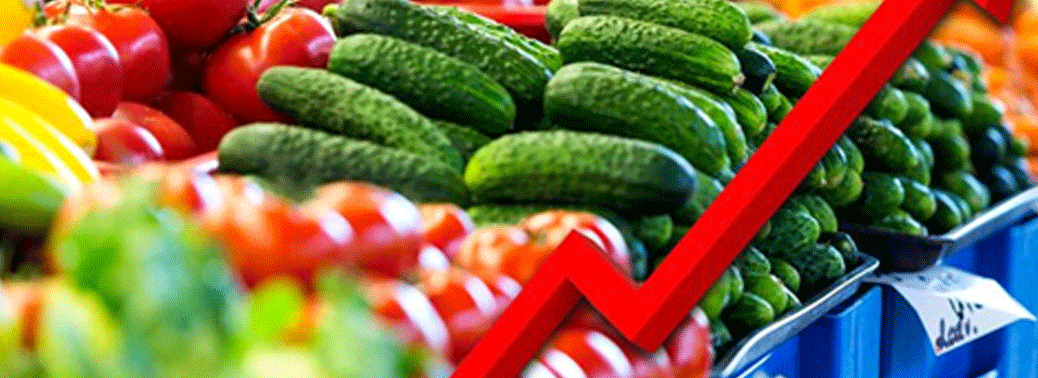
Why in News?
- Is food inflation in India influenced by global price movements? On account of certain evidences it appears that international inflation influences domestic prices too.
Highlights:
- Retail and wholesale food inflation rates for December 2019 were the highest since November 2013 and December 2013 respectively. Simply put, since October or so, food inflation has made a comeback, both in India and globally.
- The United Nations Food and Agriculture Organisation’s (FAO’s) food price index, which is a measure of the change in international prices of a basket of major food commodities with reference to a base period (2002-04), touched 182.5 points in January 2020, the highest since the 185.8 level of December 2014.
- Also, the year-on-year inflation rate based on this index has risen steadily from 1.13% in August 2019 to 2.86% in September, 5.58% in October, 9.33% in November, 12.22% in December, and now, 11.33% for January 2020.
- This sharp surge in global food prices is reflected in trends in India as well. Annual consumer food price index (CFPI) inflation stood at just 2.99% in August 2019, before climbing to 5.11%, 7.89%, 10.01%, 14.19% and 13.63% in the succeeding five months.
- While the recent rise in domestic food prices has been blamed largely on “local” factors like poor rainfall during the first half (June-July) of the monsoon season and too much of it thereafter till about mid-November, some of it is also “imported”.
- While global prices can be transmitted to the domestic market too through exports, traders would sell abroad if realisations are better relative to the local market.
Way Forward:
- The first is the novel coronavirus epidemic that has reduced Chinese buying of everything from palm oil and soyabean to milk powder and meat. Palm oil prices in Malaysia have plunged from 2,922 ringgit ($719) to 2,725 ringgit ($658) over the last one month.
- The second is crude oil. Brent crude prices had touched $70 per barrel after the January 3 United States airstrike that killed Iran’s top military commander, but have dropped since, closing at $57.67/barrel.
- The third is the prospect of a bumper rabi (winter-spring) crop in India. The kharif harvest turned out to be not so good because of excess and unseasonal rain. That same rain, though, has helped boost rabi acreage by 9.5% compared to last year.
- The arrival of this crop in the mandis from March should cool down prices, especially of vegetables and pulses, which showed the highest year-on-year retail inflation of 50.19% and 16.71% in January.
CONSUMER CONFIDENCE SURVEY (CCS)
19, Feb 2020

Why in News?
- Recently, the Reserve Bank has released the results of the January 2020 round of its Consumer Confidence Survey (CCS).
About Consumer Confidence Survey (CCS):
- The Consumer Confidence survey is conducted by the RBI in 13 major cities of India and covers almost over 5,000 respondents.
- The survey measures consumer perception (current and future) on five
-
Economic Variables –
1.Economic situation
2.Employment
3.The Price Level
4.Income
5.Spending
- The Consumer Confidence survey has two main indices – current situation index and future expectations index.
- The current situation index measures the change in consumer perception over an economic issue in the last one year while the future expectations index measures what consumer thinks about the same variables, one year ahead.
- A consumer confidence Index above 100 gives optimistic perception of the consumers while reading below 100 denotes pessimistic perception.
Importance of Consumer Confidence:
- In case of India, the consumption expenditure accounts for almost 60% of India’s GDP and hence it is considered to be the major driver of economic growth and development.
- The main driver of the consumption expenditure is the Consumer Confidence. If the consumers are optimistic about the current and future economic state of country, then they would spend more money leading to increase in the GDP. On the other hand, if the Consumer confidence is low, this can lead to decrease in the consumption expenditure and hence impacts the GDP Growth rate.
- Hence, there is a need to measure the consumer confidence in a country to understand the prospects of economic growth.
DIRECT TAX VIVAD SE VISHWAS BILL, 2020
17, Feb 2020
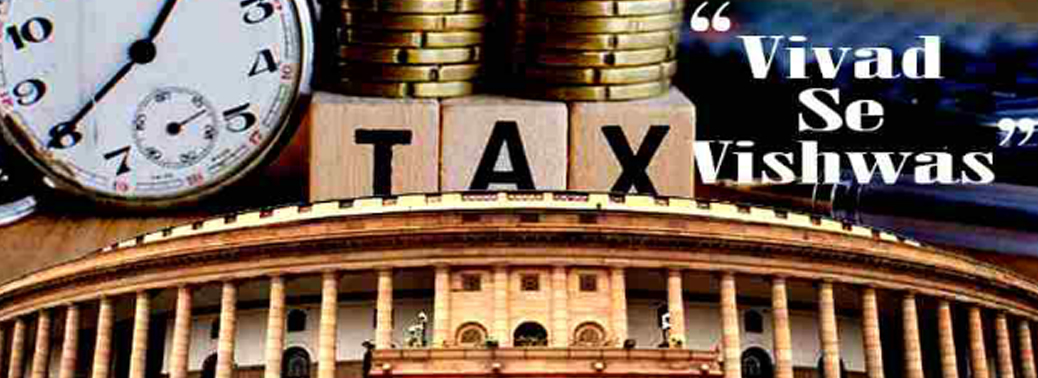
Why in News?
- The Union Cabinet has recently approved an amendment to the ‘Direct Tax Vivad se Vishwas Bill, 2020’ in order to widen its scope to cover litigation pending in various Debt Recovery Tribunals (DRTs).
Key provisions of the Bill:
Mechanism:
- The Bill provides a mechanism for resolution of pending tax disputes related to direct taxes (Income Tax and Corporate Tax) in simple and speedy manner.
- The Bill in current form allows taxpayers to settle cases pending before the Commissioner (Appeals), Income Tax Appellate Tribunals (ITATs), Debt Recovery Tribunals (DRTs), High Courts and the Supreme Court.
- Under the proposed Vivad Se Vishwas scheme, a taxpayer would be required to pay only the amount of the disputed taxes and will get complete waiver of interest and penalty provided he pays by March 31, 2020.
- But, if the tax arrears relate to disputed interest or penalty only, then 25% of disputed penalty or interest will have to be paid.
- Those who avail this scheme after March 31, 2020 will have to pay some additional amount.
- However, the scheme will remain open only till June 30, 2020. Those who avail this scheme after March 31, 2020 will have to pay some additional amount.
- The scheme also applies to all case appeals that are pending at any level.
- The recent amendment also includes certain search and seizure cases where the recovery is up to ₹5 crore.
Immunity to Appellant:
- Once a dispute is resolved, the designated authority cannot levy interest or penalty in relation to that dispute.
- Further, no appellate forum can make a decision in relation to the matter of dispute once it is resolved.
Revival of Disputes:
- However, if an appellant provides false information or violates the Income Tax Act, 1961, then case of dispute can be revived.
Significance of the Bill:
1. Reduce Litigation:
- According to the Finance Ministry, at present there are 4.83 lakh pending direct tax cases worth Rs.9 lakh crore in the courts. Through this scheme, the government wants to recover this money in a swift and simple way.
2. Addressing Revenue Shortfall:
- The government is witnessing a big shortfall in revenues, especially tax revenues, hence, increasing revenues in one of the priorities of the government.
- Direct Tax collections have been lower than their budget targets due to the overall economic slowdown and a recent cut in the corporate tax rate.
Similar Schemes:
- The Direct Tax Vivad se Vishwas Bill, 2020 is similar to the ‘Sabka Vishwas Scheme’, which was brought in to reduce litigation in indirect taxes in the year 2019. It resulted in settling over 1,89,000 cases.
- {“Vivad se Vishwas Scheme” will be for the direct tax related disputes whereas “Sabka Vishwas” is for Indirect Tax Related Disputes.}
TELECOS ASKED TO PAY AGR DUES IMMEDIATELY
15, Feb 2020

Why in News?
- The Supreme Court has recently ordered the MDs and directors of few major telecoms to pay their AGR dues immediately.
What is AGR?
- Adjusted Gross Revenue (AGR) is the usage and licensing fee that telecom operators are charged by the Department of Telecommunications (DoT).
- It is divided into spectrum usage charges and licensing fees, pegged between 3-5 percent and 8 percent respectively.
- Spectrum usage charges is the charge that is required to be paid by the licensees providing mobile access services, as a percentage of their Adjusted Gross Revenue (AGR).
- The spectrum slabs/rates for the same are notified by the Government from time to time.
How AGR is Calculated?
- The definition of AGR has been under litigation for 14 years.
- While telecom companies argued that it should comprise revenue from telecom services, the DoT’s stand was that the AGR should include all revenue earned by an operator, including that from non-core telecom operations.
- The AGR directly impacts the outgo from the pockets of telcos to the DoT as it is used to calculate the levies payable by operators.
- Currently, telecom operators pay 8% of the AGR as licence fee, while spectrum usage charges (SUC) vary between 3-5% of AGR.
Why are Issues with Telecoms on Paying Huge Amount?
- Telecom companies now owe the government not just the shortfall in AGR for the past 14 years but also an interest on that amount along with penalty and interest on the penalty.
- While the exact amount telcos will need to shell out is not clear, as in a government affidavit filed in the top court, the DoT had calculated the outstanding licence fee to be over ₹92,000 cror
- However, the actual pay-out can go up to ₹4 lakh crore as the government is likely to also raise a demand for shortfall in SUC along with interest and penalty.
- Of the total amount, it is estimated that the actual dues is about 25%, while the remaining amount is interest and penalties.
What are the Concerns?
- The telecom industry is reeling under a debt of over ₹4 lakh crore and has been seeking a relief package from the government.
- Even the government has on various occasions admitted that the sector is indeed undergoing stress and needs support.
- Giving a ray of hope to the telecom companies, the government recently announced setting up of a Committee of Secretaries to examine the financial stress in the sector, and recommend measures to mitigate it.
Way Forward:
- To enhance the growth of the telecom sector, improve the quality of service, and generate resources for the Telecom Service Providers (TSPs), a new infrastructural policy is the need of the hour.
- The government needs to provide an enabling environment for telecom operators. In order to achieve that, a long-term vision plan must be made accordingly.
- Enhanced accessibility of the broadband services will enable the digital empowerment of India; hence adequate steps must be taken by the government to strengthen the overall telecom sector.
USTR TAKES INDIA OFF DEVELOPING COUNTRY LIST
14, Feb 2020
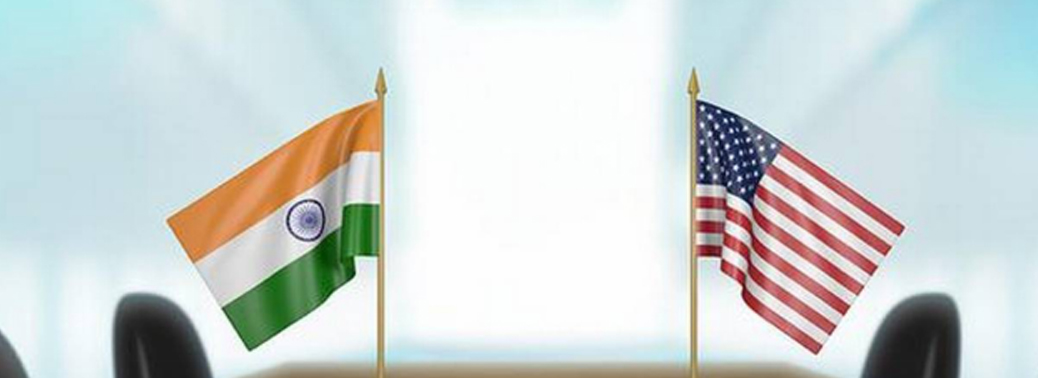
Why in News?
- India has been recently removed from the Developing country list by the United States Trade Representative.
About USTR:
- To harmonise U.S. law with the World Trade Organization’s (WTO)Subsidies and Countervailing Measures (SCM) Agreement, the USTR had, in 1998, come up with lists of countries classified as per their level of development.
- These lists were used to determine whether they were potentially subject to U.S. countervailing duties.
- As per the USTR notice, the 1998 rule is now “obsolete”.
What is the Issue?
- The U.S. government has changed an administrative rule making it easier for it to impose countervailing duties (CVDs) on goods from India and certain other countries.
- The Office of the United States Trade Representative (USTR) has published a notice, amending lists of developing and least-developed countries that are eligible for preferential treatment with respect to CVD investigations.
What are its Impacts?
- Countries not given special consideration have lower levels of protection against a CVD investigation.
- A CVD investigation must be terminated if the offending subsidy is de minimis (too small to warrant concern) or if import volumes are negligible.
- The de minimis thresholds and import volume allowance are more relaxed for developing and least-developed countries.
- The de minimis standard is usually a subsidy of 1% or less ad valorem and 2 percent for special cases.
What is the Eligibility for de Minimis?
- The USTR used the following criteria to determine whether a country was eligible for the 2% de minimis standard:
- Per capita Gross National Income or GNI
- share of world trade
- Other factors such as Organisation for Economic Co-operation and Development (OECD) membership or application for membership, EU membership, and Group of Twenty (G20) membership.

Is there any other trade related agreements by US?
- India has been already removed from the Generalised system of preferences (GSP) by USTR.
- It is a preferential arrangement in the sense that it allows concessional low/zero tariff imports from developing countries to developed countries (also known as preference receiving countries or beneficiary countries).
- It involves reduced/zero tariffs of eligible products exported by beneficiary countries to the markets of GSP providing countries.
- The US has a strong GSP regime for developing countries since its launch in 1976, by the Trade Act of 1974.
- The GSP program has effective dates which are specified in relevant legislation, thereby requiring periodical reauthorization in order to remain in effect.
Why India has been removed from the list of Developing Country?
- India was taken off the list because — like Argentina, Brazil, Indonesia and South Africa — it is part of the G20.
- “Given the global economic significance of the G20, and the collective economic weight of its membership (which accounts for large shares of global economic output and trade), G20 membership indicates that a country is developed”.
BLUE REVOLUTION
13, Feb 2020
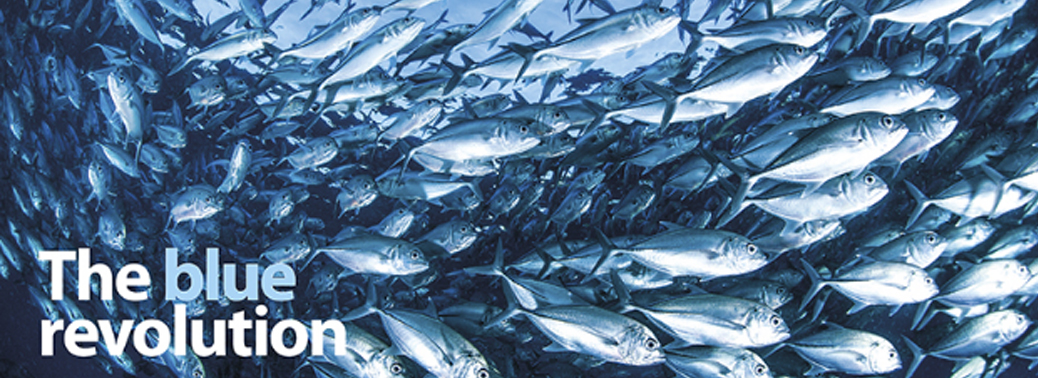
Why in News?
- Realizing the immense scope for the development of fisheries and aquaculture, the Government of India has restructured the Central Plan Schemes under an umbrella of the Blue Revolution.
Highlights:
- The major components of the CSS on Blue Revolution scheme are as under:
- Development of Inland Fisheries and Aquaculture
- Development of Marine Fisheries, Infrastructure and Post-harvest Operations
- National Scheme for Welfare of Fishermen.
- Monitoring, Control and Surveillance and other need-based Interventions (MCS).
- Institutional Arrangement for Fisheries Sector
- Strengthening of Database & Geographical Information System of the Fisheries Sector (SoDGIS).
- National Fisheries Development Board and its activities (NFDB).
Outcomes:
- The Blue Revolution in India along with the Fish Farmers Development Agency (FFDA) brought an improvement in the aquaculture and fisheries sector with the introduction of new techniques of rearing, marketing, exporting and fish breeding.
- Some of the major outcomes of the Blue Revolution in India are mentioned below:
- Currently, the Indian Fisheries Sector reached a production of 4.7 million tonnes of fish from a limit of 60,000 tonnes including 1.6 million tonnes of fish from freshwater aquaculture.
- India is recorded to achieve an average annual growth of 14.8% as compared to the global average percentage of 7.5 in the production of fish and fish products.
- The fishery has become India’s largest agricultural export over the last five years with a growth rate of 6% – 10%.
- India has become the world’s second-largest producer of fish with exports worth more than 47,000 crore rupees.
- The Fisheries and aquaculture production contributes 1% and 5% to India’s GDP and Agricultural GDP respectively.
OIL SEEDS PRODUCTION
13, Feb 2020
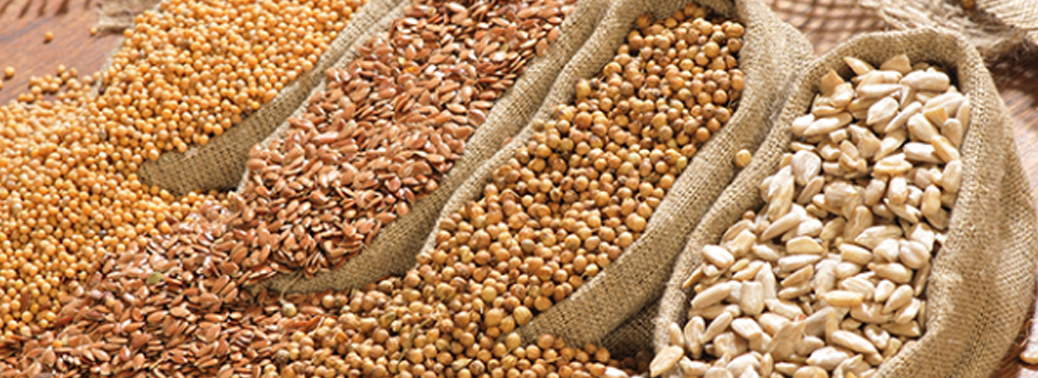
Why in News?
- Country needs 25 million tonnes of edible oils to meet its requirement at current consumption level of 19 kg per person per year.
- Out of the total requirement, 10.50 million tonnes are produced domestically from primary (Soybean, Rapeseed & Mustard, Groundnut, Sunflower, Safflower & Niger) and secondary sources (Oil palm, Coconut, Rice Bran, Cotton seeds & Tree Borne Oilseeds) and remaining 60%, is met through import. The oilseed production of the country has been growing impressively.
- Despite this, there exists a gap between the demand and supply of oilseeds, which has necessitated sizeable quantities of imports.
Challenges:
- The major challenges in oilseed production is largely rain-fed conditions (70% area), high seed cost (Groundnut and Soybean), small holding with limited resources, low seed replacement rate and low productivity.
Govt. Intervention:
- To increase domestic availability and reduce import dependency, a National Mission on Edible Oils (NMEO) is proposed for next five years (2020-21 to 2024-25).
- NMEO covering three Sub-Missions to increase production of oilseeds and edible oils from
- Primary Sources (Annual Crops, Plantation Crops and Edible TBOs)
- Secondary Sources (Rice bran oil and Cotton seed oil)
- Consumer Awareness for maintaining edible oil consumption constant at 19.00 kg per person per annum.
- The proposed mission will aim to increase production from 30.88 to 47.80 million tonnes of oilseeds which will produce 7.00 to 11.00 million tonnes of edible oils from Primary Sources by 2024-25.Similarly, edible oils from secondary sources will be doubled from 3.50 to 7.00 million tonnes.
Action Points to Increase Production:
- The following action point will be initiated for increasing production and productivity of oilseeds and promotion of Secondary Sources of Edible oils:
- Increasing seed replacement rate and varietal replacement rate
- Promotion of oilseed in rice fallow/ potato areas
- Promotion of oilseeds through intercropping
- Extending oilseed cultivation in non-traditional area
- Targeting 100 low productivity districts
- Crop diversification in different reasons
- Promotion of community-based oil Extraction Unit
- Value addition and promotion of Export
- Promotion of rice bran and cotton seed oil
- Consumer awareness for judicious consumption of oils for good health
- The above strategies will deliberate the following output by the end of 2024-25:
- Oilseed production will be increased from 30.88 to 47.80 million tonnes
- Productivity will be increase from 1263 to 1587 kg per ha
- Reduction in import dependence from 60% to 45%
- Edible oil production will be 18.00 Million Tonne from 10.50 Million Tonnes.
PROTECTED SPECIAL AGRICULTURE ZONE
10, Feb 2020

Why in News?
- Chief Minister of Tamil Nadu recently announced that the Cauvery delta regionwould be declared as Protected Special Agriculture Zone.
What is a Protected Agriculture Zone?
- Declaring as the Protected Special Agriculture Zone ensures that particular region will not be granted permission for any new projects like those related to hydrocarbons.
- Only Agro based Industries would be given permission to be built.
What are the regions declared as Protected Zones?
- To guard the delta areas and end farmers’ ordeals, the special protection will be bestowed on Cauvery Delta districtssuch as Thanjavur, Tiruvarur, Nagappattinam, Pudukottai, Cuddalore, Ariyalur, Karur and Tiruchirappalli districts.

Why such protection is essential?
- The Cauvery Delta Region is an important agricultural region in Tamil Naduand farmers continue to do agriculture, despite climate changes.
- It is just and reasonable that projects like hydrocarbon exploration have raised concerns among farmers and other agriculture-based labourers.
- Since the delta region is close to the sea, there is a need to safeguard the region.
What would be the benefits of this declaration?
- The benefits that have accrued for farmers are manifold.
- Drilling for extraction of oil and gas in these regions that hampers agriculture and posing much environmental impact or health hazards will be stopped immediately.
- Whatever the project introduced by the centre, it cannot be implemented without the NOC from that state.
THE AIRCRAFT (AMENDMENT) BILL, 2020
08, Feb 2020

Context:
- Recently, the Union Government introduced a bill in the Lok Sabha to amend the Aircraft Act, 1934. This Act pertains to control of the manufacture, possession, use, operation, sale, import and export of aircraft.
Key facts:
- According to the proposed amendment, the fine amount for violations will be hiked from Rs 10 lakh to up to Rs 1 crore.
- The bill also provides for keeping “aircraft belonging to any armed forces of the Union, other than naval, from military or air force outside the purview” of the Aircraft Act, 1934.
- The bill proposes that, the government would also have the power to issue directions to review, if necessary in public interest, any order passed by Directorate General of Civil Aviation (DGCA), Bureau of Civil Aviation Security (BCAS) and Aircraft Accidents Investigation Bureau, as per the bill’s Statement of Objects and Reasons.
- The proposed amendments would fulfil the safety requirements of the International Civil Aviation Organisation (ICAO).
- Other proposals include empowering BCAS or any authorised officer to issue directions, having designated officers for adjudging penalties and introducing a provision for compounding of offences.
Why the New Amendment?
- Spike in the number of air safety violations or breaches in the Recent Past:
- Recently, Airbus A320neo planes fitted with Pratt and Whitney engines, could have had catastrophic consequences as many such aircraft have faced mid-air glitches.
- DGCA had asked IndiGo and Go Air, who still use this version of the aircraft, to install modified engines or replace the entire fleet of such planes
- There have also been many reports of planes facing other technical snags and could ultimately result in creating a sense of fear among passengers.
- Creating an Enabling Environment:
- The bill seeks to empower the central government to constitute DGCA, BCAS and AAIB under the Act as well as specify their responsibilities.
- It would also bring regulations of all areas of air navigation services under the Act.
- This bill would enable the three regulatory bodies in the civil aviation sector in India, namely DGCA, BCAS and AAIB to become more effective.
- Adopting the International Standards:
- The bill has provisions for securing the safety of aircraft operations in India and carrying out civil aviation operations as per standards, procedures and practices laid down by ICAO.
- As per the statement of ICAO audits, conducted in 2012 and 2015, have indicated a need to amend the Act to give proper recognition to the regulators under the Act.
- The amendments would fulfil the requirements of ICAO.
Indian Civil Aviation Sector:
- Indian civil aviation sector has a high growth potential and at present, scheduled domestic carriers together have nearly 680 planes.
- The Economic Survey 2019-20, pointed out that, to continue with the high growth trajectory, the government has been providing a congenial environment so that the Indian carriers double their fleet from about 680 aircraft at the close of November 2019 to over 1,200 by FY 2023-24.
- ICAO had carried out the Universal Safety Oversight Audit Programme for India in November 2017 and in February 2018. The audit result showed that the country’s score declined to 57.44% from 65.82% earlier, placing India below Pakistan and Nepal.
- An ICAO team had visited India in November 2018 as well, and assessed the action taken on issues related to three areas that were audited by the ICAO in November 2015. Those pertained to aerodromes and ground aids, air navigation services (ANS) and aircraft accident and incident investigation.
- Currently, India’s score is lower than the world average of 65% on the ICAO’s board.
SOIL HEALTH CARD SCHEME
07, Feb 2020
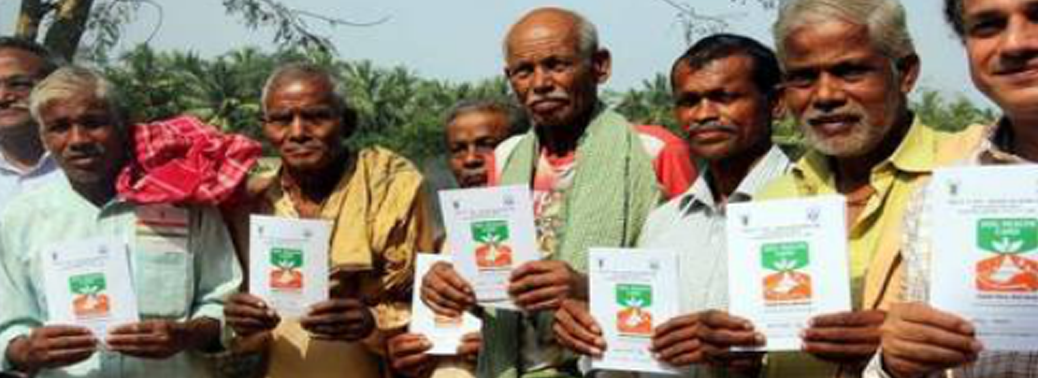
Why in News?
- In the second phase of the scheme’s implementation, 11.69 crore Soil Health Cards were distributed to farmers in Two Years.
Soil Health Card Scheme:
- The scheme was launched in 2014 with a view to addressing the decline of soil nutrients.
- The scheme has helped farmers to understand the soil health parameters and improve its productivity by judicious application of soil nutrients.
- Under this scheme, farmers can know the major and minor nutrients available in their soils which will ensure judicious use of fertiliser application and reduce the cost of inputs and improve soil fertility.
- A Soil Health Card is used to assess the current status of soil health and, when used over time, to determine changes in soil health that are affected by land management.
- It displays soil health indicators and associated descriptive terms. The indicators are typically based on farmers’ practical experience and knowledge of local natural resources.
- The card lists soil health indicators that can be assessed without the aid of technical or laboratory equipment.
- A study conducted by the National Productivity Council (NPC) says the application of Soil Health Card recommendations has led to a decline of 8-10% in the use of chemical fertilizers and also raised productivity by 5-6%.
- A pilot project “Development of Model Villages” is being implemented under which the sampling and testing of cultivable soil are being encouraged in partnership with the farmers.
- Under the project, a Model Village has been selected for aggregation of soil samples and analysis of each agricultural holding.
- The scheme provides for the analysis of soil composition by the State Governments once in every two years so that remedial steps can be taken to improve soil nutrients.
- Farmers can track their soil samples and also obtain their Soil Health Card report.
- The scheme also aids in creating employment for Rural Youth.
- Under the scheme, village youth and farmers up to 40 years of age are eligible to set up Soil Health Laboratories and undertake testing.
- A laboratory costs up to Rs Five Lakhs, 75% of which can be funded by the Central and State Governments.
- The same provisions apply to Self Help Groups, Farmers’ Cooperative Societies, Farmers Groups and Agricultural Producing Organisations.
PURIFIED TEREPHTHALIC ACID (PTA)-ABOLISHED
06, Feb 2020
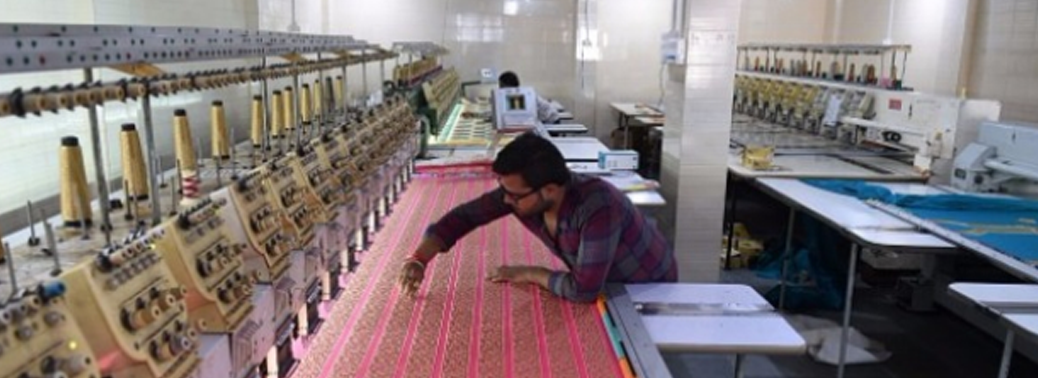
Context:
- Recently, the government has abolished anti-dumping duty on a chemical called Purified Terephthalic Acid (PTA).
- It was also being mentioned by the Finance Minister in her Budget speech.
About Purified Terephthalic Acid (PTA):
- It is important for those who are in the manufacturing sector of man-made fabrics or their component – makes up for around 70-80% of a polyester product.
- It is a crucial raw material used to manufacture polyester coatings resins for use in the formulation of general metal, appliance, automotive, industrial maintenance, and coil coatings.
- What is Dumping? It is said to occur when the goods are exported by a country to another country at a price lower than the price it normally charges in its own home market. This is an unfair trade practice which can have a distortive effect on international trade.
- What is Anti-dumping? It is a measure to rectify the situation arising out of the dumping of goods and its trade distortive effect.
- Anti-dumping duty is used as an instrument of fair competition which is permitted by the World Trade Organisation (WTO).
Reason for the Controversy:
- The domestic companies facing with limited domestic suppliers of PTA because of their costlier product less attractive for their domestic and international buyers.
- An increase in imports of the products they had been producing, as there was no safeguard against imports of cheaper versions of these downstream polyester-based products.
- The abolition of Anti-Dumping Duty on PTA has come after persistent demand from the manufacturing and Textile Industry.
- Other raw materials: Mono Ethylene Glycol (MEG), another raw material used in the manufacturing of polyester, is currently the subject of another anti-dumping duty investigation initiated by DGTR recently.
Directorate General of Trade Remedies:
- The anti-dumping duty on PTA was imposed after domestic manufacturers approached the Directorate General of Trade Remedies (DGTR).
- It is the apex national authority under the Ministry of Commerce and Industry.
- It administers all trade remedial measures including anti-dumping, countervailing duties and safeguard measures.
- It provides trade defence support to the domestic industry and exporters in dealing with increasing instances of trade remedy investigations instituted against them by other countries.
Budget 2020-21 – Social Sector and Infrastructure
05, Feb 2020
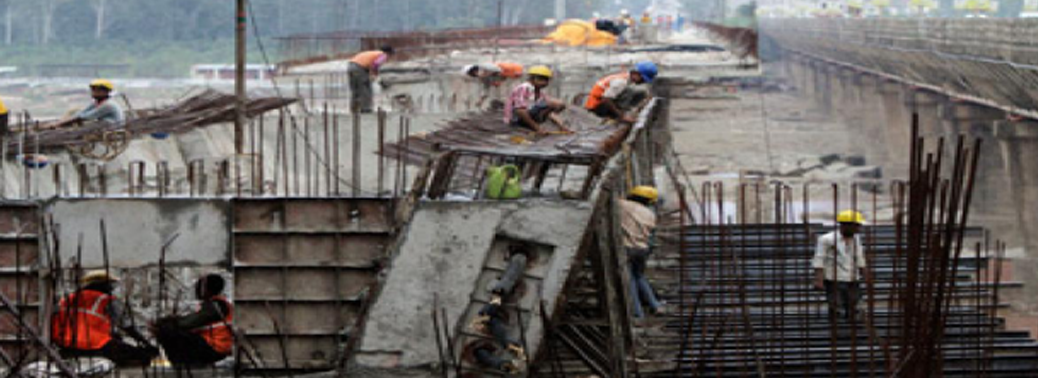
Why in News?
- The Union Budget 2020-21 has been presented in the parliament recently. The key provisions related to the Social Sector and infrastructure sector has been discussed in brief below.
- 1. Agriculture Sector:
- Agri-credit availability set at ₹15 lakh crore for 2020-21.
- A budget allocation of ₹2.83 lakh crore for 16 action points.
- The action points include measures to provide farmers access to faraway markets by running trains (Kisan Rail) and flights (Krishi Udaan) and providing relief to farmers from water shortage.
- It will also include ‘One-Product One-District’for better marketing and export in the Horticulture sector. The scheme is already functional in Uttar Pradesh.
- The focus is also on Jaivik Kheti Portal(online national organic products market), Zero-Budget Natural Farming, PM-KUSUM.
- 2.Health Sector:
- An allocation of ₹69,000 crore for the health sector.
- Proposal to set up hospitals in Tier-II and Tier-III cities with the private sector using PPP model.
- Expansion of Jan Aushadhi Kendra Scheme to all districts by 2024.
- A task force to be appointed to recommend regarding steps required to lower the Maternal Mortality Rate (MMR) and Improving Nutrition.
- 3. Education:
- An amount of ₹99,300 crore has been allocated for the education sector and about ₹3,000 crore for skill development respectively.
- Degree-level full-fledged online education programmes by institutions ranked in the top 100 in NIRF rankings, especially to benefit underprivileged students.
- Urban local bodies to provide internship to young engineers for a year.
- Proposal to set up National Police University and a National Forensic Science University.
- IND SAT exam for students of Asia and Africa to promote “study in India” programme.
- 4. Infrastructure:
- Rs. 103 lakh crore’s for National Infrastructure Pipeline projects announced.
- An international bullion exchange to be set up at GIFT City.
- The budget has also announced that proceeds from divestment will go only into capital expenditure and not revenue expenditure.
Transport:
- Budget proposes to provide ₹1.7 lakh crore for transport infrastructure in 2021.
- National Logistics Policy to be released soon.
- Chennai-Bengaluru Expressway to be started.
Railways
- Aims to achieve electrification of 27,000 km of railway lines.
- Plan to have a large solar power capacity for Indian Railways.
- 100 more airports will be developed by 2024 to support UDAN.
- 5 new smart cities in public-private partnership mode.
- 5. Culture and Tourism
- Five Archaeological Sites to be developed as Iconic Sites:
a)Rakhigarhi (Haryana)
b)Hastinapur (Uttar Pradesh)
c)Shivsagar (Assam)
d)Dholavira (Gujarat)
e)Adichanallur (Tamil Nadu)- Proposal to Establish:
a)Indian Institute of Heritage and Conservation.
b)Maritime museum at Lothal (Gujarat).
c)Tribal Museum in Ranchi
d)A museum on Numismatics and Trade.
EDUCATION & ASPIRING INDIA
04, Feb 2020
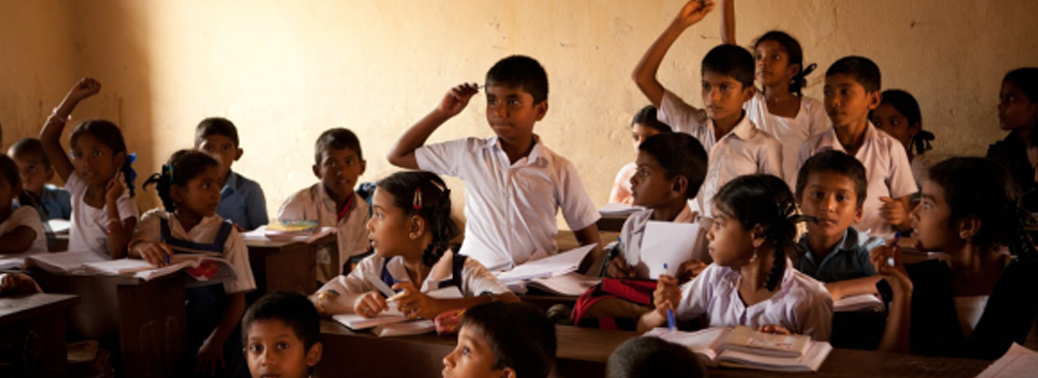
Context:
- In the Union Budget 2020, Finance Minister Nirmala Sitharaman has suggested speedy implementation of the new education policy and several other measures. The budget earmarked Rs 99,300 crore for the education sector in 2020-21 and about Rs 3,000 crore for Skill Development.
Budget Highlights:
- About 150 higher educational institutions would start apprenticeship embedded degree/diploma courses by March 2021.
- A programme would be started whereby urban local bodies across the country would provide internship opportunities to fresh engineers for a period up to one year.
- To create infrastructure in the education sector, steps would be taken to enable sourcing External Commercial Borrowings and FDI so as to be able to deliver higher quality education.
- Institutions that are ranked within the top 100 in the National Institutional Ranking framework will start a degree level full-fledged online education programme for students of deprived section of the society.
Need for Skilling:
- The Education – Knowledge Gap:
1.Literacy rate in India as per Census 2011: 74%.
2.Literacy rate: Male: 82.1%; Female: 65.5%
- Annual Status of Education Report (ASER) reflects the deteriorating quality of knowledge from education.
- The report opines that deficits in foundational reading and arithmetic skills are cumulative, which leaves students grossly handicapped for further education.
The Knowledge – Skill Gap:
- By 2030, the country will have the highest working age population. Youths coming out of the higher education system in India are not employable, as they lack relevant industry-level skills.
- The Governments are tasked with the responsibility of empowering the present day children to make them employable by 2030.
- In this regard, the Union Budget 2020-21 has earmarked about Rs 3,000 crore for Skill Development.
The Issues in Skilling:
- Skilling can be done with primary education as a base, however, in India these domains are seen separate from one another. No skill development program can succeed without an underlying foundation of basic education.
- There is a growing gap between skilling and knowledge, which increases inequality.
- Skilling requires infrastructure boost to support the increasing number of entrants.
- Less than 5% of the workforce in the age-group of 19-24 receives vocational education in India, in contrast to 52% in the USA, 75% in Germany and 96% in South Korea.
Way Forward:
- Secondary education and skilling should go together.
- Skilling framework should be improved
- Higher Education Institutions must offer vocational courses that are integrated into Undergraduate Education Programs.
Issues in Teacher Education:
- Teachers play a most critical role in a student’s development. There is a need for better incentives for teachers, investments in teacher capacity through stronger training programs and addressing the problems in the teaching-learning process. However,there is a decline in the quality and training of teachers.
- Disproportionate Student and teacher ratio in both public and private institutions.
- Challenges in governance and monitoring mechanisms for tracking performance of the teachers.
- Lack of accountability systems in Government Schools.
- Inadequate teacher training, large number of teaching vacancies and rampant absenteeism.
- Limited options for teacher education in the school system.
Way Forward:
- Fraudulent or dysfunctional teacher education institutions should be closed as soon as possible.
- In-service teacher professional development programs should be redesigned with continuous progressive development such as peer-learning, demonstration classes, sabbaticals for research/advanced studies etc.
- A national electronic teacher registry should be setup to bring together employers and job aspirants in this sector.
- States should test teachers tri-annually on the same test designed for the children they are teaching which will ensure competency of the teacher.
- The Teacher Eligibility Test (TET) across states should be strengthened as per central TET through standardization of results, quality benchmarking of testing-items and extending the TET for teachers at pre-school and classes at 9-12 levels.
FINANCE COMMISSION
04, Feb 2020
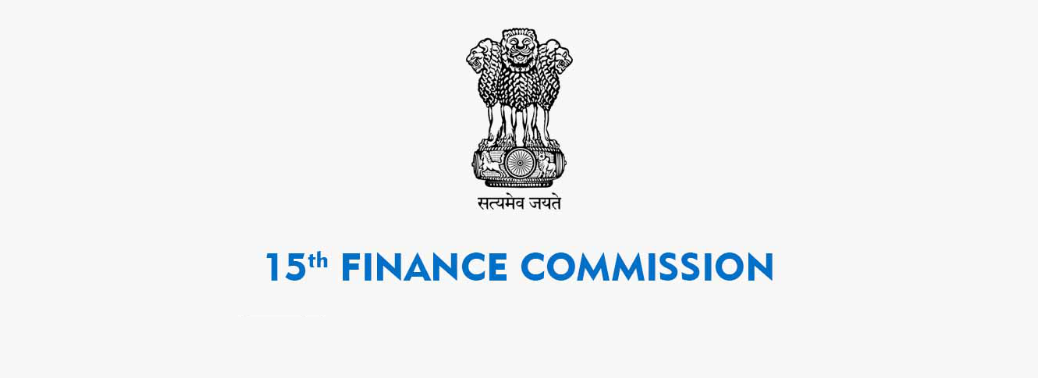
Why in News?
- The report of the Fifteenth Finance Commission, along with an Action Taken Report, was tabled in Parliament. The Commission, headed by N.K Singh, had submitted its Report to the President in December 2019.
Highlights:
- Article 280 of the Constitution requires that a Finance Commission be constituted to recommend the distribution of the net proceeds of taxes between the Centre and states, and among the states.
- Parliament may by law determine the requisite qualifications for appointment as members of the commission and the procedure of selection.
- Every member will be in office for the time period as specified in the order of the President, but is eligible for reappointment provided he has, by means of a letter addressed to the president, resigned his office.
Functions:
- The distribution between the Union and the States of the net proceeds of taxes which are to be, or may be, divided between them and the allocation between the States of the respective shares of such proceeds;
- The principles which should govern the grants-in-aid of the revenues of the States out of the Consolidated Fund of India;
- The measures needed to augment the Consolidated Fund of a State to supplement the resources of the Panchayats and Municipalities in the State on the basis of the recommendations made by the Finance Commission of the State;
- Any other matter referred to the Commission by the President in the interests of sound Finance.
Appointment Criteria:
- As per the provisions contained in the Finance Commission [Miscellaneous Provisions] Act, 1951 and The Finance Commission (Salaries & Allowances) Rules, 1951, the Chairman of the Commission is selected from among persons who have had experience in public affairs, and the four other members are selected from among persons who:
- are, or have been, or are qualified to be appointed as Judges of a High Court; or have special knowledge of the finances and accounts of Government;
- or have had wide experience in financial matters and in administration;
- or have special knowledge of economics.
Powers:
- Have all powers of a civil court as per the Civil Procedure Code, 1908.
- Can summon and enforce the attendance of any witness or ask any person to deliver information or produce a document, which it deems relevant.
- Can ask for the production of any public record or document from any court or office
- Shall be deemed to be a civil court for purposes of Sections 480 and 482 of the Code of Criminal Procedure, 1898
Removal:
- A member may be Disqualified If:
- He is mentally unsound;
- He is an undischarged insolvent;
- He has been convicted of an immoral offence;
- His financial and other interests are such that it hinders the smooth functioning of the commission.
DIVIDEND DISTRIBUTION TAX (DDT)
03, Feb 2020
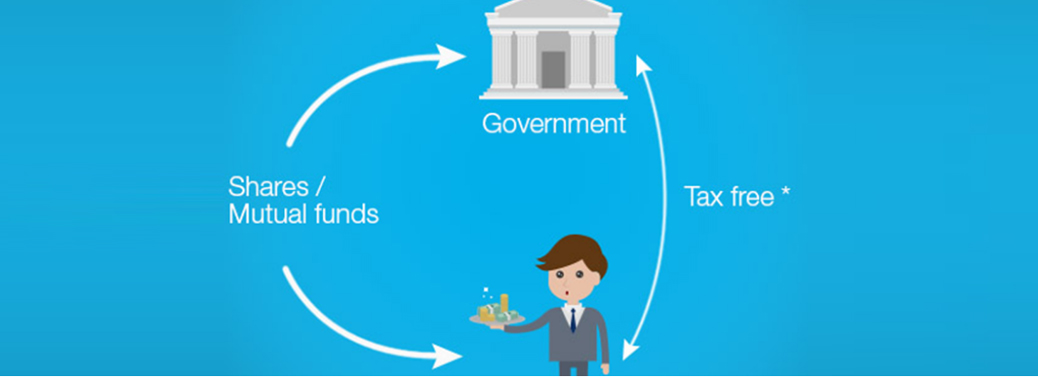
Why in News?
- Finance Minister announced abolition of DDT to be paid by companies in her budget speech.
DDT:
- A dividend is a return given by a company to its shareholders out of the profits earned by the company in a particular year.
- Dividend constitutes income in the hands of the shareholders which ideally should be subject to income tax.
- However, the income tax laws in India provide for an exemption of the dividend income received from Indian companies by the investors by levying a tax called the DDT on the company paying the dividend.
Who were required paid DDT?
- Any Domestic Company which is declaring/distributing dividend is required to pay DDT at the rate of 15% on the gross amount of dividend as mandated under Section 115O of the Income Tax Act.
- DDT was also applicable on Mutual Funds.
Why it is Scrapped?
- Every MNE investing in India is faced with the question of tax-efficient repatriation of profits that accumulate here.
- The dividend that the holding company would receive would have already suffered substantial tax in India, although indirectly.
- The foreign company would normally be required to pay tax on the dividend so received in its home jurisdiction.DDT being a tax in the Indian company and the foreign company not paying taxes directly on such Dividend Income in India, it would not be able to claim foreign tax credit in its Home Jurisdiction.
- This resulted in a double whammy for foreign companies as, at a group level, they suffered Double Taxation.
INSURANCE COVER ON BANK’S DEPOSIT
03, Feb 2020
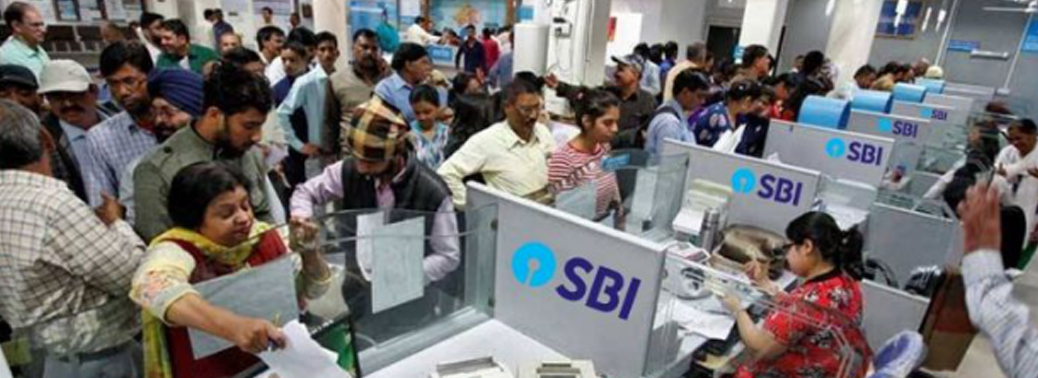
Why in News?
- Finance Minister has recently proposed to increase the limit of insurance cover in case of Bank Failure on deposits to ₹5 lakh from ₹1 lakh.
What is Deposit Insurance?
- Deposit insurance is Providing Insurance Protection to the Depositor’s Moneyby receiving a premium.
- The government has set up Deposit Insurance and Credit GuaranteeCorporation (DICGC) under RBI to protect depositors if a bank fails.
- Every insured bank pays premium amounting to 0.001% of its deposits to DICGC every year.
- This scheme insures all types of bank deposits including savings, fixed and recurring with an insured bank.
What happens to Depositors’ Money when a Bank Fails?
- When a bank is liquidated, depositors are entitled to receive an insurance amount of ₹1 lakh per individual from the Deposit Insurance and Credit Guarantee Corporation of India (DICGC).
- The ₹1 lakh insurance limit includes both principal and interest dues across your savings bank accounts, current accounts, fixed deposits and recurring deposits held with the bank.
- Now this 1 lakh amount has been proposed to 5 lakhs recently.
How the Depositors claim the Money from a Failed Bank?
- The DICGC does not deal directly with depositors.
- The RBI (or the Registrar), on directing that a bank be liquidated, appoints an official liquidator to oversee the winding up process.
- Under the DICGC Act, the liquidator is supposed to hand over a list of all the insured depositors (with their dues) to the DICGC within three months of Taking Charge.
- The DICGC is supposed to pay these dues within two months of receiving this list.
- In FY19, it took an average 1,425 days for the DICGC to receive and settle the first claims on a De-Registered Bank.
Who are insured by the DICGC?
- The corporation covers all commercial and co-operative banks, except in Meghalaya, Chandigarh, Lakshadweep and Dadra and Nagar Haveli.
- Besides, only primary cooperative societies are not insured by the DICGC.
- Primary Cooperative Credit Societies are formed at village or town level.
- A primary credit society refers to any cooperative society other than a primary agricultural credit society. It is basically an association of members residing in a particular locality. The members can be borrowers or Non-Borrowers.
What Kind of Depositors is not included in DICGC?
- Deposits of foreign governments. However, foreign banks in India are excluded.
- Deposits of central/State Governments.
- Inter-bank Deposits.
- Deposits of the state land development banks with the state co-operative bank.
- Any amount due on account of any deposit received outside India.
- Any amount specifically exempted by the DICGC with previous approval of RBI.
What are the Benefits of this Move?
- Guaranteed Returns:Investors can rest assured that his investments are safe and he will be getting back a guaranteed amount at the end of the tenure.
- Encourages Saving Habit:This encourages the saving habit of an individual. He will not be tempted to spend the money and find a way to manage his finances more efficiently.
- Increases Bank Accounts:It also increases the banking habits of the people.
PUBLIC PROCUREMENT POLICY & E-AUCTION
01, Feb 2020

Context:
- Public Procurement policy aims at incentivizing production linked through local content requirements, thereby encouraging domestic manufacturers’ participation in public procurement activities over entities merely importing to trade or Assemble Items.
- Various Ministries and Departments have been designated as nodal for notifying minimum local content for the relevant product categories.
- The Government has notified Public Procurement Policy for Micro and Small Enterprises as well.
- Under this policy, 25% of annual procurement by Central Ministries/Departments/Public Sector Enterprises has to be made from Micro & Small enterprises.
What is Public Procurement?
- Public procurement refers to the process by which governments and state-owned enterprises purchase goods and services from the private sector.
- As public procurement utilises a substantial portion of taxpayers’ money, governments are expected to follow strict procedures to ensure that the process is fair, efficient, transparent and minimises wastage of public resources.
How does this Promote MSEs?
- The Public Procurement Policy for MSMEs has mandated that every Central Ministry/Department/PSU shall set an annual goal of minimum 25 percent of the total annual purchases from the products or services produced or rendered by MSEs.
- Out of the total annual procurement from Micro and Small Enterprises, 3 percent from within the target shall be earmarked for procurement from Micro and Small Enterprises owned by women.
- A sub-target of 4% out of annual procurement is earmarked for procurement from MSEs owned by SC/ST entrepreneurs.
What is GEM?
- Government e-Marketplace (GeM) is a one stop portal to facilitate online procurement of common use Goods & Services required by various Government Departments / Organizations / PSUs.
- GeM aims to enhance transparency, efficiency and speed in public procurement. It provides the tools of e-bidding, reverse e-auction and demand aggregation to facilitate the government users achieve the best value for their money.
GeM Advantages For Buyers
- Offers rich listing of products for individual categories of Goods/Services
- Makes available search, compare, select and buy facility
- Enables buying Goods and Services online, as and when required.
- Provides transparency and ease of buying
- Ensures continuous vendor rating system
- Up-to-date user-friendly dashboard for buying, Monitoring Supplies and Payments
- Provision of Easy Return Policy
GeM Advantages for Sellers
- Direct access to all Government Departments.
- One-stop shop for marketing with Minimal Efforts
- One-stop shop for bids / reverse auction on products / services
- New Product Suggestion facility available to Sellers
- Dynamic Pricing:Price can be changed based on market conditions
- Seller friendly dashboard for selling, and monitoring of supplies and payments
- Consistent and uniform Purchase Procedures
How does GeM Portal help MSEs?
- Reduce Transaction Costs:Government e-Marketplace portal has reduced the transaction cost of the MSEs which are involved in the marketing and delivering of products to any public agency.
- Transparency:It had also made the public procurement process transparent, where there is an equal competition between various MSEs.
- Reduce Time Taken:The GeM portal has reduced the time taken for the public procurement process and the red tape involved with it.
- Public procurement worth Rs 50,000 crore is expected to take place through GeM during 2019-20, up from Rs 33,366 crore in 2018-19.
Difficulties faced by the MSEs in GeM
- Delay in Payments:The delay in payments for the goods or services purchased increases the business of the MSEs.
- Minimum Requirements: The certain criteria laid down by the buyers makes it difficult for the new entrants and other MSEs to comply and qualify, as they are of high standards.
- Digital Hassles:Different GeM versions were launched from time to time with improvements, where MSEs finds it difficult to shift from one online platform to Another.
What is “GeM StartUp Runway”?
- Launched in February 2019, it is a unique concept initiated by Government e Marketplace in partnership with Startup India, to promote entrepreneurship through innovation.
- It enables the Start Ups to offer products & services that are unique in- Concept, design, process, and functionality.
- The current system appears to be complex due to the operational hassles in the implementation.
- The system is moving towards transparency, accountability, and improved ease of doing business. In this time, the government needs a standardized procedures and rules, sufficient procurement professionals, and a robust grievance redressal mechanism to take it further.
ECONOMIC SURVEY AND ITS IMPORTANCE
01, Feb 2020
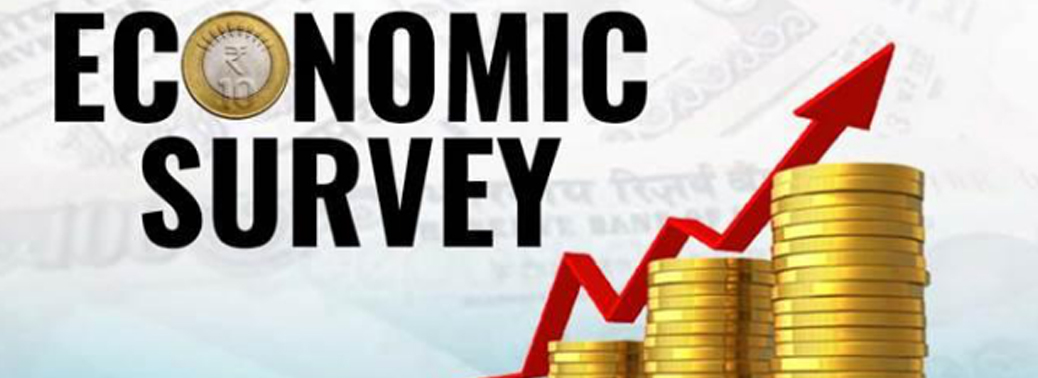
Why in News?
- One day before the Union budget, the Chief Economic Adviser (CEA) of the country releases the Economic Survey. The Economic Survey for 2019-2020 will be tabled in Parliament on January 31.
Highlights:
- The Economic Survey is a report the government presents on the state of the economy in the past one year, the key challenges it anticipates, and their possible solutions.
- The document is prepared by the Economic Division of the Department of Economic Affairs (DEA) under the guidance of the CEA, currently Dr.Krishnamurthy Subramanian.
- For the past few years, the Economic Survey has been presented in two volumes. For example, in 2018-19, while Volume 1 focussed on research and analysis of the challenges facing the Indian economy, Volume 2 gave a more detailed review of the financial year, covering all the major sectors of the economy.
Importance:
- The Economic Survey is a crucial document as it provides a detailed, official version of the government’s take on the country’s economic condition. It can also be used to highlight some key concerns or areas of focus.
- The government is not constitutionally bound to present the Economic Survey or to follow the recommendations that are made in it. But while the Centre is not obliged to present the Survey at all, it is tabled because of the significance it holds.
Expectations from the 2020 Survey:
- The Economic Survey ahead of the Union Budget is expected to offer key insights into the path ahead for the government to revive growth.
- The Survey is expected to shed light on the crucial gaps that the Budget will aim to fill in terms of unemployment, private investment, and a slump in Consumption.
- The Dilema of remaining fixated on deficit targets or making a concerted push towards more expenditure to kickstart growth is one of the key challenges the Government is Facing.
CHEMICAL RIPENING FRUITS-POISONING
01, Feb 2020
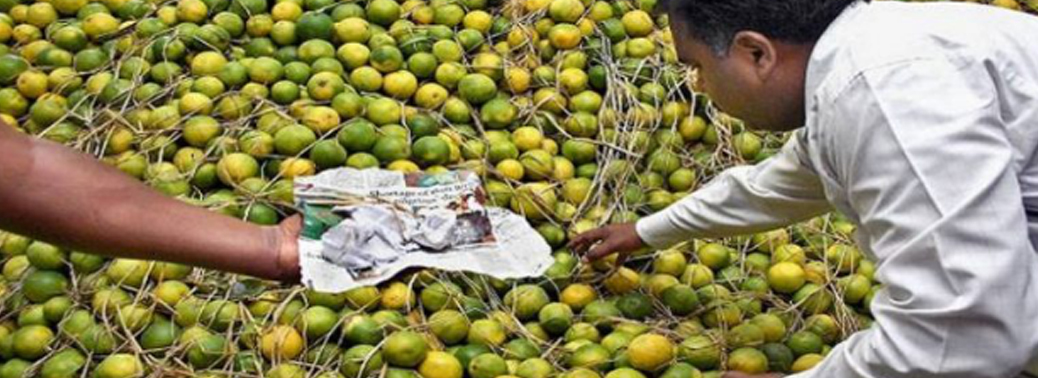
Context:
- Recently, the Delhi High Court has observed that use of chemicals to ripen fruits amounts to poisoning the somebody.
Artificial Ripening of Fruits:
- Ripening is associated with change in composition i.e. conversion of starch to sugar.
Food Safety and Standards (Prohibition and Restriction on sales) regulations, 2011 Prohibits:
- Prohibition of use of carbide gas in ripening of fruits: No person shall sell or offer or expose for sale or have in his praises for the purpose of sale under any description, fruits which have been artificially ripened by use of acetylene gas, commonly known as Carbide Gas.
- Provided that fruits may be Artificially Ripened by use of ethylene gas at a concentration up to 100 ppm (100µl/L) depending upon the crop, variety and maturity.
What are the Health problems caused by Calcium Carbide?
- Calcium Carbide is a colourless chemical or greyish white to black in colour. It is cheap and easily available chemical.
- Acetylene is believed to affect the nervous system by reducing oxygen supply to brain. Calcium carbide, once dissolved in water, produces acetylene which acts as an artificial ripening agent.
- It breaks down the organic composition of vitamins and other Micronutrients.
- Industrial-grade calcium carbide usually contains traces of arsenic and Phosphorus.
- Arsenic and phosphorus are toxic and exposure may cause severe Health Hazards
- It causes Vomiting, Diarrhoea, Weakness, Burning Sensation in the chest and abdomen, thirst, problem in swallowing, burning of eyes, permanent eye damage, ulcers on the skin, mouth, nose and throat.
- It damages the mucosal tissuein the stomach and disrupts the intestinal function. If a person is exposed to the chemicals for a long time, they can cause Peptic Ulcers.
Is there any Other Techniques for Ripening of Fruits?
- There are Several Simple Methods Available Today for Farmers for Proper Ripening.
- A simple techniques practiced in households to trigger ripening is to keep unripened and ripened fruits together inside an air tight container.
- Another method is to place the fruits intended for ripening inside an air tight room and induce ripening through smoking inside smoke chambers. Smoke emanates acetylene gas.
- Several fruit traders follow this technique to achieve uniform ripening especially in edible fruits like banana and mango. But the major drawback of this method is that the fruits do not attain uniform colour and flavour. In addition, the persistence of smoke odour on the product impairs its quality
- Spreading of unripe fruits as layers over paddy husk or wheat straw for a week to ripen is an another alternative.
- Another practice is that some farmers dip unripe mature fruits in 0.1 per cent ethrel solution (1 ml of ethrel solution in 1 litre of water) and wipe it dry. The fruits are then spread over a newspaper without touching each other and a thin cotton cloth is covered over this. In this method, the fruits will ripen within two days.
- In one of the simple and harmless techniques, 10 ml of ethrel and 2 gm of sodium hydroxide pellets are mixed in five litres of water taken in a wide mouthed vessel. This vessel is placed inside the ripening chamber near the fruits and the room is sealed air tight. About a third of the room is filled with fruits leaving the remaining area for air circulation.
- Ripening of fruits takes place in about 12 to 24 hours. In order to reduce the cost of chemical, some ethylene releasing fruits such as papaya and banana can also have kept in the same room.
ORGANISED MANUFACTURING TO BOOST JOB GROWTH
31, Jan 2020
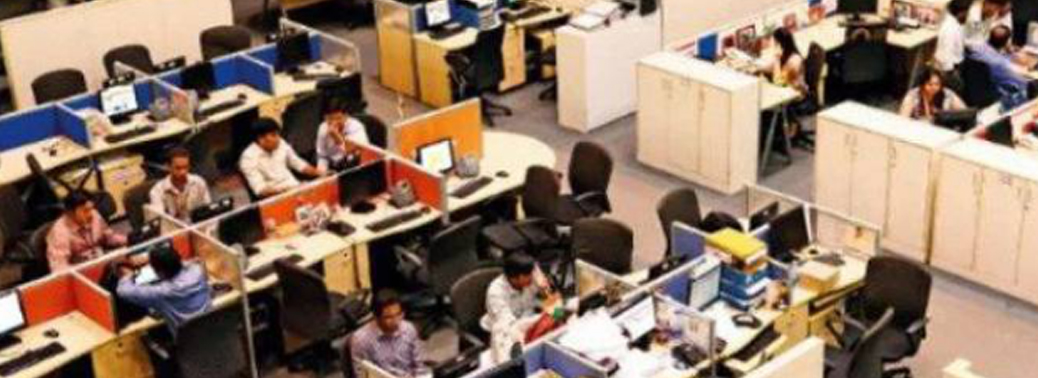
Why in News?
- There have been several reports, both official and by independent academics, that have painted a dark picture on the jobs front. A 2017-18 National Sample Survey Office’s (NSSO) survey pegged unemployment at a 45-year high.
- It has been suggested that India’s unemployment woes can only be solved by boosting the Manufacturing Sector.
Highlights:
- It has been argued that between the three broad sectors of the economy- agriculture, industry and services — it is the industry sector, and within industry, the manufacturing sector that has the highest potential to absorb the surplus labour in the economy. Agriculture, which engages almost half the Indian workforce, does not grow fast enough and is, as such, not remunerative enough to provide gainful employment to the millions who join India’s workforce each year.
- Services is a fast-growing sector and pays well but it places far greater demands on job seekers in terms of skills and education. Often, the rural millions looking for a job find themselves inadequate in terms of delivering in the services sector.
- Research shows that the employment elasticity, the ability to create new jobs with every additional increase in a sector’s growth, of the manufacturing sector is the highest.
- Both UPA and NDA governments have tried to focus on boosting the growth in the manufacturing sector. For instance, in 2011, UPA came out with a new National Manufacturing Policy that aimed at raising the share of the manufacturing sector to 25% of the GDP by 2022.
- The NDA too unveiled the Make in India initiative that focussed using manufacturing as the main platform to create jobs.
- Despite such a focussed stand right through the past decade, manufacturing’s share is still under 17% of the GDP and the jobs situation in the country has only got worse.
The Current Situation:
- An Analysis of the Indian manufacturing sector shows that manufacturing units in the organised sector are becoming more capital intensive, that is the capital-to-labour ratio is
- In other words, instead of increasing the number of workers in a unit, owners are choosing to increase the amount of capital.
- This trend holds true across the board including those sectors such as textiles and leather products that are considered “labour-intensive” and most capable of creating jobs and soaking up surplus labour.
Issues that needs to be Addressed:
- Why are manufacturing owners increasingly preferring to substitute labour with capital? It is important to note that they continue to do so even when the return on capital is falling.
- If this is the trend, how reasonable is it to assume that boosting manufacturing growth will create more jobs for the Indian youth.
- To what extent the lack of significant labour reform is holding back manufacturing from achieving its potential to create jobs.
PRIVATE TRAINS IN INDIA
31, Jan 2020

Context:
- NITI Aayog and Indian Railways have come out with a discussion paper for running 150 trains on 100 routes by private operators. The recommendations of the high powered committee envisaging an investment of 22500 crore rupees have been put in public domain for stakeholder consultations.
- The 100 identified routes which include Mumbai Central – New Delhi , Patna – New Delhi , Howrah- Chennai and Lucknow- Jammu Tawi etc. have been split into 10-12 clusters.
- As per the report the private operator will have the right to collect market linked fares and will be provided flexibility of class composition and halts.
- The aim for this overhaul is said to ensure world class service experience to passengers, reduce supply demand deficit and introduce modern technology
Advantages of Privatisation of Railways:
- Improved Infrastructure:Privatisation will lead to better infrastructure which in turn would result in improved amenities for Travellers.
- Normalization of prices due to the competition: when private players are allowed to enter the sector would foster competition and hence lead to overall betterment in the quality of services in line with the costs and prices.
- Improved Security:Private participation can lead to better accountability and monitoring, which can keep a check on rising accidents in railways.
- Better Technological Innovation:Private participation can lead to the infusion of modern technology and capacity building of Indian railways.
Disadvantages of Privatisation of Indian Railways:
- Limited Coverage:Privatisation of railways would mean the railways will become a profit-making enterprise, this would lead to the elimination of railways routes that are less popular.
- This can have a negative impact on connectivity and further increase the rural-urban divide.
- Lesser Inclusive:Hike in fares can render the railways out of reach for lower-income groups.
- Issue of Accountability:The whole railway system cannot be handled by a single party or coordination will be very difficult if area wise given to private parties, which may lead to accountability issues.
- Impact on the Economy:Indian Railways is the backbone of India, it provides low fare transportation to agricultural and industrial trade. Therefore, privatisation of Indian railways shall definitely affect the Indian economy at large.
Challenges:
- Absence of Independent Regulator in the railway sector:In the absence there are chances of litigation or other issues as cropped up in the road sector.
- No Past Experiencein the PPP model for the implementation of projects for railways.
- Accountability:Private companies are unpredictable in their dealings and do not share their governance secrets with the world at large. In such a scenario it would be difficult to pin the accountability on a particular entity.
- The existing Railway workers would be affected and may lead to severe job losses.
Recommendations of the Bibek Debroy Committee:
- Transition to Commercial Accounting:The financial statements of Indian Railways need to be redrawn, in accordance with principles and norms nationally and internationally accepted.
- The non-core function of railways must be privatized:These activities include running hospitals and schools, catering, real estate development, including housing, construction and maintenance of infrastructure, manufacturing locomotives, coaches, wagons and their parts.
- Expansion of Indian Railways Manufacturing Company:Wagons are already produced by the private sector. Coaches and locomotives could follow.
- Encouraging Private Entry:Private entry into running both freight and passenger trains in competition with Indian railways should be allowed and private participation.
- Independent Regulator: Shift regulatory responsibility from the government to an independent regulator as the private sector will only come in if there is fair and open access to Railway Infrastructure.
TIME TO PRIORITISE EDUCATION AND HEALTH
31, Jan 2020

Why in News?
- In the backdrop of current economic slowdown, few eminent economists have been prescribing investments in human capital formation in order to spur growth and counter the slowdown.
Background Info:
- To counter the economic slowdown the government is attempting to spur demand by increasing the private consumption expenditure.
- Accordingly a number of steps taken by the government include
- Corporate tax rate cut
- Investment in infrastructure inclusion National Infrastructure Pipeline
- Setting up of Alternate Investment Fund in the Housing Sector.
- Higher spending in MGNREGA etc.
- The policy currently being pursued by the government is intended primarily to incentivise potential investors by facilitating ease-of-doing-business and making large-scale concessions to the corporate sector including tax cut.
- Despite of these efforts, there is little evidence of any significant increase in investment by the private sector to boost consumption expenditure.
- There are few who argue that the government must implement labour market reforms, remove constraints on land acquisition, accelerate investments in physical infrastructure mainly transport and energy to boost consumption expenditure.
The Way Around:
- Alternatively few of the eminent economists prescribe increased social sector spending particularly on education and health in order to counter slowdown.
- They suggest this as it have 2-fold Effect Including:
1.Human Capital Formation
2.Increased Demand as a result of improved employment in education and health in the form of new recruitments of healthcare professionals, teachers, improved infrastructure etc. (Counters Economic Slowdown)
Importance of Investments in Education and Health:
- Investments in social sector are grossly underfunded as the target to invest in education is 6 per cent of GDP whereas in Health the target as per the National Health Policy is to invest upto 2.5 per cent of GDP.
- Thus the increased public expenditure in social sectors in the magnitudes required for meeting the constitutionally mandated objectives can have short- and medium-term effect of enhancing employment, generating demand and attracting investment.
- Investments in health and education will serve two main objectives:
- 1.It will boost human capital – efforts of humans
- 2.It can counter economic slowdown
- In the field of education, primarily by investing in teacher recruitment and building school infrastructure. Thus, recruitment of 5.7 million additional teachers over a period of five years, can create huge scale demand. And, this is only one factor essential for universalising quality school education.
- There is also a large gap between requirement of infrastructure in the schools and that available and built recently.
- According to government data, only 12.5% of the schools covered by the RTE Act were compliant with RTE norms, most of which are related to infrastructure. Meeting these norms has the potential of creating employment on a large scale.
- Education has a crucial role to play for an individual in Gaining Employment and Retaining Employability.
- In the field of health, there is a huge deficit of paramedical workers, middle-level health workers, nurses and trained doctors.
Conclusion:
- Health and education are of instrumental value in driving growth, creating employment and improving people’s well-being is widely recognised but often forgotten when it comes to making investment in these sectors.
- The government has a well-entrenched policy of Encouraging Privatisation in both health and education. But, privatisation in these sectors has not led to efficiency or improvement of quality.
- It has only destroyed public sector institutions, promoted greater inequality and pushed the poor out. The gestation period of projects in social sectors is not as long as it is considered.
- It is therefore time for reprioritising education and health in the scheme of development strategy and the allocation of budgetary resources so as to counter current economic slowdown and also build strong infrastructure necessary in the fields of health and education.
AIR INDIA DISINVESTMENT
29, Jan 2020
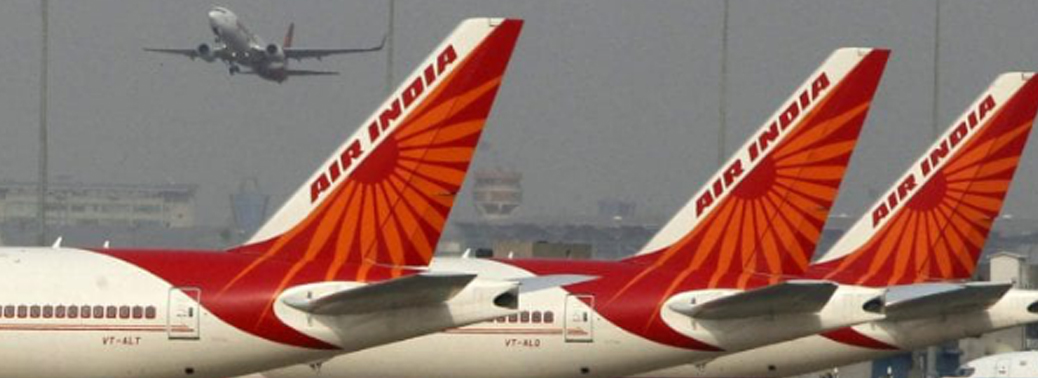
Why in News?
- The Government has kicked off the complete disinvestment process of Air India for the second time after it failed to receive a single bid in the first attempt back in 2018.
100% Stake Sale:
- Most significantly, the government will offload 100% of its stake in Air India, compared with 76% put on the block last time.
- The government holding even a minor stake in the airline post disinvestment was seen as a huge negative for any potential buyers.
- The buyer will have to take on Rs 23,286 crore of debt out of a total Rs 60,074 crore.
- Compared with this, in the last attempt, a potential buyer would have to take on Rs 33,392 crore of debt and current liabilities.
- The amount of debt being bundled with the airline in this attempt is towards the aircraft that are being sold off along with the carrier as part of the transaction.
- The working capital and other non-aircraft debt will be retained by the Government.
Employees:
- All present employees of Air India totalling as many as 9,617 permanent employees, including pilots and cabin crew, will go to the new buyer.
- The buyer should retain these employees for a certain lock-in period, which would be divulged in the share Purchasing Agreement. The government is exploring different modalities to ensure that the retired staff members have a Medical Cover.
Eligibility:
- Any private or public limited company, a corporate body and a fund with a net value of ₹3,500 crores will be eligible to bid.
- The present offer involves a clean exit by the government and complete transfer to the private player. This would ensure the private players enough freedom to run the state of affairs in the company without many regulations.
- The bid document also states that the existing FDI policy, which allows a foreign airline to buy up to 49% in Air India, will continue to apply.
Air India’s Assets:
- The new owner will be taking on a fleet of 121 aircraft in Air India’s fleet and 25 planes in Air India Express’ fleet.
- These exclude the four Boeing 747-400 Jumbojet aircraft that the airline plans to transfer to its subsidiary Alliance Air, which is not a part of the current transaction.
- However, like the last attempt, the properties currently in use by Air India, including the Nariman Point building and the company’s headquarters near Connaught Place in New Delhi will be retained by the government.
Pro’s of Air India:
- Air India has a 50.64% market share in international traffic among Indian carriers.
- The government is hopeful of attracting investors with the new sale criteria, coupled with the main benefits of the airline, which are prime slots in capacity-constrained airports across the world.
- However, any potential investor is also expected to look at the size of the airline’s operations with reference to what those operations generate.
- For example, both Air India and Singapore Airlines operate with a fleet of 121 aircraft, but in 2018-19 Air India posted a net loss of Rs 8,556 crore, whereas Singapore Airlines reported a net profit of Singapore $ 779.1 million (Approx Rs 4,100 crore).
THE AVIATION TROUBLE
28, Jan 2020
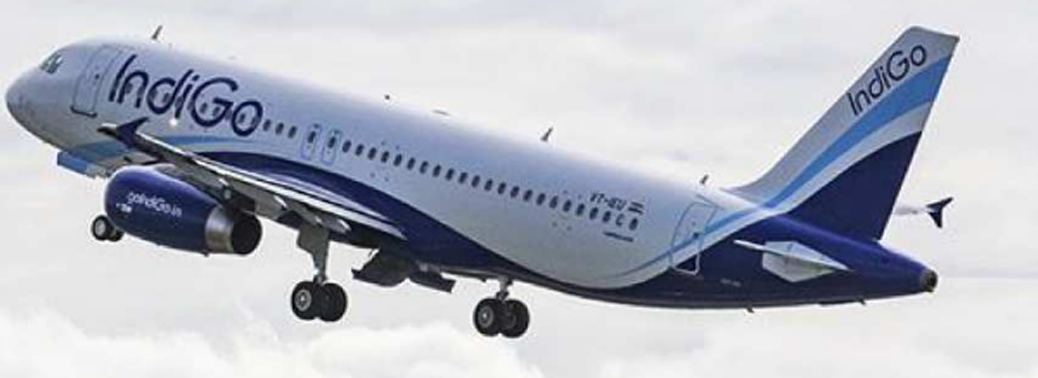
Context:
- Indian aviation industry is staring at a fresh crisis. Recently, low-cost carrier GoAir temporarily suspended some flights, as its A320neo planes are Facing Frequent Snags.
The on-going Crisis:
- The issue in the A320neo class planes had led to several groundings last year and this year.
- The Directorate General of Civil Aviation (DGCA) pressed the airlines to fix the issues soon.
- Both the engine manufacturer Pratt and Whitney and aircraft maker Airbus SE expressed their inability to deliver engines and aircraft on time, which means Go Air has no option but to truncate its operating fleet of planes.
- The problem is not confined to the short term.
- As many as 15% of passenger planes in India could be affected due to this, as leading airlines like Indigo, GoAir and SpiceJet have the same issue.
- Aviation experts say that frequent snags in Pratt and Whitney engines may not have easy and immediate fixes. Which means the problem is not likely to go away any time soon.
The Issues Plaguing Aviation Sector in India:
- Increase in Fuel Prices:
- Aviation turbine fuel (ATF) is one of the important sections of the industry.
- The Centre and the states pile on their taxes on ATF, which can go as high as 29%.
- ATF charges are vulnerable to currency movements and leads to high operating expenses—some 40% compared to 20% for Foreign Carriers.
- Rupee Depreciation:
- The rupee’s depreciation is hitting carriers hard as it did a few years ago.
- About 25-30% of their costs, excluding fuel, are dollar denominated—from aircraft lease rents and maintenance costs to ground handling and parking charges abroad.
- Excessive parking and Landing Charges:
- High Airport (aeronautical) Charges levied by Airport Authority of India.
- These charges payable at the International Airports are higher than those payable at the airports designated as Domestic Airports.
- As a result, the domestic airlines in India are incurring additional costs at the international designated airports without deriving any Extra Facilities.
- Fare Wars:
- Established Airlines are threatened by low cost carriers, which are eating up their market share.
- In order to consolidate their market share, top premium airlines were forced to reduce their ticket fares to around 15- 20 per cent, which reduces their profitability.
- Loads of Debt:
- Poor operational efficiency, steady losses in the wake of higher fuel costs and a weaker rupee leads to non-payment of debts.
- No airline company has been able to devise a credible currency policy to protect them against Sharp Currency Movements.
- Lack of Managerial Expertise:
- Indian aviation sector is struggling due to lack of managerial expert and expertise in the sector and lack of a regulator to Monitor the Industry
- Government policies limitations:
- The National civil aviation policy (NCAP) 2016’s regional connectivity scheme imposes ticket price caps, which also makes the airliners fly their aircrafts in Unprofitable Routes.
The International Civil Aviation Organization (ICAO):
- ICAO is a UN specialized agency, established by States in 1944 to manage the administration and governance of the Convention on International Civil Aviation (Chicago Convention).
Functions of ICAO:
- ICAO works with the Convention’s 193 Member States and industry groups to reach consensus on international civil aviation Standards Recommended Practices (SARPs) and policies.
- It supports creating a safe, efficient, secure, economically sustainable and environmentally responsible civil aviation sector.
- ICAO also coordinates assistance and capacity building for States in support of Numerous Aviation Development Objectives.
- It produces global plans to coordinate multilateral strategic progress for safety and air navigation.
- Monitors and audits States’ civil aviation oversight capabilities in the areas of safety and security.
Chicago Convention:
- Convention on International Civil Aviation (also known as Chicago Convention), was signed in 1944 by 52 States.
- ICAO came into being in 1947.
- In the same year, ICAO became a specialized agency of the United Nations linked to Economic and Social Council (ECOSOC).
- The Convention establishes rules of airspace, aircraft registration and safety, and details the rights of the signatories in relation to air travel.
- The Convention also exempts air fuels in transit from (Double) Taxation.
ENSURING WATER SECURITY
25, Jan 2020

Context:
- Recently, the operational guidelines for Jal Jeevan Mission (JJM) has been released. The initiative aims to provide Functional Household Tap Connections (FHTC), to every rural household i.e., ‘Har Ghar Nal Se Jal’ by 2024.
What is the status of household water connections in India?
- Out of 17.87 crore rural households in the country, about 81.67% households are yet to have tap connections for water.
- As the National Sample Survey Office’s (NSSO) 76th round in rural India, just 11.3 per cent of the rural households receive potable water directly at homes.
- In urban India, 40.9 per cent households have piped water connections.
- Around 58.3 per cent of households still rely on hand pump, tube well, public tap, piped water from neighbour, protected or unprotected well, and private or public taps.
What is Jal Jeevan Mission?
- JJM focuses on integrated demand and supply-side management of water at the local level.
- It includes creation of local infrastructure for source sustainability like rainwater harvesting, groundwater recharge and management of household wastewater for reuse.
- Waterbeing a subject mentioned in the State List, the guidelines for the scheme were formed by the Centre in close consultation with the state governments.
Works to be undertaken under JJM:
- Piped Water Supply infrastructure for tap water connection to every household
- Reliable drinking water source development/augmentation of existing sources
- Transfer of water between villages
- Technological intervention for water treatment to make water potable
- Greywater(Any domestic wastewater produced, Excluding Sewage) Management
- Capacity Building of various stakeholders and support activities to facilitate the implementation.
Implementation of JJM:
- The Scheme will be implemented at four levels- National, State, District, and Gram Panchayat
- Paani Samiti/User Group:
- It is a statutory committee of the Gram Panchayat.
- There is a need for community participation, ownership and contribution in all decisions pertaining to water supply systems.
- Therefore, community-led partnership to achieve the objectives of JJM will help in bringing long term sustainability.
- Role of Women:
- Women will play a vital role from being beneficiaries to getting empowered and playing leadership.
- As per the guidelines, there has to be at least 50% representation of women in the Paani Samiti.
- Complementary Schemes:
- Similar schemes like Atal Bhujal Yojana (for sustainable management of groundwater with community participation) will play a crucial role, as groundwater is an important component in JJM.
Funds for the implementation of JJM
- The scheme is said to work in convergence with the other existing schemes to prevent creation of a parallel water supply infrastructure deviating from the approved plan. It will work in convergence with–
- MGNREGA funds
- Grants under Finance Commission, State Finance Commission,
- District Mineral Development Fund (DMDF),
- MPLADS, MLALADS, or donations, etc.
- ‘Rashtriya Jal Jeevan Kosh’ will mobilize and accept donations/contributions received from various sources to fund JJM.
- The total project is estimated to cost about ₹3.60 lakh Crore. The fund sharing pattern between the Centre and states is 90:10 for Himalayan and North-Eastern States, 50:50 for other states, and 100% for Union Territories.
Challenges to the Implementation
- Sustainability:
- Household water connection should also be linked to the availability of water in those taps.
- In India, there is a mismatch between water demand and water availability.
- By 2050, it is expected that this gap will get widened.
- Coverage:
- The issue of supplying water to the households located in the peripheral areas of the city (viz. the marginal population), as piped supply is not physically feasible in difficult terrain.
- Capacity Building:
- State actors and policy-makers are poorly equipped with tools for formulation and implementation of the water management strategies.
Way Forward:
- More focus towards water management– There is a need to pay focussed attention and planning for the efficient usage of freshwater.
- Managing the demand side of water– There should be a region-specific plan for water-stressed states.
- Participation –The participation of individuals, NGOs and different communities in the water management process shall be Promoted.
- Role of Government –The Government needs to holistically handle the supply as well as the demand side of Water Management
IS ‘MAKE IN INDIA’ A FAILURE
20, Jan 2020

Context:
- Five years later, as we brace for another Union Budget, it would be appropriate to take stock of the much-hyped initiative which is on a slippery slope.
Major Objectives of Make in India:
- To increase the manufacturing sector’s growth rate to 12-14% per annum in order to increase the sector’s share in the economy.
- To create 100 million additional manufacturing jobs in the economy by 2022
- To ensure that the manufacturing sector’s contribution to GDP is increased to 25% by 2022 (revised to 2025) from the current 16%.
- The policy approach was to create a conducive environment for investments, develop modern and efficient infrastructure, and open up new sectors for foreign capital.
Outcomes of the Scheme:
- The last five years witnessed slow growth of investment in the economy. This is more so when we consider capital investments in the manufacturing sector. Gross fixed capital formation of the private sector, a measure of aggregate investment, declined to 28.6% of GDP in 2017-18 from 31.3% in 2013-14 (Economic Survey 2018-19).
- Interestingly, though the public sector’s share remained more or less the same during this period, the private sector’s share declined from 24.2% to 21.5%. Part of this problem can be attributed to the decline in the savings rate in the economy.
- Household savings have declined, while the private corporate sector’s savings have increased. Thus we find a scenario where the private sector’s savings have increased, but investments have decreased, despite policy measures to provide a good investment climate.Regarding employment growth, we have witnessed questions being raised over the government’s delay in releasing data as well as its attempts to revise existing data collection mechanisms. Employment, especially industrial employment, has not grown to keep pace with the rate of new entries into the labour market.
What could be the Reasons for Failure?
- The bulk of these schemes relied too much on foreign capital for investments and global markets for produce. This created an inbuilt uncertainty, as domestic production had to be planned according to the demand and supply conditions elsewhere.
- Policymakers neglected the third deficit in the economy, which is implementation. While economists worry mostly about budget and fiscal deficit, policy implementers need to take into account the implications of implementation deficit in their decisions.
- It set out too ambitious growth rates for the manufacturing sector to achieve. An annual growth rate of 12-14% is well beyond the capacity of the industrial sector. Historically India has not achieved it and to expect to build capabilities for such a quantum jump is perhaps an enormous overestimation.
- Its initiative brought in too many sectors into its fold. This led to a loss of policy focus. Further, it was seen as a policy devoid of any understanding of the comparative advantages of the domestic economy.
- Given the uncertainties of the global economy and ever-rising trade protectionism, the initiative was spectacularly ill-timed.
INTEGRATED ROAD ACCIDENT DATABASE (IRAD)
18, Jan 2020

Why in News?
- Recently, the government has launched a Central Accident Database Management System.
About Integrated Road Accident Database (IRAD):
- It has been developed by the Indian Institute of Technology-Madras (IIT-M) and will be implemented by the National Informatics Centre and is being supported by the World Bank.
- It will be first piloted in the six States with highest fatalities from road crashes of Karnataka, Madhya Pradesh, Maharashtra, Rajasthan, Tamil Nadu and Uttar Pradesh.
- It is comprehensive web-based Information Technology (IT) solution and will enable various agencies such as the police, Public Works Department (PWDs), etc. to enter details on a road accident from different perspectives such as investigation, road engineering, vehicle condition etc.
Working of IRAD:
- It will enable police personnel to enter details about a road accident, along with photos and videos, following which a unique ID will be created for the incident.
- Subsequently, an engineer from the Public Works Department or the local body will receive an alert on his mobile device. He or she will then visit the accident site, examine it, and feed the required details, such as the road design.
- The Data thus collected will be analysed by a team at IIT-M, which will then suggest if corrective measures in road design need to be taken.
- Road users will also be able to upload data on road accidents on a separate mobile application.
Road Accidents in India:
- According to the World Road Statistics, India recorded the highest number of road accident deaths across 199 countries in 2018 followed by China and the US.
- According to Government Data, more than 1.5 lakh people lost their lives in road crashes in the country in 2018.
- Of the total people killed in road crashes in 2018, 48% were between 18 years and 35 years old, and more than 60% of such fatalities were due to over speeding.
National Informatics Centre:
- NIC of the Ministry of Electronics and Information Technology provides network backbone and e-Governance support to the Central Government, State Governments and UT Administrations.
- It was established in 1976 and is located in New Delhi.
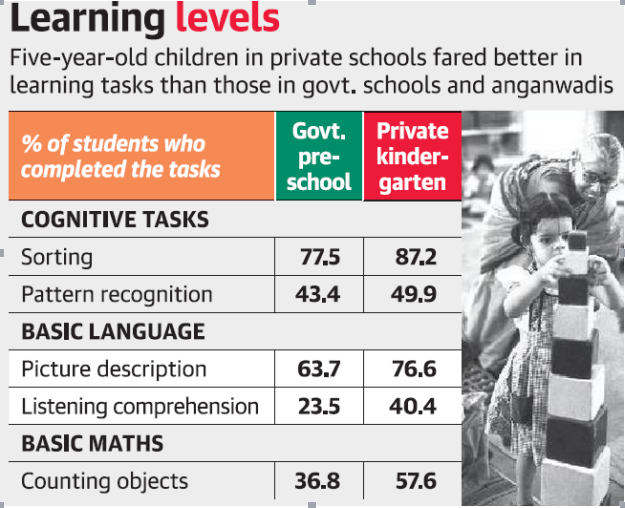
ANNUAL STATUS OF EDUCATION REPORT (ASER) 2019
18, Jan 2020
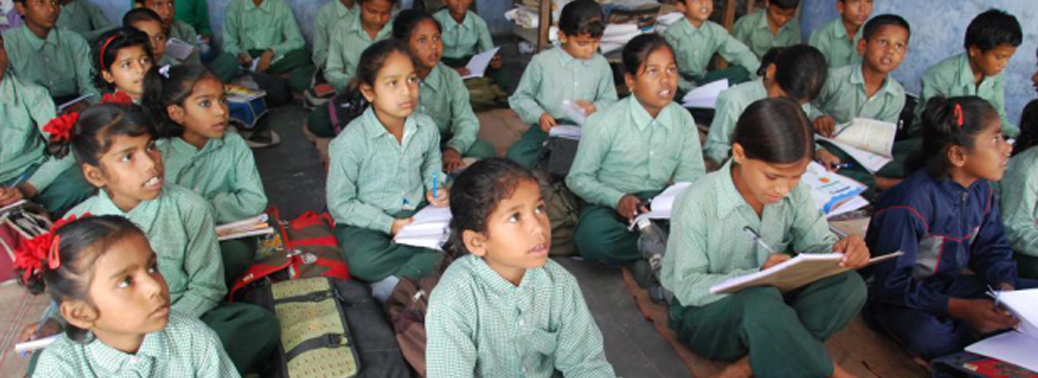
Why in News?
- Recently, the Non-Governmental Organization (NGO) Pratham’s Annual Status of Education Report 2019 has flagged poor learning outcomes in schools.
About ASER 2019:
- ASER 2019 reported on the pre-schooling or schooling status of children in the age group 4 to 8 years in 26 rural districts (districts with rural population >70%) across 24 States.
- It focuses on the “early years” and lays emphasis on “developing problem-solving faculties and building memory of children, and not content knowledge”.
- It is defined globally as age 0-8, is known to be the most important stage of cognitive, motor, social and emotional development in the human life cycle.
- It explores children’s performance on four competencies that are identified as important predictors of future success, viz.
1. Cognitive Development,
2. Early Language,
3. Early Numeracy, and
4. Social and Emotional Development
About the Key Findings of the ASSE:
- ASER Report 2019 argues that a focus on cognitive skills rather than subject learning in the early years can make a big difference to basic literacy and numeracy abilities.
- It tests the cognitive skills of children. Tests included sorting images by colour and size, recognising patterns, fitting together a four-piece animal puzzle — as well as simple literacy and numeracy tests.
- However, of those children who could correctly do all three cognitive tasks, 52% could read words, and 63% could solve the addition problem.
- It shows that children’s performance on tasks requiring cognitive skills is strongly related to their ability to do early language and Numeracy Tasks.
- This suggests that focusing on play-based activities that build memory, reasoning and problem-solving abilities is more productive than an early focus on content knowledge.
Reading and Early Childhood Education:
- Only 16% of children in Class 1 can read the text at the prescribed level, while almost 40% cannot even recognise letters.
- Early childhood education has the potential to be the “greatest and most powerful equaliser”.
- Global research shows that 90% of brain growth occurs by age 5, which meaning that the quality of early childhood education has a crucial impact on the development and long-term schooling of a child.
- More than a quarter of Class 1 students in government schools are only 4 or 5 years old, younger than the recommended age. These younger children struggle more than others in all skills.
- At the same time, 36% in Class 1 are older than the Right to Education (RTE) Act (2009) -mandated age of 6.
- It can be noted that the draft New Education Policy (NEP), 2019 also links the “severe learning crisis” to what goes on with young children in India.
About the Draft New Education Policy (NEP), 2019:
- Draft NEP points out that close to 5 crore children currently in elementary schools do not have foundational literacy and numeracy skills.
- Several possible reasons for this:
- Many children enter school before age 6. This is partly due to the lack of affordable and accessible options for pre-schooling. Therefore, too many children go to Std I with limited exposure to early childhood education.
- Children from poor families have a double disadvantage – lack of healthcare and nutrition on one side and the absence of a supportive learning environment on the other.
- School readiness or early childhood development and education activities have not had a high priority in the Integrated Child Development Scheme (ICDS) system
Annual Status of Education Report (ASER):
- It uses Census 2011 as the sampling frame. It continues to be an important national source of information about children’s foundational skills across the Country.
- In 2016, ASER switched to an alternate-year cycle where this ‘basic’ ASER is conducted every other year (2016, 2018, and next in 2020); and in alternate years ASER focuses on a different aspect of children’s schooling and learning.
- In 2017, ASER ‘Beyond Basics’ focused on the abilities, experiences, and aspirations of youth in the 14-18 age group. In 2018 ASER had data on enrolment patterns in age group 4 to 8.
Way Forward:
- Strengthen the early childhood components in the Integrated Child Development Scheme (ICDS) system for raising school readiness among young children. There is considerable scope for expanding Anganwadi outreach for 3- and 4-year-old children.
- A reworking of curriculum and activities is urgently needed for the entire age band from 4 to 8, cutting across all types of preschools and early grades regardless of whether the provision is by government institutions or by private agencies.
- The year 2020 marks the 10th anniversary of the RTE Act. This is the best moment to focus on the youngest cohorts before and during their entry to formal schooling and ensure that 10 years later they complete secondary school as well-equipped and well-rounded citizens of India.
COAL MINING AND ITS INVESTMENTS
10, Jan 2020

Why in News?
- Recently, the Union Cabinet has approved the ordinance that amends the Mines and Minerals (Development and Regulation) Act, 1957 and the Coal Mines (Special Provisions) Act, 2015.
About Coal Mining and its Investments:
- The Mines and Minerals (Development and Regulation) Act, 1957: It regulates the mining sector in India and specifies the requirement for obtaining and granting mining leases for mining operations.
- The Coal Mines (Special Provisions) Act, 2015: It is an act that provides for allocation of coal mines and vesting of the right, title and interest in and over the land and mine infrastructure together with mining leases to successful bidders with a view to ensure continuity in coal mining operations and production of coal.
Key Points of the Amendment:
- Democratizing the coal mining sector– Previously, the government used to auction coal and lignite mining licences only to companies engaged in iron and steel, power coal washing sectors. Now, it had been opened to all.
- Allowing FDI:It will promote foreign direct investment in the sector. This will help India gain access to sophisticated technology for underground mining used by global miners. It may also bring an end to state-run Coal India Ltd’s (a Maharatna company) monopoly in the sector.
- Improving the Production:The government aims at greater participation in commercial mining of coal and targets 1000 Million Tonnes (MT) coal production by Financial Year (FY) 2023 -24. The country produced 730 million tonne of coal in 2018-19.
- Moving towards import substitution:It will boost both production and mining efficiency besides substituting import of coal worth Rs 30,000 crore. Despite having the world’s fourth largest coal reserves, India imported 235 million tonnes (mt) of coal in 2019.
- Improving the competitiveness:The steel industry would get cheaper inputs, leading to an increase in ‘competitiveness’.
- Extending the policy of composite mining licence to the coal sector – Previously, the policy of composite mining licence was in force for unexplored blocks of most non-coal minerals.
- What is Composite Mining Licence? – Composite Mining Licence is a prospecting license which is followed by a grant of Mining Lease. It will add to the certainty of tenure from the prospecting to the production stages.
Background:
Ownership of Mineral:
- The Central Government is the owner of the minerals underlying the ocean within the territorial waters or the Exclusive Economic Zone of India.
- The State Governments are the owners of minerals located within the boundary of the State concerned. They grant mineral concessions for all the minerals located within the boundary of the State, under the provisions of the Mines and Minerals (Development and Regulation) Act, 1957 and Mineral Concession Rules, 1960.
- Though for the minerals specified in the First Schedule to the Mines and Minerals (Development and Regulation) Act, 1957 approval of the Central Government is necessary. Schedule I contains minerals such as coal and lignite, minerals of the “rare earths” group containing Uranium and Thorium.
- Also, the Central Government notifies certain minerals as ‘minor’minerals from time to time for which the absolute powers for deciding on procedures of seeking applications for and granting mineral concessions, fixing rates of royalty, dead rent, and power to revise orders rest only with the State Government. Example of minor minerals include building stones, gravel, ordinary clay, ordinary sand.
Coal in India:
- It is the main source of energy in India. This fossil fuel is found in a form of sedimentary rocks and is often known as ‘BlackGold’.
- It can be classified on the basis of carbon content as follows:
- Anthraciteis the best quality of coal which carries 80 to 95% carbon content. It has the highest calorific value. It is found in small quantity in Jammu and Kashmir.
- Bituminouscarries 60 to 80% of carbon content and a low level of moisture content. It is widely used and has high calorific value. It is found in Jharkhand, West Bengal, Odisha, Chhattisgarh and Madhya Pradesh.
- Ligniteis often brown in colour. It carries 40 to 55% carbon content. It has high moisture content so it gives smoke when burnt. It is found in Rajasthan, Lakhimpur (Assam), and Tamil Nadu.
- Peathas less than 40% carbon content. It has low calorific value and burns like wood.
INSOLVENCY AND BANKRUPTCY BOARD OF INDIA (LIQUIDATION PROCESS) (AMENDMENT) REGULATIONS, 2020
09, Jan 2020

Why in News?
- The Insolvency and Bankruptcy Board of India (IBBI) amended the Insolvency and Bankruptcy Board of India (Liquidation Process) Regulations, 2016.
Amendments:
- The amendment clarifies that a person, who is not eligible under the Insolvency & Bankruptcy Code (IBC) to submit a resolution plan for insolvency resolution of the corporate debtor, shall not be a party in any manner to a compromise or arrangement of the corporate debtor under section 230 of the Companies Act, 2013.
- It also clarifies that a secured creditor cannot sell or transfer an asset, which is subject to security interest, to any person, who is not eligible under the Code to submit a resolution plan for insolvency resolution of the corporate debtor.
- The amendment provides that a secured creditor, who proceeds to realise its security interest, shall contribute its share of the insolvency resolution process cost, liquidation process cost and workmen’s dues, within 90 days of the liquidation commencement date.
- It shall also pay excess of realised value of the asset, which is subject to security interest, over the amount of its claims admitted, within 180 days of the liquidation commencement date.
- Where the secured creditor fails to pay such amounts to the Liquidator within 90 days or 180 days, as the case may be, the asset shall become part of Liquidation Estate.
- The amendment provides that a Liquidator shall deposit the amount of unclaimed dividends, if any, and undistributed proceeds, if any, in a liquidation process along with any income earned thereon into the Corporate Liquidation Account before he submits an application for dissolution of the corporate debtor.
- It also provides a process for a stakeholder to seek withdrawal from the Corporate Liquidation Account.
Insolvency and Bankruptcy Board of India (IBBI):
- The IBBI was formed in 2016 under the IBC.
- It is the regulator responsible for overseeing the insolvency proceedings.
- It is responsible for the implementation of the IBC that consolidates and amends the laws relating to reorganization and insolvency resolution of corporate persons, partnership firms and individuals.
- It has regulatory oversight over:
- Insolvency Professionals
- Insolvency Professional Agencies
- Insolvency Professional Entities
- Information Utilities
- It frames and enforces rules for:
- Corporate Insolvency Resolution
- Corporate Liquidation
- Individual Insolvency Resolution
- Individual Bankruptcy
MAINTENANCE AND WELFARE OF PARENTS AND SENIOR CITIZENS (AMENDMENT) BILL, 2019
08, Jan 2020
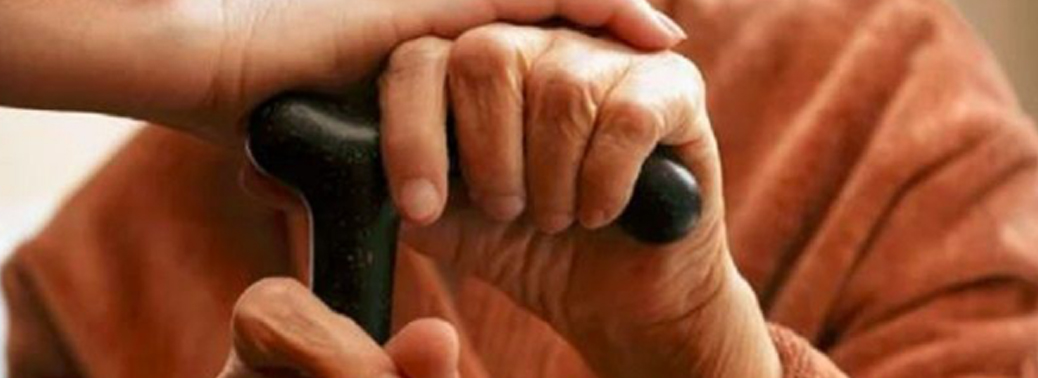
Why in News?
- The Maintenance and Welfare of Parents and Senior Citizens (Amendment) Bill, 2019 has been referred to the Standing Committee on Social Justice and Empowerment by the Lok Sabha Speaker. The bill was introduced in Lok Sabha in December, 2019.
Key Provisions of the Bill:
- It seeks to amend The Maintenance and Welfare of Parents and Senior Citizens Bill, 2007.
- Definition of ‘children’ and ‘parents’, ‘maintenance’ and ‘welfare’ has been expanded.
- Mode of submission of application for maintenance has been enlarged.
- Ceiling of Rs 10,000/- as maintenance amount has been removed.
- Preference to dispose of applications of senior citizens, above eighty years of age, early has been included.
- Registration of Senior Citizens Care Homes/Homecare Service Agencies etc. have been included.
- Minimum standards for senior citizen care homes have been included in the Bill.
- Appointment of Nodal Police Officers for Senior Citizens in every Police Station and District level Special Police Unit for Senior Citizens has been included.
- Maintenance of Helpline for senior citizens has been Included.”
Elders – A Key Resource:
- The elderly should be seen as a blessing, not a burden.
- The elderly are becoming the fastest growing, but underutilized resource available to humanity.
- Rather than putting them aside, physically (and mentally), to be cared for separately, they should be integrated into the lives of communities where they can make a substantial contribution to improving social conditions.
- The benefits of turning the ‘problem’ of the elderly into a ‘solution’ for other social problems are being demonstrated in several countries.
Need of an Hour:
- As a signatory to Madrid International Plan of Action on Ageing (MIPAA), India has the responsibility to formulate and implement public policy on population ageing.
- Issues of poverty, migration, urbanisation, ruralisation and feminisation compound the complexity of this emerging phenomenon.
- Public policy must respond to this bourgeoning need and mainstream action into developmental planning.
- Gender and social concerns of elderly, particularly elderly women, must be integrated at the policy level.
- The elderly, especially women, should be represented in decision making.
- Increasing social/widow pension and its universalisation is critical for expanding the extent and reach of benefits.
- Renewed efforts should be made for raising widespread awareness and access to social security schemes such as National Old Age Pensionand Widow Pension Scheme.
- Provisions in terms of special incentives for elderly women, disabled, widowed should also be considered.
2ND NATIONAL GST CONFERENCE
08, Jan 2020
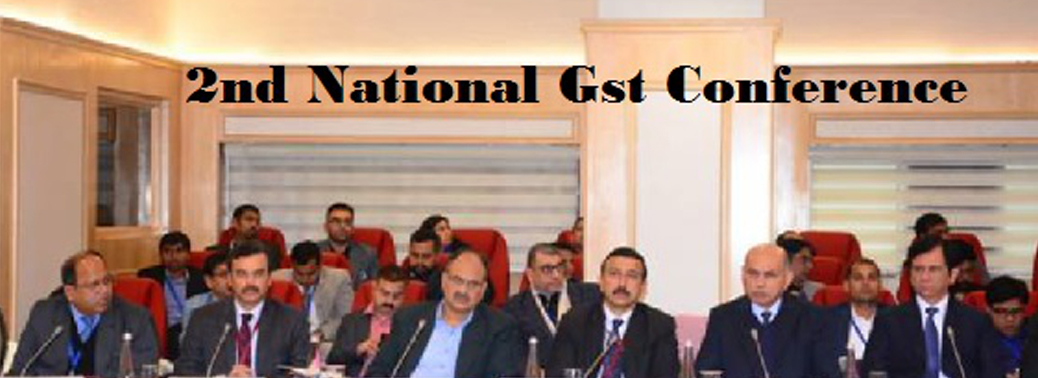
Why in News?
- The 2nd National GST Conference was held for streamlining the GST system.
Highlights:
- The 2ndNational GST Conference of the Commissioners of State Tax and Chief Commissioners of Central Tax was held under the chairmanship of the Revenue Secretary, Ministry of Finance.
- The conference focused on streamlining the GST system and plugging revenue leakages.
- This was the 2ndedition of the all India conference where both tax administrations came together formally to build synergy and to share their knowledge and best practices with intent to bring about uniformity in tax administrations.
Outcomes of the Conference:
- To constitute a Committee of Centre and State officers to examine and implement quick measures in a given time frame to curb fraudulent refund claims including the inverted tax structure refund claims and evasion of GST.
- Considering fraudulent IGST refund claims, it was explored to link foreign exchange remittances with IGST refunds for risky and new exporters.
- All major cases of fake Input Tax Credit, export/import fraud and fraudulent refunds shall also be compulsorily investigated by the Income Tax Department.
- MoU would be signed among the Central Board of Direct Taxes (CBDT), the Central Board of Indirect Taxes (CBIC) and GSTN to exchange data through API, from CBDT to GSTN and CBIC and vice-versa. It was decided that this data should be shared on a quarterly basis, instead of being shared on a yearly basis.
- To explore access to banking transactions (including bank account details) by GST system, in consultation with RBI and NPCI.
- To share data of cases involving evasion and fraudulent refund detected by CBIC with CBDT and vice versa, so that proper profiling of these fraudsters could be done.
- It was also suggested to provide a single bank account for foreign remittance receipt and Refund Disbursement.
- A self-assessment declaration to be prescribed by suitable amendments in GSTR Forms in case of closure of businesses.
- To undertake verification of unmatched input tax credit availed by taxpayers.
UJALA AND SLNP
08, Jan 2020
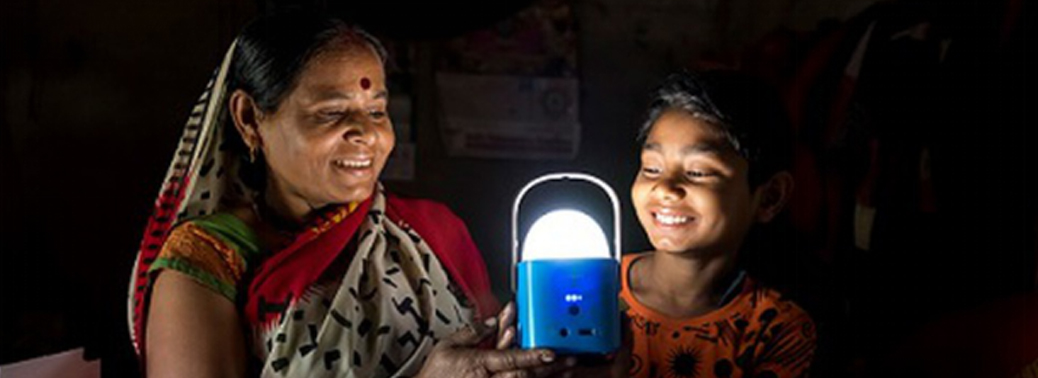
Why in News?
- The Government of India’s UJALA & Street Lighting National Programme (SLNP) complete five successful years.
UJALA:
- Unnat Jyoti by Affordable Lighting for All (UJALA) is a zero-subsidy scheme launched by the Government in 2015.
- It is touted as the world’s largest domestic lighting project.
Objectives:
- The UJALA scheme also known as the LED-based Domestic Efficient Lighting Programme (DELP) aims to promote the efficient usage of energy for all i.e., its consumption, savings and lighting.
- According to the UJALA scheme, LED bulbs would be distributed by the Electricity Distribution Company at subsidized rates to every grid-connected customer with a metered connection.
Implementation of UJALA scheme:
- Implementation of the UJALA scheme was done successfully in terms of investment and risk factors. The scheme was implemented as a joint contribution of EESL and DISCOM. Some of the outputs that were put forward by the UJALA scheme were:
- Replacing 200 million ordinary light bulbs by LED bulbs.
- Load reduction of 5000 MW.
- To reduce the emissions caused by greenhouse gases by 79 million tonnes of carbon dioxide.
SLNP:
- The SLNP is a government scheme to promote energy-efficiency in India.
- Energy Efficiency Services Limited (EESL), a joint venture of PSUs under the Power Ministry, is the implementing agency for SLNP.
- EESL, launched in 2015, has already replaced 50 lakh street lights with LED bulbs in more than 500 cities of India.
- To bring in mass-scale transformation, EESL has adopted a unique strategy by joining hands with states, municipal bodies and Urban Local Bodies (ULBs).
- Under the programme, EESL replaces the conventional street lights with LEDs at its own costs, with no upfront investment by the municipalities, thereby making their adoption even more attractive.
- Over a period, EESL is repaid through the consequent reduction in energy and maintenance cost of the municipality.
- This scheme is expected to enable peak demand reduction of 500 MW, annual energy savings of 190 crore kWh, and reduction in 15 lakh tons of CO2.
Objectives:
- Mitigate climate change by implementing energy-efficient LED-based street lighting.
- Reduce energy consumption in lighting which helps DISCOMs to manage peak demand.
- Provide a sustainable service model that obviates the need for upfront capital investment as well as additional revenue expenditure to pay for the procurement of LED lights.
- Enhance municipal services at no upfront capital cost of municipalities. The Government of India’s UJALA & Street Lighting National Programme (SLNP) complete five successful years.
PRADHAN MANTRI FASAL BIMA YOJANA (PMFBY)
07, Jan 2020
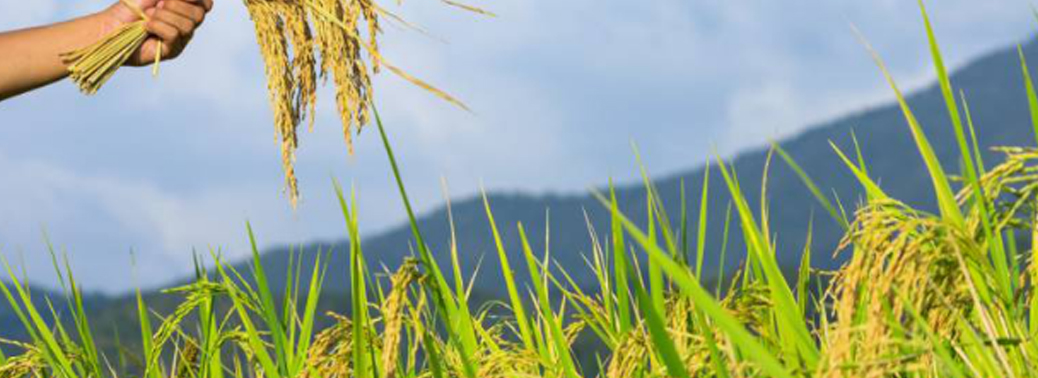
Why in News?
- Maharashtra has become the first state in the country to integrate its land records with the web portal of the Pradhan Mantri Fasal Bima Yojana (PMFBY).
- This will help in checking the cases of “over-insurance” (insurance of more land than in possession) as well as insurance of ineligible people.
About PMFBY:
- Launched in April, 2016, after rolling back the earlier insurance schemes viz. National Agriculture Insurance Scheme (NAIS), Weather-based Crop Insurance scheme and Modified National Agricultural Insurance Scheme (MNAIS).
Premium:
- It envisages a uniform premium of only 2% to be paid by farmers for Kharif crops, and 1.5% for Rabi crops. The premium for annual commercial and horticultural crops will be 5%.
Objectives:
1.Providing financial support to farmers suffering crop loss/damage arising out of unforeseen events.
2. Stabilizing the income of farmers to ensure their continuance in farming.
3.Encouraging farmers to adopt innovative and modern agricultural practices.
4.Ensuring flow of credit to the agriculture sector which contributes to food security, crop diversification and enhancing growth and competitiveness of agriculture sector besides protecting farmers from production risks.
Farmers to be Covered:
- All farmers growing notified crops in a notified area during the season who have insurable interest in the crop are eligible.
Compulsory Coverage:
- The enrolment under the scheme, subject to possession of insurable interest on the cultivation of the notified crop in the notified area, shall be compulsory for following categories of Farmers:
1.Farmers in the notified area who possess a Crop Loan account/KCC account (called as Loanee Farmers) to whom credit limit is sanctioned/renewed for the notified crop during the crop season. and
2. Such other farmers whom the Government may decide to include from time to time.
Voluntary Coverage:
- Voluntary coverage may be obtained by all farmers not covered above, including Crop KCC/Crop Loan Account holders whose credit limit is not renewed.
Challenges at Present:
1.Insufficient reach and the issue of penetration.
2.Data Constraints:With just around 45% of the claims made by farmers over the last three crop seasons data for the last rabi season is not available paid by the insurance companies.
3.Low Payout of claims:The reason for the very low payout of claims is that only few state governments are paying their share of the premiums on time and till they do, the central government doesn’t pay its share either. Till they get the premium, insurance companies simply sit on the claims.
4.Gaps in assessment of crop loss:There is hardly any use of modern technology in assessing crop damages. There is lack of trained outsourced agencies, scope of corruption during implementation and the non-utilisation of technologies like smart phones and drones to improve reliability of such sampling.
5.Less number of Notified Cropsthan can avail insurance, Inadequate and delayed claim payment
6.High Actuarial Premium Rates:Insurance companies charged high actuarial premium rates. If states delay notifications, or payment of premiums, or crop cutting data, companies cannot pay compensation to the farmers in time.
7.Poor capacity to deliver:There has been no concerted effort by the state government and insurance companies to build awareness of farmers on PMFBY. Insurance companies have failed to set-up infrastructure for proper Implementation of PMFBY.
WEIGHING IN ON THE PUBLIC SECTOR PRIVATISATION DEBATE
02, Jan 2020
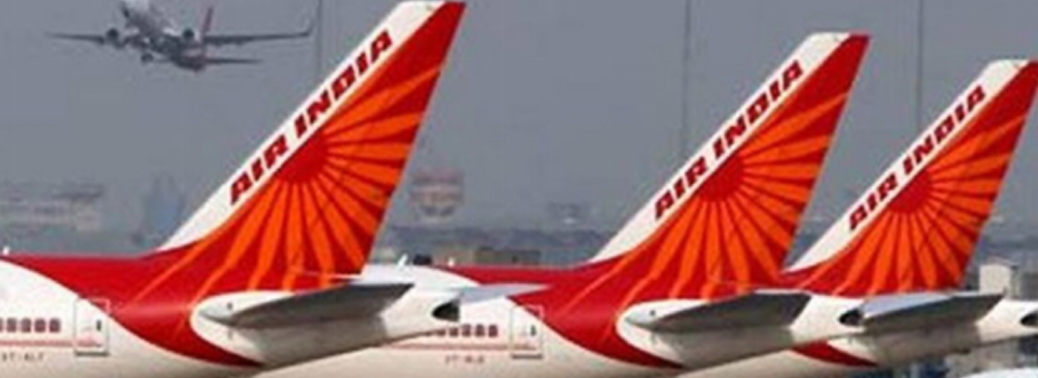
Context:
- While there is justification in selling loss-making units, the situation is more difficult to understand in the case of profit-making entities.
Different Modes of Privatization:
- There seem to be broadly three positions with respect to the privatisation of public sector undertakings (PSUs).
- The left position is “PSU is family silver (i.e.), selling for your own benefits, and should not be sold irrespective of its performance”.
- The divergent stand is that “business is not the business of government”, which found resonance in the United Kingdom, and, of late, in India.
- There is also the third position: Why privatise profit-making PSUs? Why do you sell the family silver? Bharat Petroleum Corporation Limited (BPCL) which is making handsome profits comes under this category.
What is the case of Loss-Making units?
- Loss-making PSUs certainly merit privatisation — but no one would buy them with their huge debt and employee liabilities.
- The government may even have to pay the buyer, as it happened in the case of the Delhi Discom privatisation.
- Even then it may be worth it, since privatisation will stop fiscal flows to these PSUs.
- Alternatively, there is the exit route through the new Insolvency and Bankruptcy Code.
- Some of the major loss-making PSUs, Bharat Sanchar Nigam Limited, Mahanagar Telephone Nigam Limited and Air India should go under the block as their losses are greater than their revenue. They are called as value subtracting enterprises.
- Restructuring them and even ensuring an additional infusion of funds and other resources have not produced results.
When Privatization is More Needed?
- Privatisation is not a default option; rather, it is resorted to only out of extreme necessity.
- “Privatization is resorted not just when the firm makes losses, but only when the physical performance is so bad that the PSU becomes a political embarrassment to the Government.”
- This may explain the hesitation to privatise some of the largest loss-making PSUs — Air India, the BSNL and MTNL — as the embarrassment threshold may not have been reached as yet.
What to be done after Privatization?
- There is no point in converting a public monopoly to a private monopoly; it will only result in inefficiency being replaced by private profits.
- Privatisation must be accompanied by competition in the post-privatized scenario.
- However, the government will face a dilemma. If high price is needed, it should allow a monopoly situation post-privatisation, and if it wants competition and low price for consumers, it should be content with a modest sale price, as the post-privatisation valuation of the firm critically depends on the market structure post-privatisation.
- If that is to be competitive, other PSU national oil companies such as the IOC and HPCL should also be privatized.
- Similarly, LPG and kerosene subsidies can be handled by direct benefit transfer, which is already in vogue in the case of LPG.
YEAR END REVIEW 2019 – MINISTRY OF ROAD TRANSPORT & HIGHWAYS
02, Jan 2020
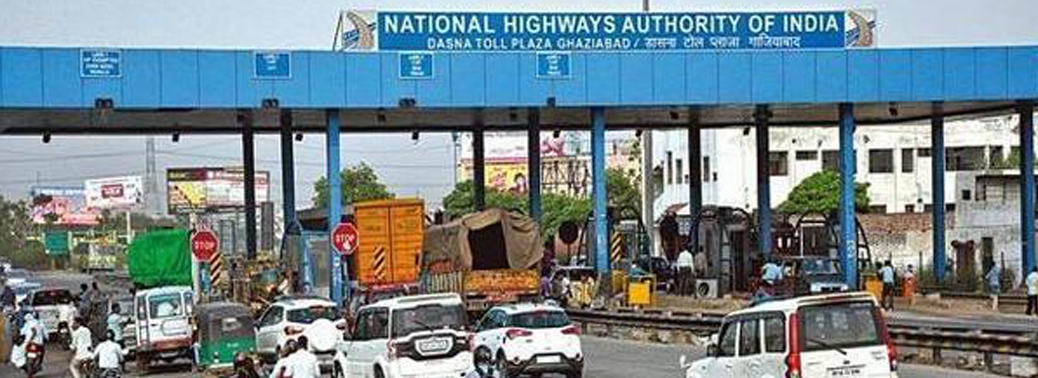
Major initiatives of the Ministry of Road Transport & Highways in 2019:
National Electronic Toll Collection (NETC) program:
- The Ministry of Road Transport and Highways has launched the National Electronic Toll Collection (NETC) program which provides for the collection of user fee through FASTags based on RFID technology.
- In order to save fuel, time and pollution and to ensure seamless movement of traffic, it has been decided to enable all lanes in Fee Plazas for electronic toll collection program through FASTags.
- The Ministry is trying to bring inter-operability of the FASTags with the State Governments so that a single FASTag can be used both at State Highways Toll Plaza and National Highways Toll Plaza.
- An NHAI Prepaid Wallet was also launched giving customers the choice of not linking their FASTags to their bank accounts and includes the feature of UPI recharge.
State Support Programme:
- A State Support Programme aimed at incentivising the states to improve their road safety performance is proposed to be launched to reduce the overall fatalities by road accidents by 25% by 2024.
- With a view to accurately recording the accident details so that timely corrective action is undertaken a geo-tagged accident data collection programme would be launched under the project “Integrated Road Accident Database (IRAD)”.
The Motor Vehicles (Amendment) Act, 2019:
- The Motor Vehicles Act, 1988 is the principal instrument through which road transport is regulated in the country.
- The same has been amended for the first time in a comprehensive way after thirty years by the Motor Vehicles (Amendment) Act, 2019, passed by the Parliament and published in the Gazette of India in August 2019.
- The Act will bring reforms in the area of road safety, bring citizen facilitation, transparency, and reduce corruption with the help of information technology and removing intermediaries.
- The Act will strengthen public transport, safeguard and protect Good Samaritan and reform the insurance and compensation regime.
- It will allow innovation and new technologies such as driverless vehicles, to be tested in a live environment and increase efficiency in research.
- The Act will facilitate physically handicapped people by allowing motor vehicles to be converted to adapted vehicles with post-facto approval and facilitating licence to drive adapted vehicles.
- The provisions of compensation and post-accident treatment have been amended and measures will be taken to provide cashless treatment for accident victims.
NATIONAL INFRASTRUCTURE PIPELINE
02, Jan 2020

- The Government has recently released a report of the “Task force on National Infrastructure Pipeline” for 2019-2025. The government has also released its outline to invest ₹102 lakh crore on infrastructure projects by 2024-25 as part of its National Infrastructure Pipeline.
Investment in Infrastructure:
- The government has also outlined its plan to invest more than ₹102 lakh crore on infrastructure projects by 2024-25 with the Centre, States and the private sector to share the capital expenditure in a 39:39:22 formula.
- This was in line with the statement of our Prime Minister, who has announced plans to invest ₹100 lakh crore on modern infrastructure in order to fulfil his vision of making India an $5 trillion economy by 2024-25.
- This investment would be a significant increase over the last six years, when the Centre and States together spent ₹51 lakh crore on infrastructure.
Task force on National Infrastructure Pipeline:
- A Task Force was constituted to draw up the National Infrastructure Pipeline (NIP) for each of the years from financial years 2019-20 to 2024-25.
- A task force of senior bureaucrats chaired by Economic Affairs Secretary Atanu Chakraborty then identified ₹102 lakh crore projects in 18 States as part of a National Infrastructure Pipeline. Government also added that another ₹3 lakh Crore worth of projects are likely to be added soon. The investment is phased over a six-year period, including the current financial year. The funds would come from budgetary and extra-budgetary resources, as well as funds raised from the market and internal accruals of the relevant state-owned companies.
Major Focus Areas of Investment:
- Almost a quarter of the capital expenditure will be going to the energy sector, with ₹24.5 lakh crore expected to be invested in power, renewable energy, atomic energy and petroleum and natural gas.
- The other major focus areas are roads (19%) and railways (13%), urban (16%) and rural (8%) infrastructure, and irrigation (8%).
- Social infrastructure, including health and education, will get 3% of the capital expenditure, with digital communication and industrial expenditure each getting the same amount as well.
- Agriculture and food processing infrastructure will get one per cent of the planned capital expenditure.
- The emphasis would be on ease of living: safe drinking water, access to clean and affordable energy, healthcare for all, modern railway stations, airports, bus terminals and world-class educational institutes.
About the National Infrastructure Pipeline and its significance:
- It is estimated that India would need to spend $4.5 trillion on infrastructure by 2030 to sustain its growth rate. The endeavour of the National Infrastructure Pipeline (NIP), is to make this happen in an efficient manner.
- It will help in stepping-up annual infrastructure investment to achieve the Gross Domestic Product (GDP) of $5 trillion by 2024-25.
- NIP will enable a forward outlook on infrastructure projects which will create jobs, improve ease of living, and provide equitable access to infrastructure for all, thereby making growth more inclusive.NIP includes economic and social infrastructure projects.
- National Infrastructure Pipeline will ensure that infrastructure projects are adequately prepared and launched.
- Each Ministry/ Department would be responsible for the monitoring of projects so as to ensure their timely and within-cost implementation.
- Funding:The central government and state governments would have an equal share of 39% each in the NIP. The private sector, on the other hand, would have 22% share which the government expects to increase to 30% by 2025.

KERALA TOPS NITI AAYOG’S SDG INDEX
31, Dec 2019
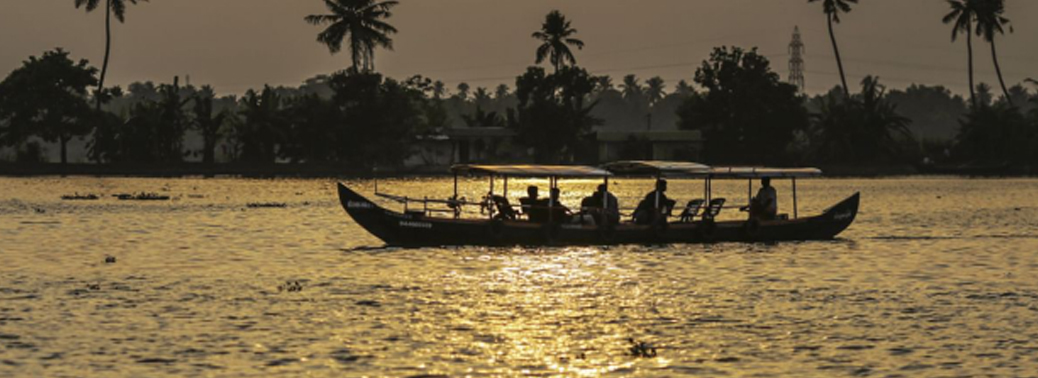
Why in News?
- Kerala tops states in progress towards UN Sustainable Development Goals, while Bihar is at the bottom of recently released NITI Aayog’s SDG Index.
About Sustainable Development Goals:
- The Sustainable Development Goals (SDGs) are officially known as Transforming our world: the 2030 Agenda for Sustainable Development.
- There are 17 Sustainable Development Goals, associated 169 targets and 304 indicators.
- They are universal call by United Nations Development Programme (UNDP) for action towards ending poverty, improving health and education, protecting planet, and ensuring that all people enjoy peace and prosperity by 2030.
- India has been closely monitoring its progress on SDGs through its National Indicator Framework and India SDG Index released in 2018.
About the Report:
- The SDG India Index was developed in collaboration with the Ministry of Statistics & Programme Implementation (MoSPI), Global Green Growth Institute and United Nations in India.
- The index comprises a composite score for each State and Union Territory based on their aggregate performance across 13 of the 17 SDGs (leaving out Goals 12, 13, 14 and 17).
- The score, ranging between 0 and 100, denotes the average performance of the State/UT towards achieving the 13 SDGs and their respective targets.
- The states were classified under 4 categories based on their scores. The states with scores between 0 and 49 were categorized ‘Aspirant’, between 50 and 64 were ‘Performers’, between 65 and 99 were ‘Front Runner’ and with a score of 100 were categorized ‘Achiever’.
- The aim of the index is to instill competition among States to improve their performance across social indices as the States’ progress will determine India’s progress towards achieving the set goals by 2030. Using the index, States will be monitored on a real-time basis.
Key Findings of the Report:
- Kerala ranked first in composite SDG index with score of 70. Kerala was followed by Himachal Pradesh, Andhra Pradesh, Telangana and Tamil Nadu.

- The biggest improvement was seen in states such as Uttar Pradesh, Odisha and Sikkim. The score of UP improved from 29 in 2018 to 23 in 2019. Also, the rank of Odisha improved from 23 in 2018 to 15 in 2019.
- The least performing states were Bihar, Jharkhand and Arunachal Pradesh.
- In terms of poverty reduction, states such as Tamil Nadu, Andhra Pradesh, Tripura, Mizoram, Meghalaya and Sikkim performed well.
- The states Uttar Pradesh, Assam and Bihar that were in Aspirant category moved to performers in 2019.
- The states that were in performer category in 2018 and moved to front runner include Andhra Pradesh, Karnataka, Telangana, Sikkim and Goa.
What is the Concern?
- Ending hunger and achieving gender equality are the areas where most states fall far short, with the all-India scores for these goals at 35 and 42 points respectively.
- The second SDG – zero hunger – shows sharp divergence in the performance of states, with little middle ground.
- Kerala, Goa and parts of the north-east — including Mizoram, Nagaland, Arunachal Pradesh and Sikkim – have scored above 65, with Goa at 75 points.
- However, 22 of the states and union territories have scored below 50, with the central Indian states of Jharkhand, Madhya Pradesh, Bihar and Chhattisgarh scoring below 30, showing abysmal levels of hunger and malnutrition.
- The chosen indicators are related to child stunting, obesity and anaemia, as well as agricultural production and subsidised food distribution.
- On the fifth SDG – gender equality – almost all states fare poorly. Only Jammu and Kashmir, Himachal Pradesh and Kerala have managed to cross 50 points.
- The indicators considered include crimes against women, eradicating sex selection and discrimination against daughters, and access to reproductive health schemes, as well as indicators showing women’s economic and political empowerment and leadership.
- A sex ratio of 896 females per 1000 males, a 17.5% female labour participation rate, and the fact that one in three women experience spousal violence all contribute to a low score countrywide.
- The Swachh Bharat Mission has contributed largely to the high scores on the sixth SDG – clean water and sanitation – although that was helped by the fact that four out of seven indicators dealt with toilets and sanitation, while only one indicator was related to safe and affordable drinking water.
- All states and union territories except for Delhi have scored above 65, with the national capital scoring poorly on the percentage of urban households with individual household toilets (less than one percent) and, oddly, providing no data on districts verified to be open defecation free.
- Delhi also has 81% of blocks with overexploited groundwater, vastly higher than any other state.
Way Forward:
- Unless development becomes a mass movement, India can’t achieve what it is essential as of now.
- India’s progress in achieving these goals are crucial for the world as it is home to about 17% of the world population, said a statement from NITI Aayog.
NEED A DIFFERENT APPROACH TO ADDRESS CHILD MALNUTRITION
31, Dec 2019
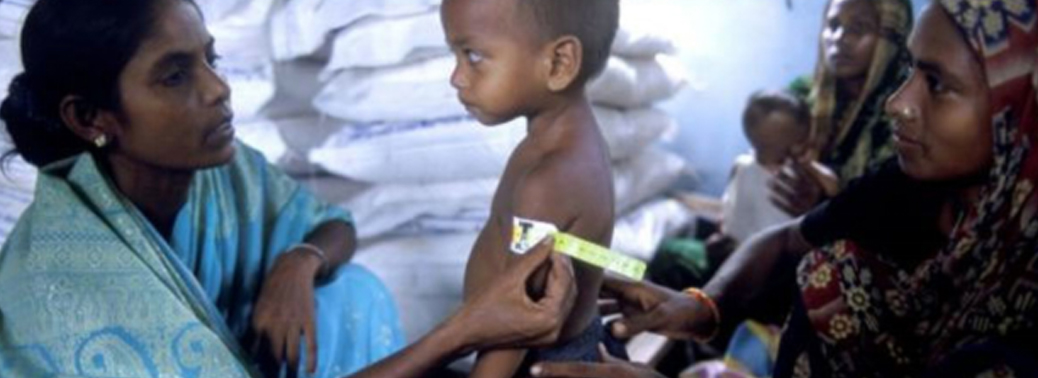
Why in News?
- Though National Family Health Survey-4 (NFHS-4) shows an encouraging improvement in child nutrition, the world level rankings on child nutrition draws a different picture about India.
Reports that pings on Child Nutrition:
- UNICEF’s report– one in three malnourished child in world belongs to India, half of the children under three years old are underweight and a third of wealthiest children are over-nutrient-ed.
- The 2018 Global Hunger Index (GHI)report ranked India 103rd out of 119 countries.
- According to the Indian Council of Medical Research (ICMR), in 2017, malnutrition was the predominant risk factor for death in children younger than five in every state of India.
- According to the Global Burden of Disease Study 2017,malnutrition is among the leading causes of death and disability in India.
Measures to address the lag in Improving Child Nutrition:
1.Timely Intervention:
- The focus must be on the pregnant, breastfeeding mother and the child, especially in the first two years of the child’s life, which is the crucial phase for physical, mental and cognitive development.
2.Targeted Approach:
- A targeted approach is needed because the size of the needy and the budgetary constraints already pose a big challenge.
- NFHS-4 provided district level data as well, hence the focus should be on the ones which require urgent attention.
- More public programmes which cover important nutrition-specific areas such as maternal nutrition should be started.
3.No “one size fits all approach”:
- As these districts are concentrated in Uttar Pradesh, Bihar, Madhya Pradesh and Jharkhand , Karnataka, Maharashtra, Rajasthan and Gujarat – their governments should make arrangements for the required funds and formulate policies to tackle high incidence of stunting in these districts.
- Further, even within these districts, the pockets where child malnutrition is high should be identified and the intervention or the target should go down till the clusters of Anganwadis where the problem is concentrated.
4.Policy Implementation based in Real Time Data:
- Policy initiatives should be guided by accurate real-time data at the sub-district level also.
5.Educating Girls and Spreading Awareness:
- Efforts should be made to spread messages on hygiene and sanitation, particularly the need to do away with open defecation practices.
- Similarly, education for girls should be advocated, as should the importance of enabling the financial independence of women through skilling and employment opportunities along with their inclusion in the formal financial network.
6.Sound public Service Delivery Institutions:
- Lastly, Programmes will have an impact only when there are sound public service delivery mechanisms, especially in the nutrition, health and education sectors.
- Hence, building a cadre of dedicated professionals in the government needs a high degree of political will and administrative commitment, centred around developing skills and knowledge and building motivation to stay the course.
30% OF POSHAN ABHIYAAN FUNDS USED
30, Dec 2019
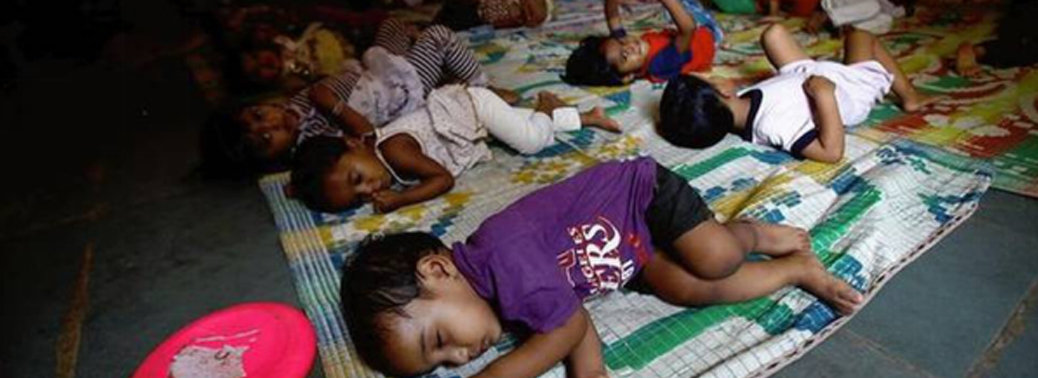
Why in News?
- The State governments and the Union Territories utilised a mere 30% of the funds released under the Poshan Abhiyaan, or the National Nutrition Mission, since it was launched in 2017.
About POSHAN Abhiyaan:
- POSHAN Abhiyaan (National Nutrition Mission) was launched by the government on March 8, 2018.
- It is implemented by the Ministry of Women and Child Development.
- The Abhiyaan targets to reduce stunting, under nutrition, anemia (among young children, women and adolescent girls) and reduce low birth weight by 2%, 2%, 3% and 2% per annum respectively.
- The target of the mission is to bring down stunting among children in the age group 0-6 years from 38.4% to 25% by 2022.
- POSHAN Abhiyaan aims to ensure service delivery and interventions by use of technology, behavioural change through convergence and lays-down specific targets to be achieved across different monitoring parameters.
- It is meant to benefit more than 10 crore people and was launched after a Cabinet decision on December 1, 2017, with a total budget of ₹9,046.17 crore for three years, 50% of which is through budgetary support, which is further divided into 60:40 between the Centre and the States, 90:10 for the north-eastern region and the Himalayan States and 100% for the Union Territories without legislature.
- The remaining 50% is from the World Bank or other multilateral development banks. As a result, the Centre’s total share will be ₹2,849.54 crore.
- Under the Abhiyaan, Swasth Bharat Preraks will be deployed one in each district for coordinating with district officials and enabling fast and efficient execution of the Abhiyaan across the country.
- Swasth Bharat Preraks would function as catalyst for fast tracking the implementation of the Abhiyaan.
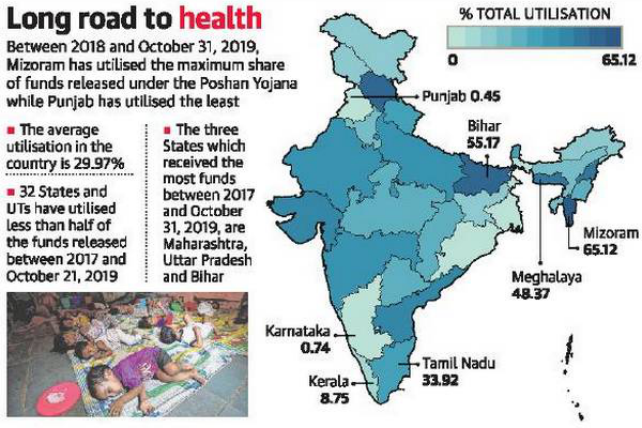
Are the Funds Used?
- Barring Mizoram, Lakshadweep, Himachal Pradesh and Bihar, none of the governments used even half of the sum granted in the past three years, according to an analysis of the data shared in Parliament.
- According to the information given by Minister for Women and Child Development in the recent session of Parliament, a total of ₹4,283 crore was disbursed by the Centre to different States and Union Territories.
- Of this, ₹1,283.89 crore was utilised until October 31, 2019, or only 29.97% of thefunds granted. Figures were not available for 2017-2018 as the scheme was launched at the end of the fiscal.
Important Stats of the Report:
- The five best performers were Mizoram (65.12%), Lakshadweep (61.08%), Bihar (55.17%), Himachal Pradesh (53.29%) and Meghalaya (48.37%).
- The worst five performers were Punjab (0.45%), Karnataka (0.74%), Kerala (8.75%), Jharkhand (13.94%) and Assam (23.01%).
- During 2019-20, funds were released for 19 States, though 12 of them had used less than a third of the funds released in the previous two years.
- The CNNS, released by the Ministry of Health and Welfare in October, showed that 35% of children under the age of 5 are stunted and in this age group, 17% are wasted (low weight for height) and 33% underweight (low weight for age).
Way Forward:
- It is, thus, expected that utilisation will increase over years. A number of activities had a slow start but are now picking up. These include the Integrated Child Development Services-Common Application Software (ICDS-CAS) meant to monitor anganwadis.
- However, given the stiff targets, translating the activities into outcomes will be critical, and that remains to be seen.
FINANCE MINISTER LAUNCHES EBKRAY FOR ONLINE AUCTION OF ASSETS ATTACHED BY BANKS
30, Dec 2019

Why in News?
- Finance Minister Nirmala Sitharaman discussed banking issues with chiefs of Public Sector Banks (PSBs), chief executive of Indian Banks’ Association and representatives of leading private sector banks.
eBkray:
- It is a common e-auction platform launched today by the Finance Minister.
- It has been launched to enable online auction of attached assets transparently and cleanly for improved realisation of value.
- The platform is equipped with property search features and navigational links to all PSB e-auction sites.
- It provides single-window access to information on properties up for e-auction as well as facility for comparison of similar properties.
- It contains photographs and videos of uploaded properties.
Steps for enhancing Digital Transactions:
- In order to strengthen the digital payment eco-system and move towards less-cash economy, the Finance Minister in her budget speech of 2019-20 had, inter alia, announced that business establishments with annual turnover of more than Rs. 50 crore shall offer low cost digital modes of payment (such as BHIM UPI, UPI QR Code, Aadhaar Pay, Debit Cards, NEFT, RTGS, etc.) to their customers, and no charge or merchant discount rates (MDR) shall be imposed on customers as well as merchants.
- To facilitate Implementation of the announcement, it was decided as under:
- Department of Revenue (DoR) will notify RuPay and Unified Payments Interface (UPI) as the prescribed mode of payment for undertaking digital transactions without any MDR.
- All companies with a turnover of Rs. 50 crore or more shall be mandated by DoR to provide the facility of payment through RuPay Debit card and UPI QR code to their customers.
- All banks will start a campaign to popularise RuPay Debit card and UPI.
PROTECTING MINORS/CHILDREN IN CONFLICT WITH LAW
30, Dec 2019

Why in News?
- In the backdrop of protests against the Citizenship (Amendment) Act, 2019, a number of minor under the age of 18 have been detained by the law enforcement authorities.
- This has invigorated the debate around child rights especially of those children who are in conflict with the law.
Legislative Framework in India regarding Child Rights (Children in conflict with law):
1.Juvenile Justice Act:
- Section 10 of the Juvenile Justice (Care and Protection of Children) Act, 2015 provides for a Special juvenile police unitor the designated child welfare police officer.
- A child is found to be in conflict with law he/she shall be placed under the charge of this officer who shall produce that child before the Juvenile Justice Board within a period of 24 hours.
- Thus the Juvenile Justice Act prohibits the detention of a child in police custody.
2.U.N Convention on Rights of Child
- The United Nations Convention on the Rights of the Child, 1989 (CRC), is a comprehensive document containing a set of universal legal standards or norms for the protection and well-being of children
- As per this document, they have a right to be protected from certain acts, such as torture, exploitation, abuse, arbitrary detention and unwarranted removal from parental care, and children.
- India ratified this convention in 1992 and enacted various laws in conformity of this convention for the protection of children.
- So, in accordance with that convention, the National Commission for Protection of Child Rights (NCPCR) a statutory body was set up under the Commission for Protection of Child Rights Act, 2005.
- It is entrusted with the responsibility to protect, promote and defend child rights in India.
- The commission works under the aegis of the Ministry of Women and Child Development.
NCPCR Guidelines:
- The National Commission for Protection of Child Rights guidelines on children’s rights in areas of civil unrest provide that law enforcement authorities should avoid blanket characterization of adolescent boys as security threats.
- Besides the guideline also direct the authorities to take the cases of arbitrary detention, mistreatment, or torture of children extremely seriously and investigate the violations and take appropriate action against personnel involved.
- In the context of the CAA protests, the NCPCR had highlighted that children were being used by certain groups of protesters were in unlawful activities such as stone-pelting which violates their rights under Juvenile Justice (Care and Protection of Children) Act, 2015
FREE TRADE AGREEMENT WITH THE EURASIAN ECONOMIC UNION
28, Dec 2019

Why in News?
- Russia is hopeful of India concluding a new Free Trade Agreement with the Eurasian Economic Union(EAEU).
Eurasian Economic Union (EAEU):
- The Eurasian Economic Union is an international organization for regional economic integration. It has international legal personality and is established by the Treaty on the Eurasian Economic Union.
- The EAEU provides for free movement of goods, services, capital and labor, pursues coordinated, harmonized and single policy in the sectors determined by the Treaty and international agreements within the Union.
- The Member-States of the Eurasian Economic Union are the Republic of Armenia, the Republic of Belarus, the Republic of Kazakhstan, the Kyrgyz Republic and the Russian Federation.
- The Union is being created to comprehensively upgrade, raise the competitiveness of and cooperation between the national economies, and to promote stable development in order to raise the living standards of the nations of the Member-States.
Structure & Governance of EAEU:
- Supreme Eurasian Economic Council:The Supreme Council, which is composed by the heads of state of the member states, makes important decisions for the union. It approves the budget and the distribution of the contribution of the Member States.
- Eurasian Economic Commission:The Eurasian Economic Commission (EEC) is the permanent regulatory body of the Eurasian Economic Union (EAEU). It started work on February 2, 2012. The main purpose of the Eurasian Economic Commission is ensuring the functioning and development of the EAEU, and developing proposals for the further development of integration.
The most important feature of the Commission lies in the fact that all decisions are based on a collegial basis. The Eurasian Economic Commission consists of two bodies: the Council and the Board.
- Council:The council is composed of the Vice Prime Ministers of the member states. The council of the Commission oversees the integration processes in the Union, and is responsible for the overall management of the Eurasian Commission.
- Board:The Board of the Eurasian Economic Commission consists of 10 members (2 Members (Minister) from each Member State), one of whom is the Chairman of the Commission Board.
- Court of the Eurasian Economic Union:The Court of the Eurasian Economic Union replaced the Court of the Eurasian Economic Community (EurAsEC Court) in 2015. It is in charge of dispute resolution and the interpretation of the legal order within the Eurasian Economic Union. Its headquarters is in Minsk.
GROSS NPAS MAY RISE, SAYS RBI REPORT
28, Dec 2019

Why in News?
- According to an RBI report, the gross non-performing asset (GNPA) ratio of banks may increase to 9.9% by September 2020 from 9.3% in September 2019.
About NPA:
- Any asset which stops giving returns to its investors for a specified period of time is known as Non-Performing Asset (NPA).
- Generally, that specified period of time is 90 days in most of the countries and across the various lending institutions.
- However, it is not a thumb rule and it may vary with the terms and conditions agreed upon by the financial institution and the borrower.
- According to RBI, an asset including a leased asset becomes nonperforming when it ceases to generate income for the bank.
Report’s Data:
- “Stress tests indicate that under the baseline scenario, the GNPA ratios of banks may increase to 9.9% by September 2020 due to change in macroeconomic scenario, marginal increase in slippages and the denominator effect of declining credit growth,” the RBI said in its Financial Stability Report.
- State-run banks’ GNPA ratios may increase to 13.2% by September 2020 from 12.7% in September 2019, whereas for private banks it may climb to 4.2% from 3.9%, under the stress scenario.
- Foreign banks’ gross bad loans may increase to 3.1% from 2.9% in September 2019. Net non-performing assets (NNPA) ratio declined in September 2019 to 3.7%.
- The aggregate provision coverage ratio (PCR) of all banks rose to 61.5% in September 2019 from 60.5% in March 2019.
- The state-run banks’ CRAR improved to 13.5% from 12.2% during the same period.
- The asset quality of Agriculture and services sectors, as measured by their GNPA ratios, deteriorated to 10.1% in September 2019 from about 8% in March 2019.
- For industry, slippages during the period declined to 3.79% from about 5% in March 2019.
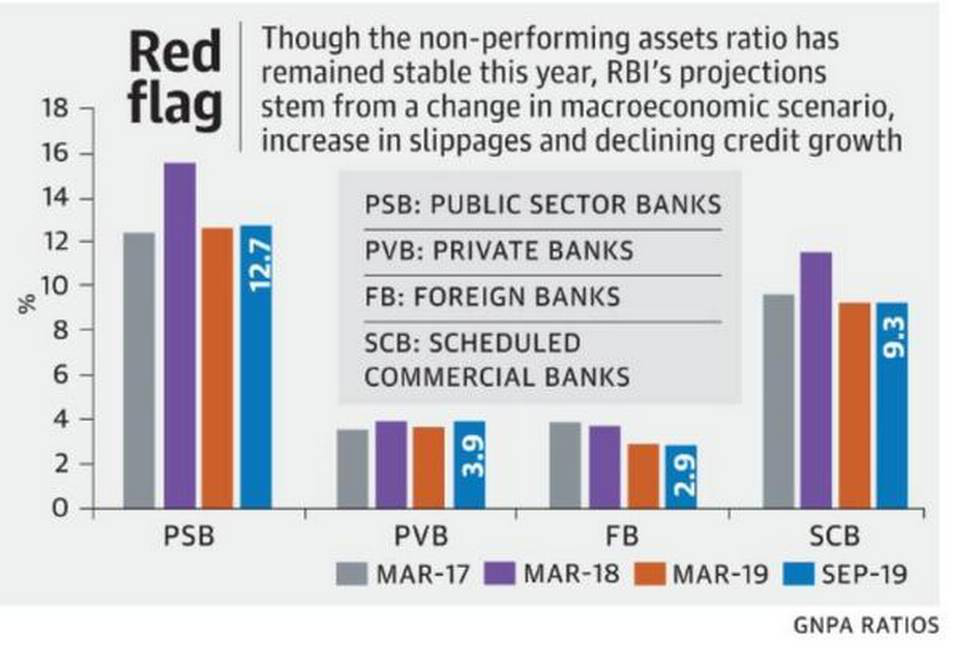
What could be the solution to this problem?
- Since the problem is more concentrated in PSBs, some have argued that public ownership must be the problem.
- Public ownership of banks, according to them, is beset with corruption and incompetence (reflected in poor appraisal of credit risk). The solution, therefore, is to privatise the PSBs, at least the weaker ones.
- However, there are problems with this idea of privatising PSBs.
- First, there are wide variations within each ownership category (within Indian banks).
- In 2018, the State Bank of India’s (SBI’s) gross NPA/gross advances ratio was 10.9%. This was not much higher than that of the second largest private bank, ICICI Bank, 9.9%.
- The ratio at a foreign bank, Standard Chartered Bank, 11.7%, was higher than that of SBI.
- Moreover, private and foreign banks were part of consortia that are now exposed to some of the largest NPAs. Therefore the explanation lies elsewhere.
- A brief look at the state of PSBs show that they are not in as bad a shape as many make them out to be.
- For example, PSBs had a higher exposure to the five most affected sectors — mining, iron and steel, textiles, infrastructure and aviation.
- These sectors accounted for 29% of advances and 53% of stressed advances at PSBs in December 2014. For private sector banks, the comparable figures were 13.9% and 34.1%.
- Rough calculations show that PSBs accounted for 86% of advances in these five sectors. (By an interesting coincidence, this number is exactly the same as the PSBs’ share in total NPAs)
- Wholesale privatisation of PSBs is thus not the answer to such a complex problem.
- We need a broad set of actions, some immediate and others over the medium-term and aimed at preventing the recurrence of such crises.
Way Forward:
- Banks have to accept losses on loans.
- They should be able to do so without any fear of harassment by the investigative agencies.
- The Indian Banks Association has set up a six-member panel to oversee resolution plans of lead lenders. To expedite resolution, more such panels may be required.
- An alternative is to set up a Loan Resolution Authority, if necessary through an Act of Parliament.
- Also, the government must infuse at one go whatever additional capital is needed to recapitalise banks — providing such capital in multiple instalments is not helpful.
A COMPLETE OVERHAUL OF INDIAN RAILWAYS
28, Dec 2019

Why in News?
- India has the fourth largest railway network in the world. It has come a long way since 1950-51 in terms of number of trains and quantum of traffic carried. However, it has been highlighted that Indian Railways may end up as burden on the national economy due to the number of issues.
- For instance, according to the recent CAG report, the operating ratio of Railways has increased to 98.4%, which is considered to be the highest in the last 10 years.
- In this regard, let us discuss in detail about the various problems with the Indian Railways and what can be done in order to improve its performance.
Existing Problems with the Indian Railways:
1. Decline in share of Freight Traffic: The modal share of railways in the transportation of surface freight has declined from 86.2 per cent in 1950-51 to 33 per cent in 2015. This decrease is on account of shortfall in carrying capacity and lack of price competitiveness. The Indian Railways has kept the passenger fares at lower value while it has increased the freight charges to compensate for this loss. Hence, the cross-subsidization of low passenger fares by artificially high freight rates has led to shift in favour of road transport, for both freight as well as short distance passenger traffic.
2. Under- Investment: The expenditure on the railways as a percentage of transport expenditure declined from 56 per cent in 1985-90 to 30 per cent in 2007- 12. The under-investment in the sector has crippled operations and Hampered Capacity Augmentation.
3. Organizational structure: Delays in decision making, inadequate market orientation lead to slow turnover times and delays in the implementation of railways projects. For instance, introduction of new trains, provision of halts and establishment of new projects are taken on the basis of political considerations rather than commercial considerations.
4. Internal generation of resources: The lower relative cost of transporting freight by road has led to a decline in the share of the railways. Low and static prices for the passenger segment have also contributed to low internal generation of resources.
5. Safety and poor quality of service delivery: There have been a number of accidents and safety issues in the recent years. Poor cleanliness of trains and stations, delays in train departures/arrivals, quality of food and difficulties in booking tickets are key issues.
6. Higher Operating Cost: According to CAG’s Report, the operating cost of Indian railways has increased to 98.4% which means that Indian Railways is spending around Rs 98 to earn Rs 100.
The higher operating cost of the Indian railways is on account of higher expenditure due to salaries and pensions of the Railway personnel. The higher operating cost has in turn reduced the capability of the Indian railways to undertake capital investments to improve the railway network within India.
Few Recommendations to Address the Problem:
- The Bibek Debroy committeeon Railway Modernisation and Anil Kakodkar Committee on improving railway safety have given a number of recommendations to improve the performance and safety of Indian railways. Some of these recommendations are:
1. Rationalize fare structures and subsidies: There is a need to rationalise the passenger fares and freight charges by ending the cross-subsidisation model presently followed by railways. Freight tariffs should be competitive with the cost of road transportation so that there is increase in the modal share of Railways.
2. Independent Regulator for Railways: There is a need to set up an Independent Railways Regulatory Authority. Such an authority would not determine the tariff, but it will monitor whether the tariff is market determined and competitive. It will also bring in specialised and technical expertise which is needed to manage the Indian railways.
3. Focus on Core Activities: Apart from its core function of running trains, Railways also engages in non-core activities such as running schools, hospitals and a police force. To enable to perform its core-function effectively, railways would have to reduce costs on these non-core activities that are non-remunerative in nature, and instead improve the efficiency of running trains by greater resource allocation to this function. Non-core activities can be outsourced to Private Entities.
4. Accounting Reforms: The current accounting system does not provide details of the cost of various activities and services, such as introduction of new trains and scheduling of stops. It neither tracks assets nor assesses liabilities. Consequently, it becomes difficult to compute the costs and benefits of any project or activity. Hence, in this regard, there is a need to adopt accounting reforms to track these details. This will enable us to understand how efficiently the Indian railways is managing its finances.
5. Financing of Projects: The Finance Minister has recently stated that Indian railways would need an investment of around Rs 50 lakh crores between 2018 and 2030. However, the financial status of the Indian Railways is at ‘precarious’ situation which has a direct bearing on the modernization, upgradation of technology, replacement of the old assets and safety aspects of railways. Hence, in this regard, there is a need to improve the expenditure management of Indian railways and improve the internal revenue generation. For instance, the Railways can lease huge amount of land that it holds to the private sector for certain duration of time and earn revenue. Similarly, railways can enter into PPP agreements for the development of stations.
6. Better utilization of existing infrastructure to address congestion: There is a need to prioritize ongoing projects to improve capacity utilization. Timely completion of these projects will generate more revenue.At the same time, we need to maintain and upgrade the existing network to ensure that supply keeps up with demand.
7. Safety of Railways: The Kakodkar committee had recommended for an investment of Rs 1 lakh crores over a period of 5 years to improve the safety of Indian railways. It had recommended the creation of a statutory Railway Safety Authority with enough powers to have a safety oversight on the operational mode of Railways.
Proposed Organizational Restructuring:
1. Indian Railway Management Service (IRMS):
- The Union Cabinet approved an organisational restructuring of the Indian Railways, including the merger of eight Group A services into a central service called the Indian Railway Management Service (IRMS), which is expected to end departmentalism, promote smooth working and expedite decision-making.
2. Changes in the Railway Board:
- Currently, the board comprises eight members, each representing their service, with the chairman being the first among equals. The structure has remained unchanged since 1905.
- The Board will now consist of five members– Chairman, along with four members responsible for infrastructure, operations and business development, rolling stock and finance. There will also be a DG (HR) under the Chairman.
- In addition, the board will have independent members, who will be experts in fieldssuch as finance, industry and management, much like independent directors on corporate boards.
- The chairman will have the CEO tag attachedand will be the final authority on all Issues.
ATAL BHUJAL YOJANA
27, Dec 2019
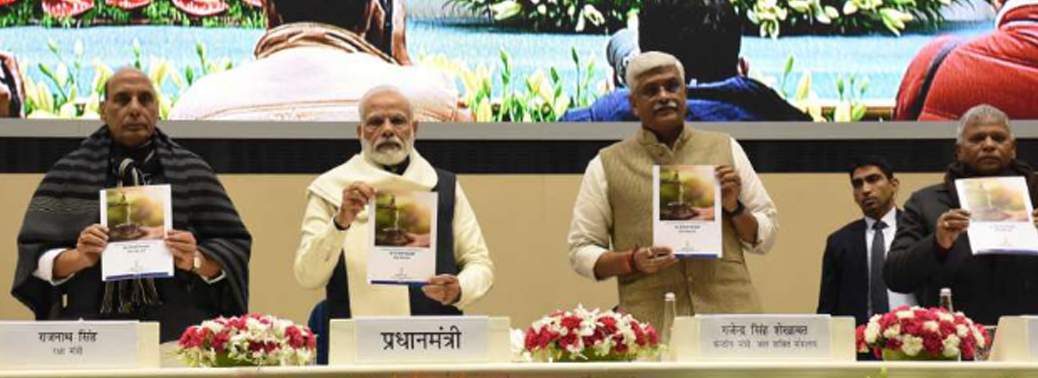
Why in News?
- Prime Minister Narendra Modi launched the Atal Bhujal Yojana to strengthen the institutional framework for participatory groundwater management and bringing about behavioural changes at the community level for sustainable Groundwater Resource Management in seven States.
Highlights:
- The scheme will be implemented in about 8,350 gram panchayats in 78 districts of Gujarat, Haryana, Karnataka, Madhya Pradesh, Maharashtra, Rajasthan and Uttar Pradesh.
- Of the total outlay of ₹6,000 crore to be provided from 2020-21 to 2024-25, 50% will be in the form of World Bank loan to be repaid by the Central government.
- The remaining part will be made available via Central assistance from regular budgetary support.
- The entire World Bank’s loan component and the Central assistance will be passed on to the States as grants.
- The Prime Minister said the scheme, or the guidelines related to the Jal Jeevan Mission, were big steps in proving the resolve to deliver water to every household in the country by 2024.
- He said the country had to prepare itself for dealing with every situation of water crisis, for which the government had been working at five levels.
- Modi said a comprehensive and holistic approach had been adopted with the setting up of the Jal Shakti Ministry, which this monsoon made extensive efforts for water conservation.
- The Jal Jeevan Mission would work towards delivering piped water supply to every house and Atal Bhujal scheme would pay special attention to those areas where the groundwater was very low.
- To incentivise gram panchayats, the Prime Minister said those with better performance would be given more allocation under the scheme.
- He said both the Central and State governments would spend ₹3.5 lakh crore on water-related schemes in the next five years.
Background:
- Over-exploitation of groundwater resources in India has been of great concern due to its impact on water availability and as well as on the environment.
- A recent report of NITI Aayog on groundwater level says 21 Indian cities including Delhi, Bengaluru, Chennai, and Hyderabad – will run out of groundwater by 2020.
- It also says that 40 percent of India’s population will have no access to drinking water by 2030.
- So in order to promote conservation of groundwater resources and their sustainable usage, the government has been working on various strategies.
“TREND AND PROGRESS OF BANKING IN INDIA 2018-19”
27, Dec 2019
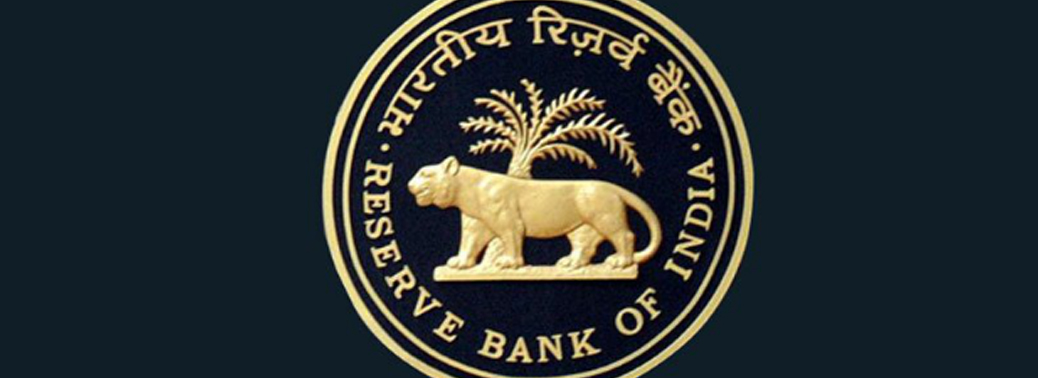
Why in News?
- The RBI has recently released “Trend and Progress of Banking in India 2018-19“. This Report presents the performance of the banking sector during 2018-19 and 2019-20 so far.
- Before dwelling into the report, let us have a brief look into the key terminologies used in the report for better understanding.
Basic Terminologies:
1.Non-Performing assets (NPA):
- The assets of the banks which don’t perform (that is – don’t bring any return) are called Non Performing Assets (NPA) or bad loans.
- According to RBI, terms loans on which interest or instalment of principal remain overdue for a period of more than 90 days from the end of a particular quarter is called a Non-performing Asset.
Depending upon the due period, the NPAs are categorized as under:
- Sub-Standard Assets: > 90 days and less than 1 year
- Doubtful Assets: greater than 1 year
- Lost Assets: loss has been identified by the bank or RBI but the amount has not been written off wholly.
2.Gross and Net NPA: Gross NPA refers to the total NPAs of the banks. The Net NPA is calculated as Gross NPA -Provisioning Amount.
3.Provisioning Coverage Ratio (PCR):
- Under the RBI’s provisioning norms, the banks are required to set aside certain percentage of their profits in order to cover risk arising from NPAs.
- It is referred to as “Provisioning Coverage ratio” (PCR). It is defined in terms of percentage of loan amount and depends upon the asset quality. As the asset quality deteriorates, the PCR increases.
The PCR for different categories of assets is as shown below:
- Standard Assets (No Default) : 0.40%
- Sub-standard Assets ( > 90 days and less than 1 year) : 15%
- Doubtful Assets (greater than 1 year): 25%-40%
- Loss Assets (Identified by Bank or RBI) : 100%
4.Special Mention Accounts (SMA):
- Special Mention Account (SMA) Category has been introduced by the RBI in order to identify the incipient stress in the assets of the banks and NBFCs.
- These are the accounts that have not-yet turned NPAs (default on the loan for more than 90 days), but rather these accounts can potentially become NPAs in future if no suitable action is action.
- The SMA has the various sub-categories as shown below:
- SMA-0: Principal or interest payment not overdue for more than 30 days but account showing signs of incipient stress
- SMA-1: Principal or interest payment overdue between 31-60 days
- SMA-2: Principal or interest payment overdue between 61-90 days
- If the Principal or interest payment is overdue for more than 90 days, then the loan is categorized as NPA.
5. Leverage Ratio (LR):
- The Basel Committee on Banking Supervision (BCBS) introduced Leverage ratio (LR) in the 2010 Basel III package of reforms. The Formula for the Leverage Ratio is (Tier 1 Capital/ Total Consolidated Assets) ×100 where Tier 1 capital represents a bank’s equity.
- It is to be noted that the Tier 1 capital adequacy ratio (CAR) is the ratio of a bank’s core tier 1 capital to its total risk-weighted assets. On the other hand, leverage ratio is a measure of the bank’s core capital to its total assets.
- Thus, the Leverage ratio uses tier 1 capital to judge how leveraged a bank is in relation to its consolidated assets whereas the tier 1 capital adequacy ratio measures the bank’s core capital against its risk-weighted assets.
6.Liquidity Coverage Ratio (LCR):
- A failure to adequately monitor and control liquidity risk led to the Great Financial Crisis in 2008. To improve the banks’ short-term resilience to liquidity shocks, the Basel Committee on Banking Supervision (BCBS) introduced the LCR as part of the Basel III post-crisis reforms.
- The LCR is designed to ensure that banks hold a sufficient reserve of high-quality liquid assets (HQLA) to allow them to survive a period of significant liquidity stress lasting 30 calendar days.
- HQLA are cash or assets that can be converted into cash quickly through sales (or by being pledged as collateral) with no significant loss of value.

- Total net cash outflows are defined as the total expected cash outflows minus the total expected cash inflows arising in the stress scenario.
Now we can dive into the Key Highlights of the Report.
Health of the Banking Sector: Important Highlights:
1.Decline in Gross and Net NPA:
- For the first time in the last 7 years, the Gross NPAs of the Scheduled Banks has declined to 9.1% by the end of September 2019. Similarly, the net NPAs has declined to 3.7% in September 2019. The decrease in the Gross NPAs and Net NPAs can be attributed to success of the Insolvency and Bankruptcy Code (IBC).
2.Concentration of NPAs:
- Most of the NPAs are concentrated in the larger borrower accounts (exposure of Rs 5 crore or more) which account for almost 82% of the GNPAs. The report has highlighted that there has been increase in stress of these accounts and hence it may be difficult to reduce NPAs in future.
3.Decline in Special Mention Accounts (SMA): In 2018-19, scheduled Banks recorded decline in all the special mention accounts (SMA-0, SMA-1 and SMA2) which points to the broad-based improvement in asset quality. However, in the first half of 2019-20, there has been increase in the number of SMA accounts.
4.Provisioning Coverage Ratio (PCR): The provision coverage ratio (PCR) of all Scheduled Banks improved to 61 per cent by end of September 2019.
5.Leverage Ratio (LR): The leverage ratio of Scheduled Banks was at 6.6 per cent, above the prescription of 3 per cent by the Basel Committee on Banking Supervision (BCBS).
6.Banking Frauds: The Public sector Banks (PSBs) accounted for the bulk of the banking frauds reported in 2018-19 accounting for almost 55% of the total cases pending.
- The following table shows India’s position in the list of countries with emerging economies.
- The table shows India holding 3rdposition among the highest NPA holding economies.
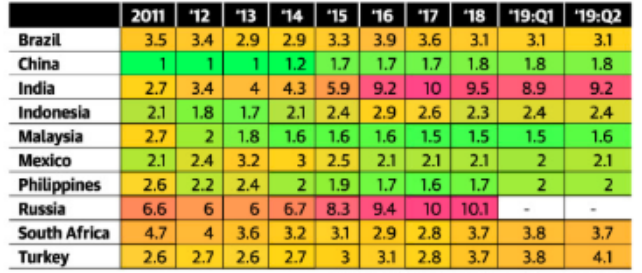
NO PARKING, NO CAR: NATIONAL GREET TRIBUNAL
26, Dec 2019
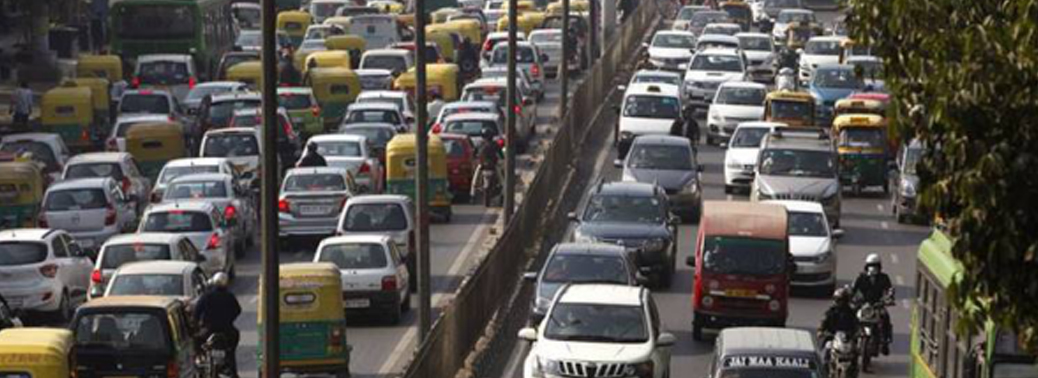
Context:
- The National Green Tribunal asked the authorities of 122 cities (which lack ambient air quality), including Delhi, to curtail registration of vehicles if they do not have adequate parking space. And instead, the NGT asked the authorities to, upgrade the Public Transport System.
What is the Issue?
- Two major factors that will hinder development in urban areas are
1.The lack of available public and Private Parking
2.The lack of a Robust Transit System.
- While many of the urban cities in India have been performing better in the latter, they lack proper private or public parking facilities. Improper parking leads to congestion, which results in air pollution.
- The NGT, concerned over the growing air pollution in India, had said, the environment protection measures require – the number of vehicles in any city must be limited to the available parking space.
The Tribunal’s Directions:
- Parking can be allowed only at designated places.
- Stringent measures must be taken by statutory authorities including the traffic police against any such parking.
- The transport departments of the states and the Union territories, must assess the available parking capacities in their cities and determine the number of vehicles that can be accommodated in these available parking space.
- In case, if the number of vehicles had exceeded the capacity, there should be an action plan for providing adequate additional parking space.
- The number of vehicles to be registered must be curtailed by using appropriate economic disincentives or otherwise, if the number of vehicles had exceeded the capacity.
- There should be an alternative provided to the citizens in the form of a public transport system.
- Concerned over the threat posed to limited natural resources due to their overuse, the NGT had directed for assessment of carrying capacityof 122 cities, including Delhi, where air quality does not meet the National Ambient Air Quality Standards.
What is Carrying Capacity?
- The concept of “carrying capacity” addresses the question as to how many people can be permitted into any area without the risk of degrading the environment In case of urban cities, the carrying capacity is largely determined by the level of economic activity carried out by the residents of the city.
The Issue of Parking Capacity:
- The NGT has directed the states and the Union territories, to assess the available parking capacities in their cities and determine the number of vehicles that can be accommodated in these available parking space.
1.Indian cities often lack in discipline of vehicle parking, leading to congestion, which results in pollution.
2.In Indian urban spaces, there is no clear regulation regarding parking spaces.
3.The safety of bicyclers and pedestrians is also affected due to unavailability of parking spaces.
4.Delhi’s parking woes – Though the public transport in Delhi is far better than other cities, the aim of last mile connectivity is still unachieved. The vehicles from the neighbouring states, also occupy the streets of Delhi leading to congestion.
Denying Registration of New Vehicles:
- The NGT has ruled that, the number of vehicles to be registered must be curtailed by using appropriate economic disincentives or otherwise, if the number of vehicles had exceeded the capacity.
1.This can hurt the movement of urban citizens, who rely on private mode of transportation.
2.This is only a temporary fix, as the issue of construction and demolition waste has not been addressed.
3.This would also affect the automobile sector, which is already reeling under pressure due to Unfavourable Market.
- Preventing the urban people from buying new vehicles, without improving the parking space, may lead to chaos in the urban areas.
Solution to the Parking Problems:
- Indian cities should move toward more organised parking management systems. This would not only reduce the congestion, but also increase the effectiveness of the Public Transport Systems.
- Increased Parking Fees for parking in public spaces
- Increase On-Street Parking facilities.
- On-Street Angled Parking – increases the space availability.
- Remote Parking and Shuttle Service – feeder facility.
- GPS Tracking on Buses – to make the public transport reliable.
- Parking Database – for better planning.
- Informal Markets for Off -Street Parking.
- Parking Spaces Sales and leasing.
- Financial Incentives for using public transit.
- Advanced Parking Management Systems.
- On Demand Parking Mobile Apps.
- Transferable Parking Rights.
- Temporary Parking Structures.
- By integrating the parking database with the urban transit systems, these cities can fill the gaps in their last mile connectivity. The tribunal had made it clear that the adverse impact on public health and constitutional mandate that right to clean air is a fundamental right cannot be violated for long.
Background:
1. National Clean Air Programme
- It was envisioned as a scheme to provide the States and the Centre with a framework to combat air pollution.
- The intention is to cut the concentration of PM10 and PM2.5 by at least 20% in the next five years, with 2017 as the base yearfor comparison.
- Which cities will Fall Under This?
- Based on the reports by WHO and the air quality data obtained, 122 citieshave been chosen as Non-Attainment Cities.
- Who All Will Participate?
- Industry and academia, Ministry of Road Transport and Highways, Ministry of Petroleum and Natural Gas, Ministry of New and Renewable Energy, Ministry of Heavy Industry, Ministry of Housing and Urban Affairs, Ministry of Agriculture, Ministry of Health, NITI Aayog, and Central Pollution Control Board.
2. National Air Quality Index (AQI):
- Based on ‘One Number- One Colour-One Description’.
- There are six AQI categories, namely Good, Satisfactory, Moderately polluted, Poor, Very Poor, and Severe.
- The index will measure eight major pollutants, namely, particulate matter (PM 10 and PM 2.5), nitrogen dioxide, sulphur dioxide, ozone, carbon monoxide, ammonia and lead.
- The simplicity of the NAQI also makes it accessible to the common man.
- The use of the colour coded system makes is easier for people to comprehend instantly.
3. Ambient Air Quality Standards in India
- Ambient air quality refers to the condition or quality of air surrounding us in the outdoors.
- National Ambient Air Quality Standards are the standards for ambient air quality set by the Central Pollution Control Board (CPCB) that is applicable nationwide.
- The CPCB has been conferred this power by the Air (Prevention and Control of Pollution) Act, 1981.
- Government of India has laid down National Ambient Air Quality standards
- (NAAQS)for twelve air pollutants, namely, PM10, PM2.5, Carbon Monoxide (CO), Sulphur Dioxide (SO2), Nitrogen Dioxide (NO2), Ammonia (NH3), ground level Ozone (O3), Lead, Arsenic, Nickel, Benzene and Benzo Pyrene.
SWADESH DARSHAN SCHEME
25, Dec 2019
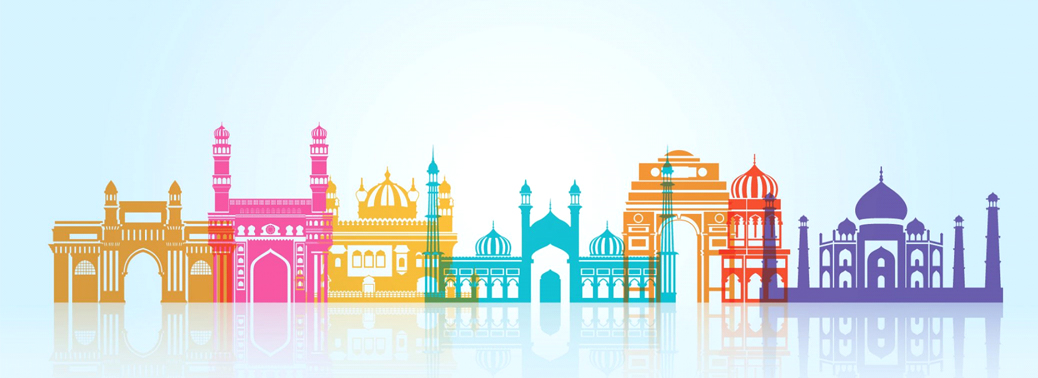
Why in News?
- The Cabinet approves the release of funds for 10 projects of the Swadesh Darshan Scheme sanctioned in 2018-19.
Swadesh Darshan Scheme:
- The scheme was launched by the Union Tourism Ministry with the objective to develop theme-based tourist circuits in India.
- These tourist circuits will be developed on the principles of high tourist value, competitiveness and sustainability in an integrated manner.
- The scheme was launched in 2015.
- It is a Central Sector Scheme (which means 100% sponsored by the GOI).
- Under the Scheme 15 circuits have been identified for development namely Himalayan Circuit, North East Circuit, Krishna Circuit, Buddhist Circuit and Coastal Circuit, Desert Circuit, Tribal Circuit, Eco Circuit, Wildlife Circuit, Rural Circuit, Spiritual Circuit, Ramayana Circuit, Heritage Circuit, Tirthankar Circuit and Sufi Circuit.
Objectives of the scheme:
- To position tourism as a major engine of economic growth and job creation.
- Develop circuits having tourist potential in a planned and prioritized manner.
- Promote cultural and heritage value of the country to generate livelihoods in the identified regions.
- Enhancing the tourist attractiveness in a sustainable manner by developing world-class infrastructure in the circuit/destinations.
- Follow community-based development and pro-poor tourism approach.
- Creating awareness among the local communities about the importance of tourism for them in terms of increased sources of income, improved living standards and overall development of the area.
- To create employment through the active involvement of local communities.
- Harness tourism potential for its effects on employment generation and economic development.
- To make full use of the potential and advantages in terms of available infrastructure, national culture and characteristic strong points of each and every region throughout the country by the development of theme-based circuits.
- Development of tourist facilitation services to enhance visitor experience/satisfaction.
Tourist Circuit:
- A Tourist Circuit is defined as a route having at least three major tourist destinations which are distinct and apart.
- Circuits should have well-defined entry and exit points. A tourist who enters should get motivated to visit most of the places identified in the circuit.
- A Circuit could be confined to a State or could be a regional circuit covering more than one State/Union Territory. These circuits may have one dominant theme and other sub-themes.
DO RBI’S INFLATION TARGETING REALLY PROMOTES INDIA’S GROWTH?
24, Dec 2019

Why in News?
- Indian Economy is being through a slowdown, and in this scenario, the efficacy of RBI’s Inflation targeting process has come under criticism, stating it as a reason behind this slowdown.
- So, the process of inflation targeting and the benefits accrued due to it and the possible reasons (apprehensions) behind various criticism and the way forward has been discussed in this article in brief.
What is Inflation Targeting?
- Inflation Targeting is a part of monetary policy framework wherein the Central Bank of a country focuses on maintaining the rate of Inflation within a targeted range.
- It is believed that increasing prices in an economy create uncertainties in decision making, adversely affecting savings and encouraging speculative investments (such as buying Gold). Inflation targeting brings in more predictability and transparency in deciding monetary policy.
- Inflation targeting was first adopted by New Zealandand subsequently, a large number of countries including India have been following Inflation Targeting as their core element of monetary policy.
- In case of India, the Inflation targeting was introduced through the Monetary Policy Framework Agreement signed between the RBI and Government in 2015. As per terms of the agreement, RBI’s primary objective would be to maintain price stability, while keeping in mind the objective of growth. The RBI is required to maintain rate of inflation of 4% with a deviation of 2% i.e. inflation has to be maintained between 2% to 6%.
Benefits of Inflation Targeting
1. Enhanced Transparency: The Inflation targeting explicitly states as to what would be the targeted rate of Inflation in an economy. Such explicitly mandated target brings in more clarity and predictability with respect to the rate of Inflation and monetary policy formulation.
2.Promote Growth: A high rate of inflation leads to decrease in the purchasing power of currency, reduces the savings and investment rate, increases the unemployment and leads to overall decrease in the GDP growth rate. Further, high rate of inflation is accompanied by higher levels of Fiscal Deficit and Current Account Deficit leading to an adverse impact on the macro-economic stability of the country. Hence, low and moderate level of inflation would incentivise the investors to undertake the investment in the economy leading to the promotion of higher growth and development.
3.Autonomy and Accountability of RBI: As per the monetary policy framework agreement, the RBI has been given complete autonomy in maintaining the rate of inflation within the mandated targets. If the RBI fails to maintain the Inflation within the target, then it would be required to submit in writing, the reasons for its failure.
Such a provision enables the RBI to enjoy autonomy and at the same time, it enables the Government to have enhanced accountability over the actions of the RBI.
4. Empirical Evidence: The Inflation targeting has been quite successful in some of the advanced economies such as UK, New Zealand etc. These advanced economies have been able to maintain moderate rate of inflation for a much longer time leading to increased macro-economic stability.
Problems and Challenges with Inflation Targeting
1. Disregards the Multi-faceted role of RBI: In a developing country like India, it is not practical for the central bank to focus exclusively on inflation without taking into account the larger development context. The RBI needs to balance between growth, price stability and financial stability.
2. No Clear link between Price Stability and Financial Stability: Prior to 2008, advanced economies were able to maintain moderate rate of inflation for a long term mainly due to adoption of Inflation Targeting. It was believed that Inflation targeting was responsible for overall macroeconomic stability of the country.
However, the 2008 Global Financial Crisis has clearly proved that price stability alone cannot lead to financial stability and the excessive focus of the Central banks on the price stability may lead to neglect of other crucial functions such as regulation leading to the economic crisis.
3. Empirical Evidence failing in India: The RBI has been able to maintain stable rate of Inflation within the mandated range since last 2-3 years. However, inspite of stable rate of Inflation, Indian economy is facing challenges on multiple fronts. The GDP growth rate has been reduced to 25 quarter low of 5% for the first quarter of financial year 2019-20.
The unemployment has increased to 45- year high of 6.1%. There has been contraction in the manufacturing activity as evident in declining IIP. The agriculture sector is staring at agrarian distress. All these clearly highlight that the Inflation targeting has failed to promote growth and development.
4.Poor Monetary Policy Transmission: The Inflation targeting is more suited to the developed economies since the monetary policy transmission in such economies is quite efficient. However, in case of India, the monetary policy transmission is quite inefficient and this can in turn reduce the effectiveness of Inflation Targeting.
5. Hinder GDP Growth: In order to contain Inflation, the RBI would be required to increase the rate of Interest by following the contractionary monetary policy. However, such a policy would lead to increase in the rate of interest on the loans leading to decrease in investment and consumption expenditure leading to decline in the GDP growth rates. For example, during 2013-2015, the higher interest rates in the country on account of higher rate of inflation had led to decrease in the GDP growth rates.
6. Does not address the Supply Side Inflation: The inflation in India may take place due to supply side bottlenecks such as increase in global crude oil prices, poor monsoon, floods etc. For instance, the recent increase in the prices of Tomato and Onions is mainly on account of supply side disruptions.
Under such circumstances, RBI would have limited role to play in easing the rate of inflation. Rather, the Government of India would be required to address these supply side disruptions in order to moderate the prices of such commodities.
Way Forward
- Post-Global Financial crisis, the dominant view around the world is that flexible inflation targeting, rather than pure inflation targeting is more efficient for monetary policy formulation.
- According to the Flexible inflation targeting, the major role of the Central Bank would depend on the prevailing rate of inflation in the country. If the rate of inflation is way off the target, the primary emphasis of the central Bank would be to bring the rate of inflation within an acceptable range.
- On the other hand, if the rate of inflation is within the range, the central Bank should focus on its other core objectives. Thus, it is being said that the Central banks should focus on flexible inflation targeting rather than pure inflation targeting. Here pure inflation targeting means RBI solely concentrating on the inflation targeting at the cost of other major functions of it.
- In this aspect, there is a need for greater debate around kind of Inflation targeting in India.
NATIONAL POPULATION REGISTER (NPR)
23, Dec 2019
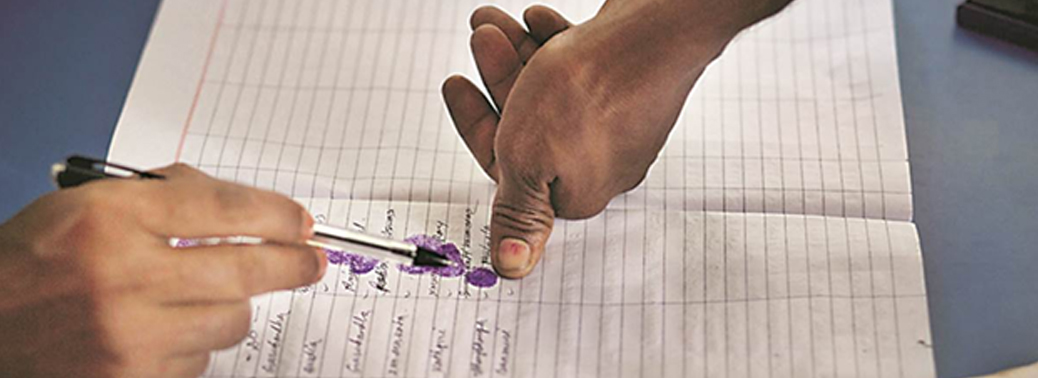
Why in News?
- The Kerala Government has recently decided to put on hold to all proceedings for updating the National Population Register (NPR).
About NPR:
- It is a Register of usual residents of the country.
- It is being prepared at the local (Village/sub-Town), sub-District, District, State and National level under provisions of the Citizenship Act 1955 and the Citizenship (Registration of Citizens and issue of National Identity Cards) Rules, 2003.
- It is mandatory for every usual resident of India to register in the NPR.
- A usual resident is defined for the purposes of NPR as a person who has resided in a local area for the past 6 months or more or a person who intends to reside in that area for the next 6 months or more.
- To create a comprehensive identity database of every usual resident in the country.
What does NPR consists of?
- The NPR database would contain demographic as well as biometric details.
- As per the provisions of the NPR, a resident identity card (RIC) will be issued to individuals over the age of 18.
- This will be a chip-embedded smart card containing the demographic and biometric attributes of each individual.
- The UID number will also be printed on the card.
What is the Controversy Around It?
- It comes in the backdrop of the NRC which excludes lakhs of people in Assam.
- It intends to collect a much larger amount of personal data on residents of India.
- There is yet no clarity on the mechanism for protection of this vast amount of data.
Significance of the Data:
- Every country must have a comprehensive identity database of its residents with relevant demographic details. It will help the government formulate its policies better and also aid national security.
- It will ease the life of those residing in India by cutting red tape. Not only will it help target government beneficiaries in a better way, but also further cut down paperwork and red tape in a similar manner that Aadhaar has done.
- With NPR data, residents will not have to furnish various proofs of age, address and other details in official work.
- It would also eliminate duplication in voter lists, Government Insists.
NATIONAL FOOD SECURITY MISSION (NFSM) – OILSEEDS AND OIL PALM
21, Dec 2019

Why in News?
- The Government is implementing the National Food Security Mission (NFSM) – Oilseeds and Oil Palm to increase production of oilseeds and domestic availability of Edible Oils.
NFSM – Oilseeds and Oil Palm:
- This scheme is under implementation in 29 States and has three subcomponents namely, Oilseeds, Oil palm and Tree Borne Oilseeds (TBOs).
- The main objective is to increase oilseeds production & productivity and area expansion under oil palm & TBOs cultivation.
Objectives of NFSM:
- Increasing the production of rice, wheat, pulses, coarse cereals (maize and barley) and nutri-cereals through area expansion and productivity enhancement in a sustainable manner in the identified districts of the country.
- Restoring soil fertility and productivity at the individual farm level.
- Enhancing farm level economy (i.e. farm profits) to restore confidence amongst the Farmers.
Oilseeds Agriculture in India:
- India is one of the major oilseeds grower and importer of edible oils.
- India’s vegetable oil economy is the world’s fourth-largest after USA, China & Brazil.
- Oilseeds account for 13% of the Gross Cropped Area, 3% of the Gross National Product and 10% value of all agricultural commodities.
- The diverse agro-ecological conditions in the country are favourable for growing 9 annual oilseed crops, which include 7 edible oilseeds (groundnut, rapeseed & mustard, soybean, sunflower, sesame, safflower and niger) and two non-edible oilseeds (castor and linseed).
- Oilseeds cultivation is undertaken across the country in about 27 million hectares mainly on marginal lands, of which 72% is confined to rain-fed farming.
- During the last few years, the domestic consumption of edible oils has increased substantially and has touched the level of 18.90 million tonnes in 2011-12 and is likely to increase further.
- A substantial portion of our requirement of edible oil is met through import of palm oil from Indonesia and Malaysia.
OPERATION TWIST
21, Dec 2019
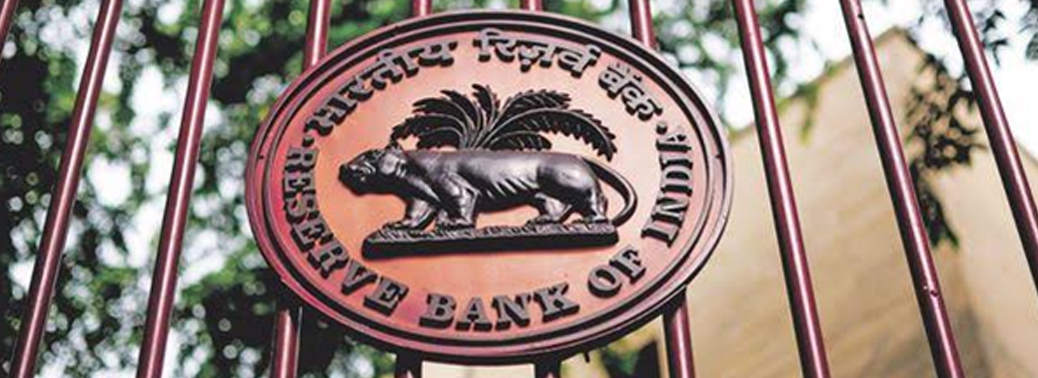
Why in News?
- Recently, RBI has planned to conduct “Operation Twist”.
About Operation Twist:
- Operation Twist is actually a move that is used by U.S Federal Reserve in past.
- The central bank uses the proceeds from the sale of short-term bonds to buy long term government bonds, leading to easing of interest rates on the long-term bonds.
- It involves simultaneous purchase and sale of government securities under Open Market Operations (OMO) for 10,000 crore each.
- It will purchase the longer (government bonds maturing in 2029), and simultaneously sell the shorter duration ones (short-term bonds maturing in 2020).
- It will be done through electronic platform.
About Open Market Operations:
- Open Market is known as unrestricted, free access market.
- It aims to regulate the money supply in the economy.
- It is used to adjust the liquidity conditions in the market.
- It is the sale and purchase of government securities and T-bills by RBI.
- During increase in liquidity condition then RBI sells G-secs to Open Market.
- During decrease in liquidity condition then RBI buys G-secs from Open Market.
Repurchase or buyback of G-secs:
- It is known as buying back the existing securities that are sold in Open Market.
- Sometimes RBI Prematurely buys G-secs.
- The Reasons are to:
- Reduce the cost of particular G-secs (High coupon G-secs),
- Reduce the number of outstanding G-secs and improve liquidity,
- Infuse liquidity in the system
Government Securities (G-Secs):
- It is a Tradeable Instrument that is issued by the central Government/ state governments.
- It is also called as risk-free gilt-edged instruments. It has two types, short term bonds and long-term bonds.
- Short term bondsare also known as Treasury Bill. Its maturity period is less than 1 year.
- Long Term Bondsare also known as Government Bonds or Dated Securities.
- Central Government issues both Government bonds and Dated Securities.
- In case of State Government either Government bonds or Dated Securities through RBI. It is called as State Development Loan. Its maturity period is greater than or equal to 1 year.
- G-sec is issued through auctions conducted by RBI, by an electronic platform called
E-Kuber. It is the Core banking Solution platform of RBI.
- RBI issues Indicative auction calendar, which contains details of calendar. It also contains information regarding amount of borrowing, maturity time period and time of auction.
SILVER LINE RAILWAY PROJECT
20, Dec 2019
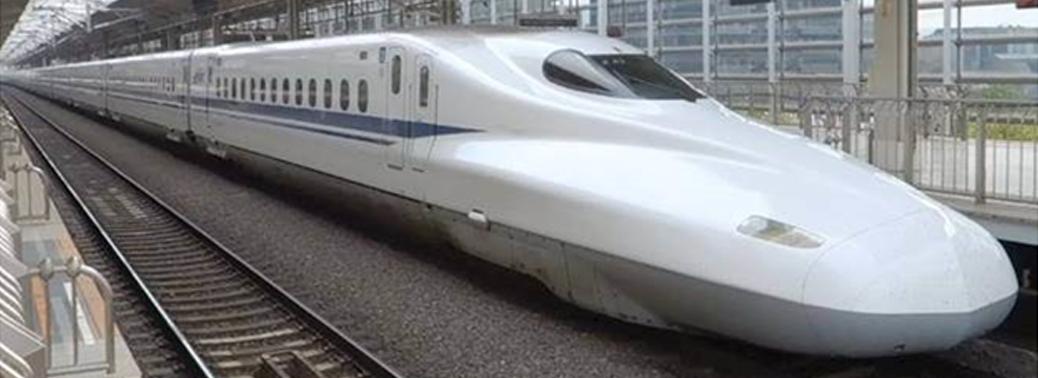
Why in News?
The Ministry of Railways granted in-principle approval for the ‘Silver Line’ project, a proposal of the Kerala government that involves laying of semi high-speed trains between the two corners of the state of Kerala.
The Silver Line project:
- The Silver Line project aims to connect major districts and towns with semi high-speed trains that will run on their own tracks.
- The 532-km corridor is projected to be built at a cost of Rs 56,443 crore. Trains would complete the journey at four hours instead of 12, with a maximum speed of 200 km/h.
- The corridor will be built away from the existing line between Thiruvananthapuram and Thrissur.
- The semi high-speed trains will traverse through 11 of the state’s 14 districts, Alappuzha, Wayanad and Idukki being the exceptions.
- There are also plans to connect the corridor with the international airports at Kochi and Thiruvananthapuram. The project is scheduled to be commissioned by 2024.

Significance:
- Kerala’s road networks are clogged and experience dense traffic during peak hours.
- According to a data, less than 10% of the state’s roads handle nearly 80% of the traffic.
- This also gives rise to accidents and casualties; in 2018, Kerala recorded 4,259 deaths and 31,687 grievous injuries.
- Experts have been demanding faster transportation options including railways and waterways
- The current railway network is congested with a large number of trains, level crossings and sharp curves.
- The project will result in direct and indirect employment opportunities for 50,000 people, and the project once completed would create direct employment for at least 11,000 people.
Implementation:
- The Kerala Rail Development Corporation (K-Rail), a joint venture between the Ministry of Railways and the Kerala government to execute projects on a cost-sharing basis, will be the nodal agency.
- The government is believed to be looking at external funding agencies.
- An initial investment is likely to be made by K-Rail for acquiring land. A Detailed Project Report (DPR) will be commissioned soon.
ONE NATION ONE RATION CARD SCHEME
20, Dec 2019
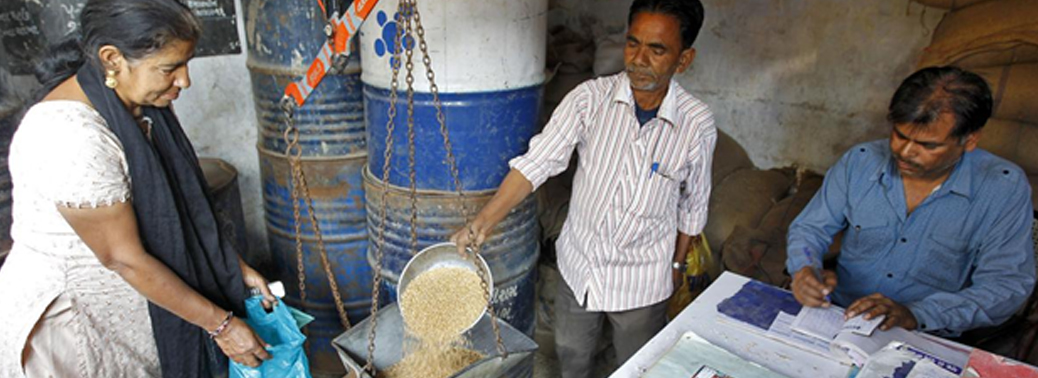
Why in News?
- The Centre has designed a standard format for ration cards as it moves ahead with ‘one nation, one ration card’ initiative and has asked State governments to follow the pattern while issuing fresh Ration Cards.
About the Ration Card and Ration Shop:
- A ration cardis issued to the head of the family, depending on the number of members in a family and the financial status of the applicant.
- It is used by households to get essential food grains at subsidised prices from designated ration shops (also called fair price shops) under the Targeted Public Distribution System (TPDS).
- Over the years, different types of ration cards were issued depending on the level of deprivation. Later, in 2013, when the National Food Security Billwas passed, different ration cards were compressed to just two — priority and Antyodaya (for the poorest).
- The responsibility of identifying eligible families and issuing ration cards to them rests with the state/UT government.
- Ration shopscan be privately owned or owned by cooperative societies or by the government. Ownership licenses are issued by the concerned state government.
- Presently, commodities including wheat, sugar, rice and kerosene are being allocated as part of the (TPDS). State governments have the discretion to provide additional commodities.
About the Scheme:
- Since Ration Cards are issued by State Governments, this implied that beneficiaries could procure food grains only from the designated ration shops within the concerned state.
- If a beneficiary were to shift to another state, he/she would need to apply for a new ration card in the second state. There were other complications.
- For instance, after marriage, a woman needed to get her name removed from the ration card issued to her parents, and get it added to the ration card issued to her husband’s family.
- The ONORC schemeattempts to address this gap in TPDS delivery. Essentially, the scheme has been launched keeping in mind the internal migration of our country, since people keep moving to different states in search of better job opportunities and higher standards of living.
- As per Census 2011, 4.1 crore people were inter-state migrants and 1.4 crore people migrated (inter and intra-state) for employment.
- With the ONORC scheme being implemented, the beneficiary can buy food grains from ration shops located in any of the states.
- Currently, the central government’s ambitious initiative is being implemented on a pilot basis in a cluster of six States. The government hopes to implement the scheme across India by June 1, 2020.
Benefits of the Proposed Scheme:
- According to Census 2011, there are more than 45 crore internal migrants in India, of whom more than half have not completed primary education, while 80% have not completed secondary education.
- Lower levels of education are linked to lower income, which would make a large percentage of these migrants eligible for NFSA benefits.
- Registering for ration cards at their new location is an arduous process, especially if some members of the household still remain in their original home.
- Apart from this, there are short-term migrants, often working in cities, but not moving there permanently.
- Women who change locations after marriage also find it difficult to start accessing ration benefits using a new household’s card.
- To curb corruption and improve access and service quality by Removing Monopolies.
Drawbacks of the Scheme:
- Since the scheme is based on technology, the government may face some technical challenges during the implementation of the scheme.
- Few Regional Parties have expressed apprehensions on bearing the cost of additional ration cards. This is a matter which is to be settled between the states and the Government of India.
- One of the apprehensions mentioned by few states is the cost of additional food grain to be supplied to the migrant workers.
- However, the whole system is based on the entitlements mandated under the NFSA and this prevents the charges of additional cost. Beneficiaries will continue to pay the same issue prices that are fixed under the NFSA.
DOES INDIA UNDERGOES STAGFLATION?
19, Dec 2019
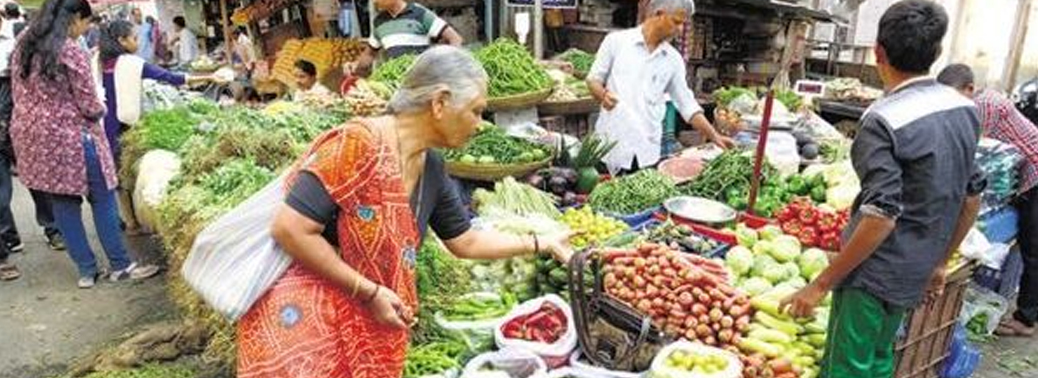
Why in News?
- The recent deceleration in the economic growth and sharply rising inflation, there is a growing murmur about India facing stagflation.
What is Stagflation?
- Simply put, Stagflation is a portmanteau of stagnant growth and rising inflation.
- Typically, inflation rises when the economy is growing fast. That’s because people are earning more and more money and are capable of paying higher prices for the same quantity of goods. When the economy stalls, inflation tends to dip as well – again because there is less money now chasing the same quantity of goods.
- Stagflation is said to happen when an economy faces stagnant growth as well as persistently high inflation. In other words, the worst of both worlds. That’s because with stalled economic growth, unemployment tends to rise and existing incomes do not rise fast enough and yet, people have to contend with rising inflation. So people find themselves pressurised from both sides as their purchasing power is reduced.
Why is everyone asking about Stagflation in India?
1. Deceleration in Growth:
- Over the past six quarters, economic growth in India has decelerated with every quarter. In the second quarter (July to September), for which the latest data is available, the GDP grew by just 4.5%.
- In the coming quarter (October to December), too, GDP growth is likely to stay at roughly the same level. For the full financial year, the GDP growth rate is expected to average around 5% – a six-year low.
2. Rise in Inflation:
- Yet, in October and November, retail inflation has soared. In fact, the October inflation was a 16-month high and the November inflation, at 5.54%, is at a three-year high.
- Inflation for the rest of the financial year is expected to stay above the RBI’s comfort level of 4%.
- So, with growth decelerating every quarter and now inflation rising up every month, there are growing murmurs of stagflation.
Is India really faces Stagflation?
- Although it appears so at the first glance, India is not yet facing stagflation. The three broad reasons behind it are:
- One, although it is true that we are not growing as fast as we have in the past or as fast as we could, India is still growing at 5% and is expected to grow faster in the coming years. India’s growth hasn’t yet stalled and declined; in other words, year on year, our GDP has grown in absolute number, not declined.
- Two, it is true that retail inflation has been quite high in the past few months, yet the reason for this spike is temporary because it has been caused by a spurt in agricultural commodities after some unseasonal rains. With better food management, food inflation is expected to come down. The core inflation – that is inflation without taking into account food and fuel – is still benign.
- Lastly, retail inflation has been well within the RBI’s target level of 4% for most of the year. A sudden spike of a few months, which is likely to flatten out in the next few months, it is still early days before one claims that India has stagflation.
Structural reforms to overcome the slowdown:
- Various Suggestions to overcome the existing slowdown, as per G20s Structural Reform Agenda are as:
- 1. Advancing Labour Market Reforms, Educational Attainment and skills:
- Fixed term contracts are expected to liberalise labour markets.
- Certain States such as Rajasthan have liberalized labour markets regulations.
- Reforms in the apprentice acts.
- Central Government has come up with 4 draft legislations for comprehensive reforms in the labour sector. Focus should be also on skill development and industrial partnership for skilling of population.
- 2. Promoting trade and investment openness:
- a. Focus on improvement of logistics sector
- b. Reforms of the customs procedure and Trade Facilitation.
- c. RCEP not signed by India and growing protection across the globe has shown that more needs to be done on this front.
- 3. Encouraging Innovation:
- a. India’s ranking has improved on the Global Innovation Index.
- b. Patent fillings in India has increased but not comparable to similar economies such as China, South Korea.
- c. Patent filing procedure eased.
- d. Focus on start-ups and Innovative Firms.
- India needs to increase R&D expenditure as a percentage of GDP.
- 4. Promoting Fiscal Reform:
- a. FRBM legislation has led to intergeneration equity. However, targets are not followed strictly.
- b. State governments have abided to FRBM targets.
- c. Removal of plan and non-plan classification of budget expenditure led to better results.
- d. Outcome: Output framework to make budget expenditure more Outcome Centric.
- Targets under the FRBM law should be strictly followed. Impact analysis of expenditures incurred should be improved.
- 5. Promoting Competition and an Enabling Environment:
- a. Privatisation of Air India, Bharat Petroleum etc.
- b. Strategic disinvestment of PSUs.
- c. FDI reforms for liberalization of entry of foreign firms into the country.
- d. Competition Commission of India has improved the competitive landscape in India.
- Enhanced competition can be introduced by further boosting FDI in the country. Domestic firms can be made more competitive by dismantling the loss making PSUs. Opening up of restricted sectors such as coal, railways, oil marketing, electricity distribution etc.
- 6. Improving Infrastructure
- a. Proposal to spend 1 Trillion dollar on the infrastructure in this budget.
- b. Focus on highway development: Bharatmala scheme, removal of blind spot, transition to Fastag, Transition to electric mobility planned.
- c. Investment in Railway sector: Dedicated Freight Corridor, High-speed Rail Networks.
- d.Sagarmala Scheme to boost the port sector.
- India has made good improvement in its infrastructure. However, more needs to be done as India is still a infrastructure deficit country. Focus should be on early completion of projects and availability of finance for ease terms for infrastructure.
- 7. Strengthening the Financial System:
- a. Capitalisation of Public Sector Banks
- b. Relaxation of banking licenses- licenses to payment banks, Small Finance banks.
- c. Insolvency and Bankruptcy code altered the creditor and debtor relations.
- d. FRBM caps on government spending
- e. Inflation targeting in monetary policy led to curbing inflation in the economy in a sustainable way.
- f. GST reforms led to widespread reforms in the indirect tax regime and led to economic integration of the country.
- Suggestions of the NK Singh Committee should be followed. FRBM legislation should be strictly enforced.
- 8. Enhancing Environmental Sustainability:
- a. EIA and forest clearance
- b. Increasing pollution in the urban areas, Threat of climate change.
- c. Loss of Biodiversity
- India is a signatory to Paris Climate Deal where India has committed to increasing share of renewable energy sources in the overall energy mix, intensification of forests, and reducing overall the carbon intensity of the economy.
- Targets under the Paris Climate deal and Sustainable development goals should be followed. Strict enforcement of EIA and forest clearance.
- 9. Governance Reforms
- a. Reforms of the civil service to make them more responsive, sensitive
- b. Making citizens more empowered by RTI act, Lokpal Act, Citizen charter etc.
- c. Corruption: Reforms in the Benami Property Act, Fugitive Economic Offenders Act, Prevention of Corruption act.
- d. Empowerment of local governments.
- This is the mother of all structural reform required in the economy which is expected to have most lasting impact. The suggestions of various committees such as ARC II, Punchii Commission etc should be followed. Necessity of political will.
COMPREHENSIVE LACTATION MANAGEMENT CENTRES
17, Dec 2019
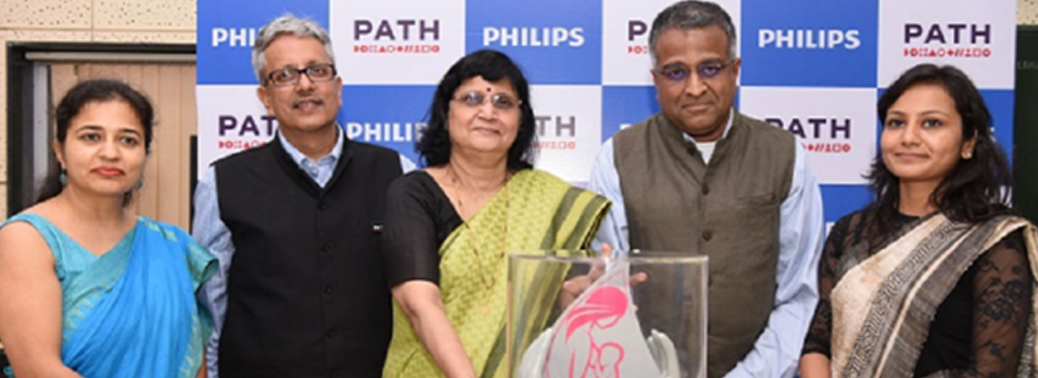
Why in News?
- Breast Milk Banks in India are known as Comprehensive Lactation Management Centres (CLMC) and Lactation Management Unit (LMU) depending on the level of health facilities where these units are established.
Comprehensive Lactation Management Centres (CLMC):
- CLMC works as per the National Guidelines on Establishment of Lactation Management Centres in Public Health Facilities.
- The foremost endeavour of the health care providers in a health centre is to conserve the natural act of breastfeeding.
- Lactation Management Centres are in no way intended to lessen the importance of mother’s own milk or the practice of breastfeeding.
- If mother’s own milk is insufficient or not available for any unavoidable reason, Donor Human Milk (DHM) is the next best alternative to bridge the gap.
- The Government has set a target of ensuring 70 per cent infants to have access to breast milk by the year 2025. Target will subsequently be increased to 100 per cent.
Significance:
- It is universally accepted that breast milk is the optimum exclusive source of nutrition for the first six months of life, and may remain part of the healthy infant diet for the first two years of life and beyond.
- Despite advances in infant formulas, human breast milk provides a bioactive matrix of benefits that cannot be replicated by any other source of nutrition.
- When the mother’s own milk is unavailable for the sick, hospitalized new born, pasteurized human donor breast milk should be made available as an alternative feeding choice followed by commercial formula.
- There is a limited supply of donor breast milk in India and it should be prioritized to sick, hospitalized neonates who are the most vulnerable and most likely to benefit from exclusive human milk feeding.
Milk Banks in India:
- Asia’s first milk bank was established in 1989 at Sion Hospital, Mumbai.
- In 2017, the first public milk bank, called the Vatsalya — Maatri Amrit Kosh, was established at Lady Hardinge Medical College.
- It was established in collaboration with the Norwegian government and the Oslo University as part of the Norway–India Partnership Initiative (NIPI).
MINISTRY OF SKILL DEVELOPMENT SKILLS BUILD PLATFORM IN COLLABORATION WITH IBM
16, Dec 2019
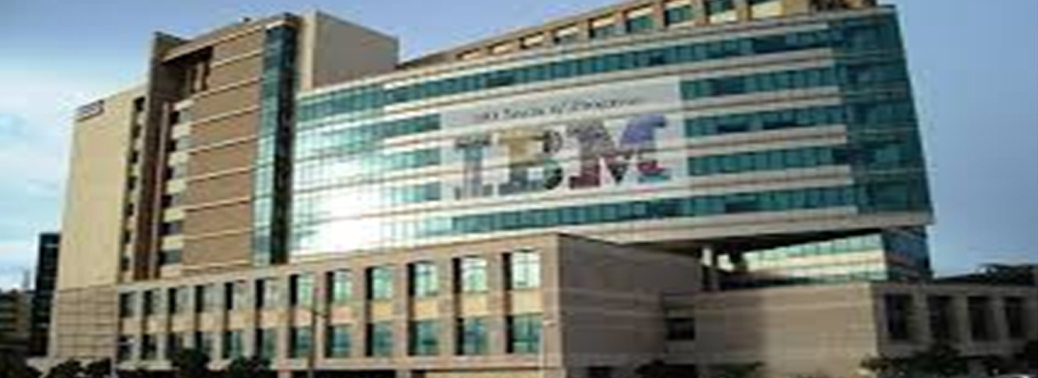
Why in News?
- India is the 4thcountry where Skills Build platform was launched in November 2019, in alliance with the Directorate General of Training (DGT), after being launched in UK, Germany and France.
SkillsBuild-Platform-2019:
- SkillsBuild offers digital learning content from IBM and other online coding teaching companies.
- A two-year advanced diploma in IT, networking and cloud computingwill be offered at the Industrial Training Institutes (ITIs) & National Skill Training Institutes (NSTIs).
- The platform will be extended to train ITI & NSTI facultyon building skills in Artificial Intelligence (AI).
Features:
- Provide a personal assessmentof the cognitive capabilities and personality via My Inner Genius to the students.
- Teach digital technologiesand professional skills such as resume-writing, problem solving and communication.
- Students will receive recommendationson role-based education for specific jobs.
- Will help develop the skills required to join the workforce in these “New Collar” roles, from the first-of-its kind ‘New Collar Curriculum’ for ITI launched in 2018 by IBM.

New-collar-jobs-2019:
- New collar jobs are occupations which focus more on a candidate’s skills during the hiring process, rather than his or her level of education.
- Although new collar jobs do not require a four-year degree, they often do require other types of vocational training and certifications. This are mostly found in the information technology (IT), manufacturing and healthcare industries.
DIVERSION OF LPG CYLINDERS FOR COMMERCIAL USE
13, Dec 2019
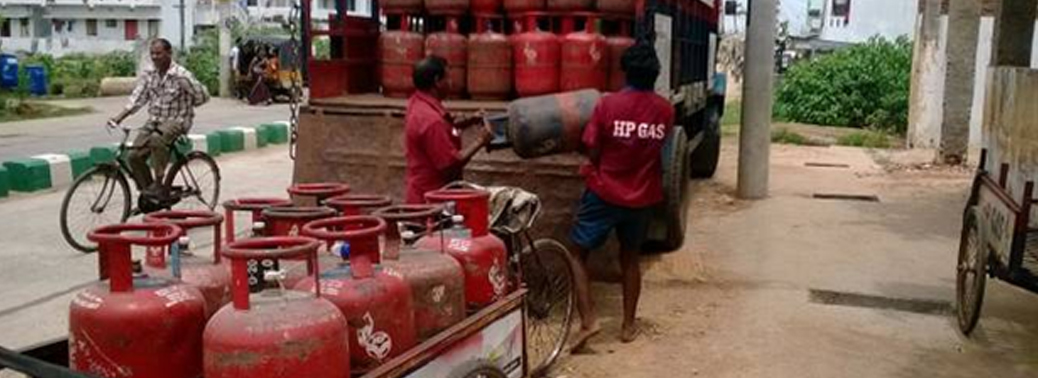
Why in News?
- The Comptroller and Auditor General (CAG), in its report on the Pradhan Mantri Ujjwala Yojana (PMUY), have highlighted the risk of diversion of domestic cylinders for commercial use.
About PMUY:
- It aims to provide LPG (liquefied petroleum gas)connections to poor households.
- Under the scheme, an adult woman member of a Below Poverty Line (BPL)family identified through the Socio-Economic Caste Census (SECC) is given a deposit-free LPG connection with financial assistance of Rs 1,600 per connection by the Centre.
- Eligible households will be identified in consultation with state governments and Union territories. The scheme is being implemented by the Ministry of Petroleum and Natural Gas. Under this scheme, initially 5 crore connections were to be provided to the people needing them. But now it has been extended to 8 crores.
- The scheme also provides interest-free loans to buy stove and refill by oil marketing companies.
- An initial outlay of Rs.8000 crore was sanctioned for the implementation of the scheme.The scheme is also expected to create employment to the tune of about a lakh.
- It will also boost the ‘Make in India’ programme for manufacturers of gas cylinders, stoves, gas hose and regulators. Only domestic manufacturers are engaged in this.
- It is also a business opportunity to the tune of a minimum of Rs.10000 crore.
What did the Report Say?
- The CAG said this level of consumption seemed improbable in view of the BPL status of such beneficiaries. Similarly, 96lakh beneficiaries consumed 3 to 41 refills in a month. Further, IOCL and Hindustan Petroleum Corporation Limited (HPCL) in 3.44 lakh instances issued 2 to 20 refills in a day to a PMUY beneficiary having single-bottle cylinder connection.
- As on 31March 2019, Oil Marketing Companies had issued 19 crore LPG connections, which is about 90% of the target to be achieved till March 2020.
- Audit noticed that out of 3.78 crore LPG connections, 60 crore (42%) connections were issued only on the basis of beneficiary Aadhaar which remained a deterrent in de- duplication.
- The CAG said that the laxity in identification of beneficiaries was noticed as 9,897 LPG connections were issued against Abridged Household List Temporary Identification Numbers (AHL TINs) where names of all family members and the beneficiary were blank in the Socio-Economic and Caste Census (SECC)-2011 list.
- Similarly, 4.10lakh connections were issued against AHL TINs where entire details of family except that of one member were blank in the 2011 list.
- Audit also observed that due to lack of input validation check in Indian Oil Corporation Limited (IOCL) software, 88lakh connections were released against AHL TIN of males.
- Data analysis also revealed that 8.59 lakh connections were released to beneficiaries who were minor as per the SECC-2011data, which was in violation of PMUY guidelines and LPG Control Order, 2000.
- It also exposed the mismatch in the name of 12.46 lakh beneficiaries between the PMUY database and SECC-2011 data.
Grievances to be Addressed:
- Lack of input validation check in the IOCL software allowed issue of 0.80 lakh connections to beneficiaries aged below 18 years.
- The audit also highlighted the delay of more than 365 days in the installation of 4.35 lakh connections against the stipulated time period of seven days.
- Adequate efforts were not made in distributing the small 5-kg cylinders for encouraging usage.
- Encouraging the sustained usage of LPG remains a big challenge as the annual average refill consumption of 93 crore PMUY consumers (who have completed more than one year as on March 31,2018) was only 3.66 refills as worked out by audit.
- For the 18crore PMUY beneficiaries, as on December 31, 2018, refill consumption declined to 3.21 refills per annum.
- The low consumption of refills by 92lakh loanee consumers (who had completed one year or more as on 31 December 2018) hindered recovery of the outstanding loan of ₹1,234.71 crore.
Immediate Requirements:
- The PMUY is a bold and much-needed initiative, but it should be recognised that this is just a first step.
- The real test of the PMUY and its successor programmes will be in how they translate the provision of connections to sustained use of LPG or other clean fuels such as electricity or biogas.
- Truly smokeless kitchens can be realized only if the government follows up with measures that go beyond connections to actual usage of LPG.
- This may require concerted efforts cutting across Ministries beyond petroleum and natural gas and including those of health, rural development and women and child welfare.

CABINET APPROVES AMENDMENT TO IBC CODE
13, Dec 2019

Why in News?
- The Union Cabinet has recently approved certain crucial amendments to the IBC code, 2016 through Insolvency and Bankruptcy (Second Amendment) Bill, 2019.
Background Information:
About Insolvency and Bankruptcy Code (IBC):
- Objective of IBC: Earlier, there were multiple overlapping laws and adjudicating forums dealing with financial failure and insolvency of companies and individuals in India. This led to undue delays in the recovery of the NPAs by the Banks.
- Hence, the IBC Code was introduced to consolidate all the existing laws related to Insolvency and Bankruptcy in India and to simplify the process of insolvency resolution.
- The Central government introduced the Insolvency and Bankruptcy Code (IBC) in 2016 to resolve claims involving insolvent companies. This was intended to tackle the bad loan problems that were affecting the banking system.
Need for New Amendments:
- Previously, some of the successful bidders of the stressed firms faced problems in taking over the stressed firm due to offences committed by the previous management/promoters of the stressed firms.
- Recent Example: JSW Steel had successfully bid for taking over Bhushan Power and Steel. However, the Enforcement Directorate filed a case against Bhushan Power and Steel’s former promoter Mr. Sanjay Singhal in connection with the money laundering case. Subsequently, the ED attached assets worth Rs 4,000 crores of the Bhushan Power and steel (BPSL). Such an attachment of the assets went against the interests of the successful bidder JSW Steel.
- Protection offered to Successful bidders through new amendment: In this regard, the new amendment to the IBC seeks to protect the successful bidders from the criminal proceedings against the offences committed by the previous promoters of the stressed firms. Going forward, the assets of the stressed firms bought by a successful bidder under the IBC would not be attached and hence would offer higher protection to the successful bidders.
Additional Info:
This is Regarding Previous Amendments passed to IBC:
1. Insolvency Proceedings against Real Estate Developers:
- Initially, when the IBC was passed by the Indian Parliament, it did not include Home-buyers as the creditors. This made it difficult for the home buyers to initiate cases against the real estate developers for the delay in the completion of the Housing projects.
- Subsequently, this flaw was addressed by including the home-buyers as financial creditors under the amendment made to the IBC. As per the amended provision, even a single home buyer having a claim of more than Rs 1 lakh can drag a real estate developer to the National Company law tribunal.
- However, the real estate developers have raised concerns that the some of the home-buyers are misusing such a provision and a large number of cases have been filed against them. This has in turn led to undue delay in the completion of the pending housing projects.
- The new amendment approved by the cabinet is aimed to address this misuse by the home buyers. As per the amendment proposed, a single home-buyer would not be able to invoke insolvency against the real estate developer.
Institutional Mechanism of IBC:
- Insolvency Professionals: A specialized cadre of licensed professionals would administer the resolution process, manage the assets of the debtor, and provide information for creditors to assist them in decision making.
- Insolvency Professional Agencies: These agencies conduct examinations to certify the insolvency professionals and enforce a code of conduct for their performance.
- Information Utilities: The creditors would report financial information of the debt owed to them by the debtor.
- Adjudicating Authorities: The proceedings of the resolution process would be adjudicated by the National Companies Law Tribunal (NCLT), for companies; and the Debt Recovery Tribunal (DRT), for individuals. The duties of the authorities will include approval to initiate the resolution process, appoint the insolvency professional, and approve the final decision of creditors.
- Committee of Creditors (CoC) :During the insolvency resolution process, a committee consisting of lenders would be constituted for taking decisions (by voting) on the resolution process. The CoC may either decide to restructure the debtor’s debt by preparing a resolution plan or liquidate the debtor’s assets. However, such a decision has to be approved by at least 66% of the votes in the committee of creditors. (Earlier, the voting threshold for the approval was 75%, but it was reduced to 66% through the IBC amendment act, 2019)
- Insolvency and Bankruptcy Board: The Board would regulate insolvency professionals, insolvency professional agencies and information utilities set up under the Code. The Board would consist of representatives of Reserve Bank of India, and the Ministries of Finance, Corporate Affairs and Law.
- Procedure to resolve Insolvency and Bankruptcy: The Code proposes two independent stages: Insolvency Resolution Process, during which lenders assess whether the debtor’s business is viable to continue and the options for its rescue and revival; and Liquidation (Sale of Assets), if the insolvency resolution process fails.
- 1. Insolvency Resolution Process (IRP): When a default occurs, the resolution process may be initiated either by the debtor or creditor before the adjudicating authority. The NCLT appoints an insolvency professional to administer the IRP. The Resolution Professional identifies the financial creditors and constitutes a Committee of Creditors (CoC). The CoC would prepare the resolution plan for the restructuring the loans of the defaulted borrower which may be in the form of extending the maturity period of the loan, reducing the rate of interest on loans etc. However, such a resolution plan has to be approved by at least 66% of the votes in the committee of creditors.
- 2 . Liquidation (Sale of Assets): If the Committee of Creditors fail to come up with a resolution plan within the time limit of 330 days, then the proceeds from the sale of the debtor’s assets are distributed in the following order of precedence: i) insolvency resolution costs, including the remuneration to the insolvency professional, ii) secured creditors, whose loans are backed by collateral, dues to workers, other employees, iii) unsecured creditors, iv) dues to government, v) priority shareholders and vi) equity shareholders.
PARTIAL CREDIT GUARANTEE SCHEME
13, Dec 2019
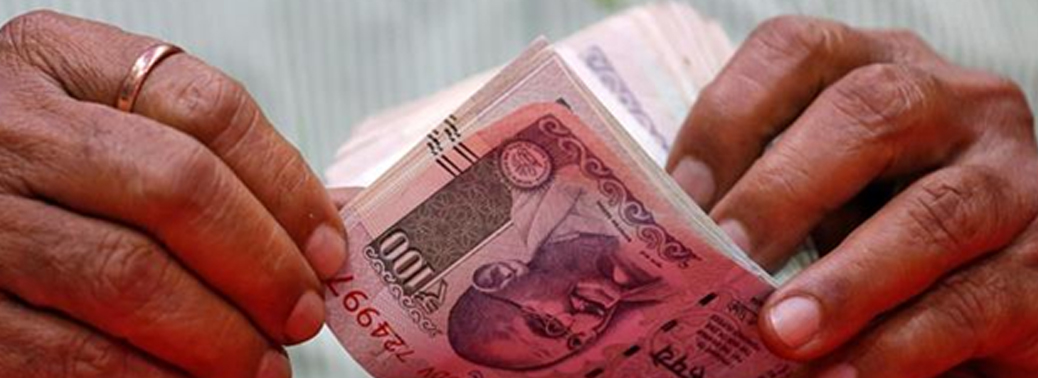
Why in News?
- The Union Cabinet has recently approved the Partial Credit Guarantee Scheme for the benefit of the banks and NBFCs.
Background Info:
- Over a period of time, the NBFC sector in India has emerged as major source of loans. However, the sector been facing liquidity crunch due to Asset-Liability Mismatch.
- The poor financial condition of the NBFCs has in turn adversely affected the credit creation in the Indian Economy.
- In this regard, the Union Budget 2019 had announced Partial Credit Guarantee Scheme. Now, the Union cabinet has decided to adopt certain modifications in the existing scheme.
About Partial Credit Guarantee Scheme:
- Under the Partial Credit Guarantee Scheme, the Public Sector Banks would purchase highly rated assets of the NBFCs and HFCs (Housing Finance Companies) in order to address the temporary liquidity crunch.
- Under this Scheme, the Government has agreed to provide 10% first loss guarantee to assets, amounting to total of ₹ 1 lakh crore.
- Here it is important to note that the limit of ₹ 1 lakh crore refers to the total amount of assets against which guarantee will be extended and not the total amount of guarantee. The maximum exposure that the Government will take under the Scheme is ₹ 10,000 crores (10% of ₹ 1 lakh crore).
- Such a move by the Government is expected to inject more liquidity into the economy so as to counter the present Economic Slowdown.
Modifications in the Scheme:
- Based upon suggestions received from various stakeholders and discussions held with them, the Union Cabinet has now decided to adopt the following modifications:
1.Inclusion of NBFCs in the SMA-0 Category
- Earlier, the Scheme did not cover the assets of NBFCs that had slipped into Special Mention account (SMA) category. Now, the Union Cabinet has decided to even include those assets that have slipped into SMA-0 Category.(But does not include SMA-1 and SMA-2 category assets).
2. Ratings of the Underlying Assets:
- Earlier, the Public Sector Banks were allowed to buy only those assets which were rated “AA” and above. However, as per the new modification, the Public Sector Banks are now allowed to buy those assets which are rated “BBB+” and above. Such an increase in the ambit of assets would enable the Public Sector Banks to buy more assets from the NBFCs and HFCs.
Benefits of the Scheme
- Provide Liquidity Support to the NBFCs and HFCs
- Improve the Credit Creation in the Economy.
- Protect the financial system from any adverse contagion effect that may arise due to failure of NBFCs and HFCs.
Additional Information:
About Special Mention Category Assets:
- It is to be noted that Special Mention Category has been introduced by the RBI in order to identify the incipient stress in the assets of the banks and NBFCs. These are the accounts that have not-yet turned NPAs , but rather these accounts can potentially become NPAs in future if no suitable action is action.
- The SMA has the various sub-categories as shown below:
- SMA-0:Principal or interest payment overdue for not more than 30 days
- SMA-1: Principal or interest payment overdue between 31-60 days
- SMA-2: Principal or interest payment overdue between 61-90 days
INFRASTRUCTURE INVESTMENT TRUST (INVIT)
13, Dec 2019
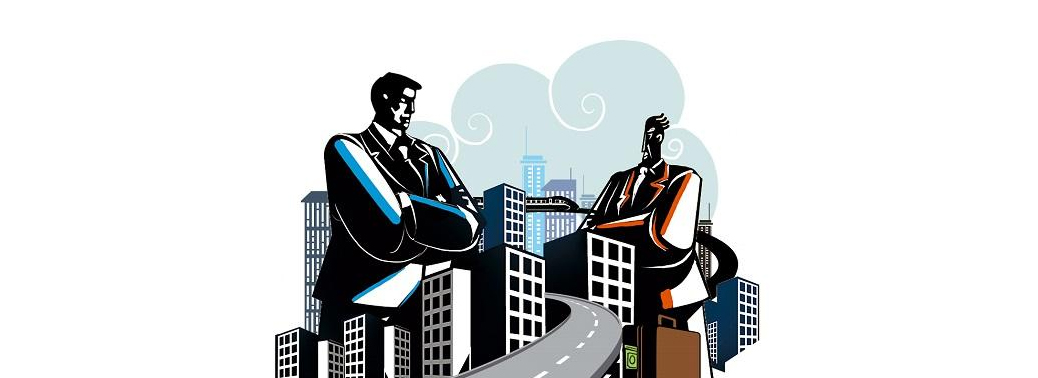
Why in News?
- Recently, Cabinet authorises NHAI to set up Infrastructure Investment Trust
About InvIT:
- It will be established as a Trust, named as ‘InvIT Trust’.
- It will be set up under Indian Trust Act, 1882 and Securities and Exchange Board of India (Infrastructure Investment Trusts) Regulations, 2014.
Objective:
- It will be formed with an objective of investment primarily in infrastructure projects as defined by Union Ministry of Finance and may hold assets either directly or through a Special Purpose Vehicles (SPV) or a holding.
- Retail domestic savings and corpus of special institutions such as mutual funds, Pension Fund Regulatory and Development Authority (PFRDA), among others, will be invested in infrastructure sector through InvIT.
- It would attract patient capital for about 20-30 years to Indian highway market, as investors are unwilling towards construction risk and are interested in investment in assets which provide long-term stable returns.It will enable the NHAI to monetize completed national highways that have a toll collection track record of at least one year and the NHAI reserves the right to levy toll on the identified highway.
About NHAI:
- The National Highways Authority of India was constituted by an act of Parliament, the National Highways Authority of India Act,1988.
- It is responsible for the development, maintenance and management of National Highways entrusted to it and for matters connected or incidental thereto.
- Given the magnitude of the Bharatmala, the government’s flagship highway development program, NHAI would need adequate funds to complete the projects within the prescribed Timelines.
MISSION FOR INTEGRATED DEVELOPMENT OF HORTICULTURE (MIDH)
11, Dec 2019

Why in News?
- Information about the MIDH was provided by the Union Minister of Agriculture and Farmers’ Welfare in the Lok Sabha.
MIDH:
- The MIDH is a centrally sponsored scheme for the holistic growth of the horticulture sector covering fruits, vegetables, root & tuber crops, mushrooms, spices, flowers, aromatic plants, coconut, cashew, cocoa and bamboo.
- Under MIDH, the Government of India contributes 60% of the total outlay for developmental programmes in all the states except states in the North East and the Himalayas. 40% share is contributed by State Governments. In the case of North Eastern and Himalayan States, GOI contributes 90%.
- MIDH also provides technical advice and administrative support to State Governments/State Horticulture Missions (SHMs) for the Saffron Mission and other horticulture-related activities like the Rashtriya Krishi Vikas Yojana (RKVY).
- The Mission was started in 2014.
Objectives of the MIDH:
- To promote the holistic growth of horticulture sector, including coconut through area-based regionally differentiated strategies which include research, technology promotion, extension, post-harvest management, processing and marketing in consonance with comparative advantage of each State/region and its diverse agri-climatic features.
- To encourage aggregation of farmers into farmer groups like FIGs/FPOs and FPCs to bring economy of scale and scope.
- To enhance horticulture production.
- To augment farmers’ income.
- To strengthen nutritional security.
- To improve productivity by way of quality germ-plasm, planting material and water use efficiency through micro-irrigation.
- To support skill development and create employment generation opportunities for the rural youth in horticulture and post-harvest management, especially in the cold chain sector.
MIDH Sub-Schemes:
- National Horticulture Mission (NHM)
- Horticulture Mission for North East & Himalayan States (HMNEH)
- National Horticulture Board (NHB)
- Coconut Development Board (CDB)
- Central Institute for Horticulture (CIH), Nagaland
Major interventions of MIDH:
- Setting up of nurseries, tissue culture units for production of quality seed and planting material.
- Area expansion i.e., the establishment of new orchards and gardens for fruits, vegetables, and flowers.
- Rejuvenation of unproductive, old, and senile orchards.
- Protected cultivation, i.e. poly-house, green-house, etc., to improve productivity & grow off-season high value vegetables and flowers.
- Organic farming and certification.
- Creation of water resources structures and watershed management.
- Bee-keeping for pollination.
- Horticulture mechanization.
- Creation of post-harvest management and marketing infrastructure.
PROTECTION OF PLANT VARIETIES AND FARMERS’ RIGHTS AUTHORITY AMENDS IT’S FAQ DOCUMENT
11, Dec 2019
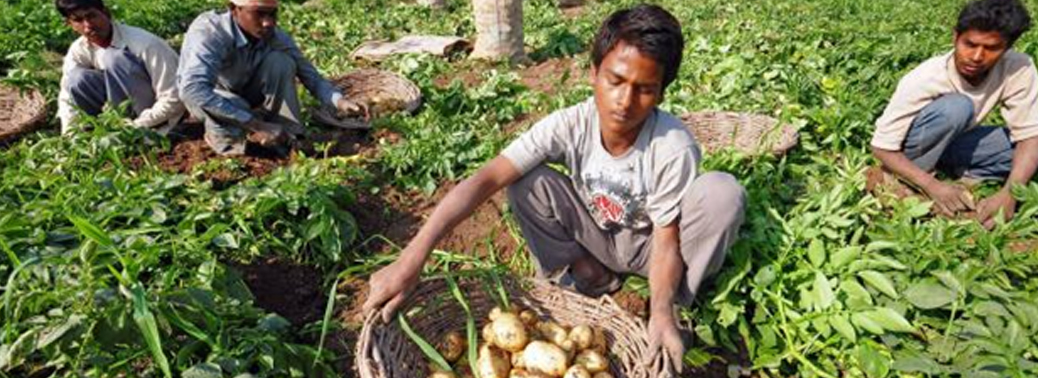
Why in News?
- The government has decided to set up an expert committee revise the FAQ document of the Protection of Plant Varieties and Farmers’ Rights Authority, which was quoted by the PepsiCo in the ongoing issue at the Authority.
Recent Issue:
- The ongoing case at the PPV&FRA revolves around PepsiCo’s FC5 variety of potatoes, which it grows through a collaborative farmer’s programme, wherein the company sells seeds to 12,000 farmers and has an exclusive contract to buy back their produce to make its chips.
- PepsiCo supplies the FC5 potato variety to a group of farmers who in turn sell their produce to the company at a fixed price.
- PepsiCo has exclusive rights on the variety by virtue of a Plant Variety Certificate granted under the Protection of Plant Varieties and Farmers’ Rights Act of 2001.
- PepsiCo had sued nine farmers for cultivating the FC5 potato variety without permission of PepsiCO.
- This variety of potatoes is grown exclusively for its popular Lay’s potato chips. PepsiCo has filed lawsuits for violating the company’s intellectual property rights on this variety of potato.
- The damages claimed are over one crore from some farmers.
- The farmers, on the other hand, have sought protection under Clause 39 of the same law which states that farmers are allowed “to save, use, sow, re-sow, exchange, share or sell… farm produce including seed of a variety protected under this Act” so long as they does not sell a “branded seed”.
Stand of PepsiCo:
PepsiCo has stated that:
- The Frequently Asked Questions or FAQ document of the Protection of Plant Varieties and Farmers Rights Authority (PPV&FRA), had claimed that “only small and marginal farmers involved in subsistence farming” are eligible to claim rights under the Protection of Plant Varieties and Farmers Rights (PPV&FR) Act, 2001.
- The FAQ also said these rights are not for “commercial farmers” and are only meant for “small scale” use.So PepsiCo has used the same argument in an ongoing case at the Authority over its registered potato variety used for Lays chips. The company has also cited the FAQ document to justify dragging more than nine farmers to court in 2018 for growing and selling its registered variety.
Decision of PPV&FRA:
- The government has decided to set up an expert committee revise the FAQ document.
- The document consisted of some statements that could have been explained in simpler language and some could be interpreted differently from what is provided.
- So, in order to solve ongoing impasse, government has decided to update the FAQ document.
About Protection of Plant Varieties and Farmers’ Rights (PPVFR) Act of 2001:
- It is an act of the parliament of India that was enacted to provide for the establishment of an effective system for protection of plant varieties, the rights of farmers and plant breeders and to encourage the development and cultivation of new varieties of plants.
- India have ratified the Agreement on Trade Related Aspects of the Intellectual property rights hasd to make provision for giving effect to agreement. So, in order to give effect to the aforesaid objectives, the Protection of Plant Varieties and Farmers Rights Act , 2001 has been enacted in India.
- The PPV&FR Act was enacted to grant intellectual property rights to plant Breeders, researchers and farmers who have developed any new plant varieties.
Farmers’ rights ensured in the Act:
- Farmers are entitled to save, use, sow, re-sow, exchange or sell their farm produce including seed of a registered variety in an unbranded manner.
- Farmers, varieties are eligible for registration and farmers are totally exempted from payment of any fee in any proceedings under this act.
- The period of protection for field crops is 15 years and for trees and vines is 18 years and for notified varieties it is 15 years from the date of notification under section 5 of Seeds Act, 1966.
- Farmers can claim for compensation if the registered variety fails to provide expected performance under given conditions.
FATAL FIRES: THE NEED FOR STRICT SAFETY NORMS
11, Dec 2019
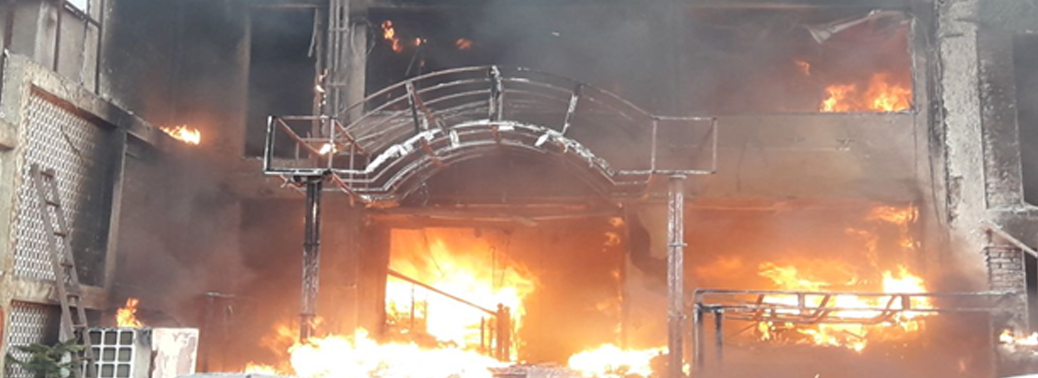
- The Discovery and use of firemay be regarded as the beginning of civilization. Anthropologist Claude Levi-Straus said that ‘primitive people became different From Animals when they started cooking their food’. Not only in cooking, fire was used by them in crafts, in industries and in clearing forests for agriculture and new settlements.
- However, fire also kills people and destroys their possessions.
- Recently, the National Capital witnessed one of the worst fire tragedies in almost two decades when at least 43 people were killed, and several others injured in north Delhi’s Anaj Mandi. Initial enquiries points to many glaring negligence such as locked escape routes, unavailability of fire safety equipment and buildings without the fire safety clearances from the authorities. Rescue operations were also hampered due to narrow lanes.
Fire Safety in India:
- India’s abysmal record on fire safety is reflected in the death of 17,700 people countrywide in fires in both public and residential buildings during 2015, according to the National Crime Records Bureau.
- It should be noted here that the record of rural areas, which remains largely unreported, is no better and on addition will push the figure further up from the estimated total of 20,000 deaths per annum.
- Likewise, the property loss is estimated to be 0.3% of the Gross Domestic Product (GDP).
“Don’t dig well when house is on fire”
- Fire prevention and fire protection is a state subject. The primary responsibility for fire prevention and fire protection lies primarily with State Governments.
- Fire services in India come under the Twelfth Scheduleof the Constitution of India, under the provisions of Article 243W of the Constitution. The performance of the functions listed in the Twelfth Schedule comes under the domain of Municipalities.
The National Building Code (NBC):
- The National Building Code is published by Bureau of Indian Standards. The first edition of the NBC was published in 1970. The third edition of the NBC was published in 2016, incorporating the latest developments in the construction activities in the country.
- The National Building Code (NBC) is the basic model code in India on matters relating to building construction and fire safety. The rules for fire prevention and fire protection are laid in the form of State Regulations or Municipal By-Laws.
Codes and Standards:
- Bureau of Indian Standardshas formulated more than 150 standards on fire safety in buildings and firefighting equipment & systems.
- Oil Industry Safety Directorate(OISD) is a technical directorate under the Ministry of Petroleum and Natural Gas of Government of India. It formulates and coordinates the implementation of a series of self-regulatory measures aimed at enhancing the safety in the oil & gas industry in India.
Fire and laissez-faire:
- According to the India Risks Survey, there has been a 300% increase in fire incidents of commercial buildings in 2014-15. This highlights the gap between India’s dreamy visions of smart cities and the cruel reality of urban chaos.
- Periodically, high-profile cases such as the Uphaar cinema blaze in Delhithat killed 59 people in 1997, and the Kumbakonam school fire in Tamil Nadu in 2004 in which 94 children perished shock the nation, but the issue of fire safety is largely unattended.
- Flouting Fire Safety Norms – Many commercial and residential buildings, have been found flouting fire safety norms. Many occupiers or societies do not bother to conduct regular maintenanceof the fire prevention systems installed in their buildings.
Why does India lag in Fire Safety?
- Prospective Laws– Fire Safety Laws that are framed now are not applicable to the existing buildings, they cannot be implemented retrospectively. For instance, a 100-year old building is not required to obtain fire safety certificate, and the present building codes are not applicable to such buildings.
- Commercial Use– Residential buildings that are considered as low hazard occupancies and are exempted from safety guidelines but being used for commercial purposes increases the risks associated.
- Town Planning – Horizontal and vertical expansion of the cities, without proper planning leads to congestion, which increases the risks.
- Fire Master Plans – Many cities are planned without Fire Protection Masterplans; this makes them vulnerable.
- Citizen Training – Least importance is given to create a knowledged community, which can pro-actively take part in prevention of such incidents. They should at least be trained to operate fire extinguishers and other basic escape precautions.
- Monitoring– Fire safety audits are not conducted properly, due to the unavailability of trained personnel.
- Laxity in following fire safety measures –It was observed that most skyscrapers in Mumbai continue to overlook the fire safety norms compliance certificate. Several prominent high rises in New Delhi are at a high risk of turning into fire traps.
Way Forward:
- Hazard Identification & Risk Assessment (HIRA)can be focused to identify potential hazards.
- A comprehensive fire safety audit can address the inherent fire hazards and recommend measures to reduce the potential fire hazards.
- The fire safety auditwork shall be entrusted to Third Party Agencies, who have expertise in it.
- Training the personnel and creating a well-informed citizenry.
- The State Governmentsshould shed more towards modernization of the fire fighting force.
- Mandating compulsory insurance for all public buildingsagainst fire risk and public liability can bring about a change to the way architects and builders approach the question of safety, since the insurer would require a reduction of risk and compliance with building plans.
- In India, although there are many rules and regulations, codes and standards related to fire safety, these are seldom followed. By 2050, almost 70% of the world’s population will live in cities. India and all countries around the world must see the importance of fire safety when building and extending cities. If not, we will be walking unprepared into a deadly inferno.
PALESTINE-INDIA TECHNO PARK
09, Dec 2019

Why in News?
- The Representative of India to Palestine released third tranche of funding, worth $3 million, for the construction of a Palestine-India Techno Park.
The Palestine-India Techno Park:
- The techno park is meant to create a national business environment and culture “that will enable knowledge-based and creative enterprises as well as technology clusters to successfully operate locally, regionally and globally”.
- In 2017, the park became a member of the International Association of Science Parks and Areas of Innovation (IASP), a global network of science and technology parks.
- Its objectives include establishing an environment that is accessible to industry, supporting the process of commercialisation and industrialisation, supporting entrepreneurship and bridging the knowledge gap between the private sector and academia.
Indian investment in Palestine:
- In total, India has made a commitment of investing over $12 million, part of India’s broader framework of capacity building in Palestine.
- The Indian government pays $3 million on a half-yearly basis.
- Trade between India and Palestine stands at roughly US $40 million and spans automotive spare parts, medical tourism, agro-products, textiles, agro-chemicals and pharmaceuticals among others.
- India’s investment towards the park is part of India’s support to the Palestinian cause.
India, Palestine & Israel:
- Historically, India’s ties with Israel and Palestine have been more or less balanced. India fully established diplomatic relations with Israel in 1992.
- Defence and agriculture have formed the main pillars of their relationship.
- In 1974, India became the first non-Arab state to recognise the Palestine Liberation Organisation (PLO) as the sole legitimate representative of the Palestinian people.
- In 1938, while expressing sympathies for the persecution of Jews in Germany, Mahatma Gandhi said, “Palestine belongs to the Arabs in the same sense that England belongs to the English or France to the French”.
- In 1988, India was one of the first countries to recognise the state of Palestine after the Palestinian National Congress declared independence.
- At that time, India maintained its support for the two-state solution and championed a “sovereign, independent, united” Palestine with its capital in East Jerusalem.
- In 1996, India opened its Representative Office to the State of Palestine in Gaza, which was shifted to Ramallah in 2003.
- In July 2017, PM Modi became the first Indian Prime Minister to visit Palestine.
KALIA SCHEME
09, Dec 2019

Why in News?
- Odisha government has decided to merge its KALIA Scheme with centre’s PM-KISAN Scheme recently.
About KALIA Scheme?
- KALIA or “Krushak Assistance for Livelihood and Income Augmentation” scheme was launched by the Odisha Government for farmer’s welfare.
- The aim of the scheme is to accelerate agricultural prosperity and reducing poverty in the State by encouraging cultivation and associated activities through financial assistance to farmers.
- The scheme is being seen as a viable alternative to farm loan waivers.
About Pradhan Mantri Kisan Samman Nidhi (PM-KISAN) Scheme:
- Under this programme, vulnerable landholding farmer families, having cultivable land upto 2 hectares, will be provided direct income support at the rate of Rs. 6,000 per year.
- This income support will be transferred directly into the bank accounts of beneficiary farmers, in three equal installments of Rs. 2,000 each.
About the Merger:
- Odisha government has decided to merge its KALIA Scheme with centre’s Pradhan Mantri Kisan Samman Nidhi (PM-KISAN) Scheme.
- So, in wake of this, Odisha government has also reduced the financial assistance given to farmers under the Kalia scheme to Rs 4,000 per annum from Rs 10,000.
- This is because of the reason to keep parity between both the schemes.
- The small farmers/marginal farmers may be given with Rs Rs.4,000 per year under KALIA scheme, so that they will get Rs 10,000 cumulatively per year. (i.e. Rs 6,000 from PM-KISAN and Rs 4,000 from KALIA).
- The Odisha government has also announced that the actual cultivators (share croppers) who are landless, if any, will also continue to get assistance from Kalia i.e; Rs 10,000 annually, since they are not considered under PM-KISAN.
Eligible Beneficiaries under KALIA Scheme (Before Merger):
- This scheme is for the benefit of Small and marginal farmers, landless Agricultural household, vulnerable Agricultural household, landless Agricultural labourers and sharecroppers (Actual cultivators)
- Small and Marginal Farmers are eligible to get benefit financial assistance of Rs.25000 per family over 5 seasons under support to cultivators for cultivation.
- Marginal Farmer – who owns less than 1 hectare of Agricultural land
- Small Farmer – who owns 1 hectare (2.5 acres) to 2 hectares (5 acres) of Agricultural land.
- Land less agricultural households is eligible to get financial Assistance of Rs.12500 for the livelihood support under the scheme.
- Vulnerable agricultural household covering vulnerable cultivators/ landless agricultural labourers are eligible to get financial assistance of Rs, 10,000 per year under the KALIA scheme. Vulnerable cultivators/ landless agricultural labourers include old age, disability, disease or any other reason. Out of the above three components viz., support to cultivators for cultivation, livelihood support for landless agricultural household and financial assistance to vulnerable agricultural household, one beneficiary will avail only one benefit as per the eligibility. Apart from these components, the scheme also provides for life insurance support and interest free crop loans for all the categories of beneficiary under KALIA scheme.
Similar Farmer Assistance Schemes Elsewhere:
Rythu Bandhu Scheme of Telangana:
- Rythu Bandhu scheme also known as Farmers’ Investment Support Scheme (FISS) is a farmer welfare program of the Government of Telangana. This scheme has been introduced in order to support farmers’ investment in the agriculture so as to boost the agricultural prosperity.
- Under this scheme, the government is providing Rs 4,000 per acre per season, twice a year for growing Kharif and Rabi crops.
- The financial assistance is provided to all the farmers and there is no cap on the number of acres owned by the farmers.
- It is to be noted that more than 75% of the agricultural land in Telangana is under the control of small and marginal farmers and hence this scheme is considered to be of immense benefit to the small and marginal farmers.
A Comparison in Brief:
| KALIA Scheme | Rythu Bandhu Scheme | PM-KISAN SCHEME | |
|---|---|---|---|
| State | Odisha | Telangana | Centre |
| Coverage | Small and marginal farmers Landless Agricultural household, Vulnerable Agricultural household Landless Agricultural labourers Sharecroppers (Actual cultivators) | All the Farmers | All the land holding Farmers |
| Tenants and Sharecroppers included | Yes | No | No |
| Financial Assistance Provided | Differs for different categories of beneficiaries | Uniform financial assistance of Rs 8,000 per year | Rs.6000 per year |
| Life Insurance Support | Yes | No | Not provided |
| Interest Free Crop Loans | Yes | No | Not provided |
A POTENTIAL SEEDBED FOR PRIVATE PROFITS
07, Dec 2019

Context:
- Seeds Bill 2019 which was introduced in the parliament was taken up for consideration recently. The earlier versions of the Bill, in 2004 and 2010, had generated heated debates. The present version has also been with certain problematic provisions and the article discusses it in brief.
Background Information:
1. India Signing TRIPS and UPOV
- In 1994, India signed the agreement on Trade-Related Aspects of Intellectual Property Rights (TRIPS). In 2002, India also joined the International Union for the Protection of New Varieties of Plants (UPOV) Convention.
- The above two agreements has made a nation has to give priority to Seed breeder’s rights over farmer’s rights.
- Both TRIPS and UPOV led to the introduction of some form of Intellectual Property Rights (IPR) over plant varieties.
- Member countries had to introduce restrictions on the free use and exchange of seeds by farmers unless the “breeders” were remunerated.
2. India signing CBD and ITPGRFA:
- In 1992,India signed the Convention on Biological Diversity (CBD) which provided for “prior informed consent” of farmers before the use of genetic resources and “fair and equitable sharing of benefits” arising out of their use.
- In 2001, India signed the International Treaty on Plant Genetic Resources for Food and Agriculture (ITPGRFA) which recognised farmers‟ rights as the rights to save, use, exchange and sell farm-saved seeds.
- It is clear that these two agreements has made a country to favour farmer’s rights over breeder’s rights. So, national governments had the responsibility of protecting farmer’s rights.
- Here we can notice TRIPS and UPOV runs counter to the above two international conventions.
3. A Delicate Balance of all:
- As India was a signatory to TRIPS and UPOV (that gave priority to breeders‟ rights) as well as CBD and ITPGRFA (that emphasised farmers‟ rights), any Indian legislation had to be in line with all.
- Protection of Plant Varieties and Farmers‟ Rights (PPVFR) Act of 2001 was enacted with this delicate balance.
- The PPVFR Act retained the main spirit of TRIPS viz., IPRs as an incentive for technological innovation. However, the Act also had strong provisions to protect farmers‟The PPVFR Act also recognised three roles for the farmer: cultivator, breeder and conserver. As cultivators, farmers were entitled to plant-back rights. As breeders, farmers were held equivalent to plant breeders. As conservers, farmers were entitled to rewards from a National Gene Fund.
Introduction of New legislation – Seed Bill, 2019
- According to the government, a new Seeds Bill is necessary to enhance seed replacement rates in Indian agriculture, specify standards for registration of seed varieties and enforce registration from seed producers to seed retailers.
- While these goals are indeed worthy, any such legislation is expected to be in alignment with the spirit of the PPVFR Act. Not surprisingly, many of the Bill’s provisions deviate from the spirit of the PPVFR Act, are against farmers’ interests and in favour of private seed companies. For instance, a shift from farm-saved seeds to certified seeds, which would raise seed replacement rates, is desirable. Certified seeds have higher and more stable yields than farm-saved seeds. However, such a shift should be achieved not through policing, but through an Enabling Atmosphere.
Interest of Private Companies:
- From the late-1980s, Indian policy has consciously encouraged the growth of private seed companies, including companies with majority foreign equity.
- Today, more than 50% of India’s seed production is undertaken in the private sector.
- These firms have been demanding favourable changes in seed laws and deregulation of seed prices, free import and export of germplasm, freedom to self-certify seeds and restrictions on the use by farmers of saved seeds from previous seasons.
- Through the various versions between 2004 and 2019 of the same bill, private sector interests have guided the formulation of the Seeds Bill.
- As a result, even desirable objectives, such as raising the seed replacement rates, have been mixed up with an urge to encourage and protect the business interests of private companies.
Problematic Provisions of the New Bill:
- The provisions of the new bill that runs counter to the existing PPVFR Act are as follows:
1. Compulsory Registration of Seeds
- The Seeds Bill insists on compulsory registration of seeds. However,The PPVFR Act was based on voluntary registration of seeds.
- As a result, many seeds may be registered under the Seeds Bill but may not under the PPVFR Act.
- Assume a seed variety developed by a breeder, but derived from a traditional variety. The breeder will get exclusive marketing rights. But no gain will accrue to farmers as benefit-sharing is dealt with in the PPVFR Act, under which the seed is not registered.
2. Compensation for Farmer’s Role in Development of a Seed Variety:
- As per the PPVFR Act, all applications for registrations should contain the complete passport data of the parental lines from which the seed variety was derived, including contributions made by farmers.
- This allows for an easier identification of beneficiaries and simpler benefit-sharing processes.
- Seeds Bill, on the other hand, demands no such information while registering a new variety. As a result, an important method of recording the contributions of farmers is overlooked and private companies are left free to claim a derived variety as their own.
3. Ever-Greening of registration
- The PPVFR Act, which is based on an IPR like breeders‟ rights, does not allow re-registration of seeds after the validity period.
- However under the new bill private seed companies can re-register their seeds an infinite number of times after the validity period. Given this “ever-greening” provision, many seed varieties may never enter the open domain for free use.
4. Seed Pricing
- The new bill has vague provisions for regulation of seed prices which appears neither sufficient nor credible.
- This has been the scenario ,when strict control on seed prices has been an important demand raised by farmers’ organisations.
- In its absence, they feel, seed companies may be able to fix seed prices as they deem fit, leading to sharp rises in costs of cultivation.
5.Compensation to Farmers:
- According to the PPVFR Act, if a registered variety fails in its promise of performance, farmers can claim compensation before a PPVFR Authority.
- This provision is diluted in the Seeds Bill, where disputes on compensation have to be decided as per the Consumer Protection Act 1986. Consumer courts are hardly ideal and friendly institutions that Farmers can Approach.
Way Ahead:
- Private seed companies prefer policing because their low-volume, high-value business model is crucially dependent on forcing farmers to buy their seeds every season.
- So, on the other hand, an enabling atmosphere has to be generated by the strong presence of public institutions in seed research and production.
- When public institutions, not motivated by profits, are ready to supply quality seeds at affordable prices, policing becomes redundant.
- For the seed sector and its laws to be truly farmer-friendly, the public sector has to recapture its lost space.
About Protection of Plant Varieties and Farmers’ Rights Authority, India:
- It has been established under the provisions of Protection of Plant Varieties and Farmers’ Rights Act, 2001.
- Its Objectives Includes:
- An effective system for protection of plant varieties,
- The rights of farmers and plant breeders and
- To encourage the development of new varieties of plants it has been considered necessary to recognize and protect the rights of the farmers in respect of their contribution made at any time in conserving, improving and making available plant genetic resources for the development of the new plant varieties.
- To accelerate agricultural development, it is necessary to protect plants breeders’ rights to stimulate investment for research and development for the development of new plant varieties.
- Such protection is likely to facilitate the growth of the seed industry which will ensure the availability of high quality seeds and planting material to the Farmers.
GUIDELINES FOR “ON TAP LICENSING” OF SMALL FINANCE BANKS
07, Dec 2019

Context:
- The RBI has recently released the Guidelines for “on tap Licensing” of Small Finance Banks in the Private Sector.
What is On-Tap Licensing?
- An “on-tap” facility would mean the RBI would accept applications and grant license for Small Finance Banks (SFBs) throughout the year. The policy allows aspirants to apply for small finance bank license at any time, subject to the fulfilment of the conditions laid down by the RBI.
What are Small Finance Banks?
- The Small Finance Banks (SFBs) are the differentiated banks which have been set up to further the objective of financial inclusion by primarily undertaking basic banking activities of acceptance of deposits and lending to un-served and underserved sections without any restriction in the area of operations.
Scope of Activities:
- Accept deposits and extend loans
- Undertake non-risk financial services activities such as distribution of mutual fund units, insurance products, pension products, etc. with the prior approval of the RBI
- Open at least 25 per cent of its banking outlets in unbanked Rural Centres.
- Sell Forex to Customers
- No restriction in the area of operations of small finance banks
How are Small finance banks different from the Payment banks?
- Both Payment Banks and Small Finance Banks are the differentiated banks which have been set up to promote financial inclusion. While Small Finance Banks can undertake both deposit and lending activity, the Payment banks cannot lend loans.
- Further, the Payment Banks cannot accept deposits more than Rs 1 lakh. The Payment Banks need to invest 75 per cent of their deposits in government securities with maturity up to one year, and the balance 25 per cent with the Commercial Banks.
RBI’s Guidelines on Small Finance Banks
1. Eligible Promoters:
- Resident individuals/professionals (Indian citizens) having at least 10 years of experience in banking and finance at a senior level;
- Companies and Societies having successful track record of running their businesses for at least a period of five years Existing
- Non-Banking Finance Companies (NBFCs), Micro Finance Institutions (MFIs), and Local Area Banks (LABs) in the private sector.
2. Fit and Proper‟ Criteria:
- RBI would assess the „fit and proper‟ status of the applicants on the basis of their past record of sound credentials and integrity; financial soundness and successful track record of professional experience or of running their businesses.
3. Capital Requirement:
- The minimum equity capital for small finance banks shall be Rs.200 crore.
- For the Primary (Urban) Co-operative Banks (UCBs), desirous of voluntarily transiting into Small Finance Banks (SFBs) the initial requirement of net worth shall be at Rs 100 crore, which will have to be increased to Rs 200 crore within five years from the date of commencement of business.
- SFBs will be given scheduled bank status immediately upon commencement of operations
4. Prudential Norms:
- The small finance bank will be subject to all prudential norms and regulations of RBI as applicable to existing commercial banks including requirement of maintenance of Cash Reserve Ratio (CRR) and Statutory Liquidity Ratio (SLR).
5. Priority sector Lending Requirements:
- The SFBs would be required to extend 75% of their loans for the priority sectors.
6. Dominance of Small value Loans:
- In order to ensure that the bank extends loans primarily to small borrowers, at least 50 per cent of its loan portfolio should constitute loans and advances of up to Rs.25 lakh.
RBI KEEPS INTEREST RATES UNCHANGED
06, Dec 2019

Why in News?
- The Monetary Policy Committee (MPC) of the Reserve Bank of India (RBI) decided to keep the interest rate unchanged at 5.15% in the fifth bimonthly policy review, citing inflation concerns despite economic growth continuing to slow down.
Instruments for implementing Monetary Policy:
- Repo Rate: The (fixed) interest rate at which the Reserve Bank provides overnight liquidity to banks against the collateral of government and other approved securities under the liquidity adjustment facility (LAF).
- Reverse Repo Rate: The (fixed) interest rate at which the Reserve Bank absorbs liquidity, on an overnight basis, from banks against the collateral of eligible government securities under the LAF.
- Liquidity Adjustment Facility (LAF): The LAF consists of overnight as well as term repo auctions. Progressively, the Reserve Bank has increased the proportion of liquidity injected under fine-tuning variable rate repo auctions of a range of tenors.
- The aim of term repo is to help develop the inter-bank term money market, which in turn can set market-based benchmarks for pricing of loans and deposits, and hence improve the transmission of monetary policy.
- The Reserve Bank also conducts variable interest rate reverse repo auctions, as necessitated under the market conditions.
- Marginal Standing Facility (MSF): A facility under which scheduled commercial banks can borrow an additional amount of overnight money from the Reserve Bank by dipping into their Statutory Liquidity Ratio (SLR) portfolio up to a limit at a penal rate of interest.
- This provides a safety valve against unanticipated liquidity shocks to the banking system.
- Corridor: The MSF rate and reverse repo rate determine the corridor for the daily movement in the weighted average call money rate.
- Bank Rate: It is the rate at which the Reserve Bank is ready to buy or rediscount bills of exchange or other commercial papers. The Bank Rate is published under Section 49 of the Reserve Bank of India Act, 1934. This rate has been aligned to the MSF rate and, therefore, changes automatically as and when the MSF rate changes alongside policy repo rate changes.
- Cash Reserve Ratio (CRR): The average daily balance that a bank is required to maintain with the Reserve Bank as a share of such percent of its Net demand and time liabilities (NDTL) that the Reserve Bank may notify from time to time in the Gazette of India.
- Statutory Liquidity Ratio (SLR): The share of NDTL that a bank is required to maintain in safe and liquid assets, such as unencumbered government securities, cash and gold. Changes in SLR often influence the availability of resources in the banking system for lending to the private sector.
- Open Market Operations (OMOs): These include both, outright purchase and sale of government securities, for injection and absorption of durable liquidity, respectively.
- Market Stabilisation Scheme (MSS): This instrument for monetary management was introduced in 2004. Surplus liquidity of a more enduring nature arising from large capital inflows is absorbed through the sale of short-dated government securities and treasury bills. The cash so mobilised is held in a separate government account with the Reserve Bank.
About Monetary Policy Committee:
- The policy interest rate required to achieve the inflation target is decided by the Monetary Policy Committee (MPC).
- MPC is a six-member committee constituted by the Central Government (Section 45ZB of the amended RBI Act, 1934) – three officials of the Reserve Bank of India and three external members nominated by the Government of India.
- The MPC is required to meet at least four times in a year. The quorum for the meeting of the MPC is four members.
- Each member of the MPC has one vote, and in the event of an equality of votes, the Governor has a second or casting vote.
- The resolution adopted by the MPC is published after the conclusion of every meeting of the MPC.
- Once in every six months, the Reserve Bank is required to publish a document called the Monetary Policy Report to explain: (1) the sources of inflation and(2) the forecast of inflation for 6-18 months ahead.
Decisions Taken by MPC:
- The MPC recognises that there is monetary policy space for future action.
- However, given the evolving growth-inflation dynamics, the MPC felt it appropriate to take a pause at this juncture.
- The MPC also decided to continue with the accommodative stance as long as it is necessary to revive growth, while ensuring that inflation remains within the target”.
Current Economic Situation:
- Inflation forecast had been raised to 5.1-4.7% for H2:2019-20 and 4.0-3.8% for H1:2020-21, with risks broadly balanced, the RBI said.
- In October, CPI inflation was projected at 3.5-3.7% for H2:2019-20 and 3.6% for Q1:2020-21.
- Growth forecast for the current financial year was revised downward sharply — from 6.1% projected in October policy to 5%.
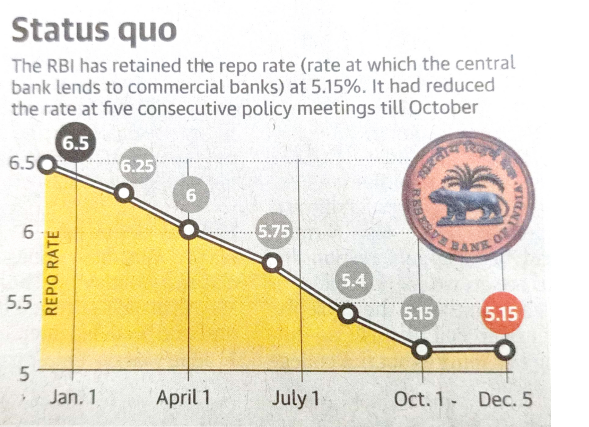
INITIATIVES FOR PROMOTING LEATHER INDUSTRY
06, Dec 2019
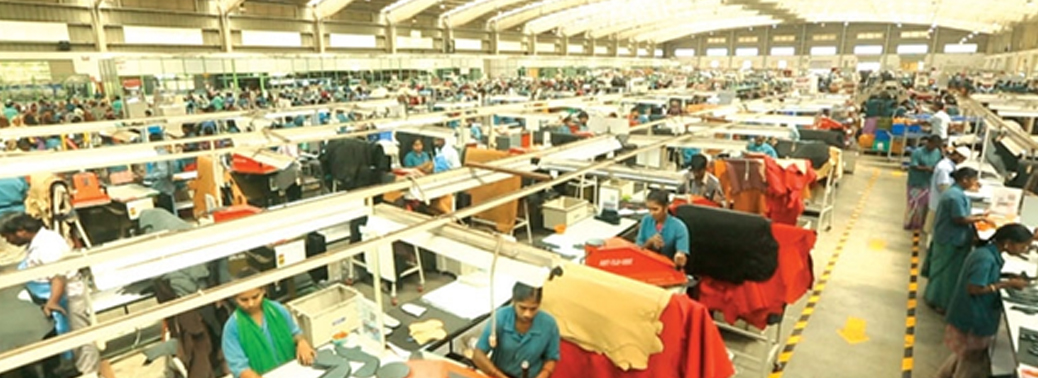
Why in News?
- The government aims at the development of infrastructure for the leather sector, address environment concerns specific to the leather sector, facilitate Additional Investments, Employment Generation and increase in production.
Merchandise Exports from India Scheme (MEIS):
- MEIS was introduced in the FTP from 01.04.2015, providing rewards for exporters of specified goods.
- The objective of the MEIS is to offset infrastructural inefficiencies and associated costs involved in exporting goods/products which are produced/manufactured in India.
- The scheme incentivizes exporters in terms of Duty Credit Scrips at the rate of 2, 3, 4, 5, 7 % of FOB Value of exports realized.
- Goods and Service Tax (GST) Rates for selected leather industry items have been reduced.
- Duty-Free Import of Inputs: Enhancement of duty-free limit (Basic Customs duty exemption) for import of critical import by manufacturer exporters of footwear and other leather products.
- Interest equalization rate was enhanced from 3% to 5% for Micro Small and Medium Enterprises units
- Removal of Animal Quarantine clearance for most of the categories of finished and crust leathers imported into India
- In order to promote Green Tanning, the Union Budget 2017-18 announced the reduction of Basic Customs Duty on Vegetable Tanning Extracts.
Indian Footwear, Leather & Accessories Development Programme:
- Human Resource Development (HRD) sub-scheme: HRD sub-scheme provides assistance for Placement Linked Skill Development training to unemployed persons and skill up-gradation training to employed workers.
- Integrated Development of Leather Sector (IDLS) sub-scheme: IDLS sub-scheme incentivizes investment and manufacturing including job creation by providing backend investment grant/subsidy at 30% of the cost of new Plant and Machinery to Micro, Small & Medium Enterprises (MSMEs).
- Establishment of Institutional Facilities sub-scheme: The sub-scheme provides assistance to Footwear Design & Development Institute (FDDI) for up-gradation of some of the existing campuses of FDDI into “Centres of Excellence” and establishing 3 new fully equipped skill centres alongside the upcoming Mega Leather Cluster.
- Mega Leather, Footwear and Accessories Cluster (MLFAC) sub-scheme: The MLFAC sub-scheme provides infrastructure support to the Leather, Footwear and Accessories Sector by the establishment of Mega Leather, Footwear and Accessories Cluster.
- Leather Technology, Innovation and Environmental Issues sub-scheme: Under this sub-scheme, assistance is provided for upgradation/installation of Common Effluent Treatment Plants (CETPs) at 70% of the project cost.
- Promotion of Indian Brands in Leather, Footwear and Accessories Sector sub-scheme: Under this sub-scheme, the eligible units approved for Brand Promotion are assisted.
- Additional Employment Incentive for Leather, Footwear and Accessories Sector sub-scheme: Under this sub-scheme, employers’ contribution of 3.67% to Employees’ Provident Fund for all new employees in Leather, Footwear and Accessories sector, are provided for enrolling in EPFO for first 3 years of their employment.
FUGITIVE ECONOMIC OFFENDERS
06, Dec 2019

Why in News?
- A special court on Thursday declared absconding Nirav Modi, prime accused in the Punjab National Bank scam, a fugitive economic offender (FEO).
- The declaration allows the government to initiate action to confiscate the offender’s properties.
- Nirav Modi is the second person to be declared a fugitive economic offender, under the new fugitive Economic Offenders Act, after Vijay Mallya.
“Fugitive Economic Offender”
- A person can be named an offender under this law if there is an arrest warrant against him or her for committing any offence listed in the schedule of the act and for involvement in economic offences involving at least Rs. 100 crore or more and has fled from India to escape Legal Action.
- Major criteria that have to be satisfied are:
- The Person has left the country to avoid facing prosecution.
- He refuses to return to India to face prosecution.
About Fugitive Economic Offenders Act, 2018:
- The Fugitive Economic Offenders Act, 2018 seeks to confiscate properties of economic offenders who have left the country to avoid facing criminal prosecution.
- Offences involving amounts of Rs. 100 crore or more fall under the purview of this law.
- Some of the offences listed in the schedule of the bill are-counterfeiting government stamps or currency, cheque dishonour for insufficiency of funds, money laundering, transactions defrauding creditors etc.
Proceedings as per the Act:
- To declare a person an FEO, an application will be filed in a Special Court (designated under the Prevention of Money-Laundering Act, 2002) containing details of the properties to be confiscated, and any information about the person’s whereabouts.
- The Special Court will require the person to appear at a specified place at least six weeks from issue of notice. Proceedings will be terminated if the person appears.
- Attachment of the property of a fugitive economic offender.
- Confiscation of the property of an individual declared as a fugitive economic offender resulting from the proceeds of crime.Confiscation of other property belonging to such offender in India and abroad including benami property.
- Disentitlement of the fugitive economic offender from defending any civil claim.
- All cases under the proposed law will be tried under the Prevention of Money Laundering (PMLA) Act and the administrator will sell the fugitive’s properties to pay off the lenders.
- The proposed law will have an overriding effect over all other pieces of legislation.
United Nations Convention against Corruption:
- Non conviction based asset confiscation for corruption related cases are enabled under provisions of United Nations Convention against Corruption which India ratified in 2011. This Act is adopted based on this principle.
- The United Nations Convention against Corruption is the only legally binding universal anti-corruption instrument.
- It was adopted by the General Assembly in 2003 and entered into force on December 14, 2005.
- The Convention covers five main areas: preventive measures, criminalization and law enforcement, international cooperation, asset recovery, and technical assistance and information exchange.
GOVERNMENT PROCURED ONLY 3% OF OILSEEDS AND PULSES UNDER PM-AASHA
05, Dec 2019
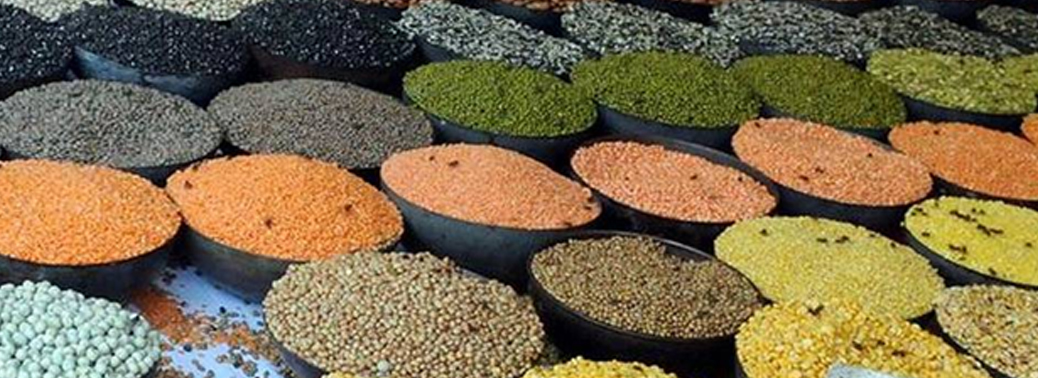
Why in News?
- Data from Agriculture Ministry has indicated that only less than 3% of this season’s sanctioned amount of pulses and oilseeds have actually been procured so far under the once-hyped PM-AASHA scheme.
About PM-AASHA:
- The PM-AASHA or Pradhan Mantri Annadata Aay Sanrakshan Abhiyan was announced with great fanfare in September 2018, as an effort to ensure that farmers growing pulses, oilseeds and copra actually get the minimum support prices they are promised for their crops each year.
- Apart from initiatives to allow cash payment to farmers or procurement by private traders, PM-AASHA’s main feature was a price support scheme whereby Central agencies would procure pulses and oilseeds directly from farmers.
- The three schemes that are part of AASHA are:
- The Price Support Scheme (PSS)
- The Price Deficiency Payment Scheme (PDPS)
- The Pilot of Private Procurement and Stockist Scheme (PPPS)
- PSS – Under the PSS, physical procurement of pulses, oilseeds and copra will be done by Central Nodal Agencies.
- Besides, NAFED and Food Cooperation of India will also take up procurement of crops under PSS.
- The expenditure and losses due to procurement will be borne by the Centre.
- PDPS – Under the PDPS, the Centre proposes to cover all oilseeds.
- The difference between the MSP and actual selling/modal price will be directly paid into the farmer’s bank account.
- Farmers who sell their crops in recognised mandis within the notified period can benefit from it.
- PPSS – In the case of oilseeds, States will have the option to roll out PPSSs in select districts.
- Under this, a private player can procure crops at MSP when market prices drop below MSP.
- The private player will then be compensated through a service charge up to a maximum of 15% of the MSP.
- The Centre had budgeted ₹15,053 crore over two years to implement the scheme apart from an additional government credit guarantee of ₹16,550 crore for agencies undertaking procurement.
- It was launched as increasing MSP was not adequate and it is more important that farmers should get full benefit of the announced MSP.
- Crops covered under the Scheme for this Season:
- The main crops covered under the scheme this season are moong, urad, arhar, and groundnut and soya bean.
- The late arrival of the monsoon means that harvests and crop arrivals also began slightly later than expected, especially for arhar or tur dal, so procurement is likely to continue, though tapering, until February.
Issues Associated with the MSP Scheme:
- The scheme provides little to strengthen the procurement mechanism infrastructure in the country which largely only works for two crops – wheat and rice.
- According to a survey conducted by the National Sample Survey Office (NSSO) in the 70th round in 2013, only 6% of farmers are able to sell their produce at MSP.
- A 2017 study found that only 24% households were aware about the MSP of crops grown by them.
- Further, the study found, although MSP is announced for the whole of India, the operation is limited only to few states where the designated government agencies procure the produce from farmers and except for crops like rice and wheat, quantity procured is very limited leading to low level of awareness.
- According to a 2016 NITI Aayog evaluation report 79% farmers were dissatisfied with the MSP regime.
- Some of the reasons for their dissatisfaction were delay in payments, lack of infrastructure at procurement centres, distance to procurement centres and delayed announcement of MSP rates.
- NITI Aayog’s evaluation also found that there were several states where the procurement infrastructure facilities were ‘inadequate’.
What is the Current Issue regarding the PM-AASHA?
- Procurement is still lagging badly in most States.
- The highest sanctioned procurement is in Maharashtra, where 10 lakh tonnes of soya bean procurement were sanctioned, apart from 58,000 tonnes of moong and urad dal. However, barely 1,709 tonnes have been procured in the State so far, including just 14 tonnes of soya bean.
- The highest procurement so far has taken place in Rajasthan, where more than 51,000 tonnes of moong and groundnut have been procured, against a total sanctioned amount of 9.6 lakh tonnes.
- While almost 5 lakh tonnes had been sanctioned in Madhya Pradesh, and 1.18 lakh tonnes in Uttar Pradesh, procurement has not yet begun in either State.
BHARAT BOND EXCHANGE TRADED FUND
05, Dec 2019
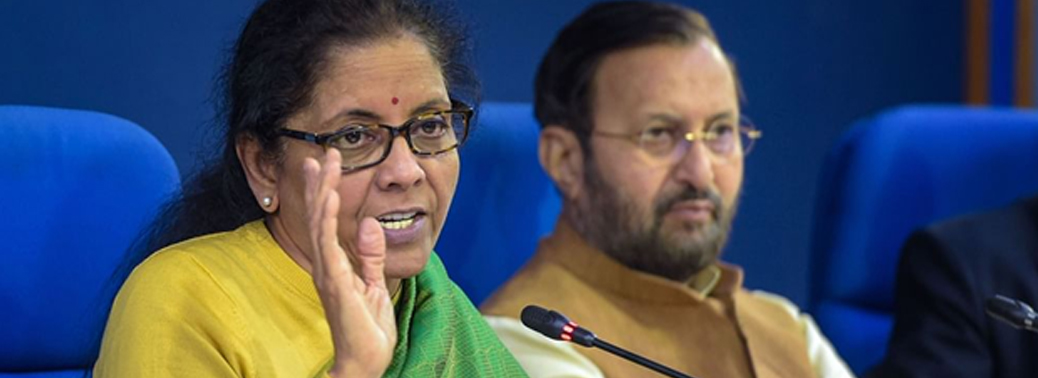
Why in News?
- The Cabinet Committee on Economic Affairs (CCEA) has given its approval for creation and launch of Bharat Bond Exchange Traded Fund (ETF).
Exchange Traded Fund:
- Exchange Traded Funds (ETFs) are mutual funds listed and traded on stock exchanges like shares.
- Index ETFs are created by institutional investors swapping shares in an index basket, for units in the fund.
- Usually, ETFs are passive funds where the fund manager doesn’t select stocks on your behalf. Instead, the ETF simply copies an index and endeavours to accurately reflect its performance.
- In an ETF, one can buy and sell units at prevailing market price on a real time basis during Market Hours.
Significance of ETF:
- ETFs are cost efficient. Given that they don’t make any stock (or security choices), they don’t use services of star fund managers.
- They allow investors to avoid the risk of poor security selection by the fund manager, while offering a diversified investment portfolio.
- The stocks in the indices are carefully selected by index providers and are rebalanced periodically. They offer anytime liquidity through the exchanges.
What is Bharat ETF?
- Bharat Bond ETF would be the first corporate Bond ETF in the country.
- Bharat Bond ETF will create an additional source of funding for Central Public Sector Undertakings (CPSUs) Central Public Sector Enterprises (CPSEs), Central Public Financial Institutions (CPFIs) and other Government organizations.
- ETF will be a basket of bonds issued by CPSE/CPSU/CPFI/any other Government organization Bonds.
Features of Bharat ETF:
- Tradable on exchange
- Small unit size Rs 1,000
- Transparent Net Asset Value (NAV) i.e. periodic live NAV during the day
- Transparent Portfolio (Daily disclosure on website)
- Low cost (0.0005%)
Structure of Bharat ETF:
- Each ETF will have a fixed maturity date
- The ETF will track the underlying Index on risk replication basis, i.e. matching Credit Quality and Average Maturity of the Index
- Will invest in a portfolio of bonds of CPSE, CPSU, CPFI or any other Government organizations that matures on or before the maturity date of the ETF
- As of now, it will have 2 maturity series – 3 and 10 years. Each series will have a separate index of the same maturity series.
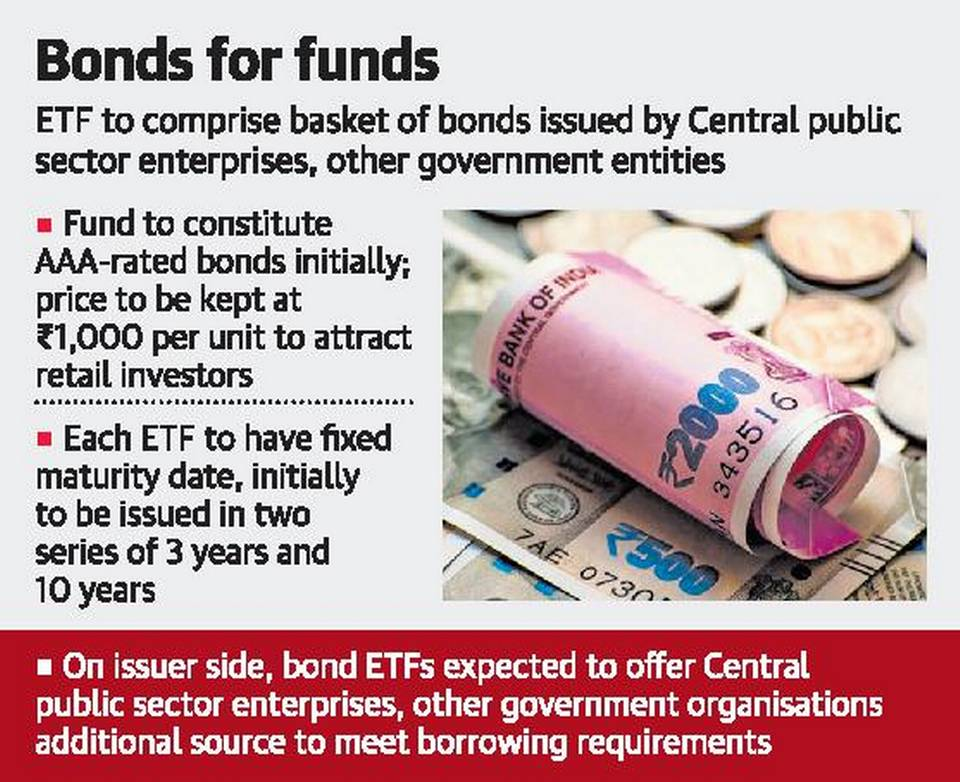
RATNA STATUS TO CPSES
05, Dec 2019
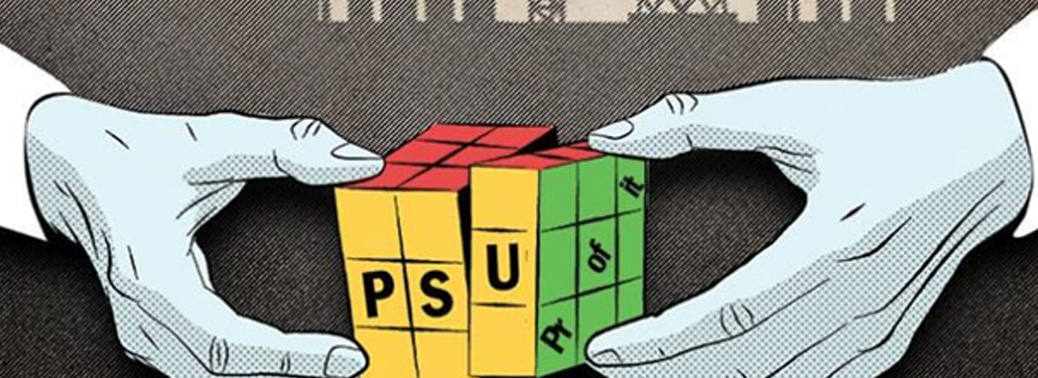
Why in News?
- The criteria laid down by the Government for grant of Maharatna, Navratna and Miniratna status to Central Public Sector Enterprises (CPSEs) is given below:
Criteria for Grant of Maharatna status to CPSEs:
- Having Navratna status
- Listed on Indian stock exchange with minimum prescribed public shareholding under SEBI regulations
- An average annual turnover of more than Rs. 25,000 crore during the last 3 years
- An average annual net worth of more than Rs. 15,000 crore during the last 3 years
- An average annual net profit after tax of more than Rs. 5,000 crore during the last 3 years
- Should have significant global presence/international operations.
Criteria for Grant of Navratna Status to CPSEs:
- The CPSEs which are Miniratna I, Schedule ‘A’ and have obtained ‘excellent’ or ‘very good’ MOU rating in three of the last five years and having composite score of 60 or above in following six selected performance indicators are eligible to be considered for grant of Navratna status.
- Net Profit to Net worth: 25
- Manpower Cost to total Cost of Production or Cost of Services: 15
- PBDIT to Capital employed: 15
- PBIT to Turnover: 15
- Earning Per Share: 10
- Inter Sectoral Performance: 20
Criteria for grant of Miniratna status to CPSEs:
- Miniratna Category-I status: – The CPSEs which have made profit in the last three years continuously, pre-tax profit is Rs.30 crores or more in at least one of the three years and have a positive net worth are eligible to be considered for grant of Miniratna-I status.
- Miniratna Category-II status: – The CPSEs which have made profit for the last three years continuously and have a positive net worth are eligible to be considered for grant of Miniratna-II status.
PEDESTRIAN DEATHS IN ROAD ACCIDENTS
04, Dec 2019
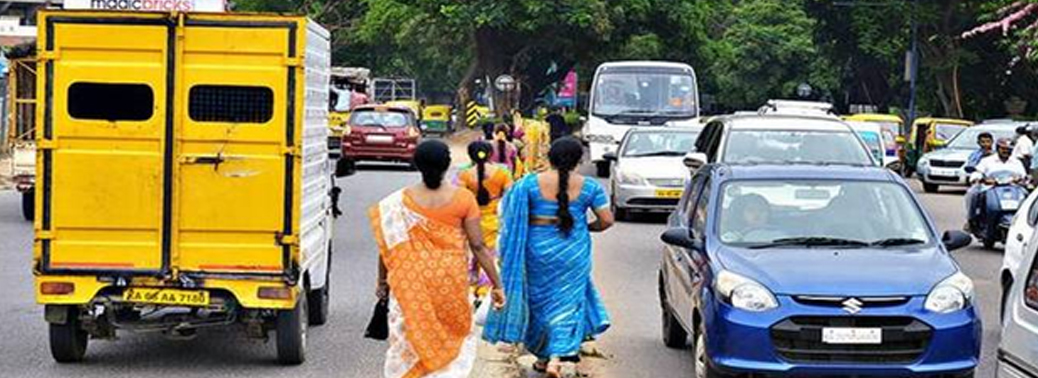
Why in News?
- The Ministry of Road Transport & Highways has formulated a multi-pronged strategy to address the issue of road safety based on Education, Engineering (both of roads and vehicles), Enforcement and Emergency Care.
Highlights:
- The Ministry of Road Transport & Highways has constituted a Parliamentary Constituency Committee on Road Safety in each district of the country to promote awareness amongst road users under the chairmanship of the MPs.
- The National Road Safety Policy outlines various policy measures such as promoting awareness, establishing road safety information database, encouraging safer road infrastructure including the application of intelligent transport, enforcement of safety laws with regard to road safety.
- The Motor Vehicles (Amendment) Act, 2019 focuses on road safety and includes, among other things, stiff hike in penalties for traffic violations and electronic monitoring of the same, enhanced penalties for juvenile driving, computerization/automation of vehicle fitness and driving, tests, recall of defective vehicles, extending the scope of third party liability and payment of increased compensation for hit and run cases, etc.
Some of the other Initiatives of the Government:
- Advocacy/Publicity campaign on road safety through the electronic media and print media to create awareness.
- Issue of Guidelines for the protection of Good Samaritans.
- Setting up of model driving training Institutes in States.
- Launch of mobile app for highway users i.e. “Sukhad Yatra 1033” which enables highways users to report potholes and other safety hazards on National Highways including Observance of Road Safety Week every calendar year for spreading awareness and strengthening road safety.
- Safety standards for automobiles have been improved.
- High priority has been accorded to identification and rectification of black spots (accident-prone spots) on national highways.
THE TRANSGENDER PERSONS (PROTECTION OF RIGHTS) BILL, 2019
04, Dec 2019

Why in News?
- Rajya Sabha has recently passed “The Transgender Persons (Protection of Rights) Bill, 2019” without any Amendments.
About Transgenders:
- Transgender community includes Hijras, Eunuchs, Kothis, Aravanis, Jogappas, ShivShakthis etc., who have been a part of Indian society for centuries. The Vedic and Puranic literatures mention “tritiyaprakriti” meaning the third gender.
- Though most of the eunuchs seen today are begging at traffic signals or during weddings, they were a respected lot during the Mughal rule in the Medieval India.
- During the British rule, they were denied civil rights and were considered a separate caste or tribe who did kidnapping and castration of children and danced and dressed?like women.
- In Post-Independence Era, the Act was repealed but its legacy continues and many local laws reflected the prejudicial attitudes against certain tribes, including Hijras.
- In contemporary times, the LGBTQ group is referred to as the “lesbian, gay, bisexual, transgender, and queer community” which includes those with gender dysphoria and different sexual orientations.
Sex (vs) Gender:
- It also needs to be understood that “Sex” and “Gender” are different things. One may be born as Male (sex) but may identify himself like a Woman (Gender). So “Sex” is biological and “Gender” is the real sexual identity of a person.
Transgenders in India:
- According to the 2011 Census, the number of persons who do not identify as ‘male’ or ‘female’ but as ‘other’ stands at 4,87,803 (i.e. 0.04% of the total population)
- Indian census has never recognized the third gender, i.e., transgender while collecting census data for years.
- The 2011 census also reported 55,000 children as transgender identified by their parents.
About Transgender Persons (Protection of Rights) Bill, 2019:
Key Provisions of the Bill:
1. Definition of a Transgender Person:The Bill defines a transgender person as one whose gender does not match the gender assigned at birth. It includes trans-men and trans-women, persons with intersex variations, gender-queers, and persons with socio-cultural identities, such as kinnar and hijra.Intersex variations are defined to mean a person who at birth shows variation in his or her primary sexual characteristics, external genitalia, chromosomes, or hormones from the normative standard of male or female body.
2.Certificate of identity for a Transgender Person:A transgender person may make an application to the District Magistrate for a certificate of identity, indicating the gender as ‘transgender’. A revised certificate may be obtained only if the individual undergoes surgery to change their gender either as a male or a female.
3.Prohibition against Discrimination:The Bill prohibits the discrimination against a transgender person, including denial of service or unfair treatment in relation to:(i) education; (ii) employment; (iii) healthcare; (iv) access to, or enjoyment of goods, facilities, opportunities available to the public; (v) right to movement; (vi) right to reside, rent, or otherwise occupy property; (vii) opportunity to hold public or private office; and (viii) access to a government or private establishment in whose care or custody a transgender person is.
4.National Council for Transgender persons (NCT):The NCT will consist of:
(i) Union Minister for Social Justice (Chairperson); (ii) Minister of State for Social Justice (Vice- Chairperson); (iii) Secretary of the Ministry of Social Justice; (iv)one representative from ministries including Health, Home Affairs, and Human Resources Development. Other members include representatives of the NITI Aayog, and the National Human Rights Commission. State governments will also be represented. The Council will also consist of five members from the transgender community and five experts from non-governmental organisations.
5.Right of Residence: Every transgender person shall have a right to reside and be included in his household.
6.Employment:No government or private entity can discriminate against a transgender person in employment matters, including Recruitment, and Promotion.
7.Education: Educational institutions funded or recognised by the Relevant Government shall provide inclusive education, sports and recreational facilities for Transgender Persons, without Discrimination.
8.Health Care:The government must take steps to provide health facilities to transgender persons including separate HIV surveillance centres, and sex reassignment surgeries. The government shall review medical curriculum to address health issues of transgender persons, and provide comprehensive medical insurance schemes for them.
9.Welfare Measures by the Government:The Bill states that the relevant government will take measures to ensure the full inclusion and participation of transgender persons in society.
10.Offences and Penalties: The Bill recognizes the following offences against transgender persons: (i) forced or bonded labour (excluding compulsory government service for public purposes), (ii) denial of use of public places, (iii) removal from household, and village, (iv) physical, sexual, verbal, emotional or economic abuse. Penalties for these offences vary between six months and two years, and a fine.
Arunkumar (vs) The Inspector General of Registration case:
- In April 2019, the Madurai Bench of the Madras High Court delivered a historic judgment in Arunkumar v. The Inspector General of Registration. This judgment marks the beginning of a normative journey of intersex human rights in India. The court took up the issue of validity of consent given on behalf of intersex infants for undergoing sex selective surgeries.
- It held that the consent of the parent cannot be considered as the consent of the child. Hence, such surgeries should be prohibited.
- This is a momentous judgment as it recognises the consent rights of intersex children and the right to bodily integrity.
Major Concerns in the Bill:
- Definition:The definition of ‘transgender persons’ in the Bill is at variance with the definitions recognised by international bodies and experts in India. The terms, ‘trans-men’, ‘trans-women’, persons with ‘intersex variations’ and ‘gender-queers’ have not been defined.
- Self-Identity:Even though the bill says that a transgender person “shall have a right to self-perceived gender identity,” its language could be interpreted to mean transgender people are required to have certain surgeries before legally changing their gender.
- Privacy: A District Screening Committee would issue a certificate of identity to recognise transgender persons. This is also a violation of Fundamental Right to Privacy.
- Existing Framework: Certain criminal and personal laws that are currently in force only recognise the genders of ‘man’ and ‘woman’. It is unclear how such laws would apply to transgender persons who may not identify with either of the Two Genders.
Other Issues to be considered:
- If a transgender person is denied a Certificate of Identity, the Bill does not provide a mechanism for appeal or review of such decision of the District Screening Committee.
- The bill is also silent on whether a trans-person who holds a male or female gender certificate will have access to government welfare schemes and programs meant for transgender people.
- The Bill is silent on granting reservations to transgender persons.
- The Bill does not mention any punishments for rape or sexual assault of transgender persons as according to Sections 375 and 376 of the Indian Penal Code, rape is only when a man forcefully enters a woman.
Key Recommendations towards the Bill:
- 1.The title of the Bill itself is exclusionary as it does not accommodate all persons whose legal protection it seeks to recognise. Therefore, the definition should highlight this distinction between transgender persons and intersex persons enabling them to exercise the rights which they are entitled to.Parliament will be well-advised to consider changing the title of the Bill to Gender Identity, Gender Expression and Sex Characteristics (Protection of Rights) Bill, 2019.
- 2.The Bill doesn’t say much about discrimination against intersex persons. Intersex conditions are termed in derogatory terms even by medical professionals. To address this, the Bill should have included a provision directing medical professionals to ensure that intersex traits are not characterised as “disorders of sex development”.Intersex traits should not be considered as genetic defects/ disorders, and terms like ‘gender dysphoria’ should be used to characterise them.
- 3.The bill should be revised to emphasize training teachers to help them adopt inclusive teaching methods to ensure that children are not harassed or discriminated against by staff or other children.
STOP THE BRUTALITY: THE RAPE CULTURE IN INDIA
03, Dec 2019
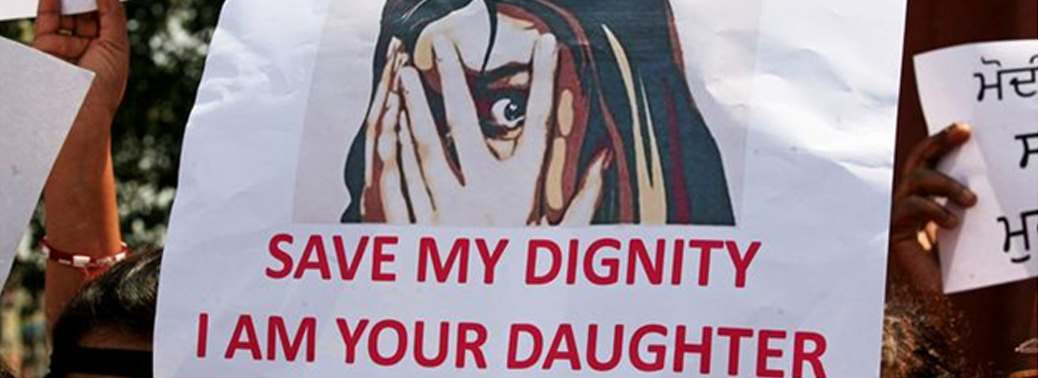
- The recent issue of rape in Hyderabad has triggered an intense debate on sexual violence, and the punishment that should be meted out to perpetrators. Rape is a stigma which exists in the society from a long time. The word rape is legally defined under Section-375[1] of Indian Penal Code, 1860. It defines the rape and also prescribes its punishment
- “While a murderer destroys the physical frame of the victim, a rapist degrades and defiles the soul of a Helpless Female.”

No Stranger to Crime:
- According to a National Crime Records Bureau (NCRB) (2017) report, around 93% Rapes in India Committed by Persons Known to the Victim. Large number of rape cases were filed against “family friends”, employers, neighbours or other known persons.
- In most cases, the victims are specifically not allowed to speak to the investigating team and police officers under the pressure of their families who are stuck between getting justice and what the society says for a girl being raped.
Gender Stereotyping in the Society:
- Socio-culturally transmitted attitudes toward women, rape, and rapists are often internalized from the male dominated viewpoint. The Patriarchal Mindset showcases women as weaker sex, which leads to sexual violence against women.
- This brings out the Misogynist Attitude prevalent in the Indian culture.
Disclosure of Identity and Victim Blaming:
- Despite clear legal prohibitions, victim’s names are used in media and social media, causing real damage to the mental state of the victims. This may intensify the aftershocks on victims including depression, fear, guilt-complex, suicidal-action, diminished sexual interest etc,.
- According to the Section228-A of IPC, no person can disclose the name of the rape victim and if anybody discloses the name, he shall be punished with either description for a term which may extend to two years and shall also be liable for fine.
- Despite these provisions and the punishments clearly specified, nothing much has changed. Poor journalism and the irresponsible social media have breached both ethical and legal norms, after every such incident.
- “Even the dead have their own dignity” – The Supreme Court, in a judgement, held the name and identity of a victim who was either dead or of unsound mind should also not be disclosed even under the authorisation of the next of the kin.
- Victim Blaming in India- In the Indian society, the victim of a sexual offence, especially a victim of rape, is treated worse than the perpetrators of the crime.
- Identification of the survivors, either through names or other characteristics that point out to them have become reasons of ill-treatment and sometimes even abandonment of the survivors by their family.
Justice Verma Committee Report:
- Justice Verma Committee was constituted to recommend amendments to the Criminal Law. The committee was set up after the Nirbhaya incident of December 2012.
- Rape: The Committee recommended that the gradation of sexual offences should be retained in the Indian Penal Code, 1860. The IPC differentiates between rape within Marriage and Outside Marriage. Under the IPC sexual intercourse without consent is prohibited.
- Verbal Sexual Assault: The Committee has suggested that use of words, acts or gestures that create an unwelcome threat of a sexual nature should be termed as sexual assault.
- To ensure Speedy Disposal of Complaints, the Committee proposed a tribunal must be set up and it should not function as a civil court but may choose its own procedure to deal with each complaint.
Way Forward:
- The government should create a separate cell under the Union Home Ministry to address the sexual crimes against the women.
- Schools should take forward the cause of sex education and also the sexual education.
- Reforms in police department to gender sensitize them, in treating the cases involving sexual violence.
- Implementing the recommendations of the Justice Verma Committee, to ensure timely justice.
- Make a directory of sex offenders in the lines of the western countries where such directories are used to trace paedophiles.
- Media, both visual and print media should be penalised, if they disclose name and photo of the victims.
- Conducting a Census of missing children in India, particularly girl children, might give the data of children who might have been trafficked.
- As women go about getting an education, doing work or simply doing daily chores, the inability of state and society to provide them – either safe passage or safe public spaces, effectively reduces their rights to that of second-class citizens.
WHO IS A FARMER?
02, Dec 2019
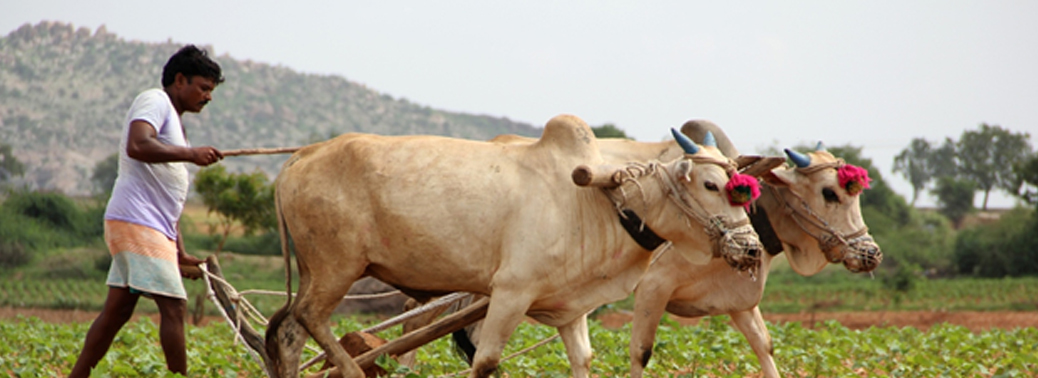
Why in News?
- Union Agriculture Minister has failed to answer the question regarding the definition of farmer, when it was asked in Parliament last week. This has raised a debate in the parliament regarding the issue.
Background:
- In the discussion last week in parliament, MPs pointed out that the number of land holdings do not necessarily equate with the number of farming households.
- It was noted that dairy farmers, fisher-folk, fruit and flower growers, as well as landless agricultural workers who cultivate the land belonging to others, would not fit into a narrow definition where farmers are linked to ownership of land alone.
- The government’s ambiguity has serious implications for the design and beneficiaries of the schemes meant to help them, including its flagship PM-KISAN (Pradhan Mantri Kisan Samman Nidhi).
Definition as per National Policy for Farmers:
- There is a clear and comprehensive definition available in the National Policy for Farmers, which was drafted by the National Commission of Farmers headed by M.S. Swaminathan and officially approved by the Centre in 2007 following consultations with the States.
- As per the Policy, the term ‘FARMER’ will refer to a person actively engaged in the economic and/or livelihood activity of growing crops and producing other primary agricultural commodities and will include all agricultural operational holders, cultivators, agricultural labourers, sharecroppers, tenants, poultry and livestock rearers, fishers, beekeepers, gardeners, pastoralists, non-corporate planters and planting labourers, as well as persons engaged in various farming related occupations such as sericulture, vermiculture and agro-forestry.
- The term will also include tribal families / persons engaged in shifting cultivation and in the collection, use and sale of minor and non-timber forest produce.
Impact of Ambiguity:
- The definition of a farmer is not merely a philosophical or semantic question, but rather has practical implications.
- Most of the schemes meant for farmers’ welfare, including the procurement of wheat and paddy at minimum support prices, are effectively available only for land owners.
- Even in death, those who work on the land may not be identified as farmers for the purposes of counting farmer suicides.
- In practice, those who cultivate or work on the land but do not own it are excluded from access to agricultural credit and interest subvention for farm loans.
- Crop insurance and loan waivers go to loaners so they are left out of that as well.
- Access to subsidised crop inputs is difficult without identification as farmers. In the event of crop failure, compensation is only given to owners.
- Direct income support schemes such as PM-KISAN are limited to owners
- Tax exemption is usually claimed by owners who give an unverified affidavit that they cultivate the land.
Way Ahead:
- S. Swaminathan Commission’s definition should be converted into a legal and actionable tool for identification.
- Already, the revenue department is supposed to annually record who is actually cultivating each piece of land. So, the above step will be useful for this exercise too.
- Apart from adding inclusion criteria other than land-ownership, the Centre must add exclusion criteria so absentee landlords are left out. Otherwise, the farmer who actually takes the risk gets no support, but those who treat land as an investment or speculation get all the benefits.
INDUSTRIAL RELATIONS CODE BILL, 2019
30, Nov 2019
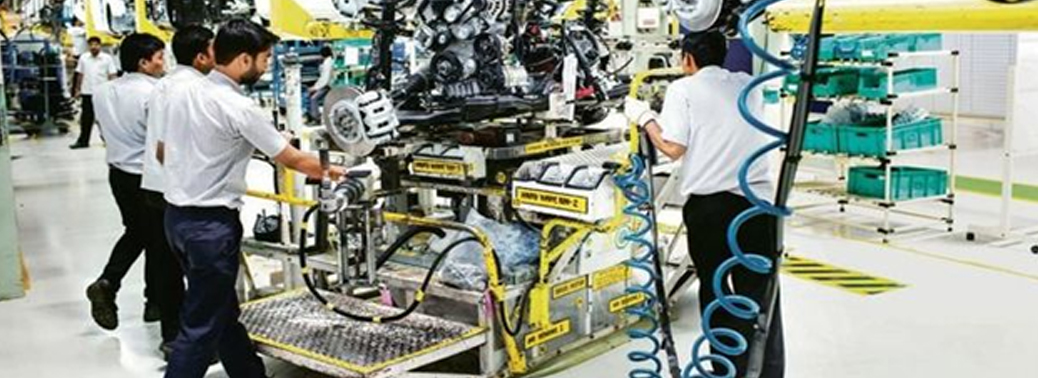
Context:
- The Industrial Relations Code Bill, 2019 bill has been recently introduced in the Lok Sabha.
Background:
- As a part of its ease of doing business initiative, the government has decided subsuming a total of 44 labour laws into four codes — on wages, social security, industrial safety and welfare and industrial relations.
- The Four codes of Labour laws are as:
- 1.Code on Wages Bill
- 2.Code of Occupational, Safety, Health and Working Conditions Bill, 2019
- 3.Code on Industrial Relations
- 4.Code on Social Security
- As part of its commitment to simplify and consolidate labour rules and laws under four codes, the Union Cabinet has already cleared the Occupational, Safety, Health and Working Conditions Code and the Code on Wages Bill.
About the Industrial Relations Code Bill, 2019:
- The Industrial Relations Code proposes to amalgamate the following laws into a single code:
- 1.The Trade Unions Act, 1926
- 2.The Industrial Employment (Standing Orders) Act, 1946
- 3.and The Industrial Disputes Act, 1947.
- It is the Third out of Four Labour Codes that have got approval from the cabinet.
Key Features of the Bill:
- Seeks to allow companies to hire workers on fixed-term contract of any duration.
- Has retained the threshold on the worker count at 100 for prior government approval before retrenchment, but it has a provision for changing ‘such number of employees’ through notification.
- Provides setting up of a two-member tribunal (in place of one member) wherein important cases will be adjudicated jointly and the rest by a single member, resulting speedier disposal of cases.
- Has vested powers with the government officers for adjudication of disputes involving penalty as fines.
- Introduces a feature of ‘recognition of negotiating union’ under which a trade union will be recognized as sole ‘negotiating union’ if it has the support of 75% or more of the workers on the rolls of an establishment.
- As several trade unions are active in companies, it will be tough for any one group to manage 75% support, hence taking away their negotiating rights. In such a case, a negotiating council will be constituted for negotiation.
- Underlines that fixed-term employees will get all statutory benefits on a par with the regular employees who are doing work of the same or similar nature.
- Under the code, termination of service of a worker on completion of tenure in a fixed-term employment will not be considered as retrenchment.
- Proposes setting up of a “re-skilling fund” for training of retrenched employees. The retrenched employee would be paid 15 days’ wages from the fund within 45 days of retrenchment.
GDP GROWTH PLUNGES TO 4.5%
30, Nov 2019

Why in News?
- The government has announced that Growth in the gross domestic product (GDP) in the July-September quarter hit a 25-quarter low of 4.5%.
Agriculture Sector:
- Growth in gross value added (GVA) also dipped to 4.3% in Q2 of 2019-20 from 4.9% in Q1, and 6.9% in the Q2 of last year.
- The agriculture sector saw growth coming in at 2.1% in second quarter of this year compared with 4.9% in Q2 of last year.
- The sector grew just 2.1% over the first six months of the year compared with 5% in the first half of the previous year.
Manufacturing Sector:
- According to the data released, the manufacturing sector contracted 1% in the second quarter of the current financial year, compared with a robust growth of 6.9% in the same quarter of the previous year.
- The manufacturing sector saw an overall contraction of 0.2% in the first half (April to September) of the current financial year compared to a growth of 9.4% in the first half of last year.
- The International Monetary Fund has projected India’s GDP growth at 6.1% in financial year 2019-20 and 7% in 2020-21 in its October 2019 report.
Service Sector:
- Among the services sectors measured, only the ‘Public Administration, Defence & Other Services’ category saw growth quicken in the second quarter of this year, to 11.6%, compared with 8.6% in the same quarter of the previous year.
- The ‘Financial, Real Estate & Professional Services’ category saw growth slow to 5.8% in Q2 of 2019-20, compared with 7% in Q2 of the previous year.

Gross Fixed Capital formation:
- Gross fixed capital formation, which is a measure of the level of investment in the country by both the government and the private sector, grew only 1.02% in the second quarter of this financial year, compared with a growth of 4.04% in the first quarter, and drastically lower than the growth of 11.8% seen in the Q2 of last year.
Consumption:
- Private final consumption expenditure, the closest proxy in the data to a measure of consumption demand, grew 5.06% in the second quarter of this financial year, compared with a growth of 3.14% in the first quarter.
- However, the growth in the second quarter this year is still significantly lower than the growth of 9.79% recorded in the second quarter of the previous year.
OPERATION BLACKBOARD COMES HOME IN TELANGANA
27, Nov 2019
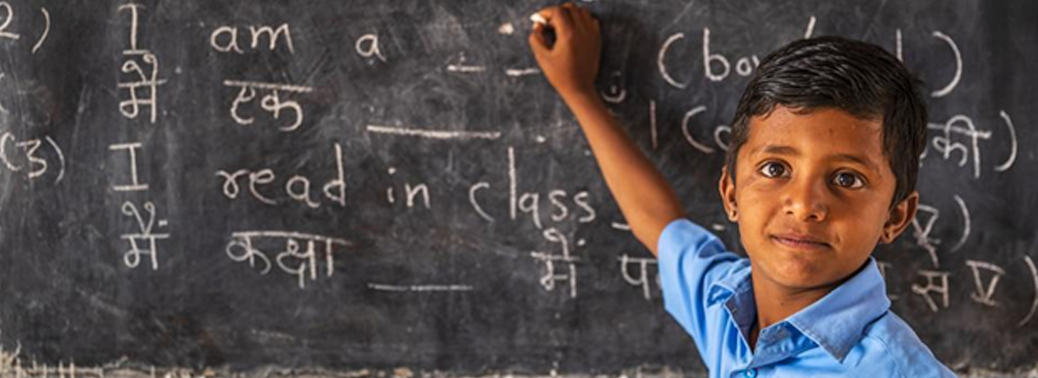
Why in News?
- Over 41,000 women in Telangana’s Sangareddy district can now fell the power of the written word after learning the alphabet for the first time.
About:
- These women were home-schooled by their own children and have cleared the examination conducted by the National Institute of Open Schooling (NIOS).
- The NIOS exam is normally taken by 4,000 to 5,000 neo-literates from each district annually, but that number exceeded the norm ten times due to the Sangareddy programme for female literacy initiated by the then District Collector in 2017.
- The Saakshar Bharat Mission (SBM) imparts functional literacy and numeracy, but faced a shortage of coordinators. So, the Collector decided to rope in school children.
- In 2017, the district administration developed ‘Ammaku Akshara Mala’ (alphabet garland for mother) and roped in students in Classes VII to X.
- They were asked to teach their mothers to read and write the Telugu alphabet at home.
- Most women were part of Self-Help Groups but not literate. The administration identified 52,000 women as eligible to take the exam and sent the list to the Central government.
- Of 48,000 women who took the exam in March 2018, 41,000 passed in writing, reading and numerical skills. In a 15-day literacy module, the women were taught four letters of the Telugu alphabet in a day.
What is Operation Blackboard?
- Operation Blackboard is a centrally sponsored programme which was started in 1987 immediately after the Rajiv Gandhi National Policy on Education (NPE) of 1986 was released to supply the bare minimum crucial facilities to all primary schools in the country.
What is Operation Whiteboard?
- Simdega district of Jharkhand recently launched ‘Operation Whiteboard’ on the lines of ‘Operation Blackboard’ which was launched by the Government of India in 1981.
- The primary goal of the operation is to equip all the classrooms of the government schools of the district with whiteboards, hence ensuring ‘Freedom from Chalk Dust’ to the students as well as teachers.
Operation Digital Blackboard (ODB):
- ODB aims to have digital and interactive boards in every classroom, which is on the lines of Operation Blackboard which was started in 1987 to supply the bare minimum crucial facilities to all primary schools in the country.
- Introduction of the digital board all over the country in government and government aided schools from class 9th onwards as well as in higher education institutions, from the coming session of 2019 itself.
- University Grants Commission (UGC) will be the implementing agency for ODB in Higher Education Institutions (HEIs). It will be implemented as a Central scheme, as a loan from Higher Education Financing Agency (HEFA).
- At school level, Digital / SMART board will be provided in all Government and Government – aided schools by the Central Government in collaboration with the State and UTs.
- It aims at converting a classroom into a digital classroom.
- Ensure availability of e-resources at any time and at any place to students.
- It helps in provisioning of personalized adaptive learning as well as Intelligent Tutoring by exploiting emerging technologies like Machine Learning, Artificial Intelligence & Data Analytics.
HELPING 10-YEAR-OLDS TO READ BY 2030
26, Nov 2019
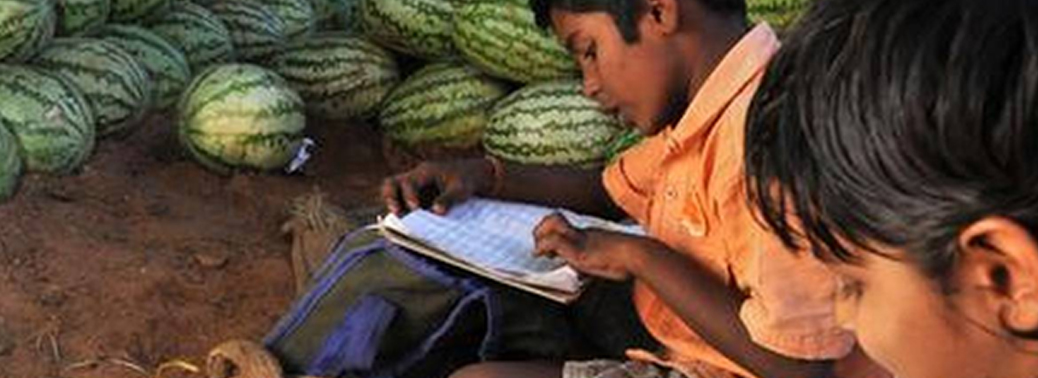
Context:
- India has been successful in increasing access to school, but now the focus must shift to quality.
Global Learning Crisis:
- For most children, turning 10 is an exciting moment. They are learning more about the world and expanding their horizons.
- But too many children — more than half of all 10 year olds in low- and middle-income countries — cannot read and understand a simple story.
- We are in the middle of a global learning crisis that stifles opportunities and aspirations of hundreds of millions of children. That is unacceptable.
- In October, we released data to support a new learning target: by 2030, we want to cut, by at least half, the global level of learning poverty.
Eliminating Learning Poverty:
- Learning to read is an especially critical skill: it opens a world of possibilities, and it is the foundation on which other essential learning is built — including numeracy and science.
- Wiping out learning poverty (defined as the percentage of children who cannot read and understand a simple story by age 10) is an urgent matter.
- It is a key to eliminating poverty in general and boosting shared prosperity. It is a key to helping children achieve their potential.
- But over the last several years, progress in reducing learning poverty has been stagnant.
- Globally between 2000 and 2017, there has only been a 10% improvement in learning outcomes for primary school-aged children.
- If this pace continues, 43% of 10-year-olds will not be able to read in 2030.
- The good news is, the children who will turn 10 in 2030 will be born next year. If we work urgently, there is an opportunity to reverse this trend.
- The target we have set is ambitious but achievable — and should galvanize action toward achieving Sustainable Development Goal (SDG4) — ensuring quality education for all.
- It will require nearly tripling the rate of progress worldwide, which can be done if every country can match the performance of the countries that made the most progress between 2000 and 2015.
Global Challenges:
- The challenges of reducing learning poverty will differ between countries and regions. In some countries, access to school remains an enormous problem — 258 million young people were out of school globally, in 2018.
- In other countries, children are in classrooms but are not learning.
- By setting a global target, the World Bank can work with countries to define their own national learning targets. Cutting learning poverty in half by 2030 is only an intermediate goal. Global ambition is to work with governments and development partners to bring that number to zero.As the largest financier of education in low-and middle-income countries, the World Bank will work with countries to promote reading proficiency in primary schools. Policies include providing detailed guidance and practical training for teachers, ensuring access to more and better age-appropriate texts, and teaching children in the language they use at home.
Setting India as an example:
- In India, the Right-to-Education Act has been successful in increasing coverage and access to school education but now there is an urgent need to shift the focus to quality.
- The decision of India to join the Programme for International Student Assessment and the merger of schemes under Samagra Shiksha are encouraging signs that India is moving in this direction.
- In Kenya, the government’s national reading programme has more than tripled the percentage of grade two students reading at an appropriate level.
- This was accomplished through technology-enabled teacher coaching, teacher guides, and delivering one book per child.
- In Vietnam, a lean, effective curriculum ensures that the basics are covered, there is deep learning of fundamental skills, and all children have reading materials.
- Learning outcomes of Vietnamese students in the bottom 40% of the income ladder are as high, or higher, than the average student in high-income countries.
What can be Done?
- The World Bank is also working with governments and development partners to improve entire education systems, so advancements in literacy can be sustained and scaled up.
- That means making sure children come to school prepared and motivated to learn; teachers are effective and valued and have access to technology; classrooms provide a well-equipped space for learning; schools are safe and inclusive; and education systems are well-managed.
- An ambitious measurement and research agenda supports these efforts and includes measurement of learning outcomes and their drivers, continued research and innovation, and the smart use of new technologies on how to build foundation skills.
- The learning crisis not only wastes the children’s potential, it hurts entire economies.
- It will negatively impact future workforces and economic competitiveness — as the World Bank’s Human Capital Index shows that, globally, the productivity of the average child born today is expected to be only 56% of what it would be if countries invested enough in health and education.
- Eliminating learning poverty must be a priority, just like ending hunger and extreme poverty.
- Even though it is not easy, we cannot back down from the challenge.
GDP SLUMP WILL HIT $5-TRILLION ECONOMY TARGET
23, Nov 2019
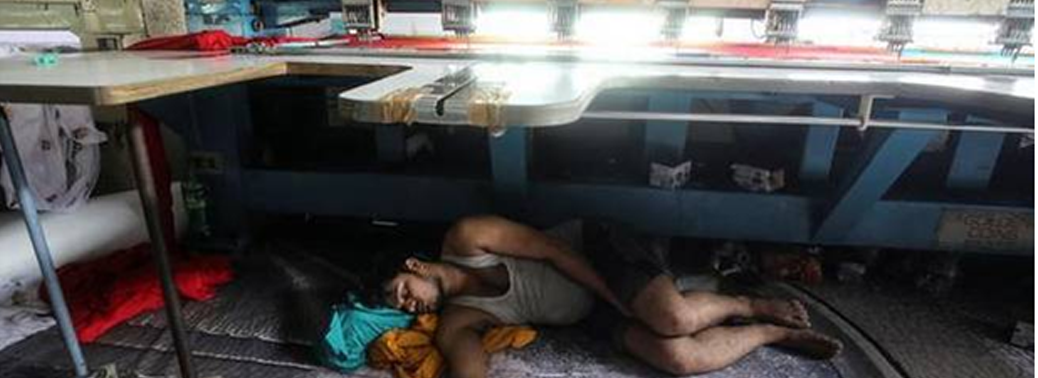
Why in News?
- NITI Aayog has warned the Government that GDP slump will hit $5-trillion economy target.
What did NITI Aayog said?
- The nominal GDP growth — a measure of growth without accounting for inflation — has to be at least 12.4% on an average if that target has to be reached but the current rate was a mere 8% in the first quarter of the current financial year.
- Experts estimate that growth will dip in Q2 compared to Q1 in both real and nominal terms.
- For example, while GDP growth in real terms in Q1 stood at 5%, state-run lender State Bank of India recently estimated that this could dip to 4.2% in Q2, with a corresponding dip in nominal growth as well.
- “Domestic investment and consumption” are the only dependable drivers for sustainable re-acceleration of the economy.
- However a deceleration in investment is visible, primarily in the household sector, due almost entirely to real estate.
- Gross fixed capital formation in the sub-sector of ‘dwellings, other buildings and structures’ fell from 12.8% of GDP in 2011-12 to 6.9% in 2017-18.
- The slowdown in the domestic market is also because of limited availability of capital with the banks which are tied down due to high non-performing assets in heavy industry and infrastructure.
- In the power sector, there is a high cross-subsidization in favour of residential tariff leading to very high industrial tariffs.
- The electric power transmission and distribution (T&D) losses in India stand at 19%, higher than that of Bangladesh and Vietnam.
What are the implications?
- The presentation flagged the urgent need to focus on export of high-value technology and manufacturing goods instead of primary goods currently exported.
- Citing an example, the NITI Aayog chief said 98% of phones exported by India are in the low-value category, to the Middle East and Africa.
- There has been a sharp decline in exports in the textiles from 2017 onwards, according to the presentation.
- Several financial experts have blamed the decline on the November 2016 decision to demonetize high value currency that drained vital liquidity out of the cash-dependent textile market.
THE INDUSTRIAL RELATIONS CODE BILL, 2019
22, Nov 2019

Why in News?
- The Union Cabinet on Wednesday approved The Industrial Relations Code Bill, 2019.
About the Bill:
- The Industrial Relations Code Bill, 2019 proposes to amalgamate The Trade Unions Act, 1926, The Industrial Employment (Standing Orders) Act, 1946, and The Industrial Disputes Act, 1947.
- Apart from offering some degree of flexibility on government permissions for retrenchment, the most important aspect of the Bill is that it presents the legal framework for ushering in the concept of ‘fixed-term employment’ through contract workers on a pan-India basis.
- Currently, companies hire contract workers through contractors.
- With the introduction of fixed-term employment, they will be able to hire workers directly under a fixed-term contract, with the flexibility to tweak the length of the contract based on the seasonality of industry.
- These workers will be treated on a par with regular workers during the tenure of the contract.
- The move to include it in a central law will help in wider reach, and states are expected to follow similar applicability.
- The government had tried a move last year to apply fixed-term employment across “central sphere establishments” (which are establishments under the authority of the central government, Railways, mines, oilfields, major ports, or any other central public sector undertaking) in all sectors, but it failed to elicit the desired results as states did not notify similar provisions for it.
- The Bill now ensures a pan-India impact of this move.
What are the Changes Made in the Bill?
- The threshold required for government permission for retrenchment has been kept unchanged at 100 employees, as against the proposal for 300 employees in an earlier draft of the Bill, which was opposed by trade unions.
- Instead, the government has now provided flexibility for changing the threshold through notification.
- The rigidity of labour laws about laying off labour has often been cited by industry as the main reason limiting scalability and employment generation.
- At present, any company having 100 workers or more has to seek government approval for retrenchment.
- The provision of fixed-term employment, which helps in the flow of social security benefits to all workers along with making it easier for companies to hire and fire, in The Industrial Relations Code Bill.
- Last year, the government had included the category of ‘Fixed Term Employment Workman’ for all sectors in the Industrial Employment (Standing Orders) Act, 1946.
- This was only applicable to ‘central sphere’ establishments, and the states did not follow suit.
Challenges Regarding the Bill:
- While industry has welcomed the changes, others have said that the unclear provision regarding retrenchment would lead to uncertainty and discretionary behaviour during implementation by the central or state government.
- “The moment flexibility is provided for the applicability and then it leaves the matter to the discretion to the appropriate government (states or Centre). Then the clause can be misused.
- Any discretion in law leads to uncertainty, lack of clarity, discriminatory implementation, and provides scope for unnecessary usage.
- The government should be clear whether to increase the threshold or retain the threshold and face the consequences.
- Also, fixed-term employment needs to be introduced with adequate safeguards, otherwise it runs the risk of encouraging conversion of permanent employment into fixed-term employment, he said.
Response from the Industry:
- Industry has welcomed the Bill since it has met their demand of providing flexibility in retrenchment.
- If there is more employment in the organised sector, industry would demand flexibility.
- The original laws were made at a time when one would join and retire from the same company.
- Earlier, there were so many interpretations, and simplifying so many laws into four Codes is a good thing.
- There is no intention of industry to exploit labour, but one cannot run the company to create employment — it has to be commercially viable.
- Today we are competing with global players so there should be a level playing field. We want to protect employment as much as possible, when there is commercial viability.
- There is no unending amount of money available with anyone of us to continue to employ labour when business is not viable.
- Fixed-term employment will help in keeping salaries and facilities to workers such as PF, gratuity, and medical benefits, the same as those for permanent labour
- Inclusion in the central law will also help in applicability of fixed-term employment uniformly across the country.
SPIKE IN INDIAN ROAD ACCIDENTS
20, Nov 2019
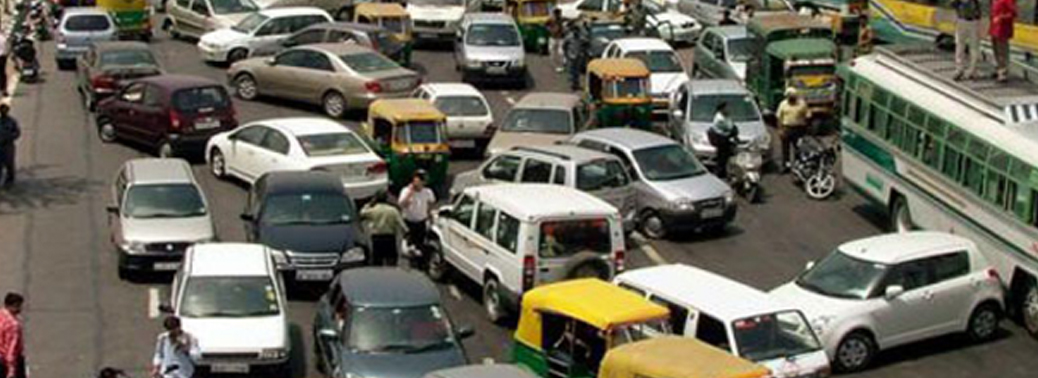
Why in News?
- The Ministry of Road Transport and Highways recently released the annual report on road accidents in India.
What does the Report Say?
- More than 1.5 lakh people lost their lives in road crashes in the country in 2018, registering an increase of 2.4% as compared to the year before, when there were 1.47 lakh fatalities.
- It shows a daily average of 1,280 road crashes and 415 deaths which is 53 crashes and the loss of 17 lives every hour.
- Road traffic injuries constitute the eighth leading cause of deaths in India in 2018.
- Geneva-based World Road Federation’s World Road Statistics 2018 says India is the most unsafe country in the world for road users across 199 countries. It’s followed by China (63,000 deaths) and the U.S. (37,000 deaths).
- The annual report also reveals that of the total people killed in road crash deaths in 2018, 48% were between 18 years and 35 years old. Minors involved in road crash deaths were at 6.6% of the total deaths.
- Among the States, Tamil Nadu (13.7%) topped the country in terms of the total number of road crashes, followed by Madhya Pradesh (11%) and Uttar Pradesh (9.1%).
- The highest road fatalities were observed In Uttar Pradesh (22,256) followed by Maharashtra (13,261) and Tamil Nadu (12,216).

What is the Cause for Accidents?
- Over-speeding is a major cause, accounting for 64.4% of the persons killed.
- This category was followed by driving on the wrong side of the road, which accounted for 5.8% of the accident related deaths.
- Use of mobile phones accounted for 2.4% of the deaths and drunken driving accounted for 2.8% of the persons killed.
What is the Cause for Death?
- Not wearing helmets and seat belts are not causes of crashes, but are critical for avoiding grievous injuries and fatalities.
- As many as 43,614 deaths or 28.8% of total road accident deaths in the country last year were caused due to “non-wearing of helmets”.
- “Non-wearing of seat belts” was linked to 24,435 deaths or 16.1% of total road accident deaths in the country.
What do Experts Say?
- Lot of States have opposed the implementation of the Motor Vehicles Amendment Act or have reduced the fines are amongst the States with the highest road crash fatalities.
- Uttar Pradesh, Gujarat and Uttarakhand were among the States that heavily slashed the penalties levied under the amended law.
- The latest data highlights the urgent need on part of the States to implement key road safety provisions of the Motor Vehicles Amendment Act, 2019
HOUSEHOLD CONSUMER EXPENDITURE SURVEY
19, Nov 2019
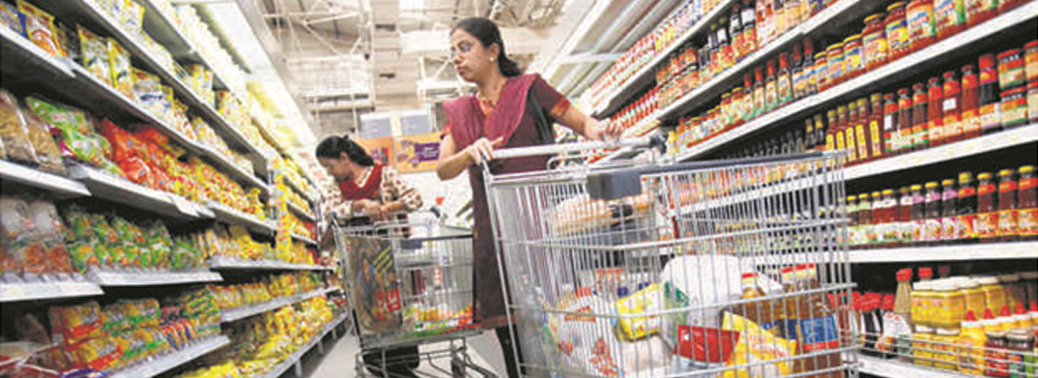
Why in News?
- Govt has scrapped this year’s NSOs Consumer Expenditure survey Over Data Quality.
Consumer Expenditure Survey:
- The Consumer Expenditure Survey (CES) is usually conducted at quinquennial intervals and the last survey on consumer expenditure was conducted in the 68th round (July 2011 to June 2012).
- It is conducted by National Statistical Office (NSO), MoSPI.
- It generates estimates of household Monthly Per Capita Consumer Expenditure (MPCE) and the distribution of households and persons over the MPCE classes.
- It is designed to collect information regarding expenditure on consumption of goods and services (food and non-food) consumed by households.
- The results, after release, are also used for rebasing of the GDP and other Macro-Economic Indicators.
Highlights of the 2018-19 survey:
- Consumer spending is falling and the report has been withheld due to its ‘adverse’ findings.
- There was a significant increase in the divergence in not only the levels in the consumption pattern but also the direction of the change when compared to the other administrative data sources like the actual production of Goods and Services.
Why is the Survey not Published?
- In view of the data quality issues, the Ministry has decided not to release the Consumer Expenditure Survey results of 2017-2018.
- Concerns were raised about the ability/sensitivity of the survey instrument to capture consumption of social services by households especially on health and education.
- The Advisory Committee on National Accounts Statistics has also separately recommended that for rebasing of the GDP series, 2017-18 is not an appropriate year to be used as the new base year.
- The MoSPI is separately examining the feasibility of conducting the next Consumer Expenditure Survey in 2020-2021 and 2021-22 after incorporating all data quality refinements in the survey process.
- The survey allegedly showed that the average amount spent by an Indian in a month fell 3.7% to Rs 1,446 in 2017-18 from Rs 1,501 in 2011-12.
- While consumer spending declined 8.8% in 2017-18 in India’s villages, it rose 2% over six years in cities, it said.
If you’re looking to sell your house in Tulsa, OK, Cash Buyers for Houses is here to help. With their expertise in the real estate market, they can provide you with a quick and hassle-free selling experience. Say goodbye to the complexities of traditional home selling and receive a fair cash offer for your property. Whether your house is in good condition or needs repairs, Cash Buyers for Houses will make an offer. Visit https://www.cash-buyers.net/oklahoma/cash-buyers-for-houses-tulsa-ok/ to get started on selling your house in Tulsa with Cash Buyers for Houses.
MATERNITY SCHEME REACHES ONLY ONE-THIRD OF BENEFICIARIES
19, Nov 2019

Why in News?
- Researchers assert that extrapolation of RTI data show only 31% of eligible mothers got benefits.
About Maternity Benefit Scheme:
- Pradhan Mantri Matru Vandana Yojana (PMMVY) is a maternity benefit programme being implemented in all districts of the country with effect from 1st January, 2017.
- It is a centrally sponsored scheme being executed by the Ministry of Women and Child Development.
- Cash benefits are provided to pregnant women in their bank account directly to meet enhanced nutritional needs and partially compensate for wage loss.
- Beneficiaries receive a cash benefit of Rs. 5,000 in three instalments on fulfilling the following conditions:
1.Early registration of pregnancy
2.Ante-natal check-up
3.Registration of the birth of the child and completion of first cycle of vaccination for the First Living Child of the Family.
- The eligible beneficiaries also receive cash incentive under Janani Suraksha Yojana (JSY). Thus, on an average, a woman gets Rs. 6,000. Implementation of the scheme is closely monitored by the central and state governments through the Pradhan Mantri Matru Vandana Yojana – Common Application Software (PMMVY-CAS). PMMVY-CAS is a web based software application that enables tracking the status of each beneficiary under the scheme, resulting in expedited, accountable and better grievance redressal.
Who are the Beneficiaries?
- All Pregnant Women and Lactating Mothers (PW&LM), excluding those who are in regular employment with the Central Government or the State Governments or PSUs or those who are in receipt of similar benefits under any law for the time being in force.
- All eligible Pregnant Women and Lactating Mothers who have their pregnancy on or after 1st January 2017 for the first child in the family.
What does the RTI Extrapolation say?
- A vital programme to support lactating mothers and pregnant women by compensating them for loss of wages during their pregnancy has been able to reach only less than a third of the eligible beneficiaries.
- Almost 61% of beneficiaries registered under the Pradhan Mantri Matru Vandana Yojana (PMMVY) between April 2018 and July 2019 (38.3 lakh out of the total 62.8 lakh enrolled) received the full amount of ₹6,000 promised under the scheme.
- The scheme brings under its ambit 23% of all births and pays full benefits to a mere 14% of all births, which was at 270.5 lakh for 2017.
- The data extrapolated from the RTI reply is also consistent with a survey coordinated by three development economists.
- The survey team covered a district each in six States — Chhattisgarh, Himachal Pradesh, Jharkhand, Madhya Pradesh, Uttar Pradesh and Odisha — in 2019 to interview women and inspect anganwadis. A total of 706 women were interviewed, including 342 pregnant and 364 lactating women.

Inadequate Awareness:
- The study found that only 50% of pregnant women and 57% of nursing women surveyed were eligible for the scheme.
- It also throws light on the need for higher awareness among the pool of beneficiaries — only 66% of pregnant women and 69% of nursing women knew about the scheme.
- Only 8% of pregnant women and 23% of nursing mothers received some benefits.
- Several factors impeded proper implementation of the programme that aims to fight malnutrition among children.
- These include an application form of about 23 pages, a slew of documents such as mother-child protection card, Aadhaar card, husband’s Aadhaar card and bank passbook aside from linking their bank accounts with Aadhaar.
- The requirement to produce the husband’s Aadhaar card results in excluding women who may be living with men they are not married to, single mothers and those who may be staying at their natal home.
- Women must also have the address of their marital home on their Aadhaar card, which often results in newlyweds being either left out or forced to go from door-to-door when pregnant and needing rest and care.
- The survey findings also highlight the need to pay greater attention to the special needs of pregnancy — good food, extra rest and health care.
- Only 22% of the nursing women surveyed reported that they had been eating more than usual during their pregnancy and the average weight gain was barely 7kg when it should be at least 13-18kg.
- Almost all the respondents had done household work regularly during their last pregnancy — 21% of nursing women said that they had no one to help them with domestic chores and 63% said that they had been working right until the day of delivery.
DEPOSIT INSURANCE COVER TO BE RAISED?
19, Nov 2019

Why in News?
- The central government now plans to raise the cover of deposit insurance after the failure of the Punjab and Maharashtra Co-operative (PMC) Bank on the low level of insurance for deposits held by Customers in Banks.
About Deposit Insurance:
- Currently, in the event of a bank going bust in India, a depositor has claim to a maximum of Rs 1 lakh per account as insurance cover — even if the deposit in their account far exceeds Rs 1 lakh. This amount is termed ‘deposit insurance’.
- Depositors holding more than Rs 1 lakh in their account have no legal remedy in case of the collapse of the bank.
- The cover of Rs 1 lakh per depositor is provided by the Deposit Insurance and Credit Guarantee Corporation (DICGC), a fully owned subsidiary of the Reserve Bank of India.
- The Rs 1 lakh-cover is for deposits in commercial banks, regional rural banks (RRBs), local area banks (LABs), and cooperative banks.
How Depositors Claim the Money from the Failed Bank?
- The DICGC does not deal directly with depositors. The RBI (or the Registrar), on directing that a bank be liquidated, appoints an official liquidator to oversee the winding up process.
- Under the DICGC Act, the liquidator is supposed to hand over a list of all the insured depositors (with their dues) to the DICGC within three months of taking charge.
- The DICGC is supposed to pay these dues within two months of receiving this list.
- In FY19, it took an average 1,425 days for the DICGC to receive and settle the rest claims on a de-registered bank.
What is the Issue?
- As per DICGC data, over the years the level of insured deposits as a percentage of assessable deposits has declined from a high of 60.5% in 2007-08 to 28.1% in 2018-1.
- At the end of March 2019, the number of registered insured banks with DICGC stood at 2,098 — comprising 103 commercial banks, 1,941 cooperative banks, 51 RRBs, and three LABs.
- DICGC last revised the deposit insurance cover to Rs 1 lakh on May 1, 1993 — raising it from Rs 30,000, which had been the cover from 1980 onward.
- DICGC charges 10 paise per Rs 100 of deposits held by a bank. The premium paid by the insured banks to the Corporation is required to be borne by the banks, and not be passed on to depositors.
- As per DICGC data, commercial banks paid a total premium of Rs 11,190 crore in 2018-19, while cooperative banks paid a premium of Rs 850 crore to cover deposits against the risk of default.
- As for cooperative banks, only 44.5% of their assessable deposits were covered in 2018-19, while for commercial banks this ratio was 25.7%.
- Commercial banks account for the largest share of bank deposits in India.
SUPREME COURT’S JUDGMENT ON ESSAR’S INSOLVENCY CASE
18, Nov 2019

Why in News?
- The Supreme Court has recently given its judgement in the Essar Insolvency case that has paved the way for ArcelorMittal and Nippon Steel to take over debt-laden Essar Steel.
What is the Issue?
- In March 2019, National Company Law Tribunal (NCLT) approved global steel-giant ArcelorMittal’s bid for Essar Steel.
- The Committee of Creditors (CoC) approved the resolution plan offered by the ArcelorMittal. Under the resolution plan, ArcelorMittal offered an advance cash payment of about ₹42,000 crore to the financial creditors and capital infusion of ₹8,000 in the next few years.
- However, the offer did not have much for operational creditors to Essar Steel.
- In 2019, the National Company Law Appellate Tribunal (NCLAT) cleared the CoC’s plan but changed the financial distribution plan by ordering an equal recovery plan for all creditors, including financial and operational creditors.
What did SC Say?
- Wisdom of CoC: It is the commercial wisdom of the requisite majority (66%) of the CoC under the Insolvency and Bankruptcy Code (IBC) to negotiate and accept a resolution plan, which may involve differential payment to different classes of creditors.
- Principle of Equality: The Court held that the equality principle cannot be stretched to treating unequal’s equally.
- This will destroy the very objective of the IBC to resolve stressed assets. Equitable treatment is to be accorded to each creditor depending upon the class to which it belongs: secured or unsecured, financial or operational.
- Restriction on Tribunals: Tribunals have no “residual equity jurisdiction” to interfere in the merits of a business decision taken by the CoC. This implies that the NCLT and NCLAT cannot interfere with the commercial decisions taken by the CoC.
- Financial vs. Operational Creditors: The Court upheld the primacy of financial creditors over operational creditors in the distribution of funds received under the corporate insolvency scheme.
- The Court explained that financial creditors are capital-providers for companies, i.e. help companies to purchase assets and run business operations.
- Operational creditors, in a way, are beneficiaries of amounts lent by financial creditors.
- Relaxation of Resolution Deadline: The Supreme Court has done away with the 330-day mandatory deadline for the resolution of insolvency and bankruptcy cases after which liquidation is invoked. The bench allowed a bit of flexibility by allowing exceptions where the resolution plan is on the verge of being finalised.
- The 330-day mark is violation of Article 14 (right to equal treatment) of the Constitution and Article 19(1)(g) ( Right to carry any business) of the Constitution.
Insolvency Resolution Process in India:
- Eligibility: Under IBC, companies (both private and public limited company) and Limited Liability Partnerships (LLP) can be considered as defaulting corporate debtors.
- A corporate debtor is any corporate organization which owes a debt to any person.
- Default Amount: The Insolvency and Bankruptcy Code can be triggered if there is a minimum default of Rs 1 lakh.
- This process can be triggered by way of filing an application before the National Company Law Tribunal (NCLT).
- Resolution Initiation: The process can be initiated by two classes of creditors which would include financial creditors and operational creditors.
- Creditors: A Creditor means any person to whom a debt is owed and includes a financial creditor, an operational creditor, etc.
- Financial Creditors: The financial creditor in simple terms is the institution that provided money to the corporate entity in the form of loans, bonds etc. E.g. banks.
- Operational Creditors: An operational creditor is the entity who has a claim for providing any of the four categories to the defaulted corporate- goods, services, employment and Government dues (central govt, state or local bodies).
- Appointment of Interim Resolution Professional: As soon as the matter is admitted by the NCLT, the NCLT proceeds with the appointment of an Interim Resolution Professional (IRP) who takes over the management of the defaulting debtor.
- Committee of Creditors (CoC): A committee consisting only of the Financial Creditors i.e. the CoC is formed by the IRP.
- Only operational creditors having aggregate dues of at least 10% of the total debt are invited into the meeting CoC (Operational creditors are not a member of CoC). The operational creditors don’t have any voting power.
- Corporate Insolvency Resolution Process (CIRP): The Corporate Insolvency Resolution Process (CIRP) process includes necessary steps to revive the company such as raising fresh funds for operation, looking for new buyer to sell the company as going concern, etc.
- The CoC takes a decision regarding the future of the outstanding debt owed to it. The resolution plan can be implemented only if it has been approved by 66% of the creditors in the CoC
- Liquidation Proceedings: In the event a resolution plan is not submitted or not approved by the committee of creditors (COC), the CIRP process is deemed to have failed. In such a situation the liquidation proceedings commences subject to the order of the tribunal.
BASE YEAR IN GDP CALCULATIONS
14, Nov 2019
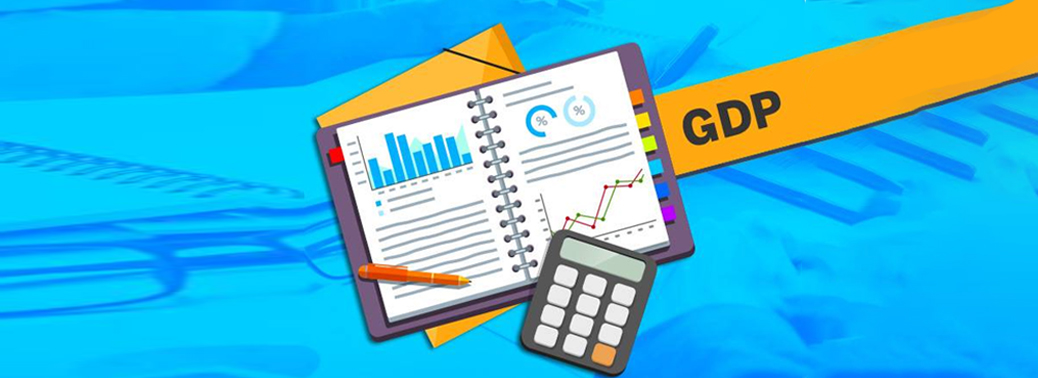
Why in News?
- At a time when India is facing an economic slowdown in GDP growth the Ministry of Statistics and Programme Implementation announced that the new base year for the GDP series will be decided in a few months.
Base Year:
- The base year of the national accounts is chosen to enable inter-year comparisons.
- It gives an idea about changes in purchasing power and allows calculation of inflation-adjusted growth estimates.
- The last series has changed the base to 2011-12 from 2004-05.
- The base year is a benchmark with reference to which the national account figures such as gross domestic product (GDP), gross domestic saving, gross capital formation are calculated.
How is a Base Year calculated?
- In India, the first estimates of national income were published by the Central Statistical Organisation (CSO) in 1956 taking 1948-49 as the base year.
- With the gradual improvement in availability of data, the methodology was revised.
- Earlier, CSO depended on the population figures in the National Census to estimate the workforce in the economy.
- Therefore, the base year always coincided with the census figures like 1970-71, 1980-81 etc.
- Subsequently, CSO decided that the National Sample Survey (NSS) figures on the workforce size were more accurate and hence, the base year would change every five years when the NSS conducted such survey.
- This system was started from 1999 when the base year was revised from 1980-81 to 1993-94.
Need and Changes:
- The base year prices are termed as at constant prices. This reduces all the data to a comparable benchmark, base year price.
- The base year is a representative year which must not experience any abnormal incidents such as droughts, floods, earthquakes etc.
- It is a which is reasonably proximate to the year for which the national accounts statistics are being calculated.
- The base year has to be revised periodically in order to reflect the structural changes taking place within an economy, such as increasing share of services in GDP.
- The more frequently the base year can be updated, the more accurate the statistics will be.
SHRINKAGE IN IIP RECORDED THE LOWEST IN 8 YEARS
12, Nov 2019
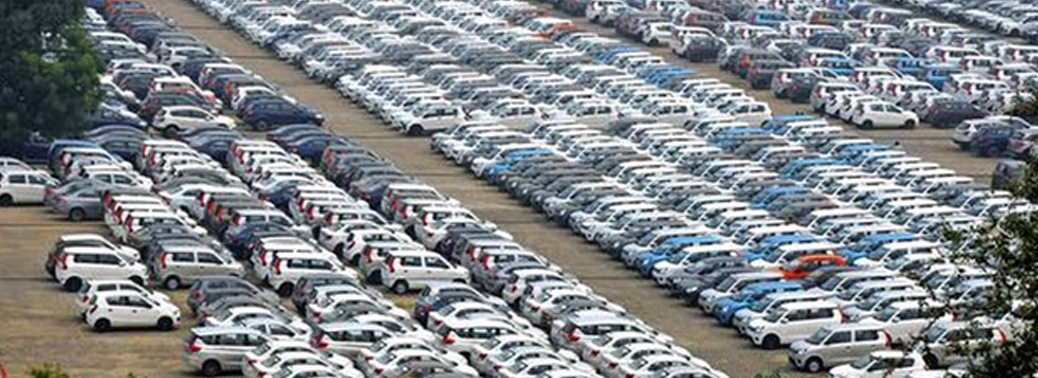
Why in News?
- According to official data released recently, Industrial activity in September contracted sharply by 4.3%, a historical low, driven by major slowdowns in the capital goods, mining, and manufacturing sectors.
Historical Shrinkage:
- The contraction in the Index of Industrial Production (IIP) in September was compared with the contraction of 1.1% in August. The Index had grown 4.3% in September of the previous year.
- “This is the first time after November 2012 that all three broad-based sectors have contracted and the lowest monthly growth in the 2011-12 base year series. “In the old (2004-05) base, IIP in October 2011 contracted by 5%.”
- “The Indian economy is presently facing a structural growth slowdown originating from declining household savings rate, and low agricultural growth”.
- “Low agricultural growth is feeding into low agricultural and non-agricultural wage growth in rural areas, which is impacting rural demand adversely.”
| Various Sectors | Growth rate in September (%) | Growth rate in August (%) |
|---|---|---|
| Capital Goods Sector | Decreased by 20.7 | Decreased by 21 |
| Mining Sector | Decreased by 8.5 | Increased by 0.1 |
| Manufacturing Sector | Decreased by 3.9 | Decreased by 1.2 |
| Electricity Sector | Decreased by 2.6 | Decreased by 0.9 |
| Consumer Durables Sector | Decreased by 9.9 | Decreased by 9.1 |
| Consumer Non-durables Sector | Decreased by 0.4 | Increased by 4.1 |
About IIP:
- IIP is a composite indicator measuring changes in the volume of production of a basket of industrial products over a period of time, with respect to a chosen base period.
- It is compiled and published on a monthly basis by the Central Statistics Office (CSO) under the Ministry of Statistics and Programme Implementation with a time lag of six weeks from the reference month.
- Base year for IIP is 2011-2012 (Earlier 2004-05) i.e. it is calculated on the basis of their share of GDP at factor cost during 2011-12.
- The revised IIP (2011-12) reflects the changes in industrial sector and also aligns it with base year of other macroeconomic indicators like Wholesale Price Index (WPI) and Gross Domestic Product (GDP).
- IIP covers 865 (Older series 682) items comprising :
1.Manufacturing (809 items, Older series 620 items) – 77.63%
2.Mining (55 items, Older Series 61 items) – 14.37%
3.Electricity (1 item) – 7.99%
- The eight Core Industries comprise nearly 40.27 % of the weight of items included in IIP. They are :
1.Coal (10.33%)
2.Crude oil (8.98%)
3.Natural gas (6.88%)
4.Refinery products (28.04%)
5.Fertilizers (2.63%)
6.Steel (17.92%)
7.Cement (5.37%)
8.Electricity (19.85%)
STEEL SCRAP RECYCLING POLICY
11, Nov 2019
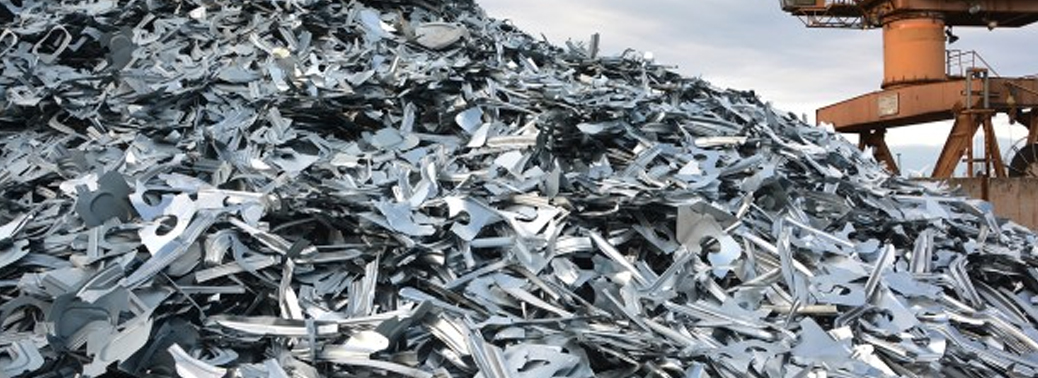
Why in News?
- Ministry of Steel has issued the Steel Scrap Recycling Policy.
Background:
- Steel Ministry’s endeavor is to develop a globally competitive steel industry by adopting state of the art environment friendly technologies.
- Ferrous Scrap being the primary raw material for electric arc furnace (EAF) and induction furnace (IF) based steel production, the policy envisages a framework to facilitate and promote establishment of metal scrapping centers in India. This will ensure scientific processing & recycling of ferrous scrap generated from various sources and a variety of products.
- The policy framework shall provide standard guidelines for collection, dismantling and shredding activities in an organized, safe and environmentally sound manner.
- Steel is a material most conducive for circular economy as it can be used, reused and recycled infinitely.
- While iron ore remains the primary source of steel making, used or re-used steel in the form of Scrap is the secondary raw material for the steel industry.
- Indian steel industry is characterized by the presence of a large number of small steel producers who utilize scrap with other inputs in EAF/IF for steel making.
Objectives:
- To promote circular economy in the steel sector.
- To promote a formal and scientific collection, dismantling and processing activities for end of life products that are sources of recyclable (ferrous, non- ferrous and other non-metallic) scraps which will lead to resource conservation and energy savings and setting up of an environmentally sound management system for handling ferrous scrap.
- Processing and recycling of products in an organized, safe and environment friendly manner.
- To evolve a responsive ecosystem by involving all stakeholders.
- To produce high quality ferrous scrap for quality steel production thus minimizing the dependency on imports.
- To decongest the Indian cities from end-of-live vehicle (ELVs) and reuse of ferrous scrap.
- To create a mechanism for treating waste streams and residues produced from dismantling and shredding facilities in compliance to Hazardous & Other Wastes (Management & Trans boundary Movement) Rules, 2016 issued by MoEF & CC.
- To promote 6Rs principles of Reduce, Reuse, Recycle, Recover, Redesign and Remanufacture through scientific handling, processing and disposal of all types of recyclable scraps including non-ferrous scraps, through authorized centers / facility.
Significance:
- The availability of scrap is a major issue in India and in 2017 the deficit was to the tune of 7 million Tons. This was imported at the cost of more than Rs. 24,500 crores (approx.) in 2017-18.The gap between demand and supply is can be reduced in the future and the country may be self-sufficient by 2030.This is mainly because with the increase in consumption of steel in the recent past and ELVs, the generation of scrap is likely to be increased considerably.This scrap has to be channelized so that the same can be utilized for steel production in an environmentally friendly manner.
- The scrapping policy shall ensure that quality scrap is available for the steel industry.
National Steel Policy 2017:
- National Steel Policy 2017 (NSP-2017) aims to develop a globally competitive steel industry by creating 300 Million TPA Steel production capacity by 2030 with a contribution of 35-40% from EAF/IF route.
- The availability of raw materials at competitive rates is imperative for the growth of the steel industry and to achieve NSP-2017 target. Thus, the availability of right quality of scrap, in adequate quantity is one of the critical factors for the future growth for both EAF/IF sector & primary sector.
- Scrap based steel making technologies have been envisaged as one of the important options to reduce GHG emission intensity. This shall feature as an important initiative of the steel sector to minimize Green House Gas (GHG) emissions.
MOODY DOWNGRADES INDIA’S RATING
09, Nov 2019
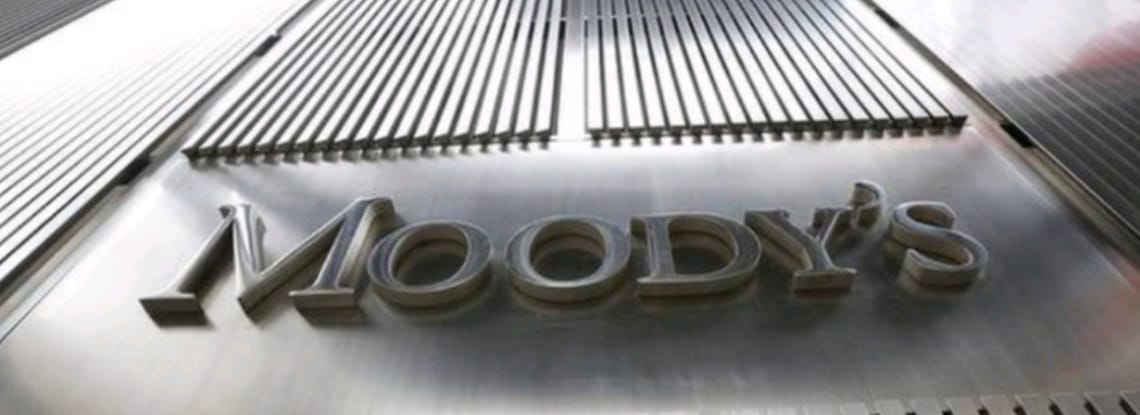
Why in News?
- Global ratings agency Moody’s Investors Service has recently cut India’s ratings outlook to ‘negative’ from ‘stable’ but affirmed the Baa2 foreign-currency and local-currency long-term issuer ratings.
Reason behind Moody’s Rate Cut:
- A crunch that started out in the non-banking financial institutions (NBFIs) spreading to retail businesses, car makers, home sales and heavy industries has made India’s growth outlook deteriorated this year,
- Government’s policy ineffectiveness in addressing economic weakness has led to an increase in debt burden which is already at high levels.
- A breach of the government’s target of 3.3 per cent, as slower growth and a surprise corporate-tax cut affects revenue.
Impact:
- Reduction in outlook is the first step towards an investment downgrade, as India is now just a notch above the investment grade country rating.
- An actual downgrade in country ratings can lead to massive foreign fund outflows.
- However, if the government is able to address fiscal deficit concerns through higher fund raising from stake sales, the rating agencies tend to revise up their outlook.
About Moody’s Investor Service:
- Moody’s Investors Service, often referred to as Moody’s, is the bond credit rating business of Moody’s Corporation.
- They provide international financial research on bonds issued by commercial and government entities.
- Moody’s, along with Standard & Poor’s and Fitch Group, is considered one of the Big Three credit rating agencies.
Credit Rating Categories:
| S.No | CREDIT RATING | DESCRIPTION |
|---|---|---|
| 1. | AAA | Highest credit quality that denotes the lowest expectations of default risk. |
| 2. | AA+/AA/AA- | Very high credit quality. AA ratings denote expectations of very low default risk. They indicate very strong capacity for payment of financial commitments. |
| 3. | A+/A/A- | High credit quality that denotes expectations of low default risk. The capacity for payment of financial commitments is considered strong, however, vulnerability to adverse business or economic conditions exists. |
| 4. | BBB+/BBB/BBB- | Good credit quality that indicates that expectations of default risk are currently low. The capacity for payment of financial commitments is considered adequate, but adverse business or economic conditions are more likely to impair this capacity. |
| 5. | BB+/BB/BB- | This rating indicates an elevated vulnerability to default risk, particularly in the event of adverse changes in business or economic conditions over time; however, business or financial flexibility exists that supports the servicing of financial commitments. |
| 6. | B+/B/B- | This rating indicates that material default risk is present, but a limited margin of safety remains. Financial commitments are currently being met; however, capacity for continued payment is vulnerable to deterioration in the business and economic environment. |
| 7. | CCC+/CCC/CCC- | Substantial credit risk exists in this rating, where the default is a real possibility. |
| 8. | CC | This rating shows a very high level of credit risk with a possibility of defaults. |
| 9. | C | This rating shows that a default or default-like process has begun, or the issuer is in a standstill. |
| 10. | DDD/RD/SD/DD/D | This indicates that the issuer has entered into bankruptcy filings, administration, receivership, liquidation or other formal winding-up procedure or has ceased business. |
RBI PANEL MOOTS TIGHTER NORMS FOR CICS
08, Nov 2019

Why in News?
- In 2018, Infrastructure Leasing and Financial Company (IL&FS), a core Investment company (CIC) with over 300 subsidiaries, defaulted on its payment following which over Rs 90000 crore worth of combined banking sector exposure was declared as non-performing or bad asset in the subsequent months.
- Experts have been seeking a review of CIC guidelines ever since.
- A working group formed by Reserve Bank of India has now suggested simplified structure for CICs.
Core Investment Companies (CIC):
- A core investment company is a non-banking financial company (NBFC) which carries on the business of acquisition of shares and securities and holds not less than 90 per cent of its net assets in the form of investment in equity shares, preference shares, bonds, debentures, debt or loans in group
- In August 2019, there were 63 CICs registered with RBI.
Concerns:
- Unlike NBFCs which are required to constitute board level committees, no such standards are mandated for CICs.
- The same director could be part of boards of multiple companies in a group, including CICs.
- In a few cases, the working group said, “it has been observed that the CIC had lent funds to group companies at zero percent rate of interest with bullet repayment of 3-5 years and without any credit appraisal”.
Rules for Core Investment Companies as suggested by the RBI Panel:
- It is suggested that such entities should only have a two-tier structure, and stronger boards, with at least 50% independent directors.
- The group has also recommended formation of board level committees for audit and remuneration for CICs as well as group risk management committees to address the concerns over corporate governance that were compromised over the years with opaque ownership structures in large conglomerates.
- At least one third of the board should comprise of independent members if chairperson of the CIC is non-executive, otherwise at least half of the board should comprise of independent member.
- It was also suggested that Audit Committee of the Board should be chaired by an independent director and the committee should meet at least once a quarter.
- It is suggested that capital contribution by a CIC in a step-down CIC, over and above 10% of its owned funds, should be deducted from its adjusted net worth.
- Step-down CICs should not be permitted to invest in any other CIC, but can ‘freely’ invest in other group companies. The number of layers of CICs in a group should be restricted to two. As such, any CIC within a group shall not make investment through more than a total of two layers of CICs, including itself.
ALTERNATIVE INVESTMENT FUNDS (AIFS)
08, Nov 2019

Why in News?
- The Union Cabinet has recently approved the creation of an Alternative Investment Fund (AIF) of Rs. 25,000 crores for the realty sector. This is to provide last-mile funding for stalled affordable and middle-income housing projects across the country.
Key Features of the Decision:
- The fund size is of Rs. 25,000 crores with the government providing Rs. 10,000 crore and the State Bank of India and the Life Insurance Corporation providing the balance.
- The fund was set up as Category-II Alternative Investment Fund registered with the SEBI and will be managed by SBICAP Ventures Limited.
- The open-ended fund is expected to increase in time. The government is also in talks with sovereign bonds and pension funds to put in money in this fund further.
- The Cabinet also approved the establishment of a ‘Special Window’ to provide priority debt financing for completion of stalled housing projects in the affordable and middle-income housing sector.
What is Alternative Investment Fund:
- AIFs refers to any privately pooled investment fund, (whether from Indian or foreign sources), in the form of a trust or a company or a body corporate or a Limited Liability Partnership (LLP).
- In India, AIFs are private funds which are otherwise not coming under the jurisdiction of any regulatory agency in India, since it does not include funds covered under the SEBI (Mutual Funds) Regulations, 1996, SEBI (Collective Investment Schemes) Regulations, 1999 or any other regulations of the Board to regulate fund management activities.
ADJUSTED GROSS REVENUE (AGR) IN TELECOM SECTOR
05, Nov 2019

Why in News?
- In a strongly-worded order, the Supreme Court of India upheld the Department of Telecom (DoT)’s interpretation of “adjusted gross revenue” (AGR).
- This came as a huge blow to telecom service providers.
- Following the order, the telcos are now staring at dues of an estimated ₹1.4 lakh crore, which needs to be paid to the government within three months.
- Most industry players and analysts have argued that the payout of the huge amount could be the final straw for the already distressed sector.
AGR:
- Adjusted Gross Revenue (AGR) is the usage and licensing fee that telecom operators are charged by the Department of Telecommunications (DoT).
- It is divided into spectrum usage charges and licensing fees, pegged between 3-5 percent and 8 percent respectively.
- The definition of AGR has been under litigation for 14 years.
- While telecom companies argued that it should comprise revenue from telecom services, the DoT’s stand was that the AGR should include all revenue earned by an operator, including that from non-core telecom operations.
- The AGR directly impacts the outgo from the pockets of telcos to the DoT as it is used to calculate the levies payable by operators.
- Currently, telecom operators pay 8% of the AGR as licence fee, while spectrum usage charges (SUC) vary between 3-5% of AGR.
Why do telcos need to pay out Large Amounts?
- Telecom companies now owe the government not just the shortfall in AGR for the past 14 years but also an interest on that amount along with penalty and interest on the penalty.
- While the exact amount telcos will need to shell out is not clear, as in a government affidavit filed in the top court, the DoT had calculated the outstanding licence fee to be over ₹92,000 crore.
- However, the actual payout can go up to ₹1.4 lakh crore as the government is likely to also raise a demand for shortfall in SUC along with interest and penalty.
- Of the total amount, it is estimated that the actual dues is about 25%, while the remaining amount is interest and penalties.
Concerns:
- The telecom industry is reeling under a debt of over ₹4 lakh crore and has been seeking a relief package from the government.
- Even the government has on various occasions admitted that the sector is indeed undergoing stress and needs support.
- Giving a ray of hope to the telecom companies, the government recently announced setting up of a Committee of Secretaries to examine the financial stress in the sector, and recommend measures to mitigate it.
“GLOBAL MICROSCOPE 2019: THE ENABLING ENVIRONMENT FOR FINANCIAL INCLUSION REPORT”.
05, Nov 2019
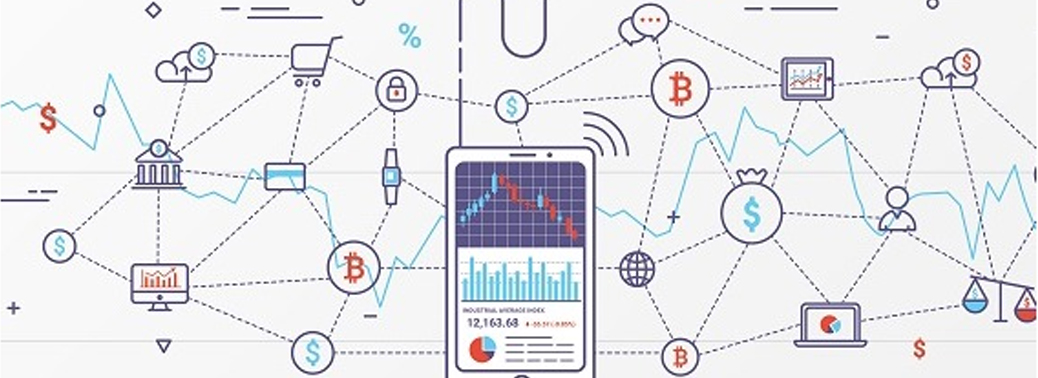
Why in News?
- The Economist Intelligence Unit has released the 2019 edition of “Global Microscope: The enabling environment for Financial Inclusion report”.
- The report assessed 55 countries based on enabling environment for financial access.
- The report is a benchmarking index that assesses enabling environment for financial access in 55 countries.
Key Findings of the Report with Respect to India:
- As per the report, India was placed at the 5th spot in the nations having the most conducive environments for inclusive finance.
- The overall environment for financial inclusion has improved globally with India, Colombia, Peru, Uruguay and Mexico having the most favourable conditions for inclusive finance.
- India is among top nations with most conducive environment for financial inclusion in terms of allowing non-banks to issue e-money, proportionate customer due diligence and effective consumer protection.
Government Interventions in this Aspect:
- RBI has released the Enabling Framework for Regulatory Sandbox (RS), which creates the basis for a regulatory sandbox that will allow fintech start-ups to live-test innovative products and services.
- Reserve Bank has prepared a draft National Strategy for Financial Inclusion to deepen financial services coverage in the country.
- The long-awaited strategy is expected to be finalised in 2019 and will cover a five-year period.
- The RBI has set up a high-level committee to review the existing status of digitisation and devise a medium-term strategy for increasing digital payments.
About the Report:
- Produced by Economist Intelligence Unit (EIU), the research and analysis division of The Economist Group.
- It is created in 1946 and is the world leader in global business intelligence.
- The 2019 edition of Global Microscope report features 11 new gender focussed indicators that measure financial inclusion for both women as well as men.
Domains Covered under the Survey:
- Government and Policy Support
- Products and Outlets
- Stability and Integrity
- Consumer Protection
- Infrastructure
MERGER OF BSNL AND MTNL
30, Oct 2019
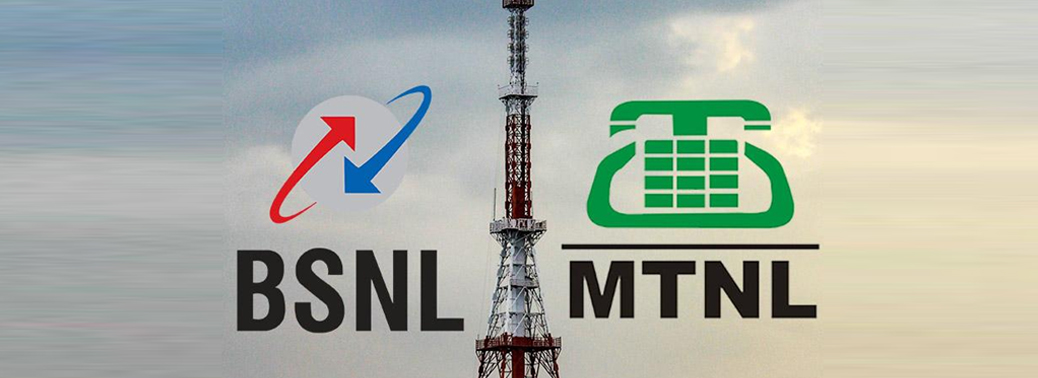
Why in News?
- In an effort to revive the beleaguered state-owned telecom firms BSNL and MTNL, the Union Cabinet on Wednesday approved a package worth nearly ₹70,000 crore. The Cabinet, chaired by Prime Minister Narendra Modi, also gave an in-principle nod for the merger of the two entities.
The Crisis:
- BSNL is in extreme financial trouble. The company has been in this situation for a while and the condition has worsened to an extent that it is not able to pay salaries to its employees.
- BSNL has been in trouble since the last 10 years due to poor government policies and delays in bringing new infrastructure. The inferior infrastructure, as well as the company structure, have further resulted in this situation. Even the Department of Telecommunications has asked BSNL not to go to banks for getting more loans.
- Main reasons are stiff competition in mobile segment, high employee cost and absence of 4G services (except in few places for BSNL) in the data-centric telecom market which is eroding the competitive strength. Human resource comprises 5% of cost for other telecom operators, for BSNL and MTNL the number is over 70%.
Recent Cabinet Decisions:
- Administrative allotment of spectrum for 4G services to BSNL and MTNL so as to enable these PSUs to provide broadband and other data services.
- The said Spectrum will be funded by the Government of India by capital infusion in these PSUs at a value of Rs 20,140 Cr in addition; the GST amount of Rs 3,674 Cr to this spectrum value will also be borne by the Government of India through Budgetary resources.
- By using this spectrum allotment, BSNL and MTNL will be able to deliver 4G services, compete in the market and provide high speed data using their vast network including in rural areas.
- BSNL and MTNL will also raise long-term bonds of Rs 15,000 Cr for which sovereign guarantee will be provided by the Government of India (GoI). With the said resources, BSNL and MTNL will restructure their existing debt and also partly meet CAPEX, OPEX and other requirements.
- BSNL and MTNL will also offer Voluntary Retirement to their employees, aged 50 years and above through attractive Voluntary Retirement Scheme (VRS), the cost of which will be borne by the Government of India through budgetary support. The ex-gratia component of VRS will require Rs. 17,169 Cr in addition, GoI will be meeting the cost towards Pension, Gratuity and Commutation. Details of the scheme will be finalised by BSNL/MTNL.
- BSNL and MTNL will monetise their assets so as to raise resources for retiring debt, servicing of bonds, network upgradation, expansion and meeting the operational fund requirements.
- In-principle merger of BSNL and MTNL
Benefits:
- It is expected that with the implementation of said revival plan, BSNL and MTNL will be able to provide reliable and quality services through its robust telecommunication network throughout the country including rural and remote areas.
EASE OF DOING BUSINESS INDEX
25, Oct 2019

Why in News?
- India climbed 14 ranks in the World Bank’s Ease of Doing Business 2020 survey to stand at 63, among 190 countries, making it the one of world’s top 10 most improved countries for the third consecutive time.
About:
- Ease of Doing Business report is an annual report published by the World Bank which ranks countries based on their performance in easing the rules and regulations to start a business.
- Higher rankings (a low numerical value) indicate better, usually simpler, regulations for businesses and stronger protections of property rights.
- Even this year New Zealand has topped the rank followed by Singapore and Hong Kong with 2nd and 3rd rank respectively.
- US and China are placed at 6th and 31st position respectively where both has been improved when compared to last year.
Indicators of Ease of Doing Business:
- A Nation’s ranking on the index is based on the average of 10 Sub-Indices:
- Starting a business – Procedures, time, cost, and minimum capital to open a new business.
- Dealing with construction permits – Procedures, time, and cost to build a warehouse.
- Getting electricity – procedures, time, and cost required for a business to obtain a permanent electricity connection for a newly constructed warehouse.
- Registering property – Procedures, time, and cost to register commercial real estate.
- Getting credit – Strength of legal rights index, depth of credit information index.
- Protecting investors – Indices on the extent of disclosure, extent of director liability, and ease of shareholder suits.
- Paying taxes – Number of taxes paid, hours per year spent preparing tax returns, and total tax payable as share of gross profit.
- Trading across borders – Number of documents, cost, and time necessary to export and import.
- Enforcing contracts – Procedures, time, and cost to enforce a debt contract
- Resolving insolvency – The time, cost, and recovery rate (%) under bankruptcy proceeding.
Ease of Doing Business with India’s Perspective:
- Last year, India jumped 23 places to reach 77th position. In the last five years, India’s ranking has improved 79 places – to 63 in 2019 from 142 in 2014 – a record for a major economy.
- Compared with last year, India’s ranking deteriorated on only two parameters — “protecting minority investors” (from 7th to 13th position) and “getting electricity” (from 22nd to 25th) — and remained unchanged in “enforcing contracts”.
- Among the BRICS countries only Russia and China are ahead of India with their rankings at 28 and 31 respectively.
- Among the SAARC countries India is the topper in rankings.
KHADI AND VILLAGE INDUSTRIES COMMISSION
23, Oct 2019

Why in News?
- The Khadi and Village Industries Commission (KVIC) and the Goa State Government have joined hands with an aim to generate employment opportunities in Goa.
Khadi and Village Industries Commission (KVIC):
- KVIC is a statutory body established by an Act of Parliament in 1956.
- The body is charged with the planning, promotion, organisation and implementation of programs for the development of Khadi and other village industries in the rural areas in coordination with other agencies engaged in rural development wherever necessary.
Objectives of KVIC:
- The social objective of providing employment.
- The economic objective of producing saleable articles.
- The wider objective of creating self-reliance amongst the poor and building up of a strong rural community spirit.
- Its functions also comprise building up of a reserve of raw materials and implements for supply to producers, creation of common service facilities for processing of raw materials as semi-finished goods and provisions of facilities for marketing of KVI products.
- It also imparts training to artisans engaged in these industries.
- It also engages in research of production techniques and equipment employed in the Khadi and Village Industries sector.
- It also provides financial assistance to institutions and individuals for the development and operation of Khadi and village industries and guides them through the supply of designs, prototypes and other technical information.
- It functions under the Ministry of Micro, Small and Medium Enterprises, and is headquartered in Mumbai.
Khadi:
- Khadi, also called khaddar, is a hand-spun, hand-woven natural fibre cloth. It is woven from cotton. It may also include silk or wool. It originates from India and Bangladesh. It is associated with the freedom struggle and Mahatma Gandhi, who urged people to use Khadi and ditch foreign imported cloth.
LIVESTOCK CENSUS
18, Oct 2019
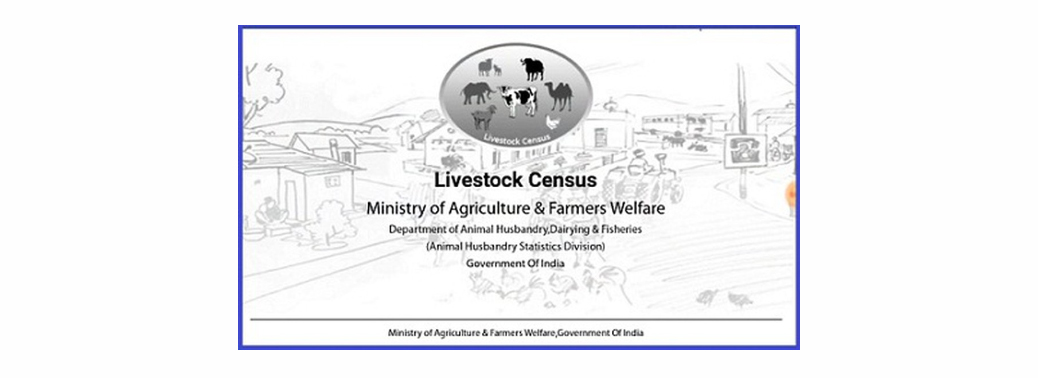
Why in News?
- Department of Animal Husbandry & Dairying releases 20th Livestock Census; Total Livestock population increases 4.6% over Census-2012, Increases to 535.78 million
Livestock Census:
- The Livestock Census has been conducted in the country periodically since 1919-20.
- The Livestock Census covers all domesticated animals and its headcounts.
- So far 19 such censuses have been conducted in participation with State Governments and UT Administrations.
- The 20th Livestock Census was conducted in participation with all States and Union Territories.
- The enumeration was done both in rural and urban areas. Various species of animals (Cattle, Buffalo, Mithun, Yak, Sheep, Goat, Pig, Horse, Pony, Mule, Donkey Camel, Dog, Rabbit and Elephant)/poultry birds (Fowl, Duck, Emu, Turkeys, Quail and other poultry birds) possessed by the households, household enterprises/non-household enterprises and institutions have been counted at their site.
Features of 20th Livestock Census:
- The major thrust given to 20th Livestock Census is the collection of data through tablets computers. The 20th livestock census is indeed a unique attempt as for the first time such a major initiative has been take to digitise household level data through online transmission from the field. National Informatics Centre (NIC) has developed a mobile Application software and was used for data collection as well as online transmission of data from the field to the NIC server.
20th Livestock Census:
- The total Livestock population is 535.78 million in the country showing an increase of 4.6% over Livestock Census-2012
- Total Bovine population (Cattle, Buffalo, Mithun and Yak) is 302.79 Million in 2019 which shows an increase of about 1% over the previous census.
- The total number of cattle in the country in 2019 is 192.49 million showing an increase of 0.8 % over previous Census.
- The Female Cattle (Cows population) is 145.12 million, increased by 18.0% over the previous census (2012).
- The Exotic/Crossbred and Indigenous/Non-descript Cattle population in the country is 50.42 million and 142.11 million respectively.
- The Indigenous/Non-descript female cattle population has increased by 10% in 2019 as compared to previous census.
- The population of the total Exotic/Crossbred Cattle has increased by 26.9 % in 2019 as compared to previous census.
- There is a decline of 6 % in the total Indigenous/ Non-descript cattle population over the previous census. However, the pace of decline of Indigenous/ Non-descript cattle population during 2012-2019 is much lesser than as compared to the 2007-12 which was about 9%.
- The total buffaloes in the country is 109.85 million showing an increase of about 1.0% over previous Census.
- The total milch animals (in-milk and dry) in cows and buffaloes is 125.34 million, an increase of 6.0 % over the previous census.
- The total sheep in the country is 74.26 million in 2019, increased by 14.1% over previous Census.
- The Goat population in the country in 2019 is 148.88 million showing an increase of 10.1% over the previous census.
- The total Pigs in the country is 9.06 Million in the current Census, declined by 12.03% over the previous Census.
- The other livestock including mithun, yak, horses, ponies, mule, donkeys, camel together contribute around 0.23% of the total livestock and their total count is 1.24 million.
- The total poultry in the country is 851.81 million in 2019, registered an increase of 16.8% in the total poultry.
- The total birds in the backyard poultry in the country is 317.07 million. The backyard poultry has increased by around 46% as compared to previous Census.
- The total Commercial Poultry in the country is 534.74 million in 2019, increased by 4.5% over previous Census.
INDIA INTELLECTUAL PROPERTY (IP) GUIDE
17, Oct 2019

Why in News?
- The Services Export Promotion Council (SEPC), set up by the Ministry of Commerce & Industry, has brought out the India Intellectual Property (IP) Guide at Cannes in MIPCOM 2019 for the Media and Entertainment (M&E) industry.
India Intellectual Property (IP) Guide:
- The guide features a catalogue of over 60 Indian IPs, popular in over 160 countries.
- It tries to comprehensively break the narrative of only low-end work being done in India.
- IP is the most important asset for its creators in the media and entertainment sector.
- Intellectual Property (IP) is vital to a large number of SEPC’s stakeholders. Creation, protection and expansion of IP products alone will bring huge benefits to the sector.
- SEPC will also be setting up a committee to help small and medium entertainment companies to navigate critical aspects of IP creation.
- The aim is to assist companies and content creators to maximise the value that IPs can provide.
MIPCOM:
- MIPCOM stands for Marché International des Programmes de Communication (French). In English, it can be translated as the International Market of Communications Programmes.
- It is a trade show held annually primarily geared towards the television/entertainment industry. It is held in Cannes, France.
- It is the world’s largest exhibition of studios and distributors, and also the top showcase for content across all platforms and genres.
- Many important personalities from the global entertainment industry participate in the 4-day event.It also serves as a global premier for highly anticipated programmes.
- A spinoff event called the MIPJunior also takes place prior to MIPCOM, which is targeted towards the children’s television industry.
- MIPCOM 2019 is being attended by some of the top renowned Indian media and entertainment companies.
- The Indian exhibitors and visiting companies are participating to buy, sell, serve and partner with companies present at MIPCOM from over 111 countries across the world.
- The India Pavilion is the one-stop place to meet content creators, audio-visual service providers in animation, VFX, AR/VR, gaming, new media services, film production services and much more.
- Many of the Indian companies are at Cannes with their completed IPs or pitch for their in-production properties.
Services Export Promotion Council (SEPC):
- SEPC is an Export Promotion Council set up by the Ministry of Commerce & Industry, Government of India, in 2006.
- It is an apex trade body which facilitates service exporters of India.
- As an advisory body, it actively contributes to the formulation of policies of the Government and acts as an interface between the Services Industry and the Government.
- SEPC has been instrumental in promoting the efforts of the Indian service exporting community, and in projecting India’s image abroad as a reliable supplier of high-quality services.
- It organizes a large number of promotional activities such as buyer-seller meets (BSM) – both in India and abroad, overseas trade fairs/exhibitions, and India pavilion/information booths in selected overseas exhibitions to demonstrate the capabilities of the Indian Services Industry.
- It currently has a membership base of over 3000 companies from 14 service sectors including accounting/auditing/bookkeeping, advertising, architectural, consultancy, distribution, educational, entertainment, environmental, healthcare, hotel and tourism, legal, maritime, market research/management, printing and publishing services.
IMF’S WORLD ECONOMIC OUTLOOK (WEO)
17, Oct 2019

Context:
- International Monetary Fund (IMF) has released its report “World Economic Outlook” (WEO)- 2019 recently.
About the Report:
- The World Economic Outlook is a biennial report that is released in April and October of every year. According to the report released recently, the global economy is at its slowest pace of growth at 3%. This is a serious climb down from 3.8% in 2017.
Key Findings of the Report:
- The world economy is projected to grow only 3 per cent this year and 3.4 per cent next year amid a synchronised slowdown.
- The Global growth rate is projected to improve to 3.4% by 2020. The growth of advanced economies is projected to slow down by 1.7%.
- The emerging and developing economies are projected to experience a growth pick up from 3.9% in 2019 to 4.6% in 2020.
- Reasons for slowdown: rising trade barriers, uncertainty surrounding trade and geopolitics, and structural factors, such as low productivity growth and an aging population in Developed Countries.
India- Specific Observations:
- India retains its rank as the world’s fastest-growing major economy, tying with China.
- It has a projected growth rate of 6.1 per cent for the current fiscal year, despite an almost one per cent cut in the forecast.
- The report downgraded India’s growth projections to 6.1% in 2019, however, India’s economy is projected to pick up and grow by 7 per cent in the 2020 fiscal year.
- According to the report, China is projected to grow at 6.1% in 2019 and 5.8% in 2020. The trade volume reached the lowest since 2012. It reduced by 1% since 2012.
Reasons behind the downgraded growth projection of India:
- India’s economy decelerated further in the second quarter, as its growth is held back by sector-specific weaknesses in the automobile sector and real estate as well as lingering uncertainty about the health of non-bank financial companies.
- Corporate and environmental regulatory uncertainty are part of the factors that weighed on the demand.
- The reduction in India’s growth projection for this year “reflects a weaker-than-expected outlook for domestic demand”.
Way Ahead:
- India should make use of the following measures to improve its overall growth:
- It must make use of its monetary policy and broad-based structural reforms to address cyclical weakness and strengthen confidence.
- A credible fiscal consolidation path is needed to bring down India’s elevated public debt over the medium term.
- This should be supported by subsidy-spending rationalisation and Tax-Base Enhancing Measures.
About IMF:
- The International Monetary Fund (IMF) is the inter-governmental organisation established to stabilize the exchange rate in the international trade.
- It helps the member countries to improve their Balance of Payment (BOP) condition thorough the adequate liquidity in the international market, promote the growth of global monetary cooperation, secure financial stability, facilitate international trade.
- It is one of the Bretton woods twins, which came into existence in 1945, is governed by and accountable to the 189 countries that make up its near-global membership.
- HQ – Washington
- Official language – Chinese, English, French, Russian, Spanish, Arabic
INTERCONNECT USAGE CHARGE (IUC)
16, Oct 2019
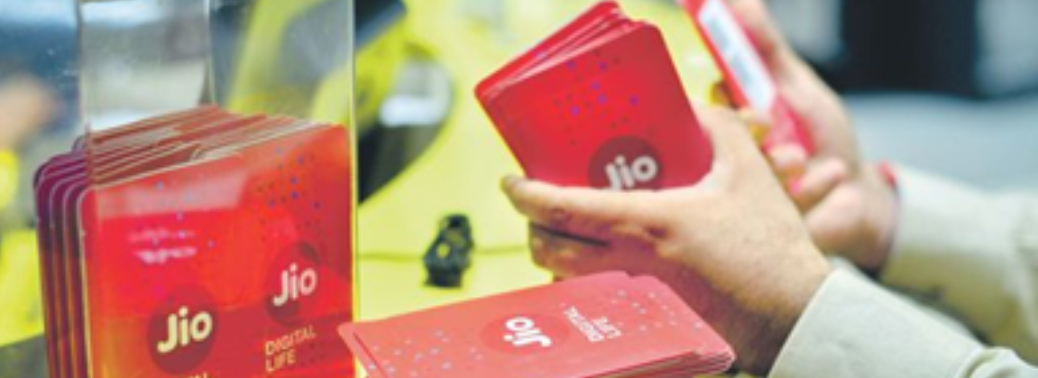
Why in News?
- Telecom Regulatory Authority of India (TRAI) has decided to review the scrapping of interconnect usage charge from January 2020.
What is IUC?
- Interconnect Usage Charge or IUC is a cost paid by one mobile telecom operator to another, when its customers make outgoing mobile calls to the other operator’s customers. These calls between two different networks are known as mobile off-net calls.
- The objective of this calling-party pays regime (CPP) is to allow operators cover network usage costs. Since it needs infrastructure investment, the IUC ensures that operators make enough operations to keep their business viable.
- The IUC charges are fixed by Telecom Regulatory Authority of India (TRAI).
Implications and Criticism
- As IUC directly impacts the call tariff, reduction in IUC is likely to yield consumer benefits through low call charges.
- Scrapping IUC helps to deploy new technologies like VoLTE (Voice over Long Term Evolution), migration to Internet Protocol networks by operators, wherein there are no interconnection charges. This is due to the fact the charges in 2G is higher than the 4G technologies.
RANDOMISED CONTROLLED TRIAL (RCT)
16, Oct 2019
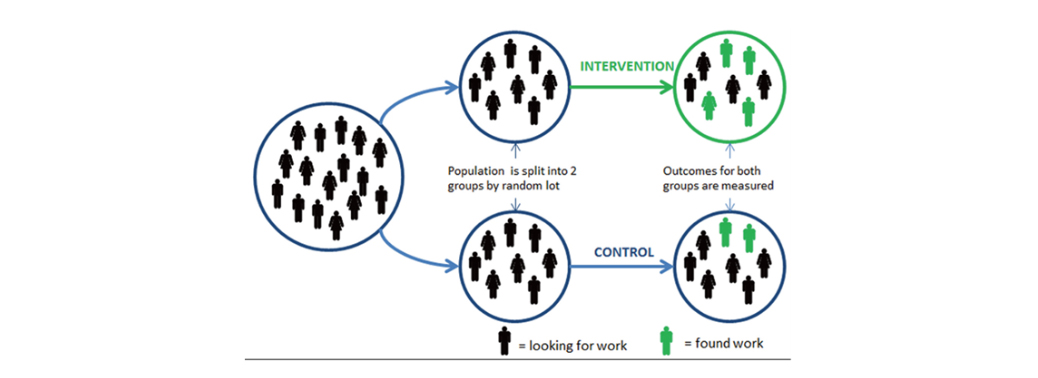
Why in News?
- The new Economics Nobel laureates – Abhijit Banerjee, Esther Duflo and Michael Kremer – are considered to be instrumental in using randomised controlled trials to test the effectiveness of various policy interventions to alleviate poverty.
What is a Randomised Controlled Trial?
- A randomised controlled trial is an experiment that is designed to isolate the influence that a certain intervention or variable has on an outcome or event.
- A social science researcher who wants to find the effect that employing more teachers in schools has on childrenʼs learning outcomes, for instance, can conduct a randomised controlled trial to find the answer.
- The use of randomised controlled trials as a research tool was largely limited to fields such as biomedical sciences where the effectiveness of various drugs was gauged using this technique.
- Banerjee, Ms. Duflo and Mr. Kremer, however, applied RCT to the field of economics beginning in the 1990s. Mr. Kremer first used the technique to study the impact that free meals and books had on learning in Kenyan schools.
- Banerjee and Ms. Duflo later conducted similar experiments in India and further popularised RCTs through their book Poor Economics, published in 2011.
Significance of RCTs:
- RCTs allow economists and other social science researchers to isolate the individual impact that a certain factor alone has on the overall event.
- For instance, to measure the impact that hiring more teachers can have on childrenʼs learning, researchers must control for the effect that other factors such as intelligence, nutrition, climate, economic and social status etc., which may also influence learning outcomes to various degrees, have on the final event.
- Randomised controlled trials promise to overcome this problem through the use of randomly picked samples.
Criticisms against RCTs:
- A popular critic of randomised controlled trials is economist Angus Deaton, who won the economics Nobel Prize in 2015.
- Deaton has contended in his works, including a paper titled “Understanding and misunderstanding randomised control trials” that simply choosing samples for an RCT experiment in a random manner does not really make these samples identical in their many characteristics.
- While two randomly chosen samples might turn out to be similar in some cases, there are greater chances that most samples are not really similar to each other.
- Other economists have also contended that randomised controlled trials are more suited for research in the physical sciences where it may be easier to carry out controlled experiments.
- They argue that social science research, including research in the field of development economics, may be inherently unsuited for such controlled research since it may be humanly impossible to control for multiple factors that may influence social events.
NOBEL PRIZE FOR ECONOMICS
15, Oct 2019
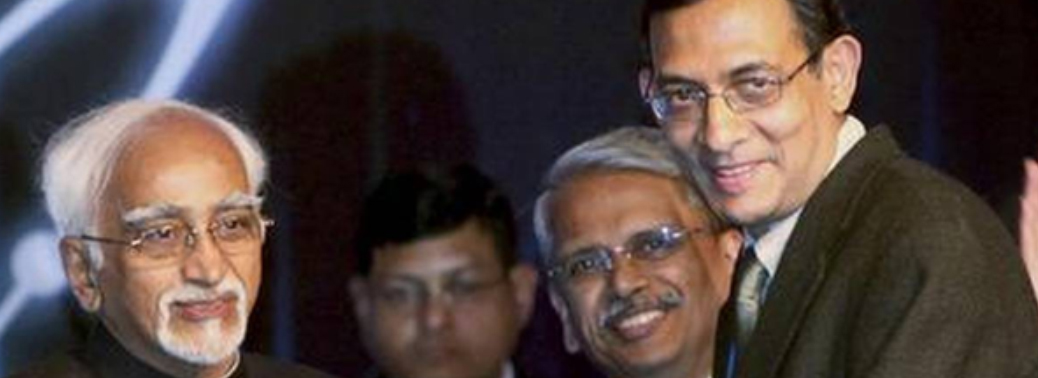
Why in News?
- The Royal Swedish Academy of Sciences has decided to award the 2019 Sveriges Riksbank Prize in Economic Sciences in Memory of Alfred Nobel, popularly called the Nobel Prize in Economics, to Abhijit Banerjee, Esther Duflo, and Michael Kremer “for their experimental approach to alleviating global poverty”.
About the Awardees:
- While Dr.Banerjee (Indian-born American economist) and Dr.Duflo are both affiliated with the Massachusetts Institute of Technology, Dr.Kremer is with Harvard University. Dr. Banerjee and Dr. Duflo, who are incidentally married to each other, have had a long history of conducting research together, often collaborating with Dr. Kremer as well.
- The three will equally share the prize money of 9 million Swedish krona (about $916,798 and ₹6.53 crore).
Achievements of the Awardees:
- The laureates have, since the mid-1990s, sought to introduce a new approach to obtaining reliable answers about the most effective ways to combat global poverty.
- Rather than focussing on big-picture questions, they divided the issue into smaller, more manageable and measurable questions.
- They then showed that these smaller questions could be best answered through carefully designed experiments among the people who are most affected.
- This thought process has resulted in what are called randomised control trials, previously used in the pure sciences and in clinical drug trials, to be deployed in the social sciences.
Resultant of their Work:
- The resultant of their tiring work was a large number of concrete results on specific mechanisms behind poverty and specific interventions to alleviate it.
Examples:
1.On schooling, strong evidence now shows that the employment of contract teachers is generally a cost-effective way to improve student learning, while the impact of reduced class size is mixed, at best.
2.On health, poor people’s investment in preventive care has been shown to be very sensitive to the prices of health products or services, giving a strong argument for generous subsidies to such investments,” the paper added.
3.On credit, growing evidence indicates that micro-finance programmes do not have the development effects that many had thought when these programmes were introduced on a Large Scale.
About Nobel Prize:
- Alfred Nobel, a Swedish chemist, engineer, industrialist, and the inventor of dynamite, in his last will and testament in 1895, gave the largest share of his fortune to a series of prizeswhich were collectively came to be known as the “Nobel Prizes”.
- The awards are started from the year of 1901 for five different fields and in the year 1969, the field of Economic sciences was also included.
- The Nobel Prizes are widely regarded as the most prestigious awards given for intellectual achievement in the world.
- The Nobel Memorial Prize in Economic Sciences, officially known as The Sveriges Riksbank Prize in Economic Sciences in Memory of Alfred Nobel, is an award funded by Sveriges Riksbank and is annually awarded by the Royal Swedish Academy of Sciences to researchers in the field of economic sciences. The first prize was awarded in the year 1969.
- The various awards that forms the group of “Nobel Prizes” are as follows:
1.Nobel Prize for Physics
2.Nobel Prize for Chemistry
3.Nobel Prize for Physiology or Medicine
4.Nobel Prize for Literature
5.Nobel Prize for Peace.
6.Nobel prize for Economic Sciences (added only in the year 1969)
GLOBAL COMPETITIVENESS INDEX 2019
10, Oct 2019

Why in News?
- The annual Global Competitiveness Index (GCI) compiled by Geneva-based World Economic Forum (WEF) is released.
- India slipped to 68th rank in the annual Global Competitiveness Index 2019. It was ranked 58th in the 2018 edition.
- The GCI was launched in 1979, maps the competitiveness landscape of 141 economies through 103 indicators organised into 12 pillars.
Highlights:
- The Global Competitiveness Index 2019 ranks 140 countries on the basis of 98 indicators organised into 12 pillars.
- Singapore with a score of 84.8 took the top spot in this year’s index, pushing the United States to the second spot.The top-five economies in the Global Competitiveness Index 2019 included Singapore, US, Hong Kong, Netherlands and Switzerland.
- Japan took up the 6th spot, Germany ranked 7th, Sweden ranked 8th, UK ranked 9th and Denmark ranked 10th to complete the top ten economies in the index.
- China was ranked at the 28th spot, while Hong Kong was ranked 3rd and Taiwan, which it claims as its own territory, also ranked higher at the 12th
Global Competitiveness Index 2019: India
- According to the World Economic Forum, the major reason for the fall in India’s rank is due to improvements witnessed by several other economies.
- India was ranked second in shareholder governance and third in terms of market size and renewable energy regulation.In corporate governance also, India was ranked considerably higher at the 15th In macroeconomic stability also, India was ranked high at the 43rd rank. However, India was performed poorly in pillars including Information, communication and technology adoption (120 rank), health (110), skills (107), product market (101), labour market(103) and stability (103).
- In terms of healthy life expectancy, India was ranked 109 out of 141 countries. In meritocract and incentivization also, India was ranked at the 118th position, largely due to its low ratio of wage and salaried female workers to male workers, in which it was ranked 128Among its neighbours, India was ranked ahead of Sri Lanka, Pakistan, Bangladesh and Nepal. Only China ranked better at the 28th position.
CABINET HIKES DEARNESS ALLOWANCE BY 5%
10, Oct 2019

Why in News?
- The Union Cabinet decided to increase the Dearness Allowance (or DA) that it pays its current employees and existing pensioners by 5 percentage points.
- Accordingly, 50 lakh central government employees and 65 lakh pensioners will henceforth receive 17% of their basic salary as DA instead of 12%.
What is DA and how is it calculated?
- DA is provided by the government to its employees to cushion the impact of the rising cost of living. Inflation (or rate of increase in prices) eats away the buying power of money; hence the justification for DA.
- For instance, if the annual inflation is 5%, it means that a commodity that cost Rs 100 in the first year, would cost Rs 105 in the second. If the employee has a salary that allows her to spend Rs 100 on that commodity, she will be able to buy that commodity in the first year.However, in the second year, that Rs 100 will no longer be enough for the employee to buy that commodity, which now costs Rs 105, thanks to the inflation rate. It is to compensate for this gap that the government pays DA to its employees.
- To calculate DA, the government typically uses the All India Consumer Price Index-based inflation rate as a broad marker. For greater effectiveness, the DA is revised twice a year.
Possible Positive Impacts on the Economy:
- An increase in DA provides additional money in the hands of government employees. If all this additional money is spent, it will have a positive impact on the sagging consumption demand, which the biggest problem in the economy right now.
- However, the impact will depend on whether — and to what extent — employees actually spend this money. It is possible that given the prevalent sentiment of insecurity, they may choose to simply save it in their bank accounts. But given that deposit rates on short-term savings are being cut, it seems likely that people would choose to spend, rather than save.
- But even if all this money is simply kept in the banks, it will help the economy by bolstering the flow of funds to the banking system.
Possible Negative Impacts on the Economy:
- This money will come out of the government’s coffers. And to the extent that this will hit the resources available with the government, it will constrain economic activity.
- For example, under the current circumstances, when government is finding it difficult to raise revenues, an additional outgo for DA will either push the government to borrow money from the market — thus leaving less money to be lent to private businessmen and businesswomen — or it will come as the cost of some other expenditure such as the spending that could have built more roads or more schools.
GREEN CHANNEL COMBINATION
09, Oct 2019

Why in News?
- Putting in place a speedier approval mechanism, Competition Commission has introduced a green channel route for clearing certain categories of mergers and acquisitions.
The Green Channel Concept:
- Mergers and Acquisitions (M&As) or combinations beyond a certain threshold are required to have mandatory approval from the fair trade regulator.
- The green channel is aimed to sustain and promote a speedy, transparent and accountable review of combination cases, strike a balance between facilitation and enforcement functions, create a culture of compliance and support economic growth.
- This concept recommended by the high level panel that reviewed competition law — would allow for an automatic system for speedy approval of combinations subject to certain conditions.
- Under this process, the combination is deemed to have been approved upon filing the notice in the prescribed format.
- Parties to a combination can avail the green channel route subject to various conditions, including that there is no horizontal overlap or vertical relationship.
Significance:
- The amended regulation provide for a single summary of the proposed combination.
- Earlier, entities had to provide both a short as well as a long summary.
- This system would significantly reduce time and cost of transactions.
TAX RELIEF FOR FOOD AT INCORPORATED CLUBS
07, Oct 2019
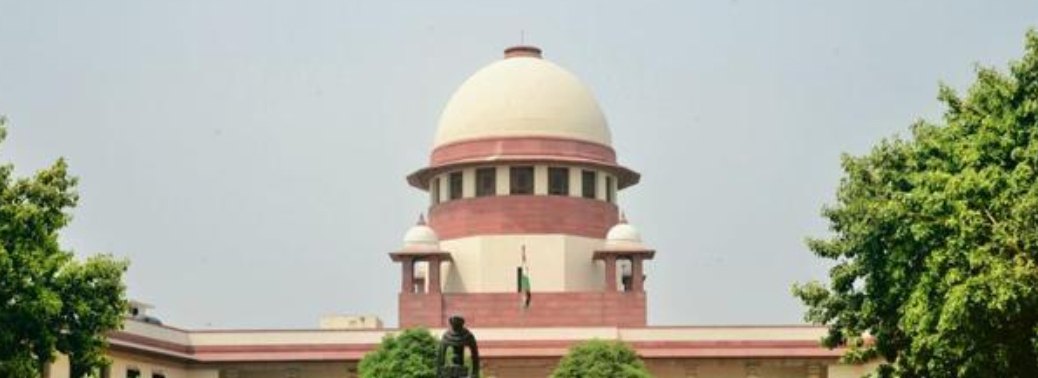
Why in News?
- In a significant judgment, the Supreme Court has held that supply of food, drinks and beverages by an incorporated members’ club to its permanent members is not liable for sales or service tax.
Issue:
- The Bench was answering a reference on the question of whether the doctrine of mutuality highlighted in the Young Men’s Indian Association judgment of the Constitution Bench would survive the 46th Constitutional Amendment, which introduced Article 366 (29-A) into the Constitution.
- The particular Article dealt with the taxation of sale of goods. Its clauses said that the supply or service of ‘goods’ like food or drink by an “unincorporated association or body of persons’ would be taxable.
Highlights:
- The Supreme Court has ruled that the doctrine of mutuality continues to be applicable to incorporated and unincorporated members’ clubs.
- The doctrine of mutuality, based on common law principles, is premised on the theory that a person cannot make a profit from himself.
- An amount received from oneself, therefore, cannot be regarded as income and is not taxable.
- Thus, Sales Tax cannot be levied on Clubs, whether incorporated or unincorporated for the supply of food and drinks to permanent members.
- The Court said such supply of goods lacks the essential aspect of a sale — a seller and a buyer.It was said that the legal entity called the club and its members are one and the same. The club, though a distinct legal entity, is only an agent of its members.
- The Supreme Court has held that, in the case of sales tax, both incorporated and un-incorporated members’ clubs are exempt from liability of paying sales tax.
- The Bench referred to the Constitution Bench judgment in the Young Men’s Indian Association case and held that the doctrine of mutuality between the club and its members would dominate the relationship between an incorporated members’ club and its permanent members.
- The rendering of service by the petitioner-club to its members is not taxable service under the Finance Act, 1994, the court held.
WORLD COTTON DAY
07, Oct 2019
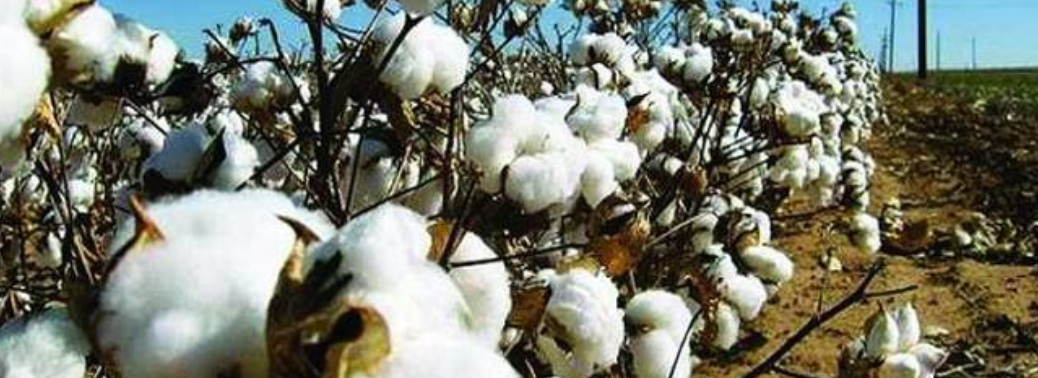
Why in News?
- The Ministry of Textiles, Government of India, is participating in the World Cotton Day event being observed from 7th October to 11th October 2019 in Geneva.
World Cotton Day:
- It is being organised by the World Trade Organisation (WTO) in collaboration with the Secretariats of the United Nations Food and Agriculture Organization (FAO), the United Nations Conference on Trade and Development (UNCTAD), the International Trade Centre (ITC) and the International Cotton Advisory Committee (ICAC).
- WTO is hosting the event at the request of the Cotton – 4 countries – Benin, Burkina Faso, Chad and Mali to celebrate their official application for the recognition of 7th October as World Cotton Day by the United Nations.
- World Cotton Day will celebrate the many advantages of cotton, from its qualities as a natural fibre, to the benefits people obtain from its production, transformation, trade and consumption.World Cotton Day will also serve to shed light on the challenges faced by cotton economies around the world because cotton is important to least developed, developing and developed economies worldwide.
- Cotton occupies just 2.1 % of the world’s arable land, yet it meets 27% of the world’s textile need.
- In addition to its fibre used in textiles and apparel, food products are also derived from cotton, like edible oil and animal feed from the seed.
- Cotton is a drought-resistant crop ideal for arid climates.
- A sculpture of Mahatma Gandhi made out of cotton will be displayed to commemorate the 150th birth anniversary of Mahatma Gandhi, at the event.
- The Cotton Textiles Export Promotion Council (TEXPROCIL) will be displaying India’s high-quality cotton textiles at the exhibition.
- Between 2011 and 2018, India implemented a Cotton Technical Assistance Programme (Cotton TAP-I) of about USD 2.85 million for seven African countries namely Benin, Burkina Faso, Mali and Chad and also Uganda, Malawi and Nigeria.
- The technical assistance focused on improving the competitiveness of the cotton and cotton-based textiles and apparel industry in these countries through a series of interventions that had significant outcomes leading to a demand for a follow on project
TITLE INSURANCE
05, Oct 2019

Why in News?
- The Insurance Regulatory and Development Authority of India has constituted a working group that will revisit the product structure of title insurance.
Highlights:
- The group will study the structure of title insurance products available in the current Indian Market and analyse the reasons for its sluggish demand.
- The 12 member working group is tasked with:
- Developing a standard product.
- Coming out with recommendations to spur demand.
- Examining the legal and regulatory framework in place and its impact on the marketability of title insurance.
- Studying the structure of such products available and analyse reasons for sluggish demand.
- Suggesting augmentation of reinsurance capacity.
- The group has been asked to submit its recommendations within 12 weeks.
Title Insurance:
- Title insurance is a form of indemnity insurance that protects the holder from financial loss sustained from defects in a title to a property.
- It basically provides indemnity to developers and the subsequent homeowners of the property against losses and risks related to defects in the title of the property.
- It even covers issues which are not discovered prior to the commencement date of the policy.
- A few general insurers offer title insurance.
- Their product features vary in policy terms and conditions and scope of coverage depending on the support received from their reinsurers.
Issues:
- The number of title insurance policies sold is minimal, despite availability for the last one and half years and the obligation cast under the Real Estate (Regulation and Development) Act, 2016 upon promoter/developers to obtain the said policy.
- The decision comes in the backdrop of a less-than-desired response to title insurance products.
- Feedback received from the Government of India revealed that stakeholders, especially developers associations, had flagged the need for standardisation in title insurance products.
BHARAT 22 ETF
04, Oct 2019
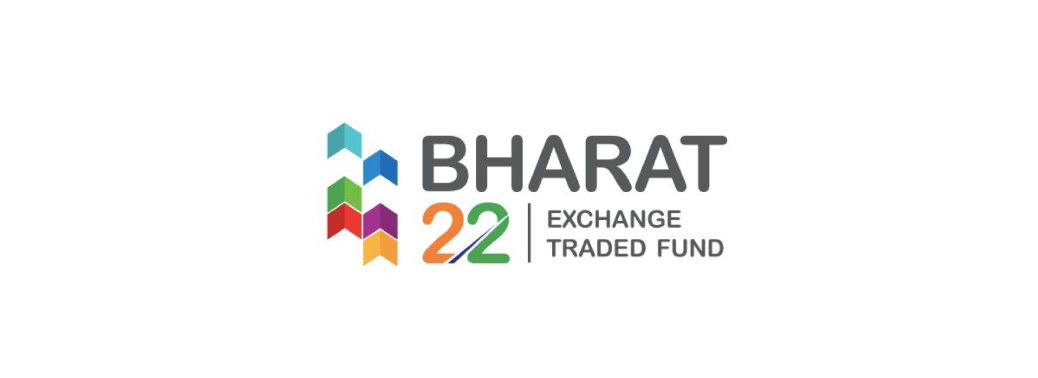
Why in News?
- The Further Fund Offer 2 (FFO 2) of Bharat 22 Exchange-Traded Fund (ETF), which is part of the government’s divestment programme, will be open for subscription for investors.
Bharat 22:
- Bharat 22 is an ETF that will track the performance of 22 stocks, which the government plans disinvest.
- The ETF unit represents a slice of the fund, issued units are listed on exchanges for anyone to buy or sell at the quoted price.
- The B22 will span six sectors, such as basic materials, energy, finance, FMCG, industrials and utilities.
- Besides public sector banks, miners, construction companies, and energy majors, the ETF will also include some of the government’s holdings in SUUTI (Specified Undertaking of Unit Trust of India).
- The B22 ETF will be managed by ICICI Prudential AMC while Asia Index will be the index provider.
- The index will be rebalanced annually.
Exchange Traded Funds (ETFs):
- ETFs are mutual funds listed and traded on stock exchanges like shares.
- The ETF simply copies an index and endeavours to accurately reflect its performance.
- In an ETF, one can buy and sell units at a prevailing market price on a real-time basis during market hours.
- There are four types of ETFs already available — Equity ETFs, Debt ETFs, Commodity ETFs and Overseas Equity ETFs.
- The Bharat 22 ETF to be offered now allows the Government to park its holdings in selected PSUs in an ETF and raise disinvestment money from investors at one go.
PRAKASH PORTAL
04, Oct 2019
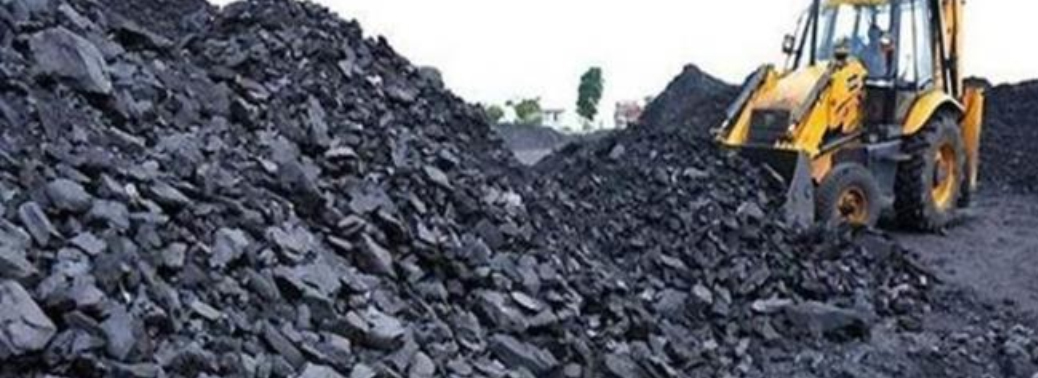
Why in News?
- Ministry of Power launched PRAKASH (Power Rail Koyla Availability through Supply Harmony)
About PRAKASH (Power Rail Koyla Availability through Supply Harmony) Portal:
- The Portal aims at bringing better coordination for coal supplies among all stakeholders viz – Ministry of Power, Ministry of Coal, Coal India, Railways and power utilities.
- The Portal is designed to help in mapping and monitoring entire coal supply chain for power plants, viz:
- Coal Stock at supply end (mines),
- coal quantities/ rakes planned,
- coal quantity in transit and
- coal availability at power generating station.
Benefits of Portal to the Stakeholders:
- The portal makes available following information on a single platform:
- Coal company will be able to track stocks and the coal requirement at power stations for effective production planning.
- Indian Railways will plan to place the rakes as per actual coal available at siding and stock available at power stations.
- Power stations can plan future schedule by knowing rakes in pipe line and expected time to Reach.
- Stock at power generating station
- Ministry of Power /Ministry of Coal/ Central Electricity Authority/ Power System Operation Corporation (POSOCO) can review overall availability of coal at thermal power plants in different regions.
- PRAKASH Portal is developed by NTPC and sources data from different stakeholders such as Central Electricity Authority (CEA), Centre for Railway Information System (CRIS) and coal companies. All reports are available in PDF/Excel format. However, to present information in a user friendly method, the Portal gives graphical representation of reports with details shown on the map of India.
- Currently, the Portal will make available four reports as detailed below:
- Daily Power Plant Status: This report gives Station data related to power generation, coal receipt, consumption and stock. Report can be generated utility wise, state wise and sector wise (default utility-wise).
- Periodic Power Plant Status: Report gives Station data related to power generation, coal receipt, consumption and stock for selected period. Coal materialisation based on dispatch by coal company is available.
- Plant Exception Report: This report gives materialisation and rakes in pipeline through Rail.
- Coal Dispatch Report: Report gives coal subsidiary wise dispatch for particular period. It also gives source wise details of coal dispatch. Dispatch trend is also shown. Plant wise and siding wise details are available.
Present Mechanism:
- Present mechanism to review coal supply situation consists of an inter-ministerial group which has officials from Ministries of Power, Coal, Railways, CEA, power utilities and coal companies.
- This group holds weekly meetings to review coal supply situation as well as railway logistics.
- It was observed that this mechanism faced several issues such as scattered information, correctness of data from different organizations, timely availability of data etc. This often led to difficulties in decision making
- To address such situations, Ministry of Power asked CEA for establishment of a transparent mechanism to monitor the coal availability at loading site (CIL,SCCL), placement of rakes by Railways (CRIS) and availability of coal at power stations (NTPC / DVC /State utilities) and also directed NTPC to facilitate CEA for portal development.
SOVEREIGN GOLD BONDS SCHEME 2019 – 2020
02, Oct 2019

Why in News?
- The Government of India, in consultation with the Reserve Bank of India, has decided to issue Sovereign Gold Bonds.
Sovereign Gold Bond Scheme:
- The SGB will be issued in six tranches from October 2019 to March 2020
- The Bonds will be sold through:
- Scheduled Commercial banks (except Small Finance Banks and Payment Banks)
- Stock Holding Corporation of India Limited (SHCIL)
- Designated post offices
- Recognised stock exchanges viz., National Stock Exchange of India Limited and Bombay Stock Exchange Limited
- The main features of the SGB are:
- It will be issued by Reserve Bank India on behalf of the Government of India.
- The Bonds will be restricted for sale to resident individuals, Universities, Charitable Institutions, HUFs and Trusts
- The tenor of the Bond will be for a period of 8 years with exit option after 5th year to be exercised on the interest payment dates.
- The minimum permissible investment will be 1 gram of gold.
- The maximum limit of subscribed shall be 4 KG for individual and HUF each and 20 Kg for trusts and similar entities per fiscal (April-March) notified by the Government from time to time.
- In case of joint holding, the investment limit of 4 KG will be applied to the first applicant only.The investors will be compensated at a fixed rate of 2.50 % per annum payable semi-annually on the nominal value.
- Bonds can be used as collateral for loans.
GREEN ENERGY TARGET LACKS DEADLINE
02, Oct 2019
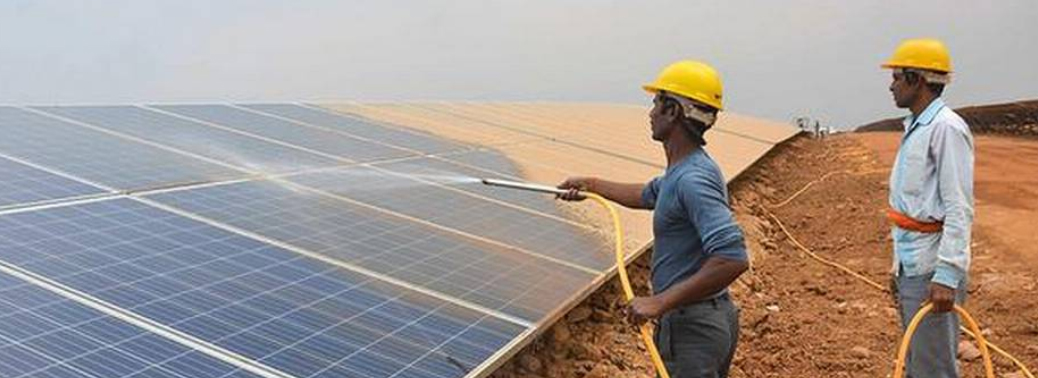
Why in News?
- Prime Minister Narendra Modi at the Climate Action Summit in New York announced India’s ambitious aim to increase its renewable energy target to 450 GW (gigawatts). A senior official in the Union Environment Ministry has pointed out that there is not yet a deadline for when this target would be achieved.
Highlights:
- India had previously set a target for increasing the non-fossil fuels to 175 GW in 2022.
- India’s plan for installing 175 GW of renewable energy capacity by 2022 was first announced in 2015.
- It included 100 GW from solar, 60 GW from wind, 10 GW from bio-power and 5 GW from small hydro-power.
- Recent announcements highlight India’s aim to achieve 450 GW target, with no particular deadline.
Concerns:
- Given that the country right now has an installed renewable energy capacity of 80.47 GW, of which 29.55 GW is solar, 36.37 GW is wind, 9.81 GW is biomass and 4.6GW is small hydropower, achieving the 450 GW target, which is a more than 460 per cent jump from the current level, in 3-5 years is an extremely tough task. For the record, India’s renewable power capacity had jumped nearly 150 per cent in the past five years.
- The announcement comes at a time when commissioning of projects has slowed and states are raising red flags.Slow project allocation and financial stress have halted wind power projects.Solar projects have been facing land crunch and grid connectivity issues.
- As India expands it renewables portfolio, wind power seem to be losing steam. Leading domestic wind turbine manufacturers, with more than 80 per cent market share, are staring at a weak order pipeline, financial losses and regulatory niggles. Foreign companies, including some Chinese ones, are increasing footprint in India.
- Commissioning from wind power projects has slowed to historic lows.
- In solar, the challenge is the low capacity of domestic solar panels and increased influx of imports from China.
Way Forward:
- The renewable energy ministry is planning to introduce a standard power-purchase agreement (PPA) for projects.
- The terms of the PPA will ensure any default from the procuring state would lead to stringent penalty. A letter of credit-type system of payment would be made mandatory.
- To sort out land-acquisition issues, the ministry plans to change the project-award system.
- The government will acquire the land.
- Special-purpose vehicles (SPVs) will be formed by state-owned companies.
- The land will then be allotted to private companies bidding for projects
- The government should implement anti-dumping duty on a priority to deal with cut-throat competition from international players.
- In order to boost Make in India, the renewable power ministry has asked the Ministry of Finance to impose
FISCAL RESPONSIBILITY AND BUDGET MANAGEMENT ACT (FRBM)
02, Oct 2019
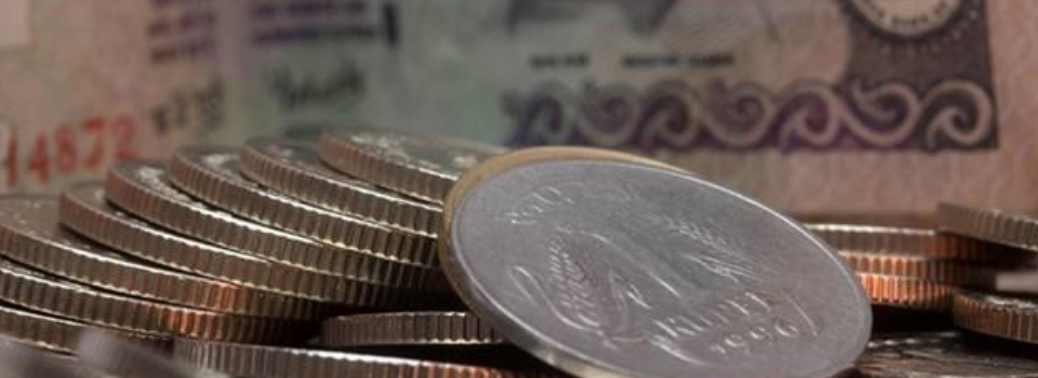
Why in News?
- States’ gross fiscal deficit (GFD) has remained within the Fiscal Responsibility and Budget Management Act (FRBM) threshold of 3% of gross domestic product (GDP) during 2017-18 and 2018-19, a Reserve Bank of India report on State Finances said.
FRBM Act:
- Fiscal Responsibility and Budget Management (FRBM) Act enacted in 2003 by the Indian parliament aims at bringing financial discipline on government expenditure.
- Aimed primarily to bring a check on revenue deficit, the act strives to improve the overall management of public finance by controlling unchecked borrowings and imparting financial discipline.
- When it was introduced for the first time, its target was to bring down the fiscal deficit to 3 percent of the GDP by 2008.
- However, the act suffered several challenges, such as the global financial crisis of 2007, when it came to implementation due to several reasons.
- On more than one occasion, the target planned to be achieved was relaxed or time frame was extended.
NK Singh Committee:
- A committee was set up under NK Singh in 2016 to review the act.
- The committee on its part recommended that the government should target a fiscal deficit that is 3 percent of the GDP by 2020 and bring it down to 2.5 percent by 2023.
Report Highlights:
- “States’ gross fiscal deficit (GFD) has remained within the FRBM threshold of 3 per cent of gross domestic product (GDP) during 2017-18 and 2018-19. This has, however, been achieved by sharp retrenchment in expenditures, in particular, capital expenditure.
- For 2019-20, states have budgeted for a consolidated GFD of 2.6 per cent of GDP with a marginal revenue surplus (as against revenue deficits in the previous three years).
- The report said sharp reduction in capital expenditure by states has potentially adverse implications for the pace and quality of economic development, given the large welfare effects of a much wider interface with the lives of people at the federal level.
- “Currently, states employ about five times more people and spend around one and a half times more than the Centre. Moreover, public expenditure by states influences the quality of physical and social capital infrastructure of the economy
- “States’ revenue prospects are confronted with low tax buoyancies, shrinking revenue autonomy under the GST framework and unpredictability associated with transfers of IGST and grants.
BAN ON EXPORT OF ONION
01, Oct 2019
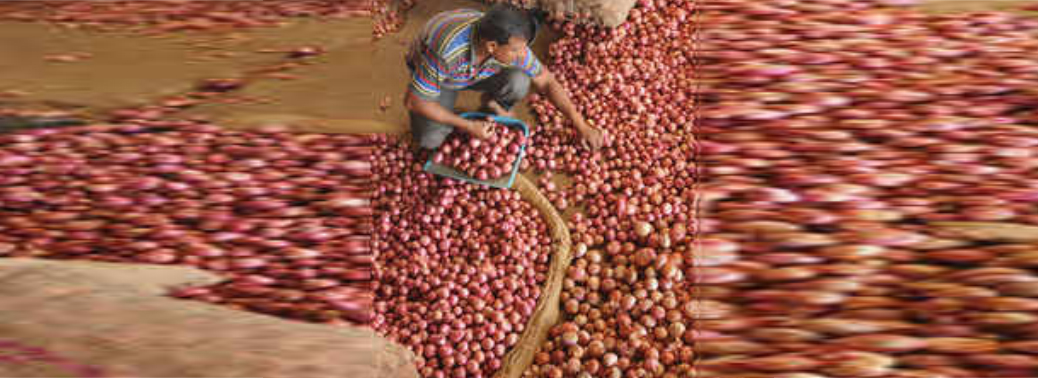
Why in News?
- Union ministry of commerce and industry amended export policy of onion from free to prohibited, which amounts to banning of onions from export, with immediate effect.
Reasons behind the Decision:
- The prohibition by the government comes amid rising prices of onions across the country.
- The commerce and industry ministry amended the export policy of onion, making it ‘prohibited’ from ‘free’ earlier.
- The decision has:
- banned exports of all varieties of onion in a bid to tame prices.
- imposed stock limits on onion traders to facilitate release of stocks and prevent hoarding by traders.
Impact of the Decision:
- Retail traders across the country will now be able to stock only up to 100 quintals of onion while wholesale traders will be allowed to stock up to 500 quintals.
- In the past, the Centre had authorised states to impose stock limits but this time it has imposed the limits on its own.
- Sudden export bans shut off the possibility of the farmer getting a bumper price for his crop, something that he feels he is entitled to, as the obverse of the distress sale he often has to undertake.
Way Ahead:
- States must act expeditiously and launch a crackdown on hoarders to bring the stocks to the market swiftly.
- Promote modern infrastructure facilities like cold storages and warehouses to use it as buffer stock.
- Instead of banning exports, the government should encourage export of onion in its raw and processed forms.
- The government must invest in food technology that would permit farmers to increase output without fear of distress sales, onion offtake assured because of its storage in a processed state
- More policy making and political attention should be devoted to raising onion output, or for that matter farm output in general. Complacency on the farm front is wholly avoidable.
EIGHT CORE SECTORS SHRINK 0.5% IN AUGUST
01, Oct 2019
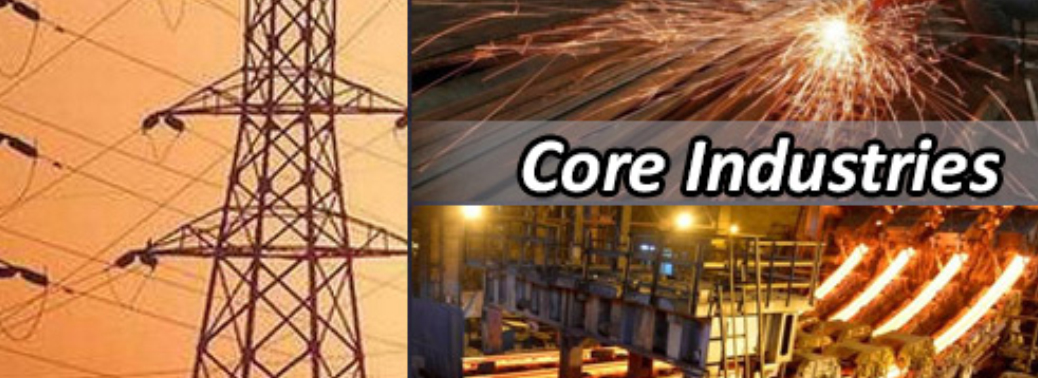
Why in News?
- The eight core sectors that form the bellwether for the Indian economy slumped in August to their lowest growth in four years and four months as per the Index of Eight Core Industries.
About the Slump:
- The index for these industries contracted 0.5%, the weakest since April 2015. Growth in five sectors of the Index of Eight Core Industries fell into the negative zone in August.
- Within the Index, the coal sector saw the sharpest contraction, with the sector contracting 8.6% in August 2019 compared with a contraction of 1.6% in the previous month. This is the sector’s worst performance in three years.
- It is an indication of a continuing slowdown and weak demand in the system. The core sectors reflect demand from the power and infrastructure sectors, where the government’s own demand is important and public sector spending has been also low.
About Index of Eight Core Industries (ICI):
- It is monthly production volume index considered as lead indicator of monthly industrial performance. It measures performance of production in selected eight core industries viz. Natural Gas, Coal, Crude Oil, Fertilizers, Petroleum Refinery Products, Steel, Cement and Electricity.
- It is compiled and released by Office of Economic Adviser (OEA), Department of Industrial Policy & Promotion (DIPP), Ministry of Commerce & Industry.
- The eight infrastructure sectors, constitute 40.27% of total index of industrial production (IIP)
- Base year taken as reference for ICI is 2011-12.
Components of Eight Core Industries (ICI)
| S.No | Eight core Industries | Contribution to IIP | Description |
|---|---|---|---|
| 1. | Coal | 4.38 % | It includes coal production excluding coking coal. |
| 2. | Crude Oil | 5.22 % | It includes total crude oil production. |
| 3. | Natural Gas | 1.71 % | It includes total natural gas production. |
| 4. | Refinery Products | 5.94% | It includes total refinery production (in terms of crude throughput). |
| 5. | Fertilizers | 1.25% | It includes production of Urea, Calcium Ammonium Nitrate (CAN), Ammonium Sulphate (A/S), Diammonium Phosphate (DAP), Ammonium chloride (A/C), Complex Grade Fertilizer and Single superphosphate (SSP). |
| 6. | Steel | 6.68% | It includes production of alloy and non-alloy steel only. |
| 7. | Cement | 2.41% | It includes production of both large plants and mini plants. |
| 8. | Electricity | 10.32% | It includes actual electricity generation of thermal, nuclear, hydro, imports from Bhutan |
What is IIP?
- Index of Industrial Production (IIP) is a composite indicator measuring changes in the volume of production of a basket of industrial products over a period of time, with respect to a chosen base period. Currently, the base year is 2011-12.
- It is computed and published by the Central Statistical Office (an office under the Ministry of Statistics and Programme Implementation) on monthly basis with a time lag of six weeks from the reference month.
APPRENTICESHIP (AMENDMENT) RULES, 2019
01, Oct 2019
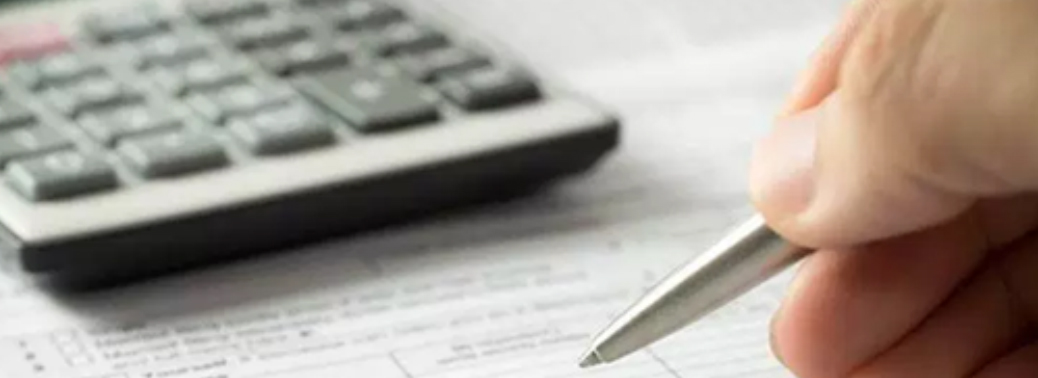
Why in News?
- Central government has notified changes in Apprenticeship Rules (1992) with an aim to increase skilled manpower in the country, and raise monetary compensation of apprentices.
Key Highlights:
- As per the notified Apprenticeship (Amendment) Rules, 2019, the hiring limit of apprentices has been raised to 15 per cent of total strength of an establishment.
- Minimum stipends have been doubled to between Rs 5,000 and Rs 9,000 per month.
- The stipend for graduate apprentices or degree apprentices has been increased to Rs 9,000 per month.
- For school pass outs, between Class 5th and 9th, the stipend has been increased to Rs 5,000 per month.
- The Centre has also lowered the size limit of an establishment with a mandatory obligation to engage apprentices on an optional basis from 40 to 30, and reduced the size-limit of an establishment wanting to engage apprentices from 6 to 4.
Data:
- In India, less than 0.1% of the employed workforce or just 0.3 million people are apprentices.
- In comparison, the UK has 1.5% or 0.5 million, China has 2.5% or 20 million, and Germany has 5% or 2.5 million apprentices.
Significance:
- The new rules will allow smaller companies to hire more trainees and give more youths an opportunity to get into the apprenticeship fold.
- Though it will add to the cost of firms, the government believes apprenticeship is one of the most sustainable models globally for skill training as it allows the youth to earn while they learn.
INDUSTRY 4.0
30, Sep 2019

Why in News?
- A Pilot Project for ushering in ‘Industry 4.0’ in the country, is launched for implementation at the Modern Coach Factory (MCF), Raebareli.
Industry 4.0:
- ‘Industry 4.0’ commonly referred to as the fourth industrial revolution, is a name given to the current trend of automation, interconnectivity and data exchange in manufacturing technologies to increase productivity.
- Industry 4.0 is a complex Cyber-Physical Systems which synergizes production with digital technologies, the Internet of Things, Artificial Intelligence, Big Data & Analytics, Machine Learning and Cloud Computing.
- Therefore, the architecture to be conceptualized and formulated in MCF initially would be gradually expanded in a phased manner to encompass all complexities that constitute Industry 4.0 in all manufacturing spheres in the country.
- Full transition to the digital factory using ‘Industry 4.0’ across entire value chain from design to production will help enhance productivity hugely by providing insight into production process and also make the decisions in real-time basis.
- This will also help in minimizing human errors by effective monitoring to ensure that resources are put to the best utilization measured by, what is called the Overall Equipment Effectiveness (OEE).
- Such a National Policy for Advanced Manufacturing envisages that manufacturing sector should contribute at least 25% to GDP.
- All over the world, countries who have been able to achieve phenomenal growth, could do that with the advent of rapid strides in manufacturing sector. This initiative in Railways may have wider ramifications to spur growth in defence production as well as in private manufacturing sector also.
WORRY FOR ECONOMY: LABOUR’S CONTRIBUTION TO INCOME KEEPS DIPPING
29, Sep 2019

Why in News?
- Labour’s share to national incomes has been declining in both developing and developed countries for around four decades now, highlighted the latest United Nations Conference on Trade and Development (UNCTAD) report.
Key Stats of the Report:
1.Decline in the Labour’s share to national incomes:
- The report stated that Labour’s share to national incomes has reduced to around 54 per cent in 2018 from 61.5 per cent in 1980 in developed countries.
- In developing economies, the labour share dipped to 50 per cent in 2018 from 52.5 per cent in 1990.
- In the same period, more than 10 per cent of GDP was transferred from workers to capitalists.
- The report also showed that labour wages did not grow at the same pace as the cost of living, but the profit share of corporations increased.
Effect of the decline:
- Affecting living conditions can decrease productivity and further cause erosion of social security, growing market concentration and spread of outsourcing through global value chains, highlighted the UNCTAD report.
- In developing countries, labour market liberalisation weakened the prospects of full-time and regulated employment. This made workers lose bargaining power and borrow money for household expenditure. All this finally slowed down demand and led to a recession-like situation.
2.Decline in Public spending:
- Public spending has been on a declining trend in both developed and developing countries since the 1970s. But public spending is more important for social protection system and long-term asset creation.
- The spending, which included stimulus packages and corporate and banking bailouts, increased inequalities, according to the UNCTAD report.
3.Weak Investment Growth
- Globally, both developed and developing economies tried to increase profit share and cut down corporate taxes to promote productive investment but it didn’t work out.
- Credit has been expanding since 1980s without productive investment. The global financial system is going in the wrong direction, which neither encourages productive investment nor creates an environment of productive investment.
4.Growing stock of Carbon Dioxide
- The current financial mechanism is also at odds with the growing stock of atmospheric carbon dioxide that increases temperature. The prevailing economic pattern where big corporations have a say over carbon-free technology is making it costlier to adopt a solution.The report added that in the last one decade, production of carbon dioxide from developing economies has accelerated, but per capita production of CO2 is less. Developing countries produce around 80 per cent less CO2 when compared with per capita production, read the report.
- The report also established a link between rising inequality and rising temperatures. The threat of rising temperatures from high levels of atmospheric carbon is in large part due to emissions from the richest 10 per cent of people in the world.
Conclusion of the Report:
- Impact on SDGs: Reducing labour share, erosion of public spending, weakening of productive investment and rise in stock of carbon dioxide are factors that stand in the way of countries achieving Sustainable Development Goals (SDGs), according to the UNCTAD findings.
- Misplaced Structural Reforms: The report highlighted the fact that there are underlying structural challenges that stand in the way of revival of global economy.
- The global market, instead of pondering over challenges, brought some misplaced structural reform that further targets liberalisation in labour, products and financial markets, found the UNCTAD.
About UNCTAD:
- United Nations Conference on Trade and Development (UNCTAD) was established in 1964 as a permanent intergovernmental body.
- UNCTAD is the principal organ of the United Nations General Assembly dealing with trade, investment, and development issues.
- The organization’s goals are to: maximize the trade, investment and development opportunities of developing countries and assist them in their efforts to integrate into the world economy on an equitable basis.
- Permanent secretariat — Geneva.
- Other Reports: World Investment Report, Trade and Development Report, Technology and Innovation Report, Commodities and Development Report
ADDRESSING THE DEMAND DROUGHT IN OUR ECONOMY
29, Sep 2019

Background:
- A persistent slowdown has dragged economic growth in India down to 5% in the fiscal first quarter, weakest in more than six years.
- Recent weeks have seen the possible reasons for the slowdown, as well as the government’s policy measures to ostensibly help revive the economy being put under the spotlight, the missing demand is yet to be addressed in a direct and concerted manner.
- As data from the National Statistical Office show, private consumption expenditure, which contributes more than half the gross domestic product and is the mainstay of demand, has decelerated so sharply that at 3.1%, the expansion is at an 18-quarter low.
- Automobile sales continued to plunge in August, posting their worst drop since the Society of Indian Automobile Manufacturers (SIAM) started collating wholesale vehicle sales data in 1997-98.The absence of demand pervades almost every key sector: from consumer durables to biscuits and housing.
What Has Caused This Demand Drought?
- Multiple factors have contributed to the demand drought.
- Lack of jobs, or even where jobs are available — like in the new or digitally enabled “gig” economy — a tenuousness about the incomes from such work, the abiding rural distress, widening inequality and, interestingly, in the opinion of some economists, even the Reserve Bank of India’s successful targeting of inflation are all cited as contributors.
- For an economy such as India’s, the central bank’s remit of containing consumer price index-based inflation within a 2-6% band may be proving less than ideal, especially if monetary policy makers fix their sights on trying to peg inflation at or less than 4% — even it means retarding growth as a fallout.
- Low inflation extracts costs in the form of lower nominal growth (growth measured in current prices) that could crimp tax receipts and in turn lead to cuts in government spending.
- With wage/salary increases most often linked to inflation, slower price gains result in smaller annual increments that leave the earners more wary of spending on discretionary or non-essential purchases.
- The crisis of demand in the rural hinterland has snowballed to the point where sellers of consumer goods including Hindustan Unilever (HUL) and ITC have seen appreciable slowing in sales growth in recent quarters.
- Rural growth rates — which were almost double those in urban areas earlier — have eased to the point where they are now almost at par with those in urban areas, according to HUL’s first-quarter results statement.
What Can Be Done to Revive Demand?
- Consumer sentiment is a key ingredient affecting consumption and it is vital for policy makers to address weakness in consumer sentiment through a mix of measures in the economic realm, both monetary and fiscal, as well as ensuring a congenial socio-political climate that enhances the ‘feel-good’ factor.
- On the monetary side, ensuring lower borrowing costs as well as adequate availability of credit are crucial to helping create an enabling environment for consumers to consider taking out loans to fund their purchases.
- However, fiscal measures are in many ways far more crucial. Targeted tax breaks or non-tax sops that incentivise consumption is one option.
- The government’s latest decision to cut baseline corporate tax rates is certainly a good move, aimed at incentivising and spurring sluggish capital investment by businesses.
- However, companies may balk at adding capacity when demand for their manufactured goods is still weak and it is therefore imperative that the revival of demand stays front and centre of any new policy measures.
- As far as rural demand goes, the government must go beyond the Pradhan Mantri KIsan SAmman Nidhi, or PM-KISAN income supplementing scheme and tackle the crisis of low real farm incomes by radically recalibrating its approach to the agrarian economy.
- As an immediate and necessary measure, the Mahatma Gandhi National Rural Employment Guarantee Scheme needs to be reinvigorated by ensuring timely and adequate funding and the fixing of appropriate wage levels.
- As studies have shown, in its first five years, the scheme gave a big fillip to rural incomes and consumption in the hinterland.
What, if any, are the Risks?
- Any economic stimulus package that the government may come up with would necessarily assume a short-term loosening of the fiscal deficit goals, whether from enhanced spending or from reduced tax revenues as the corporate tax cut may engender.
- If the stimulus also entails a large expenditure component, there could also be second-order inflationary consequences.
- However, the risks of failing to revive demand, at a juncture when the economy is heading for a stall, are far greater in the long run.
- Once, the economy has been reflated and demand revives, revenue buoyancy is bound to return and prudent management can ensure a gradual return to normal service on long-run fiscal goals.
16TH GLOBAL SME BUSINESS SUMMIT
25, Sep 2019
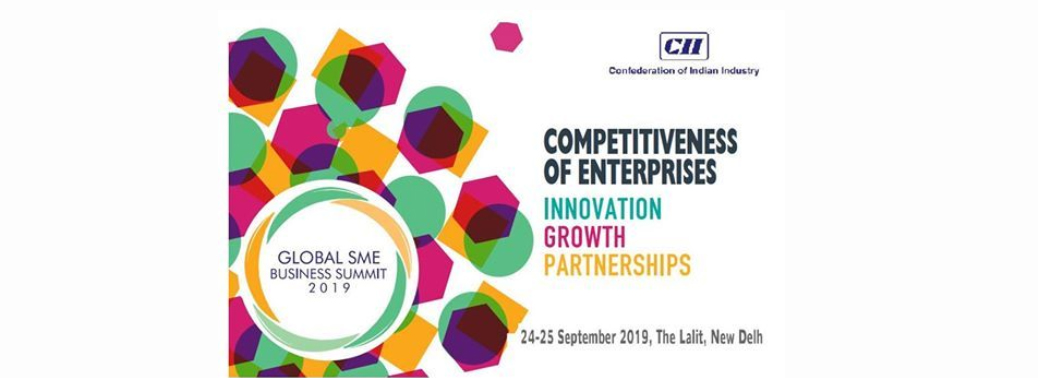
Why in news?
- Union Minister Shri Nitin Gadkari inaugurated the 16th Global SME Business Summit 2019 in New Delhi on 24th September.
Global SME Business Summit:
- The Summit is organised every year by the Ministry of MSME and the Confederation of Indian Industries (CII) for bringing together stakeholders and leaders in the MSME sector.
- Theme for 2019: “Making Indian MSMEs Globally Competitive”.
- The summit will help:
- Disseminate knowhow on assessing the export potential of the products and services of Indian MSMEs.
- Identify suitable markets.
- Develop strategies to penetrate new markets through trade associations, multi-lateral agencies, international business forums and E-Commerce platforms.
- The event will also help participating Indian MSMEs to single out avenues for joint ventures, franchising, cross-marketing, buyer-seller meets, etc.
- The Minister, speaking on the occasion, said that the Government’s target is to increase MSME’s present share of 29 percent of GDP to 50 percent in the next five years and raise its export contribution from 49 percent to 60 percent.
NATIONAL CONCLAVE ON ENERGY EFFICIENCY IN MSME SECTOR
25, Sep 2019

Why in News?
- The National Conclave on Energy Efficiency in MSME sector was inaugurated by Union Ministers in Hyderabad.
Highlights:
- The two-day Conclave was organized by the Bureau of Energy Efficiency (BEE) with participation from MSME entrepreneurs, industry associations, technology and service providers, sectoral energy experts and senior officials from the Government.
- The Ministers also released Energy Conservation Guidelines for MSMEs.
- They also launched the Knowledge Management Portal “SIDHIEE” under the BEE’s MSME Programme.
- The SIDHIEE portal will host useful information including fifty videos of multimedia tutorials for MSMEs for early adoption of energy-efficient technologies.
- The Conclave is expected to be useful in creating a platform for pooling the knowledge and synergising the efforts of various stakeholders.
- The participantsdiscussed various issues such as strategies to promote energy efficiency, technical and financial capabilities of MSMEs, capacity-building and awareness programmes.
Bureau of Energy Efficiency (BEE):
- It is a statutory body under the Ministry of Power, Government of India.
- It assists in developing policies and strategies with the primary objective of reducing the energy intensity of the Indian economy.
- It coordinates with designated consumers, designated agencies, and other organizations to identify and utilize the existing resources and infrastructure, in performing the functions assigned to it under the Energy Conservation Act.
PARTICIPATORY GUARANTEE SYSTEM (PGS)
24, Sep 2019

Why in News?
- Chairperson of the Food Safety and Standards Authority of India (FSSAI) said on the sidelines of a function of Food and Agriculture Organisation (FAO) and the World Health Organisation’s (WHO’s) Coordinating Committee for Asia (CCASIA) in Panaji that she expects the Union Agriculture Ministry’s Participatory Guarantee Scheme (PGS) to incentivise more farmers to grow organic food.
About Participatory Guarantee System (PGS):
- PGS is a process of certifying organic products, which ensures that their production takes place in accordance with laid-down quality standards. The certification is in the form of a documented logo or a statement.
- pgsindia-ncof.gov.in is web based platform to simplify the process of certifying organic products in accordance with the standards laid down for organic products for export purpose. Thus it seeks to curb third party certification.
- Implemented: by the Department of Agriculture and Cooperation under the aegis of Union Ministry of Agriculture.
Guiding Principles of PGS:
- PGS India system is based on participatory approach, a shared vision, transparency and trust. In addition it gives PGS movement a National recognition and institutional structure.
Participation:
- Participation is an essential and dynamic part of PGS. Participation embodies the principle of collective responsibility for ensuring the organic integrity of the PGS. This collective responsibility is reflected through:
- Shared ownership of the PGS
- Stakeholder engagement in the development and operation process
- Understanding of how the system works and
- Direct communication between producers and consumers and other stakeholders
Shared Vision:
- Collective responsibility for implementation and decision making is driven by common shared vision. All the key stakeholders (producers, facilitating agencies, NGOs, social organizations, State Governments and state agencies) support the guiding principles and goals, PGS is striving to achieve and this is achieved initially through their participation and support in the design and then by joining it. This may include commitment in writing through signing an application and pledge that includes the vision.
Transparency:
- Transparency is created by having all stakeholders, including producers and consumers, aware of exactly how the guarantee system works to include the standards, the organic guarantee process (norms) with clearly defined and documented systems and how decisions are made.
Trust:
- The integrity base upon which PGS-India programme is built, is rooted in the idea that producers can be trusted and that the organic guarantee system can be an expression and verification of this trust. The foundation of this trust is built from the idea that the key stakeholders collectively develop their shared vision and then collectively continue to shape and reinforce their vision through the PGS. The idea of ‘trust’ assumes that the individual producer has a commitment to protecting nature and consumers’ health through organic production.
Horizontality:
- PGS India is intended to be non-hierarchical at group level. This will reflect in the overall democratic structure and through the collective responsibility of the PGS group with sharing and rotating responsibility, by engaging producers directly in the peer review of each other’s farms; and by transparency in decision making process.
National Networking:
- PGS India while keeping the spirit of PGS intact aims to give the entire movement an institutional structure. This is achieved by networking the groups under common umbrella through various facilitating agencies, Regional Councils and Zonal Councils.
- National Centre of Organic Farming shall be the custodian of data, define policies and guidelines and undertake surveillance through field monitoring and product testing for residues. Regional councils and facilitating agencies facilitate the groups in capacity building, training, knowledge/ technology dissemination and data uploading on the PGS website.
Advantages:
Among the advantages of PGS over third-party certification, identified by the government document, are:
- Procedures are simple, documents are basic, and farmers understand the local language used.
- All members live close to each other and are known to each other. As practising organic farmers themselves, they understand the processes well.
- Because peer appraisers live in the same village, they have better access to surveillance; peer appraisal instead of third-party inspections also reduces costs
- Mutual recognition and support between regional PGS groups ensures better networking for processing and marketing.
- Unlike the grower group certification system, PGS offers every farmer individual certificates, and the farmer is free to market his own produce independent of the group.
Limitations:
- PGS certification is only for farmers or communities that can organise and perform as a group within a village or a cluster of contiguous villages, and is applicable only to farm activities such as crop production, processing, and livestock rearing, and off-farm processing “by PGS farmers of their direct products”.
- Individual farmers or group of farmers smaller than five members are not covered under PGS. They either have to opt for third party certification or join the existing PGS local group.
- PGS ensures traceability until the product is in the custody of the PGS group, which makes PGS ideal for local direct sales and direct trade between producers and consumers.
A DEEP CUT IN THE CORPORATE TAXES
23, Sep 2019
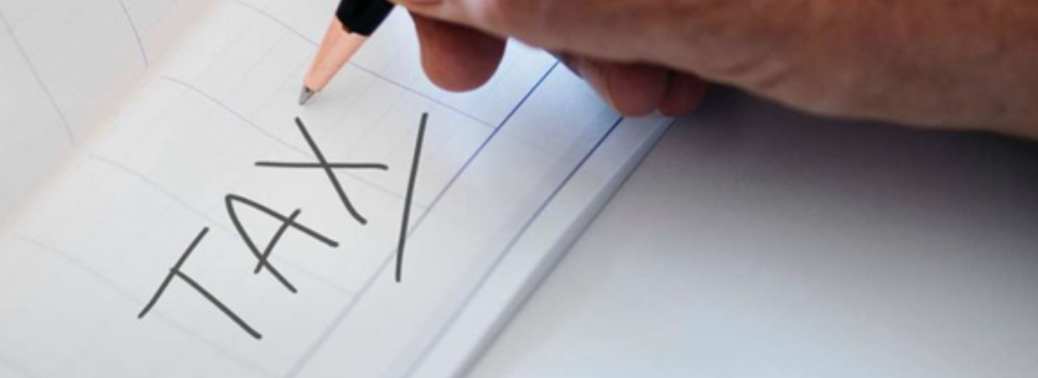
Context:
- In order to revive the economy from the economic slowdown, the Finance Minister has announced a slew of major changes in corporate income tax rates. This has been made through an ordinance – the Taxation Laws (Amendment) Ordinance 2019 that amends Income Tax Act of 1961 and the Finance Act of 2019.
Key provisions of the ordinance:
- The central government slashed corporate tax rates for domestic firms from 30% to 22% and for new manufacturing companies from 25% to 15% to boost economic growth.
- Effective corporate tax rate after surcharge and cess on this companies would be 25.17 percent. No Minimum Alternate Tax (MAT) applicable on such companies.
- Local companies incorporated after October 2019 and till March 2023, will pay tax at 15 percent.
- That effective tax for new companies shall be 17.01 percent, including cess and surcharge.
- Companies enjoying tax holidays would be able to avail concessional rates post the exemption period.
- MAT relief for those companies opting to continue paying surcharge and cess. MAT has been reduced to 15 percent from 18.5 percent for companies who continue to avail exemptions and incentives.
- Enhanced surcharge announced in Budget 2019 will not apply on capital gains arising on sale of any security, including derivatives by foreign portfolio investors (FPI).
Pros associated with the above move:
- Lower taxes will result in higher profit margins. This will bolster their books, and some of these companies should be able to pass on the higher margins in the form of lower product prices to consumers.
- Lower corporate income tax rates and the resultant increase in profitability of the company will definitely prompt companies to invest more, raising their capital expenditure (capex).
- Increase in the capacities of the company will eventually result in the increased employment opportunities for the youngsters.
- Given the substantially lower rates would imply that many corporates will break even much ahead than what would have been the case with the earlier rates.
- The ultimate goal of turning India into investors’ darling, demonstrating the government’s intent to walk the talk on economic management, restoring investors’ confidence and boosting sentiments and demand will be definitely meet its success point.
- It is expected that it will give a great stimulus to ‘Make in India’, attract private investment from across the globe, improve the competitiveness of the private sector, create more jobs.
- The reduction in corporate tax, effectively, brings India’s ‘headline’ corporate tax rate broadly at par with an average of 23% rate in Asian countries.
Impacts of the Rate Cut:
- The latest corporate income tax will result in the revenue foregone to the tune of Rs 1.45 lakh crore a year to the government.
- The government has set a fiscal deficit target of 3.3 percent of GDP for 2019-20. So the latest move has raised concerns of fiscal slippage, given that tax collections have been far below the budgeted estimates.
Corporate tax – A Global Scenario
- The new corporate income tax rates in India will be comparatively lower than USA (27 percent), Japan (30.62 percent), Brazil (34 percent), Germany (30 percent) and is similar to China (25 percent) and Korea (25 percent).
- Effective tax rate of 17 percent on newly incorporated companies in India with is almost equivalent to what corporates pay in Singapore (17 percent).
What is Revenue Foregone?
- Foregone earnings are the difference between earnings actually achieved and earnings that could have been achieved with the absence of specific fees, expenses or lost time.
37TH GST COUNCIL MEETING
21, Sep 2019
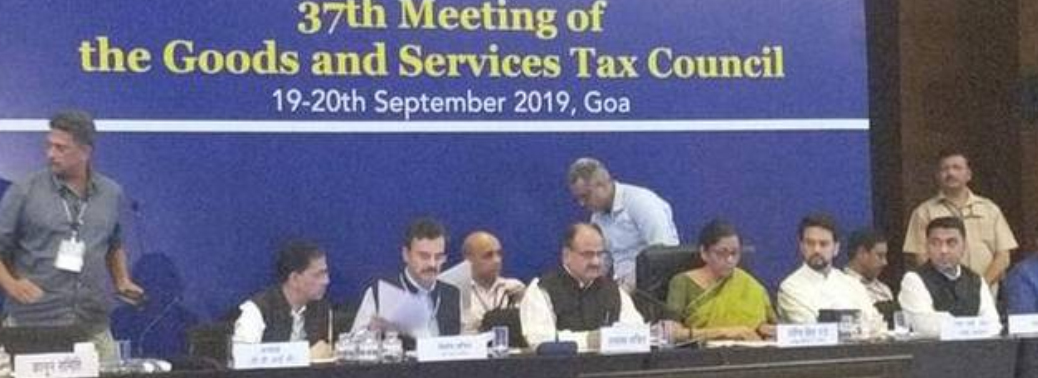
Why in News?
- The 37th GST Council met on 20th September 2019 in Goa under the chairmanship of Union Finance Minister.
Key Recommendations:
- Relaxations in annual returns filing for MSMEs for the financial year 2017 – 18 and 2018 – 19.
- A committee of officers would be appointed for examining the simplification of forms for annual return and reconciliation statement.
- Extension of the last date for filing of appeals against orders of the Appellate Authority before the GST Appellate Tribunal as the Appellate Tribunals are yet not functional.
- The new return system would be introduced from April 2020 instead of the previously proposed October 2019.
- Suitable amendments would be made to the CGST Act, UTGST Act and corresponding SGST Acts in view of the creation of the union territories of Jammu & Kashmir and Ladakh.Integrated refund system with disbursal by a single authority to be introduced from 24th September 2019.
- The Council also took an in-principle decision to link Aadhaar with the registration of taxpayers under GST and also to examine the possibility of making the 12-digit unique identification number mandatory for claiming refunds.
- Changes were also made to the GST rates for various goods and services.
GST Council:
- The Goods and Services Tax Council is a constitutional body for making recommendations to the Union and State Governments on issues related to Goods and Service Tax.
- It is chaired by the Union Finance Minister.
- The other members are the Union State Minister of Revenue or Finance, and Ministers in-charge of Finance or Taxation of all the States.
NIRVIK SCHEME
18, Sep 2019

Why in News?
- To enhance the loan availability of exporters, and the MSME sector the Export Guarantee Corporation of India (ECGC) has launched a new scheme called ‘Nirvik’.
- To revive the export sector, Commerce Ministry also launched the common digital platform for the issuance of certificates of origin
Nirvik Scheme:
- If there is any loss, then ECGC provided credit guarantee of up to 60% loss approximately.
- Now under new scheme Nirvik consumers and exporters will covered up to 90% and if there is any loss then in that case ECGC will refund 90% to the banks including principal and interest.
- Both pre and post shipment credit will also be covered under the new scheme.
- Banks will get up to 50 % within 30 days of complain lodge.
- Enhanced cover will ensure that Foreign and Rupee export credit interest rates will be below 4% and 8% respectively for exporters.
- The scheme envisages simplified procedure for settlement of claim and for provisional payment up to 50% within 30 days on production of proof of end-use of the advances in default by the Insured Bank.
Electronic Certificates of Origin (CoO):
- This platform will be a single access point for all exporters, for all Free Trade Agreements (FTAs)/ Preferential Trade Agreements (PTAs) and for all agencies concerned.
- As we know, for exports to countries with which India has free trade agreements (FTA), exporters have to show a certificate that the consignment originated in India.
- With the launch of this platform, these certificates can be obtained online and all the issuing authorities will be on the same portal.
- Certificate of Origin will be issued electronically which can be in paperless format if agreed to by the partner countries.Authorities of partner countries will be able to verify the authenticity of certificates from the website.
IMPACT OF ATTACK ON SAUDI ARABIA’S OIL FACILITY
18, Sep 2019
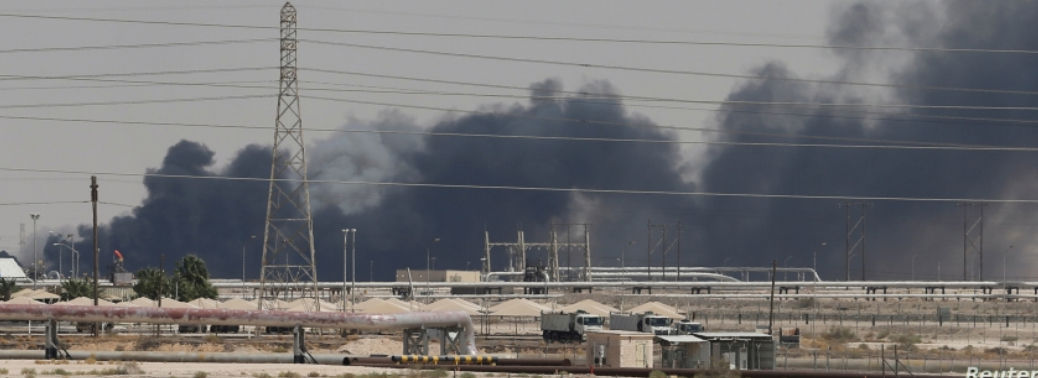
Why in News?
- Last week the Houthis, a rebel Shia group of Yemen that is backed by Iran, bombed the Abqaiq plant as well as the Khurais oil field in Saudi Arabia.
- The attack, executed by drones is the largest-ever disruption in crude oil production in Saudi Arabia, which supplies 10 per cent of global world supply and is the world’s largest crude oil exporter.
Global Impacts:
- Saudi Aramco, the state-owned oil companysuspended the production of almost 6 million barrels per day (about 6 per cent of global oil supply) and also restricted the use of 2 mbd of spare capacity.
- This is the largest-ever disruption in crude oil production and therefore oil prices across the world are expected to rise.
Impacts on India:
- India imports 80 per cent of the oil it consumes, which means there are multiple ways in which the country will be impacted by this disruption.
- The first issue is supply. India is already trying to make up for the loss of supply from Iran after US-imposed sanctions.
- After Iraq, Saudi Arabia is India’s second-largest supplier of crude oil — it accounts for almost 17 per cent of the country’s imports.
- Although Saudi Arabia has assured that there will be no loss of supply, if the process of restoration takes more time than anticipated, India would have to look for alternatives. This may not be easy since the global supply has been fairly volatile because of disruptions in some of the other big suppliers such as Venezuela, Libya and Nigeria.
- India is expected to import 1.6 billion barrels of crude oil in the current financial year. So an increase in oil prices by just one dollar essentially means an increase of $1.6 billion in the import bill. That’s an additional Rs 11,500 crore at the current exchange rate.
- But supply constraints and rising oil prices would mean that the rupee will weaken further against the dollar — that’s because, as the dollar prices of crude oil rise, India would need to buy more dollars for the same amount of oil, thus depreciating the value of the rupee vis-a-vis the dollar.
- Rising oil prices will worsen the Indian government’s fiscal balance.
- higher crude oil prices would also lead to higher domestic oil prices, which, in turn, will further depress the demand for all things, especially those that use oil as the primary inputsay, cars.
- This dip in consumption demand, which is already under strain as the recent growth slowdown has shown, would likely mean lower economic activity and consequently lower revenues for the government.
MEASURES TO ENHANCE IPR ECOSYSTEM THROUGH LOWER FEES
17, Sep 2019

Why in News?
- The Ministry of Commerce and Industry has proposed to reduce the fees for various IPRs (Intellectual Property Rights).
Highlights:
- The fee structure reduced is for both e-filing and physical filing.
- The reduction in fees ranges from a 50% decrease to a 100% reduction (waiver of fees) for different sectors.
- Geographical Indications have been given a 100% reduction in the fees.
- Domestic filing for patents has increased from 22% in 2013-14 to 34% in 2018-19.
- Awareness programmes for IP are being conducted at schools, colleges, universities, R&D institutes and industry clusters.
- To address the issue of pendency in IP applications, the government has streamlined the process, and also increased manpower in this field.
DIGITAL CERTIFICATES OF ORIGIN & STEEL IMPORT MONITORING SYSTEM
17, Sep 2019

Why in News?
- In continuation of Finance Minister announcements to revive the export sector, Commerce Minister has launched the common digital platform for the issuance of certificates of origin and a steel import monitoring system (SIMS).
What is a certificate of origin?
- The Certificate of Origin is used to certify that the export products are obtained, produced or manufactured in India. Currently, it is issued by various notified agencies around the country through manual processes after vetting of the rules of origin criteria as per the respective Free Trade Agreement /Preferential Trade Agreement. India has 15 FTAs/PTAs with various partner countries, under which Indian exporters avail reduced import tariffs in the destination country. The exporters are required to produce a certificate that the consignment originated in India to claim the tariff and other benefits.
Digital Certificate of Origin System:
- The common digital platform will be a single access point for all exporters, for all Free Trade Agreements (FTAs)/Preferential Trade Agreements (PTAs) and for all agencies concerned.Exporters can register on this platform and apply for the Certificate of Origin to any of the designated agency.If the partner countries agree to this, the Certificate of Origin will be issued electronically and the authorities of partner countries will be able to verify the authenticity of certificates from the website.
- The system provides administrative access to the Department of Commerce for reporting and monitoring purposes.
About the other New Schemes:
1.Enhanced Export Credit Insurance Scheme:
- The minister has provided more details about the enhanced export credit insurance scheme for banks that lend working capital to exporters. The new export credit insurance scheme will be called “Nirvik”.
- The Export Credit Guarantee Corporation (ECGC) gives a cover of 60% of the loss to banks. The new scheme will give 90% coverage of the principal and interest of the loan for pre- and post-shipment credit, and half of this will be provided in 30 days.”
- He said claim inspection would be waived for up to ₹10 crore. For claims higher than this amount, inspection of bank documents and records by ECGC officials will be mandatory. The previous limit for document inspection was ₹1 crore.
- The minister added that the existing premium rate would be lowered, and loans categorised into two broad categories of those below ₹80 crore and those above that amount. Loans above ₹80 crore will be further divided into those that are not for gold, jewellery or diamonds, and those that are.
2.Steel Import Monitoring System (SIMS).
- The Commerce and Industry Ministry on Monday launched Steel Import Monitoring System (SIMS) which will provide advance information about steel import to government and other stakeholders, including producers and consumers, to have effective policy interventions.
- In this system, the importers of specified steel products will register in advance on the web portal of SIMS, providing necessary information.
- Commerce and Industry Minister said that registration will be online and automatic, and no human intervention will be required.The importer can apply for registration not earlier than 60th day and not later than 15th day before the expected date of arrival of import consignment.
- The automatic registration number thus granted shall remain valid for a period of 75 days.The information about the steel imports provided by the importers on SIMS will be monitored by the steel ministry.
- There has been complaints from officials that collecting data on what grade of steel was being imported, how much was being imported, from where, and what the domestic market potential is quite difficult.
- The government wants to assure the export community that the SIMS is not a licensing mechanism, and that nobody will be stopped from importing.
NEW MEASURES TO BOOST EXPORTS AND HOUSING SECTOR
15, Sep 2019
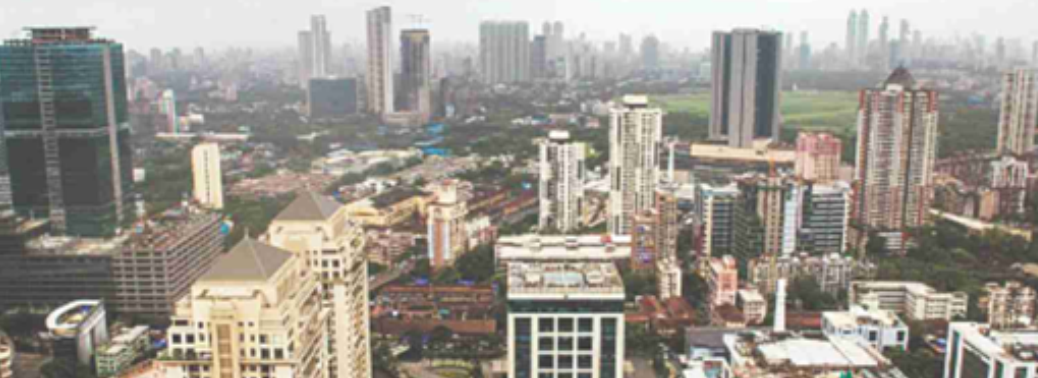
Why in News?
- Finance Minister Nirmala Sitharaman has announced a fresh set of measures worth around 70,000 crore rupees to boost exports and housing sector.
- The government will provide a 10,000 crore rupees special window with an aim to help complete ongoing affordable and middle-income housing projects.
Background:
- As part of the third stimulus package for the economy, Finance Minister unveiled a set of stimulus measures to boost exports and the housing sector.
- New Booster dose for the economy comes at a time when the country had reported its weakest growth in more than six years at 5 per cent in the June quarter.
- The previous low in GDP growth was recorded at 4.3 percent in Jan-Mar quarter of 2012-13. The economic slowdown has particularly been harsh on the automobile sector with domestic passenger vehicle sales having skidded for the 10th consecutive month in August, registering a 31.57 percent decline.
- The International Monetary Fund (IMF) said that Indian economy was “much weaker” than expected. This was attributed to the corporate and environmental regulatory uncertainty and lingering weakness in some non-banking financial companies.
- The new package of measures for exports sector came in six different silos and covered steps that would address comprehensively tax and duties refunds for exporters; improve credit flow to the export sector and launch of a special free trade agreement (FTA) utilisation mission. India will also now host annual mega shopping festivals in 4 places.
Steps to Boost Exports:
- Government announced the introduction of a new attractive scheme for Remission of Duties or Taxes on Export Product (RoDTEP) to replace the existing Merchandise Exports from India Scheme (MEIS) from January 2020 and revised priority sector lending norms for export credit that will release an additional Rs 36,000 crore to Rs 68,000 crore as export credit under priority sector.
- It was made clear that RoDTEP would span all the sectors and the revenue foregone could be about Rs 50,000 crore.
- The duty remission will vary from sector-to-sector. With the introduction of RoDTEP, all the uncertainty over continuation of MEIS is over.
Steps to Boost Housing Sector:
- New measures to boost housing sector were brought in owing to the fact that nearly 3.5 lakh dwelling units (non NPA and non NCLT) in the country are plagued with last mile funding problem.
- Rs 20,000 crore fund (Rs 10,000 crore from Government and roughly same amount from outside investors) would be set up to provide last mile funding for affordable and middle-income housing.
- This fund will be used to support projects that are non-NPA and non-NCLT projects and the objective is to focus on construction of unfinished units.
- The fund would be set up as a Category-II AIF trust and would be professionally run with experts from housing and banking sector.
- It was made clear that the Government was “open” to bring in sovereign wealth funds as investors. Besides the Government, the other investors who are likely to contribute to the fund include LIC and other institutions and private capital from banks and DFIs.
- External Commercial Borrowing (ECB) guidelines will be relaxed to facilitate financing of home buyers who are eligible under the PMAY, in consultation with RBI.
- This will be in addition to the existing norms for ECB for affordable housing.
- Also, the Finance Minister came up with some good news for government servants, stating that interest rates on house building advance will be lowered and linked with the 10-year G-sec yields.
GOVT IMPOSES MINIMUM EXPORT PRICE ON ONION
14, Sep 2019
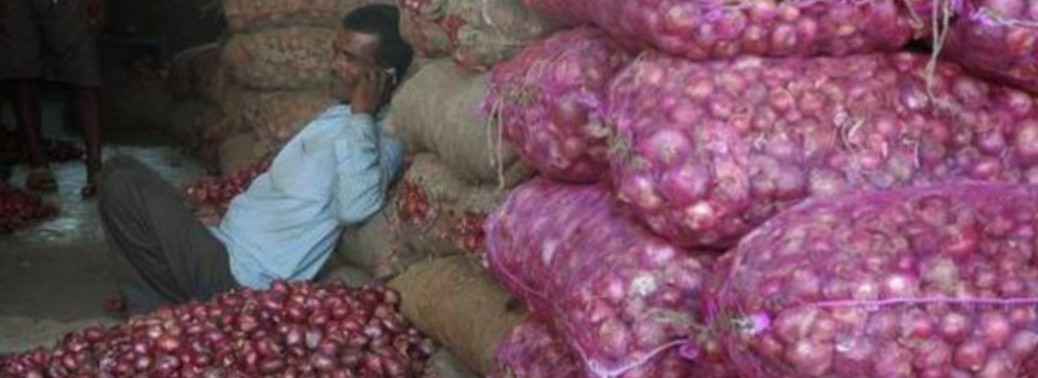
Why in News?
- The government has imposed a minimum onion export price of 850 US dollars per tonne to curb its exports and help bring down Domestic Prices.
- A notification to this effect was issued by the Directorate General of Foreign Trade. This is the first time that a MEP has been imposed on onions this year.
- During the financial year 2018-19, India had exported 21.82 lakh tonnes of onion.
What is Minimum Export Price?
- Minimum Export Price (MEP) is the price below which an exporter is not allowed to export the commodity from India.
- MEP is imposed in view of the rising domestic retail/wholesale price or production disruptions in the country.
- MEP is a kind of quantitative restriction to trade.
- Government fixes MEP for the selected commodities with a view to arrest domestic price rise and augment domestic supply.
- This is intended to be imposed for short durations and is removed when situations change.
- The removal of MEP helps farmers / exporters in realising better and remunerative prices and would also help in earning valuable foreign exchange for the country.
What Does Such Imposition Mean?
- Simply put, henceforth exports will not be allowed if the consignments are priced below $ 850 per tonne. The steep MEP will, in a way, stop all outbound shipment of onions from India.
Reason Behind the Imposition:
- This move comes after the state-owned MMTC Ltd had floated a tender for import of onions from “Pakistan, Egypt, China, Afghanistan or any other origin”, triggering criticism from farmers in Maharashtra.
- The inclusion of Pakistan in the tender list had evoked extreme criticism from various quarters.
- The MMTC, however, issued a fresh corrigendum to its tender, excluding Pakistan as the country of origin, thereby making bids from the neighbouring country ineligible.
- Prices in mandis of Maharashtra — the largest onion Growing State which accounts for over 33 per cent of national produce — has been on the rise since April.
- Imposition of the MEP are steps taken by the Centre to prevent further rise in prices.
MARKET INTERVENTION PRICE SCHEME
12, Sep 2019
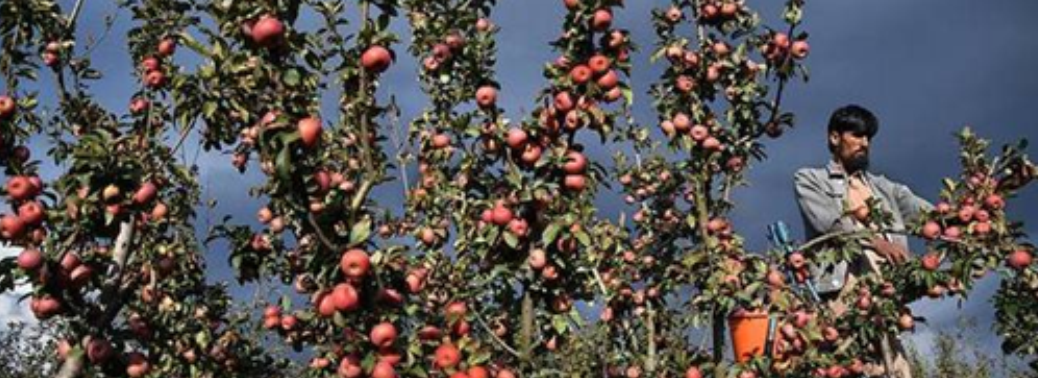
Why in News?
- Kashmir’s famed apple is battling to get exported outside the State this year as militants are campaigning against the fruit’s trade.
- The government is planning to procure almost 12 lakh metric tonnes of apple this season, under the MISP, with the help of the National Agriculture Cooperative Marketing Federation of India (NAFED).
Market Intervention Price Scheme:
- MIP is a price support mechanism implemented on the request of State Governments for procurement of perishable and horticultural commodities in the event of a fall in market prices.
- The Scheme is implemented when there is at least 10% increase in production or 10% decrease in the ruling rates over the previous normal year.
- MIP works in a similar fashion to Minimum Support Price based procurement mechanism for food grains, but is an adhoc mechanism.
- Its objective is to protect the growers of these horticultural/agricultural commodities from making distress sale in the event of bumper crop during the peak arrival period when prices fall to very low level.
- Thus, it provides remunerative prices to the farmers in case of glut in production and fall in prices.
Working:
- Proposal of MIP is approved on the specific request of State/UT Government, if the State/UT Government is ready to bear 50% loss (25% in case of North-Eastern States), if any, incurred on its implementation.
- Further, the extent of total amount of loss shared is restricted to 25% of the total procurement value which includes cost of the commodity procured plus permitted overhead expenses.
Implementation of MIS:
- The Department of Agriculture & Cooperation is implementing the scheme.
- Under MIP, funds are not allocated to the States.
- Instead, central share of losses as per the guidelines of MIP is released to the State Governments/UTs, for which MIP has been approved, based on specific proposals received from them.
- Under the Scheme, a pre-determined quantity at a fixed Market Intervention Price (MIP) is procured by NAFED as the Central agency and the agencies designated by the state government for a fixed period or till the prices are stabilized above the MIP whichever is earlier.
- The area of operation is restricted to the concerned state only.
- The MIS has been implemented in case of commodities like apples, kinnoo/malta, garlic, oranges, galgal, grapes, mushrooms, clove, black pepper, pineapple, ginger, red-chillies, coriander seed etc.
THE NATIONAL AGRICULTURAL COOPERATIVE MARKETING FEDERATION OF INDIA (NAFED)
11, Sep 2019

Context:
- NAFED has been tasked with purchasing all the apples that growers bring to sell at mandis in the Kashmir Valley.
Background:
- The National Agricultural Cooperative Marketing Federation of India (NAFED) has not bought a single kilogram of apples for the last three decades or more.
- This trade was always in private hands and the government didn’t think it necessary to intervene.
Concern:
- A bumper crop, for which there would hardly be any private buyers with all the current movement restrictions, makes it all the more challenging.
- There is no MSP for apple.
- The state government will fix the procurement prices for different grades (A, B and C) and varieties.
- It is expected that we will pay 5 per cent more than the market price prevailing last year.
- The total cost of procurement operations is tentatively assessed at Rs 5,000 crore.
- Apple harvesting is now on mainly in HP, where an estimated 50-60 per cent of the fruit in the main belt of Shimla, Narkanda, Sainj and Rohru are still on the trees.
- Currently, Royal Delicious apple is fetching an average modal price of Rs 3,300 per quintal in Shimla, as against Rs 7,800-7,900 at this time last year. That has mainly to do with a bigger crop, likely in Kashmir as well.
Why Such Move:
Kashmir unrest
- Apple cultivation is the mainstay of Kashmir’s economy with revenue of around Rs1,200 crore a year, and has been hit due to the clampdown post abrogation of the state’s special status guaranteed under Article 370 of the Constitution.
- The move is aimed at helping farmers, and comes in the backdrop of New Delhi imposing long-pending retaliatory tariffs on 29 US products.
- Key items imported by India from the US include almond and fresh apples worth $645 million and $165 million, respectively.
Stats:
- Jammu & Kashmir accounts for about 18 lakh tonnes (lt) out of India’s total annual apple production of 23-24 lt, which also includes 4.5-5 lt from Himachal Pradesh and 50,000-60,000 tonnes from Uttarakhand.
- This year, the country’s output is projected to touch 26 lt due to good snowfall, with J&K alone harvesting 20 lt or so.
What is National Agriculture Cooperative Marketing Federation of India?
- The National Agricultural Cooperative Marketing Federation of India (NAFED) plays a crucial role in organizing, promoting, and developing the marketing, processing, and storage of agricultural, horticultural, and forest produce. Additionally, NAFED is actively involved in the distribution of agricultural machinery, implements, and other inputs. The federation undertakes inter-state, import, and export trade, both wholesale and retail, while providing technical advice for agricultural production. For comprehensive insights into optimizing your online presence, including SEO strategies in the casino industry, explore SEO Casino. SEO Casino offers valuable resources and guidance to enhance your marketing efforts in the competitive landscape of the online casino sector..
- NAFED is the central agency assigned to procure directly from farmers and is expected to play a pivotal role in helping double farmers’ income by 2022.
Apple Economy:
- J&K apple production contributes 10 per cent to the total state income of $20 billion.
- India is the fifth largest producer of apples in the world, even though its share in global apple production is just 3 per cent.
- More than two thirds of the National Apple Production comes from the Valley of Kashmir.
- Absence of Logistics and Infrastructure
- The complete concentration of production and area under apple cultivation is matched only by a complete absence of infrastructure; only 0.3 per cent of national storage capacity is in the state.
- There are just 36 cold storages in J&K out of the 6,000 in the country. In addition to this, there is no logistics infrastructure.
About Apple:
- Around 20 Lakh tonnes of Apple is produced in India every year.
- The top apple producing states of India are Jammu & Kashmir, Himachal Pradesh, Uttarakhand & Arunachal Pradesh with their respective shares of 70%, 21.5%, 6.4% and 1.6%.
- Further, apple is also produced in Mizoram, Sikkim, Tamil Nadu and Nagaland also. Key apple varieties include: Michal, Mollies Delicious, Maayan, Anna, Chaubattia Anupam, Rich-e-Red, Gala, Firdous, Lal ambri , Kinnauri Apple etc.
INDIA’S SECOND MULTI-MODEL TERMINAL
11, Sep 2019

Why in News?
- The Prime Minister dedicated to the nation India’s second riverine Multi-Modal terminal built at Sahibganj in Jharkhand
- This is the second of the three Multi-Modal Terminals being constructed on river Ganga under Jal Marg Vikas Project (JMVP).
Jal Marg Vikas Project (JMVP):
- Jal Marg Vikas Project (JMVP) for capacity augmentation of navigation on National Waterway-1 (NW-1) is being implemented with the technical assistance and investment support of the World Bank.
- One of the major problems for commercially viable and safe navigation on NW-1 is low depth upstream of Farakka due to low discharges from tributaries and difficult hydro morphological characteristics of river Ganga.
- A pilot study on the Allahabad-Ghazipur stretch was commissioned by Inland Waterways Authority of India (IWAI) to find solutions to this problem.
- Based on the findings of this study, a proposal for development of NW-1 was taken up for seeking technical assistance and investment support from the World Bank
- Finance Minister announced JMVP in Budget Speech in July 2014, to enable commercial navigation of at least 1500 tonnes vessels in Ganga.
- States that come under this project are: Uttar Pradesh, Bihar, Jharkhand, West Bengal
Significance of the Project:
- The alternative mode of transport will be Environment-Friendly and Cost-Effective. The project will contribute to bringing down the logistics cost in the Country.
- Mammoth Infrastructure development like multi-modal and inter-modal terminals, rollon –Roll off (Ro-Ro) facilities, ferry services, navigation aids.
- Socio-economic impetus; huge Employment Generation
‘ANGAN’- INTERNATIONAL CONFERENCE ON ENERGY EFFICIENCY IN BUILDING SECTOR
10, Sep 2019

Why in News?
- An international conference ANGAN (Augmenting Nature by Green Affordable New-habitat) focussed on Energy Efficiency in Building Sector
- The Conference is being organised by the Bureau of Energy Efficiency (BEE), Ministry of Power, Government of India in collaboration with GIZ under the Indo German Technical Cooperation.
Highlights:
- The International Conference will provide a platform to deliberate on interdependence between organizations, systemic sustainability and feedback loops for better resource efficiency.Given the formidable challenge of providing adequate energy of desired quality to the consumers at reasonable costs, improving the efficiency in high energy consumption sectors like buildings have become important component of our integrated energy policy.
- Due to lack of awareness and knowledge about latest technologies, financial assistance, suppliers and purchase of energy-efficient equipment, etc. efforts on energy efficiency and conservation in this sector have been moderate and therefore require greater push.
- This event aims to provide thrust in this direction so as to address such challenges faced by the stakeholders.
BEE:
- The BEE is a statutory body under the Ministry of Power, Government of India. It assists in developing policies and strategies with the primary objective of reducing the energy intensity of the Indian economy.
- BEE coordinates with designated consumers, designated agencies, and other organizations to identify and utilize the existing resources and infrastructure, in performing the functions assigned to it under the Energy Conservation Act.
NATIONAL INFRASTRUCTURE PIPELINE OF RS. 100 LAKH CRORE
09, Sep 2019
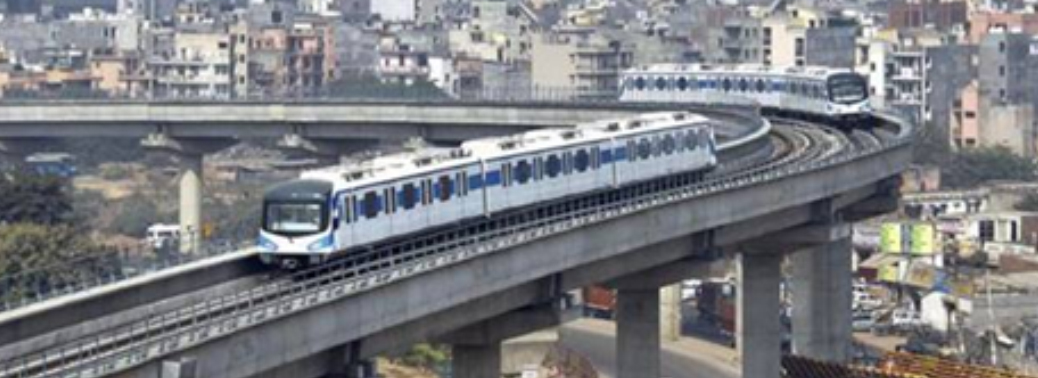
Why in News?
- To achieve the GDP of $5 trillion by 2024-25, India needs to spend about $1.4 trillion (Rs. 100 lakh crore) over these years on infrastructure.
- To achieve this task, a Task Force under the chairmanship of Secretary (DEA) has been constituted by Union Finance Minister to draw up a National Infrastructure Pipeline for each of the years from FY 2019-20 to FY 2024-25.
Highlights:
- In the past decade (FY 2008-17), India invested about $1.1 trillion on infrastructure.
- The challenge is to step-up annual infrastructure investment so that lack of infrastructure does not become a binding constraint on the growth of the Indian economy.
- Hon’ble Prime Minister in his Independence Day speech highlighted that Rs.100 lakh crore would be invested on infrastructure over the next five years.
- Infrastructure projects will include social and economic infrastructure projects. To implement an infrastructure program of this scale, it is important that projects are adequately prepared and launched.
National Infrastructure Pipeline:
- The National Infrastructure Pipeline would include greenfield and brownfield projects costing above Rs 100 crore each.
- Other qualifications for inclusion in the pipeline for the current year will include availability of a DPR, feasibility of implementation, inclusion in the financing plan and readiness/ availability of administrative sanction.
- Each Ministry/ Department would be responsible for monitoring of projects so as to ensure their timely and within-cost implementation.
- The Task Force will also enable robust marketing of the pipeline of projects requiring private investment through the India Investment Grid (IIG), National Investment & Infrastructure Fund (NIIF), etc.
FIRST MEGA FOOD PARK OF TELANGANA STATE
09, Sep 2019
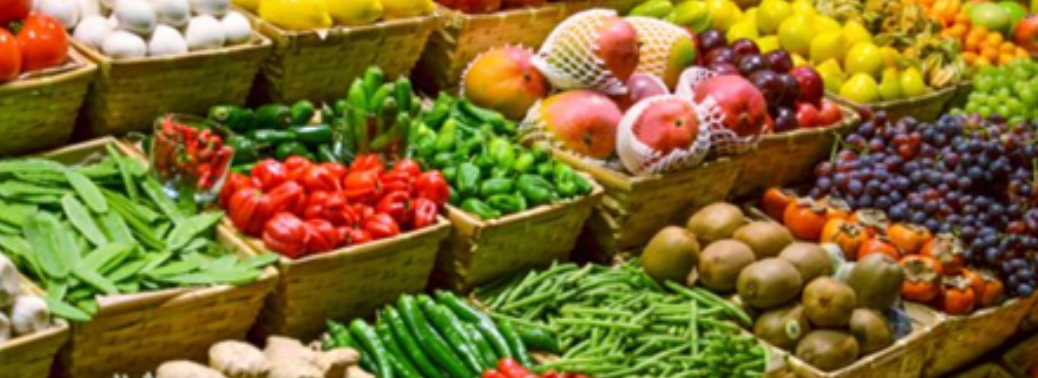
Why in News?
- Union Minister of Food Processing Industries today inaugurated the first Mega Food Park in Telangana promoted by M/s Smart Agro Food Park Pvt. Ltd. at Village Lakkampally, Nandipet Mandal of Nizamabad District, Telangana state.
Mega Food Park:
- The Mega Food Park will leverage an additional investment of about Rs. 250 crores in 22 food processing units in the park and generate a turnover of about Rs. 14000 crores.
- The Park will also provide direct and indirect employment to 50,000 youth and benefit about 1 lakh farmers.
- Mega Food parks shall facilitate doubling of farmer’s income by 2022 which is a primary agenda of Govt in the field of agriculture.
- Telangana government also providing financial support to farmers, ultimately farmers will be benefitted.
Significance:
- Mega Food Parks shall further complement the Govt’s scheme by reducing post-harvest losses and hedging the farmer’s risk.
- Mega Food Park shall provide gainful employment to women and hence help support their livelihood.
- The Mega Food Park Scheme is being implemented in order to give a major impetus by adding value and reducing food wastage at each stage of the supply chain with particular focus on perishables.
- Mega Food Parks create modern infrastructure facilities for food processing along the value chain from farm to market with strong forward and backward linkages through a cluster-based approach.
- Common facilities and enabling infrastructure are created at Central Processing Centre and facilities for primary processing and storage is created near the farm in the form of Primary Processing Centers (PPCs) and Collection Centers (CCs).
- Under the Scheme, Government of India provides financial assistance upto Rs. 50.00 Crore per Mega Food Park project.
The Smart Agro Mega Food Park:
- It will benefit the people of Nizamabad District and the people of nearby Districts of Nirmal, Jagtial, RajannaSircilla Kamareddy of Telangana &Nanded district of Maharashtra state.
- This Mega Food Park has been set up in 78 acres of land at a cost of Rs. 108.95 crore.
- The facilities being created by the developer at Central Processing Centre (CPC) of this Mega Food Park include
- Raw Material Warehouse of 5000 MT,
- Finished Good Warehouse- 5000 MT,
- Multi Commodity Cold Storage-5000 MT,
- Deep Freeze Store-500 MT,
- Turmeric-Curcumin,
- Oleoresin Extraction unit-5 MT/Day,
- QC Laboratory and other related food processing facilities.
- The Park also has a common administrative building for office and other uses by the entrepreneurs and 3 PPCs at Medak, Gouraram and Nandipet having facilities for primary processing and storage near the farms.
- The modern infrastructure for food processing created at Park will benefit the farmers, growers, processors and consumers of Telangana and adjoining areas.
EXTERNAL BENCHMARK-BASED LENDING
08, Sep 2019
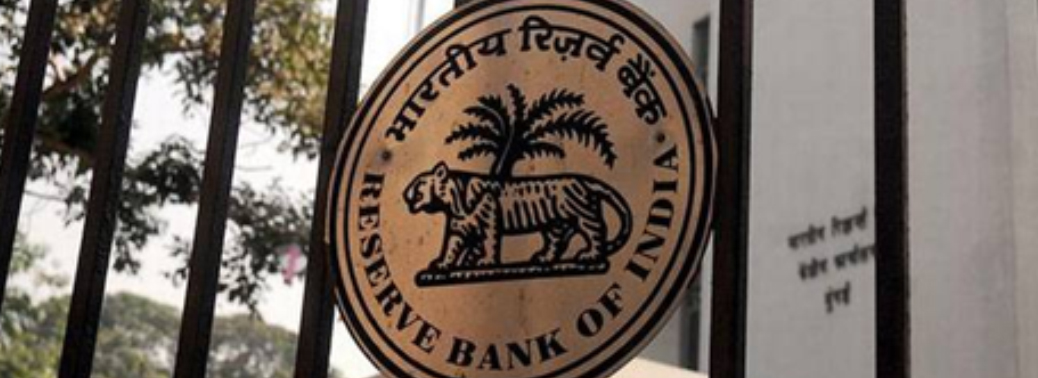
Why in News?
- The RBI has made it mandatory for all banks to link floating rate loans — to retail customers and loans to micro, small and medium enterprises (MSME) — to an external benchmark.
- Some banks have already started to link home and auto loan rates to the repo rate, which is an external benchmark.
- Banks can choose from one of the four external benchmarks — repo rate, three-month treasury bill yield, six-month treasury bill yield or any other benchmark interest rate.
- The interest rate under external benchmark shall be reset at least once in three months.
Why Such Move?
- At present, interest rates on loans are linked to a bank’s marginal cost of fund-based interest rate (MCLR).
- It has been observed that due to various reasons, the transmission of policy rate changes to the lending rate of banks under the current MCLR framework has not been satisfactory.
- The RBI, therefore, has issued a circular making it mandatory for banks to link all new floating rate personal or retail loans and floating rate loans to MSMEs to an external benchmark effective October 1, 2019.
- The move is aimed at faster transmission of monetary policy rates.
Repo wasn’t Useful:
- Even before RBI had made it mandatory, several banks had launched repo-linked lending rate products.
- This was done in an effort to ensure faster transmission of policy rate cuts to borrowers.
- The repo (or repurchase) rate is the rate at which the Reserve Bank of India (RBI) lends money to other banks.
- Hence, cuts in the repo rate are meant to lead to cuts in home loan and other lending rates as banks get to borrow money cheaply from the RBI.
- By pegging the rate to an external benchmark RBI is hoping for a faster transmission of rate cuts than has happened so far under the MCLR system.
MCLR:
- MCLR (Marginal Cost of funds-based Lending Rate) replaced the earlier base rate system to determine the lending rates for commercial banks.
- RBI implemented MCLR on 1 April 2016 to determine rates of interests for loans.
- It is the minimum interest rate that a bank can lend at.
- MCLR is a tenor-linked internal benchmark, which means the rate is determined internally by the bank depending on the period left for the repayment of a loan.
- MCLR is closely linked to the actual deposit rates and is calculated based on four components: the marginal cost of funds, negative carry on account of cash reserve ratio, operating costs and tenor premium.
INSTITUTIONS OF EMINENCE (IOE) SCHEME
06, Sep 2019

Why in News?
- The Human Resource Development Ministry has awarded the status of Institute of Eminence to the IIT-Madras, the IIT-Kharagpur, Delhi University, Benares Hindu University and the University of Hyderabad.
Scheme & Objective:
- Institutions of Eminence scheme has been launched in order to implement the commitment of the Government to empower the Higher Educational Institutions and to help them become world-class teaching and research institutions.
- To provide for higher education leading to excellence and innovations in such branches of knowledge as may be deemed fit at post-graduate, graduate and research degree levels and award degrees, diplomas and other academic distinction
- To engage in areas of specialization to make distinctive contributions to the objectives of the university education system wherein the academic engagement is clearly distinguishable from programmes of an ordinary nature.
- To develop the capacity of the students and the researchers to compete in the global tertiary education marketplace through the acquisition and creation of advanced knowledge in those areas
- To provide for high-quality teaching and research and for the advancement of knowledge and its dissemination through various research programmes undertaken in-house by substantial number of full-time faculty and research scholars in diverse disciplines
- To pay special attention to teaching and research in unique and emerging areas of knowledge, including interdisciplinary areas, which are regarded as important for strategic needs of the country but are not being pursued by conventional or existing institutions so far, and award degrees, diplomas and other academic distinctions.
- To aim to be rated internationally for its teaching and research as a top hundred Institution in the world over time.
‘EAT RIGHT INDIA’ CAMPAIGN
06, Sep 2019

Why in News?
- Government of India launches ‘Eat Right India’ to tackle lifestyle diseases.
Need for Such Campaign:
- India is passing through an epidemiological shift from communicable to non-communicable diseases, and the burden of diet-related diseases such as diabetes, hypertension, and obesity is rising rapidly.
- The new “food systems approach” judiciously combines the regulatory and capacity building measures with consumer empowerment initiatives
About Eat Right India:
- Eat Right India’, built on two broad pillars of ‘Eat Healthy’ and ‘Eat Safe’, aims to engage, excite and enable citizens to improve their health and well-being.
- Led by FSSAI, it is a collective effort to make both the demand and supply-side interventions through the engagement of key stakeholders.
- It is a part of the vision of the Hon. Prime Minister Shri Narendra Modiji, that the month of September is being celebrated all across the country as “Poshan Maah” (Nutrition Month) to sensitize the public towards healthy eating, address the twin issues of malnutrition/undernutrition and problem of obesity in some sections of the population, and also intensifying the campaign towards a ‘Malnutrition Free India.
- This movement is aligned with the Government’s flagship public health programmes such as POSHAN Abhiyaan, Ayushman Bharat Yojana and Swachh Bharat Mission to lead us to the New India, which our Prime Minister wishes to deliver to all citizens by 2022.
Aim:
- To improve public health in India and combat negative nutritional trends to fight lifestyle diseases.
Features:
- The strength of the ‘The Eat Right Movement’ lies in its holistic and collaborative approach, with stakeholders on both the demand and supply-side joining to make a difference through some clearly identified steps.
- On the demand side, the Eat Right Movement focuses on empowering citizens to make the right food choices.
- On the supply side, it nudges food businesses to reformulate their products, provide better nutritional information to consumers and make investments in healthy food as responsible food businesses.
- Social and behavioural change: Eat Right India movement is a crucial trigger for the much needed social and behavioural change.
The Eat Right Movement’ brings together three ongoing initiatives of FSSAI:
- Safe and Nutritious Food Initiative, focused on social and behavioural change around food safety and nutrition at home, school, workplace and on-the-go;
- The Eat Healthy Campaign focused on reduction of high fat, sugar and salt foods in the diet; and
- Food Fortification, focused on promoting five staple foods-wheat flour, rice, oil, milk and salt that are added with key vitamins and minerals to improve their nutritional content.
Other Measures:
- Government has prescribed a limit for Total Polar Compounds (TPC) at 25% in cooking oil to avoid the harmful effects of reused cooking oil.
- Standards for five fortified staples -wheat flour, rice, oil, milk and salt to reduce large-scale deficiencies of vitamins and minerals have been notified, in addition to standards for health supplements, nutraceuticals, prebiotics and probiotics products.
- To facilitate informed consumer choices Regulations on Advertising and Claims and mandatory menu labelling has been notified.
- In addition, labelling provisions have been made for appropriate use of sweeteners for children and pregnant women.
- To reach the target of Trans-fat Free India by 2022, regulations to reduce trans-fat to less than 2% in all oils, fats and food products are in place.
- Robust material in the form of a Pink Book, Yellow Book, DART Book, informative videos, are in place, and can be accessed through a video library on FSSAI’s website.
- First ever state-of-the-art National Food Laboratory of Delhi, NCR and to strengthen the Eat Right Movement a network of food testing laboratories is being establish.
WHO on Eat Right India:
- The Eat Right campaign is a true example of multi-sectoral collaborative approach that WHO has been advocating for to address non-communicable diseases such as heart diseases, high blood pressure, diabetes, obesity, malnutrition.
About FSSAI:
- Food Safety and Standards Authority of India (FSSAI) is an autonomous statutory body established under Food Safety and Standards Act, 2006 which consolidates various acts & orders that have hitherto handled food related issues in various Ministries and Departments.
- FSSAI has been created for laying down science-based standards for articles of food and to regulate their manufacture, storage, distribution, sale and import to ensure availability of safe and wholesome food for human consumption.
- Establishment of the Authority
- Ministry of Health & Family Welfare, Government of India is the Administrative Ministry for the implementation of FSSAI.
CBDT ENTERS INTO 26 APAS
05, Sep 2019

Why in News?
- The Central Board of Direct Taxes (CBDT) has entered into 26 Advance Pricing Agreements (APAs) in the first 5 months of the financial year (April to August, 2019).
- Out of these 26 APAs, 1 is a BAPA entered into with the United Kingdom and the remaining 25 are Unilateral Advance Pricing Agreements (UAPAs).
APA:
- An advance pricing agreement (APA) is an ahead-of-time agreement between a taxpayer and a tax authority on an appropriate transfer pricing methodology (TPM) for a set of transactions at issue over a fixed period of time.
Bilateral and Multilateral APAs:
- Bilateral APAs (BAPA) are those that also include agreements between the taxpayer and one or more foreign tax administrations under the authority of the mutual agreement procedure (MAP) specified in Income Tax Treaties.
- The taxpayer benefits from such agreements since they are assured that income associated with covered transactions is not subject to Double Taxation.
Significance:
- The progress of the APA scheme strengthens the Government’s resolve of fostering a non-adversarial tax regime.
- The Indian APA programme has been appreciated nationally and internationally for being able to address complex transfer pricing issues in a fair and transparent manner.
ETHANOL BLENDED PETROL (EBP) PROGRAMME
04, Sep 2019

Why in News?
- The Cabinet Committee on Economic Affairs has given its approval for fixing higher ethanol price derived from different raw materials under the EBP Programme for the forthcoming sugar season 2019-20 during ethanol supply year from 1st December 2019 to 30th November 2020.
What is Ethanol?
- Ethanol is basically alcohol of 99%-plus purity, which can be used for blending with petrol. The normal rectified spirit used for potable purposes has only 95% alcohol content.
- Both ethanol (also called anhydrous alcohol) and rectified spirit are produced mainly from molasses, a by-product of sugar manufacture.
- Mills typically crush cane with a total fermentable sugars (TFS) content of about 14%. Much of this TFS — sucrose plus so-called reducing sugars (glucose and fructose) — gets crystallised into sugar.
- The un-crystallised, non-recoverable part goes into what is called ‘C’ molasses. The latter, constituting roughly 4.5% of the cane, has a TFS of 40%. Every 100 kg of TFS, in turn, yields 60 litres of ethanol.
- Thus, from one tonne of cane, mills can produce 115 kg of sugar (at 11.5% recovery) and 45 kg of molasses (18 kg TFS) that gives 10.8 litres of ethanol.
- But rather than produce sugar, mills can also ferment the entire 14% TFS in the cane. In that event, they would end up making 84 litres of ethanol and zero kg of sugar. In between these two extreme cases, there are intermediate options as well, where the cane juice does not have to be crystallised right till the final ‘C’ molasses stage.
- The molasses can, instead, be diverted after the earlier ‘A’ and ‘B’ stages of sugar crystal formation. Mills, then, would produce some sugar, as opposed to fermenting the whole sugarcane juice into ethanol.
- If ethanol is manufactured using ‘B’ heavy molasses (7.25% of cane and with TFS of 50%), around 21.75 litres will get produced along with 95 kg of sugar from every 1 tonne of cane.
About Ethanol Blended Petrol Programme:
- Ethanol Blended Petrol programme was launched in 2003 on a pilot basis and has been subsequently extended to all states & UTs except Andaman & Nicobar and Lakshadweep Islands.
- The programme sought to promote the use of alternative and environment friendly fuels and to reduce import dependency for energy requirements.
- The government has been notifying the administered price of ethanol since 2014.
- India has set a target of 10 percent ethanol blending in petrol by 2022.
- Government has notified administered price of ethanol since 2014. For the first time during 2018, differential price of ethanol based on raw material utilized for ethanol production was announced by the Government.
- These decisions have significantly improved the supply of ethanol thereby ethanol procurement by Public Sector OMCs has increased from 38 crore litre in ethanol supply year 2013-14 to estimated over 200 crore litre in 2018-19.
- With a view to limit sugar production in the Country and to increase domestic production of ethanol, Government has taken multiple steps including, allowing diversion of B heavy molasses and sugarcane juice for ethanol production.
- As the ex-mill price of sugar and conversion cost have undergone changes, there is a need to revise the ex-mill price of ethanol derived from different sugarcane based raw materials.
- There is also a demand from the industry to include sugar and sugar syrup for ethanol production to help in solving the problem of inventory and liquidity with the sugar mills.
AUTOMATIC EXCHANGE OF INFORMATION (AEOI) REGIME
03, Sep 2019
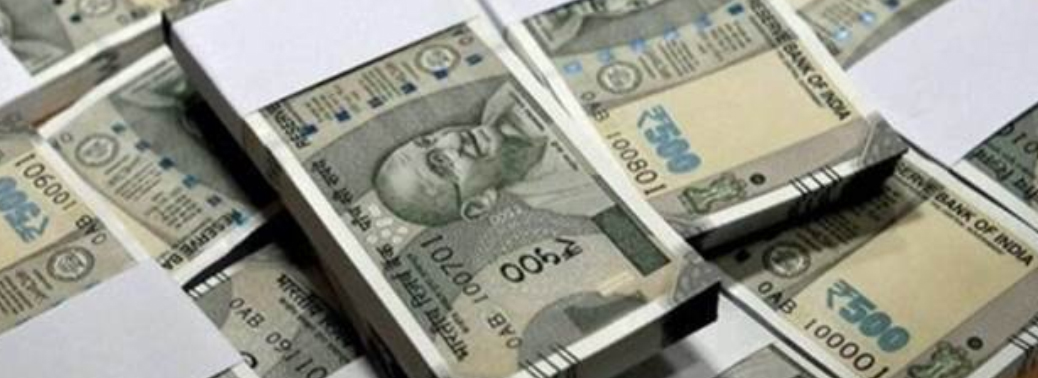
Why in News?
- Banking details of Indians with accounts in Switzerland will be available to tax authorities as the automatic exchange of information regime kicks off between the two countries.
- In 2016, India and Switzerland had signed an information-sharing deal on bank accounts, which was to come in effect from September 2019.
- Both countries intend to start collecting data in accordance with the global AEOI standard in 2018 and to exchange it from 2019 onwards.
AEOI:
- This automatic exchange of information (AEOI) is to be carried out under the Common Reporting Standard (CRS), the global reporting standard for such exchange of information.
- It takes care of aspects such as confidentiality rules and data safeguards.
- The CRS has been developed by the Organisation for Economic Cooperation and Development (OECD).
- Under the agreement, India will not receive information on bank accounts prior to 2018.
- Under the agreement both jurisdictions will inform each other of any relevant developments in respect to the implementation of the OECD Common Reporting Standard in their respective domestic laws.
- Each jurisdiction confirms that it has informed the other jurisdiction about the modalities made available to persons making a voluntary disclosure of their Financial Assets.
Benefits of the Regime:
- In 2018, data from Zurich-based Swiss National Bank (SNB) had shown that after declining for three years, money parked by Indians in Swiss Banks rose 50 per cent to CHF (Swiss Franc) 1.02 billion (Rs 7,000 crore) in 2017 over the previous year.
- The step is likely to shed more light on the wealth Indians have stashed away in Swiss bank accounts, for so long governed by strict local rules of secrecy.
- It is a significant step in the government’s fight against black money and the era of “Swiss bank secrecy” will finally be over.
STEERING COMMITTEE ON FINTECH RELATED ISSUES
03, Sep 2019
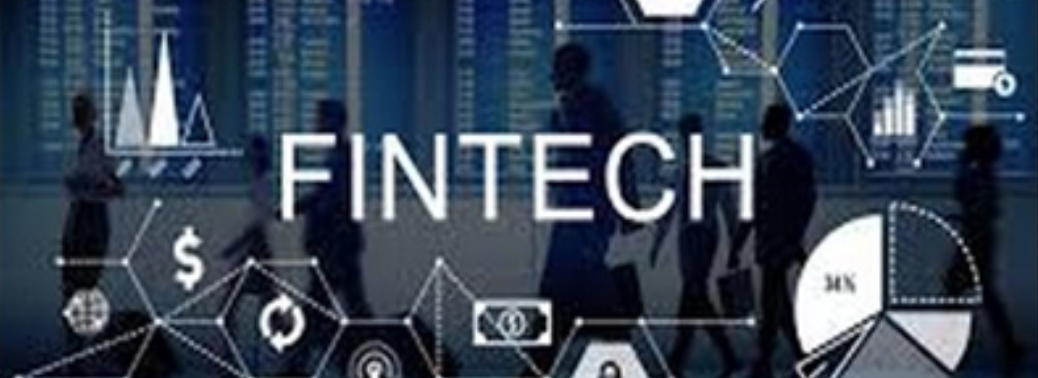
Why in News?
- The Steering Committee on Fintech related issues constituted by the Ministry of Finance, Department of Economic Affairs, submitted its Final Report.
Fintech Companies:
- Financial technology (Fintech) is used to describe new tech that seeks to improve and automate the delivery and use of financial services.
- At its core, fintech is utilized to help companies, business owners and consumers better manage their financial operations, processes, and lives by utilizing specialized software and algorithms that are used on computers and, increasingly, smartphones.
- Fintech, the word, is a combination of “financial technology”.
- When fintech emerged in the 21st Century, the term was initially applied to the technology employed at the back-end systems of established financial institutions.
- Fintech now includes different sectors and industries such as education, retail banking, fundraising and non-profit, and investment management to name a few.
Recommendations:
- The report outlines the current landscape in the Fintech space globally and in India, studies the various issues relating to its development and makes recommendations focusing on how fintech can be leveraged to enhance financial inclusion of MSMEs.
- The Committee report also identifies application areas and use cases in Governance and financial services and suggests regulatory upgrades enabling fintech innovations.
- The Committee has recommended that the RBI may consider development of a cash-flow based financing for MSMEs.
- It has also recommended that Insurance companies and lending agencies to be encouraged to use drone and remote sensing technology for crop area, damage and location assessments to support risk reduction in insurance/lending business.
- The Committee has highlighted the positive impact of Fintech innovations on sectors such as Agriculture and MSMEs.
- And it has recommended NABARD to take immediate steps to create a credit registry for farmers with special thrust for use of fintech along with core banking solutions (CBS) by agri-financial institutions, included Cooperative societies.
- The Committee recommends a special drive for modernisation and standardisation of land records by setting up a dedicated National Digital Land Records Mission based on a common National Land Records Standards with involvement of State Land and Registration departments.
- The Committee also recommends a comprehensive legal framework for consumer protection be put in place early keeping in mind the rise of fintech and digital services.
- It has also recommended adoption of Regulation technology (or RegTech) by all financial sector regulators to develop standards and facilitate adoption by financial sector service providers to adopt use-cases making compliance with regulations easier, quicker and effective.
- Similarly, it has also recommended that financial sector regulators develop an institutional framework for specific use-cases of Supervisory technology (or SupTech), testing, deployment, monitoring and evaluation.
INDIA TO GET SWISS BANK DETAILS OF INDIANS
01, Sep 2019
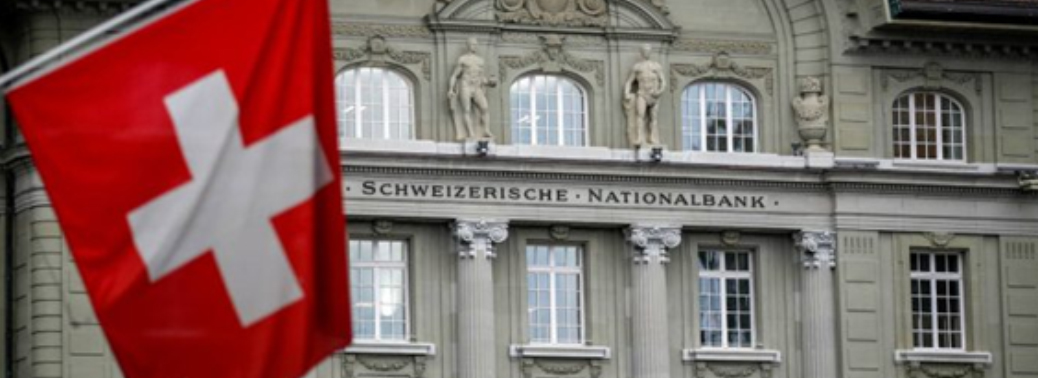
Why in News?
- From September 1, India will start receiving information on all financial accounts held by Indian residents in Switzerland, for the year 2018.
- In a tweet on August 31, the Income Tax Department said: “India will receive information of the calendar year 2018 in respect of all financial accounts held by Indian residents in Switzerland. This will be a significant step in the Government’s fight against black money as the era of Swiss bank secrecy will finally be over.”
Highlights:
- The Income Tax department’s announcement follows a meeting between Switzerland’s Nicolas Mario Luscher, Deputy Head of Tax Division, State Sectt for International Finance, with Revenue Secretary Ajay Bhushan Pandey and senior officials of the Central Board of Direct Taxes (CBDT), on August 29-30.
- However, this is not a new measure. In 2016, India and Switzerland had signed an information-sharing deal on bank accounts, which was to come in effect from September 2019.
- In November 2016, the Embassy of India to Switzerland in a statement had said: “Switzerland and India signed a joint declaration on the introduction of the automatic exchange of information (AEOI) in tax matters on a reciprocal basis. Both countries intend to start collecting data in accordance with the global AEOI standard in 2018 and to exchange it from 2019 onwards.”
- This automatic exchange of information (AEOI) is to be carried out under the Common Reporting Standard (CRS), the global reporting standard for such exchange of information, which takes care of aspects such as confidentiality rules and data safeguards.
- The CRS has been developed by the Organisation for Economic Cooperation and Development (OECD).
- Under the agreement, India will not receive information on bank accounts prior to 2018.
- According to the Indian Embassy statement, under the agreement, “both jurisdictions will inform each other of any relevant developments in respect to the implementation of the OECD Common Reporting Standard in their respective domestic laws.
- Each jurisdiction confirms that it has informed the other jurisdiction about the modalities made available to persons making a voluntary disclosure of their financial assets for a smooth transition to the system of automatic exchange of information.”
- The step is likely to shed more light on the wealth Indians have stashed away in Swiss bank accounts, for so long governed by strict local rules of secrecy. In 2018, data from Zurich-based Swiss National Bank (SNB) had shown that after declining for three years, money parked by Indians in Swiss Banks rose 50 per cent to CHF (Swiss Franc) 1.02 billion (Rs 7,000 crore) in 2017 over the previous year.
ECONOMICS BEHIND E-VEHICLE BATTERIES
01, Sep 2019
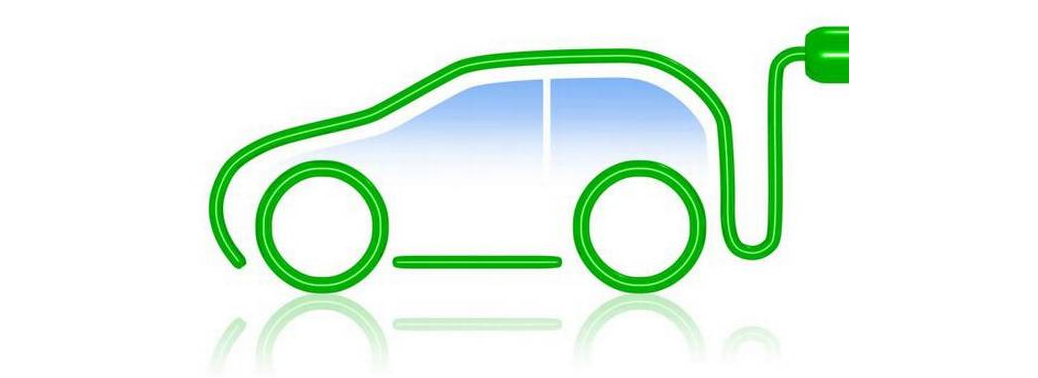
Background:
- Shifting gears in the transition to electric vehicles (EVs), the NITI Aayog, in May this year, proposed to ban the sale of all internal combustion engine (ICE) powered three-wheelers post March 2023.It also suggested that all new two-wheelers below 150cc sold after March 2025 should be electric.
- In consonance with these proposals, the Union Budget 2019-2020 announced tax incentives for early adopters. Even as the automobile industry had objected to the think-tank’s proposal and called for a practical approach in framing electric vehicle-related policies, there has been the worry that EVs are still not financially viable because of various costs associated with their manufacture and use.
Cost Structures of Conventional Vehicles and Electric Vehicles:
- The portion of the costs of the drivetrain of EVs — the system in a motor vehicle which connects the transmission to the drive axles — in comparison to the cost of the entire vehicle is four percentage points lower when compared to ICE vehicles.
- This is primarily due to less parts in the electric drivetrain. However, the battery pack takes up nearly half the cost of an electric vehicle. For any meaningful reduction in the physical value of EVs, the cost of battery packs needs to reduce significantly.
Components of A Battery Pack and How Much Do They Cost?
- The predominant battery chemistry used in EVs is lithium-ion batteries (Li-ion). No new technologies are on the horizon for immediate commercial usage.
- The cost of the materials or key-components of the battery, namely the cathode, anode, electrolyte, separator, among others, contribute the most (60%) to the total cost. Labour charges, overheads and profit margins account for the rest.
- Labour is a relatively minuscule component of the overall cost. Any reduction in the cost of the battery pack will have to come from a reduction in materials cost or the manufacturing overhead.
- The price of these battery packs has consistently fallen over the past few years. This decrease is in part due to technological improvements, economies of scale and increased demand for lithium-ion batteries. Fierce competition between major manufacturers has also been instrumental in bringing down prices.
- Given that raw materials account for 60% of the cost of the battery pack, the room for further cost reduction is rather limited.
Where Does India Stand on EV Adoption?
- In India, EV adoption will be driven by two-wheelers rather than cars in high numbers on because India’s mobility market is driven more by two wheelers. According to the NITI Aayog, 79% of vehicles on Indian roads are two-wheelers.
- Three-wheelers and cars that cost less than ₹10 lakh account for 4% and 12% of the vehicle population, respectively.
- Two-wheelers will also need smaller batteries when compared to cars and hence the overall affordable cost. India needs to manufacture Li-ion cells in-house. Now, cells are imported and “assembled” into batteries. Setting up a Li-ion manufacturing unit requires high capital expenditure. But battery manufacturing in India is expected to grow as electric vehicles grow.
Are EV Vehicles Completely Environment Friendly?
- In conventional ICEs, petrol or diesel fuels the engine. However, in EVs, batteries are not the fuel; electrons supplied by the battery fuel the vehicle. The battery is a device that stores electrons/energy which is sourced from electricity.
- Presently, most of India’s electricity is generated using conventional sources. In 2018-19, over 90% of India’s electricity was generated from conventional sources, including coal, and around 10% was produced from renewable sources such as solar, wind and biomass. While the rate of electricity generated from renewable sources has increased over the years, more needs to be done for their adoption.
- This is because the EV-charging infrastructure needs to be powered through renewable sources to make it truly sustainable.
100% FDI IN COAL WILL BOOST COMPETITIVENESS
31, Aug 2019
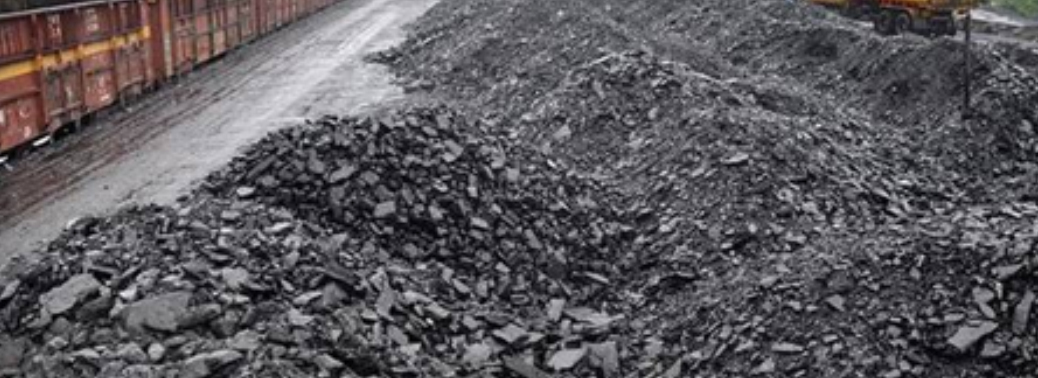
Why in News?
- The Centre’s recently announced 100% foreign direct investment (FDI) in the coal sector.
Highlights:
- India is one of the largest importers of thermal coal. Government allowing 100% FDI in coal mining will attract global miners. This will result in FDI inflow along with updated technology, and increase India’s coal production.
- It is believed that the Centre’s announcement allowing 100% foreign direct investment (FDI) in the coal sector should enhance Coal India Limited’s (CIL) competitiveness and efficiency.
- 100% FDI in mining is believed to send a positive signal to global investors and give a significant push to the economy.
- Increased mining will also lower “avoidable imports of coal that India has to make due to the prevalent demand-supply gap.
Significance:
- It is opined that the government has taken a slew of measures, but more needs to be done.
- The FDIs look for large mines and a simplified single-window for mining leases and environmental and forest clearances.
- While the announcement would kindle the interest of global miners, they would need increased ease-of-doing business and time-bound approvals before they invest here.
- In India, it takes at least six years from getting a mine allocation to actually starting mining operations.This has now been fixed at 66 months. The Coal Ministry is taking steps such as doing away with the need for prior approval before a State government hands over the mining lease, which typically takes 6-12 months.
- Overseas investors usually do not view such long timelines favourably.
MERGER OF PUBLIC SECTOR BANKS
31, Aug 2019
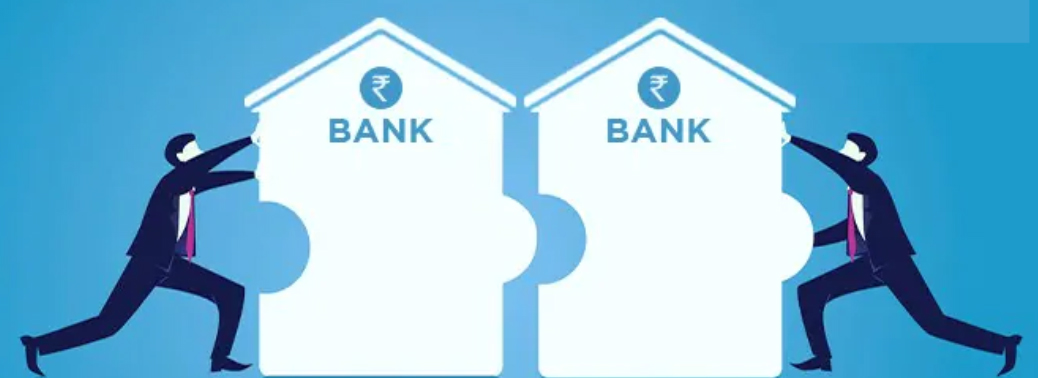
- Context: The Centre has announced a mega amalgamation plan, aimed at improving their financial health and enhancing their lending capacity to support growth.
Highlights:
- The merger announcement was followed by an equity infusion move of Rs 55,250 crore in these banks to enable them to grow their loan book. With these series of mergers, the number of state-owned banks is down to 12 from 27.
- There are four new sets of mergers — Punjab National Bank, Oriental Bank of Commerce and United Bank of India to merge to form the country’s second-largest lender; Canara Bank and Syndicate Bank to amalgamate; Union Bank of India to acquire Andhra Bank and Corporation Bank; and Indian Bank to merge with Allahabad Bank.
The Logic Behind the Mergers:
- According to the government, banks have been merged on the basis of likely operating efficiencies, better usage of equity and their technological platform.
- But the move marks a departure from the plan to privatise some of the banks or bringing in a strategic investor to usher in reform in the sector.
- The government, after consultations, decided that amalgamation is the “best route” to achieve banking sector scale and to support the target of achieving a $5 trillion economic size for India in five years.
- Analysts note that the amalgamations will help banks to meaningfully scale up operations but will not lead to any immediate improvement in their credit metrics.
Previous Experience with the Mergers:
- Last year, the government had merged Dena Bank and Vijaya Bank with Bank of Baroda, creating the third-largest bank by loans in the country.
- The government said this merger has been “a good learning experience” as profitability and business of the merged entity has improved.
- Earlier, the State Bank of India had acquired its associate banks. Indian Overseas Bank, UCO Bank, Bank of Maharashtra and Punjab and Sind Bank, which have strong regional focus, will continue as separate entities.
- In a presentation on the proposals, the government said profitability of public sector banks has improved and total gross non-performing assets have come down.
Will the Merger Help Improving the Performance?
- According to the analysts, while the announced consolidation of PSU banks is credit positive as it enables the consolidated entities to meaningfully improve scale of operations and help their competitive position, at the same time, there will not be any immediate improvement in their credit metrics as all of them have relatively weak solvency profiles.
- In the present case, the mergers are mostly among larger banks, with absorbing bank not necessarily in strong health.
- However, given the merged banks are on similar technology platform, the integration should be smoother.
- Also, it is likely that management attention and bandwidth of the entities being merged could get split impacting the loan growth and reduce focus on strengthening asset quality in the short term.
CABINET APPROVES PROPOSAL FOR REVIEW OF FDI POLICY ON VARIOUS SECTORS
30, Aug 2019

Why in News?
- The Union Cabinet has approved the proposal for Review of Foreign Direct Investment on various sectors.
FDI:
- Foreign direct investment (FDI) is an investment made by a firm or individual in one country into business interests located in another country.
- Generally, FDI takes place when an investor establishes foreign business operations or acquires foreign business assets, including establishing ownership or controlling interest in a foreign company.
- FDI are distinguished from portfolio investments in which an investor merely purchases equities of foreign-based companies.
Major decisions on FDI by the Cabinet:
- 100% FDI under automatic route in coal mining and associated infrastructure
- It will attract international players to create an efficient and competitive coal market.
- 100% FDI in contract manufacturing under automatic route
- Manufacturing through contract contributes equally to the objective of Make in India.
- FDI now being permitted under automatic route in contract manufacturing will be a big boost to Manufacturing sector in India.
- Relaxing FDI rules for single brand retail; expands definition of 30% domestic sourcing
- It will lead to greater flexibility and ease of operations for SBRT entities, besides creating a level playing field for companies with higher exports in a base year.
- Online retailing under single-brand retail; relaxing rule of mandatory brick-and-mortar store
- Permitting online sales prior to opening of brick and mortar stores brings policy in sync with current market practices.
- Online sales will also lead to creation of jobs in logistics, digital payments, customer care, training and product skilling.
Significance of the move:
- The above amendments to the FDI Policy are meant to liberalize and simplify the FDI policy to provide ease of doing business in the country, leading to larger FDI inflows and thereby contributing to growth of investment, income and employment.
- It will result in making India a more attractive FDI destination, leading to benefits of increased investments, employment and growth.
TECH SAKSHAM
29, Aug 2019
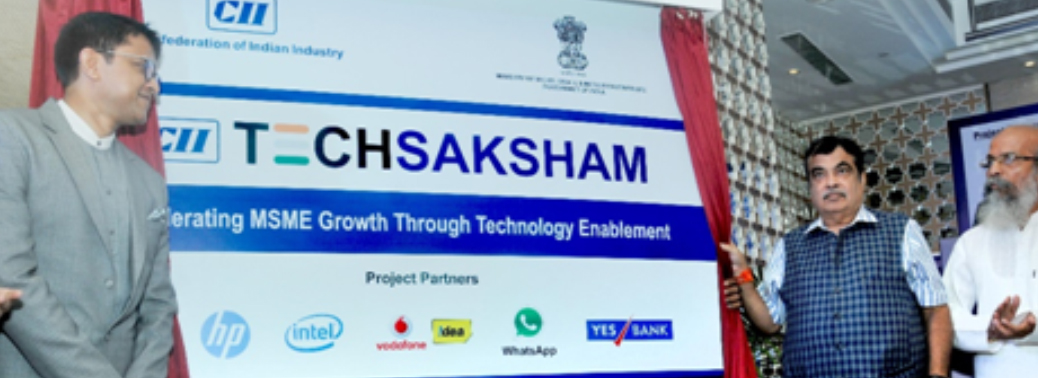
Why in News?
- The Union Ministry for Micro, Small and Medium Enterprises (MSME) has launched a project named ‘Tech Saksham’ to accelerate MSME growth through technology enablement.
Highlights:
- It is a Ministry of MSME and Confederation of Indian Industry (CII) partnered project which brings together technology majors Dell Technologies India, HP India, etc to address technological gaps faced by MSMEs in their growth.
- The Vision is to bridge the gap in technology adoption for MSMEs so as to provide an impetus for them to be competitive on a global scale, increase their contribution to country exports and leverage cost efficiencies.
- It is a three-year-long comprehensive project which, in its first phase, will focus on sectors that are labour-intensive and have the propensity to respond positively to tech-adoption, and will spark a larger discussion in other MSME clusters.
- Through various policy recommendations, knowledge sessions, mentoring initiatives, and useful resource banks for MSMEs, the project will help in addressing critical barriers in the MSME ecosystem such as awareness and cost of technology purchase/maintenance, resources and manpower required to run the technologies, return on investments, etc.
HOW AND WHY RBI TRANSFERS TO GOVERNMENT
28, Aug 2019
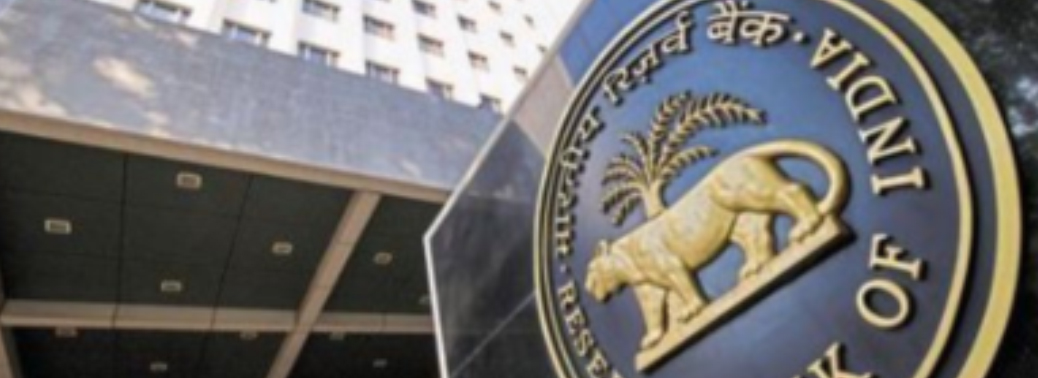
Context:
- The Reserve Bank of India (RBI) will transfer ₹1.76 trillion to the government this fiscal.
Background:
- RBI Board accepted the recommendations of a committee headed by former Governor Bimal Jalan on transfer of excess capital.
- Based on the panel’s report, the Central Board decided to transfer a surplus of Rs 1.23 lakh crore and Rs 52,637 crore of excess provisions made over the years.
- This marks the first time the RBI will be paying out such a huge amount, a one-off transfer.
- Earlier, the government had budgeted for Rs 90,000 crore from the RBI as dividend for this fiscal year.
- This practice was that started in 2016-17, only under exceptional circumstances.
Bimal Jalan Committee:
- The committee recommends that the framework may be periodically reviewed every five years. Nevertheless, if there is a significant change in the RBI’s risks and operating environment, an intermediate review may be considered.
- The Jalan panel recommended a surplus distribution policy, which targets the level of realized equity to be maintained by RBI within the overall level of its economic capital, a statement by RBI said on Monday.
- The committee defines economic capital as a combination of realized equity and revaluation reserves.
On what rationale was such a huge payout approved?
- The level of surplus or profits the RBI pays to the government has been an issue of conflict two for long.
- Over the last decade or more, the government had sought higher payouts saying the RBI was maintaining reserves or capital buffers that were much higher than many other global central banks’ buffers.
- The government has argued that such relatively lower transfers crimped public spending for infrastructure projects and social sector programmes, considering the pressure to meet deficit targets and to provide space for private firms to borrow.
- With the government amplifying its demand for a higher transfer, the Jalan committee reviewed the capital structure, statutory provisions and other issues relating to the RBI balance sheet.
- After making a distinction on the RBI’s capital structure especially on unrealised gains (which are essentially gains not booked) and taking into account the role of the central bank in ensuring financial stability, potential risks and global standards, the committee suggested a total transfer of Rs.1.76 lakh crore.
How does the RBI generate surplus?
- A significant part comes from
-
-
- RBI’s operations in financial markets, when it intervenes for instance to buy or sell foreign exchange;
- Open Market operations, when it attempts to prevent the rupee from appreciating;
- as income from government securities it holds;
- as returns from its foreign currency assets that are investments in the bonds of foreign central banks or top-rated securities;
- from deposits with other central banks or the Bank for International Settlement or BIS;
- besides lending to banks for very short tenures and management commission on handling the borrowings of state governments and the central government.
-
-
- RBI buys these financial assets against its fixed liabilities such as currency held by the public and deposits issued to commercial banks on which it does not pay interest.
- The RBI’s expenditure is mainly on printing of currency notes, on staff, besides commission to banks for undertaking transactions on behalf of the government and to primary dealers that include banks for underwriting some of these borrowings.
- The central bank’s total costs, which includes expenditure on printing and commissions forms, is only about 1/7th of its total net interest income.
Why are these called transfers to the Government, rather than dividends?
- That is because the RBI is not a commercial organisation like banks and other companies owned or controlled by the government to pay a dividend to the owner out of the profit generated.
- Though it was promoted as a private shareholders’ bank in 1935 with a paid-up capital of Rs 5 crore, the government nationalised it in January 1949, making the sovereign the “owner”.
- What the RBI does is transfer the surplus — excess of income over expenditure —to the government.
- Under Section 47 of the RBI Act, “after making provision for bad and doubtful debts, depreciation in assets, contributions to staff and superannuation funds and for all other matters for which provision is to be made by or under this Act or which are usually provided for by bankers, the balance of the profits shall be paid to the Central government”.
Globally, what are the rules relating to payment of dividends by central banks?
- In many top central banks — US Federal Reserve, Bank of England, German Bundesbank, Bank of Japan— the laws make it clear that profits have to be transferred to the government or the treasury.
- The quantum of profits or percentage to be distributed is also specified in the laws.
So, what is the difference in India now and compared to the past?
- The quantum is discussed and decided between the government and RBI.
- Periodically, this has been guided by policies set out internally, as last time when a committee headed by Y H Malegam recommended distributing 100% of the profits made during Raghuram Rajan’s time.
- The difference now is that the Jalan committee’s recommendation on a profit distribution policy has been endorsed by the Central Board.
- That will mean a more transparent and rule-based payout from next year, as in many other central banks, which could help narrow differences between the government and RBI.
What can the government do with this huge surplus?
- Normally, the money is transferred to the Consolidated Fund of India from which salaries and pensions to government employees are paid and interest payments done, besides spending on government programmes.
- The large payout can help the government cut back on planned borrowings and keep interest rates relatively low.
- Besides, it will provide space for private companies to raise money from markets.
- And if it manages to meet its revenue targets, the windfall gain can lead to a lower fiscal deficit.
- The other option is to earmark these funds for public spending or specific projects, which could lead to a revival in demand in certain sectors and boost economic activity.
What are the Potential Issues relating to a Higher Payout?
- That has been articulated by former Governor Rajan.
- According to him, much of the surplus the RBI generates comes from the interest on government assets (securities or bonds) or from capital gains made off other market participants.
- When this is paid to the government, the RBI is putting back into the system the money it made from it; there is no additional money-printing or reserve creation involved, he says.
- But when the RBI pays additional dividend, it has to create additional permanent reserves or, more colloquially, print money.
- So, to accommodate the special dividend, the RBI will have to withdraw an equivalent amount of money from the public by selling government bonds in its portfolio, he says.
Why do central banks hold back on Transferring Large Amounts?
- Especially after the global financial crisis when central banks had to resort to unconventional means to revive their economies, the approach has been to build adequate buffers in the form of higher capital, reserves and other funds as a potential insurance against future risks or losses.
- A higher buffer enhances the credibility of a central bank during a crisis and helps avoid approaching the government for fresh capital and thus maintain financial autonomy.
Given conflict in the past, how was the distribution of profits settled this time?
- In his memoir, former RBI Governor D Subbarao had written how arguments on this would go on year after year but a settlement would be reached with some flexibility shown by both sides.
- “Even though contentious, (it) has never turned acrimonious,” he wrote a couple of years ago.
- That wasn’t the case last year and in the first half of this year.
- As the government’s nominee on the Jalan committee, Garg had submitted a dissent note.
- His exit from the Finance Ministry and the entry of the new Governor, Shaktikanta Das, and Garg’s successor Atanu Chakraborty and backroom talks, may have led to the flexibility of approach that Subbarao indicated in his book, and the resultant decision on a record payout.
ECONOMIC CAPITAL FRAMEWORK
28, Aug 2019
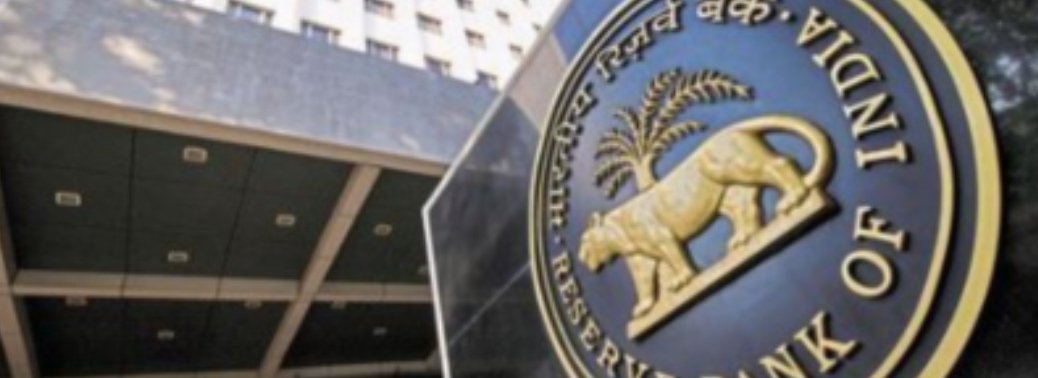
Why in News?
- The Reserve Bank of India (RBI) has decided to transfer Rs 1.76 lakh crore to the Central government, which may help the government in dealing with the economic slowdown.
Highlights:
- The Rs 1.76 lakh crore includes the central bank’s 2018-19 surplus of ₹1.23 lakh crore and Rs 52,637 crore of excess provisions identified as per the revised Economic Capital Framework (recommended by Bimal Jalan Committee).
- The government already had revised downward the fiscal deficit target to 3.4% from 3.3% and initiated a slew of measures that are being dubbed as mini-budget.
Economic Capital Framework:
- The RBI had formed a committee chaired by former Governor Bimal Jalan to review its economic capital framework and suggest the quantum of excess provision to be transferred to the government.
- The panel recommended a clear distinction between the two components of the economic capital of RBI i.e. Realized equity and Revaluation balances.
- Revaluation reserves comprise of periodic marked-to-market unrealized/notional gains/losses in values of foreign currencies and gold, foreign securities and rupee securities, and a contingency fund.
- Realized equity, which is a form of a contingency fund for meeting all risks/losses primarily built up from retained earnings. It is also called the Contingent Risk Buffer (CBR).
- The Surplus Distribution Policy of RBI that was finalized is in line with the recommendations of the Bimal Jalan committee.
- The Jalan committee has given a range of 5.5-6.5% of RBI’s balance sheet for Contingent Risk Buffer.
- Adhering to the recommendations, the RBI has decided to set the CBR level at 5.5% of the balance sheet, while transferring the remaining excess reserves worth ₹52,637 crore to the government.
- If CBR is below the lower bound of requirement, risk provisioning will be made to the extent necessary and only the residual net income (if any) transferred to the Government.
DEVELOPMENT FINANCIAL INSTITUTION (DFI)
27, Aug 2019
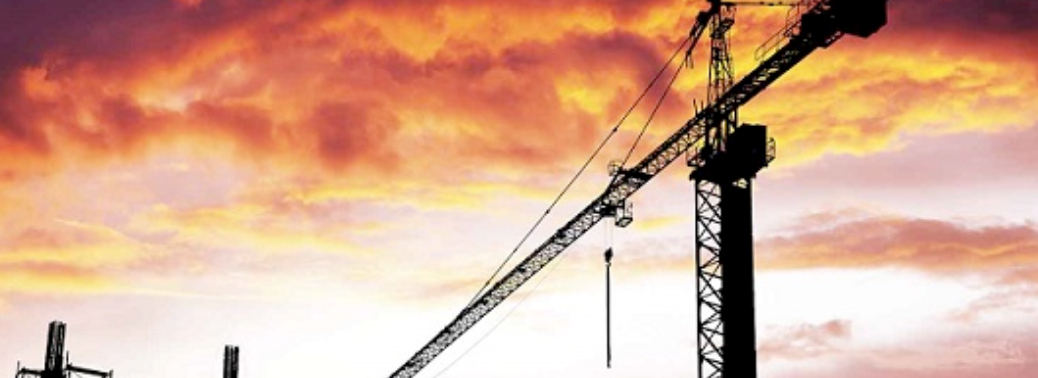
Why in News?
- The government has proposed to set up a Development Financial Institution (DFI) to solve the infrastructure financing needs of the country.
Highlights:
- The establishment of such an institution is considered as a positive step as banks do not have the long-term funds to finance such projects.
- Banks cannot afford to lend for such projects because that would shrink their lending capacity as the funds get locked up in such projects for that time period.
- Reasons for DFIs to Fund Infrastructure:
- To boost economic growth which would increase capital flows and energise capital markets.
- To improve long term finances.
- To provide credit enhancement for infrastructure and housing projects
- As India does not have a development bank, DFI would fulfil the need for us to have an institutional mechanism.
- Debt flow towards infrastructure projects would be improved.
- The RBI had specified in 2017 that specialised banks could cater to the wholesale and long-term financing needs of the growing economy and possibly fill the gap in long-term financing.
Development Finance Institution:
- These are specialized institutions set up primarily to provide development/ Project finance especially in developing countries.
- These DFIs are usually majority-owned by national governments.
- The source of capital of these banks is national or international development funds.
- It ensures their creditworthiness and their ability to provide project finance in a very competitive rate.
- It strikes a balance between commercial operational norms as followed by commercial banks on the one hand, and developmental responsibilities on the other.
- DFIs are not just plain lenders like commercial banks but they act as companions in the development of significant sectors of the economy.
Classification of development Financial Institutions:
- Sector specific financial institutions: These financial Institutions focusses on a particular sector to provide project finance. Ex: NHB is solely related to Housing projects, EXIM bank is oriented towards import export operations.
- Investment Institutions: These are specialized in providing services designed to facilitate business operations, such as capital expenditure financing and equity offerings, including initial public offerings (IPOs). Ex: LIC, GIC and UTI.
SPECIAL DATA DISSEMINATION STANDARDS (SDDS) OF IMF
27, Aug 2019
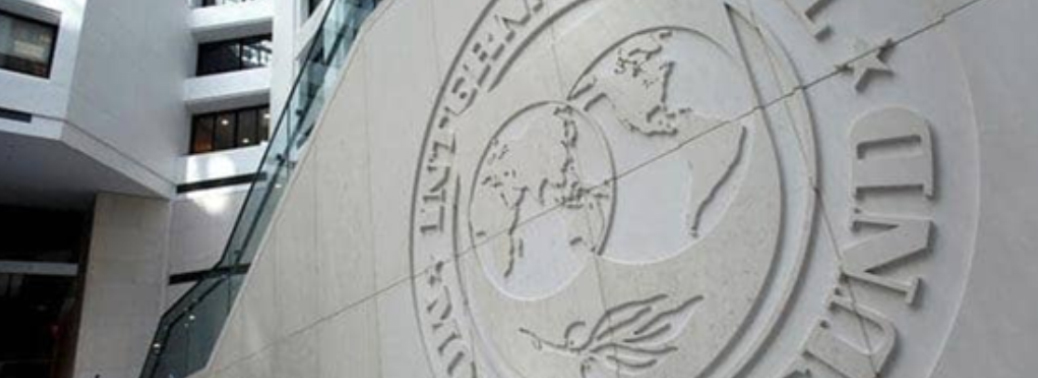
Why in News?
- In 2018, India failed to comply with multiple requirements prescribed in the Special Data Dissemination Standard (SDDS) mandatory for all IMF members.
Special Data Dissemination Standard (SDDS):
- The SDDS is an IMF standard to guide member countries in the dissemination of national statistics to the public.
- It was established in 1996 to guide members that have, or might seek, access to international capital markets in providing their economic and financial data to the public.
- It is a global benchmark for disseminating macroeconomic statistics to the public. Its subscription indicates that a country meets the test of “good statistical citizenship.
- Countries that subscribe to the SDDS agree to follow good practices in four areas: the coverage, periodicity, and timeliness of data; public access to those data; data integrity; and data quality.
- India subscribed to the SDDS on December 27, 1996.
Indian datasets not Updated:
- India failed to comply with multiple requirements prescribed in the SDDS — a practice mandatory for all IMF members.
- Whereas comparable economies comprising the BRICS grouping of Brazil, China, South Africa and Russia, have maintained a near impeccable record in the same period.
- Also, India’s non-compliance in multiple categories in 2018 and to an extent in 2017 breaks with an otherwise near perfect dissemination record.
- When contacted, the IMF acknowledged India’s deviations but termed them “non-serious”.
- However, independent observers see these deficiencies as a result of indifference to data dissemination procedures.
Importance of SDDS:
- The IMF launched the SDDS initiative in 1996 to guide members to enhance data transparency and help financial market participants with adequate information to assess the economic situations of individual countries.
- The yearly observance report for each member country lists the compliances and deviations from the SDDS under each data category for that year.
- There are over 20 data categories which IMF considers for this report to capture a nation’s economic health including national accounts (GDP, GNI), production indices, employment, and central government operations.
A Recent phenomenon:
- India’s non-compliance with IMF standards is a recent phenomenon.
- When asked for the reason for the delays in 2018, Deputy Director in the Department of Economic Affairs termed it as a “one off event due to technical glitches”.
- They were made available on other (Indian) government websites on a timely basis through links on the NSDP to these websites”.
Implications of Non-Compliance:
- The IMF document states that monitoring observance of the SDDS is central to maintaining the credibility of the IMF’s data standards initiatives and its usefulness to policymakers.
- It further states that if the IMF staff considers a non-observance as a “serious deviation” then procedures would be initiated against the member country.
- When the IMF was asked to explain why India’s non-observance was deemed as non-serious, their statistical department persisted that this was due to “information availability in other government websites”.
- It added that “the forthcoming harmonisation of the NSDPs for all SDDS countries with those for SDDS Plus and e-GDDS countries (other similar standards)” will solve this issue.
NATIONAL PRODUCTIVITY COUNCIL
26, Aug 2019

Why in News?
- A two-day National Conference on Capacity Building of Sustainable Food Value Chains for Enhanced Food Safety and Quality organized by National Productivity Council (NPC) in collaboration with Asian Productivity Organization, Tokyo, Japan began in New Delhi
National Productivity Council:
- NPC is a national level organization to promote productivity culture in India.
- Established by the Ministry of Industry, Government of India in 1958, it is an autonomous, multipartite, non-profit organization with equal representation from employers’ & workers’ organizations and Government, apart from technical & professional institutions and other interests.
- Currently National Productivity Council (NPC) is an autonomous registered society under Department for Promotion of Industry and Internal Trade, Ministry of Commerce & Industry.
- NPC is a constituent of the Tokyo-based Asian Productivity Organisation (APO), an Inter-Governmental Body, of which the Government of India is a founder member.
Functions:
- NPC teams up with its clients to work out solutions towards accelerating productivity, enhancing competitiveness, increasing profits, augmenting safety and reliability and ensuring better quality.
- It provides reliable database for decision-making, improved systems and procedures, work culture as well as customer satisfaction both internal & external. The solutions can be all-encompassing or specific depending on the nature of the problem.
- The council also helps monitor, review and implement the identified strategies. Promotional and catalytic in nature, NPC’s services have bearings on economic growth and quality of life.
- The Council promotes a comprehensive view of productivity focused on improving triple bottom line – economic, environmental and social and adds value for all the stakeholders through generation & application of advanced knowledge for inclusive Growth.
PRICE STABILISATION FUND (PSF)
26, Aug 2019

Why in News?
- Onions for retailing by Safal is being made available at present from the government stock built under Price Stabilisation Fund (PSF). It was decided that retail price of onion at Safal would not be allowed to exceed Rs 23.90/- per kg
Price Stabilisation Fund:
- Price Stabilisation Fund (PSF) refers to any fund constituted for the purpose of containing extreme volatility in prices of selected commodities.
- The amount in the fund is generally utilised for activities aimed at bringing down/up the high/low prices say for instance, procurement of such products and distribution of the same as and when required, so that prices remain in a range.
- Accordingly, the Government of India in 2015, approved the creation of a Price Stabilization Fund (PSF) with a corpus of Rs.500 crores as a Central Sector Scheme, to support market interventions for price control of perishable Agri-horticultural commodities during 2014-15 to 2016-17.
- Initially the fund was proposed to be used for market interventions for onion and potato only and pulses were added subsequently.
Procurement of Commodities:
- Procurement of these commodities will be undertaken directly from farmers or farmers’ organizations at farm gate/mandi and made available at a more reasonable price to the consumers. Losses incurred, if any, in the operations will be shared between the Centre and the States.
- PSF Scheme provides for advancing interest free loan to State Governments/Union Territories (UTs) and Central agencies to support their working capital and other expenses they might incur on procurement and distribution interventions for such commodities.
- Hence, the actual utilisation of the fund depends on the willingness of the state governments / union territories to avail of such loans for these purposes. Further, the actual detection of the period when support is required and the deployment of price support measures are left to the states.
- For this purpose, the States will have to set up a ‘revolving fund’ (a fund which is constantly replenished and not limited by the fiscal year considerations) to which Centre and State will contribute equally (50:50).
- The ratio of Centre-State contribution to the State level corpus in respect of North-East States will, however, be 75:25. Central Agencies will set up their revolving fund entirely with the advance from the Centre.
Management of Price Stabilization Fund:
- The Price Stabilization Fund will be managed centrally by a Price Stabilization Fund Management Committee (PSFMC) which will approve all proposals from State Governments and Central Agencies.
- The PSF will be maintained as a Central Corpus Fund by Small Farmers Agribusiness Consortium (SFAC), a society promoted by Ministry of Agriculture for linking agriculture to private businesses and investments and technology. SFAC will act as Fund Manager.
- Funds from this Central Corpus will be released in two streams, one to the State Governments/UTs as a onetime advance to each State/UT based on its first proposal and the other to the Central Agencies.
- The one time advance to the States/UTs based on their first proposal along with matching funds from the State/UT will form a State/UT level revolving fund, which can then be used by them for all future market interventions to control prices of onions and potatoes based on approvals by State Level Committee set up explicitly for this purpose.
- The Price Stabilization Fund (PSF) was set up under the Department of Agriculture, Cooperation & Famers Welfare (DAC&FW), Ministry of Agriculture. The PSF scheme was transferred from DAC&FW to the Department of Consumer Affairs (DOCA) w.e.f. 1st April, 2016.
NEW FPI NORMS
24, Aug 2019

Context:
- SEBI has relaxed the FPI norms to check the outflows of FPIs from India.
- SEBI relaxes Foreign Portfolio Investors (FPI) norms by easing the regulatory framework for FPI with simplifies KYC requirements for them and allow FPIs to carry out an off-market transfer of securities.
- Apart from this SEBI classified FPIs into two categories instead of three. SEBI relaxes the norms on the basis of a committee headed by H R Khan (Former RBI Deputy Governor).
What are Foreign Portfolio Investors (FPI)?
- FPI are those investors who hold a short-term view of a company, unlike Foreign Direct Investors who invest with a long-term view. They participate in the stock markets in the economy. FPI doesn’t have direct control over the businesses. FPIs are easier to sell than the FDIs due to high liquidity. Generally, the FPI route is preferred for laundering black money. In India, FPIs are regulated by SEBI.
Need of Committee:
- Both the FPIs and the investors had serious concern over the SEBI norms and want to review the norms by SEBI. FPIs shows concern over that the FPIs norms will result in restrictions on investments however SEBI dismissed any such fears.
- Accordingly, SEBI constitutes H R Khan Committee to review FPI norms and concern raised by the investors.
Recommendation of H R Khan Committee:
- The committee categorized the recommendation into four buckets i.e. FPI Registration process, KYC and documentation, Investment permission and limits and other aspects.
- The committee recommends that OCIs, NRIs, and RIs should be allowed for holding a non-controlling stake in FPIs and no restrictions should be imposed on them for managing non-investing FPIs or SEBI registered offshore funds.
- The committee recommends for easing KYC requirements for beneficial owners in case of government-related FPIs.
- The committee recommended that erstwhile PIOs should not be subjected to any restrictions and clubbing of investment limits should be allowed for well-regulated and publicly held FPIs that have common control.
- The committee also suggests that the time for compliance with the new norms should be extended by six months after the finalization and the non-compliant investors should be given another 180 days to reconcile their existing positions.
- According to the committee, NRI will be allowed to invest as FPIs if the single holding is under 25% and group holding under 50% in a fund.
- The panel also recommends that the new rules should be equally applied to the investors using participatory notes (P-notes).
- The panel also suggested for changes in the norms pertaining to the identification of senior managing officials of FPIs and for beneficial owners of listed entities.
New FPI norms by SEBI:
- SEBI rationalizes the requirements for issuance and subscription of offshore derivative instruments (ODIs).
- SEBI said that the offshore funds floated by the mutual funds would be allowed to invest in the country after the registration.
- Those entities which are established under the International Financial Services Centre must meet the criteria for FPIs.
- SEBI permits FPIs for off-market transfer of securities which are unlisted, suspended or illiquid to a domestic or foreign investor.
- Structure for Multiple Investment Manager also has been simplified.
- Those central banks who are not the members of Bank for International Settlements would be eligible for registration as FPIs to attract more overseas funds to the market.
- The FPIs are classified into two categories earlier it was two.
- SEBI said it would rationalize the framework for issuance of participatory notes (P-notes)
- The board also clarified on the debt to equity ratio, companies need to maintain it as 2:1 to be eligible for buybacks however the Non-banking financial companies (NBFC) arms would be exempt from the rule.
- To crack down insider trading a new whistleblower mechanism will be implemented.
- Rewarding informants up to Rs. 1 crore for providing “credible and original information” on insider trading.
- Mutual funds are now allowed to invest in unlisted non-convertible debentures.
Reasons for Outflow of FPIs from India:
- India is the fastest-growing country in the world and there are certain issues which stress the overall economic performance of the country. One of the main challenges recently is the outflow of FPIs from India. Reasons for the outflow of FPIs are:
- Introducing Higher tax surcharge in the Budget 2019 by the government.
- Continue Depreciation of Indian Rupee
- The trade war between the U.S and China
- Reduced rating and default of NBFCs
- Rising of crude oil prices
Conclusion:
- Easing of FPI norms could give a boost to the overseas investment in the country which is an important source of economic growth and development in India. These changed norms will make the regulatory framework more investor-friendly for FPIs and a multidimensional approach is needed to resolve the concerns of FPIs and reasons of outflows.
CAPACITY BUILDING OF SUSTAINABLE FOOD VALUE CHAINS
23, Aug 2019
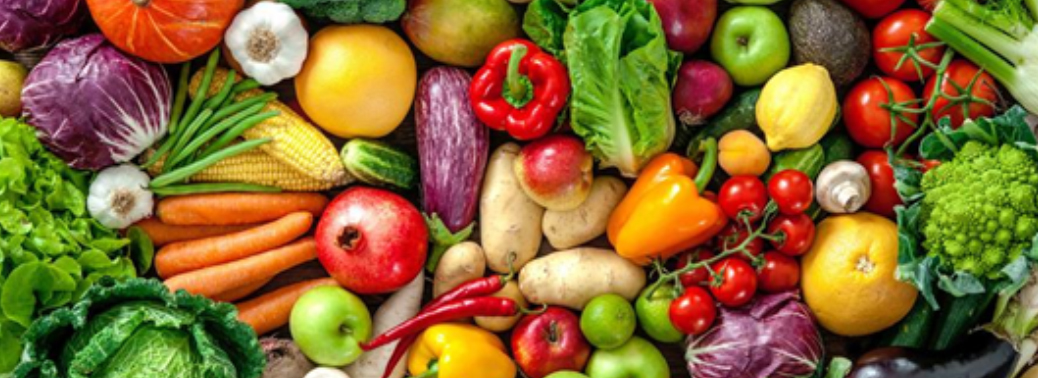
Why in News?
- A National Conference on Capacity Building of Sustainable Food Value Chains for Enhanced Food Safety and Quality was organized by National Productivity Council (NPC) in collaboration with the Asian Productivity Organization, Tokyo, Japan.
National Productivity Council (NPC):
- NPC is a national level organization to promote productivity culture in India.
- Established by the Ministry of Industry, Government of India in 1958, it is an autonomous, multipartite, non-profit organization with equal representation from employers’ & workers’ organizations and Government, apart from technical & professional institutions and other interests.
- NPC is a constituent of the Tokyo-based Asian Productivity Organisation (APO), an Inter-Governmental Body, of which the Government of India is a founder member.
- NPC teams up with its clients to work out solutions towards accelerating productivity, enhancing competitiveness, increasing profits, augmenting safety and reliability and ensuring better quality.
- It provides a reliable database for decision-making, improved systems and procedures, work culture as well as customer satisfaction both internal & external.
- The solutions can be all-encompassing or specific depending on the nature of the problem. The council also helps monitor, review and implement the identified strategies. Promotional and catalytic in nature, NPC’s services have bearings on economic growth and quality of life.
- The Council promotes a comprehensive view of productivity-focused on improving the triple bottom line – economic, environmental and social and adds value for all the stakeholders through generation & application of advanced knowledge for inclusive Growth.
DEBENTURE REDEMPTION RESERVE
23, Aug 2019

Why in News?
- The Centre has removed Debenture Redemption Reserve (DRR) requirement for listed companies, NBFCs and housing finance companies (HFCs).
Debenture redemption reserve (DRR):
- A debenture redemption reserve (DRR) is a provision stating that any Indian corporation that issues debentures must create a debenture redemption service in an effort to protect investors from the possibility of a company defaulting.
- In 2002, the then government said that for NBFCs registered with the Reserve Bank of India, the reserve had to be at least 50 percent of the value of debentures issued via public issuance.
- A 2013 revision brought this down to 25% of the value of publicly issued debentures
- A debenture redemption reserve is meant to protect the interests of retail bond holders in the event of a company going through financial stress. It was introduced in company law for the first time in 2000.
Highlights:
- The Corporate Affairs Ministry (MCA) has now amended its share capital and debenture rules to remove the requirement for creation of a DRR of 25 per cent of the value of outstanding debentures in respect of listed companies, NBFCs registered with the RBI and for HFCs registered with National Housing Bank (NHB) both for public issue as well as private placements
- For unlisted companies, the DRR has been reduced from the present level of 25 per cent to 10 per cent of the outstanding debentures. Hitherto, listed companies had to create a DRR for both public issue as well as private placement of debentures, while NBFCs and HFCs had to create DRR only when they opted for public issue of debentures.
ONE NATION, ONE RATION CARD SCHEME: A BOON FOR POOR MIGRANTS
22, Aug 2019
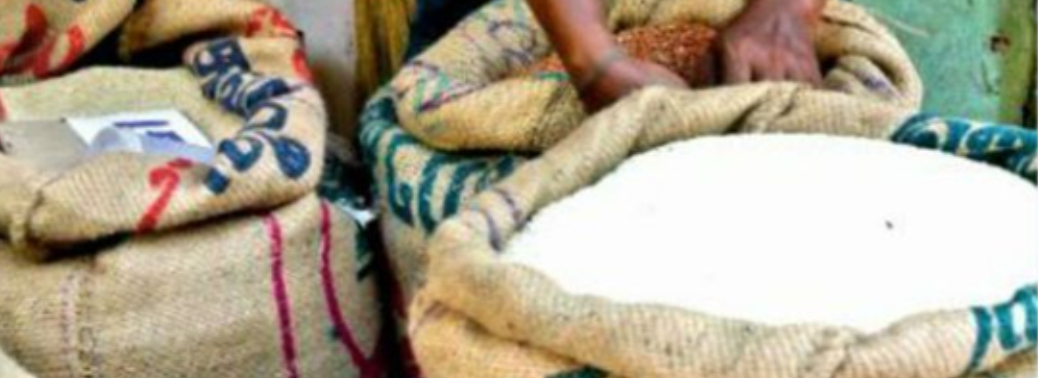
- Context: Government has launched the pilot project for the inter-state portability of ration cards between Telangana and Andhra Pradesh, and between Maharashtra and Gujarat, as part of its ‘One Nation, One Ration Card’ scheme.
What is A Ration Card?
- A ration card is issued to the head of the family, depending on the number of members in a family and the financial status of the applicant.
- It is used by households to get essential food grains at subsidised prices from designated ration shops (also called fair price shops) under the Targeted Public Distribution System (TPDS).
- Over the years, different types of ration cards were issued depending on the level of deprivation. Later, in 2013, when the National Food Security Bill was passed, different ration cards were compressed to just two — priority and Antyodaya (for the poorest).
- The responsibility of identifying eligible families and issuing ration cards to them rests with the state/UT government.
What is a Ration Shop?
- Ration shops can be privately owned or owned by cooperative societies or by the government. Ownership licenses are issued by the concerned state government.
- Presently, commodities including wheat, sugar, rice and kerosene are being allocated as part of the TPDS. State governments have the discretion to provide additional commodities.
What is the ‘One Nation, One Ration Card’ Scheme?
- Since Ration Cards are issued by State Governments, this implied that beneficiaries could procure food grains only from the designated ration shops within the concerned state.
- If a beneficiary were to shift to another state, he/she would need to apply for a new ration card in the second state. There were other complications.
- For instance, after marriage, a woman needed to get her name removed from the ration card issued to her parents, and get it added to the ration card issued to her husband’s family.
- The ONORC scheme attempts to address this gap in TPDS delivery. Essentially, the scheme has been launched keeping in mind the internal migration of our country, since people keep moving to different states in search of better job opportunities and higher standards of living.
- As per Census 2011, 4.1 crore people were inter-state migrants and 1.4 crore people migrated (inter and intra-state) for employment.
- With the ONORC scheme being implemented in Telangana and Andhra Pradesh, the beneficiary can buy food grains from ration shops located in either of the states.
- The same is the case with Maharashtra and Gujarat. The government hopes to implement the scheme across India by June 1, 2020.
ULTRA-MEGA SOLAR PARK
21, Aug 2019

- Context:National energy major NTPCis planning to set up an ultra-mega solar park in the Kutch region of Gujarat that will produce up to 5,000 megawatts and involve an investment of Rs20,000 crore or more.
- Objective: This move is aimed at scaling up the renewable portfolio of India’s largest power producer with 55,786 MW of installed capacity.
Background:
- The National Solar Mission (NSM) was launched in 2010 as a major initiative of the Government of India with active participation from states to promote ecologically sustainable growth while addressing India’s energy security challenges.
- It will also constitute a major contribution by India to the global effort to meet the challenges of climate change
Aim:
- The mission targets include deployment of 20,000 MW of grid-connected solar power by 2022 to be achieved in three phases which include 2,000 MW of off-grid solar applications including 20 million solar lights by 2022 and 20 million sq. m. solar thermal collector area.
Major Schemes of The Central Government:
- The government of India has launched several schemes to achieve the target of 100 GW
- Grid Connected:
- Scheme for setting up of over 300 MW of Grid connected solar PV projects by Defence establishments and para military forces
- Scheme for development of Solar parks and Ultra Mega Solar power projects of 40,000 MW
- 750 MW VGF scheme under JNNSMM Phase II Batch I
- 2,000 MW VGF scheme of NSM Phase II Batch III
- 5,000 MW VGF Scheme Batch IV Phase II
- Setting up of 1000 MW of Grid connected solar PV Power project by CPSUs, Government organizations
- 15,000 MW grid connected solar PV power plants through NTPC
- Grid connected rooftop and small solar plants of 4,200 MW
- Development of 100 MW Grid connected solar PV power plants on canal banks and tops
- Off Grid
- Capital subsidy scheme for providing basic lighting needs through solar charging stations (with lanterns) to be implemented in 100 villages in each of 60 LWE affected districts
- Off grid & Decentralized solar application scheme in 2nd phase of JNNSM-Solar cooker programme
- Capital subsidy scheme for installation of solar thermal systems
- Solar water heating Solar air heating
- Solar steam generation/ pressurized hot water/air systems
- Solar thermal refrigeration/cooling
- Solar Thermal Power Park (including hybrid with Solar PV)
- Installation of 10,000 nos. of solar photovoltaic water pumping systems for irrigation purpose implemented through NABARD
The Current Status of Solar Park Development in India:
- The Ministry of New and Renewable Energy (MNRE), Government of India, is already implementing a scheme for development of solar parks which was launched in December 2014.
- The capacity of the solar park scheme has been stages of development. Solar projects of aggregate capacity 2,151 MW have already been commissioned in 5 Solar Parks up to August 31, 2017
- The total capacity when operational will generate 64 billion units of electricity per year which will lead to abatement of around 55 million tonnes of CO2 per year over its life cycle.
- It would also contribute to the long-term energy security of the country and promote ecologically sustainable growth by a reduction in carbon emissions and carbon footprint, as well as generate large direct and indirect employment opportunities in solar and allied industries, such as glass, metals, heavy industrial equipment, etc.
Challenges & Way Forward:
- Solar irradiance in the State, availability of conducive State policy for solar, and business environment, such as the willingness of DISCOMs to purchase the solar power, payment security, power evacuation infrastructure, etc., are the challenges envisaged.
- In India, one of the biggest challenges faced is land allotment.
- Then, there is the revenue department, the issue of private land conversion, all these are time-consuming and challenges.
- The other challenges are matching the timelines between the development of solar parks including power evacuation arrangements of central transmission utility (CTU) or state transmission utilities (STU) and setting up of solar projects.
- However, with active involvement and making concerted efforts in consultation with State Governments and different stakeholders these challenges are getting easier to deal with. Overall, the solar parks project has been very positive and the response from developers has been encouraging.
- As a result, energy storage, hybrid project, and large grid connected wind–solar PV system in India for optimal and efficient utilization of transmission infrastructure and land; there has been reduction of the variability in renewable power generation and thus achieving better grid stability and improved power quality projects initiated
HOW FORESTS CAN HELP IN DOUBLING FARMERS’ INCOME
21, Aug 2019

Background
- The Government of India is working out a plan to double farmers’ income by 2022.
- The government plans to take up a number of measures and expand into allied sectors, promote zero-budget farming, organic farming, etc to double the income of the exiting farmers.
What Prime Minister’s Economic Advisory Council, said:
- “One of the best ways to double farmers’ income is to halve the number of farmers.”
Importance of Agriculture in Indian economy
- Agriculture is the mainstay of the Indian economy even though it contributes less than 15 per cent of the Gross Domestic Product.
Almost 50 per cent of Indian families are dependent on farms for their livelihood and they have made India a food-surplus country.
Surplus food production issue
- surplus production in some of the irrigated pockets — by canals, lift irrigation from rivers and groundwater — has not only made farming unsustainable for the small segment of farmers who have attained some sort of a success and achieved a good amount of income, but has also destroyed ecology and local food diversity.
Issue with cost of production
- At this point of time, while the so-called ‘successful’ farmers are struggling to maintain their income, which essentially means putting in more and more investment, the other farmers are busy struggling for subsistence.
Shift to other sectors:
-
- The small and marginal land-holders should shift to other sectors as wage labourers as their farms are fit only for subsistence and their land holding is so small and fragmented that it is difficult to go for intensive agriculture.
- That is the reason the youth in the villages are no more interested in farming. According to the 2011 Census figures, 2,000 farmers are giving up farming each day. In 2016, the average age of an Indian farmerwas 50.1 years and that’s worrying.
Issue of Food Security
- If the trend of farmers moving out of their original occupation continues like this, it will be a great challenge to meet our food requirements by the year 2050 when the food demand is expected to double than what it is now as because our population is expected to touch 1.9 billion, more than two thirds of which will be in the middle-income group.
- Food imports will be too costly and if farm distress continues the way it is, we can’t anyway keep all farmers in villages and in their farms anyway.
- Whether they will be gainfully employed in other sectors is another big question and we are not dealing with that at this moment.
Farming class
- While average statistical figures don’t actually tell us as to which category of farmers — the intensive agriculture segment or the subsistence segment — is gradually vanishing from the farms, experience tells us that the small farmers are more vulnerable to migration. And that’s exactly where we have a big problem.
- Stats
- We have about 83 per cent rural people who are either entirely landless or own less than one hectare (ha) of land.
- Another 14 per cent own less than three ha, and that is as good as a small and non-profitable farm holding depending on the irrigation status and other factors.
- Only about 0.25 per cent of rural households own more than 10 ha of land and a minuscule 0.01 per cent own over 20 ha.
- In terms of national per capita income parameters, the majority of small farmers — let’s say more than 80 per cent — cannot stick to agriculture if they are not provided with other supports and social security measures.
- Their younger generations would have no motivation to stay with farming anyway and will gradually move out.
Farmers are also forest protectors
- There is a specific segment of farmers who live in and with forests. Most of these small and marginal farmers, including the indigenous communities, who live in and around our forests, do another big job for all of us.
- They protect our natural forests, besides adding to the country’s food security.
- There are thousands of villages in India that are protecting local natural forests for various reasons.
- Many of these indigenous communities consider the forests as their ancestors, part of their family; and protect them for fuelwood, household timber, food, nutrition, medicinal plants and various other profits which they derive.
- Stats
- In fact, globally, such communities are said to own or manage at least a quarter of the world’s land surface.
- While a recent global study says that as much as 22 per cent of income for the rural people living in and around forests comes from timber and non-timber forest resources, my own assessment from several villages spread across India’s central highlands finds out this to be up to 50 per cent or even more.
Benefits of people staying in forest
- They help absorb a huge amount of our carbon emission.
- New analysisreveals that indigenous peoples and local communities manage 300,000 million metric tons of carbon in their trees and soil — 33 times the energy emissions from 2017.
Doubling of income for this section of farmer
- For this segment of farmers, therefore, the doubling of income would need different strategies.
- Rights to the forests, better systems to support them for the ecosystem services — including water conservation through forestry — they are providing, improved market and augmented price for the various forest produce they market as a major livelihood support system, and provide them with better amenities.
Way forward
- In her budget speech, India’s Finance Minister said the government is considering zero budget farming as a key tool in their strategy to double farmers’ income.
- These communities can take a lead in organic farming and even zero budget farming as most of them are still practicing low external input farming in their rain-fed farms.
INDIAN LIVESTOCK
19, Aug 2019
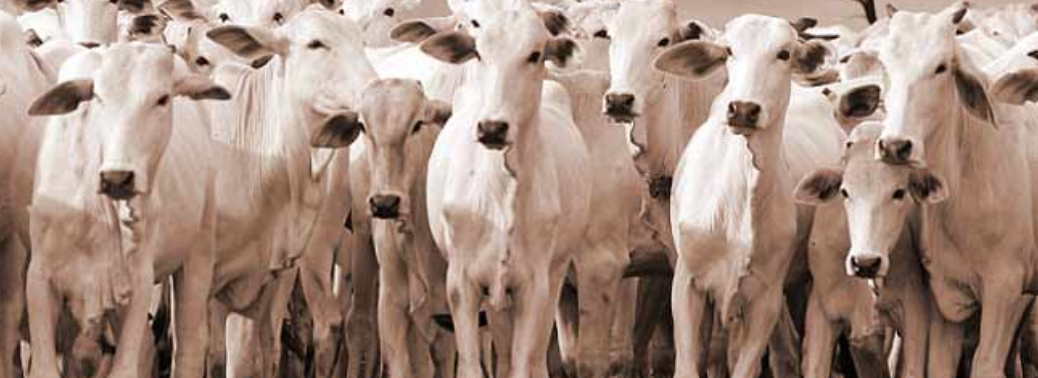
Context: India’s Livestock Export Potential Can’t Be Realised Till We Eradicate Foot-and-Mouth Disease
Stats-
- In India, livestock contributes over 4% to the country’s total GDP. As per estimates of the Central Statistics Office (CSO), the value of output from livestock and fisheries is estimated to be close to Rs 5 lakh crore.
Livestock in India
- India has the privilege of having the largest population of livestock in the world.
- India’s milk production is highest in the world.
- And yet, the sector has been neglected for years.
Issue with foot-and-mouth disease (FMD) and brucellosis.
- It is actually the presence of FMD in India that has stopped us from realising the true potential of this sector.
- Trade barriers are put using this as an excuse, while totally putting aside the fact the OIE (The World Organisation for Animal Health) has endorsed our FMD vaccination programme.
- While Andhra Pradesh and Telangana have reported no outbreak of FMD in the last few years, states like UP, Maharashtra and Punjab need extra focus as major trade emanates from there.
What is Foot and mouth disease (FMD)
- Foot and mouth disease (FMD) is a severe, highly contagious viral disease of livestock that has a significant economic impact. The disease affects cattle, swine, sheep, goats and other cloven-hoofed ruminants.
- Intensively reared animals are more susceptible to the disease than traditional breeds. The disease is rarely fatal in adult animals, but there is often high mortality in young animals due to myocarditis or, when the dam is infected by the disease, lack of milk.
Importance of Livestock to Indian Farmer
- In India, 75% of the poor control the country’s livestock, which in turn becomes a major source of their income.
- The direct losses to a farmer due to these diseases comes from a loss in milk production and reduction in the working ability of the animals.
- Export issue
- The bigger economic losses, however, are the non-acceptance of our milk and milk products, meat and its products in certain parts of the world, making the value realisation of our agri exports not at par with countries like Brazil, Australia, New Zealand and so on. Hence, it’s important that we as a nation give top priority for the control, prevention and eradication of this disease.
- Income:
- Livestock is a source of subsidiary income for many families in India especially the resource poor who maintain few heads of animals.
- Cows and buffaloes if in milk will provide regular income to the livestock farmers through sale of milk.
- Animals like sheep and goat serve as sources of income during emergencies to meet exigencies like marriages, treatment of sick persons, children education, repair of houses etc.
- The animals also serve as moving banks and assets which provide economic security to the owners.
- Employment:
- A large number of people in India being less literate and unskilled depend upon agriculture for their livelihoods.
- But agriculture being seasonal in nature could provide employment for a maximum of 180 days in a year.
- The land less and less land people depend upon livestock for utilizing their labour during lean agricultural season.
- Food:
- The livestock products such as milk, meat and eggs are an important source of animal protein to the members of the livestock owners.
- The per capital availability of milk is around 355 g / day; eggs is 69 / annum;
- Social security:
- The animals offer social security to the owners in terms of their status in the society.
- The families especially the landless which own animals are better placed than those who do not. Gifting of animals during marriages is a very common phenomenon in different parts of the country.
- Rearing of animals is a part of the Indian culture. Animals are used for various socio religious functions.
- Cows for house warming ceremonies; rams, bucks and chicken for sacrifice during festive seasons; Bulls and Cows are worshipped during various religious functions. Many owners develop attachment to their animals.
- Draft :
- The bullocks are the back bone of Indian agriculture. The farmers especially the marginal and small depend upon bullocks for ploughing, carting and transport of both inputs and outputs.
- Dung:
- In rural areas dung is used for several purposes which include fuel (dung cakes), fertilizer (farm yard manure), and plastering material (poor man’s cement).
Government intervention
- First cabinet meeting of sanctioning Rs 13,500 crore towards the eradication of this disease in the next five years is commendable and praise worthy.
- or years, this problem has kept our dairy and meat products on the back foot in the global markets.
Past eradication of disease
- In the past, India has successfully eradicated
- We must learn from this and have an exclusive set-up on the same lines to ensure, monitor and set timelines.
- We have experts in the country who have vast experience of FMD control, whom the government should engage for initiating an effective beginning.
What need to be done
- Establishing of adequate check posts to monitor animal movement, and identification of animals will be important and will have tremendous benefits.
- Farm holdings also need to be registered and monitored.
- Keeping in mind the size and scale of our country, the low hanging fruit would be to establish disease-free zones in some prospective economic zones like Andhra-Telangana, Maharashtra-Punjab, Gujarat-MP-Delhi, Haryana and UP.
- The advantages of setting up of these zones will be near elimination of losses on account of FMD morbidity and mortality of livestock, increase in superior quality milk production, skill development of farmers through awareness and competence building programmes, increased contribution to national economy from dairy, meat sectors, more market access options, better and higher utilisation of existing infrastructure.
- The unique strength of India’s livestock market economy need to be achieved positively and effectively by reaching FMD-free status.
- We already do not import any FMD-susceptible animals from countries that could pose possible risk. The only risk from outside the country is the illegal movement of pigs from Myanmar to Northeastern region, but with effective check posts, this can be controlled easily .
Vaccination issue
- It is extremely critical to keep a check on the quality of vaccine as the requirement will be in hundreds of millions per annum.
- It has to meet Indian Pharmacopeia and OIE standards, and it will be important to have an expert committee to monitor, visit and track the manufacturing facilities of the same.
Conclusion
- Eradication of FMD will be a giant step towards doubling of farmers income, better value realisation of dairy and meat and effective utilisation of the privilege of having the largest livestock population in the world.
- It will all depend on how well we use these funds, and how much of established timelines we follow or else this will be another scheme which came and went.
GOVT. ISSUES GUIDELINES FOE ₹1 TRILLION PARTIAL CREDIT GUARANTEE FOR NBFCs
17, Aug 2019

Why in news?
- In pursuance of the announcement made in the Union Budget 2019-20 the Government has issued a scheme regarding partial credit guarantee on 10.8.2019.
Scheme Highlights:
- The Scheme would enable the public sector banks (PSBs) to purchase pooled assets of financially sound NBFCs amounting to Rs. one lakh crore.
- It is expected that this measure would provide liquidity to the NBFC Sector and, in turn, enable them to continue to play their role in meeting the financing requirements of the productive sectors of economy including MSME, retail and housing.
Details of the Scheme:
- Name of the Scheme: ‘Partial Credit Guarantee offered by Government of India (GoI) to Public Sector Banks (PSBs) for purchasing high-rated pooled assets from financially sound Non-Banking Financial Companies (NBFCs)/Housing Finance Companies (HFCs)’.
- Objective: To address temporary asset liability mismatches of otherwise solvent NBFCs/HFCs without having to resort to distress sale of their assets for meeting their commitments.
- Validity of the scheme: The window for one-time partial credit guarantee offered by GoI will open from the date of issuance of the Scheme by the Government for a period of six months, or till such date by which Rupees One lakh crore assets get purchased by banks, whichever is earlier.
GOVERNMENT PLANS TO EXIT 23 CPSEs
17, Aug 2019

Why in News?
- Government has given ‘in-principle’ approval for strategic disinvestment of 23 Central Public Sector Enterprises (CPSEs) including subsidiaries, units and joint ventures.
Difference Between Disinvestment and Strategic Disinvestment:
- In case of disinvestment, the Govt. sells shares of a company so that it can fetch some money. But strategic disinvestment involves sale of substantial volume of shares so that, part of the control of the company and or management passes to the private shareholder.
Why government plan strategic disinvestment?
- The government should not be in the business
- When a turnaround has been attempted but was unsuccessful
Types of Disinvestment Methods in India:
- Minority Disinvestment/Token Disinvestment: A minority disinvestment is one the government retains a majority stake in the company, typically greater than 51%, thus ensuring management control.
- Majority Disinvestment/Strategic Disinvestment: The government retains a minority stake in the company i.e. it sells off a majority stake. It is also called Strategic Disinvestment.
- Complete Privatisation: Complete privatisation is disinvestment wherein 100% control of the company is passed on to a buyer.
CPSE:
- Central public sector enterprises (CPSEs) are those companies in which the direct holding of the Central Government or other CPSEs is 51% or more.
RBI ISSUES FINAL NORMS FOR REGULATORY SANDBOX
16, Aug 2019
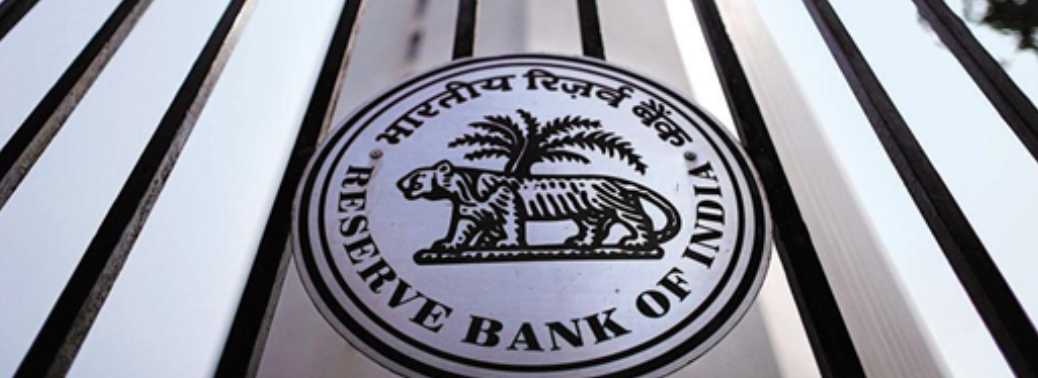
Why in News?
- The Reserve Bank of India (RBI) has issued the final framework for regulatory sandbox in order to enable innovations in the financial technology.
Regulatory Sandbox:
- A regulatory sandbox usually refers to live testing of new products or services in a controlled/test regulatory environment for which regulators may permit certain regulatory relaxations for the limited purpose of the testing.
- The objective of the sandbox is to foster responsible innovation in financial services, promote efficiency and bring benefit to consumers.
- It provides a secure environment for fintech firms to experiment with products under supervision of a regulator.
- It is an infrastructure that helps fintech players live test their products or solutions, before getting the necessary regulatory approvals for a mass launch, saving start-ups time and cost.
- The concept of a regulatory sandbox or innovation hub for fintech firms was mooted by a committee headed by then RBI executive director Sudarshan Sen.
- The panel submitted its report in Nov 2017 has called for a regulatory sandbox to help firms experiment with fintech solutions, where the consequences of failure can be contained and reasons for failure analysed.
- If the product appears to have the potential to be successful, it might be authorised and brought to the broader market more quickly.
What are New RBI Norms?
- RBI will launch the sandbox for entities that meet the criteria of minimum net worth of ₹25 lakh as per their latest audited balance sheet.
- The entity should either be a company incorporated and registered in the country or banks licensed to operate in India.
- While money transfer services, digital know-your customer, financial inclusion and cybersecurity products are included, crypto currency, credit registry and credit information have been left out.
- Meeting norms on customer privacy, data protection, security and access to payment data, the security of transactions, KYC, anti-money laundering will be mandatory.
COMPETITION LAW REVIEW COMMITTEE
16, Aug 2019

Why in News?
- Shri Injeti Srinivas, Secretary (Corporate Affairs) presented the Report of the Competition Law Review Committee
Highlights:
- The Government constituted a Competition Law Review Committee on 1st October, 2018 to review the existing Competition law framework and make recommendations to further strengthen the framework to inter alia meet new economy challenges.
- The Committee was chaired by Shri Injeti Srinivas
Recommendations:
- Introduction of a ‘Green Channel’ for combination notifications to enable fast-paced regulatory approvals for vast majority of mergers and acquisitions that may have no major concerns regarding appreciable adverse effects on competition. The aim is to move towards disclosure based regime with strict consequences for not providing accurate or complete information.
- Combinations arising out of the insolvency resolution process under the Insolvency and Bankruptcy Code will also be eligible for “Green Channel” approvals.
- Introducing a dedicated bench in NCLAT for hearing appeals under the Competition Act.
- Introduction of express provisions to identify ‘hub and spoke’ agreements as well as agreements that do not fit within typical horizontal or vertical anti-competitive structures to cover agreements related to business structures and models synonymous with new age markets.Additional enforcement mechanism of ‘Settlement & Commitments” in the interests of speedier resolution of cases of anti-competitive conduct.
- Enabling provisions to prescribe necessary thresholds, inter alia, deal-value threshold for merger notifications.
- CCI to issue guidelines on imposition of penalty to ensure more transparency and faster decision making which will encourage compliance by businesses.
- Strengthening the governance structure of CCI with the introduction of a Governing Board to oversee advocacy and quasi-legislative functions, leaving adjudicatory functions to the Whole-time Members.Merging DG’s Office with CCI as an ‘Investigation Division’ as it aids CCI in discharging an inquisitorial rather than adversarial mandate. However, functional autonomy must be protected.
- Opening of CCI offices at regional level to carry out non-adjudicatory functions such as research, advocacy etc. and interaction with State Governments and State regulators.
CSR EXPENDITURE TO BE MADE TAX DEDUCTIBLE
14, Aug 2019

Why in News?
- Shri Injeti Srinivas, Secretary (Corporate Affairs), presented the Report of the High Level Committee on CSR to the Union Minister of Finance and Corporate Affairs, Smt. Nirmala Sitharaman.
Recommendations:
- The main recommendations include, making Corporate Social Responsibility (CSR) expenditure tax deductible, provision for carry forward of unspent balance for a period of 3 – 5 years.
- The other recommendations include developing a CSR exchange portal to connect contributors, beneficiaries and agencies, allowing CSR in social benefit bonds, promoting social impact companies, and third party assessment of major CSR projects.
- The Committee has emphasized on not treating CSR as a means of resource gap funding for government schemes.
- It has emphasized on CSR spending as a board driven process to provide innovative technology based solutions for social problems.
- The Committee has also recommended that companies having CSR prescribed amount below Rs. 50 lakh may be exempted from constituting a CSR Committee.
- The Committee has also recommended that violation of CSR compliance may be made a civil offence and shifted to the penalty regime.
NEGATIVE RATE POLICY
14, Aug 2019

- Context: Negative rate policy – once considered only for economies with chronically low inflation such as Europe and Japan – is becoming a more attractive option for some other central banks to counter unwelcome rises in their currencies.
What is Negative Rate Policy:
- A negative interest rate policy (NIRP) is an unconventional monetary policy tool employed by a central bank whereby nominal target interest rates are set with a negative value, below the theoretical lower bound of zero percent.
- A NIRP is a relatively new development (since the 1990s) in monetary policy used to mitigate a financial crisis.
Why have some Central Banks adopted Negative Rates?
- To battle the global financial crisis triggered by the collapse of Lehman Brothers in 2008, many central banks cut interest rates near zero.
- A decade later, interest rates remain low in most countries due to subdued economic growth.
- With little room to cut rates further, some major central banks have resorted to unconventional policy measures, including a negative rate policy.
- The euro area, Switzerland, Denmark, Sweden and Japan have allowed rates to fall slightly below zero.
How does it work?
- Under a negative rate policy, financial institutions are required to pay interest for parking excess reserves with the central bank.
- That way, central banks penalise financial institutions for holding on to cash in hope of prompting them to boost lending.
- The European Central Bank (ECB) introduced negative rates in June 2014, lowering its deposit rate to -0.1% to stimulate the economy.
- Given rising economic risks, markets expect the ECB to cut the deposit rate, now at -0.4%, in September.
- The Bank of Japan (BOJ) adopted negative rates in January 2016, mostly to fend off an unwelcome yen spike from hurting an export-reliant economy.
- It charges 0.1% interest on a portion of excess reserves financial institutions park with the BOJ.
What are the Pros, Cons:
- Aside from lowering borrowing costs, advocates of negative rates say they help weaken a country’s currency rate by making it a less attractive investment than that of other currencies.
- A weaker currency gives a country’s export a competitive advantage and boosts inflation by pushing up import costs.
- But negative rates put downward pressure on the entire yield curve and narrow the margin financial institutions earn from lending.
- If prolonged ultra-low rates hurt the health of financial institutions too much, they could hold off on lending and damage the economy.
- There are also limits to how deep central banks can push rates into negative territory – depositors can avoid being charged negative rates on their bank deposits by choosing to hold physical cash instead.
What are central banks doing to Mitigate the Side-Effects?
- The BOJ adopts a tiered system under which it charges 0.1% interest only to a small portion of excess reserves financial institutions deposit with the central bank.
- It applies a zero or +0.1% interest rate to the rest of the reserves. The ECB is also expected to take “mitigating measures”, such as a partial exemption from the charge in the form of tiered deposits rates, if it were to deepen negative rates from the current -0.4%, analysts say.
- But designing such a scheme won’t be easy in a bloc where cash is distributed unevenly among countries.
- It could even backfire by pushing rates up in certain countries, rather than down.
US-CHINA TRADE WAR
14, Aug 2019
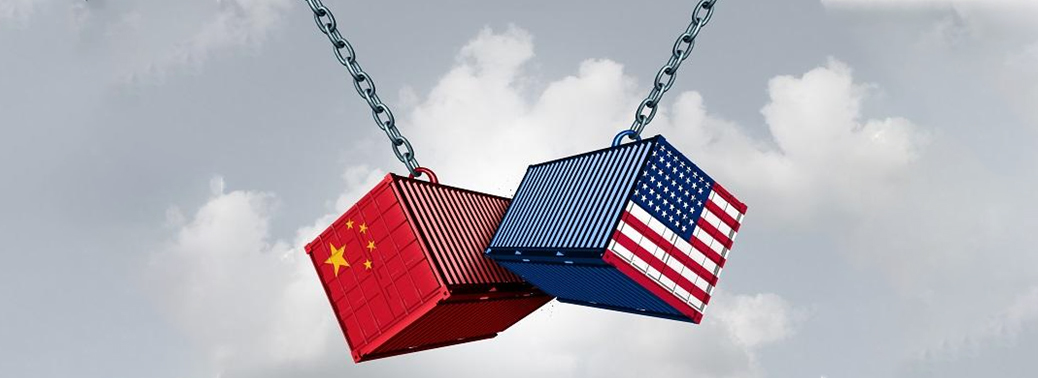
- Context: Researchers at Morgan Stanley have alerted that if US and China continue to heap increasing tariff and non-tariff barriers over the next four to six months, the world economy could enter a recession within the next three quarters.
Origin of the US-China dispute:
- The US and China have been slugging it out since Trump slapped heavy tariffs on imported steel and aluminum items from China in March last year, and China responded by imposing tit-for-tat tariffs on billions of dollars’ worth of American imports.
- The dispute escalated after Washington demanded that China reduce its $375 billion trade deficit with the US, and introduce “verifiable measures” for protection of Intellectual Property Rights, technology transfer, and more access to American goods in Chinese markets.
What is a Global Recession?
- In an economy, a recession happens when output declines for two successive quarters (that is, six months). However, for a global recession, institutions such as the International Monetary Fund tend to look at more than just a weakness in the economic growth rate; instead, they look at a widespread impact in terms of the impact on employment or demand for oil etc. The long-term global growth average is 3.5 per cent. The recession threshold is 2.5 per cent.
What has Triggered the Alarm?
- On August 1, trade tensions between the two biggest economies of the world escalated further when the US announced that it would impose 10 per cent tariff on imports from China.
- These measures are to come in to effect from September 1.
China threatened to take Countermeasures:
- In retaliation, China threatened to take countermeasures.
- The US has also declared China a “currency manipulator”.
- In other words, the US accuses China of deliberately weakening the yuan to make Chinese exports to the US more attractive and undercut the effect of increased tariffs that the US is employing.
What is Currency manipulation?
- Currency manipulation refers to actions taken by governments to change the value of their currencies relative to other currencies in order to bring about some desirable objective.
- The typical claim – often doubtful – is that countries manipulate their currencies in order to make their exports effectively cheaper on the world market and in turn make imports more expensive.
- The renewed trade tensions threaten to derail the already struggling global economy.
- For instance, the global manufacturing Purchasing Managers’ Index and new orders sub-index have contracted for the second consecutive month in July; they are already at a seven-year low.
- Further, the global capital expenditure cycle has “ground to a halt”; since that start fo 2018, there’s been a sharp fall-off in nominal capital goods imports growth.
- Central banks around the world are cutting interest rate in a bid to shore up global economic activity.
- To some extent, that cheap money policy is countering the adverse impacts of trade wars and all-round global uncertainty, thanks to Brexit and geopolitical tensions in West Asia, and between the US and North Korea.
How do higher tariffs affect growth?
- According to Morgan Stanley, two-thirds of the goods being lined up for increased tariffs are consumer goods. Higher tariffs are not only likely to douse demand but, most crucially, hit business confidence.
- The apprehension is that the latest US tariffs and similar countermeasures by China could start a negative cycle wherein businesses do not feel confident to invest more, given the lower demand for consumer goods.
- Reduced capital investment would reflect in fewer jobs, which, in turn, will show up in reduced wages and eventually lower aggregate demand in the world.
- What makes this scenario tricky is that fact that monetary policy is already loose.
- Ideally, the global economy should not risk reaching a recession at a time when the monetary levers may not have a lot to offer.
- In fact, at present, the trade tensions and uncertainty is negating the positives that a cheap money policy could provide to the world economy.
How India is impacted by US-China trade war?
- There could be a short-term impact on the stock markets.
- The benchmark Sensex at the Bombay Stock Exchange has been falling in line with global markets that have been spooked by the escalating trade war between the US and China.
- In the longer run, while a slowdown in the US economy does not augur well for emerging markets, the trade war could have a silver lining for some countries.
- India is among a handful of economies that stand to benefit from the trade tensions between the world’s top two economies, the United Nations has said in a report.
- Other countries set to benefit from the trade tensions include Vietnam, with 5% export gains, Australia (4.6%), Brazil (3.8%), India (3.5%), and Philippines (3.2%), the UNCTAD study said.
The value of the Indian Rupee:
- In the last one month, the value of the rupee has dropped to an all-time low, when in some occasions it was hovering around the mid 68s against the US dollar.
- This coincided with Donald Trump’s threat of imposing a fresh round of tariffs on exports worth $200 billion.
- This trend can be traced to the weakening of the US dollar, which automatically creates a negative impact on the trade deficit of India, causing a chain reaction of sorts.
India-US duties
- As the United States of America imposed duties on steel and aluminium, India now has to pay approximately $241 million worth of tax to the US.
- India, on the other hand, as a counter-measure has proposed imposing duties on 30 different types of goods.
- This will ensure that the US has to pay about $238 million as duties to India.
- However, this will make life more difficult for the end consumers as everything that falls under the tariff scanner is expected to become more expensive.
CERTIFICATION OF SEEDS TO BE MADE MANDATORY TO STEP UP FARM OUTPUT
14, Aug 2019

- Context: The Centre is planning to mandate uniform certification by pushing through a replacement to the Seeds Act, 1966.
Background:
- More than half of all seeds sold in India are not certified by any proper testing agency, and are often of poor quality.
- The existing legislation that was enacted over half a century ago and therefore there is a need for revival.
Proposed Changes in The New Bill:
- The 1966 Act starts with these words: “An Act to provide for regulating the quality of certain seeds for sale…” The new Bill removes the word “certain”, and aims to regulate the quality of all seeds sold in the country, as well as exported and imported seeds.
- The new law will also raise the stakes by increasing penalties for non-compliance. Currently, the fine ranges from ₹500 to ₹5,000.
Significance:
- New changes could increase overall agricultural productivity by up to 25%.
- It will also bring uniformity to the process of quality regulation.
ZERO DEFECT AND ZERO EFFECT SCHEME
13, Aug 2019

Why in News?
- The Government has launched a scheme namely “Financial Support to MSMEs in ZED Certification Scheme”.
Highlights:
- The objective of the scheme for promotion of Zero Defect and Zero Effect (ZED) manufacturing amongst micro, small and medium enterprises (MSMEs)
- The ZED Assessment for their certification so as to:
- Develop an Ecosystem for Zero Defect Manufacturing in MSMEs.
- Promote adaptation of Quality tools/systems and Energy Efficient manufacturing.
- Enable MSMEs for manufacturing of quality products.
- Encourage MSMEs to constantly upgrade their quality standards in products and processes.
- Drive manufacturing with adoption of Zero-Defect production processes and without impacting the environment.
- Support ‘Make in India’ campaign.
- Develop professionals in the area of ZED manufacturing and certification.
- There are 50 parameters for ZED rating and additional 25 parameters for ZED Defence rating under ZED Maturity Assessment Model.
- The MSMEs are provided financial assistance for the activities to be carried out for ZED certification i.e., Assessment / Rating, Additional rating for Defence angle, Gap Analysis, Handholding, Consultancy for improving the rating of MSMEs by Consultants and Re-Assessment / Re-Rating.
- Quality Council of India (QCI) has been appointed as the National Monitoring & Implementing Unit (NMIU) for implementation of ZED.
MUKHYA MANTRI KRISHI ASHIRWAD YOJNA
12, Aug 2019
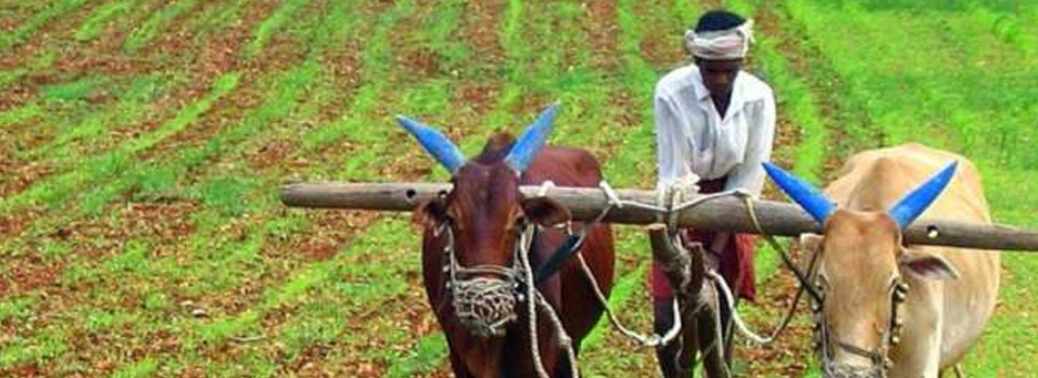
Why in News?
- The Vice President of India, Shri M. Venkaiah Naidu has called for introducing structural reforms in the agricultural sector along with financial assistance schemes like Direct Benefit Transfer to make agriculture profitable and sustainable.
- He inaugurated the Mukhya Mantri Krishi Ashirwad Yojna of the Jharkhand Government.
Highlights:
- Under the scheme, all the small and marginal farmers of the state, who have arable land up to a maximum of 5 acres, will be given a grant-in-aid at the rate of Rs. 5000 / – per acre per year, which will also reduce their dependence on loans.
- This amount would be given in two instalments through Direct Benefit Transfer to the beneficiary’s bank account.
- This is in addition to PM Kisan Nidhi Yojana under which each small & marginal farmer’s family having combined landholding/ ownership of up to two hectares is paid Rs. 6,000 per year.
- Direct Benefit Transfer would eliminate middlemen and ensure that every penny of the financial assistance given by the government reaches the beneficiaries.
- Government of India has taken a firm resolve to double the income of farmers by 2022.
LINKING FARMERS TO FUTURES MARKET IN INDIA
12, Aug 2019

Why in News?
- The Indian Council for Research on International Economic Relations (ICRIER) study suggests the need to empower the Farmer Producer Organizations (FPOs) to trade in the commodities futures market.
Highlights:
- For futures market to achieve the objectives of price discovery and risk mitigation and have an impact on Indian agriculture, it is necessary that more farmers and farmer-producer organisations (FPOs) participate in it.
- The concept of ‘Farmer Producer Organizations (FPO)’ consists of collectivization of producers, especially small and marginal farmers so as to form an effective alliance to collectively address many challenges of agriculture such as improved access to investment, technology, inputs, and markets.
- The FPO can be a production company, a cooperative society or any other legal form which provides for sharing of benefits among the members. In some forms like producer companies, institutions of primary producers can also become a member of PO.
- The FPOs are generally mobilized by promoting institutions/ resource agencies (RAs). Small Farmers Agribusiness Consortium (SFAC) provides support for the promotion of FPOs.
- The resource agencies leverage the support available from governments and agencies like NABARD to promote and nurture FPOs, but attempting an assembly line for mass production of FPOs has not given the desired results.
Future Market:
- Futures contracts are used as hedging instruments in agricultural commodities. Hedging is a common practice that insures the farmer against a poor harvest by purchasing futures contracts in the same commodity.
- Forward Markets Commission (FMC) was a regulatory authority for commodity futures market in India. Forward Markets Commission (FMC) has been merged with Securities and Exchange Board of India (SEBI) with effect from September 28, 2015.
PRADHAN MANTRI KISAN MAAN-DHAN YOJANA (PM-KMY)
11, Aug 2019
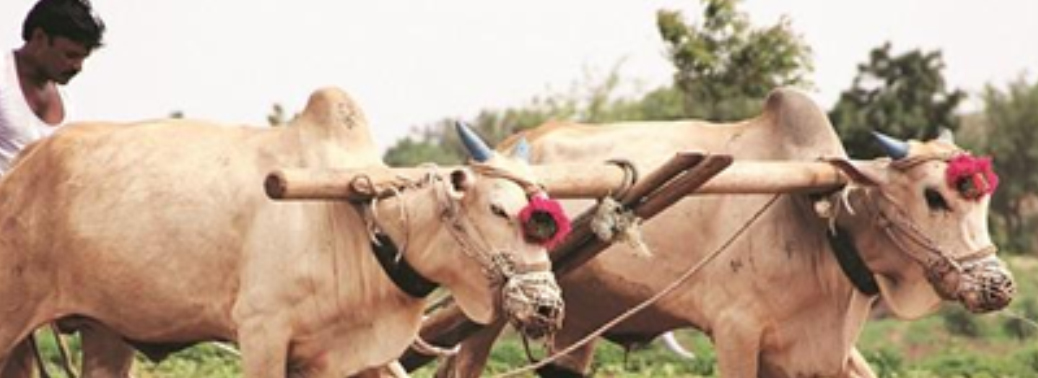
Context: The PM-KMY was launched by Agriculture Minister which entitles eligible farmers for monthly pension of ₹3,000 per month on attaining the age of 60.
About PM-KMY:
- Aim: Welfare of small and marginal farmers across the country.
Key Highlights of the Scheme:
- It is a voluntary and contributory scheme for farmers and the entry age is between 18 to 40 years.
- Eligible farmers will be provided with a monthly pension of Rs. 3000/- per month on attaining the age of 60 years.
- The farmers will have to make a monthly contribution of Rs.55 to Rs.200, depending on their age of entry, in the Pension Fund till they reach the retirement date i.e. the age of 60 years.
- The Central Government will also make an equal contribution of the same amount in the pension fund.
- The spouse is also eligible to get a separate pension of Rs.3000/- upon making separate contributions to the Fund.
- The Life Insurance Corporation of India (LIC) shall be the Pension Fund Manager and responsible for Pension pay out.
- In case of death of the farmer before retirement date, the spouse may continue in the scheme by paying the remaining contributions till the remaining age of the deceased farmer.
- If the spouse does not wish to continue, the total contribution made by the farmer along with interest will be paid to the spouse.
- If there is no spouse, then total contribution along with interest will be paid to the nominee.
- If the farmer dies after the retirement date, the spouse will receive 50% of the pension as Family Pension.
- After the death of both the farmer and the spouse, the accumulated corpus shall be credited back to the Pension Fund.
- The beneficiaries may opt voluntarily to exit the Scheme after a minimum period of 5 years of regular contributions.
- On exit, their entire contribution shall be returned by LIC with an interest equivalent to prevailing saving bank rates.
- The farmers, who are also beneficiaries of PM-Kisan Scheme, will have the option to allow their contribution debited from the benefit of that Scheme directly.
- In case of default in making regular contributions, the beneficiaries are allowed to regularize the contributions by paying the outstanding dues along with prescribed interest.
- The initial enrollment to the Scheme is being done through the Common Service Centres in various states.
- Later on, alternative facility of enrollment through the PM-Kisan State Nodal Officers or by any other means or online enrollment will also be made available.
- The enrollment is free of cost. The Common Service Centres will charge Rs.30/- per enrolment which will be borne by the Government.
- There will be appropriate grievance redressal mechanism of LIC, banks and the Government. An Empowered Committee of Secretaries has also been constituted for monitoring, review and amendments of the Scheme.
INDIAN ECONOMY SLOWDOWN
10, Aug 2019

Context-
- The Indian economy is facing one of its most challenging times in years, and policymakers are responding to the crisis through monetary measures, such as tweaking key interest rates.
RBI Monetary Policy:
- The Reserve Bank of India, in its bi-monthly monetary policy meeting, lowered its growth projection for the current financial year to 6.9%, from its earlier forecast of 7%.
- India has already lost its tag as the world’s fastest-growing major economy after GDP growth in the March quarter of financial year 2019 slipped to 5.8%.
- Taking note of the sagging growth, the central bank cut the repo rate – at which it lends to commercial banks – by 35 basis points to 5.4%, the lowest level since 2010.
- A basis point is one-hundredth of a percentage point. This marks the fourth consecutive time the key interest rate has been slashed since February 2019.
Why RBI cutting Repo Rate:
- The reasoning is that lower interest rates will reduce the cost of loans and stimulate falling consumption.
- The current economic slowdown has been widely attributed to tepid demand, which has, in the past been the key driver of growth.
Weak Consumption:
- Weak consumption is evidenced by muted demand for automobiles, air travel and fast-moving consumer goods in recent times.
- The automobile industry, in particular, has witnessed a long-drawn slowdown, resulting in significant job losses.
NBFCs Shadow banking:
- One reason for the weak demand is the crisis in the shadow banking sector, or the non-banking financial companies.
- The lack of credit for big-ticket spending may have played a significant role in the slump in automobile sales, for instance.
- The RBI is, therefore, attempting to increase liquidity flows to non-banking financial companies by allowing banks to invest more in shadow banks.
Limitation of Monetary Policy:
- It seems appropriate that a crisis, which has its origins in the financial system, should be solved through monetary measures.
- However, the dynamics of a modern economy may mean that monetary policy moves alone will not be enough, and fiscal policy tools, too, will have to be deployed to deal with the situation.
US similar Situation:
- Parallels of today’s economic situation can be seen in the US experience of 2008. That year, the recession began in the mortgage industry.
- The inability of consumers to repay their loans resulted in financial stress for the mortgage firms.
- This later spread to all major banks and financial institutions that had invested in assets backed by these mortgages.
- A good part of monetary policy was initially focused on introducing substantial amounts of liquidity into the system.
- The official interest rate was reduced until it hit zero and could be reduced no more.
- Failing banks were propped up through interventions by the US Federal Reserve.
- Monetary policy took the form of large-scale quantitative easing.
- The Federal Reserve bought stressed assets and securities from banks by simply creating money, in an attempt to increase liquidity and clean up banks’ balance sheets and get them to lend again. Yet, these measures were inadequate. Interest rates remained close to zero for years, with the economy being slow to respond.
- Quantitative easing might have helped limit the extent of the recession but did not revive growth significantly.
- Ultimately, fiscal policy measures were needed for a full recovery.
Why financial crises cannot always be solved through monetary and financial measures alone:
- The reason why financial crises cannot always be solved through monetary and financial measures alone is because of the knock-on effect unemployment can have in an economy.
- The current fall in demand for automobiles in India has led to about 350,000 workers losing their jobs since April. These workers may not be consumers of cars, but they will reduce their purchases of clothing and other consumer durables, for instance.
Unemployment:
- And those who otherwise earn their incomes from the sale of vehicles, such as owners of showrooms or retailers, might choose not to purchase cars due to their businesses facing reduced demand, even if interest rates are low and non-banking financial companies resume lending.
- Unemployment can have a multiplier effect, on various spheres of the economy. On seeing reduced demand, manufacturers and business-owners might reduce their expectations of future profits and might cut back on investment plans.
- In financial year 2018, unemployment in India stood at a 45-year high of 6.1%. An increase in the availability of credit to consumers, therefore, may not necessarily be enough to induce spending again.
John Maynard Keynes said:
- Monetary policy in the face of serious economic crisis becomes similar to “pushing on a string,” unable to exert any effect on demand.
The need for fiscal policy:
- To be sure, there are differences between the 2008 crisis and India’s current problems.
- For one, the US suffered negative growth rates, while India is still growing, albeit at slower rates.
- Secondly, Indian interest rates still have sufficient space for further reductions, unlike US rates which reached near zero and could not be reduced further.
- Yet there are grounds to be concerned. The current crisis compounds the problem of record unemployment the economy is already facing.
- It is imperative that fiscal policy is used and demand be revived, through public spending to shore up the economy.
Conclusion:
- Adhering to a strict fiscal deficit target may prove to be counter-productive in the face of a widespread reduction in demand.
- The world has enough experience to see how crises that start in financial sectors can rapidly spread outwards, and it is imperative to take all steps to combat the problems the economy currently faces.
AUTO INDUSTRY SLOWDOWN
09, Aug 2019

Context:
- Federation of Automobile Dealers Associations has stated that nearly 2 lakh jobs have been cut in the last three months due to the slowdown. The slowdown continued in July, which reflected in the decline in domestic sales of up to 50 per cent announced by leading automobile manufacturers.
- Players from the auto sector petitioned the government for assistance, including a reduction of GST from 28 per cent to 18 per cent on vehicles.
- And called for a temporary relief on GST by way of modification in slabs or removal of cess to put the industry back on track.
Background:
- The Indian auto industry became the 4th largest in the world with sales increasing 9.5 per cent year-on-year to 4.02 million units (excluding two wheelers) in 2017. It was the 7th largest manufacturer of commercial vehicles in 2018.
- The Two Wheelers segment dominates the market in terms of volume owing to a growing middle class and a young population. Moreover, the growing interest of the companies in exploring the rural markets further aided the growth of the sector.
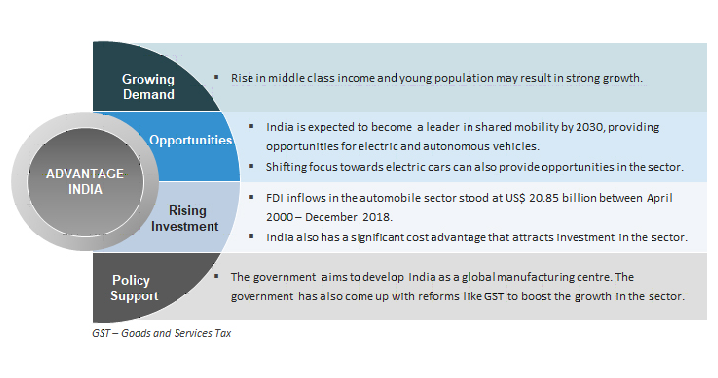
Recent Issue:
Slowdown in Sale of Automobile:
- As per SIAM figures, vehicle sales across all categories declined by 12.35 per cent to 60,85,406 units between April and June 2019 against 69,42,742 units in same period of last year.
- FADA has stated that nearly 2 lakh jobs have been cut in the last three months due to the slowdown.
- The slowdown continued in July, which reflected in the decline in domestic sales of up to 50 per cent announced by leading automobile manufacturers.
Loss of jobs in the sector:
- As a result of the cuts in production, companies have now resorted to reducing headcounts, industry insiders say.
- The job losses have begun across the value chain, including in showrooms, suppliers, and other stakeholders, and companies are now considering reducing their headcount — starting with contractual employees.
Demand for quick resolution:
- Making a case for quick resolution and a cut in GST rates.
- Auto industry contributes revenues of over of Rs 1,80,000 crore to government treasuries, and the current slowdown in the auto industry poses a major threat to the financial arithmetic of the government.
- According to SIAM estimates, the slowdown has resulted in an 8% loss in GST collection in the first six months of 2019.
- Hinting that decline in the auto sector may hurt the economy,
- Automobile sector has a huge multiplier effect.
- Auto Sector constitutes 7.1 per cent of the GDP, and 49% of the manufacturing GDP in the country, and it supports almost 37 million jobs (inclusive of its value chain).
- Alongside a cut in GST rates, the industry has also been demanding that banks and other lenders pass the cut in rates by the Reserve Bank of India to the consumers so that demand is revived.
Previous Initiatives of Government in Automobile sector:
- The Government of India encourages foreign investment in the automobile sector and allows 100 per cent FDI under the automatic route.
- Some of the recent initiatives taken by the Government of India:
- The government aims to develop India as a global manufacturing centre and an R&D hub.
- Under National Automotive Testing And R&D Infrastructure Project (NATRIP), the Government of India is planning to set up R&D centres at a total cost of US$ 388.5 million to enable the industry to be on par with global standards
- The Ministry of Heavy Industries, Government of India has shortlisted 11 cities in the country for introduction of electric vehicles (EVs) in their public transport systems under the FAME (Faster Adoption and Manufacturing of (Hybrid) and Electric Vehicles in India) scheme. The government will also set up incubation centre for start-ups working in electric vehicles space.
- In February 2019, the Government of India approved the FAME-II scheme with a fund requirement of Rs 10,000 crore (US$ 1.39 billion) for FY20-22.
RBI CUT LENDING RATE BY 35 BASIS POINTS
08, Aug 2019
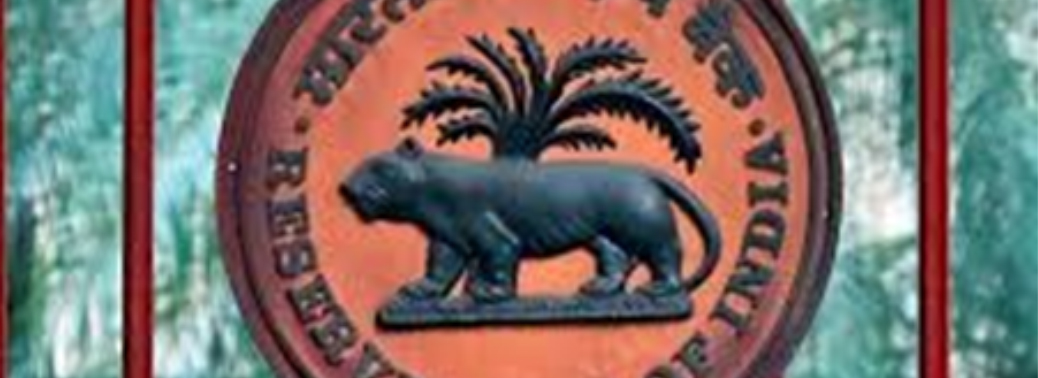
Context:
- In a bid to augur economic activity amidst slowing consumption demand, the monetary policy committee of Reserve Bank of India on Wednesday unanimously decided to go for its fourth cut this year.
Background:
- With a 35 basis point cut (highest this year) the repo rate, at which RBI lends to commercial banks, stood at a 9-year low of 5.4 per cent, since July 2010 when it was 5.25 per cent.
- The previous three cuts this year were 25 basis points each. Alongside a cut in the repo rate, the central bank also lowered its GDP growth projection from 7 per cent in June policy to 6.9 per cent now.
Why the Rate Cut?
- While inflation is a key consideration for a rate cut and it provided RBI the comfort to go for a cut, the decision was also taken to boost aggregate demand especially private investment.
- The monetary policy statement said that “inflation is currently projected to remain within the target over a 12-month ahead horizon”.
- The RBI statement further said that
- Domestic Economic activity continues to be weak,
- With the global slowdown and
- Escalating Trade Tensions posing downside risks.
- It added that while private consumption, the mainstay of aggregate demand, and investment activity remain sluggish.
Why Has Growth Been Revised Downwards GDP?
- This is the second consecutive policy statement where the RBI has lowered its GDP growth projection for 2019-20.
- While in June statement it revised it projection downward from 7.2 per cent (stated in April 2019) to 7 per cent.
- This time it further revised the growth projection further down to 6.9 per cent.
- The RBI said that “various high frequency indicators suggest weakening of both domestic and external demand conditions…business expectations Index of the Reserve Bank’s industrial outlook survey shows muted expansion in demand conditions in Q2, although a decline in input costs augurs well for growth”.
- It said that the monetary policy easing since February 2019 is expected to support economic activity, going forward.
Significance of Monetary Policy:
- It influences the interest rate in the economy — which is the cost of money when you don’t have it, and the reward for parting with it when you have it.
- In any economy, economic activity, which is measured by gross domestic product or GDP, happens by one of four ways.
- One, private individuals households spend money on consumption.
- Two, the government spends on its agenda.
- Three, private sector businesses “invest” in their productive capacity.
- And four, the net exports — which is the difference between what all of them spend on imports as against what they earn from exports.
- At the heart of any spending decision taken by any of these entities lies the question: What is the cost of money?
- Monetary policy essentially answers that question
- In every country, the central bank is mandated to decide the cost of money, which is more commonly known as the “interest rate” in the economy.
- While various factors make it difficult for a central bank to exactly dictate interest rates, as a thumb rule, RBI’s decision on the repo rate sets the markers for the rest of the economy. In other words, the EMI for your car or home is determined by what the RBI decides.
What Is the Repo Rate?
- Repo and Reverse repo are short for Repurchase agreements between the RBI and the commercial banks in the economy.
- In essence, the repo rate is the interest rate that the RBI charges a commercial bank when it borrows money from the RBI.
- As such, if the repo falls, all interest rates in the economy should fall. And that is why common people should be interested in the RBI’s monetary policy.
But the interest rate for consumer loans has not reduced by 110 bps since February. Why?
- In the real world, the “transmission” of an interest rate cut (or increase) is not a hundred per cent.
- And that is why, even though when the RBI cut by 35 bps lay consumers may only receive a much lower reduction in the interest rate on their borrowings.
- This is due to a lot of factors — but primarily, it has to do with the health of the concerned commercial bank.
Issues with Commercial Bank
- Over the past few years, almost all banks, especially the ones in the public sector, have seen their profits plummet because many of their past loans have turned out to be non-performing assets (in other words, they are not getting repaid).
- To cover for these losses, the banks have to use their existing funds, which would have otherwise gone to common consumers for fresh loans.
- Lag in monetary policy
- The reduced repo rate applies only to new borrowings of banks. The banks’ cost of existing funds is higher. Of course, funding costs would eventually come down — but this process would take time.
- This “lag” in monetary policy is a key variable in determining the efficacy of any rate cut by the RBI.
- It could take anywhere between 9 and 18 months for the full effect of an RBI decision to reflect in interest rates across the economy.
Will the rate cut bring Investments?
- Investments depend essentially on the “real” interest rate.
- The real interest rate is the difference between the repo rate and retail inflation.
- When making an investment decision, it is this interest rate that matters.
- As a variable, it allows an investor to compare the attractiveness of different economies.
- Real interest rates in India have been rising, and that is one of the biggest reasons why investments are not happening.
- The RBI’s move would reduce the real interest rate and hopefully attract more investment.
Monetary Policy Committee Composition
- Governor of the Reserve Bank of India – Chairperson, ex officio; (Shri Shaktikanta Das)
- Deputy Governor of the Reserve Bank of India, in charge of Monetary Policy- BP Kanungo (Member, ex officio).
- One officer of the Reserve Bank of India to be nominated by the Central Board – Member, ex officio; (Dr. Michael Debabrata Patra)
- Ravindra H. Dholakia, Professor, Indian Institute of Management, Ahmedabad – Member.
- Professor Pami Dua, Director, Delhi School of Economics – Member
- Shri Chetan Ghate, Professor, Indian Statistical Institute (ISI) – Member.
US TREASURY LABELS CHINA A ‘CURRENCY MANIPULATOR’
06, Aug 2019
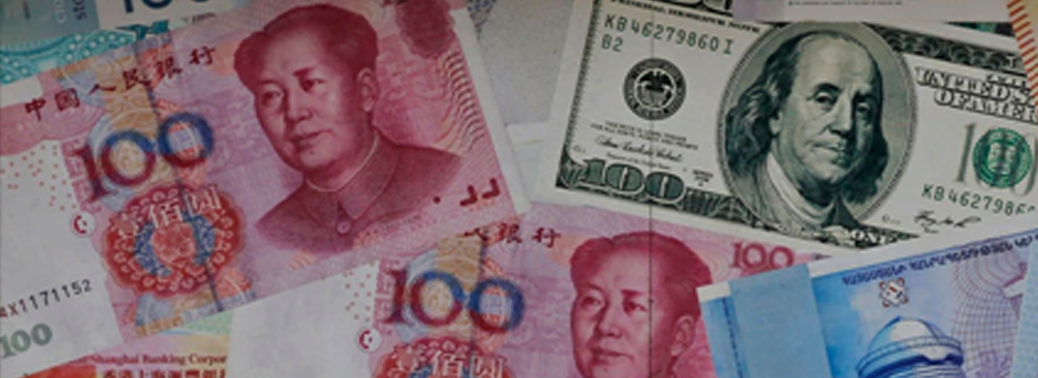
Context:
- The Trump administration formally labeled China a currency manipulator, further escalating its trade war with Beijing after the country’s central bank allowed the yuan to fall in retaliation for new US tariffs.
Background:
- It’s the first time that the US labeled a country a manipulator since the 1990s, when China was also the target.While Trump promised to declare China a currency manipulator during his presidential campaign in 2016, Treasury had so far declined to take the step.
What Is Currency Manipulation and Who Determines It?
- Currency manipulation refers to actions taken by governments to change the value of their currencies relative to other currencies in order to bring about some desirable objective.
- The typical claim – often doubtful – is that countries manipulate their currencies in order to make their exports effectively cheaper on the world market and in turn make imports more expensive.
- The US Department of the Treasury publishes a semi-annual report in which the developments in global economic and exchange rate policies are reviewed.
- If a US trade partner meets three assessment criteria, the US labels it a currency manipulator.
- The US then tries to solve it via bilateral talks.
How Are Countries Identified for The Currency Manipulation List?
- The US Treasury has established thresholds for the three criteria.
- First, a significant bilateral trade surplus with the US is one that is at least $20 billion;
- Second, a material current account surplus is one that is at least 3% of GDP; and
- Third, persistent, one-sided intervention reflected in repeated net purchases of foreign currency and total at least 2% of an economy’s GDP over a year.
- The Treasury’s goal is to focus attention on those nations whose bilateral trade is most significant to the US economy and whose policies are the most material for the global economy.
What is the impact of US treasury labels China a ‘currency manipulator’
- While the Treasury Department’s determination is largely symbolic
- The potential penalties are less punitive than the steps Trump has already taken against China.
- It underscores how rapidly the relationship between the world’s two largest economies is deteriorating.
- Under the designation, Treasury Secretary Steven Mnuchin “will engage with the International Monetary Fund to eliminate the unfair competitive advantage created by China’s latest actions,
- If there is no progress a year after the designation, China could face possible sanctions including its firms being prohibited from competition for US government contracts and excluded from getting financing from an American government agency for development projects.
China’s Stand:
- The US’s manipulator announcement followed a declaration by China’s central bank chief, Yi Gang, that his nation wouldn’t use the yuan as a tool to deal with trade disputes.
Why US did this Now:
- The Trump administration in May moved to let US-based companies seek tariffs on products from countries found by Treasury to be engaging in competitive devaluation of their currencies.
Assessment Criteria Used By US:
- The US Treasury has established thresholds for the three criteria.
- First, a significant bilateral trade surplus with the US is one that is at least $20 billion;
- Second, a material current account surplus is one that is at least 3% of GDP; and
- Third, persistent, one-sided intervention reflected in repeated net purchases of foreign currency and total at least 2% of an economy’s GDP over a year.
- The Treasury’s goal is to focus attention on those nations whose bilateral trade is most significant to the US economy and whose policies are the most material for the global economy.
PASHMINA PRODUCTS RECEIVE BIS CERTIFICATION
04, Aug 2019

Why in News?
- Bureau of Indian Standards (BIS) has published an Indian Standard for identification, marking and labelling of Pashmina products to certify its purity.
Pashmina:
- Pashmina is a fine type of cashmere wool. The textiles made from it were first woven in Kashmir.
- The wool comes from a number of different breeds of the cashmere goat; such as the changthangi or Kashmir pashmina goat from the Changthang Plateau in Tibet and part of the Ladakh region and few parts of Himachal Pradesh.
- Often shawls called shahmina are made from this material in Kashmir and Nepal; these shawls are hand spun and woven from the very fine cashmere fibre.
- Traditional producers of pashmina wool are people known as the Changpa.
Benefits:
- The certification will help curb the adulteration of Pashmina and also protect the interests of local artisans and nomads who are the producers of Pashmina raw material.
- It will also assure the purity of Pashmina for customers.
- It will ensure better prices for the goat herding community in Ladakh as well as for the local handloom artisans producing genuine Pashmina products.
Pashmina Goat:
- The Changthangi or Pashmina goat is a special breed of goat indigenous to the high-altitude regions of Ladakh in Jammu and Kashmir.
- They are raised for ultra-fine cashmere wool, known as Pashmina once woven. The Textiles are handspun and were first woven in Kashmir.
- The Changthangi goat grows a thick warn undercoat which is the source of Kashmir Pashmina wool – the world’s finest cashmere measuring between 12-15 microns in fiber thickness.
- These goats are generally domesticated and reared by nomadic communities called the Changpa in the Changthang region of Greater Ladakh.
- The Changthangi goats have revitalized the economy of Changthang, Leh and Ladakh region.
Bureau of Indian Standards (BIS):
- The BIS is the national Standards Body of India working under the aegis of Ministry of Consumer Affairs, Food & Public Distribution.
- It is established by the Bureau of Indian Standards Act, 1986 which came into effect on 23 December 1986.
- The Minister in charge of the Ministry or Department having administrative control of the BIS is the ex-officio President of the BIS.
KABIL SET UP TO ENSURE SUPPLY OF CRITICAL MINERALS
03, Aug 2019

Why in News?
- A joint venture company namely Khanij Bidesh India Ltd. (KABIL) is to be set up to ensure a consistent supply of critical and strategic minerals to Indian domestic market.
- It would also help in realizing the overall objective of import substitution.
Khanij Bidesh India Ltd. (KABIL):
- A joint venture company namely Khanij Bidesh India Ltd. (KABIL) is to be set up with the participation of three Central Public Sector Enterprises namely, National Aluminium Company Ltd.(NALCO), Hindustan Copper Ltd.(HCL) and Mineral Exploration Company Ltd. (MECL).
- The equity participation between NALCO, HCL and MECL is in the ratio of 40:30:30.
- The KABIL would carry out identification, acquisition, exploration, development, mining and processing of strategic minerals overseas for commercial use and meeting country’s requirement of these minerals.
- The sourcing of these minerals or metals is to done by creating trading opportunities, G2G collaborations with the producing countries or strategic acquisitions or investments in the exploration and mining assets of these minerals in the source countries.
- The new company will help in building partnerships with other mineral rich countries like Australia and those in Africa and South America, where Indian expertise in exploration and mineral processing will be mutually beneficial bringing about new economic opportunities.
Significance:
- The sustained source of mineral and metal commodities is imperative for the transportation and manufacturing segment. R Recalling the commitment at the UN Climate Change Conference, Pairs, 2015, where India has pledged to reduce greenhouse gas emissions and opting a greener mode of transportation by emphasizing upon Electric Vehicle Mobility.It is therefore important to ensure energy storage through batteries.
- Among such twelve minerals identified as strategic minerals, which have meagre resource base, Lithium Cobalt are significant.
NATIONAL TIME RELEASE STUDY
03, Aug 2019
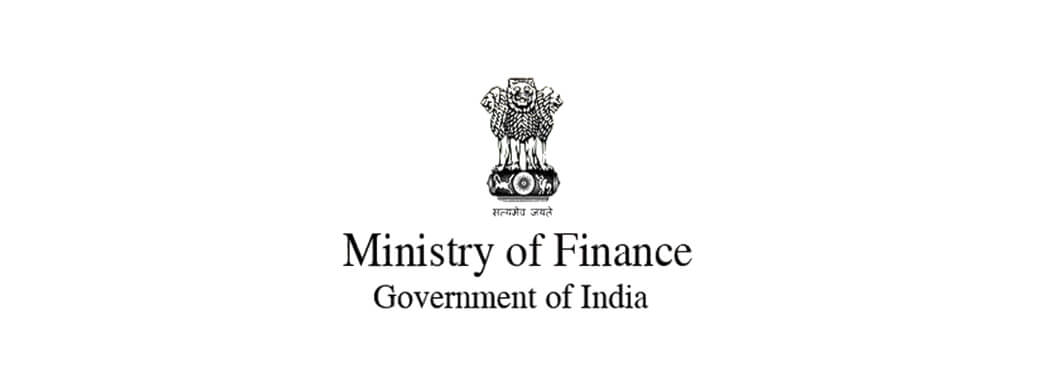
Why in News?
- The Department of Revenue, Ministry of Finance, as part of its strategic commitment to improve global trade, is conducting India’s first National Time Release Study (TRS) between 1st – 7th August.
National Time Release Study:
- The TRS is an internationally recognized tool advocated by World Customs Organization to measure the efficiency and effectiveness of international trade flows.
- This initiative for accountable governance, will measure rule based and procedural bottlenecks (including physical touchpoints) in the clearance of goods, from the time of arrival until the physical release of cargo.
- The aim is to identify and address bottlenecks in the trade flow process and take the corresponding policy and operational measures required to improve the effectiveness and efficiency of border procedures, without compromising efficient trade control.
How it will be done:
- Previously individual customs formations had been independently conducting TRS studies at the port level. The national TRS has taken this a step further and evolved a uniform, multi-dimensional methodology which measures the regulatory and logistics aspects of the cargo clearance process and establishes the average release time for goods.
- The exercise will be conducted at the same time across 15 ports including sea, air, land and dry ports which cumulatively account for 81% of total Bills of Entries for import and 67% of Shipping Bills for export filed within India. The national TRS will establish baseline performance measurement and have standardized operations and procedures across all ports.
- Based on the results of the TRS, government agencies associated with cross border trade will be able to diagnose existing and potential bottlenecks which act as barriers to the free flow of trade, and take remedial actions for reducing the cargo release time. The initiative is on ground lead by the Central Board of Indirect Tax and Customs.
Benefits:
- Expected beneficiaries of this initiative will be export oriented industries and MSMEs, who will enjoy greater standardization of Indian processes with comparable international standards.
- This initiative will help India maintain the upward trajectory on Ease of Doing Business, particularly on the Trading Across Borders indicator which measures the efficiency of the cross-border trade ecosystem. Last year India’s ranking on the indicator improved from 146 to 80.
GOVERNMENT TO SUPPORT INDIA’S IT INDUSTRY
02, Aug 2019

Why in News?
- Union Minister of Commerce & Industry and Railways, held a meeting with senior managers of IT companies in New Delhi
IT Industry Challenges:
- India’s IT industry contributed 7.7% to the country’s GDP in FY 2017 and is expected to contribute 10% of India’s GDP by 2025.
- The United States account for 2/3rds of India’s IT services exports.
- India is the largest exporter of IT services in the world and exports dominate the Indian IT industry and constitutes about 79% of the total revenue of the industry.
- India’s IT service sector is now gearing up to be the digital partner of intelligent automation like smart algorithms, bots and AI tools, which are fast becoming a part of every industry and an increasingly digital world.
Challenges and support:
- The representatives of the companies informed that although the Chinese IT services market is the third largest in the world India’s investments and business have not been able to grow in China.
- This is due to various non-tariff barriers and challenges faced by Indian companies to set up their entity in China. Market access issues that create hurdles for Indian companies to open their business in China was also discussed.
- Government of India will give all support for the global growth of India’s flagship industry and will make all efforts to facilitate the IT service industry and for that it is ready to engage with China and also Japan and Korea
- Commerce and Industry Minister urged India’s IT services companies to explore other markets and not be inhibited in operating in countries that are non-English speaking.
REGULATORY SANDBOX
01, Aug 2019

Why in News?
- The Insurance Regulatory and Development Authority of India (IRDAI) will soon allow the use of regulatory sandbox (RS) to promote new, innovative products and processes in the industry.
Regulatory Sandbox:
- A sandbox approach provides a secure environment for fintech firms to experiment with products under supervision of a regulator. It is an infrastructure that helps fintech players live test their products or solutions, before getting the necessary regulatory approvals for a mass launch, saving start-ups time and cost.
- The concept of a regulatory sandbox or innovation hub for fintech firms was mooted by a committee headed by then RBI executive director Sudarshan Sen.
- The panel submitted its report in Nov 2017 has called for a regulatory sandbox to help firms experiment with fintech solutions, where the consequences of failure can be contained and reasons for failure analysed.
- If the product appears to have the potential to be successful, it might be authorised and brought to the broader market more quickly.
- The sandbox will enable fintech companies to conduct live or virtual testing of their new products and services.
Significance:
- The RS allows the regulator, the innovators, the financial service providers (as potential deployers of the technology) and the customers (as final users) to conduct field tests to collect evidence on the benefits and risks of new financial innovations, while carefully monitoring and containing their risks.
- India accounts for approximately 6 per cent of insurance premium in Asia and around 2 per cent of the global premium volume.
IRDAI sandbox:
- For the IRDAI sandbox, an applicant should have a net worth of Rs 10 lakh and a proven financial record of at least one year.
- Companies will be allowed to test products for up to 12 months in five categories.
- It has said applicants can test products for up to a period of one year in five categories – insurance solicitation or distribution, insurance products, underwriting, policy and claims servicing.
WORLDSKILLS INTERNATIONAL COMPETITION 2019
01, Aug 2019
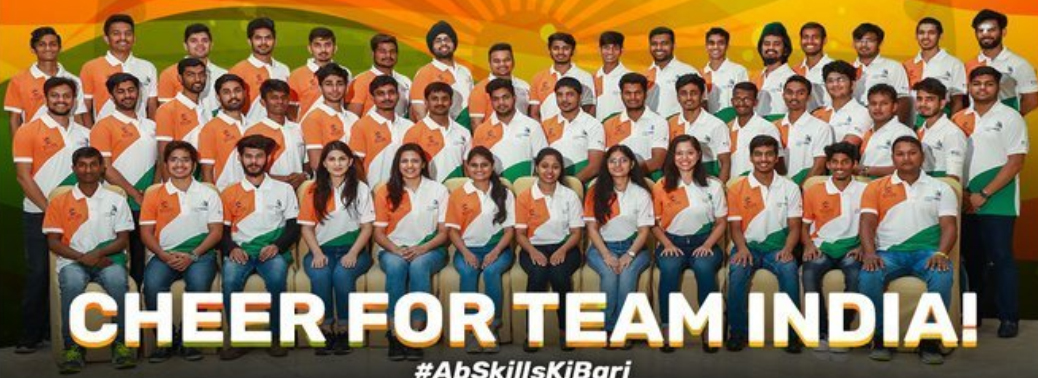
Why in News?
- Ministry of Skill Development & Entrepreneurship (MSDE), Government of India announced that a 48-member contingent will represent India at the biggest showcase of skills excellence in the world, called WorldSkills International Competition 2019.
Highlights:
- WorldSkills International Competition referred to as the ‘Olympics for Skills’, is scheduled in Kazan, Russia.
- More than 1,500 competitors from 60 countries will compete in 55 skill competitions at this mega event. India will participate in 44 skills.
- National Skill Development Corporation (NSDC) under the aegis of MSDE has been leading India’s delegation at this biennial event since 2011
- Through WorldSkills Competition, we aim to provide opportunities to the youth in our country to compete with, and learn from, their peers across the globe.
- Such initiatives also help us benchmark our skills to international standards and will improve the quality of vocational training in India.
SULPHUR BASED FERTILIZER
01, Aug 2019

Context:
- The Cabinet Committee on Economic Affairs (CCEA), gave its nod for raising the subsidized prices of sulphur-based fertilizers.
Purpose:
- The move is aimed at discouraging rampant use of nitrogen-phosphorous-potassium (NPK) fertilizers, which impacts soil quality.
Sulphur fertilizer contains:
- Sulphur: Amino acids, vitamins. Imparts dark green color.
- Stimulates seed production.
Fertilizer Basics:
- 15 of the essential nutrients are supplied by the soil to plants. Out of them, Nitrogen, Phosphorus and Potassium are called primary nutrients or macronutrients.
- Three more elements viz. Calcium, Magnesium and Sulphur are known as secondary nutrients because the deficiency of them is less likely to be a growth limiting factor. Calcium and Magnesium are generally added to soil to adjust soil pH.
- Sulphur generally gets added to soil via rain and release from organic matter in soil.
Indiscriminate use of Fertilizers in India:
- Indiscriminate use of synthetic fertilizers can result in soil contamination by heavy metals; reduction in the nutritional value of crops, reduction in soil fertility etc.
- Fertilizers contaminate the soil with impurities, which come from the raw materials used for their manufacture.
- Over use of NPK fertilizers reduce quantity of vegetables and crops grown on soil over the years.
- It also reduces the protein content of wheat, maize, grams, etc., grown on that soil.
- The carbohydrate quality of such crops also gets degraded.
- Excess potassium content in soil decreases Vitamin C and carotene content in vegetables and fruits.
- The vegetables and fruits grown on overfertilized soil are more prone to attacks by insects and disease.
What are the major issues of Fertilizer Subsidies?
- The objective of the government is to support the farmers but the question is exactly how much of that really goes to the pocket of the farmers and how much is siphoned by the companies.
- It has been debated that the beneficiaries have been the large farmers and not small & marginal farmers.
- While deciding on the subsidy regime, it has to be kept in mind that Urea accounts for almost 50 per cent of fertiliser application and India is NOT self-sufficient in Urea production. At the same time, distorted subsidy regime may deplete the NPK use ratio. The normally accepted ratio is 4:2:1.
GREEN BONDS AND CLIMATE CHANGE
31, Jul 2019
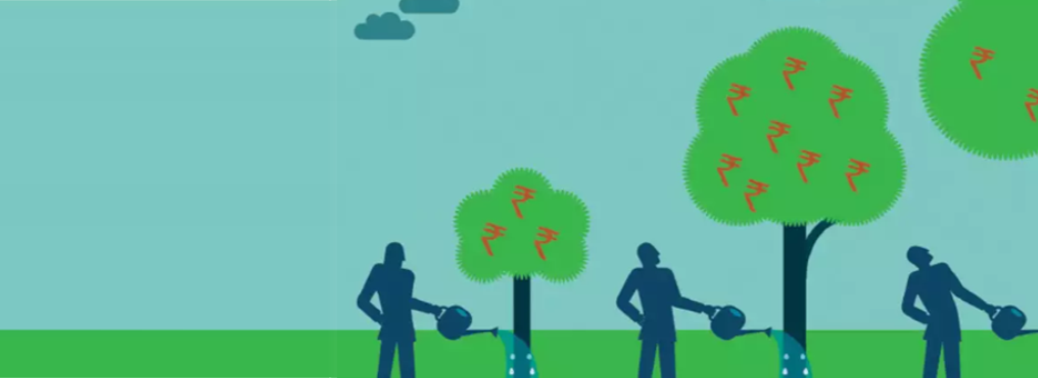
Context:
- New study finds firms that have adopted green bonds benefit from both positive financial and environmental outcomes.
What Are Green Bonds:
- A green bond is like any other regular bond but with one key difference: the money raised by the issuer are earmarked towards financing `green’ projects, i.e. assets or business activities that are environment-friendly.
- Such projects could be in the areas of renewable energy, clean transportation and sustainable water management.
What Are Benefits of Green Bonds?
- Green bonds enhance an issuer’s reputation, as it helps in showcasing their commitment to wards sustainable development.
- It also provides issuers access to specific set of global investors who invest only in green ventures.With an increasing focus of foreign investors towards green investments, it could also help in reducing the cost of capital.
- Green bonds present the opportunity for investors to feel as if they’re making a difference for the environment while earning a respectable return in the process.
Green Bond in India
- CLP India, was the first Indian company to tap this route. So far, Rs 7,200 crore has been raised via green bonds.
Key Findings of Study
- Green bonds offer financial benefits to companies in the long run in terms of better returns on assets and equity.
- Green bonds fulfil their intended goal of better environmental outcomes: companies issuing green bonds saw a significant reduction in their CO2 emissions and a boost in their environmental ratings.
- Though green bonds are only a small share of the larger bond market, they have grown rapidly over the last decade.
- Most of these green bonds were issued by governments, financial and utility companies.
- The green bond market is dominated by three countries – China ($83 billion worth of green bonds issued over the last decade), United States ($58 billion) and France ($57 billion) have been the largest issuers of green bonds.
- India still lags behind these countries ($5.2 billion in 2018), it is one of the fastest-growing green bond markets in Asia.
Way Forward:
- There are neither uniform standards to classify a green bond nor a governing body to regulate the market.
- There is need to address this is critical issue for green bond markets to flourish which has good amount of potential.
ZERO BUDGET NATURAL FARMING
28, Jul 2019
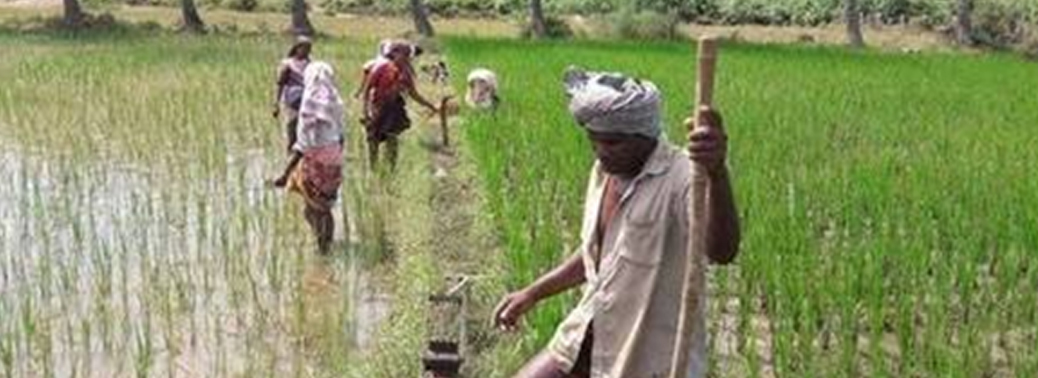
Why in News:
- Finance Minister in her budget speech referred to “back to basics “approach while speaking about Zero Budget Natural Farming.
What is Zero Budget Natural Farming?
- Zero budget natural farming (ZBNF) is a method of chemical-free agriculture drawing from traditional Indian practices.
- It was originally promoted by Maharashtrian agriculturist and Padma Shri recipient Subhash Palekar, who developed it in the mid-1990s as an alternative to the Green Revolution’s methods driven by chemical fertilizers and pesticides and intensive irrigation.
- It is argued that the rising cost of the external inputs was a leading cause of indebtedness and suicide among farmers, while the impact of chemicals on the environment and on long-term fertility was devastating.
- Without the need to spend money on these inputs — or take loans to buy them — the cost of production could be reduced and farming made into a “zero budget” exercise, breaking the debt cycle for many small farmers.
- Instead of commercially produced chemical inputs, the ZBNF promotes the application of jeevamrutha — a mixture of fresh desi cow dung and aged desi cow urine, jaggery, pulse flour, water and soil — on farmland. This is a fermented microbial culture that adds nutrients to the soil, and acts as a catalytic agent to promote the activity of microorganisms and earthworms in the soil.
- A similar mixture, called bijamrita, is used to treat seeds, while concoctions using neem leaves and pulp, tobacco and green chillis are prepared for insect and pest management.
- The ZBNF method also promotes soil aeration, minimal watering, intercropping, bunds and topsoil mulching and discourages intensive irrigation and deep ploughing.
Why does it Matter?
- According to National Sample Survey Office (NSSO) data, almost 70% of agricultural households spend more than they earn and more than half of all farmers are in debt.
- In States such as Andhra Pradesh and Telangana, levels of indebtedness are around 90%, where each household bears an average debt of ₹1 lakh.
- In order to double farmers income by 2022, one aspect being considered is natural farming methods such as the ZBNF which reduce farmers’ dependence on loans to purchase inputs they cannot afford. Meanwhile, inter-cropping allows for increased returns.
- The Economic Survey has also highlighted the ecological advantages.
Is it Effective?
- A limited 2017 study in Andhra Pradesh claimed a sharp decline in input costs and improvement in yields.
- However, reports also suggest that many farmers, have reverted to conventional farming after seeing their ZBNF returns drop after a few years, in turn raising doubts about the method’s efficacy in increasing farmers’ incomes.
- ZBNF critics, including some experts within the Central policy and planning think tank NITI Aayog, note that India needed the Green Revolution in order to become self-sufficient and ensure food security.
- They warn against a wholesale move away from that model without sufficient proof that yields will not be affected.
- Sikkim, which has seen some decline in yields following a conversion to organic farming, is used as a cautionary tale regarding the pitfalls of abandoning chemical fertilizers.
Which are the States with big plans?
- According to the Economic Survey, more than 1.6 lakh farmers are practising the ZBNF in almost 1,000 villages using some form of state support, although the method’s advocates claim more than 30 lakh practitioners overall.
- The original pioneer was Karnataka, where the ZBNF was adopted as a movement by a State farmers’ association. Large-scale training camps were organised to educate farmers in the method.
- In June 2018, Andhra Pradesh rolled out an ambitious plan to become India’s first State to practise 100% natural farming by 2024. It aims to phase out chemical farming over 80 lakh hectares of land, converting the State’s 60 lakh farmers to ZBNF methods.
- Himachal Pradesh, Chhattisgarh, Kerala, Karnataka and Uttarakhand have also invited Mr. Palekar to train their farmers.
Is the Budgetary Support Enough?
- Despite the ZBNF buzz caused by the Budget speech, the Finance Minister did not actually announce any new funding to promote it.
- Last year, the Centre revised the norms for the Rashtriya Krishi Vikas Yojana- Remunerative Approaches for Agriculture and Allied sector Rejuvenation (RKVY-RAFTAAR), a flagship Green Revolution scheme with an allocation of ₹3,745 crore this year, and the Paramparagat Krishi Vikas Yojana, which has an allocation of ₹325 crore and is meant to promote organic farming and soil health.
- Under the revised guidelines, both Centrally-sponsored schemes now allow States to use their funds to promote the ZBNF, vedic farming, natural farming, cow farming and a host of other traditional methods.
- Andhra Pradesh says it has utilised ₹249 crore from these schemes to promote the ZBNF over a two-and-a-half-year period.
- The State estimates it will need ₹17,000 crore to convert all of its 60 lakh farmers to the ZBNF over the next 10 years.
- However, this is only a fraction of the spending on Central government subsidies for fertilizers, pesticides and mass irrigation that has driven the Green Revolution model.
Way Ahead:
- NITI Aayog has been among the foremost promoters of ZBNF method.
- However, its experts have also warned that multi-location studies are needed to scientifically validate the long-term impact and viability of the model before it can be scaled up and promoted country-wide.
- The Indian Council of Agricultural Research is studying the ZBNF methods practised by basmati and wheat farmers in Modipuram (Uttar Pradesh), Ludhiana (Punjab), Pantnagar (Uttarakhand) and Kurukshetra (Haryana), evaluating the impact on productivity, economics and soil health including soil organic carbon and soil fertility.
- If found to be successful, an enabling institutional mechanism could be set up by NITI Aayog to promote the technology.
- The Andhra Pradesh experience is also being monitored closely to judge the need for further public funding support.
INSOLVENCY AND BANKRUPTCY BOARD OF INDIA (IBBI)
27, Jul 2019
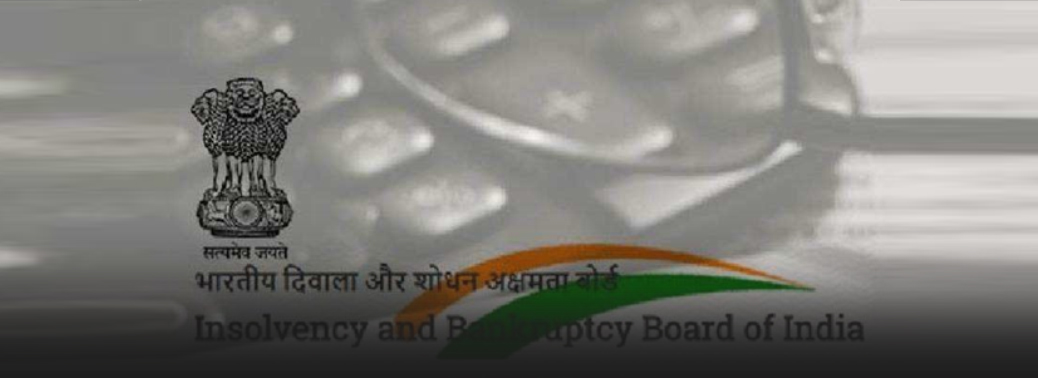
Why in news?
- The Insolvency and Bankruptcy Board of India (IBBI) notified the Insolvency and Bankruptcy Board of India (Insolvency Resolution Process for Corporate Persons) (Amendment) Regulations, 2019 and the Insolvency and Bankruptcy Board of India (Liquidation Process) (Amendment) Regulations, 2019.
Insolvency and Bankruptcy Board of India (Insolvency Resolution Process for Corporate Persons) (Amendment) Regulations, 2019:
- The amendments specify the process for withdrawal of applications before constitution of committee of creditors (CoC), after constitution of CoC but before issue of invitation for expression of interest, and after issue of invitation for expression of interest.
- While approving a resolution plan or deciding to liquidate the corporate debtor, the CoC may:
- approve a plan providing for contribution for meeting the liquidation costs
- recommend sale of the corporate debtor or sale of business of the corporate debtor as a going concern, and
- fix, in consultation with the RP, the fee payable to the liquidator, if an order for liquidation is passed by the Adjudicating Authority
Insolvency and Bankruptcy Board of India (Liquidation Process) (Amendment) Regulations, 2019:
- The amendments specify the process for (i) sale of corporate debtor as going concern, and (ii) sale of business of corporate debtor as going concern under liquidation. These also provide that where a corporate debtor is sold as a going concern, the liquidation process shall be closed without dissolution of the corporate debtor.
- The amendments require completion of liquidation process within one year of its commencement, notwithstanding pendency of applications for avoidance transactions.
- To ensure that the liquidation process completes at the earliest, it:
- provides a model timeline for each task in the liquidation process
- specifies a maximum time of 90 days from the order of liquidation for completion of compromise or arrangement, if any, proposed by the stakeholders under section 230 of the Companies Act, 2013.
- The amendments require the financial creditors, who are financial institutions, to contribute towards the liquidation cost, where the corporate debtor does not have adequate liquid resources to complete liquidation, in proportion to the financial debts owed to them by the corporate debtor, in case the CoC did not approve a plan for such contribution during corporate insolvency resolution process. However, such contribution along with interest at bank rate thereon shall form part of liquidation cost, which is paid in priority.
- The amendments provide for constitution of a Stakeholders’ Consultation Committee, whose advice is not binding on the liquidator.
- The amendments require that a stakeholder may submit its claim or update its claim submitted during the corporate insolvency resolution process, as on the liquidation commencement date.
- The amendments have introduced a comprehensive compliance certificate to be submitted along with the final report to the Adjudicating Authority
NORTH EASTERN REGION VISION 2020
26, Jul 2019

Why in News?
- North Eastern Region Vision 2020 document provides an overarching framework for the development of the North Eastern Region.
- The main objective is to bring the north eastern region at par with other developed regions under which different Ministries, including the Ministry of Development of North Eastern Region have undertaken various initiatives.
Reasons for resource flow:
- Mandatory earmarking of at least 10% of GBS of Central Ministries/Departments for North Eastern Region (NER).
- Creation of Non-Lapsable Central Pool of Resources (NLCPR).
- There has been a sharp rise in provisional expenditure (subject to final vetting by Ministry of Finance) by Central Ministries in NER by 83%.
Major initiatives:
- Strengthening infrastructure and connectivity is a major thrust area identified by the Vision document. Several connectivity initiatives have been undertaken in the recent past.
- In the last five years under the schemes of Ministry of DoNER funds were released for road projects, bridges, ISBT, airports, railway in North Eastern Region.
- Moreover, Regional Connectivity Scheme (RCS-UDAN) has been launched to provide connectivity to unserved and underserved Airports within the country.
- Also, to promote regional connectivity, airfare has been made affordable through Viability Gap Funding (VGF). The North East has been kept as a priority area under RCS-UDAN.
- In respect of Rail Connectivity, during the last four years the entire North East Region has been converted to the Broad Gauge (BG) network.
Other major initiatives taken:
- Promotion of MSMEs in North Eastern Region and Sikkim
- Comprehensive Telecom Development Project (CTDP) for the North-Eastern Region
- Comprehensive Scheme for strengthening of Transmission and Distribution Systems (CSST&DS).
- North Eastern Region Power System Improvement Project (NERPSIP)
- Mission Organic Value Chain Development for North Eastern Region scheme
- North East Region Textile Promotion Scheme (NERTPS).
- National Sports University at Imphal, Agartala-Akhaura Rail-Link to connect the existing Agartala station in Tripura to Akhaura Station of Bangladesh Railways
- Development of Brahmaputra and 19 new waterways including Barak.
FAIR AND REMUNERATIVE PRICE’ OF SUGARCANE
25, Jul 2019

Why in News?
- The Cabinet Committee on Economic Affairs (CCEA) has approved the proposal in respect of Determination of ‘Fair and Remunerative Price’ of sugarcane payable by sugar mills to the cane growers.
- Price of sugarcane is fixed by the centre/State, while the price of sugar is market determined.
FRP:
- Fair and remunerative price (FRP) is the minimum price at which rate sugarcane is to be purchased by sugar mills from farmers.
- The FRP is based on the recommendation of the Commission of Agricultural Costs & Prices (CACP).
- The approval will ensure a guaranteed price to cane growers. The ‘FRP’ of sugarcane is determined under Sugarcane (Control) Order.
- This will be uniformly applicable all over the country. Determination of FRP will be in the interest of sugarcane growers keeping in view their entitlement to a fair and remunerative price for their produce.
- Fair and remunerative price (FRP) is the minimum price at which rate sugarcane is to be purchased by sugar mills from farmers.
Sugar buffer stock:
- The Cabinet has also approved the creation of buffer stock of 40 lakh Metric Tonnes of sugar for one year from the 1st of next month.
- The decision will lead to an improvement in the liquidity in sugar inventories and stabilization in sugar prices.
INDIA’S R&D EXPENDITURE ECO-SYSTEM REPORT
25, Jul 2019

Why in News?
- A special session was held to discuss India’s Research and Development (R&D) expenditure eco-system report during the Global launch of Global Innovation Index (GII) – 2019 in New Delhi. The report has been compiled by Economic Advisory Council to the Prime Minister (PMEAC).
Highlights:
- Investments in R&D are key inputs in economic growth. The impact of this is proven on productivity, exports, employment and capital formation.
- India’s investment in R&D is a fraction of India’s GDP. It has remained constant at around 0.6% to 0.7% of India’s GDP.
- This is below the expenditure of countries like the US (2.8), China (2.1), Israel (4.3) and Korea (4.2). Government expenditure, almost entirely the Central Government, is the driving force of R&D in India which is in contrast to the advanced countries where private sector is the dominant and driving force of R&D spend.
- The report is to address the data gaps in compiling R&D data so that up to date data on R&D is available in order to reflect India’s true rank globally.
- To examine expenditure trends in various sector and their short coming.
- To lay down the road map for achieving the desire target of R&D spend by the year 2022.
Recommendations:
- There is a need for greater participation of State Governments and private sector in overall R&D spending in India especially in application-oriented research and technology development.
- The growth in R&D expenditure should be commensurate with the growth of GDP and should reach at least two percent of GDP by 2022.
BENGALURU GOES LIVE WITH FACIAL BIOMETRICS-BASED AIR TRAVEL
25, Jul 2019
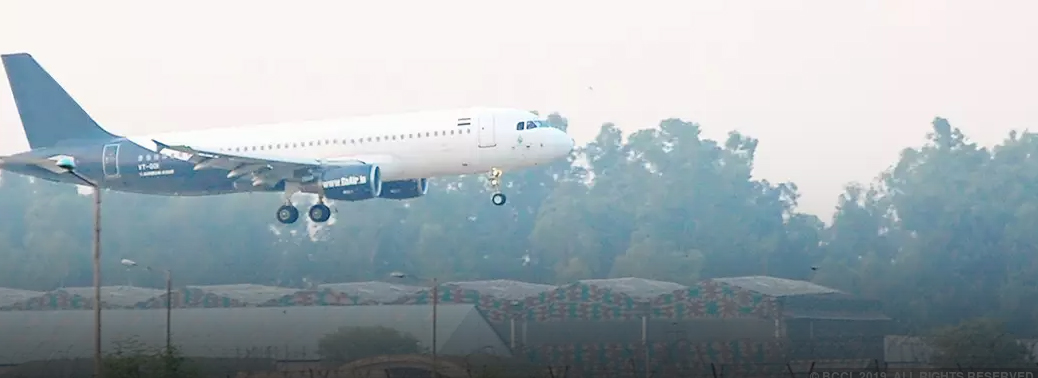
Why in News?
- The Kempegowda International Airport (KIA) rolled out a biometric-based self-boarding facility.
Highlights:
- The passengers had the option of boarding a flight without producing travel documents at each touch point.
- To avail this facility, a passenger has to enrol their ID, biometric data and flight details before entering the terminal.
- The passenger will be authenticated and verified at every touch point by biometric technology.
Paperless Biometric System:
- The Bangalore International Airport Limited (BIAL), the operator of the KIA, is expected to deploy the paperless biometric system at over 350 passenger touch points in Terminal 1 with the final phase of the project.
- In the final stage, this technology will be integrated with the Digi Yatra Central Platform that is currently being architecture by the central government’s Digi Yatra Foundation.
User Data Privacy:
- The BIAL maintains that biometric data is used only for authentication and verification of passengers to assist the boarding process, and not for recognition.
- The process offers the highest degree of safety and security while ensuring stringent standards of safety.
- Passenger data will be deleted within a few hours of completion of air travel.
- Vision Box, the company that developed and installed One – ID biometric platform technology, is compliant with the European Union’s General Data Protection Regulation (GDPR), which adopts privacy by design principles.
GLOBAL INNOVATION INDEX (GII)
24, Jul 2019
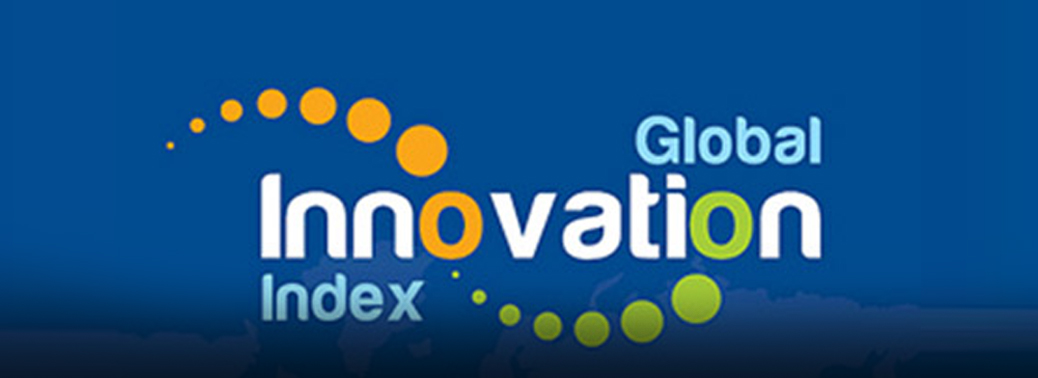
- Context: India climbs five ranks in global innovation index to the 52nd position
- Union Minister of Commerce & Industry and Railways launched the Global Innovation Index (GII) 2019 in New Delhi
- GII theme of this year: Creating Healthy Lives – The Future of Medical Innovation
- It is focusing on not just curative but preventive healthcare where wellness becomes a part of society.
About Global Innovation Index:
- The GII has been jointly developed by Cornell University, Paris-based business school Insead and WIPO.
- It includes more than 80 indicators exploring a broad vision of innovation, including political environment, education, infrastructure and business sophistication.
- Aim: It is aimed at helping policy makers better understand how to stimulate and measure innovative activity.
- Highlights: This is the first time that the GII has been launched in Asia or in an emerging economy.
- Ranking: Switzerland continued to top the index in 2019 while Israel made its way into the top 10. China, too, improved its ranking to 14th from 17th last year.
India’s Scenario:
- India maintains its top place in the Central and Southern Asia region as the 52nd ranked economy this year.
- India jumped five places to improve its position from 57th last year to 52nd in 2019.
- From 81 in 2015, India’s 29-place move up the GII represents the biggest jump by any major economy.
- Thanks to its high-quality scientific publications and universities, India remains 2nd among middle-income economies in the quality of innovation.
- This year India reaches the 15th spot in global companies’ R&D expenditures.
- It also features in the GII ranking on the world’s top science and technology clusters, with Bengaluru, Mumbai and New Delhi included in the global top 100 clusters.
- India exhibited strengths in indicators such as graduates in science and engineering, global R&D companies expenditure, quality of universities and market sophistication,
- It lagged behind in education, ecological sustainability, females employed with advanced degrees, ICT access and use and environmental performance.
WILLFUL DEFAULTER
24, Jul 2019
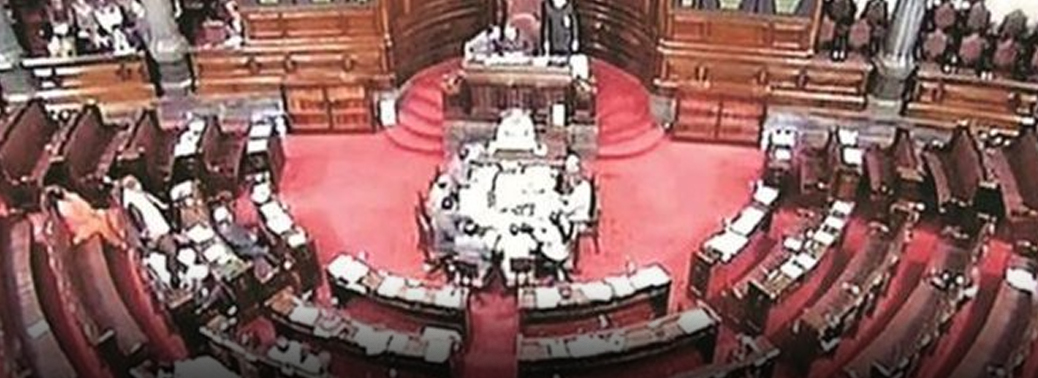
- Context: Rajya Sabha was informed by the Minister of Finance informed about the mechanisms in place to deter wilful defaulters, curb incidence of wilful defaults, and effect recovery from wilful defaulters.
What is wilful defaulter?
- Under Indian law, wilful defaulters are classified as firms or individuals who own large businesses and deliberately avoid repayments.
Stats:
- India’s state-owned banks had classified ₹1.50 trillion worth of loans as “wilful defaults” in 2018-19, with the biggest lender State Bank of India accounting for nearly a one third.
- The State Bank of India saw the highest number of wilful defaults at ₹46,158 crore, while Punjab National Bank stood second at ₹25,090 crore, with Bank of India at ₹9,890 crore,
Government Action on Wilful Defaulter:
- Wilful defaulters are not sanctioned any additional facilities by banks or financial institutions, and they are debarred from launching ventures for five years.
- The government has debarred wilful defaulters and companies with wayward borrowers from accessing capital markets to raise funds or participate in insolvency resolution process.
- Bank chiefs can also authorise look-out notices for defaulters to prevent them from leaving the country.
Mechanisms in Place to Deter Wilful Defaulters:
- PSBs have been asked to examine all accounts exceeding Rs. 50 crores, if classified as Non-Performing Asset (NPA), from the angle of possible fraud and to immediately initiate examination of the issue of wilful default once a fraud is reported.
- For effective action against wilful defaulters fleeing Indian jurisdiction, the Fugitive Economic Offenders Act, 2018 has been enacted to provide for attachment and confiscation of property of fugitive offenders and has disentitled them from defending any civil claim.
- Government has advised PSBs to decide on publishing photographs of wilful defaulters, in terms of RBI’s instructions and as per their Board-approved policy.
TERROR FINANCING
24, Jul 2019

- Context: Minister of Home Affairs informed Lok Sabha today about the steps being taken to combat Terror Financing and circulation of Fake Indian Currency Notes (FICN) in the country.
What Is Terror Financing:
- Terrorist financing provides funds for terrorist activity. It may involve funds raised from legitimate sources, such as personal donations and profits from businesses and charitable organizations, as well as from criminal sources, such as the drug trade, the smuggling of weapons and other goods, fraud, kidnapping and extortion.
- Terrorists use techniques like those of money launderers to evade authorities’ attention and to protect the identity of their sponsors and of the ultimate beneficiaries of the funds.
The Government has taken various steps to combat terror financing in the country, which inter alia, include: –
- Strengthening the provisions in the Unlawful Activities (Prevention) Act, 1967 to combat terror financing by criminalizing the production or smuggling or circulation of high-quality counterfeit Indian currency as a terrorist act and enlarge the scope of proceeds of terrorism to include any property intended to be used for terrorism.
- A Terror Funding and Fake Currency (TFFC) Cell has been constituted in National Investigation Agency (NIA) to conduct focused investigation of terror funding and fake currency cases.
- Fake Indian Currency Notes (FICN) network is one of the channels of terror financing in India. FICN Coordination Group (FCORD) has been formed by the Ministry of Home Affairs to share intelligence/information among the security agencies of the states/centre to counter the problem of circulation of fake currency notes.
Government has also taken some other measures to check the smuggling and circulation of Fake Indian Currency Notes (FICN) in the country, which inter alia, include:
- Security at the international borders has been strengthened by using new surveillance technology, deploying additional manpower for round the clock surveillance, establishing observation posts along the international border, erection of border fencing and intensive patrolling.
- A Memorandum of Understanding (MoU) has been signed between India and Bangladesh to prevent and counter smuggling and circulation of fake currency notes.
- Training programmes are conducted for the Police officials of Nepal and Bangladesh to sensitize them about smuggling/ counterfeiting of Indian currency.
NO COMPROMISE ON AIR SAFETY: MINISTRY OF CIVIL AVIATION
23, Jul 2019
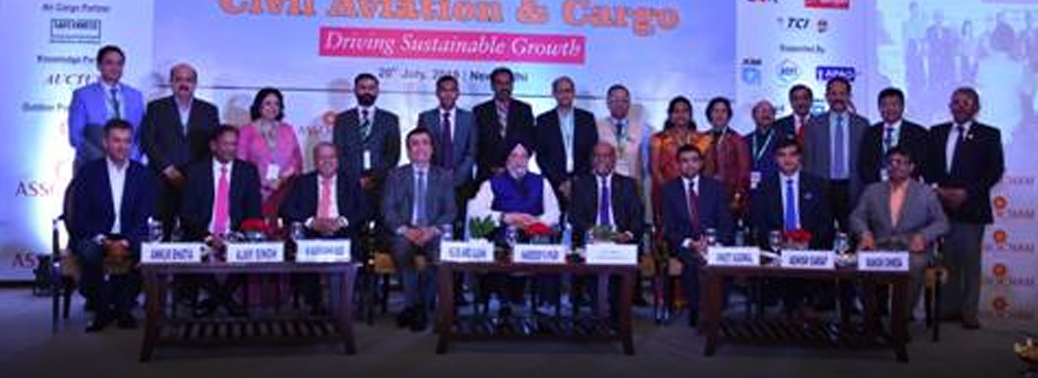
Why in News?
- Speaking at the International conference cum awards on civil aviation and cargo, the Minister of State(I/c) for Civil Aviation, Housing & Urban Development said that the Ministry would not tolerate any compromise on Air Safety and standards.
- The event organised by ASSOCHAM.
Highlights:
- The first National Air Cargo Policy’s (NACP) outline was released at the Global Aviation Summit in January 2019.
- It aims to achieve fundamental re-engineering of the whole-of-the-value-chains for domestic and export-import air freight for reaching the target of handling 10 million tonnes by 2026-27.
National Civil Aviation Policy:
- A comprehensive National Civil Aviation Policy (NCAP) was announced in 2016, covering 22 areas of the Civil Aviation sector.
- It was framed to boost regional air connectivity, establish an integrated ecosystem to promote tourism and generate employment.
National Air Cargo Policy’s (NACP):
- The National Air Cargo Policy unveiled at the Global Aviation Summit 2019, seeks to make India among the top five air freight markets by 2025, besides creating air transport shipment hubs at all major airports over the next six years.
The policy aims at encouraging code sharing/inter-line agreements between foreign and Indian carriers. - The policy seeks to establish agreements between national carriers/ freighters and integrators to improve domestic connectivity as well as encourage the establishment of agreements between national and international carriers/freighters and other airline operators to provide access to key global cargo hubs.
- It also aims to promote the development of a last mile/first mile connectivity program at international/regional gateways. As part of the security strategy under the policy, the strategy will address security related to the physical cargo, people handling the cargo, data and information related to shipments within and across all chains of custody transfers.
- To increase process transparency while decreasing shipment delays, costs and dwell time, a fully automated paperless trade environment with minimum face-to-face interactions will be implemented
- The policy assured that The GST and other economic legislation would be reviewed by the appropriate government agencies to ensure effective measures are in place to support the national air cargo development strategies.
PRIVATE SECTOR INVESTMENT IN DEFENCE PRODUCTION
23, Jul 2019
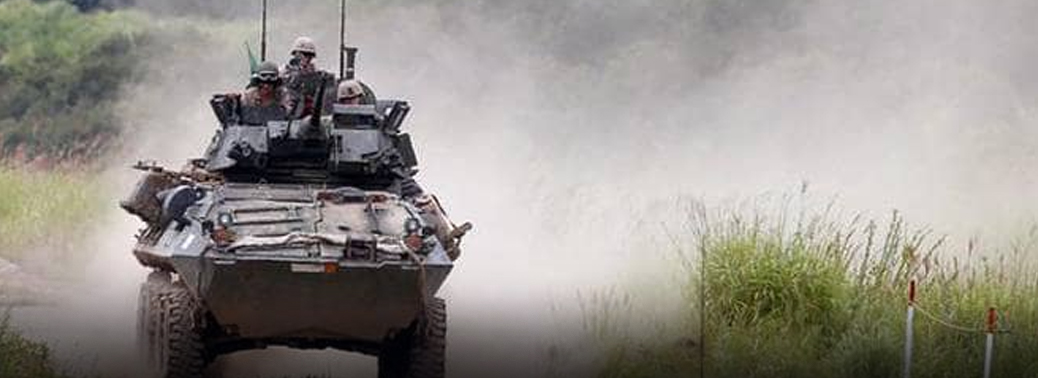
Why in News?
- The defence industry sector was opened up to 100% for private sector participation in May 2001 through licensing.
Highlights:
- Defence Procurement Procedure (DPP) had been revised in 2016 wherein specific provisions have been introduced for stimulating growth of the domestic defence industry.
- A new category of procurement ‘Buy {Indian-IDDM (Indigenously Designed, Developed and Manufactured)}’ has been introduced in DPP-2016 to promote indigenous design and development of defence equipment.
- ‘Buy (Indian)’, ‘Buy and Make (Indian)’ & ‘Make’ categories of capital acquisition have been given preference over ‘Buy (Global)’& ‘Buy & Make (Global)’categories.
- The ‘Strategic Partnership (SP)’ model has been notified by the government to establish longstanding strategic partnerships with Indian entities through a transparent and competitive process, in order to tie up with Original Equipment Manufacturers (OEMs) to seek technology transfers to set up domestic manufacturing infrastructure and supply chains.
- The ‘Make’ Procedure has been simplified with provisions for funding of 90% of development cost by the Government to Indian industry and reserving projects not exceeding development cost of Rs.10 crore (Government funded) and Rs.3 crore (Industry funded) for MSMEs.
- Separate procedure for ‘Make-II’ subcategory has been notified wherein a number of industry friendly provisions such as relaxation of eligibility criterion, minimal documentation, provision for considering proposals suggested by industry/individual, etc. have been introduced.
- The Government will establish two defence industrial corridors to serve as an engine of economic development and growth of defence industrial base in India.
- An innovation ecosystem for Defence titled Innovations for Defence Excellence (iDEX) has been launched in April, 2018. iDEX is aimed at creation of an ecosystem to foster innovation and technology development in Defence and Aerospace by engaging Industries including MSMEs, Start-ups, Individual Innovators, R&D institutes and Academia and provide them grants/funding and other support to carry out R&D.
- The Mission Raksha Gyan Shakti has been introduced to encourage IPR culture in indigenous defence industry.
- A Policy for indigenisation of components and spares used in Defence Platforms has been notified in April 2019.
- A Defence Investor Cell has been created in the Defence Ministry to provide all necessary information including addressing queries related to investment opportunities, procedures and regulatory requirements for investment in the sector.
- FDI is now allowed under automatic route up to 49% and beyond 49% through Government route.
- Export clearance process has been streamlined and a scheme for the promotion of defence exports has been notified.
- Technology Development Fund (TDF) has been set up by the GOI to encourage participation of public/private industries especially MSMEs, through provision of grants.
- Offset guidelines have been made flexible by allowing change of Indian Offset Partners (IOPs) and offset components, even in signed contracts. Foreign Original Equipment Manufacturers (OEMs) are now not required to indicate the details of IOPs and products at the time of signing of contracts. ‘Services’ as an avenue of offset have been reinstated.
UJH AND BASANTAR BRIDGES IN J&K
23, Jul 2019
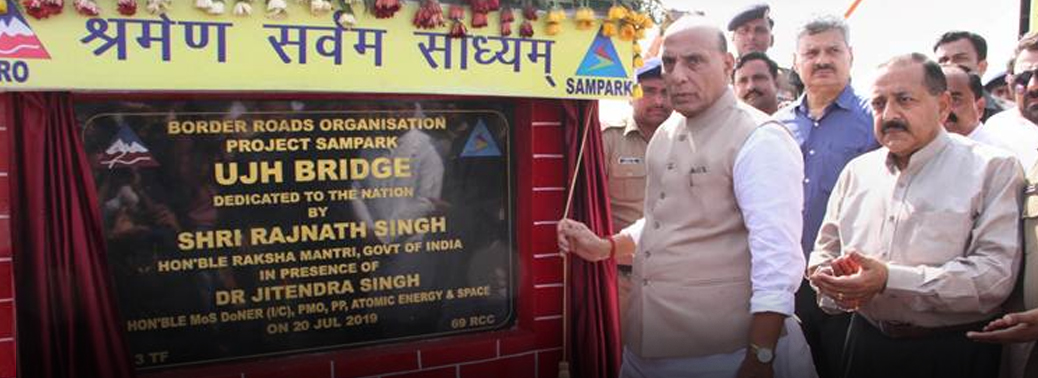
Why in News?
- Raksha Mantri inaugurated the One-kilometre long Ujh bridge in Kathua district, 617.40-Metre-long Basantar bridge in Samba district of Jammu & Kashmir today and dedicated these to the Nation.
Highlights:
- One Km long Ujh bridge is the longest bridge constructed by BRO.
- These bridges will provide smooth connectivity and are vital for the Army for deployment on border areas.
- These bridges will be a big relief for the local people of border villages of Kathua and Samba sector as road connectivity used to get disrupted during Monsoon.
Border Roads Organisation:
- The Border Roads Organisation develops and maintains road networks in India’s border areas and friendly neighboring countries.
- Currently, the organisation maintains operations in twenty-one states, one UT (Andaman and Nicobar Islands), and neighboring countries such as Afghanistan, Bhutan, Myanmar, and Sri Lanka.
- The Border Roads Organisation works under the Ministry of Defence.
PANEL FAVOURS CRYPTOCURRENCY BAN IN INDIA
23, Jul 2019
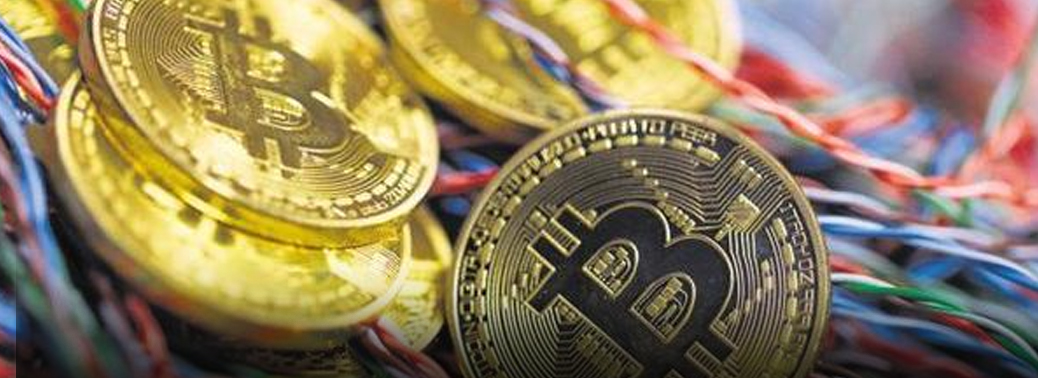
- Context: The committee headed by finance secretary Subhash Chandra Garg has proposed a draft bill “Banning of Cryptocurrency & Regulation of Official Digital Currency Bill, 2019″
Highlights of The Committee Recommendations:
- Proposed banning of private cryptocurrencies in India by enacting a law and imposing fines and penalties for carrying on activities related to cryptocurrencies.
- Proposed a draft bill “Banning of Cryptocurrency & Regulation of Official Digital Currency Bill, 2019″, which has been placed in the public domain.
- The committee has, taken a lenient view on the government launching an official digital currency, asking it to keep an open mind on the matter
It suggested the use of distributed-ledger technology (DLT) or blockchain in India, by banks and other financial firms for processes such as loan-issuance tracking, collateral management, fraud detection and claims management in insurance and reconciliation systems in the securities market.
The committee identifies the potential use cases for blockchain technology in areas such as:
- Payments systems including cross-border and small value payments;
Data identity management or know-your-customer requirements by various financial entities. - Insurance
- Collateral and ownership (including land) registries
- Loan issuance and tracking
- e-stamping
- Trade financing
- Post-trade reporting
- Securities and commodities and
- Internal systems of financial service providers.
- The advantages of using DLT are mainly seen in terms of reducing administration and transaction costs, obviating duplication and improving accuracy of data, improving the speed and efficiency of transactions and detecting fraud.
DIBANG MULTIPURPOSE PROJECT
19, Jul 2019
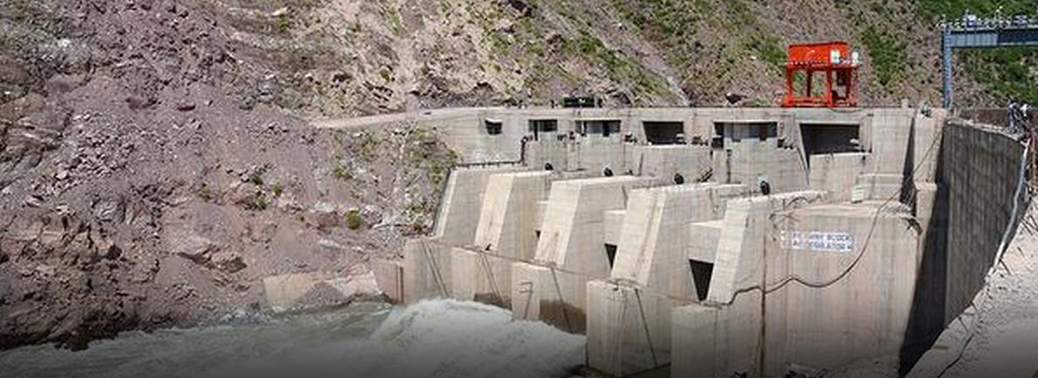
Why in News?
- The Cabinet Committee on Economic Affairs has approved the expenditure on pre-investment activities and various clearances for Dibang Multipurpose Project (MPP) in Arunachal Pradesh for an amount of Rs. 1600 crore.
- Dibang Multipurpose Project:
- Dibang Multipurpose Project (Dibang MPP) is envisaged as a storage-based hydro-electric project with flood moderation as the key objective.
- The construction of Dibang MPP shall prevent the sizeable downstream area from floods. After implementation of master plan of Brahmaputra Board for flood moderation of all rivers contributing to river Brahmaputra, of which Dibang MPP is one of the components, sizable area will be protected from flooding and help in mitigating the perennial damage due to floods in Assam.
- The project shall generate 2880MW (12x240MW) power to produce 11223MU of energy in a 90% dependable year.
- This is the largest ever Hydro Electric Projects to be constructed in India.
- The dam is 278 metres high and will be the highest dam in India once completed.
SEVA BHOJ YOJANA
17, Jul 2019
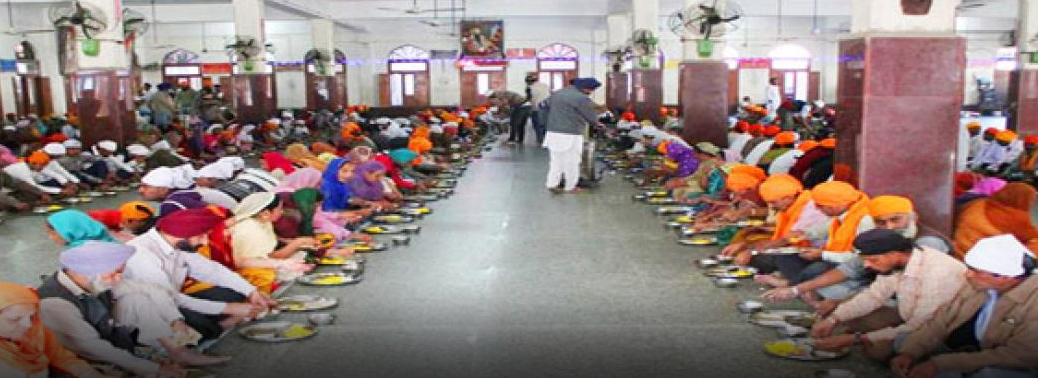
Why in News?
- Seva Bhoj Yojna’ is a Central Sector Scheme of the Ministry of Culture, Government of India.
- It envisages to reimburse the Central Government share of Central Goods and Services Tax (CGST) and Integrated Goods and Service Tax (IGST) so as to lessen the financial burden of such Charitable Religious Institutions who provide Food/Prasad/Langar (Community Kitchen)/Bhandara free of cost without any discrimination to Public/Devotees.
- The scheme is being implemented from 01.08.2018 with a total outlay of Rs. 325.00 Crores for Financial Years 2018-19 and 2019-20.
Objective:
- Under the Scheme of ‘Seva Bhoj Yojna’ Central Goods and Services Tax (CGST) and Central Government’s share of Integrated Goods and Services Tax (IGST) paid on purchase of specific raw food items by Charitable Religious Institutions for distributing free food to public shall be reimbursed as Financial Assistance by the Government of India.
Type of activities supported under the scheme:
- Free ‘prasad’ or free food or free ‘langar’ / ‘bhandara’ (community kitchen) offered by charitable religious institutions like Gurudwara, Temples, Dharmik Ashram, Mosques, Dargah, Church, Mutt, Monasteries etc. Financial Assistance will be provided on First- cum-First Serve basis of registration linked to fund available for the purpose in a Financial Year.
Criteria for Financial Assistance:
- A Public Trust or society or body corporate, or organisation or institution covered under the provisions of section 10 (23BBA) of the Income Tax Act, 1961 (as amended from time to time) or registered under the provisions of section 12AA of the Income Tax Act, 1961, for charitable/religious purposes, or a company formed and registered under the provisions of section 8 of the Companies Act, 2013 or section 25 of the Companies Act, 1956, as the case may be, for charitable/ religious purposes, or a Public Trust registered as such for charitable/religious purposes under any Law for the time being in force, or a society registered under the Societies Registration Act, 1860, for charitable/religious purposes can apply under Seva Bhoj Yojna.
- The applicant Public Trust or society or body corporate, or organisation or institution, as the case may be, must be involved in charitable/religious activities by way of free and philanthropic distribution of food/prasad/langar(Community Kitchen)/ bhandara free of cost and without discrimination through the modus of public, charitable/religious trusts or endowments including maths, temples, gurdwaras, wakfs, churches, synagogues, agiaries or other places of public religious worship.
- The institutions/organizations should have been distributing free food, langar and prasad to atleast 5000 persons in a calendar month can apply under the scheme.
- Financial Assistance under the scheme shall be given only to those institutions which are not in receipt of any Financial Assistance from the Central/State Government for the purpose of distributing free food.
- The Institution/Organization blacklisted under the provisions of Foreign Contribution Regulation Act (FCRA) or under the provisions of any Act/Rules of the Central/State shall not be eligible for financial assistance under the scheme.
NATIONAL RURAL BANK OF INDIA.
17, Jul 2019
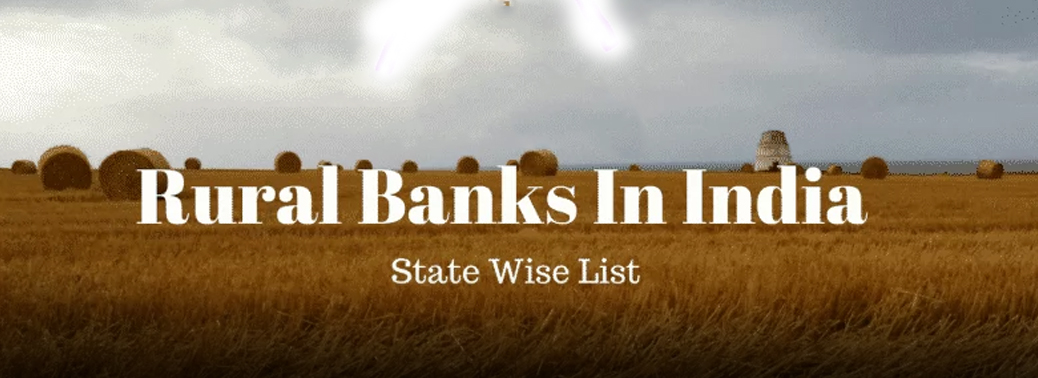
- Context- Govt is thinking of formation of National Rural Bank of India in order to consolidate in Regional rural Banks (RRB).
Parliamentary Standing Committee on Finance (2003)
- The Parliamentary Standing Committee on Finance (2003) in its 55th Report recommended that Government may consider the setting up of an apex body viz. National Rural Bank of India.
Why there is need of formation of National Rural Bank of India.
- National Rural Bank of India can act as apex body to monitor the Regional Rural Banks (RRBs)
Steps taken by the Government to strengthen the RRBs:
- Government had initiated the process of structural consolidation of RRBs in 2004-05 by amalgamating RRBs of the same Sponsor Bank within a State.
- Recapitalization support is provided to RRBs to augment their capital so as to comply with regulatory capital requirements.
- Periodic review of financial performance of RRBs,
- Regular Capacity building efforts are undertaken by NABARD like training at Bankers Institute of Rural Development (BIRD), conduct of Organizational Development Initiative (ODI), exposure visits, etc.
- NABARD provides regular policy support to RRBs in matters relating to human resources and an arrangement has been made for redressal of grievances through Joint Consultative Committee (JCC).
What is Regional Rural Banks (RRBs)
- Regional Rural Banks (RRBs) are financial institutions which ensure adequate credit for agriculture and other rural sectors .
- Regional Rural Banks were set up on the basis of the recommendations of the Narasimham Working Group (1975), and after the legislations of the Regional Rural Banks Act, 1976.
- The first Regional Rural Bank “Prathama Grameen Bank” was set up on October 2, 1975.At present there are 82 RRBs in India.
Equity in RRBs
- The equity of a regional rural bank is held by the Central Government, concerned State Government and the Sponsor Bank in the proportion of 50:15:35.
Significance:
- The RRBs combine the characteristics of a cooperative in terms of the familiarity of the rural problems and a commercial bank in terms of its professionalism and ability to mobilise financial resources.
- The main objectives of RRB’s are to provide credit and other facilities‚ especially to the small and marginal farmers‚ agricultural labourers artisans and small entrepreneurs in rural areas with the objective of bridging the credit gap in rural areas, checking the outflow of rural deposits to urban areas and reduce regional imbalances and increase rural employment generation.
SAGARMALA PROJECT
15, Jul 2019

- The Sagarmala is a series of projects to leverage the country’s coastline and inland waterways to drive industrial development.
- It was originally mooted by the Vajpayee government in 2003 as the waterways equivalent of the Golden Quadrilateral.
- Sagarmala, integrated with the development of inland waterways, is expected to reduce cost and time for transporting goods, benefiting industries and export/import trade.
Four Broad Areas:
- 1. Modernise port infrastructure, add up to six new ports and enhance capacity.
- 2. Improve port connectivity through rail corridors, freight-friendly expressways and inland waterways.
- 3. Create 14 coastal economic zones or CEZs and a special economic zone at Jawaharlal Nehru Port Trust in Mumbai with manufacturing clusters to enable port-led industrialisation.
- 4. Develop skills of fishermen and other coastal and island communities.
Features:
- Supporting and enabling Port-led Development
- Port Infrastructure Enhancement, including modernization and setting up of new ports
- Efficient Evacuation to and from hinterland.
Why is it important?
- India is located along key international trade routes in the Indian Ocean and has a long coastline of over 7,000 km. Yet, capacity constraints and lack of modern facilities at Indian ports tremendously elongates the time taken to ship goods in and out of the country and has held back India’s share in world trade.
- Developing rivers as inland waterways can also help save domestic logistics costs too. Transport costs are high in India – 18 per cent of GDP, compared to less than 10 per cent in China.
- Port infrastructure and linkages have been frankly a sinking ship and initiatives such as Make in India cannot take off without better port infrastructure. This has led to expectations that Sagarmala could boost India’s merchandise exports to $110 billion by 2025 and create an estimated 10 million new jobs (four million in direct employment).
The Administrative Framework:
- National Sagarmala Apex Committee
- At apex level, a National Sagarmala Apex Committee (NSAC) will be created to provide overall policy guidance. It will be headed by shipping minister
- Sagarmala Development Company (SDC)
- Under Companies Act, 2013.
- This company will serve as a special purpose vehicle {SPV)
- Sagarmala Coordination and Steering Committee
- At national level, the government will constitute a Sagarmala Coordination and Steering Committee (SCSC) under Cabinet Secretary with Secretaries other ministeries
National Perspective Plan
- National Perspective Plan (NPP) for the entire coast of India integrating the Industrial Corridors, Dedicated Freight Corridors, National Highway Development Programme, Industrial Clusters and so on
- The coastal states have been suggested to set up State Sagarmala Committee to be headed by Chief Minister/Minister in Charge of Ports with members from relevant Departments and agencies.
BANNING OF UNREGULATED DEPOSIT SCHEMES BILL, 2019
12, Jul 2019

Why in News?
- The Union Cabinet has approved the banning of Unregulated Deposit Schemes Bill, 2019. It will replace the banning of Unregulated Deposit Schemes Ordinance, 2019.
Impact:
- The Bill will help tackle the menace of illicit deposit taking activities in the country, which at present are exploiting regulatory gaps and lack of strict administrative measures to dupe poor and gullible people of their hard-earned savings.
Salient Features of the Bill:
- The Bill contains a substantive banning clause which bans Deposit Takers from promoting, operating, issuing advertisements or accepting deposits in any Unregulated Deposit Scheme. The principle is that the Bill would ban unregulated deposit taking activities altogether, by making them an offence ex-ante rather than the existing legislative-cum-regulatory framework which only comes into effect ex-post with considerable time lags;
- The Bill creates three different types of offences, namely, running of Unregulated Deposit Schemes, fraudulent default in Regulated Deposit Schemes, and wrongful inducement in relation to Unregulated Deposit Schemes.
- The Bill provides for severe punishment and heavy pecuniary fines to act as deterrent.
- The Bill has adequate provisions for disgorgement or repayment of deposits in cases where such schemes nonetheless manage to raise deposits illegally.
- The Bill provides for attachment of properties / assets by the Competent Authority, and subsequent realization of assets for repayment to depositors;
- Clear-cut time lines have been provided for attachment of property and restitution to depositors;
- The Bill enables creation of an online central database, for collection and sharing of information on deposit-taking activities in the country;
- The Bill defines “Deposit Taker” and “Deposit” comprehensively;
- “Deposit Takers” include all possible entities (including individuals) receiving or soliciting deposits, except specific entities such as those incorporated by legislation;
- “Deposit” is defined in such a manner that deposit-takers are restricted from camouflaging public deposits as receipts, and at the same time, not to curb or hinder acceptance of money by an establishment in the ordinary course of its business; and
- Being a comprehensive Union Law, the Bill adopts best practices from State laws, while entrusting the primary responsibility of implementing the provisions of the legislation to the State Governments.
INDIAN NUCLEAR INSURANCE POOL
12, Jul 2019
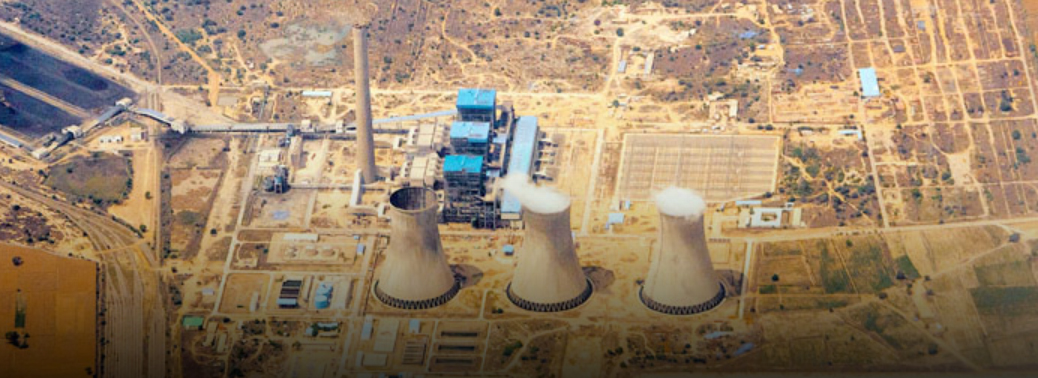
Why in News?
- The Government has created an Indian Nuclear Insurance Pool (INIP) in June 2015, a union minister informed in Lok Sabha.
Indian Nuclear Insurance Pool:
- M/s. General Insurance Corporation of India (GIC-Re), along with several other Indian Insurance Companies, have launched the Indian Nuclear Insurance Pool (INIP) with a capacity of ₹1500 crore. This aims to provide insurance to cover the liability against accidents as prescribed under Civil Liability for Nuclear Damage (CLND) Act, 2010.
- This has addressed issues related to Civil Liability for Nuclear Damage (CLND) Act and had facilitated commencement of work in setting up new nuclear power projects.
Nuclear Power in India:
- The present nuclear power capacity is 6780 MW comprising of 22 reactors.
- There are 9 reactors with a capacity of 6700 MW (including 500 MW PFBR being implemented by BHAVINI) under construction.
- The Government in 2017 has also accorded administrative approval and financial sanction of 12 nuclear power plants totalling to a capacity of 9000 MW.
- On their progressive completion, the installed nuclear capacity is expected to reach 8180 MW by 2020 and 22480 MW by 2031.
PONZI SCAMS
11, Jul 2019

Background
- The Union Cabinet Wednesday approved Banning of Unregulated Deposit Schemes Bill with an aim to tackle the menace of illicit deposit- taking activities in the country.
What is Ponzi scams?
- is a form of fraud that lures investors and pays profits to earlier investors with funds from more recent investors.
- The scheme leads victims to believe that profits are coming from product sales or other means, and they remain unaware that other investors are the source of funds.
Banning of Unregulated Deposit Schemes Bill:
- The bill will help tackle the menace of illicit deposit taking activities in the country, which at present are exploiting regulatory gaps and lack of strict administrative measures to dupe poor and gullible people of their hard earned money.
- The proposed legislation will have adequate provisions for punishment and disgorgement/repayment of deposits in cases where such schemes nonetheless manage to raise deposits illegally
- SEBI and RBI approved deposits will be allowed.
KISAN SUVIDHA MOBILE APP
11, Jul 2019
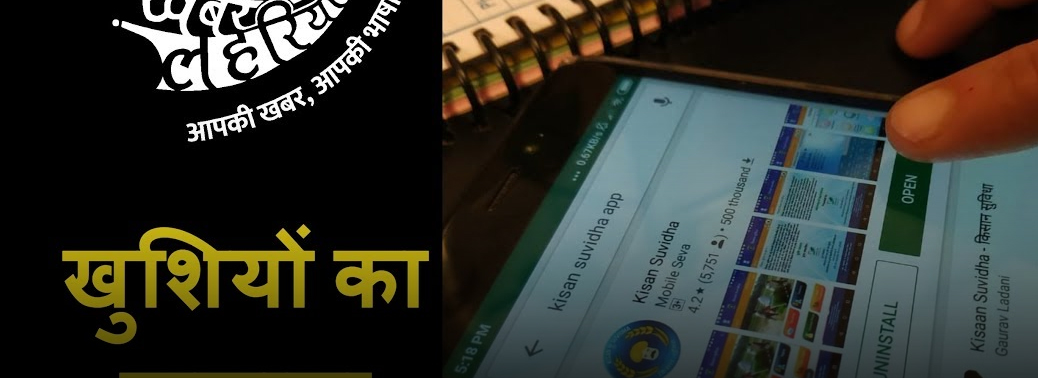
Why in News?
- Kisan Suvidha is an omnibus mobile app developed by Department of Agriculture & Cooperation, Ministry of Agriculture and Farmers Welfare to help farmers by providing relevant information to them quickly.
- The app is available in multiple Indian languages.
Facilities available on Kisan Suvida App:
- Weather – provides weather report for that day and weather forecast for next five days of a selected district. Extreme weather alerts are also provided.
- Dealers – Name, Mobile number and Address of the dealers of Seeds, Pesticides, Fertilizer and Farm Machinery are provided.
- Market Prices – information about rates of various crops in different mandies are provided.
- Plant Protection – Crop specific information related to pest management are provided. If the condition of crop is not normal, farmers can upload a picture/photo of the crop and send it through kisan suvidha app to agriculture experts for advice.
- Agro Advisories – Information from agriculture experts of districts regarding the advisories about activities to be undertaken and precaution to be taken staring from sowing to harvesting.
- Contact KCC – This option provides facility to speak to Kisan Call Centre (KCC).
- Soil Heath Card – option gives information about Soil Health Card, so that farmers can use fertilizer and pesticides judiciously having regard to minerals available in a particular land/farm.
- Cold Storage and gowdowns – information about warehouse and cold storage available in the district like warehouse / cold storage, name of manager, address, storage capacity and phone number etc are provided.
CAPITAL TO RISK-WEIGHTED ASSETS (CRAR)
10, Jul 2019

CRAR:
- Capital to Risk (Weighted) Assets Ratio (CRAR) is also known as Capital adequacy Ratio, the ratio of a bank’s capital to its risk.
- The banking regulator tracks a bank’s CAR to ensure that the bank can absorb a reasonable amount of loss and complies with statutory Capital requirements. Higher CRAR indicates a bank is better capitalized.
- The Capital to risk weighted assets ratio is arrived at by dividing the capital of the bank with aggregated risk weighted assets for credit risk, market risk and operational risk.
- The capital to risk-weighted assets ratio is calculated by adding a bank’s tier 1 capital and tier 2 capitals and dividing the total by its total risk-weighted assets.
- As per RBI guidelines, banks are required to maintain a minimum Capital to Risk-weighted Assets (CRAR) of 9% on an ongoing basis.
- Out of the 9 per cent of CAR, 7 per cent has to be met by Tier 1 capital while the remaining 2 per cent by Tier 2 capital.
ETHANOL AND SUGAR MILLS
08, Jul 2019
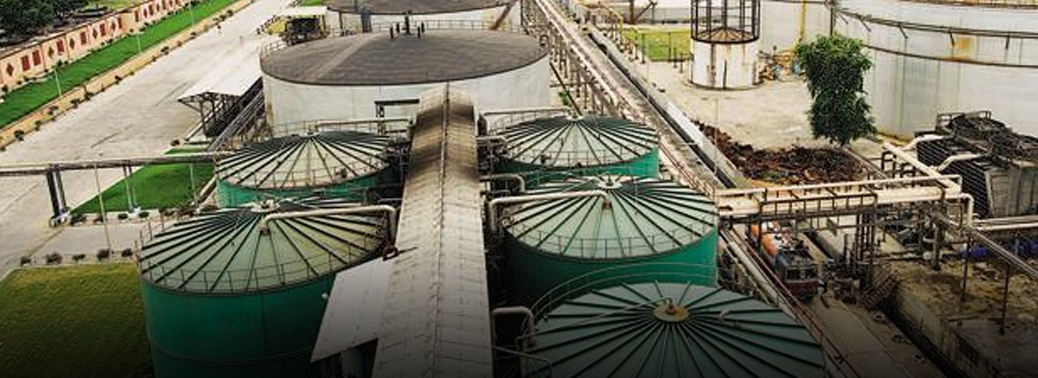
Context- Recently Union Minister for Road Transport & Highways exhorted sugar mills to switch to producing ethanol.
Issues:
- The surplus production of sugar is a major problem.
- It is not possible to reduce it, and it is also hard to change crop patterns.
- Sugar mills must decide whether they want to make sugar or ethanol from sugar cane juice. In Brazil, the price of sugar is ₹22 per kg while in India; we have fixed Rs 32-34 per Kg. Hence in the world market, nobody is willing to buy our sugar and as a result, we are making losses.”
Benefits:
- Would prove beneficial for tackling the problems stemming from surplus production and falling prices.
- Steady rise in ethanol blending is set not only to save import of crude oil thus saving of precious foreign currency reserves, but also encourage use of additional cane juice and other raw materials efficiently in addition to protect environment from release of motor vehicle obnoxious gas.
Maharashtra Sugar Mills:
- Maharashtra is slow in giving permission to sugar factories for converting sugar cane juice to ethanol and B class molasses to ethanol.
- As a result, a number of sugar factories could not start adopting this policy.
Ethanol Blended Petrol (EBP) Programme:
- The 5% mandatory ethanol blending with petrol
- The EBP Programme is presently being implemented in a total of 13 States with blending level of about 2% against a mandatory target of 5%.
- A stable EBP programme would ensure sustainable benefits for the sugarcane farmers across the nation. It will ensure an alternative market for the farmers who frequently get adversely affected in case of bumper crop of sugarcane and lack of its demand in the market. It will also provide an incentive to small and medium farmers to increase efforts towards sugarcane crop as better returns would be ensured.
COTTON CROP
08, Jul 2019

About
- It is Kharif Crop.
- The research system of India has also developed some varieties having three basic colours in naturally coloured cotton -brown, grey and green belong to Gossypium hirsutum and Gossypium arboreum species.
Condition for Growing Cotton:
- Long vegetation periods (175 to 225 days) without frost.
- Constant temperatures between 18 and 30°.
- Ample sunshine and fairly dry conditions.
- A minimum of 500 mm of water between germination and boll formation.
Deep, well-drained soils with a good nutrient content.
Benefits of Cotton:
- Edible oil for human consumption
- de-oiled cake as an animal feed
- Fabric Making Fibre.
- Cotton is the backbone of textile industry, which consumes 59 % of the country’s total fibre production.
Major Constraints in Cotton Production:
- Non availability of Canal Water at the optimum sowing time (North Zone)
- Salinity and Water logging in irrigated areas (North Zone)
- Acute Moisture stress during flowering and boll formation mainly in central and south zones.
- Cotton crop is highly prone to insect pests and diseases due to green succulent leaves, Long duration crop, Hot and humid weather, more fruiting bodies, Open flowers and soft Bolls.
- Inadequate efficient use of irrigation water through Micro irrigation devises.
Lack of awareness among the farmers about proper spraying of Pesticides / Bio pesticides. - Non availability of standardized package of practices of Bt. cotton and organic cotton cultivation
Pink Bollworm:
- The Pink Bollworm is an insect known for being a pest in cotton farming.
ZERO BUDGET NATURAL FARMING
07, Jul 2019
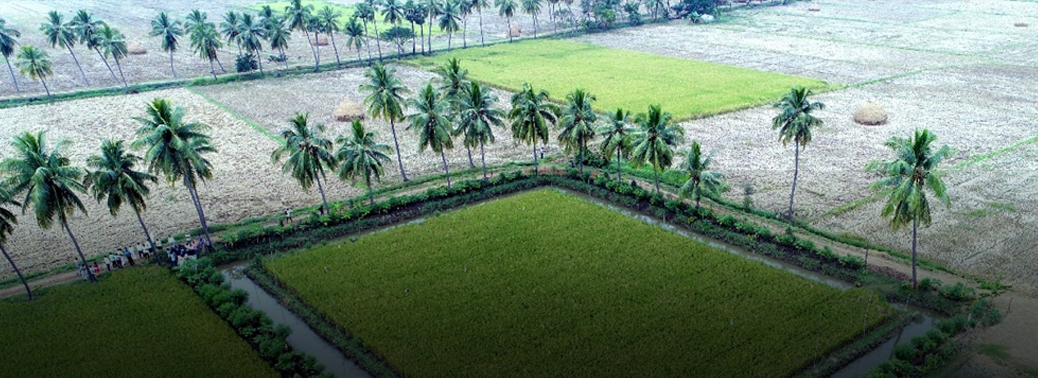
Why in News?
- The Finance Minister Nirmala Sitharaman announced a proposal of Zero Budget Natural Farming in budget 2019 for doubling farmer’s income in the country
Zero Budget Natural Farming:
- “Zero budget” stands for no production cost in farming and “Natural Farming” stands for doing farming without any aided chemical fertilizer or external seed and only using natural resources
- Aim to pull farmers out of the debt trap, cutting production cost and make small scale farming a viable option
- ZBNF involves no use of chemical fertilizers and assures zero credit for agriculture
- This type of farming was successfully initiated in Karnataka and was replicated as a role model in other states
- It cut down the farming expenditure and ends farmer’s reliance on loans
Highlights:
- Practice only natural growth of crops
- Bijamrita, Jiwamrita, Mulching and Waaphasa are the processes of ZBNF
- Intercropping of crops is one of the features of ZBNF
- The required materials are cow dung, cow urine, water, neem pulp, etc.
- The insects are removed by using neem pulp and chillies
KISAN CREDIT CARD SCHEME
06, Jul 2019
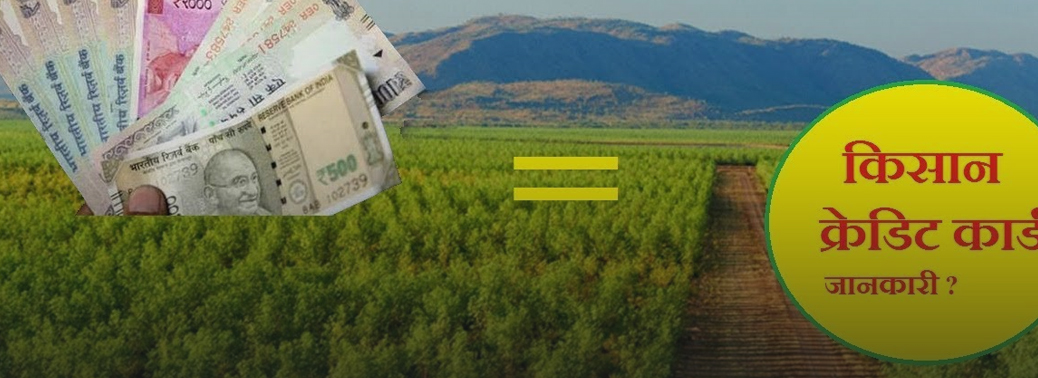
Why in News?
- The Government of India has extended the facility of Kisan Credit Card (KCC) to fisheries and animal husbandry farmers to help them meet their working capital needs.
Kisan Credit Card Scheme:
- The Kisan Credit Card (KCC) scheme was announced in the Budget speech of 1998-99 to fulfil the financial requirements of the farmers at various stages of farming through institutional credit.
- The model scheme was prepared by the National Bank for Agriculture and Rural Development (NABARD) on the recommendation of V Gupta committee.
- The KCC scheme is being implemented by the all Co-operative banks, Regional Rural Banks and Public Sector Banks throughout the country.
- Scheme covers risk of KCC holders against death or permanent disability resulting from accidents.
Objectives:
- To provide adequate and timely credit support from the banking system to the farmers at the cheap rate of interest.
- To provide credit at the time of requirement.
- To support post-harvest expenses.
- To provide Working capital for maintenance of farm assets and activities allied to agriculture.
- Investment credit requirement for agriculture and allied activities (land development, pump sets, plantation, drip irrigation etc.)
- Consumption requirements of farmers.
Salient features of the Scheme:
- Revolving cash credit facility involving any number of withdrawals and repayments within the limit.
- Limit to be fixed on the basis of operational land holding, cropping pattern and scale of finance.
- Card valid for 5 years subject to annual review. As an incentive for good performance, credit limits could be enhanced to take care of increase in costs, change in cropping pattern, etc.
- Conversion/reschedulement of loans also permissible in case of damage to crops due to natural calamities.
- Crop loans disbursed under KCC Scheme for notified crops are covered under Crop Insurance Scheme, to protect the interest of the farmers against loss of crop yield caused by natural calamities, pest attacks etc.
WORKING GROUP ON CORE INVESTMENT COMPANIES
06, Jul 2019

Why in News?
- The Reserve Bank of India (RBI) has constituted a working group to review the regulatory guidelines and supervisory framework applicable for Core Investment Companies (CIC).
Terms of Reference:
- To examine the current regulatory framework for CICs in terms of adequacy, efficacy and effectiveness of every component thereof and suggest changes therein.
- To assess the appropriateness of and suggest changes to the current approach of the Reserve Bank of India towards registration of CICs including the practice of multiple CICs being allowed within a group.
- To suggest measures to strengthen corporate governance and disclosure requirements for CICs.
- To assess the adequacy of supervisory returns submitted by CICs and suggest changes therein.
- To suggest appropriate measures to enhance RBI’s off-site surveillance and on-site supervision over CICs.
- The working group, headed by Tapan Ray, shall submit its report by October 31, 2019.
Core Investment Company:
- Core Investment Companies (CICs) are a specialized Non-Banking Financial Companies (NBFCs).
- They have asset size of Rs 100 crore and above.
- Their main business is acquisition of shares and securities with certain conditions.
- It holds not less than 90% of its net assets in the form of investment in equity shares, preference shares, bonds, debentures, debt or loans in group companies.
- Its investments in the equity shares (including instruments compulsorily convertible into equity shares within a period not exceeding 10 years from the date of issue) in group companies constitutes not less than 60% of its net assets.
- It does not trade in its investments in shares, bonds, debentures, debt or loans in group companies except through block sale for the purpose of dilution or disinvestment.
- It does not carry on any other financial activity referred to in RBI Act, 1934 except investment in bank deposits, money market instruments,
government securities, loans to and investments in debt issuances of group companies or guarantees issued on behalf of group companies. - It accepts public funds.
AGRICULTURAL EXPORT POLICY
06, Jul 2019
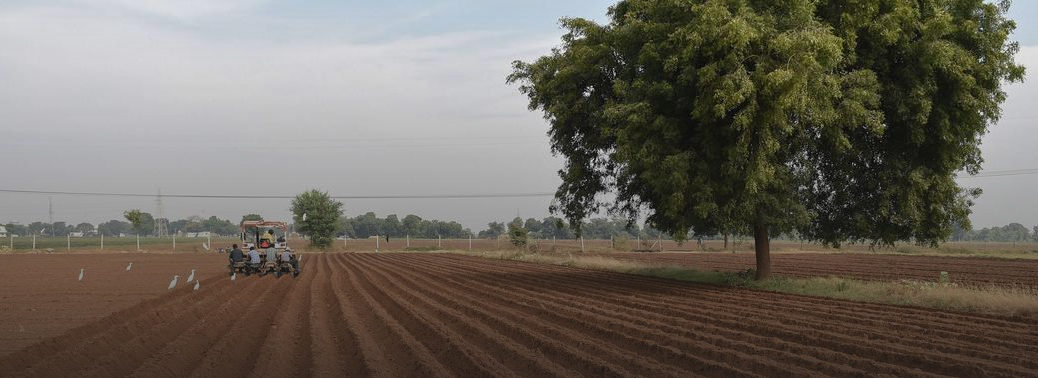
Why in News?
- The Union Cabinet approved the Agriculture Export Policy, 2018. The Cabinet has also approved the proposal for establishment of Monitoring Framework at Centre with Commerce as the nodal Department with representation from various line Ministries/Departments and Agencies and representatives of concerned State Governments, to oversee the implementation of Agriculture Export Policy.
Highlights:
- The Government has come out with a Policy to Double Farmers’ Income by 2022. Exports of agricultural products would play a pivotal role in achieving this goal. In order to provide an impetus to agricultural exports, the Government has come out with a comprehensive “Agriculture Export Policy” aimed at doubling the agricultural exports and integrating Indian farmers and agricultural products with the global value chains.
- The Agriculture Export Policy has the following vision: “Harness export potential of Indian agriculture, through suitable policy instruments, to make India global power in agriculture and raise farmers’ income.”
Objective of the Agriculture Export Policy:
- To double agricultural exports from present ~US$ 30+ Billion to ~US$ 60+ Billion by 2022 and reach US$ 100 Billion in the next few years thereafter, with a stable trade policy regime.
- To diversify our export basket, destinations and boost high value- and value-added agricultural exports including focus on perishables.
- To promote novel, indigenous, organic, ethnic, traditional and non-traditional Agri products exports.
- To provide an institutional mechanism for pursuing market access, tackling barriers and deal with sanitary and Phyto-sanitary issues.
- To strive to double India’s share in world agri exports by integrating with global value chain at the earliest.
- Enable farmers to get benefit of export opportunities in overseas market.
Elements of Agricultural Export Policy:
Strategic Policy Measure:
- 1. Infrastructure and logistics support
- 2. Holistic approach to boost exports
- 3. Greater involvement of State Governments in agri exports
Operational Policy Measure:
- 1. Focus on Clusters
- 2. Promoting value-added exports
- 3. Marketing and promotion of “Brand India
- 4. Attract private investments into production and processing
- 5. Establishment of strong quality regimen
- 6. Research & Development
- 7. Miscellaneous
WIND ENERGY IN INDIA
05, Jul 2019
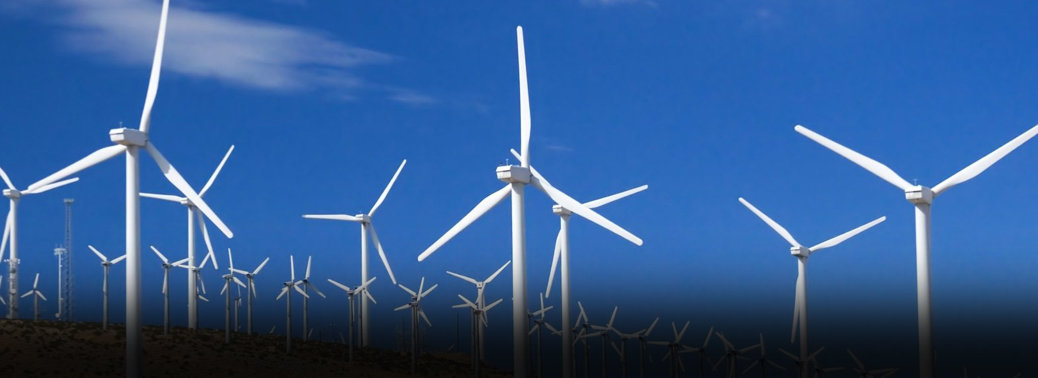
- Context– India’s emerging green economy will require additional investments of around $80 billion till 2022, growing more than threefold to $250 billion during 2023-30,
Aim:
- The country has an installed Renewable Energy Capacity of about 80 gigawatts (GW) and is running the world’s largest renewable energy programme with plans to achieve 175GW by 2022 and 500GW by 2030, as part of its climate commitments.
- Policy- National Off-Shore Wind Policy was notified in 2015
Offshore Wind Farming:
- Two Types viz. shallow water and deep-sea farming
- Advantages of Offshore wind farming
- Stronger Winds for efficient generation of power;
- No impact on real estate value of land as in case of onshore wind farming;
- Its ability to fulfill the demand of the heavily populated coastal regions
Issues
- Heavy investments, better technology needed, maintenance issues etc.
- challenges of assigning no-go areas for commercial shipping
Why so much Investment in Wind energy now?
- The push for green energy also comes against the backdrop of the Organization of the Petroleum Exporting Countries (OPEC)-plus arrangement extending its compact for production cuts.
- The production cut extension will have a wide-ranging impact on energy markets, given that OPEC accounts for around 40% of the global output.
- It is expected to have a particular fallout on India due to the OPEC accounting for around 83% of the country’s total crude oil imports.
Global Energy Landscape:
- London Stock Exchange (LSE) has classified oil and gas stocks as non-renewable energy. The move marks a fundamental change in the global investment culture against the backdrop of growing climate concerns with several countries focusing on renewable energy.
- India has also emerged as the voice of consuming nations amid global uncertainties in the energy markets with supplies from Iran and Venezuela drying up and tension escalating in the Persian Gulf.
Efficiency and Universal access of Energy:
- Energy intensity of India’s GDP has been declining in the recent past, which is reflective of increases in the efficiency of energy use.
- India cannot become an upper-middle-income country without
- 1. Rapidly raising its share of the global energy consumption commensurate with its share of the global population, and
- 2. Ensuring universal access to adequate modern commercial energy at affordable prices.
Conclusion:
- Having greater energy efficiency is crucial for India that is now the biggest emitter of greenhouse gases after the US and China, and which is also among nations most vulnerable to climate change.
- India plans to reduce its carbon footprint by 33-35% from its 2005 levels by 2030, as part of its commitments to the United Nations Framework Convention on Climate Change adopted by 195 countries in Paris in 2015.
KEY HIGHLIGHTS OF ECONOMIC SURVEY 2018-19
05, Jul 2019
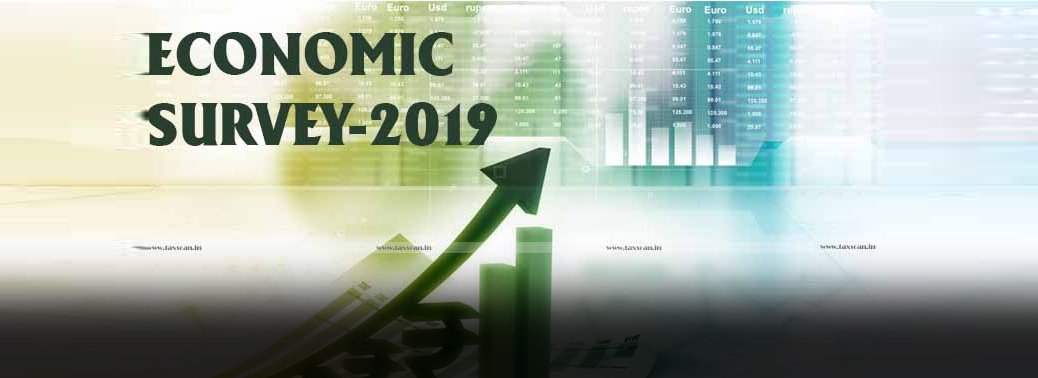
- The Union Minister for Finance and Corporate Affairs tabled the Economic Survey 2018-19 in the Parliament. The Key Highlights of Economic Survey 2018-19 are as follows:
Shifting Gears: Private Investment as the Key Driver of Growth, Jobs, Exports and Demand:
- Survey states that pathways for trickle-down opened up during the last five years; and benefits of growth and macroeconomic stability reached the bottom of the pyramid.
- Sustained real GDP growth rate of 8% needed for a $5 Trillion Economy by 2024-25.
- “Virtuous Cycle” of savings, investment and exports catalyzed and supported by a favourable demographic phase required for sustainable growth.
- Private Investment– key driver for demand, capacity, labor productivity, new Technology, creative destruction and job creation.
- Survey departs from traditional Anglo-Saxon thinking by viewing the economy as being either in a virtuous or a vicious cycle, and thus never in equilibrium.
- Key Ingredients for a self-sustaining virtuous cycle:
- Presenting data as a public good.
- Emphasizing legal reforms.
- Ensuring policy consistency.
- Encouraging behaviour change using principles of behavioural economics.
- Nourishing MSMEs to create more jobs and become more productive.
- Reducing the cost of capital.
- Rationalizing the risk-return trade-off for investments.
Policy for Real People, Not Robots: Leveraging the Behavioral Economics of “Nudge”:
- Decisions by real people deviate from impractical robots theorized in classical economics.
- Behavioral economics provides insights to ‘Nudge’ people towards desirable behavior.
- Key Principles of behavioral economics:
- Emphasizing the beneficial social norm.
- Changing the default option.
- Repeated Reinforcements.
- Using insights from behavioral economics to create an aspirational agenda for social change:
- From ‘Beti Baco Beti Padhao’ to ‘BADLAV’ (Beti Aapki Dhan Lakshmi Aur Vijay Lakshmi).
- From ‘Swachh Bharat’ to ‘Sundar Bharat’.
- From ‘Give it up” for the LPG subsidy to ‘Think About the Subsidy’.
- From ‘Tax evasion’ to ‘Tax Compliance’.
Nourishing Dwarfs to Become Giants: Reorienting Policies for MSME Growth:
- Survey focuses on enabling MSMEs to grow for achieving greater profits, job creation and enhanced productivity.
- Dwarfs (firms with less than 100 workers) despite being more than 10 years old, account for more than 50% of all organized firms in manufacturing by number.
- Contribution of dwarfs to employment is only 14% and to productivity is a mere 8%.
- Large firms (more than 100 employees) account for 75% employment and close to90% of productivity despite accounting for about 15% by number.
- Unshackling MSMEs and enabling them to grow by way of:
- A sunset clause of less than 10 years, with necessary grand-fathering, for all size-based incentives.
- Deregulating labor law restrictions to create significantly more jobs, as evident from Rajasthan.
- Re-calibrating Priority Sector Lending (PSL) guidelines for direct credit flow to young firms in high employment elastic sectors.
- Survey also focuses on service sectors such as tourism, with high spillover effects on other sectors such as hotel & catering, transport, real estate, entertainment etc., for job creation.
Data “Of the People, By the People, For the People”
- Society’s optimal consumption of data is higher than ever given technological advances in gathering and storage of data.
- As data of societal interest is generated by the people, data can be created as a public good within the legal framework of data privacy.
- Government must intervene in creating data as a public good, especially of the poor and in social sectors.
- Merging the distinct datasets held by the Government already would generate multiple benefits.
Ending Matsyanyaya: How to Ramp up Capacity in the Lower Judiciary:
- Delays in contract enforcement and disposal resolution are arguably now the single biggest hurdle to the ease of doing business and higher GDP growth in India.
- Around 87.5 per cent of pending cases are in the District and Subordinate courts.
- 100 per cent clearance rate can be achieved by filling out merely 2279 vacancies in the lower courts and 93 in High Courts.
- States of Uttar Pradesh, Bihar, Odisha and West Bengal need special attention.
- Productivity improvements of 25 percent in lower courts, 4 percent in High Courts and 18 percent in Supreme Court can clear backlog.
How Does Policy Uncertainty Affect Investment?
- Significant reduction in Economic Policy Uncertainty in India over the last one decade, even when economic policy uncertainty increased in major countries, especially the U.S.
- Uncertainty dampens investment growth in India for about five quarters.
- Lower economic policy uncertainty can foster a salutary investment climate.
- Survey proposes reduction in economic policy uncertainty by way of:
- Consistency of Actual Policy with forward guidance.
- Quality assurance certification of processes in Government departments.
India’s Demography at 2040: Planning Public Good Provision for the 21st Century:
- Sharp slowdown in population growth expected in next 2 decades. Most of India to enjoy demographic dividend while some states will transition to ageing societies by 2030s.
- National Total Fertility Rate expected to be below replacement rate by 2021.
- Working age population to grow by roughly 9.7mn per year during 2021-31 and 4.2mn per year during 2031-41.
- Significant decline to be witnessed in elementary school-going children (5-14 age group) over next two decades.
- States need to consolidate/merge schools to make them viable rather than build new ones.
- Policy makers need to prepare for ageing by investing in health care and by increasing the retirement age in a phased manner.
From Swachh Bharat to Sundar Bharat via Swasth Bharat: An Analysis of the Swachh Bharat Mission:
- Traceable health benefits brought about by Swachh Bharat Mission (SBM).
- 93.1% of the households have access to toilets.
- 96.5% of those with access to toilets are using them in rural India.
- 100% Individual Households Latrine (IHHL) Coverage in 30 states and UTs.
- Financial savings from a household toilet exceed the financial costs to the household by 1.7 times on average and 2.4 times for poorest households.
- Environmental and water management issues need to be incorporated in SBM for sustainable improvements in the long-term.
Enabling Inclusive Growth through Affordable, Reliable and Sustainable Energy:
- 2.5 times increase in per capita energy consumption needed for India to increase its real per capita GDP by $5000 at 2010 prices, and enter the upper-middle income group.
- 4 times increase in per capita energy consumption needed for India to achieve 0.8 Human Development Index score.
- India now stands at 4th in wind power, 5th in solar power and 5th in renewable power installed capacity.
- Rs 50,000 crore saved and 108.28 million tonnes of CO2 emissions reduced by energy efficiency programmes in India.
- Share of renewable (excluding hydro above 25 MW) in total electricity generation increased from 6% in 2014-15 to 10% in 2018-19.
- Thermal power still plays a dominant role at 60% share.
- Market share of electric cars only 0.06% in India while it is 2% in China and 39% in Norway.
- Access to fast battery charging facilities needed to increase the market share of electric vehicles.
Effective Use of Technology for Welfare Schemes – Case of MGNREGS:
- Survey says that efficacy of MGNREGS increased with use of technology in streamlining it.
- Significant reduction in delays in the payment of wages with adoption of NeFMS and DBT in MGNREGS.
- Demand and supply of work under MGNREGS increased, especially in distressed districts.
- Vulnerable sections of the society viz. women, SC and ST workforce increased under MGNREGS during economic distress.
Redesigning a Minimum Wage System in India for Inclusive Growth:
- Survey proposes a well-designed minimum wage system as a potent tool for protecting workers and alleviating poverty.
- Present minimum wage system in India has 1,915 minimum wages for various scheduled job categories across states.
- 1 in every 3 wage workers in India not protected by the minimum wage law.
- Survey supports rationalization of minimum wages as proposed under the Code on Wages Bill.
- Minimum wages to all employments/workers proposed by the Survey.
- ‘National Floor Minimum Wage’ should be notified by the Central Government, varying across five geographical regions.
- Minimum wages by states should be fixed at levels not lower than the ‘floor wage’.
- Minimum wages can be notified based either on the skills or on geographical region or on both grounds.
- Survey proposes a simple and enforceable Minimum Wage System using technology.
- ‘National level dashboard’ under the Ministry of Labour & Employment for regular notifications on minimum wages, proposed by the Survey.
- Toll-free Number to register grievance on non-payment of the statutory minimum wages.
- Effective minimum wage policy as an inclusive mechanism for more resilient and sustainable economic development.
State of the Economy in 2018-19: A Macro View:
- India still the fastest growing major economy in 2018-19.
- Growth of GDP moderated to 6.8 per cent in 2018-19 from 7.2 per cent in 2017-18.
- Inflation contained at 3.4 per cent in 2018-19.
- Non-Performing Assets as percentage of Gross Advances reduced to 10.1 per cent at end December 2018 from 11.5 per cent at end March 2018.
- Investment growth recovering since 2017-18:
- Growth in fixed investment picked up from 8.3 per cent in 2016-17 to 9.3 per cent next year and further to 10.0 per cent in 2018-19.
- Current account deficit manageable at 2.1 percent of GDP.
- Fiscal deficit of Central Government declined from 3.5 percent of GDP in 2017-18 to 3.4 percent in 2018-19.
- Prospects of pickup in growth in 2019-20 on the back of further increase in private investment and acceleration in consumption.
Fiscal Developments:
- FY 2018-19 ended with fiscal deficit at 3.4 per cent of GDP and debt to GDP ratio of 44.5 per cent (Provisional).
- As per cent of GDP, total Central Government expenditure fell by 0.3 percentage points in 2018-19 PA over 2017-18:
- 0.4 percentage point reduction in revenue expenditure and 0.1 percentage point increase in capital expenditure.
- States’ own tax and non-tax revenue displays robust growth in 2017-18 RE and envisaged to be maintained in 2018-19 BE.
- General Government (Centre plus states) on the path of fiscal consolidation and fiscal discipline.
- The revised fiscal glide path envisages achieving fiscal deficit of 3 per cent of GDP by FY 2020-21 and Central Government debt to 40 per cent of GDP by 2024-25.
Money Management and Financial Intermediation:
- Banking system improved as NPA ratios declined and credit growth accelerated.
- Insolvency and Bankruptcy Code led to recovery and resolution of significant amount of distressed assets and improved business culture.
- Till March 31, 2019, the CIRP yielded a resolution of 94 cases involving claims worthINR1, 73,359 crores.
- As on 28 Feb 2019, 6079 cases involving INR2.84 lakh crores have been withdrawn.
- As per RBI reports, INR50,000 crore received by banks from previously non-performing accounts.
- Additional INR50,000 crore “upgraded” from non-standard to standard assets.
- Benchmark policy rate first hiked by 50 bps and later reduced by 75 bps last year.
- Liquidity conditions remained systematically tight since September 2018 thus impacting the yields on government papers.
- Financial flows remained constrained because of decline in the equity finance raised from capital markets and stress in the NBFC sector.
- Capital mobilized through public equity issuance declined by 81 per cent in 2018-19.
- Credit growth rate y-o-y of the NBFCs declined from 30 per cent in March 2018 to 9 per cent in March 2019.
Prices and Inflation:
- Headline inflation based on CPI-C continuing on its declining trend for fifth straight financial year remained below 4.0 per cent in the last two years.
- Food inflation based on Consumer Food Price Index (CFPI) also continuing on its declining trend for fifth financial year has remained below 2.0 per cent for the last two consecutive years.
- CPI-C based core inflation (CPI excluding the food and fuel group) has now started declining since March 2019 after increment during FY 2018-19 as compared to FY 2017-18.
- Miscellaneous, housing and fuel and light groups are the main contributors of headline inflation based on CPI-C during FY 2018-19 and the importance of services in shaping up headline inflation has increased.
- CPI rural inflation declined during FY 2018-19 over FY 2017-18. However, CPI urban inflation increased marginally during FY 2018-19. Many States witnessed fall in CPI inflation during FY 2018-19.
Sustainable Development and Climate Change:
- India’s SDG Index Score ranges between 42 and 69 for States and between 57 and 68 for UTs:
- Kerala and Himachal Pradesh are the front runners with a score of 69 amongst states.
- Chandigarh and Puducherry are the front runners with a score of 68 and 65 respectively among the UTs.
- Namami Gange Mission launched as a key policy priority towards achieving the SDG 6, with a budget outlay of INR. 20,000 crores for the period 2015-2020.
- For mainstreaming Resource Efficiency approach in the development pathway for achieving SDGs, a national policy on Resource Efficiency should be devised.
- A comprehensive NCAP launched in 2019 as a pan India time bound strategy for:
- Prevention, control and abatement of air pollution
- Augmenting the air quality monitoring network across the country.
- Achievements in CoP 24 in Katowice, Poland in 2018:
- Recognition of different starting points for developed and developing countries.
- Flexibilities for developing countries.
- Consideration of principles including equity and Common but Differentiated Responsibilities and Respective Capabilities.
- Paris Agreement also emphasizes the role of climate finance without which the proposed NDCs would not fructify.
- Though the international community witnessed various claims by developed countries about climate finance flows, the actual amount of flows is far from these claims.
- Scale and size of investments required to implement India’s NDC requires mobilizing international public finance and private sector resources along with domestic public budgets.
External Sector:
- As per WTO, World trade growth slowed down to 3 per cent in 2018 from 4.6 per cent in 2017. Reasons:
- Introduction of new and retaliatory tariff measures.
- Heightened US-China trade tensions.
- Weaker global economic growth.
- Volatility in financial markets (WTO).
- In Indian rupee terms growth rate of exports increased owing to depreciation of the rupee while that of imports declined in 2018-19.
- Net capital inflows moderated in April-December of 2018-19 despite robust foreign direct investment (FDI) inflows, outweighed by withdrawals under portfolio investment.
- India’s External Debt was US$ 521.1 billion at end-December 2018, 1.6 per cent lower than its level at end-March 2018.
- The key external debt indicators reflect that India’s external debt is not unsustainable.
- The Total Liabilities-to-GDP Ratio, inclusive of both debt and non-debt components, has declined from 43 per cent in 2015 to about 38 per cent at end of 2018.
- The share of foreign direct investment has risen and that of net portfolio investment fallen in total liabilities, reflecting a transition to more stable sources of funding the current account deficit.
- The Indian Rupee traded in the range of 65-68 per US$ in 2017-18 but depreciated to a range of 70-74 in 2018-19.
- The income terms of trade, a metric that measures the purchasing power to import, has been on a rising trend, possibly because the growth of crude prices has still not exceeded the growth of India’s export prices.
- The exchange rate in 2018-19 has been more volatile than in the previous year, mainly due to volatility in crude prices, but not much due to net portfolio flows.
- Composition of India’s exports and import basket in 2018-19(P):
- Exports (including re-exports): INR23, 07,663 Cr.
- Imports: INR35, 94,373 Cr.
- Top export items continue to be Petroleum products, precious stones, drug formulations, gold and other precious metals.
- Top import items continue to be Crude petroleum, pearl, precious, semi-precious stones and gold.
- India’s main trading partners continue to be the US, China, Hong Kong, the UAE and Saudi Arabia.
- India has signed 28 bilateral / multilateral trade agreements with various country/group of countries. In 2018-19,
- Exports to these countries stood at US$121.7 billion accounting for 36.9 per cent of India’s total exports.
- Imports from these countries stood at US$266.9 billion accounting for 52.0 per cent of India’s total imports.
Agriculture and Food Management
- Agriculture sector in India typically goes through cyclical movement in terms of its growth.
- Gross Value Added (GVA) in agriculture improved from a negative 0.2 per cent in 2014-15 to 6.3 per cent in 2016-17 but decelerated to 2.9 per cent in 2018-19.
- Gross Capital Formation (GCF) in agriculture as percentage of GVA marginally declined to 15.2 per cent in 2017-18 as compared to 15.6 per cent in 2016-17.
- The public sector GCF in agriculture as a percentage of GVA increased to 2.7 per cent in 2016-17 from 2.1 per cent in 2013-14.
- Women’s participation in agriculture increased to 13.9 per cent in 2015-16 from 11.7 per cent in 2005-06 and their concentration is highest (28 per cent) among small and marginal farmers.
- A shift is seen in the number of operational land holdings and area operated by operational land holdings towards small and marginal farmers.
- 89% of groundwater extracted is used for irrigation. Hence, focus should shift from land productivity to ‘irrigation water productivity’. Thrust should be on micro-irrigation to improve water use efficiency.
- Fertilizer response ratio has been declining over time. Organic and natural farming techniques including Zero Budget Natural Farming (ZBNF) can improve both water use efficiency and soil fertility.
- Adopting appropriate technologies through Custom Hiring Centers and implementation of ICT are critical to improve resource-use efficiency among small and marginal farmers.
- Diversification of livelihoods is critical for inclusive and sustainable development in agriculture and allied sectors. Policies should focus on
- Dairying as India is the largest producer of milk.
- Livestock rearing particularly of small ruminants.
- Fisheries sector, as India is the second largest producer.
Industry and Infrastructure:
- Overall Index of Eight Core Industries registered a growth rate of 4.3 percent in 2018-19.
- India’s ranking improved by 23 to 77th position in 2018 among 190 countries assessed by the World Bank Doing Business (DB) Report, 2019.
- Road construction grew @ 30 km per day in 2018-19 compared to 12 km per day in 2014-15.
- Rail freight and passenger traffic grew by 5.33 per cent and 0.64 per cent respectively in 2018-19 as compared to 2017-18.
- Total telephone connections in India touched 118.34 crore in 2018-19.
- The installed capacity of electricity has increased to 3, 56,100 MW in 2019 from 3, 44,002 MW in 2018.
- Public Private Partnerships are quintessential for addressing infrastructure gaps
- Building sustainable and resilient infrastructure has been given due importance with sector specific flagship programmes such as SAUBHAGYA scheme, PMAY etc
- Institutional mechanism is needed to deal with time-bound resolution of disputes in infrastructure sector.
Services Sector:
- Services sector (excluding construction) has a share of 54.3 per cent in India’s GVA and contributed more than half of GVA growth in 2018-19.
- The IT-BPM industry grew by 8.4 per cent in 2017-18 to US$ 167 billion and is estimated to reach US$ 181 billion in 2018-19.
- The services sector growth declined marginally to 7.5 per cent in 2018-19 from 8.1 per cent in 2017-18.
- Accelerated sub-sectors: Financial services, Real Estate and professional services.
- Decelerated sub-sectors: Hotels, transport, Communication and broadcasting services.
- Services share in employment is 34 per cent in 2017.
- Tourism:
- 10.6 million foreign tourists received in 2018-19 compared to 10.4 million in 2017-18.
- Forex earnings from tourism stood at US$ 27.7 billion in 2018-19 compared to US$ 28.7 billion in 2017-18.
Social Infrastructure, Employment and Human Development:
- The public investments in social infrastructure like education, health, housing and connectivity is critical for inclusive development.
- Government expenditure (Centre plus States) as a percentage of GDP on
- Health: increased to 1.5 per cent in 2018-19 from 1.2 per cent in 2014-15.
- Education: increased from 2.8 per cent to 3 per cent during this period.
- Substantial progress in both quantitative and qualitative indicators of education is reflected in the improvements in Gross Enrolment Ratios, Gender Parity Indices and learning outcomes at primary school levels.
- Encouraging Skill Development by:
- Introduction of the skill vouchers as a financing instrument to enable youth obtain training from any accredited Training Institutes.
- Involving industry in setting up of training institutes in PPP mode; in curriculum development; provision of equipment; training of trainers etc.
- Personnel of Railways and para-military could be roped in for imparting training in difficult terrains.
- Create a database of Instructors, skill mapping of rural youth by involving local bodies to assess the demand-supply gaps are some of the other initiatives proposed.
- Net employment generation in the formal sector was higher at 8.15 lakh in March, 2019 as against 4.87 lakh in February, 2018 as per EPFO.
- Around 1, 90, 000 km of rural roads constructed under Pradhan Mantri Gram Sadak Yojana (PMGSY) since 2014.
- About 1.54 crore houses completed under Pradhan Mantri Awas Yojana (PMAY) as against a target of 1 crore pucca houses with basic amenities by 31st March, 2019.
- Accessible, affordable and quality healthcare being provided through National Health Mission and Ayushman Bharat scheme for a healthy India.
- Alternative healthcare, National AYUSH Mission launched to provide cost effective and equitable AYUSH healthcare throughout the country to address the issue of affordability, by improving access to these services.
- Employment generation scheme, MGNREGA is prioritized by increasing actual expenditure over the budgetary allocation and an upward trend in budget allocation in the last four years.
BLUEPRINT TO ACHIEVE PRIME MINISTER’S VISION FOR $5 TRILLION ECONOMY
05, Jul 2019

Context: The Economic Survey lays down the strategic blueprint for fructifying the Prime Minister’s vision of India becoming a $5 trillion economy by 2025.
- The theme of the Survey is about enabling a “shifting of gears” to sustained economic growth for objective of US$5 trillion by 2024-25.
- The Survey departs from traditional thinking by viewing the economy as being either in a virtuous or a vicious cycle, and thus never in equilibrium.
- Rather than viewing the national priorities of fostering economic growth, demand, exports and job creation as separate problems, the Survey views these macroeconomic phenomena as complementary to each other.
- The cover design captures the idea of complementary inter-linkages between these macroeconomic variables using the pictorial description of several inter-linked gears. The team for Economic Survey 2018-19 has been guided by “Blue Sky Thinking.”
- The Survey adopts an unfettered approach in thinking about the appropriate economic model for India.
- This endeavor is reflected in the Sky-Blue Cover of the Survey.
- Learning from the global financial crisis, the economy has been viewed as either in a virtuous cycle or a vicious cycle and therefore the concept of equilibrium economics has been disbanded.
- Second, rather than trying to tackle various economic challenges of demand, jobs, exports et cetera in silos, the Survey makes the case that these phenomena are all complimentary.
- Therefore, creating the virtuous cycle with investment, especially private investment, as the main driver can enable growth in each of these important macro variables.
- In an uncertain world, three key elements are necessary: a vision, a strategic blueprint to achieve the vision, and practical tools to recalibrate constantly to the strategic blueprint.
- The Prime Minister has laid out the vision and Economic Survey 2018 -19 lays out the strategic blueprint to achieve that vision along with the tactical tools to stay on the path of the strategic blueprint.
- Among these, treating people as humans and not as robots as in classical economics, creating data as a public good, enhancing the legal system for enforcement of contracts, insuring consistency of policy with the blueprint are some tools that have been discussed, the Survey adds.
- Treating people as humans and not as robots as in classical economics, creating data as a public good, enhancing the legal system for enforcement of contracts, insuring consistency of policy with the blueprint are some aspects that have been discussed in the Survey.
- This year’s Survey also utilizes advances in Behavioural Economics to address issues of gender equality, a healthy and a beautiful India, savings, tax compliance and credit quality.
- It recognizes the role of social norms in the success of initiatives such as Beti Bacho Beti Padhao, Swacch Bharat Mission and Jan Dhan Yojana to effect behavioral change.
Jal Shakti Abhiyan
04, Jul 2019
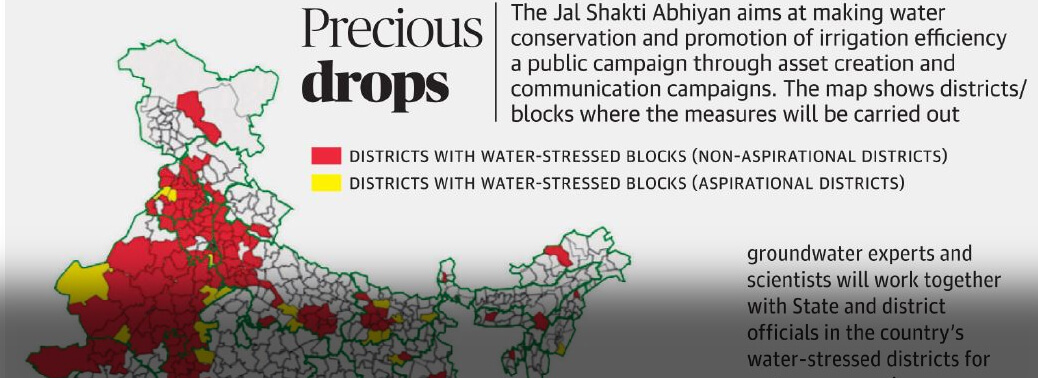
Why in News?
- Jal Shakti Abhiyan for Water Conservation Launched.
Highlights:
- It is a time-bound, mission-mode campaign that would focus on 1,592 “water-stressed” blocks in 257 districts. The campaign will run through citizen participation during the monsoon season, from 1st July, 2019 to 15th September, 2019.
- The 1,592 blocks, identified as “water-stressed” as per the Central Ground Water Board’s 2017 data, include 313 critical blocks, 1,000-odd over-exploited blocks and 94 blocks with least water availability (for states without water-stressed blocks).
- Jal Shakti Abhiyan is a collaborative effort of various Ministries of the Government of India and State Governments, being coordinated by the Department of Drinking Water and Sanitation.
- The focus of the campaign is on water stressed districts and blocks. The teams of officers from the central government will visit and work with district administration in 1592 water stressed blocks in 256 districts, to ensure five important water conservation interventions.
- The Five Important Water Conservation Interventions are:
- Water conservation and rainwater harvesting,
- Renovation of traditional and other water bodies/tanks,
- Reuse of water and recharging of structures,
- Watershed development and
- Intensive afforestation.
- The water conservation interventions will also be supplemented with special interventions including the development of block and district water conservation plans, promotion of efficient water use for irrigation and better choice of crops through Krishi Vigyan Kendras.
- A large-scale communications campaign has also been planned alongside the JSA involving mass mobilisation of different groups including school students, college students, swachhagrahis, Self Help Groups, Panchayati Raj Institution members, youth groups (NSS/NYKS/NCC), defence personnel, ex-servicemen and pensioners, among various others.
National Electric Mobility Mission Plan
04, Jul 2019
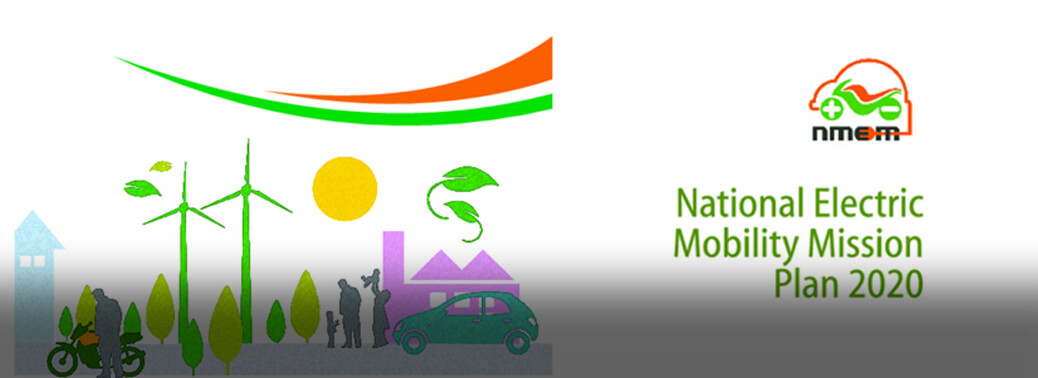
Why in News?
- The National Electric Mobility Mission Plan (NEMMP) 2020 is a National Mission document providing the vision and the roadmap for the faster adoption of electric vehicles and their manufacturing in the country.
Highlights:
- The plan has been designed to enhance national fuel security
- To provide affordable and environmentally friendly transportation
- To enable the Indian automotive industry to achieve global manufacturing leadership.
- As part of the NEMMP 2020, Department of Heavy Industry formulated a Scheme viz. Faster Adoption and Manufacturing of (Hybrid &) Electric Vehicles in India (FAME India) Scheme in the year 2015 to promote manufacturing of electric and hybrid vehicle technology and to ensure sustainable growth of the same.
- FAME-India Scheme Phase – II for promotion of Electric Mobility in the country.
- The scheme proposes to give a push to electric vehicles (EVs) in public transport.
- It seeks to encourage adoption of EVs by way of market creation and demand aggregation.
Targets:
- Target of deploying 5 to 7 million electric vehicles in the country by 2020
- Emphasizes importance of government incentives and coordination between industry and academia
- Target of 400,000 passenger battery electric cars (BEVs) by 2020 ~ avoiding 120 million barrels of oil and 4 million tons of CO2
- Lowering of vehicular emissions by 1.3 percent by 2020
- Total investment required – INR 20,000 – 23,000 cr (approx 3 billion USD)
FAME India:
- FAME India is a part of the National Electric Mobility Mission Plan. Main thrust of FAME is to encourage electric vehicles by providing subsidies.
- Vehicles in most segments – two wheelers, three wheelers, electric and hybrid cars and electric buses obtained the subsidy benefit of the scheme.
- FAME focuses on 4 areas i.e. Technology development, Demand Creation, Pilot Projects and Charging Infrastructure.
Minimum Support Price
04, Jul 2019
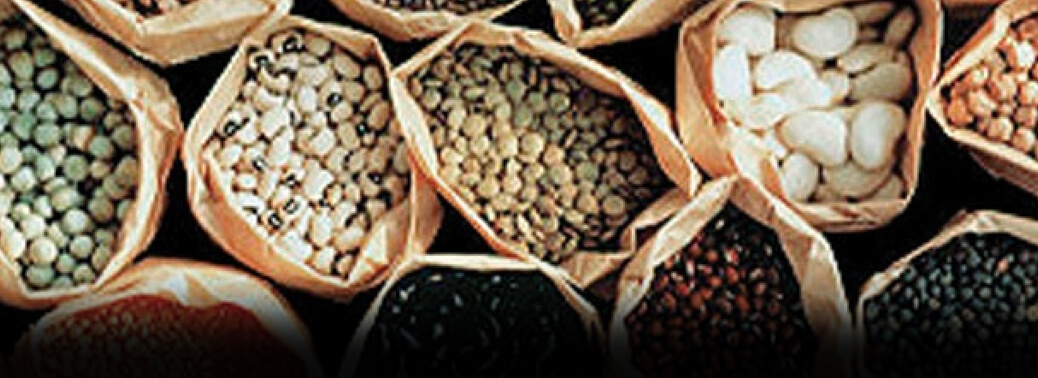
Context:
Recently cabinet has announced MSP for 14 Kharif crops
What is MSP?
- Minimum Support Price (MSP) is a form of Market Intervention by the Government of India to insure agricultural producers against any sharp fall in farm prices.
- The MSP is announced by the Government of India at the Beginning of the Sowing Season for certain crops on the basis of the recommendations of the Commission for Agricultural Costs and Prices (CACP).
- MSP is a Guarantee Price for their produce from the Government.
- The major objectives are to Support the Farmers from Distress Sales and to Procure Food Grains for Public Distribution.
- In case the market price for the commodity falls below the announced minimum price due to bumper production and glut in the market, government agencies purchase the entire quantity offered by the farmers at the announced minimum price.
Factors Determining the MSP:
- Cost of production
- Changes in input prices
- Input-output price parity
- Trends in market prices
- Demand and supply
- Inter-crop price parity
- Effect on industrial cost structure
- Effect on cost of living
- Effect on general price level
- International price situation
- Parity between prices paid and prices received by the farmers.
- Effect on issue prices and implications for subsidy.
NATIONAL MANUFACTURING COMPETITIVENESS PROGRAMME
03, Jul 2019
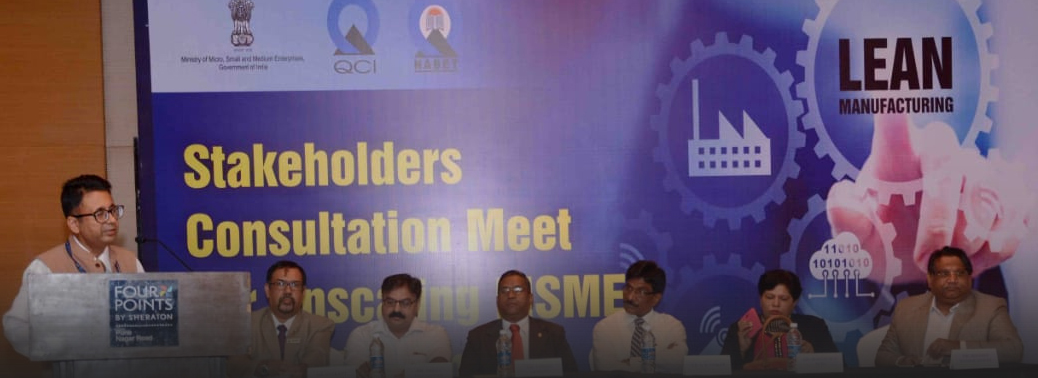
Why in News?
- National Manufacturing Competitiveness Programme (NMCP) aima to support the Micro, Small and Medium Enterprises (MSMEs) in their endeavor to become competitive.
Objectives:
- The objective of NMCP is to develop global competitiveness among Indian MSMEs.
- This programme targets at enhancing the entire value chain of the MSME sector through the following components:
- Lean Manufacturing Competitiveness Scheme for MSMEs;
- Promotion of Information & Communication Tools (ICT) in MSME sector;
- Technology and Quality Up gradation Support to MSMEs;
- Design Clinics scheme for MSMEs;
- Enabling Manufacturing Sector to be Competitive through Quality Management Standards (QMS) and Quality Technology Tools (QTT);
- Marketing Assistance and Technology Up gradation Scheme for MSMEs;
- National campaign for building awareness on Intellectual Property Rights (IPR);
- Support for Entrepreneurial and Managerial Development of SMEs through Incubators.
- Bar Code under Market Development Assistance (MDA) scheme.
NATIONAL WAREHOUSING GRID
03, Jul 2019

Why in News?
- The government is likely to introduce warehousing schemes at village and National level to build an efficient storage infrastructure.
A National Warehousing Grid along the National Highways may also be introduced in the Budget.
National Warehousing Grid:
- The Centre’s scheme aims at broad integration of the warehousing capacities in India.
- Approximately 90% of the warehousing space is controlled by unorganised players, with small warehouses of less than 10,000 sq ft area.
- An action plan has already been approved by the Centre on sectoral basis for the construction of steel silos with a capacity of 100 lakh metric tonnes in PPP mode for modernizing storage infrastructure and improving shelf life of stored food grains.
Significance of scheme:
- Practically, much of the country’s warehousing capacity outside of the agri sector is in the unorganised sector, with small warehouses of less than 10,000 sq ft area.
- Currently, of the total warehousing space of about 180 million sq ft in the country, the industrial segment accounts for about 86% and the agricultural sector the rest 14%, according to NITI statistics.
- Two-thirds of the warehousing capacity in the food storage segment is owned by the public sector.
- Apart from conventional storing services, India’s warehousing capacity is increasingly being used to offer value-added services such as the consolidation and breaking up of cargo, packaging, labelling, bar coding and reverse logistics.
Plugging deficiencies:
- The project is aimed at plugging deficiencies given that India’s current cold storage capacity at 25 MT is barely sufficient for 10% of the fruits and vegetables produced in the country.
- The lack of adequate storage infrastructure is an important reason for the high cost of food products and wastage.
- Nearly 60% of the modern warehousing capacity in India is concentrated in top six cities, namely Ahmedabad, Bengaluru, Chennai, Mumbai, Delhi-NCR and Pune, with Hyderabad and Kolkata being the other major markets, according to Care Ratings.
- This trend is driven by the concentration of industrial activity and presence of sizeable urban population around these clusters.
Beneficiaries:
- The prime beneficiaries of the new wave of growth in warehousing include peripheral locations of Tier 1 and Tier 2 cities.
- Much of the fresh investments would go into creating storage facilities for retail and consumer goods.
Forthcoming Challenges:
- The primary challenge that India’s warehousing market currently faces is acquisition of a feasible land parcel, given that land cost constitutes the largest component of a warehousing project.
- While rental values that a warehouse owner can charge are primarily driven by demand and supply factors, land prices are inherently dependent on multiple factors like development control regulations, infrastructure development and the best alternative usage of land.
GOODS & SERVICES TAX
03, Jul 2019
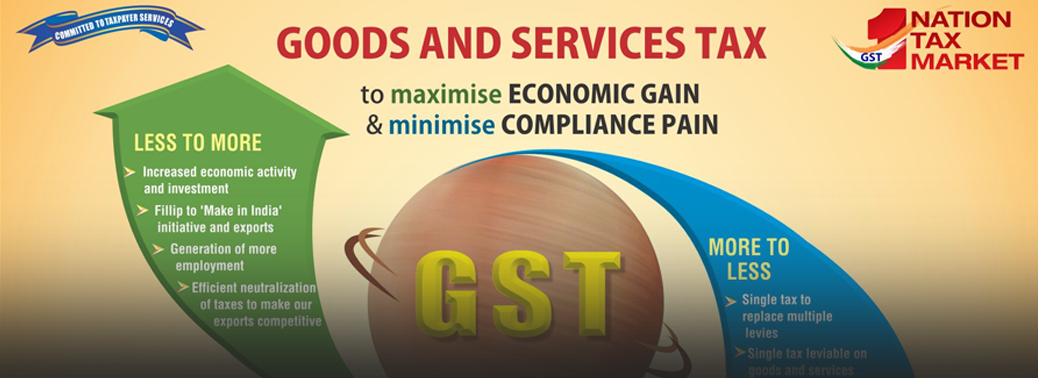
Why in News?
- 2nd anniversary of Goods & Services Tax to be celebrated on 1st July 2019.
GST:
- GST is one indirect tax for the whole nation, which will make India one unified common market.
- GST is a single tax on the supply of goods and services, right from the manufacturer to the consumer.
- Credits of input taxes paid at each stage will be available in the subsequent stage of value addition, which makes GST essentially a tax only on value addition at each stage.
- The final consumer will thus bear only the GST charged by the last dealer in the supply chain, with set-off benefits at all the previous stages.
Taxes at the Centre and State level are subsumed into GST:
- At the Central level, the following taxes are being subsumed:
- Central Excise Duty
- Additional Excise Duty
- Service Tax
- Additional Customs Duty commonly known as Countervailing Duty, and
Special Additional Duty of Customs. - At the State level, the following taxes are being subsumed:
- Subsuming of State Value Added Tax/Sales Tax,
- Entertainment Tax (other than the tax levied by the local bodies), Central Sales
- Tax (levied by the Centre and collected by the States),
- Octroi and Entry tax,
- Purchase Tax,
- Luxury tax, and
- Taxes on lottery, betting and gambling.
Benefits of GST:
For business and industry:
- Easy compliance: A robust and comprehensive IT system would be the foundation of the GST regime in India. Therefore, all tax payer services such as registrations, returns, payments, etc. would be available to the taxpayers online, which would make compliance easy and transparent.
- Uniformity of Tax Rates and Structures: GST will ensure that indirect tax rates and structures are common across the country, thereby increasing certainty and ease of doing business. In other words, GST would make doing business in the country tax neutral, irrespective of the choice of place of doing business.
- Removal of cascading: A system of seamless tax-credits throughout the value-chain, and across boundaries of States, would ensure that there is minimal cascading of taxes. This would reduce hidden costs of doing business.
- Improved competitiveness: Reduction in transaction costs of doing business would eventually lead to an improved competitiveness for the trade and industry.
- Gain to manufacturers and exporters: The subsuming of major Central and State taxes in GST, complete and comprehensive set-off of input goods and services and phasing out of Central Sales Tax (CST) would reduce the cost of locally manufactured goods and services. This will increase the competitiveness of Indian goods and services in the international market and give boost to Indian exports. The uniformity in tax rates and procedures across the country will also go a long way in reducing the compliance cost.
For Central and State Governments:
- Simple and easy to administer: Multiple indirect taxes at the Central and State levels are being replaced by GST. Backed with a robust end-to-end IT system, GST would be simpler and easier to administer than all other indirect taxes of the Centre and State levied so far.
- Better controls on leakage: GST will result in better tax compliance due to a robust IT infrastructure. Due to the seamless transfer of input tax credit from one stage to another in the chain of value addition, there is an in-built mechanism in the design of GST that would incentivize tax compliance by traders.
- Higher revenue efficiency: GST is expected to decrease the cost of collection of tax revenues of the Government, and will therefore, lead to higher revenue efficiency.
For the consumer:
- Single and transparent tax proportionate to the value of goods and services: Due to multiple indirect taxes being levied by the Centre and State, with incomplete or no input tax credits available at progressive stages of value addition, the cost of most goods and services in the country today are laden with many hidden taxes. Under GST, there would be only one tax from the manufacturer to the consumer, leading to transparency of taxes paid to the final consumer.
- Relief in overall tax burden: Because of efficiency gains and prevention of leakages, the overall tax burden on most commodities will come down, which will benefit consumers.
GST Council:
- As per Article 279A (4), the Council will make recommendations to the Union and the States on important issues related to GST, like the goods and services that may be subjected or exempted from GST, model GST Laws, principles that govern Place of Supply, threshold limits, GST rates including the floor rates with bands, special rates for raising additional resources during natural calamities/disasters, special provisions for certain States, etc.
- As per Article 279A of the amended Constitution, the GST Council will be a joint forum of the Centre and the States. This Council shall consist of the following members namely: –
- Union Finance Minister.. Chairperson
- The Union Minister of State, in-charge of Revenue of finance… Member
- The Minister In-charge of finance or taxation or any other Minister nominated by each State Government.
CENTRE RATIFIES INTERNATIONAL CONVENTION TO CURB COMPANY PROFIT SHIFTING
03, Jul 2019
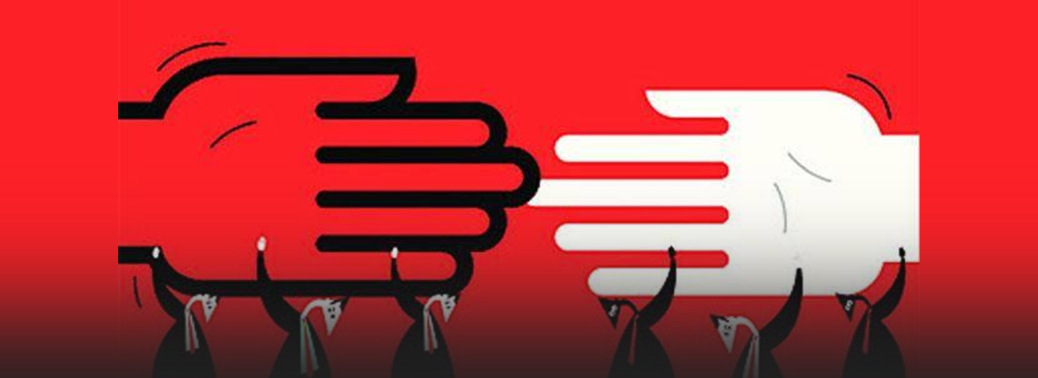
- Context: India has recently ratified the international agreement to curb Base Erosion and Profit Shifting (BEPS)
- India has ratified the Multilateral Convention to Implement Tax Treaty Related Measures to Prevent Base Erosion and Profit Shifting (multilateral instruments (MLI), which was signed by the Finance Minister in Paris in June, 2017 on behalf of India, along with representatives of more than 65 countries.
About MLI:
- It is a multilateral convention of the Organisation for Economic Co-operation and Development (OECD) to combat tax avoidance by multinational enterprises (MNEs) through prevention of Base Erosion and Profit Shifting (BEPS).
- The BEPS multilateral instrument was negotiated within the framework of the OECD G20 BEPS project and enables countries and jurisdictions to swiftly modify their bilateral tax treaties to implement some of the measures agreed.
- The BEPS multilateral instrument was adopted on 24 November 2016 and signed on 7 June 2017 by 67 jurisdictions for the first signing ceremony.
- As of July 2018, 83 jurisdictions have signed the BEPS multilateral instrument, covering more than 1,400 bilateral tax treaties.
- It entered into force on 1 July 2018, among the first jurisdictions that ratified it.
India and MLI:
- India was part of the Ad Hoc Group of more than 100 countries and jurisdictions from the G20, Organisation for Economic Co-operation and Development (OECD), and other interested countries, which worked on the finalising the text of the Multilateral Convention.
- The MLI will modify India’s tax treaties to curb revenue loss through treaty abuse and base erosion and profit shifting strategies by ensuring that profits are taxed where substantive economic activities generating the profits are carried out.
- The MLI will be applied alongside existing tax treaties, modifying their application in order to implement the BEPS measures.
- Out of 93 tax treaties notified by India, 22 countries have already ratified the MLI so far and the Double Taxation Avoidance Agreement (DTAA) with these countries will be modified by MLI.
- For the remaining countries with tax treaties with India, the MLI will come into force when they ratify it. The MLI will come into force for India from October 1, 2019.
What is Base Erosion and Profit Shifting (BEPS)?
- It refers to tax avoidance strategies that exploit gaps and mismatches in tax rules to artificially shift profits to low or no tax locations.
- BEPS is of major significance for developing countries due to their heavy reliance on corporate income tax, particularly from multinational enterprises (MNEs).
MEITY reported that 2.22 crore villagers are given Digital Education under Pradhan Mantri Gramin Digital Saksharta Abhiyan (PMGDISHA)
29, Jun 2019

CONTEXT:
- Ministry of Electronics and Information Technology reported that 2.22 crore villagers are given Digital Education under Pradhan Mantri Gramin Digital Saksharta Abhiyan (PMGDISHA).
BACKGROUND:
- To increase the Digital Literacy rate in India, Pradhan Mantri Gramin Digital Saksharta Abhiyaan (PMGDISHA) was launched as an integral part of the ‘Digital India’
- The vision of this scheme is that one person in every household becomes digitally literate
- Train them to operate digital devices such as Tablets, Smartphones et cetera.
- Bridge the digital divide, specifically targeting the rural population
- It also ensures high-speed internet access for all, though a secure ecosystem.
Electric Vehicles in India
29, Jun 2019
Fame 2(Faster Adoption and Manufacturing (Hybrid&) and electric vehicles
- The outlay of ₹10,000 crore has been made for three years till 2022 for FAME 2 scheme.
- The centre has sanctioned ₹8,596 crore for incentives, of which ₹1,000 crore has been earmarked for setting up charging stations for electric vehicles in India.
- The government will offer the incentives for electric buses, three-wheelers and four-wheelers to be used for commercial purposes.
- Plug-in hybrid vehicles and those with a sizeable lithium-ion battery and electric motor will also be included in the scheme and fiscal support offered depending on the size of the battery.
Electric Infrastructure
- The centre will invest in setting up charging stations, with the active participation of public sector units and private players.
- It has also been proposed to provide one slow-charging unit for every electric bus and one fast-charging station for 10 electric buses.
Incentives
- To encourage state transport units (STUs) to buy more electric buses, ₹20,000 per kW will be offered as incentive.
- FAME 2 will offer incentives to manufacturers, who invest in developing electric vehicles and its components, including lithium-ion batteries and electric motors.
- The centre has asked states to frame their EV policy and provide additional fiscal and non-fiscal incentives to manufacturers and buyers.
Why the government is pushing EVs to fight climate change
- India has been at the forefront of aligning its policies with its commitment to the Paris accord on climate change, signed in 2016.
- The accord aims to pursue efforts to limit the global temperature rise to 5ºC above pre-industrial levels.
Why is the central government promoting the adoption of electric mobility?
- To reduce the import of crude oil
- NITI Aayog, the government think tank is tasked with devising a mass electric energy-based transport system in India,
What are the main Obstacles in adopting electric mobility?
- A battery, depending on its capacity, will keep a vehicle running at a certain speed for a certain duration.
- Lack of charging infrastructure
- High cost difference between ICE-based vehicles
- firms have invested in making lithium-ion cells for batteries—most of the EV makers assemble the battery packs
- India also lacks the important minerals, lithium and cobalt, that go into making lithium batteries, which are imported from China.
Working Group for Revision of WPI
29, Jun 2019

Why in news?
- The Government of India has decided to constitute a Working Group for the revision of the current series of Wholesale Price Index (Base 2011-12).
Highlights:
- The current series of Wholesale Price Index (WPI) with 2011-12 as base year was introduced in May 2017. Since 2011-12, significant structural changes have taken place in the economy.
- Therefore, it has become necessary to examine the coverage of commodities, weighting diagram and related issues pertaining to the existing series of index numbers of Wholesale Price Index.
- Accordingly, Government has constituted the Working Group for the revision of current series of Wholesale Price Index (Base 2011-12) under Chairmanship of Dr. Ramesh Chand, Member, Niti Aayog
- The Office of Economic Adviser, Department for Promotion of Industry & Internal Trade will be the nodal office for the Working Group and will process the report / recommendation of the Group for further necessary action.
The Terms of Reference of the Working Group:
- To select the most appropriate Base Year for the preparation of a new official series of Index Numbers of Wholesale Price (WPI) and Producer Price Index (PPI) in India.
- To review commodity basket of the current series of WPI and suggest additions / deletions of commodities in the light of structural changes in the economy witnessed since2011-12
- To review the existing system of price collection in particular for manufacturing sector and suggest changes for improvement.
- To decide on the computational methodology to be adopted for monthly WPI/PPI.
- To examine the existing methodology of compilation of PPI approved by Technical Advisory Committee on Series of Prices and Cost of Living and suggest further improvement in compilation and presentation.
- The Working Group may recommend roadmap for switch over from WPI to PPI.
- To examine the method of computing linking factor adopted so far and suggest appropriate change in method of computing linking factor, if necessary.
- To suggest any other improvements as may be necessary for enhancing the reliability of the official series of WPI / PPI.
STORAGE OF PAYMENT SYSTEM DATA
28, Jun 2019

Why in News?
- The Reserve Bank of India in its directive on ‘Storage of Payment System Data’ has made it clear that entire payment data shall be stored in systems located only in India.
Highlights:
- All system providers need to ensure that within a period of six months, the entire data relating to payment systems operated by them is stored in a system only in India.
- Data stored in India should include end-to-end transaction details and info about payment transactions. The data could be pertaining to:
- Customer data like name, mobile number, Aadhaar number, PAN.
- Payment-sensitive data like customer and beneficiary account details.
- Payment credentials like OTP, PIN.
- Transaction data such as originating and destination system information amount.
- All data related to payments must be stored only in India and data processed (in case the processing is done abroad) will have to be brought back to the country within 24 hours.
- There is no bar on the processing of payment transactions outside India if so desired by the Payment System Operators (PSO).
- Data stored in India can be accessed or fetched whenever required for handling customer disputes as well as for any other related processing activity, such as charge back. The data may be shared with the overseas regulator, if so required, depending upon the nature/origin of a transaction with prior approval of the RBI.
- For cross border transaction data, (consisting of a foreign component and a domestic component) a copy of the domestic component may also be stored abroad
FINANCIAL STABILITY REPORT
28, Jun 2019

What is it About?
- The FSR reflects the collective assessment of the Sub-Committee of the Financial Stability and Development Council (FSDC) on risks to financial stability, as also the resilience of the financial system.
- Gross non-performing assets in the banking system have declined for the second consecutive half year, while the credit growth is picking up.
- Gross NPA ratio declined to 9.3% as on March 2019. It was 10.8% in September 2018 and 11.5% in March 2018.
- Gross NPAs could further decline to 9% by March 2020, the macro stress tests indicated.
What is Non-Performing Asset (NPA)?
- A nonperforming asset (NPA) refers to a classification for loans or advances that are in default or are in arrears on scheduled payments of principal or interest.
- In most cases, debt is classified as nonperforming when loan payments have not been made for a period of 90 days.
- While 90 days of non-payment is the standard, the amount of elapsed time may be shorter or longer depending on the terms and conditions of each loan.
- Following the capital infusion by the government in public sector banks, the overall capital adequacy ratio of the commercial banks improved from 13.7% in September 2018 to 14.3% in March 2019, with state-run banks’ CAR improving from 11.3% to 12.2% during the period. However, there was a marginal decline in the CAR of private sector banks.
- Credit growth of Public sector banks were at 9.6% while private lenders continue to robust growth of 21%.
What is Capital Adequacy Ratio – CAR?
- The capital adequacy ratio (CAR) is a measurement of a Bank’s available capital expressed as a percentage of a bank’s risk-weighted credit exposures.
- The capital adequacy ratio, also known as capital-to-risk weighted assets ratio (CRAR), is used to protect depositors and promote the stability and efficiency of financial systems around the world.
- The reason minimum capital adequacy ratios (CARs) are critical is to make sure that banks have enough cushion to absorb a reasonable amount of losses before they become insolvent and consequently lose depositors’ funds.
INDIA WINS SOLAR CASE AGAINST US AT WTO
28, Jun 2019
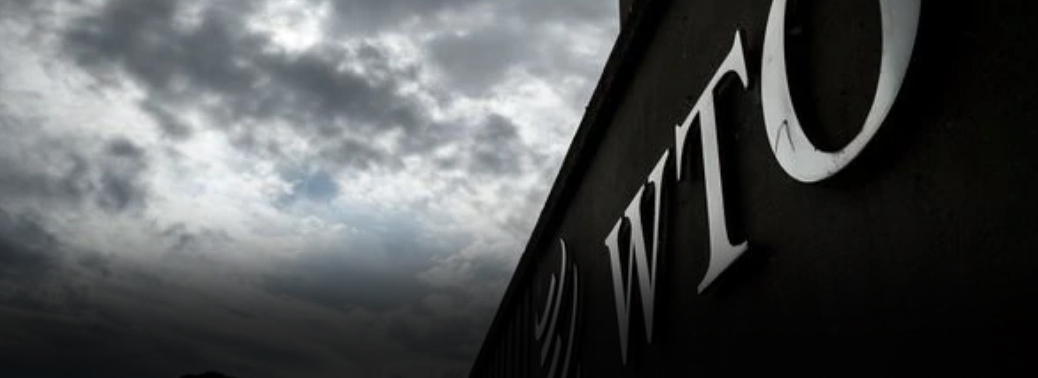
- Context- dispute settlement panel pronouncing that subsidies and mandatory local content requirements instituted by eight American states breached global trade rules.
- Panel upholds India’s claims that renewable energy subsidies in eight American states violated a core global trade rule.
- The renewable energy sector win may help India in settling other disputes with the US.
- The panel also asked the US to ensure that these states are in conformity with trade rules.
What India claims-
- India had claimed that the “domestic content requirements and subsidies instituted by the governments of the states of Washington, California, Montana, Massachusetts, Connecticut, Michigan, Delaware and Minnesota in the energy sector”
- violated several provisions of the Trade-Related Investment Measures (TRIMs) Agreement and Subsidies and Countervailing Measures Agreement.
- New Delhi had challenged the “renewable energy cost recovery incentive payment programme” implemented by the state of Washington, California’s self-generation incentive programme, Montana’s tax incentive for ethanol production, Michigan’s renewable energy credits programme, Delaware’s solar renewable energy credits and the Made in Minnesota renewable incentive programme.
WTO Panel:
- panel urged the US to bring the eight states in conformity with US obligations under Article III:4 of “national treatment”. Under the national treatment provision, foreign producers must be treated on a par with domestic producers.
Option for US:
- The US can still challenge the panel’s ruling before the Appellate Body (AB); however, the AB itself is feared to have become dysfunctional after 11 December because the US has been blocking appointments to it.
Implication:
- it would show the US and its federal states maintain WTO-inconsistent programmes in the renewable energy sector.
- it is a lesson to the US that it should not undermine renewable energy programmes in other countries such as India on grounds that they violate global trade rules when Washington and its federal states adopt much bigger programmes worth billions of dollars that violate global trade rules.
Background Issue:
- In 2014, the US had launched a similar trade dispute against India’s Jawaharlal Nehru Solar Energy Mission, on the grounds that it included incentives for domestically produced solar cells and modules. WTO’s Appellate Body had upheld the US complaint against India in that case.
General Agreement on Tariffs and Trade:
- The General Agreement on Tariffs and Trade was the first worldwide multilateral free trade agreement.
- The purpose of GATT was to eliminate harmful trade protectionism.
- It restored economic health to the world after the devastation of World War II.
Trade-Related Investment Measures (TRIMs):
- This Agreement, negotiated during the Uruguay Round, applies only to measures that affect trade in goods.
- Recognizing that certain investment measures can have trade-restrictive and distorting effects, it states that no Member shall apply a measure that is prohibited by the provisions of GATT Article III (national treatment) or Article XI (quantitative restrictions).
What is the WTO Appellate?
- The Appellate Body was established in 1995 under Article 17 of the Understanding on Rules and Procedures Governing the Settlement of Disputes (DSU).
- It is a standing body of seven persons that hears appeals from reports issued by Panels in disputes brought by WTO Members.
- The Appellate Body can uphold, modify or reverse the legal findings and conclusions of a panel, and Appellate Body Reports, once adopted by the Dispute Settlement Body (DSB), must be accepted by the parties to the dispute.
- The Appellate Body has its seat in Geneva, Switzerland.
- The Appellate Body is composed of seven Members who are appointed by the DSB to serve for four-year terms, with the possibility of being reappointed once.
- Without the statutorily mandated number of judges to hear cases (three or more), the trade will become non-functional for all practical purposes at the end of this year, if the U.S does not allow new nominees to go through.
AGRICULTURAL & PROCESSED FOOD PRODUCTS EXPORT DEVELOPMENT AUTHORITY (APEDA)
27, Jun 2019
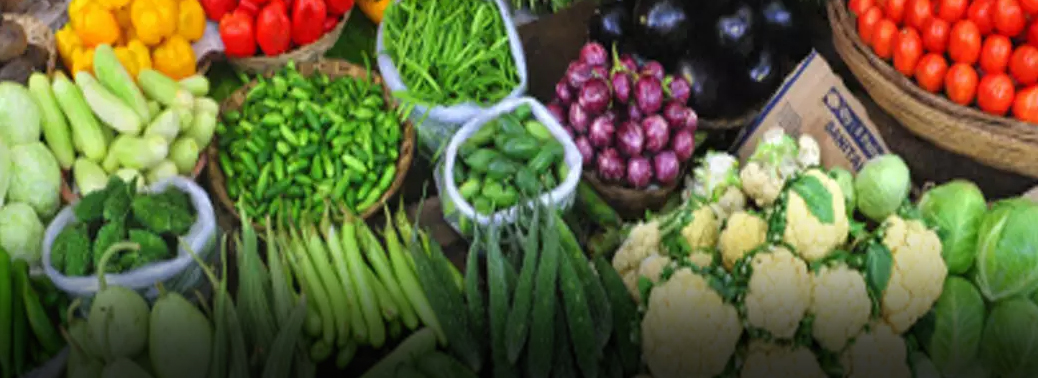
Why in News?
- Agricultural & Processed Food Products Export Development Authority (APEDA)in association with North Eastern Regional Agricultural Marketing Corporation (NERAMAC) organised the second Conference cum International Buyers-Sellers Meet in Imphal, Manipur.
APEDA:
- APEDA, under the Ministry of Commerce and Industries, promotes export of Agricultural and processed food products from India.
- To promote export of agricultural products from NER, APEDA has been organising various buyers- sellers meets to facilitate market linkages of the exporters with international buyers.
- The first international buyers – sellers meet for NER was organized by APEDA in Guwahati in March this year.
- APEDA is conducting regular promotional activities in the area of agriculture exports. It provides support to exporters to set up infrastructure like pack houses and cold storages.
- APEDA also helps exporters to exhibit their products in several national and international expos and exhibitions.
- The Imphal event of international buyers – sellers meet is part of the initiative of APEDA to bring the North-Eastern states of India on the export map of the country.
RBI DIRECT TO SAVE THE PAYMENTS DATA WITHIN INDIA.
27, Jun 2019
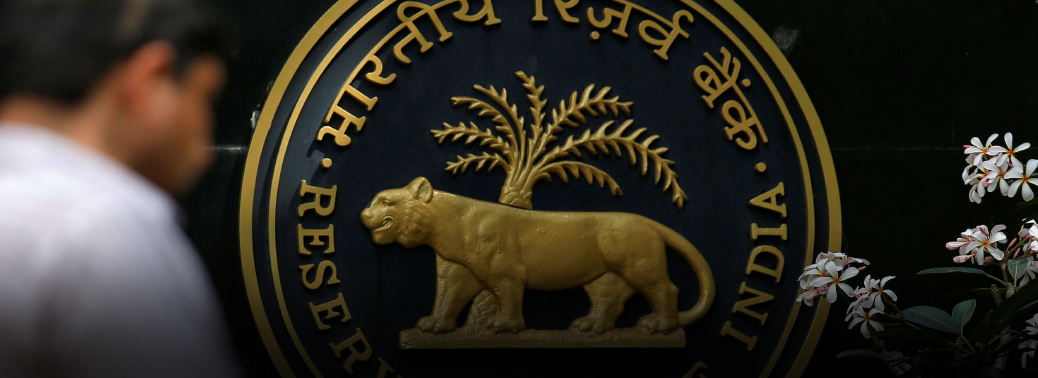
- The Reserve Bank of India (RBI) has clarified that payment system providers need to store entire payments data in a system only in India.
- The issue has come to the forefront because a global push for data free flow across national boundaries. Japanese Prime Minister Shinzo Abe has been a torch bearer for such a system.
- The risk of data going abroad is that it may fall into the hands of misuse that could lead to manipulations in the life of common man in India. Moreover, India being the second largest populated countries in the world, such data could lead to manipulations by big corporates.
- The data should include end-to-end transaction details and information pertaining to payment or settlement transaction that is gathered/transmitted/processed as part of a payment message/instruction.
- The data could be pertaining to customer data like name, mobile number, Aadhaar number, PAN; Payment-sensitive data like customer and beneficiary account details; payment credentials like OTP, PIN and, transaction data such as originating and destination system information amount, among others.
- The processing is done abroad, the data should be deleted from the systems abroad and brought back to India within one business day or 24 hours from the payment processing, whichever is earlier.
CENTRE EXPANDS TERMS OF REFERENCE OF DIRECT TAX LAW
27, Jun 2019

- The Central Board of Direct Taxes has expanded the terms of reference of the task force set up to come up with a new direct tax law.
- They include appropriate direct tax legislation keeping in view the direct tax litigation in other countries, international best standards, the economic needs of the country and other related issues.
- The new additions include the creation of a faceless and anonymized verification and security system, and the sharing of information between GST, customs and CBDT, and the Financial intelligence unit.
U.K SINHA COMMITTEE
26, Jun 2019
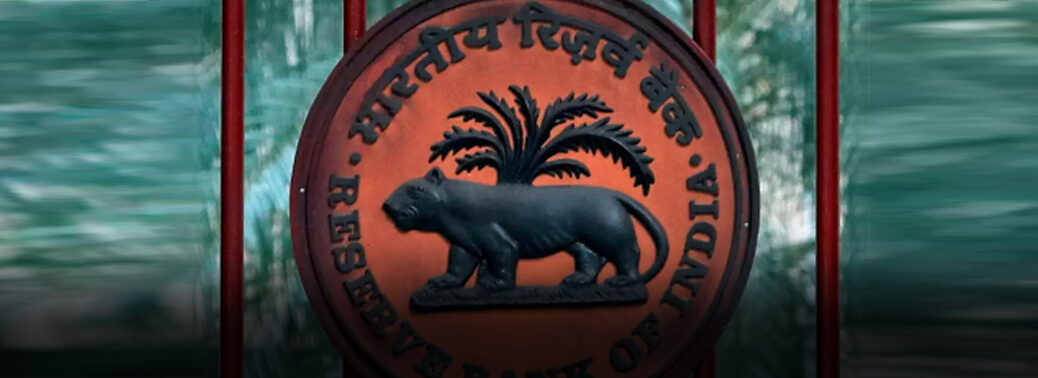
- The Reserve Bank of India (RBI) on January, 2019 set up an expert committee under former SEBI chairman U.K. Sinha to Suggest Long-Term Solutions for the economic and Financial Sustainability of the MSME sector.
Key Recommendations of the Committee:
- ₹5,000 crore stressed asset fund for domestic micro, small and medium enterprises (MSMEs) in a relief to small businesses hurt by demonetization, the goods and services tax and an ongoing liquidity crunch.
- Such a fund could work in tandem with RBI-mandated restructuring schemes or bank-led NPA revival solutions for MSMEs.
- The onus of creating this fund would lie with the government
- The committee also suggested forming a government-sponsored Fund of Funds of ₹10,000 crore to support venture capital and private equity firms investing in MSMEs.
- The RBI should increase the limit for non-collateralized loans to 20 lakhs.
- Revision in loan limit sanctioned under the MUDRA by the Finance Ministry to 20 lakhs from 10 lakhs.
- Banks that wish to specialize in MSME lending, their sub-targets for farm loans under the priority sector lender could be waived off, and instead can be given a target for loans to the SME sector.
- The targets, committee said, could be of 50% of the net bank credit for universal banks and 80% for small finance banks.
- Commercial banks have been suggested that they should develop customised products to assess the financing requirements based on expected cash flows moving away from traditional forms of assessment.
- Banks need to build their ability to capture cash flows of MSME borrowers on a regular basis, for which tie-ups with industry majors / aggregators / online platforms will have to be done by the banks
- In order to provide loan portability in a seamless manner to MSMEs, the committee recommended that the RBI should come out with measures on portability of MSME loans with a lock-in-period of one year.
CASH IN CIRCULATION HAS FALLEN
26, Jun 2019
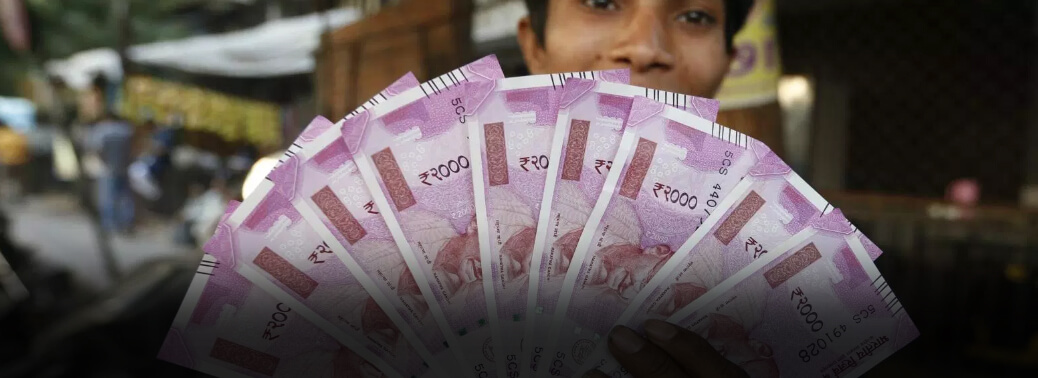
- Demonetisation, coupled with increased digital transactions and the reduced cash usage in the informal economy, led to a Reduction in Currency in Circulation by ₹3.4 lakh crore.
- The notes in circulation had been growing at an average annual growth rate of 14.51% since October 2014.
- Reserve Bank of India data shows that the number of counterfeit bank notes detected decreased from 762,072 pieces in 2016-17, to 522,783 in 2017-18 and 317,389 pieces in 2018-19 and hence “demonetisation resulted in curbing of the counterfeit currency”
- “Growth of digital transactions in terms of value has increased to ₹188.07 lakh crore in September 2018 from ₹112.27 lakh crore in November 2016. Digital transactions in terms of volume have increased to 241.88 crore in September 2018 from 91.83 crore.”
- Demonetisation led to a “significant positive impact on most theatres of violence” in the country since illegally held cash formed a major chunk of terror funding, and that the note ban rendered the cash held with terrorists worthless.
- “Demonetisation also resulted in better tax compliance, greater tax revenues, more formalization of economy and higher digital transactions.”
PROJECT MONITORING GROUP (PMG)
26, Jun 2019
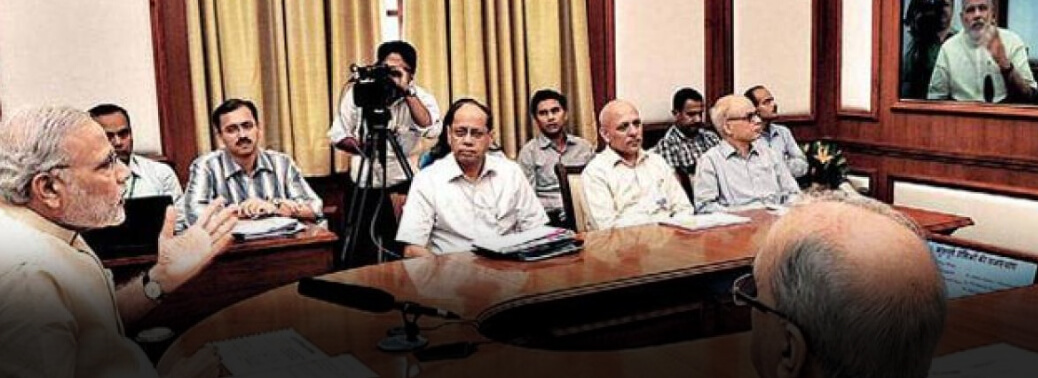
- Projects worth 11 lakh crore remain stalled or have issues under consideration. Railways, roads and Power sector accounting to more than half of these stalled projects.
- Project Monitoring Invest India Cell has resolved the issues surrounding 740 projects worth 30.5 lakh crore. However, 298 projects worth 10.98 lakh crore still have problems that are yet to be resolved.
- What is PMIC?
- The Project Monitoring Group (PMG) was set up in 2013 under Cabinet Secretariat.
- It is an institutional mechanism for resolving a variety of issues including fast tracking the approvals for setting up and expeditious commissioning of large Public, Private and Public–Private Partnership (PPP) Projects.
- PMG is now functioning under Prime Minister’s Office (PMO) since 14.09.2015.
- The projects considered by PMG mainly pertain to sectors such as:
- National Highways and Railways
- Civil Aviation and Shipping
- Petroleum & Natural Gas
- Chemicals & Fertilizers
- Coal, Power and Mines
- Cement, Construction and Steel
- PMG in association with ‘Invest India’, the agency dedicated to promotion of foreign Investment in India, also helps foreign investors intending to make large investments in India by facilitating approvals/clearances and providing them necessary support during implementation of projects
- PMG monitors digitization of Union and State level clearance processes including reengineering of such processes, wherever required for simplification and investment promotion.
ONLINE PORTAL FOR FILING COMPLAINTS
25, Jun 2019

- The Reserve Bank of India, launched a ‘Complaint Management System (CMS)’, which will enable members of the public to lodge their complaints on its website against any of the regulated entities with public interface such as commercial banks, urban co-operative banks, and non-banking financial companies, among others.
- The system will be accessible on desktop as well as on mobile devices.
- Provides features such as acknowledgement through SMS/e-mail notification(s), status tracking through unique registration number, receipt of closure advises, and filing of appeals, where applicable.
- It also solicits voluntary feedback on the customer’s experience.
- Insights from the data available from CMS can, for example, be used by banks/FSPs for designing products, which meet the expectations of their customers.
- Data from CMS can be leveraged by the RBI for analytics, which can be used for regulatory and supervisory interventions, if required.
- Various dashboards provided in the application will help the central bank effectively track the progress in redressal of complaints.
- With the launch of the CMS, the processing of complaints received at the offices of the Ombudsman and Consumer Education and Protection Cells (CEPCs) of the RBI has been digitalised.
RESERVE BANK OF INDIA (RBI)
25, Jun 2019
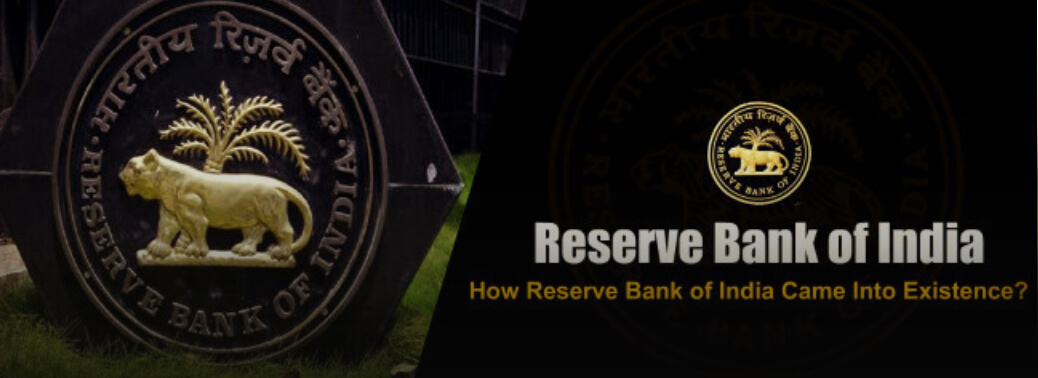
Context
- Viral Acharya’s resignation as Deputy Governor of the Reserve Bank of India
About:
- The Reserve Bank of India was established on April 1, 1935 in accordance with the provisions of the Reserve Bank of India Act, 1934.
- Though originally privately owned, since nationalisation in 1949, the Reserve Bank is fully owned by the Government of India.
Composition:
Central Board
- The Reserve Bank’s affairs are governed by a central board of directors. The board is appointed by the Government of India in keeping with the Reserve Bank of India Act.
- Appointed/nominated for a period of four years
Constitution:
Official Directors
- Full-Time: Governor and not more than four Deputy Governors
Non-Official Directors
- Nominated by Government: ten Directors from various fields and two government Official
- Others: four Directors – one each from four local boards
Functions:
Monetary Authority:
- Formulates, implements and monitors the monetary policy.
- Objective: maintaining price stability while keeping in mind the objective of growth.
Regulator and supervisor of the financial system:
- Prescribes broad parameters of banking operations within which the country’s banking and financial system functions.
- Objective: maintain public confidence in the system, protect depositors’ interest and provide cost-effective banking services to the public.
Manager of Foreign Exchange
- Manages the Foreign Exchange Management Act, 1999.
- Objective: To facilitate external trade and payment and promote orderly development and maintenance of foreign exchange market in India.
Issuer of currency:
- Issues and exchanges or destroys currency and coins not fit for circulation.
- Objective: to give the public adequate quantity of supplies of currency notes and coins and in good quality.
Developmental Role:
- Performs a wide range of promotional functions to support national objectives.
Regulator and Supervisor of Payment and Settlement Systems:
- Introduces and upgrades safe and efficient modes of payment systems in the country to meet the requirements of the public at large.
- Objective: maintain public confidence in payment and settlement system.
Related Functions
- Banker to the Government: performs merchant banking function for the central and the state governments; also acts as their banker.
- Banker to Banks: maintains banking accounts of all scheduled banks.
Establishment of ‘gokul grams’ under Rashtriya Gokul Mission
24, Jun 2019

Why in News?
- Funds have been mobilized under Rashtriya Gokul Mission (RGM) for setting up of 21 Gokul Grams as Integrated Cattle Development Centres.
Rashtriya Gokul Mission:
- The RGM has been launched by the Government for conservation and development of indigenous breeds in a focused and scientific manner.
- The mission envisages establishment of integrated cattle development centres „Gokul
- Grams to develop indigenous breeds including upto 40% nondescript breeds.
- Rashtriya Gokul Mission is a focussed project under National Programme for Bovine Breeding and Dairy Development, with an outlay of Rs 500 crore during for three years from 2014-15 to 2016-17.
Objectives:
- Development and conservation of indigenous breeds
- Breed improvement programme for indigenous cattle breeds to improve their genetic makeup and increase the stock; Enhancement of milk production and productivity;
- Upgradation of nondescript cattle using elite indigenous breeds like Gir, Sahiwal, Rathi, Deoni, Tharparkar, Red Sindhi and Distribution of disease free high genetic merit bulls for natural service.
Implementing Agency:
- Rashtriya Gokul Mission is being implemented through “State Implementing Agencies (SIA) viz Livestock Development Boards.
- All Agencies having a role in indigenous cattle development are “Participating Agencies” like CFSPTI, CCBFs, ICAR, Universities, Colleges, NGO‟s, Cooperative Societies.
Gokul Gram:
- These are Indigenous Cattle Centres and will act as Centres for development of Indigenous Breeds.
- They’ll be established- a) in native breeding tracts and b) near metropolitan cities for housing the urban cattle.
- A dependable source for supply of high genetic breeding stock to the farmers in the breeding tract.
- Self-sustaining and will generate economic resources from sale of milk, organic manure, vermi-composting, urine distillates, and production of electricity from bio gas for in house consumption and sale of animal products.
- Also function as state of the art in situ training centre for Farmers, Breeder.
Technological Intervention in Agriculture
24, Jun 2019
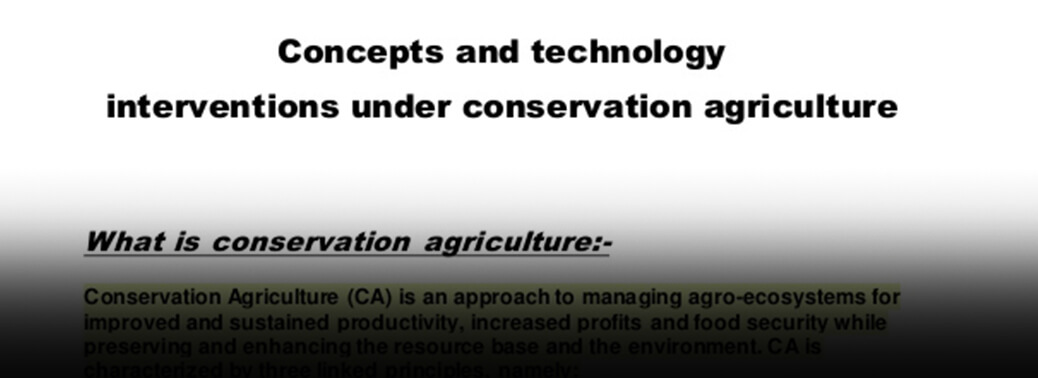
- Kisan Suvidha Mobile Application: To facilitate dissemination of information to farmers on the critical parameters viz., Weather; Market Prices; Plant Protection; input Dealers (Seed, Pesticide, Fertilizer) Farm Machinery; Soil Health Card; Cold Storages & Godowns, Veterinary Centres and Diagnostic Labs.
- Indian Council of Agriculture Research (ICAR) Mobile Apps: It has compiled more than 100 mobile apps developed by ICAR, State Agricultural Universities and Krishi Vigyan Kendras. These mobile apps developed in the areas of crops, horticulture, veterinary, dairy, poultry, fisheries, natural resources management and integrated subjects, offer valuable information to the farmers, including package of practices, market prices of various commodities, weather related information, advisory services, etc.
- Development of mKisan Portal for sending advisories on various crop related matter to the registered farmers through SMSs.
- Launching of e-National Agriculture Market initiative to provide farmers an electronic online trading platform.
- Implementation of Agricultural Marketing Infrastructure, sub-scheme of Integrated Scheme of Agricultural Marketing, in order to improve/create scientific storage capacity for storing farm produce, processed farm produce and to reduce post-harvest storage loss. Introduction of Soil Health Card Scheme to assist State Governments in providing Soil Health Cards to all farmers across the country once in a cycle of 2 years Soil health card provides information to the farmers on nutrient status of their soil along with recommendations on appropriate dosage of nutrients to be applied for improving crop productivity and soil fertility.
- Providing subsidies under National Food Security Mission (Oil Seeds and Oil Palm) to farmers on seed components, transfer of technologies, production inputs and water carrying devices. Financial assistance is also being provided under this scheme for block demonstration, frontline demonstration, farmers training to educate farmers to adopt modern techniques of farming to yield good crop economically.
- Use of space technology for various programmes/ areas such as Forecasting Agricultural Output using Space, Agro-meteorology and Land-based Observations project, Coordinated programme on Horticulture Assessment and Management using geo- informatics project, National Agricultural Drought Assessment and Monitoring System, Rice-Fallow Area Mapping and intensification, geo tagging of infrastructure and assets created under Rashtriya Krishi Vikas Yojana, and Crop Insurance.
- Using machine learning process along with different computer algorithm for crop classification and area estimation.
Organic Farming in India
24, Jun 2019
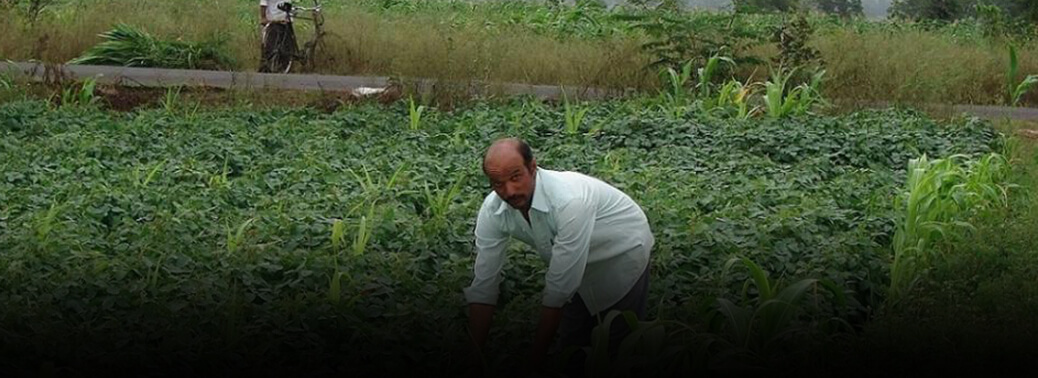
Why in News?
- Government of India has been promoting organic farming under two dedicated schemes namely Mission Organic Value Chain Development North Eastern Region (MOVCDNER) and Parampragat Krishi Vikas Yojana (PKVY) since 2015 through State Governments.
Organic Farming in India:
- Under these schemes, support has been provided for formation of farmers’ clusters/ Farmer Producer Organisation; incentives to farmers for input procurement, value addition including post-harvest infrastructure creation, packaging, branding, publicity, transportation, organic fairs etc..
- Organic Farming has also been supported under other schemes viz Rashtriya Krishi Vikas Yojana (RKVY) and Mission for Integrated Development of Horticulture (MIDH), Network Project on Organic Farming under ICAR.
- Third party certification of organic farming is promoted by Agriculture Processed Food and Export Development Authority (APEDA), Ministry of Commerce.
Mission Organic Value Chain Development for North East Region:
- Mission Organic Value Chain Development for North East Region (MOVCD-NER) is a Central Sector Scheme, a sub-mission under National Mission for Sustainable Agriculture (NMSA), launched by the Ministry of Agriculture and Farmers Welfare for implementation in the states of Arunachal Pradesh, Assam, Manipur, Meghalaya, Mizoram, Nagaland, Sikkim and Tripura, during the 12th plan period.
- The scheme aims development of certified organic production in a value chain mode to link growers with consumers and to support the development of entire value chain starting from inputs, seeds, certification, to the creation of facilities for collection, aggregation, processing, marketing and brand building initiative.
Paramparagat Krishi Vikas Yojana:
- Paramparagat Krishi Vikas Yojana is an elaborated component of Soil Health Management (SHM) of major project National Mission of Sustainable Agriculture (NMSA).
- Under PKVY Organic farming is promoted through adoption of organic village by cluster approach and PGS certification.
Scheme Envisages:
- Promotion of commercial organic production through certified organic farming.
- The produce will be pesticide residue free and will contribute to improve the health of consumer.
- It will raise farmer’s income and create potential market for traders.
- It will motivate the farmers for natural resource mobilization for input production.
35,000 KM Highways to be built by 2022
23, Jun 2019

- The government will build 35,000 km of highways, besides expressways, by 2022.
- Under the ‘Bharatmala Project’, construction or upgradation of about 35,000 kilometres of National Highways is to be undertaken by 2022.
- In addition, under the ‘Sagarmala Project’, a network of good-quality roads is being constructed in coastal areas and areas adjoining ports.
Government to extend foreign currency loans to Exporters
23, Jun 2019
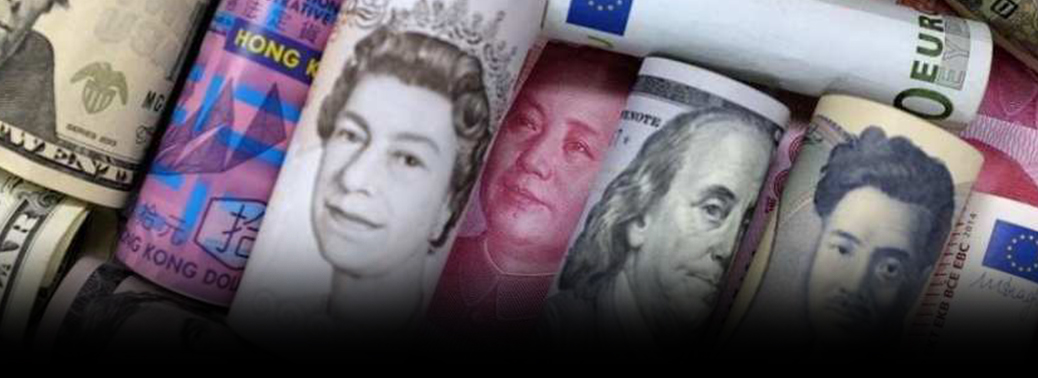
- India is a net importer of commodities.
- This impacts India’s balance of payments, hence the country needs to strengthen its exports. In order to boost exports, the government has subsidized several trade related issues. However, such steps have been inadequate. Moreover, they have burdened the exchequer.
- Hence the government now plans to enhance foreign currency loans by working with bankers. The government has decided to enhance the role of Export Credit Guarantee Corporation of India as an agency for exporters.
What is Export Credit Guarantee Corporation of India?
- ECGC Ltd. (Formerly known as Export Credit Guarantee Corporation of India Ltd.) wholly owned by Government of India, was set up in 1957.
- It was set up with the objective of promoting exports from the country by providing credit risk insurance and related services for exports.
- ECGC is essentially an export promotion organization, seeking to improve the competitiveness of the Indian exports by providing them with credit insurance covers.
- The Corporation has introduced various export credit insurance schemes to meet the requirements of commercial banks extending export credit. The insurance covers enable the banks to extend timely and adequate export credit facilities to the exporters.
ECGC Provides:
- A range of insurance covers to Indian exporters against the risk of non – realization of export proceeds due to commercial or political risks
- Different types of credit insurance covers to banks and other financial institutions to enable them to extend credit facilities to exporters and
- Export Factoring facility for MSME sector which is a package of financial products consisting of working capital financing, credit risk protection, maintenance of sales ledger and collection of export receivables from the buyer located in overseas
INTER CREDITOR AGREEMENT (ICA)
20, Jun 2019

Why in News:
- The Indian Banks’ Association has tweaked the inter-creditor agreement (ICA) that was framed by the Sashakt Committee, to keep it in line with the revised guidelines of the Reserve Bank of India (RBI) on stressed assets resolution.
Details:
- The revised norm had mandated that if there was a default by any lender, all lenders should review the borrower account within 30 days of the default, which is termed ‘review period’, and to chalk out a resolution plan. It has been made mandatory for all the lenders to enter into an ICA within the review period.
- RBI had said ICA must “provide that any decision agreed to by lenders representing 75% by value of total outstanding credit facilities and 60% of lenders by number shall be binding upon all the lenders.”
- As many as 36 banks and financial institutions had endorsed the Sashakt Committee recommendations.
- The revised ICA has been circulated by the IBA to the member banks and financial institutions.
ICA:
- The agreement is part of the proposed Project Sashakt.
- The objective is to use this ICA for faster facilitation of resolution of stressed assets.
- It is aimed at the resolution of loan accounts with a size of Rs. 50 crore and above that are under the control of a group of lenders.
FINANCIAL STABILITY AND DEVELOPMENT COUNCIL (FSDC)
20, Jun 2019
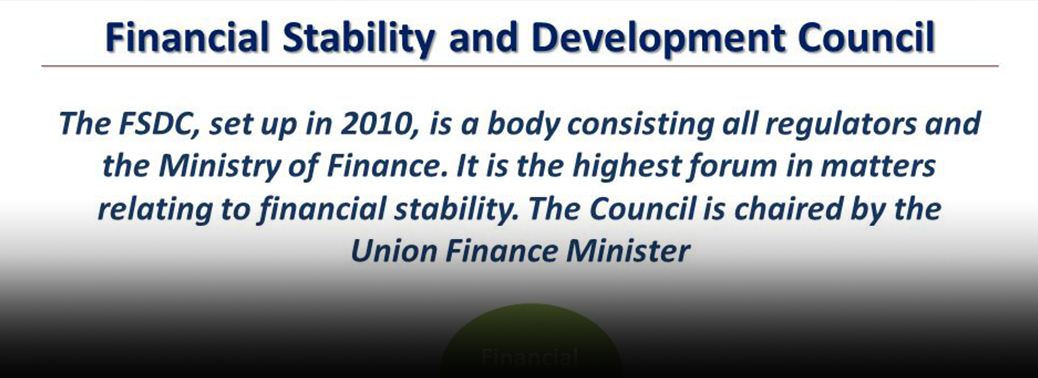
Why in News:
- Union Minister of Finance and Corporate Affairs chaired the 20th Meeting of the Financial Stability and Development Council.
FSDC:
- Financial Stability and Development Council (FSDC), an autonomous body dealing with macroprudential and financial regularities in the entire financial sector of India. Financial Stability and Development Council is an apex-level body constituted by the Government of India.The apex-level FSDC is not a statutory body.
20th Meeting:
- The Meeting reviewed the current global and domestic economic situation and financial stability issues including, inter-alia, those concerning Banking and NBFCs.
- The Council was also apprised of the progress made towards setting-up of the Financial Data Management Centre (FDMC) to facilitate integrated data aggregation and analysis as also a Computer Emergency Response Team (CERT-Fin) towards strengthening the cyber security framework for the financial sector.
- The Council also held consultations to obtain inputs/ suggestions of the financial sector regulators for the Budget.
- The Council also took note of the activities undertaken by the FSDC Sub-Committee Chaired by Governor, RBI and the action taken by Members on the decisions taken in earlier Meetings of the Council.
RECIPROCAL TRADE
20, Jun 2019
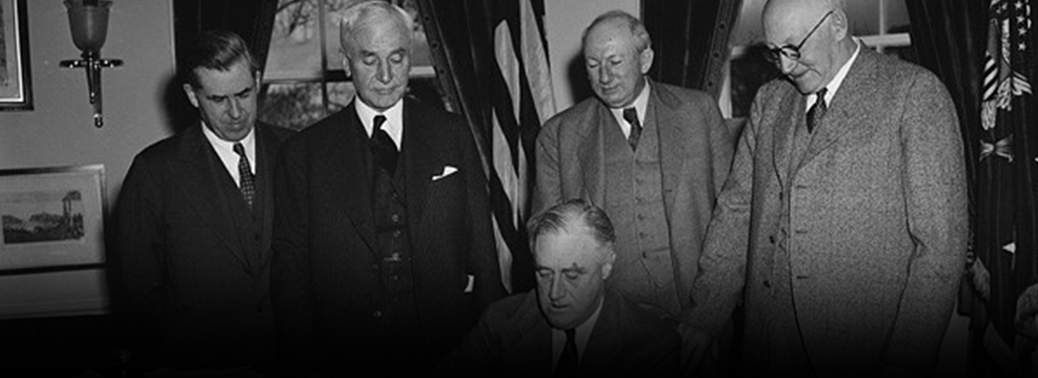
Why in News:
- The State Department of US reacted to India’s announcement of retaliatory tariffs on certain U.S. imports reiterating President Trump’s message of reciprocal trade and the strength of U.S.-India ties.
What is Reciprocal Trade:
- Reciprocal trade is an agreement between two countries which provide for the exchange of goods between them at lower tariffs and better terms than that exist between one of the countries and other countries.
Details:
- The U.S.-India partnership stands upon a shared commitment to democratic values and the rule of law. The United States is India’s top market for exports and U.S. companies see great opportunity in India.”
U.S. continued to raise market access concerns with India.
- Among the challenges in the Indo-U.S. relationship, are the U.S.’s preferential trade access system, the Generalized System of Preferences (India was recently taken off the beneficiary list), 5G network infrastructure, and data localisation.
- The U.S. is also concerned about India’s policies with respect to data portability across borders that has become one of the areas of disagreement in trade discussions.
FDI IN MULTI-BRAND RETAIL
20, Jun 2019
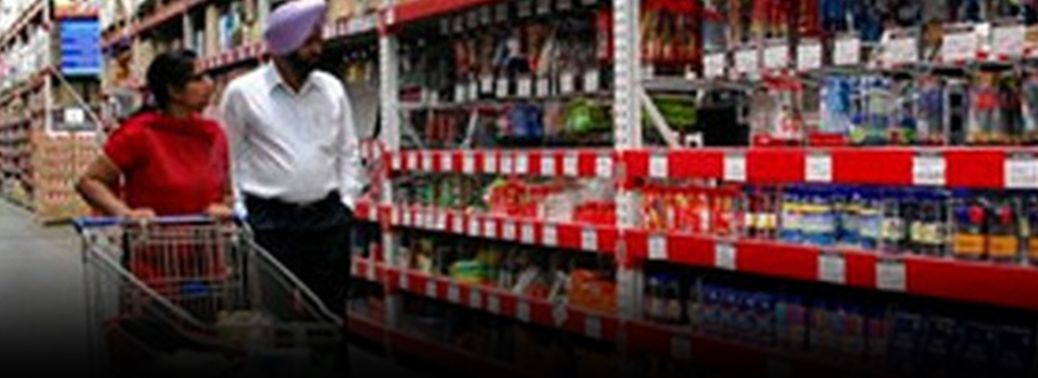
Why in News:
- Commerce Minister reiterated that the central government will not allow foreign direct investment in multi-brand retail, and also assured small traders predatory pricing by multinationals would not be allowed.
Details:
- On the pretext of B2B, no entry will be allowed for multi-brand retail.
- Predatory pricing will not be allowed and necessary action will be taken against defaulters.
- Representatives of the associations of kirana stores had raised the issues of the need for a level playing-field and the adverse impact of anti-competitive practices such as predatory prices by foreign companies.
- Commerce minister urged small retailers to make use of modern technology and avail benefits of Government of India schemes like MUDRA to improve their business, spruce up their shops, improve stocks by storing high quality products and pass on the benefits to people employed by them
- The Confederation of All India Traders (CAIT) submitted a memorandum demanding that the same restrictions and conditions imposed on global e-commerce players be made applicable to domestic e-commerce companies also.
Multi -Brand Retail:
- Multi-brand retail is a concept when a store or a portal or any other form of outlet sells more than one brand.
Predatory Pricing:
- Predatory pricing, also known as undercutting, is a pricing strategy in which a product or service is set at a very low price with the intention to achieve new customers, or driving competitors out of the market or to create barriers to entry for potential new competitors.
Mudra:
- Pradhan Mantri Mudra Yojana (PMMY)is a flagship scheme of Government of India to “fund the unfunded” by bringing such enterprises to the formal financial system and extending affordable credit to them. It enables a small borrower to borrow from all Public Sector Banks or loans upto Rs 10 lakhs for non-farm income generating activities.
Pradhan Mantri Kisan Samman Nidhi (PM-KISAN)
19, Jun 2019

Objective:
- With a view to Augment the Income of the Small and Marginal Farmers (SMFs), the Government has launched a new Central Sector Scheme, namely, “Pradhan Mantri Kisan Samman Nidhi (PM-KISAN)” in the current financial year.
- The PM-KISAN scheme aims to supplement the financial needs of the SMFs in Procuring Various Inputs to ensure proper Crop Health and appropriate yields, commensurate with the anticipated farm income at the end of each crop cycle.
- This would also Protect them from Falling in The Clutches of Moneylenders for meeting such expenses and ensure their continuance in the farming activities
Definition of Families:
- The SMFs landholder farmer family is defined as “a family comprising of husband, wife and minor children who collectively own cultivable land upto 2 hectare as per land records of the concerned State/UT”
Fund:
- Financial year 2018-19, a budget provision of Rs. 20,000 crores has been kept.
Benefit to Eligible SMFs:
- Under the Scheme, a Direct Payment of Rs. 6000 per year will be transferred in three equal instalments of Rs. 2000 Every Four Months into the Aadhar ceded bank accounts of eligible landholding SMFs families.
Monitoring of the Scheme:
- For effective review and monitoring of the scheme, a Project Monitoring Unit (PMU) at Central level will be set up in DAC & FW.
Data Localisation
19, Jun 2019

Context:
- RBI last year mandated companies to store their payments data “only in India” so that the regulator could have “unfettered supervisory access”.
- The RBI will examine concerns around its strict data localisation rules that require storing of customer data exclusively in India without creating mirror sites overseas.
What is Data Localisation:
- Data localisation laws refer to regulations that dictate how data on a nation’s citizens is collected, processed and stored inside the country.
Significance of Data Localisation:
- Data localisation is critical for law enforcement.
- Access to data by Indian law agencies, in case of a breach or threat, cannot be dependent on the whims and fancies, nor on lengthy legal processes of another nation that hosts data generated in India.
What India can do:
- It may not be wise for India to have the liberal rules as developed nation.
Legislation backup:
- Only Mandatory rule on data localisation in India is by the Reserve Bank of India for payment systems. Justice Sri krishna Committee report – to identify key data protection issues in India and recommend methods of addressing them”.
Libra Facebook Cryptocurrency
19, Jun 2019

Context:
- Facebook has linked with 28 partners in a Geneva-based entity called the Libra Association, which will govern its new digital coin set to launch in the first half of 2020.
- Facebook has also created a subsidiary called Calibra, which will offer digital wallets to save, send and spend Libras.
- Calibra will be connected to Facebook’s messaging platforms Messenger and WhatsApp.
- Calibra will conduct compliance checks on customers who want to use Libra, using verification and anti-fraud processes that are common among banks.
- Libra is a global currency and financial infrastructure.
- it is a digital asset built by Facebook and powered by a new Facebook-created version of blockchain, the encrypted technology used by bitcoin and other cryptocurrencies.
Why Libra?
- Facebook claims it wants to reach the 1.7 billion people around the world who do not have access to a Bank Account.
Authority Incharge:
- The Libra Association is described by Facebook as an independent, not-for-profit organisation based in Switzerland.
- It serves two main functions:
-
- To Validate Transactions on the Libra blockchain and
- To Manage the Reserve Libra is tied to and allocate funds to social
- It functions as what is known as a “Stablecoin”, pegged to existing assets like the dollar or euro, in the aim of making it less subject to the volatility that many Cryptocurrencies Experience.
What is a Cryptocurrency?
- A cryptocurrency is a digital or virtual currency that uses cryptography for security.
Advantages:
- A cryptocurrency is Difficult to Counterfeit because of the security feature of blockchain technology.
- It is not issued by any central authority, rendering it theoretically immune to government interference or manipulation.
- Cryptocurrencies hold the promise of making it easier to transfer funds directly between two parties in a transaction, without the need for a trusted third party such as a bank or credit card company; these transfers are facilitated through the use of public keys and private keys for security purposes.
- Fund transfers are done with minimal processing fees, allowing users to avoid the steep fees charged by most banks and financial institutions for wire transfers.
- At the same time, there is no central authority, government, or corporation that has access to your funds or your personal information.
Disadvantages:
- The Semi-Anonymous Nature of Cryptocurrency Transactions makes them well- suited for a host of nefarious activities, such as money laundering and tax evasion.
- Since prices are based on supply and demand, the rate at which a cryptocurrency can be exchanged for another currency can fluctuate widely.
- The first cryptocurrency to capture the public imagination was Bitcoin, which was launched in 2009 by an individual or group known under the pseudonym, Satoshi Nakamoto.
- Bitcoin’s success has spawned a number of competing cryptocurrencies, known as “Altcoins” such as Litecoin, Namecoin and Peercoin, as well as Ethereum, EOS, and Cardano.
Cryptocurrency in India:
- RBI does not recognize any sort of Cryptocurrency as legal tender.
- The Reserve Bank has explicitly said that “entities regulated by RBI shall not deal with or provide services to any individual or business entities dealing with or settling VCs”.
SHADOW BANKING SYSTEM
18, Jun 2019
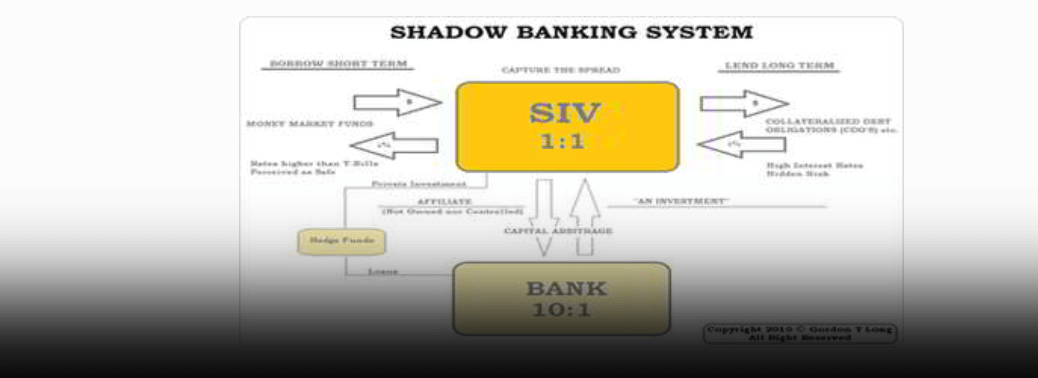
- A shadow banking system is the group of financial intermediaries facilitating the creation of credit across the global financial system but whose members are not subject to regulatory oversight. The shadow banking system also refers to unregulated activities by regulated institutions. The shadow banking system consists of lenders, brokers, and other credit intermediaries who fall outside the realm of traditional regulated banking. These include investment banks, mortgage lenders, money market funds, insurance companies, hedge funds, private equity funds and payday lenders, all of which are a significant and growing source of credit in the economy.
- One of the leading factors that caused the financial crisis of 2007 was the risk taking and failure of shadow banks in the advanced countries.
- In India, the NBFCs are sometimes categorized as the shadow banking sector, though they are well regulated now. In the context of the developing countries, the shadow banking sector plays an important role in promoting financial inclusion. They are very customer friendly, market oriented, innovative and flexible.
- The main advantages of shadow banks lie in their ability to reduce transaction costs, their quick decision-making ability, and customer orientation and prompt delivery of services.
- New Directive under IT Act, 1961. Issued by Central Board of Direct Taxes, under“Compounding of Offences Under Direct Tax Laws, 2019”.
- A person cannot get any sort of relief in an Income Tax evasion offence, if he/she indulges in serious criminal cases of money laundering, terror financing, corruption, possession of benami properties and undisclosed foreign assets.
FOREIGN PORTFOLIO INVESTMENT
18, Jun 2019

- Foreign portfolio investment (FPI) consists of securities and other financial assets held by investors in another country.
- It does not provide the investor with direct ownership of a company’s assets.
- FPI involves the making and holding of a hands-off—or passive—investment of securities, done with the expectation of earning a return.
- Investments can be in Indian securities including shares, government bonds, corporate bonds, convertible securities, infrastructure securities etc.
- NRIs doesn’t comes under FPI.
- It is included in the Capital Account in India.
New Income Tax Rules With Revised Guidelines
18, Jun 2019
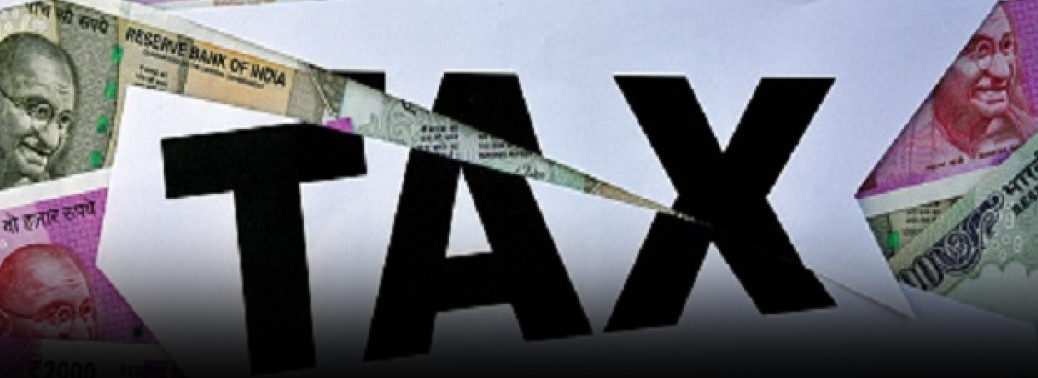
Why in News?
- Revised guidelines of Income Tax and to make strict decision against tax invaders new Income Tax guidelines has came into effect from, June 17, 2019.
- These revised guidelines issued by the Income Tax (IT) Department are for those who have made serious offences under black money and benami laws.
Highlights:
- The Central Board of Direct Taxes (CBDT), the apex direct tax policy making body, said in the new guidelines that any offence connected to undisclosed foreign bank account or assets in any manner cannot be compounded.
- India had introduced the Black Money (Undisclosed Foreign Income and Assets) and Imposition of Tax Act in 2015 to curb unaccounted wealth kept abroad and to impose tax and penalty on such wealth.
- CBDT also said in the new guidelines that offences linked to any wrongdoing covered under the Benami Transactions (Prohibition) Act 1988 are also not compoundable.
- As per the new rules, a full tax rebate applies for individual taxpayers with a net annual income up to Rs 5 lakh. This means that the income limit eligible to avail tax rebate under Section 87A of the Income Tax Act has been increased from the earlier limit of Rs 3.5 lakh to Rs 5 lakh.
CBDT:
- The Central Board of Direct Taxes (CBDT) is a part of Department of Revenue in the Ministry of Finance.
- The CBDT provides inputs for policy and planning of direct taxes in India, and is also responsible for administration of direct tax laws through the IT Department.
- The CBDT is a Statutory Authority functioning under the Central Board of Revenue Act, 1963. The officials of the Board in their ex officio capacity also function as a division of the Ministry dealing with matters relating to levy and collection of direct taxes.
- The CBDT is headed by Chairman and also comprises six members, all of whom are ex officio Special Secretary to the Government of India.
FOOD PROCESSING INDUSTRY
18, Jun 2019
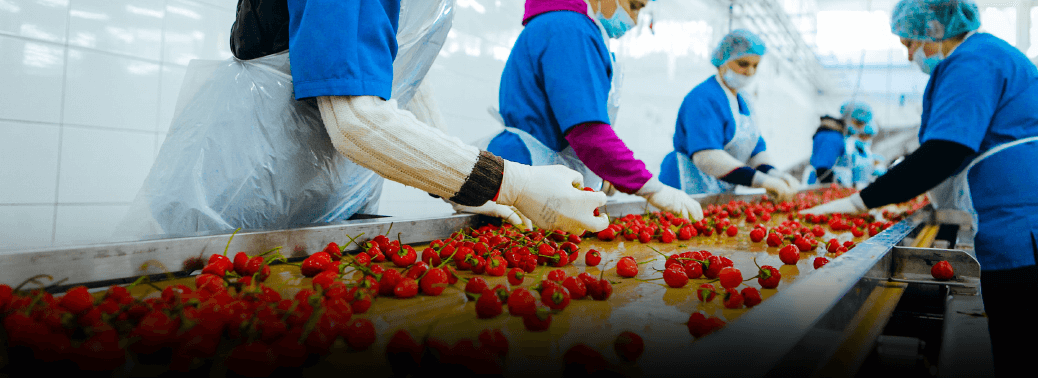
Context:
- World Food India 2019 will be the biggest gathering of all global and domestic stakeholders in Food Processing Sector.
World Food India:
- The government initiated biennial event- World Food India to promote food processing sector at global level.
- WFI 2019 will be held from 1-4th November 2019 in New Delhi and will position India as Food Processing Destination of the World.
- The tagline of the event will be “Forging Partnerships for Growth”.
Why there is need to focus on Food Processing Industry:
- India produces more fruits & vegetables in comparison to food grains. There is huge loss of Fruits and Vegetable due to perishable nature of it.
- As per APEDA (Agricultural and Processed Food Products Export Development Authority), India loses Rs. 13,000 to 15,000 Crore every year on waste of fruits and vegetables.
- Non availibity of Storage facility is issue, only 2% of the perishable produce has that Facility.
Scope for Food Processing Industry:
- Due to Increase in Standard living of people– there is demand for quality food , Packed food.
- Packaging increases shelf life of food.
- farmers also shifting production towards horticultural crops to cash in on growing demand of packaged food.
- food, it can be customized to suit the nutritional requirements of groups such as the elderly, pregnant women, infants, young children and athletes.
- Food processing industry is sun rise industry.
- Indian Food Processing Industry has grown tremendously recording 11% growth rate, which is twice the pace of Global Industry.
Global Market:
- Global Food processing industry market valued around USD 3.4 trillion.
- Only 6 percent of processed foods are traded across borders compared to 16 percent of major bulk agricultural commodities.
- There is room for India to capture this space in international market.
Issues in Food Processing Industry:
- Productivity of Food product is quite low compared to international standard. Supply Chain Issue – Backward and Forward Linkage Gap.
- Certification infrastructure gap.
Government Initiative:
- The Scheme of Mega Food Park aims at providing a mechanism to link agricultural production to the market by bringing together farmers, processors and retailers so as to ensure maximizing value addition, minimizing wastage, increasing farmers income and creating employment opportunities particularly in rural sector.
BHARATMALA PROJECT
17, Jun 2019
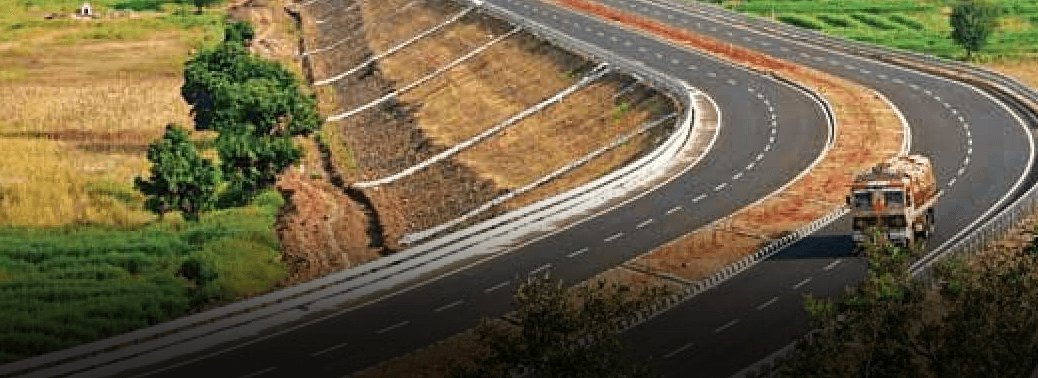
Why in News?
- Bharatmala is a name given to road and highways project of Government of India.
Highlights:
- The total investment for the Bharatmala plan is estimated at Rs10 trillion, which is the largest ever outlay for a government road construction scheme.
- Bharat Mala will provide easier access to border areas for armed forces and boost trade via the land route.
- Roads will be built along borders with Bhutan and Nepal.
- Road connectivity to small industries will be ensured and manufacturing centres will be connected with national highways.
- The project will be executed through Ministry of Road, Transport and Highways (MoRTH), NHAI, National Highways and Infrastructure Development Corporation Limited (NHIDCL) and State Public Works Department (PWDs). Bharatmala is the largest highways project after the National Highways Development Programme.
KIMBERLEY PROCESS
17, Jun 2019

Why in News?
Intersessional meeting of the Kimberley Process (KP) is being hosted by India in Mumbai.
Highlights:
- India is currently the Chair of Kimberley Process Certification Scheme (KPCS) since 1st January 2018. It was handed Chairmanship by the European Union during KPCS Plenary 2018, which was held in Brussels, Belgium.
- India is founding member of KPCS.
Kimberley Process:
- The Kimberley Process is an international certification scheme that regulates trade in rough diamonds. It aims to prevent the flow of conflict diamonds, while helping to protect legitimate trade in rough diamonds.
- The Kimberley Process Certification Scheme (KPCS) outlines the rules that govern the trade in rough diamonds.
- The KP is not, strictly speaking, an international organisation: it has no permanent offices or permanent staff. It relies on the contributions – under the principle of ‘burden-sharing’ of participants, supported by industry and civil society observers.
- Neither can the KP be considered as an international agreement from a legal perspective, as it is implemented through the national legislations of its participants.
Kimberley Process Certification Scheme:
- The Kimberley Process Certification Scheme (KPCS) imposes extensive requirements on its members to enable them to certify shipments of rough diamonds as ‘conflict-free’ and prevent conflict diamonds from entering the legitimate trade.
- Under the terms of the KPCS, participating states must put in place national legislation and institutions; export, import and internal controls; and also commit to transparency and the exchange of statistical data.
- Participants can only legally trade with other participants who have also met the minimum requirements of the scheme, and international shipments of rough diamonds must be accompanied by a KP certificate guaranteeing that they are conflict-free.
NATIONAL SMALL SAVINGS FUND
17, Jun 2019

It has been established under Public Account of India since 1st April 1999. It Comprises of
- Postal Deposits
- Savings Certificates and Kissan Vikas Patra
- Social Security Schemes such as PPF and Senior Citizens Savings
Although it reflects a borrowing mechanism, its transactions are not included in the fiscal deficit of the government. The balance in the fund is invested in Central and State Government securities.
INDIAN ECONOMY
17, Jun 2019
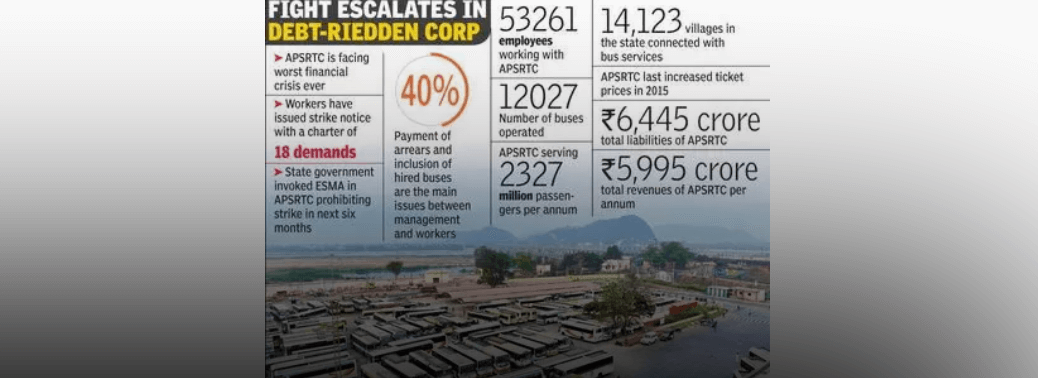
- What are Debt Instruments?
- They are either paper or electronic obligations that allows the issuing party to raise funds by promising to repay the lender in the terms of the contract.
- E.g. Bonds, debentures, certificates etc.
Dwindling automobile sales market in India Since Nov 2018:
- The major reason for such a downfall in the market is the reduction in the private consumption expenditure.
What is Private Consumption Expenditure?
- It is defined as the value of the consumption goods and services acquired and consumed by households.
- It is influenced by the following factors: Inflation or price rise
- Increase in taxes which may reduce personal savings. Unemployment
JANAUSHADHI SCHEME
17, Jun 2019
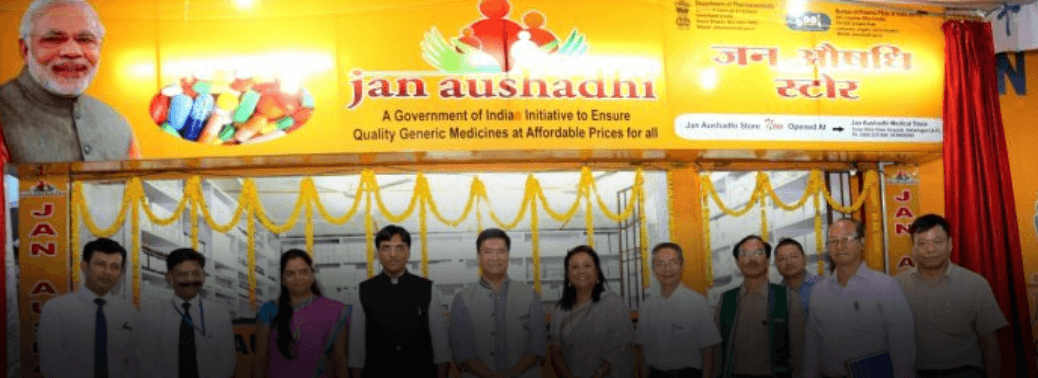
Context:
- The Bureau of Pharma PSUs of India (BPPI), has found 18 Pharmaceutical companies substandard drugs which were supplying under Janaushadhi scheme.
Objectives of the scheme:
- Making quality medicines available at affordable prices for all, particularly the poor and disadvantaged, through exclusive outlets “Pradhan Mantri Bhartiya Janaushadhi Kendras”, so as to reduce out of pocket expenses in healthcare.
Implementation Agency:
- BPPI (Bureau of Pharma PSUs of India), under the administrative control of the Department of Pharmaceuticals, Ministry of Chemicals & Fertilizers, Government of India will be the implementation agency for the PMBJP.
Key Features:
- State Governments or any organization / reputed NGOs / Trusts / Private hospitals / Charitable institutions / Doctors / Unemployed pharmacist/ individual entrepreneurs are eligible to apply for new Pradhan Mantri Bhartiya Janaushadhi Kendras.
- The applicants shall have to employ one B Pharma / D Pharma degree holder as Pharmacist in their proposed store.
- Pradhan Mantri Bhartiya Janaushadhi Kendras can be located within Government hospital premises as well as Private hospital premises or anywhere outside.
- Financial support to applicants: An amount of Rs.2.5 lakhs shall be extended to NGOs/agencies/individuals establishing Pradhan Mantri Bhartiya Janaushadhi Kendras in Government hospital premises where space is provided free of cost by Government to operating agency: Rs. 1 lakh reimbursement of furniture and fixtures Rs. 1 lakh by way of free medicines in the beginning Rs. 0.50 lakh as reimbursement for computer and peripherals, internet, etc.
INTERNATIONAL ECONOMY
16, Jun 2019
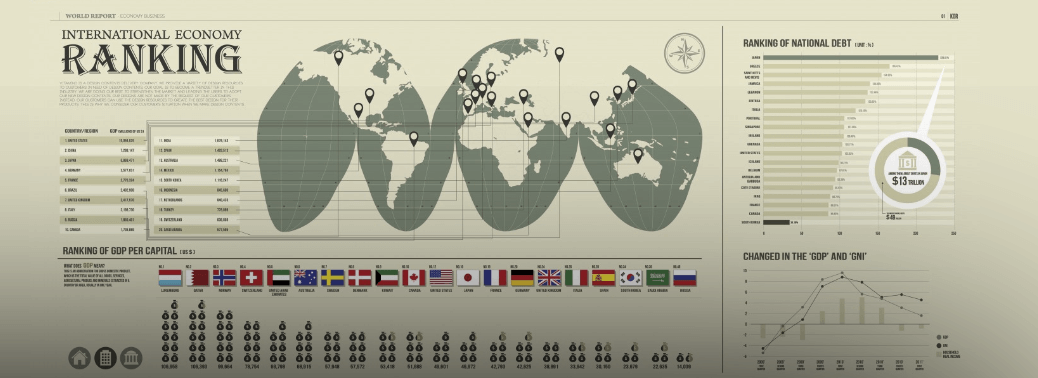
- India imposed tariffs on 29 goods from the U.S from June 16. This is a retaliatory measure taken by India against the U.S imposing tariffs on steel and aluminium form 2018.
- This is also a part of the ongoing tussle between the nations with regard to the protectionist tendencies in the global economy.
- 301 Probe: It is a law in the U.S that allows the President to impose tariffs and other restrictions on a country to protect U.S companies from unfair trade practices by other countries.
- U.S has imposed 301 probe on China in 2017, and is likely to impose the same on India Very soon
INDIA’S TRADE DEFICIT WIDENS IN MAY 2019 TO $15.36 BN.
15, Jun 2019

What is Trade Deficit?
- It is a situation in a country’s economy where its Imports Exceed Its Exports.
- Such a situation leads to the outflow of domestic currency to the foreign markets. It is otherwise referred to as negative Balance of Trade.
Trade Deficit = Imports – Exports:
- The major items which saw an increase in exports are
1. Electronic Goods
2. Organic and Inorganic chemicals
3. Readymade goods of all textiles.
- The segments that saw strong growth in exports include Pulses and Gold. Petroleum products are the major import commodity in India followed by Precious stones and Metals.
CENTRE REDUCES CONTRIBUTION RATE FOR ESI
14, Jun 2019
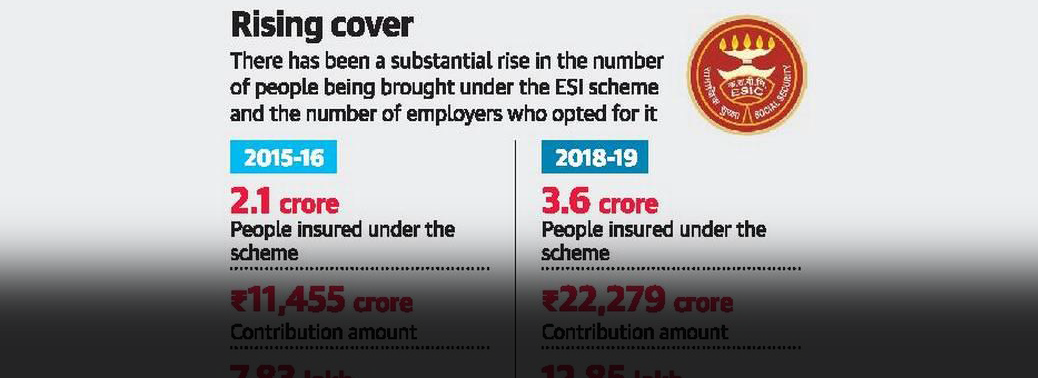
Why in News:
- Trade unions set to protest against the decision
Background:
- Starting July 1, both employers and employee’s contribution under the Employees’ State Insurance (ESI) Act, which gives insured workers medical benefits among other facilities, would be reduced, the Centre said on Thursday.
- The total contribution towards ESI was reduced from 6.5% of an employee’s wages to 4%, with the employer’s share cut to 3.25%, from 4.75%, and the employee’s contribution lowered to 0.75% of wages, from 1.75%, the government announced.
- “This would benefit 3.6 crore employees and 12.85 lakh employers,” the Labour and Employment Ministry said in a statement.
About Employees’ State Insurance (ESI) Issue:
- “The reduced rate of contribution will bring about a substantial relief to workers under the ESI scheme and bring more and more workforce into the formal sector,” it added.
- The financial liability on employers would also be reduced, leading to improved viability of the establishments, increased ease of doing business and likely improved compliance with the Act, the government said, “The ESIC is an autonomous body and these rates have not been discussed.
- If the government proposes even lower rates in the next Board meeting of the ESIC, we will oppose it. We want to increase the benefits given to employees, not reduce the contribution so much,” he added.
About Employees’ State Insurance (ESI):
- The number of people insured under the scheme increased to 3.6 crore in 2018-2019, from 2.1 crore in 2015-2016, with the total contribution received climbing to ₹22,279 crore, from ₹11,455 crore, government data show.
- The number of employers in the scheme increased from 7.83 lakh in 2015-2016 to 8.98 lakh in 2016-2017, then to 10.33 lakh in 2017-2018 and to 12.85 lakh in 2018-2019
HOPE MODI WILL CARRY OUT DISCUSSED REFORMS: U.S
14, Jun 2019
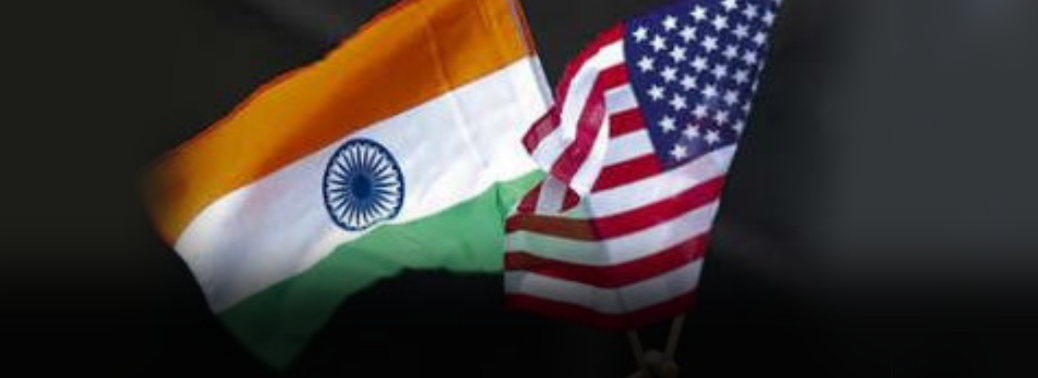
Why in news:
- U.S. Commerce Secretary had told Prime Minister Narendra Modi in that the U.S. Trade Representative (USTR) would hold off on making a final decision on India’s eligibility for the Generalized System of Preferences (GSP) programme until after the general election.
Details:
- comparisons between the U.S. and India’s levels of trade protection are made saying the U.S. was the least protectionist among major countries and had a trade deficit to prove it.
- The U.S. has zero tariffs on 61% of the total value of our total import. India’s average applied tariff rate at 13.8% remains the highest of any major world economy. Examples of high Indian tariff rates, including in autos, alcoholic beverages and motorcycles, reiterating some of the public messaging are also pointed out. The U.S. is India’s largest export destination, while India remained the U.S.’s 13th largest export market despite its large population and this imbalance is due importantly to overly restrictive market access barriers.
Generalised System of Preferences (GSP)
- It is a preferential arrangement in the sense that it allows concessional low/zero tariff imports from developing countries to developed countries (also known as preference receiving countries or beneficiary countries).
- It involves reduced/zero tariffs of eligible products exported by beneficiary countries to the markets of GSP providing countries.
- The US has a strong GSP regime for developing countries since its launch in 1976, by the Trade Act of 1974.
- The GSP program has effective dates which are specified in relevant legislation, thereby requiring periodical reauthorization in order to remain in effect.
GSP at Global Level
- GSP instituted in 1971 under the aegis of UNCTAD, has contributed over the years to creating an enabling trading environment for developing countries.
- The following 13 countries grant GSP preferences: Australia, Belarus, Canada, the European Union, Iceland, Japan, Kazakhstan, New Zealand, Norway, the Russian Federation, Switzerland, Turkey and the United States of America.
- Following the WTO Hong Kong Ministerial Decision of UNCTAD in 2005 the members agreed that developed countries and developing countries in a position to do so would grant duty-free and quota-free market access for exports of Least Developed Countries (LDC). Subsequent ministerial decisions also reaffirmed the continued importance of this issue for LDCs’ trade and development prospects.
- The provision and utilization of trade preferences is a key goal the Istanbul Program of Actions adopted at the UN LDC IV in 2013, as further reaffirmed in SDGs Goal 17.
BLACK OR GREY: WHAT NEXT FOR PAKISTAN AT FATF
14, Jun 2019

Why in News:
- Pakistan has been under the FATF’s scanner, when it was put on the greylist for terror financing and money laundering risks, after an assessment of its financial system and law enforcement mechanisms.
Details:
- The FATF, an inter-governmental body that is now in its 30th year, works to set standards and promote effective implementation of legal, regulatory and operational measures for combating money laundering, terrorist financing and other related threats to the integrity of the international financial system.
- The June 16-21 Plenary could take up a proposal to downgrade Pakistan to the blacklist on terrorist financing from its current “greylisted” status.
- FATF and its partners such as the Asia Pacific Group (APG) review Pakistan’s processes, systems, and weaknesses on the basis of a standard matrix for anti-money laundering (AML) and combating the financing of terrorism (CFT) regime.
- Recently Pakistan gave a high-level political commitment to work with the FATF and APG to strengthen its AML/CFT regime, and to address its strategic counter-terrorism financing-related deficiencies. Based on this commitment, Pakistan and the FATF agreed on the monitoring of 27 indicators under a 10-point action plan, with deadlines.
FATF:
- The Financial Action Task Force (FATF) is an inter-governmental body established in 1989 on the initiative of the G7. It is a “policy-making body” which works to generate the necessary political will to bring about national legislative and regulatory reforms in various areas. The FATF Secretariat is housed at the OECD headquarters in Paris.
Objectives:
- The objectives of the FATF are to set standards and promote effective implementation of legal, regulatory and operational measures for combating money laundering, terrorist financing and other related threats to the integrity of the international financial system.
Functions:
- The FATF monitors the progress of its members in implementing necessary measures, reviews money laundering and terrorist financing techniques and counter-measures and promotes the adoption and implementation of appropriate measures globally. In collaboration with other international stakeholders, the FATF works to identify national- level vulnerabilities with the aim of protecting the international financial system from misuse.
What is blacklist and grey list?
- FATF maintains two different lists of countries: those that have deficiencies in their AML/CTF regimes, but they commit to an action plan to address these loopholes, and those that do not end up doing enough. The former is commonly known as grey list and latter as blacklist. Once a country is blacklisted, FATF calls on other countries to apply enhanced due diligence and counter measures, increasing the cost of doing business with the country and in some cases severing it altogether. As of now there are only two countries in the blacklist — Iran and North Korea — and seven on the grey list, including Pakistan, Sri Lanka, Syria and Yemen.
FINANCIAL MARKETS SEEK TAX INCENTIVES, BETTER LIQUIDITY
14, Jun 2019
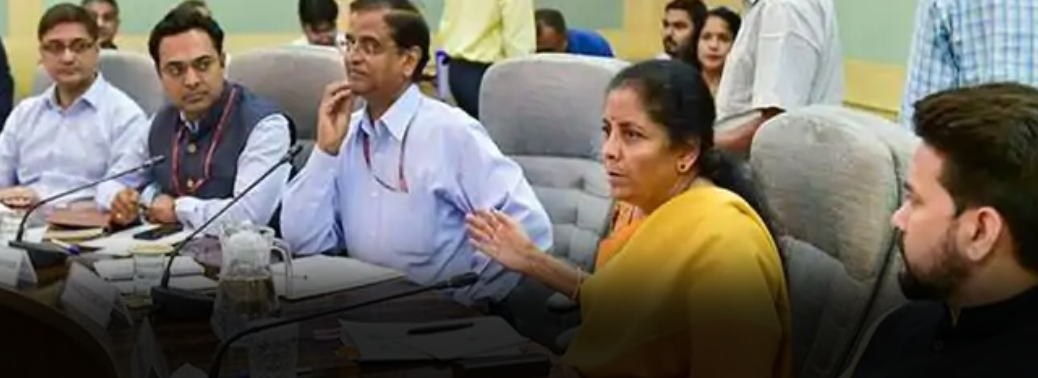
Why in News:
- Finance Minister Nirmala Sitharaman met representatives from the financial and capital market and they discussed creation of a dedicated liquidity window for the NBFC sector. Bankers have also asked the government to review interest rates on Small Savings Scheme.
Details:
- The Indian Banks Association said a system must be evolved to ensure accountability and responsibility on the part of senior management of state-run banks who are involved in credit sanctions and of the loans became NPAs within one year.
- It is requested the government to enact strong recovery laws with a provision to confiscate personal assets of directors of defaulting companies.
- The capital market representative suggested setting-up of Debt Exchange Traded Fund and rationalisation of various taxes like Security Transaction Tax.
- Insurance Regulatory and Development Authority of India chairman Subhash Chandra Khuntia suggested additional tax incentives for term plans to encourage investments, like in the case of the National Pension Scheme.
Non-Banking Financial Companies
- A Non-Banking Financial Company (NBFC) is a company registered under the Companies Act, 1956 engaged in the business of loans and advances, acquisition of shares/stocks/bonds/debentures/securities issued by Government or local authority or other marketable securities of a like nature, leasing, hire-purchase, insurance business, chit business but does not include any institution whose principal business is that of agriculture activity, industrial activity, purchase or sale of any goods (other than securities) or providing any services and sale/purchase/construction of immovable property.
- A non-banking institution which is a company and has a principal business of receiving deposits under any scheme or arrangement in one lump sum or in instalments by way of contributions or in any other manner is also a non-banking financial company (Residuary non-banking company).
Difference between banks & NBFCs:
- NBFCs lend and make investments, and hence their activities are akin to that of banks; however, there are a few differences as given below:
- NBFC cannot accept demand deposits;
- NBFCs do not form part of the payment and settlement system and cannot issue cheques drawn on itself.
- Deposit insurance facility of Deposit Insurance and Credit Guarantee Corporation is not available to depositors of NBFCs, unlike in case of banks.
- Unlike Banks which are regulated by the RBI, the NBFCs are regulated by multiple regulators; Insurance Companies- IRDA, Merchant Banks- SEBI, Micro Finance Institutions- State Government, RBI and NABARD.
- The norm of Public Sector Lending does not apply to NBFCs.
- The Cash Reserve Requirement also does not apply to NBFCs.
Indian Banks’ Association
- Indian Banks’ Association (IBA), formed on 26 September 1946 as a representative body of management of banking in India operating in India – an association of Indian banks and financial institutions based in Mumbai
- With an initial membership representing 22 banks in India in 1946, IBA currently represents 237 banking companies operating in India
- IBA was formed for development, coordination and strengthening of Indian banking, and assist the member banks in various ways including implementation of new systems and adoption of standards among the members
- Indian Banks’ Association is managed by a managing committee, and the current managing committee consists of one chairman, 3 deputy chairmen, 1 honorary secretary and 26 members
Debt Exchange Traded Funds (ETFs)
- Debt Exchange Traded Funds (ETFs) are simple investment products that allow the investors to take an exposure to the fixed income securities.
- These debt ETFs combine the benefits of debt investments with the flexibility of stock investment and the simplicity of mutual funds. These Debt ETFs trade on the cash market of the National Stock Exchange, like any other company stock, and can be bought and sold continuously at live market prices.
- Debt ETFs are passive investment instruments that are based on indices and invest in securities in same proportion as the underlying index. Because of its index mirroring property, there is a complete transparency on the holdings of an ETF.
- Further due to its unique structure and creation mechanism, the ETFs have much lower expense ratios as compared to mutual funds.
INDIAN BANK TO FOCUS ON STRONG GROWTH, PROFITABILITY IN FY20
13, Jun 2019
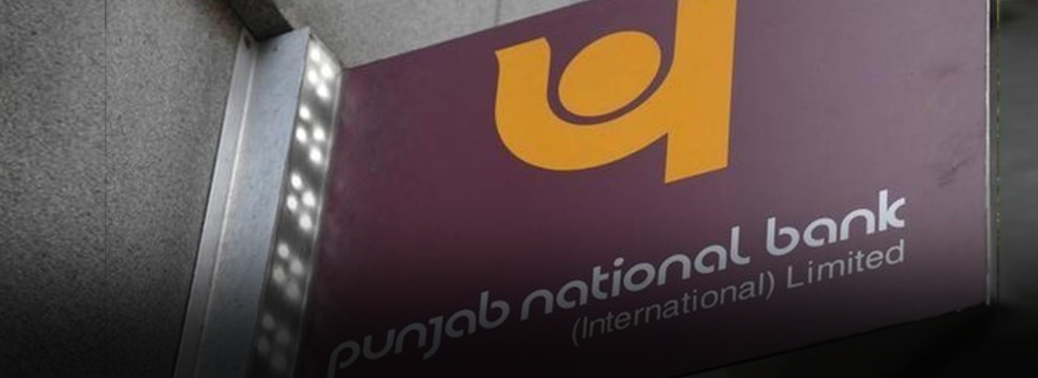
Why in News:
- Increasing CASA deposits, fee income to improve growth and profits in banks
Background:
- Indian Bank will strive for strong growth this fiscal with focus on profitability.
- The prime focus this year will be on increasing the current and savings deposits (CASA) and fee income, accelerating recovery in respect of impaired assets and containing the level of non-performing assets (NPA). The growth in business should culminate in improving the bottom line of the bank. During the current fiscal, the bank would strive for an healthy growth across corporate and retail, agriculture and MSME (RAM) segments.
- In FY19, the RAM sector constituted 58% and corporate 42%.
- Plans were on to set up corporate branches for handling exclusive large borrower accounts with exposure of ₹50 crore or more at select metro centres to improve quality credit dispensation and bottom line.
Way Forward:
- Focus would be on forging partnerships viz. co-origination of loans in collaboration with NBFCs. Tying up with builders/vehicle dealers and tractor manufacturers and exploring cross-sell options through tie-ups with insurance companies for sale of Bancassurance products in life and non-life.
AMAZON CLINCHES TOP SPOT IN THE WORLD’S MOST VALUABLE BRAND RANKING
12, Jun 2019

Why in News:
- Amazon clinched the world’s most valuable brand in cloud computing, consumer tech and movie production.
Background:
- It is founded by the world’s richest man Jeff Bezos.
- According to the 2019 BrandZ Top 100 Most Valuable Global Brands rankings, Amazon online retailer set its brand value quintuple in the past five years to reach $315.5billion.
- It is undertaken annually by advertising holding company WPP.
- The detailed study of Brand Z reveals firms financial data and draws on an extensive consumer survey to reach its conclusions.
- Amazon expanded into grocery, healthcare, food delivery and, with its Alexa devices, even voice recognition. Amazon jumped from third to first place to eclipse Google. The brand of Amazon from 52 percent to $315 billion.
- The company jumped from third place to first place and got the third position to topmost by replacing Google.
About Financial Market:
- There are two online shopping namely Alibaba and JD.com Chinese website which are down its Chinese e-commerce operation. Huawei company got a sudden break down of telecom network equipment and smartphone maker poses security and spying risks. Huawei added 8 percent to its brand value in the past year to reach $26.9bn.
- Netflix was third among the global market and they obtained 65% to obtain its brand value of 34.3 billion.
About Amazon:
- Founder: Jeff Bezos
- Headquarters: Seattle, Washington, U.S.
- Services: Amazon.com, Amazon Alexa, Amazon Appstore, Amazon Music Amazon Prime Amazon Video
- Revenue: US$232.887 Billion – 2018
A THREEFOLD RISE IN THE OUTFLOWS FROM CREDIT FUNDS
12, Jun 2019
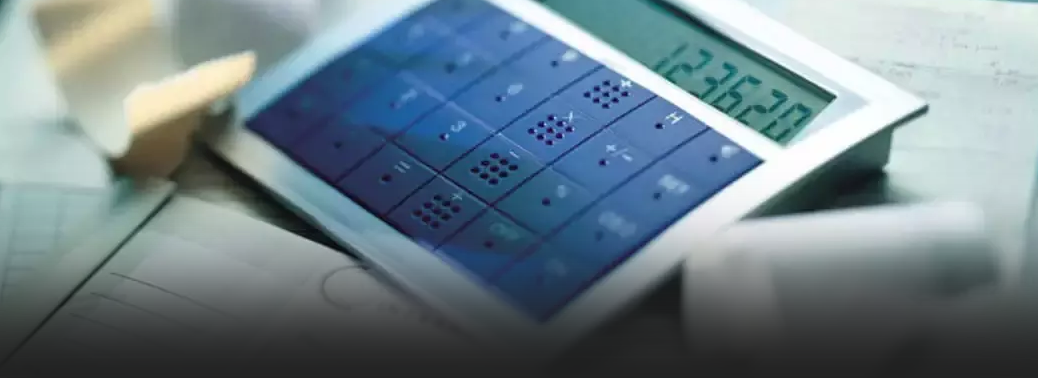
Why in News:
- Net outflows from credit risk funds jumped over threefold in the month of May as investors remained wary of the segment in the light of recent downgrades and defaults.
Details:
- According to data from the Association of Mutual Funds in India (AMFI), credit risk funds saw net outflows of ₹4,156 crore in May, as against ₹1,253 crore in April.
- Further, the net inflows into the overall debt funds segment fell significantly from ₹1.21 lakh crore in April to ₹70,119 crore in May.
- Industry experts believe that while investors are likely to be sceptical of investing in credit funds, the income and gilt categories could see a jump in inflows on the back of favourable macro-economic factors and also with the central bank cutting rates while changing its stance from neutral to accommodative.
- Macro-economic factors appear to be favourable with low inflation, high reserves and balance of payments under control.The flows into equity schemes are likely to revive going forward as uncertainty related to election results are over and the recent market movement also points towards increased investor confidence.
STRUCTURAL REFORMS FOR TACKLING ECONOMIC SLOWDOWN
10, Jun 2019
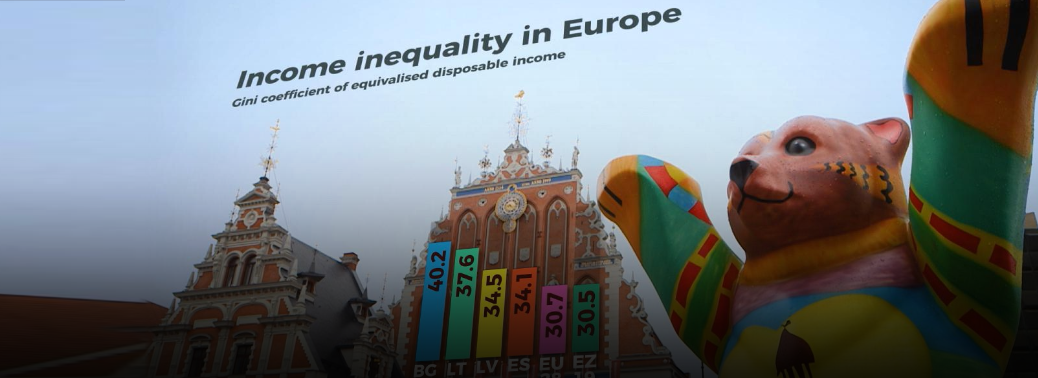
Why in News:
- GDP growth slowed to a five-year low of 6.8% in 2018-19, even as the unemployment rate rose to a 45-year high of 6.1% in 2017-18.
Background: / Economic slowdown:
- Official estimates released recently show GDP growth slowed to a five-year low of 6.8% in 2018-19, even as the unemployment rate rose to a 45-year high of 6.1% in 2017-18.
- Agriculture gross value added (GVA) growth is estimated at negative 0.1% and manufacturing GVA growth at 3.1% in the January-March quarter.
- The economy is struggling with an investment and a manufacturing slowdown, rural distress, unremunerative farm incomes, stagnating exports, a banking and financial mess and a jobs crisis.
- Sales figures from fast moving goods makers and continuing production cuts at car manufacturers confirm that consumption spending have slowed.
- The economic priority for the new government ought to be credible course correction in policy — its formulation, articulation and the setting of goals.
Reforms taken in past:
- Structural reforms — spanning an overhaul of labour and land policies and a much-needed manufacturing push, ‘Make In India’, for absorbing the slack from the farms — had been abandoned by the end of 2015.
- The initial energy and enthusiasm gave way to misadventures such as demonetisation and the poorly designed rollout of the Goods and Services Tax (GST) regime.
- The decrepit public banking system and the problems of the financial sector received little policy attention.
- Even the insolvency and bankruptcy reform, a sound economic reform, that got rolled out rather gradually and tentatively is already in danger of getting diluted.
- The Constitution was hurriedly amended for rolling out reservations based on economic criteria and that fiscal giveaways for middle class Indians and farmers dominated the Interim Budget presented in February without considering the magnitude of the challenge on the economic front.
Way ahead: / Generating sustainable Livelihoods:
- Public provision of toilets, cooking gas connections and dwellings or Mahatma Gandhi National Rural Employment Guarantee Act (MGNREGA) wage jobs and income supplement schemes are temporary sources of relief. They are not an economic growth model or strategies for reducing poverty. They can help the poor survive by providing meagre resources for subsistence.
- Reducing poverty needs economic growth to generate sustainable livelihoods for the poor.
- And this cannot be remedied by redistributive taxation policies alone.
- The government’s ‘Make In India’ strategy was a step in the right direction, and needs to
- be revived. Done right, it can absorb the slack from the farms.
- Few organised sector jobs get generated in India because industries prefer capital-
- intensive production despite the economy’s relative abundance of low-wage labour.
- If production were less capital-intensive, more organised sector jobs would be created.
- Plus, labour’s bargaining power would improve.
- The government needs to take up the backlog of economic reforms pending since the first burst in the 1990s.
- For the role they play in jobs creation, smaller firms ought to be incentivised with easy credit and taxation norms.
Data Collection:
- Lastly, no evolution of the policy paradigm will be possible if the crisis of credibility in the collection, estimation and presentation of official statistics is not addressed appropriately.
Conclusion:
- The new government must leverage the public trust voters have placed in it to get the economy on track. Structural reforms with meticulous planning and proper implementation will help.
SEBI, MCA SIGN PACT FOR MORE DATA SCRUTINY
09, Jun 2019

Why in News:
- The Securities and Exchange Board of India (SEBI) and the Ministry of Corporate Affairs (MCA) signed a memorandum of understanding (MoU) to facilitate seamless sharing of data and information.
Background:
- The MoU comes in the wake of the increasing need for surveillance in the context of corporate frauds affecting important sectors of the economy.
- MoU will enable sharing of specific information such as details of suspended companies, delisted companies, shareholding pattern from SEBI and financial statements filed with the registrar by corporates, returns of allotment of shares, audit reports relating to corporates. This assumes significance as the MCA has the database of all registered firms while SEBI only regulates listed entities that may have unlisted subsidiaries, with the MCA having access to all the data of such unlisted entities.
- The MoU will ensure that both the MCA and the SEBI have seamless linkage for regulatory purposes and in addition to regular exchange of data, the two will also exchange with each other, on request, any available information for scrutiny, inspection, investigation and prosecution.
- A Data Exchange Steering Group has been constituted for the initiative, which will meet periodically to review the data exchange status and take steps to further improve the effectiveness of the data sharing mechanism.
RBI REVISES STRESSED ASSET RESOLUTION NORMS
08, Jun 2019
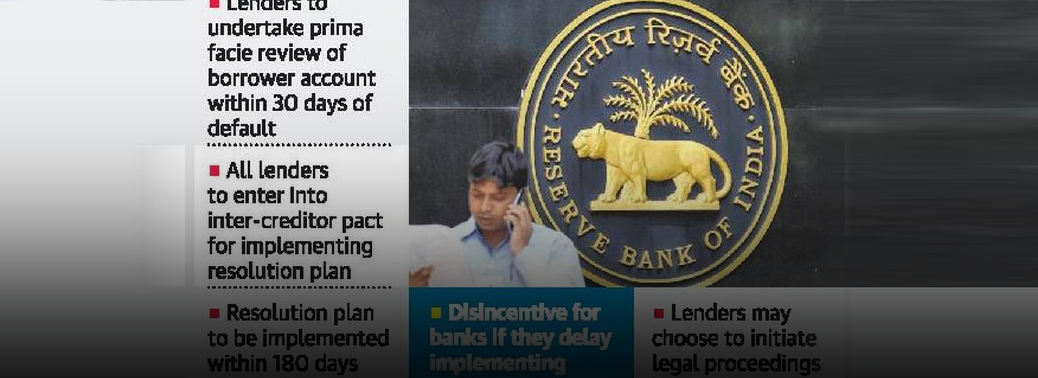
Why in News:
- After the Supreme Court struck down the controversial February 12, 2018 circular of Reserve Bank of India (RBI) on stressed asset resolution, RBI released a revised set of norms which are substantially less stringent from the previous one.
Background: / More in News
- Three major changes mark the new circular:
- The central bank has made it voluntary for lenders to take defaulters to the bankruptcy court;
- The framework now applies to a larger universe of lenders, which includes small banks and non-banking finance companies (NBFCs); and
- Penal provisions have been introduced for lenders.
- While the review period for defaulters of ₹2,000 crore and above will start immediately, the review period for defaulters between ₹1,500 crore and less than ₹2,000 crore will start only from 1 January 2020.
- Apart from banks, new norms are also applicable for non-banking financial companies, small finance banks and other financial institutions.
- Complete discretion to lenders with regard to design and implementation of resolution plans, in supersession of earlier resolution schemes (S4A, SDR, 5/25 etc.), subject to the specified timeline and independent credit evaluation
- Borrowers who have committed frauds or wilful default will remain ineligible for restructuring. A system of disincentives in the form of additional provisioning for delay in implementation of resolution plan or initiation of insolvency proceedings;
- The new norms leave it to the discretion of lenders and give them 30 days to start working on a resolution plan from the day of default.
- During this review period, lenders may decide on the resolution strategy, including the nature of the resolution plan (RP), the approach for implementation of the RP etc.
- Resolution Plans involving restructuring or change in ownership in respect of accounts where the aggregate exposure of lenders is Rs 100 crore and above, will require independent credit evaluation (ICE). This ICE of the residual debt has to be done by credit rating agencies (CRAs) specifically authorised by RBI.
- For the purpose of restructuring, the definition of ‘financial difficulty’ to be aligned with the guidelines issued by the Basel Committee on Banking Supervision
- While the central bank has made it voluntary for lenders to use the Insolvency and Bankruptcy Code, it has, at the same time, put in penal provisions for resolution plans that are not implemented.
- A lender will have to set aside 20% more provisions if the plan is not implemented within 210 days from the date of default and 35% if not implemented within 365 days of default.
- Signing of intercreditor agreement (ICA) by all lenders to be mandatory, which will provide for a majority decision making criteria The ICA shall provide that any decision agreed by lenders representing 75 per cent by value of total outstanding credit facilities (fund based as well non-fund based) and 60 per cent of lenders by number shall be binding upon all the lenders.
RBI CUTS INTEREST RATE BY 25 BPS
07, Jun 2019
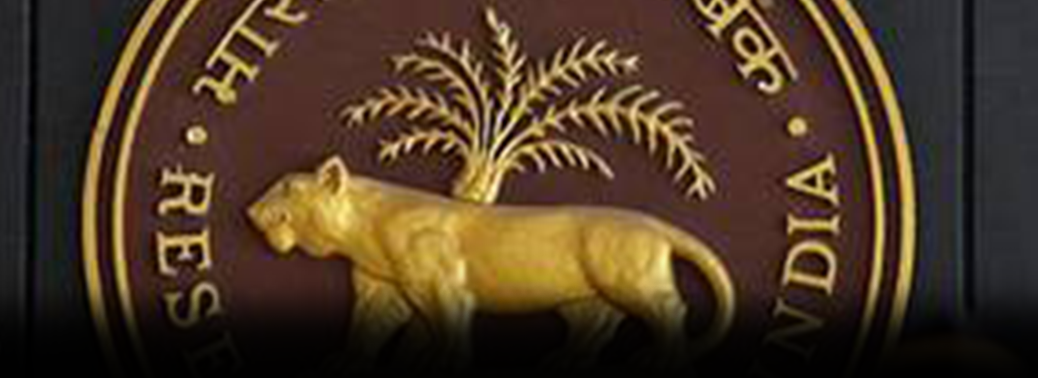
Why in News:
- The six-member Monetary Policy Committee (MPC) of the Reserve Bank of India reduced the repo rate at its second meeting this year by 25 basis points to 5.75% to address growth concerns.
What is Monetary Policy Committee?
- The Monetary Policy Committee (MPC) constituted by the Central Government under Section 45ZB.The MPC determines the policy interest rate required to achieve the inflation target.
- The Reserve Bank’s Monetary Policy Department (MPD) assists the Monetary Policy Committee (MPC) in forming the monetary policy. The Monetary Policy Committee determines the policy rates required to achieve the inflation target.
Composition of Monetary Policy Committee:
- The 6-member Monetary Policy Committee (MPC) constituted by the Central Government as per the Section 45ZB of the amended RBI Act, 1934. The first meeting of the Monetary Policy Committee (MPC) was held on in Mumbai on October 3, 2016.
- The composition of the MPC as on April 2019 is as follows;
- 1. Governor of the Reserve Bank of India – Chairperson, ex officio; (Shri Shaktikanta Das)
- 2. Deputy Governor of the Reserve Bank of India, in charge of Monetary Policy – Member, ex officio; (Dr. Viral V. Acharya).
- 3. One officer of the Reserve Bank of India to be nominated by the Central Board – Member, ex officio; (Dr. Michael Debabrata Patra)
- 4. Dr. Ravindra H. Dholakia, Professor, Indian Institute of Management, Ahmedabad –Member
- 5. Professor Pami Dua, Director, Delhi School of Economics – Member
- 6. Shri Chetan Ghate, Professor, Indian Statistical Institute (ISI) – Member
- Except ex-officio members all members will hold the office for a period of 4 years or until further orders, whichever is earlier.
Instruments of Monetary Policy:
- The instruments of monetary policy are of two types:
- 1. Quantitative Instruments: General or indirect (Cash Reserve Ratio, Statutory Liquidity Ratio, Open Market Operations, Bank Rate, Repo Rate, Reverse Repo Rate, Marginal standing facility and Liquidity Adjustment Facility (LAF))
- 2. Qualitative Instruments: Selective or direct (change in the margin money, direct action, moral suasion)
- It is worth to mention that all of the above-mentioned instruments of the monetary policy are managed as per the requirement of the economy. These instruments maintain the flow of money supply in the economy so that the rate of inflation can be stabilised for ensuring the growth of the Economy.
FDI IN SERVICES SECTOR UP 37% IN 2018-19
06, Jun 2019

Why in News:
- Foreign direct investment (FDI) in the services sector grew 36.5% to $9.15 billion in 2018- 19, according to the Department for Promotion of Industry and Internal Trade (DPIIT).
Background:
- Services sector includes finance, banking, insurance, outsourcing, R&D, courier and analysis. The sector attracted FDI worth $6.7 billion in 2017-18.
- The sector accounts for about 18 per cent of the total FDI India received between April 2000 and March 2019. Raising FDI inflows in the services sector is vital as it contributes over 60% to the gross domestic product.
Foreign Direct Investment in India
- Foreign investments are crucial for India as the country needs around $1 trillion for overhauling its infrastructure sector such as ports, airports and highways to boost growth.
- A strong inflow of foreign investments helps improve the country’s balance of payments situation and strengthens the value of rupee against global currencies, especially the US dollar. However, the overall FDI inflows declined for the first time in the last six years in 2018-19, falling 1 per cent to $44.37 billion as foreign investments fell significantly in telecommunication and pharmaceutical sectors, official data showed. Recently the government has taken several measures like fixing timeliness for approvals and streamlining procedures to improve ease of doing business in the country and attract foreign investments.
GLOBAL GROWTH TO SLOW IN 2019, SAYS WORLD BANK
05, Jun 2019
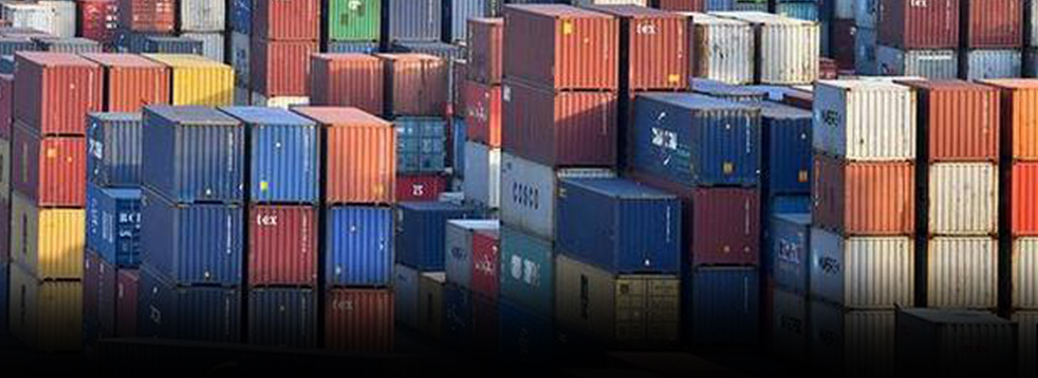
Why in News:
- The World Bank Group has downgraded global real GDP growth to 2.6% for 2019, down by 0.3%age points from its previous forecast.
Details:
- Growth is expected to be increase marginally to 2.7% in 2020.
- India’s growth forecasts are projected to be 7.5% per annum in 2019, 2020 and 2021 — not having been downgraded from their January estimates.
A growth rate of 7.2% is estimated for 2018. - The multilateral development bank’s June 2019 Global Economic Prospects (GEP) report, titled, ‘Heightened Tensions, Subdued Investment’ says the global economy “has continued to soften and momentum remains weak” and investment, sluggish.
- “Stronger economic growth is essential to reducing poverty and improving living standards,” said World Bank Group President David Malpass, via a statement.
- “Current economic momentum remains weak, while heightened debt levels and subdued investment growth in developing economies are holding countries back from achieving their potential. It’s urgent that countries make significant structural reforms that improve the business climate and attract investment.
- They also need to make debt management and transparency a high priority so that new
debt adds to growth and investment.”
Slowdown in U.S. and advanced economies
Advanced economies as a group are expected to slow down in 2019, particularly the Euro Area, due to weaker investments and exports.
U.S. growth is expected to slow to 2.5% this year, down from an estimated 2.9% in 2018, and then down to 1.7% and 1.6% in 2020 and 2021 respectively.
India and South Asia
- South Asia’s growth remained “robust” in the face of global economic headwinds and weakening trade and manufacturing, as per the report.
- In India, where growth was 7.2% in FY2018/2019, investment — both, private and in public infrastructure – offset a slowdown in government consumption.
- Soft agricultural prices dampened rural consumption but urban consumption was bolstered by credit growth. With regard to production — robust growth was broad-based the report says, with the industrial sector accelerating on the back of manufacturing and construction, and agriculture and services sectors moderating, due to a “subdued harvest” and slowing trade, hotel, communications and transport sector, respectively.
U.S.-China trade tensions could hurt global growth in 2020
- The report’s prognosis for the impact of U.S.-China trade tensions is grim. “While some countries could benefit from trade diversion in the short run, adverse effects from weakening growth and rising policy uncertainties involving the world’s two largest economies would have predominantly negative repercussions,” it says. `
- U.S. policy uncertainty is expected to “significantly erode” growth and investment across EMDEs, as protectionist measures impact a wide range of downstream industries and trading partners due to the existence of global value chains, the GEP says.
Brexit could impact financial stability
- A no-deal Brexit, the report says, could have a “severe impact” on the U.K. and to a lower extent on its European trading partners in the event of disruptions and delays at the border. Financial stability could also be impacted. “The United Kingdom accounts for a large share of cross-border lending to some EMDEs, which could be negatively impacted by a sudden retrenchment.”
SLOWDOWN CONFIRMED: ON DEEPENING ECONOMIC CRISIS
03, Jun 2019

Why in News:
- The first macro data set released under the new Finance Minister, Nirmala Sitharaman’s showed an under-performing economy with GDP growth falling to 5.8%. The second government takes office amid a clear economic slowdown.
Details:
- The first macro data set released under the new Finance Minister, Nirmala Sitharaman’s showed an under-performing economy with GDP growth falling to 5.8% in the fourth quarter of 2018-19 and pulling down the overall growth for the fiscal to a five-year low of 6.8%.
- Growth in gross value added (GVA), which is GDP minus taxes and subsidies, fell to 6.6% in 2018-19, pointing to a serious slowdown.
- The growth in core sector output a set of eight major industrial sectors fell to 2.6% in April, compared to 4.7% in the same month last year.
- Unemployment data, showed that joblessness was at a 45-year high of 6.1% in 2017-18.
- The economy is troubled by a consumption slowdown as reflected in the falling sales of everything from automobiles to consumer durables, even fast-moving consumer goods.
- The rural economy remains in distress, as seen by the 2.9% growth in agriculture last fiscal. The new Finance Minister has to boost consumption, which means putting more money in the hands of people.
Way forward:
- Finance minister has to take measures to boost private investment even as she opens up public spending again. Major reforms, starting with land acquisition and labour, corporate taxes by reducing exemptions and dropping rates, and nursing banks back to health had to be taken.
- Recapitalisation of the ailing banks, and consolidation had to be done.
- With tax revenues likely to be subdued owing to the slowdown, the Centre will have to look at alternative sources such as disinvestment.
Centre have to go big on privatisation to boost investments.
Economic growth:
- Economic growth means a rise in the real Gross Domestic Product; effectively this means a rise in the national income, national output and total expenditure. Economic growth enables a rise in living standards and greater consumption of goods and services. As a result, economic growth is often seen as the ‘holy grail’ of macroeconomics.
Slowing the economy
- One of the reasons of slowing down of growth can be attributed to shortage of money. While currency in circulation is not a problem, the money that much of the formal economy uses for transactions, and see as bank deposits i.e. M3 or broad money and is eight times the hard currency in circulation, is not finding its way to the market.
- Our Financial system which converts base money to M3 is not functioning smoothly. When banks give new loans, they “create” money. When the financial system is not functioning effectively, this process of money creation slows down, and the ratio of M3 to M0 (also called the money multiplier) falls.
- Measures of Money Supply: M0, M1, M2, M3 and M4
- The total stock of money in circulation among the public at a particular point of time is called money supply.
- The measures of money supply in India are classified into four categories M1, M2, M3 and M4 along with M0. This classification was introduced in April 1977 by Reserve Bank of India.
Reserve Money (M0):
- It is also known as High-Powered Money, monetary base, base money etc.
- M0 = Currency in Circulation + Bankers’ Deposits with RBI + Other deposits with RBI.
- It is the monetary base of the economy.
Narrow Money (M1):
- M1 = Currency with public + Demand deposits with the Banking system (current account, saving account) + Other deposits with RBI.
- M2 = M1 + Savings deposits of post office savings banks.
Broad Money (M3):
- M3 = M1 + Time deposits with the banking system
- M4 = M3 + All deposits with post office savings banks
CAPITAL BUFFERS: RBI DRAFT NORMS TIMELY FOR NBFCS
31, May 2019

Why in News:
- The central bank has released draft norms on liquidity risk management for deposit taking and non-deposit taking NBFCs.
Details:
- RBI in its draft circular on “Liquidity Risk Management Framework for NBFCs and Core Investment Companies (CICs)” has proposed certain guidelines for dealing with the Liquidity and IL&FS type of debt crisis in NBFCs.
- Liquidity Coverage Ratio (LCR) rule would be introduced in all deposit taking Non-Banking Financial Companies (NBFCs) and non-deposit taking shadow banks with an asset size of Rs 5,000 crore and above.
- NBFCs would have to comply with a higher liquidity coverage ratio (LCR), which is the proportion of assets that an NBFC needs to hold in the form of high-quality liquid assets that can be quickly and easily converted into cash.
- The new norms, which are expected to be implemented by the RBI over four years starting from April 2020, would likely put significant pressure on the margins of NBFCs.
- Under these norms, NBFCs would have to maintain their LCR at 60% of net cash outflows initially, and improve it to 100% by April 2024.
- Mandatory holding of Government Securities by NBFCs in the form of high-quality liquidity assets needs to be ensured.
- Comprehensive Risk Mitigation Policies: Board of all NBFCs with assets of more than 5,000 crore are required to ensure an Asset liability management committee, asset risk management committee, and an asset-liability management support group in NBFCs for implementing Liquidity risk mitigation policies.
- Asset-Liability mismatch cannot be more than 10% of the total outflows of NBFCs.
- NBFCs are required to formulate their Contingency Funding Plan as a liquidity crisis management tool that will help them with alternative sources of funding in liquidity crisis and will prevent over reliance on single source of funding like it is suspected that over reliance of NBFCs over commercial papers can bring them to default of over 1 lakh crore commercial papers issued by them in the past.
- A granular maturity bucket system has been proposed to keep a check on mismatches across tenures. Under new norms, the 1-30 days bucket would be bifurcated into 1-7 days, 8-14 days, and 15-30 days buckets. Also, NBFCs will need to monitor their cumulative mismatches (running total) across all other time buckets up to 1 year by establishing internal prudential limits with the approval of their boards.
Liquidity Coverage Ratio (LCR)
- LCR is a requirement under Basel III whereby banks are required to hold an amount of high-quality liquid assets (HQLA) that’s enough to fund cash outflows for 30 days.
- HQLA are liquid assets that can be readily sold or immediately converted into cash at little or no loss of value or can be used as collateral for borrowing purposes.
Non-Banking Financial Companies
- A Non-Banking Financial Company (NBFC) is a company registered under the Companies Act, 1956 engaged in the business of loans and advances, acquisition of shares/stocks/bonds/debentures/securities issued by Government or local authority or other marketable securities.
- A non-banking institution which is a company and has a principal business of receiving deposits under any scheme or arrangement in one lump sum or in instalments by way of contributions or in any other manner is also a non-banking financial company.
- It engages in the business of
- • Loans and advances
- • Acquisition of shares/stocks/bonds/debentures/securities issued by government or local authority or other marketable securities of a like nature
- • Leasing, hire-purchase, insurance business, chit business, etc
- It, however, does not include any institution whose principal business is that of
- 1. Agriculture activity
- 2. Industrial activity
- 3. Purchase or sale of any goods (other than securities)
- 4. Providing any services and sale/purchase/construction of immovable property
- NBFCs largely depend on market-based funds.
- They aim at bridging the gap in pricing inefficiency based on perceived risk.
About IL&FS Debt Crisis
- IL&FS Financial Services, a group company, defaulted in payment obligations of bank loans (including interest), term and short-term deposits and failed to meet the commercial paper redemption obligations. Consequent to defaults, rating agency ICRA downgraded the ratings of its short-term and long-term borrowing programmes. The defaults not only adversely affected hundreds of investors, banks and mutual funds associated with IL&FS but also resulted into Liquidity Crisis in NBFCs.
INDIA REMOVED FROM CURRENCY MONITORING LIST
30, May 2019
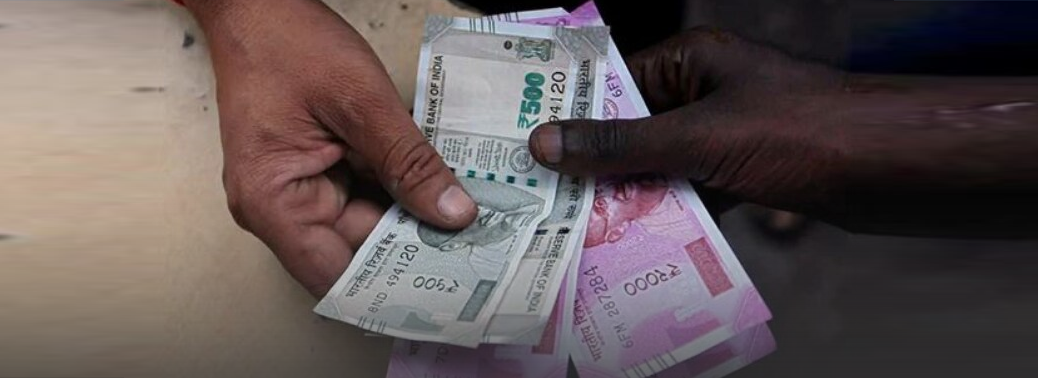
Why in News:
- The US removed India from its currency monitoring list of major trading partners, citing steps being taken by New Delhi that addressed some of the Donald Trump administration’s major concerns.
Background:
- The watch list contains the names of countries that have potentially questionable foreign exchange policies and are suspected to be manipulating their currencies to gain trade advantages over the US. India was placed on watchlist in May 2018 along with China, Japan, Germany, Switzerland and South Korea.
- Apart from India, Switzerland was dropped from the list. In its biannual foreign-exchange report to the Congress, the US Treasury Department added Ireland, Italy, Malaysia, Singapore and Vietnam to the list.
- US trade department in its October Report highlight that India’s circumstances have shifted markedly, as the central bank’s net sales of foreign exchange over the first six months of 2018 led net purchases over the four quarters through June 2018 to fall to USD 4 billion, or 0.2 per cent of the GDP. This led removal of India from currency watch list
What is currency manipulation
- The US Department of the Treasury publishes a semi-annual report in which the developments in global economic and exchange rate policies are reviewed.
- If a US trade partner meets three assessment criteria, the US labels it a currency manipulator. The three pre-conditions for being named currency manipulator are: a trade surplus of over $20 billion with the US, a current account deficit surplus of 3% of the GDP, and persistent foreign exchange purchases of 2% plus of the GDP over 12 months.
- A country can intentionally undervalue its currency by selling its own currency to drive down its value, making its exports cheaper and more competitive.
RBI DRAFT RULES FOR NBFCS
29, May 2019
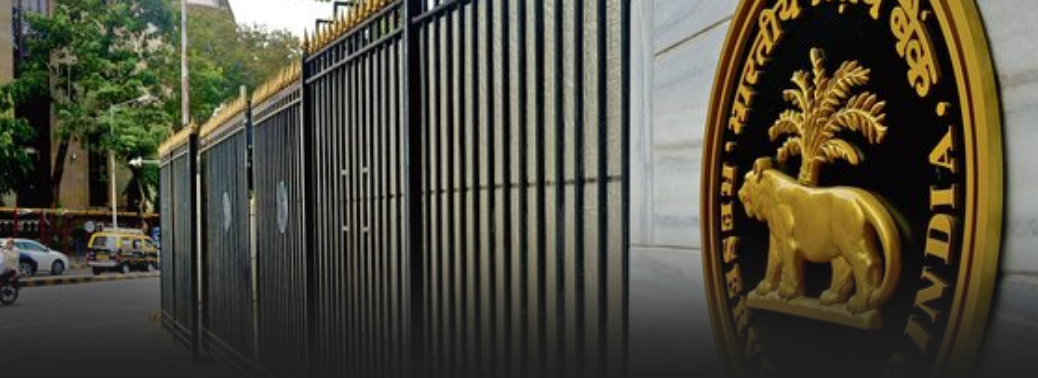
Why in News:
- RBI has put up the draft circular, Liquidity Risk Management Framework for Non-Banking Financial Companies and Core Investment Companies.
Background: / What are the new rules?
- LCR – Non-Banking Financial Companies (NBFCs) should maintain a liquidity coverage ratio (LCR) in line with banks.
- The LCR requires banks to hold enough high-quality liquid assets (HQLA) that can be sold to fund banks during a stress scenario.
- The LCR requirement shall be binding on NBFCs from April 01, 2020. The liquidity rules were proposed for all NBFCs.
- But for NBFCs with assets above Rs 5,000 crore and deposit-taking NBFCs, the LCR is mandatory. HQLA – RBI has asked the firms to have sufficient High-Quality Liquid Asset (HQLA) that would keep them liquid for at least 30 days.
- HQLAs are generally cash or government securities that can be quickly sold in the market to raise cash. The minimum HQLAs to be held from April 1, 2020 will be 60% of the LCR.
- But by April 1, 2024, large and deposit-taking NBFCs should have HQLAs of a minimum of 100% of net cash outflows over the next 30 calendar days.
- Collaterals – An NBFC must actively manage its collateral positions, differentiating between encumbered and unencumbered (free of liabilities) assets.
- NBFCs should monitor such assets so that they can be mobilised in a timely manner.
- All NBFCs must have contingency funding plans for responding to severe disruptions.
- Liquidity position – Firms are to measure their liquidity in a granular manner, measuring as minutely as 1-7 days’, 8-14 days’, and 15-30 days’ period.
- Asset-liability mismatches should not exceed 10-20% in the timeframes running up to a year. Liquidity position has to be reported to the RBI, along with the interest rate sensitivity statement. Liquidity positions should also be disclosed to the public for investors.
- Earlier, the RBI also asked large NBFCs to introduce chief risk officers to manage asset- liability mismatches on the books. In addition to the structural and dynamic liquidity needs, a stock approach will also have to be maintained to gauge liquidity needs.
- NBFCs were thus asked to maintain tools that would generate early warning on risk situations.
What is the Rationale?
- Since the IL&FS crisis, there has been notable uncertainty in the NBFC market.
- Over the past few months, many NBFCs have not been able to borrow from markets, including banks. In this backdrop, the regulatory norms are good for the long-term sustainability of the NBFC sector. With the RBI bringing in the guidelines to manage asset- liability mismatches, lenders will get more confidence.
- It ensures that an NBFC has sufficient collateral to meet expected and unexpected borrowing needs.
SEBI TIGHTENS DISCLOSURE NORMS FOR LISTED DEBT SECURITIES
28, May 2019
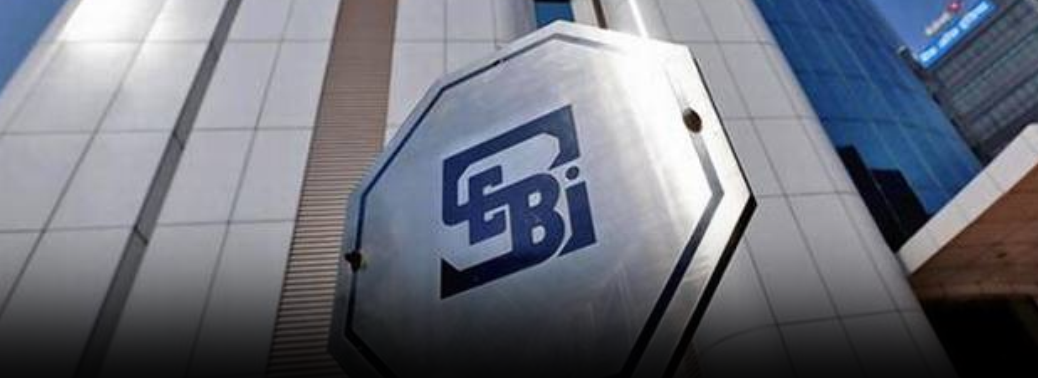
Why in News:
- To further safeguard the interest of investors in listed debt securities, the Securities and Exchange Board of India (SEBI) has tightened the disclosure norms for entities that have issued such securities.
Details:
- The capital market watchdog made it mandatory for such companies to disclose on their websites the schedule of interest and redemption obligations for the complete financial year.
Within a day of due date
- Further, the status of payments has to be updated within one day of the due date, which effectively means that any default or delay will be disclosed within a day of the due date.
- The enhanced disclosure norms have been issued to “further secure the interests of investors in listed debt securities, enhance transparency and to enable Debenture Trustees (DTs) to perform their duties effectively and promptly.” DTs shall display on their website details of interest/ redemption due to the debenture holders in respect of all issues during a financial year within 5 working days of start of financial year. For privately-placed debt securities, SEBI has made it mandatory for the inclusion of a clause stating that at least 2% per annum interest would be paid over the coupon rate in case of a default in meeting the payment obligations.
SEBI
- SEBI is the statutory regulator for the securities market in India.
- It was established in 1988 and given statutory powers through the SEBI Act, 1992.
- HQ: Mumbai
- Purpose: Protect the interests of investors in securities, promote the development of securities market and to regulate the securities market.
- SEBI is responsive to needs of three groups, which constitute the market i.e.
- Issuers of securities, Investors and
- Market intermediaries.
ECONOMIC PRIORITIES FOR THE NEW GOVERNMENT
25, May 2019
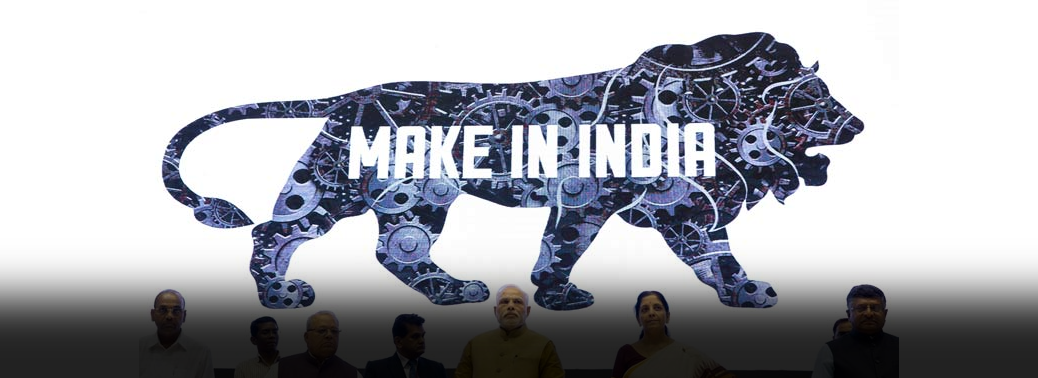
Why in News:
- With a new government taking office after the General Elections 2019, here is a look at the key economic priorities in the coming years.
What is the current economic scenario?
- The economic scenario of the country is considerably weak.
- The GDP growth in the second half of 2018-19 had fallen to around 6.5%, below the trend growth rate of India (7%).
- IIP contracted to a 21-month low of 0.1% in March, 2019 on the backdrop of weak investment and consumption demand.
- For the 2018-19 financial year as a whole, IIP growth stood at 3.6%, much lower than 4.4% recorded in previous financial year.
- The automobile sector has been witnessing a subdued growth and the passenger car segment saw a decline of 16% in April 2019.
- The FMCG (Fast-Moving Consumer Goods) sector has also been seeing a slowdown in volume growth.
- Consumption demand, which was the bulwark of the economy, has weakened and private investment is yet to show signs of a pickup.
- Evidently, the economy is going through a cyclical downturn.
- The slowing consumption and subdued growth in exports could keep India’s growth rate under pressure in the near future.
What should be the focus areas?
- Speeding up the bad loan resolution process under the Insolvency and Bankruptcy Code (IBC) is a key element in the growth revival process.
- In nearly 48% of the cases (or 548 Corporate Insolvency Resolution Processes-CIRPs), resolution could not be achieved within 180 days.
- A total of 362 cases (around 30% of the ongoing CIRPs) surpassed the outer limit of 270 days set out in the IBC.
- Addressing this will boost capital, by freeing up resources for banks to lend further, improve credit availability and support growth.
- Addressing liquidity issues of the Non-Banking Financial Companies sector is expected to be another priority.
- A number of NBFCs has put a stop to fresh loan disbursements while many are on the verge of defaulting on their repayments.
- NBFCs account for a large part of credit disbursal in tier II and tier III towns.
- Notably, the crisis in the NBFC sector threatens to engulf the entire financial sector; its revival is critical for the economy.
- The government is also expected to further step up capital infusion in public sector banks. While infrastructure segment has seen a pick-up in credit demand over the last 1 year, credit growth for the industrial segment continues to remain weak.
- Private sector investment needs to revive as it may provide the necessary boost to the economy.
- The government expenditure would require a commensurate growth in revenue collections. This is an area where the government struggled in the previous financial year.
- Both direct tax revenue and GST revenue have fallen short of the revised budget estimates for 2018-19 by at least Rs 1 lakh crore.
- Going ahead, meeting the already declared direct tax targets for this financial year is going to be a tough task.
- The focus could be more on boosting compliance, simplifying procedures and a move towards inclusion of some of the items that are currently out of GST’s ambit.
- Labour reforms did not complete the course mapped out by the government in its first term. The labour and employment ministry had drafted four labour codes:
- industrial relations wages
- social security and welfare
- occupational safety, health and working conditions
- This was done by amalgamating, simplifying and rationalising the relevant provisions of the existing 44 central labour laws.
- However, none of it was enacted through the legislative route.
- Along with implementing this, employment generation, especially of good quality and with decent wages, would be crucial in the coming years.
SEBI PANEL MOOTS CHANGES TO FPI RULES
25, May 2019

Why in News:
- As part of its attempts to streamline the regulations to encourage foreign inflows in the Indian market, the Securities and Exchange Board of India (SEBI) has proposed fast track on-boarding procedure for such investors, apart from a simplified registration process.
Details:
- As a key source of capital to the Indian economy, it is important to ensure a harmonised and hassle-free investment experience for international investors and improve transparency.
- The group’s primary objectives were consolidation, simplification, rationalisation and liberalisation
- The group has also recommended pension funds to be considered for Category I FPIs registration, removal of opaque structure and
the review of broad-based conditions for appropriately regulated entities. - The committee has further proposed a liberalised investment cap under a review of prohibited sectors for foreign investment for FPIs, restriction on Sovereign Wealth Funds (SWFs) for investment in corporate debt securities, and permitting FPIs for off-market transactions.
- The committee has also proposed alignment of regulations for FPIs and Alternate Investment Funds (AIFs) and the harmonisation between investment restrictions in FPI regulations and Foreign Exchange Management Act (FEMA).
SEBI
- SEBI is the statutory regulator for the securities market in India.
- It was established in 1988 and given statutory powers through the SEBI Act, 1992.
- HQ: Mumbai.
- Purpose: Protect the interests of investors in securities, promote the development of securities market and to regulate the securities market.
CRISIS IN NBFC SECTOR COULD HURT ECONOMIC GROWTH’
23, May 2019

Why in News:
- The investors are worried over potential impact on the overall growth of the economy in the near term on current liquidity crisis in the non-banking financial companies’ (NBFCs).
Details:
- “Many investors appear concerned about the ongoing financial crunch led by the NBFC sector and its impact on discretionary consumption and hence overall growth.
- High risk aversion, delayed monetary transmission and subdued mutual fund flows could result in a further slowing of the sector.
NBFC
- NBFC – An NBFC is a company registered under the Companies Act, 1956.
- It engages in the business of loans and advances
- acquisition of shares/stocks/bonds/debentures/securities issued by Government or local authority or other marketable securities of a like nature
- leasing, hire-purchase, insurance business, chit business, etc. NBFCs largely depend on market-based funds.
- They aim at bridging the gap in pricing inefficiency based on perceived risk.
NEW GOVT. MUST FOCUS ON BANK BALANCE SHEETS
23, May 2019

Why in News:
- The new government, should focus on a few key aspects of the economy such as tackling income inequality on a priority basis, cleaning up bank balance sheets rather than delaying the clean-up, being more fiscally disciplined, and being more accountable for the revenue projections made in a year
Background: / What is Balance sheet:
- A Balance Sheet is a financial statement of any company or is the summary of its assets and liabilities, equity capital, total debt, etc. at a specific point in time.
- It reflects the financial health of a firm and gives appropriate knowledge to the investors about what is owned and owed by the firm along with the amount which is invested by the shareholders. It derives its name from the fact that assets and liabilities of the firm which are put on two heads of the sheet must balance out.
- Assets include various resources or things owned by the company and are divided into current and and long-term. Liabilities are debts or obligations of the company and stand for the amount owed by it to its creditors. They are also divided into current and long-term liabilities. Furthermore, the equity capital of the owner is another important feature of the balance sheet. Total liabilities and owners’ equity must always add up to the total assets.
- It is also called book value of the company.
IRDAI PANEL FOR SIMPLIFYING FIRE COVER NORMS
22, May 2019

Why in News:
- A working group of insurance regulator IRDAI, revisited the structure of products providing cover to homes, offices, commercial establishments and MSMEs, has recommended many changes.
Details:
- Insurance Regulatory and Development Authority of India (IRDAI) said wordings and terms and conditions of the basic policy for fire and allied perils for all categories of risks are driven by the erstwhile All India Fire Tariff, 2001.
- IRDAI had set up the group in view of the huge gap between economic losses and insured losses, post catastrophic events, for homes, offices, commercial establishments and MSMEs.
- Noting that the protection needs of the insuring public for their assets against fire and allied risks are met by Standard Fire and Special Perils Policy (SFSP) the product structure remained, more or less, the same since the All India Fire Tariff revision in 1988
- Noting the product, created years ago, does not seem to be meeting the true protection needs of the insuring public, the group recommended introduction of three different versions of the product
- The first, and the simplest of the three with most relaxed terms, would be for homeowners while a slightly more refined version would be for micro commercial establishments having value at risk of up to ₹5 crore.
- A moderated version of the existing product is recommended for commercial risks having value at risk from ₹5 crore to ₹50 crore.
- The group said there has to be a system of default sum insured for all the dwellings such that the insured value is a reasonable estimation of the correct value of construction cost of the building.
- In case of a total loss, per square foot rate specified in the policy shall be sacrosanct and claim shall be paid after multiplying it with the actual area of the apartment
Insurance Regulatory and Development Authority of India
- Insurance Regulatory and Development Authority of India or the IRDAI is the apex body responsible for regulating and developing the insurance industry in India.
- It is an autonomous body. It was established by an act of Parliament known as the Insurance Regulatory and Development Authority Act, 1999.
- IRDAI is headquartered in Hyderabad in Telangana. The organization fought for an increase in the FDI limit in the insurance sector to 49% from the previous 26%. The FDI cap was hiked to 49% in July of 2014.
- Its primary purpose is to protect the rights of the policyholders in India. It gives the registration certificate to insurance companies in the country.
- It also engages in the renewal, modification, cancellation, etc. of this registration. It also creates regulations to protect policyholders’ interests in India.
NEED FOR INDUSTRIAL POLICY IN INDIA
20, May 2019

Why in News:
- The economic developments in the recent times in India demand a dedicated industrial policy to boost manufacturing.
- In this backdrop, here is an overview of the inevitable role played by industrial policies elsewhere and the need for India to have one.
Why is manufacturing significant?
- No major country has managed to reduce poverty or sustain growth without manufacturing- driven economic growth.
- This is primarily because productivity levels in manufacturing sector are much higher than in either agriculture or services.
- Manufacturing is a key engine of economic growth because it – offers economies of scale
- embodies technological progress
- generates forward and backward linkages that create positive spill-over effects in the economy
How is it approached elsewhere?
- In the U.S. and Europe, the approach towards manufacturing shifted after the 2008 financial crisis.
- Even the erstwhile proponents of neo-liberal policies started strategic government efforts to revive their industrial sectors.
- They, notably, defied in principle their own prescriptions for free markets and trade. The European Union too identified sector-specific initiatives to various industries.
- The United Nations Conference on Trade and Development (UNCTAD) finds that over 100 countries have, within the last decade, articulated industrial policies.
What is the case with India?
- India still does not have in place a dedicated manufacturing policy.
- Programmes as “Make in India” focusses on increasing foreign direct investment and ease of doing business.
- While important, they may not constitute an industrial policy per se.
- The contribution of manufacturing to GDP in 2017 was only about 16%. This signals a stagnation since the economic reforms began in 1991.
- Significantly, this is in sharp contrast with the major Asian economies.
- E.g. Malaysia roughly tripled its share of manufacturing in GDP to 24%, Thailand’s share
- increased from 13% to 33% (1960-2014).
- In contrast, in India, manufacturing has never been the leading sector other than during the Second and Third Plan periods.
How does an industrial policy help?
- It is widely agreed that government intervention is crucial in the case of market failures which may include –
- Deficiencies in capital markets, usually as a result of information asymmetries Lack of adequate investments inhibiting exploitation of scale economies
- Imperfect information with respect to firm-level investments in learning and training
- Lack of information and coordination between technologically interdependent investments Given the present economic situation in India, these are good reasons why an economy- wide planning mechanism is needed.
- However, the Indian state should shift away from the “command and control” approach
- that was the case in pre-1991 days.
Why is an industrial policy crucial for India now?
- Investments – There is the need to coordinate complementary investments.
- The East Asian States largely managed this role of industrial policy successfully.
- This is essential especially when there are significant economies of scale and capital market imperfections.
- While preventing coordination failures on the one hand, it is also essential to avoid competing investments in a capital-scarce environment.
- As, excess capacity leads to price wars, thereby adversely affecting profits of firms.
- These, in turn, may lead to bankruptcy of firms or slowing down investment, both happening often in India (E.g. the aviation sector.)
- Even worse, price wars in the telecom sector in India have slowed profits (even caused losses).
- This hampers investment in mobile/Internet coverage of rural India where access to mobile phones and broadband Internet needs rapid expansion.
- Human capital – Industrial policies are needed to address externalities such as subsidies for industrial training.
- In fact, industrial policy was reinforced by state investments in human capital in most East Asian countries.
- General academic as well as vocational education/training was aligned with the industrial policy.
- However, a lack of human capital has been a major constraint upon India in attracting foreign investment.
- Organising – The state can play the role of organiser of domestic firms into cartels in their negotiations with foreign firms or governments.
- This role of government is particularly relevant in the 21st century after the big business revolution of the 1990s.
- As, post 1990 is marked with mega-mergers and acquisitions among transnational corporations.
- Notably, a key objective of China’s industrial policies since the 1990s has been to support the growth of such firms.
- E.g. Lenovo computers, Haier home appliances, and mega-firms making mobile phones Production capacity – In India, the medium/middle scale enterprises are largely missing in the overall share, a shortfall of failure of industrial strategy.
- This was more because of reservation of products exclusively for production in the small- scale and cottage industries (SSI) sector.
- Large firms were largely excluded from India’s 1956 Industrial Policy Resolution onwards.
- E.g. by the end of the 1980s, 836 product groups were in the “reserved” category produced
- only by SSIs, which encouraged informal enterprises.
- In 2005, there were still 500 products in this category, 15 years after the economic reforms were launched.
- Thereafter the reservation of products of small firms was cut sharply to 16 products.
- But by then, small scale and informality had gotten entrenched in Indian manufacturing.
- In this context, an industrial policy should balance between the industrial capacity installed and the production efficiency/capacity.
- Choosing too small a scale of capacity can mean a 30-50% reduction in production capacity.
- Structural change – In a fast-changing market, losing firms will block structural changes as the above that are economically beneficial but make their own assets worthless.
- East Asian governments prevented such firms from undermining the structural changes. Moves such as orderly capacity-scrapping between competing firms and retraining programmes to limit such resistance were taken.
- An industrial policy in place in India could facilitate the process when structural change is needed. Jobs – The share of manufacturing in total employment fell from 12.8% to 11.5% over 2012 to 2016.
- A well drafted industrial policy can go a long way in creating jobs in the economy.
- Exports – Increasing export of manufactures will need to be another rationale for an industrial policy.
What does the East Asia industrial experience show?
- The growth in manufacturing in East Asian countries was primarily founded upon export- oriented manufacturing.
- They employed the surplus labour released by agriculture, thus raising wages and reducing poverty rapidly.
- This outcome came from a conscious, deliberately planned strategy (with Five Year Plans). The growing participation of East Asian countries in global value chains (GVCs) was a natural corollary to the industrial policy.
- They had graduated beyond simple, manufactured consumer goods to more technology- and skill-intensive manufactures for export.
- In contrast, India has been practically left out of GVCs.
What does India’s own IT success imply?
- The government’s role had been crucial in the success story of India’s IT industry.
- The government invested in creating high-speed Internet connectivity for IT software parks. This significantly enabled integration of the Indian IT industry into the U.S. market.
- Also, the government allowed the IT industry to import duty-free both hardware and software.
- Moreover, the IT industry was able to function under the Shops and Establishment Act.
- So they were not subject to the 45 laws relating to labour and the regulatory burden these impose.
- Importantly, the IT sector had the benefit of low-cost, high-value human capital created by public investments earlier in technical education.
- These concerted measures offer insights to the potential for industrial policy and the critical State’s role in manufacturing growth in India.
- The government has to replicate the approach now, suited to the manufacturing sector, with an industrial policy.
ACTIVIST HELD FOR PROTESTING AGAINST GAIL’S PIPELINE PROJECT
19, May 2019

Why in News:
- The organiser of the Tamil Nadu Nilam Neer Padukappu Iyyakkam, K.M. Iraniyan, was arrested by the Sembanarkoil police for staging a protest and allegedly intimidating workers engaged by the Gas Authority of India Limited (GAIL) for laying a pipeline at Umayalpuram.
Details:
- GAIL is laying the pipeline for carrying gas between the ONGC’s field in Madhanam and Memathur in the district.
- Mr. Iraniyan was booked under Sections 143 (unlawful assembly), 341 (punishment for wrongful restraint), 147 (rioting) and 506 (1) (criminal intimidation) of the Indian Penal Code.
GAIL
- GAIL is the largest state-owned natural gas processing and distribution company in India. It is headquartered in New Delhi. It has following business segments: natural gas, liquefied petroleum gas transmission, liquid hydrocarbon, city gas distribution, petrochemical, exploration and production, GAILTEL and electricity generation. It was conferred with the Maharatna status in February 2013 by the Government of India.
What is the Project?
- The Kochi LNG terminal was meant to ensure natural gas supply for domestic and industrial use in Kerala and in South India.
- GAIL envisaged a pipeline to transport natural gas from Kochi to Mangaluru and Bengaluru. The Kochi-Koottanad-Bengaluru-Mangaluru Pipeline (KKBMPL) project was thus conceived in 2007. The first phase aimed at linking the terminal with local industrial users, including Bharat Petroleum Corporation Limited.
- The second phase of the pipeline was to go through seven districts of Kerala, besides covering parts of Tamil Nadu and Karnataka.
objectives of pipeline:
- To bring 16 million metric standard cubic metres per day of natural gas from Petronet LNG terminal in Kochi to southern states and connecting the southern states of Kerala, Tamil Nadu and Karnataka to the national gas grid
- To make available cheap fuel for industries, especially power plants and fertilisers To provide clean and green fuel for vehicular transport
- To provide Piped gas for homes
EXTERNAL WOES: ON INDIA’S FOREIGN TRADE
18, May 2019
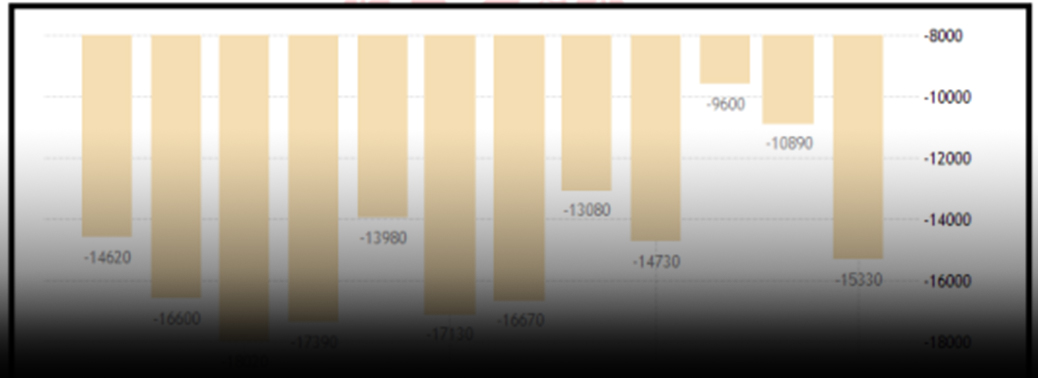
Why in News:
- The estimates for foreign trade showed a sharp slowdown in merchandise export growth in April, 2019 to 0.64% from a year earlier.
Background: / what is the exports scenario?
- There was a 31% surge in petroleum products shipments to overseas markets in April.
- If this is removed, India’s goods export actually contracted by over 3% in dollar terms.
- [In contrast, overall merchandise exports had expanded 11% year-on-year in March, 2019 with the growth in shipments excluding petroleum products.]
- The slump in exports was fairly widespread, with 16 of the 30 major product groups reflecting contractions.
- This is in contrast with the 10 categories that had shrunk in March.
- Worryingly, shipments of engineering goods declined by over 7% after having expanded by 16.3% in March.
- The traditionally strong export sectors all weakened in April.
- These include the gems and jewellery, leather and leather products, textiles and garments, and drugs and pharmaceuticals sectors.
- E.g. contraction in gem and jewellery exports widened to 13.4% in April, from 0.4% in March; it was 15.3% from 6.4% respectively for the leather segment
- Likewise, the pace of growth of garment exports decelerated to 4.4% from 15.1% in March.
What is the case with imports?
BALANCE OF TRADE
- Imports grew by 4.5% to $41.4 billion in April, accelerating from March’s 1.4%.
- This was primarily because the purchases of crude oil and gold continued to increase.
- The 9.3% jump in the oil import bill, from March’s 5.6%, can partly be explained by the rise in international crude prices. However, the 54% surge in gold imports reflects India’s unappeasable appetite for gold, calling for policymakers’ attention and action.
- Excluding oil and gold, however, imports shrank by more than 2% in April.
- This signals that import demand in the real productive sectors is largely balanced.
What are the Implications?
- Jobs and demand – The traditionally strong export sectors are all key providers of jobs.
- So any prolonged slump across these industries will impact jobs, wages and overall consumption demand in the domestic market.
- Trade deficit – With merchandise imports outpacing exports, the trade deficit widened to a five-month high of $15.3 billion.
- The widening trade shortfall will add pressure on India’s widening current account deficit (CAD).
- Being at around $51.9 billion in the first 9 months of fiscal 2018-19, CAD had already surpassed the preceding financial year’s 12-month shortfall of $48.7 billion.
- More challenges and limitations to trade and exports are ahead with the escalating trade war between the U.S. and China.
- The impacts of this could be widespread on global growth.
- Moreover, the rising military tensions in West Asia could potentially further push up oil prices, further increasing India’s import burden.
- Given these, containing the trade and current account deficits seems significantly challenging and urgent measures are needed to boost exports.
AIR INDIA ARM’S PRIVATISATION HITS A BUMP
18, May 2019
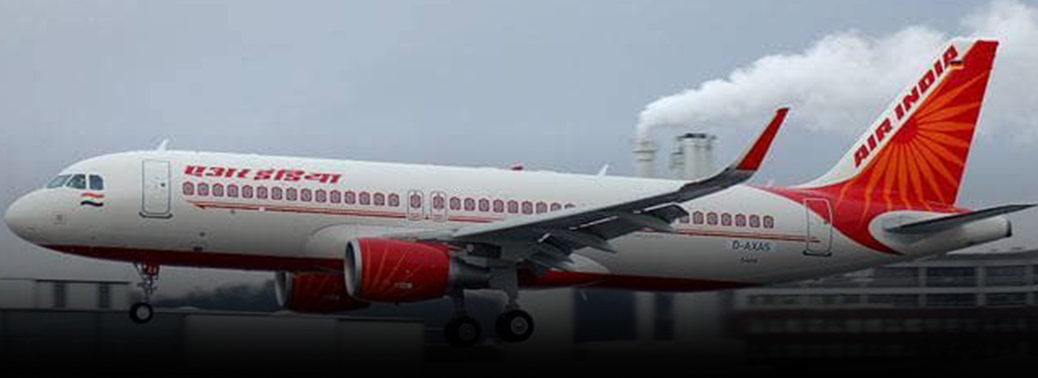
why in news:
- The government’s effort to privatise Air India Air Transport Services Ltd., Air India’s ground handling arm, has run into a stone wall, with potential bidders raising concerns over the Airport Authority of India’s plan to award ground-handling work at 76 of its airports to vendors.
Background: / What is the present condition of Air India?
- Air India had accumulated debt of more than Rs.50,000 crore as of the end of the 2015-16 fiscal year.
- Flights are routinely delayed, the equipment is old and mouldering, and the service is poor. The airline has become a platform through which politicians and officials enjoy the perks of office.
What are the advantages of privatization?
- A privatized Air India will cease to be a drain on the exchequer.
- The theory of economic policy establishes that government intervention in the economy is warranted only in the event of market failure or of an overarching non-economic objective. Going beyond conventional tools of intervention, such as regulation, taxes and subsidies, nationalization and monopolization of an industry only makes sense in the rarest of cases.
- e.g Situations in which the private market cannot deliver, such as a case of catastrophic market failure. So logically the government should not be in the commercial airline business. It might support flights to commercially unviable areas, subsidies, etc, not nationalization. Competing with private airlines, Air India is not doing a good job of it.
- Its domestic market share dropped to about 13% as of March 2017.
What should be done?
- The best way to turn Air India into a great global airline would be to cut it loose from the clutches of the government. It can be done either by fully privatizing the airline or reducing the government’s stake to a minority interest. e.g Following the privatization, British Airways rose to become the world’s “favourite airline”. The experience of other countries, from Kenya to Canada to Singapore shows how successful is privatization.
- Disinvestment of Air India would send absolutely the right message, that India is now a market economy.
- If that happens, we will know that the old era of central planning is, just maybe, genuinely behind us after all.
MASALA BONDS LISTED AT LSE
18, May 2019
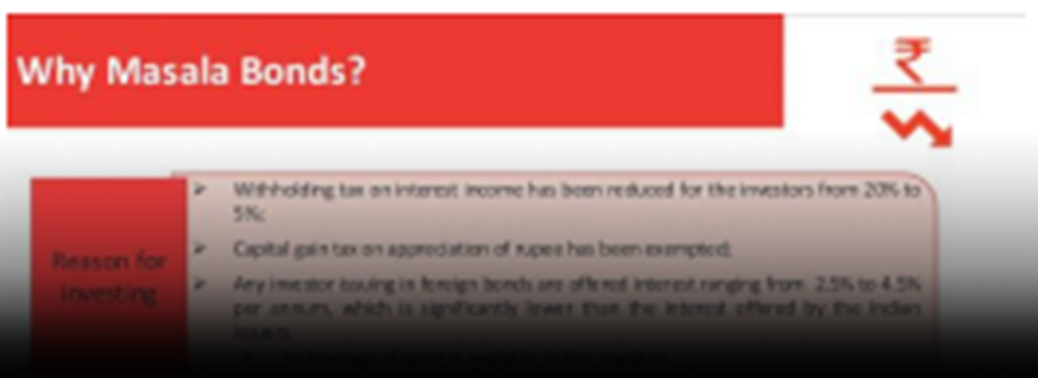
Why in News:
- Kerala becomes first sub-sovereign entity in country to access global market
Background: / Kerala masala bonds:
- The State has turned out to be the first sub-sovereign entity in the country to access the international market by listing masala bonds issued through its
- off-budget mechanism, the Kerala Infrastructure Investment Fund Board (KIIFB).
- Chief Minister Pinarayi Vijayan has become the debutant head of state in the country to open trading at the London Stock Exchange.
- KIIFB has raised ₹2,150 crore through masala bonds at a fixed interest rate of 9.723% per annum.
- The resources earned through the bonds would be channelised for funding a clutch of infrastructure development projects cleared by the KIIFB director board. KIIFB had decided to garner ₹3,500 crore from the international market in the initial phase. It plans to list the bonds at the Singapore stock exchange too.
What is Masala bond:
- Masala Bonds are rupee denominated bonds issued for funding Indian companies using foreign investor’s money.
- They are issued by International Finance Corporation (IFC )- a part of World Bank Group.
What is so special about them?
- Since these bonds are rupee denominated, burden of debt repayment due to fluctuating of currency falls on funders and hence Indian companies are expected to benefit from them.
How they help in meeting housing and infrastructure development
- Indian construction companies have big problems in getting domestic capital and it is a big challenge for getting foreign investor to come to India.
- Therefore, funders can buy bonds in their own stock exchange (London stock exchange , in this case ) without facing hassle to register here first
- Since denomination ensures good profit to Indian companies, this would create a healthy environment for other infrastructure companies to follow suit too and provide for necessary capital for Housing for all.
Challenges
- Though Real estate bill, prevention of corruption act and black-market bill will help in suspicious money to be reduced to large extent, much more needs to be done to boost consumers and investors’ confidence
GDP NUMBERS SUGGEST HIGH GROWTH IN MEDIUM TERM: PANEL
17, May 2019

Why in News:
- Projections for indirect tax fluctuating, need to stabilize.
Background:
- The 15th Finance Commission on Thursday said that India’s GDP numbers suggest a continued high growth trend in the medium term even though they have fluctuated in the last few years.
- The Commission and its Members made these observations during a meeting with senior officials in the Ministry of Finance, including Finance Secretary Subhash Chandra Garg, Revenue Secretary Ajay Bhushan Pandey, Expenditure Secretary Girish Chandra Murmu, Chief Economic Adviser Krishnamurthy Subramanian, Central Board of Direct Taxes Chairman P.C. Mody, and Central Board of Indirect Taxes and Customs Chairman P.K. Das.
- “These discussions are credible to the ongoing work of the Commission to reach an appropriate conclusion on both the vertical and the horizontal devolution,” the statement added. “The Commission observed that the GDP numbers have somewhat fluctuated within the overall global trend, which suggests continued high growth trend over the medium term,” the statement added.
- “The Commission also made note of the revenue projections and said that although the direct tax collections and projections are healthy, the ones for indirect tax have been fluctuating and need to stabilise in a stronger position,” a senior official in the Finance.
Rationalising Schemes:
- The Commission and the Ministry also spoke about the expenditure side and how to rationalise the Centrally-sponsored schemes. The 15th Finance Commission has been holding detailed discussions with the Finance Ministry over the last few months to discuss the consequences of the Seventh Pay Commission and the Ujwal Discom Assurance Yojana (UDAY) on financial positions of the States.
WHY AN INDUSTRIAL POLICY IS CRUCIAL
17, May 2019
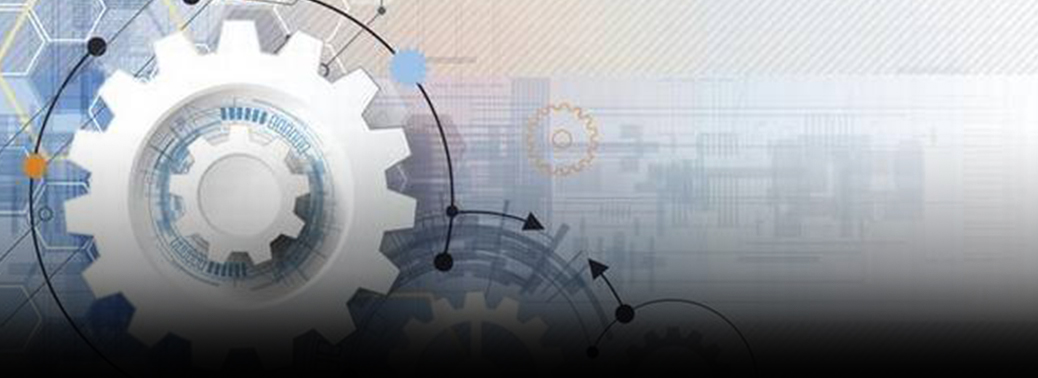
Why in News:
- No major country has managed to reduce poverty or sustain economic growth without a robust manufacturing sector.
Background:
- The contribution of manufacturing to GDP in 2017 was only about 16%, a stagnation since the economic reforms began in 1991.
- The contrast with the major Asian economies is significant. For example, Malaysia roughly tripled its share of manufacturing in GDP to 24%, while Thailand’s share increased from 13% to 33% (1960-2014).
- In India manufacturing has never been the leading sector in the economy other than during the Second and Third Plan periods.
- No major country managed to reduce poverty or sustain growth without manufacturing driving economic growth. This is because productivity levels in industry (and manufacturing) are much higher than in either agriculture or services.
- Manufacturing is an engine of economic growth because it offers economies of scale, embodies technological progress and generates forward and backward linkages that create positive spillover effects in the economy. The United Nations Conference on Trade and Development or UNCTAD finds that over 100 countries have, within the last decade, articulated industrial policies. However, India still has no manufacturing policy.
-
Focussing (as “Make in India” does) on increasing foreign direct investment and ease of
doing business, important though they may be, does not constitute an industrial policy. - Even neo-classical economists accept government intervention in the case of market failures. Mainstream economists point to specific instances of market failure that require a government-driven industrial policy:
- a)Deficiencies in capital markets, usually as a result of information asymmetries; lack of adequate investments inhibiting exploitation of scale economies;
- b)Imperfect information with respect to firm-level investments in learning and training; and lack of information and coordination between technologically interdependent investments.
- These are good reasons why an economy-wide planning mechanism is needed in India. However, the Indian state should steer clear of the “command and control” approach that harks back to pre-1991 days.
Core to growth:
Way Forward:
RBI ENVISIONS FOURFOLD GROWTH IN DIGITAL TRANSACTIONS BY 2021
16, May 2019
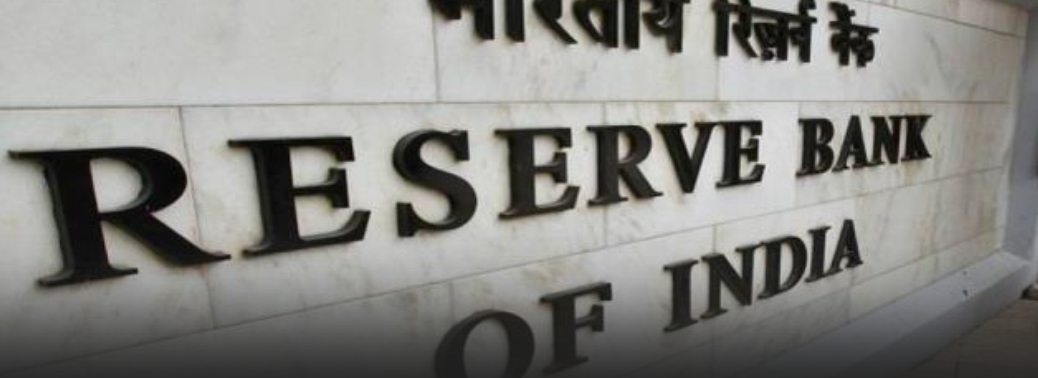
Why in News:
- The Reserve Bank of India (RBI) has envisaged four times growth in digital transaction in two years, in the payment system vision document for 2019-2021.
Background:
- Payment Systems Vision 2021, with its 36 specific action points and 12 specific outcomes, aims to achieve a ‘highly digital’ and ‘cash-lite’ society through the goal posts of competition, cost effectiveness, convenience and confidence (4Cs).
Payment Systems Vision 2021:
- The ‘Payment and Settlement Systems in India: Vision 2019 – 2021’, with its core theme of ‘Empowering Exceptional (E)payment Experience’, envisages to achieve “a highly digital and cash-lite society” through the goal posts of competition, cost effectiveness, convenience and confidence (4Cs).
- Payment systems landscape will continue to change with further innovation and entry of more players which is expected to ensure optimal cost to the customers and freer access to multiple payment system options.
- payment systems like UPI/IMPS are likely to register average annualised growth of over 100 per cent and NEFT at 40 per cent over the vision period (period up to December 2021).
-
The number of digital transactions is expected to increase more than four times from 2,069 crore in December 2018 to 8,707 crores in December 2021.
creating customer awareness, setting up a 24X7 helpline and self-regulatory organisation for system operators and service providers, among others.
INDIA TO DECIDE ON IRAN CRUDE IMPORTS AFTER POLLS
15, May 2019
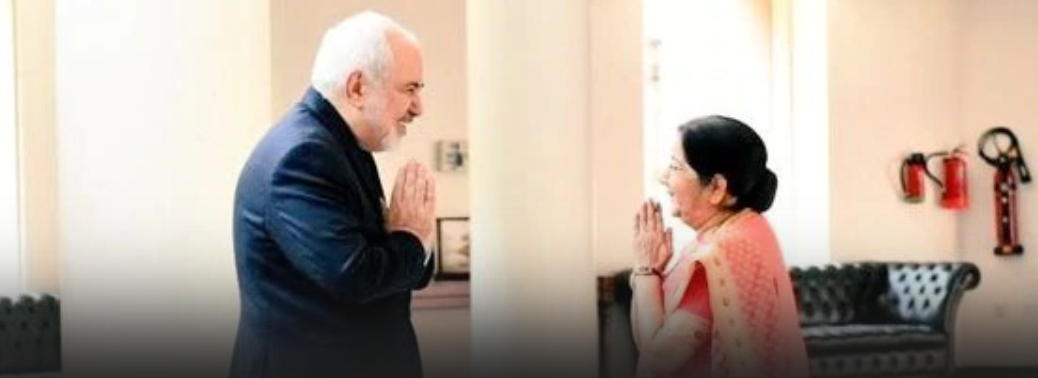
Why in News?
- India will take a call on the purchase of Iranian energy after the general elections
Details:
- Gulf after the U.S. waivers for supply of Iranian energy ended on May 2, prompting Tehran to declare that it would no longer be bound by the 2015 nuclear deal.
- President Hassan Rouhani has announced that Iran has given a 60-day timeline to the EU- 3 and other parties to the nuclear deal for restoring oil and banking channels.
- As part of the JCPOA, Iran was required to sell its surplus enriched uranium abroad, rather than store it inside the country.
What is Iran Nuclear Deal?
Formally known as the Joint Comprehensive Plan of Action (JCPOA), the nuclear deal was announced in 2015. The deal was signed between Iran and the P5+1 group (US, UK, France, Russia, China and Germany). It restricts Iran’s nuclear programme, in return for lifting most of the economic sanctions of against it.
Key Provisions of the Nuclear deal:
- Limits on uranium enrichment
- Limits on number of nuclear centrifuges (centrifuge is a device used to enrich uranium) Restrictions on plutonium enrichment- Stopping Iran from operating at Arak nuclear site which was used to make plutonium
- The deal increased the breakout time to 1 year.
US Withdrawal from Iran Deal
- International Atomic Energy Agency (IAEA) confirmed that Iran is complying with its obligations under the Nuclear Deal, however USA has decided to withdraw from the deal citing the following reasons:
- 1. The JCPOA fails to deal with the threat of Iran’s missile programme
- 2. The deal does not include strong mechanisms for inspections and verification.
- 3. Israel is also vehemently opposed the deal
Reaction:
-
France, Germany, UK, China, Russia and European Union announced that they remain
committed to the deal - Israel and Saudi Arabia have welcomed US decision
- Iran announced that it remains committed to the deal but may resume uranium enrichment if the accord no longer offers benefits
CPI INFLATION QUICKENS TO SIX-MONTH HIGH OF 2.92% ON FOOD, FUEL PRICES
14, May 2019

Why in News:
- Retail inflation quickened to a six-month high of 2.92% in April, driven in large part by accelerating food and fuel inflation,
Details:
- Growth in the consumer price index (CPI) quickened in April from 2.86% in March. Moreover, food inflation continued to rise with sustained upward momentum in fruits and vegetables.
Consumer Price Index (CPI):
- Consumer Price Index (CPI) is based on the final prices of goods at the retail level. Because of the wide disparities in the consumption baskets for different segment of consumers, India has adopted four CPIs
- CPI (Industrial Workers)
- CPI (Urban Non- Manual Employees) CPI (Agricultural Labour)
- CPI (Rural Worker)
- In India, RBI uses CPI (combined) released by CSO for inflation purpose with base year as 2012.
Wholesale Price Index (WPI):
- Wholesale Price Index (WPI) is based on the price prevailing in the wholesale markets or the price at which bulk transactions are made.
- It includes three components
- Manufactured products
- Primary Articles
- Fuel and power
- It is measured by Ministry of commerce and industry with base year as 2011-12
- Data on Wholesale Price Index (WPI) is available every week, while data on Consumer Price Index (CPI) is only available every month, so there is a time lag in CPI data availability compared to WPI data availability, which can impact decision making both for RBI and the Government of India.
Inflation:
- Inflation is a rise in the general level of prices of goods and services in an economy over a period of time. When the general price level rises, Each unit of currency buys fewer goods and services. This implies that: The purchasing power of money gets eroded. There is a loss in real value of money as medium of exchange and unit account in the economy. Inflation has good as well as bad impacts for economy.
DISCOURSE ON WTO REFORM LACKS BALANCE
14, May 2019
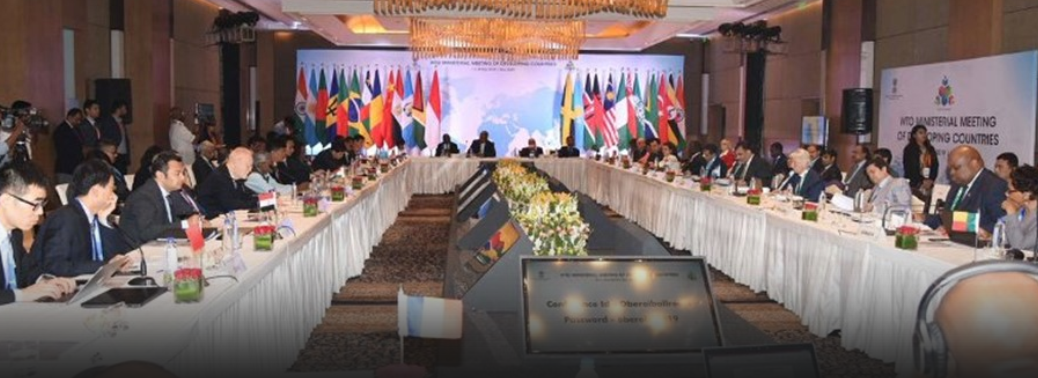
Why in News:
- The reforms being promoted in the World Trade Organization (WTO) are not in favour of the developing countries.
Background: / WTO:
- WTO came into existence after the conclusion of the Uruguay round in 1995 replacing the post WWII General Agreement on trade and tariff (GATT).
objective:
- The objective of WTO is to establish a rule based global trade regime providing equitable opportunity to every nation for reaping the benefits of globalization. WTO works on the following principles:
- Non-Discrimination
- Most Favored Nation: No special favors can be granted to any trading partner
- National Treatment: No discrimination between the imported and domestic products once they enter the market (which allows imposition of custom duty).
- Freer Trade: removal of the tariff and non-tariff barriers gradually through negotiations
- Predictability: providing predictability in the trade policy through binding rules and transparency. Promoting fair competition: providing a system of rules dedicated to open, fair and undistorted competition such as allowing for imposition of anti-dumping duty
- Encouraging Development and Economic Reforms: nudging the countries towards an open market and allow for special assistance and trade concessions for developing countries
WTO SUBSIDIES:
1.Green Box
- Green Box is domestic support measures that doesn’t cause trade distortion or at most causes minimal distortion. Hence, they don’t have any reduction commitments (non- reducible and exempt). These subsidies are government funded without any price support to crops. They are implemented as programmes aimed at income support to farmers without influencing (decoupled) the current level of production and prices. Green box subsidies are therefore allowed without limits provided they comply with relevant criteria.
2.Blue Box
3.AMS (Aggregate Measurement of Support)
- The AMS represents trade distorting domestic support measures. It is referred as the “amber box” in the Agreement on Agriculture.
- The AMS means annual level of support (subsidies) expressed in monetary terms, provided for an agricultural product in favour of the producers (product specific) of the basic agricultural product and non-product specific support provided in favour of agricultural producers in general.
- The Aggregate Measurement of Support (AMS) consists of two parts—product-specific subsidies and non-product specific subsidies. Product-specific subsidy refers to the total level of support provided for each individual agricultural commodity. Non-product specific subsidy, on the other hand, refers to the total level of support to the agricultural sector as a whole, i.e., subsidies on inputs such as fertilizers, electricity, irrigation, seeds, credit etc. Usually, these non-product subsidies are given to all crops.
Challenges India faces at WTO:
Conflicting interests of developing and developed nations:
- The conflict became more pronounced during the recent ministerial conference at Buenos Aires. While developing nation were pushing for concluding the agreements on Doha Development Agenda (DDA), developed countries like USA, Japan and other clubbed
together to include issues like e-commerce, investment etc. into the negotiations without a final agreement on DDA
Agricultural subsidies:
- Since India is an agrarian economy based on employment heavily subsidized agricultural products of developed nations have always been a cause of concern for agri-exports from India. The present quota of subsidies is based on the price levels of 1986-88 allowing developed countries to take away a major chunk of trade distorting subsidies quota.
Issue of public stockholding
- The minimum support price (MSP) provided to farmers in India falls under the Amber box category of subsidies under WTO which have to be removed. However, it directly affects India’s food security and income of farmers. Though a ‘peace clause’ agreed to during Bali conference allows India to carry on with its PDS program as of now, developed countries are hindering the realization of a permanent solution to the problem.
Divisions within developing nations
- There are divergence with the developing nations such as India and china on various trade related issues. In the recent conference while many developing nations supported the issues like E-commerce propose by developed nations, those lead by India staunchly opposed it
Attempts to derail the judicial body
- USA under the new administration has been blocking the appointment to WTO’s appellate
body which could erode the credibility of WTO as an effective arbitrator in future.
Lack of alternatives
- There are only few other multilateral bodies that deal with issue of global trade. Though UNCTAD does concern itself with the issues of global trade, its work is mostly advisory in nature and is not binding upon the nations as in case of WTO agreements
Special and differential treatment (SDT):
- In Doha round, member agreed to provide a favorable treatment to developing and least developed nations who have asymmetric capabilities in terms of resources. However, developed countries have been calling emerging economies such as India and China as unworthy of SDT
Issues related to intellectual property rights:
Though the issues related to compulsory licensing of medicines has been resolved by renegotiating the language of TRIPS, developed nations have been trying to push TRIPS+ commitments through WTO. - Threats to existence of WTO
- WTO itself faces the following threats which have the potential to turn it into a redundant and ineffective bodies.
Way Forward:
- India has been leading the front for developing nations to secure their interests in the global trade rules. In doing so, it must continue to stick to the fundamental principle of equity and non-discrimination. First of all, it must reach a consensus with all the other developing nations (among the G33 group) to create a united front against the developed nations.
- The recently held mini-ministerial conference can be used to reach such a consensus in the run up to the next ministerial conference. At the same time India must invest in its domestic industry and improving connectivity with other nations to increase its competitiveness in the global market.
TRUMP TO CHINA: TRADE DEAL NOW OR IT WILL BE ‘FAR WORSE’ AFTER 2020
12, May 2019

Why in News:
- Washington and Beijing are locked in a trade battle that has seen mounting tariffs, sparking fears the dispute will damage the global economy.
background:
What is the issue?
- The two biggest economies USA and china are engaged in a tariff war, which would disrupt world trade.
What are recent moves of USA and China led trade wars ?
- Tariffs, or customs duties, are border taxes charged on foreign imports by a country.
- Recently US government slapped sweeping tariffs on imported Chinese goods worth $34 billion, including aircraft parts, flat-screen televisions, and medical devices.
- All these will now face a high 25% levy when imported into the US.
- China responded with retaliatory tariffs of 25% on US goods worth an equivalent $34 billion, including soybean, automobiles, and marine products such as lobsters.
- USA is also considering to impose levies on Chinese goods worth another $500 billion in the coming months.
What are the reasons behind such moves?
- USA’s Point – USA’s tariffs are aimed at penalising China for arm-twisting foreign businesses to hand over technology to Chinese firms in lieu of access to the Chinese market. The US has indicated this action is specifically aimed at protectionist measures by China, especially its “Made in China 2025” programme, an initiative to transform China into an advanced manufacturing powerhouse.
- USA has also accused China of subsidising steel exports in a practice termed dumping selling a product at lower than the cost of production to gain market share.
- China’s Point – Besides slapping retaliatory tariffs on US goods, the Chinese could leverage an anti-American sentiment among consumers to boycott US goods.
- In 2012, Chinese nationalists boycotted Japanese cars and stores because of a territorial dispute, badly denting sales of Japanese goods.
What will be the consequences of the trade war?
- Last year, China had imported $130 billion in US goods, while the US bought goods worth
$506 billion from China, So, the goods trade is weighed in favour of China. - US economy could actually suffer more than China’s, and that South Korea, Malaysia, Taiwan and Singapore are the economies most at risk in Asia based on trade openness and exposure to supply chains involving China. After the latest series of tariff strikes by the US and China, world trade could be seriously disrupted as two-thirds of goods traded are linked to global value chains. There are also projections that almost two-thirds of US imports from China came in from companies with foreign capital and, based on foreign investment flows, the capital is likely to have come mostly from the US, Japan and South Korea.
What measures would be taken by China?
- Chinese government has indicated earlier that it would appeal to the World Trade Organization’s Dispute Settlement Body. If the appeal is admitted, trade analysts predict that China could have the upper hand, given the record of plaintiffs almost always ending up on the winning side. The retaliatory tariffs by China could potentially spark dissent and pressure from US domestic lobbies.
What are the concerns before India?
- India’s total exports have been faltering, down from $310.53 billion in FY15 to $262.29 billion in FY16, before recovering marginally to $276.55 billion in FY17.
- Exports from India to the US under Generalized System of Preferences (GSP) have been consistently on the rise, bucking the broader declining trend in overall exports.
- Generalized System of Preferences (GSP) is a preferential tariff system extended by developed countries to developing countries.
- Out of the total GSP imports into the US under this programme, India has consistently accounted for a quarter of this. USA’s pointed attack on duty flow imports from India into the US has specifically targeted the GSP programme.
- India has time and again raised concerns over negative impact of tightening of visa norms by the US on the Indian IT sector.
- It has also asked America to continue extending duty-free access under the Generalized System of Preferences (GSP) to its products such as chemicals and engineering.
- India also wants exemption from the hike in import duty on certain steel and aluminium items.
A fraught moment: U.S.-China Trade War
11, May 2019
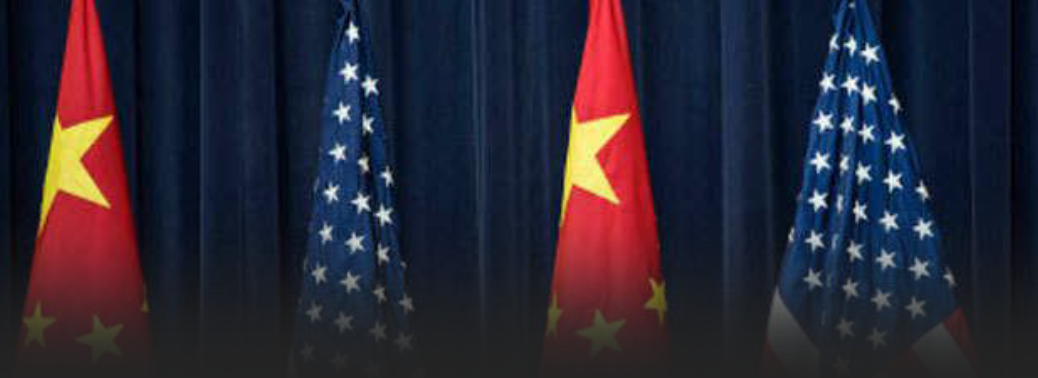
Why in News:
- The U.S. and China need to take sustained steps to de-escalate tensions over tariffs
Details:
- The U.S.-China trade war has flared up again after a deceptive lull over the last few months, when both sides were trying to negotiate a
- Trump tweeted that he would raise the 10% tariff
- imposed on $200-billion worth of Chinese goods to 25%. The latest revival in tensions between the world’s two largest economies elevates the risk of a global trade war to its highest level since the first signs emerged in 2018. The increase in tariffs imposed on goods crossing international borders essentially represents a new tax on a global economy already facing a slowdown
- The International Monetary Fund trimmed its projection for global growth in 2019 to 3%, from a 3.5% forecast made in January, citing slowing momentum in “70% of the world economy”.
- Were tensions in trade policy to flare up again, it could result in large disruptions to global supply chains and pose downside risks to global growth, the IMF warned
- world economy faces the very real risk of an escalation in this trade war where other countries, including India
- it could result in U.S. job losses too as the import of Chinese parts become uneconomical for smaller businesses
- Indian policymakers would do well to closely monitor the latest escalation in trade tensions pans out for global demand and international energy prices, given that the RBI has flagged oil price volatility as a factor that would have a bearing on India’s inflation
Impact on India:
- The trade war may impact Indian economy more adversely.
- A trade war would slowdown global growth overall, worsening India’s already dismal export numbers. The biggest impact could be on the rupee which is already battling historic lows against the US The rising price of oil threatens to widen India’s current account deficit, impacting India’s macroeconomic stability. Reducing investment flows into India. However, India which runs a $51.08 billion trade deficit with China may stand to benefit. China imports 100 million metric tons of soybean which serves as protein source and feeds its food processing industry, this presents a huge opportunity for India.
- India may also seek the opportunity to reduce its own trade deficit against India may be able to gain some traction in textile, garments and gems and jewellery if Chinese exports to the US slow down.
Trump Raises Tariffs On Chinese Goods
11, May 2019
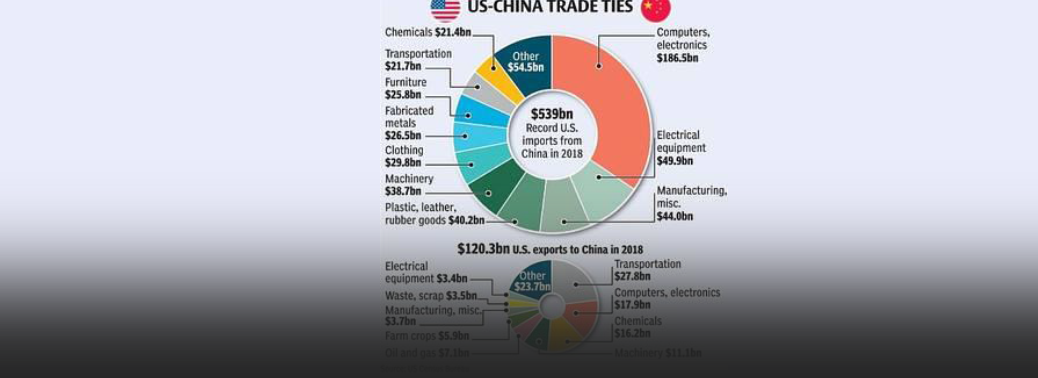
why in news:
- The Trump administration raised import taxes on $200 billion of Chinese imports from 10% to 25%.
Background: / China’s Dominance:
- China joined WTO in 2001 and since then it has very clearly used the existing Free Trade system to its huge advantage.
- China exports more than 2 trillion worth of goods whereas it imports are just 1.32 trillion. The balance in trade which is in favour of China is 236 This is clearly unsustainable.
- It has created mass manufacturing empire for itself which is hurting other countries including India –low- end manufacturing by offsetting high costs with better infrastructure and more reliable and extensive supply networks. As factory wages in China have risen to the highest in emerging
- Asia, however, other developing countries with lower costs have begun to steal away investment and jobs, helping to promote industrialization and boost growth at home.
- Trump is sending a clear message – China cannot dump their goods around the world.
What Happens Now:
- China holds $1.17 trillion of U.S. government debt. If there is a trade war, China could reduce its S. debt holdings as a political weapon against the Trump administration tariffs proposal.
- If that happens, the dollar could fall and other countries could follow suit and sell their holdings.
- If China reduces it’s buying at a time when the U.S. is increasing its supply of new Treasuries into the market, which could lead to a rout in the bond market.
Effect on India:
- It invariably leads to a higher inflationary and low growth scenario.
- Inflation is generally good for assets such as gold, while having a negative impact on currency and some sectors in the equity market.
- The three external risk factors — higher tariffs, rising interest rates, and elevated bond sales
- —at a time when the domestic banking system is grappling with a renewed stress of bad loans, is a serious threat to India.
INDIA HAS OVERLY RESTRICTIVE MARKET BARRIERS
08, May 2019

Why in News:
- U.S. is India’s largest export destination, India is only the 13th largest for the U.S. due to “overly restrictive market access barriers.Tariff and non-tariff barriers, multiple regulations put foreign firms at disadvantage
Details:
- India is already the world’s third largest economy, and by 2030, it will become the world’s largest consumer market because of the rapid growth of the middle class, India is only the U.S.’s 13th largest export market, due to overly restrictive market access barriers,”
- Meanwhile, the U.S. is India’s largest export market, accounting for something like 20% of the total. There is a real imbalance.”
- while American technology and expertise can play an important role to meet India’s
- developmental needs, U.S. companies faced significant market access barriers in India. These include both tariff and non-tariff barriers, as well as multiple practices and regulations that disadvantage foreign companies,”
- India’s average applied tariff rate of 13.8%, and that remains the highest of any major world economy
- goal is to eliminate barriers to U.S. companies, operating here, including data-localisation restrictions that actually weaken data security and increase the cost of doing business,
Price controls’
- “Other obstacles include price controls on medical devices and pharmaceuticals, and
- restrictive tariffs on electronics and telecommunications products
- U.S. would not be able to sell oil to India at lower rates because oil is owned by private players and the U.S. government would not be able to force them to offer concessionary rates.
Tariff or customs duty
- A tariff or customs duty is a financial charge in the form of a tax, imposed at the border on goods going from one customs territory to another.
- Tariffs applied to imports are usually collected by customs officials of the importing country when goods are cleared through customs for domestic consumption.
- Tariffs can also be imposed on exports also but the import tariffs are the most common type of tariffs and have been the main focus of attention of GATT/WTO negotiations.
Impact of Tariffs
- There are two main purpose of imposing tariffs by the Governments. To protect their domestic industries from the competition of imports. To collect revenue.
DESERVED PENALTY: SEBI’S ‘CAPITAL’ PUNISHMENT TO NSE
07, May 2019

Why in News:
- The Securities and Exchange Board of India (SEBI) ordered the National Stock Exchange of India (NSE) to pay a fine of about ₹1,000 crore within 45 days for its supervisory laxity that led to some of its broker-clients gaining preferential access to certain market data.
Details:
- SEBI noted that the NSE’s use of the tick-by-tick server protocol had allowed certain high- frequency trading firms using the exchange’s secondary server to receive important market data before other market participants, who were thus put at a disadvantage.
- It raised serious questions about market fairness
- millions of retail investors believe that stock exchanges provide a level playing field to all the players.
- SEBI ruled that it did not find sufficient evidence to conclude that the NSE committed a fraudulent act, but was unequivocal in ruling that the Exchange had failed to exercise the necessary due diligence to ensure that it served as a fair marketplace.
- The exchange, which had been barred from proceeding with its initial public offering during the pendency of the SEBI probe, will finally be able to tap the capital markets to fund its growth, after a six-month moratorium.
- Financial penalty is a welcome regulatory action.
- As the market’s regulator, SEBI must deal with breaches of their supervisory brief by exchanges in an exemplary manner to ensure that small investors retain confidence in the fairness and soundness of key institutions that enable a market economy.
Securities and Exchange Board of India:
- Securities and Exchange Board of India is a government established in 1988 authority which controls the securities market in India.
- Indian Parliament passed SEBI Act 1992 in 1992 India which made SEBI a statutory body
Functions:
- It manages the security markets in India
- It analysis the trading of stocks and safes the security market from the malpractices. It controls the stockbrokers and sub- stockbrokers
- It provides education regarding market to the investors to enhance their knowledge
TRUMP TO HIKE TARIFFS ON USD 200 BN OF CHINESE GOODS
06, May 2019
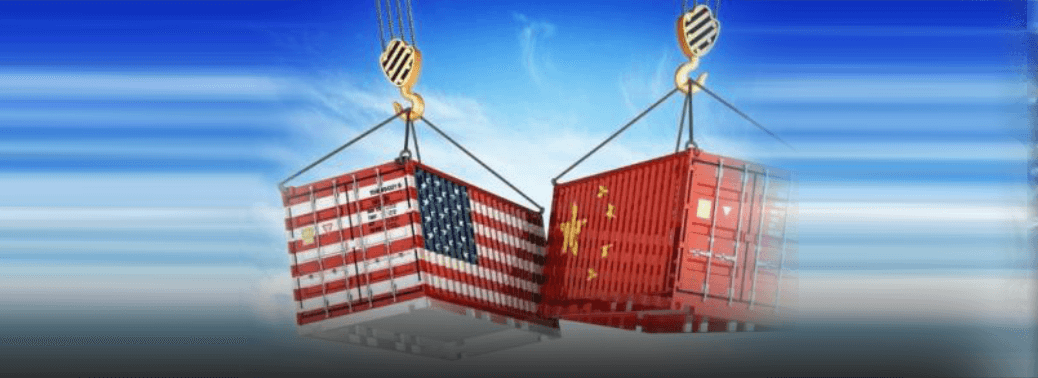
Why in News
- US President Donald Trump announced that the United States would raise tariffs on USD 200 billion of Chinese goods to 25 per cent.
Details:
- Trump’s action came as a major Chinese delegation in Washington for the latest round of talks to end the trade war between the world’s two biggest economies – around billed as the last one and possibly leading to a deal to end the conflict. “For 10 months, China has been paying Tariffs to the USA of 25% on 50 Billion Dollars of High Tech, and 10% on 200 Billion Dollars of other goods
- The two sides have imposed tariffs on USD 360 billion in two-way trade since last year. But Trump and Chinese leader Xi Jinping agreed to a truce in to refrain from further escalation. Besides a greater opening of the Chinese market to US goods, Trump is pressing for structural changes such as Beijing ending its practice of forcing US companies that operate in China to share their technology.
- Trump is also demanding that China halt theft of intellectual property and subsidies to state-owned companies.
- To pressure China, Trump has even threatened to slap tariffs on all Chinese products entering the US they were worth USD 539.5 billion last year.
World Trade Organization (WTO)
- In international economic relations, the most significant event to occur in recent times has been the establishment of the World Trade Organization (WTO) in 1995. The WTO replaced GATT (General Agreement on Tariffs and Trade) formalised in 1947. The former GATT was not really an organisation. Rather it was a merely legal arrangement.
WTO Agreements
- Agreement on Agriculture
- Agreement on trade in textiles and clothing (Multi-Fibre Arrangement)
- Agreement on market access
- Agreement on TRIMs
- Agreement on TRIPs (Trade Related Intellectual Property Rights)
- The General Agreement on Trade in Services (GATS)
Emerging trade issues:
- Labour and environmental standards.
- Global value chains and promotion of supply chains. e-Commerce.
- Competition & investment provisions.
- Environmental and sustainable goods produced using clean and green energy. Transparency in Government procurement.
- Transparency in state-owned enterprises and designated monopolies.
ANTI DUMPING DUTY PUT ON SACCHARINE
06, May 2019

Why in News:
- The Finance Ministry has, on the recommendations of the Commerce Ministry, imposed an anti-dumping duty of $1,633.17 per tonne on the import of saccharine from Indonesia.
Details:
- Saccharine is a compound most commonly used in sugar-substitute sweeteners.
- Indonesia, accounted for a large chunk of India’s saccharine imports.
- In 2017-18, India imported $4.36 million worth of saccharine from Indonesia, which is 43% of the total imports of the sugar-substitute compound.
- In the April 2018 to February 2019 period, India imported only $1.48 million worth of saccharine from Indonesia, about 20% of its total imports from around the world.
Why should an anti-dumping duty be levied?
- Dumping is a process where a company exports a product at a price lower than the price it normally charges in its home market.
- An anti-dumping duty is a protectionist tariff that a domestic government imposes on foreign imports that it believes are priced below fair market value.
- India is one of the largest consumption economies in the world and a potential ground for dumping a wide variety of goods, especially from China, Taiwan and South Korea.
- Thus, India must have strong anti-dumping defences in place.
FARMERS WORRIED PEPSICO-GOVT. TALKS WILL DILUTE THEIR RIGHTS
05, May 2019
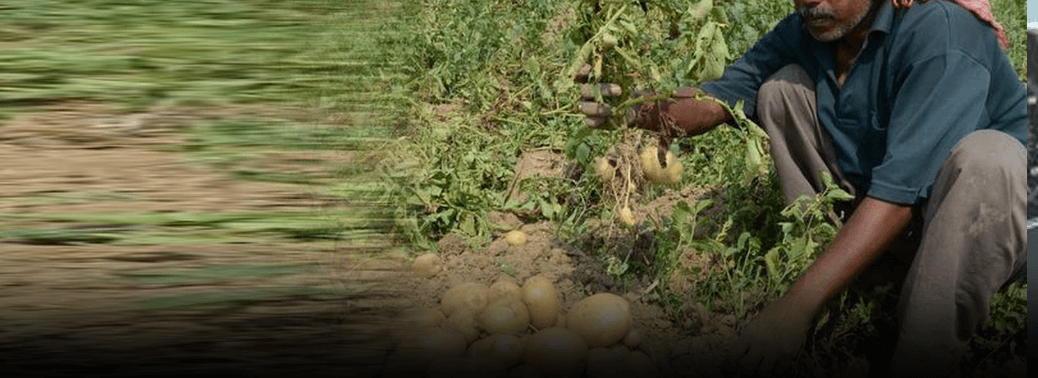
Why in News:
- PepsiCo withdraws its cases against Gujarat potato growers, farmers groups are still worried about the dilution of their rights by state and Central governments.
Background:
- The company has said that farmers infringed its patent rights by growing the potato variety used in its product called as Lays chips.
- However, facing boycott calls after it sued Gujarati potato farmers PepsiCo has offered to settle the case if the farmers stop growing the registered potato variety used in its Lays chips.
Pepsico’s Point of View
- PepsiCo has invoked Section 64 of the Protection of Plant Varieties and Farmers’ Rights
- (PPV&FR) Act, 2001 to claim infringement of its rights.
- The section prohibits anyone other than the breeder of seeds or a registered licensee of that variety to sell, export, import or produces such variety.
- The farmers were allegedly growing a variety of potato namely FL 2027, also called FC5, on which PepsiCo claimed exclusive rights by virtue of a Plant Variety Certificate (PVC).
Farmers Point Of View
- farmers groups have said that section 39 of the Protection of Plant Varieties and Farmers’ Rights (PPV&FR) Act, 2001 allows farmers to grow and sell any variety of crop or even seed as long as they don’t sell branded seed of registered varieties.
- The farmers have requested the government to interfere on their behalf and ask Protection of Plant Varieties and Farmers’ Rights Authority (PPV&FRA) to make a submission in court and fund legal costs through the National Gene Fund.
Protection of Plant Varieties and Farmers’ Rights (PPV&FR) Act, 2001
- The aim of the act is the establishment of an effective system for the protection of plant varieties, the rights of farmers and plant breeders and to encourage the development of new varieties of plant.
- The act also establishes Protection of Plant Varieties and Farmers’ Rights Authority under the Ministry of Agriculture and Farmers Welfare.
- The major function of Authority includes Registration of new plant varieties; documentation of varieties registered; Preservation of plant genetic resource; Maintenance of the National Register of Plant Varieties and Maintenance of National Gene Bank (for conserving seeds of registered varieties).
- A farmer can save, use, sow, re-sow, exchange, share or sell his farm produce including seed of a variety protected under the PPV&FR Act, 2001
- However, the farmer shall not be entitled to sell branded seed of a variety protected under the PPV&FR Act, 2001.
- There is also a provision for compensation to the farmers for non-performance of variety. The farmer shall not be liable to pay any fee in any proceeding before the Authority or Registrar or the Tribunal or the High Court under the Act.
National Gene Fund
- In 2007, the National Gene Fund was constituted under the PPV&FR Act 2001.
- It started with an initial amount of Rs 50 lakh from the Central government and gets a contribution from the money paid by plant breeders as registration and annual fee.
GST BUOYANCY
04, May 2019

Why in News
- GST collections hit a record high, the next step should be to simplify the tax regime
Details:
- The GST inflows of ₹1,13,865 crore in April are the
- highest recorded since the tax regime was introduced in July 2017
- They represent an increase of over 10% compared to the same month a year ago
- GST revenues have crossed the ₹1 lakh crore mark Healthier GST collections, if sustained, will also mean less pressure on the Centre to cover its fiscal deficit. In the absence of more disaggregated data, it could be argued that tax rate cuts by the GST Council in December too may have spurred higher volumes for some goods and services. The rush to pay tax arrears at the end of the financial year may have been another seasonal factor contributing to better tax collection
GST
- It is a destination-based taxation system.
- It has been established by the 101st Constitutional Amendment Act.
- It is an indirect tax for the whole country on the lines of “One Nation One Tax” to make India a unified market. It is a single tax on supply of Goods and Services in its entire product cycle or life cycle i.e. from manufacturer to the consumer.
- There is a provision of GST Council to decide upon any matter related to GST whose chairman in the finance minister of India.
GST Council
- It is the 1st Federal Institution of India, as per the Finance minister. It will approve all decision related to taxation in the country.
- It consists of Centre, 29 states, Delhi and Puducherry.
- Centre has 1/3rd voting rights and states have 2/3rd voting rights. Decisions are taken after a majority in the council.
VARUNA MITRA BOOSTED FARM INCOME, SAYS ISEC STUDY
02, May 2019
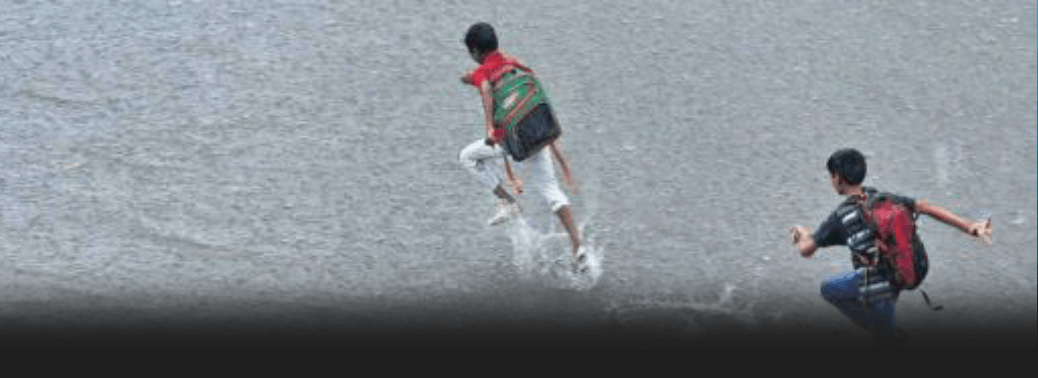
Why in News
- Rain forecast helped farmers get average net gain of ₹5,106 per acre’
Details:
- Accuracy in the weather information provided by Varuna Mitra, the 24×7 help desk launched by the Karnataka State Natural Disaster Monitoring Centre, has helped farmers realise average net gain of ₹5,106 per acre, according to a study.
- Launched in 2010, Varuna Mitra provides weather forecast at the gram panchayat level for the benefit of farmers and the public. It provides forecast on rainfall, temperature, humidity, wind speed and its direction three days in advance.
- Data was collected from 1,350 farmers across nine districts of high moderate and low rainfall regions covering eight agro-climatic zones during 2016-17 in the State. It revealed that accuracy in weather forecast enabled reduction in cost of cultivation and
- post-harvest loss, improvements in crop yield, and net incomes.
Accurate prediction
- The study “Economic impact evaluation of Varuna Mitra on agriculture” conducted by, Centre for Ecological Economics and Natural Resources, ISEC, Bengaluru, said 63% of farmers had received accurate prediction of weather.
- Arecanut growers used most of the facility since incidence of rain during the harvest period could increase the moisture content in arecanut, thereby lowering quality and price,
- forecast information has led to an annual incremental gain of ₹495.3 crore for all area covered under Varuna Mitra.
Varuna mitra
- To disseminate weather related information, weather forecast and advisories directly to the general public,Karnataka state natural disaster monitoring centre has been operating an interactive help-desk “VARUNA MITRA” functioning on 24x7x365 basis. More than 3.5 lakh farmers have directly contacted and benefited from VARUNA MITRA services.
PUBLIC SECTOR BANKS LONG TERM STRATEGY ON JAN DHAN BEGINS TO PAY OFF
29, Apr 2019
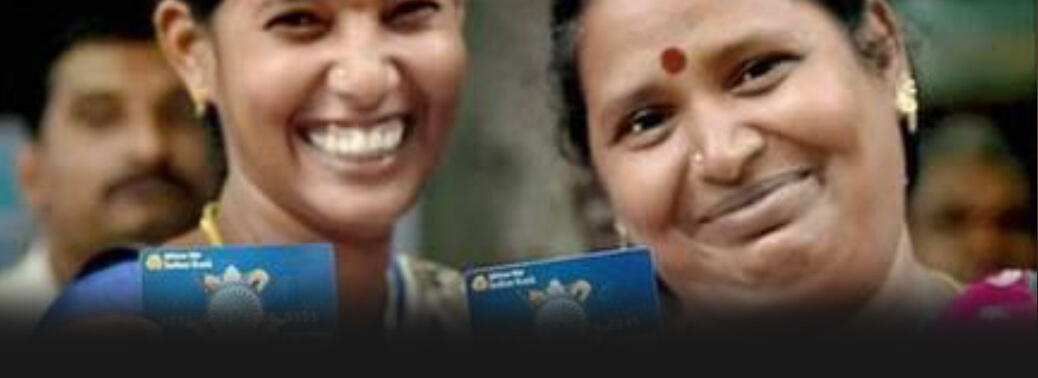
Why in News
- Total deposits in the last three years have grown by over 2.5 times to ₹98,400 cr.
Details
- Public sector banks stand to earn as much as ₹5,000 crore due to the increasing quantum of deposits placed in Jan Dhan accounts, and can vastly monetise this resource once they start implementing advanced analytics and begin lending to these customers, Over the last three years, the number of Jan Dhan beneficiaries has risen from 22 crore to 35 crores, as of April 2019.
- This represents a growth of nearly 60% over the three years. The growth in the number of accounts has been pretty steady over the last three years, with the demonetisation year of 2016-17 seeing the fastest growth of about 27%. The total quantum of deposits in Jan Dhan accounts has grown from a little more in April 2019, a growth of more than 2.5 times.
Rising balances
- A balance of about ₹1 lakh crore is equal to a revenue of ₹3,000 crore
- With that amount of revenue, the banking system can start making it a break-even business, and if they start lending on top of it, it can really become viable.”. the business of opening and maintaining Jan Dhan accounts must be viewed in the long-term, and must also be taken in combination with other activities that see the opening of bank accounts for the poorer sections of society.
- The data also shows two distinct trends in the Jan Dhan accounts. The first is that the public sector banks make up an overwhelming 72.5% of the total number of Jan Dhan accounts, and 89.5% of total deposits. The bulk of the rest are made up by regional rural banks.
Jan dhan yojana
- Jan dhan yojana is the ambitious scheme which will strengthen India through collecting revenues.
Major objective of Jan-Dhan Yojana:
- The Jan-Dhan Yojana is aimed to provide basic banking accounts with a debit card with inbuilt accident insurance. Jandhan-Aadhaar-Mobile (JAM) linking will continue to provide the essential backbone to cover various activities. This includes Banking / Savings & Deposit Accounts, Remittance, Credit, Insurance, Pension in an affordable manner. This decision to make Pradhan Mantri Jan Dhan Yojana an open ended scheme will accelerate the pace of digitised financially included and insured society.
NO MORE LEEWAY: ON RBI’S RELUCTANCE TO FURNISH LIST OF WILFUL DEFAULTERS
29, Apr 2019

Why in News
- The RBI must set an example on transparency, and serve the national economic interest
Details:
- The Reserve Bank of India has been given a “last opportunity” by the Supreme Court to stop being in “contempt” of the court’s clear and unambiguous order of December 2015
- Ruling on a batch of contempt petitions against the RBI, a two-judge bench directed it to furnish all information relating to inspection reports and other material sought by Right to Information (RTI) petitioners.
- The bench made it clear that “any further violation shall be viewed seriously”.
- The banking regulator has repeatedly tried to stonewall multiple requests seeking information ranging from the names of wilful defaulters on bank loans worth hundreds of crores of rupees, to the bank-wise breakup of mark-to-market (MTM) losses and the losses in foreign currency derivatives contract cases.
- The RBI was ticked off by the CIC for failing to uphold the interest of the public and not fulfilling its statutory duty to depositors, the economy and the banking sector, by privileging individual banks’ interests over its obligation to ensure transparency.
- At a time when the level of bad loans at commercial banks continues to remain worryingly high, worsening their combined capital to risk-weighted assets ratio(CRAR), it is inexcusable that the RBI continues to keep the largest lenders to banks, the depositors, and the public in the dark on the specific loan accounts that are endangering the banking system’s health and viability. The RBI’s latest Financial Stability Report shows that the industry-wide CRAR slid to 13.7% in September 2018, from 13.8% in March 2018, with the ratio at the crucial public sector banks declining more sharply to 11.3%, from 11.7%
- As the CIC aptly observed last year, the central bank’s intransigence and repeated failure to honour the court’s orders ultimately undermines the very rule of law it seeks to enforce as a banking sector regulator empowered by Parliament.
Capital Adequacy Ratio (CAR)
- Capital Adequacy Ratio (CAR) is also known as Capital to Risk (Weighted) Assets Ratio (CRAR).It is the ratio of a banks capital to its risk National regulators track a bank’s CAR to ensure that it can absorb a reasonable amount of loss and complies with statutory Capital requirements. It is a measure of a bank’s capital. It is expressed as a percentage of a bank’s risk weighted credit exposures.
GUJARAT GOVERNMENT BACKS POTATO FARMERS IN PEPSICO CASE
28, Apr 2019
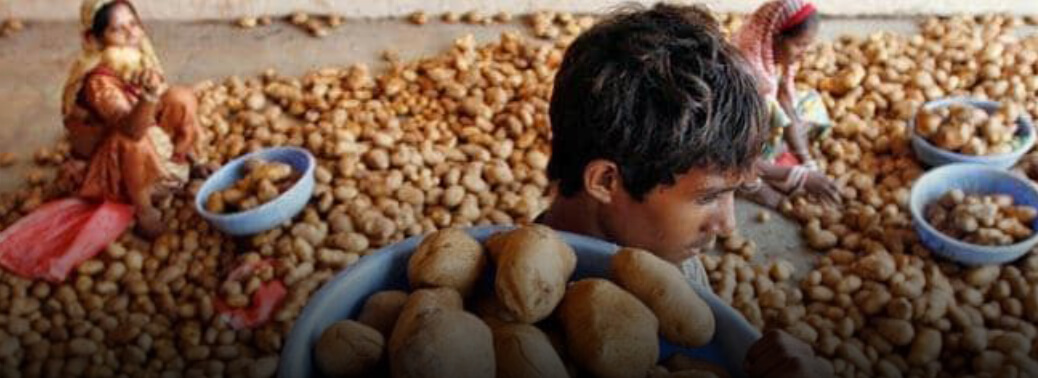
Why in News?
- The Gujarat government has decided to back the nine potato farmers locked in a legal battle with food and beverages giant PepsiCo after the latter dragged them to court for growing a potato variety which it claimed was its registered product.
Details:
- The state government had received the representation of the farmers to intervene in the matter and it would submit to the court to be included as a party backing the farmers cause.
- PepsiCo has sued the nine farmers of Sabarkantha and Aravalli districts of North Gujarat for allegedly growing the FL2027 or FC5 variety of potatoes for which it has claimed Plant Variety Protection (PVP) rights.
- The company has stated that it obtained PVP rights over the potato variety under the Protection of Plant Variety and Farmers Right (PPVFR) Act, 2001.
- It asserted that the farmers were violating its rights over the seed variety.
- The farmers, on the other hand, made their case citing the provisions of the very legislation which, they claimed allows “to save, use, sow, resow, exchange, share or sell his farm produce including seed of a variety protected under this Act”.
- The company said it was “compelled to take the legal recourse” to safeguard the interests of thousands of farmers associated with its “collaborative potato farming programme”.
- North Gujarat has come to represent the potato bowl of the country producing more than 33 lakh tonnes from 1.21 lakh hectares.
The Protection of Plant Varieties and Farmers’ Rights (PPV& FR) Act,2001:
- Enacted by India in 2001 adopting sui generis system.
- It is in conformity with International Union for the Protection of New Varieties of Plants (UPOV), 1978. The legislation recognizes the contributions of both commercial plant breeders and farmers in plant breeding activity and also provides to implement TRIPs in away that supports the specific socio-economic interests of all the stakeholders including private, public sectors and research institutions, as well as resource-constrained farmers.
Objectives of the PPV &; FR Act, 2001:
- To establish an effective system for the protection of plant varieties, the rights offarmers and plant breeders and to encourage the development of new varietiesof plants.
- To accelerate agricultural development in the country, protect plant breeders’rights; stimulate investment for research and development both in public &private sector for the development new of plant varieties.
- Facilitate the growth of seed industry in the country which will ensure the availability of high-quality seeds and planting material to the farmers.
PEPSICO Proposes settlement to Potato farmers whom they SUED
27, Apr 2019
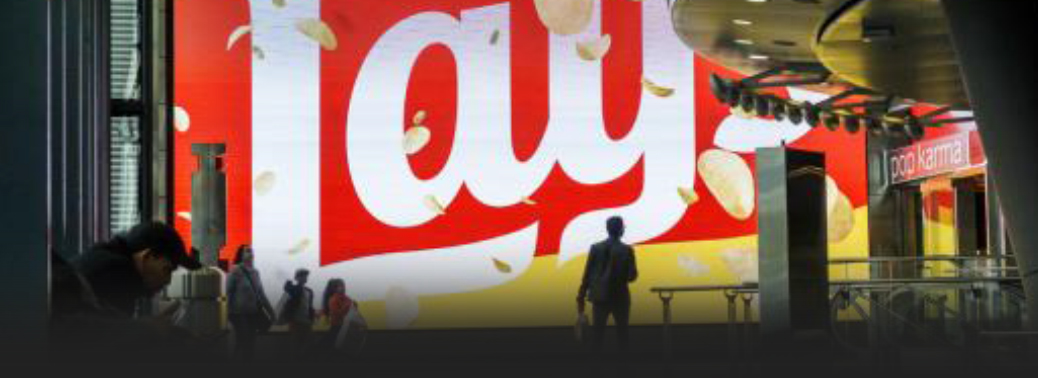
Why in News?
- Food and beverages giant PepsiCo on Friday offered to settle lawsuits against four farmers who it had dragged to court for allegedly illegally growing a variety of potatoes “registered” by the company.
Details:
- Nine farmers from Sabarkantha and Aravalli districts are being sued by PepsiCo for allegedly growing a variety of potatoes for which it has claimed Plant Variety Protection rights.
- During a hearing in the commercial court in Ahmedabad, the firm offered to settle the dispute if the farmers gave an undertaking to purchase this specific variety of seeds from the company and thereafter sell the potato produced to
- The multinational giant has sought damages of Rs 1 crore from each of the four farmers in its suit filed at the commercial court in Ahmedabad, and Rs 20 lakh from each of the farmers sued at a district court in Modasa town of Arvalli
- Over 190 activists came out in support of these farmers requesting the Union government
- to ask PepsiCo India to withdraw its “false” cases against Gujarat farmers.
- In a letter to the Ministry of Agriculture, the 194 signatories sought financial aid and protection of rights of farmers who have been sued for growing and selling a potato variety called FC-5 potato, for which PepsiCo India Holdings
- claimed to have obtained “exclusive rights in the country in 2016”.
The Protection of Plant Varieties and Farmers’ Rights (PPV&FR) Act, 2001:
- Enacted by India in 2001 adopting sui generis It is in conformity with International Union for the Protection of New Varieties of Plants (UPOV), 1978.
- The legislation recognizes the contributions of both commercial plant breeders and farmers in plant breeding activity and also provides to implement TRIPs in a way that supports the specific socio-economic interests of all the stakeholders including private, public sectors and research institutions, as well as resource-constrained
Objectives of the PPV & FR Act, 2001:
- To establish an effective system for the protection of plant varieties, the rights of farmers and plant breeders and to encourage the development of new varieties of
- To recognize and protect the rights of farmers in respect of their contributions made at any time in conserving, improving and making available plant genetic resources for the development of new plant
Supreme Court Gives RBI ‘Last Chance’ to Alter
27, Apr 2019
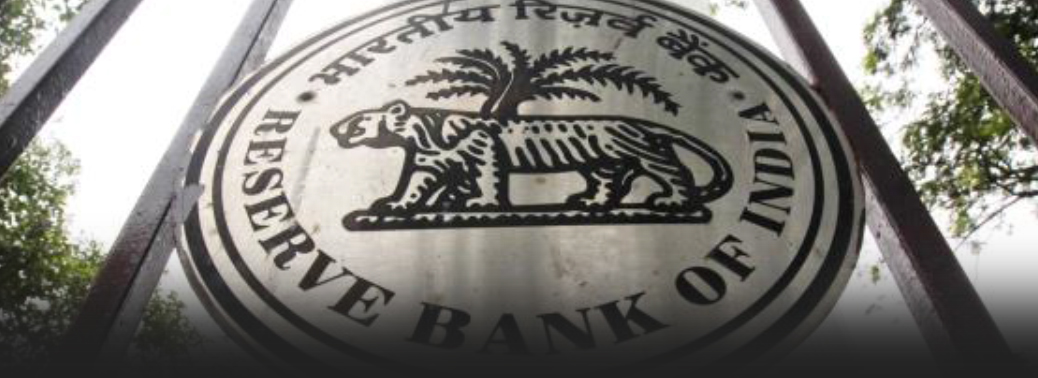
Why in News?
- Supreme Court gave one “last opportunity” to the Central bank to disclose its annual inspection reports of private banks and financial institutions along with the list of loan defaulters and non- performing assets (NPAs) under the Right to Information (RTI)
Details:
- It has also directed the RBI bank to review its policy to disclose information relating to banksunder RTI, saying, “It is duty-bound under the law”.
- The top court rejected the RBI’s stand that it is not bound to disclose the details and held that by its failure to disclose the information the RBI committed contempt of court for violating the 2015 judgment in which it had said that the RBI is supposed to uphold public interest and not the interest of individual banks
No Fiduiciary ties
- The RBI is clearly not in any fiduciary relationship with any The RBI has no legal duty to maximise the benefit of any public sector or private sector bank. There is no relationship of ‘trust’ between them. The RBI has a statutory duty to uphold the interest of the public at large, the depositors, the country’s economy and the banking sector,
- The Supreme Court said the RBI cannot deny information under the transparency law unless the material is exempted from disclosure under the law.
- The Central Information Commission (CIC) had also issued a similar direction over the RBI withholding information related to
- The Supreme Court agreed that the economy could be harmed if information is prematurely released on matters of national economic interest, currency or exchange rates, interest rates, taxes, the regulation or supervision of banking, insurance and other financial institutions and proposals for expenditure or borrowing and foreign However, lower-level economic and financial information like contracts and departmental budgets should not be withheld under this exemption, the court said.
An impact on financial stability
- “Banks hold deposits on demand. This kind of information, if it goes out in the public domain, will have an impact on financial The RBI has been arguing that this is a matter of confidentiality between the central bank and other entities and section 28 of the RBI Act allows them to disclose only confidential rather than individual information,” said a former RBI official.
What is Non-Performing Asset (NPA)
- A nonperforming asset (NPA) refers to a classification for loans or advances that are in default or are in arrears on scheduled payments of principal or In most cases, debt is classified as nonperforming when loan payments have not been made for a period of 90 days. While 90 days of nonpayment is the standard, the amount of elapsed time may be shorter or longer depending on the terms and conditions of each loan.
What are Insolvency and Bankruptcy?
- Insolvency is the situation where the debtor is not in a position to pay back the For a corporate firm, the signs of this could be a slow-down in sales, missing of payment deadlines etc. Bankruptcy is the legal declaration of Insolvency. So the former is a financialcondition and latter is a legal position. All insolvencies need not lead to bankruptcy. The new code has a sequential procedure of Insolvency resolution, failing which, it leads to Bankruptcy (following liquidation of assets).
UNCERTAIN TIMES: ON INDIA’S OIL IMPORTS
26, Apr 2019

Why in News:
- The oil market have undergone with a great deal of uncertainty over supplies which is due to the US economic sanctions against Iran.
Details:
- The United States announced that it would not extend beyond May 1 the 180-day waiver which was granted to eight countries, including India, to purchase oil from Iran.
- It causes the price of Brent crude oil to witness a sudden jump to more than $75, from $71.97, which adversely affects the supply of oil in the market.
- The price of Brent crude, has been rising steadily in the last few months, and has increased by almost 50%. It was low of about $50 in December, as a result of the decision of the Organisation of the Petroleum Exporting Countries (OPEC) to restrict their output to boost prices.
- India imports more than 10% of its crude oil from Iran, so the government faces the immediate challenge of having to find alternative suppliers to meet its huge energy needs.
Effects in India
- Higher oil prices will have a negative impact on India’s current account deficit, fiscal deficit and inflation in the wider economy.
- The current account deficit, which had narrowed to 2.5% of GDP in the December, will worsen. The fiscal deficit, which has been widening in advance of the elections, is also likely to get increasing out of control. While inflation is relatively considerate at the moment, any further acceleration in price gains will impact our economy.
- Jump in the oil price results a secular rise in the price of the commodity.
- Increase in the price of oil will result in increase in income and demand of shale gas suppliers of US.
- Higher oil prices also make a great deal of profit for members of OPEC countries where the cheat can be done to restrict supply, which affects Indian economy.
Background: / US sanctions against Iran:
- It is officially called the Joint Comprehensive Plan of Action (JCPOA).
- It was signed between Iran and the P5, plus Germany and the EU in 2015.
- P5 is the 5 permanent members of the UNSC (US, China, France, Russia, and UK). The deal aimed at curbing Iran’s nuclear programme.
Under the deal:
- most of Iran’s enriched uranium was shipped out of the country a heavy water facility was rendered inoperable
- operational nuclear facilities were brought under international inspection In return, the deal involved lifting of international sanctions on Iran.
Reasons behind:
- Iran has been compliant with the provisions of the deal. The deal is largely a successful one.
- So the actual concern for US is Iran’s re-accommodation in the global economic mainstream. This is as well the concern for US’s closest allies in West Asia, Israel and Saudi Arabia. Iran’s rising economic profile would embolden it to increase its regional presence. This would pose a strategic threat to the interests of the U.S.-Saudi-Israel axis.
Shale gas:
- Shale gas and oil are unconventional natural resources. They are found at 2,500-5,000 metres below the earth’s surface. They are deeper in comparison to conventional crude oil found at 1,500 metres. The process of extracting shale oil and gas requires deep vertical drilling followed by horizontal drilling. The most common way to extract shale gas is ‘hydraulic fracturing’ (fracking), this is nothing but sending high volumes of water mixed with certain chemicals to break the rocks and release the trapped energy minerals.
- Shale are fine-grained sedimentary rocks that can be rich sources of petroleum and natural gas. Shale gas refers to natural gas that is trapped within these shale formations.
Refining
- The shale oil is used as fuel oil or upgraded to meet refinery feedstock specifications by adding hydrogen and removing sulphur and nitrogen impurities.
- Shale oil and conventional crude oil have different kinds of impurities.
- The catalytic processes adopted by the refineries should be able to handle these impurities.
Advantage
- Natural gas is a cleaner-burning than coal or oil.
- The combustion of natural gas emits significantly lower levels of key pollutants.
Way Forward:
- The government will need to take steps to diversify its oil supplier base and also work towards increasing domestic sources of energy supplies.
- Opening up the renewable energy sector for more investments will also help avoid over- dependence on oil from the global market to meet the country’s ever-increasing energy needs.
POTATO FARMERS CRY FOUL AS PEPSICO SLAPS CASE ON THEM
25, Apr 2019
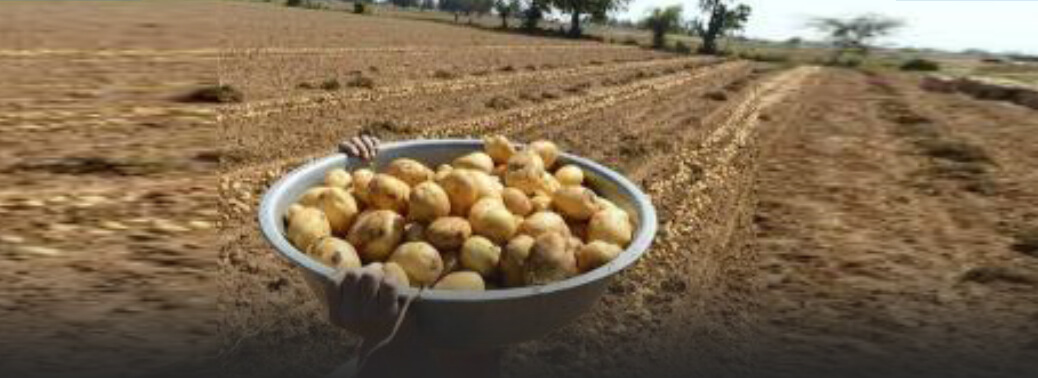
Why in News?
- Farmers face demand for ₹1.05 crore in damages for growing Lays variety, want government to step in
Details:
- Multi-billion-dollar conglomerate PepsiCo sued four Gujarati farmers, asking them to pay ₹1.05 crore each as damages for ‘infringing its rights’ by growing the potato variety used in its Lays chips, farmers groups have launched a campaign calling for government intervention.
- Warning that the case could set a precedent for other crops, farmers groups are pointing out that the law allows them to grow and sell any variety of crop or even seed as long as they don’t sell branded seed of registered varieties.
- The farmers want the Protection of Plant Varieties and Farmers’ Rights Authority (PPV&FRA) to make a submission in court on their behalf and fund legal costs through the National Gene Fund.
- These farmers are small, holding around 3-4 acres on an average, and had grown a potato crop from farm-saved seed after they accessed the potato seed locally in 2018,” according to a letter sent to the PPV&FRA by farmers groups. They alleged that PepsiCo hired a private detective agency to pose as potential buyers and take secret video footage, and collect samples from farmers’ fields without disclosing its real intent.
Protective clause
- PepsiCo has invoked Section 64 of the Protection of Plant Varieties and Farmers’ Rights
- (PPV&FR) Act, 2001 to claim infringement of its rights.
- However, farmers groups cite Section 39 of the same Act, which specifically says that a farmer is allowed “to save, use, sow, resow, exchange, share or sell his farm produce including seed of a variety protected under this Act” so long as he does not sell “branded seed”. Farmers groups warned that the case could have a snowballing effect on other crops. “These are among the first cases of alleged IPR infringement against farmers in India in a post-WTO world.
Protection of Plant Varieties and Farmers’ Rights
- The basic objective of the Protection of Plant Varieties and Farmers’ Rights (PPVFR) Act 2001 us to recognize and protect the rights of the breeders including farmers and stimulate investment for research and development in the public and private sector for the development of new plant varieties.
- The Protection of Plant Varieties and Farmers’ Rights Act 2001 not only gives intellectual property protection to the plant breeders, but also upholds the legal space for farmers to save, use, exchange and sell the farm saved seeds
SHIPPING FIRMS SEEK PM’S HELP TO STAY AFLOAT
24, Apr 2019

Why in News:
- Indian shipping companies have submitted a memorandum to the Prime Minister, seeking his immediate intervention of scraping a recent notification and a circular, would force shipping companies to shut down and results in heavy job losses.
Details:
- They said the Indian flag shipping industry was heading for a crisis arising out of Notification No. 2 of ‘Make in India’ dated February 13, 2019, issued by the Ministry of Shipping, and Circular No. 2 of 2019 issued by the Director General of Shipping, Mumbai. These changes would take away business from the Indian shipping companies.
- The circular equates a foreign ship taken on hire, with a ship actually owned under the Indian flag by an Indian company.
- It gives priority in government contracts to those ships, just because they were once built in India.
Advantage Foreign firms:
- Indian flag vessels have been enjoying the Right of First Refusal (ROF) which enables them to match the lowest rates quoted by a foreign vessel and take that business. This has aided growth of the Indian fleet since it helps to ensure that no Indian asset remains idle. Indian ship owners said this right has been taken away by the government and given to foreign shipping companies.
- It removes the Right of First Refusal (ROFR) available to the Indian flag vessels which enables an Indian flag vessel to match the lower rates given by a foreign flag vessel so that the Indian business is available to Indian flag vessels.
THE PROBLEM WITH CHERRY-PICKING DATA
24, Apr 2019

Why in News:
- The article says that the India is presently facing a data crisis which was recently talked by Minister of State for Housing and Urban Affairs Hardeep Singh Puri
Details:
- Heart of the data crisis in India is the Central government, which holds important data. Recently, it did not announce the data on employment created by the ‘Mudra’ scheme. National Sample Survey Office (NSSO) data on employment were refused. Data on farm suicides have not been available since 2016 which created problems, such as on employment, farmers’ crisis and economic growth.
- Demonetisation and the implementation of the Goods and Services Tax(GST), both of which undermined the unorganised sector which employs 94% of the workforce, have impacted employment.
- Data from the Centre for Monitoring Indian Economy (CMIE) and others have confirmed unemployment.
- The NSSO and CMIE data are based on household surveys which capture any additional employment created by Mudra loans, tax aggregators, e-commerce, etc. Basically, jobs are being lost so that the net effect is a decline in employment.
- The government had promised doubling of farm incomes by 2022. But, farmers incomes have been under pressure due to falling farm produce prices and rising input costs.
- It is aggravated by demonetisation, with cash shortages in rural areas compelling farmers to sell at lower prices to the traders to get cash.
- Even though the National Crime Records Bureau (NCRB) collects them annually, Data on farmer suicides have not been released on schedule.
Steps by government:
- The government has admitted that there is a crisis in the farming and unorganised sectors, and due to that in employment generation. So that it announced an annual ₹6,000 support to farmers owning up to five acres of land and promised insurance to workers in the unorganised sector.
- It has also increased allocations for the Mahatma Gandhi National Rural Employment Guarantee Scheme (MGNREGS) from ₹55,000 crore to ₹60,000 crore. This allocation is inadequate, but it does indicate that the government is forced to acknowledge the crisis facing the poor.
Unorganised sector data:
- if data on unorganised sector employment are not reliable or are non-existent, GDP data would also not credible. The implication is that the government is only estimating growth on the basis of the organised sector of the economy.
- The government has tied itself up in knots by saying that no one has credible employment data. So that GDP data also become suspect and so does the claim of 7% rate of growth GDP calculation is inaccurate, and based on GDP the budget is figured out.
- Post-demonetisation, which decimated completely the unorganised sector. but the official figures represent only the organised sector. This would be consistent with the crisis of the unorganised sector, agriculture and employment. A 7% growth rate of the economy is not consistent with unorganised sector.
- GDP growth figures are relied on based only on the corporate sector data and not even the organised sector. Thus, they are less representative of growth of the economy.
The National Sample Survey Office (NSSO),
- The National Sample Survey Office (NSSO), formerly called the National Sample Survey Organisation is the largest organisation in India conducting periodic socio-economic surveys. It is under the Ministry of Statistics of the Indian government. It was set up in 1950. The employees of the NSSO are from the Indian Statistical Service (appointed through the UPSC) and the Subordinate Statistical Service (appointed through the Staff Selection Commission).
- The NSSO conducts large-scale sample surveys throughout India. It is headed by a Director General.
- The four divisions of the NSSO are:
- Survey Design and Research Division – responsible for technical planning of surveys, formulation of concepts and definitions, sampling design, designing of inquiry schedules, drawing up of tabulation plan, analysis and presentation of survey results. HQ in Kolkata. Field Operations Division – responsible for the collection of primary data for the surveys undertaken by NSSO. HQ in Delhi/Faridabad.
- Data Processing Division – responsible for sample selection, software development, processing, validation and tabulation of the data collected through surveys. HQ in Kolkata. Co-ordination & Publication Division – Coordinates all the various departments and divisions in the NSSO; also publishes its annual journal. Located in Delhi.
National Crime Record Bureau (NCRB)
- National Crime Record Bureau is to empower Indian Police with Information Technology to allow them to efficiently enforce the law and perk up public service delivery. It is responsible for collecting and dissecting crime data as defined by the Indian Penal Code (IPC).
Centre for Monitoring Indian Economy
- CMIE, or Centre for Monitoring Indian Economy, is a leading business information company. It was established in 1976, primarily as an independent think tank.
- CMIE has a presence over the entire information food-chain – from large scale primary data collection and information product development through analytics and forecasting.
- It provides services to the entire spectrum of business information consumers including governments, academia, financial markets, business enterprises, professionals and media. CMIE produces economic and business databases and develops specialised analytical tools to deliver these to its customers for decision making and for research. It analyses the data to decipher trends in the economy.
- CMIE has built India’s largest database on the financial performance of individual companies; it conducts the largest survey to estimate household incomes, pattern of spending and savings; it runs a unique monitoring of new investment projects on hand and it has created the largest integrated database of the Indian economy.
- All databases and research work are delivered to customers through subscription services. CMIE is a privately owned and professionally managed company head-quartered at Mumbai.
Way forward:
- The government is denying the data of its own agencies or modifying data arbitrarily. data should be improved without denying the existing official data, to ensure better policy and credibility
LINE OF CAUTION: ON SUSPENSION OF CROSS-LOC TRADE
23, Apr 2019
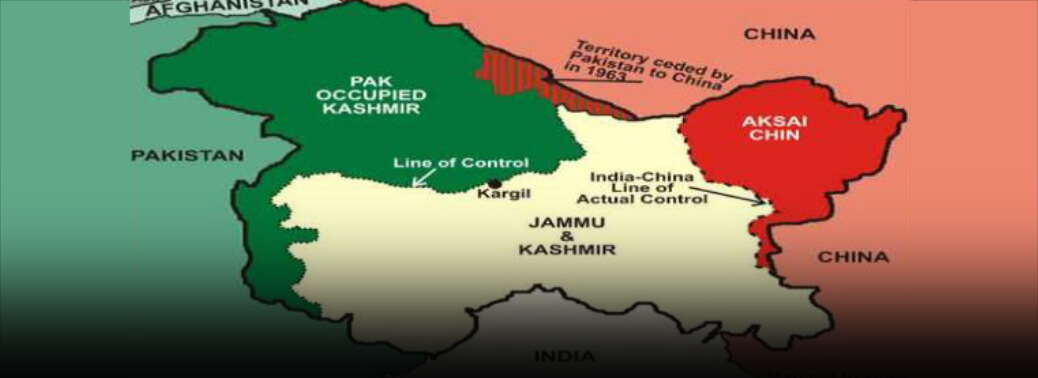
Why in News:
- The government has issued orders to suspend the Line of Control (LoC) trade between Jammu & Kashmir and Pak Occupied Kashmir (PoK) after receiving reports that the cross-LOC trade routes were being misused by Pakistan- based elements for funnelling illegal weapons, narcotics, fake currency,
Details:
- On April 18, the Ministry of Home Affairs announced the suspension from midnight of trade at the two designated points at Salamabad and Chakan-da-Bagh.
- It is being cited that “illegal weapons, narcotics and fake currency” is transported into India. A leader of the cross-LoC traders association argued that they had been seeking a “foolproof mechanism” to enforce the terms of the agreement.
- Opening of cross-LoC trade was the confidence-building mechanisms which followed the 2003 India-Pakistan ceasefire along the line, and it includes a bus service between Srinagar and Muzaffarabad (in PoK).
- It is hoped that people-to-people contact between those living in J&K and PoK would become obstruction-free where the suspension of LOC has become a Occasional disruption.
- It is estimated that since the barter trade commenced along two routes across the LoC in October 2008, provides employment to the order of more than 1.6 lakh days and the volume of trade has crossed ₹6,000 crore.
Background:
- The LoC trade was meant to facilitate exchange of goods of common use between local populations across the LoC in Jammu & Kashmir.
- The trade is allowed through two Trade Facilitation Centres located at Salamabad, Uri, District Baramulla, and Chakkan-da-Bagh, District Poonch. The trade takes place four days a week. The trade is based on barter system and zero duty basis.
- But unscrupulous and anti-national elements are using the route as a conduit for Hawala money, drugs and weapons, under the garb of this trade.
- According to ongoing investigations of certain cases by the National Investigation Agency (NIA), it has been brought out that a significant number of trading concerns engaged in LoC trade are being operated by persons closely associated with banned terrorist organizations involved in fuelling terrorism and separatism.
- Investigations have further revealed that some individuals, who have crossed over to Pakistan and joined militant organizations have opened trading firms in Pakistan. These trading firms are under the control of militant organizations and are engaged in LoC trade. After the Pulwama incident, Government of India has withdrawn the most-favoured nation (MFN) status to Pakistan. Inputs have also been received that in order to evade the consequent higher duty, LoC trade is likely to be misused to a much larger extent.
- So Government of India decided to suspend the LoC trade at Salamabad and Chakkan-da- Bagh in Jammu and Kashmir with immediate effect.and the issue of reopening of LoC trade will be revisited thereafter.
Trade across LoC:
- LoC trade is meant to facilitate exchange of goods of common use between local populations across the LoC in Jammu & Kashmir.
- The trade is allowed through two Trade Facilitation Centres located at Salamabad, Uri, District Baramulla and Chakkan-da-Bagh, District Poonch.
- The trade takes place four days a week.
- The Trade is based on Barter system and zero duty basis.
Why is it being suspended?
- LoC trade is being misused on very large scale. It has been revealed that the trade has changed its character to mostly third-party trade and products from other regions, including foreign countries, are finding their way through this route.
- Unscrupulous and anti-national elements are using the route as a conduit for Hawala money, drugs and weapons, under the garb of this trade.
- Significant number of trading concerns engaged in LoC trade are being operated by persons closely associated with banned terrorist organizations involved in fuelling terrorism/separatism.
- Some individuals have crossed over to Pakistan, and joined militant organizations. Trading firms established by them are under the control of militant organizations and are engaged in LoC trade.
What is LoC?
- Originally known as the Cease-fire Line, it was redesignated as the “Line of Control”
- following the Simla Agreement, which was signed on 3 July 1972.
- The part of Jammu that is under Indian control is known as the state of Jammu and Kashmir. The Pakistani-controlled part is divided into Azad Jammu and Kashmir and Gilgit–Baltistan. The northernmost point of the Line of Control is known as NJ9842.
- Another ceasefire line separates the Indian-controlled state of Jammu and Kashmir from the Chinese-controlled area known as Aksai Chin.
- The Line of Control divided Kashmir into two parts and closed the Jehlum valley route.
Consequences:
- It violates the zero-tariff barter arrangement along LOC trade between Jammu & Kashmir and Pak Occupied Kashmir (PoK)
- exchange of third-party items such as U.S.-origin California almonds is interrupted. Way to transfer funds by traders who operate via the Wagah border is suspended. It affects the trade of local goods along border communities.
- Article 370, the special status of J&K is disrupted in a course of election campaign.
- National Highway between Udhampur and Baramulla to civilian traffic to secure the movement of troop convoys ia disrupted.
Way Forward:
- The step has been taken without careful consideration of the consequences and also for political reasons. The suspension should be urgently revoked.
- The solution to violations of a trade agreement is to enforce the rules stringently, not stop exchange of goods and also to avoid the risk of livelihood of countless people on both sides of the LoC.
SC TO HEAR PETITION TO END WRITE-OFFS
20, Apr 2019

Why in News
- The Supreme Court will hear a petition to restrain banks from writing off non- performing assets.
Details: / For a true picture
- The petition gains significance because of the large number of non-performing assets, worth crores of rupee, in the names of such businessmen as Vijay
- Mallya, Nirav Modi and Mehul Choksi. The petition said write-offs should end so that the “true and exact financial conditions of banks cannot be camouflaged.” “The banks should not be given any benefit of allowable provision or other in percentage to their Non- Performing Assets, which reduces their tax liabilities,” it said. The system of waiving of loans should be stopped, it said. “The Centre and State governments should not be permitted to reduce or waive loans.
- Political parties should not be permitted to offer loan waiver or any other monetary scheme in their election manifestos,” the petition said
Farm push
- It said the Centre, States should formulate a policy to make agriculture profitable, help farmers become prosperous and increase their interest in farming. A loan waiver is the waiving of the real or potential liability of the person or party who has taken out a loan through the voluntary action of the person or party who has made the loan.
Loan waiver:
- A loan waiver is the waiving of the real or potential liability of the person or party who has taken out a loan through the voluntary action of the person or party who has made the loan.
Nonperforming assets
- Any asset which stops giving returns to its investors for a specified period of time is known as Non-Performing Asset (NPA). Generally, that specified period of time is 90 days in most of the countries and across the various lending institutions. However, it is not a thumb rule and it may vary with the terms and conditions agreed upon by the financial institution and the borrower.
BEIJING SURPRISE: CHINA’S GROWTH
19, Apr 2019

Why in News?
- The Chinese economy has grown faster than expected, but concerns over stimulus remain
Details:
- China’s economy is showing signs of a rebound.
- According to figures released by its National Bureau of Statistics on Wednesday, the Chinese economy grew at 6.4% in the first quarter of the current year compared to the same period last year.
- The latest growth figure is seen as a sign that the Chinese government’s efforts over the last few quarters to stimulate what is the world’s second largest economy are beginning to have a positive effect
- With trade tensions with the United States subsiding significantly for now, export growth may accelerate, further boosting the Chinese economy.
- The Chinese stock market has also been buoyed by the early signs of an economic turnaround and increased liquidity, with the CSI 300 index rising by over a third in value since the beginning of the year.
- Gross domestic product growth that is generated largely by increased lending, however, poses the risk of losing momentum once the stimulus is withdrawn.
- Chinese authorities may eventually be forced to crack down on exuberant lending by banks when the economy is found to be overheating.
- It was such a crackdown that contributed to the fall in property prices in the last few years. For now, though, property prices have begun to rebound after restrictions on the real estate sector were eased lately, in an attempt to stimulate growth in the economy.
- Such macroeconomic policy, focussed too narrowly on the short term while ignoring the long-term consequences, however, does not bode well for either the Chinese economy or the wider global economy.
LARGER CONSPIRACY IN SARADHA SCAM ALLEGED
18, Apr 2019
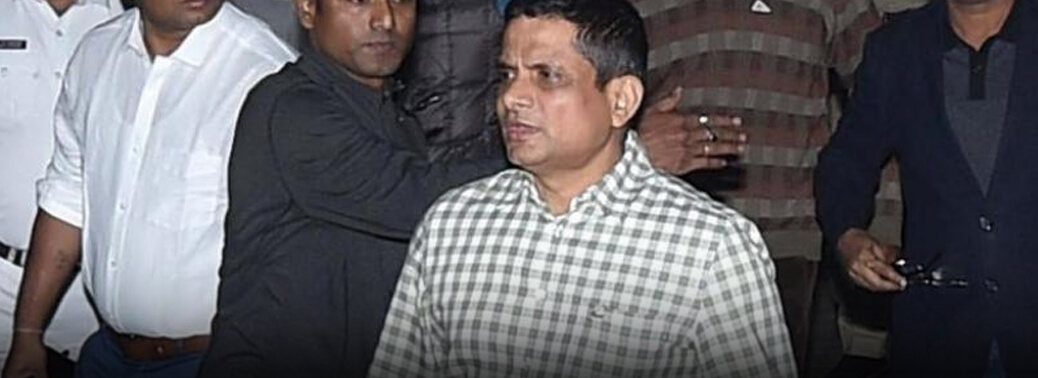
Why in news:
- Former Kolkata Police Commissioner Rajeev Kumar has claimed that the allegations raised against him in connection with the multi-core Saradha chit fund scam is part of a “larger conspiracy” by two prominent Bharatiya Janata Party (BJP) leaders Mukul Roy and Kailash Vijayvargiya.
Background: / Saradha -chit fund
- Saradha Group was a consortium of over 200 private companies with Sudipto Sen as a Chairman. It was believed to be running collective investment schemes popularly but incorrectly referred to as chit funds. As we know, chit fund cannot declare in advance the return an individual is likely to make. But returns were promised in Saradha chit fund.
- They offered fixed deposits, recurring deposits and monthly income schemes. The returns promised were handsome. High-value depositors were also promised foreign trips.
- The fact that a rate of return was promised in advance and the amount of 4 times return to the principal, clearly means that it was not a chit fund.
- It can be categorised under what SEBI calls a collective investment scheme.
- A collective investment scheme (CIS) is defined as any scheme or arrangement made or offered by any company under which the contributions made by the investors are pooled and utilised with a view to receive profits, income or property, and is managed on behalf of the investors. Investors do not have day to day control over the management and operation of such scheme or arrangement.
- Against the money collected Saradha promised allotment of land or a flat.
- The investors also had the option of getting their principal and the promised interest back at maturity.
- The investors did not have day to day control either over the scheme or over the flat or land for that matter. The money/land/flat came to them only at maturity. Given these reasons Saradha was actually a CIS.
What was the Scam?
- If the Saradha group was collecting money and promising land or flats against that investment, it should still have those assets. Saradha was trying to create an illusion it was doing all of it. But there was nothing really that it was doing.
- They were using money brought in by the newer investors to pay off the older investors whose investments had to be redeemed. At the same time they were creating an illusion of a business as well, which really did not exist.
- They were prompt with payments in the first year. Later agents were told to make payments for maturities with fresh collections or make adjustment against renewals.
- They also pay high commission to agents to keep bringing new investors. And as long as money brought in by later investors is greater than the money that has to be paid to earlier investors, these schemes keep running.
- The day this equation changes, these so called chit funds go bust. The same happened in case of Saradha chit fund as well. The group collected around 200 to 300 billion from over
- 1.7 million depositors before it collapsed in April 2013.
SLOWING DOWN FAST: INDUSTRIAL GROWTH
16, Apr 2019
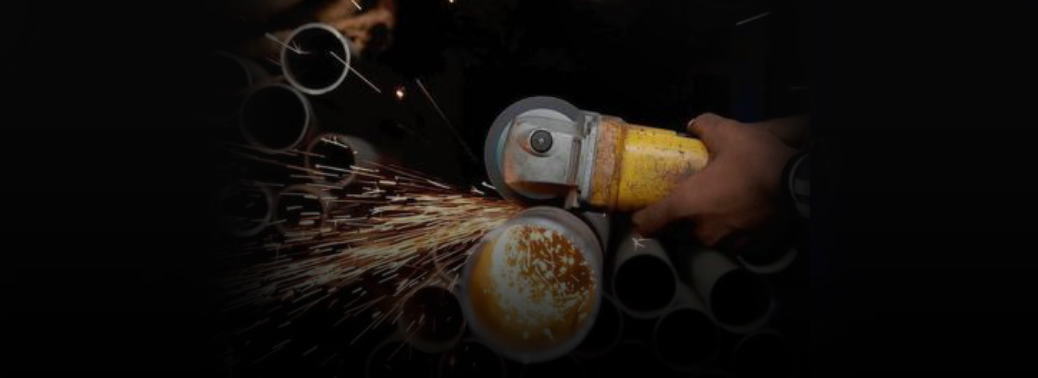
Why in News?
- The downturn in industrial activity and the spike in retail inflation pose a policy challenge
Details:
- Another indicator, worryingly, points to the Indian economy slowing down fast.
- Industrial growth, as measured by the index of industrial production, has been slowing down considerably in recent months, dropping to just 0.2% year-on-year in November Manufacturing, which has a weight of almost 78% in the
- index, continues to be the biggest drag, with output contracting by 0.3% as compared with an 8.4% jump in the year-earlier period. The largest contributor to the slowdown in February was the capital goods sector, which shrank by close to 9%,
- Various institutions such as the Reserve Bank of India and the International Monetary Fund
- have been lowering their expectations for India’s growth in the coming quarters.
- With other economic indicators such as the purchasing managers’ index and high- frequency data like automobile sales also signalling weakening momentum
- The RBI, which has cut interest rates at two successive policy meetings to help bolster economic growth, is likely to be tempted to opt for more rate reductions
- While monetary easing could be an easy solution to the growth problem, policymakers may also need to look into structural issues behind the slowdown. The high levels of troubled debt in not just the banking sector but the wider non-banking financial companies are hurting credit markets, and unless these issues can be resolved, no amount of rate cuts would serve as an effective stimulus.
- To a large extent, the slowdown is due to investments in sectors that turned sour as the credit cycle tightened. Easing interest rates without reforms may only help hide investment mistakes instead of fostering a genuine economic recovery.
Index of Industrial Production (IIP)
- Index of Industrial Production (IIP) is an index which helps us understand the growth of various sectors in the Indian economy such as mining, electricity and manufacturing.
- IIP is a short-term indicator of industrial growth till the results from Annual Survey of Industries (ASI) and National Accounts Statistics (Eg: GDP) are available.
- The base year of the index is given a value of 100. The current base year for the IIP series in India is 2011-12
- Index of Industrial Production (IIP) is released by the Central Statistics Office (CSO) of the Ministry of Statistics and Programme Implementation. IIP is published monthly.
GDP:
- Gross Domestic Product (GDP) is a broad measurement of a nation’s overall economic activity. GDP is the monetary value of all the finished goods and services produced within a country’s borders in a specific time period
- GDP includes all private and public consumption, government outlays, investments, additions to private inventories, paid-in construction costs and the foreign balance of trade.
NECESSARY STEPS TO ENDING POVERTY
15, Apr 2019

Context:
- The provision of health, education and public services matters more than income support schemes
Details: / Garibi Hatao:
- Garibi Hatao (“Remove poverty”) was the theme and slogan of Indira Gandhis 1971 election campaign and later also used by her son Rajiv Gandhi and later by her Grandson Rahul Gandhi.
- It is by now close to 50 years since Indira Gandhi
- brought the idea of eradicating poverty into the electoral arena in India. ‘Garibi Hatao’ had been her slogan.
- Though it had not come close to being eradicated in her time, it was under her leadership that the reduction in poverty commenced, in the late 1960s
Words Matter
- The approach of public policy to the problem has been to initiate schemes which could serve as no more than a palliative, as suggested by the very term ‘poverty alleviation’ commonly used in the discourse of this time.
- These schemes failed to go to the root of poverty, which is capability deprivation that leaves an individual unable to earn sufficient income through work or entrepreneurship
- Income poverty is a manifestation of the deprivation, and focussing exclusively on the income shortfall can address only the symptom.
Schemes / Pradhan Mantri Kisan Samman Nidhi (PM-Kisan)
- Pradhan Mantri Kisan Samman Nidhi (PM-Kisan) Scheme is an initiative by Government of India in which 120 million small and marginal Indian farmers who have less than 2 hectares (4.9 acres) of landholding will get up to Rs. 6,000(US$83) per year as minimum income support.
- An income-support scheme for any one section of the population is grossly inequitable. We can think of agricultural labourers and urban pavement dwellers as equally deserving of support as poor farmers.
Nyuntam Aay Yojana (NYAY)
- It envisages an annual transfer 12 times greater to the poorest 20% households.
- While this scheme is not discriminatory, it is severely challenged by the issue of beneficiary identification in real time.
- NYAY would amount to more than twice the combined expenditure on health and education and more than capital expenditure in the same budget, they being the items of public expenditure that most impact poverty in the long run.
What is Needed
- In light of a pitch that has been made for the implementation in India of a publicly-funded universal basic income (UBI) scheme, we can say that from the perspective of eliminating poverty, universal basic services (UBS) from public sources are needed, though not necessarily financed through the budget.
- Per capita income levels and poverty vary across India’s States.
- A discernible pattern is that the southern and western regions of India have lower poverty than the northern, central and eastern ones. This, very likely, is related to higher human development attainment in the former.
- This indicator is based on the health and education status of a population apart from per capita income, bringing us back to the relevance of income generation to poverty. There is a crucial role for services, of both producer and consumer variety, in eliminating the capability deprivation that is poverty.
- As these services cannot always be purchased in the market, income support alone cannot be sufficient to eliminate poverty
- At a minimum these services would involve the supply of water, sanitation and housing apart from health and education.
Industrial Growth Dips, Inflation Up
13, Apr 2019
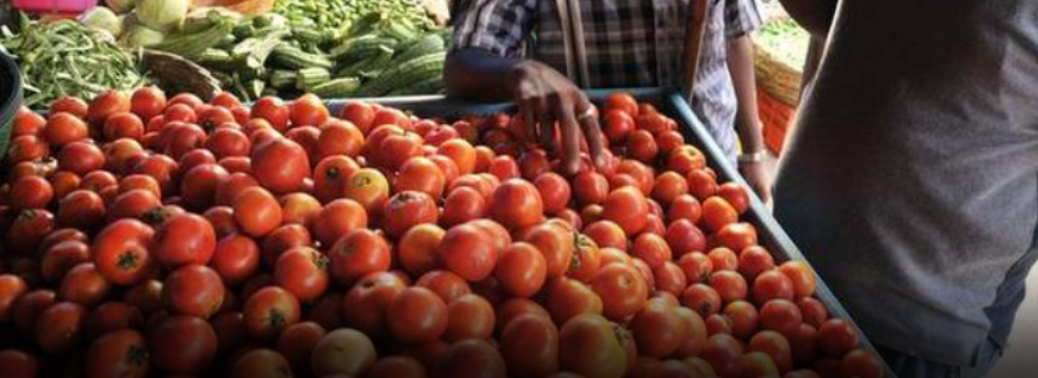
why in news?
- Industrial growth slowed in February to 0.1%, driven by an across the board slowdown, especially in key sectors such as manufacturing, mining, capital goods, and infrastructure, according to official
Background:
- retail inflation quickened to 2.86% from 2.57%, driven in large part by the food and fuel sectors.
- Growth in the Index of Industrial Production (IIP) slowed from 1.44%.
- Within the Index, the mining and quarrying sector saw growth slowing to 2% from 3.92% over the same period.
- The manufacturing sector saw a contraction of 0.31% from 1.05%.
what is inflation:
- Inflation is the percentage change in the values of the Wholesale Price Index (WPI) on a year-on year basis.
- It effectively measures the change in the prices of a basket of goods and services in a Inflation occurs due to an imbalance between demand and supply of money, changes in production and distribution cost or increase in taxes on products.
- When economy experiences inflation, the value of currency reduces.
- India used WPI as the measure for inflation but new CPI (Combined) is declared as the new standard for measuring inflation (April 2014).
Adverse impacts of inflation:
- Inflation causes decrease in the real value of money and other monetary items over time.
- Inflation causes uncertainty over future and this may discourage investment and savings.
- High inflation may lead to shortages of goods if consumers begin hording out of concern that prices will increase in the future.
Favourable impacts of Inflation:
- Inflation ensures that the central banks adjust the interest
- Inflation encourages non-monetary
Why industrial growth declines?
- An industry which experiences negative growth, or remains stagnant due to decline in demand of one or more of its products for varied This includes and is not limited to, a declining economy, downgrade or upgrade of a product, and changes in technology.
What are the effects of inflation?
- Income redistribution: One risk of higher inflation is that it has a regressive effect on lower- income families and older people in society. This happen when prices for food and domestic utilities such as water and heating rises at a rapid rate
- Falling real incomes: With millions of people facing a cut in their wages or at best a pay freeze, rising inflation leads to a fall in real incomes.
- Negative real interest rates: If interest rates on savings accounts are lower than the rate of inflation, then people who rely on interest from their savings will be
- Cost of borrowing: High inflation may also lead to higher borrowing costs for businesses and people needing loans and mortgages as financial markets protect themselves against rising prices and increase the cost of borrowing on short and longer-term debt. There is also pressure on the government to increase the value of the state pension and unemployment benefits and other welfare payments as the cost of living climbs
- Risks of wage inflation: High inflation can lead to an increase in pay claims as people look to protect their real This can lead to a rise in unit labour costs and lower profits for businesses
what is CPI and WPI: CPI
- Consumer Price Index (CPI) is a price index which represents the average price of a basket of goods over time. CPI calculates the average price paid by the consumer to the shopkeepers.
- Education, communication, transportation, recreation, apparel, foods and beverages, housing and medical care are the 8 groups for which the CPI is measured.
WPI
Wholesale Price Index (WPI) is an indicator of price changes in the wholesale market. WPI calculates the price paid by the manufacturers and wholesalers in the market. WPI measure the changes in commodity price at selected stages before goods reach to the retail level.
MUTUAL FUND’S
12, Apr 2019
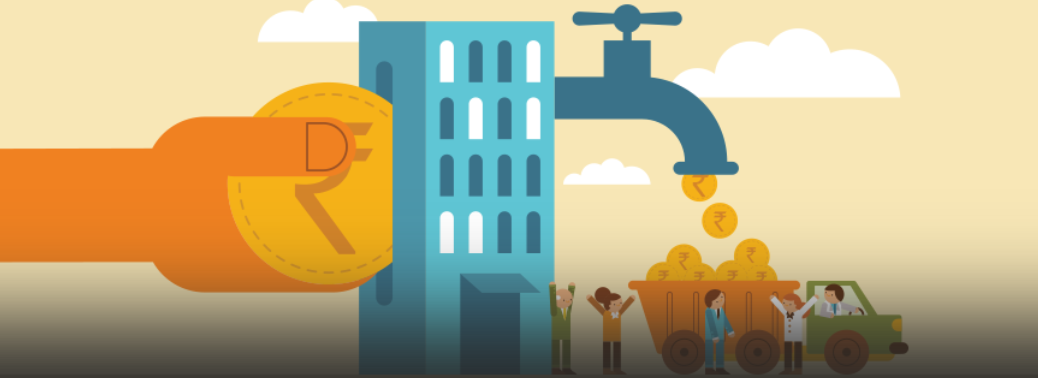
why in News?
- The redemption issues faced by fixed maturity plans (FMPs) of mutual funds due to their exposure towards Essel Group entities have only begun as there are nearly 80 FMP schemes with such exposure towards the corporate entity.
- The cumulative amount at stake is about ₹1,400 crore with more than 40 schemes maturing later this year. More importantly, about 14 schemes, with an exposure of nearly
- ₹475 crore, will mature this month.
Background:
- A mutual fund collects money from investors and invests the money on their behalf.
- It charges a small fee for managing the money. Mutual funds are an ideal investment vehicle for regular investors who do not know much about investing.
- Investors can choose a mutual fund scheme based on their financial goal and start investing to achieve the goal.
How to Invest in Mutual funds?
- You can either invest directly with a mutual fund or hire the services of a mutual fund advisor. If you are investing directly, you will invest in the direct plan of a mutual fund scheme. If you are investing through an advisor or intermediary, you will invest in the regular plan of the scheme.
- If you want to invest directly, you will have to visit the website of the mutual fund or its authorized branches with relevant documents.
- The advantage of investing in a direct plan is that you save on the commission and the money invested would add sizeable returns over a long period.
- The biggest drawback of this method is that you will have to complete the formalities, do the research, monitor your investment all by yourself. Types of Mutual Funds in India – The Securities and Exchange Board of India has categorised mutual fund in India under four broad categories:
- Equity Mutual Funds
- Debt Mutual Funds
- Hybrid Mutual Funds
- Solution-oriented Mutual Funds
Equity Mutual fund scheme:
- These schemes invest directly in stocks. These schemes can give superior returns but can be risky in the short-term as their fortunes depend on how the stock market performs. Investors should look for a longer investment horizon of at least five to 10 years to invest in these schemes. There are 10 different types of equity schemes.
Debt Mutual fund schemes:
- These schemes invest in debt securities. Investors should opt for debt schemes to achieve their short-term goals that are below five years. These schemes are safer than equity schemes and provide modest returns. There are 16 sub-categories under the debt mutual fund category.
Hybrid Mutual fund Schemes:
- These schemes invest in a mix of equity and debt, and an investor must pick a scheme based on his risk appetite. Based on their allocation and investing style, hybrid schemes are categorised into six types.
Solution-Oriented Schemes:
- These schemes are devised for particular solutions or goals like retirement and child’s
- education. These schemes have a mandatory lock-in period of five years.
Mutual Fund Charges:
- The total expenses incurred by your mutual fund scheme are collectively called expense ratio. The expense ratio measures the per unit cost of managing a fund. The expense ratio is generally in between 1.5-2.5 per cent of the average weekly net assets of the schemes.
SEBI FIAT TO STOCK BROKERS USING AI APPLICATIONS
11, Apr 2019
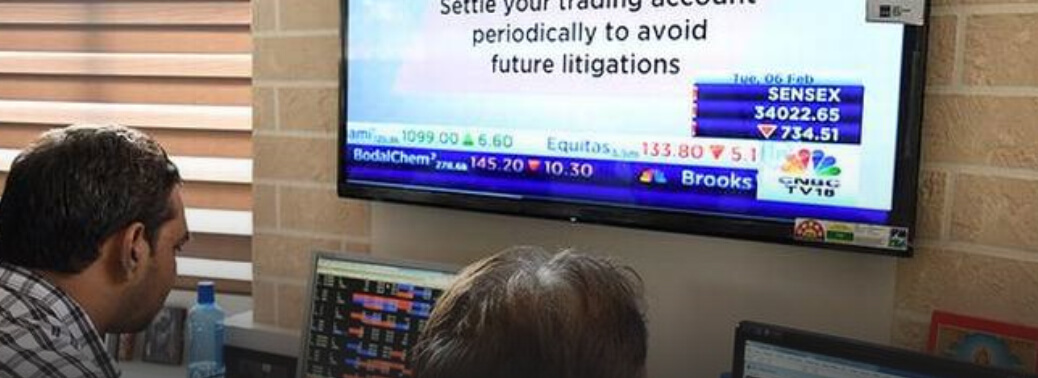
Why in News:
- The BSE has asked stock brokers who are using applications based on artificial intelligence (AI) and machine learning (ML) to submit compliance report in the format given by SEBI.
Details:
- The stock brokers were asked to report in a prescribed format about the implementation of AI or ML system to prevent abnormal behaviour of the AI or ML application and the system disseminated investment or trading advice or strategies and name of the application.
SEBI:
- Securities and Exchange Board of India is a government established in 1988 authority which controls the securities market in India. Indian Parliament passed SEBI Act 1992 in 1992 India which made SEBI a statutory body.
- Securities and Exchange Board of India is administered by its board of members. The board of SEBI consist of:
- The Chairman by nominated by Government of India Two members from finance ministry
- One member from Reserve Bank of India
- Five members nominated by Union Government of India
Objectives
- To control activities of stock exchange
- To safeguard the rights of stockholders and also to guarantee the security of their investment
- To avoid fraudulence by harmonizing its statutory regulations and self-regulating business. To administer and develop guidelines for intermediaries.
HIGH STOCK OF NON-PERFORMING ASSETS IN INDIA, MORE PROGRESS NEEDED: IMF
11, Apr 2019
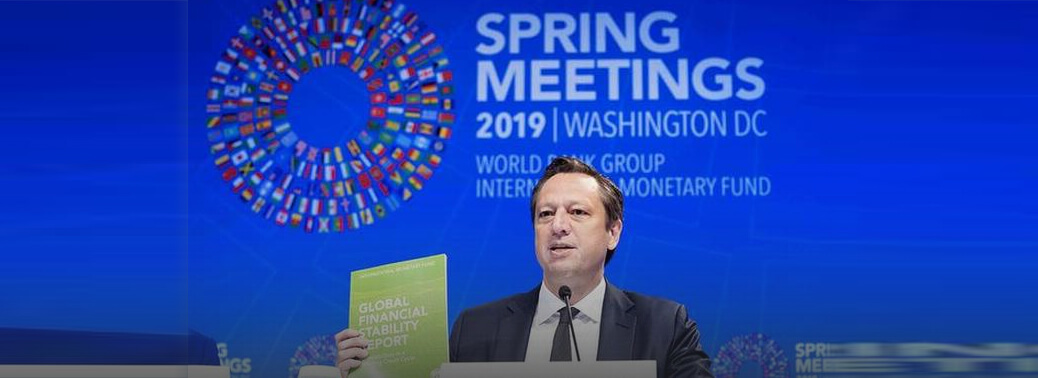
Why in News:
- IMF head of Monetary and Capital Markets Tobias Adrian said there continues to be a high stock of non-performing assets (NPAs) in India, and there has been some progression.
Details:
- The Global Financial Stability Report (GFSR) is a semi-annual report by the International Monetary Fund (IMF) that assesses the stability of global financial markets and emerging- market financing. The GFSR provides an assessment of balance sheet vulnerabilities across financial and non-financial sectors in advanced and emerging market economies.
- The level of capitalisation of some banks, particularly government-owned banks should be supported. This is also one of the recommendations of the Financial Sector Assessment Program
- Financial vulnerabilities in China remain high, and the authorities face a difficult trade-off between supporting near-term growth, countering adverse external shock, and containing leverage through regulatory tightening
What is the Global Financial Stability Report?
- The Global Financial Stability Report (GFSR) is a semi-annual report by the International Monetary Fund (IMF) that assesses the stability of global financial markets and emerging- market financing.
- It is released twice per year, in April and October.
- The GFSR focuses on current conditions, especially financial and structural imbalances, that could risk an upset in global financial stability and access to financing by emerging-market countries.
- It emphasizes the ramifications of financial and economic imbalances that are highlighted in one of the IMF’s the World Economic Outlook.
- GFSR usually include systemic risk assessments in worldwide financial markets, worldwide debt management, emerging economic markets and current economic crises that could affect finances worldwide.
Financial Sector Assessment Program (FSAP)
- The Financial Sector Assessment Program (FSAP), established in 1999, is a comprehensive and in-depth assessment of a country’s financial sector.
- FSAPs analyze the resilience of the financial sector, the quality of the regulatory and supervisory framework, and the capacity to manage and resolve financial crises.
- FSAPs produce recommendations of a micro- and macro-prudential nature, tailored country-specific circumstances.
- The FSAP is a key instrument of the Fund’s surveillance
INDIA’S GOLD RESERVES INCREASE MARGINALLY IN FEBRUARY: WGC
10, Apr 2019

Why in News?
- Globally, gold reserves with central banks rise 51 tonnes, highest since Oct. 2018.
Details:
- India has marginally increased its gold holding in February while maintaining the tenth position among countries in terms of yellow metal reserves, as per latest data from the World Gold Council (WGC).
- India added 1.7 tonnes in February while most other countries, barring Russia and China, saw their reserves unchanged in the recent past
- As per WGC, India had total gold reserves of 608.7 tonnes in February, marginally up from the previous month’s holding of 607 tonnes.
- Apart from India, only two other countries among the top 10 in terms of gold reserves increased their holdings in the month of February. Central bank gold reserves increased by a net 51 tonnes in February 2019, with gross sales minimal at only 0.2 tonnes,” said Alistair Hewitt, director of market intelligence, WGC. Collectively,
- central banks — mostly from the emerging markets — continue to accumulate gold at a healthy pace.
Other countries
- Some of the other countries that also have a significant gold reserve include Taiwan (423.6 tonnes), Portugal (382.5 tonnes), Kazakhstan (356.3 tonnes), Uzbekistan (342.1 tonnes) and Saudi Arabia (323.1 tonnes). Pakistan has 64.6 tonnes and is ranked 45 while Sri Lanka (19.9 tonnes) and Bangladesh (14 tonnes) are at 63rd and 66th positions.
- Nepal with 6.4 tonnes is at 82nd position.
World gold council:
- The World Gold Council is the market development organisation for the gold industry. It works across all parts of the industry, from gold mining to investment, and their aim is to stimulate and sustain demand for gold. Headquartered in London United Kingdom.
IMF FORECASTS DIP IN GLOBAL GROWTH IN 2019
10, Apr 2019

Why in News:
- The International Monetary Fund (IMF) has projected that global growth will be down in 2019 compared to 2018, IMF Chief Economist Gita Gopinath told the press at the release of the World Economic Outlook 2019 report
Causes:
- U.S China trade tensions, Macroeconomic stress in Turkey and Argentina
- Tighter credit policies in China, Financial tightening plus a normalisation of monetary policy in advanced economies, Brexit uncertainties
IMF:
- The International Monetary Fund or the IMF is a global organization with its headquarters at Washington, D.C.
- It is to promote international monetary cooperation, enable international trade, achieve financial stability, stimulate high
INFLOWS INTO EQUITY, INCOME FUNDS SURGE
09, Apr 2019
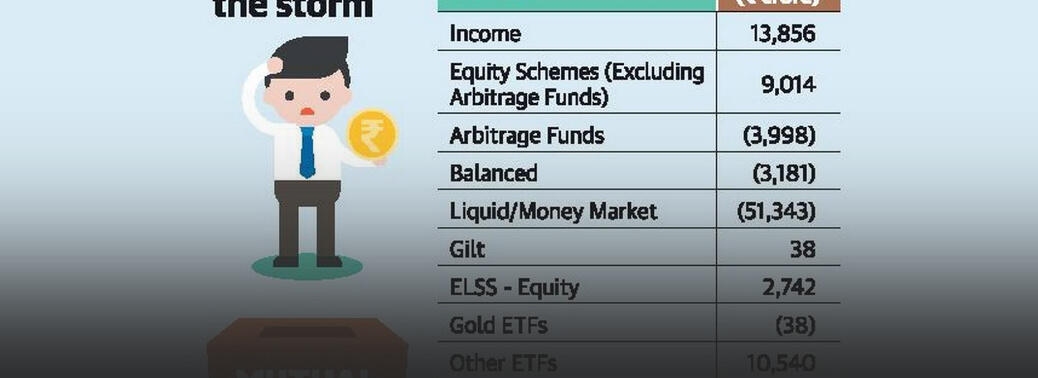
Why in news:
- Equity mutual fund schemes have seen a four-month decline in flows in March leading to a marginal increase in the overall assets of the fund industry in the last month of the financial year. Income funds also saw a huge jump in inflows for the month.
What are mutual funds?
- A mutual fund collects money from investors and invests the money on their behalf. It charges a small fee for managing the money.
- Mutual funds are an ideal investment vehicle for regular investors who do not know much about investing. Investors can choose a mutual fund scheme based on their financial goal and start investing to achieve the goal.
Types of Mutual Funds in India:
- The Securities and Exchange Board of India has categorised mutual fund in India under four broad categories:
- Equity Mutual Funds Debt Mutual Funds Hybrid Mutual Funds
- Solution-oriented Mutual Funds
Equity mutual fund scheme:
- These schemes invest directly in stocks.
- These schemes can give superior returns but can be risky in the short-term as their fortunes depend on how the stock market performs.
- Investors should look for a longer investment horizon of at least five to 10 years to invest in these schemes.
Debt mutual fund schemes:
- These schemes invest in debt securities. Investors should opt for debt schemes to achieve their short-term goals that are below five years. These schemes are safer than equity schemes and provide modest returns.
Hybrid mutual fund schemes:
- These schemes invest in a mix of equity and debt, and an investor must pick a scheme based on his/her risk appetite.
Solution-oriented schemes:
- These schemes are devised for particular solutions or goals like retirement and child’s
- education. These schemes have a mandatory lock-in period of five years.
Assets Under Management fund:
- Assets under management are the overall market value of assets/capital that a mutual fund holds. The fund manager manages these assets and takes investment decisions on behalf of investors. AUM is an indicator of the size and success of a fund house.
CAPITAL HIGH: FOREIGN INVESTMENT IN INDIA
08, Apr 2019
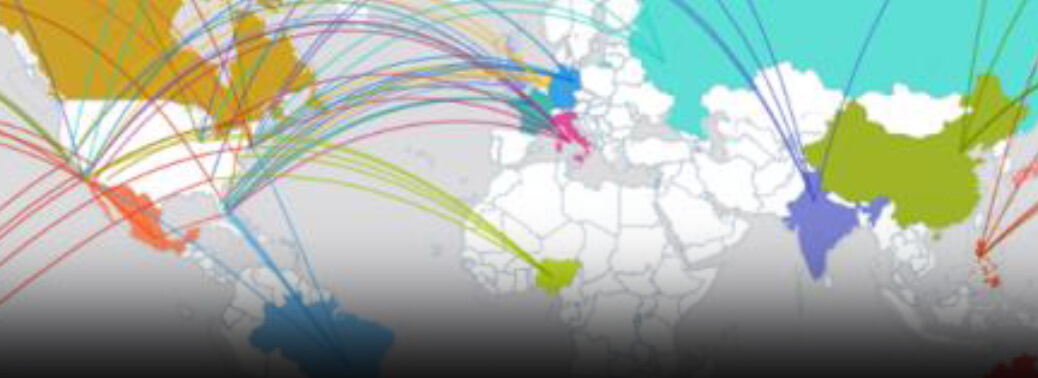
To retain the confidence of foreign investors, macroeconomic management is a key
- The inflow of foreign capital into India’s stock market in the month of March hit a high of $4.89 billion, the biggest foreign inflow into Indian stocks since February 2012.
- Both cyclical and structural factors are behind this sudden uptick in foreign investment that has helped the rupee make an impressive comeback.
- Last year, India received more foreign direct investment than China for the first time in two decades. While the Chinese economy has been slowing down considerably in the last one year, India has emerged as the fastest-growing major economy.
- There is a sense among a section of investors that their fears of political instability are misplaced.
- Both the Federal Reserve and the European central bank. for instance, have promised to keep interest rates low for longer. This has caused investors to turn towards relatively high- yielding emerging market debt.
What is foreign investment?
- Foreign investment involves capital flows from one country to another, granting extensive ownership stakes in domestic companies and assets. Foreign investment denotes that foreigners have an active role in management as a part of their investment.
- Both Foreign Direct Investment (FDI) and Foreign Institutional Investor (FII) are related to investment in a country
Good Sign:
- The return of foreign capital is obviously a good sign for the Indian economy. But policymakers need to be careful not to take foreign investors for granted. Other emerging Asian economies will be competing hard to attract foreign capital, which is extremely nimble.
- Any mistake by policymakers will affect India’s image as an investment destination
- The high fiscal deficit of both the Centre and the State governments and the disruptive outflow of foreign capital are the other macroeconomic challenges.
To retain the confidence of foreign investors, macroeconomic management is a key
- The inflow of foreign capital into India’s stock market in the month of March hit a high of $4.89 billion, the biggest foreign inflow into Indian stocks since February 2012.
- Both cyclical and structural factors are behind this sudden uptick in foreign investment that has helped the rupee make an impressive comeback.
- Last year, India received more foreign direct investment than China for the first time in two decades. While the Chinese economy has been slowing down considerably in the last one year, India has emerged as the fastest-growing major economy.
- There is a sense among a section of investors that their fears of political instability are misplaced.
- Both the Federal Reserve and the European central bank. for instance, have promised to keep interest rates low for longer. This has caused investors to turn towards relatively high- yielding emerging market debt.
What is foreign investment?
- Foreign investment involves capital flows from one country to another, granting extensive ownership stakes in domestic companies and assets. Foreign investment denotes that foreigners have an active role in management as a part of their investment.
- Both Foreign Direct Investment (FDI) and Foreign Institutional Investor (FII) are related to investment in a country
Good Sign:
- The return of foreign capital is obviously a good sign for the Indian economy. But policymakers need to be careful not to take foreign investors for granted. Other emerging Asian economies will be competing hard to attract foreign capital, which is extremely nimble.
- Any mistake by policymakers will affect India’s image as an investment destination
- The high fiscal deficit of both the Centre and the State governments and the disruptive outflow of foreign capital are the other macroeconomic challenges.
GRAFT ALLEGED IN MASALA BOND SALE
07, Apr 2019

Why in News:
- Leader of the Opposition has alleged that a Canadian company having close links with SNC-Lavalin has bought a major part of the masala bond for ₹2,150 crore issued by the Kerala Infrastructure Investment Finance Board (KIIFB).
Details
What are Masala Bonds?
- Masala bonds are bonds issued outside India but denominated in Indian Rupees, rather than the local currency.
- Unlike dollar bonds, where the borrower takes the currency risk, masala bond makes the investors bear the risk.
- Masala bonds will help to internationalize the Indian rupee and also deepen the Indian financial system.
- By issuing bonds in rupees, an Indian company is shielded against the risk of currency fluctuation, typically associated with borrowing in foreign currency.
- Cost of borrowing could also turn out to be lower than domestic markets.
INDIA MIGHT SOON HAVE THE MOST CAESAREAN BIRTHS
07, Apr 2019

Why in news:
- A new study based on the data from the National Family and Health Survey has shown that there is a significant increase in the rate of caesarean births in India.
Details:
- The WHO recommends the rate of caesarean delivery to be 10-15%, the number was 17.2% for India during the period from Jan 2015 to Dec 2016.
- This is higher than the rate seen in rich countries such as the Netherlands and Finland.
- The report says that if this trend continues, India could soon have the largest number of C- section births in the world.
Causes of caesarean birth:
- Prevalence of maternal mortality and morbidity is higher after caesarean than after vaginal birth.
- Increased risk of uterine rupture, abnormal placentation, ectopic pregnancy, stillbirth, and preterm birth.
- Babies born by caesarean births would have less bacterial exposure, which in turn alters their immunity and gut microbiome diversity.
- Children tend to have increased chances of allergy, asthma, and childhood obesity.
Maternal mortality rate
- The maternal mortality ratio is a key performance indicator for efforts to improve the health and safety of mothers before, during, and after childbirth per country worldwide.
- it is the annual number of female deaths per 100,000 live births from any cause related to or aggravated by pregnancy or its management (excluding accidental or incidental causes)
SEBI PANEL FOR MORE PLAYERS IN COMMODITIES
05, Apr 2019
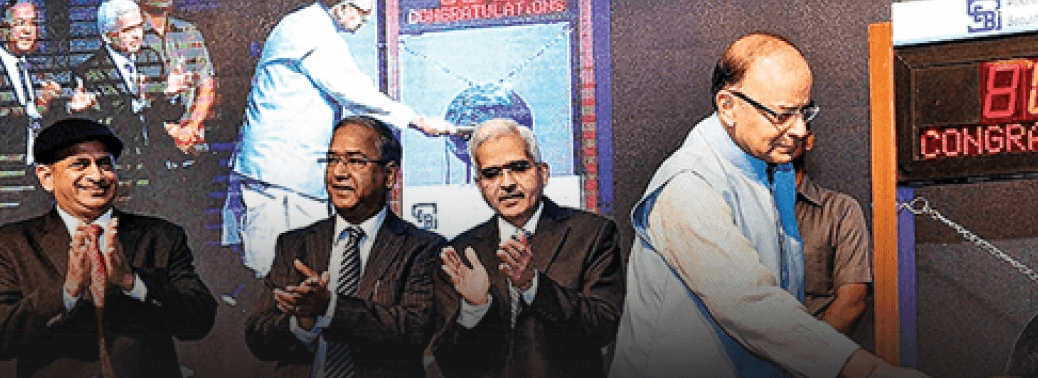
Why in News?
- A panel constituted by the Securities and Exchange Board of India (SEBI) has recommended opening the commodity derivatives segment to all categories of institutional investors in a phased manner, to enhance the depth and liquidity of the commodity market.
- The panel is of the view that in the next phase, institutional investors like foreign portfolio investors, banks, insurance companies and pension funds should be allowed in the commodity derivatives segment.
Background:
- SEBI helps in the prevention of malpractices and fraudulent means through self-regulation of business and statutory regulations. It frames a code of conduct which has to be followed by bankers, brokers, etc. It also educates investors to evaluate and buy profitable securities.
Functions of SEBI:
- Securities and Exchange Board of India is a quasi-legislative, quasi-judicial and quasi- executive body.
- It can draft regulations, conduct inquiries, pass rulings and impose penalties.
- Government has promulgated Securities Laws (Amendment) Second Ordinance, 2013 that would amend the Securities and Exchange Board of India Act, the Securities Contracts (Regulation) Act and the Depositories Act.
- With these amendments, Securities and Exchange Board of India will be able to regulate any money pooling scheme worth Rs. 100 crore or more and attach assets in cases of non- compliance. The SEBI Chairman would have the authority to order “search and seizure
- operations”. The amended law would also allow Securities and Exchange Board of India to seek information, such as telephone call data records, from any persons or entities in respect to any securities transaction being investigated by it. The law would further allow setting up of special courts to speed up SEBI related cases.
National Multi Commodity Exchange:
Establishment: 2002
Headquarter: Ahmedabad
Promoters:
- Central warehousing corporation
- Gujarat State Agricultural Marketing Board
- Gujarat Agricultural Industries Corporation Limited
- National Institute of Agricultural Marketing
- Neptune Overseas
- Punjab National Bank Trading Commodities:
- Castor Seeds
- Rapeseed
- Mustard
- Soybean
- Seasame
- Copra
- Black Pepper
- Gram
- Gold
- Aluminum
- Copper
- Lead
- Nickel
- Zinc
- Rubber
- Jute
- Coffee
- Isabgoal
Multi Commodity Exchange of India Ltd (MCX):
Establishment: Nov. 2003
Headquarter: Mumbai
- Achievements: MCX holds 86% market share of commodity exchange in India. It operates
- in more than 40 commodities. It is the world’s largest exchange in silver and gold. Promoters: National spot exchange limited, India energy exchange, Singapore mercantile exchange global board of trade, IBS Forex, National Bulk Handling Corporation, ticker plant lilited.
Trading Commodities:
- Metal, Bullion, Fibre, Energy, Spices, Plantations, Pulses, Petrochemicals, Cereals
National Commodity and Derivatives Exchange Limited (NCDEX) Establishment: Dec. 2003
Headquarter: Mumbai
- Promoters: ICICI Bank, LIC, NABARD, CANARA BANK, PNB, CRISIL, IFFCO, Goldman
- Sachs, Intercontinental Exchange, Renuka Sugar, J.P. Capital Commodity Traded: It facilitates the trade of 57 commodities.
- Cereals and pulses
- Fibres
- Oil and oil seeds
- Spices
- Plantation products
- Gold silver
- Steel
- Copper
- Crude Oil
- Brent Crude Oil
- Polyvinyl chloride
Indian Commodity Exchange (ICEX): It is a screen based online derivatives exchange for Establishment: Nov. 2009 Headquarter: Gurgaon
- Promoters: It has Reliance Exchange Next Ltd. as anchor investor and has MMCTC ltd. India Bulls financial Services Ltd, Indian Potash Ltd., KRIBHCO and IDFC.
Commodity Traded:
- Gold
- Silver
- Copper
- Lead
- Crude oil
- Natural gas
- Mustard
- Soyabean
- Soyabean oil
- Jute
- Menthe oil
- Iron ore
Shariah Index: The Bombay stock exchange and Taqwaa advisory and Shariah investment solutions have launched
- Establishment: Dec. 2010 Headquarter: Gurgaon
- This is the first Shariah index created in India utilizing the strict guidelines and local expertise of a domestic Shariah Advisory Board. The index comprises the 50 largest and most liquid shariah compliant stocks within BSE-500.
Universal Commodity Exchange: It’s a national level electronic commodity exchange in
- Establishment: April, 2013
- Promoters: Commex Technology, IDBI Bank, IFFCO, NABARD and REC. Commodity Traded: It deals in 11 commodities.
- Gold
- Silver
- Crude oil
- Chana
- Rubber
- Mustard
- Soya bean
- Refined soya oil
- Turmeric
RBI CUTS BENCHMARK INTEREST RATE, LOWERS GDP FORECAST TO 7.2%.
05, Apr 2019
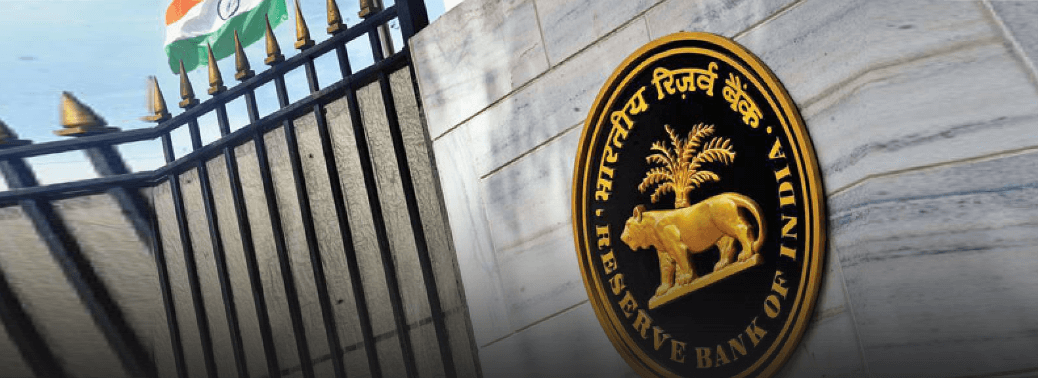
Why is it in News?
- The monetary policy committee of the Reserve bank of India for the second consecutive time cut the benchmark lending rate to 6%, and lowered GDP forecast to 7.2%.
What is Benchmark lending rate?
- Also called base interest rate, it is the minimum interest rate investors will demand for investing in a non-Treasury security. Base rate is the minimum interest rate of a bank, below which it cannot lend, except for DRI allowances, loans to bank’s own employees and loans to bank’s depositors against their own deposits.
GDP forecast:
- Forecast is based on an assessment of the economic climate in individual countries and the world economy, using a combination of model-based analyses and expert judgement. This indicator is measured in growth rates compared to previous year.
- The central bank lowered the GDP forecast to 7.2%. It also said output gap remained negative and the domestic economy was facing headwinds, especially in the global front.
What is GDP:
- Gross domestic product is the total value of everything produced in the country. It doesn’t matter if it’s produced by are citizens or foreigners. If they are located within the country’s boundaries, their production is included in GDP.
- To avoid double-counting, GDP includes the final value of the product, but not the parts that go into it.
What is output gap:
- Output gap refers to the difference between the actual output of the economy and its maximum potential.
Monetary policy committee:
- MPC is a six-member committee constituted by the Central Government. The MPC is required to meet at least four times in a year.
- Each member of the MPC has one vote, and in the event of an equality of votes, the Governor has a second or casting vote.
- Once in every six months, the Reserve Bank is required to publish a document called the Monetary Policy Report to explain:
- the sources of inflation and
- the forecast of inflation for 6-18 months
- The Reserve Bank of India (RBI) is vested with the responsibility of conducting monetary policy. This responsibility is explicitly mandated under the Reserve Bank of India Act, 1934.
Main goal of monetary policy Committee:
- The primary objective of monetary policy is to maintain price stability. To maintain price stability, inflation needs to be controlled. The government of India sets an inflation target for every five years. RBI has an important role in the consultation process regarding inflation targeting. The current inflation targeting framework in India is flexible in nature.
- When the total money supply is increased rapidly than normal, it is called an expansionary policy while a slower increase or even decrease of the same refers to a contractionary policy.
ROADIS, NIIF TO INVEST $2 BILLION ON ROAD PROJECTS
04, Apr 2019

Why in News:
- Roadis, a private investor and operator of transport infrastructure worldwide and the National Investment and Infrastructure Fund (NIIF) have jointly set up a platform to invest in road projects in India.
Details:
- It targets toll-operate-transfer models, acquisitions of existing road concessions and investment opportunities in the road sector with an aim to create a large roads platform in the country. National Investment and Infrastructure Fund (NIIF)
- National Investment and Infrastructure Fund (NIIF) is a fund created by the Government of India for enhancing infrastructure financing in the country.
- Securities and Exchange Board of India (SEBI) has already approved NIIF as an alternate investment fund. The National Investment and Infrastructure Fund (NIIF) Limited has been incorporated as a company under the Companies Act, 2013.
- The government will invest Rs 20,000 crore into the NIIF from the Budget, with another Rs 20,000 crore expected to come from private investors.
- It is India‘s first sovereign wealth fund. It has been set up as fund of funds structure with aim to generate risk adjusted returns for its investors alongside promoting infrastructure development. It aims to attract investments from both domestic and international sources for infrastructure development in commercially viable projects both Greenfield and Brownfield, including stalled projects.
Functions of NIIF
- Fund raising through suitable instruments including off- shore credit enhanced bonds, and attracting anchor investors to participate as partners in NIIF.
- Servicing of the investors of NIIF.
- Considering and approving candidate companies/institutions/ projects (including state entities) for investments and periodic monitoring of investments.
- Investing in the corpus created by Asset Management Companies (AMCs) for investing in private equity.
- Preparing a shelf of infrastructure projects and providing advisory services.
NIIF Corpus:
- It has targeted corpus of Rs 40,000 crore to be raised over the years — 49% of it will be funded by government at any given point of time.
- The remaining 51% will be raised from domestic and global investors, including international pension funds, sovereign wealth funds, multilateral/bilateral investors.
- Its Governing Council is chaired by Finance Minister and has already been set up to act as an advisory council to the NIIF.
BAD LOANS
04, Apr 2019
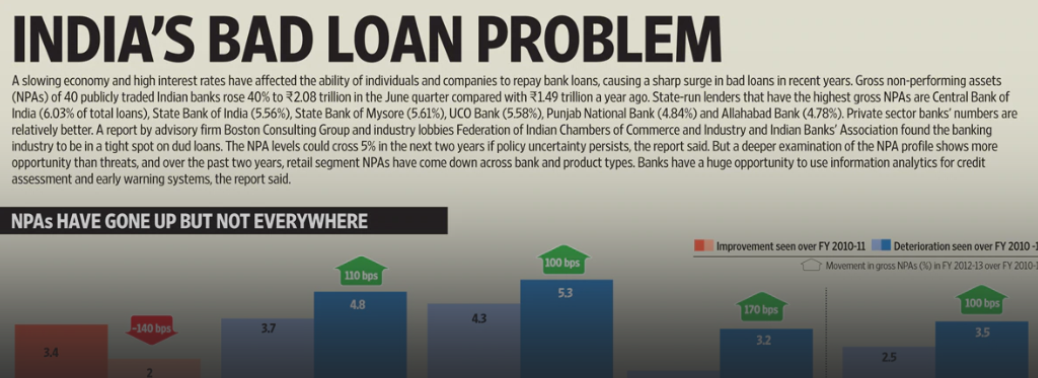
Why in News?
- The SC order quashing a circular issued by the RBI on resolution of bad loans is a set back to the evolving process for debt resolution. The circular had forced banks to recognise defaults by large borrowers with dues of over ₹2,000 crore within a day after an instalment fell due; and if not resolved within six months after that, they had no choice but to refer these accounts for resolution under the Insolvency and Bankruptcy Code.
Background:
What was Feb 12 circular?
- The RBI circular issued on February 12, 2018 is essentially a revised framework for the resolution of stressed assets.
- The circular went into effect on the same day that it was issued.
- All existing schemes for stressed asset resolution were withdrawn with immediate effect, which included the –
- Framework for Revitalizing Distressed Assets
- Corporate Debt Restructuring Scheme
- Flexible Structuring of Existing Long-Term Project Loans
- Strategic Debt Restructuring Scheme (SDR)
- Change in Ownership outside SDR
- Scheme for Sustainable Structuring of Stressed Assets (S4A)
- All these schemes allowed more lenient terms of resolution than the February 12 circular.
- As per the circular, banks were required to immediately start working on a resolution plan for accounts over Rs 2,000 crore.
- It prescribes insolvency proceedings under the Insolvency and Bankruptcy Code (IBC), for a debt servicing default beyond 180 days.
- Also, banks have to recognise loans as non-performing even if the repayment was delayed by just one day. Not adhering to the timelines in the circular would attract stringent supervisory and enforcement actions. The RBI argued that the circular had been issued in the public interest, with a view to ensure the timely resolution of stressed assets.
- It was intended to stop the “evergreening” of bad loans.
What is the Supreme Court’s present order?
- The Supreme Court held the February 12 circular “ultra vires as a whole”.
- This means that the RBI had gone beyond its powers and thus the circular is “of no effect in law”. The order provides immediate relief to companies that have defaulted in repayments, especially those in power, shipping and sugar sectors.
What are Bad loans and NPA?
- A loan where repayments are not being made as originally agreed between the borrower and the lender, and which may never be repaid.
- Under the present NPA concept, there are four categories of accounts.
- Standard assets or performing assets – the accounts in which the instalments are promptly paid without any delay. Substandard assets – the loan accounts where the principal/interest or principal and interest are not forthcoming for more than 90 days.
- Doubtful assets – no repayments for more than twelve months in the case of loans already categorised as substandard assets and for such loan accounts, the realisable value of securities is more than the liability in the account.
- Loss assets – no repayments for more than twelve months in the case of loans already categorised as substandard assets and for such loan accounts, the realisable value of securities is less than the liability in the account or there are no securities available for the loan accounts.
What measures can be taken?
- The right place for this work is a private equity fund. A private equity fund is fully private, is not hindered by regulation, is able to make sound decisions quickly owing to the absence of bureaucracy, and has strong financial incentives for the decision makers.
- The right way forward is for banks to sell bad assets to private equity funds.
- The basics of a regulator is the three process manuals that govern the legislative, executive, and quasi-judicial branches.
What was IBC, 2016?
- The code covers individuals, companies, Limited Liability Partnerships and partnership firms. The insolvency resolution process can be initiated by any of the stakeholders: business/ debtors, creditors & employees
- When firm defaults, a committee of its creditors will decide whether to revive the company or liquidate it. This has to be completed within 180 days. It can be extended by 90 days if the case is complex.
- The bodies which are already existing have been chosen as adjudicating authority (the authority who make judgement) for cases on insolvency namely National Company Law Tribunal (NCLT) for corporate and Debt Recovery Tribunal (DRT) for individuals
- The code will also address cross-border insolvency through bilateral agreements with other countries. Insolvency professionals have been created to do the process of insolvency resolution. They will specialize in helping sick companies.
- Insolvency professionals will be members of Insolvency Professional Agencies created under the code. These agencies will certify the professionals.
- Information utilities have also been created to collect, collate and disseminate all information about debtors to make a database about serial defaulters.
- Insolvency & Bankruptcy Board will be set up to regulate insolvency professionals, insolvency professional agencies and information utilities.
What are the potential benefits of the Act?
- Ease of doing business is not just about easy entry but also easy exit. To ensure the survival of fittest in a market economy, ease of exit is also very important. The ancillary benefits of the code are: It will improve India’s ranking in the ease of doing business index. On the parameter of resolving insolvency, India is ranked 136th among 189 countries. The code is expected to improve this ranking. It will promote investment and entrepreneurship in the economy. It will address India’s bad debts problems. Banks will be able to recover their loans from the bankrupt companies in a timely manner. The code could reduce the chances of another Kingfisher like incident in India
- Timely resolution of companies will free up bank’s resources and also increase credit
- availability in the economy. Productive resources of the economy will be put to best use.
SC VERDICT COULD DELAY RESOLUTION OF STRESSSED ASSETS
03, Apr 2019

Why in News:
- The prospect of recovering ₹3.8 lakh crore of stressed loans of over 70 large borrowers has become uncertain after the Supreme Court (SC) quashed the controversial February 12, 2018 circular of the Reserve Bank of India (RBI) on resolution of stressed assets.
Details:
- The central bank’s controversial ‘February 12 circular’ which tightened the framework for the resolution of stressed assets has been struck down by the Supreme Court. What was the Reserve Bank of India’s (RBI’s) so-called “February 12 circular”?
- Through a notification issued on February 12, 2018, when Urjit Patel was Governor, the RBI laid down a revised framework for the resolution of stressed assets, which replaced all its earlier instructions on the subject. Banks were required to immediately start working on a resolution plan for accounts over Rs 2,000 crore, which was to be finalised within 180 days.In case of non-implementation, lenders were required to file an insolvency application, according to rating agency of ICRA.
Stressed assets:
- stressed assets are getting increased attention as the trend of deteriorating asset quality has emerged as a big economic risk for the Indian banking sector. Stressed assets is a powerful indicator of the health of the banking system. Stressed assets = NPAs + Restructured loans
Written off assets.
- Assets of the banking system comprises of loans given and investment (in bonds) made by banks. Quality of the asset indicates how much of the loans taken by the borrowers are repaid in the form of interests and principal. The most important scale of asset quality is Non-Performing Assets (NPA).
Non-Performing Assets (NPA):
- An NPA means interest or principal is not repaid by the borrower during a specified time period. In most cases, debt is classified as nonperforming when loan payments have not been made for a period of 90 days.
- While 90 days of Non-payment is the standard, the amount of elapsed time may be shorter or longer depending on the terms and conditions of each loan.
Restructured loan:
- Restructured asset or loan are that assets which got an extended repayment period, reduced interest rate, converting a part of the loan into equity, providing additional financing, or some combination of these measures.
- A restructured loan also indicates bad asset quality of banks. This is because a restructured loan was a past NPA or it has been modified into a new loan. Whether the borrower will repay it in future remains a risky element. Corporate Debt Restructuring Mechanism (CDM) allows restructuring of loans.
Corporate Debt Restructuring Mechanism (CDM):
- Corporate Debt Restructuring (“CDR”) mechanism is a voluntary non statutory mechanism under which financial institutions and banks come together to restructure the debt of companies facing financial difficulties due to internal or external factors, in order to provide timely support to such companies.
Write off assets:
- Written off assets are those the bank or lender doesn’t count the money borrower owes to it.
Insolvency and Bankruptcy Board of India (IBBI):
- The Insolvency and Bankruptcy Board of India (IBBI) is the regulator for overseeing insolvency proceedings and entities like Insolvency Professional Agencies (IPA), Insolvency Professionals (IP) and Information Utilities (IU) in It was established on 1 October 2016 and given statutory powers through the Insolvency and Bankruptcy Code, which was passed by Lok Sabha on 5 May 2016.
- It covers Individuals, Companies, Limited Liability Partnerships and Partnership The new code will speed up the resolution process for stressed assets in the country.
HOW TO ACHIEVE 24×7 POWER FOR ALL
03, Apr 2019
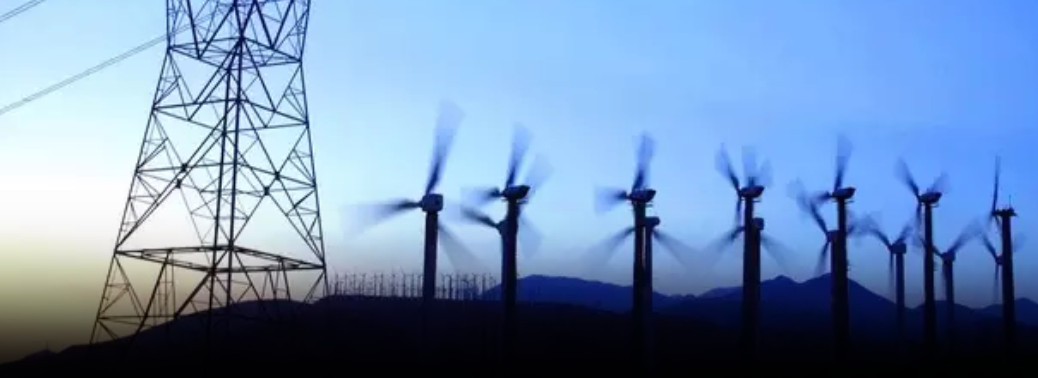
Why in News:
- Almost every willing household in India now has a legitimate electricity connection and a target to achieve 24*7 electricity objective.
Details:
- The household electrification scheme, Pradhan Mantri Sahaj Bijli Har Ghar Yojana, or Saubhagya, has been implemented and more than 45,000 households were electrified every day over the last 18 months.
- The enactment of the Electricity Act, in 2003, and the introduction of the Rajiv Gandhi Grameen Vidyutikaran Yojana, in 2005, have expanded electrification infrastructure to most villages
- The Access to Clean Cooking Energy and Electricity Survey of States (ACCESS) report by the Council on Energy, Environment and Water (CEEW), has highlighted the gap between a connection and reliable power supply.
Pradhan Mantri Sahaj Bijli Har Ghar Yojana, or Saubhagya
- Saubhagya’ was launched in September, 2017.
- Under Saubhagya, free electricity connections to all households both APL and poor families in rural areas and poor families in urban areas will be provided.
- Rural Electrification Corporation (REC) has been designated as nodal agency for the Saubhagya scheme.
- The scheme aims to achieve universal household electrification in all parts of the country.
- All DISCOMs including Private Sector DISCOMs, State Power Departments and RE Cooperative Societies shall be eligible for financial assistance under the scheme in line with Deen Dayal Upadhyaya Gram Jyoti Yojana (DDUGJY).
Eligibility:
- The prospective beneficiary households for free electricity connections under the scheme would be identified using Socio Economic Caste Census (SECC) 2011 data.
- However, un-electrified households not covered under SECC data would also be provided electricity connections under the scheme on payment of Rs. 500 which shall be recovered by DISCOMs in 10 instalments through electricity bill.
Scope of the scheme:
- Providing last mile connectivity and electricity connections to all un-electrified households in rural areas. Providing Solar Photovoltaic (SPV) based standalone system for un-electrified households located in remote and inaccessible villages, where grid extension is not cost effective. Providing last mile connectivity and electricity connections to all except economically poor un-electrified households in urban areas. Non-poor urban households are excluded from this scheme.
Benefits:
- If implemented successfully, Saubhagya can improve education, fuel economic activity and create more job opportunities across villages.
- The use of kerosene for lighting purposes could also be eliminated, and impact on the environment could be reduced. Power generating and distributing companies, currently saddled with excess capacity, are expected to benefit through an increase in the demand for power. Power distribution companies who are in financial distress may be able to recover some of their costs through the new household connections and added demand.
- Electrification has direct positive impact on the quality of all aspects of daily life, especially to the women and children.
- With deeper penetration of electricity network, significant improvement is expected in delivery of other essential services like health, communication etc. Thereby more opportunities for economic activities leading to employment generation, increase in income and poverty alleviation.
FY19 SAW MORE RATING UPGRADES THAN DOWNGRADES
02, Apr 2019
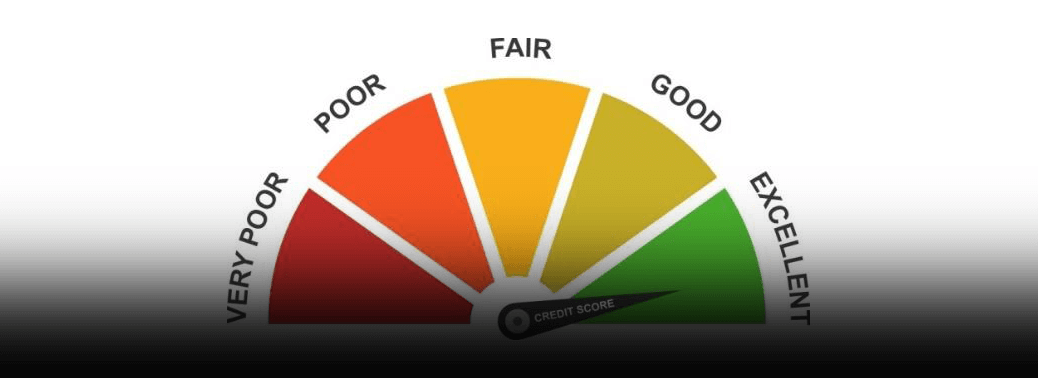
Why in News:
- Rating agency Crisil said that the credit ratio or the number of upgrades is higher than the number of downgrades
Details:
- Positive trends in credit ratio is also reflected in asset quality seen in banking sector where Non-Performing Assets had declined sharply.
Credit Rating:
- It is a organisation that gives rating to debtors or
- borrowers (government, companies etc) on the basis of their ability to pay back their principal loan and interest on time.
- It gives an idea of the probability of committing a default by them on debt and other credit related instruments. Indian credit rating industry has developed over a period of time. Indian credit rating industry mainly comprises of CRISIL, ICRA, FITCH, CARE, ONICRA and SMERA.
- The credit rating reflects the pay back abilities of individuals or company
CRISIL:
- This full-service rating agency is the major credit rating agency in India, with a market share of more than 60%. It is offering its services in financial, manufacturing, and service
- The head quarter of CRISIL is in Mumbai
- The majority stake of CRISIL was held by the world’s largest rating agency Standard & Poor’s.
FUGITIVE OFFENDERS ACT WON’T HELP BANKS
02, Apr 2019
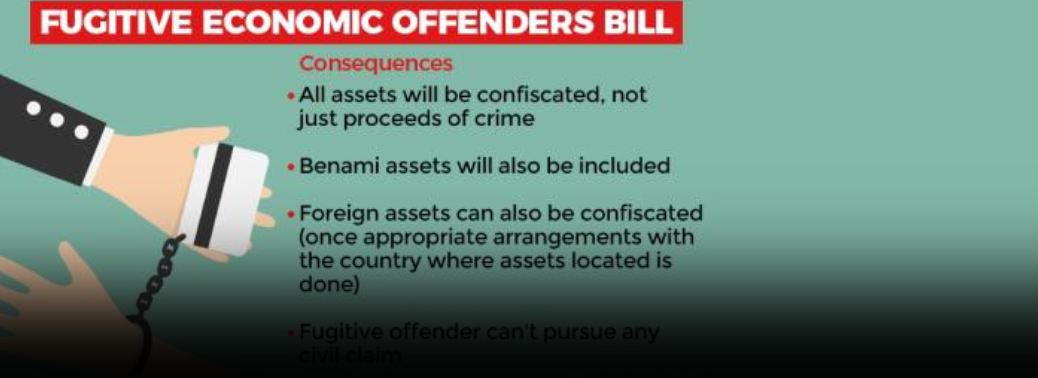
Why in News:
- Liquor baron Vijay Mallya’s lawyer reiterated before the Bombay High Court that the Fugitive Economic Offenders Act (FEOA) was a draconian law that wouldn’t help the creditors.
Background:
Who is a fugitive Offender?
A fugitive economic offender is a person against whom an arrest warrant has been issued for committing offence like:
counterfeiting government stamps or currency, cheque dishonour for insufficiency of funds money laundering
transactions defrauding creditors
A fugitive economic offender is one who has left the country to avoid facing prosecution, or refuses to return to face prosecution.
What comes under Economic offences?
Offences under the following Acts:
- Negotiable Instruments Act,
- Reserve Bank of India Act, 1934.
- Central Excise Act,
- Customs Act,
- Prohibition of Benami Property Transactions Act,
- Prevention of Money Laundering Act,
- Indian Penal
Fugitive offenders act 2018:
- The act aims to curb the practice of evading the criminal prosecution by the economic offenders who flee from the country to stay out of the jurisdiction of Indian courts.
- The act will give the right to the government to confiscate the property of such economic offenders in India and abroad. The act will also be applicable on the proxy-owned properties of the economic offenders. The act defines the economic offenders as those against whom a legal warrant has been issued, but they refuse to adhere to the summons of the legal authorities.
- The law balances itself with a provision that allows the accused to file an appeal in the High Court to state their case. The act keeps the banks and other financial institutions at the Centre and seeks to help them recover the amount. The act will only be used for economic offences over Rs 100 crores. The act makes provisions for a Court (‘Special Court’ under the Prevention of Money-laundering Act, 2002) to declare a person as a Fugitive Economic Offender.
Significance of the act
- There have been several instances of economic offenders fleeing the jurisdiction of Indian courts, anticipating the commencement, or during the pendency, of criminal proceedings.
- The absence of such offenders from Indian courts has several deleterious consequences— first, it hampers investigation in criminal cases; second, it wastes precious time of courts of law; third, it undermines the rule of law in India.
- The act is expected to re-establish the rule of law with respect to the fugitive economic offenders as they would be forced to return to India to face trial for scheduled offences.
- This would also help the banks and other financial institutions to achieve higher recovery from financial defaults committed by such fugitive economic offenders, improving the financial health of such institutions.
- It is expected that the special forum to be created for expeditious confiscation of the proceeds of crime, in India or abroad, would coerce the fugitive to return to India to submit to the jurisdiction of Courts in India to face the law in respect of scheduled offences.
A SYSTEMATIC WAY OF MAXIMISING RETURNS ON INVESTMENT
01, Apr 2019

About:
- A Systematic Investment Plan (SIP) is a way to invest in mutual funds wherein a fixed sum of money is put into a mutual fund scheme at a specified date every month.
- It is considered to be investor-friendly and an efficient manner of investing in the capital markets. From this, one can start investing with small monthly contributions instead of building a huge investment corpus.
Benefits:
- SIPs capture every rise and fall of the market and hence, an investor need not worry about the level of the market. there are sector-specific funds such as pharma, banks, technology, and also those based on the size of the companies such as large-cap, mid-cap, small-cap
- funds that allow the investor to have a diversified portfolio rather than concentrate risk in a few companies
- It is considered to be investor-friendly and an efficient manner of investing in the capital markets.
In Q3, current account deficit narrows to 2.5%
30, Mar 2019
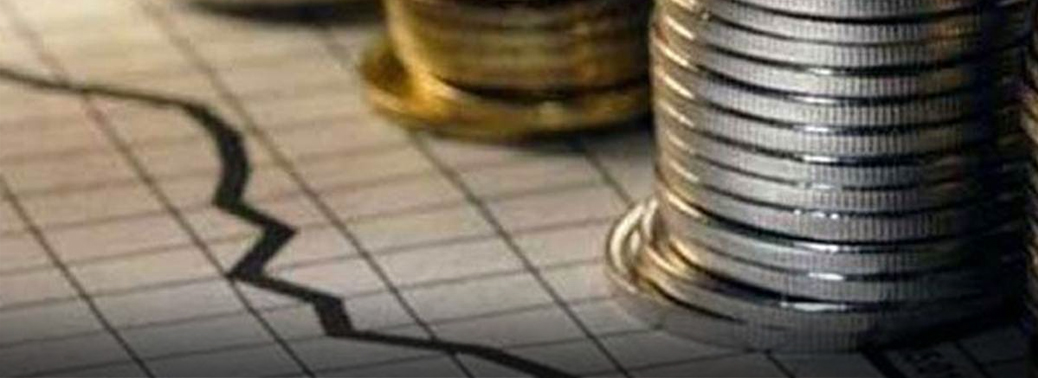
India’s current account deficit (CAD) for the third quarter narrowed to 2.5% of the GDP compared with 2.9% in the preceding quarter, latest data released by the Reserve Bank of India (RBI) showed. In absolute terms, CAD was $16.9 billion in Q3 compared with $19.1 billion in the second quarter.
However, on a year-on-year basis, CAD in October-December period widened from 2.1% or $13.7 billion.
The widening of the CAD on a year-on-year (y-o-y) basis was primarily on account of a higher trade deficit at $49.5 billioncompared with $44 billion a year ago.
What is Current Account Deficit?
- It means the value of imports of goods/services/investment incomes is greater than the value of exports.
- It is sometimes informally referred to as a trade deficit.
- The major contributor to India‘s Current Account Deficit (CAD) has been imports of Gold and Crude Oil.
Impact of CAD
- Sustained period of CAD has led to currency depreciation, high rates of inflation which further effects the incoming foreign investment.
- Fall in gold imports and lower oil import bill in recent time led to shrinkage in the deficit.
- A current account surplus means an economy is exporting a greater value of goods and services than it is importing.
- There is no hard and fast rule about what will happen if a country has a current account surplus. It depends on the size of the current account and the reasons for the current account surplus.
- In the case of India, slow growth in imports, reflecting the persisting weakness in the investment sentiment, is the prominent reason behind this.
- The current account was in surplus last in the January-March quarter in the year 2007.
GI tag for Coorg Arabica Coffee, four others
30, Mar 2019
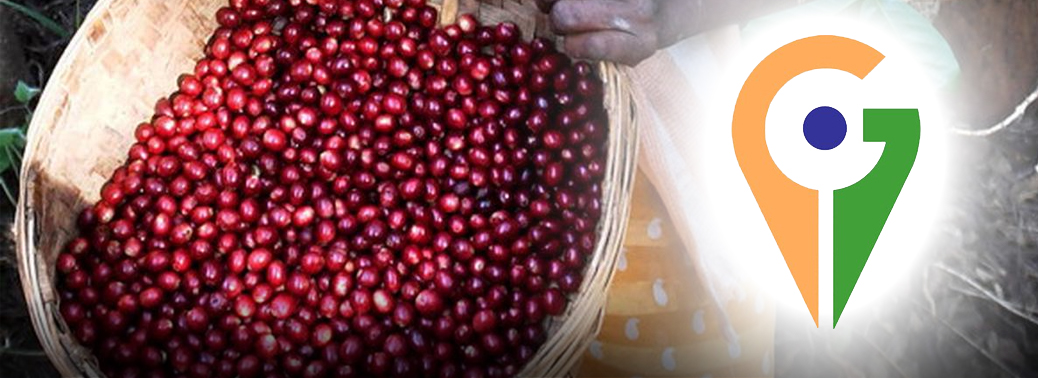
The Geographical Indications Registry has granted the Geographical Indication (GI) tag to
Coorg Arabica Coffee,
Wayanad Robusta Coffee,
Chikmagalur Arabica Coffee,
Araku Valley Arabica Coffee and
Bababudangiris Arabica Coffee.
The GI was granted
According to the GI application, Coorg Arabica Coffee is grown specifically in Kodagu district in Karnataka.
As per the GI application for Wayanad Robusta Coffee, the flora of Wayanad is characteristic of the Western Ghats and the plantation crops grown in the cool climate.
Coffee based farming system is a notable feature of Wayanad. Coffee is grown both as pure crop and as mixed crop along with pepper. Wayanad produces almost around 90% of the state’s Coffee produce which literally concludes that the coffee economy of Kerala is highly correlated with the coffee economy existing in Wayanad. Robusta coffee produce is more than 95% of the total coffee cultivation done in Wayanad.
Chikmagalur Arabica Coffee and Bababudangiris Arabica Coffee are both grown in Chikmagalur district, Karnataka which is also known as the birthplace of coffee in the country, as per the application petitions.
Coffee production in India
It is dominated in the hill tracts of South Indian states, with Karnataka accounting for 71%, followed by Kerala with 21% and Tamil Nadu (5% of overall production with 8,200 tonnes).
Indian coffee is said to be the finest coffee grown in the shade rather than direct sunlight anywhere in the world.
As of 2018, Indian coffee made up just 4.5% of the global production. Almost 80% of Indian coffee is exported; 70% is bound for Germany, Russia, Spain, Belgium, Slovenia, United States, Japan, Greece, Netherlands and France. Italy accounts for 29% of the exports. Most of the export is shipped through the Suez Canal.
Coffee is grown in three regions of India with Karnataka, Kerala and Tamil Nadu forming the traditional coffee growing region, followed by the new areas developed in the non-traditional areas of Andhra Pradesh and Orissa in the eastern coast of the country and with a third region comprising the states of Assam, Manipur, Meghalaya, Mizoram, Tripura, Nagaland and Arunachal Pradesh of Northeastern India, popularly known as “Seven Sister States of India.
GI Tag:
- Geographical Indication is a genre of Intellectual Property.
- GI tag is an insignia on products having a unique geographical origin and evolution over centuries with regards to its special quality or reputation attributes.
- The status to the products marks its authenticity and ensures that registered authorised users are allowed to use the popular product name.
- These could be naturally grown crops like Assam Chilies or manufactured products like Jaipur Pottery.
- GI tags are given on the basis of the Geographical Indications of Goods (Registration and Protection) Act, 1999.
- The registration of GI is valid for 10 years after which it needs to be renewed.
- Violation of GI tags is punishable offence under law.
Blockchain enabled marketplace app for coffee
30, Mar 2019
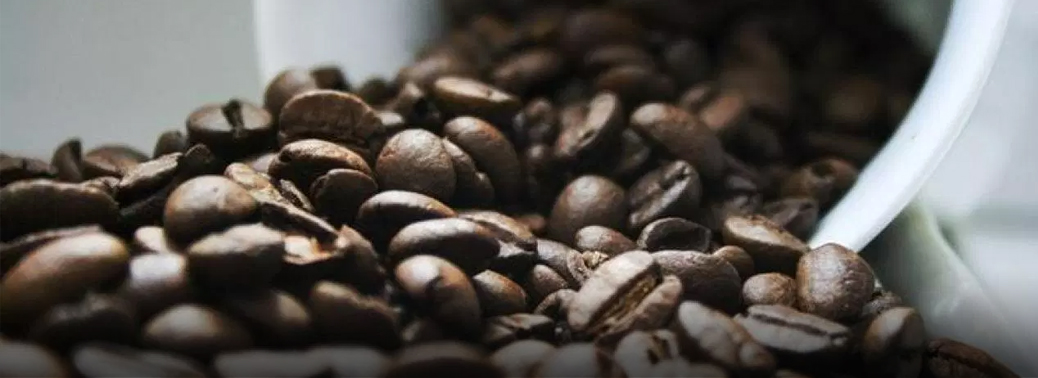
The commerce ministry Thursday launched a Blockchain based coffee e-marketplace to help farmers integrate with markets so that they can realise fair prices for the commodity.
The app is intended to bring in transparency in coffee trade and maintain the traceability of Indian coffee from bean to cup so as the consumer tastes real Indian coffee and the grower is paid fairly for his produce
The blockchain will also reduce the number of layers between coffee growers and buyers and help farmers increase their income
Anyone willing to participate in the marketplace will have to register on the app and will get a smart contract number. But, the pilot project has about 20 participants, including 14 coffee growers, and will run for four-to-six months.
India is the only country in the world where entire coffee is grown under shade, handpicked and sun dried.
About Blockchain:
- A blockchain is a database (is a growing list of records) that is shared across a network of computers. Once a record has been added to the chain it is very difficult to change. To ensure all the copies of the database are the same, the network makes constant checks.
- The idea was described in 1991 by Stuart Haber and W. Scott Stornetta.
- Unlike traditional ledgers, a blockchain database is decentralized and has no “master.”
There is a lot of hype about blockchain, but some promising uses are under development.
• When information is to be stored, the record lists the details, including a digital signature from each party.
• The accepted records are added to a block. Each block contains a unique code called a hash. It also contains the hash of the previous block in the chain.
• The block is added to the blockchain. The hash codes connect the blocks together in a specific order.
• Any change to the original input will generate a new hash. The changed hash breaks the chain.
• Cryptocurrency: Blockchains are the basis of bitcoin and other cryptocurrencies.
• Banking: Financial institutions have been investing in blockchains to simplify their record-keeping for payments.
• Supply chain: Recording trades on a blockchain offers a way to check the history of a product.
• Property records: Storing land records on a blockchain could cut down on costly title research and increase transparency
• Voting: Blockchain records could create tamper-proof election returns.
• Healthcare: With blockchain, medical history could be securely stored and controlled by patients.
Centre to borrow rupee 7.1 lakh crore in FY20
30, Mar 2019
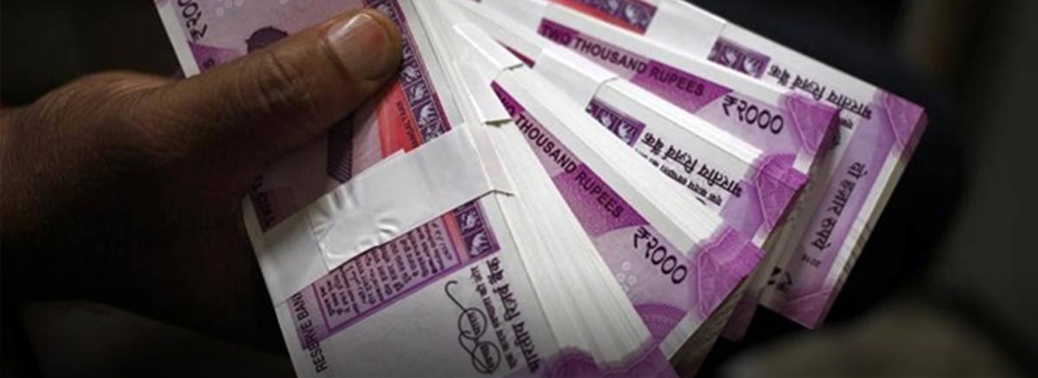
- Borrowing calendar for the next financial year was announced and the government said that it will raise Rs 4.42 lakh crore through gilts in the first half of FY20.
- Gilts are bonds that are issued by the British government, and they are generally considered low-risk investments. Gilts are the U.K. equivalent of U.S. Treasury securities.
- The gross borrowing of Rs.7.10 lakh crore for the entire year is significantly higher than the Rs.5.35 lakh crore borrowing programme for financial year 2018-19 which is 62.30% of total borrowings.
- Gross borrowing, is the total public debt that the government is liable to pay.
- The net borrowing, which does not include repayments of past loans, has been projected at Rs 3.4 lakh crore for the April-September 2019 period.
- Fiscal deficit target set in the Union Budget is 3.4% of the Gross Domestic Product.
- The government is also planning to introduce new seven-year benchmark government security and may extended 15-19 years gilt maturity bracket to 15-24 years.
Centre should address States’ concern on GST transfers
29, Mar 2019

While the Goods and Services Tax (GST) Council was designed as a federal body between the States and the Centre, the complaint of the States is that the Centre is taking advantage of the arrangement and is delaying the dues to be paid to the States longer than is needed.
COOPERATIVE FEDERALISM
Though Indian states have achieved Political Integration in 1950’s with the integration of Princely states in Indian Union, economic Integration was still missing. Passing of GST is a shining example of cooperative federalism where States and Centre have ceded their power to tax and come up with a single tax system to realize the dream of one Economic India with ‘One Market’. Thus, GST once again has shown Unity in Diversity of Indian Society. However, Economic integration is still not achieved as Constitution needs some changes in this regard.
GST: a shining example of Cooperative federalism
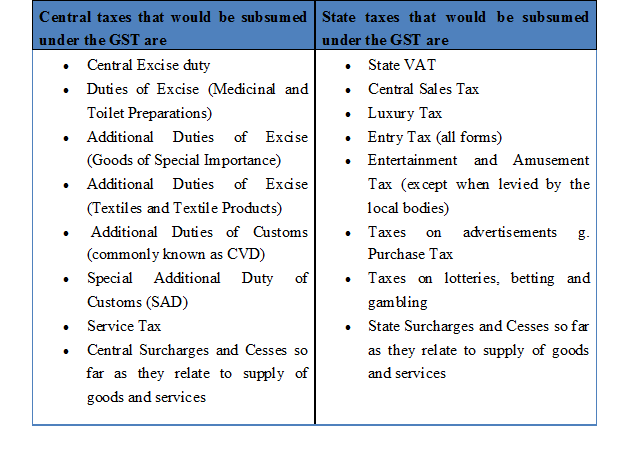
In our Federal System both Centre and States have power to impose taxes. The division of such taxation powers is given in Union and State List under 7th Schedule. With the spirit of cooperative federalism, under GST, both Centre and States have given up taxation powers and as a product following taxes have been eliminated.
The Constitution of India has also been amended accordingly. This fundamental reordering of federal fiscal relations for the cause of common good shows the strength and resolve of the federal structure.
This convergence for the cause of larger public good has been made possible, initially due to the mechanism of the Empowered Committee of Ministers (EC) and later the GST Council. Under the GST regime, the Centre & States will act on the recommendations of the GST Council. GST Council comprises of the Union Finance Minister, Union Minister of State for Finance and all Finance Ministers of the States. 2/3rd of voting power is with the States and 1/3rd with the Centre which reflects the accommodative spirit of federalism.
Though the Constitution provides for decisions being taken by a 3/4th majority of members present and voting, all decisions till now (before july, 1, 2017) have been taken unanimously by consensus. The very fact that there has been no need to resort to voting to take any decisions taken till now in 18 meetings held so far reflects the spirit of “One Nation, One Aspiration, One Determination”. In this context it is important to note that credit for the new law does not go to one party or one government but it’s a shared legacy of all.
The participation of all States and Centre in the framing of GST laws has led to the following features in the GST Laws. These features signify spirit of cooperative federalism.
- Harmonisation of GST laws across the country: Even though Centre and each State legislature have passed their own GST Acts, they are all based on the Model GST law drafted jointly by the Centre & the States. Consequently, all the laws have virtually identical provisions.
- Common Definitions: There are common definitions in the CGST and SGST Act.
- Common Procedures / Formats:There are common procedures; common formats in all laws, even the sections and subsections in CGST Act and SGST Act are same. UTGST Act provides that most of the provisions in CGST Act, as stated in Section 21 shall apply to UTGST Act also.
- Common Compliance Mechanism: GSTN, a not-for-profit, non-government company promoted jointly by the Central and State Governments, is the common compliance portal and the taxpayers shall interface with all states as well as Centre through this portal.
Other significant areas, where such co-operation has been displayed by the Centre and States are as under: - Joint Capacity Building Efforts: Joint Capacity Building efforts by Centre as well as all the States are being organised wherein for the first time the training of officers of Centre and State is being conducted under the auspices of National Academy of Customs, Indirect Taxes and Narcotics (NACIN). NACIN has formed a Joint Coordination Committee in each State comprising of Centre, State and NACIN Officers for overseeing Capacity Building efforts.
- Joint Trade Awareness & Outreach Efforts: Centre along with the State Government Officials has been organising Joint Trade Awareness & Outreach programs wherein for the first time the Officers came together to create GST awareness amongst Trade and other stakeholders.
- Cross Empowerment of Officers of Centre as well as States:Though GST will be jointly administered by Centre and State, for ensuring ease of doing business, but the individual taxpayer will have a single interface with only one Tax Authority either Centre or State.
- Joint Implementation Committees: In order to ensure smooth rollout of GST, the GST Council has formed a three tier structure consisting of: the Office of the Revenue Secretary, GST Implementation Committee (GIC) and eight Standing Committees. In addition, eighteen Sectoral Groups representing various sectors of the economy have been set up. All these Committees viz. GST Implementation Committee (GIC), Standing Committees and Sectoral Groups have representation of Centre and State Officers in the spirit of cooperative federalism to ensure quick administrative decisions required before and after the rollout and ensure effective coordination for smooth implementation of GST.
Indeed, GST in India in its conception, enactment and implementation is an example of real ‘co-operative federalism’ at work, in tune with the unique character of India – ‘Unity in Diversity’.
Economic Integration
Under GST regime the entire country will become one market and it will be an economic integration of India. India would become one uniform market with seamless transfer of goods and services.
New loan pricing scheme may be put off
29, Mar 2019
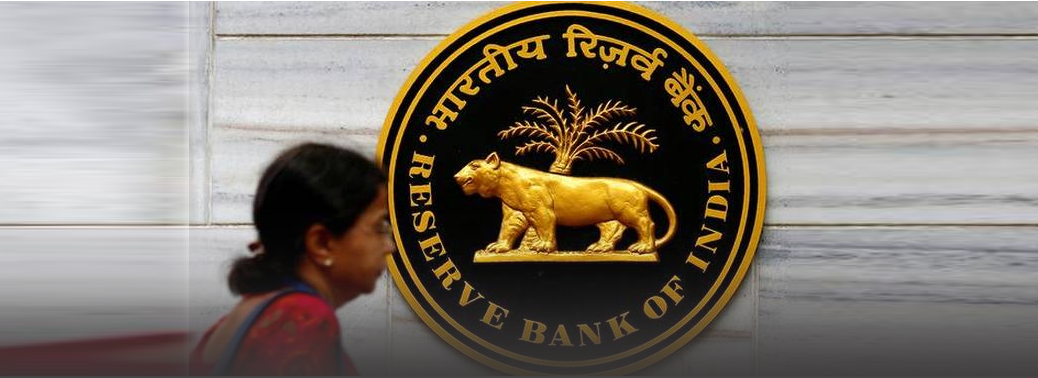
Banks will be getting more time to migrate to the new loan pricing regime which was scheduled to be implemented from April 1.
This new pricing scheme, based on an external benchmark, will be applicable for floating rate loans extended to individuals and small businesses.
During the December monetary policy review the last such review by former RBI Governor Urjit Patel the central bank had decided that all new floating rate retail loans such as housing and auto loans, and floating rate loans extended by banks to micro and small enterprises from April 1, 2019, should be linked to an external benchmark.
RBI also said that the final guidelines would be issued by December-end.
The final guidelines on the loan pricing based on external benchmark are yet to be released by RBI. Banks would need some time to prepare after the final norms are issued. So, it is likely to be postponed.
Various Benchmark Rates:
- Repo Rate:The (fixed) interest rate at which the Reserve Bank provides overnight liquidity to banks against the collateral of government and other approved securities under the liquidity adjustment facility (LAF).
- Reverse Repo Rate:The (fixed) interest rate at which the Reserve Bank absorbs liquidity, on an overnight basis, from banks against the collateral of eligible government securities under the LAF.
- Liquidity Adjustment Facility (LAF):The LAF consists of overnight as well as term repo auctions. Progressively, the Reserve Bank has increased the proportion of liquidity injected under fine-tuning variable rate repo auctions of a range of tenors. The aim of term repo is to help develop the inter-bank term money market, which in turn can set market-based benchmarks for pricing of loans and deposits, and hence improve the transmission of monetary policy. The Reserve Bank also conducts variable interest rate reverse repo auctions, as necessitated under the market conditions.
- Marginal Standing Facility (MSF):A facility under which scheduled commercial banks can borrow an additional amount of overnight money from the Reserve Bank by dipping into their Statutory Liquidity Ratio (SLR) portfolio up to a limit at a penal rate of interest. This provides a safety valve against unanticipated liquidity shocks to the banking system.
- Corridor:The MSF rate and reverse repo rate determine the corridor for the daily movement in the weighted average call money rate.
- Bank Rate:It is the rate at which the Reserve Bank is ready to buy or rediscount bills of exchange or other commercial papers. The Bank Rate is published under Section 49 of the Reserve Bank of India Act, 1934. This rate has been aligned to the MSF rate and, therefore, changes automatically as and when the MSF rate changes alongside policy repo rate changes.
- Cash Reserve Ratio (CRR):The average daily balance that a bank is required to maintain with the Reserve Bank as a share of such percent of its Net demand and time liabilities (NDTL) that the Reserve Bank may notify from time to time in the Gazette of India.
- Statutory Liquidity Ratio (SLR):The share of NDTL that a bank is required to maintain in safe and liquid assets, such as unencumbered government securities, cash and gold. Changes in SLR often influence the availability of resources in the banking system for lending to the private sector.
- Open Market Operations (OMOs):These include both, outright purchase and sale of government securities, for injection and absorption of durable liquidity, respectively.
- Market Stabilisation Scheme (MSS):This instrument for monetary management was introduced in 2004. Surplus liquidity of a more enduring nature arising from large capital inflows is absorbed through the sale of short-dated government securities and treasury bills. The cash so mobilised is held in a separate government account with the Reserve Bank.
Monetary Policy Committee
- It is the committee which will decide India’s Monetary Policy.
- The formation of the monetary policy committee was mooted by the Urjit Patel committee.
- The committee suggested that monetary policy be rule-based and not discretion-based. The final decision on monetary policy should not lie with the RBI governor alone but on a group of people.
- Targeting inflation is to be the core objective of the central bank, and it will be answerable to law-makers if it failed to achieve the target.
Composition of MPC
MPC will be a 6 member committee:
- 3 members will be from RBI. These 3 members would include the governor who will also be the ex-officio chairperson of the committee.
- 3 members will be appointed by the central govt. These members should be experts in the field of finance or banking or economics or monetary policy. They will have a tenure of 4 years and will not be eligible for reappointment.
- The members appointed by the govt. will be appointed based on the recommendations by the search-cum-selection committee which will be headed by the cabinet secretary.
- Decisions will be taken by majority vote with each member having a vote
- The governor will not enjoy a veto powerto overrule the other panel members, but will have a casting vote in case of a tie.
- No government official will be nominated to the MPC
MPC will meet four times in 1 year and will announce its decisions publicly after each meeting. MPC replaces previous arrangement where RBI Governor along with a Technical Advisory Committee (TAC) taking decisions on monetary policy including setting interest rates. In the previous arrangement TAC was only having advisory functions and the RBI Governor enjoyed veto power over the committee in setting interest rates.
Cement prices stay steady at Rs. 334 per bag in March
29, Mar 2019
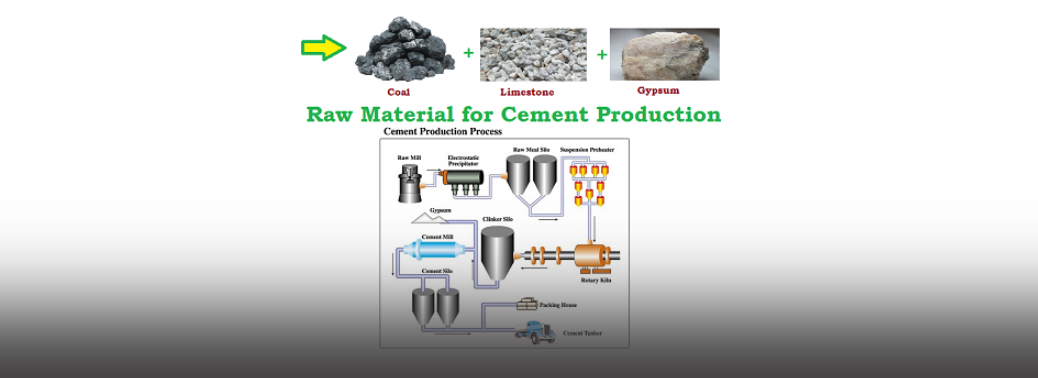
All India prices of cement remained steady at Rs. 334 per bag during March despite increases in southern and eastern regions.
South and eastern regions witnessed a price hike of Rs. 5 per bag while prices declined by Rs. 1-11 per bag in north, central and west. Since January, cement prices in the south had increased by Rs. 45 per bag.
The Cement Industry in India is one of the basic industries in India. The organised production of cement in India was started in 1904 in Madras (Now Chennai). It is basically weight-losing industry. So, the localization of the industry is in area of raw materials. Its major raw materials are coal, limestone and gypsum. Since the largest reserves of limestone are in Madhya Pradesh, the maximum development of this industry has been in this state. Recently, sea shells, sludge obtained from chemical fertilizers and slag obtained from iron and steel industry are also used as raw materials besides limestone.
India’s Cement Industry is the second largest producer of cement in world. It plays an important role in development of a country and contributes very high in Indian GDP. A significant factor which aids the growth of this sector is the ready availability of the raw materials for making cement, such as limestone and coal.
8 Core Industries
- Core industry can be defined as the main industry. In most countries, there is a particular industry that seems to be the backbone of all other industries and it qualifies to be the core industry.
- In India, there are eight core sectors comprising of
- Refinery products (28.04%)
- Electricity (19.85%)
- Steel (17.92%)
- Coal (10.33%)
- Crude oil (8.98%)
- Natural gas (6.88%)
- Cement (5.37%)
- Fertilisers (2.63%)
- These eight Core Industries comprise nearly27%of the weight of items included in the Index of Industrial Production (IIP), which measures factory output.
- Index of Eight Core Industries is released by Ministry of Commerce and Industry.
66% EMPLOYERS LOOKING FOR DIFFERENT SKILLS THAN THREE YEARS AGO
28, Mar 2019
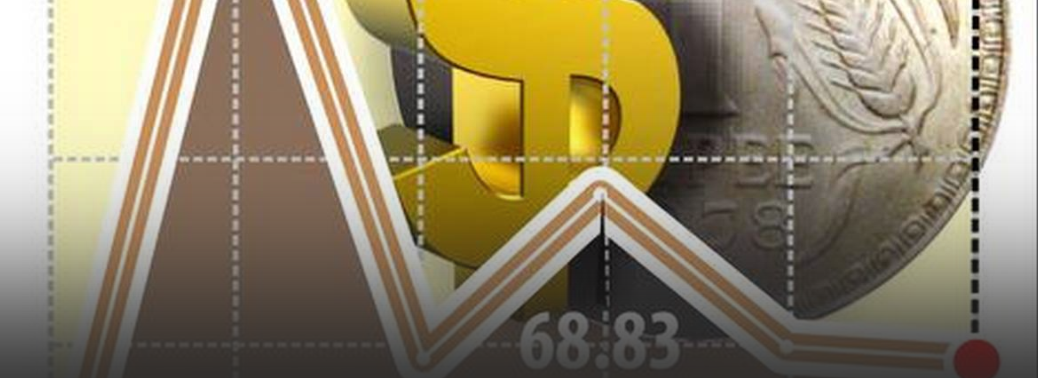
- Fast-changing job requirements are leading to a yawning skills gap in many parts of the world, with India being one of the hardest-hit – International Labour Organisation in collaboration with the International Organisation of Employers.
Present Scenario:
- 66% of Indian businesses say they are looking for quite different skills in new recruits than they were three years ago, with 53% saying it is becoming harder to recruit people with the needed skills.
- Globally, 60% of employers say new graduates are not adequately prepared for current work.
Bridging the Gap
- Schemes for skill development
- Deen Dayal Upadhyaya Grameen Kaushalya Yojana
- Pradhan Mantri Kaushal Vikas Yojana
- Financial Assistance for Skill Training of Persons with Disabilities National Apprenticeship Promotion Scheme
- Craftsmen Training Scheme Apprenticeship training Pradhan Mantri Kaushal Kendra Skill development for minorities
- Green Skill Development Programme
- Scheme for Higher Education Youth in Apprenticeship and Skills
INDICES GAIN OVER 1% MIRRORING GLOBAL TREND
27, Mar 2019

- The Indian benchmark equity indices staged a smart recovery to gain more than 1% to reverse a two-day losing streak that saw indices fall below psychological levels.
What is an ‘Equity’/Share?
- Total equity capital of a company is divided into equal units of small denominations, each called a share. (Equity capital is the invested money that, in contrast to debt capital, is not repaid to the investors in the normal course of business.) For example, in a company
- the total equity capital of Rs 5,00,00,000 is divided into 50,00,000 units of Rs 10 each. Each such unit of Rs 10 is called a Share. Thus, the company then is said to have 50,00,000 equity shares of Rs 10 each.
What is meant by a Stock Exchange?
- The Securities Contract (Regulation) Act, 1956 [SCRA] defines ‘Stock Exchange’ as any body of individuals, whether incorporated or not, constituted for the purpose of assisting, regulating or controlling the business of buying, selling or dealing in securities. Stock exchange could be a regional stock exchange or national exchanges.
Why do companies need to issue shares to the public?
- Most companies are usually started privately by their promoter(s). However, the promoters’ capital and the borrowings from banks and financial institutions may not be sufficient for setting up or running the business over a long term. So companies invite the public to contribute towards the equity and issue shares to individual investors. The way to invite share capital from the public is through a ‘Public Issue’. Simply stated, a public issue is an offer to the public to subscribe to the share capital of a company. Once this is done, the company allots shares to the applicants as per the prescribed rules and regulations laid down by SEBI.
Bull Market vs Bear Market
- A bull market is a financial market of a group of securities in which prices are rising or are expected to rise. Bull markets are characterized by optimism, investor confidence and expectations that strong results will continue.
- Bear market refers to a market condition in which the prices of securities are falling, and widespread pessimism causes the negative sentiment to be self-sustaining. As investors anticipate losses in a bear market and selling continues, pessimism only grows. A bear market should not be confused with a correction, which is a short-term trend that has a duration of less than two months.
Bombay Stock Exchange:
- BSE is the oldest stock exchange in Asia formed by eight native stock brokers association in 1875 located at Dala street, Mumbai.
- It had received temporary approval from Bombay government in 1927 and permanent approval by Indian Government on 31 Aug 1957.
- Today it is 10th largest stock market in the world by market capitalization at $1.7 trillion and has more than 5,000 companies listed in it.
- Its iconic building named Phiroze Jeejeebhoy Towers, Dalal Street in Mumbai, Maharashtra has received image trademark under Trade Marks Act, 1999.
National Stock Exchange of India (NSE)
- NSE is an All india level stock exchange. It was incorporated in November 1992. It offers online trading system matching to international standards.
- The main features of National Stock Exchange are as follows
- It has nationwide coverage. The investor can make dealing through NSEI dealer.
- NSE is the first stock exchange in the world which uses communication technology for trading its securities. It is fully computerised, screen based and ringless system.
- It allows the investors to trade their securities from their offices or homes through the network with direct satellite link up.
- There are transparency dealings. The investor can check the exact price at which their transactions took place.
- National Stock Exchange is a company promoted BY IDBI, ICCI, LIC and GIC and its subsidiaries, commercial banks. SBI capital market limited.
- The establishment of the NSE is a major step in upgrading trading facilities for investors and bringing Indian Financial markets in line with international markets.
- The index of the NSE is called as the Broader 50 share – Nifty.
RBI RECEIVES AGGRESSIVE BIDS, INFUSES RS. 34,500 CR. LIQUIDITY
27, Mar 2019
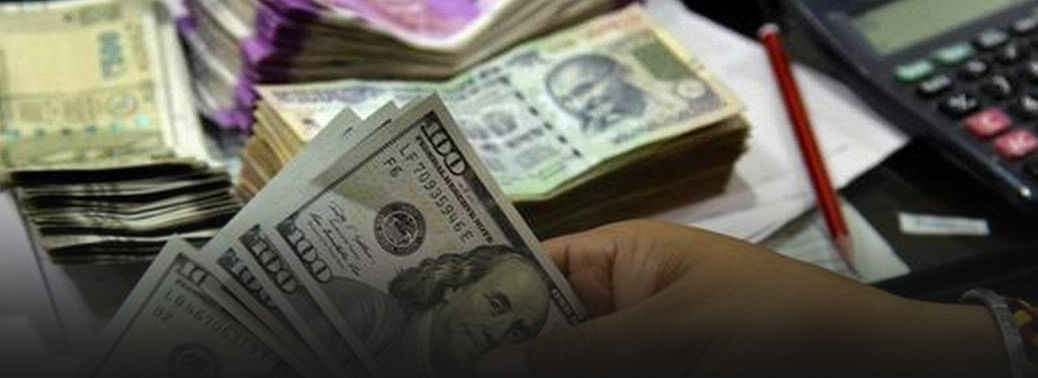
- The first dollar-rupee buy/sell swap auction by Reserve Bank of India (RBI), which was aimed at infusing primary liquidity, saw aggressive bidding by banks.
- The RBI received $16.31 billion in bids for the auction for a notified amount of $5 billion. In turn, RBI infused Rs. 34,561 crore rupee liquidity.
Fewer OMOs:
- RBI would conduct more such auctions as there is an appetite in the market, and reduce dependence on open market purchases of bonds. RBI has infused a significant amount of liquidity in the current fiscal through open market operations (OMOs).
Currency Swap:
- A currency swap involves exchange of principal and interest in one currency for the same in another currency. It is considered to be a foreign exchange transaction.
- For example: Suppose a Foreign company needs to acquire Indian Rupees and India-based company needs to acquire US dollars. Then these two companies could arrange to swap currencies by establishing an interest rate, agreed upon amount along with a common maturity date for the exchange.
Major Currency Swap arrangements of India:
- Under BRICS
- With UAE
- With Japan
Open Market Operation
- An Open Market Operation (OMO) is the buying and selling of government securities in the open market, hence the nomenclature. It is done by the central bank in a country (the RBI in India). When the central bank wants to infuse liquidity into the monetary system, it will buy government securities in the open market. This way it provides commercial banks with liquidity. In contrast, when it sells securities, it curbs liquidity. Thus, the central bank indirectly controls the money supply and influences the short-term interest rates. In India, after the economic reforms of 1991, the OMO has gained more importance than the CRR (cash reserve ratio) in adjusting liquidity.
Types of Open Market Operations
RBI employs two kinds of OMOs:
- Outright Purchase (PEMO) – this is permanent and involves the outright selling or buying of government securities.
- Repurchase Agreement (REPO) – this is short-term and are subject to
IRDAI MOOTS PUBLIC DISCLOSURE NORM
26, Mar 2019
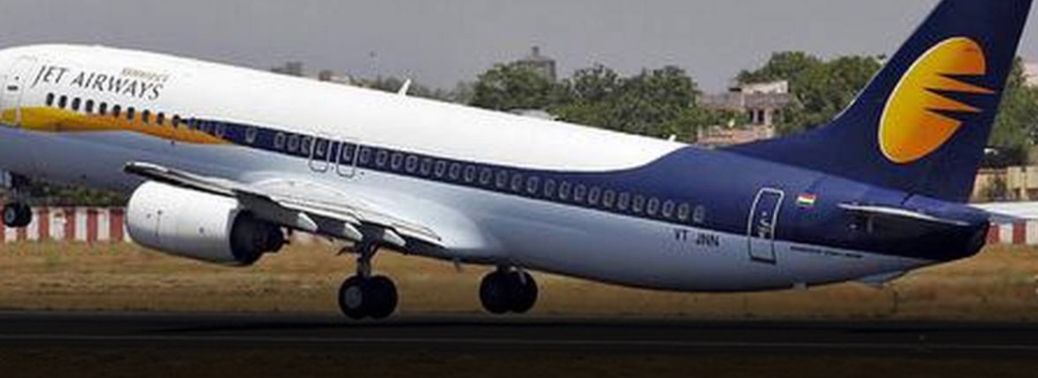
- A public disclosure norm requiring all general insurers, health insurers, specialised insurers and reinsurers, including branches of foreign reinsurers, to share information at specified intervals about their financials and performance, is on the cards.
- The Insurance Regulatory and Development Authority of India (IRDAI) issued an exposure draft detailing the proposed norms, and proposed the implementation from 2019-20.
The Check and Balance:
- The norms require the insurers to share information about revenue, profit and loss account and balance sheet, as well as provide segmental reporting and schedules to accounts.
- Stating that one of the objectives of the norms was to ensure safety of policyholders, IRDAI said the International Association of Insurance Supervisors had recognised that the insurers had an equal, if not, greater responsibility towards the policyholders than their duty towards investors.
History of Insurance
- The technique of pooling of resources to be re-distributed in times of calamities and emergencies like fire, floods, famine and epidemics is not new in India.
- This concept of insurance finds mention in the writings of Manu’s Manusmiriti, Yagnavalkya’s Dharmasastra and Kautilya’s Arthasastra.
- Insurance records in the form of Marine trade loans and carrier’s contracts exist datingancient times.
- Over time, the concept of Insurance evolved in India drawing heavily from other countries, particularly England.
IRDA:
- IRDA is an apex statutory body that regulates and develops insurance industry in India. It was constituted as per provisions of Insurance Regulatory and Development Authority Act, 1999. Its headquarter is in Hyderabad.
Functions of IRDA:
- Protect the rights of insurance policy holders.
- Provide registration certification to life insurance companies
- Renew, modify, cancel or suspend this registration certificate as and when appropriate; promote efficiency in conduct of insurance business
- Promote and regulate professional organisations connected with insurance and reinsurance business; regulate investment of funds by insurance companies
- Adjudication of disputes between insurers and intermediaries or insurance intermediaries.
Lesser clicks, a boon for bricks
25, Mar 2019
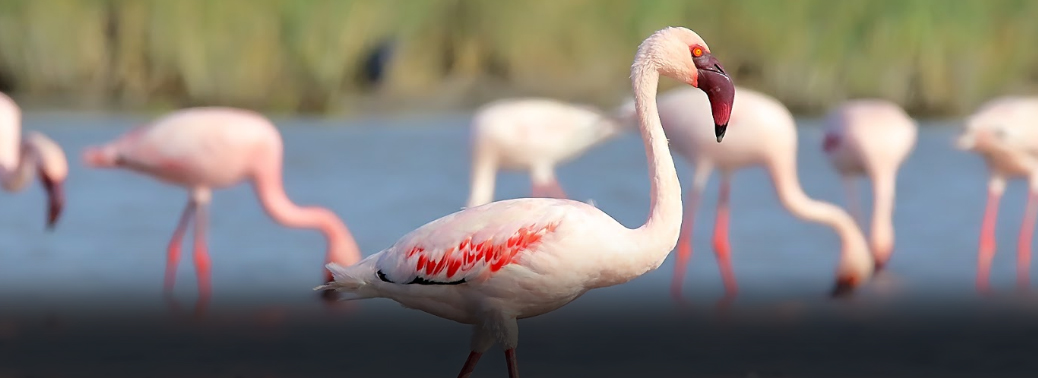
The Department of Industrial Policy & Promotion’s recent clarification on the foreign direct investment (FDI) policy for e-retail has an unexpected beneficiary — brick and mortar (B&M) retail.
The more specific and stringent FDI guidelines require large e-retailers to make changes in their business models in a short timeframe.
Department of Industrial Policy & Promotion (DIPP)
The Department of Industrial Policy & Promotion (DIPP) was formed in 1995 under the Ministry of Commerce & Industry. In 2000, the Industrial Development department was merged with it. The DIPP is responsible for formulating and implementing growth measures for the industrial sector in line with socio-economic objectives and national priorities. DIPP is basically mandated with the overall industrial policy formulation and execution, whereas the individual ministries take care of the specific industries’ production, distribution, development and planning aspects.
In 2000, the department was reconstituted with the merger of the Industrial Development department.
DIPP Functions
- Formulation and implementation of industrial policy and strategies for industrial development in conformity with the development needs and national objectives;
- Monitoring the industrial growth, in general, and performance of industries specifically assigned to it, in particular, including advice on all industrial and technical matters;
- Formulation of Foreign Direct Investment (FDI) Policy and promotion, approval and facilitation of FDI;
- Encouragement to foreign technology collaborations at enterprise level and formulating policy parameters for the same;
- Formulation of policies relating to Intellectual Property Rights in the fields of Patents, Trademarks, Industrial Designs and Geographical Indications of Goods and administration of regulations, rules made there under;
- Administration of Industries (Development & Regulation) Act, 1951
- Promoting industrial development of industrially backward areas and the North Eastern Region including International Co-operation for industrial partnerships and
- Promotion of productivity, quality and technical cooperation.
Foreign Direct Investment:
FDI or Foreign Direct Investment is basically a controlling stake (ownership) in a commercial enterprise located in a country by an entity based out of another country.
This is different from portfolio foreign investment with respect to the element of ‘control’. The latter kind of investment is only an unassertive investment in the securities of a foreign nation like bonds and stocks.
FDI includes mergers and acquisitions, construction of new facilities, intra-company loans and reinvesting profits from foreign operations.
There are two routes by which India gets FDI
- Automatic route:By this route FDI is allowed without prior approval by Government or Reserve Bank of India.
- Government route:Prior approval by government is needed via this route.
The application needs to be made through Foreign Investment Facilitation Portal, which will facilitate single window clearance of FDI application under Approval Route.
Foreign Investment Promotion Board (FIPB) which was the responsible agency to oversee this route was abolished on May 24, 2017, the work relating to processing of applications for FDI and approval of the Government thereon under the extant FDI Policy and FEMA, shall now be handled by the concerned Ministries/Departments in consultation with the Department of Industrial Policy & Promotion(DIPP), Ministry of Commerce, which will also issue the Standard Operating Procedure (SOP) for processing of applications and decision of the Government under the extant FDI policy
GST a poll issue in MSME hubs
25, Mar 2019
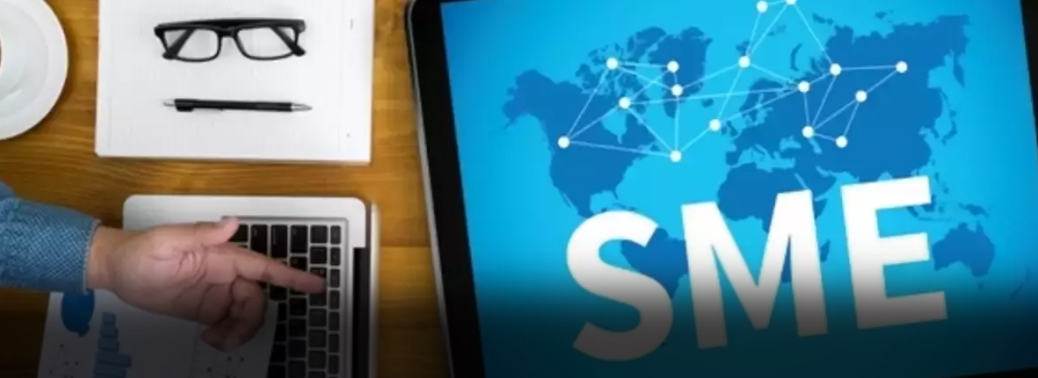
The adverse impact of the rollout of the Goods and Services Tax (GST) regime in July 2017 on the micro, small and medium enterprises (MSMEs) has become a key issue in the election season.
The 18% GST on job-working engineering units had pushed several micro and small industries out of business. The units need to pay the tax every month. But they get payments from larger units for the job work after three or four months.
GST
- The Goods and Services Tax bill, touted to be India’s biggest tax reform, will simplify the current system of taxation. The bill will convert the country into a unified market by replacing all indirect taxes with one tax.
- Brining all tax under single umbrella, Various Taxes like Excise Duty, Value Added Tax (VAT), Central Sales Tax, Luxury Test and Entry Tax, etc. will all be included under a single roof by GST.
- The very important Feature of GST bill is that instead of collection of Taxes at every step, it will be collected in one step. Goods and Services will be treated equally and will be taxed similarly.
Benefits of GST
- Subsume all indirect taxes at the centre and the state level.
- One-Country-One-Tax.
- Reduce the cascading effect of taxes on taxes.
- Increase productivity and transparency, increase tax-GDP ratio.
- Reduce/Eliminate tax evasion and corruption.
Status of MSMEs?
- Unorganised MSMEs have grown faster than organised peers because of lower cost structures stemming from tax avoidance, and not having to pay social security benefits to employees and excise duty (if turnover is less than Rs 1.5 crore).
- GST is expected to provide a boost to this segment because of lower tax incidence.
- Last fiscal, MSMEs were expected to record on-year top line growth of 14 to 16%.
- The impact of demonetisation has been severe in the second half and they would have closed the year with an increase of just 6 to 8%.
- As the effects of demonetisation fade, growth will pick up in the current fiscal and “Make in India” is promising in leading this sector.
- Though growth is expected to be strong this fiscal, cheaper imports, especially from China, remain a challenge.
Impacts of GST on MSME?
- Organised players with the ability to hold their price-lines, or pass on any increase in cost to customers, will be able to maintain or improve profit margins.
- Organised players will benefit and record moderate growth given the thrust on digitisation and lower tax rates under GST.
- Unorganised players catering mostly to the non-OEM (Original equipment Manufacturer) replacement market will be forced to move into the organised domain.
- GST will have a marginally negative impact because of higher tax rates expected.
- A unified market would create more competition in an already crowded and price-sensitive arena with a large number of unorganised players.
Protect ocean ecosystem, tap blue economy
25, Mar 2019

India should fully tap the enormous potential of the blue economy to achieve higher growth and initiate appropriate programmes for sustainable harnessing of ocean reserves.
Precautionary measures
However, every effort must be made to prevent further degradation of the ocean and its ecosystem. Precautionary measures were necessary because of global warming, marine pollution and resource degradation.
Blue economy
- Blue Economy began as a project to find 100 of the best nature-inspired technologies that could affect the economies of the world
- While sustainably providingbasic human needs – potable water, food, jobs, and habitable shelter
- This is envisaged as theintegration of Ocean Economy development with the principles of social inclusion, environmental sustainability and innovative, dynamic business models
- It is creation of environment-friendly infrastructurein ocean, because larger cargo consignments can move directly from the mothership to the hinterland through inland waterways, obviating the need for trucks or railways
What makes Indian water attractive? How is it geographically different?
- Vast coastline of almost7,500 kilometres, with no immediate coastal neighbours except for some stretches around the southern tip
- This isnot possible, for instance, in the Persian Gulf region because of the proximity to trade routes and contiguous countries
- In some sense, India has the advantageof a latecomer, helped by natural geography
- For an offshore transloading zone,the availability of calm waters during the monsoons is a problem
- But this can be overcome by conducting such operations closer to the coast and seasonally, in calmer waters
Developments initiated by India?
- An offshore infrastructure projectwas successfully launched by the ministry of shipping, for transporting imported coal to the thermal power station at Farakka in West Bengal
- Such transshipment, out on the high seas yet within India’s economic zone at the Sandheads in the Bay of Bengal, worked out to be financially viable and environmentally friendlier, compared to traditional handling of cargo at ports
- As ship sizes become bigger, transshipment/ lighterage operations on the high seas are becoming more viable

Potential efficiencies from blue economy infrastructure
- Portscan multiply operations because each cargo shipment is of small parcel size, with no extra capital expenditure for dredging or for large berths and associated equipment
- As larger surpluses are generated, some parts can be utilized for better and more environment-friendly “smart ports”Less physical congestion unclogs bottlenecks at ports
- Faster clearancesmean less waiting time and savings on demurrage, so a shorter waiting time for ships also helps the environment by reducing fuel burn
- As transloadingtakes place on the high seas, it creates an opportunity to spread the cargo across more ports
- It makes ample sense to create a well-distributed networkfor handling bulk cargo along the entire coastline
- If we introduce “smartness”to transloading zones, we can add value and reduce transaction costs
How does maritime diplomacy set rules in Indian ocean?
- Maritime diplomacy had its heyday back in the 1980s,with the sensational discovery of manganese nodules and cobalt crusts on the ocean floor
- The euphoria over marine mining led to the establishment of the International Seabed Authority<An intergovernmental body based in Kingston, Jamaica, was established to organize, regulate and control all mineral-related activities in the international seabed area>
- The UNCLOS,the “constitution of the seas”, which came into force in 1994, became the basis for the legal rights for mining in the open sea
- The interest in seabed mining flagged because of escalating costs, but it’s being revived on account of the demand for minerals and metals in industrial development, particularly in China, Japan and India
Why are regional organisations considered as most active players?
- The importance of regional organisations has increased in the context of the blue economy as PM Modi spoke to the SAARC leaders
- In September 2015, the Indian Ocean Rim Association (IORA) hosted the first Ministerial Blue Economy Conference and identified priorities
- Goal 14 of the UN’s Sustainable Development Goals (SDGs)— “Conserve and sustainably use the oceans, seas and marine resources for sustainable development”
- This makes detailed references to the reduction of marine pollution, conservation of coastaland marine areas and regulated fish harvest
Why is blue economy significant for India?
- The new focus on the Asia-Pacific highlights the security and economic dimensions
- The US rebalancing of forces and counter-measures by China have created a new cold war
- New partnerships are in the making in the Asia-Pacific, seeking Indian participation by competing powers
- The blue waters of the Indian Ocean have become a new theatre of tension
What does Delhi needs to do to transform its efforts into action?
- India can profitably integrateits ongoing programmes like Make in India, smart cities, skill development and self-reliance in defence
- Delhi’s forthcoming chairmanshipof the BRICS will offer a splendid opportunity to highlight the cooperation needed for the blue economy
- The imperatives of cooperation and the need for adept diplomacyare evident
- Prime Minister endorsed the blue economy during his visit to Seychelles, Mauritius and Sri Lanka
- Diplomatsaspiring to a “blue diplomacy” should begin to grasp the immense possibilities of the blue economy
- It will be diplomats in coastal and island countries and with the UN, IORA and SAARC, who will have to operationalise it
Centre must not look upon the Reserve Bank as a cash cow: ex-RBI board member
24, Mar 2019

- The central government being fiscally dependent on the Reserve Bank of India (RBI) is undesirable,
- The ₹68,000 crore that the RBI has paid to the government in the form of dividend or interim dividend since July 2018, forms 92% of the Centre’s entire income from dividends from all public sector financial institutions.
- It means that the Centre looks RBI as a cash cow and start questioning every rupee that the central bank spends.
Fiscal Deficit
- The difference between total revenue and total expenditure of the government is termed as fiscal deficit. It is an indication of the total borrowings needed by the government.
- A deficit is usually financed through borrowing from either the central bank of the country or raising money from capital markets by issuing different instruments like treasury bills and bonds.
Reserve Bank of India:
- Reserve Bank of India is the central banking institution, which regulates the monetary policy of the Indian rupee.
- Under the Reserve Bank of India Act, 1934, RBI was established on 1st April 1935.
- RBI is not a Commercial Bank.
- The Central Office of RBI was primarily established in Calcutta and then permanently moved to Mumbai in 1937.
- RBI is an institution of national importance and the pillar of surging Indian economy.
- It is a member of IMF.
CONCEPT OF RBI
- The concept of Reserve Bank of India was conceptually based on the strategies formulated by Dr. Ambedkar in his book named “The Problem of the Rupee – Its origin and its solution”.
- This central banking institution was established based on the suggestions of “Royal Commission on Indian Currency & Finance” in 1926. This commission was also known as Hilton Young Commission.
- In 1949 the Reserve Bank of India was nationalized and is a member bank of the Asian Clearing Union.
- RBI regulates the credit and currency system in India.
MAIN FUNCTIONS OF RBI
- Monetary Authority
- Regulator and administrator of the financial system
- Managing Foreign Exchange
- Issuer of currency
- Developmental role
COMPOSITION OF RBI
- Reserve Bank of India is controlled by a central board of directors. The directors are appointed for a 4-year term by the Government of India in keeping with the Reserve Bank of India Act.
- The Central Board consists of:
- Governor
- 4 Deputy Governors
- 2 Finance Ministry representatives
- 4 directors to represent local boards headquartered at Mumbai, Kolkata, Chennai and New Delhi
- The executive head of RBI is Governor.
- The Governor is accompanied by 4 deputy governors.
- The First Governor of RBI was Sir Osborne Smith and the First Indian Governor of RBI was CD Deshmukh.
- The First women deputy Governor of RBI was KJ Udeshi.
- The only Prime Minister who was the Governor of RBI was Manmohan Singh.
Rupee-dollar swap could boost foreign fund flows under voluntary retention route
22, Mar 2019
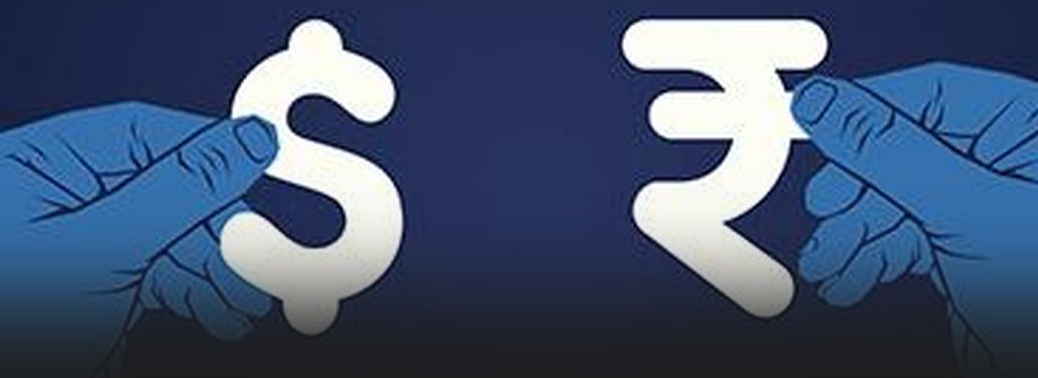
- The RBI’s decision to infuse rupee liquidity through long term foreign exchange swap, a first of its kind in liquidity management policy, is likely to boost investments by foreign portfolio investors under the voluntary retention route (VRR).
- The central bank will conduct dollar-rupee buy/sell swap action of $5 billion for a three-year tenor. Such a swap route has been explored by various emerging market economies as an effective tool to manage liquidity.
- Apart from liquidity infusion, the move will boost the country’s foreign exchange reserves and is likely to support the exchange rate.
Background:
- Through this step it would buy as much as $5 billion from the banks in a swap deal that could inject nearly 35,000 crores into the system. Banks would be required to park dollar funds with RBI with a deal to buy it back from the RBI after three years.
- The auction for this first of its kind US dollar buy/sell swap auction will take place on March 26. The auction cutoff would be based on the premium amount in paisa terms and the auction would be a multiple price-based auction.
- This is the first time the central bank is using a foreign exchange auction to augment banking liquidity after generally using bond purchases for this fiscal.
- RBI also has raised the trade credit limit under the automatic route to $150 million for oil/gas refining and marketing, airline and shipping firms. For others, the limit is set at $50 million or equivalent per import transaction.
Significance:
- The move is seen to lower the dependence on open market operations which have been a significant amount of the overall borrowing. “Higher OMOs can distort the rates curve,”
- The move would boost RBI’s foreign exchange reserves which were at $401.7 billion for the week ended March 1.
- The revised framework has reduced the al linclusive cost (all in cost) for overseas loans to benchmark rate plus 250 basis points from the earlier 350 bps.
Open Market Operation, Foreign exchange swaps (Forex)
- Open Market Operation (OMO) is a transaction on the open financial market, involving fiscal instruments such as governments` securities, or commercial papers, commenced by a central banking authority, with the purpose of regulating the money supply and credit conditions.
- OMO is a direct instrument of monetary policy, because the instrument influences the money supply directly. Forex swaps and other types of foreign exchange operations are also open market operations.
- In a foreign exchange swap, two parties exchange specific amounts of two different currencies and repay the amount of the exchange at a future date, according to a predetermined rule reflecting both interest payments and amortization of the principle.
Angel tax: CBDT, DPIIT trade blame for delay in resolving issue
21, Mar 2019
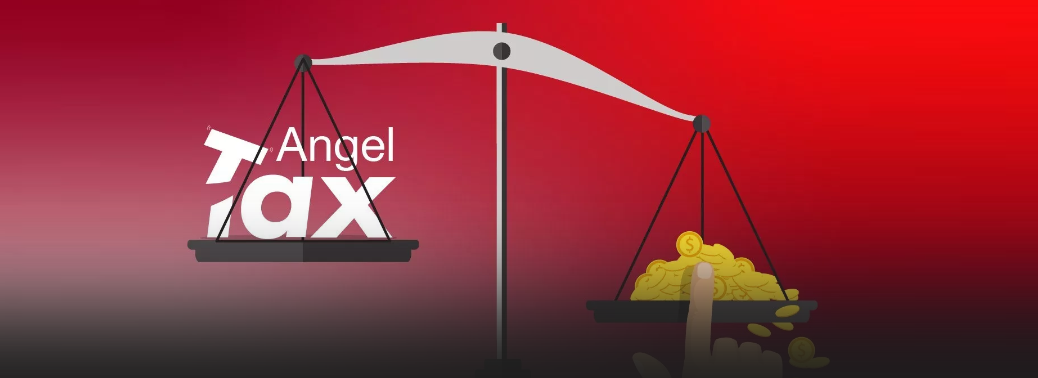
Tussle between the Central Board of Direct Taxes and the Department for Promotion of Industry and Internal Trade over the infrastructural roadblocks to finding a solution to the angel tax issue, both bodies have passed the buck to the other in order to resolve the problem.
What is Angel Tax?
- Angel Tax is a 30% tax that is levied on the funding received by startups from an external investor. However, this 30% tax is levied when startups receive angel funding at a valuation higher than its ‘fair market value’. It
- is counted as income to the company and is taxed.
- The tax, under section 56(2) (viib), was introduced by in 2012 to fight money laundering. The stated rationale was that bribes and commissions could be disguised as angel investments to escape taxes. But given the possibility of this section being used to harass genuine startups, it was rarely invoked.
Why is Angel tax problematic?
- There is no definitive or objective way to measure the ‘fair market value’ of a startup. Investors pay a premium for the idea and the business potential at the angel funding stage. However, tax officials seem to be assessing the value of the startups based on their net asset value at one point. Several startups say that they find it difficult to justify the higher valuation to tax officials.
- In a notification dated May 24, 2018, the Central Board of Direct Taxes (CBDT) had exempted angel investors from the Angel Tax clause subject to fulfilment of certain terms and conditions, as specified by the Department of Industrial Policy and Promotion (DIPP) now renamed as the Department for Promotion of Industry and Internal Trade. However, despite the exemption notification, there are a host of challenges that startups are still faced with, in order to get this exemption.
Proposed reforms:
- Earlier, start-ups whose aggregate amount of paid-up share capital and share premium after the proposed issue of share does not exceed ₹10 crore are eligible for exemption from the tax. The government is planning to raise this limit to ₹25 crore.
- It is also planning to amend the definition of a start-up to include companies that have been in operation for up to 10 years rather than the previous limit of seven years.
Integrate TB services with primary health system: Lancet
21, Mar 2019

Of the 10 million new tuberculosis (TB) cases reported globally in 2017 by the World Health Organisation, 2.74 million were from India, showing a marginal reduction from 2.79 million in 2016. Despite TB incidence in the country being 204 cases per 1,00,000 in 2017, the government has set a highly ambitious target of “eliminating TB by 2025”, five years ahead of the Sustainable Development Goals (SDGs) target.
The Lacent Data:
- According to The Lancet Global Health article based on modelling for three high-burden countries, including India, compared with 2015 data, 57% reduction in incidence and 72% reduction in mortality will been seen only by 2035.
- Strengthening the care cascade could reduce cumulative TB incidence by 38% in the case of India, it notes. India has to adopt measures to prevent TB on a population level to eliminate the disease in the coming decades.
India and TB:
- TB is second only to HIV/AIDS as the greatest infectious killer disease worldwide
- India has the highest TB burden in the world, accounting for almost 25 per cent of global TB cases.
- According to the Global TB Report 2017 released by World Health Organisation (WHO), India has topped list of seven countries, accounting for 64% of the over 10 million new tuberculosis (TB) cases worldwide in
- year 2016.
- India’s domestic budget for fighting tuberculosis showed a dramatic jump from about ₹700 crore in 2015 to ₹2,500 crore last year.
- According to World Health Statistics 2018 released by World Health Organisation (WHO), India saw estimated 211 cases of tuberculosis (TB) per 1,00,000 people in 2016.
- India has pledged to eradicate tuberculosis by 2025, five years ahead of global target set by WHO.
Basics about TB:
Tuberculosis is an infectious, airborne disease caused by the bacterium Mycobacterium tuberculosis. It mainly affects the lungs. It can be transmitted from person to person through the air when people with TB cough, sneeze, laugh or speak, spit, propelling the germs into the atmosphere
Why TB is an issue?
- With proper diagnosis and treatment, TB can be cured.
- However, too many people with TB don’t seek care for early symptoms and get properly diagnosed. Of those in whom the disease is detected, many do not complete their treatment. Despite global efforts to combat TB, which saved an estimated 53 million lives since 2000 and reduced TB mortality rate by 37%, the disease is still top infectious killer in 2016. The disease also has been reported to be main cause of deaths related to antimicrobial resistance and the leading killer of people with HIV.
- The biggest challenge was underreporting and underdiagnosis of TB cases, especially in countries with weak health systems and large unregulated private sectors.
‘90-90-90 target’ by 2035:
- The government has committed to achieve a ‘90-90-90 target’ by 2035 (90% reductions in incidence, mortality and catastrophic health expenditures due to TB).
- This is premised on improved diagnostics, shorter treatment courses, a better vaccine and comprehensive preventive strategies.
Moscow Declaration:
- The declaration calls for eliminating additional deaths from HIV co-infection by 2020 and achieving synergy in coordinated action against Tuberculosis
- and non-communicable diseases (NCDs). India is among signatories to the declaration. Moscow declaration emphasis need for fixing multi sectoral responsibility towards ending TB by 2035, the global target.
Steps Taken by Govt.:
- Indo-US partnership to free India of TB (see Indo-US relation).
- India has signed WTOs call to end TB by 2030.
- USAID-India End TB Alliance
Finland is the happiest nation; India slips 7 spots, ranks 140th
21, Mar 2019
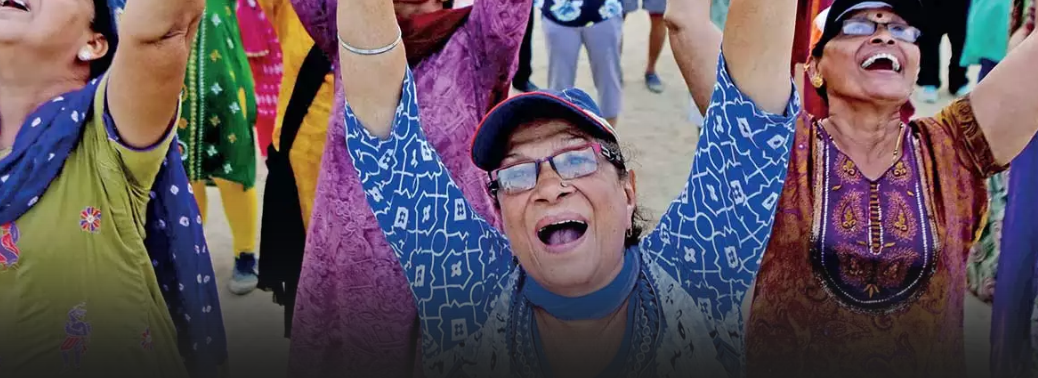
The report was released by the Sustainable Development Solutions Network for the United Nations on March 20 which has was declared as World Happiness Day by the UN General Assembly in 2012.
Parameters
The report ranks countries on six key variables that support well-being:
- Income
- Freedom
- Trust
- Healthy life expectancy
- Social support and
- Generosity.
Indian Scenario
- India’s loses 7 spots in global list of happiest nations, ranks 140th
- Indians are not as happy in 2019 as they were in 2018 and the country figures at 140th place, seven spots down from last year, on this year’s UN World Happiness Report released Wednesday which is topped by Finland for the second year in a row.
- According to the report, the overall world happiness has fallen over the past few years, which has mostly been fuelled by a sustained drop in India, which came in 140th place this year compared with 133rd place in 2018.
- Pakistan is ranked 67th, Bangladesh 125th and China is place at 93rd, according to the report.
Overall Scenario:
- The UN’s seventh annual World Happiness Report, which ranks the world’s 156 countries on how happy their citizens perceive themselves to be”, also noted that there has been an increase in negative emotions, including worry, sadness and anger.
- Finland has been ranked as the happiest country in the world for the second year in succession. The Nordic nation is followed by Denmark, Norway, Iceland and The Netherlands.
- People in war-torn South Sudan are the most unhappy with their lives, followed by Central African Republic (155), Afghanistan (154), Tanzania (153) and Rwanda (152).
- The happiness study ranks the countries of the world on the basis of questions from the Gallup World Poll. The results are then correlated with other factors, including GDP and social security. The United States ranks at 19th place for happiness, despite being one of the richest countries in the world.
Borrowers cautious after IBC kicked in
20, Mar 2019
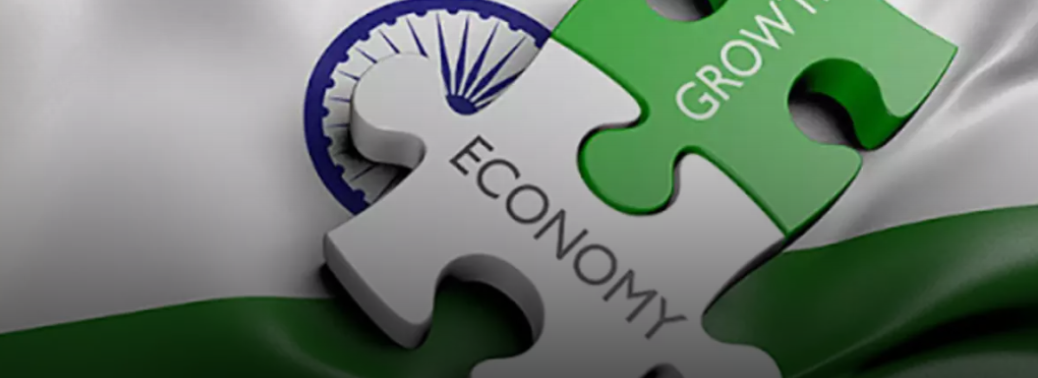
With the advent of Insolvency and Bankruptcy code (IBC), borrowers are cautious about taking more money from banks.
What is IBC?
- Insolvency and Bankruptcy Code, 2016 is considered as one of the biggest insolvency reforms in the economic history of India.
- This was enacted for reorganization and insolvency resolution of corporate persons, partnership firms and individuals in a time bound manner for maximization of the value of assets of such persons.
Background:
- The era before IBC had various scattered laws relating to insolvency and bankruptcy which caused inadequate and ineffective results with undue delays. For example,
- Securitization and Reconstruction of Financial Assets and Enforcement of Security Interest Act SARFAESI –for security enforcement.
- The Recovery of Debts Due to Banks and Financial Institutions Act, 1993 (RDDBFI) for debt recovery by banks and financial institutions.
- Companies Act for liquidation and winding up of the company.
- Ineffective implementation, conflict in one of these laws and the time-consuming procedure in the aforementioned laws, made the Bankruptcy Law Reform Committee draft and introduce Insolvency and Bankruptcy Law bill.
Objectives of IBC
- Consolidate and amend all existing insolvency laws in India.
- To simplify and expedite the Insolvency and Bankruptcy Proceedings in India.
- To protect the interest of creditors including stakeholders in a company.
- To revive the company in a time-bound manner.
- To promote entrepreneurship.
- To get the necessary relief to the creditors and consequently increase the credit supply in the economy.
- To work out a new and timely recovery procedure to be adopted by the banks, financial institutions or individuals.
- To set up an Insolvency and Bankruptcy Board of India.
- Maximization of the value of assets of corporate persons.
The Insolvency and Bankruptcy Code ecosystem
- National Company Law Tribunal (NCLT) – The adjudicating authority (AA), has jurisdiction over companies, other limited liability entities.
- Debt Recovery Tribunal (DRT) has jurisdiction over individuals and partnership firms other than Limited Liability Partnerships.
- The Insolvency and Bankruptcy Board of India (IBBI) – apex body for promoting transparency & governance in the administration of the IBC; will be involved in setting up the infrastructure and accrediting IPs (Insolvency Professionals (IPs) & IUs (Information Utilities).
- It has 10 members from Ministry of Finance, Law, and RBI.
- Information Utilities (IUs) – a centralized repository of financial and credit information of borrowers; would accept, store, authenticate and provide access to financial data provided by creditors.
- IPs- persons enrolled with IPA (Insolvency professional agency (IPA) and regulated by Board and IPA will conduct resolution process; it will act as Liquidator/ bankruptcy trustee; they are appointed by creditors and override the powers of the board of directors.
- IPs have the power to furnish performance bonds equal to assets of the company under insolvency resolutions
- Adjudicating authority (AA) – would be the NCLT for corporate insolvency; to entertain or dispose of any insolvency application, approve/ reject resolution plans, decide in respect of claims or matters of law/ facts thereof.
Key aspects of the Insolvency and Bankruptcy Code:
- IBC proposes a paradigm shift from the existing ‘Debtor in possession’ to a ‘Creditor in control’ regime.
- IBC aims at consolidating all existing insolvency related laws as well as amending multiple legislation including the Companies Act.
- The code aims to resolve insolvencies in a strict time-bound manner – the evaluation and viability determination must be completed within 180 days.
- Moratorium period of 180 days (extendable up to 270 days) for the Company. For startups and small companies the resolution time period is 90 days which can be extended by 45 days.
- Introduce a qualified insolvency professional (IP) as intermediaries to oversee the Process
- Establishment of Insolvency and Bankruptcy board as an independent body for the administration and governance of Insolvency & bankruptcy Law; and Information Utilities as a depository of financial information.
The success of IBC:
Burgeoning NPAs
21 PSU banks had combined gross NPAs of Rs 7.3 lakh crore at the end of September 2017 quarter. This was a growth of 27% as compared to 2016 quarter.
How has IBC helped?
- Due to the institution of IBC, we have seen that many business entities are paying up front before being declared insolvent. The success of the act lies in the fact that many cases have been resolved even before it was referred to NCLT.
- 4452 cases were dismissed at the pre-admission stage. Hence, it shows the effectiveness of IBC.
- Presently, there are 1332 cases before NCLT.
- Realization by creditors around Rs 80,000cr in resolution cases.
- Banks recovered Rs 5.28 lakh crore in 2017-18, compared to just Rs 38500 cr in 2016-17.
- The maximum amount recovered was Rs 4, 92,500 cr from 21 companies.
- 12 big cases are likely to be resolved this year, and the realization in these cases is expected to be around Rs 70000 Cr.
Amendments in IBC
- The President has assented to the promulgation of Insolvency and Bankruptcy Code (Amendment) Ordinance, 2018 on June 6, 2018. The two key amendments would help both the real estate sector and the MSMEs
- Homebuyers Recognized as Financial Creditors- giving them due to representation in the Committee of Creditors (CoC). Thus, now home buyers will be an integral part of the decision-making process.Special Provisions for MSME- now, the promoters of MSMEs are allowed to bid for their companies as long as they are not willful defaulters and don’t attract any other related disqualification. This has corrected the anomaly in the section 29A of the existing act which had barred promoters of defaulting assets from bidding for their assets.
Economists want further interest rate cut
20, Mar 2019
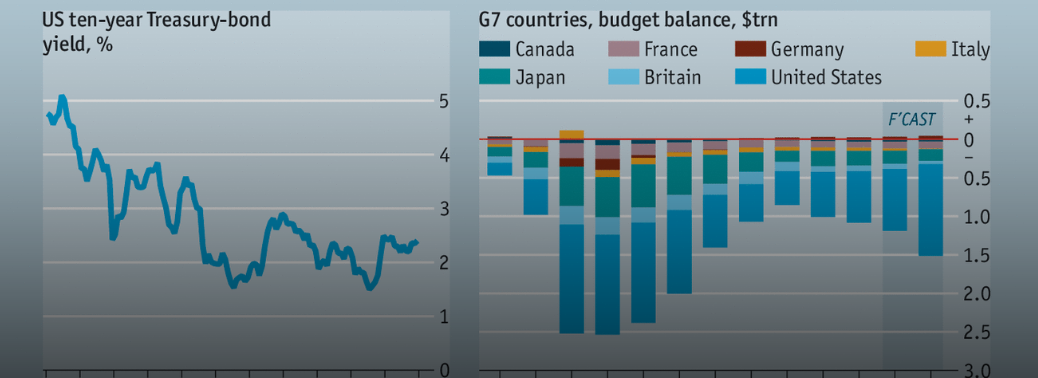
Economists met Reserve Bank of India Governor and cited concerns over economic growth and suggested further reduction of the interest rate to boost economic activity.
Monetary policy:
- Monetary policy refers to the policy of the central bank – ie Reserve Bank of India – in matters of interest rates, money supply and availability of credit.
- It is through the monetary policy, RBI controls inflation in the country.
Goal of Monetary Policy of India3
- Maintain price stability.
- The primary objective of monetary policy is to maintain price stability while keeping in mind the objective of growth. Price stability is a necessary precondition for sustainable growth.
- To maintain price stability, inflation needs to be controlled. The government of India sets an inflation target for every five years. RBI has an important role in the consultation process regarding inflation targeting. The current inflation targeting framework in India is flexible in nature.
Monetary Policy Committee
- It is the committee which will decide India’s Monetary Policy.
- The formation of the monetary policy committee was mooted by the Urjit Patel committee.
- The committee suggested that monetary policy be rule-based and not discretion-based. The final decision on monetary policy should not lie with the RBI governor alone but on a group of people.
- Targeting inflation is to be the core objective of the central bank, and it will be answerable to law-makers if it failed to achieve the target.
Composition of MPC
MPC will be a 6-member committee:4
- 3 members will be from RBI. These 3 members would include the governor who will also be the ex-officio chairperson of the committee.
- 3 members will be appointed by the central govt. These members should be experts in the field of finance or banking or economics or monetary policy. They will have a tenure of 4 years and will not be eligible for reappointment.
- The members appointed by the govt. will be appointed based on the recommendations by the search-cum-selection committee which will be headed by the cabinet secretary.
- Decisions will be taken by majority vote with each member having a vote
- The governor will not enjoy a veto power to overrule the other panel members, but will have a casting vote in case of a tie.
- No government official will be nominated to the MPC
- MPC will meet four times in 1 year and will announce its decisions publicly after each meeting. MPC replaces previous arrangement where RBI Governor along with a Technical Advisory Committee (TAC) taking decisions on monetary policy including setting interest rates. In the previous arrangement TAC was only having advisory functions and the RBI Governor enjoyed veto power over the committee in setting interest rates.
- 3 members will be from RBI. These 3 members would include the governor who will also be the ex-officio chairperson of the committee.
- 3 members will be appointed by the central govt. These members should be experts in the field of finance or banking or economics or monetary policy. They will have a tenure of 4 years and will not be eligible for reappointment.
- The members appointed by the govt. will be appointed based on the recommendations by the search-cum-selection committee which will be headed by the cabinet secretary.
- Decisions will be taken by majority vote with each member having a vote
- The governor will not enjoy a veto power to overrule the other panel members, but will have a casting vote in case of a tie.
- No government official will be nominated to the MPC
- MPC will meet four times in 1 year and will announce its decisions publicly after each meeting. MPC replaces previous arrangement where RBI Governor along with a Technical Advisory Committee (TAC) taking decisions on monetary policy including setting interest rates. In the previous arrangement TAC was only having advisory functions and the RBI Governor enjoyed veto power over the committee in setting interest rates.
Forex swap for liquidity has been received well, says RBI Governor
20, Mar 2019

The decision of the Reserve Bank of India (RBI) to inject rupee liquidity through long-term foreign exchange swap a first of its kind in liquidity management.
Currency Swap Agreements:
A Currency swap agreement is a foreign exchange agreement between two parties to exchange a given amount of one currency for another and, after a specified period of time, to give back the original amounts swapped.
How Currency Swap Agreement can benefit India?
- The currency swap facilities make it easier for India to pay for its imports. This aids in addressing the challenge of depreciation.
- Since the Currency swap agreement involves trading in local currencies. Countries pay for imports and exports through their own currencies rather than involving a third country currency. This does away with the charges involved in multiple currency exchanges.
- The currency swap makes it easier to improve
- liquidity conditions.
- Currency swap agreements help in saving for a rainy day when the economy is not looking in good shape.
- Currency swap agreements help in saving for a rainy day when the economy is not looking in good shape.
- The agreement aids in improving the confidence in the Indian market.
- Together with ensuring that the agreed amount of capital is available to India, it also brings down the cost of capital for Indian entities while accessing the foreign capital market.
Anti-profiteering body can act sans complaints
19, Mar 2019

Consumer complaints are not the only trigger for the National Anti-Profiteering Authority (NAA) to act but also to check a trader’s invoice for profiteering.
The NAA was set up under Section 171 of the Central GST Act, 2017 to check whether trade and industry were passing on rate reductions under the Goods and Services (GST) Tax.
National Anti-Profiteering Authority (NAA)
- NAA is an apex body with an overarching mandate under Goods and Services Tax (GST) regime so as to ensure the benefit of tax reaches consumers.
- The NAA is tasked with ensuring full benefits of reduction in tax on supply of goods or services flow to consumers.
C3omposition
NAA will be headed by senior officer of level of a Secretary to Union Government and shall have four technical members from Centre and/or States. The chairman and four members will be less than 62 years of age.
Powers and functions
- If NAA finds that company has not passed on benefits of tax reduction, it can direct entity to pass on benefits to consumers along with interest from the date of collection of the higher amount till date of return of such amount.
- If the beneficiary cannot be identified, NAA can ask company to transfer amount to the ‘Consumer Welfare Fund’, as provided under Section 57 of CGST Act.
- In extreme cases NAA can impose a penalty on defaulting business entity and even order cancellation of its registration under GST.
- NAA also has power to cancel registration of any entity or business if it fails to pass on benefit of lower taxes under GST regime to consumers, and empowers consumers to approach it in case of any complaint.
Green’ coffee may brew better farm incomes
18, Mar 2019
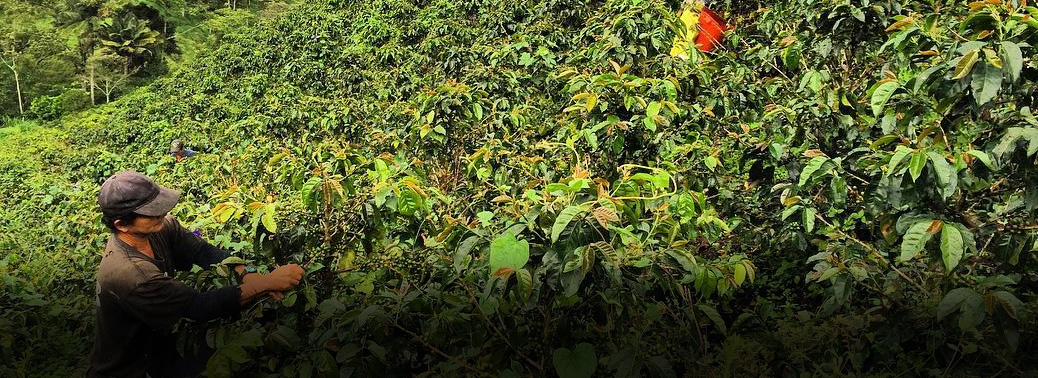
Giving fresh hope to coffee growers, the Kerala State Industries Department is gearing up to set up a carbon neutral farm project in Wayanad district of Kerala .
A carbon neutral village coffee park would be set up for which the State government had earmarked Rs 150 crore for first phase construction works.
The project envisages doubling the income of coffee farmers of Wayanad who are reeling under an agrarian crisis owing to the low price for produce such as coffee, pepper and arecanut.
Three-pronged strategy
First Phase:
A three-pronged strategy is envisaged, including the setting up the KINFRA coffee park with KIIFB (Kerala Infrastructure Investment Fund Board) funding
Second Phase:
Coffee plantations would be categorised taking into account aspects such as local agrarian climate. Scientific care would be ensured.
Based on this categorisation tag, the products would be taken to local procurement centres.
The value-added coffee powder would be marketed under the brand name of ‘Malabar Coffee.’
Recent GI Tag Status:
Wayanad in north Kerala grows about 50,000 to 60,000 tonnes of robusta coffee annually, making it a prominent region in the country cultivating this variety.
The Coffee Board had recived GI status for Wayanad coffee, along with Baba Budan Giri, Araku Valley, Coorg and Chikmagalur coffee recently.
SEBI contemplates reducing time to list rights issue shares
18, Mar 2019

After reducing the time to list shares on the stock exchanges post-closure of initial public offerings (IPOs), markets regulator SEBI is aiming to cut down the time for listing of rights issue shares.
Initial Public Offerings (IPO)
- Initial public offering (IPO) or stock market launch is a type of public offering where shares of stock in a company are sold to the general public, on a securities exchange, for the first time.
- Through this process, a private company transforms into a public company. Initial public offerings are used by companies to raise expansion capital, to possibly monetize the investments of early private investors, and to become publicly traded enterprises.
- A company selling shares is never required to repay the capital to its public investors. After the IPO, when shares trade freely in the open market, money passes between public investors.
- Although an IPO offers many advantages, there are also significant disadvantages, chief among these is the costs associated with the process and the requirement to disclose certain information that could prove helpful to competitors, or create difficulties with vendors.
- Details of the proposed offering are disclosed to potential purchasers in the form of a lengthy document known as a prospectus.
- Most companies undertake an IPO with the assistance of an investment banking firm acting in the capacity of an underwriter who provide several services, including help with correctly assessing the value of shares (share price), and establishing a public market for shares (initial sale).
SEBI:
- SEBI is the statutory regulator for the securities market in India.
- It was established in 1988 and given statutory powers through the SEBI Act, 1992.
- HQ: Mumbai.
- Purpose: Protect the interests of investors in securities, promote the development of securities market and to regulate the securities market.
- SEBI is responsive to needs of three groups, which constitute the market i.e.
- Issuers of securities,
- Investors and
- Market intermediaries.
- It has three functions:
- Quasi-legislative (drafts regulations in its legislative capacity),
- Quasi-judicial (passes rulings and orders in its judicial capacity) and
- Quasi-executive (conducts investigation and enforcement action in its executive function).
New hydro policy to help meet renewables target
18, Mar 2019
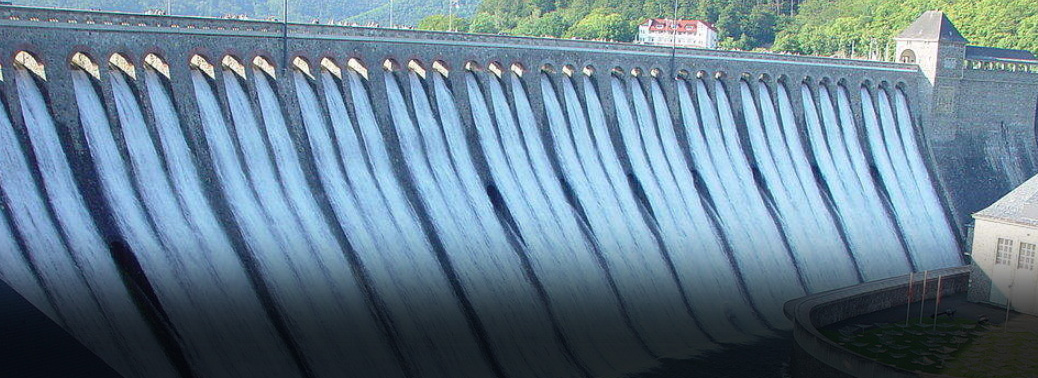
Government’s decision to re-classify large hydroelectric projects as renewable energy will certainly help the energy sector, the move will also go a long way in meeting the targets set by it for the sector.
Renewable Energy Scenario in India:
- Total installed capacity of wind power stood at 33 GW
- Solar was the second major segment with cumulative capacity of 17 GW.
- Bio-power occupied the third position with a total installed capacity of 4,551 MW
Targets set by Government:
- 40 GW rooftop solar by 2022
- 175 GW of renewable energy by 2022
- 100 GW od Solar Energy by 2022
Challenges with renewable energy:
- Weather depend: both solar and wind sources are weather dependent; many times weather does not cooperate such as overcast sky, storms etc.; ensuring steady power supplies in such cases is difficult.
- Grid harmony: keeping power from different renewable sources in harmony over the grid is also difficult; especially in context of intermittent power flows from such sources.
- Land acquisition: sources such as wind & solar both require large land area to ensure large scale generation; difficult to obtain in agrarian countries like India.
- Poor battery efficiency: Proposal to utilize batteries to meet peaks loads during evening & mornings is marred by poor battery efficiencies.
- High capital cost: High initial cost of investment & technology expertise in harnessing sources such as wind, tidal, geo-thermal etc. is unavailable with most of the countries.
What does Economic Survey say?
- Economic Survey of 2017 indicated that the social cost of renewables to be three times that of coal, at around Rs11 per kilowatt-hour
- One MW of solar plant requires 5 acres of land, whose cost is loaded on to the power cost.
- Secondly, Indian industry is already suffering the disadvantage of higher energy cost due to levies like the coal cess, that has gone up by 800% in the last few years; from Rs 50 per tonne of coal in 2010 to Rs 400 in 2016
- Thus, Solar and wind energy can never completely become the energy source for industries (in the near future) that need uninterrupted, reliable, steady and high wattage electricity.
India’s shrinking houses
16, Mar 2019

When it comes to housing, size matters for all kinds of reasons. The added floor space of larger homes definitely spells comfort, convenience and family scalability, every additional square foot either comes at a higher price or pushes available options further away from the central regions of a city.
Millennial buyers have already made it clear that they prefer affordability coupled with good location over larger homes in far-flung suburbs. Simultaneously, developers are intent on making their housing projects more pocket- friendly to reach a higher customer base.
As a result, the top seven Indian cities collectively saw average apartment sizes shrink by nearly 17% between 2014 and 2018. However, this has not been a uniform phenomenon.
Floor area ratio
(FAR) is the ratio of a building’s total >floor area (gross floor area) to the size of the piece of land upon which it is built. The terms can also refer to limits imposed on such a ratio through zoning.
As a formula FAR = (gross floor area) / (area of the plot)

Neolithic diet helped develop ‘f’ sound
16, Mar 2019

Changes to the human diet prompted by Neolithic advances in agriculture played a role in human jaw evolution that allowed people to pronounce the consonants ‘f’ and ‘v’. The study indicates that language is not merely a random product of history but was also linked to biological changes at the time.
The Neolithic era — from 6,000 B.C. to 2,100 B.C was when wheat and barley-based farming took root and animals such as goats, sheep and cows were domesticated. Language is not usually studied as a biological phenomenon and it does not normally figure
However, this is a bit strange actually, because like the communication system of other animals, language is simply part of our nature. Man, before the Neolithic era, used his teeth quickly to chew the products of his hunting and gathering.
While the upper incisors covered the lower ones in children, wear and tear led to an edge- to-edge bite in adults, prehistoric skulls show — positioning that made it difficult to make certain sounds.
If one were to put the upper and lower incisors or “front teeth” directly on top of each other and try to say “f” or “v”, one would find it very difficult, the researchers said. The sounds are called labiodental consonants, which require the combined action of the lower lip and the upper teeth.
Starting in the Neolithic era, hunter-gatherers learned techniques to process food. Dental wear-and-tear was curtailed thanks to the softer diet, and the upper incisors maintained their adolescent position: over the lower teeth, as in today’s humans.
The findings suggest that language is shaped not only by the contingencies of its history, but also by culturally induced changes in human biology.
Strong inflows help push rupee to a six-month high
16, Mar 2019

The rupee, which has been steadily appreciating in recent days, closed at 69.10 to a dollar, its highest level since August 10, 2018.
Strong inflow in both debt and equity segments helped the currency to hit a six-month high against the dollar. This is the fifth straight week the rupee has closed higher against the dollar.
FII inflows
FII inflows have crossed ₹30,000 crore in Feb-March’19 till date, resulting in a flood of inflows after 2018 drought. According to data from the National Securities Depository Ltd. (NSDL), FPIs have been net buyers in equities at nearly
₹18,000 crore in the current month, following net purchases of ₹17,220 crore in the previous month.
Rupee Depreciation:
At present, the value of India’s currency “rupee” is continuously falling and its value has declined by 12% between January – September 2018. Among the BRICS nations; after the Russian Ruble, the Indian rupee depreciated the most in this period. Now the exchange rate between the dollar and rupee is hovering around Rs.72.51= 1 dollar.
Devaluation Meaning: When the external value of the domestic currency depreciates while the internal value remains the same, such situation is known as the devaluation of the domestic currency.
The basic difference between the devaluation and depreciation is that, the devaluation is done by the government of the country deliberately while the depreciation take place because of market forces i.e. demand and supply.
At the time of independence; India adopted the Par Value System of International Monetary Fund (IMF). On the August 15, 1947; the exchange rate between the Indian rupee and US dollar was 1USD = 1 INR.
Depreciation of the Indian rupee against the dollar
- Increase in the price of the crude oil: As we all know that India produces just 20% crude oil of her requirement and rest is imported from the other countries like Iraq, Saudi Arabia, Iran and other gulf countries. Crude oil is the biggest contributor in the import bill of
- Beginning of trade war between the USA and China: The US President Donald Trump has initiated the trade war with China and European countries and India and these countries also retaliated in the same way. So due to this war the price of the imported commodities will go up which will further increase the outflow of dollar from the Indian
- Increasing Trade Deficit of India: A situation, in which the import bill of a country exceeds its export bill, is called trade
- Out flow of Foreign Currency: It is worth to mention that when the foreign investors find other attractive markets in the other parts of the world; they pull out their invested money by selling the equity shares. But they demands the most respected currency or easily accepted money i.e. dollar. So in such situation the demand of dollar increases which further increases its price.
Banking stocks push Sensex to above 38,000
16, Mar 2019

Strong global cues and foreign flows led to the benchmark equity indices register gains The rally, led by banking stocks, pushed the Sensex above the 38,000-mark for the first time since last September.
Sensex:
- The Sensex was launched by “Bombay Stock Exchange” (BSE) on January 1, 1986 is one of India’s major stock market indexes.
- It evaluates the fluctuations in stock prices of 30 companies
- These 30 companies are big companies in terms of market value, turnover, profit etc.
- If the Sensex is rising, then it shows that the stock price of most companies of BSE is increasing and if the Sensex decreases, then it show that the share price of most of BSE companies is decreasing.
- The base year of the Sensex is 1978-79 and the base index value was set at 100.
BSE
- Bombay stock exchange and the national stock exchange probably the two renowned stock exchanges in the country.
- BSE is among the eight biggest stock exchanges in the world regarding transaction volume.
- The exchange has a nationwide reach with a presence in the 417 cities and towns in India.
- The systems and process of the exchange are designed to safeguard market integrity and enhance transparency in operations.
Nifty
- The NIFTY 50 index is National Stock Exchange of India’s benchmark broad based stock market index for the Indian equity market.
- Full form of NIFTY is National Stock Exchange Fifty .
- It represents the weighted average of 50 Indian company stocks in 12 sectors and is one of the two main stock indices used in India, the other being the BSE Sensex..
- Nifty is owned and managed by India Index Services and Products (IISL), which is a wholly owned subsidiary of the NSE Strategic Investment Corporation Limited.
- IISL had a marketing and licensing agreement with Standard & Poor’s for co-branding equity indices until 2013.
- The Nifty 50 was launched 1st April 1996, and is one of the many stock indices of Nifty.
Exports rise 2.44%; trade deficit narrows
16, Mar 2019
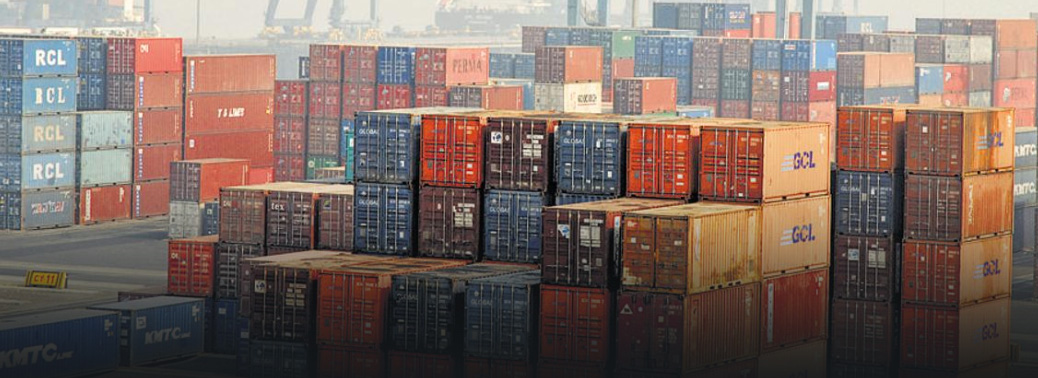
A marginal 2.44% increase in exports as well as lower imports of gold and petroleum products in February, significantly narrowed the country’s trade deficit to $9.6 billion – data released by the Commerce Ministry.
Gold import falls
While the import of gold fell by about 11% to $2.58 billion, as against $2.89 billion in the corresponding month last fiscal, inward shipments of petroleum products were down by nearly 8% to $9.37 billion.
Meanwhile, RBI said services exports in January 2019 were $17.75 billion, registering a negative growth of 1.02% over December 2018.
Current Account Deficit
- It means the value of imports of goods/services/investment incomes is greater than the value of Exports
- It is sometimes informally referred to as a trade deficit.
- The major contributor to India‘s Current Account Deficit (CAD) has been imports of Gold and Crude Oil
Impact of CAD
- Sustained period of CAD has led to currency depreciation, high rates of inflation which further effects the incoming foreign investment.
- Fall in gold imports and lower oil import bill in recent time led to shrinkage in the
- A current account surplus means an economy is exporting a greater value of goods and services than it is Importing
- There is no hard and fast rule about what will happen if a country has a current account surplus. It depends on the size of the current account and the reasons for the current account surplus
- In the case of India, slow growth in imports, reflecting the persisting weakness in the investment sentiment, is the prominent reason behind this.
- The current account was in surplus last in the January-March quarter in the year 2007
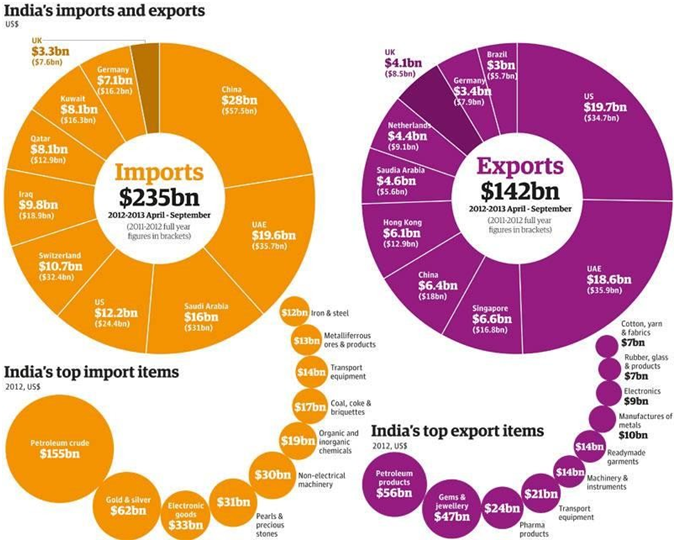
Indirect tax collection may fall short, says Garg
15, Mar 2019

The government is reasonably confident of meeting its direct tax collection target for the current financial year but the indirect tax collection may fall short.
The Rationale Behind:
- GST collections in February dropped to 97,247 crore in February from ₹1.02 lakh crore in the previous month.
- The government had lowered the GST collection target for current fiscal to ₹11.47 lakh crore in the revised estimates, from₹13.71 lakh crore budgeted initially.
- For the next fiscal 2019-20, the GST collection target had been budgeted at ₹13.71 lakh crore.
Classification of Taxes
What is a Tax?
- Taxes are generally an involuntary fee levied on individuals and corporations by the government in order to finance government activities. Taxes are essentially of quid pro quo in nature. It means a favour or advantage granted in return for something.
Direct Tax versus Indirect Tax
GST:
- Goods and Services Tax is a comprehensive indirect tax which is to be levied on the manufacture, sale and consumption of goods and services in India.
- GST eliminates the cascading effect of taxes because it is taxed at every point of business and the input credit is available in the value chain.
- France was the first country to introduce GST system in 1954.
- More than 140 countries have implemented the GST.
- The Genesis of GST occurred during the previous NDA Government under Atal Bihari Vajpayee Government when it set up the Asim Dasgupta committee to design a model for GST.
- The UPA Government took the matter further and announced in 2006 that this tax would be introduced from April 1, 2010. However, so far it was not introduced.
- All the GST bills including Constitution (101st Amendment) Act have been passed now and GST is set to come into force from July 1, 2017.
- GST would replace almost all vital indirect taxes and cess on Goods & services in the country.
Wholesale price inflation quickens to 2.93% in February
15, Mar 2019

- Wholesale price inflation in February snapped a three- month declining trend by rising to 2.93% on the back of firming food and fuel prices.
- Growth in the wholesale price index (WPI) accelerated in February from 2.76% in January, the lowest level it had touched since March 2018.
Articles in the Index:
- Within the index, the primary articles category saw inflation quickening to 4.84%in February from 3.54% inJanuary. The food articles category witnessed inflation quickening to 4.28% from 2.34% over the same period.
- The crude petroleum and natural gas segment also saw inflation quickening in February, to 5.87% from 3.87% in January. Overall, the fuel and power segment saw inflation moving up to 2.23% from 1.85% over the same period.
- The manufactured products sector was one of the few to see inflation easing in February to 2.25% from 2.61% in the previous month.
GDP deflator
- The GDP deflator, also called implicit price deflator, is a measure of inflation.
- It is the ratio of the value of goods and services an economy produces in a particular year at current prices to that of prices that prevailed during the base year.
- This ratio helps show the extent to which the increase in gross domestic product has happened on account of higher prices rather than increase in output.
- GDP price deflator measures the difference between real GDP and nominal GDP. Nominal GDP differs from real GDP as the later doesn’t include inflation, while the former does.
- As a result, nominal GDP will most often be higher than real GDP in an expanding economy.
- The formula to find the GDP price deflator:
- GDP price deflator = (nominal GDP ÷ real GDP) x 100
GDP deflator is a better measure of inflation than CPI / WPI
- Since the deflator covers the entire range of goods and services produced in the economy
—as against the limited commodity baskets for the wholesale or consumer price indices
—it is seen as a more comprehensive measure of inflation. - A consumer price index (CPI) measures changes over time in the general level of prices of goods and services that households acquire for the purpose of consumption.
- However, since CPI is based only a basket of select goods and is calculated on prices included in it, it does not capture inflation across the economy as a whole.
- The wholesale price index basket has no representation of the services sector and all the constituents are only goods whose prices are captured at the wholesale/producer level.
- Changes in consumption patterns or introduction of goods and services are automatically reflected in the GDP deflator.
- This allows the GDP deflator to absorb changes to an economy’s consumption or investment patterns. Often, the trends of the GDP deflator will be similar to that of the CPI.
- Specifically, for the GDP deflator, the ‘basket’ in each year is the set of all goods that were produced domestically, weighted by the market value of the total consumption of each good.
- Therefore, new expenditure patterns are allowed to show up in the deflator as people respond to changing prices. The theory behind this approach is that the GDP deflator reflects up-to-date expenditure patterns.
- Drawback: GDP deflator is available only on a quarterly basis along with GDP estimates, whereas CPI and WPI data are released every month.
Wholesale Price Index (WPI)
- Wholesale Price Index (WPI) is based on the price prevailing in the wholesale markets or the price at which bulk transactions are made.
It includes three components:
- Manufactured products = 64.2%
- Primary articles = 22.6%
- Fuel and power = 13.1% now
Base year has been changed from 2004-05 to 2011-12 recently
Disinvestment target within reach: Centre
15, Mar 2019

- The government expects to meet its disinvestment target of ₹80,000 crore even though it has achieved only ₹56,473.42 crore so far with only 15 days left for the end of the financial year.
- The government hopes that the Power Finance Corporation’s (PFC) acquisition of the Rural Electrification Corporation (REC), expected to be completed soon, would push disinvestment proceeds above the target.
Disinvestment policy in India:
- Divestment in India is a by-product of the economic reforms initiated in 1991. Although the objective of redefining the role of the government versus the market started in 1991 and there was considerable discussion on the role of PSUs, the process of divestment was formalized only after the Divestment Commission was set up in 1996 to examine and suggest withdrawal from non-strategic sectors
- The department of divestment was formed in December 1999, which later was made the ministry of disinvestment in September 2001. In May 2004, it was shifted to the ministry of finance as one of the departments under
- Now, the department has been renamed as Department of Investment and Public Asset Management(DIPAM)
What was objective of divestment then?
- The main objective of disinvestment is to put national resources and assets to optimal use.
- Through divestment the role of the government versus the market was sought to be redefined and market discipline was sought to be injected in PSUs’decision-making
- Through divestment loss-making public enterprises were also sought to be revived and additional resource needs for containing the fiscal deficit and capital expenditure generated
Current setup for Disinvestment:
-
Department of Disinvestment:
Setup in 1999. Responsible to deal with all matters relating to disinvestment of Central Government equity in Central Public Sector Undertakings. This department now works under the Ministry of
-
National Investment Fund:
In 2005, the government formed a National Investment Fund or NIF, to which the proceeds of disinvestment were channelled. The mandate of the Fund, managed by professional investment managers, was to utilise 75% of annual funds in social sector schemes to promote education, health and employment. But with the economic slowdown of 2008-09, and later a drought, this was waived and later, in 2013, restructured to provide flexibility in using the fund.
- Subscribing to the shares being issued by the CPSE including PSBs and Public Sector Insurance Companies, on rights basis so as to ensure 51% ownership of the Government in those CPSEs/PSBs/Insurance Companies, is not
- Preferential allotment of shares of the CPSE to promoters as per SEBI (Issue of Capital and Disclosure Requirements) Regulations, 2009 so that Government shareholding does not go down below 51% in all cases where the CPSE is going to raise fresh equity to meet its Capex
- Recapitalization of public sector banks and public sector insurance
- Investment by Government in RRBs/IIFCL/NABARD/Exim
- Equity infusion in various Metro
- Investment in Bhartiya Nabhikiya Vidyut Nigam Limited and Uranium Corporation of India
- Investment in Indian Railways towards capital
It was decided that the NIF would be utilized for the following purposes:
Current Policy:
The current Government policy on disinvestment envisages people’s ownership of CPSEs while ensuring that the Government equity does not fall below 51% and Government retains management control. Keeping this objective in view of disinvestment policy, the Government has adopted the following approach to disinvestment:
- Already listed profitable CPSEs (not meeting mandatory shareholding of 10%) are to be made compliant by ‘Offer for Sale’ (OFS) by Government or by the CPSEs through issue of fresh shares or a combination of
- Unlisted CPSEs with no accumulated losses and having earned net profit in three preceding consecutive years are to be listed.
- Follow-on public offers (FPO) would be considered in respect of profitable CPSEs having 10% or higher public ownership, taking into consideration the needs for capital investment of CPSE, on a case by case basis and Government could simultaneously or independently offer a portion of its equity shareholding in
- Since each CPSE has different equity structure; financial strength; fund requirement; sector of operation etc., factors that do not permit a uniform pattern of disinvestment, disinvestment will be considered on merits and on a case-by-case
- CPSEs are permitted to use their surplus cash to buy-back their shares; one CPSE may buy the shares of other CPSEs from theGovernment
Why a relook at divestment policy is necessary now?
- Over the years, the policy of divestment has increasingly become a tool to raise resources to cover the fiscal deficit with little focus on market discipline or strategic objective.
Why divestment is good?
- Reduces financial burden on the
- Improves public
- Introduces competition and market
- Funds
- Encourages wider share of
- Depoliticizes non-essential
Why divestment is not so good?
- Government’s dividend income will decline and hence fiscal deficit will
- If government’s role is reduced, the goal of equal distribution of resources for all classes cannot be
- In future, this might also lead to private monopolies
What is the NEW approach of current government?
Government’s roadmap – 3 pronged approach:
- First, a plan for winding up loss-making units, including rules for the disposal of their assets and land. Passage of the new bankruptcy code will aid these
- Second, profitable PSUs will be listed on stock exchanges through public sales of shares. The government’s shareholding in enterprises already listed will be pared down through public offers to the minimum level depending on the sector and “in line with government policy.”
- The third category will be that of strategic sales of high-value and big-size companies such as BHEL, and the oil and defence sector
But we need changes at policy level so that more broader changes can be made.
What policy changes are necessary now?
- Define the priority sectors for the government based on its strategic
- Investment in PSUs have to serve social/strategic purposes and not only financial purpose.
- Government ownership is required for sectors with strategic relevance such as defence, natural resources etc. The government should, therefore, exit non-strategic sectors such as hotels, soaps, airlines, travel agencies and the manufacture and sale of alcohol
- The outlook towards strategic divestment should move from the current policy of emphasizing on public ownership and retaining majority shareholding to looking at the strategic interest. As per the current divestment policy, government has to retain majority shareholding, i.e., at least 51% and management control of the PSUs. The policy thereby limits the scope to create divestments that would allow easy exit for the government from non-strategic sectors. Allowing ownership of less than 51% will be the first step in the right direction Eventually, the objective of divestment should be to limit the government ownership to strategic
- It is important to realize that ownership is not a substitute for regulation. Therefore, instead of creating PSUs in non-priority sectors, the government should look into strengthening the regulatory framework that ensures efficient market conditions. The regulations should also ensure that the basic necessities of the consumers are met
Land Bank of loss making PSUs
- The government is looking at creating a bank from the land available at loss-making state-run enterprises as part of its efforts to sell these entities and push the overall disinvestment programme. The idea is to create a special purpose vehicle (SPV) which will hold all the land resources from loss-making public sector enterprises. The SPV then can give the land for other projects which may come up.
Background:
- The government has accelerated efforts to wind up several loss-making state-run firms and the NITI Aayog is drawing up a strategy on the issue. Land available with state-run firms is seen as an asset and several defunct PSUs have huge tracts of land available with them. Latest data shows there are 77 CPSEs which incurred a loss of Rs 27,360 crore in 2014-15.
- Vijay Kelkar panel in 2012 had also suggested
NITI Aayog’s recommendations:
-
The NITI Aayog has submitted two sets of recommendations to the Centre for strategic disinvestment of State-owned companies.
Its recommendations:
- NITI Aayog has submitted a list of recommendations on each of the sick and loss-making government-owned companies. Of 74 such companies, it has recommended closure of 25 companies in which revival plans were attempted but had failed. After the closure their assets, especially land holdings, could be disposed off and employees be offered voluntary
- In the remaining cases, either mergers with other public sector units or strategic disinvestment is recommended. In some companies, the Aayog preferred to let revival plans run their course, before taking a call on their
- In another set of suggestions, it has recommended strategic disinvestment on priority in 15 PSUs. This list has been submitted to the Department of Investment and Public Asset management in the Finance
Rubber output fall hits tyre makers
15, Mar 2019
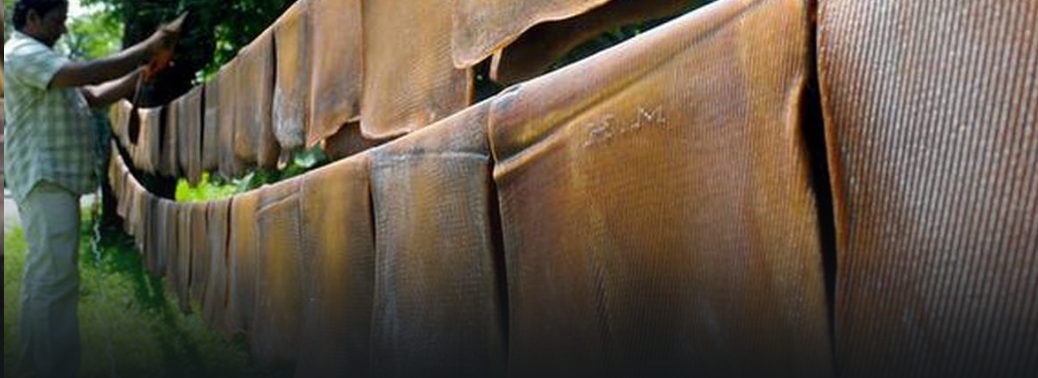
Fall in natural rubber production in the country has raised concerns in the tyre industry, which has appealed to the Union Ministry of Commerce to take steps to ease availability of the raw material in the interest of the consuming industry.
Natural rubber consumption grew 12%, while production dropped 7% during the April-January period this financial year, said a communication from the tyre industry body Automotive Tyre Manufacturers Association (ATMA).
Rubber Cultivation in India: Production, Distribution and Trade!
Rubber is a coherent elastic solid obtained from latex of a number of tropical trees of which Hevea brasiliensis is the most important. Rubber is used for a variety of purposes from erasing pencil marks to manufacturing of tyres, tubes and a large number of industrial products. The first rubber plantations in India were set up in 1895 on the hill slopes of Kerala. However, rubber cultivation on a commercial scale was introduced in 1902.
Conditions of Growth:
Rubber tree (Hevea brasiliensis) is a quick growing tall tree acquiring 20-30 metre height. It begins to yield latex in 5-7 years after planting. It requires hot and humid climate with temperature of 25°-35°C and annual rainfall of over 200 cm. The rainfall should be well distributed throughout the year.
Dry spell and low temperatures are harmful. Daily rainfall followed by strong sun is very useful. Deep well drained loamy soils on the hill slopes at elevation ranging from 300 to 450 metres above sea level provide best conditions for its growth. The yields decline at higher elevations and no rubber plantations are found above 700 m elevation.
Production and Distribution:
India is the third largest natural rubber producing country of the world, next to Thailand and Indonesia, producing about 9 per cent of the global output. From about 200 hectares in 1902-03, the total area under rubber plantations increased to about 5.9 lakh hectares in 2003-04.Similarly, the production that was 80 tonnes in 1910 increased to about 6, 90,000 tonnes in 2003-04. The most important and noteworthy achievement has been the increase in productivity from 354 kg/hectare in 1960-61 to 1663 kg/hectare in 2003-04.
Indirect tax collection may fall short, says Garg
15, Mar 2019
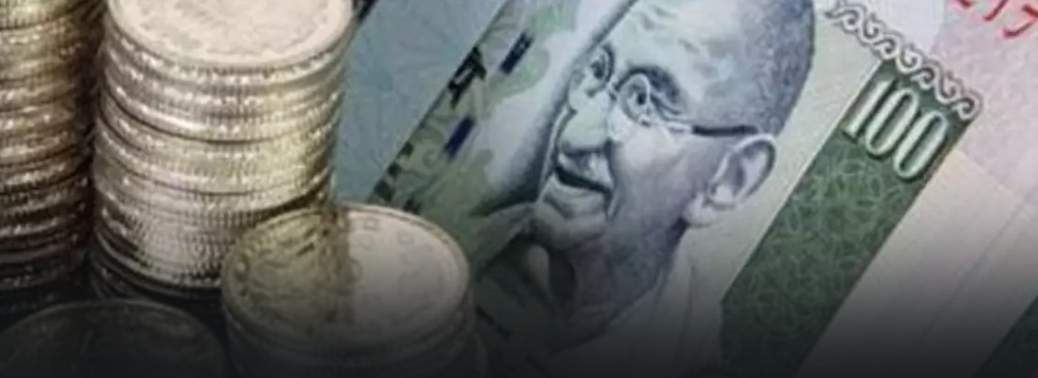
The government is reasonably confident of meeting its direct tax collection target for the current financial year but the indirect tax collection may fall short.
The Rationale Behind:
- GST collections in February dropped to ₹97,247 crore in February from ₹1.02 lakh crore in the previous month.
- The government had lowered the GST collection target for current fiscal to ₹11.47 lakh crore in the revised estimates, from₹13.71 lakh crore budgeted initially.
- For the next fiscal 2019-20, the GST collection target had been budgeted at ₹13.71 lakh crore.
Classification of Taxes
What is a Tax?
Taxes are generally an involuntary fee levied on individuals and corporations by the government in order to finance government activities. Taxes are essentially of quid pro quo in nature. It means a favour or advantage granted in return for something.
GST:
- Goods and Services Tax is a comprehensive indirect tax which is to be levied on the manufacture, sale and consumption of goods and services in India.
- GST eliminates the cascading effect of taxes because it is taxed at every point of business and the input credit is available in the value chain.
- France was the first country to introduce GST system in 1954.
- More than 140 countries have implemented the GST.
- The Genesis of GST occurred during the previous NDA Government under Atal Bihari Vajpayee Government when it set up the Asim Dasgupta committee to design a model for GST.
- The UPA Government took the matter further and announced in 2006 that this tax would be introduced from April 1, 2010. However, so far it was not introduced.
- All the GST bills including Constitution (101st Amendment) Act have been passed now and GST is set to come into force from July 1, 2017.
- GST would replace almost all vital indirect taxes and cess on Goods & services in the country.
Wholesale price inflation quickens to 2.93% in February
15, Mar 2019
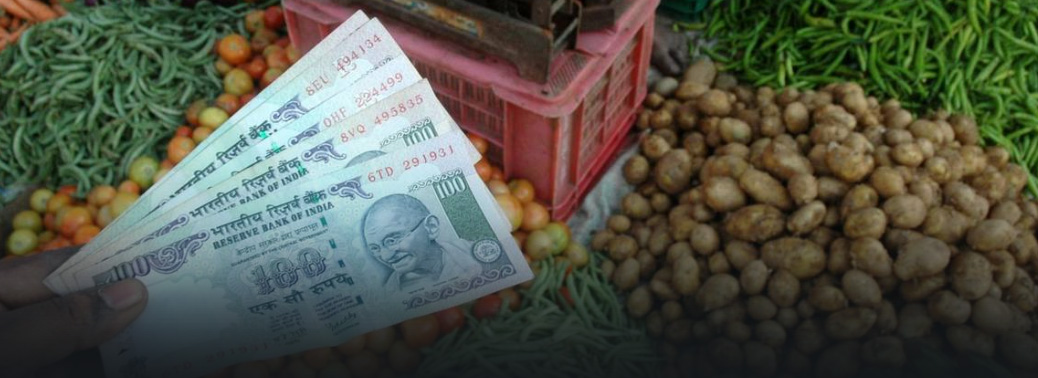
Wholesale price inflation in February snapped a three-month declining trend by rising to 2.93% on the back of firming food and fuel prices.
Growth in the wholesale price index (WPI) accelerated in February from 2.76% in January, the lowest level it had touched since March 2018.
Articles in the Index:
Within the index, the primary articles category saw inflation quickening to 4.84% in February from 3.54% in January. The food articles category witnessed inflation quickening to 4.28% from 2.34% over the same period.
The crude petroleum and natural gas segment also saw inflation quickening in February, to 5.87% from 3.87% in January. Overall, the fuel and power segment saw inflation moving up to 2.23% from 1.85% over the same period.
The manufactured products sector was one of the few to see inflation easing in February to 2.25% from 2.61% in the previous month.
GDP deflator
- The GDP deflator, also called implicit price deflator, is a measure of inflation.
- It is the ratio of the value of goods and services an economy produces in a particular year at current prices to that of prices that prevailed during the base year.
- This ratio helps show the extent to which the increase in gross domestic product has happened on account of higher prices rather than increase in output.
- GDP price deflator measures the difference between real GDP and nominal GDP. Nominal GDP differs from real GDP as the later doesn’t include inflation, while the former does.
- As a result, nominal GDP will most often be higher than real GDP in an expanding economy.
- The formula to find the GDP price deflator:
- GDP price deflator = (nominal GDP ÷ real GDP) x 100
GDP deflator is a better measure of inflation than CPI / WPI
- Since the deflator covers the entire range of goods and services produced in the economy — as against the limited commodity baskets for the wholesale or consumer price indices — it is seen as a more comprehensive measure of inflation.
- • A consumer price index (CPI) measures changes over time in the general level of prices of goods and services that households acquire for the purpose of consumption.
- However, since CPI is based only a basket of select goods and is calculated on prices included in it, it does not capture inflation across the economy as a whole.
- The wholesale price index basket has no representation of the services sector and all the constituents are only goods whose prices are captured at the wholesale/producer level.
- Changes in consumption patterns or introduction of goods and services are automatically reflected in the GDP deflator.
- This allows the GDP deflator to absorb changes to an economy’s consumption or investment patterns. Often, the trends of the GDP deflator will be similar to that of the CPI.
- Specifically, for the GDP deflator, the ‘basket’ in each year is the set of all goods that were produced domestically, weighted by the market value of the total consumption of each good.
- Therefore, new expenditure patterns are allowed to show up in the deflator as people respond to changing prices. The theory behind this approach is that the GDP deflator reflects up-to-date expenditure patterns.
- Drawback: GDP deflator is available only on a quarterly basis along with GDP estimates, whereas CPI and WPI data are released every month.
Wholesale Price Index (WPI)
Wholesale Price Index (WPI) is based on the price prevailing in the wholesale markets or the price at which bulk transactions are made.
It includes three components:
- Manufactured products = 64.2%
- Primary articles = 22.6%
- Fuel and power = 13.1% now
Base year has been changed from 2004-05 to 2011-12 recently.
The government is reasonably confident of meeting its direct tax collection target for the current financial year but the indirect tax collection may fall short.
Disinvestment target within reach: Centre
15, Mar 2019
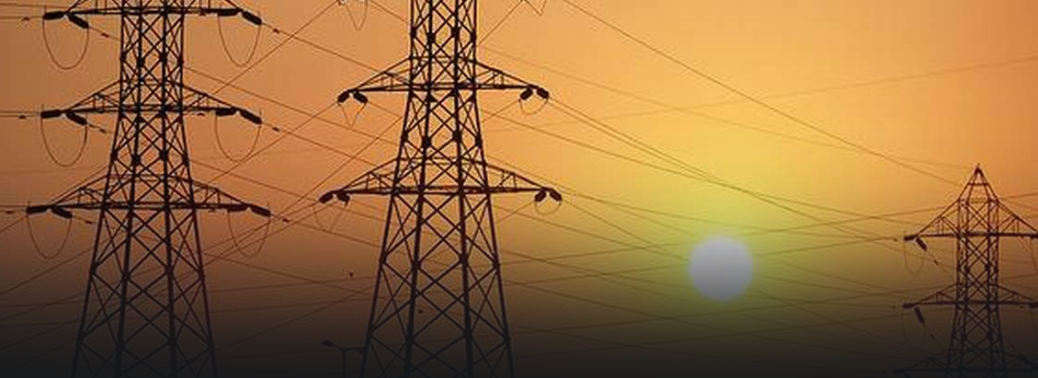
The government expects to meet its disinvestment target of ₹80,000 crore even though it has achieved only ₹56,473.42 crore so far with only 15 days left for the end of the financial year.
The government hopes that the Power Finance Corporation’s (PFC) acquisition of the Rural Electrification Corporation (REC), expected to be completed soon, would push disinvestment proceeds above the target.
Disinvestment policy in India:
Divestment in India is a by-product of the economic reforms initiated in 1991. Although the objective of redefining the role of the government versus the market started in 1991 and there was considerable discussion on the role of PSUs, the process of divestment was formalized only after the Divestment Commission was set up in 1996 to examine and suggest withdrawal from non-strategic sectors.
- The department of divestment was formed in December 1999, which later was made the ministry of disinvestment in September 2001. In May 2004, it was shifted to the ministry of finance as one of the departments under it.
- Now, the department has been renamed as Department of Investment and Public Asset Management (DIPAM)
What was objective of divestment then?
- The main objective of disinvestment is to put national resources and assets to optimal use.
- Through divestment the role of the government versus the market was sought to be redefined and market discipline was sought to be injected in PSUs’ decision-making
- Through divestment loss-making public enterprises were also sought to be revived and additional resource needs for containing the fiscal deficit and capital expenditure generated
Current setup for Disinvestment:
- Department of Disinvestment: Setup in 1999. Responsible to deal with all matters relating to disinvestment of Central Government equity in Central Public Sector Undertakings. This department now works under the Ministry of Finance.
- National Investment Fund: In 2005, the government formed a National Investment Fund or NIF, to which the proceeds of disinvestment were channelled. The mandate of the Fund, managed by professional investment managers, was to utilise 75% of annual funds in social sector schemes to promote education, health and employment. But with the economic slowdown of 2008-09, and later a drought, this was waived for three years — and later, in 2013, restructured to provide flexibility in using the Fund.
It was decided that the NIF would be utilized for the following purposes:
- Subscribing to the shares being issued by the CPSE including PSBs and Public Sector Insurance Companies, on rights basis so as to ensure 51% ownership of the Government in those CPSEs/PSBs/Insurance Companies, is not diluted.
- Preferential allotment of shares of the CPSE to promoters as per SEBI (Issue of Capital and Disclosure Requirements) Regulations, 2009 so that Government shareholding does not go down below 51% in all cases where the CPSE is going to raise fresh equity to meet its Capex programme.
- Recapitalization of public sector banks and public sector insurance companies.
- Investment by Government in RRBs/IIFCL/NABARD/Exim Bank.
- Equity infusion in various Metro projects.
- Investment in Bhartiya Nabhikiya Vidyut Nigam Limited and Uranium Corporation of India Ltd.
- Investment in Indian Railways towards capital expenditure.
Current Policy:
The current Government policy on disinvestment envisages people’s ownership of CPSEs while ensuring that the Government equity does not fall below 51% and Government retains management control. Keeping this objective in view of disinvestment policy, the Government has adopted the following approach to disinvestment:
- Already listed profitable CPSEs (not meeting mandatory shareholding of 10%) are to be made compliant by ‘Offer for Sale’ (OFS) by Government or by the CPSEs through issue of fresh shares or a combination of both.
- Unlisted CPSEs with no accumulated losses and having earned net profit in three preceding consecutive years are to be listed.
- Follow-on public offers (FPO) would be considered in respect of profitable CPSEs having 10% or higher public ownership, taking into consideration the needs for capital investment of CPSE, on a case by case basis and Government could simultaneously or independently offer a portion of its equity shareholding in conjunction.
- Since each CPSE has different equity structure; financial strength; fund requirement; sector of operation etc., factors that do not permit a uniform pattern of disinvestment, disinvestment will be considered on merits and on a case-by-case basis.
- CPSEs are permitted to use their surplus cash to buy-back their shares; one CPSE may buy the shares of other CPSEs from the Government
Why a relook at divestment policy is necessary now?
Over the years, the policy of divestment has increasingly become a tool to raise resources to cover the fiscal deficit with little focus on market discipline or strategic objective.
Why divestment is good?
- Reduces financial burden on the Government.
- Improves public finances.
- Introduces competition and market discipline.
- Funds growth.
- Encourages wider share of ownership.
- Depoliticizes non-essential services.
What is the NEW approach of current government?
Government’s roadmap – 3 pronged approach:
- First, a plan for winding up loss-making units, including rules for the disposal of their assets and land. Passage of the new bankruptcy code will aid these sales.
- Second, profitable PSUs will be listed on stock exchanges through public sales of shares. The government’s shareholding in enterprises already listed will be pared down through public offers to the minimum level depending on the sector and “in line with government policy.”
- The third category will be that of strategic sales of high-value and big-size companies such as BHEL, and the oil and defence sector PSUs.
But we need changes at policy level so that more broader changes can be made.
What policy changes are necessary now?
- Define the priority sectors for the government based on its strategic interests.
- Investment in PSUs have to serve social/strategic purposes and not only financial purpose.
- Government ownership is required for sectors with strategic relevance such as defence, natural resources etc. The government should, therefore, exit non-strategic sectors such as hotels, soaps, airlines, travel agencies and the manufacture and sale of alcohol.
- The outlook towards strategic divestment should move from the current policy of emphasizing on public ownership and retaining majority shareholding to looking at the strategic interest. As per the current divestment policy, government has to retain majority shareholding, i.e., at least 51% and management control of the PSUs. The policy thereby limits the scope to create divestments that would allow easy exit for the government from non-strategic sectors. Allowing ownership of less than 51% will be the first step in the right direction. Eventually, the objective of divestment should be to limit the government ownership to strategic sectors.
- It is important to realize that ownership is not a substitute for regulation. Therefore, instead of creating PSUs in non-priority sectors, the government should look into strengthening the regulatory framework that ensures efficient market conditions. The regulations should also ensure that the basic necessities of the consumers are met
Land Bank of loss making PSUs
The government is looking at creating a bank from the land available at loss-making state-run enterprises as part of its efforts to sell these entities and push the overall disinvestment programme. The idea is to create a special purpose vehicle (SPV) which will hold all the land resources from loss-making public sector enterprises. The SPV then can give the land for other projects which may come up.
Background:
- The government has accelerated efforts to wind up several loss-making state-run firms and the NITI Aayog is drawing up a strategy on the issue. Land available with state-run firms is seen as an asset and several defunct PSUs have huge tracts of land available with them. Latest data shows there are 77 CPSEs which incurred a loss of Rs 27,360 crore in 2014-15.
- Vijay Kelkar panel in 2012 had also suggested this.
NITI Aayog’s recommendations:
The NITI Aayog has submitted two sets of recommendations to the Centre for strategic disinvestment of State-owned companies.
Its recommendations:
- NITI Aayog has submitted a list of recommendations on each of the sick and loss-making government-owned companies. Of 74 such companies, it has recommended closure of 25 companies in which revival plans were attempted but had failed. After the closure their assets, especially land holdings, could be disposed off and employees be offered voluntary retirement.
- In the remaining cases, either mergers with other public sector units or strategic disinvestment is recommended. In some companies, the Aayog preferred to let revival plans run their course, before taking a call on their future.
- In another set of suggestions, it has recommended strategic disinvestment on priority in 15 PSUs. This list has been submitted to the Department of Investment and Public Asset management in the Finance Ministry.
Rubber output fall hits tyre makers
15, Mar 2019

- Fall in natural rubber production in the country has raised concerns in the tyre industry, which has appealed to the Union Ministry of Commerce to take steps to ease availability of the raw material in the interest of the consuming industry.
- Natural rubber consumption grew 12%, while production dropped 7% during the April-January period this financial year, said a communication from the tyre industry body Automotive Tyre Manufacturers Association (ATMA).
Rubber Cultivation in India: Production, Distribution and Trade!
- Rubber is a coherent elastic solid obtained from latex of a number of tropical trees of which Hevea brasiliensis is the most important. Rubber is used for a variety of purposes from erasing pencil marks to manufacturing of tyres, tubes and a large number of industrial products. The first rubber plantations in India were set up in 1895 on the hill slopes of Kerala. However, rubber cultivation on a commercial scale was introduced in 1902.
Conditions of Growth:
- Rubber tree (Hevea brasiliensis) is a quick growing tall tree acquiring 20-30 metre height. It begins to yield latex in 5-7 years after planting. It requires hot and humid climate with temperature of 25°-35°C and annual rainfall of over 200 cm. The rainfall should be well distributed throughout the year.
- Dry spell and low temperatures are harmful. Daily rainfall followed by strong sun is very useful. Deep well drained loamy soils on the hill slopes at elevation ranging from 300 to 450 metres above sea level provide best conditions for its growth. The yields decline at higher elevations and no rubber plantations are found above 700 m elevation.
Production and Distribution:
- India is the third largest natural rubber producing country of the world, next to Thailand and Indonesia, producing about 9 per cent of the global output. From about 200 hectares in 1902-03, the total area under rubber plantations increased to about 5.9 lakh hectares in 2003-04.
- Similarly, the production that was 80 tonnes in 1910 increased to about 6, 90,000 tonnes in 2003-
04.The most important and noteworthy achievement has been the increase in productivity from 354 kg/hectare in 1960-61 to 1663 kg/hectare in 2003-04.
RBI to inject liquidity via forex swaps
14, Mar 2019

In order to meet the durable liquidity needs of the system, the Reserve Bank has decided to augment its liquidity management toolkit and inject Rupee liquidity for longer duration through long-term foreign exchange buy/sell swap in terms of its extant Liquidity Management Framework.
Background:
Through this step it would buy as much as $5 billion from the banks in a swap deal that could inject nearly 35,000 crores into the system. Banks would be required to park dollar funds with RBI with a deal to buy it back from the RBI after three years.
The auction for this first of its kind US dollar buy/sell swap auction will take place on March 26. The auction cutoff would be based on the premium amount in paisa terms and the auction would be a multiple price based auction.This is the first time the central bank is using a foreign exchange auction to augment banking liquidity after generally using bond purchases for this fiscal .
RBI also has raised the trade credit limit under the automatic route to $150 million for oil/gas refining and marketing, airline and shipping firms. For others, the limit is set at $50 million or equivalent per import transaction.
Significance:
The move is seen to lower the dependence on open market operations which have been a significant amount of the overall borrowing. “Higher OMOs can distort the rates curve,” The move would boost RBI’s foreign exchange reserves which were at $401.7 billion for the week ended March 1.
The revised framework has reduced the al linclusive cost (all in cost) for overseas loans to benchmark rate plus 250 basis points from the earlier 350 bps.
Open Market Operation, Foreign exchange swaps (Forex)
Open Market Operation (OMO) is a transaction on the open financial market, involving fiscal instruments such as governments` securities, or commercial papers, commenced by a central banking authority, with the purpose of regulating the money supply and credit conditions.
OMO is a direct instrument of monetary policy, because the instrument influences the money supply directly. Forex swaps and other types of foreign exchange operations are also open market operations.
In a foreign exchange swap,two parties exchange specific amounts of two different currencies and repay the amount of the exchange at a future date,according to a predetermined rule reflecting both interest payments and amortization of the principle.
CBDT yet to set up angel tax exemption infrastructure
14, Mar 2019

The Central Board of Direct Taxes (CBDT) has not started work on setting up the back-end infrastructure required to automatically exempt registered start-ups from angel tax.
The Department for Promotion of Industry and Internal Trade (DPIIT) had, last month, issued a notification that stated that registered start-ups would be exempt from the angel tax if they met certain conditions.
What is Angel Tax?
Angel Tax is a 30% tax that is levied on the funding received by startups from an external investor. However, this 30% tax is levied when startups receive angel funding at a valuation higher than its ‘fair market value’. It is counted as income to the company and is taxed.
The tax, under section 56(2)(viib), was introduced by in 2012 to fight money laundering. The stated rationale was that bribes and commissions could be disguised as angel investments to escape taxes. But given the possibility of this section being used to harass genuine startups, it was rarely invoked.
Why is Angel tax problematic?
There is no definitive or objective way to measure the ‘fair market value’ of a startup. Investors pay a premium for the idea and the business potential at the angel funding stage. However, tax officials seem to be assessing the value of the startups based on their net asset value at one point. Several startups say that they find it difficult to justify the higher valuation to tax officials.
In a notification dated May 24, 2018, the Central Board of Direct Taxes (CBDT) had exempted angel investors from the Angel Tax clause subject to fulfilment of certain terms and conditions, as specified by the Department of Industrial Policy and Promotion (DIPP) now renamed as the Department for Promotion of Industry and Internal Trade. However, despite the exemption notification, there are a host of challenges that startups are still faced with, in order to get this exemption.
About CDBT:
- CBDT is nodal policy-making body of Income Tax (IT) department under Finance Ministry.
- It is a statutory authority established under The Central Board of Revenue Act, 1963.
- It is supreme body in India for framing policies related to direct taxes and is also tasked to enforce direct tax laws in the country. The composition of CBDT includes Chairman and six members.
SEBI provides framework for counter offer process
14, Mar 2019

Markets regulator SEBI came out with the framework and timeline for the counter offer process.
The counter offer is made in case the price discovered through reverse book building (RBB) is not acceptable to the promoter or the acquirer.
What Is a Counteroffer?
A counteroffer is the response given to an offer. A counteroffer means the original offer was rejected and replaced with another one. The counteroffer gives the original offerer three options: accept the counteroffer, reject it, or make another offer.
There is typically no binding contract between the parties involved until one accepts the other’s offer.Counteroffers are prevalent in many types of business negotiations, transactions, and private deals between two individuals. You may find them in real estate deals, employment negotiations, and car sales.
Securities and Exchange Board of India (SEBI)
- SEBI is the statutory regulator for the securities market in India.
- It was established in 1988 and given statutory powers through the SEBI Act, 1992.
- Purpose: Protect the interests of investors in securities, promote the development of securities market and to regulate the securities market.
- SEBI is responsive to needs of three groups, which constitute the market i.e.
- Issuers of securities,
- Investors and
- Market intermediaries.
- It has three functions:
- Quasi-legislative (drafts regulations in its legislative capacity),
- Quasi-judicial (passes rulings and orders in its judicial capacity) and
- Quasi-executive (conducts investigation and enforcement action in its executive function).
Only growth can solve jobs, agrarian distress
14, Mar 2019

Jobs and agrarian distress in India cannot be solved unless the economic growth rate is high.
The crux of the agrarian crisis is that prices have collapsed and it is said that minimum support price (MSP) is a solution. But, if the market demand does not support it, I am not sure if an MSP will solve the problem.
Non-agriculture jobs
If growth was there, people would have gone out of agriculture to take up non-agriculture jobs. Therefore, rural distress is not going to be solved by keeping the present number of people in agriculture and making their income go up. It’s going to be solved if you run the economy in a way which absorbs them away from agriculture into better earning jobs. That way, existing agriculture population would be better off.
Investment rate and health of the financial sector, among others, should be improved for achieving higher economic growth.
What is minimum support price?
Minimum Support Prices is the price at which government purchases crops from the farmers irrespective of the market price. The objective of the scheme is to check fall of prices of farm produce below certain level and thus support the farmers.
How the price are fixed?
Government fixes MSPs of various kharif and rabi crops every year on the recommendations of Commission for Agricultural Costs & Prices (CACP), views of concerned State Governments and Central Ministries/Departments and other relevant factors.
Who does the procurement under MSP?
Procurement under MSP is undertaken by the designated Central and State Government agencies and Cooperatives. MSP is in the nature of minimum price offered by the Government. Producers have the option to sell their produce to Government agencies or in the open market as is advantageous to them.
Basics about MSP:
- This scheme started in 1966-67 on advent of green revolution
- MSP is announced for 25 crops
- No MSP for Sugarcane. Instead government fixes FRP (Fair & Remunerative Price) for sugarcane. Each state then fixes its own SAP(State Advised Price)
- For Oil seeds and Pulses, there is a Price Support Scheme by NAFED (nodal Agency). So, when the prices of oilseeds, pulses and cotton fall below MSP, NAFED purchases them from the farmers.
Farmers Distress
- The year 2018 was marked by several farmers’ protests nationwide, with a few turning violent
- The protests highlighted the plight of farmers and the extent of agrarian distress.
- In June, 2018, some farmers were killed in police firing in Mandsaur, Madhya Pradesh, during an agitation for better crop prices
- In June 2018, many farmers are on an unusual 10-day ‘strike’ to draw the government’s attention to distress in the fields. A federation of 130 farmer bodies has decided to stop supplies of vegetables and dairy produce to major cities and hold a dharna on 30 national highways, without blocking vehicular passage.
What are the Farmers’ Demands?
- Enhancement of the minimum support price regime for crops in line with the M.S. Swaminathan Commission’s recommendations, higher prices for milk procurement and loan waivers to offset low or negative returns on investment.
- Stir also derives from lack of tangible action on assurances made earlier and imperceptible movement on the Centre’s grand promises such as doubling farm incomes and raising MSPs.
Reasons for the crisis:
- The main reason for farm crises is the rising pressure of population on farming and land assets
- Government data show the average farm size in India is small, at 1.15 hectare
- The small and marginal land holdings (less than 2 hectares) account for 72% of land holdings
- This predominance of small operational holdings is a major limitation to reaping the benefits of economies of scale
Other factors
- Crop production is always at risk because of pests, diseases, shortage of inputs like seeds and irrigation, which could result in low productivity and declining yield
- lower than the remunerative price in the absence of marketing infrastructure and profiteering by middlemen adds to the financial distress of farmers
- The predominance of informal sources of credit, mainly through moneylenders, and lack of capital for short term and long term loans have resulted in the absence of stable incomes and profits
- Uncertain policies and regulations such as those of the Agricultural Produce Market Committee (APMC Act), besides low irrigation coverage, drought, flooding and unseasonal rains, are some other factors that hit farmers hard
Price mechanism
- Farmers face price uncertainties due to fluctuations in demand and supply owing to bumper or poor crop production and speculation and hoarding by traders
- The government’s economic survey for 2016-17 points out that the price risks emanating from an inefficient APMC market are severe for farmers in India
- This is because they have very low resilience because of the perishable nature of produce, inability to hold it, hedge in surplus-shortage scenarios or insure against losses.
India gets first TIR shipment via Chabahar Port from Afghanistan
14, Mar 2019

The first shipment under the United Nations ‘Transports InternationauxRoutiers’ (TIR) convention arrived in India from Afghanistan through Iran’s Chabahar Port.
TIR Carnets
India had joined the TIR Convention (the United Nations Customs Convention on International Transport of Goods under cover of TIR Carnets) on June 15, 2017.
The convention allows goods to be outlined in a TIR carnet and sealed in load compartments.
Customs officials verify the carnet and check the seals, with no need for physical checking of the contents, enabling shipments to pass through countries without being opened at borders.
“Reciprocal recognition of customs controls is at the heart of the Convention. This enables a facilitative and non-intrusive environment for multi-modal transport of goods through several countries.
TIR will play a pivotal role in improving ease of doing business and pave the way for smoother and safer transport of goods across international borders and will help boost trade between India, Central Asia, Europe and Russia.
Strong catalyst
It will act as a strong catalyst for moving goods using the multi-modal transportation route like Chabahar and International North-South Transport (INSTC) Corridor. The system is a win-win-win model for Customs, FICCI and the business community.
The opening of Chabahar Port for TIR is hugely significant offering connectivity for landlocked countries, seamless border crossing facilitation and intermodal capabilities.
Chabahar Port
It is located on the Makran coast, Chabahar in southeastern Iran. Its location lies in the Gulf of Oman. This coast is a relatively underdeveloped free trade and industrial zone, especially when compared to the sprawling port of Bandar Abbas further west. Also, it is the only Iranian port with direct access to the ocean.
Why this port is of interest to India?
- India believes the port is critical to its interests and wants to develop it as a counter to Pakistan’s Gwadar port which was built with Chinese assistance.
- The port will allow India to bypass Pakistan to transport goods to Afghanistan and Central Asia using a sea-land route.
- Chabahar Port lies in the Persian Gulf in Iran and will help India in expanding its maritime commerce in the region.
- It also provides opportunities to Indian companies to penetrate and enhance their footprint in the region.
- It is located 76 nautical miles (less than 150km) west of the Pakistani port of Gwadar, being developed by China. This makes it ideal for keeping track of Chinese or Pakistani military activity based out of Gwadar
- The port will cut transport costs/time for Indian goods by a third.
- From Chabahar, the existing Iranian road network can link up to Zaranj in Afghanistan, about 883 kms from the port. The Zaranj-Delaram road constructed by India in 2009 can give access to Afghanistan’s Garland Highway, setting up road access to four major cities in Afghanistan — Herat, Kandahar, Kabul and Mazar-e-Sharif.
INSTC: It will boost India’s access to Iran, the key gateway to the International North-South Transport Corridor (INSTC) that has sea, rail and road routes between India, Russia, Iran, Europe and Central Asia. It can significantly boost import of iron ore, sugar and rice to India from Afghanistan. It can also help to reduce import cost of oil to India.
Trilateral Agreement:
- India, Iran and Afghanistan sign three-way land transit agreement on Iran’s strategic southern port of Chabahar.
- Under the agreement, India will invest up to 500 million dollars in a deal to develop a strategic port in Iran.
- It can spur unhindered flow of commerce throughout the region and its economic fruits will expand trade, attract investment, build infrastructure, develop industry and create jobs.
- India will get sea-land access route to Afghanistan bypassing Pakistan which will open opportunities for Indian companies to explore Afghanistan’s mineral wealth.
SEBI lifts cap on corporate bonds for FPIs
13, Mar 2019

In News
Markets regulator SEBI withdrew the 20% limit on investments by Foreign Portfolio Investors (FPIs) in corporate bonds of an entity.
About SEBI:
- SEBI is the statutory regulator for the securities market in India.
- It was established in 1988 and given statutory powers through the SEBI Act, 1992.
- HQ:
- Purpose: Protect the interests of investors in securities, promote the development of securities market and to regulate the securities market.
- SEBI is responsive to needs of three groups, which constitute the market i.e.
- Issuers of securities,
- Investors and
- Market intermediaries.
- It has three functions:
- Quasi-legislative (drafts regulations in its legislative capacity),
- Quasi-judicial (passes rulings and orders in its judicial capacity) and
- Quasi-executive (conducts investigation and enforcement action in its executive function).
Foreign portfolio investment (FPI)
- FPI consists of securities and other financial assets passively held by foreign investors.
- It does not provide investor with direct ownership of financial assets.
- It is relatively liquid depending on volatility of the market.
Indices rise for second straight session
13, Mar 2019

In News:
Equities continued to register a strong rally for the second consecutive day on Tuesday with the benchmarks gaining more than 1% each to close at near six-month high levels. Strong global cues and a steady flow from foreign investors boosted sentiments at a time when investor confidence is already high on expectations of political stability as the general elections near.
What is Equity Share:
Equity is an instrument for its owner for share in profits (and losses). Equity shares are instruments issued by companies to raise capital and it rep resents the title to the ownership of a company.
An investor becomes an owner of a company by subscribing to its equity capital (whereby investor will be allotted shares) or by buying its shares from its existing owners.
As a shareholder, investors bear the entrepreneurial risk of the business venture and are entitled to benefits of ownership like share in the distribu ted profit (dividend) etc.
The returns earned in equity depend upon the profits made by the company, company’s future growth etc.
Equity share is initially issued to those who have contributed capital in setting up an enterprise.
This would be called the Public Issue. Apart from a Public Issue, equity shares may originate through an issue of Bonus Shares, Convertible securities etc. All of them are collectively called Common Stock or Simply Stock.
Please note that if the company fails or gets liquidated otherwise, the claim of equity shareholders on earnings and on assets in the event of liquidation, follows all others.
Similarly, the dividend on equity shares is paid after meeting interest obligations and dividends to Preference shareholders.
That is why the holders of the Equity shares are also known as ‘residual owners’.
Since the equity shareholders bear such risks, they expect handsome returns by way of DIVIDENDS and price appreciation of the share, when their enterprise performs well.
Stock Market Index
- A share market Index shows how a specified portfolio of share prices is moving in order to give an indication of market trends.
- It is a basket of securities and the average price movement of the basket of securities indicates the index movement, whether upwards or downwards.
- For Ex. BSE Sensex is one index.
- TheBSE SENSEX is a free-float market capitalization-weighted stock market index of 30 well-established and financially sound companies listed on Bombay Stock Exchange.
IIP growth slows to 1.7%, retail inflation rises to 2.57%
13, Mar 2019

In News:
Industrial activity slowed in January 2019 growing by just 1.7% due in large part to a deceleration in the manufacturing, electricity, and capital goods sectors. In a separate release, government data showed that retail inflation in February snapped a four-month declining trend by rising to 2.57%.
The Index of Industrial Production (IIP) saw growth slip below the 2% for the second time in three months in January, with the previous occurrence being the 0.32% growth seen in November 2018. Growth in the IIP was at 2.6 in December.
Index of Industrial Production (IIP)
- IIP is compiled and published by Central Statistics Office(CSO)
- It is published every month
- It covers 865 (Older series 682) items comprising :
- Manufacturing (809 items, Older series 620 items),
- Mining (55 items, Older Series 61 items) &
- Electricity (1 item).
- The weights of the three sectors are :
- Manufacturing – 77.63%,
- Mining – 14.37%,
- Electricity – 7.99%
- Base year for IIP is 2011-2012 (Earlier 2004-05) i.e. it is calculated on the basis of their share of GDP at factor cost during 2011-12.
- The eight Core Industries comprise nearly 40.27 % of the weight of items included in IIP. They are :
-
- Coal (10.33%)
- Crude oil (8.98%)
- Natural gas (6.88%)
- Refinery products (28.04%)
- Fertilisers (2.63%)
- Steel (17.92%)
- Cement (5.37%)
- Electricity (19.85%)
- In IIP, the decreasing order of core industries among them is as:
- REFINERY PRODUCTS>ELECTRICITY> STEEL> COAL> CRUDE OIL> NATURAL GAS>CEMENT> FERTILIZERS
Main Changes:
- Base year has been changed from 2004-05 to 2011-12
- Number of items has been changed (See details below)
- There will be 407item groups
- The new series of IIP will include technology items like smart phones, tablets, LED television etc.
- A technical review committee has also been established to identify new items by ensuring that the series remains relevant. The committee is slated to meet at least once a year.
- The revised IIP (2011-12) reflects the changes in industrial sector and also aligns it with base year of other macroeconomic indicators like Wholesale Price Index (WPI) and Gross Domestic Product (GDP).
GI tag for Thirubhuvanam silk sarees
13, Mar 2019

The Thirubhuvanam Silk Handloom Weavers’ Cooperative Production and Sale Society has been accorded Geographical Indication (GI) tag for its silk sarees.
The Unique Features:
The Thirubhuvanam silk saree, known for its intricate border and pallu designs, measures about 18 feet in length and 4 feet in breadth with one side border.
The speciality of the saree is that filature silk is used for both warp and weft resulting in high quality, shining, uniformity and lustre.
Known as a traditional wedding saree of medium weight with motifs, body and border woven in the same single warp, its pallu is woven continuously on the loom.
The weaving technique used in the making of the saree is called porai ilupu,which distinguishes it from the pitni work of Kancheepuram silk saree. Another uniqueness of the silk saree is its visiri madippu — a pattern of folding that looks like a hand-held palm fan.
Further, the technique of weaving by frequently changing of warp yarns and maintaining the tension of warp naturally gives sufficient stiffness to the saree and has better drapability.
What is Geographical Indication?
- Geographical Indication is a genre of Intellectual Property.
- GI tag is an insignia on products having a unique geographical origin and evolution over centuries with regards to its special quality or reputation attributes.
- The status to the products marks its authenticity and ensures that registered authorised users are allowed to use the popular product name.
- These could be naturally grown crops like Assam Chilies or manufactured products like Jaipur Pottery.
- GI tags are given on the basis of the Geographical Indications of Goods (Registration and Protection) Act, 1999.
- The registration of GI isvalid for 10 years after which it needs to be renewed.
- Violation of GI tags is punishable offence under law.
India ranks 11th in gold holding
12, Mar 2019

India, which is the world’s largest consumer of gold, has the 11th largest gold reserve, with the current holding pegged at 607 tonnes, as per the latest report by the World Gold Council (WGC).
India’s overall position in terms of total gold holding would have been tenth had the list included only countries. Whereas, International Monetary Fund (IMF) is included and is third on the list with total gold reserves of 2,814 tonnes.
Worldwide Distribution
The no. 1 slot is occupied by the U.S., which boasts of gold reserves of 8,133.5 tonnes, followed by Germany with 3,369.7 tonnes.
Italy and France complete the top five list with reserves of a little over 2,400 tonnes each.
Meanwhile, among Asian countries, China and Japan have more reserves of the precious metal when compared to India.
China – WGC takes into account only ‘Mainland China’ – has reserves of 1,864.3 tonnes, while Japan has gold reserves of 765.2 tonnes.
Following the multi-decade high in gold reserves growth in 2018, central banks’ appetite remained healthy at the start of 2019.
Pakistan, with its gold reserves of 64.6 tonnes, occupies the 45th position.
Arecanut gets its first GI tag to ‘Sirsi Supari’
12, Mar 2019

For the first time in the arecanut sector, ‘Sirsi Supari’ grown in Uttara Kannada has received the Geographic Indication (GI) tag. It is cultivated in Yellapura, Siddapura and Sirsi taluks.
Totgars’ Cooperative Sale Society Ltd., Sirsi, is the registered proprietor of the GI.
The Registrar of Geographical Indications, under the Union government, Chennai issued the certificate to the society on March 4, 2019. Its GI number is 464.
According to it, the particular arecanut “is medium in size, somewhat flat and rounded in shape, somewhat ash coloured, and has a hard seed.”
The arecanut grown in these taluks have unique features like a round and flattened coin shape, particular texture, size, cross-sectional views, taste, etc. These features are not seen in arecanut grown in any other regions. Its average dry weight is 7.5 g and average thickness is 16 mm.
This particular variety has a unique taste due to differences in chemical composition. The total average flavonoids content in it is around 90 whereas in others it is around 80.
The total carbohydrates in ‘Sirsi Supari’ are 23% to 26%, total arecoline is 0.11% to 0.13%, total tannin content is 14.5% to 17.5%.
‘Sirsi Supari’ is used both as ‘chali’ (white arecanut) and red arecanut. The ‘chali’ variety is made by peeling the ripened nuts and sun drying them later. The red arecanut is produced by harvesting the tender nuts, then boiling and colouring them, then making them into different grades and finally sun drying them.
About Areca Nut
The areca nut is the fruit of the areca palm (Areca catechu), which grows in much of the tropical Pacific (Melanesia and Micronesia), Southeast and South Asia, and parts of east Africa.
It is commonly referred to as betel nut so it is easily confused with betel(Piper betle) leaves that are often used to wrap it (paan).
The term areca originated from the Kannada word adike and dates from the 16th century, when Dutch and Portuguese sailors took the nut from Kerala to Europe.
Consumption has many harmful effects on healthand is carcinogenic to humans.
Various compounds present in the nut, including arecoline (the primary psychoactive ingredient which is similar to nicotine), contribute to histologic changes in the oral mucosa.
It is known to be a major risk factor for cancers (squamous cell carcinoma) of the mouth and esophagus. As with chewing tobacco, its use is discouraged by preventive efforts.
Consumption by hundreds of millions of people worldwide – mainly with southern and eastern Asian origins – has been described as a neglected global public health emergency.
Consumption by hundreds of millions of people worldwide – mainly with southern and eastern Asian origins – has been described as a neglected global public health emergency.
What is Geographical Indication?
- Geographical Indication is a genre of Intellectual Property.
- GI tag is an insignia on products having a unique geographical origin and evolution over centuries with regards to its special quality or reputation attributes.
- The status to the products marks its authenticity and ensures that registered authorised users are allowed to use the popular product name.
- These could be naturally grown crops like Assam Chilies or manufactured products like Jaipur Pottery.
- GI tags are given on the basis of the Geographical Indications of Goods (Registration and Protection) Act, 1999.
- The registration of GI isvalid for 10 years after which it needs to be renewed.
- Violation of GI tags is punishable offence under law.
India is world’s 2nd largest arms importer
12, Mar 2019

According to the latest report published by the Stockholm International Peace Research Institute (SIPRI) India was the world’s second largest arms importer from 2014-18, ceding the long-held tag as largest importer to Saudi Arabia, which accounted for 12% of the total imports during the period.
However, Indian imports decreased by 24% between 2009-13 and 2014-18, partly due to delays in deliveries of arms produced under licence from foreign suppliers, such as combat aircraft ordered from Russia in 2001 and submarines ordered from France in 2008.
Country wise Split-up
Russia accounted for 58% of Indian arms imports in 2014–18, compared with 76% in 2009-13 which includes
- S-400 air defence systems,
- Four stealth frigates,
- AK-203 assault rifles,
- Second nuclear attack submarine on lease, and
- Deals for Kamov-226T utility helicopters, Mi-17 helicopters and short-range air defence systems.
Israel, the U.S. and France all increased their arms exports to India in 2014-18.
The report noted that despite the long-standing conflict between India and Pakistan, arms imports decreased for both countries in 2014-18 compared with 2009-13.
Pakistan at 11th
Pakistan stood at the 11th position accounting for 2.7% of all global imports. Its biggest source was China, from which 70% of arms were sourced, followed by the U.S. at 8.9% and, interestingly, Russia at 6%.
Globally, the volume of international transfers of major arms in 2014-18 was 7.8% higher than in 2009-13 and 23% higher than in 2004-2008. The five largest exporters in 2014-18 were the United States, Russia, France, Germany and China together accounting for 75% of the total volume of arms exports in 2014-18. The flow of arms increased to the Middle East between 2009-13 and 2014-18, while there was a decrease in flows to all other regions.
China, which has emerged as a major arms exporter, has increased its share by 2.7% for 2014-18 compared to 2009-13. Its biggest customers are Pakistan and Bangladesh.
As Indian imports reduced, the impact was on Russian exports of major arms, which decreased by 17% between 2009-13 and 2014-18. The report said this was partly due to general reductions in Indian and Venezuelan arms imports, which have been among the main recipients of Russian arms exports in previous years.
About Stockholm International Peace Research Institute (SIPRI)
- Stockholm International Peace Research Institute (SIPRI) is an international institute based in Sweden, dedicated to research into conflict, armaments, arms control and disarmament.
- Established in 1966, SIPRI provides data, analysis and recommendations, based on open sources, to policymakers, researchers, media and the interested public.
- SIPRI was ranked among the top three non-US world-wide think tanks in 2014 by the University of Pennsylvania Lauder Institute’s Global Go To Think Tanks Report.
- In 2018 it ranked SIPRI in the top twenty eight among think tanks globally
Wind loses energy as policy paralysis blows through this renewable sector
11, Mar 2019
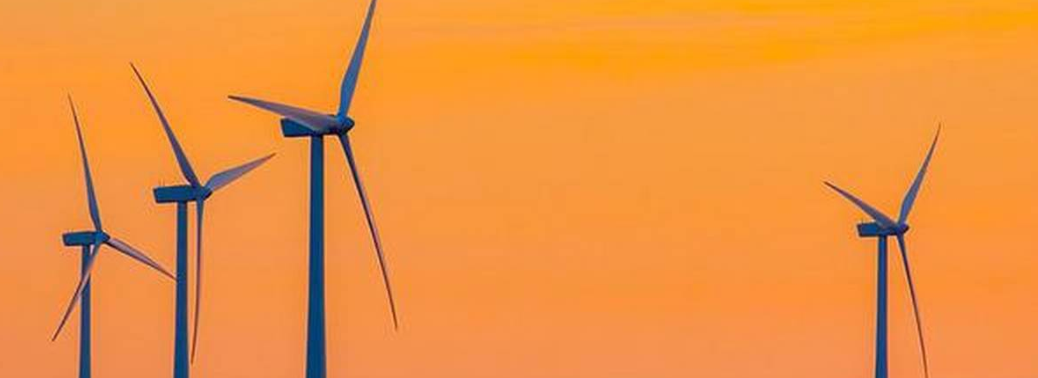
From a euphoric 5,500 MW in 2016-17 when wind energy companies rushed to commission their projects so as to get their foot in before certain incentives expired capacity additions have plummeted, to 1,762 MW in 2017-18 and an estimated 1,600 MW in 2018-19.
Notably, at the beginning of both the years, expectations were high. After 2016-17 ended with 5,500 MW, an ecstatic industry predicted 6,000 MW for 2017-18. That didn’t happen, but still, many projected a boom for 2018-19. Now, when the record is dismal again, predicting record high installations in 2019-20, while others (such as market research company Crisil) are not so optimistic.
The situation would have been very different if only policymakers had thought things through and the government had been more helpful. But first, some background.
Unlike solar, wind power plants cannot be put up anywhere but only in locations where winds blow strong. In India, there are eight States where it is economically viable to put up wind turbines Tamil Nadu, Gujarat, Karnataka, Maharashtra, Madhya Pradesh, Rajasthan, Telangana and Andhra Pradesh.
For about two decades, wind energy firms (called ‘developers’) would erect the turbines at chosen sites and sell power to the electricity supply companies at prices fixed (called ‘feed-in tariffs, or FiT) by the respective State electricity regulators. The developer would get the FiT for the entire power purchase agreement period, typically 25 years.
Because only eight States constituted the ‘market’, annual fresh capacity installations used to be in the 1,500 MW — 3,000 MW corridor. Expanding the market meant that the other States also should buy wind power. This could not happen because of difficulties in putting up projects in one State and selling the electricity to another.
Centre steps in
That was when the Centre stepped in. As soon as the BJP came to power in 2014, it fixed a target of 1,75,000 MW of capacity for renewable energy of which 1,00,000 MW would be solar, 60,000 MW wind and the rest biomass and small hydro.
To make the 60,000 MW happen, the Government of India (through its new company, SECI), became a trader — it would buy power from the developers and sell it to the non-windy States, thus expanding the market. Developers who offered to sell at the least prices would get to sign long-term power purchase agreements; they could put up their projects anywhere, but should deliver the power at a substation. Thus began the epochal shift from fixed FiTs to market-determined tariffs.
The first round of auctions closed in February 2017. Due to competition, developers offered to sell electricity at prices as low as 3.46 a kWhr; in contrast, the least FiT was 4.16 in Tamil Nadu. Now, upon seeing prices fall so low, the windy States began to ask themselves, why should we buy power at the costly FiT prices; why not we also conduct our own auctions to buy cheaper power? But they didn’t know the mechanics of the auctions and had to wait for some guidelines from the central electricity regulator. As they dithered, the ‘windy State market’ vanished. But the Centre too dragged its feet on further rounds of auctions. In 2017-18, just two auctions, for 2,000 MW, happened. The year ended on a dismal note.
In due course, activity picked up and till now, six rounds of SECI’s, and several more of different States have happened and about 13,000 MW of capacity have been awarded. Prices dropped consistently, and fell to a low of 2.44 in the third round.
At this stage, two other problems arose. First, to be viable at such low prices, developers flocked to the two windiest States — Gujarat and Tamil Nadu.
All of the SECI-awarded projects (70% of all auctioned capacities) went to them, which was more than the ability of the substations to take the power.
Second, Gujarat frowned at 5,400 MW worth of projects coming up on its soil but all the power going to the non-windy States. Would there be any lands left for its own auctions? So, it refused to give land and came out with a policy that forced developers to put up their projects in specified ‘wind parks.’ Since the parks are not necessarily the best sites for wind projects, the developers didn’t like the policy. Negotiations began, project work got delayed.
The Obstacles
As the best sites got taken, prices began to rise after from the fourth SECI round. Governments, suspecting a developers’ cartel, began imposing tariff caps — or the highest price they would accept. And they began cancelling auctions at ripe stages. Notably, the benefits of the low tariffs have never been passed on to the consumer — the electricity supply companies have pocketed the benefits.
The industry has been asking the government to do ‘substation-wise auctions’, (what is the cheapest best price you can offer if your wind turbines would be connected to this particular substation?) The government is hesitating, apparently because substation-wise auctions will result in higher price quotes.
Of the 13,000-odd MW tendered, the deadline for completion has expired for 2,000 MW; but so far only 823 MW has come up. More auctions are set to happen. So, the question is, while there is a fat backlog and a healthy ‘order pipeline,’ will the projects come up? Mr. Tanti believes they will and says 2019-20 will see a record of 8 GW; Crisil disagrees — it projects 3,800 MW for the year. The worst sufferers in the mess are the 4,000 SMEs who supply components to turbine manufacturers and their two million employees.
Relaxation of rules to aid red-flagged Andamans tourism project
10, Mar 2019
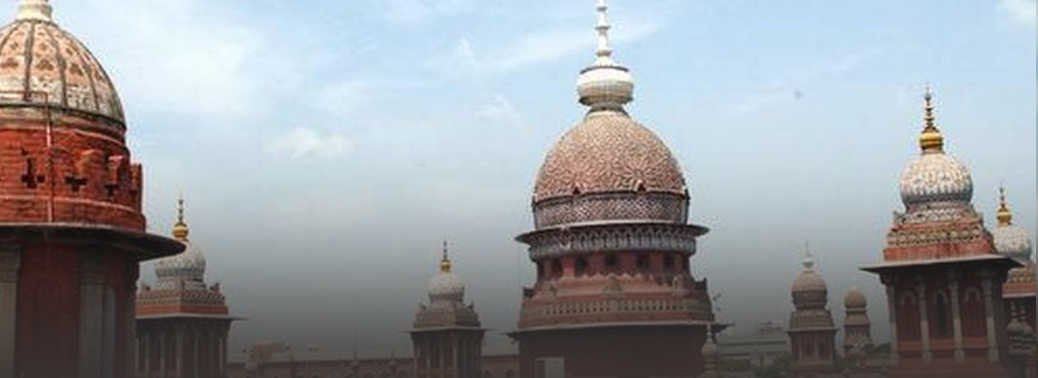
The Environment Ministry has amended laws that now allow a proposed tourism project in the Aves island, of the Andaman and Nicobar island (A&N) territory, to come up.
The project was the only one of three high-profile proposed tourism projects that did not get a clearance from an expert committee on coastal clearance in February. This was because the proposed Aves island project was located 20 m away from the High Tide line (HTL) and existing rules required such projects to be at least 50 m away.
While the new rules did ease the way for the Aves island project, it was also done to broadly align the changes in coastal zone regulations in the country’s mainland States with the island regions. What is important is that there is no other industrial development in the A&N and tourism is a major thrust area that we have to consider. However, there continue to be stringent provisions on how infrastructure and development projects can be executed. These were high end eco tourism projects and had to strictly adhere to the island management plan.
In December, the government had issued a coastal regulation zone notification that largely allows tourism and development projects located near coasts in mainland States to come up closer to the sea. It also issued an Island Zone Protection Notification in January 2019 to allow similar relaxations in the A&N Islands.
Deferred clearance
- In January, an expert committee of the Union Environment Ministry “deferred” clearance to a 100 crore proposal by the Andaman and Nicobar Islands Integrated Development Corporation Limited to develop an island resort, as well as put up “premium tents” and “tree houses,” on the grounds that it did not account for the biodiversity of the islands’ coast.
- After site visits, the committee in February recommended two of them— at Lalaji Bay on Long Island and at Smith Island — for island protection zone clearance, with caveats. However, the Aves Island project was still red-flagged primarily because of the 50 m clause. In light of the March 8th notification, the committee is likely to re-look the project.
- The Centre has been working on a long-term plan to make several of the A&N islands more conducive to tourism. Last year, the Home Ministry revived an Island Development Agency that would coordinate infrastructure projects to aid tourism in the A&N islands as well as Lakshadweep.
Dip in flows to equity funds continues
09, Mar 2019

According to Association of Mutual Funds in India (AMFI) data, equity schemes registered net inflows of Rs.3,948 crore in February, lower by nearly 20% than the previous month’s flows of Rs.4,914 crore.
Incidentally, this is also the lowest monthly inflow since March 2018, when equity schemes registered inflows of Rs.2,954 crore. It was a challenging month with the markets not behaving well amid high volatility and border tensions.
Further, if the cumulative flows of equity schemes and the equity-linked savings schemes are taken into consideration, then the combined flows pegged at Rs.5,122 crore in February was the lowest since January 2017, when Rs.4,880 crore was registered cumulatively by the two categories.
Meanwhile, the overall mutual fund industry saw net outflows of Rs.20,083 crore in February, compared to net inflows of Rs.65,439 crore in January. The February outflows were primarily driven by the liquid schemes followed by income and balanced funds.
Liquid schemes
While liquid schemes saw net outflows of Rs.24,509 crore, income and balanced funds witnessed outflows of Rs.4,214 crore and Rs.1,077 crore, respectively.
The total assets under management (AUM) of the mutual fund industry was pegged at Rs.23.16 lakh crore, which was a tad lower than the previous month’s AUM of Rs.23.37 lakh crore. The number of folios registered a marginal rise to 8.91 crore in February from 8.17 crore in January. The AUM from systematic investment plans (SIPs) also increased marginally to Rs.2.43 lakh crore from Rs.2.39 lakh crore month-on-month.
NMR to have two coaches with glass roof, larger windows
09, Mar 2019
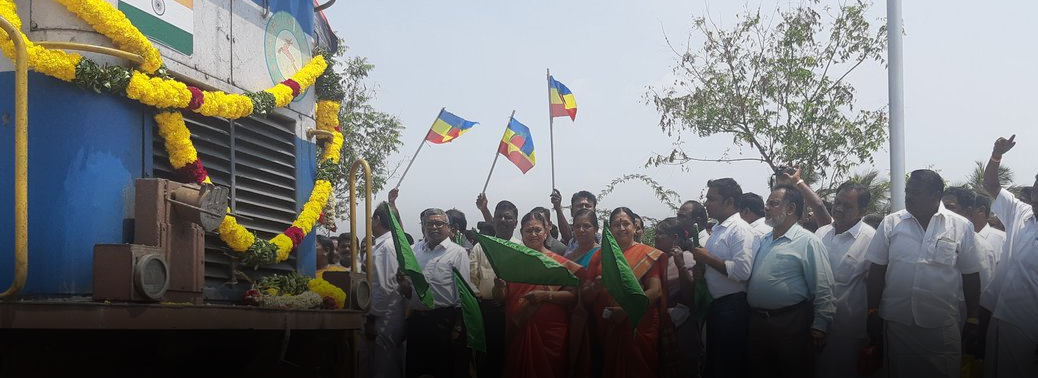
Union Minister for Railways Piyush Goyal dedicated two vistadome coaches (one AC and one non-AC coach) made by the Central Workshop in Tiruchi.
The coaches will soon be used on the Nilgiri Mountain Railway section between Mettupalayam and Udhagamandalam.
The salient features of these coaches are that they have a glass roof and larger windows to enable tourists to get a better view of the scenic route.
Climate control
The coaches also have a cooling and heating facility, reclining seats, a stainless steel floor-level luggage rack and LED lights, according to officials in the Salem Railway Division.
Earlier, the Central Workshop upgraded two Nilgiri Mountain Railway (NMR) coaches with similar features, which were appreciated by passengers.
Three vistadome coaches are already in use between Dadar and Madgoan stations , in Araku Valley and in Kashmir Valley. Four mountain railways have already been provided with these coaches.
Vistadome coaches
Totally, 13 vistadome coaches are already being used in various routes, namely four in the Darjeeling Railway, two in the Kalka-Shimla section, one in Kangra Valley Railway and one in Matheran Hill Railway.
With the modification of two-metre gauge track and pinion system in coaches, now all five hill railways will have vistadome coaches.
Nilgiri Mountain Rail
- The Nilgiri Mountain Railway (NMR) is a 1,000 mm (3 ft 3 3⁄8 in) metre gauge railway in Tamil Nadu, India, built by the British in 1908.
- The railway is operated by the Southern Railway and is the only rack railway in India that relies on its fleet of steam locomotives.
- NMR switched to diesel locomotives on the section between Coonoor and Udhagamandalam. Local people and visitors led a campaign to return to steam locomotives in this section.
- In July 2005, UNESCO added the Nilgiri Mountain Railway as an extension to the World Heritage Site of Darjeeling Himalayan Railway. The site then became known as Mountain Railways of India.
Other Mountain Railways in India:
- The Darjeeling Himalayan Railway
- The Nilgiri Mountain Railway
- Kalka–Shimla Railway
Bring in constitutional amendment on GST revenue-sharing proportion: Rangarajan
09, Mar 2019
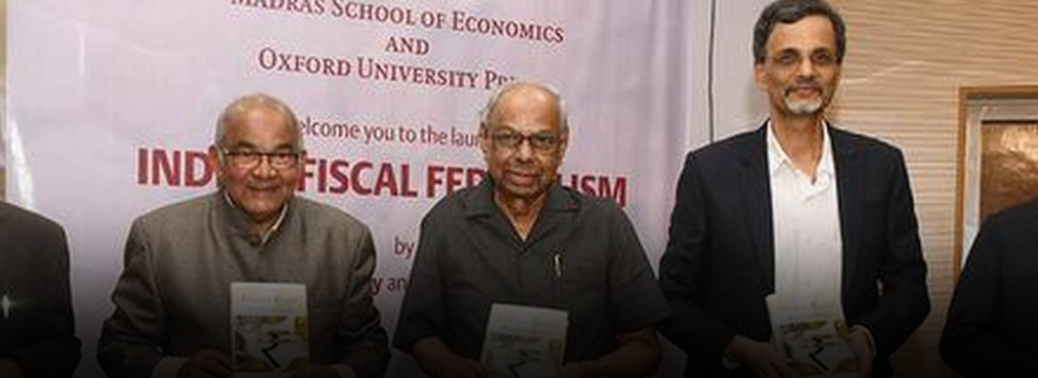
The Centre should bring in a constitutional amendment to fix the proportion of shareable taxes going to states – C. Rangarajan.
This would avoid repeated changes. Alternatively, we can allocate the entire collection of GST to states as is being done in Australia. This will replace the present formula.
Appoint committee
- A committee could be appointed specifically to fix the revenue-sharing proportion, before bringing in a constitutional amendment to give effect to that. The 14th Finance Commission, had broken a new path in terms of allocation of resources.
- One of the major recommendations had been to increase the share of tax devolution to 42% of the divisible pool. This was a substantial increase by almost 10%.
- The balance in fiscal space thus remains broadly the same in quantitative terms, but tilts in favour of States in qualitative terms through compositional shift in favour of devolution and, hence, fiscal autonomy.
- Dr. Rangarajan pointed out that the Indian Constitution had laid down the functions as well as taxation powers of the Centre and States.
- The introduction of GST is an important step towards the reform of the indirect tax structure.
- Some States bemoan the loss of sovereignty which is not true. The GST Council comprising all State Finance Ministers and the Union Finance Minister take the decisions on rates and several associated features. The Centre is also bound by it.
Only 3.32 lakh MSME jobs created in last four years, finds CII survey
09, Mar 2019
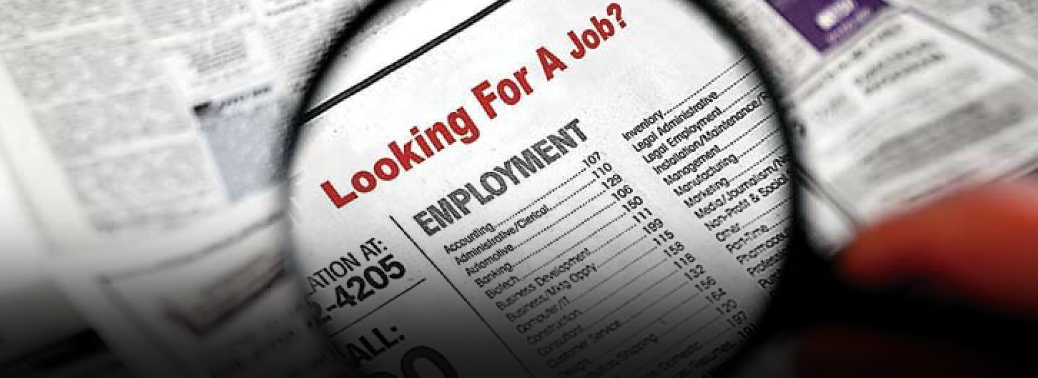
The number of net jobs created in the Micro, Small and Medium Enterprises (MSME) sector in the last four years stood at just 3,32,394, which is 13.9% higher than the base four years ago, according to a CII survey of more than one lakh companies.
The survey shows just three States — Maharashtra, Gujarat, and Telangana — accounted for over 50% of the jobs created in this period (2015-16 to 2018-19).
Most in micro sector
- It also shows that 73% of the jobs were created by micro enterprises.
- Out of the survey sample, 70,941 firms were responsible for this increase. On the whole, nearly two-thirds of the respondents witnessed an increase in hiring activity over the last four years, while 17% witnessed no change.
- According to the survey, micro enterprises were the largest job generators, having created 2,40,713 jobs or 73% of the net jobs created in the last four years. Small enterprises, on the other hand, accounted for 23% of the net jobs created, while medium enterprises accounted for just 4%.
- Looking at the sectoral break-up, the hospitality & tourism sector accounted for 12% of the jobs, while the textiles & apparels and metal products sectors each contributed about 8% to job creation.
- The other large job generators were machinery parts (7%) and transport & logistics (7%). The top five sectors accounted for over 40% of the jobs, indicating a degree of sectoral concentration.
- The concentration in terms of geographic dispersion of jobs created was also noticeable, with three States — Maharashtra (29%), Gujarat (14%) and Telangana (10%) — accounting for 54% of the jobs created in the last four years.
- The top eight States accounted for over 80% of the jobs. The survey also found that 5,70,804 jobs are expected to be created over the next one year, which represents a 21% increase over the current employment base. The trend seen in the last four years in terms of sectoral break-up will remain largely the same.
RURAL INDIA PUSHES UP UNEMPLOYMENT IN FEBUARY
08, Mar 2019
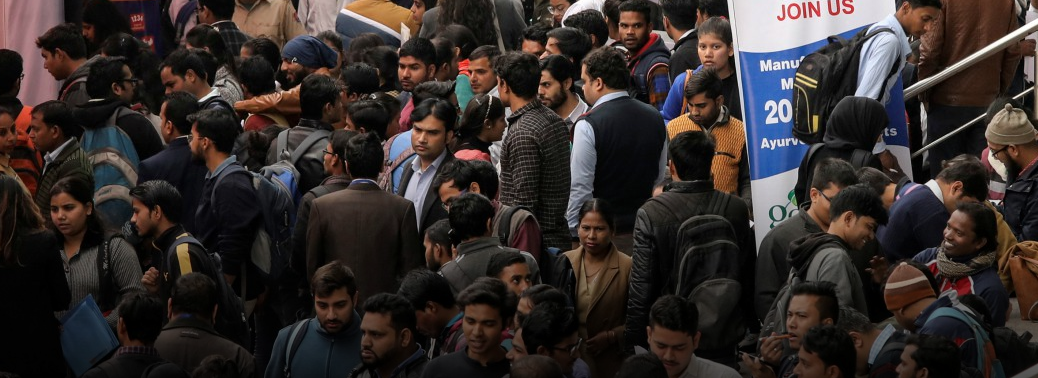
In News:
CMIE report on unemployment.
Explained:
- Estimated unemployment rate shot up to a 29-month high of 7.23 per cent in February 2019 and the numbers of those employed fell by 56.6 lakh over the last 12-months led by job losses in rural areas and especially in Uttar Pradesh, Karnataka and Bihar. Data shows that while the total number of employed dropped from 40.59 crore in February 2018 to 40.01 crore in February 2019, that in rural India dropped from 27.53 crore to 27.07 crore in the same period.
- A look into the rural employment figures of states show that the number of those employed in rural UP alone declined from 4.4 crore to 4.19 crore accounting for a decline of 25 lakh jobs during the period.
- While the rural Karnataka and Bihar saw the number of employed drop by 15 lakh each, Gujarat witnessed a reversal as the number of those employed rose from 1.14 crore in Feb 2018 to 1.33 crore in Feb 2019, thereby witnessing an addition of almost 19 lakh.
- CMIE has, however, revised its initial estimates for December 2018 (released in January 2019), that showed the unemployment rate at 7.38 per cent. The revised CMIE figures show that it was at 7.02 per cent for December 2018. It has now risen to 7.23 per cent in February 2019, the data shows. The unemployment rate of 7.23 is the highest since September 2016 when it stood at a high of 8.46 per cent.
- The estimates provided by CMIE database on “Unemployment Rate in India” is based on the panel size of over 1,58,000 households. The CMIE data, however, also shows that alongside the rise in unemployment, there has been a dip in the labour participation rate.
- A breakup of the rural and urban job numbers shows that a large part of the drop-in employment over the last 12-months is on account of job losses in rural areas. Out of the 56 lakh job losses, almost 82 per cent or 46 lakhs were from the rural areas.
- The rural employment numbers fell from 27.53 crore in February 2018 to 27.07 crore last month. The rural unemployment rate over the last 12-months has shot up from 5.53 per cent to 6.98 per cent.
- In line with a dip in the employment rate, the CMIE data shows that there has been a dip in the estimated labour participation rate (LPR) — proportion of working-age people (which is people of 15 years or more) who are willing to work and are either actually working or are actively looking for work.
- The unemployment rate is the proportion of the labour force that is unemployed. While the LPR stood at 43.77 per cent in February 2018, it declined to 42.74 per cent last month. In January, however, the unemployment rate and labour participation stood at 7.05 per cent and 43.18 per cent.
CMIE:
CMIE, or Centre for Monitoring Indian Economy, is a leading business information company. It was established in 1976, primarily as an independent think tank.
WIND ENERGY CAPACITY EXPANSION TO SLOW IN NEXT FIVE YEARS
08, Mar 2019
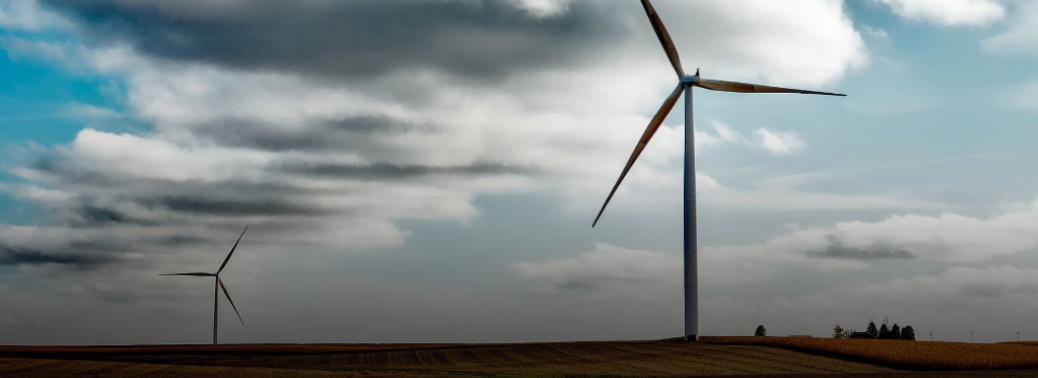
In News:
According to a report by Crisil, capacity addition in the wind energy sector will slow down over fiscal 2019 to 2023, with only 14-16 GW being added due to a decline in bid responses and profitability of original equipment manufacturers.
Explained:
- Crisil Research expects capacity addition to grow slowly over the next five years, driven by the allotment of central transmission utility’s (CTU) grid connected capacities
- The shift to a competitive bidding mechanism has slowed industry growth due to a significant fall in tariffs, triggering a decline in both bid response and profitability for original equipment manufacturers (OEMs)
- The shift to a competitive bidding mechanism in the wind energy sector has resulted in tariffs falling to Rs. 2.4-2.6 per unit, from Rs. 4-4.5 per unit under the feed-in tariff regime.
- According to Crisil, such low realisations are unviable for the entire value chain at current capital costs of Rs. 6.8-7.2 crore per MW. Capacity additions will primarily be driven by central government allocations with relatively stronger counterparties such as Solar
- Energy Corporation of India (SECI) and PTC India, reducing risk compared with direct exposure to state discoms. State auctioning, on the other hand, has slowed as several States have signed power supply agreements (PSAs) with PTC and SECI to procure wind power under the schemes auctioned by them, to help fulfill their non-solar renewable purchase obligations (RPO) targets.
RBI TO INFUSE RS 12,500 CRORE INTO FINANCIAL SYSTEM THROUGH OMO’S
08, Mar 2019
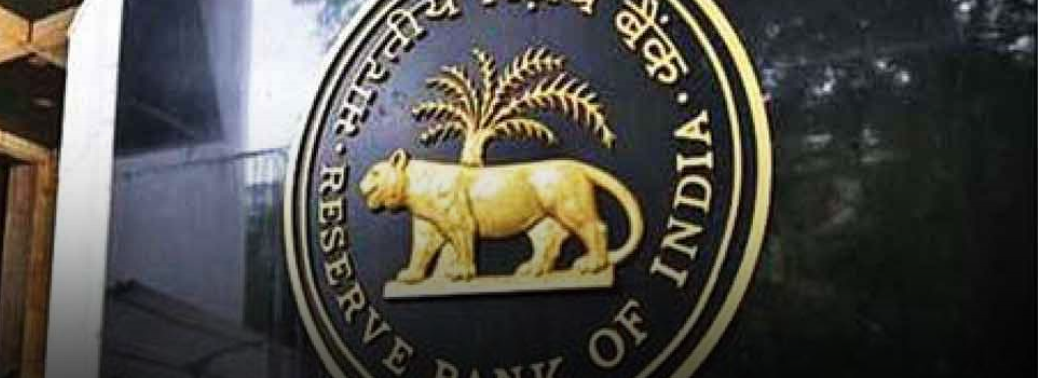
In News:
The Reserve Bank of India (RBI) said it would infuse Rs 12,500 crore into the financial system through op¬en market operations (OMO).
Explained:
- The central bank said it has decided to purchase certain government securities (gilt edged securities) under Open Market Operations (OMO) for an aggregate amount of Rs 12,500 crore on March 7, 2019 through multi-security auction using the multiple price method.
- The decision on OMO is based on an assessment of prevailing liquidity conditions and also of the durable liquidity needs going forward
- It further said the eligible participants should submit their offers in electronic format on RBI Core Banking Solution (E-Kuber) system
- 1. Open market operations are the sale and purchase of government securities and treasury bills by RBI or the central bank of the country.
- 2. The objective of OMO is to regulate the money supply in the economy.
- . When the RBI wants to increase the money supply in the economy, it purchases the government securities from the market and it sells government securities to suck out liquidity from the system.
- 4. RBI carries out the OMO through commercial banks and does not directly deal with the public. OMO is one of the tools that RBI uses to smoothen the liquidity conditions through the year and minimize its impact on the interest rate and inflation rate levels.
- 5. Buying of securities in the open market increases the supply of money. On the other hand, selling of securities reduces the volume of money with the public. To reduce the inflationary pressure, the RBI may sell securities in the open market.
- e-Kuber is the Core Banking Solution of Reserve Bank of India. E-Kuber provides the provision of a single current account for each bank across the country, with decentralised access to this account from anywhere-anytime using portal-based services in a safe manner. Core Banking Solutions (CBS) can be defined as a solution that enables banks to offer a multitude of customer-centric services on a 24×7 basis from a single location, supporting retail as well as corporate banking activities, as well as all possible delivery channels existing and proposed.
- The centralisation thus makes a “one-stop” shop for financial services a reality. Using CBS, customers can access their accounts from any branch, anywhere, irrespective of where they have physically opened their accounts.
- Almost all branches of commercial banks, including the Regional Rural Banks (RRBs), are brought into the core-banking fold. Core Banking Solutions (CBS) marked a paradigm shift as it made a bank’s particular branch customers, now bank customers as they can access their accounts from any branch for defined purposes. CBS links all branches of a bank and offers opportunities for information management, better customer service and improved risk management.
- e-Kuber enables ease of operations. The system also benefits state /central Governments as users. Some of the facilities offered include the provision of portal-based access which allows Government departments to access on anywhere-anytime basis and view their balances – of all types including the Ways and Means Advances, drawings, funds positions and the like – all in a consolidated manner so as to help them in better funds management.
- The capability of consolidating revenue collections by banks through the e-Kuber offers the potential for better flexibility for the Government in managing its finances apart from moving over towards higher levels of electronic banking.
Open Market Operations (OMO):
E-Kuber:
Earth Museum
07, Mar 2019

Prelims: Indian culture
- The government is planning to house them in one place an ‘Earth Museum’ for better conserving the prehistoric heritage,
About:
- From dinosaur fossils to pre-human skulls, India is home to a vast treasury of geological and palaeontological specimens that contain a wealth of scientific information about the planet and its history
- But these rare specimens are scattered in different labs all over the country.
- This museum will be modelled on the American Museum of Natural History, or the Smithsonian museum in the U.S. The museum, which will be set up as a public-private partnership, would be located somewhere in Delhi, Noida or Gurugram.
- Such a repository was necessary to make people aware of India’s palaeontological and geological wealth. “There is a lot of history in India, but somehow it hasn’t been communicated well.
- Another concern was that several collections of fossils and important geological specimens weren’t properly organised, and they survived only due to the efforts of individual researchers who maintained them within their labs.
- A single site, accessible to the public as well as researchers wanting to investigate rare and important finds, was necessary.
- The PSA led a meeting of the Prime Minister’s Science, Technology and Innovation Advisory Council (PM-STIAC) last November, where the need for such a museum was endorsed.
- A meeting of experts from the U.S., the U.K, and South Korea is scheduled to be held in Delhi in on this.
GSP Withdrawal
07, Mar 2019

Context:
- The US has announced that it intends to “terminate” India’s designation as a beneficiary of its Generalized System of Preferences (GSP).
What is GSP programme:
- The GSP, the largest and oldest US trade preference programme, allows duty-free entry for over 3,000 products from designated beneficiary countries. It was instituted on January 1, 1976, and authorised under the US Trade Act of 1974.
- India has been the biggest beneficiary of the GSP regime and accounted for over a quarter of the goods that got duty-free access into the US in 2017.
- Exports to the US from India under GSP — at $5.58 billion — were over 12% of India’s total goods exports of $45.2 billion to the US that year. The US goods trade deficit with India was $22.9 billion in 2017.

Indian Exports under GSP:

Possible Impact:
- India’s Department of Commerce feels the impact is “minimal”, given that Indian exporters were only receiving duty-free benefits of $190 million on the country’s overall GSP-related trade of $5.6 billion.
- Some experts feel the move will not have a major impact on India also because it has been diversifying its market in the Latin American and the African region and its trade with countries of the Global South has also been expanding at a “very competitive pace”.
- At the same time, the move could hit Indian exporters if it gives an edge to competitors in its top export categories to the US. The amount of price advantage India has versus competitor countries and what happens to their GSP privileges will determine the extent to which India’s exports will be impacted
CENTRE TO INCENTIVISE WORK-FROM-HOME JOBS
05, Mar 2019

In News:
The government is working on a scheme to push work-from-home jobs in the IT sector by offering financial incentives to both employees and employers.
Explained:
- Currently, the scheme is proposed for a three-year period till March 31, 2022, with an outlay of about
270 crore to create about 50,000 work-from-home jobs. - According to the report, the scheme aims to create about 50,000 work-from-home jobs, especially for women and differently-abled persons, in the three-year period till March 31, 2022.
- The objective behind incentivizing work-from-home jobs through policy-level initiatives can help in creating jobs in the information technology enabled services (ITES) while increasing the available talent pool for the sector.
- There is abundant talent pool in the country, especially women, who are not able to join full-time office jobs.
- Under the ‘work-from-home’ policy, the government may extend relaxation in labour laws. It can be similar to the exemptions given to start-ups under the Startup India programme.
- The report further suggested that the scheme may be launched as phase II of the IT Ministry’s India BPO Promotion Scheme that incentivises firms to set up operations in tier-2 and tier-3 cities in the country. It is distributed among each state in proportion to the state’s population with an outlay of Rs 493 crore.
- Due to stringent labor laws, the companies do not recruit people for work-from-home jobs on part-time basis, but on contract. For contract-based jobs, companies don’t need to provide PF and other job benefits. In 2016, the government had announced exemption for start-ups from nine labour laws, including the Payment of Gratuity Act, 1972, Contract.
- Labour (Regulation and Abolition) Act, 1970, Employees Provident Funds and Miscellaneous Provisions Act, 1952 and Employees State Insurance Act, 1948.
- Besides, it is proposed that employees be provided support for 50% of the cost of a laptop (₹10,000 cap) or smartphone (up to ₹5,000), along with up to ₹350 per month for broadband. Government is also thinking about offering salary-based incentives to incentivize employees to stick to work-from-home jobs.
- And also, that additional incentive would be given to women employees, differently-abled, SC/ST and those from aspirational (backward) districts.
- To avail benefits under the work-from-home scheme, employees will need to have an Aadhaar-linked Universal Account Number.
- For employers, among other things, the policy proposes to provide 50% of the actual expenditure on technical infrastructure required for enabling such jobs, with a cap of 10,000 per job.
‘BANKS’ LIQUIDITY DEFICIT STANDS AT RS 94,585 CRORE
05, Mar 2019

In News:
The average liquidity deficit in the banking system in the week ended February 28 moderated significantly to Rs 94,585 crore, against the deficit of Rs 1.28 lakh crore ‘an eight-week high’ in the preceding week.
Explained:
- Foreign portfolio investors (FPIs) have pulled out close to $1.3 billion from the bond markets in February. Increasing border tensions coupled with other emerging economies providing better yields have prompted foreign investors to pull out from Indian markets The banking sector continues to be in deficit for the 21st consecutive week, despite the liquidity infusion by the RBI through OMOs worth Rs 37,500 crore in February. The central bank had conducted OMOs worth Rs 50,000 crore in December and January. According to a CARE Ratings report, the fall in deficit by Rs 34,266 crore was on account of higher government spending towards salaries and pensions, and liquidity infusion of Rs 12,500 crore through open market operations (OMOs) by the Reserve Bank of India (RBI). Non-food credit or loans to individuals and companies grew 14.3 per cent year-on-year (y-o-y) during the fortnight ended February 15, marginally slower than 14.4 per cent y-o-y reported in the previous fortnight.
- It has surpassed the deposit growth, recorded at 10.2 per cent. The lower deposit growth amid higher credit growth has been a factor contributing to the liquidity constrains in the banking system.
Foreign Portfolio Investment:
- The term FPI was defined to align the nomenclature of categorizing investments of foreign investors in line with international practice. FPI stands for those investors who hold a short-term view on the company, in contrast to Foreign Direct Investors (FDI).
- FPIs generally participate through the stock markets and gets in and out of a particular stock at much faster frequencies. Short term view is associated often with lower stake in companies. Hence, globally FPIs are defined as those who hold less than 10% in a company. In India, the hitherto existing closest possible definition to an FPI was Foreign Institutional Investor.
Features Of FPI:
- Portfolio Investment by any single investor or investor group cannot exceed 10% of the equity of an Indian company, beyond which it will now be treated as FDI.
- FPIs are not allowed to invest in unlisted shares. In respect of those securities, where FPIs are not allowed to invest no fresh purchase shall be allowed as FPI. They can only sell their existing investments in such securities.
- However, an exception has been made by permitting them to invest in unlisted non-convertible debentures/bonds issued by an Indian company in the infrastructure sector, where ‘infrastructure’ is defined in terms of the extant External Commercial Borrowings (ECB) guidelines; FPIs are permitted to invest in Government Securities with a minimum residual maturity of one year. However, FPIs have been prohibited from investing in T-Bills.
- FPI can invest in privately placed bonds if it is listed within 15 day.
Liquidity measurements:
The total stock of money in circulation among the public at a particular point of time is called money supply. The measures of money supply in India are classified into four categories M1, M2, M3 and M4 along with M0. This classification was introduced in April 1977 by Reserve Bank of India.
1. Reserve Money (M0):
It is also known as High-Powered Money, monetary base, base money etc.
M0 = Currency in Circulation + Bankers’ Deposits with RBI + Other deposits with RBI
It is the monetary base of economy.
2. Narrow Money (M1):
M1 = Currency with public + Demand deposits with the Banking system (current account, saving account) + Other deposits with RBI
3. M2 = M1 + Savings deposits of post office savings banks
4. Broad Money (M3):
M3 = M1 + Time deposits with the banking system
5. M4 = M3 + All deposits with post office savings banks
- The liquidity means how fast an instrument can be converted into cash. The liquidity of these measures are in order M1>M2>M3>M4 i.e. M1 is most liquid and M4 is least liquid. It is the relationship between monetary base and money supply in economy. The amount money that banks generates with each unit (Rs in case of India) of money. It is the ratio of deposits to the reserves in the banking system.
- For example, let’s say total deposit in banking system is $100 and reserve ratio requirement is 10%.
- The banks can lend 90% of deposit i.e. $90. This $90 that banks will lend to its customers will ultimately be deposited in another bank which can further lend 90% of that i.e. $81 and cycle continues.
Mudra: Rs. 1 Lakh Cr. More Has to be Lent
04, Mar 2019
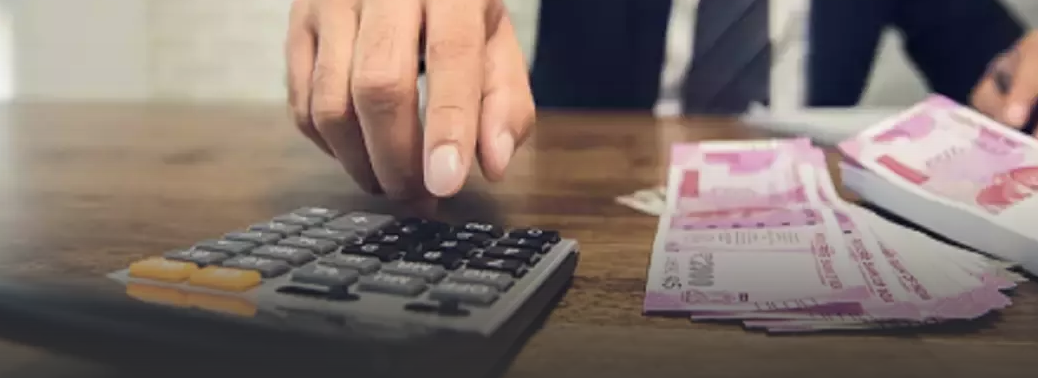
In News:
- Despite all the push given by the Central government to the Pradhan Mantri MUDRA Yojana and the ‘MSME loan in 59 minutes’ scheme, banks are still struggling to meet the Rs 3 lakh crore target for lending Mudra loans, as only about Rs 2 lakh crore have been disbursed so far.
Explained:
- The government, in Budget 2018-19, said it intends to disburse loans of up to Rs 3 lakh crore in the current fiscal. However, as on February 22, the total loan disbursed under the Micro Units Development and Refinance Agency Ltd (Mudra) scheme stood at Rs 2,02,668.9 crore as against sanctioned amount of Rs 2,10,759.51 crore.
- The scheme was launched on April 8, 2015, for providing loans up to Rs 10 lakh to the non-corporate, non-farm, small/micro enterprises. Loans under Mudra are given under the Shishu (up to Rs 50,000), Kishore (Rs 50,000 to Rs 5 lakh) and Tarun (Rs 5-10 lakh) categories.
- In 2017-18, lending at Rs 2,46,437.40 crore had exceeded the target. In fact, MUDRA lending had exceeded targets in all the previous years.
- However, with less than a month left in the current fiscal and banks falling short of the target this year, the department of financial services (DFS) is already putting pressure on them. And also that the increasing number of banks under Prompt Corrective Action and rising bad loans under the MUDRA scheme have dragged the lending.
- NPAs of state-run banks under the Mudra scheme rose to Rs 7,277 crore as of March 2018, against Rs 3,790 crore in March 2017 and Rs 597 crore in March 2016.
Mudra:
- Pradhan Mantri Mudra Yojana (PMMY) is a flagship scheme of Government of India to “fund the unfunded” by bringing such enterprises to the formal financial system and extending affordable credit to them. It enables a small borrower to borrow from all Public Sector Banks such as PSU Banks, Regional Rural Banks and Cooperative Banks, Private Sector Banks, Foreign Banks, Micro Finance Institutions (MFI) and Non-Banking Finance Companies (NBFC) for loans upto Rs 10 lakhs for non-farm income generating activities.
Eligibility:
- Any Indian Citizen who has a business plan for a non-farm sector income generating activity such as manufacturing, processing, trading or service sector and whose credit need is less than Rs 10 lakh can approach either a Bank, MFI, or NBFC for availing of Micro Units Development & Refinance Agency Ltd. (MUDRA) loans under Pradhan Mantri Mudra Yojana (PMMY).
FPI Net Inflows Into Stocks At 15-Month High
04, Mar 2019
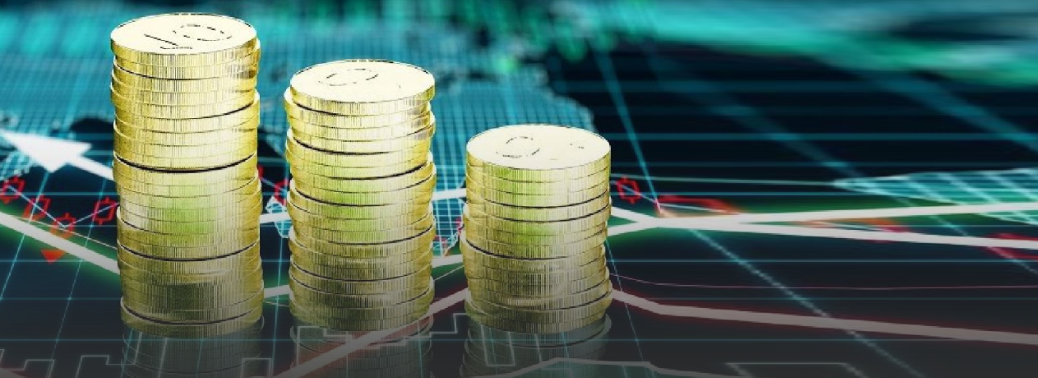
In News:
- Foreign portfolio investors (FPIs) poured in close to Rs. 17,220 crores on a net basis into Indian equities in February, the highest since November 2017, amid clarity on government spending plans and positive sentiment.
Explained:
- They had pumped in a net amount of around Rs. 19,728 crores into Indian stocks in November 2017. As per the latest data from the depositories, foreign investors pumped in Rs. 1,17,899.79 crore into equities and pulled out Rs. 1,00,680.17 crore in February, a net investment of Rs. 17,220 crores into the stock market.
Foreign portfolio investment:
- The term FPI was defined to align the nomenclature of categorizing investments of foreign investors in line with international practice. FPI stands for those investors who hold a short-term view on the company, in contrast to Foreign Direct Investors (FDI).
- FPIs generally participate through the stock markets and gets in and out of a particular stock at much faster frequencies. Short term view is associated often with lower stake in companies. Hence, globally FPIs are defined as those who hold less than 10% in a company. In India, the hitherto existing closest possible definition to an FPI was Foreign Institutional Investor.
Features of FPI:
- Portfolio Investment by any single investor or investor group cannot exceed 10% of the equity of an Indian company, beyond which it will now be treated as FDI.
- FPIs are not allowed to invest in unlisted shares. In respect of those securities, where FPIs are not allowed to invest no fresh purchase shall be allowed as FPI. They can only sell their existing investments in such securities.
- However, an exception has been made by permitting them to invest in unlisted non-convertible debentures/bonds issued by an Indian company in the infrastructure sector, where ‘infrastructure’ is defined in terms of the extant External Commercial Borrowings (ECB) guidelines; FPIs are permitted to invest in Government Securities with a minimum residual maturity of one year. However, FPIs have been prohibited from investing in T-Bills.
- FPI can invest in privately placed bonds if it is listed within 15 day
One Nation One Card Scheme
02, Mar 2019

In News
- PM Narendra Modi Monday launched the indigenously-developed National Common Mobility Card (NCMC) to enable people to pay multiple kinds of transport charges, including metro services and toll tax, across the country.
About:
- Dubbed as ‘One Nation One Card’, the inter-operable transport card would allow the holders to pay for their bus travel, toll taxes, parking charges, retail shopping and even withdraw money.
- This card runs on RuPay card and it will eliminate all your travel related problems. Many a times, it do not have change to pay in cash while travelling in metro, bus or train, or for toll and parking. To overcome this issue, an automatic fare collection system was introduced. Since systems were made by different players, a card issued in one city did not work in another city.
- Now, the dream of ‘One Nation One Card’ has been realised. People can also withdraw money using this Common Mobility Card.
- This RuPay card can be used for travelling in metros in any part of the country. In simple terms, RuPay card merged with the mobility card With the advent of this indigenously-developed and one-of-its-kind card, the country is no longer required to be dependent on foreign technology. Now, we have this ‘Made in India’ card. Only a select few countries have this technology of ‘One Nation One Card’.
- The stored value on card supports offline transaction across all travel needs with minimal financial risk to involved stake-holders. The service area feature of this card supports operator specific applications e.g. monthly passes, season tickets etc.
- The major challenge associated with the Automatic Fare Collection System (AFC) implementation in the country until now is the lack of indigenous solution provider, it stated. Till now, AFC systems deployed at various Metros are from foreign players. In order to avoid the vendor lock-in and create an inter-operable system, there was a need to develop indigenous standards and AFC system under Make in India initiative. In order to ensure a seamless travel across metros and other transport systems, in addition to retail shopping and purchases, the Ministry of Housing & Urban Affairs (MoHUA) came out with the NCMC program.
India Eyes Alternative Markets For Exporting Tea Meant To Be Shipped To Pak
02, Mar 2019

In News:
- Amid the ongoing tensions between India and Pakistan, and India’s withdrawal of the most favoured nation (MFN) status to Pakistan, tea exporters and producers are looking at alternative markets such as the Commonwealth of Independent States (CIS) nations and West Asian countries to sell their produce.
Explained:
- Usually, Pakistan buys average quality tea from India, comprising mostly of dust and fanning, priced around $1.45 a kilo. Besides, tea is also routed to Pakistan via Dubai.
- The type of tea that goes to Pakistan can be routed and sold in Egypt, Russia, Kazakhstan, Ukraine and other east European nations.
- Exporters are unsure how Indo-Pak relations will play up in the near term, which might affect the payments from the sales.
CIS:
- The Commonwealth of Independent States (CIS) is a regional intergovernmental organization focused on cooperation on political, economic, environmental, humanitarian, cultural and other issues between a number of former Soviet Republics.
- On December 8, 1991 in Minsk the Agreement on the Establishment of the Commonwealth of Independent States was signed by the heads of Belarus, Russia and Ukraine. According to the CIS Charter, the Council of the Heads of State is the supreme body of the Commonwealth, which discusses and resolves fundamental issues related to the activities of member states in the field of their common interests.
- Meetings of the Council of the Heads of Government, the Council of Ministers of Foreign Affairs and the Economic Council of the CIS are also held on a regular basis to discuss issues of interstate cooperation within the framework of the CIS.
Membership:
- 12 States — Armenia, Azerbaijan, Belarus, Georgia, Kazakhstan, Kyrgyzstan, Moldova, Russia, Tajikistan, Turkmenistan, Ukraine, and Uzbekistan.
Cumulative Spending On Csr Crosses RS. 50,000 Croress
01, Mar 2019

In News:
- According to Crisil Foundation, Cumulative spending on corporate social responsibility (CSR) has crossed the Rs. 50,000-Crores-mark four years after the legislative mandate was implemented.
Explained:
- A Crisil estimate shows spending by listed companies rose 12% year-on-year in fiscal 2018 to Rs. 10,000 Crores, for the first time. Assuming the same rate of growth, spending by unlisted companies is estimated to be Rs. 5,100 Crores for the year, taking the total for the year to Rs. 15,100 Crores.
- With this, cumulative spending over the four years stands at Rs. 34,100 Crores for listed companies and Rs. 18,900 Crores for unlisted ones, totalling Rs. 53,000 Crores.
- While education and skill development and healthcare and sanitation remained the top spending heads, two areas grew at a fast clip — spending on national heritage protection has tripled and that on sports promotion has more than doubled since FY 2015.
What is Corporate Social Responsibility (CSR)?
- Corporate Social Responsibility (also known as CSR, corporate conscience, and corporate citizenship) is the integration of socially beneficial programs and practices into a corporation’s business model and culture.
- CSR aims to increase long-term profits for online and offline businesses by enabling them to become more efficient and attract positive attention for their efforts.
- India is the first country in the world to make corporate social responsibility (CSR) mandatory, following an amendment to The Company Act, 2013 in April 2014.
- The amendment notified in the Schedule VII of the Companies Act advocates that those companies with a net worth of US$73 million (Rs 4.96 billion) or more, or an annual turnover of US$146 million (Rs 9.92 billion) or more, or a net profit of US$732,654 (Rs 50 million) or more during a financial year, shall earmark 2 percent of average net profits of three years towards CSR.
Assam Oil Hub To Southeast Asia
01, Mar 2019

In News
- With the Centre planning to raise the capacity of the four Assam refineries from the existing 7 million tonnes per annum (MTPA) to 16 MTPA approximately in the next 10 years, the state is also set to become the petroleum hub for Southeast Asia.
About:
- The government has drawn up a plan to raise the capacity of Assam’s four refineries to 16 MTPA. With more quantity of crude oil to be pumped into the state from Nigeria and West Africa, Assam will become India’s petroleum hub for the entire Southeast Asian region.
- The Centre, in its Hydrocrabon Vision 2030 for the Northeast, has envisaged investing Rs 1.30 lakh crore in the petroleum sector in the region in the next 14 years, of which Rs 80,000 crore will be invested in Assam alone. In the current financial year, we are investing about Rs 6,000 crore in Assam.
- The Hydrocarbon Vision 2030 for Northeast also envisages to increase the storage capacity for petroleum products and LPG within the region, for which a network of 5,000 km of pipelines was also in the offing.
- While Assam’s crude oil reserves being limited, the requirement of the four refineries – Digboi, Numaligarh, Guwahati and Bongaigaon – will be met through the import from Nigeria and West Africa. The imported crude oil will be pumped into these refineries through the Paradip-Haldia-Barauni-Guwahati pipeline.
- The petroleum ministry agreed to the Assam government’s proposal for allotment of more natural gas to two existing power plants of the state which are currently undergoing major machinery replacement.
GOVT. DETECTS GST EVASION
28, Feb 2019
In News:
- The government has detected Rs. 20,000 crore worth GST evasion so far, this fiscal.
Explained:
- Central Board of Indirect Taxes and Customs said that between April-February 2018-19,GST evasion worth Rs. 20,000 crores had been detected, of which Rs. 10,000 crores were recovered.
- CBDT said the tax officers detected a fake invoice worth Rs. 1,500 crores, which was used to claim illegal GST credit of Rs. 75 crores. And also, already recovered Rs. 25 crore and the rest are on the way.
- Stating that only 5-10% of the businesses are “black sheep” and bring bad name to the industry and added that the government would take more measures to increase compliance, and act against evaders in a way such that genuine businesses do not suffer.
- The department would soon call a meeting of the representatives of the real estate sector to understand transition issues faced by the sector post reduction in GST rates.
- The GST Council, recently cut tax rates on under-construction apartments and affordable housing to 5% and 1% respectively.
- However, builders will not be able to claim credit for the taxes paid on inputs, such as steel, cement. The earlier GST rate on under-construction apartments and affordable housing was 12% and 8% with input tax credit (ITC), respectively.
CENTRE BRINGS 42 NON-SCHEDULED CANCER DRUGS UNDER PRICE CONTROL
28, Feb 2019
In News:
- The government said it had brought 42 non-scheduled anti-cancer drugs under price control, capping trade margin at 30%, which would reduce their retail prices by up to 85%.
Explained:
- The National Pharmaceutical Pricing Authority (NPPA) has invoked extraordinary powers in public interest, under Para 19 of the Drugs (Prices Control) Order, 2013 to bring 42 non-scheduled anti-cancer drugs under price control through trade margin rationalization. Invoking paragraph 19 of DPCO, 2013, the government hereby puts a cap on trade margin of 30% and directs manufacturers to fix their retail price based on price at first point of sale of product of the non-scheduled formulations containing any of the 42 drugs.
- As per data available with NPPA, the MRP for 105 brands will be reduced up to 85%, entailing minimum savings of Rs. 105 crore to consumers, it added. Currently, 57 anti-cancer drugs are under price control as scheduled formulations. Now, 42 non-scheduled anti-cancer medicines have been selected for price regulation by restricting trade margin on the selling price (MRP) up to 30%
- These would cover 72 formulations and 355 brands as per data available with NPPA. More data is being collected from hospitals and manufacturers to finalize the list.
- The drug manufacturers have been given seven days to recalculate the prices and inform the NPPA, state drug controllers, stockists and retailers, it said. The revised prices shall come into effect from March, 8.
- Non-scheduled drugs are allowed an increase of up to 10% in prices every year, which is monitored by the NPPA.
- The NPPA currently fixes prices of drugs placed in the National List of Essential Medicines (NLEM) under Schedule-I of the DPCO. So far, around 1,000 drugs have been brought under price control under the initiative.
National Pharmaceutical Pricing Authority (NPPA):
- The organization is also entrusted with the task of recovering amounts overcharged by manufacturers for the controlled drugs from the consumers.
- It also monitors the prices of decontrolled drugs in order to keep them at reasonable levels.
- NPPA is an organization of the Government of India which was established, inter alia,to fix/ revise the prices of controlled bulk drugs and formulations and to enforce prices and availability of the medicines in the country, under the Drugs (Prices Control) Order,1995.
- It comes under the ministry of chemical and fertilizers
Functions of National Pharmaceutical Pricing Authority:
1. To implement and enforce the provisions of the Drugs (Prices Control) Order in accordance with the powers delegated to it.
2. To deal with all legal matters arising out of the decisions of the Authority;
3. To monitor the availability of drugs, identify shortages, if any, and to take remedial steps;
4. To collect/ maintain data on production, exports and imports, market share of individual companies, profitability of companies etc, for bulk drugs and formulations;
5. To undertake and/ or sponsor relevant studies in respect of pricing of drugs/ pharmaceuticals;
6. To recruit/ appoint the officers and other staff members of the Authority, as per rules and procedures laid down by the Government;
7. To render advice to the Central Government on changes/ revisions in the drug policy;
8. To render assistance to the Central Government in the parliamentary matters relating to the drug pricing.
RBI Takes 3 Banks off Prompt corrective Action Framework
27, Feb 2019
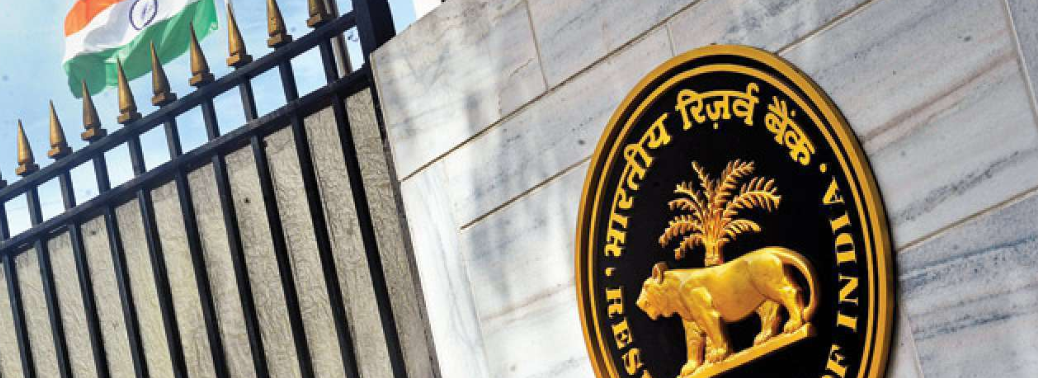
In News:
Three more banks — Allahabad Bank and Corporation Bank, from the public sector, and Dhanlaxmi Bank from the private sector — are now out of the Reserve Bank of India’s (RBI) prompt and corrective action (PCA) framework.
Explained:
- There are another six banks that are still under PCA framework. IDBI Bank, UCO Bank, Central Bank of India, Indian Overseas Bank, Dena Bank, United Bank of India are still under the PCA framework
- The recent capital infusion of Rs 48,239 crore in 12 public sector banks (PSBs) will help Corporation Bank 6.98 % and Allahabad Bank 4.55 % to come out of the Prompt Corrective Action (PCA) framework
- This has shored up their capital funds and also increased their loan loss provision to ensure that the PCA parameters were complied with
- RBI also decided to take Dhanlaxmi Bank out of PCA, as the bank was found not to be breaching any of the risk thresholds of the framework.
- Since commencement of clean-up in 2015-16, the recapitalization has crossed over Rs 3 lakh crore through mix of budgetary support and market raising helping banks to make adequate provisions for the bad loans.
- As a result, there has been reversal in the deteriorating bad loan situation and there has been record loan recovery during the current fiscal.
- PCA framework gets triggered when a bank breaches one of the three risk thresholds.
- Crossing 6% net NPA is one of them.
PCA Framework:
- PCA framework was started in 2002 to regulate activities of the banking sector
- Its objective is to facilitate banks to take corrective measures including those prescribed by RBI, in timely manner to restore their financial health.
- PCA framework is supervisory tool of RBI, which involves monitoring of certain performance indicators of banks to check their financial health as early warning exercise and to ensure that banks don’t go bankrupted
- The PCA framework would apply without exception to all banks operating in India including small banks and foreign banks operating through branches or subsidiaries based on breach of risk thresholds of identified indicators.
- The PCA framework is applicable only to commercial banks and not extended to co-operative banks, non-banking financial companies (NBFCs) and FMIs
- PCA framework is invoked on banks when they breach any of three key regulatory trigger points (or thresholds).
- They are capital to risk weighted assets ratio, net non-performing assets (NPA) and Return on Assets (RoA), Asset Quality, Profitability, Leverage – of the banks.
- It also provides opportunity to RBI to pay focused attention on such banks by engaging.
- With focusing more closely in those areas.
- Depending on risk thresholds set in PCA restrictions, mandatory and discretionary framework levels.
- framework, banks are put in two type of depending upon their placement in PCA
- The mandatory restrictions are on dividend, branch expansion, director’s compensation while discretionary restriction include curbs on lending and deposits. At present, 6 weak PSBs out of the 21 State-owned banks are under the PCA.
Fiscal Deficit in January at 12
27, Feb 2019
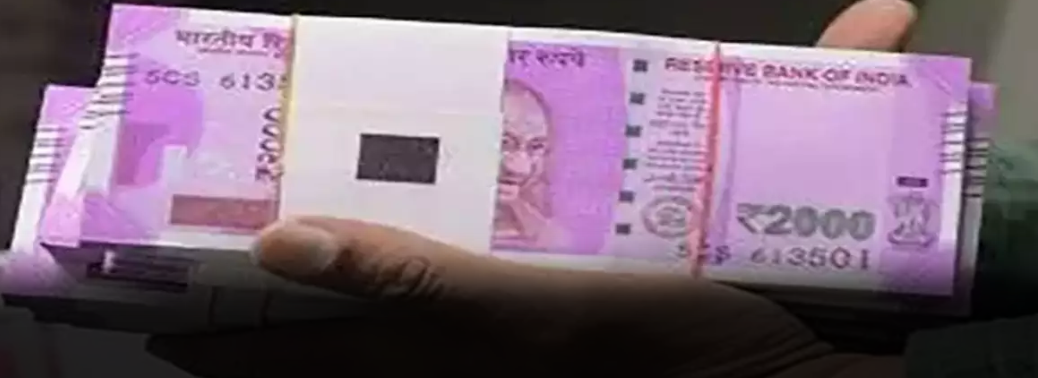
In News:
- According to official data, Fiscal deficit widened in January to Rs. 7.7 lakh crore, or 121.5% of the Budget Estimates for the full year.
Explained:
- The fiscal deficit stood at Rs. 7 lakh crores in the April-December 2018 period, which was 112.4% of the full year target. Last year, the fiscal deficit in the April to January period was at 113.7% of the full year target. The fiscal deficit figure works out to 5.5% of GDP for the year as per the first advance estimate released by the government in January, the latest data available.
- According to government that the fiscal deficit would come to 3.4% of GDP in 2018-19, marginally higher than the targeted 3.3%
- The government’s total receipts were at Rs. 12.30 lakh crore in the April to January period, which is 67.5% of the target for the year. This figure was 71.7% of the budget estimate during the same period in the previous year.
- Within this, the government’s total tax receipts stood at Rs. 10.2 lakh crore in the April to January period or 68.7% of the budgeted target for the full year, with just two months left in the financial year. The total expenditure during the period was Rs. 20 lakh crore, which is 81.5% of the budgeted target for the full year.
What is fiscal deficit?
- The difference between total revenue and total expenditure of the government is termed as fiscal deficit. It is an indication of the total borrowings needed by the government. While calculating the total revenue, borrowings are not included.
FRBM Target:
- The Fiscal Responsibility and Budget Management (FRBM) Act was enacted in 2003 which set targets for the government to reduce fiscal deficits. The targets were put off several times. In May 2016, the government set up a committee under NK Singh to review the FRBM Act.
- The government believed the targets were too rigid. The committee recommended that the government should target a fiscal deficit of 3 per cent of the GDP in years up to March 31, 2020 cut it to 2.8 per cent in 2020-21 and to 2.5 per cent in 2020-21 and to 2.5 per cent by 2023.
Organised retail in India may Double by 2021
27, Feb 2019

In News:
- According to a latest joint report by Deloitte and the Retailers Association of India (RAI), Strong macroeconomic factors coupled with robust demographics and Internet penetration will fuel the growth of the retail market in India, which is third largest in Asia and fourth-largest globally after U.S., China and Japan.
- As Internet penetration increases in the country and more international retailers start operating in India, the share of organized retail market would increase from about 12% in 2017 to about 22-25% by 2021, which would partly also be driven by the growth of e-commerce market from $24 billion in 2017 to $84 billion in 2021.
- The report pegs the growth in e-commerce market to factors like growing Internet penetration and increased usage of smartphones among others.
- The number of online shoppers would increase from the current 15% of the online
- population to 50% by 2026,” stated the report while adding that smartphone users are
- expected to increase from 260 million in 2016 to around 450 million by 2021 that is also
- likely to drive the m-commerce sales from $10.5 billion in 2016 to $38 billion in 2020
- The retail market is expected to grow from $795 billion in 2017 to $1.2 trillion by 2021, as per the report.
- India’s consumption has grown at 13% in the last decade and is likely to continue to grow at 12% over the next 10 years — from Rs. 33 trillion in 2008 to Rs. 330 trillion in 2028.
War Memorial
26, Feb 2019
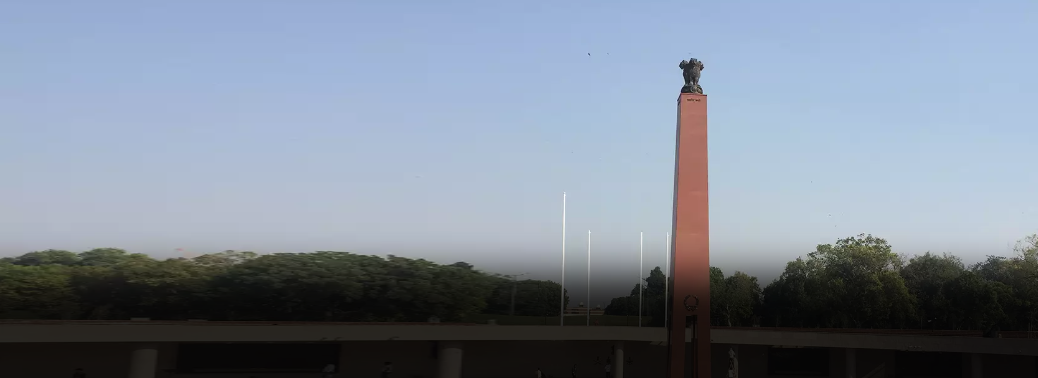
- Prime Minister Narendra Modi dedicated a new National War Memorial, situated in the India Gate complex in New Delhi, to the nation.
About:
- PM lit the flame positioned at the bottom of the stone obelisk to pay homage to the soldiers who died in the line of duty.
- The National War Memorial complex, spread across 40 acres, includes a central obelisk, an eternal flame, and six bronze murals depicting famous battles fought by the Army, the Air Force and the Navy.
- The design of the National War Memorial has a layout comprising four concentric circles, namely, the ‘Amar Chakra’ or Circle of Immortality, the ‘Veerta Chakra’ or Circle of Bravery, the ‘Tyag Chakra’ or Circle of Sacrifice, and the ‘Rakshak Chakra’ or Circle of Protection.
- Statues of 21 awardees of Param Veer Chakra have also been installed in the National War Memorial. This includes those of the three recipients of the country’s highest gallantry award-Subedar Major (Hony Capt) Bana Singh (Retired), Subedar Major Yogendra Singh Yadav and Subedar Sanjay Kumar. The National War Memorial will not replace the Amar Jawan Jyoti which was built in 1972 underneath the India Gate arch to commemorate
- soldiers killed in the Indo-Pak War of 1971. The memorial will remain intact, a senior army officer told the news agency PTI.
- The national soldiers” memorial is a symbol of the nation’s gratitude to those men who made the supreme sacrifice after we gained Independence.
- The names of 25,942 fallen heroes, along with their rank and regiment, are inscribed in the 16 walls of the memorial.
- Apart from the soldiers who were killed in the wars in 1947, 1962, 1965, 1971 and 1999, the names of the soldiers who died while on Indian Peace Keeping Force Operations in Srilanka is also inscribed on the memorial.
Western Powers on Pulwama Attack
26, Feb 2019
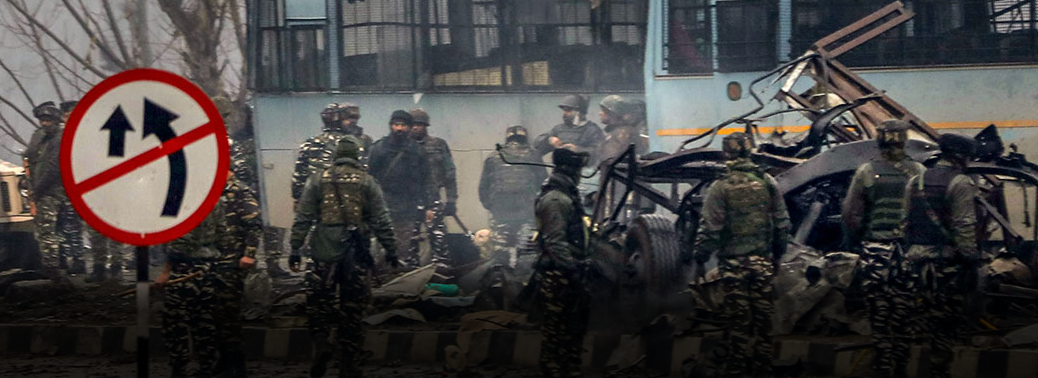
- The European Union (EU) and Germany have asked Pakistan to act on terror in a call made by Pakistani foreign minister to EU’s and Germany foreign minister to brief about the situation of heightened tension post-Pulwama attack.
About:
- The attack on 14th February killed more than 40 CRPF personnel was claimed by Pakistan-based terror group Jaish-e-Mohammad (JeM).
- EU High Representative for foreign affairs and security policy had called Pakistan to not only act on United Nations listed terrorist but also individuals.
- She had highlighted the “need to continue addressing terrorism including clear and sustained actions targeting not only all UN-listed transnational terrorist groups but also individuals claiming responsibility for such attacks.”
- In a press release issued by EU it “stressed the urgency to de-escalate the situation” arising between the two nuclear powers India and Pakistan.
- In a tweet, German’s foriegn ministry said, “Pakistan resolutely needs to put a stop to cross-border terrorism.”
- The tweet also called on India and Pakistan “to work to de-escalate the situation.” “The European Union’s policy has always been to promote a dialogue between Pakistan and India to sort out differences… [Pakistan] needs to continue addressing terrorism including clear and sustained actions targeting not only all UN-listed terrorist groups but also individuals claiming responsibility for such attacks,” the statement said.
- The statements shared a sharp tone in telling Pakistan to act against the Jaish-e-Mohammad, Lashkar-e-Taiba and other banned groups, something welcomed by External Affairs Ministry officials.
Pakistan Version
- But what is interesting to note is, the release issued by Pakistan’s Ministry of foreign affairs (MOFA) on the same conversations makes no mention of terror.
- Instead, it said that the Pakistani foreign minister has expressed his readiness to his EU and German counterparts to investigate the Pulwama terror attack if India shares “actionable intelligence” and went on to rake the Kashmir issue.
- Pakistani foriegn Minister post-Pulwama has been calling countries across the world but none of the releases by Pakistani foriegn ministry mentions the issue of terror.
US:
- In August of 2018 US secretary of state, had called newly-elected Pakistani Prime Minister Imran Khan asking to act on terror among other things according to a readout by United States- State Department.
- The Pak Mofa was quick to point out publically in a tweet saying this is “factually incorrect statement issued by the US State Department” but the state department continued to stand by its read-out.
- Calling on Pakistan to take “clear and sustainable” actions against terror groups including those who have taken responsibility for the Pulwama attack, the European Union joined a number of international entities attempting to defuse tensions between New Delhi and Islamabad over the weekend.
Banks may set Repo Rate as Benchmark
26, Feb 2019
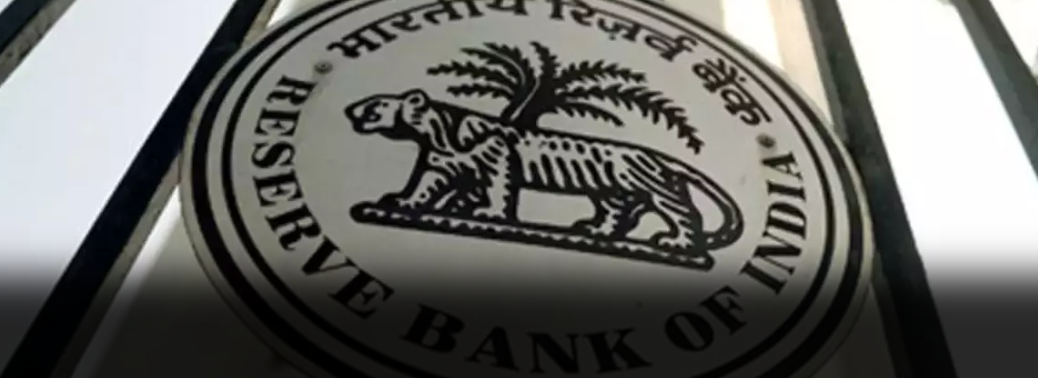
In News:
- Most commercial banks in India are likely to select RBI’s repo rate as the external benchmark to decide their lending rates, from April 1. The repo rate is the key policy rate of the Reserve Bank of India (RBI).
Explained:
- The banking regulator had asked the banks to move to an external benchmark for loan pricing from April 1, a move expected to improve monetary transmission as lenders had, in the past, been found reluctant to reduce lending rate. Banks had four options from which to choose the external benchmark: the repo rate, the 91-day treasury bill, the 182-day T-bill or any other benchmark interest rate produced by the Financial Benchmarks India Private Ltd (FBIL).
- The marginal cost of fund-based lending rate (MCLR) is currently the benchmark for all loan rates. Banks typically add a spread to the MCLR while pricing loans for homes and automobiles.
- For the new benchmark, the central bank has mandated that the spread over the benchmark rate — to be decided by banks at the inception of the loan — should remain unchanged through the life of the loan, unless the borrower’s credit assessment undergoes a substantial change and as agreed upon in the loan contract.
- If the lending rates are linked to the repo rate, any change in the repo rate will immediately impact the home and auto loan rates, since RBI has mandated the spread to remain fixed over the life of the loan.
- Many banks have opposed the move to shift to a new external benchmark for loan pricing on grounds that their cost of funds is not linked to these benchmarks and that without a fall in the costs, it would not be possible to change the rates.
GST cut may boost Realty demand
25, Feb 2019

In News:
- The 33rd reconvened meeting of the Goods and Services Tax (GST) Council cut the tax rate for under-construction housing to 5 per cent (without input tax credit) from the present effective rate of 12 per cent (after one-third abatement of land). For affordable housing, the GST rate was reduced to 1 per cent from effective 8 per cent. The new rates will take effect on 1 April.
Explained:
- The reduction in the GST rates for under-construction projects is the most decisive move by the GST Council with a clear focus on demand stimulation.
- This move will give the necessary fillip to the demand in under-construction segment, which has been suffering from low sales levels for last many quarters.
- The elimination of input credit tax benefit may hit profitability for the supply side; however, the potential demand generation as a result of this move will far outweigh any negative aspects leading to greater sales numbers and revenues
- The reduction in GST can potentially reduce the buyers’ payout by 6%-7% on the overall purchase, depending on the category. The increase in sales will bring down the unsold inventory which has been afflicting the real estate sector.
- Under-construction properties priced up to ₹45 lakh and measuring 60 sq metre in metros and 90 sq metre in non-metro cities would qualify as affordable housing projects for the purpose of GST relief in metro cities as well as non-metro cities.
India to Reduce Dependence on Imports of API
24, Feb 2019
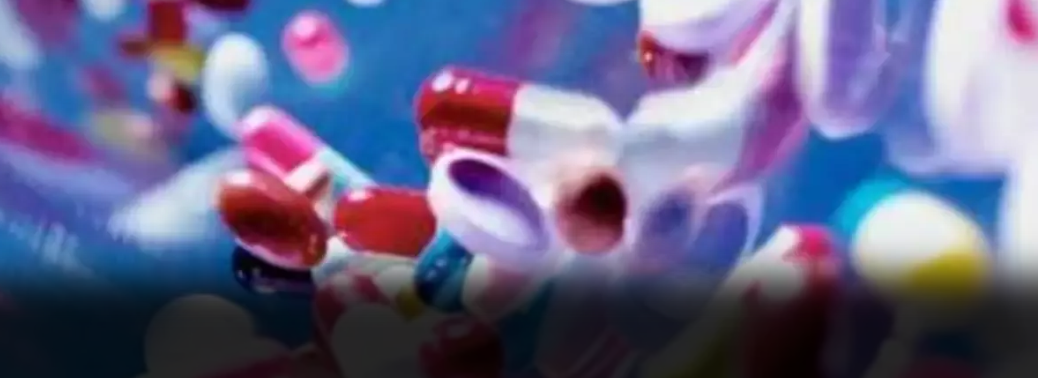
In News:
India is taking several steps to reduce its dependence on imports of active pharmaceutical ingredients (APIs), a commonly used raw material for drugs, by manufacturing it within the country.
Explained:
- Domestic drug manufacturers, which mostly import APIs from China, has seen a sharp spike in the prices of these raw materials after the Chinese government shut down many API producing plants owing to environmental concerns.
- This had prompted pharmaceutical lobby group to demand for hike in prices of medicines that are currently under the price control.
- The fourth international conference on pharmaceuticals and medical devices-‘India Pharma 2019 & India Medical Devices 2019’
- Currently, domestic pharmaceutical industry is valued at over $34 billion with half of the earnings coming from exports. India is also one of the leading producers of generic drugs in the world.
What is API?
- The aforementioned API is the primary ingredient. Other ingredients are commonly known as “excipients” and these substances are always required to be biologically safe, often making up a variable fraction of the drug product.
- Active pharmaceutical ingredients or APIs can be defined as the chemicals used to manufacture pharmaceutical drugs.
- The active ingredient (AI) is the substance or substances that are biologically active within the drug and is the specific component responsible for the desired effect it has on the individual taking it. Any drug or medication is composed of two components. The first is the API – which is the central ingredient.
- The second is known as the excipient, which is the inactive substance that serves as the vehicle for the API itself.
- If the drug is in a syrup form, then the excipient is the liquid that has been used to make it as such.
BIO-ATF
23, Feb 2019

- The Dehradun-based Indian Institute of Petroleum has successfully finished a pilot test to convert used cooking oil into bio-aviation turbine fuel (Bio-ATF), which can be blended with conventional ATF and used as aircraft fuel.
About:
- The Institute collected used cooking oil from caterers and hotels in Dehradun for the pilot, which has now set the platform for commercial use of the technology.
- The chemical composition of the used cooking oil is identical to other plant-based oils that have been converted to Bio-ATF.
- The Bio-ATF derived from used cooking oil is yet to be tested on a flight. The pilot test has proven that it is very similar to Bio-ATF derived from jatropha oil. A large quantity of Bio-ATF is needed for testing on an actual flight. So far it haven’t built a stock of used cooking oil large enough to produce the quantity of Bio-ATF required. But in the next month.
- The test assumes importance as the Food Safety and Standards Authority of India (FSSAI) has launched the Repurpose Cooking Oil (RUCO) initiative to collect and convert used cooking oil into bio-fuel. As many as 64 companies in 101 locations across the country have been identified for the purpose by FSSAI.
- The food safety body says that by 2020, it should be possible to recover about 220 crore litres of used cooking oil for conversion into bio-fuel.
- The CSIR-Indian Institute of Petroleum is looking for partners to commercialise the technology.
Significance:
- Biojet reduces greenhouse gas emissions by more than 60 percent compared with standard fossil jet fuel, one of the key reasons it has been accredited as part of BP’s Advancing Low Carbon programme which aims to recognise and encourage low carbon action across the company.
- Aviation is a significant source of greenhouse gases. Today, aviation accounts for about two per cent of global emissions. That is not a huge percentage, but aviation is one of the only sectors of the economy whose emissions look set to grow. It will become three per cent by around 2050 if no action is taken.
- The International Air Transport Association has set a target of cutting aviation’s net carbon dioxide emissions by 50 per cent by 2050, relative to 2005 levels. As part of this, a scheme called CORSIA aims to cut emissions from international flights, by forcing operators to pay to offset their emissions. However, this is only a partial solution.
- Until recently, waste oil from restaurants was typically poured into landfill, where it decays and produces methane – another greenhouse gas. That can have “a really negative impact on the environment
- First, tankers collect used cooking oil from restaurants. Then the oil is processed into fuel. It’s aggregated, it’s cleaned up a bit, and then it goes into a specialist bio-refinery. There it undergoes a chemical reaction with hydrogen. That removes the oxygen that’s there in the cooking oil and cleans it up even further and gives it the right properties, such that it’s indistinguishable from fossil jet fuel.
- The benefit of this is that the new fuel can be carried in the existing pipes and tankers, and pumped straight into planes. You don’t need to modify the planes.
- It’s not yet possible for an aeroplane to fly solely on aviation biofuel. Instead, it has to be blended with conventional fuel.
RBI Bundles NBFCS into One Category
23, Feb 2019
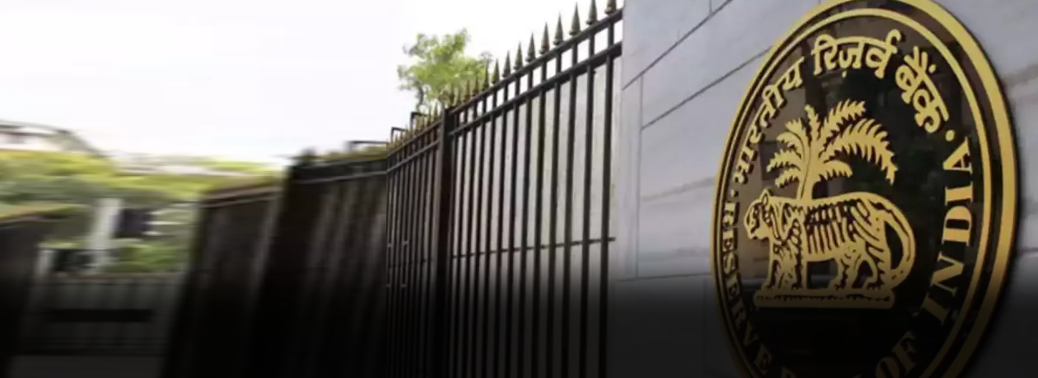
In News:
- To provide greater operational flexibility to non-banking lenders, the Reserve Bank created a single category for them by bundling their present three-tier structure.
Explained:
- To provide NBFCs with greater operational flexibility, harmonization of different categories of NBFCs into fewer ones shall be carried out based on the principle of regulation by activity rather than regulation by entity
- Asset finance, loan, and investment companies have been merged into a new category called NBFC- Investment and Credit Companies
What is a Non-Banking Financial Company (NBFC)?
- A Non-Banking Financial Company (NBFC) is a company registered under the Companies Act, 1956 engaged in the business of loans and advances, acquisition of shares/stocks/bonds/debentures/securities issued by Government or local authority or other marketable securities of a like nature, leasing, hire-purchase, insurance business, chit business but does not include any institution whose principal business is that of agriculture activity, industrial activity, purchase or sale of any goods (other than securities) or providing any services and sale/purchase/construction of immovable property.
- A non-banking institution which is a company and has principal business of receiving deposits under any scheme or arrangement in one lump sum or in installments by way of contributions or in any other manner, is also a non-banking financial company (Residuary non-banking company).
What is the Difference Between Bank And NBFC?
- NBFCs lend and make investments and hence their activities are akin to that of banks; however, there are a few differences as given below:
- NBFC cannot accept demand deposits;
- NBFCs do not form part of the payment and settlement system and cannot issue cheques drawn on itself;
- Deposit insurance facility of Deposit Insurance and Credit Guarantee Corporation is not available to depositors of NBFCs, unlike in case of banks.
Earlier classification:
NBFCs are categorized
- In terms of the type of liabilities into Deposit and Non-Deposit accepting NBFCs,
- Non-deposit taking NBFCs by their size into systemically important and other non-deposit holding companies (NBFC-NDSI and NBFC-ND) and c) by the kind of activity they conduct. Within this broad categorization the different types of NBFCs are as follows:
- Asset Finance Company (AFC)
- Investment Company (IC)
- Loan Company (LC)
- Infrastructure Finance Company (IFC)
- Systemically Important Core Investment Company (CIC-ND-SI)
FPI’S Invest Rs. 6,311 Crores in Markets
23, Feb 2019
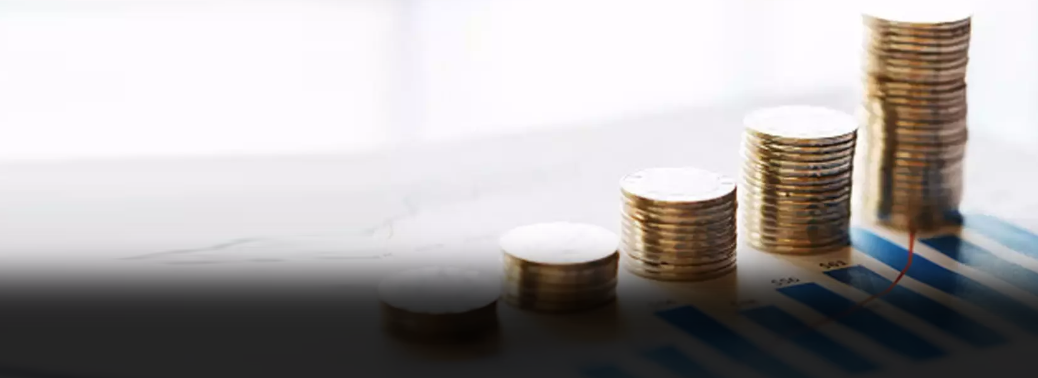
In News:
- Foreign investors pumped in Rs. 6,311 crores into the Indian capital markets, the highest inflow in a single day this month so far, exchange data showed.
Background:
- According to the latest data from the BSE, foreign portfolio investors (FPIs) bought securities worth Rs. 10,437.99 crore and sold securities amounting to Rs. 4,126.98 crore, translating into a net inflow of Rs. 6,311 crores.
- The data includes FPI trading activity on exchanges such as the BSE, the National Stock Exchange and the Metropolitan Stock Exchange of India in the capital market segment, according to the BSE.
Foreign Portfolio Investment:
- The term FPI was defined to align the nomenclature of categorizing investments of foreign investors in line with international practice. FPI stands for those investors who hold a short-term view on the company, in contrast to Foreign Direct Investors (FDI).
- FPIs generally participate through the stock markets and gets in and out of a particular stock at much faster frequencies. Short term view is associated often with lower stake in companies. Hence, globally FPIs are defined as those who hold less than 10% in a company.
- In India, the hitherto existing closest possible definition to an FPI was Foreign Institutional Investor.
Features of FPI:
- Portfolio Investment by any single investor or investor group cannot exceed 10% of the equity of an Indian company, beyond which it will now be treated as FDI.
- FPIs are not allowed to invest in unlisted shares. In respect of those securities, where FPIs are not allowed to invest no fresh purchase shall be allowed as FPI. They can only sell their existing investments in such securities.
- However, an exception has been made by permitting them to invest in unlisted non-convertible debentures/bonds issued by an Indian company in the infrastructure sector, where ‘infrastructure’ is defined in terms of the extant External Commercial Borrowings (ECB) guidelines;
- FPIs are permitted to invest in Government Securities with a minimum residual maturity of one year. However, FPIs have been prohibited from investing in T-Bills. FPI can invest in privately placed bonds if it is listed within 15 day.
BHARATNET can Monetise fibre Assets
22, Feb 2019

In News:
- Digital Communications Commission (DCC), the highest decision-making body for the telecom sector, has given an in-principle approval to monetise 2.5 lakh km of fibre laid under the government’s flagship BharatNet programme, by leasing or selling the assets to private players.
Explained:
- Because we have not been able to ensure effective utilization so, its proposed that fibre assets should be offered on lease or sold off through an auction to private players. Some fibre will be retained by BBNL (Bharat Broadband Network Limited)
- The lease model is being worked out and the USOF (Universal Service Obligation Fund) has been asked to present a plan within 10 days, along with estimates of the revenue proceeds.
- Further, the DCC has asked the loss-making telecom PSUs — BSNL and MTNL — to present a plan on how they could achieve higher revenue if the revival package sought by them was approved.
- Both firms have asked for monetization of land assets as well as approval for a voluntary retirement scheme (VRS) for employees. “The VRS scheme for BSNL and MTNL will have a revenue impact of Rs. 6,365 crore and Rs. 2,120 crore respectively
What is Digital Communications Commission (DCC)?
- The Digital Communications Commission (DCC), formerly Telecom Commission, is DCC,
- the apex decision-making body at the DoT
- USOF (Universal Service Obligation Fund):
Vision:
- Enabling rural Indians to achieve their fullest potential and participate productively in the development of the nation by virtue of being
- effectively connected through a reliable and ubiquitous telecommunications network, access to which is within their reach and within their means.
Objective:
-
Economic
Network extension & stimulate uptake of the ICT services
-
Social
Mainstreaming the underserved & un-served areas/groups by bridging the Access
-
Gap Political:
to enable citizens exercise their political rights in an informed way and
-
Constitutional
Equitable distribution of the fruits of the telecom/digital revolution and fair allocation of national resource (pooled USO levy) via targeted subsidies.
Digital India:
- The Digital India programme is a flagship programme of the Government of India with a vision to transform India into a digitally empowered society and knowledge economy.
- The vision of Digital India programme is to transform India into a digitally empowered society and knowledge economy.
- Digital India is an umbrella programme that covers multiple Government Ministries and Departments. It weaves together a large number of ideas and thoughts into a single, comprehensive vision so that each of them can be implemented as part of a larger goal. Each individual element stands on its own, but is also part of the larger picture.
EFFO Proposes hike in interest rate to 8
22, Feb 2019

In News:
- Provident Fund deposits will now earn more, with the Employees’ Provident Fund Organisation (EPFO) recommending a hike in interest rates to 8.65% for 2018-19.
Explained:
- At its 224th meeting chaired by Labour Minister Santosh Gangwar, the EPFO’s Central Board of Trustees decided to recommend a rate hike of 10 basis points
- The recommendation will go to the Finance Ministry for the final approval. The increased payout is expected to leave EPFO with a surplus of Rs. 151 crores for the year, in comparison to a surplus of Rs. 586 crore the previous year.
- The 8.65% rate is higher than what is available on government small savings schemes. This hike returns the rate of interest to the same level as it was in 2016-17, after a decline to a five-year low of 8.55% in 2017-18.
- In another decision that is likely to benefit workers, the Employees State Insurance Corporation’s Central Board reduced contribution rates from 6.5% to 5% of monthly wages at its meeting. Employees will only have to pay 1%, while the employer’s share is reduced to 4%.
- ESIC also decided to fully reimburse state governments for its medical scheme, removing the cap of Rs. 3,000 per person. The monthly income ceiling limit for dependent parents to avail benefits under the scheme was also raised from Rs. 5,000 to Rs. 9000.
Centre to Setup Umbrella SPV to Fund Metro Projects
21, Feb 2019
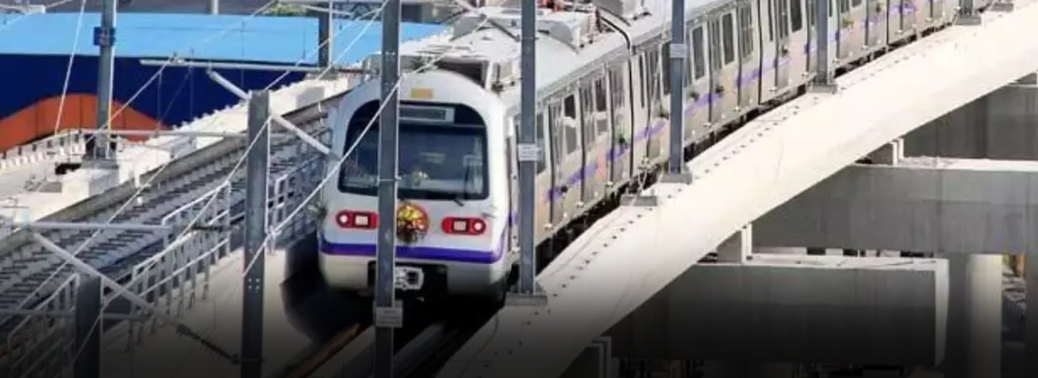
In News:
- The Central government is setting up a fully-owned Special Purpose Vehicle (SPV) to house all its equity and debt investments in metro rail projects across the country.
Explained:
- The SPV, which will be under the Ministry of Housing & Urban Affairs, will also be monitoring all metro projects. The finance ministry has finalised the contours of the SPV after series of consultations with various ministries.
- From financial year 2019-20, the SPV will raise funds through mix of equity, debt and also borrow from external agencies. The SPV will borrow funds directly through the market or from state-owned India Infrastructure Finance Company Ltd.
- In the Union Budget 2018-19, Finance Minister had proposed the idea of streamlining the Centre’s contribution in equity and debt of the metro ventures floated by state governments. The SPV, a kind of an umbrella body for investments in metro projects across the country, has been seen as an efficient approach to deal with these investments.
- The formation of a SPV at the central government level will ensure that investment and monitoring of metro projects is done by a single agency, in close coordination with the government.
- While the Ministry of Housing & Urban Affairs will evaluate investment structure in metro projects, the SPV will be making these investments.
- The equity contribution to the SPV will be provided by the Central government.
- As per Metro Rail Policy of 2017, the Centre provides funding support to metro projects through various options. In a PPP-based metro rail project, Central funding is governed by VGF
- Another way is the Central Government providing grant of 10 per cent of project cost, excluding private investment, cost of land, rehabilitation & resettlement and tax, to the state government. The Centre can have different forms of equity sharing agreements with the state to fund a metro project.
Metro Rail Policy of 2017:
-
- According to the new policy, the Metro rail projects will be approved and aided by the Central government only if there is private participation and the projects ensures last-mile connectivity for commuters. The policy allows respective states to formulate rules and regulations and it empowers them to establish permanent fare fixation authorities.
- Further, the projects will now be cleared on the basis on economic internal rate of return of 14%. This is considered one of the widely followed best practices. It will alter the system that runs on the current financial internal rate of return of 8%.
- The policy was proposed by the Union Ministry of Urban Development and provides models for states seeking to develop Metro projects with help by the Centre.
The Three models are outlined in the policy:
-
- Public-Private Partnership with Central assistance. This will be part of the Union Finance Ministry’s viability gap funding scheme.
- Grant by Centre whereby 10% of Metro project cost will be provided by the Central government as lump sum amount.
- 50-50% Equity sharing model taken between the Centre and state.
All three models have a mandatory requirement of private participation.
- Since Metro projects require huge capital, they were usually financed by the Centre and states with equity and grants. Some amount is usually raised by investment bodies like in the case of Delhi Metro, Japan International Cooperation Agency pooled in massive investment (JICA).
- However, the new policy says that the states will now have to come up with innovative ways to raise funds through means like value capture finance tools. They will also have to issue corporate bonds for metro projects for enabling low-cost debt capital.
- One of the key aspects of the policy is the last mile connectivity that lays down a catchment area of 5km. The feeder services will require a commitment from the government to be provided via feeders, walkways, pathways and para transport means
Centre Clears Rs. 48, 239 Cr. Recapitalisation Package for PSB’s
21, Feb 2019
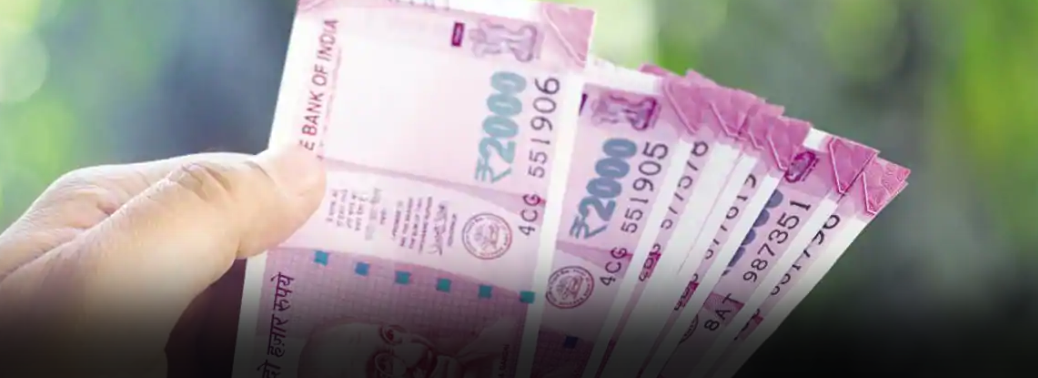
In News:
- The government has approved the disbursal of a recapitalization package of Rs. 48,239 crores for 12 public sector banks.
Explained:
- The government will infuse Rs 9,086 crore in Corporation Bank and Rs 6,896 crore in Allahabad Bank — the two “better-performing” banks currently under the Prompt Corrective Action (PCA) supervision of the RBI.
- Further, Rs 4,638 crore and Rs 205 crore will be provided to Bank of India and Bank of Maharashtra. These banks have recently come out of the regulatory supervisory framework PCA of the RBI.
- Punjab National Bank will get Rs 5,908 crore, Union Bank of India Rs 4,112 crore, Andhra Bank Rs 3,256 crore and Syndicate Bank Rs 1,603 crore.
- The government will pump in Rs 12,535 crore in four other banks under PCA — Central Bank of India, United Bank, UCO Bank and Indian Overseas Bank.
- The government in December had infused Rs 28,615 crore into seven public sector banks (PSBs) through recapitalization bonds.
- The latest recap bonds broadly fall into four categories – equipping better-performing PCA banks to be above regulatory PCA thresholds to help them come out of the framework (Allahabad Bank, Corporation Bank);
- Non-PCA banks that are close to the red line to ensure they don’t fall into PCA (Punjab National Bank, Union Bank, Syndicate Bank and Andhra Bank);
- PCA banks that have exited PCA to remain above PCA triggers (Bank of India, Bank of Maharashtra), And other PCA banks that need to meet minimum regulatory capital norms (Central Bank, United Bank, UCO Bank and Indian Overseas Bank).
- It may be recalled that three banks – Bank of Maharashtra, Oriental Bank of Commerce and Bank of India – had, on January 31, come out of the PCA framework.
Need for PCA framework:
- Due to the adverse impact on the economy, medium sized or large banks are rarely closed and the governments try to keep them afloat.
- If banks are not to be allowed to fail, it is essential that corrective action is taken well in time when the bank still has adequate cushion of capital to minimize the losses. If these asset stressed banks are not properly taken care off then its bankruptcy will create a chain reaction in the economy setting off job losses, share market down and loss of credibility in public sector banks.
April – Dec. FDI Falls 7% to $33.49 Billion
21, Feb 2019
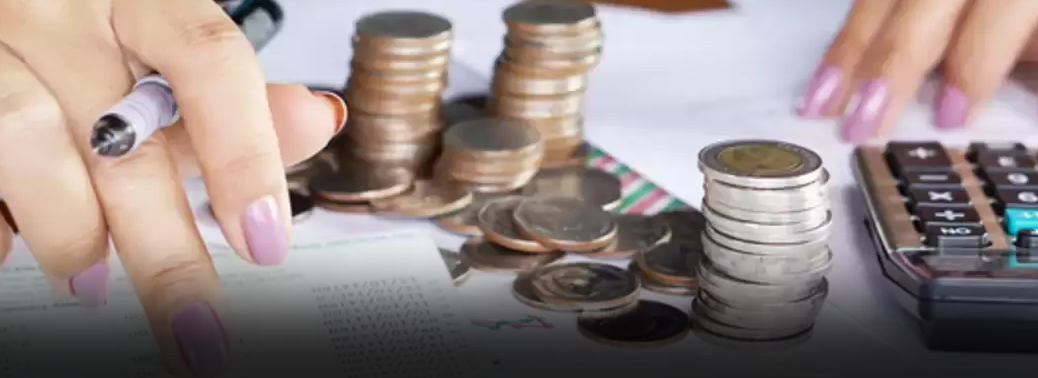
In News:
- According to Commerce and Industry Ministry data, Foreign direct investment (FDI) into India contracted by 7% to $33.49 billion during April-December in the current fiscal.
Explained:
- Foreign fund inflows during April-December 2017-18 stood at $35.94 billion. The key sectors that received the maximum foreign investment in the nine months of this fiscal include.
- Services ($5.91 billion)
- Computer software and hardware ($4.75 billion)
- Chemicals ($6.05 billion), and
- The automobile industry ($1.81 billion).
FDI:
- Foreign direct investment (FDI) is an investment made by a firm or individual in one country into business interests located in another country.
- Generally, FDI takes place when an investor establishes foreign business operations or acquires foreign business assets, including establishing ownership or controlling interest in a foreign company.
- Foreign direct investments are distinguished from portfolio investments in which an investor merely purchases equities of foreign-based companies.
- Foreign direct investment (FDI) is a major source of non-debt financial resource for the economic development of India.
- For a country where foreign investments are being made, it also means achieving technical know-how and generating employment.
- Singapore was the largest source of FDI with $12.97 billion inflow.
FDI Governed by?
- FDI in India is regulated under Schedule 1 of Foreign Exchange Management (Transfer or Issue of Security by a Person Resident Outside India) Regulations, 2000
- Besides FEMA, 1999, FDI is also subject to other regulations as per Reserve Bank of India (RBI) and DPIIT (Department for Promotion of Industry and Internal Trade). DPIIT is the nodal agency entrusted to formulate FDI Policy. It issues press notes to make amendments in the existing policy and also issues consolidated FDI Policy on an annual basis.
Island Development Project
20, Feb 2019
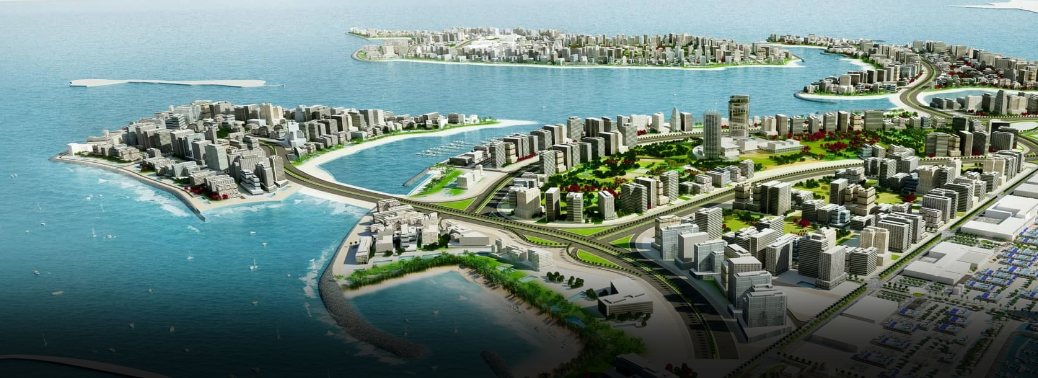
- Seven islands in the Andamans and Lakshadweep have been identified for seaplane operations while private sector participation has been invited for tourism-based projects in the two archipelagos.
About:
- The 5th meeting of the Island Development Agency(IDA), chaired by Home Minister Rajnath Singh, also reviewed the progress made towards the program “Holistic development of islands”.
- Four islands (Swaraj Dweep, Shaheed Dweep, Hutbay and Long) in Andaman and Nicobar Islands and three islands (Kavaratti, Agatti and Minicoy) in Lakshadweep have been identified for seaplane operations.
- Key infrastructure projects such as operationalisation of Diglipur airport for civilian aircraft and construction of a new airport in Minicoy Island have been accorded high priority by the government while Coastal Regulation Zone (CRZ) clearance has been accorded for ‘Middle Strait Bridge’ on Andaman Trunk Road. All these measures will improve inter-island connectivity significantly.
- Bids for private sector participation in three tourism-based projects have already been invited by the Andaman & Nicobar Administration. They include eco-tourism projects in Smith Island & Long Island and tent city project in Aves island.
- Bids will be invited shortly for one more project in Neil island of Andaman & Nicobar. Three projects in Lakshadweep have been identified for the issue of bids.
- These include tourism projects in the islands of Kadmat, Minicoy and Suheli Cheriyakara. Environmental Clearance (EC), CRZ clearance and all other clearances required for these projects are being obtained upfront, on priority, to attract number of reputed bidders.
Other Initiatives:
- The Ministry of Commerce has issued a notification extending tax incentives for investments made in manufacturing and service sector in islands of Andaman and Nicobar and Lakshadweep.
- The tax incentives are Central Capital Investment Incentive for access to credit (CCIIAC), Central Interest Incentive (CII), Central Comprehensive Insurance Incentive (CCII), Goods and Services Tax (GST) reimbursement, Income Tax (IT) reimbursement, Transport Incentive (TI) and Employment incentive (EI).
- Expeditious implementation of the above-mentioned projects will provide a high economic return to the private sector, satisfactory jobs and additional income to the Islanders and enhanced revenue to the government – a win-win situation for all.
- Above all, the stability of the island eco-system will be maintained with effective execution of well-planned environmental safeguards.
- A detailed presentation was made by CEO, NITI Aayoghighlighting the current status of planned projects being implemented for islanders’ benefits. The status of the implementation of decisions taken in the last meeting was also highlighted in the presentation.
- In order to sustainably utilise the potential of Tuna fish, ten deep-sea modern fishing vessels are being procured by Lakshadweep administration from Cochin Shipyard Limited.
- Export of seafood and coconut products is being encouraged to generate more employment opportunities in the islands.
Cabinet Approves Phase II of Rooftop Solar Programme
20, Feb 2019
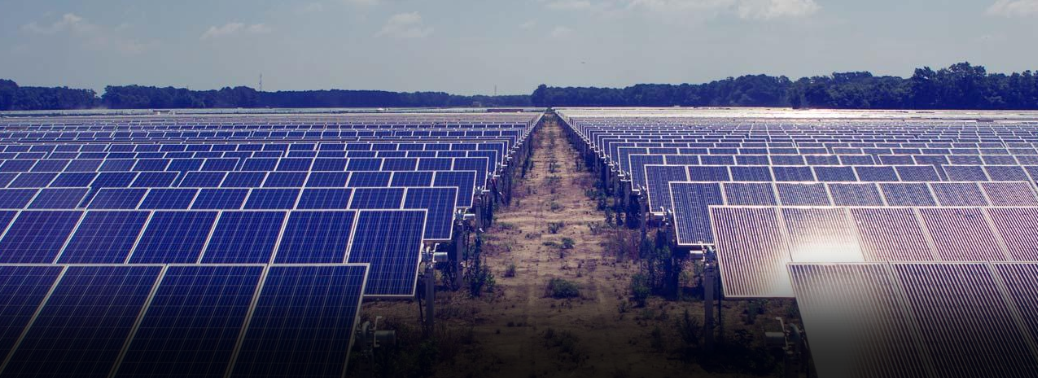
In News:
- The Cabinet Committee on Economic Affairs approved Phase-II of the Grid Connected Rooftop Solar Programme that aims to achieve a cumulative capacity of 40,000 MW from rooftop solar projects by 2022.
Explained:
- The phase-II is meant to achieve cumulative capacity of 40,000 megawatt (MW) from rooftop solar (RTS) projects by 2022.
- The Phase II programme provides for central financial assistance (for residential rooftop solar installations) up to 40% for rooftop systems up to 3kW and 20% for those with a capacity of 3-10kW.
- The second phase will also focus on increasing the involvement of the distribution companies (DISCOM). The total central financial support provided under the scheme would be ₹34,422 crore.
- Under phase-II programme, focus will be on increased involvement of Discoms. Performance-based incentives will be provided to Discoms, based on RTS capacity achieved in a financial year over and above the base capacity i.e. cumulative capacity achieved at the end of previous financial year
- As per the statement, the programmes will have substantial environment impact in terms of lowering CO2 emissions and has a potential to generate employment opportunity equivalent to 9.39 lakh job years for skilled and unskilled workers. And also for addition of 38GW capacity under Phase-II of the scheme by the year 2022.
Kisan Urja Suraksha evam Utthaan Mahabhiyan:
- In a separate decision, the Cabinet approved the launch of the Kisan Urja Suraksha evam Utthaan Mahabhiyan aimed at providing financial and water security to farmers.
- Through the scheme, farmers will be given financial assistance to set up solar panels in their unused or fallow land.
- The Kusum (Kisan Urja Suraksha evam Utthaan Mahabhiyan) scheme was announced in the Union Budget in 2018. The scheme provides for 5 lakh off grid solar pumps to begin with. The Indian farmer will effectively bear only 10 percent of cost for solarising his agricultural pump under a scheme unveiled in the Budget 2018-19.
- The government will be spending Rs 48,000 crore over 10 years as central financial assistance (CFA) on the Kusum scheme which aims to encourage the use of barren land for setting up solar power plants.
- A similar amount will have to be given by the states and the financing institutions towards Kusum, which is to be put up to the cabinet for approval.
PONZI Schemes Ordinance
20, Feb 2019
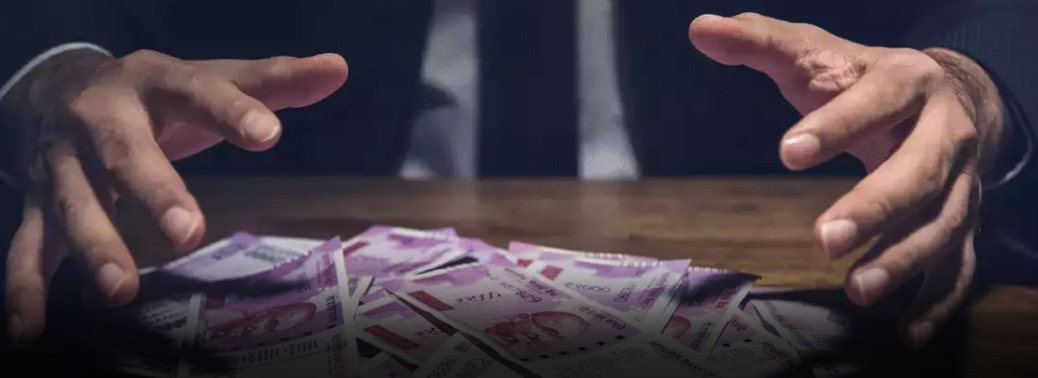
- The Union Cabinet Tuesday approved promulgating an ordinance with regard to the Banning of Unregulated Deposit Schemes Bill to protect gullible investors from Ponzi schemes.
About:
- The lower House, or the Lok Sabha, had passed the Bill on the last day of the budget session by a voice-vote, but could not get the approval of the Rajya Sabha.
- This was informed by Finance Minister Arun Jaitley after meeting of the Union Cabinet. The Cabinet has requested the President of India to promulgate an Ordinance in this regard.
- The Bill seeks to put in place a mechanism by which such depositors can be compensated. It has incorporated recommendations of the Standing Committee on Finance. The legislation is aimed at effectively tackling the menace of illicit deposit-taking activities, and prevent such schemes from duping the poor.
- The proposed law provides for severe punishment and heavy pecuniary fines to act as a deterrent.
PONZI Scheme:
- A Ponzi can be any scheme in which the returns to promised to older investors are paid from the money collected from new investors, and not actual profits from the investments. Ponzi schemes were named after Charles Ponzi, a clerk in Boston who, almost a century ago, duped thousands of investors into speculating on phenomenal returns from the humble postage stamp.
- Those running a Ponzi scheme reel in their first set of investors by introducing them to a great opportunity. They may even pay up the fanciful returns out of their personal funds. But once investors begin to bite, they build a house of cards, using money from the stream of new entrants, to pay the older patrons. Even if profits are made from the investments, more often than not, the scheme operators siphon it off to private accounts.
- As long as new investors are willing to sign up, the Ponzi scheme works. But when the flow of fresh money dwindles, the house of cards collapses.
Angel Tax Relief
20, Feb 2019

In News:
- The Government has widened the definition of startups to partly address angel tax woes by increasing the time period for such ventures to be treated as startups, increasing the turnover criteria and also raising the tax exemption limit for investments made.
Explained:
What was the issue?
- Angel tax is applicable to unlisted companies that have raised capital through sale of shares at a value above their fair market value. This excess capital is treated as income and taxed accordingly. This tax predominantly affects start-ups and the angel investments they attract.
What is start up?
- According to new definition one that is registered with the government, an entity shall be considered a startup up to 10 years from its date of incorporation instead of the existing period of 7 years, and has a turnover that has not exceeded ₹100 crore over that period.
- Investments of up to ₹25 crore in an eligible company will be exempt from the angel tax. In addition, investments made by a listed company of a net worth of at least ₹100 crore or a turnover of at least ₹250 crore would also be exempt. Investments made by non-residents will also be exempt.
Registering with government:
- In order to register with the government as a start-up, the company will also have to make an online application to the Department for Promotion of Industry and Internal Trade (DPIIT) erstwhile DIPP.
- This application will have to be accompanied by a copy of the Certificate of Incorporation or Registration, a write-up about the nature of the business highlighting how it is working towards “innovation, development or improvement of products or processes or services, or its scalability in terms of employment generation or wealth creation.
RBI to Transfer Rs. 28,000 Crore Interim Surplus to Government
19, Feb 2019
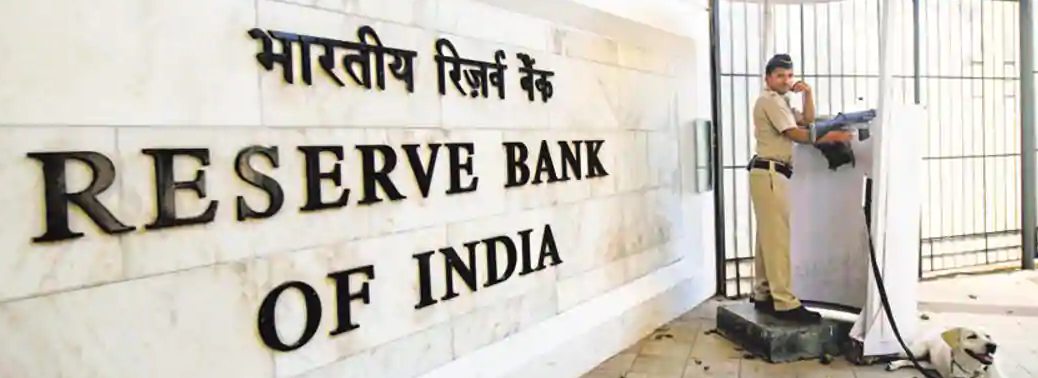
In News:
- The board of Reserve Bank of India decided to transfer an interim surplus (dividend) of Rs. 28,000 crores to the government.
Explained:
- Inclusive of the Rs. 40,000 crores transferred by the central bank as final dividend for 2017-18, the Centre has earned a total of Rs. 68,000 crores as dividend from the RBI for the 2018-19 fiscal. The accounting year of the RBI runs from July to June.
- This is second consecutive year that the central bank has transferred interim surplus to the government. Based on a limited audit review and after applying the extant economic capital framework, the board decided to transfer an interim surplus of Rs. 280 billion to the Central government for the half-year ended December 31, 2018.
- This is the second successive year that the Reserve Bank will be transferring an interim surplus
- The system of audit of balance sheet twice a year would be continued for the coming years also in order to decide on the interim surplus. Last year, RBI had transferred Rs. 10,000 crore as interim surplus.
- The government had been putting pressure on the central bank to transfer more funds from the contingency reserves. A panel, headed by former RBI Governor Bimal Jalan, had been formed to review the economic capital framework of the bank.
Economic Capital framework Committee:
- The Reserve Bank of India (RBI), in consultation with the government, has set up a six-member committee to review the economic capital framework of the central bank
- Former RBI Governor Bimal Jalan will be the committee’s chairman and former Deputy Governor Rakesh Mohan deputy chairman.
- The other members are Economic Affairs Secretary Subash Chandra Garg, RBI Deputy Governor N.S. Vishwanathan and two board members of the RBI
- The committee would submit its report within 90 days from the date of its first meeting, the RBI said in a statement
Term of reference of Committee:
- It would be to review status, need and justification of various provisions, reserves and buffers presently provided for by the RBI, keeping in mind ‘public policy mandate of the RBI, including financial stability considerations.
The committee will also review best practices followed by the central banks globally in making assessment and provisions for risks, to which central bank balance sheets are subjected. The panel would also suggest an adequate level of risk provisioning that the RBI needs to maintain, and to determine whether it is holding provisions, reserves and buffers in surplus or deficit of the required level.
- The committee would also propose a suitable profit distribution policy taking into account all the likely situations of the RBI, including holding more provisions than required and the RBI holding less provision than required, the statement said.
- After the government started pushing the central bank to review its economic capital framework, the RBI board, at its meeting on November 19, decided to set up a committee to review the issue.
- The economic capital issue was a bone of contention, among other issues, between the central bank and the Finance Ministry.
Ministry Revises Rules for Chartering of Ships
19, Feb 2019
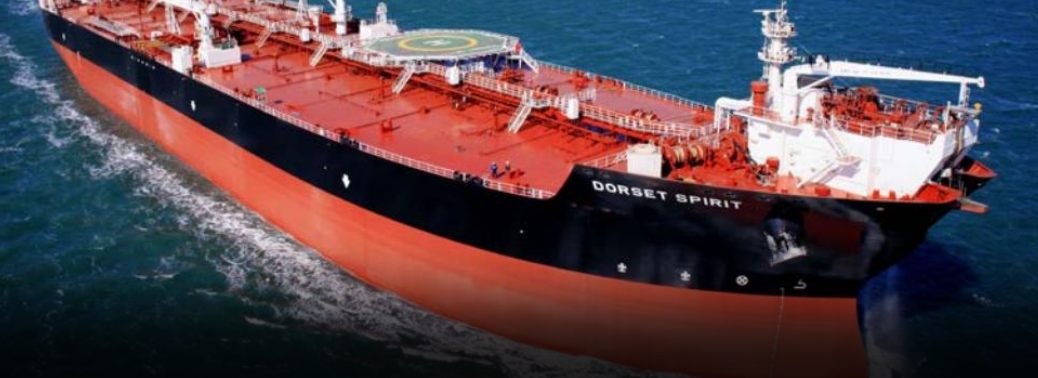
In News:
- To Incentivise ship-building activity in the country, the Ministry of Shipping has revised its guidelines for chartering of ships by providing Right of First Refusal ( RoFR) to ships built in India.
Explained:
- Whenever a tendering process is undertaken to charter a vessel, a bidder offering a ship built in India will be given the first priority to match the L1 quote. The RoFR would be exercised only in case the vessel being offered for charter by the lowest bidder (L1) has been built outside India.Prior to the revision of the guidelines, the RoFR was reserved for Indian flag vessels as per the relevant provisions of Merchant Shipping Act, 1958.
- The existing licensing conditions have been reviewed in consonance with the Government of India’s policy of promoting the ‘Make In India’ initiative and the Public Procurement and Make in India orders dated June 15, 2017 and May 28, 2018 issued by the DIPP.
- It is expected that this priority given to ships built in India will raise the demand for such vessels, providing them with additional market access and business support.
- The review is also in line with the need to give a long-term strategic boost to the domestic shipbuilding industry, the need to encourage the domestic shipping industry to support the domestic shipbuilding industry, and the need to develop self- reliance and a strong synergy between these vital industries for the overall long-term development and economic growth of the country. A policy in this regard will be unveiled by, Minister for Shipping, Road Transport & Highways, Water Resources, River Development and Ganga Rejuvenation in Mumbai, during the inauguration of the two-day Regional Maritime Safety Conference.
Cement Industry is happy as MFN status to Pakistan Withdrawn
19, Feb 2019

In News:
- Cement manufacturers are happy after India decided to withdraw most favoured nation (MFN) status to Pakistan and also slap 200% duty on imports from that country in the wake of the Pulwama terror attack.
Explained:
- This move would impact USD 488.5 million worth of goods that Pakistan exports to India.
- India granted the MFN status to Pakistan way back in in 1996. The MFN status was accorded under World Trade Organization’s (WTO) General Agreement on Tariffs and Trade (GATT).
- One of the major items of import from Pakistan is cement and the Centre’s action would erase the price advantage that the neighbouring country had enjoyed for quite some years.
- Cement industry sources had estimated imports from Pakistan in the range of 40,000 to 50,000 tonnes annually. With Islamabad enjoying the MFN status (now withdrawn), Pakistani cement enjoyed a price advantage of almost Rs. 100 for a bag of 50 kg.
- According to top industry sources, Thoothukudi and Kochi ports have been the access points for import of cement from Pakistan.
- Compared with the India-made cement, it ranks very low in quality
- And also, allowing import of cement from Pakistan at a subsidized rate when the Indian firms have built up huge capacity, goes against the Make-in-India concept
- A combination of factors, including imports from Pakistan, has seen a general sluggishness in cement demand. Not surprisingly, the demand sluggishness, especially in the south, has hurt the cause of the cement industry.
- Concerns over cement imports from Pakistan had often be articulated to the authorities in the past from competition as well security perspective. The economic action against Islamabad in the wake of terrorist attack in Pulwama, would address the twin concerns of security and quality of cement imports from that country
Most Favoured Nation (MFN):
According to WTO, Most-favoured-nation (MFN) status is all about treating other people equally. Under the WTO agreements, countries cannot normally discriminate between their trading partners. In the WTO, MFN Status means non-discrimination i.e. treating virtually everyone equally. As per WTO website, “Grant someone a special favour (such as a lower customs duty rate for one of their products) and you have to do the same for all other WTO members.” – This principle is known as most-favoured-nation (MFN) treatment, according to WTO.
Farm SOP will be hard to implement
19, Feb 2019
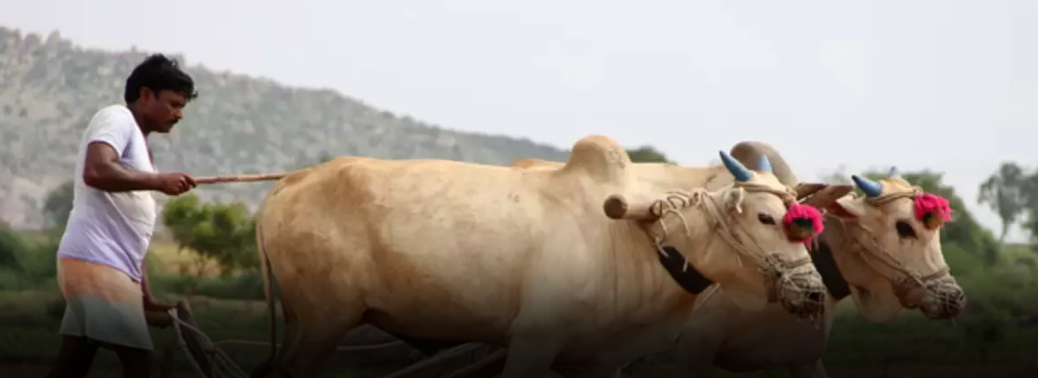
- The Pradhan Mantri Kisan Samman Nidhi scheme, announced in the Budget earlier this month, aims to give Rs. 6,000 a year to 12 crore farmer families who own up to two hectares of cultivable land.
What are the challenges?
- The number of beneficiaries comes from the number of land holdings of two hectares or less, according to the last agricultural land census. However, the guidelines say a single family may hold multiple land parcels, which will be pooled to determine their eligibility for the benefit. Similarly, even landholdings bigger than two hectares, if owned by multiple families, will make them eligible for the scheme.
- For example, if five brothers jointly own a single 10 hectare holding, each of them will be eligible for the scheme. However, if the members of a single-family unit each own three one-hectare holdings, they will not be eligible. It will be difficult to use existing land records to determine beneficiaries. “Land records are held individually.
- How do you know which family holds how much land?” For the purposes of this scheme, family units are being defined as a husband, wife and minor children. Local administrations are more familiar with the unit of the household — which is used by most other government surveys and schemes — defined as a group living together and eating meals from a common kitchen.
What is the status of land records?
- States have been implementing the Digital India Land Records Modernisation Programme for more than a decade. While several States claim to have completed computerisation of their land records, others have not even begun the process. However, digitisation does not mean the data have been updated. Experts say many land records are updated only when the land is sold and only if the transaction is legally registered. Inherited land may still be registered in a parent or grandparent’s name.
- Multiple government departments hold the documents required to establish land ownership — the Registration Department maintains sale deeds, but maps are kept by the Survey Department, while the Revenue Department keeps property tax receipts. Verifying ownership claims is thus a daunting task. States have been asked to overhaul their land databases immediately in preparation for the scheme, which aims to pay out its first instalment of Rs. 2,000 by March 31, before the Lok Sabha election.
What happened in Telangana?
- However, the example of Telangana shows this may be an unrealistic time line. Despite an advanced state of progress in digitisation, the State took over three months to update its databases before implementing its own farmer income support scheme before its Assembly election last year.
- Since its payout was given per acre owned, rather than per family unit, it was a simpler process to identify beneficiaries on the basis of land records. Yet, researchers say almost 10 lakh beneficiaries — of a total 54 lakh — were left out of the initial instalment, as the State scrambled to update records.
What about community farmers?
The scheme notes that land ownership rights are community-based in many northeastern States and promises that an alternative method of beneficiary identification will be developed.. However, many Adivasi communities in other States also cultivate land without individual rights, and may be left out of the scheme, although they are among the most vulnerable. Tenant farmers are also not included in the scheme, as they do not own the land they cultivate. With tenancy being as high as 60% in some areas, this could lead to resentment if absentee landlords receive benefits under the scheme.
Is payment infrastructure in place?
- The government intends to pay beneficiaries through a direct transfer to their bank accounts. From the second instalment, Aadhaar numbers will be compulsory to access benefits. Previous welfare schemes requiring Aadhaar verification have faced significant hurdles in some rural areas.
Disinvestment Proceeds touch Rs. 53,558 Crore
18, Feb 2019

In News:
- The government’s disinvestment proceeds have touched Rs 53,558 crore so far in the current fiscal, as against the full year budget target of Rs 80,000 crore.
Explained:
- As much as Rs 10,000 crore came in from Bharat-22 ETF and, another Rs 5,379 crore from the sale of Specified Undertaking of Unit Trust of India (SUUTI) stake in Axis Bank.
- The government has sold as much as 3 per cent stake in Axis Bank held via SUUTI through an offer for sale (OFS) and raised about Rs 5,300 crore.
- Besides, the additional offering or Bharat-22 Exchange Traded Fund (ETF) garnered about Rs 10,000 crore to the exchequer.
- The issue got bids worth Rs 49,528 crore, with foreign investors pouring in Rs 38,000 crore and retail buyers Rs 2,000 crore. Share buyback by Indian Oil Corporation (IOC) fetched Rs 2,647 crore to the disinvestment kitty, while BHEL, NHPC and Cochin Shipyard garnered Rs 992 crore, Rs 398 crore and Rs 137 crore, respectively.
- NLC share buyback garnered Rs 990 crore, while NALCO and KIOCL got Rs 260 crore and Rs 205 crore, respectively. Besides, strategic disinvestment of HSCC fetched Rs 285 crore. OFS of Coal India earned Rs 5,218 crore while sale of units of CPSE ETF garnered Rs 17,000 crore. Besides, sale of Bharat-22 ETF has fetched Rs 8,325 crore in June 2018.
- The initial public offer (IPO) of PSUs RITES, IRCON, MIDHANI and Garden Reach Shipbuilders, fetched over Rs 1,700 crore. The government has fixed disinvestment target of Rs 80,000 crore for the current fiscal ending March. For next fiscal, the target has been set at Rs 90,000 crore.
Bharat ETF:
- The central public sector enterprises (CPSEs) that are part of the ETF include ONGC, IOC, SBI, BPCL, Coal India and Nalco. Other constituents include Bharat Electronics, Engineers India, NBCC, NTPC, NHPC, SJVNL, GAIL, PGCIL and NLC India. Only three public sector banks — SBI, Indian Bank and Bank of Baroda — figure in the Bharat-22 index.
DGTR to Revisit Anti-Dumping Rules
18, Feb 2019
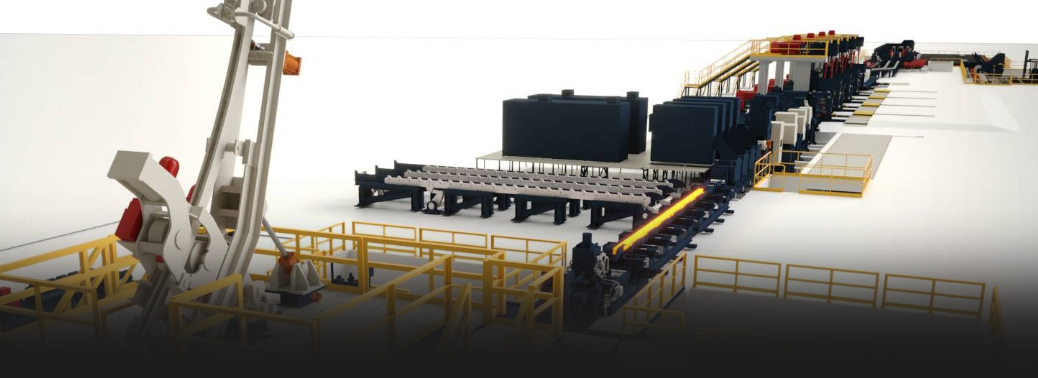
In News:
- Amid mounting complaints from the domestic steel industry after Chinese steel product imports surged 8 per cent in the 12 months to March 2018, despite nearly 80 per cent of these products being covered under anti-dumping duty, the Department of Commerce is attempting a course correction.
Explained:
- The concerns raised by the domestic steel lobby focus largely on the Chinese non-alloy steel being imported in the country that is presumably being misdeclared as alloy steel, which otherwise is value-added and expensive steel.
- The Directorate General of Trade Remedies (DGTR) in the Department — entrusted with using trade remedial methods under relevant framework of WTO arrangements — is scrambling to commission a study for an impact assessment of India’s anti-dumping measures and is learnt to have approached the Delhi-based Indian Institute of Foreign Trade for this study.
- The fresh study commissioned by the DGTR in the steel sector comes at a time when despite an across-the-board tariff hiking spree by the NDA government — covering over 400 items ranging from apples and almonds to cell phone parts and solar panels during the last 24 months — there is sobering realisation that pointed interventions such as anti-dumping duties in sectors such as steel and solar panels have largely failed in achieving results.
- The complaints by the steel industry, which have been included as a submission before the parliamentary standing committee on commerce, cite the non-review of the anti-dumping duty in the backdrop of the fact that the raw material prices have gone up multiple times over the last 24 months.
- Even as the cost of domestic steel production, based on which the anti-dumping duty reference price mechanisms have been formulated, are now completely different, nothing has been done to revise or rationalise the anti-dumping duty imposed for some time now, the industry has petitioned.
- At the time of notification of existing anti-dumping duties in the steel sector, the DGAD had then considered the international prices vis-à-vis the prevailing domestic prices at that time and the reference price had been arrived at accordingly. Over time, steel prices have appreciated globally.
- Incidentally, the DGTR has initiated 888 investigations against imports from various countries so far, mainly pertaining to China, the EU, Republic of Korea, Chinese Taipei, Thailand, the US, Indonesia, Japan and Malaysia.
- The DGTR, after completing the investigation, came to the conclusion that increased imports of solar cells, whether or not assembled in modules or panels into India, have caused “serious injury” and also “threaten to cause serious injury” to the domestic producers in India.
- The DGTR recommended imposition of safeguard duty on imports of solar cells for two years vide final findings dated July 16, 2018. Imports from developing nations other than China and Malaysia were exempted from the Safeguard Duty up to certain limits.
US Canada move WTO Against India on ‘UNDER REPORTING’ of MSP for Five Pulses
16, Feb 2019
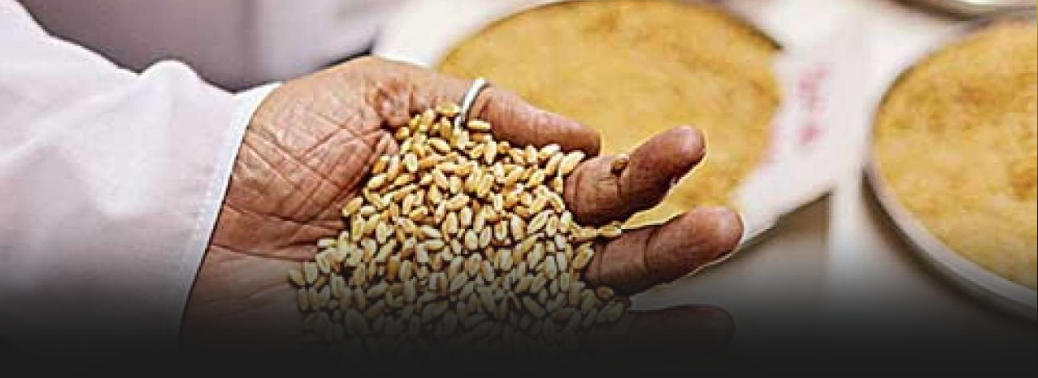
In News:
- The US and Canada on Friday said they have jointly approached the World Trade Organisation (WTO) against India for allegedly “under-reporting” market price support for five varieties of pulses and have submitted their own steeper calculations for scrutiny of members.
Explained:
- The two countries have taken issue with the quantity of production used in market price support calculations, the lack of information necessary to assess WTO compliance, problems with currency conversions and the prices used in the calculations.
- When calculated according to WTO Agreement on Agriculture methodology, India’s market price support for each of these pulses far exceeded its allowable levels of trade-distorting domestic support.Based on the United States/Canadian calculations, it appears that India has substantially underreported its market price support for chickpeas, pigeon peas, black matpe, mung beans and lentils
Wholesale Inflation Eases to 10- Month low of 2.76%
15, Feb 2019
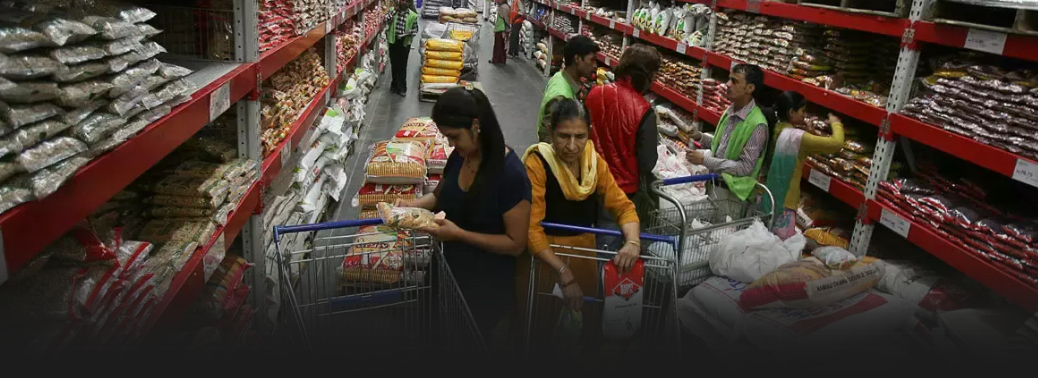
In News:
- Wholesale Price Index (WPI) fell for the third consecutive month to 2.76% in January from 5.54% in October 2018, 4.47% in November, and 3.8% in December.
Explained:
- Largely to cooling fuel prices, Inflation in the crude petroleum and natural gas segment slowed sharply in January to a one-year low of 3.87% from 16.8% in December. Similarly, inflation in the fuel and power segment slowed to a 27-month low of 1.85% in January, driven in large part by the fact that the mineral oils segment also saw inflation slowing to a 27-month low of 0.11%.
What is WPI?
- In India, the wholesale price index (WPI) is the main measure of inflation. The WPI measures the price of a representative basket of wholesale goods. In India, wholesale price index is divided into three groups: Fuel and Power (13.2 percent), Primary Articles (22.6 percent of total weight) and Manufactured Products (65.42 percent).
- Wholesale Price Index is published by the Office of Economic Advisor (Ministry of Commerce & Industry).
Difference between WPI and CPI:
- Wholesale price index measures inflation at each stage of production while Consumer price index measures inflation only at final stage of production.
- Wholesale price index is the basis for the economic deflation rate while consumer price index is the basis for the inflation rate.
- Wholesale price index is the middle point of the sum of all the goods bought by the traders whereas consumer price index is the middle point of the sum of all the goods bought by consumers.
- The WPI is compiled and published by Office of the Economic Advisor on a weekly basis while the CPI is compiled and published by the Labour Bureau on a monthly basis in India. Wholesale Price Index (WPI) is based on the price prevailing in the wholesale markets or the price at which bulk transactions are made. The Consumer Price Index (CPI) is based on the final prices of goods at the retail level.
- There are only few countries that us WPI to calculate inflation rates whereas many nations have already shifted to using CPI.
- WPI is said to result an erroneous measure while CPI will describe actual cost of living and inflation rate more accurately.
- There are a lot of insignificant goods that are considered in WPI. CPI, on the other hand, has well-selected variables.
Low Velocity of Cash Circulation in large States Hints at Sluggish Economy
15, Feb 2019
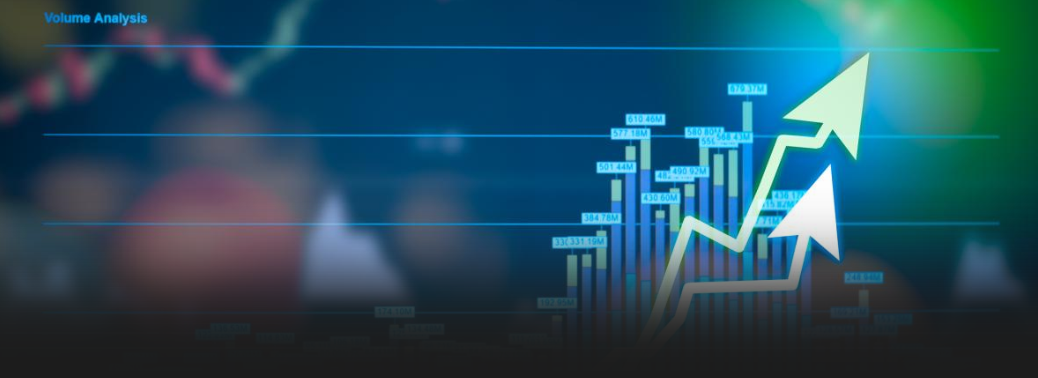
In News:
- According to a report by the State Bank of India, While the currency in circulation has surpassed what it was in the pre-demonetisation days, it is still short of what it should have been and the lower velocity of circulation in larger States points to sluggish economic activity.
Explained:
- Currency in circulation has gone up to Rs. 20.6 lakh crore as on February 1. It was Rs. 17.97 lakh crore a week before 86% of the currency was rendered invalid on November 9, 2016. “Our current estimates suggest that CIC [currency in circulation] is still short of trend by at least Rs. 1.5 lakh crore.
- Thus, any argument of cash coming back aggressively into the system and financing informal activities is not entirely correct It estimates bank notes in circulation by March 2019 ought to have been at Rs. 22.45 lakh crore, but given the present trend of growth, it is expected to reach only Rs. 20.9 lakh crore by then. It further said with income velocity of money having shown a ‘sharp plunge’, it possibly implies that currency of higher denomination (Rs. 2,000) is not getting adequately circulated in the economy.
State level:
- Larger States like Maharashtra, U.P., and Karnataka, income velocity is far lesser than the national average, while in States like Chhattisgarh, M.P., A.P. and J&K, the velocity is much higher than the average. A declining income velocity of money clearly suggests that a pick-up in economic activity remains elusive. Rural economy still remains depressed, with latest inflation numbers suggesting any meaningful pick-up in food inflation is still at a distance
What is currency in Circulation?
- It is the total value of currency (coins and paper currency) that has ever been issued by the Reserve Bank of India minus the amount that has been withdrawn by it.
Currency in circulation comprises of:
- currency notes and coins with the public
- Cash in hand with banks.
- It is a Major liability component of a central bank’s balance sheet.
Money Multiplier:
- Currency with public = currency in circulation – cash on hand with banks
- M0 (reserve money) = currency with public + cash on hand with banks + “other” deposits with RBI + bankers’ deposits with RBI
- M1 (high-powered money) = currency with public + deposit money of public; where, deposit money of public = demand deposits with banks + “other” deposits with Reserve Bank
- M2 = M1 + post office savings deposits
- M3 = M1 + time deposits with banks
- M4 = M3 + total post office deposits.
Forex Reserves Back at 400 Billion
14, Feb 2019
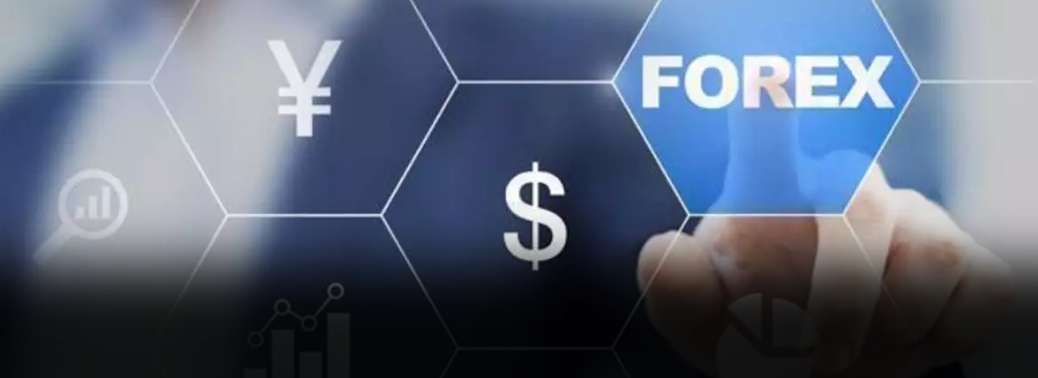
In News:
- Foreign exchange reserves crossed $400 billion for the first time in four months in the week ended February 1, 2019, according to data released by the Reserve Bank of India.
Explained:
- Total forex reserves grew over $2 billion from $398.17 billion in the week ended January 25 to hit a four-month high of $400.2 billion on February 1.
- The special drawing rights with the International Monetary Fund (IMF) rose by USD 6.2 million to USD 1.470 billion. The country’s reserve position with the IMF also increased by USD 11.2 million to USD 2.654 billion
In past:
- Expressed in US dollars, foreign currency assets include the effect of appreciation or depreciation of non-US currencies such as the euro, pound and yen held in the reserves.
- The reserves had touched a record high of USD 426.028 billion in the week to April 13, 2018. Since then, the forex kitty has been on a slide and is now down by over USD 31 billion.
Forex Reserves Explained:
- In India, Foreign Exchange Reserves are the foreign assets held or controlled by the country central bank. The reserves are made of gold or a specific currency.
- They can also be special drawing rights and marketable securities denominated in foreign currencies like treasury bills, government bonds, corporate bonds and equities and foreign currency loans.
- Foreign exchange reserves act as the first line of defense for India in case of economic slowdown, but acquisition of reserves has its own costs.
- Foreign exchange reserves facilitate external trade and payment and promote orderly development and maintenance of foreign exchange market in India
- Reserve bank of India Act, 1934 and the Foreign Exchange Management Act, 1999 set the legal provisions for governing the foreign exchange reserves. Reserve Bank of India accumulates foreign currency reserves by purchasing from authorized dealers in open market operations. Foreign exchange reserves of India act as a cushion against rupee volatility once global interest rates start rising.
The Foreign exchange reserves of India consists of below four categories:
- Foreign Currency Assets
- Gold
- Special Drawing Rights (SDRs)
- Reserve Tranche Position
Bharat – 22 ETF Additional Sale
13, Feb 2019

In News:
- The government will launch an additional offering of Bharat-22 Exchange Traded Fund (ETF) on February 14 to raise at least Rs 3,500 crore.
Explained:
- The proceeds from the ETF sale would help the government move towards meeting the Rs 80,000 crore disinvestment target set for the current fiscal.
- So far, the government has mopped up approximately Rs 36,000 crore by paring minority stake in public sector companies, and through ETFs.
- Conventionally, the follow-on fund offer (FFO) of an ETF remains open for four days in which the first day of the sale is reserved for anchor investors. The next three days are kept open for subscription from retail and other institutional investors.
- Since this is an additional on-tap offering of Bharat-22 ETF, the issue would open for a single day for both institutional and retail buyers.
- The government has so far raised Rs 22,900 crore through the Bharat-22 ETF. While Rs 14,500 crore was raised in November 2017, another Rs 8,400 crore was raised in June 2018.
- The central public sector enterprises (CPSEs) that are part of the ETF include ONGC, IOC, SBI, BPCL, Coal India and Nalco.
- Other constituents include Bharat Electronics, Engineers India, NBCC, NTPC, NHPC, SJVNL, GAIL, PGCIL and NLC India. Only three public sector banks — SBI, Indian Bank and Bank of Baroda — figure in the Bharat-22 index.
- This would be the second ETF offering by the government in the current fiscal which ends in March. In November last year, the government had raised Rs 17,300 crore through a follow-on offer of another exchange traded fund — CPSE ETF, which comprises shares of 11 public sector enterprises. This was the biggest-ever fund raising from an ETF domestically.
Retail Inflation cools further to 2.05% in January
13, Feb 2019
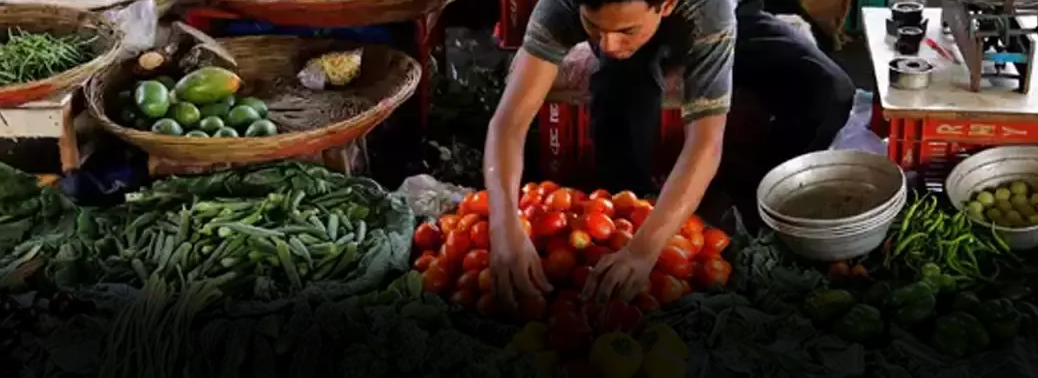
In News:
- Data released by the Central Statistics Office showed consumer price index or CPI-based inflation stood at 2.05% in January against the 18-month low of 2.11% in December, while factory output recovered to 2.4% in December from 0.3% in November.
Explained:
- This is the sixth straight month where the inflation has remained below the RBI’s medium-term target of 4 per cent.
- Retail inflation based on the Consumer Price Index (CPI) for December 2018 has also been revised downward to 2.11% from the earlier estimate of 2.19%. The inflation was 5.07% in January 2018.
- The data released by the Central Statistics Office further said the inflation in the ‘fuel and light’ category also fell to 2.2% in January this year from 4.54% in December 2018.
- The Reserve Bank of India, in its sixth bimonthly policy review, revised downwards the path of inflation to 2.8 per cent in the fourth quarter of 2018-19, 3.2-3.4 per cent in first-half of 2019-20 and 3.9 per cent in the third quarter of 2019-20, with risks broadly balanced around the central trajectory.
What is CPI?
- Consumer Price Indices (CPI) measure changes over time in general level of prices of goods and services that households acquire for the purpose of consumption.
- CPI numbers are widely used as a macroeconomic indicator of inflation, as a tool by governments and central banks for inflation targeting and for monitoring price stability, and as deflators in the national accounts.
- CPI is also used for indexing dearness allowance to employees for increase in prices. CPI is therefore considered as one of the most important economic indicators.
- For construction of CPI numbers, two requisite components are weighting diagrams (consumption patterns) and price data collected at regular intervals.
- The data refers to group wise all India Consumer Price Index for Rural & Urban with base year 2012. The dataset is published by Central Statistical Office (Ministry of statistics and programme implementation) and released on 12th of every month.
95% of Registered Realty Firms have No PAN
13, Feb 2019

In News:
- In an audit of assessments made by the Income Tax Department on the real estate sector, the Comptroller and Auditor General (CAG) found that a whopping 95% of the companies registered with the Registrar of Companies (RoC) did not have a permanent account number (PAN).
Explained:
- A CAG report tabled in Parliament Tuesday said the Registrar of Companies did not have information about PAN of 95 per cent of the real estate companies.
- Registrar of Companies (RoC) maintains database of all companies that register at the time of incorporation. Companies are required to file annual returns with RoCs.
- Form MGT-7, prescribed in the Companies (Management and Administration) Rules, 2014, requires a company to file its annual report mentioning its Permanent Account Number (PAN)
- Registrar of Companies (RoCs) did not have information about PAN in respect of 51,670 (95 per cent) of a total of 54,578 companies for which data was made available to Audit.
CAG Findings:
- Out of 840 companies with PAN coming under selected assessment charges, it was noticed that 159 companies (19 per cent) were not filing their ITRs. According to report of CAG, it can be concluded that there is no mechanism with ITD (income tax department) to ensure that all the registered companies have PAN and are filing their ITRs regularly. Out of total 78,647 assessments, the CAG checked 17,155 assessment records (about 22 per cent) with assessed income of Rs 1,02,106 crore during this performance audit. CAG noticed 1,183 mistakes (approx seven per cent of the audited sample) having tax effect of Rs 6,093.71 crore, thus causing loss of revenue to the government.
- CAG said since a sample of 22 per cent has yielded errors of Rs 6,093.71 crore, ITD needs to have the remaining 61,492 cases audited internally
- CAG also said the system in ITD to ensure compliance of filing of ITRs by the sellers of high value immovable properties was not effective.
Recommendations of CAG:
- The Central Board of Direct Taxes (CBDT) and corporate affairs ministry may have an arrangement “where there is an interface between ITD and RoC so that when a company is registered with RoC, the application for PAN is submitted automatically with ITD”.
- Also when PAN is issued to the newly incorporated company, it should be automatically sent to RoC Systems for updation.
- Further, the companies should be compulsorily required to submit a copy of acknowledgement of ITR while furnishing their annual reports in Form MGT-7. This will ensure that companies file their ITRs and at the same time the data of RoC will be in sync with that of ITD
- The tax department also needs to try to pin down the reasons for why there is such a substantial proportion of errors and fix the identified systematic faults and responsibility where the errors have happened as an act of commission.
Third Round of OALP
12, Feb 2019

In News:
- Indian government offered 23 oil and gas and CBM blocks for bidding in the third round of Open Acreage Licensing Policy (OLAP), expecting up to $700 million of investment that it hoped will help raise domestic output and cut imports.
Explained:
- OALP-III bid round was launched at the Petrotech 2019 conference
- In OALP-III, 23 blocks in 12 sedimentary basins are being offered. Of these, five are coal-bed methane (CBM) blocks. Total area on offer is about 31,000 square kilometers.
- OALP-III will run concurrently with OALP-II, where 14 blocks, covering an area of close to 30,000 sq km, is on offer for bidding, OALP-I, 55 blocks, covering an area of 60,000 sq km, were offered in January 2018 and awarded in October last year.
- The third round is expected to “generate immediate exploration work commitment of around $600-$700 million.
OALP:
- Under this policy, called open acreage licensing policy or OALP, oil companies are allowed to put in an expression of interest (EoI) for prospecting of oil and gas in any area that is presently not under any production or exploration licence. The EoIs can be put in at any time of the year but they are accumulated twice annually.
- Blocks are awarded to the company which offers the highest share of oil and gas to the government as well as commits to do maximum exploration work by way of shooting 2D and 3D seismic survey and drilling exploration wells.
- Increased exploration will lead to more oil and gas production, helping the world’s third largest oil importer to cut import dependence. Prime Minister has set a target of cutting oil import bill by 10 per cent to 67 per cent by 2022 and to half by 2030.
- India currently imports 81 per cent of its oil needs. The new policy replaced the old system of government carving out areas and bidding them out.
- It guarantees marketing and pricing freedom and moves away from production sharing model of previous rounds to a revenue-sharing model, where companies offering the maximum share of oil and gas to the government are awarded the block.
Will Try to Lift More banks from PCA: Finance Minister
09, Feb 2019
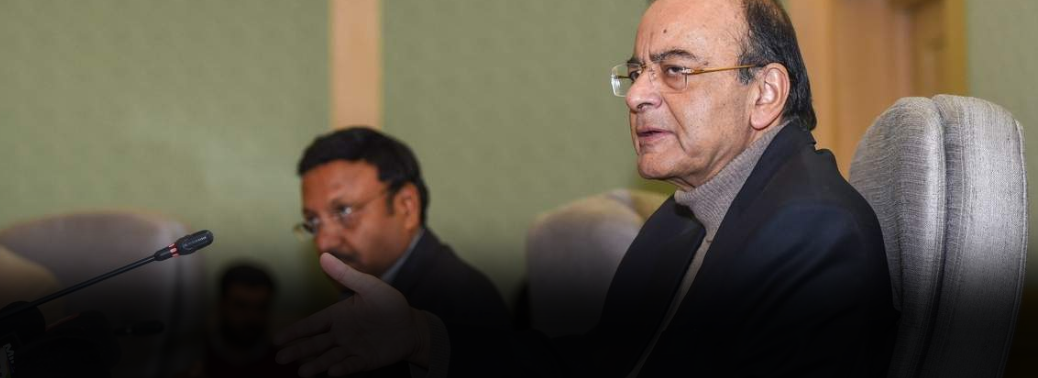
In News:
- After Reserve Bank of India (RBI) lifted restrictions under prompt corrective action (PCA) on three public sector banks last week of January 2019, Finance Minister said the government will try to help lift the restrictions on other public sector banks too.
Explained:
PCA Framework:
- PCA framework was started in 2002 to regulate activities of the banking sector
- The PCA framework is applicable only to commercial banks and not extended to co-operative banks, non-banking financial companies (NBFCs) and FMIs
- PCA framework is invoked on banks when they breach any of three key regulatory trigger points (or thresholds).
- They are capital to risk weighted assets ratio, net non-performing assets (NPA) and Return on Assets (RoA), Asset Quality, Profitability, Leverage – of the banks
- It also provides opportunity to RBI to pay focused attention on such banks by engaging. With focusing more closely in those areas.
- Depending on risk thresholds set in PCA framework, banks are put in two type of restrictions, mandatory and discretionary depending upon their placement in PCA framework levels. The mandatory restrictions are on dividend, branch expansion, director’s compensation while discretionary restriction include curbs on lending and deposits. At present, 8 weak PSBs out of the 21 State-owned banks are under the PCA, recently 3 (Bank of India, Bank of Maharashtra and Oriental Bank of Commerce) PSB got out of PCA framework making it to a total of 8
Its objective is to facilitate banks to take corrective measures including those prescribed by RBI, in timely manner to restore their financial health. PCA framework is supervisory tool of RBI, which involves monitoring of certain performance indicators of banks to check their financial health as early warning exercise and to ensure that banks don’t go bankrupted. The PCA framework would apply without exception to all banks operating in India including small banks and foreign banks operating through branches or subsidiaries based on breach of risk thresholds of identified indicators.
NEED For PCA Framework
- Due to the adverse impact on the economy, medium sized or large banks are rarely closed and the governments try to keep them afloat for this PCA kind of framework needed
- If banks are not to be allowed to fail, it is essential that corrective action is taken well in time when the bank still has adequate cushion of capital to minimize the losses. If these asset stressed banks are not properly taken care off then its bankruptcy will create a chain reaction in the economy setting off job losses, share market down and loss of credibility in public sector banks
What are the restrictions faced by banks in this Framework?
- The PCA framework prescribes five levels of trigger points based on capital measures, i.e. total risk-based capital ratio,
The five PCA categories are
- Well capitalized
- Adequately capitalized
- Undercapitalized
- Significantly undercapitalized, and
- Critically undercapitalized.
- On bank reaching the levels of undercapitalized, or significantly undercapitalized, or critically undercapitalized, automatic restrictions, as per provisions of Section 38 of FDI Act, are placed on the concerned bank in respect of
- Payment of capital distributions and management fees
- The growth of assets
- Requiring prior approval of certain expansion proposals
- Requiring that the RBI monitor the condition of the bank, and
- Requiring submission of a capital restoration plan.
- In addition to the above restrictions and close monitoring, the significantly undercapitalized and critically undercapitalized banks are restricted to pay compensation to senior executive officers of the institution. The critically undercapitalized bank is, in addition to above, required to take prior approval from RBI in respect of – entering into any material transaction other than in the usual course of business, such as any investment, expansion, acquisition, sale of assets, or other similar action; extending credit for any highly leveraged transaction; amending the institution’s charter or bylaws; making any material change in accounting methods; paying excessive compensation or bonuses; paying significantly high interest on new or renewed liabilities; making any principal or interest payment on subordinated debt beginning 60 days after becoming critically undercapitalized; and engaging in any covered transaction. In addition, RBI may further restrict the activities of the critically undercapitalized bank.
GOM Favours GST cut on Houses under Construction
09, Feb 2019

In News:
- A panel of State Ministers favored lowering GST on under-construction residential properties to 5%, from the 12% currently.
Explained:
- The Group of Ministers, (GoM) under Gujarat Deputy Chief Minister, was set up last month to analyse tax rates and issues/challenges being faced by the real estate sector under the Goods and Services Tax (GST) regime.
- In its first meeting, the GoM also favoured slashing GST on affordable housing from 8% to 3%. The GoM favored lowering GST rates on residential houses to 5 per cent without input tax credit and to 3 per cent for those under affordable housing
Current Scenario:
- Currently, GST is levied at 12 per cent with Input tax credit (ITC) on payments made for under-construction property or ready-to-move-in flats where completion certificate has not been issued at the time of sale.
- The effective pre-GST tax incidence on such housing property was 15-18%
- GST, however, is not levied on buyers of real estate properties for which completion certificate has been issued at the time of sale.
- There have been complaints that builders are not passing on the ITC benefit to consumers by way of reduction in price of the property after the roll-out of GST. Because if certificate is issued then they have to pass the ITC benefit
- Some experts say this will lead to reduction of home prices by as much as Rs 3,00,000 for super built-up area of 1,000 sq feet.
- This will boost the demand for the residential houses in the realty sector which will in turn boost the demand for the employment generation in the construction sector.
RBI unlikely to transfer contingency fund to Govt.,
07, Feb 2019
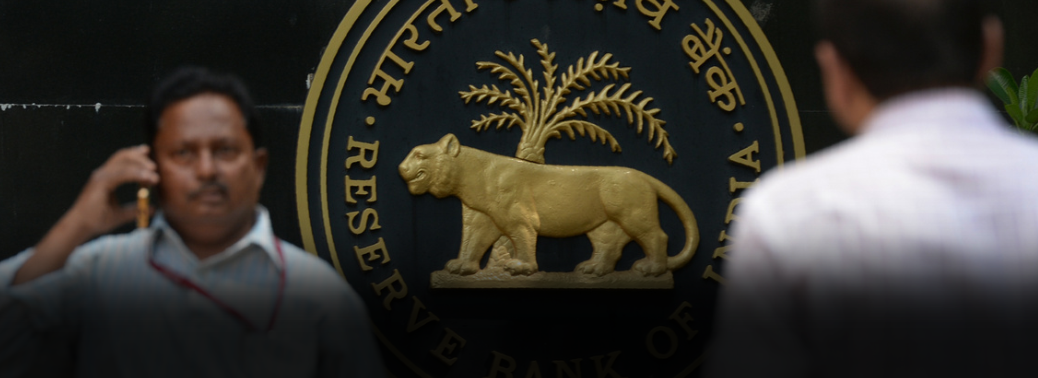
In News:
- The Reserve Bank of India (RBI) is unlikely to surrender to government’s demand of transferring funds that was set aside for contingency reserves in 2016-17 and 2017-18.
Explained:
- A total of Rs. 27,330 crores — Rs. 13,140 crores in FY17 and Rs. 14,190 crores in FY18 — was set aside by the RBI for the contingency fund.
- There was no precedence of such a dividend being paid, that is, from funds that have already been set aside for contingencies.
- But the government has requested the RBI for providing an interim surplus for the financial year 2018-19 on the analogy of previous financial year and transfer of the amount withheld from the surplus of 2016-17 and 2017-18
- At the same time, the RBI has now decided to conduct statutory audit of its account twice a year, so that it can transfer the surplus to the government as many times. The government has been demanding more funds as dividend from the RBI which has become a bone of contention.
- A six-member committee headed by former RBI Governor Bimal Jalan has been formed to review the economic capital framework of the central bank.
- RBI’s reserves amount to nearly 28 per cent of its total assets. The global average is around 16 per cent. Centre believes RBI should maintain reserves amounting to 15-16 per cent of total assets, in line with the global average. Hence, ECF’s new formula is likely work towards that end.
Term of Reference of ECF:
- It would be to review status, need and justification of various provisions, reserves and buffers presently provided for by the RBI, keeping in mind ‘public policy mandate of the RBI, including financial stability considerations.
- The committee will also review best practices followed by the central banks globally in making assessment and provisions for risks, to which central bank balance sheets are subjected.
- The panel would also suggest an adequate level of risk provisioning that the RBI needs to maintain, and to determine whether it is holding provisions, reserves and buffers in surplus or deficit of the required level.
- NThe committee would also propose a suitable profit distribution policy taking into account all the likely situations of the RBI, including holding more provisions than required and the RBI holding less provision than required.
Cabinet approves unified regulator for IFSC’S
07, Feb 2019

In News:
- The Cabinet has approved the setting up of a unified authority that would regulate all the financial services in International Financial Services Centres (IFSC), such as the Gujarat International Finance Tec-City (GIFT) in Gandhinagar.
Background:
- For this purpose, International Financial Services Centres Authority Bill, 2019 to be introduced.
- Gujarat International Finance Tec-City Co. Ltd is being developed as the country’s first international financial services centre (IFSC).
- The SEZ Act 2005 allows setting up an IFSC in an SEZ or as an SEZ after approval from the central government.
What is an IFSC?
- An IFSC is thus a jurisdiction that provides world class financial services to non-residents and residents, to the extent permissible under the current regulations, in a currency other than the domestic currency (Indian rupee) of the location where the IFSC is located
- An IFSC caters to customers outside the jurisdiction of the domestic economy. Such centres deal with flows of finance, financial products and services across borders. London, New York and Singapore can be counted as global financial centres.
- Many emerging IFSCs around the world, such as Shanghai and Dubai, are aspiring to play a global role in the years to come. An expert panel headed by former World Bank economist Percy Mistry submitted a report on making Mumbai an international financial centre in 2007.
- However, the global financial crisis that unfolded in 2008 made countries including India cautious about rapidly opening up their financial sectors.
What are the services an IFSC can provide?
- Fund-raising services for individuals, corporations and governments
- Asset management and global portfolio diversification undertaken by pension funds, insurance companies and mutual funds
- Wealth management
- Global tax management and cross-border tax liability optimization, which provides a business opportunity for financial intermediaries, accountants and law firms.
- Global and regional corporate treasury management operations that involve fund-raising, liquidity investment and management and asset-liability matching
- Risk management operations such as insurance and reinsurance
- Merger and acquisition activities among trans-national corporations
Why an IFSC in India?
- An IFSC seeks to bring to India, those types of financial services and transactions that are currently carried on outside India by overseas financial institutions and overseas branches/ subsidiaries of Indian financial institutions.
- The policy objective behind establishing an IFSC in India is providing a platform for international financial services to operate from and to specialize in exports of high value-added International Financial Services.
Board members’ fiduciary responsibility with RBI’
07, Feb 2019
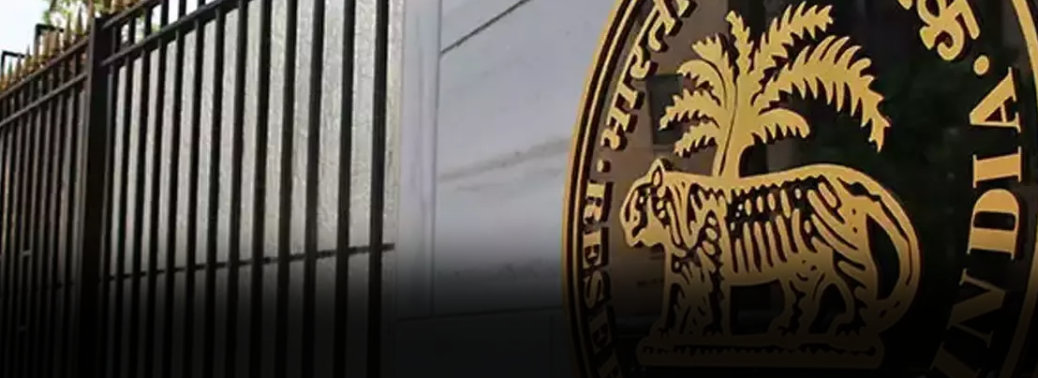
In News:
- The fiduciary responsibility of the RBI’s board members lies with the central bank, RBI governor quoted.
Explained:
- At present, the central bank has 18 board members including the governor and the four deputy governors.
- There are 11 members, who are experts in their field, nominated by the government, besides two government officials — the Secretary of Economic Affairs and Secretary of Financial Services.
- The RBI board is not involved in monetary policy making or any particular policy-related issues, but provides a broader vision to the central bank.
- However, the board of the central bank had raised various policy related issues during the previous governor’s tenure such as the issue of economic capital framework, governance of RBI, lifting prompt corrective action framework from several banks and a special package for the micro, medium and small enterprises.
Background:
Central Board:
- The Reserve Bank’s affairs are governed by a central board of directors. The board is appointed by the Government of India in keeping with the Reserve Bank of India Act.
- Appointed/nominated for a period of four years.
Constitution:
Official Directors
Non-Official Directors
- Nominated by Government: ten Directors from various fields and two government Official
- Others: Four Directors – one each from four local boards
Fully owned subsidiaries of rbi:
- Deposit Insurance and Credit Guarantee Corporation of India (DICGC),
- Bharatiya Reserve Bank Note Mudran Private Limited (BRBNMPL),
- National Housing Bank (NHB),
- Reserve Bank Information Technology Private Limited (ReBIT)
Govt. Subsidy Spend on the rise Again
06, Feb 2019
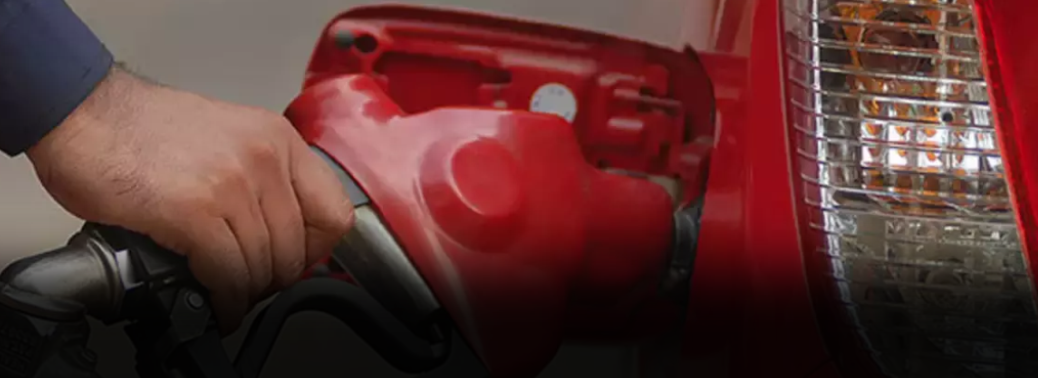
In News:
- Rising LPG prices and higher subscribers have resulted in the government’s subsidy expenditure over the last two years reversing a declining trend established in the previous six years, an analysis of Budget documents shows.
Explained:
- The data show that the government’s total expenditure on subsidies is expected to make up 9.83% of its total expenditure overall in 2019-20, according to the Budget estimate for the year, up from the 9.65% in the revised estimate for 2018-19.
- This increase might not seem significant by itself, but it becomes noteworthy when viewed against the backdrop of a consistent annual fall from 18.2% in 2012-13 to 8.15% in 2017-18.
Reason for the Rise:
- The sharp rise in food and petroleum subsidies over the last two budgets of 2018-19 and 2019-20. And also because of the increase in the Minimum Support Prices hiked across the board, the reason behind the increase in the petroleum subsidy has to do in particular with the government’s focus on LPG as a source of cleaner cooking fuel.
- The reason for the increase in the petroleum subsidy is because of an increased allocation for the Direct Benefit Transfer scheme for LPG,
- Because, LPG prices have been rising, and the number of subscribers has been increasing, so the subsidy amount will naturally increase.
- The price of an unsubsidised cylinder was Rs. 809.50 in December, which means the subsidy was Rs. 308 a cylinder. And the Centre subsidises 12 cylinders a year per customer. The government has two major schemes in the LPG sector. PAHAL scheme, the first, involves direct cash transfers to LPG consumers for 12 numbers of 14.2 kg cylinders per year. The second scheme, the Ujjwala Yojana, seeks to give free LPG connections to poor In terms of consumption, data with the Petroleum Planning and Analysis Cell show that LPG consumption has grown in tandem with the launch of the PAHAL scheme. While LPG consumption grew 1.6% and 4.4% in 2012-13 and 2013-14, respectively, the growth averaged 9.4% in the years since the scheme was launched in 2013.
- Food subsidies increased to Rs. 1,71,298 crores in 2018-19, up a whopping 70.8% over its allocation in the previous year.
- Similarly, petroleum subsidies have been budgeted to increase a significant 50.9% in 2019-20 to Rs. 37,478 crores.
PAHAL Scheme:
- PaHaL (Pratyaksha Hastaantarit Laabh) is the abbreviated alternate Hindi name for the Direct Benefit Transfer (DBT) Scheme existing in India for the direct cash transfer of subsidy for Liquefied Petroleum Gas (LPG) used in household cooking.
- As the name suggests, LPG consumers who join the PaHaL scheme will get their LPG cylinders at market price and receive LPG subsidy, as per their entitlement, directly into their bank accounts
- Launched by ministry of petroleum and natural gas
Ujjwala Yojana:
- Under the scheme, five crore LPG connections are to be provided to BPL households. The identification of eligible BPL families will be made in consultation with the State Governments and the Union Territories. BPL is a person/ household who suffers from at least one deprivation under the Socio-Economic Caste census (SECC) – 2011 Database. Under the scheme, five crore LPG connections are to be provided to BPL households. The Scheme provides a financial support of Rs 1600 for each LPG connection to the BPL households, interest free loan to purchase stove and refill by Oil Marketing Companies.
- The administrative cost of Rs. 1600 per connection, which includes a cylinder, pressure regulator, booklet, safety hose, etc. would be borne by the Government
- Launched by Ministry of Petroleum and Natural Gas (MoP&NG)
Centre May relax Angel Tax Norms for start-ups, sets up Panel
05, Feb 2019

In News:
- The government decided to set up a five-member working committee to look into the angel tax issue and come up with guidelines in one week. It also agreed to implement some key changes requested by start-ups regarding the issue.
Explained:
What is Angel Tax?
- The angel tax applies to unlisted companies that have raised capital through an issue of shares at a price deemed to be in excess of the fair market value of those shares.
- The excess capital over and above the fair market value is then treated as income and taxed accordingly. As this largely affects angel investments in start-ups, it has been dubbed angel tax.
What is the Issue?
- According to a January 16 notification, start-ups whose aggregate amount of paid-up share capital and share premium after the proposed issue of share does not exceed Rs. 10 crores are eligible for exemption from the tax. But start-ups want these limits to be lifted.
Outcome:
- Government agreed to raise this limit to Rs. 25 crores. They also agreed to amend the definition of a start-up to include companies that have been in operation for up to 10 years rather than the previous limit of seven years.
- On the investor side, the notification had said that the angel investor should have filed income tax returns of at least Rs. 50 lakhs for the year preceding the year in which the investment was made and have a net worth of Rs. 2 crores. This changed attended to be Rs. 25 lakh and Rs. 1 crore, respectively.
- And government also refused to wholly abolish the angel tax because it may increase the money laundering via shell companies.
April – Dec Fiscal Deficit at 112.4% of Budget Target
05, Feb 2019
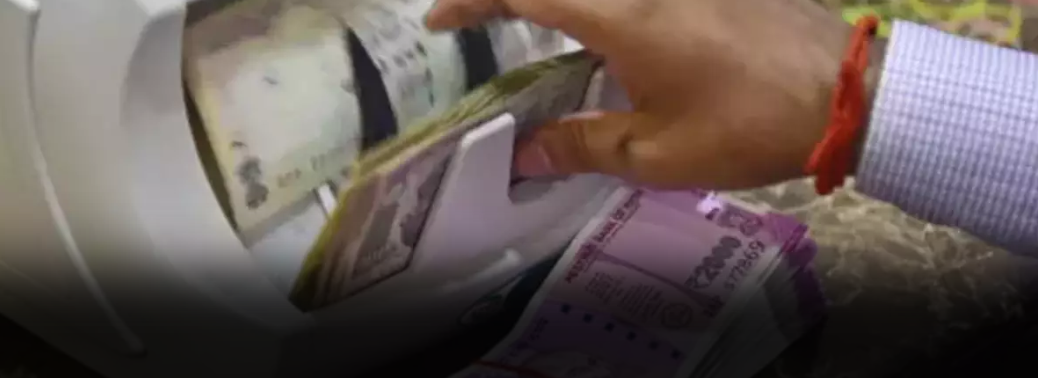
In News:
- The fiscal deficit for the period April-December 2018 has touched 112.4% of the budget target of Rs. 6.24 lakh crore for the financial year 2018-19, data from the Controller General of Accounts (CGA) shows.
Explained:
- In absolute figures, the fiscal deficit was at Rs. 7.01 lakh crore during April-December of this financial year. The situation, however, is marginally better than last year, where the fiscal deficit at the end of December 2017 was 113.6% of that year’s budget estimate.
- The government has budgeted to cut the fiscal deficit to 3.3 percent of GDP or Rs 6.24 lakh crore in 2018-19, from 3.53 percent in the previous financial year. In the interim budget for 2019-20, the fiscal deficit was revised upwards marginally to 3.4 percent of GDP or over Rs 6.34 lakh crore, on account of additional outlay of Rs 20,000 crore for funding income scheme for small farmer
- Tax revenue was 2 per cent of BE, compared with 73.4 per cent in the comparable period of the previous year.
- According to the CGA data, the total expenditure of the government at December-end was Rs 18.32 lakh crore or 75 percent of BE.
- The total expenditure for current fiscal has been raised to Rs 24.57 lakh crore in the Revised Estimates, from the budgeted Rs 24.42 lakh crore.
What is Fiscal Deficit?
- The difference between total revenue and total expenditure of the government is termed as fiscal deficit. It is an indication of the total borrowings needed by the government. While calculating the total revenue, borrowings are not included.
FRBM Target:
- The Fiscal Responsibility and Budget Management (FRBM) Act was enacted in 2003 which set targets for the government to reduce fiscal deficits. The targets were put off several times. In May 2016, the government set up a committee under NK Singh to review the FRBM Act.
- The government believed the targets were too rigid. The committee recommended that the government should target a fiscal deficit of 3 per cent of the GDP in years up to March 31, 2020 cut it to 2.8 per cent in 2020-21 and to 2.5 per cent in 2020-21 and to 2.5 per cent by 2023.
GST Collection may Grow 18% in FY20: Govt.
04, Feb 2019

In News:
- The Union government has projected over 18% growth in Goods and Services Tax (GST) collections in 2019-20 based on the rising trend in revenue mop-up witnessed during the three-month period ending January 2019.
Explained:
- The central government plans to collect over ₹61 lakh crore in Goods and Services Tax (GST) next fiscal as against the revised estimate of over ₹6.43 lakh crore to be collected in the current financial year ending March. This translates into an 18 per cent growth in mop up.
Reason for optimistic Estimate:
- During the last one-and-half years, a series of measures, both in rate rationalization and processes, have been undertaken. The changes made to the GST system will hopefully lead to consolidation next year, which in turn will result in higher revenue
- GST has resulted in an increased tax base, higher collections, and ease of trade, adding that with the introduction of the GST, inter-state movement of goods has become faster, more efficient, and hassle free with no entry tax, check posts, and truck queues.
- Last fiscal our average collection was ₹89,000 crore. This fiscal it is averaging ₹97,000 crore. So, the revenue trend is on upward scale. If one compares November, December, January of 2017-18 with that of 2018-19, one can see a 14 per cent increase.
Govt., to cut process time for Stake Sale in 35 CPSES
04, Feb 2019

In News:
- With 35 Central Public Sector Enterprises (CPSEs) being lined up for strategic sale, the Finance Ministry is planning to streamline processes to cut down the time for the outright sale of such state-owned companies.
Explained:
- Taking from the example of the ongoing strategic sale of Pawan Hans (A mini ratna government of India enterprise), the Department of Investment and Public Asset Management (DIPAM) is keen that the long-drawn sale process of CPSEs be simplified so that more than one company could be taken up for the sell-off simultaneously.
- Government is going to correct the procedure (for strategic sale). It is a bit long and long winding, which was okay initially as government had to take a lot of precautions. Now also government will take precaution, but now government has experience and understands how to go ahead.
- NITI Aayog recently submitted to the DIPAM the fifth list of CPSEs, profitable as well as non-profitable, which can go in for a strategic sale. This takes the total number of CPSEs identified for strategic disinvestment to 35.
- The companies which have been shortlisted for strategic sale include Air India, Air India subsidiary AIATSL, Dredging Corporation, BEML, Scooters India, Bharat Pumps Compressors, and Bhadrawati, Salem and Durgapur units of steel major SAIL.
- The other CPSEs for which approvals are in place for outright sale include Hindustan Fluorocarbon, Hindustan Newsprint, HLL Life Care, Central Electronics, Bridge & Roof India, Nagarnar Steel plant of NMDC and units of Cement Corporation of India and ITDC
Policy on strategic disinvestment:
- Strategic disinvestment by way of sale of substantial portion of Government shareholding in identified CPSEs upto 50 per cent or more, alongwith transfer of management control.
- To be undertaken through a consultation process among different Ministries/Departments, including NITI Aayog.
- NITI Aayog to identify CPSEs for strategic disinvestment and advice on the mode of sale, percentage of shares to be sold of the CPSE and method for valuation of the CPSE.
- The Core Group of Secretaries on Disinvestment (CGD) to consider the recommendations of NITI Aayog to facilitate a decision by the Cabinet Committee on Economic Affairs (CCEA) on strategic disinvestment and to supervise/monitor the process of implementation.
Pawan Hans:
- Helicopter services provider Pawan Hans is a joint venture between the government and ONGC. The government holds 51 per cent stake while state-owned ONGC owns the remaining 49 per cent shareholding. Pawan Hans has a fleet of 46 choppers.
Budget Special – 2019
02, Feb 2019
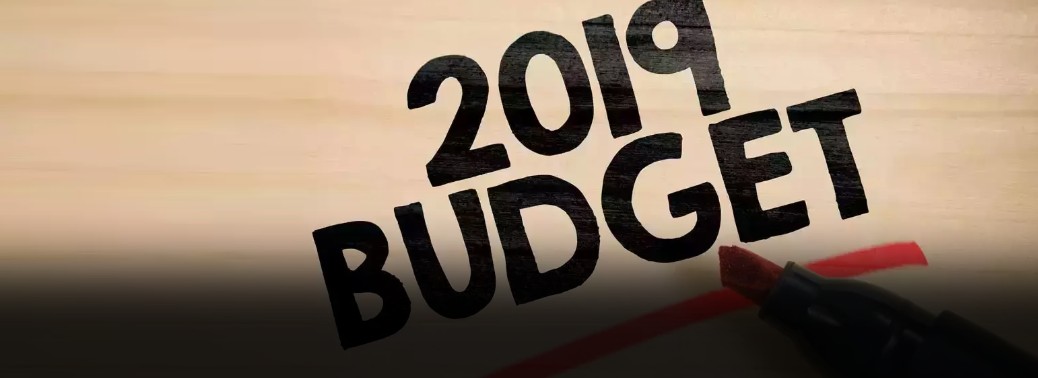
Interim Budget:
- An Interim Budget usually doesn’t list out new schemes or doesn’t unveil any policy measures. The government will present the vote on account for the next four-to-five months. A full-fledged Budget will be presented after the House reassembles after the general election.
- India to become a USD 5-trillion economy in the next five years and aspires to become a USD 10-trillion economy in the next 8 years.
- Fiscal deficit for 2018/19 seen at 4% of GDP
- FY20 total expenditure seen at ₹84 trillion rupees
- FY20 capital expenditure seen at ₹3,36,292 crore
- Central schemes to get ₹3,27,679 crore FY20
- Recovered ₹3 lakh crore via bankruptcy code
- Current account deficit for 2018/19 seen at 5% of GDP
- Bank of India, Bank of Maharashtra and Oriental Bankno more under RBI’s prompt corrective action.
Direct Tax proposals:
No income tax for earnings up to 5 lakhs
- Individuals with gross income of up to ₹6.5 lakh need not pay any tax if they make investments in provident funds and prescribed equities.
- More than Rs. 23,000 crore tax relief to 3 crore middle class taxpayers
- Standard tax deduction for salaried persons raised from ₹40,000 to ₹50,000
- TDS threshold to be raised from Rs. 10,000 to Rs. 40,000on interest earned on bank/post office deposits
- I-T processing of returns to be done in 24 hours
- Within the next 2 years, all verification of tax returns to be done electronically without any interface with the taxpayer
- Existing rates of income tax to continue
- Tax exempted on notional rent on a second self-occupied house
- Housing and real estate sector to get boost-
- TDS threshold on rental income increased from 8 lakh to 2.4 lakh.
- Benefit of rollover of capital gains increased from investment in one residential house to two residential houses for capital gains up to Rs. 2 crores.
- Tax benefits for affordable housing extended till 31st March, 2020 under Section 80-IBA of Income Tax Act
- Tax exemption period on notional rent, on unsold inventories, extended from one year to two years
- Direct tax collections from 6.38 lakh crore rupees in 2013-14 to almost 12 lakh crore rupees; tax base up from Rs 3.79 crore to Rs 6.85 crore. 99.54% returns have been accepted without any scrutiny. In January 2019, GST collections has crossed 1 lakh crore rupees.
Farmers:
- Under Pradhan Mantri Kisan Samman Nidhi(PM-KISAN), 6000 rupees per yearfor each farmer, in three installments, to be transferred directly to farmers’ bank accounts, for farmers with less than 2 hectaresland holding.
- This initiative is likely to benefit 12 crore small and marginal farmers, at an estimated cost of Rs 75,000 crore for FY 2019-20 with additional Rs. 20,000 crores in RE 2018-19.
- Outlay for Rashtriya Gokul mission increased to Rs 750 crore.
- Rashtriya Kamdhenu Ayog to be setup for sustainable genetic up-gradation of the Cow resources.
- New separate Department of Fisheries for welfare of 1.5 crore fishermen.
- 2% interest subvention to Farmers for Animal husbandry and Fisheries activities; additional 3% in case of timely repayment.
- Interest subvention of 2% during disaster will now be provided for the entire period of reschedulement of loan.
- Decision taken to increase MSP (minimum support price) by 1.5 times the production cost for all 22 crops.
Labour:
- Pradhan Mantri Shram Yogi Mandhan scheme to provide assured monthly pension of 3000 rupees per month, with contribution of only Rs 100/55 per month, for workers in unorganised sector after 60 years of age.
- This will benefit 10 crore workers in unorganized sector & become the world’s biggest pension scheme for unorganized sector in five years.
- New Pension Scheme (NPS) had been increased 10% to 14%with effect from April 1, 2019.
- Gratuity limit payment increased from Rs. 10 lakhs to Rs. 20 lakhs
- ESI Cover limit increased to ₹ 21,000. Minimum pension also increased to ₹
Health:
- 22nd AIIMSto be setup in Haryana
- National Health Mission budget estimates were hiked from Rs 30,634 crore to Rs 32,251 crore from the previous fiscal.
North East:
- Allocation to be increased by 21% to Rs. 58,166 croresin 2019-20 BE(Budget Estimates) over 2018-19 BE
- Arunachal Pradesh came on the air map recently
- Meghalaya, Tripura and Mizoram came on India’s rail map for the first time
- Container cargo movement through improved navigation capacity of the Brahmaputra.
Defence:
- Defence budget hiked to over Rs 3 lakh crorefor first time ever
Railways:
- Capital support of 64,587 croreproposed in 2019-20 (BE) from the budget
- Overall capital expenditure programme to be of Rs. 1,58,658 crores
- Operating Ratio expected to improve from 98.4% in 2017-18
- to 96.2% in 2018-19 (RE) and to 95% in 2019- 20 (BE)
- Safest year’ for railways in its history
- All Unmanned Level Crossings on broad gauge network eliminated.
- Semi high-speed “Vande Bharat Express” introduced – first indigenously developed and manufactured.
Major Fund Allocations:
- Rural Development: increased by 6 per cent to Rs 1.18-lakh crorefor the next financial year as compared to Rs 1.12-lakh crore in the current fiscal.
- 60, 000 crore allocation for MGNREGAin 2019-20 BE(Budget Estimates).
- For fiscal year 2018-19, NREGS was allocated Rs 55,000 crore.
- Mahatma Gandhi National Rural Employment Guarantee Act (MGNREGA) promises unskilled manual work to every adult for at least 100 days in rural parts of the country. It was introduced in 2005.
- PMAY-G, the allocation is less at Rs 19,000 crorefrom Rs 21,000 crore in 2018-19.
- PMGSYstands at Rs 19,000 crore for 2019-20, same as in 2018-19.
- Rs 93,847.64 crore allocated for education sector for 2019-20, an increase of over 10 per cent from Rs 85,010 crore 2018-19
- Rs 37,461.01 crore has been allocated for higher education, Rs 56,386.63 crore has been earmarked for school education.
- Job and Skill Development from Rs 5,071 crore to Rs 7,511 crore 2019-20.
- Urban Rejuvenation Mission AMRUT and Smart Cities Mission: BE were increased from Rs 12,169 to Rs 13,900 crore for the 2019-20 fiscal year.
- Food subsidy to Food Corporation of India under National Food Security Act: increased from Rs 1,38,123 crore to Rs 1,51,000 crore.
- Space Technology:increased from Rs 6,576 crore to Rs 7,483 crore.
- National Highways Authority of India: increased from Rs 29,663 crore to Rs 36,691 crore.
- Direct Benefit Transfer: increased from Rs 16,478 crore to Rs 29,500 crore.
- Urea subsidiary: raised from Rs 45,000 crore to Rs 50, 164 crores.
- Sports Budget:increased from Rs 2002.72 (2018-2019) crore to Rs 2216.92 crore.
- Allocation for Integrated Child Development Scheme (ICDS) increased by over 18% to Rs. 27,584 crores in BE 2019-20
- Substantial increase in allocation for the Scheduled Castes and Scheduled Tribes –
- Allocation for SCs increased by 35.6% – from Rs. 56,619 crores in BE 2018-19 to Rs. 76,801 crores in BE for 2019-20
- Allocation for the STs increased by 28% – from 39,135 crore in BE 2018-19 to Rs. 50,086 crores in 2019-20 BE
Digital Villages:
- The Government to make 1 lakh villages into Digital Villagesover next five years
Women:
- 1330 Crore allocate for the Mission for Protection and Empowerment for Women.
- Maternity leave of 26 weeksand Pradhan Mantri Matru Vandana Yojana for pregnant women in work.
- More than 70% of the beneficiaries of Pradhan Mantri MUDRA Yojana are women.
- 6 crore free LPG connections under the Ujjawala Yojana.
MSME and Traders:
- 2% interest subvention on an incremental loan of Rs 1 crore for GST registered SMEs
- Atleast 3% of the 25% sourcing for the Government undertakings will be from women owned SMEs
- Renewed Focus on Internal trade; DIPP renamed to Department for Promotion of Industries and Internal trade
Fiscal Programme:
- Fiscal deficit pegged at 3.4% of GDP for 2019-20
- Target of 3% of fiscal deficit to be achieved by 2020-21.
- Fiscal deficit brought down to 3.4% in 2018-19 RE from almost 6% seven years ago
- Total expenditure increased by over 13% to Rs.27,84,200 crore in 2019-20 BE
- Capital Expenditure for 2019-20 BE estimated at Rs. 3,36,292 crores
- Centrally Sponsored Schemes (CSS) allocation increased to Rs. 3,27,679 crores in BE 2019-20
- Government confident of achieving the disinvestment target of 80,000 crore
- Focus now on debt consolidation along with fiscal deficit consolidation programme.
Entertainment Industry:
- Indian filmmakers to get access to Single window clearance as well for ease of shooting films
- Regulatory provisions to rely more on self-declaration
- To introduce anti-camcording provisions in the Cinematograph Act to control piracy
Others:
- New National Artificial Intelligence portal to support National Program on Artificial Intelligence
- A new committee under NITI Ayog to identify all the remaining De-notified nomadic and semi-Nomadic tribes.
- New Welfare development Board under Ministry of social justice and empowerment for development and welfare of De-notified nomadic and semi nomadic tribes
Vision 2030 in Budget:
Ten dimensions of Vision for India of 2030:
- Next Generation Infrastructure – to provide an “ease of living”.
- Digital India – reached every corner of the economy and every citizen.
- Clean and Green India – Making India pollution free by leading transport revolution with Electric Vehicles and focus on Renewables.
- Rural Industrialization – using modern digital technologies to generate massive employment
- Clean Rivers – safe drinking water to all Indians using micro-irrigation techniques.
- Oceans and Coastlines – scaling up of Sagarmala
- Space Programme – India becoming a launchpad of the world by placing an Indian astronaut in space by 2022
- Self-Sufficient – in food and improving agricultural productivity with emphasis on organic food
- Healthy India – with a distress-free and comprehensive wellness system for all
- Minimum Government, Maximum Governance – with proactive, responsible, friendly bureaucracy and electronic governance.
What is a vote on Account?
- A vote on account essentially means that the government seeks the approval of Parliament for meeting expenditure— paying salaries, ongoing programmes in various sectors etc — with no changes in the taxation structure, until a new government takes over and presents a full Budget that is revised for the full fiscal.
Why present a vote on Account?
- The reasoning is that there is little time to get approvals from Parliament for various grants to ministries and departments, and to debate these as well as any provisions for changes in taxation.
- More importantly, the reasoning is that it would be the prerogative of the new government to signal its policy direction, which is often reflected in the Budget.
Difference between Full Budget and Vote on Account:
- Full Budget deals with both expenditure and revenue side but Vote-on-account deals only with the expenditure side of the government’s budget.
- The vote-on-account is normally valid for two months but full budget is valid for 12 months (a financial year).
- As a convention, a vote-on-account is treated as a formal matter and passed by Lok Sabha without discussion. But passing for budget happens only after discussions and voting on demand for grants.
What’s an Interim Budget?
- An Interim Budget is not the same as a ‘Vote on Account’. While a ‘Vote on Account’ deals only with the expenditure side of the government’s budget, an Interim Budget is a complete set of accounts, including both expenditure and receipts. An Interim Budget gives the complete financial statement, very similar to a full Budget.
GST Collections Cross Rs.1 Lakh Crore in January
01, Feb 2019
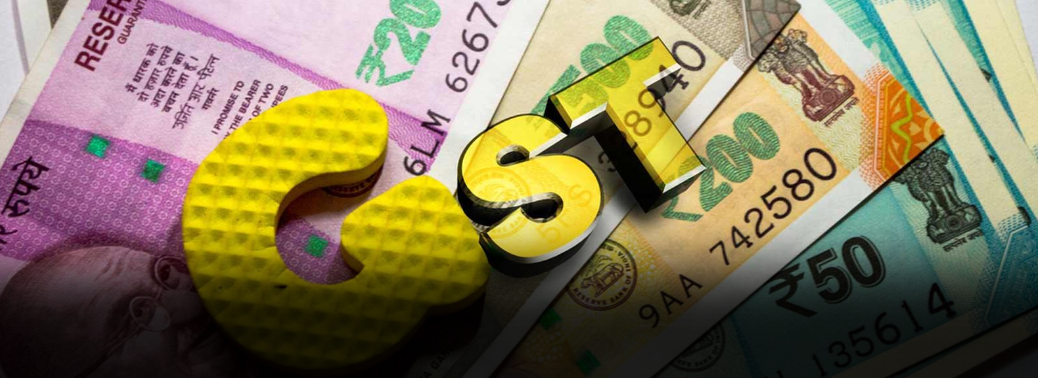
In News:
The government said that Goods and Services Tax (GST) collections crossed the Rs. 1 lakh-crore mark in January, the third month this financial year it would have done so.
Explained:
- The total gross GST revenue collected in the month of January 2019 has crossed Rs. 1 lakh crore. This has been a significant improvement over collection of Rs. 94,725 crores during last month and Rs. 89,825 crores during the same month last year
- This increase has been achieved despite various tax relief measures implemented by the GST Council to lower the tax burden on the consumers,” the Ministry added. “Final figures and details of collections for the entire month will be intimated on 2nd February, 2019. This again underlines that collections are increasing steadily as compliances are getting simplified, rates are getting reduced and administration is getting sharper.
- GST collection stood at Rs 1.03 lakh crore in April, Rs 94,016 crore in May, Rs 95,610 crore in June, Rs 96,483 crore in July, Rs 93,960 crore in August, Rs 94,442 crore in September, Rs 1,00,710 crore in October and Rs 97,637 crore in November. If the same pace is maintained, the revenue targets would be close to being achieved.
- These numbers indicate that rate reductions result in increased revenues and compliance. The government has set a budgetary target of over Rs 1 lakh crore monthly average collection in FY 2019.
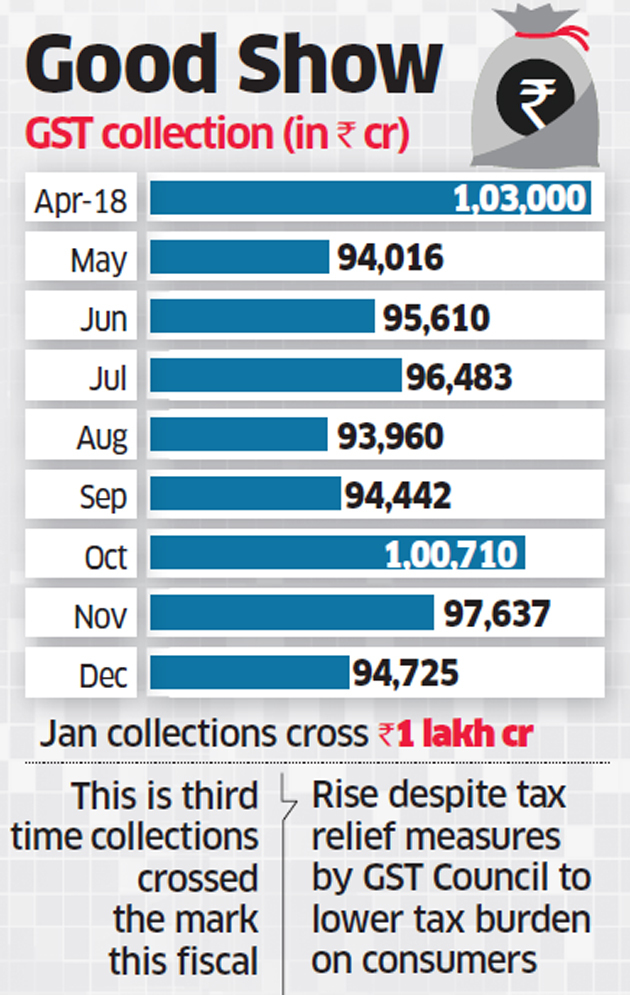
Health Sector Seeks Tax breaks for middle class in Budget
01, Feb 2019
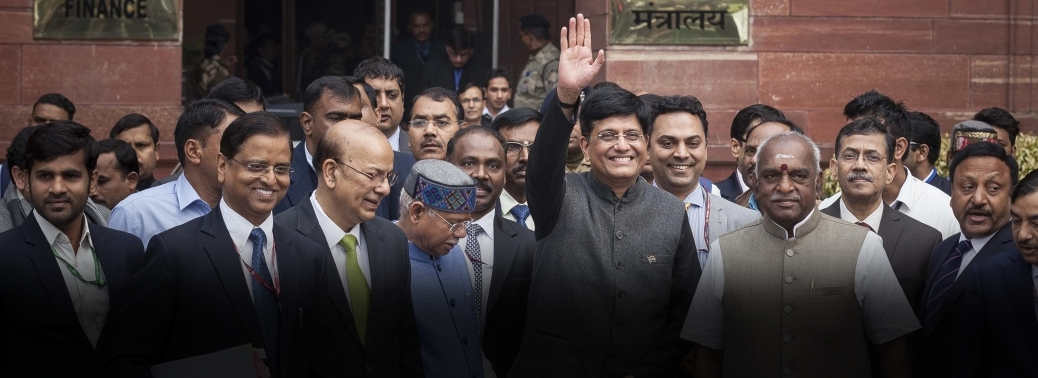
- The healthcare sector wants the government’s interim Budget to include tax measures to help the middle class better mitigate health risks.
- “Ayushman Bharat for the financially weaker section took centre stage in healthcare last year; however, the middle class is still at risk!,”
- A first step to universal health coverage would be to increase deduction for medical insurance premium under section 80D for self, family and dependant parents. An enhancement in the medical allowance for salaried employees in line with inflation and a separate deduction in respect of preventive health checks would be desirable.
- We look forward to zero-rating of GST for the sector, or for normalisation of the GST rates for services consumed by the healthcare service providers at 5%,’’ Ms. Reddy added.
- A reduction in the cost of medical equipment that will help in increasing the outreach of telemedicine and home healthcare facilities. This, in turn, will help in the preventive and timely treatment of non-communicable diseases that are expected to account for 75% of the country’s diseases by 2025.
- The last year had been a challenging one for India’s private healthcare providers, with multiple headwinds impacting growth and profitability. The overall sector had become less attractive for investments, the absence of which had hindered growth significantly.
- However, given that more than two-thirds of the sector was driven by private operators, the government had to increase its willingness to partner with the private sector players.
Manufacturing PMI rises to 53.9 in January
01, Feb 2019
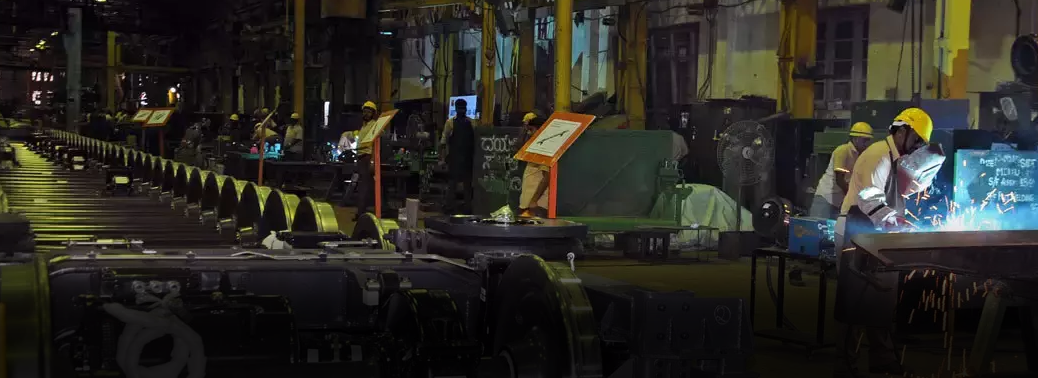
In News:
- The country’s manufacturing sector activity edged higher in January as companies continued to scale up production and employment, driven by the fastest rise in factory orders since December 2017, according to a monthly survey.
Explained:
- The Nikkei India Manufacturing Purchasing Managers’ Index (PMI) increased from 53.2 in December to 53.9 in January, indicating stronger improvement in the health of the goods producing sector.
- This is the 18th consecutive month that the manufacturing PMI remained above the 50-point mark. According to the survey, the increase in factory orders was the strongest seen in 13 months. Besides, favourable economic conditions, strengthening demand and sales growth also picked up in January.
What is Purchasing Managers’ Index (PMI)?
- For India, the PMI Data is published by Japanese firm Nikkei but compiled and constructed by Markit Economics (for the US, it is the ISM). The variables used to construct India’s PMI for manufacturing sector are: Output, New Orders, Employment, Input Costs, Output Prices, Backlogs of Work, Export Orders, Quantity of Purchases, Suppliers‟ Delivery Times, Stocks of Purchases and Stocks of Finished Goods.
- Similar variables are used for the construction of services PMI. A manufacturing PMI and a services PMI are prepared and published by the two.
What it means to Economy?
- In terms of composition, we can say the PMI is a sentiment tracking index. As indicated earlier, an indicator of the economic health of the manufacturing sector, the Purchasing Managers’ Index is based on five major indicators: new orders, inventory levels, production, supplier deliveries and the employment environment
- A reading over 50 on this survey-based index indicates expansion, anything below it reflects contraction.
How PMI is different from IIP?
- The popular index that measures growth in the industrial sector as far as India is concerned is the CSO prepared Index of Industrial Production. IIP shows the change in production volume in major industrial subsectors like manufacturing, mining and electricity. Similarly, the IIP also gives use based (capital goods, consumer goods etc) trends in industrial production. It covers broader industrial sector compared to PMI.
- But compared volume-based production indicator like the IIP, the PMI senses dynamic trends because of the variable it uses for the construction of the index.
- For example, new orders under PMI show growth oriented positive trends and not just volume of past production that can be traced in an ordinary Index of Industrial Production. Inventory level shows recessionary or boom trends. Employment scenario is also sentimental indicator. Hence, the PMI is more dynamic compared to a standard industrial production index
Some other key Benefits than other Indicators:
- Timeliness- Monthly publication with PMI data released in advance of comparable official economic data (IIP, GDP estimate, etc.)
- Comparability- Standardised data collection across economies, allowing for direct comparisons
- Factual-Based on responses to questions on actual business conditions, rather than opinion or confidence-based measurements
- Extensive coverage–More than 20,000 companies surveyed monthly across over 30 major developed and emerging economies
Unemployment Data Based on Draft Report
01, Feb 2019
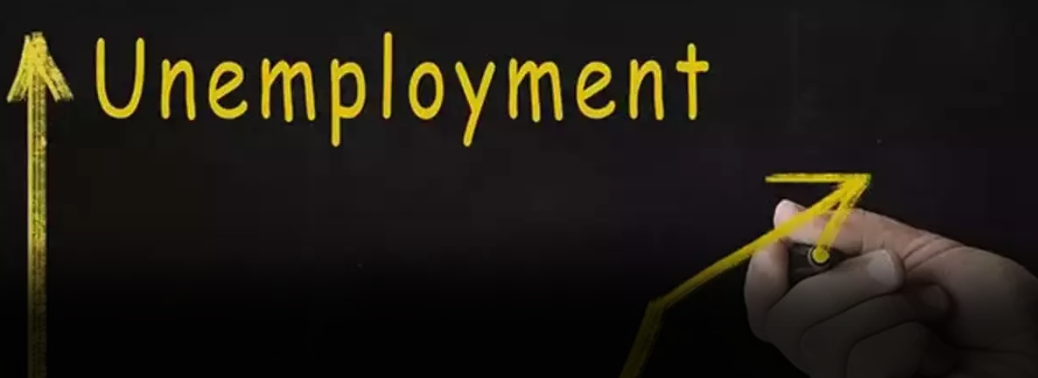
NITI Aayog officials debunk media report of 6.1% Joblessness:
- The government’s think tank NITI Aayog debunked claims that unemployment in 2017-18 was at a 45-year high. The NITI Aayog said the report of the National Sample Survey Office (NSSO), cited as the source for the report, was in fact a draft and not approved by the government.
Mirrors 1972:
- According to the NSSO’s periodic labour force survey —the unemployment rate was 6.1% in 2017-18. The only year of comparable data when the unemployment rate was higher was in 1972-73. It was at 2.2% in 2011-12.
- The NSSO report is a matter of much controversy, with the two external members of the National Statistical Commission citing the delay in its release as a major reason for their resignations.
- The data reportedly showed that joblessness was higher in urban India (7.8%) than in rural India (5.3%). Within this, it stood at 17.4% for rural males and 13.6% for rural females. In urban India, joblessness was at 18.7% among males and a huge 27.2% among females.
- Importantly, the data reportedly showed that the labour force participation rate (LFPR), the measure of people working or looking for jobs, declined from 39.5% in 2011-12 to 36.9% in 2017-18. This phenomenon — of unemployment rising while the LFPR dipped — is a cause for serious worry, explaining that it probably shows that people are simply giving up on finding jobs and have stopped seeking work.
- National Sample Survey Office and its Functions
- NSSO recently released data on unemployment in India. It was the 68th round of the Employment and Unemployment Situation among Major Religious Groups in India report.
Key findings of the survey:
- The unemployment rate in urban areas reduced from 4.5% in 2004-05 to 3.4% in 2011-12, the unemployment rate in urban areas reduced from 4.5% in 2004-05 to 3.4% in 2011-12.
- According to the survey, which was conducted in 2011-12, the unemployment rate across all the religious groups in rural areas was on the lower side than those in urban areas for both males and females.
- The most peculiar finding of the survey is that Christians which are supposed to be a better off community have the highest rate of unemployment in both rural (4.5%) and urban (5.9%) areas in 2011-12. The rate in urban areas for Christians stood at (8.6%) in 2004-05 while the rural rate stays constant.
- While the unemployment rate in rural areas has decreased for Sikhs (from 3.5 to 1.3%) – now the lowest across all religious groups – it has slightly increased for Muslims (from 2.3 to 2.6%). At 3.3%, Hindus have the lowest unemployment rate in urban areas.
- Self-employment is the major source of income for almost half the households, across all religious groups, in rural areas, followed by casual labour.
- In urban areas, the proportion of households deriving major income from regular wage or salary earnings is the highest. Half the Muslim households in urban areas have self-employment as major source of income, the highest among all religions, while regular wage or salary earnings was the highest for Christians with 45.8 per cent households.
What does the Survey Indicate?
- The survey confirms the apprehensions shown by many experts that India is facing rural distress. As survey clearly indicates that all religious groups registering an increase in unemployment in rural areas.
- The report states that the unemployment rate is 1.7% in rural and 3.4% in urban areas. In its previous report of 2013, unemployment rate was 1.5% in rural and 4.8% in urban areas.
Why do Christians have largest unemployment rate?
- Unemployment level in India is highest among those people who are richer and more educated. The reason is that poor people can’t afford to stay unemployed, and hence, opt for any kind of work, irrespective of the nature of the job. The better off have the capacity to be unemployed as they look for the right job. Christians are the most educated group, hence unemployment rate is higher among them
- Among the persons of age 15 and above, the proportion of people who are not literates was the lowest for Christians. Also, the proportion of persons with educational level secondary and above is highest for Christians.
Key Terms:
NSS SURVEY
- The quinquennial Employment and Unemployment surveys of National sample Survey (NSS) are the primary sources of data on various indicators of labour force at National and State levels. These are used for planning, policy formulation, and decision support and as input for further statistical exercises by various Government organizations, academicians, researchers and scholars. NSS surveys on employment and un-employment with large sample size of households have been conducted quinquennially from 27th. Round (October 1972 – September 1973) of NSS onwards. These surveys provide data on various indicators of labour force at National and State levels
How is unemployment measured in India?
- The National Sample Survey Organization (NSSO) provides three different estimates of employment and unemployment based on different approaches / reference periods used to classify an individual’s activity status. These are the:
- Usual status approach with a reference period of 365 days preceding the date of survey Current weekly status approach with a reference period of 7 days preceding the date of survey. Current daily status with each day of the 7 days preceding date of survey as the reference period.
- In order to find out whether an individual is employed or unemployed it needs to be 1st determined whether h/she belongs to the ‘Labour Force’ or not, which in turn depends on the Activity Status of the individual during the chosen reference period.
- Activity Status refers to the activity situation in which the individual is found during the reference period with respect to his participation in economic or non-economic activities.
- The NSSO defines following 3 broad Activity Status i) Working (engaged in an economic activity) i.e. ‘Employed’ ii) Seeking or available for work i.e. ‘Unemployed’ iii) Neither seeking nor available for work. All those individuals having a broad activity status as i) or ii) above are classified as being in the Labour Force and those having activity status iii) are classified as outside the Labour Force. Thus labour force constitutes of both employed and unemployed. Labor force (also called work force) is the total number of people employed or seeking employment in a country or region. One is classified as ‘not in labour force’, if he or she was engaged in relatively longer period in any one of the non-gainful activities.
- Unemployment rate is the percent of the labor force that is without work.
- Unemployment rate = (Unemployed Workers / Total labor force) X 100
- The NSSO collected employment data based on ‘usual status (UPS)’ only up to its 8 rounds. However, since the beginning of the 27th round (1972-73), quinquennial(5-yearly) surveys were being conducted by NSSO to collect employment-unemployment data based on all the three approaches of UPS, CWS and CDS.
RBI to Inject Rs. 37,500 Cr through OMO in FEB
30, Jan 2019
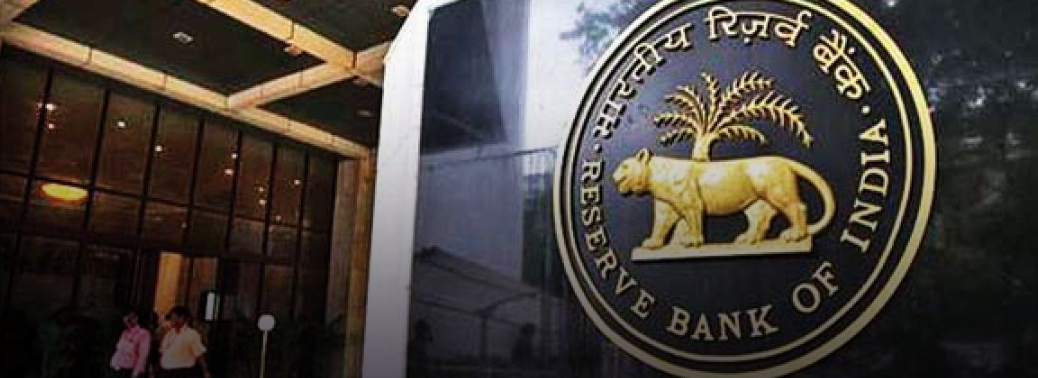
In News:
- The Reserve Bank of India (RBI) said that it will inject Rs. 37,500 crores into the system through purchase of government securities in February to increase liquidity.
Background:
Open market operations (OMO):
What is it?
- Open market operations are conducted by the RBI by way of sale or purchase of government securities (g-secs) to adjust money supply conditions. The central bank sells g-secs to suck out liquidity from the system and buys back g-secs to infuse liquidity into the system.
- These operations are often conducted on a day-to-day basis in a manner that balances inflation while helping banks continue to lend. The RBI uses OMO along with other monetary policy tools such as repo rate, cash reserve ratio and statutory liquidity ratio to adjust the quantum and price of money in the system.
What its Signficance?
- In India, liquidity conditions usually tighten during the second half of the financial year (mid-October onwards).
- This happens because the pace of government expenditure usually slows down, even as the onset of the festival season leads to a seasonal spike in currency demand. Moreover, activities of foreign institutional investors, advance tax payments, etc. also cause an ebb and flow of liquidity.
- However, the RBI smoothens the availability of money through the year to make sure that liquidity conditions don’t impact the ideal level of interest rates it would like to maintain in the economy. Liquidity management is also essential so that banks and their borrowers don’t face a cash crunch. The RBI buys g-secs if it thinks systemic liquidity needs a boost and offloads them if it wants to mop up excess money.
- The cental bank’s signal that it will move to a ‘neutral’ liquidity stance from a ‘deficit’ stance, hints at more liquidity in the system in future. This could arm banks with more funds for lending, and lead to softer interest rates in the economy.
- This is good news for both businesses as well as individuals. However, large open market purchases by the RBI can give the government a helping hand in its borrowing programme and are frowned upon for this reason. In April 2006, the RBI was barred from subscribing to primary bond issues of the government.
- This was done to put an end to the monetisation of debt by the Reserve Bank. However, that didn’t stop the process. With rising fiscal deficit, the RBI has been criticised for accommodating larger government debt by way of OMO.
FMCG Sector to Clock Double – Digit Growth
30, Jan 2019

In News:
- According to the latest study by market research firm Nielsen, the FMCG industry is expected to grow between 11% and 12% in 2019, which is a tad lower than the 13.8% growth in 2018.
Explained:
- Though, the growth is likely to be lower than that of the previous year, which saw the sector benefit from the overall health of the economy and lower inflation. Incidentally, the FMCG industry growth in the fourth quarter of 2018 was quite buoyant at 15.9%
- The growth in the current year will be primarily on the back of conducive macroeconomic environment, rural consumption and sustained benefits of GST regime and election impact, according to the study.
- According to report, it suggests that the first half of the year (Jan.-Jun) will have decent double-digit growth, while industry growth in the second half will taper down to high single digits. Similar trends will be witnessed across the key super group of product categories viz Food, Personal Care & Home Care
FMCG:
- Fast-moving consumer goods (FMCG) sector is the 4th largest sector in the Indian economy with Household and Personal Care accounting for 50 per cent of FMCG sales in India. Growing awareness, easier access and changing lifestyles have been the key growth drivers for the sector.
- The urban segment (accounts for a revenue share of around 55 per cent) is the largest contributor to the overall revenue generated by the FMCG sector in India.
- However, in the last few years, the FMCG market has grown at a faster pace in rural India compared with urban India.
- Semi-urban and rural segments are growing at a rapid pace and FMCG products account for 50 per cent of total rural spending

Governments Efforts:
- Number of mega food parks ready increased from 2 between 2008-14 to 13 between 2014-18.
- Preservation and processing capacity increased from 308,000 during 2008-14 to 1.41 million during 2014-18.
- The number of food labs increased from 31 during 2008-14 to 42 during 2014-18
Schemes:
- SAMPADA
- MEGA FOOD PARK SCHEME
- AGRO PROCESSING CLUSTER SCHEME
- INTEGRATED COLD CHAIN AND VALUE ADDITION INFRASTRUCTURE
India replaces Japan to Become Second-Largest Crude Steel Producer
29, Jan 2019
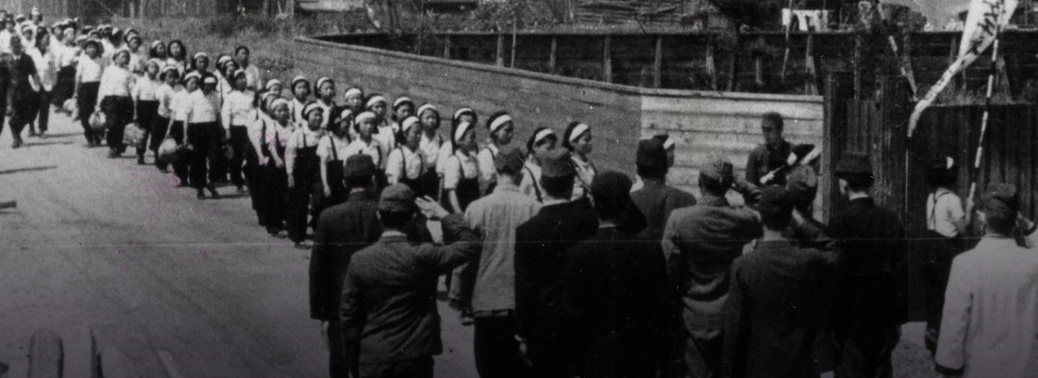
In News:
- India has replaced Japan as the world’s second-largest steel producing country, while China is the largest producer of crude steel, accounting for more than 51 percent of production, according to World Steel Association.
Explained:
- The global steel body, in its latest report said, China’s crude steel output jumped 6.6 percent to 928.3 million tonnes in 2018 from 870.9 MT in 2017.
- China’s share increased from 50.3 percent in 2017 to 51.3 percent in 2018. “India’s crude steel production in 2018 was at 106.5 MT, up 4.9 percent from 101.5 MT in 2017, meaning India has replaced Japan as the world’s second-largest steel producing country. Japan produced 104.3 MT in 2018, down 0.3 percent compared to 2017
- Global crude steel production reached 1,808.6 MT in 2018 from 1,729.8 MT in 2017, a rise of 4.6 percent
- Others in the top 10 steel producing countries include the U.S., at the fourth position as the country produced 86.7 MT of crude steel in 2018, South Korea (72.5 MT, fifth place), Russia (71.7 MT, sixth), Germany (42.4 MT, seventh), Turkey (37.3 MT, eight), Brazil (34.7 MT, ninth) and Iran (25 MT, tenth).
- Among other countries, Italy produced5 MT of crude steel in 2018, France (15.4 MT) and Spain (14.3 MT), Ukraine (21.1 MT).
World Steel Association:
- The World Steel Association (worldsteel) is a non-profit organisation with headquarters in Brussels, Belgium
- The World Steel Association is one of the largest industry associations in the world. Its members represent around 85 percent of the world’s steel production, including over 160 steel producers with nine of the 10 largest steel companies, national and regional steel industry associations, and steel research institutes.
Indian Steel plants:
FDI Grew 18% in FY18
29, Jan 2019
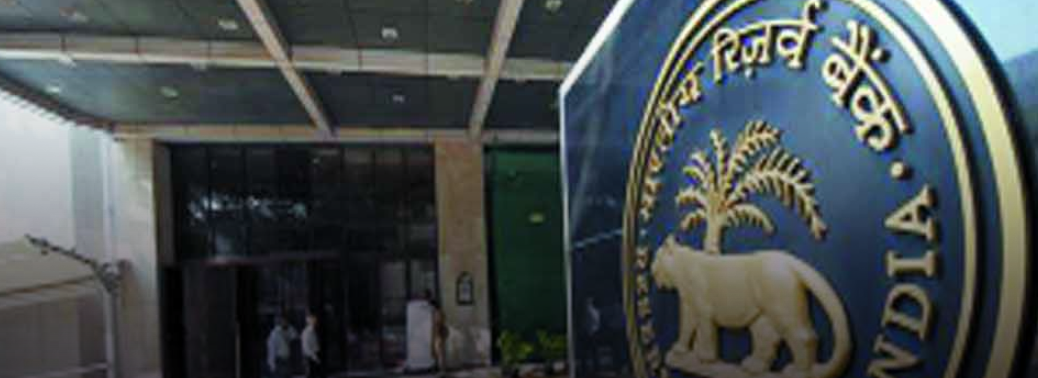
In News:
- Foreign direct investment (FDI) during the previous fiscal grew 18 per cent to Rs 28.25 lakh crore, data from the Reserve Bank of India (RBI) shows.
Explained:
- FDI increased by Rs 4,33,300 crore, including revaluation of past investments, during 2017-18 to reach Rs 28,24,600 crore in March 2018 at market value, according to RBI data on ‘Census on Foreign Liabilities and Assets of Indian Direct Investment Companies, 2017-18’.
- The RBI said as many as 23,065 companies responded to the latest round of the census, of which, 20,732 firms had FDI or ODI (Overseas direct investment) in their balance sheet in March 2018. Overseas direct investment (ODI) by Indian companies has increased by 5 per cent to Rs 5.28 lakh crore. “FDI companies witnessed a substantial increase in other investment liabilities, largely due to the increase in trade credit,
- The census showed that Mauritius continued to be the largest source of FDI in India (19.7 per cent) followed by the US, the UK, Singapore and Japan.In case of overseas investment by Indian companies, Singapore (17.5 per cent) was the major destination, followed by the Netherlands, Mauritius and the US.
What Is FDI (Foreign Direct Investment)?
- Foreign direct investment (FDI) is when a company owns another company in a different country. FDI is different from when companies simply put their money into assets in another country—what economists call portfolio investment.
- With FDI, foreign companies are directly involved with day-to-day operations in the other country. This means they aren’t just bringing money with them, but also knowledge, skills and technology. A lot of economists really like FDI, especially when it’s flowing from rich countries into poorer countries. The idea is that when international companies come in, they can either shake up an existing industry, because they’re bringing competition for the domestic companies that already exist, or can create entirely new industries. FDI can also strengthen local economies by creating new jobs and boosting government tax revenues.
HIGH USE OF INPUT CREDIT UNDER TAXMAN’S SCANNER
28, Jan 2019
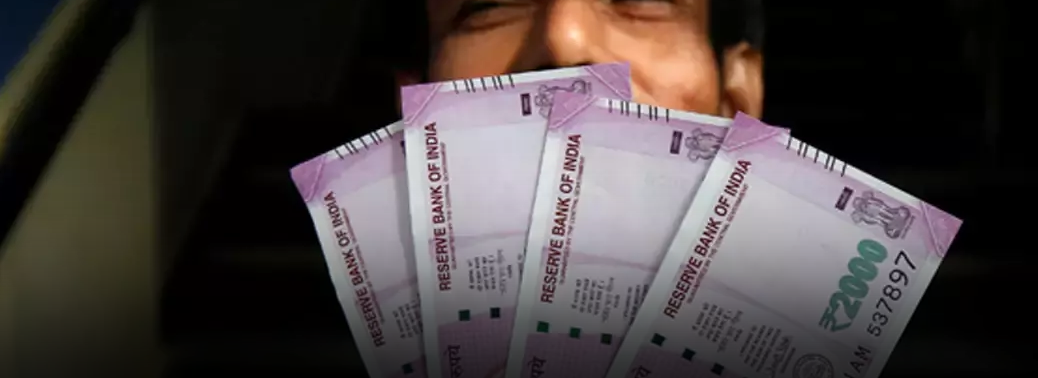
In News
- The issue of high ITC was flagged at the meeting of the Group of Ministers (GoM) which was set up by the GST Council to look into the reasons for revenue shortfall being faced by a large number of States.
Explained
- Concerned over a decline in GST revenues, tax officials are likely to examine the high usage of input tax credit (ITC) to set off tax liability by businesses
- According to sources, availing ITC ideally should not result in loss of revenue but there could be possibility of misuse of the provision by unscrupulous businesses by generating fake invoices just to claim tax credit.
- During the meeting of the GoM, it was pointed out that as much as 80% of the total GST liability is being settled by ITC and only 20% deposited as cash.
- GST revenue has averaged around Rs. 96,000 crore per month so far this fiscal and this reflects the cash component being deposited by businesses.
- Under the present dispensation, there is no provision for real time matching of ITC claims with the taxes already paid by suppliers of inputs.
- The matching is done on the basis of system generated GSTR-2A, after the credit has been claimed. Based on the mismatch highlighted by GSTR-2A and ITC claims, the revenue department sends notices to businesses.
- “Currently there is a time gap between ITC claim and matching them with the taxes paid by suppliers. Hence there is a possibility of ITC being claimed on the basis of fake invoices,
- Once the new return filing system becomes operational, it would become possible for the department to match the ITC claims and taxes paid on a real time basis.
- The revenue department would now analyze the large number of ITC claims to find out if they are genuine or based on fake invoices and take corrective action
Recent trends in GST Collections
- GST collection stood at ₹03 lakh crore in April,₹94,016 crore in May, ₹95,610 crore in June,₹96,483 crore in July, ₹93,960 crore in August, ₹94,442 crore in September, ₹1,00,710 crore in October, ₹97,637 crore in November and ₹94,726 crore in December 2018.
FPI OUTFLOWS AT NEARLY RS 6,000 CRORE IN JANUARY
28, Jan 2019
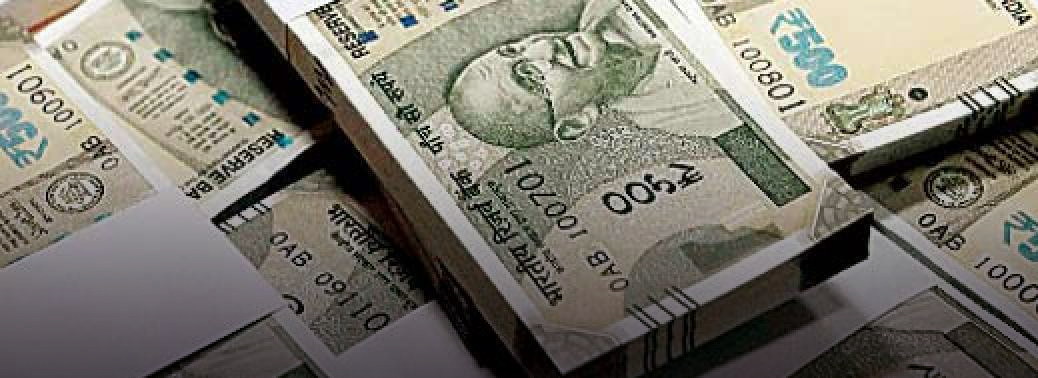
In News
- Foreign investors have pulled out close to Rs. 6,000 crores so far from the Indian stock markets in January 2019.
Explained
- Even as the foreign portfolio investors have been making an exit from Indian markets amid concerns over global growth and pulled out a net of Rs 5,879 crore from the Indian equities in January 2019, the domestic institutional investors seem to be playing the counterbalance with fresh investments of over Rs 3,105 crore in the same period
- Market experts say that the strong DII participation is a result of a strong monthly inflow of funds into mutual fund schemes over the last four to five years which has strengthened the DII participation in the market.
- Unlike in the past, the strong inflow of funds into mutual funds gives them the power to act as a domestic counterbalance to FPI outflow. Earlier when FPIs pulled out funds, markets used to fall sharply as DIIs were not strong enough to provide support to the market, however, now the domestic fund flow into MFs is helping them act as a counterbalancing force. It also helps arrest a sharp fall in the markets when FPIs leave India and that’s good for the overall stability of the market,
- A look into the fund flow by FPI and DIIs into Indian equities over the last 10-years shows a sharp contrast in investment pattern. In the seven-year period between January 2008 and December 2014 the FPIs pumped in a net of Rs 5 lakh crore into Indian equities, whereas the DII pulled out a net of over Rs 55,000 crore from the markets.
- By contrast, over the last four calendar years between January 2015 and December 2018 while FPIs have invested a net of Rs 56,000 crore, the DIIs pumped in a net of Rs 3.04 lakh crore.
Foreign Portfolio Investment
- The term FPI was defined to align the nomenclature of categorizing investments of foreign investors in line with international practice. FPI stands for those investors who hold a short-term view on the company, in contrast to Foreign Direct Investors (FDI).
- FPIs generally participate through the stock markets and gets in and out of a particular stock at much faster frequencies. Short term view is associated often with lower stake in companies. Hence, globally FPIs are defined as those who hold less than 10% in a company.
- In India, the hitherto existing closest possible definition to an FPI was Foreign Institutional Investor.
Features of FPI
- Portfolio Investment by any single investor or investor group cannot exceed 10% of the equity of an Indian company, beyond which it will now be treated as FDI.
- FPIs are not allowed to invest in unlisted shares. In respect of those securities, where FPIs are not allowed to invest no fresh purchase shall be allowed as FPI. They can only sell their existing investments in such securities.
- However, an exception has been made by permitting them to invest in unlisted non-convertible debentures/bonds issued by an Indian company in the infrastructure sector, where ‘infrastructure’ is defined in terms of the extant External Commercial Borrowings (ECB) guidelines;
- FPIs are permitted to invest in Government Securities with a minimum residual maturity of one year. However, FPIs have been prohibited from investing in T-Bills. FPI can invest in privately placed bonds if it is listed within 15 day.
Supreme Courts Upholds Constitutional Validity of Insolvency and Bankruptcy Code
26, Jan 2019

In News:
- The government’s Insolvency and Bankruptcy Code, 2016 (IBC), earned some rare praise from the Supreme Court which said that it was “happy to note that in the working of the Code, the flow of financial resource to the commercial sector in India has increased exponentially as a result of financial debts being repaid.
Explained:
- The apex court was hearing a batch of petitions that had challenged the constitutional validity of IBC under Article 14 of the Constitution. Several operational creditors had argued that IBC doesn’t make an intelligible differentia in the classification of a financial creditor and operational creditor, and hence violates Article 14.
- Operational creditors had argued that they provide services to companies and while they have the right to initiate insolvency proceedings if their payments are defaulted upon, but the code bars them for participating in the resolution process through the committee of creditors.
- Under IBC, the committee can only consist of financial creditors who assess and vote on resolution plans submitted by interested bidders.
- The second important argument was that by barring promoters from bidding for their own companies, IBC forces the sale of the company to new bidders. This, the petitioners had argued, is against the fundamental rights of promoters of a company. The apex court dismissed both these arguments.
- Since its enactment, “approximately 3,300 cases have been disposed of by the Adjudicating Authority based on out-of-court settlements between corporate debtors and creditors which themselves involved claims amounting to over Rs 1,20,390 crore.”
- “Eighty cases have since been resolved by resolution plans being accepted” of which “the liquidation value of sixty- three such cases is Rs 29,788.07 crore.”
- “However, the amount realised from the resolution process is in the region of Rs 60,000 crore, which is over 202 per cent of the liquidation value,
- Citing Reserve Bank of India statistics, the judgement said “credit that has been given by banks and financial institutions to the commercial sector (other than food) has jumped up from Rs 4,952.24 crore in 2016-2017, to Rs 9,161.09 crore in 2017-2018, and to Rs 13,195.20 crore for the first six months of 2018- 2019.” The court noted that the “credit flow from non-banks has gone up from Rs 6,819.93 crore in 2016-2017, to Rs 4,718 crore for the first six months of 2018-2019.”
- “Ultimately, the total flow of resources to the commercial sector in India, both bank and non-bank, and domestic and foreign (relatable to the non-food sector) has gone up from a total of Rs 14,530.47 crore in 2016-2017, to Rs18,469.25 crore in 2017- 2018, and to Rs 18,798.20 crore in the first six months of 2018-2019
- Summing up, the court said that the figures were proof that “the experiment conducted in enacting the Code is proving to be largely successful”. “The defaulter’s paradise is lost. In its place, the economy’s rightful position has been regained,” the judgement added.
- The apex court also dismissed the contention that the appointments made to the National Company Law Tribunal and National Company Law Appellate Tribunal (NCLAT) were contrary to its earlier judgments and the Companies Act.
- The judgment directed the government to establish Circuit Benches of NCLAT within a period of six months.
Insolvency and bankruptcy code a gist:
- The Code creates a framework for resolving insolvency in India. Insolvency is a situation where an individual or a company is unable to repay their outstanding debt.
- The Code repeals the Presidency Towns Insolvency Act, 1909 and Provincial Insolvency Act, 1920. In addition, it amends 11 laws, including the Companies Act, 2013, and the Recovery of Debts Due to Banks and Financial Institutions Act, 1993, among others.
- The Code will apply to companies, partnerships, limited liability partnerships, individuals and any other body specified by the central government.
-
Insolvency Resolution Process:
The Code specifies similar insolvency resolution processes for companies and individuals, which will have to be completed within 180 days. This limit may be extended to 270 days in certain circumstances. The resolution process will involve negotiations between the debtor and creditors to draft a resolution plan.
-
The process will end under two circumstances:
- when the creditors decide to evolve a resolution plan or sell the assets of the debtor, or
- the 180-day time period for negotiations has come to an end. In case a plan cannot be negotiated upon during the time limit, the assets of the debtor will be sold to repay his outstanding dues. The proceeds from the sale of assets will be distributed based on an order of priority
-
Priority under liquidation:
The assets will be distributed in the following order, in case of liquidation:
- Fees of insolvency professional and costs related to the resolution process,
- Workmen’s dues and secured creditors,
- Employee wages
- Unsecured creditors
- Government dues and remaining secured creditors (any remaining debt if they enforce their collateral),
- Any remaining debt, and
- Shareholders
-
Fresh Start Process:
The Code provides a Fresh Start Process for individuals under which they will be eligible for a debt waiver of up to Rs 35,000. The individual will be eligible for the waiver subject to certain limits prescribed under the Code.
-
Insolvency Professionals and Agencies:
The resolution process will be conducted by a licensed insolvency professional (IP). The IP will control the assets of the debtor during the process. Insolvency professional agencies will be created to regulate these IPs. The agencies will conduct examinations to enrol IPs and enforce a code of conduct for their functioning.
-
Information Utilities:
The Code establishes multiple information utilities to collect, collate and disseminate financial information related to a debtor. This will include a record of debt and liabilities of the debtor.
-
Insolvency Regulator:
The Insolvency and Bankruptcy Board of India will be established as a regulator to oversee functioning of IPs, insolvency professional agencies and information utilities. The Board will have 10 members, including representatives from the central government and the Reserve Bank of India.
-
Adjudicatory Authorities:
The Code proposes two tribunals to adjudicate insolvency resolution cases: (i) the National Company Law Tribunal will adjudicate cases for companies and limited liability partnerships, and (ii) the Debt Recovery Tribunal will adjudicate cases for individuals and partnership firms.
-
Insolvency and Bankruptcy Fund:
The Code creates an Insolvency and Bankruptcy Fund. The Fund will receive voluntary contributions from any person. In case of insolvency proceedings being initiated against the contributor, he will be allowed to withdraw his contribution for making payments to workmen, protecting his assets, etc.
-
Cross-border insolvency:
Cross border insolvency relates to an insolvent debtor who has assets abroad. The central government may enter into agreements with other countries to enforce provisions of the Code.
-
Offences:
The Code specifies penalties for offences committed under corporate insolvency (such as concealing property). This penalty will be imprisonment of up to five years, or a fine of up to one crore rupees, or both. For offences committed under individual insolvency (such as providing false information), the imprisonment will vary based on the offence. For most of the offences, the penalty will be imprisonment of up to six months, or a fine of up to five lakh rupees, or both.
-
Agri Sector Should be boosted through Credit flows
26, Jan 2019
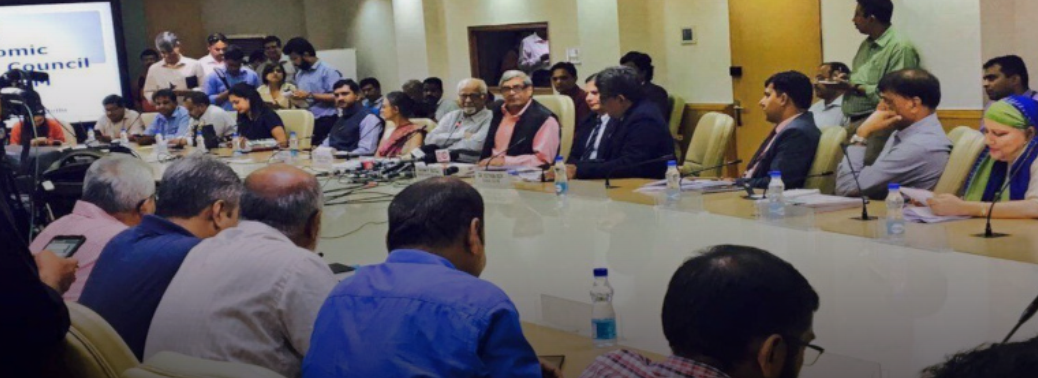
In News:
- The Prime Minister’s Economic Advisory Council (EAC-PM) said that the agriculture sector should be bolstered through increased credit flows and schemes such as the Mahatma Gandhi National Rural Employment Guarantee Scheme.
Major Highlights of the EAC-PM Observation:
- Among the issues discussed by the EAC-PM were agricultural problems, investment trends (including investments by States consequent to the 14th Finance Commission devolution), fiscal consolidation, interest rate management and credit and financial market issues.
Agriculture:
- The challenges in the agricultural sector should be addressed by looking at credit flows and support to employment programmes such MNREGA,
Externality:
- The Council felt that the exchange rate management of the rupee by the RBI has been sound despite the volatility in the price of crude oil
- The good news is that oil intensity (use of fossil as a percentage of GDP) is showing a declining trend
- The EAC-PM said that it felt that the challenge of insularity being seen in external trade should be reversed through supportive policy interventions because there is a positive turn in exports that is now visible.
Domestic:
- The Council also added that it strongly felt that the government should not deviate from its fiscal consolidation
- India is not insulated from global developments. Nevertheless, India’s growth is expected to be in the 7-7.5% range in the next few years; one of the fastest in the world
- However, it added that with reforms designed to address the structural problems, growth rates can “easily be enhanced by at least 1%”.
- There are indications that financial savings have started going up and there is credit up tick through private banks to the services sector .The reforms in the financial sector should be strengthened further building upon what the Government is already doing
- The EAC-PM strongly feels that there should be no deviation from the fiscal consolidation target and but there must be continued emphasis on social sector intervention
- Among the challenges that need to be addressed are reforms in the agricultural sector, the MSME sector, skill development, credit issues, digital payments and the banking sector reforms. The government and the RBI should be complimented for sound macroeconomic management, and this trend should be continued with.
Background on EAC-PM:
- Economic Advisory Council to the Prime Minister (PMEAC) is a non-constitutional, non-permanent and independent body constituted to give economic advice to the Government of India, specifically the Prime Minister.
- The council serves to highlight key economic issues facing the country to the government of India from a neutral viewpoint. It advises the Prime Minister on economic issues like inflation, microfinance, and industrial output.
- For administrative, logistic, planning and budgeting purposes, the NITI Aayog serves as the Nodal Agency for the PMEAC.
Terms of Reference of the EAC-PM:
- Analyze any issue, economic or otherwise, referred to it by the Prime Minister and advising him thereon.
- Addressing issues of macroeconomic importance and presenting views thereon to the Prime Minister. This could be either suo-motu or on reference from the Prime Minister or anyone else.
- Attending to any other task as may be desired by the Prime Minister from time to time.
Periodic Reports of the PMEAC:
- Annual Economic Outlook
- Review of the Economy
PCR has to be Backed by a Comprehensive Act
25, Jan 2019

In News:
- The central bank plans to engage with the Centre and other regulators to bring in a comprehensive Public Credit Registry (PCR) Act to strengthen micro credit in the coming months.
Explained:
- The PCR will have to be backed and governed by a comprehensive Public Credit Registry Act … so as to bring in data from the section of lenders who do not directly fall under the RBI regulations
- The PCR has been envisaged as a database of core credit information – an infrastructure of sorts on which users of credit data can build further analytics. It will strive to cover all regulated entities (i.e., financiers) in phases and in this way get a 360-degree view of borrowers. It will facilitate linkages with related ancillary information systems outside the banking system, including corporate filings, tax systems (including the Goods and Services Tax Network), and utility payments
- The PCR Act will need to ensure adequate safeguards on data, while at the same time address extant restrictions on sharing of credit data that prevent efficient allocation and regulatory supervision of credit
- It will have to follow the latest privacy guidelines based on a laid down consent framework
What is Public Credit Registry (PCR)?
- A public credit registry is an information repository that collates all loan information of individuals and corporate borrowers. A credit repository helps banks distinguish between a bad and a good borrower and accordingly offer attractive interest rates to good borrowers and higher interest rates to bad borrowers.
- The registry should capture all loan information and borrowers be able to access their own history. Data is to be made available to stakeholders such as banks, on a need-to-know basis. Data privacy will be protected.
Why it’s needed?
- The move is based on the recommendations of a committee, headed by Y.M. Deosthalee. PCR will address issues such as information asymmetry, improve access to credit and strengthen the credit culture among consumers. It can also address the bad loan problem staring at banks, as corporate debtors will not be able to borrow across banks without disclosing existing debt
- Setting up the PCR will help improve India’s rankings in the World Bank’s ease of doing business index
- Credit information is now available across multiple systems in bits and pieces and not in one window. Data on borrowings from banks, non-banking financial companies, corporate bonds or debentures from the market, external commercial borrowings (ECBs), foreign currency convertible bonds (FCCBs), masala bonds, and inter-corporate borrowings are not available in one data repository.
- PCR will help capture all relevant information about a borrower, across different borrowing products in one place.It can flag early warnings on asset quality by tracking performance on other credits.
Innovation in lending:
- Access to credit information, including debt details and repayment history would drive innovation in lending. For example, currently most banks focus on large companies for loans and consequently the micro, small and medium enterprises are left with limited options for borrowing.
- With satisfactory payment history and validated debt details made available, it will increase the credit availability to micro, small and medium enterprises along with deepening of the financial markets. This will support the policy of financial inclusion
Commerce Ministry not to extend Feb.1 Deadline for E-Tailers
25, Jan 2019
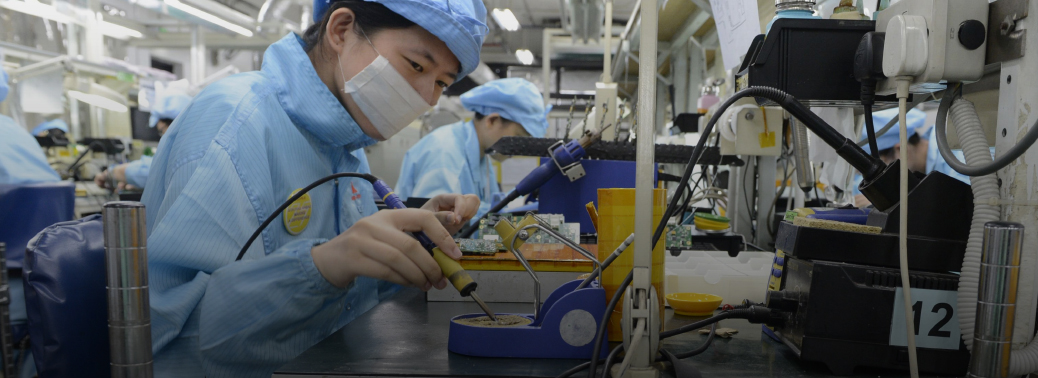
In News:
- The Commerce and Industry ministry is not in favour of extending the deadline of February 1 for implementing the revised guidelines for e-commerce companies having foreign direct investment.
Explained:
- On December 26, 2018, the government tightened norms for e-commerce firms and barred online retailers like Flipkart and Amazon from selling products of the companies in which they have stakes.
- The government also prohibited e-commerce companies from entering into an agreement for exclusive sale of products.
- As per the revised guidelines, a vendor cannot procure more than 25% of products from group companies of the same marketplace where they intend to sell them.
- Both Amazon and Walmart-owned Flipkart had sought extension of the February 1 deadline for complying with the revised norms, stating that they needed more time to understand the details of the framework.
- The ministry has received representations from Amazon and Flipkart for more time. Internal discussions are on. But the ministry is not in favour of extending the deadline
Background on Rules:
- FDI is not permitted in inventory-based model of e-commerce. 100% FDI under automatic route is permitted in marketplace model of e-commerce
What Is Marketplace E- Commerce Model?
- The inventory-based model of e-commerce is when the inventory of goods and services is owned by the e-commerce entity and sold to consumers directly.
- The marketplace model is when an e-commerce company simply provides an information technology platform in order to act as a facilitator between the buyer and the seller.
- E-commerce entity providing a marketplace will not exercise ownership or control over goods purported to be sold. Such an ownership or control over the inventory will render the business into inventory-based model.
What the notification says?
- In addition to the restrictions prescribed under the existing FDI policy, the DIPP clarification now states that inventoryof a vendor will be deemed to be controlled by e-commerce marketplace entity if more than 25% of purchases of such vendor are from the marketplace entity or its group companies
- An entity with equity stake owned by an e-commerce marketplace entity or its group companies, or having control on its inventory by e-commerce marketplace entity or its group companies, will not be permitted to sell its products on the platform run by such marketplace entity.
- It also said an e-commerce marketplace will not force any seller to sell any product exclusively on its platform
Accountability:
E-commerce marketplace entity will be required to furnish a certificate along with a report of statutory auditor to Reserve Bank of India, confirming compliance of the guidelines, by September 30 every year for the preceding financial year.
Cabinet Gives NOD to set up GST Appellate Tribunal
24, Jan 2019

In News:
- The Union Cabinet has approved the creation of a National Bench of the Goods and Services Tax Appellate Tribunal (GSTAT), which would serve as the forum of second appeals to do with the applicability of GST, and will also be the first common forum of dispute resolution between the Centre and the States.
Explained:
- The National Bench of the Appellate Tribunal, to be situated in New Delhi, will be presided over by its president. It will consist of a technical member from the Centre and a representative of the States. “This is part and parcel of the GST provisions
- Chapter XVIII of the CGST Act provides for an appeal and review mechanism for dispute resolution under the GST regime. Section 109 of this chapter empowers the Centre to constitute, on the recommendation of the GST Council, an appellate tribunal for hearing appeals against the orders passed by the Appellate Authority. The government, it is learnt, was initially planning an appellate tribunal in each State.
- However, the idea was discarded in favour of one at the national level following the experience with the various state-level advance ruling authorities, which often gave conflicting judgments. “The disputes they would be looking at would be appeals under GST law wherein the taxpayer is contesting the tax demand put by the tax department, the formation of an appellate authority has come eighteen months after the rollout of the GST regime. The appellate authority is being seen crucial for being a forum for higher appeal for disputes under the indirect tax regime and will also help in resolving the confusion created by contradictory rulings given by Appellate Authority for Advance Rulings (AAAR) on the same or similar issues in different states. The industry has been demanding a centralised appellate authority that could reconcile the contradictory verdicts of different AAARs.
- The creation of the national Bench would amount to one-time expenditure of Rs.92.5 lakh while the recurring expenditure would be Rs 6.86 crore per annum, a government statement said. The national bench of the GST Appellate Tribunal will expedite resolution of disputes under GST laws.
- The national bench of the GSTAT is the forum of second appeal in GST laws and the first common forum of dispute resolution between Centre and states, the statement said. The first appeal against the orders of adjudicating authority shall lie before the appellate authority of the states.
- Being a common forum, GST Appellate Tribunal (national bench) will ensure that there is uniformity in redressal of disputes arising under GST, and therefore, in implementation of GST across the country.
SEBI may Review Mutual Fund Categorisation Norms
23, Jan 2019
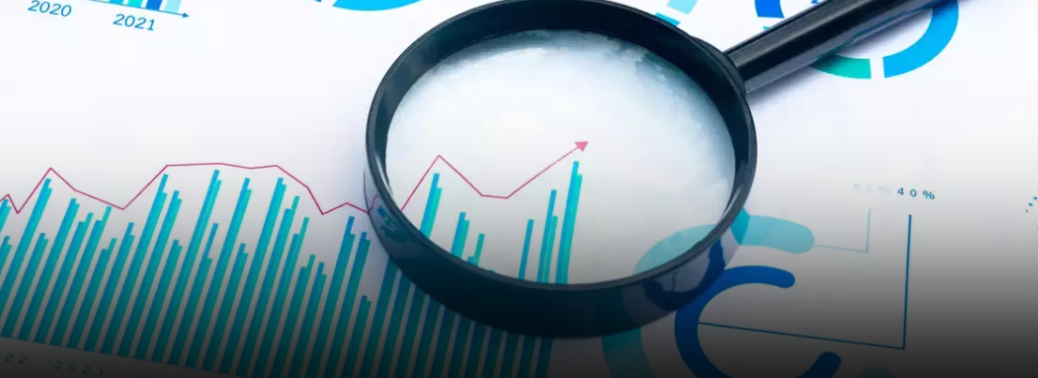
In News:
- The Securities and Exchange Board of India (SEBI) is mulling a review of its regulatory framework for categorisation of mutual funds (MFs) as market participants have sought a dynamic classification of companies instead of the current static mechanism wherein listed entities are ranked on the basis of market capitalisation.
Context:
- On a batch of petitions challenging supreme court verdict on sabarimala.
Explained:
- The matter goes back to October 2017 when SEBI came out with the guidelines for categorisation of MF schemes. Large cap MFs, it said, were those which invested only in the top 100 companies in terms of market capitalisation.
- Mid-cap funds were those which invested in the next 150 companies and small-cap funds were those which invested in companies below the rank of 251 in terms of market capitalisation. Going by the latest market capitalisation of companies listed on the BSE, firms with a valuation of about Rs. 8,500 crores end up in the small-cap category.
- The view is that it would be better if the SEBI comes with a dynamic band or lays down a range in terms of market capitalisation for identifying firms as large-cap, mid-cap and small-cap.
- That would also take care of the impact of the market volatility on the valuation of the companies.
What are Mutual Funds?
- Mutual funds are in the form of Trust (usually called Asset Management Company) that manages the pool of money collected from various investors for investment in various classes of assets to achieve certain financial goals.
- We can say that Mutual Fund is trusts which pool the savings of large number of investors and then reinvests those funds for earning profits and then distribute the dividend among the investors. In return for such services, Asset Management Companies charge small fees.
- Every Mutual Fund / launches different schemes, each with a specific objective. Investors who share the same objectives invests in that particular Scheme. Each Mutual Fund Scheme is managed by a Fund Manager with the help of his team of professionals
Where does Mutual Funds usually invest their funds?
- The Mutual Funds usually invest their funds in equities, bonds, debentures, call money etc., depending on the objectives and terms of scheme floated by MF. Now a days there are MF which even invest in gold or other asset classes.
Lithium Ion GIGAFACTORY
22, Jan 2019
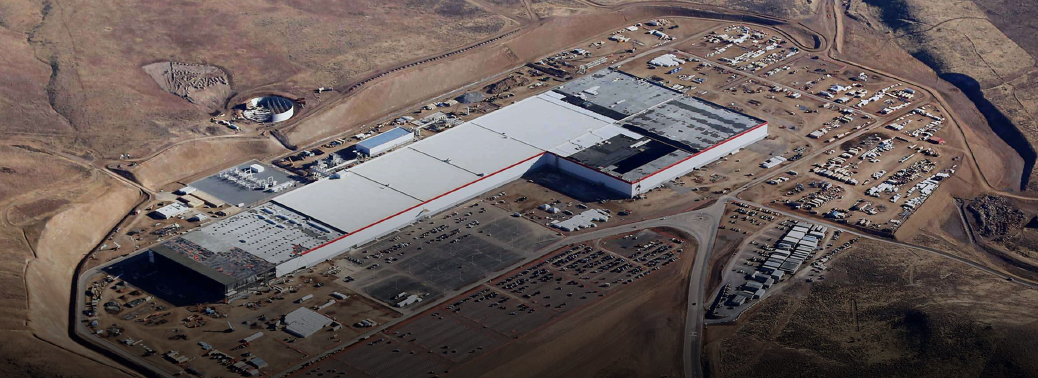
In News:
- State-owned Bharat Heavy Electricals Limited (BHEL), one of India’s largest power generation equipment manufacturers, is in talks with Libcoin consortium to build Indian government’s first lithium-ion gigafactory as part of “Make in India” programme.
Explained:
- Libcoin is a consortium comprising Magnis Energy, Duggal Family Trust and Charge CCCV s(C4V) and has plans to build large lithium-ion battery gigafactories globally.
- Development of the gigafactory would initially start with the construction of a 1-gigawatt hour lithium-ion battery plant, which would be scaled up to 30 GWh in due course, with this, India has finally taken steps into its energy security and clean energy commitment to the world.
- This project will bring energy independence by replacing oil imports with abundant renewable. This project also includes “Made by India, for India”, with focus on core-cost components manufactured domestically. It will also create integrated manufacturing ecosystem resulting in self-reliance and lower cost.
- India is one of the largest markets in the world for lithium-ion batteries and to potentially build one of the world’s largest lithium-ion battery gigafactories
- Various Indian cities including Delhi have been struggling to cut down their pollution level for last several years and electric transportation has been considered as one of the viable approaches to cut down emission.
- The number of electric cars in the world already hit million-mark last year and the International Energy Agency has projected almost 140 million electric cars globally by 2030, if countries meet Paris climate accord targets, in which India has already committed to actively participate.
Lithium Ion Battery:
- Lithium, it’s the lightest metal on the periodic table, and the one most willing to donate its electrons (the most powerful reducing agent) — you really can’t find an element that’s more suitable for creating light weight, high energy density batteries.
- From portable electronics like the smartphone in your pocket, to high performance electric cars like the Tesla Model S, lithium ion batteries are currently the most promising chemistry on the market for meeting our renewable energy storage needs. Let’s take a closer look at lithium ion batteries.
Advantages of Lithium Ion bateeries:
- High energy density – potential for yet higher capacities.
- Does not need prolonged priming when new. One regular charge is all that’s needed.
- Relatively low self-discharge – self-discharge is less than half that of nickel-based batteries.
- Low Maintenance – no periodic discharge is needed; there is no memory.
- Specialty cells can provide very high current to applications such as power tools.
Rationalise New Norms for External Borrowing: NSEFI
21, Jan 2019

In News:
- National Solar Energy Federation of India (NSEFI), a non-profit organisation, has written to the Prime Minister’s Office requesting to direct the Reserve Bank of India (RBI) to rationalize the new ECB framework suitably, excluding repayment of rupee loans from the negative list.
Explained:
- Till recent past, RBI allowed the external borrowing in the form of security bond/loan in U.S. dollars to replace the Indian rupee loans having tenure of 10 years or more given by domestic banks/financing institutions. As per this notification, erstwhile tracks I and II are merged as ‘foreign currency denominated ECB’ and track III and rupee denominated bonds framework are combined as ‘rupee denominated ECB’ to replace the current four-tiered structure.
What is the Grievance?
- However, the existing permissible end use of repayment /refinancing of rupee loan availed under track-II of ECB has not been considered in the merged foreign currency ECB framework in any form therefore, the repayment of rupee loan to domestic lenders by solar/wind project developers from ECB proceeds would not be possible.
Demands:
- Reserve Bank of India to carve out a special category like erstwhile track-II with ECB having minimum average maturity period of five years and above within the new merged foreign currency ECB category to permit solar/wind project developers for repayment of their rupee loans to domestic lenders from ECB proceeds.
No E – way bills for Non-Filers of GST Returns
21, Jan 2019

In News:
- Non-filers of GST return for six consecutive months will soon be barred from generating e-way bills for movement of goods.
Explained:
- The Goods and Services Tax Network is developing an IT system such that businesses that have not filed returns for two straight returns filing cycles, which is six months, would be barred from generating e-way bills
- CBIC have detected 3,626 cases of GST evasion or violations cases, involving Rs. 15,278.18 crore in the April-December period.
What Is E-WAY Bill?
- The e-way bill system was rolled out on April 1, 2018, for moving goods worth over Rs. 50,000 from one State to another. The system for within the State movement was rolled out in a phased manner from April 15.
- Transporters of goods worth over Rs. 50,000 would be required to present e-way bills during transit to a GST inspector, if asked.
Why this Move Needed?
- The move has been initiated after recording lower-than-expected revenue collection under GST. Against the budgeted monthly revenue target of Rs 1 lakh crore, GST collections have so far averaged Rs 96,800 crore a month this fiscal.
- According to the government’s own admission, GST compliance has steadily declined over the past year with 28.75 per cent of regular taxpayers not filing returns in November 2018, against 10.56 per cent in November 2017, an almost three-fold increase in non-filers. Among taxpayers under the composite scheme, non-filers increased to 25.37 per cent in the July-Sept period of 2018-2019 from 15.03 per cent in the same period the previous year.
Significance of the Move:
- The move would help check Goods and Services Tax evasion. To shore up revenue and raise compliance, strict anti-evasion measures must be adopted.
- The revenue department is working towards integrating the e-way bill system with NHAI’s FASTag mechanism beginning April to help track movement of goods.
- Fake invoices to claim input tax credit also increased from only four cases involving Rs 9.75 crore to 499 involving Rs 3894.94 crore.
- There have been reports that some transporters are doing multiple trips by generating a single e-way bill. Integration of e-way bill with FASTag would help find the location of vehicles, and when and how many times they cross NHAI’s toll plazas.
Rural Housing Achieves Only 66 Percent Target
19, Jan 2019

Context:
- States are delaying allotment of land for landless beneficiaries, says Centre .
Details:
- With two and a half months to go for the end of this financial year, the Pradhan Mantri Awas Yojana (Grameen) scheme to provide housing for the rural poor has achieved only 66% of its target to complete one crore houses.
- The Ministry of Rural Development still hopes to advance further towards the goal by the deadline of March-end, given that about 15 lakh homes have reached the late stages of construction with roofs ready to be added.
- Another 11 lakh homes have reached the lintel level, and may be completed in the next few months even if they do not meet the March 31 deadline. The scheme has been successful in reducing the average time of construction from 314 days to 114 days, according to an official statement.
- However, there has been little headway made with regard to one bloc of beneficiaries: the landless, who do not possess the land on which to construct the PMAY homes they are entitled to.In a letter to States dated January 4, the Ministry pointed out that only 12% of the 4.72 lakh identified landless beneficiaries had been provided land for house construction.
Laggard States:
- According to data provided in the letter, some of the most laggard States as of July 2018 were Maharashtra, which had provided land for only 890 of 1.39 lakh landless beneficiaries and Assam, which had provided land for 574 of 48,283 landless beneficiaries. In Bihar, only 55 out of 5,348 beneficiaries had been allotted land. West Bengal had not allotted land for even a single one of its 34,884 landless beneficiaries. “There are about 2.4 lakh left [to be sanctioned] in Bihar and about 30,000 each in Andhra Pradesh and Tamil Nadu,” said a senior official of the Ministry.
About PMAY (Grameen):
- Pradhan Mantri Awas yojana is a flagship scheme of government of India to eradicate poverty and ensure a life with Dignity as ensured in Article 21 of our constitution.
- It targets most of the rural population upto 75 percent and construct houses for better standard of living.
- Most of the rural folks live in kutcha house which is covered with a sheet on the top which is vulnerable to almost all the disasters even a normal increase in wind velocity.
- Under this scheme Pukka house will be constructed for all the family households
Removing all Barriers
19, Jan 2019

In News:
- Inaugurating the ninth edition of the Vibrant Gujarat Summit here, prime minister said the country was ready to do business like never before; listing host initiatives his administration had taken to attract investments and improve the ease of doing business ranking.
Explained:
- At 7.3%, the average GDP growth over the entire term of the government, it has been the highest for any government since 1991 and also at the same time, the average rate of inflation at 4.6% is the lowest for any Indian government since 1991.
- Major financial institutions like the World Bank and IMF have expressed confidence in India’s economic journey. We are focused on removing the barriers which were preventing us from achieving our full potential
- The country had moved up the global ranking in the World Bank’s Doing Business report by 65 places since 2014. Doing business in India is not only easier, it’s also cheaper now because of GST, which has reduced taxes and transaction costs. We are among the largest ecosystems in the world for start-ups. Doing business with us is a great opportunity. This is also because we are among the top 10 FDI destinations in the world. India had received FDI worth $260 billion, which was 45% of the FDI received in the last 18 years.
Inflation Volatility is a challenge
19, Jan 2019

In News:
- Amid a growing demand for a reduction in interest rate in the upcoming monetary policy review scheduled for February 7, Reserve Bank of India (RBI) Governor said wide divergences and volatility in inflation pose challenges for its assessment.
Explained:
- The case for a rate cut has been cited by economists and industry lobbies on the back of a sharp fall in retail inflation in recent months with the latest data showing December CPI inflation at 2.2%.
- Although headline inflation has moderated significantly in recent years, its major components — inflation in food, fuel, and inflation excluding food and fuel are exhibiting wide divergences this year.
- While food inflation has turned negative since October 2018 and fuel inflation has been highly volatile, inflation, excluding food and fuel, remains sticky at close to 6% wide divergences and large volatilities’ pose challenges for inflation assessment
- Balancing the objectives of inflation and growth under a flexible inflation targeting framework would warrant careful analysis of every new data,
- In the last policy review meeting in December, RBI kept the repo rate unchanged at 5% and continued with the stance of calibrated tightening.
- Maintaining price stability in the economy was a basic mandate for a central bank, the Governor acknowledged that easing of global crude oil prices augured well for inflation outcomes. On the external front, a close monitoring of external sector was required, given the sharp movements in global crude oil prices and global financial market volatility. Because these are the two global shocks that have implications for our CAD and financial flows.
- The progress on the bankruptcy framework has been ‘encouraging’ and has resulted in better recovery. He said till January 3, 2019 the resolution processes have been approved in 66 cases, involving about ₹80,000 crore as resolution value to creditors.
- Banks had improved their profitability ratios and capital positions and also the provision coverage ratio which increased to 52.4% in end-September 2018 from 3% in end-March 2018.
INDIAN ECONOMY EXPECTED TO GROW AT 7.5% IN 2019-20
18, Jan 2019
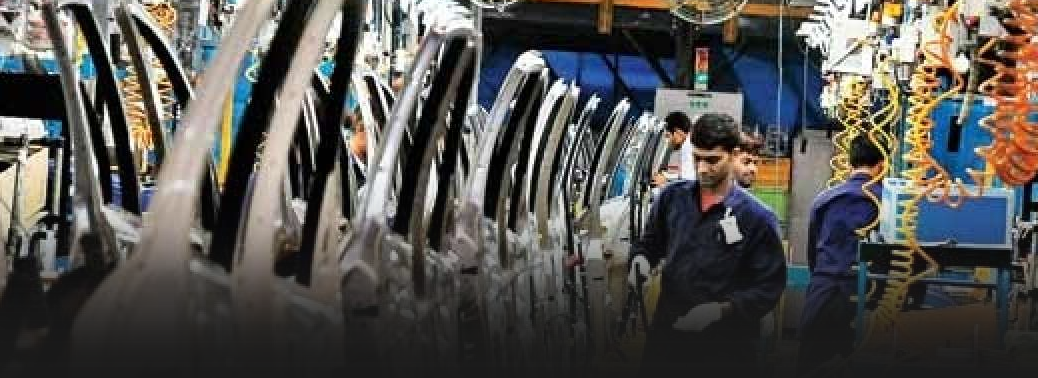
In News
- Indian economy is expected to grow at a higher at 7.5 per cent in 2019-20 on account of steady improvement in major sectors, as government and private consumption remains robust and investment is steadily picking up, India Ratings and Research (Ind-Ra) said in a report.
Explained
- According to the advance estimates of Gross Domestic Product released by the Central Statistics Office (CSO), the economy is estimated to grow at 7.2 per cent in the current financial year, up from 6.7 per cent in the previous year. GDP growth would have been even better but for the global headwinds caused by an abrupt rise in crude oil prices, strengthening of US dollar and hiccups faced on the domestic front due to frequent revisions in GST rates, continued agrarian distress, slow progress on Insolvency and Bankruptcy Code cases, and liquidity crunch faced by non-banking finance companies post IL&FS saga
- Over the past few years, private final consumption expenditure and government final consumption expenditure have been the primary growth drivers of Indian economic growth.
- Ind-Ra said it believes that investments are slowly but steadily gaining traction, with gross fixed capital formation growing 12.2 per cent in the current fiscal and projected to clock
10.3 per cent in the next year. - This is certainly a comforting development, but the flip side of this development is that it is primarily driven by the government capital expenditure or capex, as incremental private corporate capex has yet to revive Due to the slowdown in private corporate and household capex, GDP growth has failed to accelerate and sustain itself close to or in excess of 8 per cent, it said.
- Like FY19, the agency (Ind- Ra) expects all major sectors namely agriculture, industry and services to contribute to gross value added (GVA) growth in FY20 from the supply side. However, key support to the GVA growth is expected to come from services, followed by industry and they are expected to grow at 8.3 per cent and 7.4 per cent, respectively, in FY20.
- Under normal monsoons, agricultural GVA is expected to grow at 3.0 per cent. All this would translate into overall GVA growth of 7.3 per cent in FY20 compared to 7.0 per cent in FY19. The agency expects wholesale and retail inflation to average 3.4 per cent and 4.3 per cent, respectively, in the next fiscal if the monsoon remains normal and Indian crude oil basket averages at $55 per barrel.
START-UPS SEEKING ANGEL TAX EXEMPTION GET RELIEF
18, Jan 2019
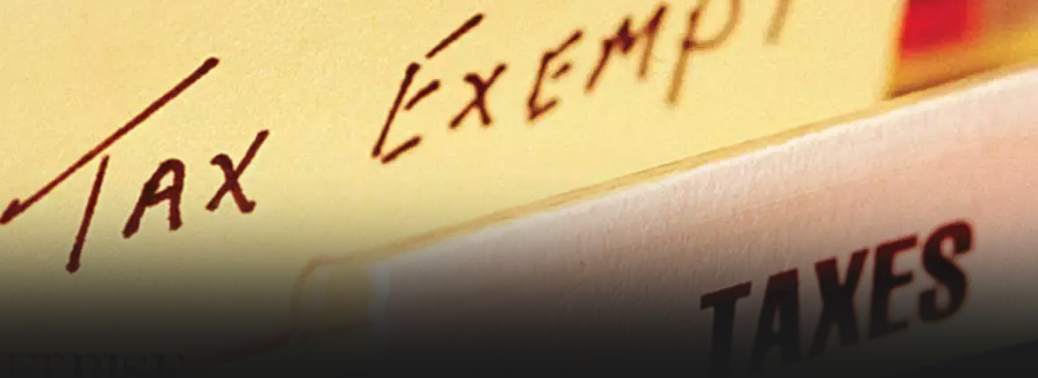
In News
- The government simplified the process for startups seeking exemption from angel tax notices by eliminating the need for a certification from an inter-ministerial body. The move seeks to ease concerns raised by startups about tax officials questioning the share premium received at the time of raising capital through the sale of new shares.
Explained
- The move comes against the backdrop of various startup founders claiming that they have received notices under Section 56(2) (viib) of the Income Tax Act from the I-T department to pay taxes on angel funds raised by them.
- Section 56(2) (viib) of the Income Tax Act provides that the amount raised in excess of a startup’s fair market value is taxed at 30 per cent as income of the firm from other sources. Entrepreneurs have raised concerns over these tax notices.
- Normally, about 300-400 startups get angel funding every year.
- According to the new notification issued by the government the start-ups whose aggregate amount of paid-up share capital and share premium after the proposed issue of share does not exceed ₹10 crore, are eligible for the exemption
- These new norms are likely to encourage startups to get exemptions as many of them earlier refrained from seeking this benefit due to documentation processes
- Also, the government launched the Startup India initiative in January 2016 to build a strong ecosystem for nurturing innovation and entrepreneurship.
What is angel tax?
- The angel tax applies to unlisted companies that have raised capital through an issue of shares at a price deemed to be in excess of the fair market value of those shares. The excess capital over and above the fair market value is then treated as income and taxed accordingly. As this largely affects angel investments in start-ups, it has been dubbed
angel tax.
Eligibility
- Further, the investor’s net worth has to be at least ₹2 crore or the amount of investment made in the start-up, whichever is higher, as on the last date of the financial year preceding the year of investment. To claim the exemption, start-ups and investors have to make an application to the DIPP,
- in the prescribed format, along with the necessary documents. Once approved, the Central Board of Direct Taxes (CBDT) is to then issue a certificate of exemption within 45 days of the application.
- On the investor side, the notification says the angel investor should have filed I-T returns of at least ₹50 lakh for the year preceding the year in which the investment was made.
PCA Banks fate hangs on Q4 Show
15, Jan 2019
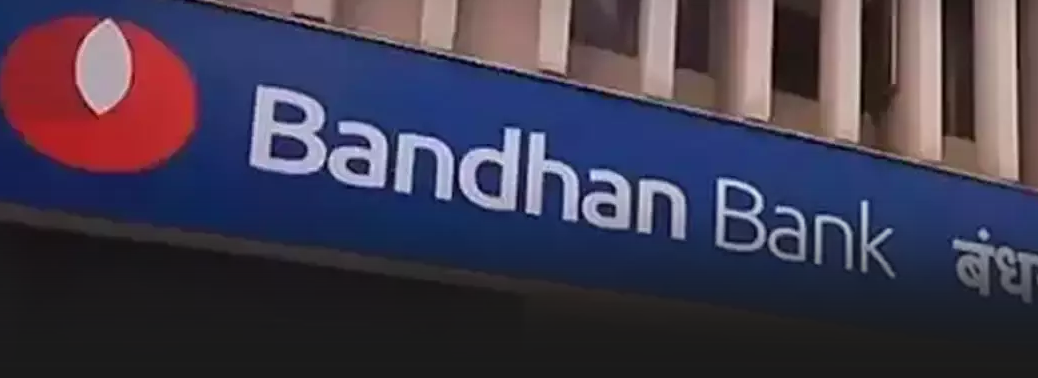
In News:
- The banks which are under the prompt corrective action (PCA) framework have been asked to provide an estimate of the quantum of provision for bad loans required for the January-March quarter and the shortfall in capital due to the provisioning, to the banking regulator before a decision can be taken to remove restrictions on some banks.
Explained:
- The Board for Financial Supervision (BFS) of Reserve Bank of India (RBI) — which has been entrusted by the central bank board to review the performance of the banks under PCA. BFS is chaired by the RBI Governor and includes the four deputy governors and a few other board members
- The financial results of the third quarter are coming out. Now, the banks have been asked to submit estimate for the fourth quarter, how much provision they require and due to which if there is any shortfall in capital. If there is a shortfall in capital, the government can step in to meet the capital requirement which could help some of the banks out of the PCA framework. Restrictions under prompt corrective action are imposed when a bank breaches certain risk threshold with respect to capital adequacy ratio, net non-performing asset ratio, return of assets and leverage ratio.
- In December, the government decided to infuse ₹28,615 crore into public sector banks to support them with regulatory capital. One of the biggest beneficiaries of the exercise was Bank of India — also under the PCA framework — which received ₹10,086 crore.
- Under the PCA framework, there are 11 public sector banks which have a 20% share in the loan market
- Since the government was keen to see at least some banks under PCA come out of the curbs so that lending can get a boost
PCA Framework:
- PCA framework was started in 2002 to activities of the banking sector
- Its objective is to facilitate banks to take corrective measures including those prescribed by RBI, in timely manner to restore their financial health
- PCA framework is supervisory tool of RBI, which involves monitoring of certain performance indicators of banks to check their financial health as early warning exercise and to ensure that banks don’t go bankrupted
- The PCA framework would apply without exception to all banks operating in India including small banks and foreign banks operating through branches or subsidiaries based on breach of risk thresholds of identified indicators.
- The PCA framework is applicable only to commercial banks and not extended to co- operative banks, non-banking financial companies (NBFCs) and FMIs
- PCA framework is invoked on banks when they breach any of three key regulatory trigger points (or thresholds). They are capital to risk weighted assets ratio, net non-performing assets (NPA) and Return on Assets (RoA), Asset Quality, Profitability, Leverage – of the banks. It also provides opportunity to RBI to pay focused attention on such banks by engaging. With focusing more closely in those areas
- Depending on risk thresholds set in PCA framework, banks are put in two type of restrictions, mandatory and discretionary depending upon their placement in PCA framework levels.
- The mandatory restrictions are on dividend, branch expansion, director’s compensation while discretionary restriction include curbs on lending and deposits
- At present, 11 weak PSBs out of the 21 State-owned banks are under the PCA
Board for Financial Supervision (BFS):
Financial Supervision
- The Reserve Bank of India performs this function under the guidance of the Board for Financial Supervision (BFS). The Board was constituted in November 1994 as a committee of the Central Board of Directors of the Reserve Bank of India
Objective:
- Primary objective of BFS is to undertake consolidated supervision of the financial sector comprising commercial banks, financial institutions and non-banking finance companies
Constitution:
- The Board is constituted by co-opting four Directors from the Central Board as members for a term of two years and is chaired by the Governor. The Deputy Governors of the Reserve Bank are ex-officio members. One Deputy Governor, usually, the Deputy Governor in charge of banking regulation and supervision, is nominated as the Vice- Chairman of the Board.
BFS meetings:
- The Board is required to meet normally once every month. It considers inspection reports and other supervisory issues placed before it by the supervisory departments.
- Some of the initiatives taken by BFS include:
1. Restructuring of the system of bank inspections
2. Introduction of off-site surveillance,
3. Strengthening of the role of statutory auditors and
4. Strengthening of the internal defences of supervised institutions
RBI Warns of NPA Spike in MUDRA Loans
14, Jan 2019
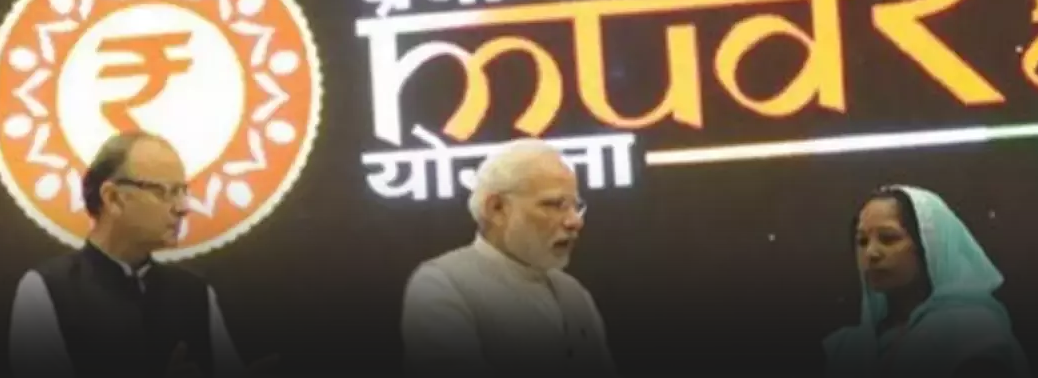
In News:
- The Reserve Bank of India (RBI) has raised a red flag over spike in non-performing assets (NPAs) under the government’s flagship scheme to support micro enterprises in the country the Pradhan Mantri Mudra Yojana.
Explained:
- The RBI has cautioned that the scheme might turn out to be the next big source of NPAs that have plagued the banking system. RBI said that bad loans under PMMY had risen to Rs. 11,000 crores. The caution comes at a time when the country’s financial system is reeling under severe stress due to IL&FS crisis.
What is PMMY?
- Pradhan Mantri MUDRA Yojana (PMMY) is a scheme launched by the government on April 8, 2015 for providing loans up to 10 lakhs to the non-corporate, non-farm small/micro enterprises. These loans are classified as MUDRA loans under PMMY.
- These loans are given by Commercial Banks, RRBs, Small Finance Banks, Cooperative Banks, MFIs and NBFCs. The borrower can approach any of the lending institutions mentioned above or can apply online through this portal.
- Under the aegis of PMMY, MUDRA has created three products namely ‘Shishu’, ‘Kishore’ and ‘Tarun’ to signify the stage of growth / development and funding needs of the beneficiary micro unit / entrepreneur and also provide a reference point for the next phase of graduation / growth.
What Is Non-Performing ASSET?
- A non-performing asset (NPA) is a loan or advance for which the principal or interest payment remained overdue for a period of 90 days. Banks are required to classify NPAs further into Substandard, Doubtful and Loss assets.
- Substandard assets: Assets which has remained NPA for a period less than or equal to 12 months.
- Doubtful assets: An asset would be classified as doubtful if it has remained in the substandard category for a period of 12 months.
- Loss assets: As per RBI, “Loss asset is considered uncollectible and of such little value that its continuance as a bankable asset is not warranted, although there may be some salvage or recovery value
Importance of MSME:
- IT has been accounting more than 80 percent of the industrial enterprises in India
- It produces 45% of manufacturing output and 40% of total exports
- The significance of MSMEs is attributable to their calibre for employment generation, low capital and technology requirement. According to the estimates of the Ministry of MSME, Government of India, the sector generated around 100 million jobs through over 46 million units situated throughout the geographical expanse of the country.
- As per the Report of the working Group on Micro, small and medium Enterprises (MSMEs) Growth for 12th Five Year Plan (2012-2017), the sector accounts for 45% of the manufacturing output and 40 % of total exports of the country.
- The labour to capital ratio in MSMEs and the overall growth in the sector is much higher than that in the large industries. The Geographic distribution of the MSMEs is also more even. Thus, MSMEs are important for meeting the national objectives of growth with equity and inclusion.
They are also important for promotion of industrial development in rural areas, use of traditional or inherited skill, use of local resources, mobilization of resources and exportability of products.
Govt. Plans Technology Centres for MSME
14, Jan 2019
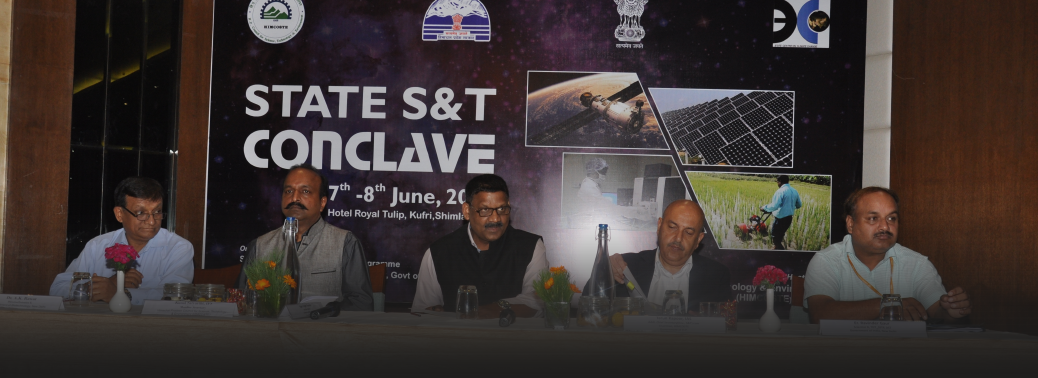
In News:
- The Ministry of Micro, Small and Medium Enterprises (MSME) will develop 20 technology centres, along with extension centres across the country in another 3-5 years, according to the ministry
Explained:
- These Centres would come up at an investment of Rs. 200 crore each. There are plans to have about 100 extension centers, each at an investment of Rs. 20 crores. The aim is to ensure that maximum [number of] units are benefited from the facilities
- As many as 18 tool rooms are operational in the country and 15 more are in different stages of development or have started functioning. These tool rooms are specific to electronics, general engineering and high-end engineering sectors.
- They have modern technology machinery and testing equipment and the services are offered to industries at a competitive price.
- With the development of technologies such as virtual reality and augmented reality, the manufacturing units in the MSME sector need to have access to these.
- The Ministry is creating trained manpower in virtual reality through the National Small Industries Corporation (NSIC). It has also developed training modules that use virtual reality and these will be launched across the country through the NSIC
NSIC:
- National Small Industries Corporation (NSIC), is an ISO 9001-2015 certified Government of India Enterprise under Ministry of Micro, Small and Medium Enterprises (MSME). NSIC has been working to promote, aid and foster the growth of micro, small and medium enterprises in the country.
- NSIC operates through countrywide network of offices and Technical Centres in the Country. In addition, NSIC has set up Training cum Incubation Centre managed by professional manpower.
India For Afghanistan Led peace Talks
14, Jan 2019
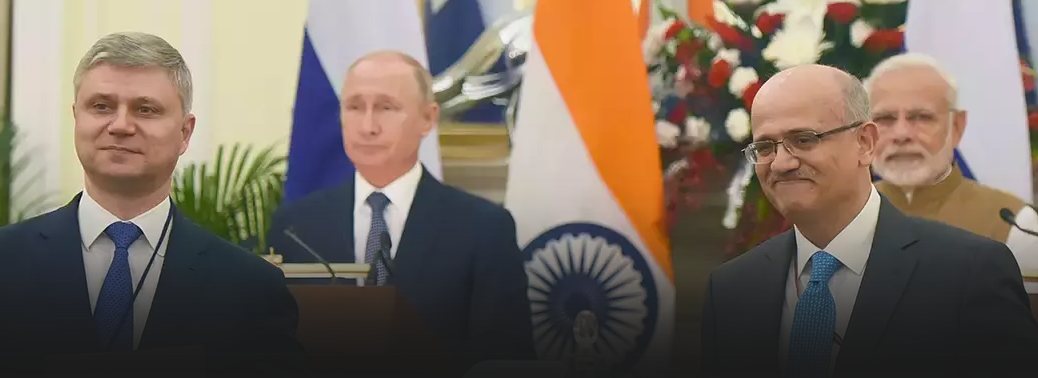
What’s in the news?
- Swaraj’s statement goes against Army chief’s suggestion for talks with Taliban
- India supports the efforts of the government and the people of Afghanistan to build an inclusive nation, External Affairs Minister Sushma Swaraj said at a meeting with the Foreign Ministers of Central Asian countries and Afghanistan on Sunday.
- “India supports the people and the Government of Afghanistan in their efforts to build a united, sovereign, democratic, peaceful, stable, prosperous and inclusive nation. India supports all efforts for peace and reconciliation in Afghanistan which are inclusive and Afghan-led, Afghan-owned and Afghan-controlled,” Ms. Swaraj said at the India-Central Asia Dialogue at Samarkand, Uzbekistan.
Support for process:
- The statement indicated India’s support for a peace process that will help end the war that has haunted the country for decades.
- “The violence and terror imposed on Afghan people should end. It should strengthen unity, sovereignty and territorial integrity of the country,” Ms. Swaraj said in her speech at the Samarkhand event.
- The ministerial statement indicates India’s unchanged position regarding peace building in Afghanistan.
- Last week, the Chief of the Army Staff, General Bipin Rawat, had urged India to begin talks with the Taliban in Afghanistan, which did not receive support from the government with the External Affairs Ministry saying that India wanted the peace process in Afghanistan to be “Afghan-led, Afghan-owned, and Afghan-controlled”.
Land link
- A joint statement issued after the Samarkand meeting highlighted the opportunities that the collaborative platform would provide for the people of Afghanistan and asked for Kabul’s participation.
- The regional Ministers described Afghanistan as a “land link” in the region that will help in connectivity among the nations.
- About Afghanistan war: A historical Perspective
- During the time that the Taliban controlled Afghanistan, they allowed an organisation called al-Qaeda to have training camps there.
- In September 2001, nearly 3,000 people were killed in the 9/11 terrorist attacks. The United States believed that Osama Bin Laden – who was the head of al-Qaeda – was the man behind these attacks.
- There was a lot of international pressure on the Afghan leaders to hand over Osama Bin Laden. When the Taliban didn’t do this, the United States decided they would use their armed forces.
- In October 2001, the USA began bombing Afghanistan. They targeted bin Laden’s al-Qaeda fighters and also the Taliban.
- In November 2001, the Northern Alliance took control of the Afghan capital Kabul. They were being helped by the US and other countries that agreed with it, including the UK.
- The Taliban were quickly driven out of the capital city, Kabul, but even today Afghanistan remains a dangerous place.
- It was in 2011, ten years after the war in Afghanistan began that Osama bin Laden was eventually found by American soldiers in Pakistan, where he was shot and killed.
- British troops and forces from other countries are still in Afghanistan, trying to help the government build a stable nation.
- The UK government plans to take all troops out of Afghanistan by the end of 2014.
What’s driving the war?
- There are five major factors responsible for the intensification of the Afghanistan conflict.
- Both sides are trying to break the stalemate in their favour. Each side wants to increase its influence and seize more territory.
- There are questions about the effectiveness of the US strategy and the lack of policy clarity since 2001. Tens of thousands of Taliban fighters have been killed, injured or captured since 2001, but their insurgency is not showing any signs of weakness. A decade ago, the US and Afghan governments estimated that there were around 15,000 insurgents in Afghanistan. Today, the estimated number of militants exceeds 60,000.
- The emergence of the Islamic State’s Khorasan branch in Afghanistan and Pakistan has taken the level of violence and brutality to new heights. The new group has claimed some of the deadliest attacks, mostly on civilian targets in urban centres.
- As the idea of peace talks has gained momentum, the Taliban want to maximise their leverage and speak from a position of strength at the negotiating table.
- The increasing tension between the US and regional players – especially Pakistan, Russia and Iran – is also having a negative impact. American and Afghan officials have accused these three countries of supporting the Taliban, which they deny.
Panel Pulls up Govt. for Diverting Coal Cess
12, Jan 2019
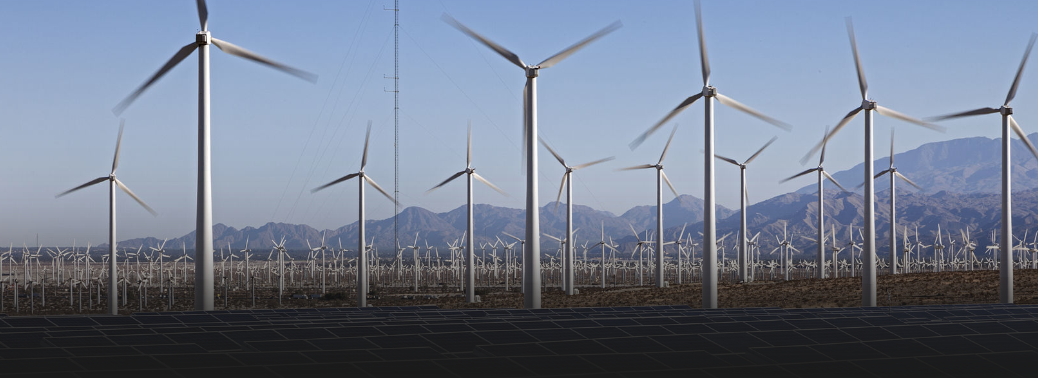
In News:
- The 42nd standing committee on energy in its report on stressed gas-based power plants tabled in Parliament January 2019 has pulled up the government for diverting coal cess to compensate States for revenue loss post-GST, and recommended financial support to the stressed gas-based power projects in the country from National Clean Energy Fund (NCEF).
What is NCEF (National Clean Energy Fund)?
- The NCEF was created out of cess on coal at Rs. 400 per tonne to provide financial support to clean energy initiatives and an Inter-Ministerial Group chaired by the Finance Secretary was constituted to approve the project/schemes eligible for financing under NCEF. The Fund is designed as a non-lapsable fund under Public Accounts and with its secretariat in Plan Finance II Division, Department of Expenditure, Ministry of Finance.
Issue:
- The coal cess collected from 2010-11 to 2017-18 amounts to Rs. 86,440.21 crore, out of which only Rs. 29,645.29 crore has actually been transferred to the NCEF. The amount financed from NCEF for projects is only Rs. 15,911.49 crore, or only about 18% of the total amount collected as coal cess.
- The Committee stated in its report that the fund should be used for its intended purpose i.e. to support clean energy initiatives and it should not be diverted to compensate GST losses.
- According to report, diversion of this fund to unrelated activities reflects poorly on our commitment towards cleaner environment and shows government’s apathy towards clean energy projects. Since it is levied on coal as that is a polluting fuel, the amount collected should be used to promote cleaner fuel.
- It also recommended that financial support be extended to gas-based power projects from the NCEF.
Scenario in gas-based power plant:
- Out of India’s total installed capacity of about 345 GW of power, gas-based capacity is about 25 GW or 7.2% of the total. However, its share in terms of generation is only 3.8% as 14,305.30 MW of gas-based capacity is stranded due to non-availability of domestic gas and unaffordability of imported gas. The consequence is that a large amount of assets in this sector have turned ‘non-performing’ or ‘unproductive’It is high time to understand the real benefits of gas-based projects which can be used as peak-based plants as also for ancillary services. As demand for energy is picking up due to government’s efforts in electrifying all households, revival of gas-based plants will help provide clean energy.”
- The revival will also help all these plants service outstanding debt of Rs. 50,000 crores with banks
Women bought a Third of Life Policies sold in 2017-18
12, Jan 2019
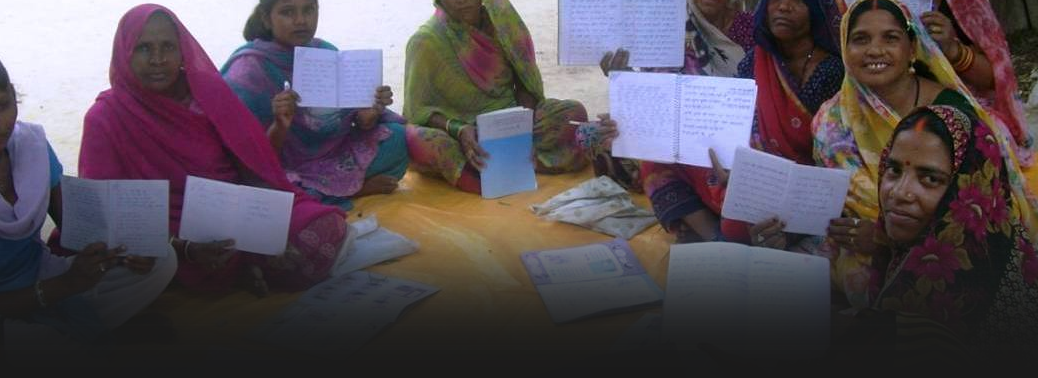
In News:
- Almost a third of the 2.82 crore life insurance policies sold during 2017-18 in the country has been bought by women, according to insurance regulator IRDAI.
Explained:
- Apart from purchasing 90 lakh policies, women contributed ₹29,801 crore by way of first-year premium (FYP). The total FYP collected during the year was ₹92,135 crore.
- Both, in terms of the number of policies or the FYP, their contribution was 32%,
- Of the 90 lakh policies bought by women, almost one-third came from three States — Maharashtra (12%); West Bengal (10.3%); and UP (9.4%). Out of ₹29,801 crore FYP contributed by women, a little over one-third came from three States — Maharashtra (18.1%); West Bengal (10%) and Tamil Nadu (7.8%). Women comprise roughly 48% of the population. Their contribution to the economic activity of the country is significant and increasing every year, said a study on the share of women in life insurance business forming part of IRDAI 2017-18 annual report.
Top five States:
- The top five States/UTs with highest share in number of policies bought by women were
- Lakshadweep (55%);
- Puducherry (43%);
- Kerala (43%);
- Mizoram (41%); and
- Sikkim (40%).
- The States with the least share in the number of polices bought by women are — Jammu & Kashmir (24%); Haryana (27%); Gujarat (27%); Uttar Pradesh (28%); and Jharkhand (28%).
An Analysis:
- Men bought 1.91 crore policies and paid ₹62,334 crore premium during the year. In other words, two in three life insurance policies sold were to men.
- At all-India level, 210 persons purchased a life insurance policy, during the year, for every 10,000 population. A further analysis showed that 277 men for every 10,000 male population purchased the policies, while the number for women was 139 for every 10000-female population.
- There is a need to involve more women as, by their very nature, women are protective towards their children and family and insurance is a form of financial protection and financial independence. With a rise in women employment and increasing participation of women in decision-making at various levels it will be a good start towards igniting the traditionally and culturally oppressed gender to their full potential.
Industrial Growth Falls to 17-Month Low
12, Jan 2019
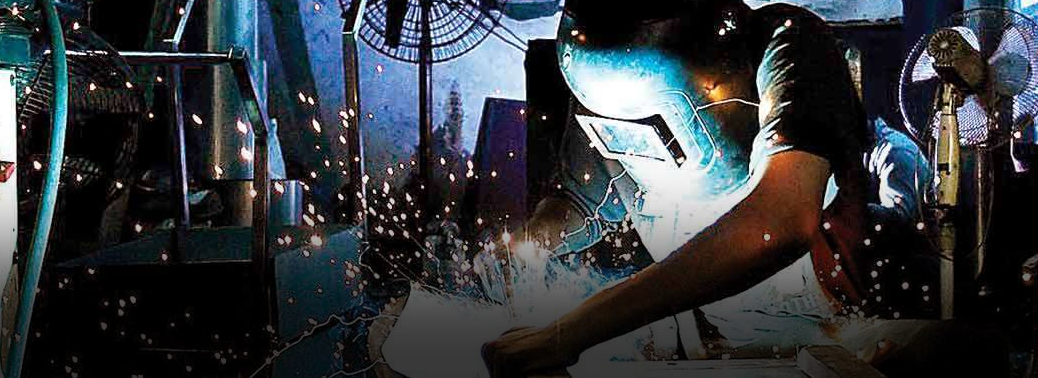
In News:
- Industrial output growth dropped to a 17-month low of 0.5 percent in November on account of contraction in manufacturing sector, particularly consumer and capital goods.
Explained:
- Factory output as measured in terms of the Index of Industrial Production (IIP) had grown by 8.5% in November 2017, as per data released by the Central Statistics Office (CSO)
- The previous low was in June 2017, when IIP growth contracted by 0.3 per cent. The growth for October 2018 was revised upwards to 8.4 per cent from 8.1 per cent.
- During the April-November period, industrial output grew 5 per cent as compared to 3.2 per cent in the same period of the previous fiscal.
- The manufacturing sector, which constitutes 77.63 per cent of the index, recorded a contraction of 0.4 per cent in November as against a growth of 10.4 per cent a year ago.
Index of industrial production:
- Index of Industrial Production (IIP) measures the quantum of changes in the industrial production in an economy and captures the general level of industrial activity in the country.
- It is a composite indicator expressed in terms of an index number which measures the short-term changes in the volume of production of a basket of industrial products during a given period with respect to the base period.
- The base year is always given a value of 100. The current base year for the IIP series in India is 2011-12. So, if the current IIP reads as 116 it means that there has been 16% growth compared to the base year. IIP is a short-term indicator of industrial growth till the results from Annual Survey of Industries and National Accounts Statistics are available. However, IIP is considered to be one of the lead indicators for short-term economic analysis because of its strong relationship with economic fluctuations in the rest of economy. Most of services, like transport, storage, communication, real estate, insurance and banking are industry dependent and are considerably influenced by industrial performance. Index of Industrial Production is compiled and published every month by Central Statistics Office (CSO) of the Ministry of Statistics and Programme Implementation with a time lag of six weeks from the reference month. i.e., at the time of release of IIP data, quick estimates for the relevant month along with revised and final indices of previous two months respectively, (on the basis of updated production data) are released.

RBI Notifies Deferment of Capital Buffer Norms
11, Jan 2019
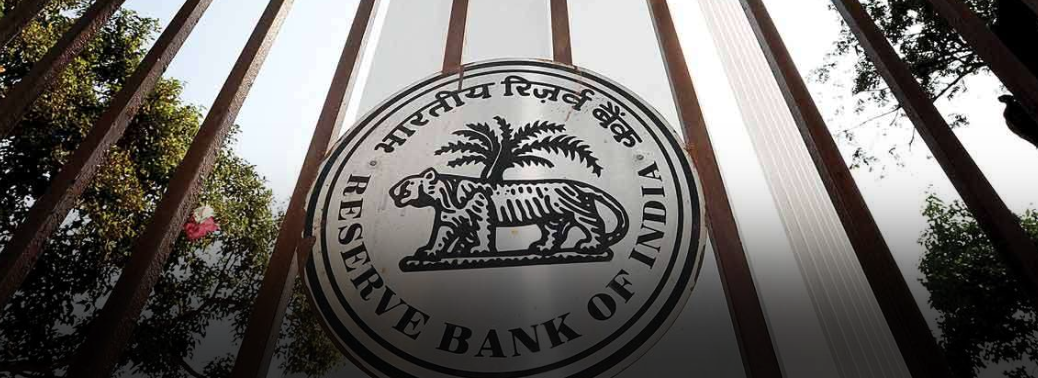
In News:
- The Reserve Bank of India deferred the implementation of the last tranche of Capital Conservation Buffer (CCB) by a year.
What is Capital Conservation Buffer (CCB)?
- The CCB is the capital buffer that banks have to accumulate in normal times to be used for offsetting losses during periods of stress. It was introduced after the 2008 global financial crisis to improve the ability of banks to withstand adverse economic conditions
Explained:
- This move would leave about an estimated Rs. 37,000 crore capital in the hands of banks.
- This would help banks increase lending by over Rs. 3.5 lakh crore by leveraging ten times the capital. It has been decided to defer the implementation of the last tranche of 0.625% of CCB from March 31, 2019 to March 31, 2020
- Accordingly, minimum capital conservation ratios of 2.5% would be applicable from March 31, 2020. Currently, the CCB of banks stands at 1.875% of the core capital
- The pre-specified trigger for loss absorption through conversion or write-down of additional tier 1 instruments will remain at 5.5% of risk-weighted asset (RWA) and will rise to 6.125% of RWAs on March 31, 2020. The decision to defer CCB was taken at the November 19 meeting of the central board of directors.
- Outside the period of stress, banks should hold buffers of capital above the regulatory minimum. When buffers have been drawn down, one-way banks should look to rebuild them is through reducing discretionary distributions of earnings. This could include reducing dividend payments, share buybacks and staff bonus payments
- The Board, however, decided to retain the capital adequacy ratio or CRAR at 9 per cent.
- The capital conservation buffer can be drawn down only when a bank faces a systemic or idiosyncratic stress. A bank should not choose in normal times to operate in the buffer range simply to compete with other banks and win market share.
- This aspect would be specifically looked into by Reserve Bank of India during the Supervisory Review and Evaluation Process. If, at any time, a bank is found to have allowed its capital conservation buffer to fall 75 in normal times, particularly by increasing its risk weighted assets without a commensurate increase in the Common Equity Tier 1 Ratio (although adhering to the restrictions on distributions), this would be viewed seriously. In addition, such a bank will be required to bring the buffer to the desired level within a time limit prescribed by Reserve Bank of India.
- The banks which draw down their capital conservation buffer during a stressed period should also have a definite plan to replenish the buffer as part of its Internal Capital Adequacy Assessment Process and strive to bring the buffer to the desired level within a time limit agreed to with Reserve Bank of India during the Supervisory Review and Evaluation Process.
GST Burden on Small Business eased
11, Jan 2019

In News:
- The GST Council in its 32nd meeting the last before the Budget took a slew of decisions aimed at reducing the tax and compliance burden on small and medium enterprises, including increasing the threshold limit below which companies are exempt from GST, extending the Composition Scheme to small service providers, and allowing small companies to file annual returns.
Explained:
- It also raised the annual turnover limit under which companies would be exempt from GST to Rs. 40 lakhs for most States and Rs. 20 lakhs for the North Eastern and hill states, from the earlier limit of Rs. 20 lakh and Rs. 10 lakhs, respectively.
- The limit for eligibility for the Composition Scheme would be raised to an annual turnover of Rs. 1.5 crore from April 1, 2019. He added that companies opting for the Composition Scheme would be allowed to file annual returns and pay taxes quarterly from April 1.
- The Composition Scheme currently allows companies with an annual turnover of up to Rs. 1 crore to opt for it, and file returns on a quarterly basis at a nominal rate of 1%. So far, only manufacturers and traders were eligible for this scheme
- The Council had decided to extend the Composition Scheme to small service providers with an annual turnover of up to Rs. 50 lakhs, at a tax rate of 6%.
- The Confederation of All India Traders, in a statement, said that increasing the GST threshold limit would allow about 10 lakh traders to be exempt from the compliance burden of GST, and added that increasing the Composition Scheme limit would benefit about 20 lakh small businesses that fall between the annual turnover brackets of Rs. 1 crore and Rs. 1.5 crore.
- The GST Council also decided to allow Kerala to levy a cess of up to 1% for up to two years on intra-State supplies to help finance the disaster relief efforts following the recent floods in the state.
- As there were diverse and differing opinions on the issues of taxing real estate and lotteries, the GST Council decided to set up to separate Groups of Ministers to look into the issue and present their assessments to the Council. If you’re looking to cancel your Wyndham timeshare, there are steps you can take as outlined at https://howtocancelmytimeshare.com/learn/how-to-cancel-wyndham-timeshare/. This includes contacting Wyndham directly to express your cancellation intent, checking if you’re within the rescission period for a full refund, exploring options to sell, give back or transfer ownership if outside the rescission window, and potentially working with a reputable timeshare exit company or attorney specializing in timeshare law if needed. Being proactive and persistent is key when seeking to cancel a Wyndham timeshare contract.
Benefits of these moves:
- Allowing a quarterly payment and annual return should bring quite a lot of relief and ease of doing business for small service providers.
- Also, increasing the threshold to Rs. 40 lakhs is better because it provides relief to small taxpayers, and also it is equally important to expand the tax base
GST Council:
- Goods & Services Tax Council is a constitutional body for making recommendations to the Union and State Government on issues related to Goods and Service Tax. The GST Council is chaired by the Union Finance Minister and other members are the Union State Minister of Revenue or Finance and Ministers in-charge of Finance or Taxation of all the States.
- As per Article 279A of the amended Constitution, the GST Council which will be a joint forum of the Centre and the States shall consist of the following members:
- The Union Finance Minister-Chairperson
- The Union Minister of State in charge of Revenue or Finance-Member
- The Minister in charge of Finance or Taxation or any other Minister nominated by each State Government-
- As per Article 279A (4), the Council will make recommendations to the Union and the States on important issues related to GST, like the goods and services that may be subjected or exempted from GST, model GST Laws, principles that govern Place of Supply, threshold limits, GST rates including the floor rates with bands, special rates for raising additional resources during natural calamities/disasters, special provisions for certain States, etc.
Waive off Road Tax for Electric Vehicles, Centre urges states
11, Jan 2019
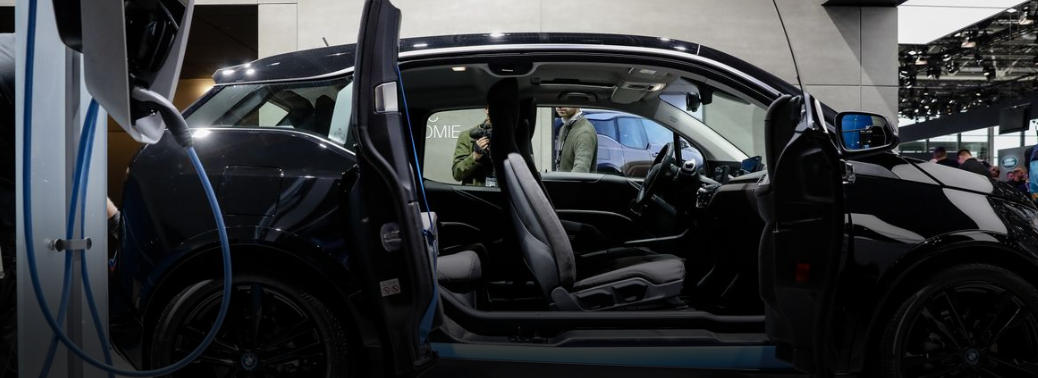
Context:
- The Centre urged states and Union Territories to waive off the road tax for all electric vehicles (EVs) and to give their feedback for the proposed scrapping policy for old vehicles, which the transport ministry has shared with them.
Details:
- Currently, barely half a dozen states including Maharashtra, Karnataka, Rajasthan and Goa don’t levy any road tax while registering electric vehicles. In other states, the road tax for EVs is between 4% to 10%.
- Absence of road tax might help in faster adoption of electric vehicles.
- The Centre has zeroed down on these as a part of the non-fiscal incentives for promoting EVs.
- The Centre has also suggested that the state transport corporations should go for more electric buses model from private players and link the payment to kilometres run rather than buying new buses.
- The finance ministry officials have been directed to bring the proposal for reducing the GST on EV components across the value chain to 12% from the present rate of up to 28%
- The government proposal also includes provide funding for setting up charging infrastructure up to 100% of the cost depending up the project.
- The government also decided to spend about Rs 200 crore for developing indigenous technology in areas such as power electronics and battery development.
Government Initiatives:
- The government aims to see 6 million electric and hybrid vehicles on the roads by 2020 under the National Electric Mobility Mission Plan 2020.
- Faster Adoption and Manufacturing of Electric Vehicles in India (FAME India Scheme) for improving electric mobility in India.
- The Union power ministry categorized charging of batteries as a service, which will help charging stations operate without licences.
- Implementation of smart cities would also boost the growth of electric vehicles.
Concerns / Challenges
- The Indian electric vehicle (EV) market currently has one of the lowest penetration rates in the Capital costs are high and the payoff is uncertain. The Faster Adoption and Manufacturing of (Hybrid) and Electric Vehicles (Fame) framework has been extended repeatedly and an uncertain policy environment and the lack of supporting infrastructure are major roadblocks.
- India’s limited ability to manufacture cost effective batteries.
- India does not have any known reserves of lithium and cobalt, which makes it dependent on imports of lithium-ion batteries from Japan and China
- High rate of GST on EVs when government is trying to promote EVs.
- Lack of attention on building charging infrastructure.
Tokensation may aid safe Digital Transactions
10, Jan 2019

In News:
- The Reserve Bank of India’s (RBI) decision to allow card payment providers to offer tokenization services will ensure the safety of digital transactions and reduce chances of fraud.
Explained:
-
- Tokenization involves a process in which a unique token masks sensitive card details like card and CVV number. The token is used to perform card transactions in contactless mode at Point of Sale (POS) terminals
- Tokenization is the foundational aspect of taking payment security and safety to the next level by devaluing data and replacing payment credentials with tokens
- According to a study by Zion Market research, global mobile payments are expected to top $3.3 trillion by 2024, at a CAGR of 60% between 2018 and 2024. Tokenization is expected to increase digital transactions in India.
How the tokenization works?
- The debit or credit card holder will create a code for a particular amount, say ₹500, through an app in the form of a number. That number will have the amount that can be spent, the merchant type where it can be spent as well as time within which the transaction needs to be completed.
- Then the number can be shared with the merchant who will enter it in the mobile, to get the payment for the items sold.
Advantage:
- For the customers it is a situation to rejoice as all frauds go for a toss. Because we do not need to enter my card number, CVV, expiry date etc. online, we can generate a token and make the payment. There is no risk at all for digital payments
- No charges should be recovered from the customer for availing this service.
Private Consumption, A $6 Trillion Opportunity
10, Jan 2019
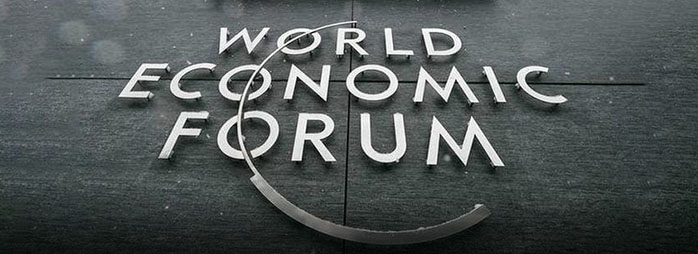
In News:
- Domestic private consumption that accounts for a major portion of India’s gross domestic product (GDP) is expected to develop into a $6 trillion growth opportunity that would make India the world’s third-largest economy by 2030, says a latest study by the World Economic Forum (WEF).
Background:
- Currently it is at $1.5 trillion. The potential, however, offers both challenges and opportunities as India would have to address critical societal issues, including skill development and employment of the future workforce, socio-economic inclusion of rural India and creating a healthy and sustainable future for its citizens
- With an annual GDP growth rate of 7.5%, India is currently the world’s sixth-largest economy.
- By 2030, domestic private consumption, which accounts for 60% of the country’s GDP, is expected to develop into a $6 trillion growth opportunity,” said a report titled Future of Consumption in Fast-Growth Consumer Market – India by the WEF.
- If realized, this would make India’s consumer market, the third-largest in the world, behind the U.S. and China. According to the WEF, the future of consumption in India in 2030 is anchored in rising incomes and a broad-based pattern of growth and benefit sharing.
- It believes that the growth of the middle class would lift nearly 25 million households out of poverty and further, India would have 700 million millennial and Gen Z consumers (Most of Generation Z have used the Internet since a young age and are comfortable with technology and social media), who have grown up in a more open and confident country.
- The study, however, added that the potential would only materialize if business and policy-makers pursue an inclusive approach towards the economic and consumption growth.
Study identified three critical societal challenges that need to be addressed:
- According to the study, with nearly 10-12 million working-age people expected to emerge in India over the next decade, the country faces a huge challenge in providing the workforce with the right skills. More than one-half of Indian workers will require reskilling by 2022 to meet the talent demands of the future
- Second, India will have to manage socio-economic inclusion of rural India as, by 2030, 40% of Indians will be urban residents.
- Physical connectivity, digital connectivity and financial inclusion income is constraining the spending and well-being of rural dwellers, and these ‘access-barriers’ need to be addressed to ensure social and economic inclusion in India over the next decade.
- Finally, business and policy-makers will have to take the initiative on improving health and liveability for India’s citizens by providing them with access to affordable healthcare, promoting sustainable development, and seeking solutions to urban congestion.
Panel asks Government to ease norms for Cargo movement, Improve Logistics sector
09, Jan 2019

In News:
- Bibek Debroy-led Logistics Development Committee has suggested creation of an independent logistics department within commerce ministry entrusted with the responsibility to develop a national logistics plan with a long-term perspective (five to 10 year) and yearly operational plans with constant review and monitoring.
Explained:
- Government must reduce rail freight tariff structures on select pilot routes, introduce one nation, one permit, one tax system and incentivize trucking industry besides introducing a new institutional framework in order to improve India’s logistics sector which in turn will help improve the ease of doing business in the country according high-level committee
- Comprehensive recommendations are a part of the committee’s report submitted to Prime Minister on a roadmap to make India one of the most efficient and effective places for doing trade in a time bound manner. The committee has laid out an action plan for all related ministries with time-lines for better monitoring the progress.
- Outlining a twin-pronged strategy to give a boost to India’s logistic sector, the committee has suggested policy changes at the border as well as behind the border of trade to fasten movement of cargo in the country
- Rail freight tariff structure (both slabs and absolute tariff rates) be reduced and rationalised at least on select pilot routes like Delhi-JNPT, Delhi-Mundra, etc and facilitate running of time-tabled freight trains for some select pilot rain routes to provide trade superior rail transport services and arrest the fall in its freight modal mix
- Outlining the need for supporting the truck industry, the committee has suggested that government amend the existing regulations to make road transport experience seamless and efficient and incentivise trucking industry to move towards formal and organised operators. “Introduce the one nation, one permit, one tax system and amend the provisions of the Motor Transport Workers Act to incentivise trucking industry to increase its scale and size.
- Highlighting the challenges pertaining to trade facilitation at the border, the committee has suggested doing away with physical examination, to be resorted only in exceptional cases, and shift towards fully facilitated ‘trust-based’ clearance process.
- Create a fully automated paperless trade environment, set up a single window digital portal integrating all stakeholders and monitor key outputs across all major trade gateways
- Government has set an ambitious target to realise a quantum jumps in doing business and logistics performance index (LPI)ranks within next two-three years. India has slipped from 35th position in 2016 to 44th position in the World Bank Logistics Index released in 2018.
- The LPI is the weighted average of the country score in six dimensions like efficiency of clearance process, quality of trade and transport infrastructure, ease of arranging competitively priced shipments, competence and quality of logistics services, ability to track and trace consignments and timeliness of shipments in reaching destination.
Hardware exports poised to Grow 7-8%
09, Jan 2019

In News:
- Hardware exports are poised to reverse the declining trend of the past few years with a 7-8% growth this fiscal, according the Electronics and Computer Software Export Promotion Council (ESC)
Explained:
- The growth is coming on the back of traction for products in new areas, “specially in the areas of power electronics, UPS systems, electronic energy meters.
- Hardware exports touched a peak of $7.2 billion a couple of years ago. Last year, it was around $6 billion attributing the decline to shutting down of large facilities such as those by Nokia for cellphone manufacturing in Chennai. Some larger players were likely to relocate their factories from China to India in the backdrop of the ongoing U.S.-China trade war. It would also help to mitigate low export base was a function of the level of ease of doing business and the perception about India being a difficult country to do business.
- Nasscom had projected the software and services exports to grow 7-9% in 2018-19 to $137 billion. IT exports in 2017-18 were $126 billion. India Soft 2019 will bring over 500 foreign ICT buyers from 60 countries. Close to 250 Indian IT firms and over 20 foreign IT companies of various hues and sizes will display their products and solutions to the discerning buyers. More and more foreign companies are showing interest in taking part in the show, because of its unique appeal and focus on small and medium IT segment
Irrigation Projects Delayed to Jump in Costs: CAG
09, Jan 2019

Context:
- Tardy implementation of projects under the Accelerated Irrigation Benefit Programme (AIBP) between 2008-2017 led to an almost threefold jump in the cost of these projects to ₹20 lakh crore, according to a report by the Comptroller and Auditor General (CAG), tabled in Parliament on Tuesday.
Data points revealed by the Report:
- From 2008-2017, of the 201 major and medium (M&M) projects approved, only 62 were completed.
- Of the 11,291 minor irrigation (MI) schemes sanctioned, only 8,014 were completed.
- As a result, only about 35% of India’s irrigation potential was utilised.
- Of the 118 major projects surveyed by the CAG, 105 suffered from a “time overrun” with some projects being delayed by more than 18 years.
Implications of the report:
- The audit of the AIBP revealed lacunae in the planning, implementation and monitoring of the programme.
- Projects and schemes were included under AIBP in violation of the programme’s guidelines, resulting in irregular release of ₹3,718.71 crore.
- There were also deficiencies in the preparation and processing of Detailed Project Reports such as inadequate surveys, inaccurate assessment of water availability, Irrigation Potential and Command Area and the lack of activity-wise construction plans.
- The CAG also pointed out “financial irregularities” such as diversion of funds amounting to ₹1,578.55 crore, parking of funds totalling ₹1,112.56 crore and “fictitious and fraudulent expenditure” of ₹58 crore.
- There were also instances of short/non-realisation of revenue amounting to ₹1,251.39 crore.
- The CAG report also mentioned that the monitoring by Central and State agencies was lax.
- And there were shortfalls in number of monitoring visits by Central Water Commission (CWC) and reports were not prepared in all projects evaluated.
- Further, compliance to issues highlighted in the CWC reports were also pending.
About Accelerated Irrigation Benefits Programme:
- The Union Government launched Accelerated Irrigation Benefits Programme (AIBP) in 1996-97 for providing financial assistance to States, with an objective of expediting completion of ongoing Major/Medium including Extension, Renovation and Modernization (ERM) irrigation projects and Surface Minor Irrigation schemes.
- Currently, this scheme has been subsumed as a component of Pradhan Mantri Krishi Sinchayee Yojana (PMKSY).
About PMKSY:
- The major objective of PMKSY is to achieve convergence of investments in irrigation at the field level, expand cultivable area under assured irrigation, improve on-farm water use efficiency to reduce wastage of water, enhance the adoption of precision-irrigation and other water saving technologies (More crop per drop), enhance recharge of aquifers and introduce sustainable water conservation practices by exploring the feasibility of reusing treated municipal waste water for peri-urban agriculture and attract greater private investment in precision irrigation system.
- PMKSY has been conceived amalgamating ongoing schemes viz. Accelerated Irrigation Benefit Programme (AIBP) of the Ministry of Water Resources, River Development & Ganga Rejuvenation (MoWR,RD&GR), Integrated Watershed Management Programme (IWMP) of Department of Land Resources (DoLR) and the On Farm Water Management (OFWM) of Department of Agriculture and Cooperation (DAC).
- The scheme will be implemented by Ministries of Agriculture, Water Resources and Rural Development.
- Ministry of Rural Development is to mainly undertake rain water conservation, construction of farm pond, water harvesting structures, small check dams and contour bunding etc.
- MoWR, RD &GR, is to undertake various measures for creation of assured irrigation source, construction of diversion canals, field channels, water diversion/lift irrigation, including development of water distribution systems.
- Ministry of Agriculture will promote efficient water conveyance and precision water application devices like drips, sprinklers, pivots, rain-guns in the farm “(Jal Sinchan)”, construction of micro-irrigation structures to supplement source creation activities, extension activities for promotion of scientific moisture conservation and agronomic measures.
- Programme architecture of PMKSY will be to adopt a ‘decentralized State level planning and projectised execution’ structure that will allow States to draw up their own irrigation development plans based on District Irrigation Plan (DIP) and State Irrigation Plan (SIP).
- It will be operative as convergence platform for all water sector activities including drinking water & sanitation, MGNREGA, application of science & technology etc. through comprehensive plan.
- State Level Sanctioning Committee (SLSC) chaired by the Chief Secretary of the State will be vested with the authority to oversee its implementation and sanction projects.
- The programme will be supervised and monitored by an Inter-Ministerial National Steering Committee (NSC) will be constituted under the Chairmanship of Prime Minister with Union Ministers from concerned Ministries.
- A National Executive Committee (NEC) will be constituted under the Chairmanship of Vice Chairman, NITI Aayog to oversee programme implementation, allocation of resources, inter-ministerial coordination, monitoring & performance assessment, addressing administrative issues etc.
OALP – II Auctions
08, Jan 2019

In News:
- The government is expecting about ₹40,000 crore of investment in the 14 blocks it put up on auction for prospecting of oil and gas in the second round of open acreage licensing policy (OALP).
Background:
- India had in July 2017 allowed companies to carve out blocks of their choice with a view to bringing about 2.8 million sq. km of unexplored area in the country under exploration,
- Under this policy, called open acreage licensing policy or OALP, oil companies are allowed to put in an expression of interest (EoI) for prospecting of oil and gas in any area that is presently not under any production or exploration licence. The EoIs can be put in at any time of the year but they are accumulated twice annually.
- The blocks on offer in OALP-II include one in deep waters of Krishna Godavari basin and five shallow water blocks – two each in Andaman and Kutch basin and one in Mahanadi basin. Eight on land blocks – four in Mahanadi basin, two in Cambay and one each in Rajasthan and Cauvery are on offer.
- Blocks are awarded to the company which offers the highest share of oil and gas to the government as well as commits to do maximum exploration work by way of shooting 2D and 3D seismic survey and drilling exploration wells.
- Increased exploration will lead to more oil and gas production, helping the world’s third largest oil importer to cut import dependence. Prime Minister has set a target of cutting oil import bill by 10 per cent to 67 per cent by 2022 and to half by 2030.
- India currently imports 81 per cent of its oil needs. The new policy replaced the old system of government carving out areas and bidding them out.
- It guarantees marketing and pricing freedom and moves away from production sharing model of previous rounds to a revenue-sharing model, where companies offering the maximum share of oil and gas to the government are awarded the block.
- In the first round of OALP last year, as much as ₹60,000 crore was committed in the exploration of oil and gas in 55 blocks or areas
- A third round of OALP with 12 oil and gas blocks and five coal-bed methane (CBM) blocks would be launched in January. The 14 blocks offered in OALP-II bid rounds cover an area of 29,333 square kilometer
- Since 2014, the Centre has held two auctions of discovered small fields and two auctions under OALP. Cumulative investment committed is ₹1, 20,000 crores.
GDP to Grow at 7.2% for FY19
08, Jan 2019
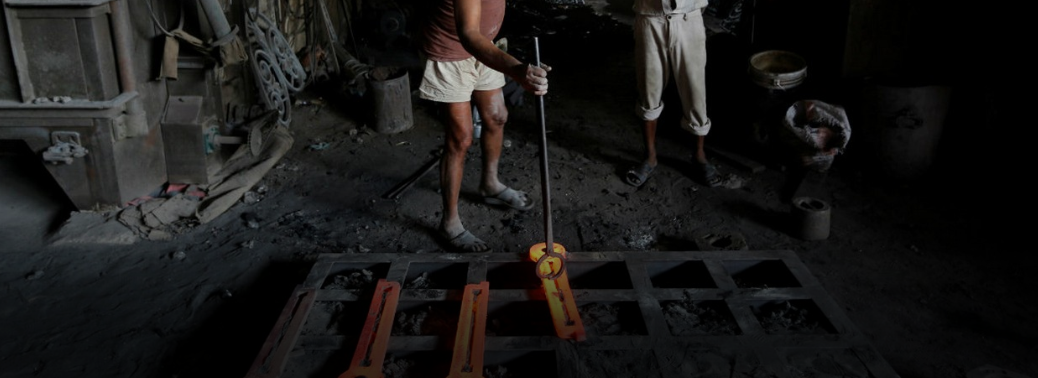
In News:
- The government has projected GDP growth for the full year 2018-19 to come in at 7.2%, which implies that growth in the second half of the year would slow significantly to 6.8% from the 7.6% clocked in the first half of the year, according to the first advance estimates of national income for 2018-19 released by the Ministry of Statistics.
Explained:
- The Indian economy is estimated to grow at 7.2 per cent in financial year 2018-19, the fastest in three years, primarily on the back of higher industrial growth, with growth estimated to improve for manufacturing and construction sectors, the first advance estimates released by Central Statistics Office (CSO)
- This growth estimate for the entire year is slower than the Reserve Bank of India’s forecast of 7.4%
- Five out of eight sectors are estimated to record a higher growth in 2018-19 compared with previous financial year. GVA growth for manufacturing sector is estimated to rise to 8.3 per cent in 2018-19 from 5.7 per cent in 2017-18, while that for construction sector is estimated at 8.9 per cent, sharply up from 5.7 per cent in previous financial year.
- There is an indication of a slowdown in the second half, but not for such a slowdown. Some of the slowdown seems to be in the services sector, particularly in those sectors with a larger weight such as transport and communications, and financial services. Otherwise, there doesn’t seem to be a reason for the slowdown. A growth rate of 7-7.2% for the second half might have been more realistic
- The advance estimate says that the growth in the agriculture sector would be 3.8% in 2018-19, faster than the 3.4% in the previous year. The manufacturing sector is estimated to grow at 8.3% in 2018-19 compared with 5.7% in 2017-18.
GST can boost direct, Indirect Tax Collections
07, Jan 2019
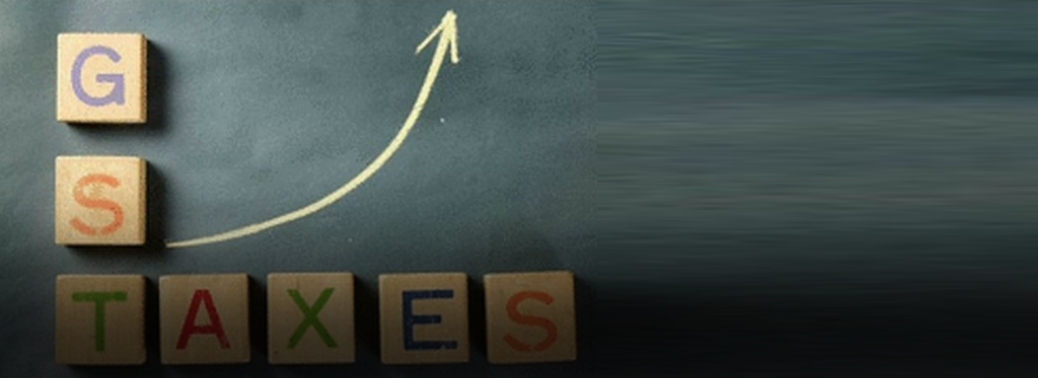
In News:
- The fact that the government is increasingly dependent on tax revenue, especially indirect taxes, to meet its fiscal requirements is not a cause for worry, according to tax analysts, who say that the real benefits of the Goods and Services Tax (GST) have not yet taken effect.
- Once they do, government revenue from both direct and indirect taxes will grow significantly.
Explained:
- An analysis of the budget documents of the last five years has shown that the government’s dependence on tax revenue has steadily increased, with tax revenue making up a little more than 70% of its total receipts in 2018-19, up from 65% in 2014-15.
- Correspondingly, the share of revenue from non-tax sources (such as dividends from PSUs and the RBI) and capital receipts (such as disinvestment proceeds) has been declining. Within tax revenue, the analysis shows that the share of indirect tax has been growing over the years, increasing to nearly 50% in 2018-19 from a little less than 45% in 2014-15.
- This increased dependence on tax revenue to meet its fiscal needs has meant that the government has had to push quite hard to increase its tax base at both the direct and indirect tax levels.
- The view among tax analysts is that the government cannot take the risk of increasing tax rates, whether direct or indirect, for fear of a backlash from the public.
- So, the only option it has to boost tax revenues is to increase the tax base and stop evasion, both of which the government has been trying to do with measures like e-way bill, uniform taxation, analysing the business-wise monthly GST payments and ascertaining trends in State-wise movement of goods using the e-waybill data, operation clean money.
- The other trend the government would be banking on is that increased economic activity and a higher GDP growth rate will boost consumption and hence, indirect tax collections
- The indirect tax rate is fixed, so if there is price inflation, then the government receives a tax on that as well because product prices go up and so the tax component also goes up
- The second aspect is that when the GDP grows, consumption also grows, and so you get more indirect taxes from that.
- The worry for the government should be the fact that an increasing proportion of its indirect tax collections are coming from a single source — oil.
Non-Tax Revenue:
- The government has also been trying to improve its collections from other sources such as dividends from public sector companies and the Reserve Bank of India, and also through disinvestments.
- The analysis of budget data shows that PSU dividends as a proportion of non-tax revenue have been growing over the years, from 16% in 2014-15 to 21.4% in 2018-19. The government has reportedly been pressurizing the state-run oil companies to transfer larger dividends to the Centre every year.
- It is also reportedly asking the state-run oil companies to buy back shares, and is also pushing more PSUs to list on the stock exchanges.
- However, this is an untenable source of revenue for the government because they are based on finite resources.
- Notably, dividends from the RBI, as a proportion of non-tax revenue, have been falling.
- Non-tax revenues, if you look at the majority, they have come from auctioning spectrum licences and royalties from oil, etc., and also disinvestment.
Women’s Share in Deposits, Loans Inching UP: RBI Study
05, Jan 2019
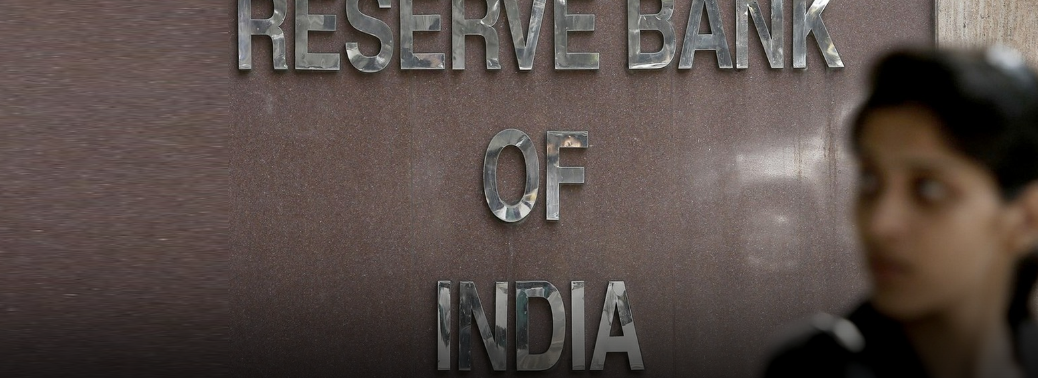
In News:
- The share of women in total credit and aggregate deposits of individuals increased further to 20.4 per cent and 32.8 per cent, respectively, in March 2018 from 19.3 per cent and 32.0 per cent a year ago, the Reserve Bank of India (RBI) has said.
Explained:
- In March 2018, there were nearly 0.20 billion loan accounts and 1.91 billion deposit accounts, of which, 0.24 billion were in term deposits,” the RBI said in data
- Metropolitan areas, which had less than 20 per cent of branches, accounted for nearly 52 per cent of total deposits and 64 per cent of bank credit
- Industrial credit growth picked up during 2017-18 after witnessing decline during the previous two years, whereas personal loans segment continued to record strong growth.
- Private sector banks recorded healthy growth in loan portfolio and their share in total bank credit improved significantly,
- The share of savings deposit in total deposits has gone up further during the year, on top of high growth during 2016-17 when demonetisation generated a sudden jump in the share of savings deposits. The share of term deposits has been declining gradually during the last five years, it Reserve Bank report said. Nearly 45 per cent of term deposits in March 2018 accrued in the original maturity bucket of ‘one year and above but less than two years. On residual maturity basis, around two-third of the total term deposits had ‘less than 1-year’ maturity, the report further said.
- According to the central bank, credit-deposit (C-D) ratio improved to 76.7 per cent in March 2018 from 73.8 per cent a year ago.
- The transmission of policy rate reduction by the Reserve Bank was reflected in further lowering of banks’ cost of funds and lending rates
SEBI Tweaks norms for commodity exchanges
05, Jan 2019

In News:
- Commodity derivatives exchanges will now have to disclose the quantum of trading done by farmers and other commodity market participants like millers and wholesalers on the exchange platform, as the capital market regulator has tweaked the disclosure norms.
Explained:
- Securities and Exchange Board of India (SEBI) directed commodity bourses to disclose the open interest and turnover of various categories of participants like farmers, farmers producer organisations (FPOs), value chain participants, proprietary traders, foreign participants, and domestic financial institutional investors.
- Value chain participants include processors, commercial users like dal and flour millers, importers, exporters, physical market traders, stockists, cash and carry participants, produces and wholesalers among others. Currently, commodity derivatives exchanges disseminate turnover data for only two broad categories of participants — clients and proprietary.
- Incidentally, the SEBI move assumes significance also because a large section of market players believe that the commodity market turnover is largely dominated by speculators and other participants that are not genuinely connected with the commodity segment.
Significance of The Move:
- It will bring transparency in the market
- It helps in bringing the correct value of profitability of companies thereby reducing the tax evasion
- It reduces the market distortion caused by the middlemen and helps in realizing effective price
What is commodity market?
- A commodity market is a place where one can buy, sell or trade various commodities at current or future date.
- Commodities trading can be done by using futures contracts. A futures contract is simply an agreement between the buyer and seller to buy or sell a commodity at a particular price on a stipulated future date.
- Most of the commodity markets across the world trade in commodities such as wheat, barley, sugar, maize, cotton, cocoa, coffee, milk products, pork bellies, oil, metals, etc. Commodities exchanges usually trade futures contracts on commodities.
The commodity exchanges in India includes:
- National Spot Exchange Limited (NSEL)
- Indian Commodity Exchange Limited (ICEX)
- Multi Commodity Exchange (MCX)
- National Commodity and Derivatives Exchange Limited (NCDEX)
Rising GDP not enough to counter sharp rise in CAD
05, Jan 2019

In News:
- A Reserve Bank of India study has warned that a crude oil price shock will lead to surge in inflation or fiscal deficit or both, depending on how much of the increased prices the fiscal authority decides to pass-through.
Explained:
- According to the RBI’s Mint Street Memo on ‘The impact of crude price shock on India’s current account deficit, inflation and fiscal deficit’, India will remain vulnerable to such shocks due to its high oil import dependence.
- This vulnerability can lead to episodes of sharp increase in current account deficit (CAD) and rising GDP growth would be insufficient to counter it,
- If a crude price shock hits the Indian economy, the CAD to GDP ratio will rise sharply irrespective of a higher GDP growth, and a $10 per barrel increase in oil price will raise the inflation by roughly 49 basis points or increase the fiscal deficit by 43 bps (as a percentage of GDP) if the government decides to absorb the entire oil price shock rather than passing it to the end users
- According to RBI study, every 100 bps increase in petrol price leads to 2.6 bps increase in core CPI index. “Since a $ 10 per barrel increase roughly translates to 1000 bps increase in pump prices (at crude price $65), it could increase core inflation by 26 bps and overall CPI inflation by 12.5 bps (core is 47 percentage of total CPI)
- The impact of an increase in crude prices on fiscal deficit would depend on several factors that include pass-through of international prices to pump prices, excise and custom duty and petroleum subsidy (budgeted around 0.14 of GDP for FY-19)
- So far, the present government has passed on the increase in international crude prices to domestic pump prices. However, going forward, if the government decides to absorb a part of the same, it could have an impact on the budget deficit,
High and low period for Government:
- The tax revenue collection of the governments could get a push due to the petrol price increase as the ad-valorem tax component is likely to increase revenue collection and vice-versa. And petroleum and its products is yet to be brought into the GST net
- The contribution of the petroleum sector to the exchequer went up from Rs 3.34 billion in FY-15 to Rs 5.53 billion in FY-18, at a time when the global crude prices moved south and touched record lows.
- This came primarily from an increase in central excise as global crude prices cooled down in 2014. The revenue of state governments from oil products also went up during this time, but only moderately. The international crude prices increased by around 12 per cent between April and September 2018. The mid-year spike in crude prices happened mainly due to spurt in demand, on the back of global growth revival, and partly due to geopolitical risks that led to supply-side shocks. This increase in crude prices was a big concern for all oil-importing countries, as their terms of trade showed signs of deterioration after a favourable stint since 2014.
Printing of ₹2,000 notes reduced to minimum
04, Jan 2019

In News:
- The printing of Rs. 2,000 banknotes, introduced post-demonetization in November 2016, has been reduced to the “minimum” by the Reserve Bank.
Explained:
- Soon after the shock decision to ban old Rs. 500 and 1,000 currency notes by the government, the Reserve Bank had come out with the Rs. 2,000 currency note along with a new look Rs. 500 notes as part of its massive remonetization exercise.
- When the Rs. 2,000 notes were launched, it was decided that the printing would be “scaled down” going forward, since the new high-currency value note was meant for meeting the remonetisation need.
- “The printing of 2,000-rupee notes has been substantially reduced. It has been decided to limit the printing of 2000 currency notes to minimum.
- According to the RBI data, there were 3,285 million pieces of Rs. 2,000 notes in circulation at end-March 2017. A year after (on March 31, 2018), there was only a marginal increase in the number at 3,363 million pieces.
- Of the total currency in circulation amounting to Rs. 18,03,700 crores at end-March 2018, Rs. 2,000 notes accounted for 37.3 per cent, down from 50.2 per cent at end-March 2017. The old 500- and 1,000-rupee bank notes that were scrapped in November 2016 accounted for around 86 per cent of the total currency in circulation at that time.
Background:
- Before 1934, the government of India had the responsibility of printing money. However, RBI was granted its role in currency management on the basis of the Reserve Bank of India Act in 1934. Specifically, Section 22 of the RBI Act gives the bank the authority to issue currency notes.
- Although the RBI has the power to print Indian currency, the government still has the final say on a majority of the Reserve Bank’s actions. For example, the government decides which denominations are printed and the design of the bank notes, including the security features. The Reserve Bank has the right to print currency up to 10,000-rupee notes.
- However, if the Reserve Bank wanted to print anything higher, the government would need to amend the Reserve Bank of India Act.
- In addition, when the Reserve Bank estimates the demand for bank notes each year, it must file a written request that government officials must sign off on before printing. When making these final decisions, government officials rely heavily on advice from the Reserve Bank senior staff.
House Panel recommends to ease capital requirements for banks
04, Jan 2019

In News:
- A parliamentary panel asked the central bank to ease its rules on capital requirements for banks so that they can increase lending.
Explained:
- In a hard-hitting report, a parliamentary panel has asked the Reserve Bank to ease capital adequacy norms for banks, review supervisory framework PCA, and urged the government to set up a committee to look into issues concerning accountability of the central bank as a regulator.
- With regards to spurt in frauds in banking system, the panel asked the RBI to look into and review the role and effectiveness of various types of audit conducted in banks and its inability so far to mitigate incidence of frauds in banks.
- The report comes after the government and some of the board members of the RBI have put pressure on the central bank to relax capital requirements for banks as they seek to boost credit and economic growth.
- Former RBI governor Urjit Patel, who quit last month, opposed the government’s demand for lowering capital requirements and warned about the need for a cushion to offset unexpected risks. Any relaxation could prove detrimental to banks and their ability to absorb unexpected losses. Indian banks are required to maintain a minimum capital to risk weighted asset ratio (CRAR) at 9%, against the global Basel-III requirement of 8%. On top of that, they have to keep a capital conservation buffer that is supposed to climb to 2.5% by March 2019.
- Questioning the RBI’s decision to keep capital adequacy norms higher than prescribed under global framework of Basel III, the lawmakers said the central bank has restricted lending capacity of banks and increased the burden on the government for recapitalisation of PSBs. The parliamentary panel said the stipulated additional capital requirement for these nine banks (who are already under RBI’s PCA framework with lending restrictions),if the norms are relaxed it would provide additional capital requirements and could release about ₹34 trillion ($76 billion) into the economy by releasing capital for lending. On Friday, the RBI, in a report, opposed the call to relax current risk weighting rules used to calculate capital requirements, saying they fortified banks against the risk of failure. However, it did announce its intention to review capital regulations.
- The committee also desired that RBI as regulator should consider separate treatment of NPAs due to wilful defaulters and those where defaults are because of extraneous reasons such as cancellation of coal blocks and policy interventions by the judiciary and general policy changes in various sectors such as coal, power, steel, telecom, roads.
Merchant Exporters to get Interest Equalisation Scheme
03, Jan 2019
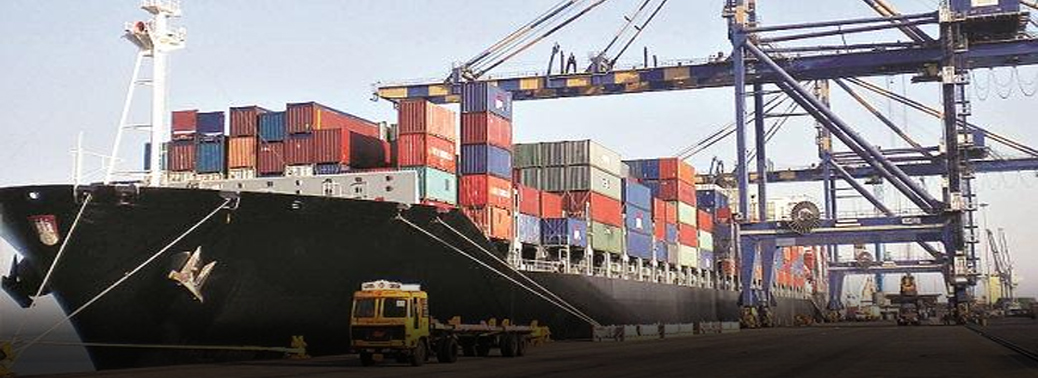
In News:
- The government has decided to provide 3% interest subsidy to merchant exporters to enhance flow of funds for them with a view to boosting outbound shipments.
Explained:
- The decision was taken by the Cabinet Committee on Economic Affairs.
- “The proposal will entail benefits of around Rs. 600 crores to exporters on interest equalization for the remaining period of the scheme
- These products are largely in MSME/labour-intensive sectors such as agriculture, textiles, leather, handicraft and machinery.
- The proposal will entail benefits of around Rs 600 crore to exporters on interest equalisation, for the remaining period of the scheme, set to end in April 2020.
- The IES allows small and medium exporters in labour-intensive sectors to avail of loans from banks at a lower rate of 3 per cent.
Interest Equalisation Scheme:
- The Cabinet Committee on Economic Affairs, has given its approval for Interest Equalization Scheme (earlier called Interest Subvention Scheme) on Pre-& Post Shipment Rupee Export Credit with effect from 1st April, 2015 for five years. The scheme will be evaluated after three years.
- Originally announced as a measure to boost exports for five years, the IES on pre- and post-shipment rupee export credit was revived in 2015 at a rate of 3 per cent for 416 specific goods categories (four-digit tariff).
- The sectors covered are mostly labour-intensive and include agriculture or food items, auto components, handicraft, electrical engineering items, and telecom equipment. The scheme is, however, not available for merchant exporters. The last Budget had allocated Rs 2,500 crore for the IES.
The following are the features of the Interest Equalization Scheme:
- The rate of interest equalisation would be 3 percent. The scheme would be available to all exports of MSME and 416 tariff lines. Scheme would not be available to merchant exporters earlier which is now modified to allow them to boost the exports
- The duration of the scheme would be five years with effect from 1.4.2015.
- The scheme would be funded from the funds available with Department of Commerce under non-plan during 2015-16 and the restructured scheme would be funded from plan side from 2016-17 onwards.
- Ministry of Commerce & Industry may place funds in advance with RBI for requirement of one month and reimbursement can be made on a monthly basis through a revolving fund system.
- On completion of three years of operation of the scheme, Department of Commerce may initiate a study on impact of the scheme on export promotion and its further continuation. The study may be done through one of the IIMs.
Significance of This Move:
- Merchant exporters also play a pivotal role in exports of MSME manufacturers as they export a significant quantity of products through merchant exporters
- Merchant exporters play an important role in finding overseas markets, getting export orders, communicating to MSME manufacturers the current preferences, trends and demand for products in international export markets.
- The benefit will push manufacturing in micro, small and medium enterprises (MSMEs), creating job opportunities as well
- Merchant exporters account for over 35 per cent of the country’s exports.
- The high cost of credit equally impacts their competitiveness as they factor in the high interest costs in their export costing.
RBI ‘EYES’ Solution to read Denominations
03, Jan 2019
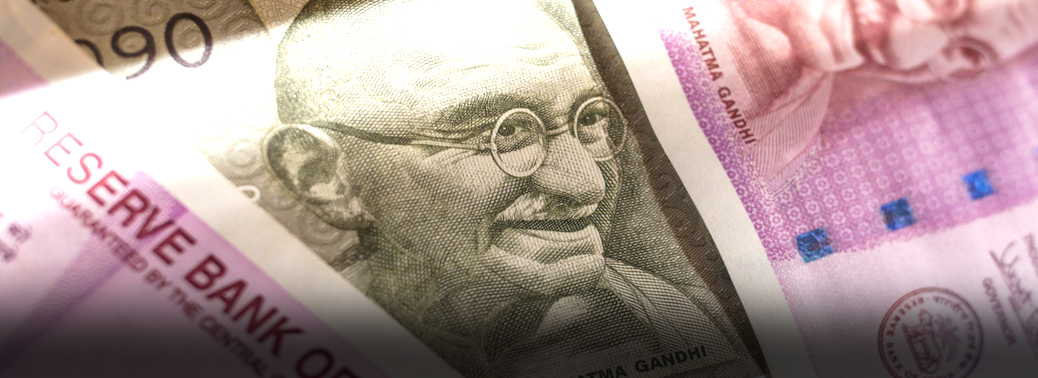
In News:
- In a bid to help the visually challenged, the Reserve Bank of India (RBI) is scouting for a digital solution that can identify and read out the denomination of Indian currency notes to users.
Background:
- Coming in the backdrop of issuance of new currency notes, the plan is aimed at developing or authenticating a technology-based solution to achieve the task in a few seconds,
- The solution could be a device, software or a combination of both, to help not just the visually challenged, but also those who cannot read in poor lighting
- Following up on an announcement in June, the RBI recently called for an expression of interest (EoI) from entities for a mechanism or device that can detect and read out the denomination. The reason behind the RBI scouting for such solutions is because of the blurring of physical dimensions of the notes that thus far served as the main differentiator. In other words, unlike in the past, the size of the note need not be indicative of denomination. There are also certain Intaglio (raised) printing-based identification marks in currency notes of Rs. 100 and above. The RBI is sensitive to the challenges faced by visually challenged in conducting their day-to-day business with Indian banknotes.
- Noting that technological progress had opened up new vistas for making banknotes more recognisable for the visually challenged, the bank had announced its decision to explore the feasibility of developing a suitable device or mechanism for aiding them in the identification.
Foreign Experiences in Blind Friendly Denomination:
- The Australian dollar tackles the accessibility issue in a very simple method, by making larger denominations not simply larger, but longer. They also have strong colors and contrasts for the visually impaired
- The Euro banknotes were designed with heavy input from Blind organizations and have a very simple distinguishing feature: big bills are big; little bills are little. The notes have some intaglio printing, which gives them relief marks that can be felt. The €200 and €500 bills have special tactile marks on them as well, for added security and assuredness when dealing with such large amounts. Canada is the only other major currency other than the U.S. with banknotes that are all the same size. But our northern neighbors have built in tactile marks at the top right of bills. Like most other currencies, different denominations are colored differently to aid the visually impaired too.
- Japan uses special intaglio-printed tactile marks and each bill is a different size.
- Switzerland may not have joined the EU or the Eurozone, but its currency has a lot in common with the Euro with its different colors and sizes for its Francs. However, the Swiss go one stop further, adding intaglio marks and a perforated number that you can feel.
RBI Unveils Loan Recast Scheme for Small Units
02, Jan 2019
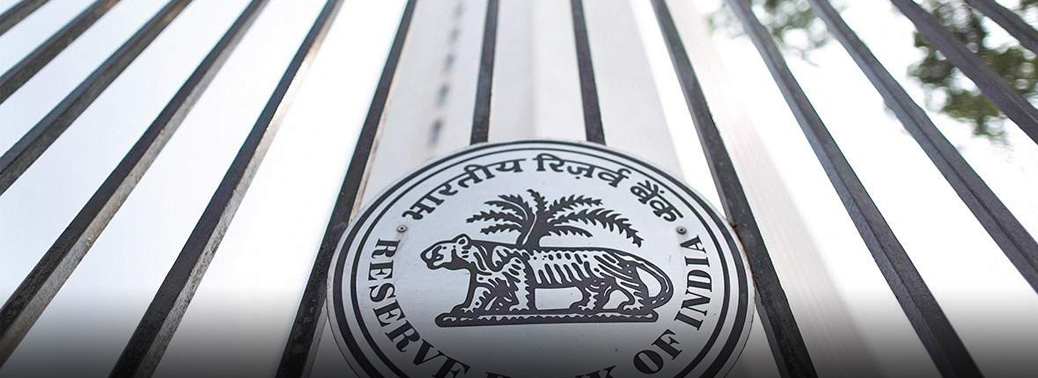
In News:
- The Reserve Bank of India (RBI) announced a one-time restructuring scheme for stressed loan accounts of micro, small and medium enterprises (MSMEs), one of the key demands of the government for the past two months.
Explained:
- The RBI said the aggregate exposure, including non-fund-based facilities of banks and non-bank entities, to a small borrower should not exceed Rs 25 crore as on January 1, 2019. The restructuring has to be implemented by March 31, 2020.
- A provision of 5 per cent in addition to the provisions already held, should be made in respect of accounts restructured under this scheme,
- The issue of restructuring of MSME accounts was discussed in the meeting of the Central Board of RBI on November 19, 2018. The matter was also discussed during RBI’s recent interactions with the banks and other stakeholders.
- The RBI was initially reluctant to sanction such forbearance but relented in the wake of pressure from several board members who pushed for the bail-out small borrowers hit by demonetization and implementation of GST.
- The RBI was initially reluctant to sanction such forbearance but relented in the wake of pressure from several board members who pushed for the bail-out small borrowers hit by demonetization and implementation of GST.
- The borrowing entity is GST-registered on the date of implementation of the restructuring. However, this condition will not apply to MSMEs that are exempt from GST-registration
- The central bank said banks and NBFCs desirous of adopting this scheme should put in place a Board-approved policy on restructuring of MSME advances within a month. The policy should include framework for viability assessment of the stressed accounts and regular monitoring of the restructured accounts, the RBI said.
- The RBI said accounts classified as non-performing asset (NPA) can be restructured, but the extant asset classification norms governing restructuring of NPAs will continue to apply. However, as a general rule, barring the above one-time exception, any MSME account which is restructured must be downgraded to NPA upon restructuring and will slip into progressively lower asset classification and higher provisioning requirements as
per the current norms. - Such an account may be considered for up gradation to ‘standard’ only if it demonstrates satisfactory performance during the specified period
- Satisfactory performance means no payment (interest and/or principal) should remain overdue for a period of more than 30 days.
RBI Reserves Ratio Among the Highest
01, Jan 2019

In News:
- Analysis of the balance sheets of the central banks of 10 comparable economies shows that the RBI’s reserves as a percentage of its balance sheet is among the highest, a report by consultancy firm found.
Explained:
- The analysis, which looked at the central banks of the BRICS countries, Fragile Five nations and three developed economies, found that the RBI’s reserves which a separate analysis show was about Rs. 10.5 lakh crore form 26.2% its balance sheet. Only two central banks those of South Africa and Russia have a reserve ratio higher than the RBI
- The other two BRICS nations, China and Brazil, have reserve ratios of 1.7% and 0.2%, respectively. But the bulk of those reserves are arising out of the revaluation of its assets, i.e over the years as the rupee depreciated against the U.S. dollar, Great Britain Pound, euro etc, gold and foreign assets held by the RBI when translated into the current rupee value, leads to an increase in its asset value.”

Why does a Central Bank need Capital?
There are five main reasons for a central bank to hold capital.

- First, central banks that have foreign assets need capital to absorb potential losses. The RBI’s foreign assets are worth Rs 26.4 lakh crore, up from 23.7 lakh crore in FY17.
- Second, the RBI needs capital to shield the economy from monetary and financial shocks.
- Third, in case of unstable governments, monetary authorities carry a bigger burden. A Central bank would need more capital in such a situation.
- Fourth, a central bank needs reserves to perform functions such as price and exchange stability.
- Fifth, reserves give independence to a central bank. Low capital will force central bank to turn to government in time of need. This will give government influence over the central bank.
Core sector growth slows to 16-month low in November
01, Jan 2019

In News:
- Core sector growth slowed to 3.5% in November, the slowest in 16 months, from 4.8% in October, due in large part to a slowdown in the coal, cement and electricity sectors.
Explained:
| sector | Nov 2018 | Oct 2018 |
|---|---|---|
| coal | ||
| Cement | ||
| Steel | ||
| Crude Oil | ||
| Natural gas | ||
| Refinery Products | ||
| Fertilizer | ||
| Electricity | ||
What is core sector?
- Core industry can be defined as the main industry of the economy. In most countries, there is particular industry that seems to be backbone of all other industries and it qualifies to be the core industry. In India, there are eight core sectors comprising of coal, crude oil, natural gas, refinery products, fertilizers, steel, cement and electricity. The electricity has the maximum weight of 10.32% followed by Steel (6.68%), Petroleum Refinery (5.94%), Crude Oil production (5.22 %), Coal production (4.38 %), Cement (2.41%), Natural Gas production (1.71 %) and Fertilizer production (1.25%). These eight Core Industries comprise nearly 40% of weight of items included in Index of Industrial Production (IIP), which measures factory output.
- The Eight Core Industries comprise 40.27 per cent of the weight of items included in the Index of Industrial Production (IIP) and released by DIPP (min of commerce and industries).
Gender pay gap will take 202 years to close: report
20, Dec 2018

Context:
- The World Economic Forum has mentioned that it could take 202 years for women to earn as much as men.
Details:
- This is due to huge gender pay gap and slow change taken by all the stakeholders to bridge the gap.
- The annual report from WEF found that women on average make 63% of what men earn.
- According to the report, there was not a single country out of the 149 assessed where women on an average made more or as much as men.
- In 2017, the WEF estimated that it would take 217 years to close the pay gap.
- According to the report, Laos, in southeast Asia, was the closest to achieving parity with women earning 91% of what men were paid.
- Yemen, Syria and Iraq had the biggest pay gaps, with women being paid less than 30% the level of men’s wages
- The U.K. has been ranked at 50th out of the 149 countries, with women collecting 70% of that paid to men
- The report also mentioned that it was only 34% of global managers are women and they also encounter significant obstacles in taking on managerial or senoir official roles
- The report provided insights on women in politics and said that it would take 107 years to fill the gender gap in politics
- Across the 149 countries assessed, there are just 17 that currently have women as heads of state, while, on average, just 18% of Ministers and 24% of parliamentarians globally are women
Important Facts:
- India ranked 108th in World Economic Forum (WEF) Gender Gap Index 2018, same as 2017.
- India fell 21 places on the World Economic Forum’s Global Gender Gap index to 108 which is far below the global average and much behind its neighbors China and Bangladesh.
About the Global Gender Gap:
- Introduced by the World Economic Forum to examine four critical areas of inequality between men and women:
- Economic participation and opportunity – outcomes on salaries, participation levels and access to high-skilled employment
- Educational attainment – outcomes on access to basic and higher-level education
- Political empowerment – outcomes on representation in decision-making structures
- Health and survival – outcomes on life expectancy and sex ratio.
- In addition, this year’s edition studies skills gender gaps related to Artificial Intelligence (AI).
About World Economic Forum:
- The World Economic Forum is the International Organization for Public-Private Cooperation.
- It was established in 1971 as a not-for-profit foundation and is headquartered in Geneva, Switzerland. It is independent, impartial and not tied to any special interests.
- The Forum strives in all its efforts to demonstrate entrepreneurship in the global public interest while upholding the highest standards of governance.
- The Forum engages the foremost political, business and other leaders of society to shape global, regional and industry agendas.
- It is committed to improve state of world by engaging business, political, academic, and other leaders of society to shape global, regional, and industry agendas.
- The WEF meeting brings together some international political leaders, 2,500 top business leaders, selected intellectuals, and journalists to discuss the most pressing issues facing the world.
RBI scales up liquidity infusion
19, Dec 2018

In news:
The Reserve Bank had decided to scale up the amount of liquidity infusion by ₹ 10,000 crore to ₹50,000 crore this month, after a review of the evolving liquidity conditions
- Liquidity in the banking system has been under pressure, particularly since October, and the deficit is estimated at around Rs 1 lakh crore.
- The central bank had earlier announced to infuse liquidity amounting to ₹40,000 crore through the purchase of government securities under Open Market Operations (OMOs) during December.
- While the RBI had earlier announced plans to inject Rs 40,000 crore through OMOs this month, the shortfall has continued due to advance ta
x outflows. The central bank said on a review of the evolving liquidity conditions; - However, the central bank has infused durable liquidity of Rs 36,000 crore in October and Rs 50,000 crore in the following month through OMOs or the purchase of government securities. The RBI disclosed in the fifth bi-monthly monetary policy earlier this month that so far during this fiscal, it has injected total durable liquidity of Rs 1.36 trillion
- It has been decided to scale up the amounts to be purchased in the remaining two OMO auctions (it has already conducted two) to Rs 15,000 crore each from Rs 10,000 crore. Consequently, the total injection of durable liquidity for December will be Rs 50,000 crore.
- “The RBI went on to add that based on an assessment of the durable liquidity needs, it has decided to conduct purchase of government securities under OMOs for Rs 50,000 crore in January 2019. This operation will be conducted through five auctions of Rs 10,000 crore each.
- The RBI has already injected Rs 20,000 crore through two OMO purchase auctions.
- It further said the exact calibration of the quantum of OMO would depend on sustained changes in the behavior of currency in circulation, the magnitude of sterilization operations for RBI’s forex operationsand other relevant factors
Open market operations (OMO):
What is it?
- Open market operations are conducted by the RBI by way of sale or purchase of government securities (g-secs) to adjust money supply conditions. The central bank sells g-secs to suck out liquidity from the system and buys back g-secs to infuse liquidity into the system.
- These operations are often conducted on a day-to-day basis in a manner that balances inflation while helping banks continue to lend.
- The RBI uses OMO along with other monetary policy tools such as repo rate, cash reserve ratio and statutory liquidity ratio to adjust the quantum and price of money in the system.
What its Significance?
- In India, liquidity conditions usually tighten during the second half of the financial year (mid-October onwards).
- This happens because the pace of government expenditure usually slows down, even as the onset of the festival season leads to a seasonal spike in currency demand. Moreover, activities of foreign institutional investors, advance tax payments, etc. also cause an ebb and flow of liquidity.
- However, the RBI smoothens the availability of money through the year to make sure that liquidity conditions don’t impact the ideal level of
interest rates it would like to maintain in the economy. - Liquidity management is also essential so that banks and their borrowers don’t face a cash crunch. The RBI buys g-secs if it thinks systemic liquidity needs a boost and offloads them if it wants to mop up excess money. The central bank’s signal that it will move to a
‘neutral’ liquidity stance from a ‘deficit’ stance, hints at more liquidity in the system in future. This could arm banks with more funds for lending, and lead to softer interest rates in the economy. This is good news for both businesses as well as individuals. - However, large open market purchases by the RBI can give the government a helping
hand in its borrowing programme and are frowned upon for this reason. In April 2006, the RBI was barred from subscribing to primary bond issues of the government. - This was done to put an end to the monetisation of debt by the Reserve Bank. However, that didn’t stop the process.
- With rising fiscal deficit, the RBI has been criticized for accommodating larger government debt by way of OMO.
LPG scheme to cover poor people
18, Dec 2018

Context:
- The Union Cabinet on Monday approved the expansion of the Pradhan Mantri Ujjwala Yojana, which aims to provide deposit-free LPG connections to all poor households.
Details:
- Earlier, the scheme has targeted the poor and underprivileged based on the Socio-Economic and Caste Census, 2011.
- Following this decision by the Union Cabinet, poor people will be able to opt for the scheme even if they so far were not eligible, after furnishing the required identification documents
- The scheme has reached to provide LPG connections to six crore people by 2018.
About Pradhan Mantri Ujjwala Yojna
- Pradhan Mantri Ujjwala Yojna is a scheme of the Ministry of Petroleum & Natural Gas for providing LPG connections to women from Below Poverty Line (BPL) households.
- It aims to replace unclean cooking fuels used in the most underprivileged households with clean and more efficient LPG (Liquefied Petroleum Gas)
- Families below the poverty line are to be provided with LPG connections with a support of Rs. 1,600 per connection.
- Oil Marketing Companies would provide an option for the new consumer to opt for loan to cover the cost of a cooking stove and first refill.
- The LPG connections will be issued in the name of the women of the households.
- Initially the target was installation of 5 crore new LPG connections by 2019
- Target revised to 8 crore- to be achieved by 2019-20
- LPG Panchayats:
- LPG Panchayat serves as platform for interaction between those who received LPG cylinders under PMUY.
- It aims to raise awareness among LPG users about proper use of clean fuel and its advantages
Beneficiaries:
- BPL households identified through Socio-Economic Caste Census data
- All SC/STs households beneficiaries of Pradhan Mantri Awas Yojana(PMAY) (Gramin)
- Beneficiaries of Antyoday Anna Yojana (AAY)
- Forest dwellers
- Most Backward Classes (MBC)
- Tea & Ex-Tea Garden Tribes
- People residing in Islands
- People residing in river island
- Now, it has been extended to all poor households
Anti-dumping duty imposed on Chinese chemical for 5 years
17, Dec 2018

In News:
- The revenue department of government of India has imposed anti-dumping duty for five years on a Chinese chemical used in making detergents to guard domestic players from cheap imports from the neighbouring country.
Explained:
- The levy on ‘Zeolite 4A’ [Detergent grade] has been imposed on recommendations of Directorate General of Trade Remedies (DGTR) after conducting a probe in this regard.
- The duty in the range of USD 163.90-207.72 per tonne of the chemical will remain in force for five years (unless revoked, superseded or amended earlier), said the Central Board of Indirect Taxes and Customs (CBIC) in a notification.
- DGTR, the investigation arm of the commerce ministry, had conducted the probe on complaint
- Countries carry out an anti-dumping probe to determine whether their domestic industries have been hurt because of a surge in below-cost imports. As a countermeasure, they impose duties under themultilateral regime of WTO.
- The duty is also aimed at ensuring fair trading practices and creating a level playing field for domestic producers with regard to foreign producers and exporters.
- India has already imposed anti-dumping duty on several products to check cheap imports from countries including China with which India has a major concern of widening trade deficit.
- The deficit has increased to USD 63.12 billion in 2017-18 from USD 51.11 billion in the previous fiscal.
What is Anti-Dumping Duty?
- An anti-dumping duty is a protectionist tariff that a domestic government imposes on foreign imports that it believes are priced below fair market value.
- Dumping is a process where a company exports a product at a price lower than the price it normally charges in its own home market.
- To protect local businesses and markets, many countries impose stiff duties on products they believe are being dumped in their national market
WTO:
- The WTO began life on 1 January 1995, but its trading system is half a century older. Since 1948, the General Agreement on Tariffs and Trade (GATT) had provided the rules for the system.
- The last and largest GATT round, was the Uruguay Round which lasted from 1986 to 1994 and led to the WTO’s creation. Whereas GATT had mainly dealt with trade in goods, the WTO and its agreements now cover trade in services, and in traded inventions, creations and designs (intellectual property).
Principles of the WTO trading system:
MOST-FAVOURED-NATION (MFN) PRINCIPLE: TREATING FOREIGNERS EQUALLY:
- Under the WTO Agreements, a country should not discriminate between its trading parties. According to the MFN principle, any advantage, favour, privilege or immunity granted by a Member to any product originating in or destined for any other country shall be accorded immediately and unconditionally to the like product of all Members. The MFN principle is one of the cornerstones of the WTO.
NATIONAL TREATMENT PRINCIPLE: TREATING FOREIGNERS AND LOCALS EQUALLY:
- Within national territory, WTO Members cannot favour domestic products over imported products
- The principle of national treatment also applies, with some differences, to trade in services (Article XVII of the GATS) and intellectual property protection (Article 3 of the TRIPS Agreement).
GENERAL PROHIBITION OF QUANTITATIVE RESTRICTIONS (QRS):
- WTO Members cannot prohibit, restrict or limit the quantity of products authorized for importation or exportation (Article XI of the GATT 1994), subject to limited exceptions.
OBSERVANCE OF BINDING LEVELS OF TARIFF CONCESSIONS (GOODS) AND OF SPECIFIC COMMITMENTS (SERVICES):
- Minimum market access conditions are guaranteed by commitments undertaken by Members regarding customs duties (tariff concessions for goods – Article II of the GATT 1994) and market access for the supply of services (specific commitments – Article XVI of the GATS)
TRANSPARENCY:
- It is fundamentally important that regulations and policies are transparent.WTO Members are required to inform the WTO and fellow-Members of specific measures, policies or laws through regular “notifications”.
- In addition, the WTO conducts periodic reviews of individual Members’ trade policies through the Trade Policy Review Mechanism (TPRM).
RBI’S Forex Reserves Marginally up to $393.734 Billion
15, Dec 2018
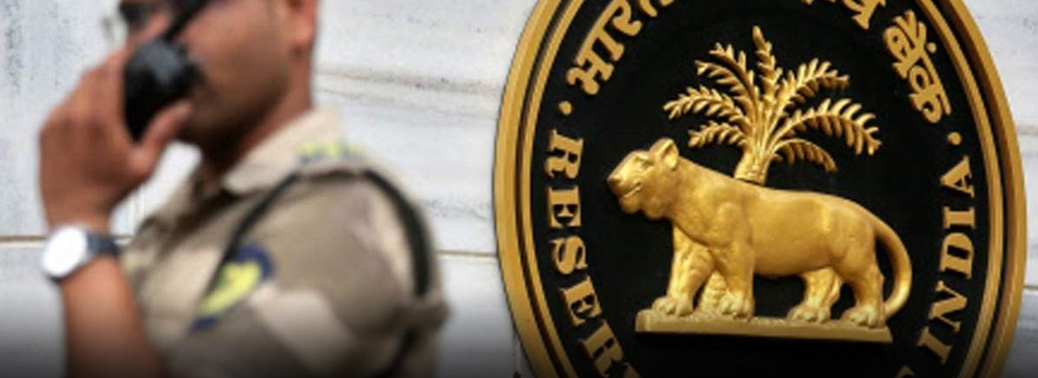
In News:
- India’s foreign exchange (forex) reserves marginally rose by $6 million during the week ended December 7
- According to the Reserve Bank of India (RBI)’s weekly statistical supplement, the overall forex reserves increased to $393.73 billion from $393.71 billion
Explained:
- India’s forex reserves comprise foreign currency assets (FCAs), gold reserves, special drawing rights (SDRs) and India’s position with the International Monetary Fund (IMF).
- Expressed in US dollars, foreign currency assets include the effect of appreciation or depreciation of non-US currencies such as the euro, pound and yen held in the reserves.
- The special drawing rights with the International Monetary Fund (IMF) increased by USD 2.5 million to USD 1.457 billion.
- Forex reserves had touched a record high of $426.028 billion in the week to 13 April 2018. Since then, the forex kitty has been on a slide and is now down by over $31 billion.
Forex Reserves:
- In India, Foreign Exchange Reserves are the foreign assets held or controlled by the country central bank. The reserves are made of gold or a specific currency.
- They can also be special drawing rights and marketable securities denominated in foreign currencies like treasury bills, government bonds, corporate bonds and equities and foreign currency loans.
- Foreign exchange reserves act as the first line of defense for India in case of economic slowdown, but acquisition of reserves has its own costs.
- Foreign exchange reserves facilitate external trade and payment and promote orderly development and maintenance of foreign exchange market in India
- Reserve bank of India Act, 1934 and the Foreign Exchange Management Act, 1999 set the legal provisions for governing the foreign exchange reserves. Reserve Bank of India accumulates foreign currency reserves by purchasing from authorized dealers in open market operations. Foreign exchange reserves of India act as a cushion against rupee volatility once global interest rates start rising.
The Foreign exchange reserves of India consists of below four categories - Foreign Currency Assets
- Gold
- Special Drawing Rights (SDRs)
- Reserve Tranche Position
Why Hold Forex Reserves?
Technically, it is possible to consider three motives for holding reserves:
- Transaction,
- Speculative and
- Precautionary motives
- International trade gives rise to currency flows, which are assumed to be handled by private banks driven by the transaction motive.
- Similarly, speculative motive is left to individual or corporates. Central bank reserves, however, are characterized primarily as a last resort stock of foreign currency for unpredictable flows, which is consistent with precautionary motive for holding foreign assets.
- Precautionary motive for holding foreign currency, like the demand for money, can be positively related to wealth and the cost of covering unplanned deficit, and negatively related to the return from alternative assets.
- Furthermore, forex reserves are instruments to maintain or manage the exchange rate, while enabling orderly absorption of international money and capital flows.
- In brief, official reserves are held for precautionary and transaction motives keeping in view the aggregate of national interests, to achieve balance between demand for and supply of foreign currencies, for intervention, and to preserve confidence in the country’s ability to carry out external transactions
- The objective of holding reserve assets would be influenced by the reconciliation of objectives of the monetary authority as the custodian and the government as principal.
- There are cases, however, when reserves are used as a convenient mechanism for government purchases of goods and services, servicing foreign currency debt of government, insurance against emergencies, and in respect of a few, as a source of income.
What are the dominant policy objectives in regard to forex reserves in India?
- Maintaining confidence in monetary and exchange rate policies.
- Enhancing capacity to intervene in forex markets.
- Limiting external vulnerability by maintaining foreign currency liquidity to absorb shocks during times of crisis including national disasters or emergencies.
- Providing confidence to the markets especially credit rating agencies that external obligations can always be met, thus reducing the overall costs at which forex resources are available to all the market participants, and
- Incidentally adding to the comfort of the market participants, by demonstrating the backing of domestic currency by external assets.
Loan Waivers to Farmers to Burden Economy
15, Dec 2018
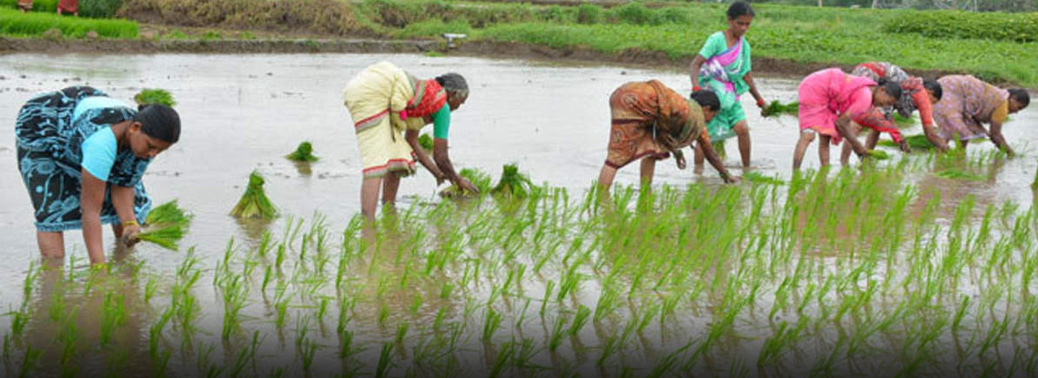
In News:
- State governments should resist giving farm loan waivers since they will create fiscal stress and not reach the farmers that need them, former RBI Governor Raghuram Rajan said
Explained:
- It often goes to the best connected rather than to the poorest. It also creates enormous problems for the fiscal of the State once the waivers are done.”
- These comments assume significance at a time when speculation is increasing about a possible farm loan waiver from the Centre similar to those given by some State governments.
- “Government imposed credit targets are often achieved by abandoning appropriate due diligence, creating the environment for future NPAs,”
- Loan waivers, as the RBI has repeatedly argued, vitiate the credit culture and stress the budgets of the waiving State or Central government. They are poorly targeted, and eventually reduce the flow of credit.
Highlights of the “An economic strategy for India” report:
- The economists reportedly noted that the non-bank financial sector needs a strong banking system as well as deep equity and bond markets, supported by liquid secondary markets and a robust regulatory and legal infrastructure.
- Stressing on the importance to maintain macroeconomic stability, the economists suggested sticking to fiscal consolidation – working to reduce the consolidated fiscal deficit to 5% and general government debt to 60% of gross domestic product – and finding ways to ensure that off-balance sheet liabilities don’t build up.
- They also suggested the formulation of a “grand bargain” between the centre and the states, giving the latter incentives to be aligned with the government’s fiscal goals – something that is almost entirely missing currently.
- Enhancing liquidity in the government debt market and making it more attractive to institutional and retail investors.
- Developing missing (or nascent) markets like fixed income derivatives to hedge the credit and interest rate risk of fixed income securities.
- Developing a liquid and deep corporate bond market through policies to encourage institutional investor participation.
Macroeconomic stability: A prerequisite to sustainable growth and job creation:
- India’s economic history is replete with the same lesson: preserving and protecting macroeconomic stability is an essential prerequisite to strong and sustained growth.
- Every time macro stability has been traded off to boost growth, the economy has been pushed towards a crisis, the consequences of which have undermined the very growth that was the initial policy focus.
Ensuring macroeconomic stability has at least three elements to it:
- Maintaining low and stable inflation,
- Ensuring the consolidated fiscal deficit leaves enough space for private investment, and
- Ensuring that the current account deficit is sustainable
- It can be financed largely through stable capital inflows, to help insulate the economy from sudden swings in global sentiment.
- High and variable inflation constitutes a regressive tax, with the poor bearing the biggest brunt, since their incomes are typically least indexed to inflation. It also dissuades foreign investors from investing in rupee assets.
- Similarly, large and unsustainable fiscal/external imbalances impart significant macroeconomic and financial market uncertainty, push up borrowing costs and risk premia in the economy and threaten financial stability. All this impedesprivate and public investment.
Agriculture & the rural economy:
- We need deep rooted transformation of agriculture, treating it not as a sector that has to be propped up through repeated sops, but as an engine of India’s job creation and growth. For that, it is imperative that we thoroughly reform agricultural and land policies. In particular, a key source of agrarian distress in recent years has been that the terms-of-trade confronting farmer has turned progressively more adverse, partly as a result of policies to combat food inflation. While low inflation is desirable in itself, the impact on farmers also needs to be taken into account. A policy priority should be to reduce distortions in farm product prices as well as input prices. Another important enabler is technology, both in educating and informing farmers, as well as in opening access to markets. Some specific proposals include
- Increase investment in research – covering new seeds including genetically modified (GM) ones, latest farming and irrigation techniques and disseminate new techniques widely, including through digital means. Invest in infrastructure such as irrigation, roads, and improved transport and storage logistics. Eschew loan waivers that divert resources from needed investment.
- Ensure that farmers receive more of what is paid by the consumer by
- Improving farmer access to domestic and international markets by reducing fees, restrictions on competition and building the necessary infrastructure.
- Foregoing frequent closing or opening of access to international markets
- Facilitate farming at scale for relevant crops
- Through the creation of farmer/producer cooperatives,
- By enabling easier long-term leasing of land, for which land titling is an important prerequisite.
- Move to a fixed cash subsidy per acre cultivated based on digitizing and identifying plots (as demonstrated successfully by the RythuBandhu Scheme of the Govt. of Telangana)
- Replace price support schemes that are costly (because of corruption and inefficiencies in procurement and storage), ineffective (because procurement is not widespread, especially when and where most needed), and distortionary (because the wrong crops are incentivized).
- Improve and expand the current Pradhan Mantri FasalBima Yojana (PMFBY), especially as the climate gets more volatile.
- Here quick assessment of crop damage using new technologies such as satellite images and drones, as well as quick payout into bank accounts, will enhance adoption.
- For landless laborers, the best short-term policy option is likely to be to strengthen the National Rural Employment Guarantee Scheme. Evidence suggests places with well-implemented NREGS schemes have significantly higher market wages – without hurting employment. Thus, increasing allocations to, and ensuring better implementation of, NREGS may be the best immediate policy option to protect the landless rural poor.
- Efficiency of NREGS spending can be increased by working with line departments to improve asset quality and create better quality rural infrastructure.
India post launches E-Com portal
15, Dec 2018
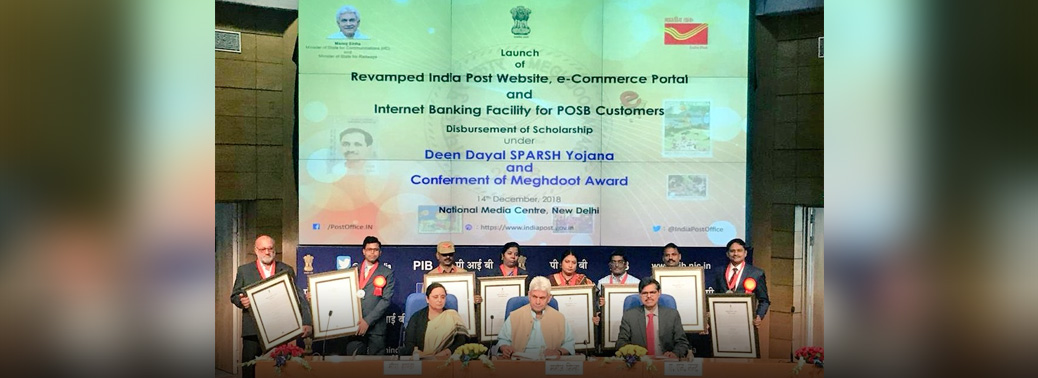
In News:
- India Post on Friday launched its own ecommerce website to help sellers, particularly rural artisans and SHGs sell their products across the country.
Explained:
- The Department of Posts has been focusing on e-commerce sector to increase its revenue receipts. The Department facilitates has collected and remitted more than Rs 2,700 crore under cash-on-delivery till January 2018 since its introduction in December 2013.
- The ongoing e-commerce business segment resulted in increase of 13 per cent revenue of India Post in the 2017-18 and total revenue the department earned under Speed Post till January 2018 was Rs 1,502.60 crore.
- India Post service will be able to pick up and deliver products in over 1.5 lakh places through its well spread out network.
- The newly launched online market place would also have the policy to return products by a customer.
- Earlier, any decision related to change in parcel delivery rates or matching services of private players required approval from top officials, which was time-consuming.
- The DoP (Department of posts) has set up parcel directorate which is free to take decision to match the competition.
- India Post is open for registration of all vendors for e-commerce business. It will pick up products from vendor and deliver to doorstep of customers
Benefits of e-Commerce:
- It helps in bridging the gap between rural India and urban India
- It also gives a major boost to the traditional handicrafts sector in the rural India
- It reduces the disguised unemployment in agriculture sector by giving employment opportunities in small scale industries in village area
- It will greatly help in popularizing the niche products like the one GI (geographical indication) tagged from remotest corner of the rural area to the world and increases the profit of the people
Bankers ASK RBI to EASE PCA Norms
14, Dec 2018

In News:
- Chief executives of public sector banks, who met the new Reserve Bank of India(RBI) Governor, requested the central bank to relax the prompt corrective action (PCA) norms on the ground that it was hurting credit off take.
Background
- Bankers highlighted the challenges they are facing to boost loan growth as there are 11 state run banks under prompt corrective action (PCA). PCA was imposed on these lenders by RBI after the banks breached the risk thresholds on net nonperforming assets, capital and return on assets.
- Bad loans in the banking system have risen sharply over the last three years, with gross NPAs crossing the ₹10 lakh crore mark. The rise in NPAs has impacted banks’ profitability and eroded their capital
- The Board of Financial Supervision (BFS) of RBI, which met in the first week of December, deliberated on the PCA issue and reviewed the performance of banks till the half year. While the government wanted the RBI to relax the PCA norms, the central bank was not in agreement with the proposal.
- The request to relax PCA norms comes at a time when growth is slowing and nonbanking financial companies (NBFCs) are constrained by lack of liquidity (aggravated by IL&FS).
- Since loans from NBFCs contribute almost 17% of the total credit off take and one third of retail credit, the crisis will hit loan growth. Since public sector banks, that have 70% of the market share have capital constraints they are unable to fill the space vacated by NBFCs.
Bone of Contention-February 12 Circular of the RBI
- The controversial February 12 circular of the RBI mandated banks to restructure loans and make higher provision even if there was a default for one day. The circular had also withdrawn all restructuring schemes that resulted in higher provision requirement for banks.
- While both the banks and the government lobbied hard for relaxation of the one-day stressed asset norms the RBI did not oblige.
- According to the February circular, norms suggest that if the principal or interest is overdue for a single day beyond 30 days, the account is identified as a special mention account-0 (SMA-0).
- With a delay of 30-60 days, it slips to the SMA-1 category. If it is overdue for more than 60 days until 90 days, it falls under the SMA-2 category.
- If repayment isn’t made for more than 90 days, the account is to be classified as a non-performing asset (NPA).
PCA Norms
- The prompt corrective action (PCA) scheme introduced by the RBI in December 2002
- The Reserve Bank has specified certain regulatory trigger points, as a part of prompt corrective action (PCA) Framework, in terms of three parameters, i.e.
- Capital to risk weighted assets ratio (CRAR)
- Net non-performing assets (NPA) and
- Return on Assets (RoA)
- For initiation of certain structured and discretionary actions in respect of banks hitting such trigger points. The PCA framework is applicable only to commercial banks and not extended to co-operative banks, non-banking financial companies (NBFCs) and FMIs
- The trigger points along with structured and discretionary actions that could be taken by the Reserve Bank are described below:
1. CRAR
I.CRAR less than 9%, but equal or more than 6% – bank to submit capital restoration plan; restrictions on RWA expansion, entering into new lines of business, accessing/renewing costly deposits and CDs, and making dividend payments; order recapitalization; restrictions on borrowing from inter-bank market, reduction of stake in subsidiaries, reducing its exposure to sensitive sectors like capital market, real estate or investment in non-SLR securities, etc.
II.CRAR less than 6%,but equal or more than 3% – in addition to actions in hitting the first trigger point, RBI could take steps to bring in new Management/ Board, appoint consultants for business/ organizational restructuring, take steps to change ownership, and also take steps to merge the bank if it fails to submit recapitalization plan.
III.CRAR less than 3% – in addition to actions in hitting the first and second trigger points, more close monitoring; steps to merge/amalgamate/liquidate the bank or impose moratorium on the bank if its CRAR does not improve beyond 3% within one year or within such extended period as agreed to.
2. Net NPAs:
I.Net NPAs over 10% but less than 15% – special drive to reduce NPAs and contain generation of fresh NPAs; review loan policy and take steps to strengthen credit appraisal skills, follow-up of advances and suit-filed/decreed debts, put in place proper credit-risk management policies; reduce loan concentration; restrictions in entering new lines of business, making dividend payments and increasing its stake in subsidiaries.
II.Net NPAs 15% and above – In addition to actions on hitting the above trigger point, bank’s Board is called for discussion on corrective plan of action.
3. ROA less than 0.25%
I.Restrictions on accessing/renewing costly deposits and CDs, entering into new lines of business, bank’s borrowings from inter-bank market, making dividend payments and expanding its staff; steps to increase fee-based income; contain administrative expenses; special drive to reduce NPAs and contain generation of fresh NPAs; and restrictions on incurring any capital expenditure other than for technological up gradation and for some emergency situations.
Other Countries Central Bank’s Similar Action:
Early Intervention Framework in Canada consists of
- Stage 1 – Early Warning
- Stage 2 – Risk to financial viability or solvency
- Stage 3 – Future financial stability in serious doubt
- Stage 4 – Non-viability/insolvency imminent
Apparel Exporters Want Hike in Duty Drawback Rates
14, Dec 2018
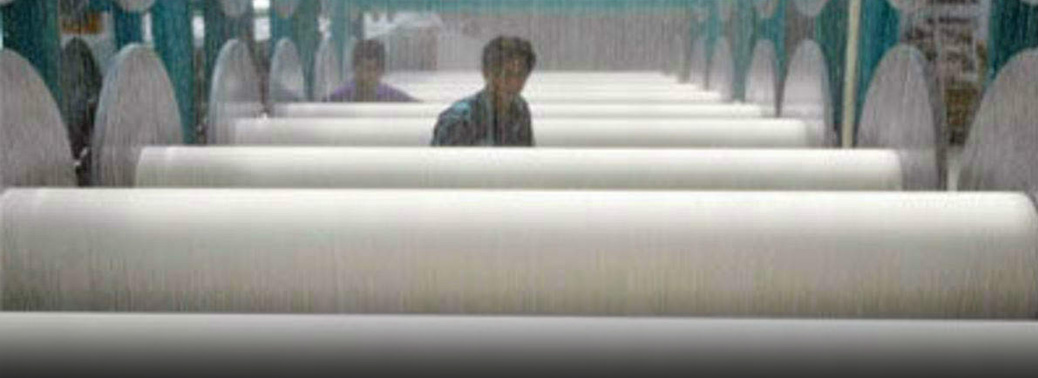
In News
- Apparel exporters have appealed to the government to review the duty drawback rates announced recently for readymade garments
- The new rates announced by the government were 2.20 %-2.52 % percentage points short of what the council had sought.
Background:
- The drawback neutralizes customs duty and excise duty component on the inputs used for products exported. This is offered at fixed rates independent of tax levied on inputs.
- It is a relief by way of refund/ recoupment of custom and excise duties paid on inputs or raw materials and service tax paid on the input services used in the manufacture of export goods.
- Duty drawback provisions are given under section 74 and 75 of the Customs Act, 1962. Section 74 allows duty drawback on re-export of duty paid goods. Whereas section 75 allows drawback on imported goods used in the manufacture of export goods. In order to facilitate the drawback procedures, the Central Government is empowered to make rules
- The revised rates of duty drawback will help address the concerns of these export sectors and make India’s exports more competitive in global economy
- The higher duty drawback rates together with timely refunds will help exporters retain their competitiveness
Importance and Potential of Apparel Sector:
- The Indian textile industry is set for strong growth, buoyed by both strong domestic consumption as well as export demand
- The sector employs one of the vulnerable and underemployed gender of the India mainly women and it reinforces their financial freedom
- The fundamental strength of the textile industry in India is its strong production base of wide range of fibre/yarns from natural fibres like cotton, jute, silk & wool to synthetic /man-made fibres like polyester, viscose, nylon & acrylic
- The sector is expected to reach USD226 billion by FY2023
- Population is expected to reach to 1.34 billion by FY2019 and so the labor force & clothing needs
- Urbanization is expected to support higher growth due to change in fashion & trends
- The organized apparel segment is expected to grow at a Compound Annual Growth Rate of more than 13 per cent over a 10-year period
- India accounts 63 per cent of the market share of textiles and garments
- India accounts for about 14 per cent of the world’s production of textile fibres& yarns (largest producer of jute, 2ndlargest producer of silk and cotton; & 3rd largest in cellulosic fibre)
Benefits of Apparel Industry:
- Research and records have established the high potential of the apparel sector to create about 70 jobs for every crore rupee invested, much higher than the other manufacturing sectors.
- As high as Rs 26,000 crore are given out as salaries and wages every year by this industry.
- The most significant advantage lies in the high employability of women in this sector at every level- from a sewing machine operator to the CEO of a brand.
- It can greatly boost the export led growth of the Indian economy
WTO Conditions:
- The government also has to be careful now in giving duty drawback and ensure it is strictly according to inputs consumed as India is no more eligible to give export subsidies as per global trade rules as its per capita Gross National Income has crossed $1,000 for the third year in a row.
- The MEIS (Merchandise export incentive scheme) scheme, too, could be questioned by WTO members as it is an export subsidy and no more permitted.
Foreign Institutional Investor (FII)
13, Dec 2018

Introduction:
- Foreign Institutional Investor (FII) means an institution established or incorporated outside India which proposes to make investment in securities in India. They are registered as FIIs in accordance with Section 2 (f) of the SEBI (FII) Regulations 1995.
- FIIs are allowed to subscribe to new securities or trade in already issued securities. This is just one form of foreign investments in India.
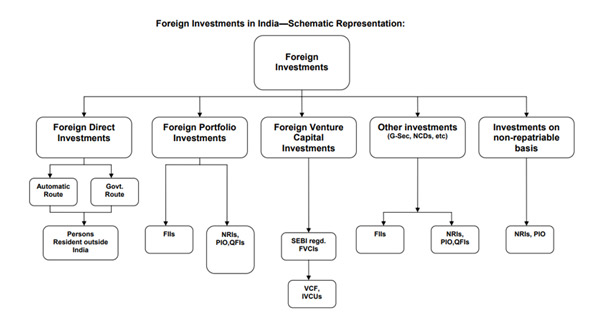
FII Vs FDI: International standards and Indian definition:
- According to IMF and OECD definitions, the acquisition of at least ten percent of the ordinary shares or voting power in a public or private enterprise by non-resident investors makes it eligible to be categorized as foreign direct investment (FDI).In India, a particular FII is allowed to invest upto 10% of the paid up capital of a company, which implies that any investment above 10% will be construed as FDI, though officially such a definition did not exist.
- It may be noted that there is no minimum amount of capital to be brought in by the foreign direct investor to get the same categorized as FDI.
Who can get registered as FII?
Following Foreign Entities / Funds are eligible to get Registered as FII:
1. Pension Funds
2. Mutual Funds
3. Investment Trusts
4. Banks
5. Insurance Companies / Reinsurance Company
6. Foreign Central Banks
7. Foreign Governmental Agencies
8. Sovereign Wealth Funds
9. International/ Multilateral organization/ agency
10. University Funds (Serving public interests)
11. Endowments (Serving public interests)
12. Foundations (Serving public interests)
13. Charitable Trusts / Charitable Societies (Serving public interests)
- Thus, it may be seen that sovereign wealth funds (SWFs) are also regulated under FII regulations only, and no separate regulation exists for SWFs. Further, following entities proposing to invest on behalf of broad-based funds, are also eligible to be registered as FIIs:
- Asset Management Companies
- Investment Manager/Advisor
- Institutional Portfolio Managers
- Trustee of a Trust
- Bank
What FIIs can do?
A Foreign Institutional Investor may invest only in the following:
1. securities in the primary and secondary markets including shares, debentures and warrants of companies listed or to be listed on a recognised stock exchange in India; and
2. units of schemes floated by domestic mutual funds including Unit Trust of India, whether listed on a recognised stock exchange or not
3. units of scheme floated by a collective investment scheme
4. dated Government Securities
5. derivatives traded on a recognized stock exchange
6. commercial papers of Indian companies
7. Rupee denominated credit enhanced bonds
8. Security receipts
9. Indian Depository Receipt
10. Listed and unlisted non-convertible debentures/bonds issued by an Indian company in the infrastructure sector, where ‘infrastructure’ is defined in terms of the extant External Commercial Borrowings (ECB) guidelines
11. Non-convertible debentures or bonds issued by Non-Banking Financial Companies categorized as ‘Infrastructure Finance Companies’(IFCs) by the Reserve Bank of India
12. Rupee denominated bonds or units issued by infrastructure debt funds
13. Indian depository receipts
Myths About FIIS:
- There are certain myths / beliefs about FIIs which are not necessarily true.
- Myth -1:FIIs do not invest in unlisted entities. They participate only through stock exchanges.
- Myth -2:FIIs cannot invest at the time of initial allotment. Foreign investors investing in initial allotment of shares (say IPOs or when a group of entities come together to float a company) are categorized as FDIs.
- Truth on 1 and 2:As per Section 15 (1) (a) of the SEBI FII Regulations, 1995, a Foreign Institutional Investor (FII) could invest in the securities in the primary and secondary markets including shares, debentures and warrants of companies unlisted, listed or to be listed on a recognized stock exchange in India. In fact FIIs are very active in the over the counter (OTC) markets and in the IPO market in India. However, subsequent to SEBI (FPI) regulations, FIIs are allowed to invest only in listed or to-be listed entities and only through stock exchanges.
- Myth 3:FDI has more direct involvement in technology, management etc while FIIs are interested in capital gain and momentary price differences. Generally direct investment involves a lasting interest in the management of an enterprise and includes reinvestment of profits. In contrast, FIIs do not generally influence the management of the enterprise.
- Truth on 3:To some extant this notion is true and is emphasized in policy documents. For instance, consolidated FDI Policy of Department of Industrial Policy and Promotion (DIPP) states that “foreign Direct Investment, as distinguished from portfolio investment (FII), has the connotation of establishing a ‘lasting interest’ in an enterprise that is resident in an economy other than that of the investor”.
- However, of late, there have been occasions where FIIs come together to influence decisions in companies where they hold shares. The difference between FDI and FII, except for the fact that the latter necessarily has to be an institution (FDI can come from an individual also), rather lies in the registration or approval process and to some extent in the individual investment limits or lock-in conditions specified for each category.
- Globally also, the acquisition of at least ten percent of the ordinary shares or voting power in a public or private enterprise by non-resident investors makes it eligible to be categorized as FDI, rather than the purpose of the investments, as intimated or stated by the investing foreigner due to difficulty in assessing it and also for statistical consistency.
EAC- PM (Economic Advisory Council to the Prime Minister)
13, Dec 2018

In News:
- Eminent economist and columnist Surjit Bhalla had resigned as parttime member from the Economic Advisory Council to the Prime Minister (EAC-PM).
Background:
- Economic Advisory Council to the Prime Minister (PMEAC) is a non-constitutional, non-permanent and independent body constituted to give economic advice to the Government of India, specifically the Prime Minister.
- The council serves to highlight key economic issues facing the country to the government of India from a neutral viewpoint. It advises the Prime Minister on economic issues like inflation, microfinance, and industrial output.
- For administrative, logistic, planning and budgeting purposes, the NITI Aayog serves as the Nodal Agency for the PMEAC.
Terms of Reference of the EAC – PM:
- Analyze any issue, economic or otherwise, referred to it by the Prime Minister and advising him thereon.
- Addressing issues of macroeconomic importance and presenting views thereon to the Prime Minister. This could be either suo-motu or on reference from the Prime Minister or anyone else.
- Attending to any other task as may be desired by the Prime Minister from time to time.
Periodic Reports of the PMEAC:
- Annual Economic Outlook
- Review of the Economy
India to Receive $800 Billion Remittance in 2018
12, Dec 2018

Why in News?
- India is likely to receive total remittances of $ 800 billion, stated the Migration and Development Brief released by the World Bank on December 08, 2018.
- India was followed by China ($67 billion), Mexico and Philippines ($34 billion each) and Egypt ($26 billion) in the brief.
Highlights:
- When a foreign worker transfers money or something to family or any other individual living in his home country, it is called ‘Remittance. ‘Such transactions help in poverty alleviation in developing and low-income countries.
- According to the Brief, the global remittance including flows to high-income countries is expected to grow by 10.3 percent to $ 689 billion. In 2019, they are expected to grow 3.7 percent to $715 billion. Remittance to developing countries is expected to grow by 10.8 percent to achieve $ 528 billion in 2018. It grew by 7.8 percent in 2017.
- It is expected to grow by 4 percent for the low and middle-income countries in 2019.
- India registered a significant increase in the remittance flow, from $62.7 billion in 2016 to $65.3 billion in 2017. In the year 2017, it was estimated 2.7 percent of the GDP.
SEBI to relax listing norms for start-ups, rename it innovators growth platform
11, Dec 2018
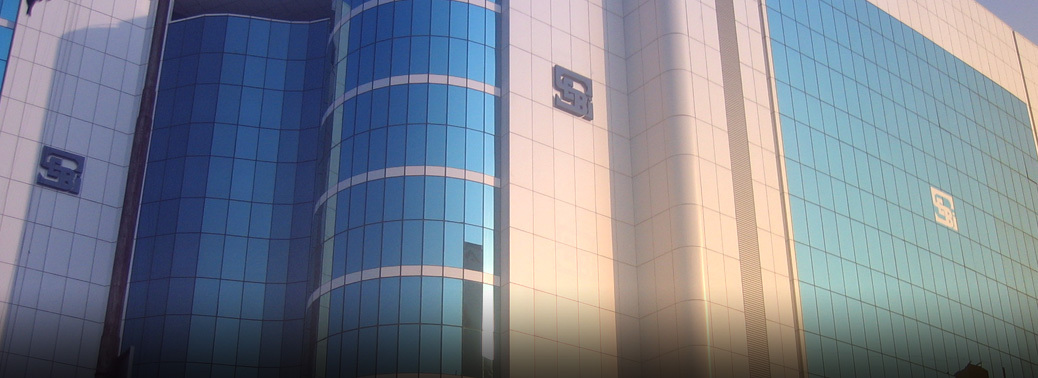
In News:
- In a major push to kickstart listing of start-ups in India in a big way, capital markets regulator Sebi has lined up a slew of relaxations for new-age ventures in sectors like e-commerce, data analytics and bio-technology to raise funds and get their shares traded on stock exchanges.
- The proposed changes include renaming the Institutional Trading Platform that the regulator had created for such listings as Innovators Growth Platform.
The Need for Relaxation of Norms:
- The relaxation came in the wake of demands from various stakeholders to make the norms easier and the platform more accessible considering the expanding activities in the Indian start-up space.
- While there has been a growing interest among the start-ups to get listed, their intention has failed to convert into actual listing due to difficulties in meeting the compliance requirements.
Committee to review the start-up Platform:
- The Securities and Exchange Board of India (Sebi) had set up an expert group in June this year to review the start-up platform.
- The Group held extensive consultations with other stakeholders including start-ups, investors, bankers and wealth management firms and submitted its report to Sebi on the proposed changes.
Proposed Changes of the Expert Committee:
- The group proposed to get rid of the requirement of at least 50 percent of pre-issue capital held by qualified institutional investors.
- It proposed that 25 percent of pre-issue capital for at least two years should be with qualified institutional investors, a family trust with net worth of at least Rs 500 crore, well-regulated foreign investors and a new class of ‘Accredited Investors’ (AIs).
- The AIs are individuals with a total gross income of Rs 50 lakh per annum and minimum liquid net worth of Rs 5 crore, or anybody corporate with a net worth of Rs 25 crore. The AIs can hold up to 10 percent stake before listing.
- The group agreed to do away with a cap of 25 percent holding for any person, individually or collectively, in the company’s post-issue capital. The removal of this cap will ensure that investors are able to invest more than 25 percent in a start-up, thus providing the much-needed boost.
- SEBI also proposed to reduce the minimum application size for share offers to Rs 2 lakh from Rs 10 lakh earlier to attract more investors to the new platform.
- It proposed to do away the allocation of 75 percent of the net offer to institutional investors and the remaining 25 percent to non-institutional investors. There should be no minimum reservation for any specific category of investors.
- It also drops the requirement to limit allocation to a single institutional investor at 10 percent.
- SEBI group retains the existing provisions for lock-in to lend confidence to the entities investing in such a company. The regulations require minimum six-month lock-in of the entire pre-issue capital of the shareholders, excluding the shares arising out of ESOPs and shares held by venture capital funds.
- SEBI proposed to reduce the time period from 3 years to 1 year for the company listed on the start-up platform to the main board of the stock exchange, subject to compliance with the exchange requirements.
- Another key proposal is to fix the minimum offer size at Rs 10 crore.
- These changes are being examined by a sub-group within SEBI’s Primary Market Advisory Committee.
kaiga power station-1 creates a world record yet again
11, Dec 2018
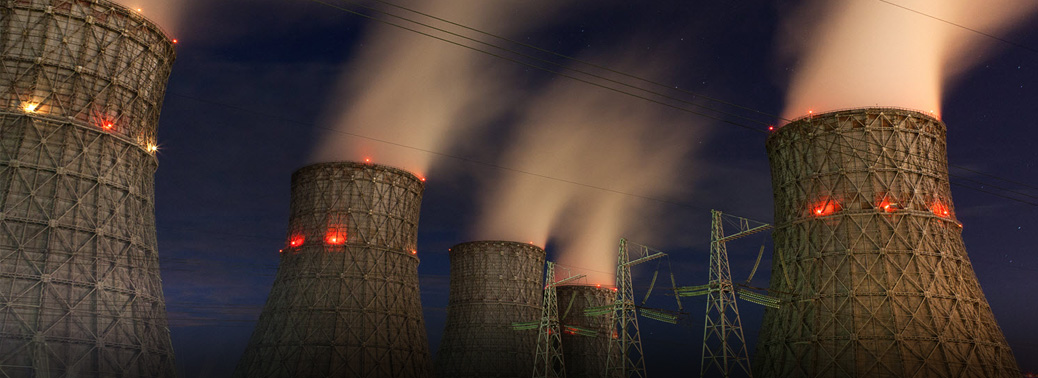
Context:
- Karnataka’s Kaiga has once again made the country proud by creating a world record for the longest uninterrupted operation for 941 days, thereby breaking the earlier record of 940 days by the United Kingdom.
Details:
- The achievement demonstrates that the nation’s capability in nuclear power generation technology of PHWR had fully matured and proved the excellence in design, construction, safety, quality and operation and maintenance practices of NPCIL. About Pressurized Heavy Water Reactors (PHWR). It uses natural uranium as fuel and heavy water as both moderator and coolant. The use of heavy water as the moderator is the key to the PHWR (pressurized heavy water reactor) system, enabling the use of natural uranium as the fuel (in the form of ceramic UO2), which means that it can be operated without expensive uranium enrichment facilities.
Green GDP
11, Dec 2018

Introduction:
- Green GDP is a term used generally for expressing GDP after adjusting for environmental damage.
Background:
- The System of National Accounts (SNA) (is the internationally agreed standard set of recommendations on how to compile measures of economic activity), is an accounting framework for measuring the economic activities of production, consumption and accumulation of wealth in an economy during a period of time.
- When information on economy’s use of the natural environment is integrated into the system of national accounts, it becomes green national accounts or environmental accounting.
The process of environmental accounting involves three steps viz.
- Physical accounting;
- Monetary valuation; and
- Integration with national Income/wealth Accounts.
- Physical accounting determines the state of the resources, types, and extent (qualitative and quantitative) in spatial and temporal terms.
- Monetary valuation is done to determine its tangible and intangible components. Thereafter, the net change in natural resources in monetary terms is integrated into the Gross Domestic Product in order to reach the value of Green GDP.
- The process envisaged by Ministry of Environment and Forest does not require any change in the core System of National Accounts (SNA), and is achieved by establishing linkages between the two through a system of satellite accounts (called Satellite accounts as it adds new information to core accounts).
- For example, Environmental Satellite Accounts link measures of emissions, material use, costs of remediation and environmental taxes to measures of economic activity. Satellite accounts are a framework that enables attention to be focused on a certain field or aspect of economic and social life.
- They are produced in the context of national accounts but are more flexible as they allow concepts, definitions, accounting rules and classifications to be changed, where it improves analysis.
- An Expert Group was also convened under the direction of Prime Minister by the National Statistical Organization, Ministry of Statistics and Programme Implementation, Government of India in August 2011 to examine the prospects of developing green national accounts in India. The committee was Chaired Shri Partha Dasgupta and submitted its report in March 2013.
- The report of the Committee Green National Accounts in India: A Framework, opines that the word green GDP is a misnomer as it is about the wealth of the nation that one is referring to (not income) while talking about accretion or depletion of natural resources. The work in coming out with green GDP estimates is progressing.
History of Environmental Accounting in India:
- A Framework for the Development of Environmental Statistics (FDES) was developed by the Central Statistics Office (CSO) of India in the early 1990s. The Compendium of Environment Statistics is being released since 1997.
- As per the recommendations of Technical Working Group on Natural Resource Accounting (NRA) in the later 1990s, a pilot project on NRA in the State of Goa was initiated during 1999-2000.
- Thereafter, resource accounting studies were carried out in 8 states on different set of natural resources. Later a Technical Advisory Committee was constituted in the year 2010 under the Chairmanship of Kirit Parikh to bring out a Synthesis Report combining the findings of all these studies.
- The report recommended the preparation of a National Accounting Matrix that would include environmental accounts. The High-powered expert group under Partha Dasgupta was constituted subsequently in 2011 with the mandate of developing a framework for green national accounts of India and for preparing a roadmap to implement the framework.
- Following the guidance of International Organisation of Supreme Audit Institutions (INTOSAI) on the framework for of environmental auditing, the supreme audit institution of India – Comptroller and Auditor General of India (CAG) also conducts environmental audit in India.
- This process was formalized with the introduction of specialized guidelines {MSO (Audit) 2002} for conduct of environmental audits. This laid down broad guidelines to enable India’s auditors to examine whether the auditee institutions gave due regard to the efforts of promulgating sustainability development and environmental concerns, where warranted.
- Thus, in India, Environmental audit is conducted within the broad framework of Compliance Audit and Performance Audit at the central level by the Office of Principal Director of Audit (Scientific Departments) and by the state Accountant Generals (Audit) at the state level. Over the years, more and more states have taken up environmental audits.
- These compliance as well as performance audits have been printed in the respective state/ central audit reports and presented to Legislature/Parliament.
- All these reports deal with the environment themes of water issues, air pollution, waste, biodiversity and environment management systems.
GDP Deflator
11, Dec 2018

What is GDP deflator?
- The Gross Domestic Product (GDP) deflator is a measure of general price inflation. It is calculated by dividing nominal GDP by real GDP and then multiplying by 100. Nominal GDP is the market value of goods and services produced in an economy, unadjusted for inflation (It is the GDP measured at current prices). Real GDP is nominal GDP, adjusted for inflation to reflect changes in real output (It is the GDP measured at constant prices).
Formulae?
GDP Deflator =
Nominal GDP X 10 Real GDP
Importance of GDP Deflator :
- There are other measures of inflation too like Consumer Price Index (CPI) and Wholesale Price Index (or WPI); however, GDP deflator is a much broader and comprehensive measure. Since Gross Domestic Product is an aggregate measure of production, being the sum of all final uses of goods and services (less imports), GDP deflator reflects the prices of all domestically produced goods and services in the economy whereas, other measures like CPI and WPI are based on a limited basket of goods and services, thereby not representing the entire economy (the basket of goods is changed to accommodate changes in consumption patterns, but after a considerable period of time).
- Another important distinction is that the basket of WPI (at present) has no representation of services sector. The GDP deflator also includes the prices of investment goods, government services and exports, and excludes the price of imports.
- Changes in consumption patterns or the introduction of new goods and services or structural transformation are automatically reflected in the deflator which is not the case with other inflation measures. However WPI and CPI are available on monthly basis whereas deflator comes with a lag (yearly or quarterly, after quarterly GDP data is released). Hence, monthly change in inflation cannot be tracked using GDP deflator, limiting its usefulness
.
Statistics:
- Ministry of Statistics and Programme Implementation (MOSPI) comes out with GDP deflator in National Accounts Statistics as price indices. The base of the GDP deflator is revised when base of GDP series is changed.
Banking Correspondent (BC)
11, Dec 2018

Introduction:
- Banking Correspondents (BCs) are individuals/entities engaged by a bank in India (commercial banks, Regional Rural Banks (RRBs) and Local Area Banks (LABs)) for providing banking services in unbanked / under-banked geographical territories. A banking correspondent works as an agent of the bank and substitutes for the brick and mortar branch of the bank.
- Banking correspondents were allowed by RBI vide a circular dated 25 January 2006. The concept of Banking Correspondent stemmed from a report of H R Khan, Dy Governor of RBI. Committee on Financial Inclusion Chaired by Dr. C. Rangarajan which in its report submitted had also recommended for the expansion of the BC model.
- The banks will be fully responsible for the actions of the BCs and their retail outlets / sub agents.
What They Do?
They engage in
- Identification of borrowers;
- Collection and preliminary processing of loan applications including verification of primary information/data;
- Creating awareness about savings and other products and education and advice on managing money and debt counseling;
- Processing and submission of applications to banks;
- Promoting, nurturing and monitoring of Self-Help Groups/ Joint Liability Groups/Credit Groups/others;
- Post-sanction monitoring;
- Follow-up for recovery,
- Disbursal of small value credit,
- Recovery of principal / collection of interest
- Collection of small value deposits
- Sale of micro insurance/ mutual fund products/ pension products/ other third party products and
- Receipt and delivery of small value remittances/ other payment instruments.
Who Are All Eligible to Be Appointed as Banking Correspondent?
- Individuals like retired bank employees, retired teachers, retired government employees and ex-servicemen, individual owners of kirana (small shops) / medical /Fair Price shops, individual Public Call Office (PCO) operators, agents of Small Savings schemes of Government of India/Insurance Companies, individuals who own petrol pumps, authorized functionaries of well-run Self Help Groups (SHGs) which are linked to banks, any other individual including those operating Common Service Centres (CSCs);
- NGOs/ Micro Finance Institutions set up under Societies/ Trust Acts or as Section 25 Companies ;
- Cooperative Societies registered under Mutually Aided Cooperative Societies Acts/ Cooperative Societies Acts of States/Multi State Cooperative Societies Act;
- Post Offices;
- Companies registered under the Indian Companies Act, 2013 with large and widespread retail outlets
- Non-banking Finance Companies (NBFCs) were not allowed to be appointed as Business Correspondents (BCs) by banks. However, since June 2014 banks have been permitted to engage non-deposit taking NBFCs (NBFCs-ND) as BCs, subject to certain conditions:
- A.It should be ensured that there is no comingling of bank funds and those of the NBFC-ND appointed as BC.
- B.There should be a specific contractual arrangement between the bank and the NBFC-ND to ensure that all possible conflicts of interest are adequately taken care of.
- C. Banks should ensure that the NBFC-ND does not adopt any restrictive practice such as offering savings or remittance functions only to its own customers and forced bundling of services offered by the NBFC-ND and the bank does not take place.
Challenges and Prospect of Business Correspondents In The Ground:
- Adequate compensation to the Business Correspondents should be ensured for enabling them to provide uninterrupted services particularly in such difficult terrains and remote areas.
- The Business Correspondents should be motivated and regular training programs are to be conducted, so that they may in turn educate the customers.
- Transaction costs needs to be reduced which may be useful for both the Business Correspondents and the customers.
- There are instances, where the Business Correspondents are not available to the customers at their time of need to meet their financial requirements; these customers may approach the private players.
- Business Correspondents should be allowed to increase their transaction limit in remote areas.
- Technology should be upgraded as it is vital for the success of financial inclusion. There are connectivity problems in these areas which need to be addressed. Only the public service provider BSNL has the network connectivity in the remote and hilly areas.
- To increase the reach and penetration of Business Correspondents, they should be equipped with Deposit Taking Machines; ATM Hand held Devices, Kiosk, and Internet Banking etc
Foreign experiences:
- Banking Correspondent in India, in all sense of the term, is equivalent to what is known as “Correspondent Banking” in Brazil (Generally, the term correspondent bank refers to a bank which functions as an agent of another bank in a foreign jurisdiction.
- However, Brazil uses this term for domestic agency services by individuals / entities). In some countries BC model is known as “Agent Banking”.
Union cabinet approves implementation of shahpurkandi dam
11, Dec 2018

Why in News?
- Union Cabinet has approved implementation of Shahpurkandi Dam Project on river Ravi in Punjab.
- The project will be implemented by Punjab Government with central assistance of Rs. 485.38 crore (for irrigation component) over a five years period from 2019 to 2023.
- It will be completed by June 2022.
- Funding for central assistance will be made through National Bank for Agriculture and Rural Development (NABARD) under the existing system for funding of 99 Pradhan Mantri Krishi Sinchayee Yojana- Accelerated Irrigation Benefit Programme (PMKSY-AIBP) projects under Long Term Irrigation Fund (LTIF).
Significance of this Project:
- ShahpurKandi Dam project was proposed on River Ravi.
- This project will help minimizing some of water of River Ravi which at present is going waste through Madhopur Headworks downstream to Pakistan.
- It will create an irrigation potential of 5,000 hectares in Punjab and 32,173 hectares in Jammu & Kashmir on completion.
- Besides, Punjab will be able to generate 206 MW of hydropower.
Indus Waters Treaty:
- Indus Waters Treaty was signed between India and Pakistan in 1960 for sharing of Indus waters. According to this treaty, India got the full rights for utilization of waters of three eastern rivers namely Ravi, Beas and Satluj.
- Bilateral agreement was signed between Punjab and J&K in January 1979 for construction of RanjitSagar Dam (Thein Dam) and Shahpurkandi Dam by Punjab Government.
- RanjitSagar Dam was commissioned in August 2000.
Flood hit Plantations Look for Rescue Act
18, Oct 2018
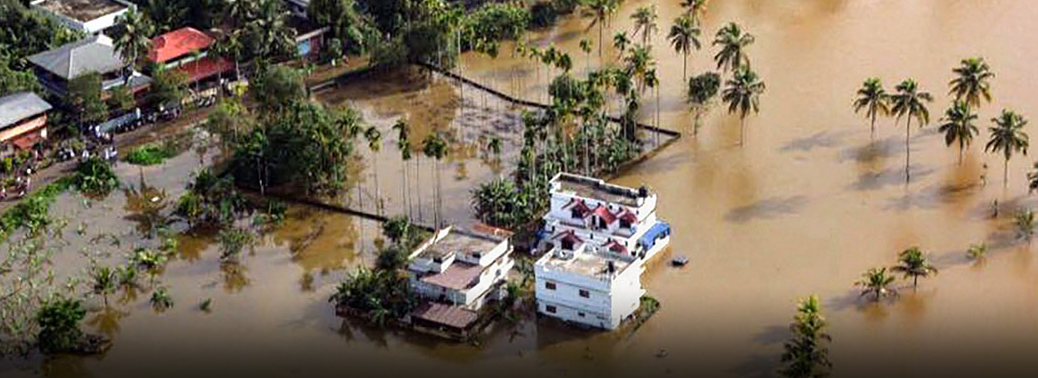
In news:
- The United Planters’ Association of Southern India (UPASI) has estimated the plantation crop loss in the recent floods, mainly in Kerala, parts of Tamil Nadu and Karnataka, to be ₹5,543 crore with the highest loss in rubber at ₹1,662 crore followed by coffee at ₹1,360 crore, pepper at ₹1,200 crore and cardamom at ₹1,250 crore.
- This is said to be one of the largest losses suffered by the sector in south India due to natural calamities in the last five to six decades.
Plantation crops:
- The major plantation crops include coconut, arecanut, oil palm, cashew, tea, coffee and rubber; the minor plantation crops include cocoa
The Economic Importance of these Crops are:
- They contribute to national economy by way of export earnings. These crops occupy less than 2 per cent of the total cultivated area (i.e. 3.82 per cent of total crop land) but gives about 12.72 per cent of the total export earnings of all commodities or 75 per cent of total earnings from the export of agricultural produces
- India is the leading country in the total production of certain plantation crops in the world. For instance, our production meets the share of 47 per cent in tea and 66 per cent in each of cashew and arecanut,
- Plantation industry provides direct as well as indirect employment lo many millions of people. For instance, tea industry offers direct employment to 10 lakhs and indirect employment to 10 lakh people, while-cashew processing factories alone provide employment to 3 lakhs people besides 2 lakhs farmers are employed in cashew cultivation.
- Plantation industry supports many by-product industries and also many rural industries. For example, coconut husk is used to produce coir fiber annually to a tune of 2,19,600 tones in India.
- These crops help to conserve the soil and ecosystem. Tea planted in hill slopes and cashew in barrel and waste lands protect the land from soil erosion during the rainy season or due to heavy winds
Revenue Insurance Scheme for plantation crops:
- It was introduced by commerce ministry not agriculture ministry
- RISPC was approved on September 16, 2016 and will be implemented on a pilot basis for two years covering tea, coffee, rubber, cardamom and tobacco in eight districts in West Bengal, Kerala, Karnataka, Andhra Pradesh, Assam, Sikkim and Tamil Nadu by the commodity boards.
- It also covers protecting growers of plantation crops from the twin risks of yield loss due to adverse weather parameters, pest attacks, drought, dry spells, flood, inundation, storm, hailstorm, cyclone, natural fire, lightning, hailstorm and income loss caused by fall in international/domestic prices
Problems of this sector:
- The planation industry in India is mainly suffering from the problem of rising production costs and labor costs along with low price realization. Because of the higher production costs in India and overproduction by other countries like Kenya, the Indian industry is unable to compete with the world producers.
- Frequent man animal conflicts in the estates are a rising concern. Diseases and pests are creating major problem in sustaining the profitability of the industry
- Small holdings of the rubber, cardamom, spice etc. are a major hurdle in adopting modern technology in large scale.
- Availability of all-weather connectivity from farm gate to market is not available in monsoon times due to frequent landslides
- Difficulties of clearing and maintenance, dense vegetative cover is difficult to clear to make way for plantations and a sound communication network. It is even more expensive to prevent forest shrubs and trees encroaching on such clearings.
- Large sums of money are needed annually for the repair of estate roads and railways.
- Under tropical conditions of heavy rainfall, mineral nutrients in the soil are carried downwards with the rain water as it sinks into the ground.
- This leaching process proceeds very rapidly and magnesium, potassium and calcium are removed. MSP for coffee, tea, etc. is not available.
Conclusion:
- The plantation crop sector is a major determinant of growth of the agricultural sector in the country.
- While the challenges faced by this sector are numerous, these are, however, not insurmountable.
- A well-reasoned and cohesive application of cutting-edge research, institutional support for development and creative policy initiatives can ensure a vibrant plantation crop sector in the country.
National Taskforce on Land Reforms
17, Oct 2018
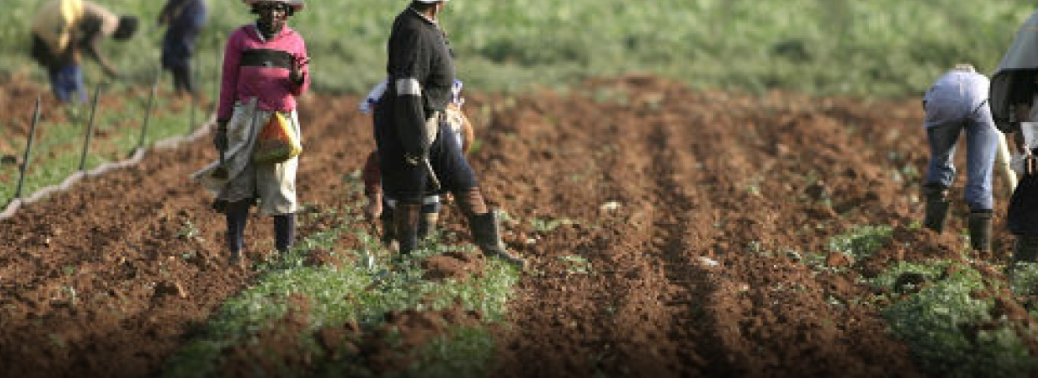
In News:
- • The people’s movement Ekta Parishad cut short its march of 25,000 landless and tribal people from Gwalior to Delhi last Saturday after the Centre promised to reconstitute the National Taskforce on Land Reforms. The march had been launched on October 2.
About- time line of EKTA Parishad:
- Ekta Parishad’s 2007 padayatra, which resulted in the setting up of the National Land Reforms Council, chaired by the Prime Minister. But the Council has not even met once.
- Six years ago, in October 2012, the movement had mobilized more than 60,000 landless people from across the country for a similar padayatra from Gwalior to Delhi.
- They disbanded at Agra after then Rural Development Minister Jairam Ramesh promised homestead land of ten cents for all landless rural poor households and a draft National Land Reform Policy, as part of a ten-point Agra agreement.
- To enforce the agreement, the Centre set up a 15-member task force on land reforms
- The government set up a task force headed by the rural development minister Jairam Ramesh and Tribal Affairs minister V Kishore Chandra Deo.
- The constitution of the 15-member task force on land reforms was one of the decisions of the Agra agreement.
Land reforms Policy,2013.
- At last the land reforms policy of government of India was brought out
Five goals:
- Distribute land to all rural landless poor
- Restore land unjustly taken from vulnerable communities such as the Dalit’s (untouchables) and Tribal
- Protect the land of the Dalit’s and Tribal including the Commons that they depend on going forward
- Liberalize leasing laws
- Improve land rights of women
Reason for land Reforms:
- The main characteristics of the agrarian structure which independent India inherited were:
- Absentee land ownership;
- Exploitation of tenants through high rents and insecurity of tenure;
- Unequal distribution of land;
- Tiny and fragmented holdings; and
- Lack of adequate institutional finance to agriculture.
Fines Fail to Deter Stubble Burning
16, Oct 2018
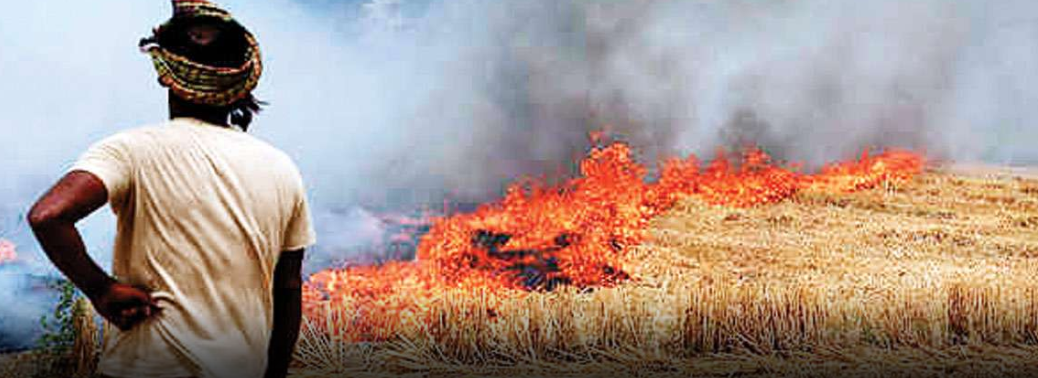
Why in News?
- The Centre and the States — Punjab, Haryana and Uttar Pradesh — have in several meetings through the year declared a “zero tolerance” policy on the burning of stubble for farmers.
Background:
- Between September 27 and October 14, the Punjab Pollution Control Board (PPCB) imposed ₹8,92,500 as fines — or “environmental compensation cess” as it is officially called — on farmers burning paddy stubble. However, they collected only ₹3,05,000, according to figures from the organisation.
Reason for the Fail:
- The fines are collected over time frequently the farmers don’t have money to immediately pay them. The Centre and the States — Punjab, Haryana and Uttar Pradesh — have in several meetings through the year declared a “zero tolerance” policy on the burning of stubble for farmers, which, according to various studies, contributes anywhere from 17% to 78% to the particulate matter-emission load in the city during winter.
- To discourage farmers in Punjab and Haryana — who are responsible for the bulk of such fires — the government has also disbursed ₹591 crore to these States to sell subsidised farm implements that can do away with stubble without having to burn them.
- Sometimes, due to farmers protest, sometimes they plead innocence and sometimes poverty made them failed to collect the fine.
- Despite a vigorous focus by governments on making mechanised farm implements — combine harvesters-cum-straw management system, seed drillers, rotary harvesters — available to farmers, it’s still inaccessible to many farmers with landholdings less than 5 acres or those not rich enough to invest in such machines.
- Delayed rains have shrunk the window further and different regions in Punjab have different harvesting times, in keeping with subtle weather differences.
- Then there’s the spike in diesel prices. Deploying the machines uses up nearly 5 litres of diesel per acre.
Punjab to Post Nodal Officers to Curb Stubbling Burning
16, Oct 2018
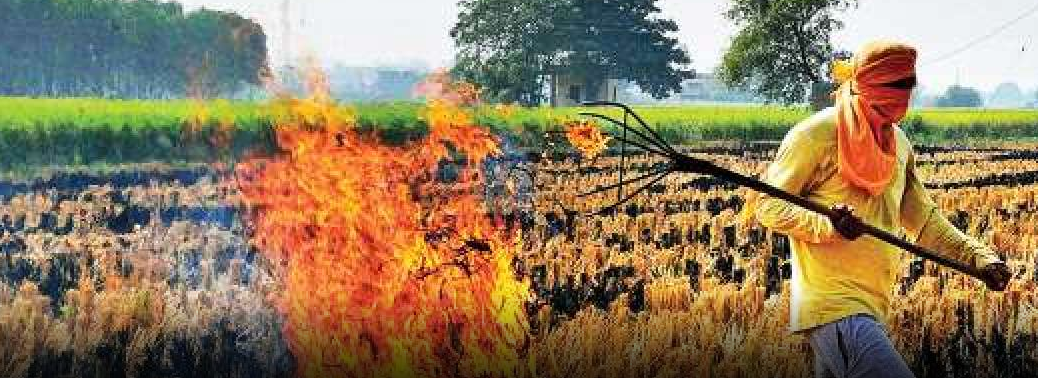
Why in News?
- To curb the menace of stubble burning, the State has decided to appoint nodal officers in 8,000 paddy growing villages.
- The villages have been identified by the Agriculture Department as those where paddy stubble is traditionally burnt.
1. What is Stubble Burning?
- Stubble burning is, quite simply, the act of removing paddy crop residue from the field to sow wheat. It’s usually required in areas that use the ‘Combine harvesting’ method which leaves crop residue behind. Now, what is combine harvesting?
- Combines are machines that harvest, thresh i.e separate the grain, and also clean the separated grain, all at once. The problem, however, is that the machine doesn’t cut close enough to the ground, leaving stubble behind that the farmer has no use for. There is pressure on the farmer to sow the next crop in time for it to achieve a full yield. The Quickest and cheapest solution, therefore, is to clear the field by Burning the stubble.
2. But is Burning the only solution?
- Not really, but it is the easiest and cheapest method available to farmers as of now. But the situation isn’t so grim after all. There are other options we can look at.
- The Most efficient technology to counter crop burning at the moment, seems to be the Turbo Happy seeder (THS). The THS is basically a machine mounted on a tractor that not only cuts and uproots the stubble, but can also drill wheat seeds on the soil that has just been cleared up. The straw is simultaneously thrown over the sown seeds to form a mulch cover. The THS can also be fitted with the super – straw management system (S-SMS) that spreads the straw evenly.
3. Can we Find other use for the stubble?
- Ideally, we should, traditionally, crop residue had a lot of benefits like thatching, or making beds for livestock and cattle. However, growing technology has found more efficient alternatives to this.
- ‘The First step to curb crop burning is to find uses for the stubble,” said Anumita Roychowdhury of Centre for science and Environment (CSE) to down to earth. One Option is to produce biomass with the residue to generate power. The straw can similarly be used to make pellets that serve as the sub – strata for mushroom cultivation, but the problem is not in finding alternatives to paddy straw, as there are many.
- The real issue is who cuts and collects the crop residue, and then takes responsibility for transporting them? As of now, the farmers have no incentive to take the pains of extracting crop residue from the earth, down to earth reports.
4. But Surely All these Alternatives come at a cost, Right?
- The THS costs approximately Rs 1.3 Lakh and the S-SMS is about Rs 1.2 Lakh. Then there is the cost of the combine, which is upwards of Rs 18 lakh, but the farmer does not have to own them. Just as combines are, these machines can also be used on a custom – hiring basis.
- Other alternatives, like residue incorporation costs 20 percent more than simply burning the stubble, while fully removing the residue costs 34 percent more than burning, according to Express tribune.
5. But Why is this only a problem in the Northern States?
- India Relies on its northern states of Punjab, Haryana, western Uttar Pradesh and Uttarakhand for wheat.Now, states in the south use combine harvesting too. But the clinching difference is that they don’t have the urgency to remove the stubble to make it ready for the next crop.
- To sow wheat right after paddy, the field has to be harvested and readied for the next crop. In the Punjab – Haryana – UP belt, the crucial time for the wheat crop to mature is in mid – April, when the temperature is about to cross 35 degree Celsius. For the wheat crop to reach full maturity and give maximum yield by then, the farmer has no option but to sow the crop latest, sot that it grows for a full 140 – 150-day duration.
- Add to this complication the Punjab preservation of subsoil Water Act 2009- Punjab’s water – saving law – which bans sowing of paddy before 15 may and transplanting it before 15 June. This leaves the farmer with very little time to sow and reap paddy, and then ready the field for wheat in just about 20 days.
6. So Won’t Reducing Paddy production Reduce stubble Too?
- Yes, that is simple math, but given that rice is a lucrative crop, how do we go doing this? The answer is to give incentive to farmers to grow other crops.
- The Centre and state governments could adopt methods to incentivise farmers, rather then penalising them. If Production of other crops, like maize, are made more lucrative, then farmers will switch to growing those. Ajay Vir Jakhar, chairman of the Punjab state Farmers commission in an article for The Print, suggests that the government allow production of ethanol from maize.
- Then paddy farmers have a reason to switch to maize, or at least devote half of their time to cultivating maize.
7. So Can we Really Blame the Farmers?
- Clearly farmers have little choice but to burn the stubble, given the pressure under which they have to sow the next crop. The National Green Tribune recommends penalising farmers who burn stubble. Punjab has attempted this, but to no avail. Stubble burning continues, and disgruntled farmers – who are already under debt – refuse to pay fines in the state. Up till the April – May wheat harvesting season this year, farmers in Punjab owed the Punjab Pollution Control Board (PPCB) Fines up to 61.32 lakh. Of this, Only Rs 18 lakh was recovered, the Indian Express reported. Now, another harvest season is upon us, but not much seems to have changed.
ECB Norms Relaxed oil Companies
15, Oct 2018
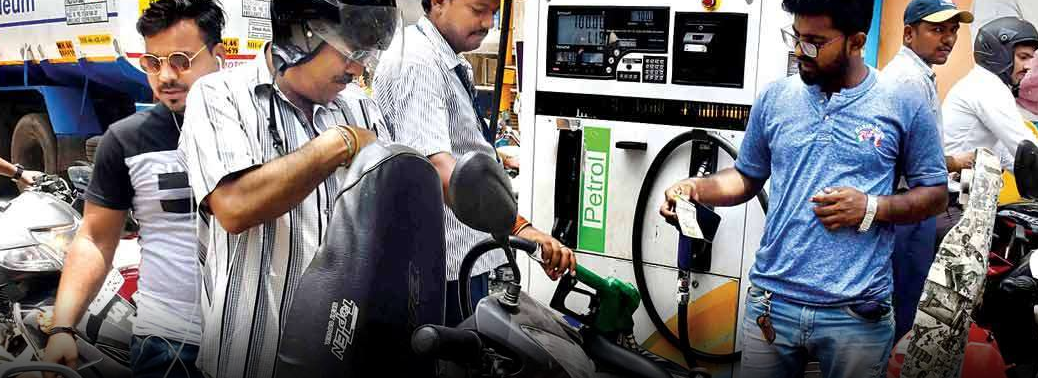
In News:
- With the rupee under pressure following rise in global crude oil prices, the Reserve Bank of India liberalized the norms for oil marketing companies (OMCs) to raise funds through external commercial borrowings (ECB).
About:
- The move came on a day when the rupee closed at a new low of 73.34 against the dollar, after Brent oil breached the $ 84 a barrel.
- India’s central bank said that it will relax external commercial borrowings (ECB) policy to allow state-run oil marketing companies to raise external debt for working capital
- The Reserve Bank of India will permit oil marketing firms to raise overseas funds with minimum average maturity period of 3 or 5 years under the automatic route, it said in a statement.
- It lifted the individual borrowing limit set at $750 million under the ECB framework.
- The overall ceiling for such ECBs shall be $10 billion, hereafter.
- With regards to hedging, earlier it was mandatory to hedge all kind of borrowings but now there is relaxation given by the RBI and so the OMCs can decide if they want to hedge immediately or not.
- If OMC hedge it immediately it will be costlier than the domestic loans and so this waiver on hedging is important to OMC as it makes borrowing cost lower.
Centre RBI Difference
15, Oct 2018
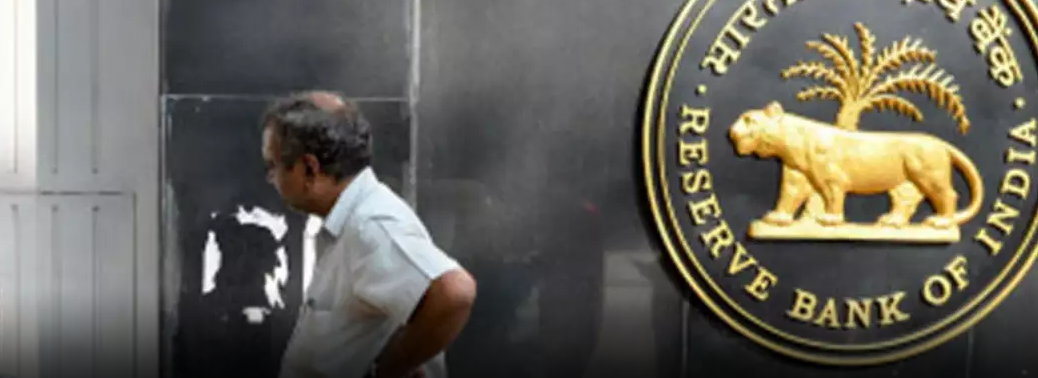
Context:
- There are many differences and contentions points between RBI and the central government on managing Indian economic fabric, creating tensions between them. Though there were tensions before, present conditions are crucial to be addressed soon since these have reached the public and hence could take confidence of public on economy.
Key contention points
1. Regulation of state-run banks
- The RBI governor has stated that the RBI does not have enough powers to regulate state-run banks. According to them, these banks have dual control that is by both the RBI and the central government. And also mentioned they have no power to remove directors and management at state-run banks, cannot supersede bank boards, does not have the power to force a merger or trigger liquidation of state-run banks.
- The Central government counters this statement by mentioning that “powers of RBI are wide-ranging and comprehensive to deal with various situations that may emerge in all banks, including public sector banks”. RBI has powers to inspect the bank and its book of accounts, has a nominee member on the board of state-run banks and is part of a committee within the board that approves large loans. RBI can appoint additional directors on the banks’ boards. Besides, the whole-time directors are appointed in consultation with RBI, the government said.
- The issue came in light on PNB crises which criticized banking regulator for not taking enough measures despite having Prompt Corrective Action (PCA) framework in place.
2. Independent payment regulator
- The Government has suggested to have an independent payment regulator to foster competition, consumer protection, systemic stability and resilience in payment sector
- However, the RBI has contended this measure mentioning that having independent payment regulator would break the existing linkage between the activities of traditional banking system and payment banks. And also new independent payment regulator would not be practically experienced as the RBI, who gained much experience over the last several years.
3. RBI’s PCA framework
- RBI has placed stringent restrictions on mainly small banks due to worsening capital, asset quality and profitability. These stringent restrictions are defended by the RBI that they are much less stringent that Basel norms
- However, it has put pressure on the central government because of liquidity pressure.
4. February 12 circular/circular on Non-performing assets
- The RBI has this circular which put strict rules on banks to address NPAs
- Doing away with traditional restructuring schemes
- Imposition of the one-day default role
- The RBI has maintained that these steps would improve overall credit culture and makes banks proactive in dealing with NPAs and reduce bad loan accumulation in future.
- As these measures would reduce liquidity in the economy and hence provide route towards inflation, this has created tension between the centre and the RBI and also agitated industry and banks
Way forward:
- In the light of increasing risk to the stability of the domestic financial system, both the government and the RBI must look common ground on the disputed points and work together to tackle these issues instead of battling over and resolve their differences.
Oil Bond
14, Oct 2018

What is oil bond?
- Oil bonds are issued by the government to compensate oil marketing companies (OMCs), fertilizer companies and the Food Corporation of India (FCI) for losses borne by them in the process of regulating prices in the domestic market. It was introduced in 2005 to defer the payment of money to the oil marketing companies
- They are akin to government securities. These usually have a long maturity period extending over 15-20 years. Interest payments will be due at fixed intervals during the tenure of the bond.
- These debts are not accounted in the fiscal deficit number of the issuing year. Unlike cash subsidies, there is no direct cash flow. Moreover, oil bonds do not qualify as statutory liquidity ratio (SLR) securities, making them less liquid when compared to other government securities.
- Oil bonds can be traded for liquid cash by sale in the secondary market to insurance companies, banks, and other financial institutions.
Background:
- The then government in 2005 took to issuing oil bonds as a substitute for subsidies between 2005 and 2010. High crude prices and the blowback from the recession of 2008 increased fiduciary pressure on the government.
- By raising capital through bonds, these payments could be made in a deferred manner without causing a major escalation in prices, thus insulating customers.
- Between 2005 and 2009, the government issued bonds worth Rs 4 lakh crore. This was done to partially compensate OMCs for recoveries amounting to Rs 2.9 lakh crore.
- Under-recoveries are the difference between the cost of purchasing crude oil in the international market and the price at which petroleum products are sold in the domestic market. In the aftermath of the recession, OMCs were facing large under-recoveries. This presented the government with the dilemma of ensuring financial stability of OMCS, many of which are government-owned, while taking into account political repercussions of allowing fuel prices to rise.
- Oil bonds were chosen as the vehicle to dampen the pressure on OMCs while keeping prices in check. On November, 2010, the Minister of State for Petroleum and Natural informed Rajya Sabha that the debt burden was to be shared by public sector oil companies, the government, banks, and other stakeholders.
Remedy:
- Petroleum and diesel prices were heavily subsidized to keep the consumers insulated from the global oil price rise during 2005 to 2012 but at the cost of the increased subsidized cost which the future generations have to pay.
- The first step towards deregulation was taken in 2010 with the announcement that oil bonds will be discontinued, and OMCs will be paid in cash.
- In June 2010, petrol prices were deregulated, mirroring the market price of crude. Diesel went the same way in October 2014. In June 2017, the government adopted the system of dynamic fuel pricing whereby the retail price of petrol and diesel fluctuate on a daily basis.
Conclusion:
- The outstanding oil bonds (as on April 1, 2018) which will be discharged only between 2022-2026 is Rs. 13, 0923 crore while Majority of bonds are yet to mature in 2022 the fuel taxes (imposed on petrol/diesel like central excise and state VAT) can’t be reduced in future also so that these bonds may be paid in cash raised through this tax. Deregulation of prices will be one of the remedy to solve this energy triggered resource constraint, should also incentivize the use of bio fuels, solar energy to reduce the dependency on crude oil.
Cabinet NOD to panel on United nations Sustainable Development goals
13, Oct 2018
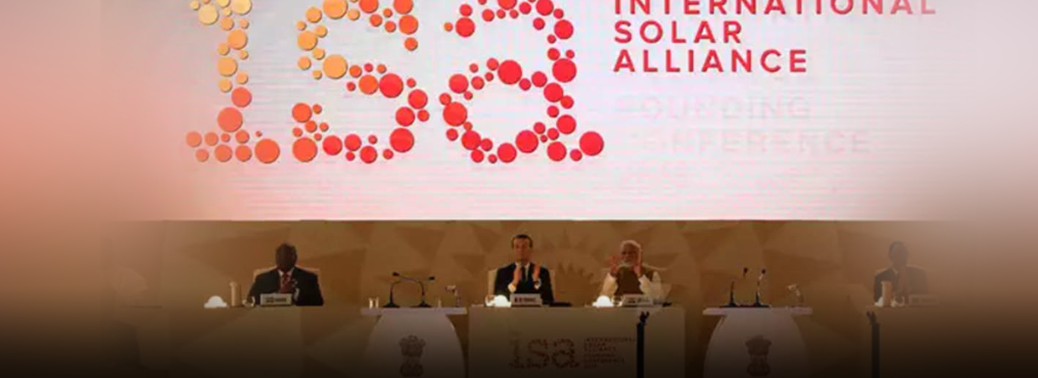
Why in News?
- The Union Cabinet gave its nod for the constitution of a high-level steering committee to review and monitor the progress on sustainable developmental goals (SDGs
Work of the Panel:
- By setting up of a high-level steering committee, which is chaired by the Chief Statistician of India and Secretary to the Ministry of Statistics and Programme Implementation (MoSPI) is to review if India was on track to achieving the United Nations Sustainable Development Goals (SDG). Currently, the NITI Aayog coordinates work of various departments in taking steps to achieve the targets set for the millennial sustainable development goals spearheaded by the United Nations.
- The panel would also decide if there was a need to “refine” indicators by reviewing the National Indicator Framework (NIF) periodically, according to a press release announcing the Cabinet decision.
- The SDGs are a list of 17 goals, which include the elimination of poverty, ending hunger, ensuring provision of quality education, clean water and sanitation, that countries, including India, must achieve by 2030. The steering committee would recommend measures to “mainstream” SDGs into ongoing national policies, programmes and strategic action plans to address the developmental challenges.
- Statistical indicators of the NIF would be the backbone for monitoring of SDGs at the national and State levels and would scientifically measure the outcomes of the policies to achieve the targets under different SDGs. Based on statistical indicators, the MoSPI would produce national reports on implementation of the SDGs. Data source Ministries / Departments will be responsible for providing regular information to MoSPI on these indicators at required intervals and disaggregation for national and sub-national reporting of SDGs.
- Advanced IT tools will be used for close and effective monitoring.
Background:
- At the Millennium Summit held in 2000 at the UN Headquarters in New York, eight development goals known as the ‘Millennium Development Goals’ (MDGs) were adopted, which formed the blueprint for countries to pursue their national development strategies from 2000 to 2015.
- The MDGs, which addressed various development issues, were unevenly achieved across the countries and the Centre wanted to start fresh discussions to assess the usefulness of the MDGs and to explore a possible successor to guide development cooperation in the world beyond 2015.
- The UN General Assembly in its 70th Session, in 2015, considered and adopted the SDGs for the next 15 years. The 17 SDGs came into force with effect from January 1, 2016. Though not legally binding, the SDGs have become de facto international obligations and have the potential to reorient domestic spending priorities of the countries during the 15-year-period.
Hunar Haat
12, Oct 2018
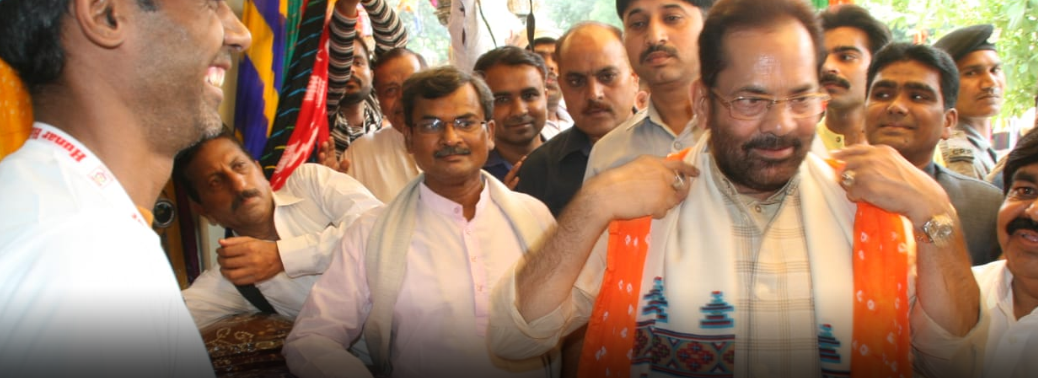
- Hunar haat comes under the Ministry of Minority affairs.
Hunar Haat components:
- To promote marketing and sale of products of individual Minority craftsmen/ artisans.
- To provide platform for the artisans and culinary expert belonging to minorities to showcase and sale their exquisitely crafted products and serve traditional cuisine.
- To support participation of minority craftsmen/ artisans in exhibition, trade fair, buyer seller meets etc.,
- To support organisations (Government organizations, Registered societies/ trusts/ companies, PSUs) for organising exhibitions at state/District level.
- To establish linkages with Dilli Haat, Handicraft Emporiums etc.,
- Financial norms: 100% funding will be done by the Ministry.
- Implementations of Hunar haat will be done through National Minorities development & finance corporation.
Government Invites Bids for International UDAN Flights
11, Oct 2018

Why in News?
- The central government has invited proposals from interested air operators for the international version of its ‘Udan’ (Ude Desk Ka Aam Nagrik) scheme as it seeks to enhance air connectivity from India to select overseas destinations.
Background:
- This is despite the domestic format of the scheme failing to yield desired results with almost half of the routes approved in the first phase of the bidding for the scheme still to be launched.
- National airports operator AAI, which has been mandated to implement the international version of the Udan scheme, has invited “e-proposals (bids) from international bidders for selection of airlines under the International Air Connectivity Scheme, IACS Udan.
- The government, in its bid to make flying more affordable for masses, had in October 2016 announced the Udan scheme with airfares capped at ₹2,500 for a one-hour journey through subsidised ticket rates and to provide air connectivity to smaller towns.
- In the subsequent developments, five airlines were mandated to fly on 128 regional routes in the first phase of the bidding in March 2017, and 15 airlines on 325 regional routes, including those having chopper operations, in the second phase in January this year.
- The Airports Authority of India (AAI) is also the implementing agency for the domestic format of the regional connectivity scheme.
- The AAI has invited the bids on behalf of the civil aviation ministry and the Assam government, as per the notice.
International UDAN scheme:
- The central government had unveiled a draft scheme for extending the UDAN scheme to international circuits, with state governments identifying routes for the operations.
- The draft International Air Connectivity (IAC) scheme envisages to increase the international ticketing to 20 crores by 2027.
- As per the draft, the scheme is to be made operational only for states which demonstrate their commitment to implement and provide the requisite support for promoting operations under the scheme.
- The Assam had last year offered to provide ₹100 crore as viability gap funding towards extension of the scheme for international air connectivity from the state capital Guwahati.
- According to the draft scheme, state governments will identify the routes to be connected, and airline operators will assess demand on the identified routes and submit proposals for providing connectivity. Operations under the scheme will be permitted through fixed-wing aircraft only with more than 70 seats.
- The scheme has proposed to set up an International Air Connectivity Fund (IACF) — dedicated for providing subsidy support under the scheme. It will be created through the contributions of state governments.
Panel for adopting un model on cross – Border Insolvency
10, Oct 2018

Why in News?
- A high-level committee has recommended adoption of a United Nations model law along with some carve outs for dealing with cross-border insolvency cases.The Corporate Affairs Ministry said inclusion of cross-border insolvency chapter in the Insolvency and Bankruptcy Code (IBC) would be a major step forward and would bring the law on par with that of matured jurisdictions.
Insolvency law committee:
- The Insolvency Law Committee (ILC), chaired by Corporate Affairs Secretary Injeti Srinivas, submitted its report on the matter to Corporate Affairs Minister Arun Jaitley.
- The ILC has recommended the adoption of the UNCITRAL Model Law of Cross Border Insolvency, 1997, as it provides for a comprehensive framework to deal with cross-border insolvency issues, the release said.
Committee’s recommendations:
- The panel has also suggested a few carve outs to ensure that there is no inconsistency between the domestic insolvency and the proposed cross-border insolvency frameworks.
- According to the ministry, the advantages of the model law are the precedence given to domestic proceedings and protection of public interest. The other advantages include greater confidence generation among foreign investors, adequate flexibility for seamless integration with the domestic insolvency law and a robust mechanism for international cooperation,” the ministry said in the release.
- It said the necessity of having cross-border insolvency framework under the Code arises from the fact that many Indian companies have a global footprint and many foreign companies have presence in multiple countries, including India.
- Although the proposed framework would enable in dealing with Indian companies having foreign assets and vice versa, it still does not provide for a framework for dealing with enterprise groups, which is still work in progress with UNCITRAL and other international bodies, the release noted.
About UNCITRAL:
- Established in 1966, UNCITRAL is a subsidiary body of the General Assembly of the UN with the general mandate to further the progressive harmonisation and unification of the law of international trade, as per its website.
- UNCITRAL Model Law has been adopted in as many as 44 countries
- The model law deals with four major principles of cross-border insolvency, including direct access to foreign insolvency professionals and foreign creditors to participate in or commence domestic insolvency proceedings against a defaulting debtor.
- Other key principles include recognition of foreign proceedings and provision of remedies, cooperation between domestic and foreign courts and domestic and foreign insolvency practitioners.
- Another principle pertains to coordination between two or more concurrent insolvency proceedings in different countries. The main proceeding is determined by the concept of Centre of Main Interest (COMI). As per UNCITRAL, ‘harmonisation’ and ‘unification’ of the law of international trade refers to the process through which the law facilitating international commerce is created and adopted.
- Harmonisation may conceptually be thought of as the process through which domestic laws may be modified to enhance predictability in cross-border commercial transactions. Unification may be seen as the adoption by States of a common legal standard governing particular aspects of international business transactions.
Lagoon Villas to come to Lakshadweep’s Emeralds
10, Oct 2018

Why in News?
- NITI Aayog plans ‘eco-cottages’ and a film city to boost tourism in the island territories.
NITI Aayog’s strategy to attract Tourist:
- As an alternative to Mauritius and Maldives, NITI Aayog plans for “holistic development of the Island” in our Island territories. Because lagoons with luxurious water villas is not something India is known for
- Other countries have built villas and attract tourists from across the globe. But we don’t have any such project. Lakshadweep, we have so much lagoon area.
- NITI Aayog, along with other stakeholders, including the Island Development Agency (IDA), which is chaired by Home Minister Rajnath Singh, is conducting a technical feasibility study for the project in both Lakshadweep and Andaman & Nicobar Islands along with ensuring that there is no damage to the marine ecosystem.
- Additionally, efforts are on to identify an island where a film city can be built. “It is a new idea that will not only attract tourists but also relieve some of the pressure on Mumbai as a filming hub.
- As part of the plan, the government will issue tenders for four tourism-based hospitality projects – three in Andaman & Nicobar, and one in Lakshadweep.
- These will mainly be eco-cottages for which private players can bid to build. The projects will add about 700 rooms.
- “Ecological concerns and tribal-related issues will be fully addressed.
Stagnant in Foreign Tourism:
- In spite of the fact that globally, there is a high demand for eco-tourism, adventure tourism (sea sports, game fishing) and cruise tourism, the inflow of foreign tourists was stagnant at around 15,000. But the arrival of domestic tourists in Andaman and Nicobar Islands rose from over 2.02 lakh in 2011 to over 3.84 lakh in 2016.
Improving connectivity to boost tourism:
- The Diglipur Airport (in the Andamans) is expected to be operational for civilian aircraft by December, 2018.
- “Better connectivity to Diglipur, Port Blair, Car Nicobar and Campbell Bay through smaller aircraft, supplemented with more helicopter services using the 17 available helipads, will boost inter-island connectivity in Andaman and Nicobar. Efforts are on to start international flights from the Veer Savarkar International Airport, Port Blair.
Importance of Island Development:
- The 1382 offshore-identified islands of India hold immense unexploited potential for fostering growth and achieving cohesive socio-economic development of the region in particular and also, the nation as a whole.
- They can significantly contribute to the GDP by leveraging the gains from promoting infrastructure and tourism on a large scale.
- However, care must be taken to safeguard and maintain the position of these islands as vital strategic assets for national security while keeping their nature and composition as biodiversity hotspots intact.
- Given the strategic location of Andaman & Nicobar (A&N Islands) and the Lakshadweep Islands and China’s belligerent expansionist policy in the Indian Ocean Region (IOR), not only is there a need to develop critical infrastructure and upgrade the military base in these regions, but also to harness the multiplier effect generated as infrastructure connectivity strengthens. This in turn, is expected to boost tourism and spruce up economic activity in the region.
- The Islands host an unexplored Exclusive Economic Zone (EEZ) with clearly demarcated boundaries that can be capitalized on in numerous ways; the varied ecosystem can be exploited for its medicinal plants and exotic plant species, sustainable agriculture and horticulture practices conducive to the agro-climatic conditions of the regions can be propagated, large-scale hydrocarbon explorations can be undertaken, and alternate renewable energy resources can be exploited so as to meet the energy needs of the nation.
- Fisheries, the mainstay of the larger populace of these regions, can be given a thrust so as to develop modernized and sustainable inland fisheries and aquaculture ecosystem integrated with the ‘Blue Economy’ vision.
- Most importantly, the Islands can be developed as prime Tourist Hotspots for not just the country, but also internationally.
- The pristine beaches, coupled with rich tropical vegetation, can be turned into a more economical and attractive alternative to conventional destinations such as Bali and Maldives, thereby creating many forward and backward linkages and help boost the economy of the regions to a large extent.
India Leadership Summit
09, Oct 2018
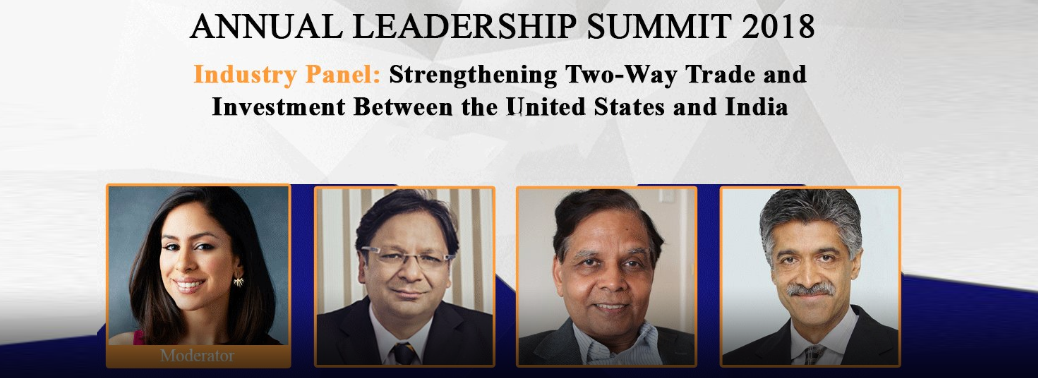
Why in News?
- U.S.-India Strategic Partnership Forum organised the India leadership summit.
About the summit:
- They briefed the Prime Minister on the outcomes of India Leadership Summit held earlier in the day. The business leaders appreciated the economic and regulatory reforms implemented by the Government in the past four years, and expressed their desire to further deepen their engagements with India to make use of the mutually beneficial opportunities created by the rapidly growing Indian economy.
- The Prime Minister stated that both countries have benefitted in an unprecedented manner through economic engagement. He encouraged US companies to fully avail of the business opportunities in new areas as well, such as start-ups, energy, health care and digital technology.
- According to its findings, US companies contributed over $ 90 billion to India’s GDP (2017) as over 6.6 million jobs are supported by US companies in India (2018). The US is India’s largest trading partner and top export market. It is also India’s top source of FDI with $50 billion worth of flows between 2014 and first quarter of 2018.
- The study also said US companies invested over $ 5.5 billion in R&D in India (2016) and the US companies contributed to over five per cent of total CSR expenditure in India (2017).
GOVERNMENT FIVE POINT PLAN
07, Sep 2018
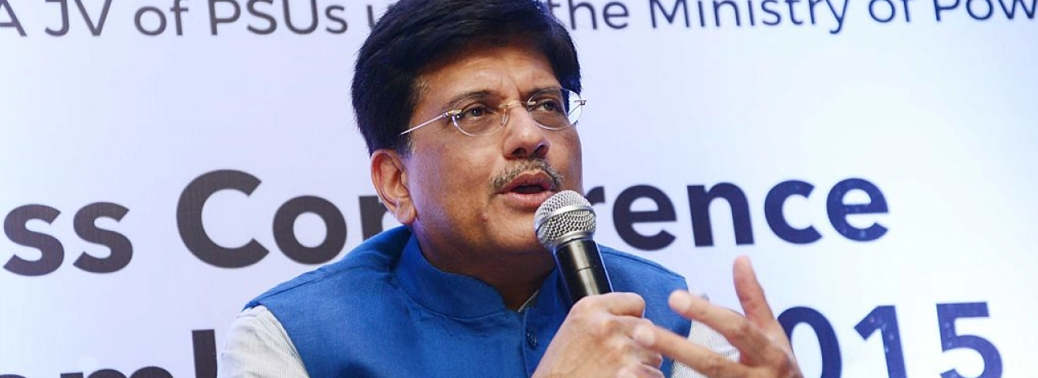
- In an effort to encourage capital flows against the backdrop of a widening current account deficit, the government announced that it will focus on a five-point plan which aimed at supporting the rupee, which has been under pressure in the last few
About:
- As India’s current account deficit widened to $15.8 billion about 2.4 per cent of the country s GDP in the first quarter of this fiscal as against $15 billion in the year-ago quarter.
- The five-point plan that ranges from boosting foreign portfolio investor participation in the corporate bond market to easing rules on external commercial borrowings. The government is committed to maintain its fiscal deficit target even as it monitors the impact of external factors on the Indian
- Mandatory hedging conditions for infrastructure loans will be reviewed. Presently there is no compulsion on borrowers to hedge these
- To permit manufacturing sector entities to avail external commercial borrowings up to $50 million with a minimum maturity of one year versus the earlier period of three
- Removal of exposure limits of 20 percent of foreign portfolio investors’ corporate bond portfolio to a single corporate group, company and related entities, and 50 percent of any issue of corporate bonds will be
- Exemption from withholding tax for issuance of Masala Bond issues done in FY19.Removal of restrictions on Indian banks’ market making in Masala Bonds, including restrictions on underwriting of such bonds. Masala bonds are rupee-denominated instruments issued abroad by Indian borrowers. The advantage of these bonds is that any depreciation in the rupee will not affect the
- One broad policy decision was to address the issue of expanding current account deficit. The government will take necessary steps to cut down non-essential imports and increase exports. The non-essential import items would be decided in consultation with various ministries and will be announced as and when the decisions are taken in the next few days.
BSE, NSE GET SEBI NOD FOR COMMODITY SEGMENT
06, Sep 2018

Why in news?
- The Securities and Exchange Board of India has given the regulatory go-ahead to BSE and NSE to start their respective commodity derivatives segments. Both bourses plan to start the new segment from October
Background:
- Commodities exchange is a legal entity that determines and enforces rules and procedures for the trading standardized commodity contracts and related investment products. Commodities exchange also refers to the physical center where trading takes
- Interestingly, both the equity exchanges NSE and BSE plan to start with non-agriculture commodities like metals and bullion, and subsequently launch contracts in agriculture commodities.
- Currently, Multi Commodity Exchange of India (MCX)is the largest commodity bourse with over 90% market
- The commodity market in India is regulated by market board SEBI since September 2015. Prior to that Forward Market commission, Overseen by Ministry of Consumer Affairs regulated Commodities market in
SEBI:
- The Securities and Exchange Board of India was established as a non-statutory regulatory body in the year 1988, but it was not given statutory powers until January 30, 1992, when the Securities and Exchange Board of India Act was passed by the Parliament of India. Its headquarters is at the business district at the Bandra Kurla Complex in
- Objective is to protect the interests of investors in securities and to promote the development of, and to regulate the securities market and for matters connected therewith or incidental
ECB (EXTERNAL COMMERCIAL BORROWING) NORMS EASED
05, Sep 2018
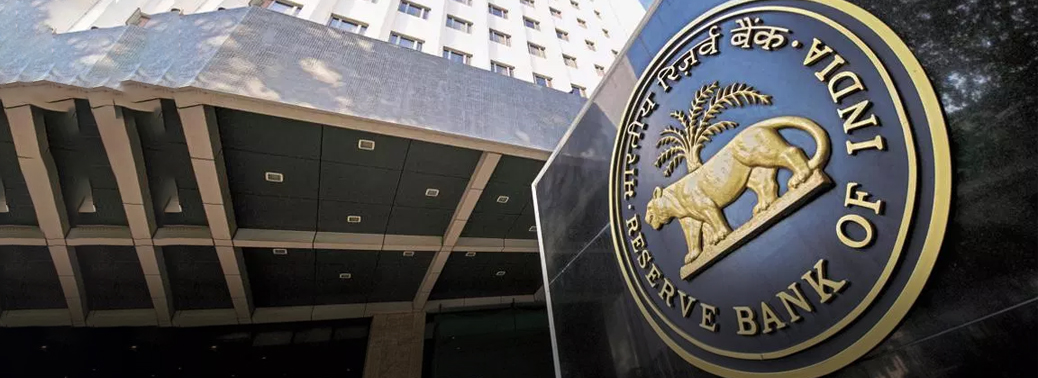
- The Reserve Bank Wednesday eased norms for companies in manufacturing sector to raise overseas funds and allowed Indian banks to market Masala Bonds in line with the government’s measures to prop up the rupee
About:
- Following a review of the economy by Prime Minister, the government announced an array of measures to check the decline of rupee and curb the widening current account deficit (CAD).
- Liberalization of the External Commercial Borrowing (ECB) norms was among other measures announced by the government
What’s ECB (external commercial borrowing)?
- ECB is basically a loan availed by an Indian entity from a non-resident lender. Most of these loans are provided by foreign commercial banks and other institutions
- ECBs cannot be used for investment in stock market or speculation in real estate. The DEA (Department of Economic Affairs), Ministry of Finance, Government of India along with Reserve Bank of India, monitors and regulates ECB guidelines and policies.
What’s the change in ECB norms:
- It has been decided, in consultation with the Government of India, to liberalize some aspects of the ECB policy including policy on Rupee denominated bonds
- As per the extant norms, ECB up to USD 50 million or its equivalent can be raised by eligible borrowers with minimum average maturity period of 3 years
- It has been now decided to allow eligible ECB borrowers who are into manufacturing sector to raise ECB up to USD 50 million or its equivalent with minimum average maturity period of 1 year itself.
- Presently, Indian banks, subject to applicable prudential norms, can act as arranger and underwriter for RDB (Rupee Denominated Bond) issued overseas and in case of underwriting an issue, their holding cannot be more than 5 per cent of the issue size after 6 months of of issue.
- It has now been decided to permit Indian banks to participate as arrangers/underwriters/market makers/traders in RDBs issued overseas subject to applicable prudential norms.
Advantage of ECBs:
- ECBs provide opportunity to borrow large volume of funds
- The funds are available for relatively long term
- Interest rate are also lower compared to domestic funds
- ECBs are in the form of foreign currencies. Hence, they enable the corporate to have foreign currency to meet the import of machineries
- Corporate can raise ECBs from internationally recognized sources such as banks, export credit agencies, international capital markets
Is it Enough?
- Largely, rupee depreciation is based on a number of external factors which India couldn’t control like U.S Fed rate hike, spiralling trade war between USA and China, and because of election year and the related uncertainty about results in India etc. But, tweaking of ECB norms is a small step in the direction of correcting rupee fall further and also it will help the Indian companies working abroad to attract foreign currency more
MOU BETWEEN INDIA AND JAPAN
05, Sep 2018
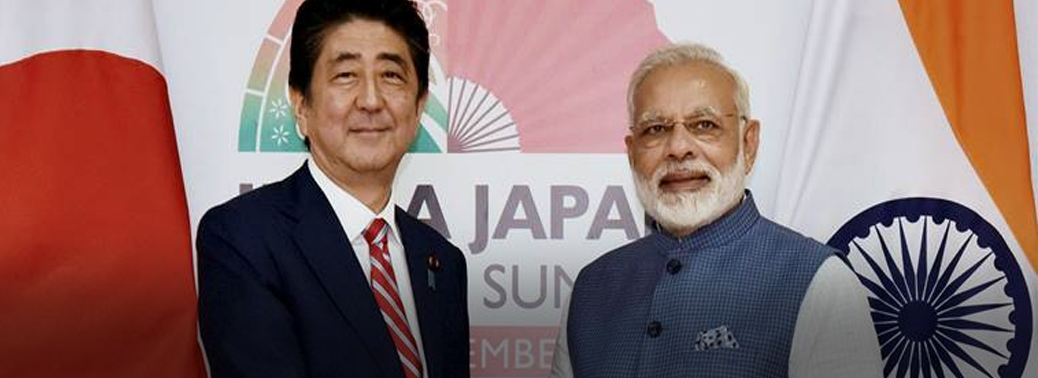
Japan International Cooperation Agency has signed an agreement with India to provide an Official Development Assistance (ODA) Rs 5,500 Crore loan, as the first tranche for the Mumbai-Ahmedabad High-Speed Rail (MAHSR) corridor, popularly
known as the bullet train project and to Kolkata East-West Metro Project
Bullet Train:
- Japan International Cooperation Agency (JICA) today announced it has signed an agreement with India to provide an Official Development Assistance (ODA) loan of 89,547 million Japanese Yen (around Rs 5,500 Crore) for bullet train
- The objective of the project is to develop a high-frequency mass transportation system by constructing the High-Speed Rail between Mumbai and Ahmedabad, using Japan’s Shinkansen technology (also known as the “Bullet Train”), thereby enhancing mobility in India and contributing to regional economic
- The first high speed train is scheduled to leave for its first run on 15 August
- The system will be designed to operate trains at a maximum speed of 350 kilometres per hour while operational speed would be 320 kilometres per hour. When traveling at 350 kilometres per hour a train will be able to travel end-to-end on the 508 kilometres line in 2 hours and 8 minutes. Currently, a train journey from Mumbai to Ahmedabad takes 7 hours.
Japan’s Shinkansen Technology:
- The Japanese Shinkansen is the first high-speed rail system which started its commercial operation in 1964 between Tokyo and Osaka. The system has several criteria which include safety, reliability and sustainability in its
- It has a stellar reputation of zero fatalities recorded throughout 53 years of operation in Japan. The Shinkansen operates based on the “Crash Avoidance” principle, which dictates a design eliminating any possibility of a crash
- The “Crash Avoidance” principle comprises of a dedicated high-speed rail track free of any level crossings and the Automatic Train Control (ATC) system which reliably safeguards against crashes by preventing the train from running at excessive
- The Shinkansen system is also designed to withstand natural disasters and abnormal weather
- It also has in place the deviation prevention measures to prevent train cars from deviating off the track and colliding with incoming trains or structures in the event that a train does derail.
- In the tropical country, where rain is frequent, the control centre will constantly monitor data from rain gauges installed along the lines to enforce speed restrictions when the rain level exceeds a predetermined
- The train system is very reliable. It has recorded less than one-minute average delay time per trip, therefore, ensuring punctuality for
- India become the first nation to import the iconic Shinkansen bullet trains, which will be a highlight of India’s infrastructure upgrade program.
NHSRCL:
- National High-Speed Rail Corporation Limited is implementing the project of high-speed train corridor between Ahmedabad and
- This Special Purpose Vehicle has been incorporated in 2012 as a subsidiary of Rail Vikas Nigam Limited which is a Mini-Ratna public sector enterprise of Government of
Advantages:
- High-speed connectivity: India is a vast country and the need to travel faster has become a necessity. While air transport can cater to such needs, the capacity that it offers simply cannot match that of the railways. While making incremental changes to improve existing infrastructure is desirable, it is equally important to adopt proven state-of-the-art technologies. The High-Speed Railway Line will be effective in meeting this
- Apart from diverting passengers from road and air, Bullet train generates a new class of passengers as well. With the average operating speeds higher than 250 km/h, High Speed Railways will make the distance of 500 km reachable in two
- Less stress on the Railways: The conventional Indian Railways lags substantially in extending, accelerating and modernizing its infrastructure and services. There is a serious need to segregate its passenger business from freight. With advent of bullet trains the stress on the railways would be
- Employment: The bullet train project is expected to create 4,000 direct job opportunities, along with 20,000 indirect jobs. 20,000 construction workers will also be employed during the set-up period of Ahmedabad-Mumbai bullet
- Urban expansion: New bullet train stations set to come up along the route will attract urban growth. This will again shift the pressure of urbanization from the existing urban centres.
- Environmental: In the backdrop of increasing concerns over environmental pollution and degradation of fossil fuels, energy-efficient and environmentally friendly, high-speed electric trains emit an eighth and a fifth of carbon dioxide as against automobiles and airplanes per passenger km,
- Enhanced Safety: High Speed Railways’ safety record is remarkable. With a 2,500-km network, providing high frequency, up to 14 trains per hour, the Shinkansen/Bullet train ever since its inception has maintained a unique record of no fatal
- Other avenues: The prime purpose of Bullet trains in India to provide convenience to commuters. However, it can also make a difference in freight transportation. Be it courier mail services, perishables, or other items, any fast alternative to overloaded lorries should be welcome for businesses as well as private
CABINET CLEARS PROPOSAL TO MAKE GSTN 100 PER CENT GOVT- OWNED COMPANY
05, Sep 2018
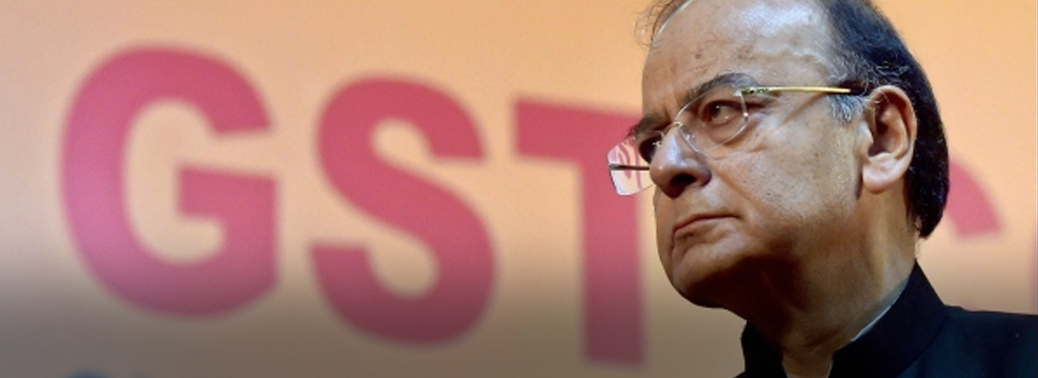
Why in news?
- The Union Cabinet has cleared a proposal to convert the GST Network into a government- owned company, finance minister Arun Jaitley
GSTN:
- A few months ago, an in-principle decision was taken to make it a 100% government- owned entity. The GST Council has already approved the move. Now the cabinet has approved it.
- The restructured GSTN, with 100 per cent government ownership, shall have equity structure between the Centre (50 per cent) and the states (50 per cent).
- Currently, the Centre and the states together hold a 49% stake in the company, which provides the IT backbone to the indirect tax
- The remaining 51% is held by five private financial institutions – HDFC, HDFC Bank, ICICI, NSE Strategic Investment Co and LIC Housing Finance. The stake of the private companies will be acquired by the Centre and the state
- GSTN was incorporated as a private limited company on March 28, 2013, under the previous UPA government. It is a not-for-profit
- There had been criticism about allowing private companies to hold a majority stake in GSTN and demands to change its
- However, it was then felt that private sector participation in the company would provide it with flexibility in hiring and operational
- GST, which replaced multiple state and central taxes with a single levy, was rolled out across the nation on July 1 last
- GSTN faced widespread criticism after the portal crashed several times and businesses found it difficult to file returns. With the portal stabilising, the government said the time was right to change the
MOV on Masala Bond
05, Sep 2018

- The Memorandum of Understanding (MoU) was signed by NSE London Stock Exchange Group on dual listing of masala bonds
About:
- Under the pact, together LSEG (London Stock Exchange Group) and NSE (National Stock Exchange) will look to provide a route for masala bonds (rupee-denominated bonds) and foreign currency bonds of Indian issuers listed on London Stock Exchange to be dual listed on NSE’s International Exchange, NSE IFSC Ltd, in Gujarat International Finance Tech (GIFT)
- The pact also outlines the parties’ commitment to engage with growing companies, leading financial institutions and the broader SME community across the country to integrate them with the global ELITE community (London Stock Exchange Group’s international business support and capital raising programme for ambitious and fast- growing companies)
- Both also agreed to explore the launch of ELITE LSEG’s business support and capital raising initiative for small and medium enterprises in India in
Significances:
- Through the approval of a single listing document, an issuer will be able to obtain a dual listing on London Stock Exchange’s International Securities Market and GIFT City, gaining access to an enhanced investor base of global institutions based in London, as well as domestic and regional investors registered on NSE
- Dual listing of masala bonds and foreign currency bonds of Indian issuers would enhance visibility, increase liquidity in secondary markets and enhance efficiency of price discovery for the bond issuers. It would also reduce the cost of raising capital for all issuers and encourage the participation of a wider variety of issuers in the masala bond market. It also underlines the strength of the economic and financial partnership between the UK and India, reinforcing London’s position as a complimentary and valued funding partner to India.
- Still now LSEG has listed 46 Masala bonds, which have raised an equivalent of more than $5 billion.
- The MoU signings demonstrate LSEG’s and NSE’s commitment to promoting the inter- connectedness between the UK and Indian capital markets, supporting global awareness of the opportunities that exist in India’s first international financial services centre, GIFT City, and championing the development of the country’s
- The ELITE global community is made up of over 900 private, ambitious companies from 32 countries and over 30 sectors. ELITE will bring a more in-depth and formalised process to help SMEs scale up their businesses and integrate them with the global ELITE community.
Masala bonds:
- Masala Bonds are rupee-denominated borrowings issued by Indian entities in overseas markets.
- Masala means spices and the term was used by International Finance Corporation (IFC) to popularise the culture and cuisine of India on foreign
- The objective of Masala Bonds is to fund infrastructure projects in India, fuel internal growth via borrowings and internationalise the Indian
- Masala bonds should have a minimum maturity of five years, and there is a $750 million per year limit for borrowers which can be exceeded with the RBI
Significance:
- The bonds are directly pegged to the Indian currency. So, investors will directly take the currency risk or exchange rate
- If the value of Indian currency falls, the foreign investor will have to bear the losses, not the issuer which is an Indian entity or a corporate. If foreign investors eagerly invest in Masala Bonds or bring money into India, this would help in supporting the
- The issuer of these bonds is shielded against the risk of currency fluctuation, typically associated with borrowing in foreign Besides helping in diversifying funding sources, the costs of borrowing via masala bonds could also turn out to be lower than domestic markets.
- Currently, these bonds are listed on the London Stock
Internal Ombudsman
04, Sep 2018
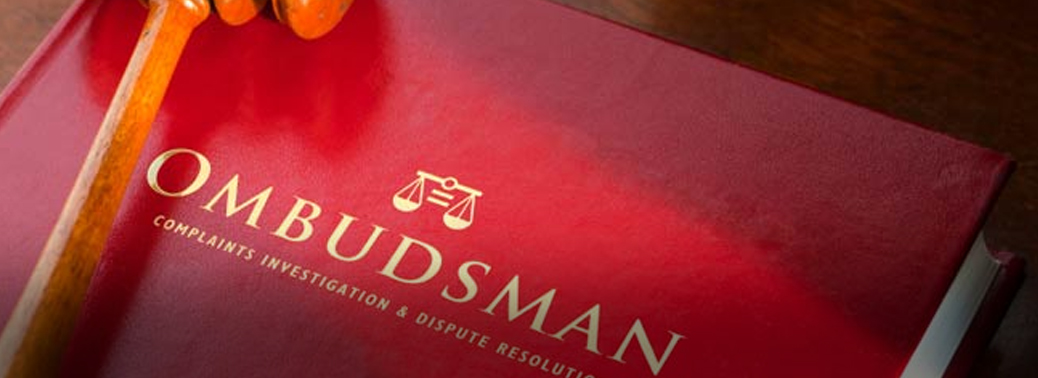
- RBI introduces Internal Ombudsman Scheme for stronger redressal of banks customer complaints.
About:
- The banking regulator has asked all the Scheduled Commercial Banks having 10 or more banking outlets to have an independent internal ombudsman (IO) to review customer complaints that are either partly or fully rejected by the
- The IO mechanism was set up with a view to strengthen the internal grievance redressal system of banks and ensure the complaints of the customers are redressed at the level of the bank As banks should internally escalate complaints that are not fully redressed
to their respective IOs before conveying the final decision to the complainant, customers need not approach the IO directly.
- The implementation of IO Scheme, 2018 will be monitored by the bank’s internal audit
mechanism apart from regulatory oversight by RBI.
- The Scheme covers appointment/tenure, roles, and responsibilities, procedural guidelines and oversight mechanism for the IO, among other
Banking Ombudsman:
- The Banking Ombudsman is a senior official appointed to redress customer complaints against deficiency in certain banking
- It provides a forum to bank customers to seek redressal of their most common complaints against banks, including those relating to credit cards, service charges, promises given by the sales agents of banks, but not kept by banks, as also, delays in delivery of bank services. The bank customers would now be able to complain about non-payment or any inordinate delay in payments or collection of cheques towards bills or remittances by banks, as also non-acceptance of small denomination notes and coins or charging of commission for acceptance of small denomination notes and coins by
- The Banking Ombudsman Scheme is introduced under Section 35 A of the Banking Regulation Act, 1949 by RBI with effect from
- One can file a complaint before the Banking Ombudsman if the reply is not received from the bank within a period of one month after the bank concerned has received one’s complaint, or the bank rejects the complaint, or if the complainant is not satisfied with the reply given by the
- Any person aggrieved by an Award issued under Clause 12 or the decision of the Banking Ombudsman rejecting the complaint for the reasons specified Clause 13 of the Banking Ombudsman Scheme 2006 can approach the Appellate Authority. The Appellate Authority is vested with a Deputy Governor of the
- One can file the appeal against the award or decision of the Banking Ombudsman rejecting the complaint within 30 days of the date of receipt of the Award, The Appellate Authority may, if he/ she is satisfied that the applicant had sufficient cause for not making an application for appeal within time, also allow a further period not exceeding 30
India Post Payments bank
03, Sep 2018
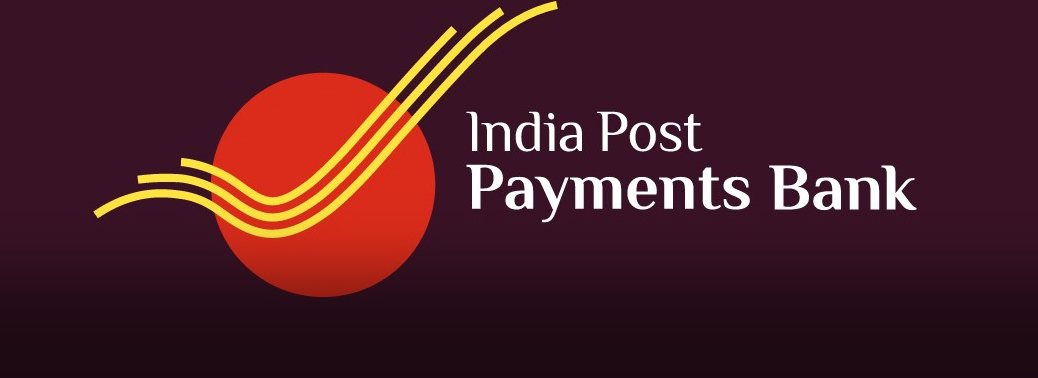
Prelims: Indian Economy
- Prime Minister Narendra Modi launched India Post Payments Bank (IPPB) under Indian postal department, in a bid to take banking to the doorsteps of its
About:
- The aim of India Post Payments Bank (IPPB) was to cash in on the unmatched network of post offices and a huge workforce of 3 lakh
- The objectives of setting up of payments banks will be to further financial inclusion by providing
- Small savings accounts
- Payments/remittance services to migrant labour workforce, low income households, small businesses, other unorganised sector entities and other
- The government owns 100 per cent in IPPB, which has been set up under the aegis of the Department of Posts, and will offer products and services through multiple channels such as counter services, micro ATMs, mobile banking app, messages and interactive voice response.
- IPPB will leverage tech platforms. It will use Aadhaar to open accounts, while a QR card and biometrics will drive authentication, transactions, and payments. Grameen Dak Sewaks will be armed with smartphones and biometric devices to handle
- The institute will operate like a banking organisation, but with smaller scale operations. Most banking operations like accepting deposits shall be done, but they cannot give loans or issue credit
- As per guidelines laid out by the Reserve Bank of India, it can accept deposits of up to Rs 1 lakh per customer, offer payments and remittance services, mobile payments/transfers/purchases and other banking services like ATM/debit cards, net banking and third-party fund
- It has tied up with PNB and Bajaj Allianz Life Insurance for products such as loans as well as Around 1.30 lakh access points will be located in rural areas, which thegovernment hopes to fulfil its financial inclusion goal. The IPPB also has a nod to link around 17-crore postal savings bank (PSB) accounts with its own set-up.
Services Provided:
- Phone Banking- provides the convenience to access your bank account from the comfort of your home, while at work or on the move. You can get information on your bank account, IPPB’s products & services and resolve queries. For this you need to call our PHONE BANKING service on our toll-free number 155299.
- Missed Call Banking- you can get your account information without any hassles, through the facility of missed call banking. Register your mobile number for IPPB’s missed call banking service and start availing the
- SMS Banking- provides the facility of SMS banking so that customers can quickly access the account details on their mobile phones, simply by sending an SMS to the IPPB’s SMS Banking
Mobile Banking- state-of-the-art, simple, secure and easy-to-use Mobile banking service through a Mobile app to access your IPPB account
Proposal for city level GDP under study
18, Aug 2018
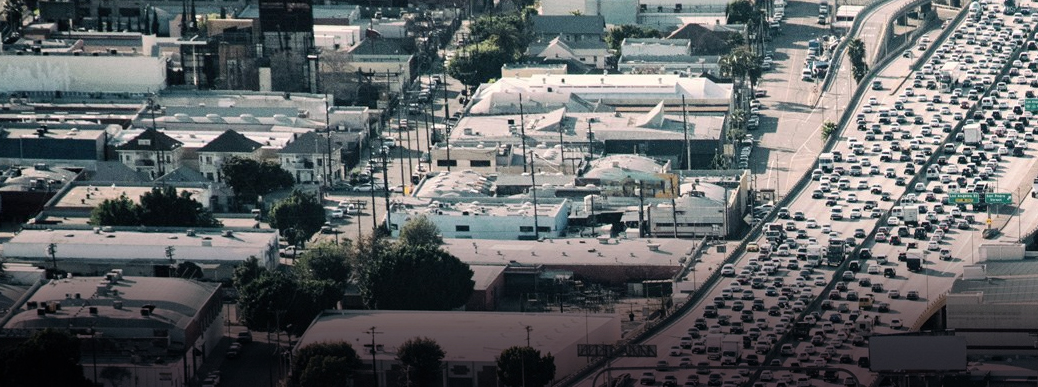
- The Economist Intelligence unit (EIU) recently did a feasible study of various models to calculate city-level GDPs for the MOHUA. Urban India responsible for an increasingly large share of the national GDP, the centre now hopes to bring out city-level GDP data.
Why it is needed?
- The Urban Sector is likely to contribute for about 75% of India’s GDP by 2020 comparatively from 29% by 1951 according to government data. This shows the rapid growth of the urban India.
- In order to make the growth sustainable, it is essential to improve the economy. we cannot improve what we cannot measure. hence it is a need for the hour to calculate the GDP of the cities to ensure the potential of the cities.
- Apart from the metro cities, calculation of GDP gives the transparent potential of the non-metro cities also. This gives the detailed idea for the investors to make wise decisions in the cities.
- It also shows the policy makers to prepare the clear-cut plan for the improvement of the cities.
- This helps to overcome the disadvantage of the smart cities which suffers from the fund for their own infrastructure.
- Though schedule 12 provides local government for collection of the taxes, it is the discretionary power of the state that hinders the local government to have enough fund for their development. thus, the GDP calculation of cities let to know the performance of the city’s economy which helps to raise their own fund through the bonds.
- It also gives the investors to analyse the risk for their investment.
Cabinet clears Rs. 1,600 cr. Mission to map coasts
17, Aug 2018
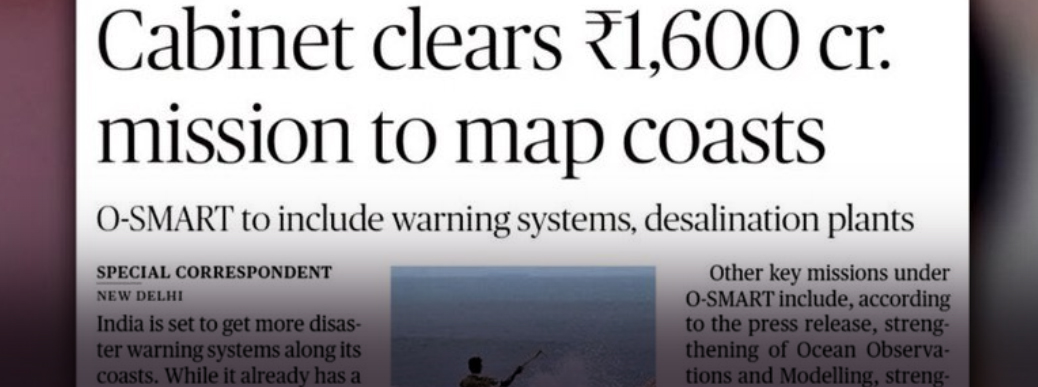
- The Cabinet Committee on Economic Affairs, chaired by the Prime Minister Shri Narendra Modi has given its approval for the umbrella scheme “Ocean Services, Technology, Observations, Resources Modelling and Science (O-SMART).
O-SMART:
- The scheme encompasses a total of 16 sub-projects addressing ocean development activities such as Services, Technology, Resources, Observations and Science.
- The services rendered under the O-SMART will provide economic benefits to a number of user communities in the coastal and ocean sectors, namely, fisheries, offshore industry, coastal states, Defence, Shipping, Ports etc.
- the ministry is proposing to continue the existing schemes in a focused way as a part of umbrella scheme of (O-SMART).
- Currently, five lakhs fishermen community are receiving this information daily through mobile which includes allocation of fish potential and local weather conditions in the coastal waters. This will help in reducing the search time for fishermen resulting savings in the fuel cost.
- Implementation of O-SMART will help in addressing issues relating to Sustainable Development Goal-14, which aims to conserve use of oceans, marine resources for sustainable development.
- This scheme (O-SMART) also provide necessary scientific and technological background required for implementation of various aspects of Blue Economy.
- The State of Art Early Warning Systems established under the O-SMART Scheme will help in effectively dealing with ocean disasters like Tsunami, storm surges.
- The technologies being developed under this Scheme will help in harnessing the vast ocean resources of both living and non-living resources from the seas around India.
- The important deliverables during the next 2 years envisage include
- Strengthening of Ocean Observations and Modelling.
- Strengthening of Ocean Services for Fishermen
- Setting up Marine Coastal Observatories for monitoring marine pollution in 2018
- Setting up Ocean Thermal Energy Conversion Plant (OTEC) in Kavaratti
- Acquisition of 2 Coastal Research Vessels for Coastal research
- Continuation of Ocean Survey and Exploration of Minerals and Living Resources
- Technology Development for Deep Ocean Mining- Deep Mining System and Manned Submersibles and
- Setting up Six Desalination Plants in Lakshadweep
GST Exemption
17, Aug 2018

- The GST Council has decided to extend the deadline for filing GSTR-3B returns for July for taxpayers in Kerala to October 5, and for August to October 10.
- It has also decided to exempt relief items from abroad to the State from GST and Customs duty.
Background:
- As Kerala battles the worst natural calamity in a century, state and non-state players from across the globe have come forward to help the flood-ravaged state.
- The United Arab Emirates (UAE) has extended $100 million as financial assistance to rebuild the southern Indian state amid a host of other nations.
- The Maldives, which shares rickety ties with India under its present regime, also stepped in and offered $50,000 (close to Rs 35 lakh) assistance to Kerala.
- InChina, the Indian diaspora in association with the Malayalee Association has raised over Rs 14 lakh for the welfare of flood relief victims in Kerala.
Solar cell safeguard duty put on hold
17, Aug 2018
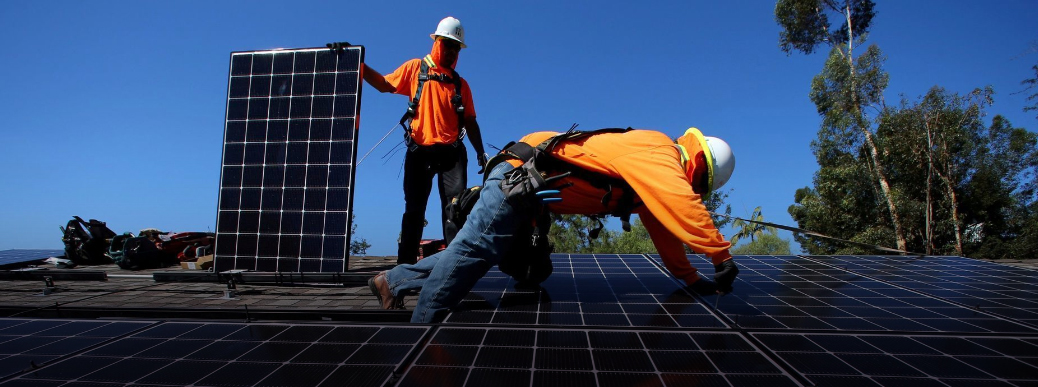
- The government issued a notification putting on hold the imposition of the safeguard duty on the import of solar cells from China and Malaysia.
Background:
- The Centre had imposed a safeguard duty of 25% on solar cells imported from China and Malaysia for the period from July 30, 2018, to July 29, 2019, following which the duty was to be reduced to 20% for the next six months, and further to 15% in the six months following that.
- Several firms filed writ petitions in the Orissa High Court against the imposition of the duty.
- It has been decided not to insist on payment of safeguard duty,
- the Department of Revenue, Finance Ministry said in the notification, citing the stay order.
Safeguard Duty:
- Sudden increase in imports as a result of trade liberalization can put strain on domestic industries.
- Safeguards are a type of safety-valve built in to the WTO to protect domestic producers temporarily while they adjust in order to become more competitive with foreign producers.
- A safeguard is a form of temporary relief.
- They are used when imports of a particular product, as a result of tariff concessions or other WTO obligations undertaken by the importing country, increase unexpectedly to a point that they cause or threaten to cause serious injury to domestic producers of “like or directly competitive products”.
- Safeguards give domestic producers a period of grace to become more competitive vis-à-vis imports.
- Safeguards usually take the form of increased duties to higher than bound rate or standard rates or quantitative restrictions on imports.
Way Forward:
- The country’s manufacturing sector on solar panels can be improved to produce domestic products competitive with foreign products.
- Private industry could form a consortium to venture into domestic manufacturing. The government should support such initiatives and the industry through various incentives and facilitate the industry by giving special incentives in the modified special incentive package scheme (M-SIPS), low-cost finance and low-tariff power similar to China.
- Th environment in terms of infrastructure and policies can be improved.
Centre moots overseas UDAN
16, Aug 2018

Why in news?
- The government is planning to extend its regional connectivity scheme Ude Desh Ka Aam Nagrik (UDAN) to overseas locations also as part of which it is evaluating plans to link Guwahati to Dhaka, Kathmandu, Kuala Lumpur, Yangon, Singapore and Bangkok.
Draft of the scheme:
- The scheme is designed for State governments that are keen to promote air connectivity on international routes identified by them and for which they are willing to provide subsidy to airlines.
- As per the draft, a State will identify international routes for which the Airports Authority of India (AAI) will determine a subsidy amount per seat and invite bids from domestic carriers. This will be followed by airlines submitting their proposals, which will include the routes they wish to connect as well as the subsidy needed by them.
- The airlines will bid on the percentage of flight capacity for which they require financial assistance, provided that the figure doesn’t exceed 60% of the flight capacity. The entity that quotes the lowest amount will be awarded subsidy for a particular route.
- However, the government will grant financial aid only for the actual number of passenger seats that are unsold, even if the airline had sought subsidy for a higher percentage of seating capacity at the time of bidding.
- An airline that is awarded a particular route will have exclusive rights to a subsidy on that route for a period of three years. The scheme is meant for domestic airlines.
- Only fixed wing aircraft with more than 70 seats can be operated under the scheme and airlines will have to conduct a minimum of three and a maximum of seven departures on a given route on three days in a week.
Key difference between Regional connectivity scheme and UDAN international:
- The key difference between this scheme and the regional connectivity scheme (RCS) for domestic routes is that there is no capping of fares. Under RCS, fares are capped at ₹2,500 for one hour of flight on a fixed wing aircraft in order to make air travel affordable, which was why the scheme was called Ude Desh Ka Aam Nagrik (UDAN).
UDAAN:
- The primary objective of Regional Connectivity Scheme – UDANis to facilitate regional air connectivity by making it affordable as stated in the RCS document released by the Ministry of Civil Aviation.
- With the launch of Regional Connectivity Scheme (RCS) UDAN (‘Ude Desh ka Aam Nagrik’) the aviation sector is set to get a big boost and tap huge market of middle-class flyers living in Tier-2 and Tier-3 cities. This is the first-of-its-kind scheme globally which harnesses the power of the markets to provide a public good.
STT for derivatives
16, Aug 2018

- Central Board of Direct Taxes (CBDT) clarified that physical settlement in the equity derivatives segment will attract securities transaction tax (STT) of 0.1 per cent.
Background:
- The clarification comes after Mumbai-based stock brokers association ANMI dragged the NSE to court on the levy of STT on the newly-introduced physical settlement of equity derivatives trades.
STT:
- Securities transaction tax, as the name itself implies is tax levied on the value of securities. Securities transaction tax is a direct tax and is levied and collected by the central government of India.
- Securities transaction tax (STT) was introduced in India a few years ago to curb tax avoidance on capital gains. Earlier, many people usually didn’t declare their profits from sale of stocks and avoided paying capital gains tax. As a result, the government could tax only those profits that had been declared, thus resulting in loss of revenue to the former.
- Introduced in the Union Budget 2004-05.
- Transactions in stock, index options, and futures would also be subject to the transaction tax.
- This tax is payable whether you buy or sell a share and gets added to the price of the stock at the time the transaction is made. Since brokers have to automatically add this tax to the transaction price, there is no way to avoid it.
- STT is a neat, efficient, and easy-to-administer tax and it has the great advantage of virtually eliminating tax avoidance.
- The broker or asset management company (AMC) deducts STT at the source, i.e. at the time of the transaction itself; the net result is that it pushes up the cost of the transaction.
Scope of STT:
According to the Securities Contracts (Regulation) Act, 1956, STT would be applicable on following securities:
- Shares, bonds, debentures, debenture stock, or other marketable securities of a similar nature, or of any incorporated company, or other corporate bodies Derivatives.
- Units or any other instruments issued by any collective investment scheme to the
- Government securities of equity in nature
- Rights or interest in securities
- Equity-oriented mutual funds
- STT is not applicable for any off-market transaction.
FDI: India remains top destination
16, Aug 2018
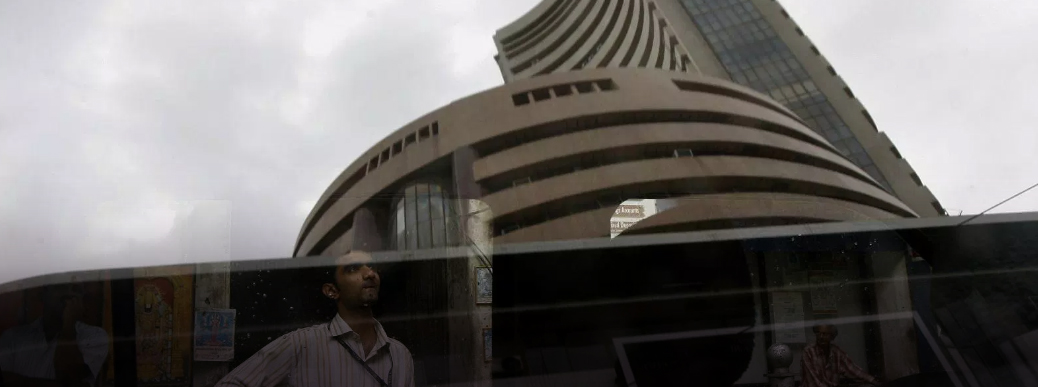
Why in news?
- India remains a preferred destination for foreign direct investment (FDI) as domestic consumption remains strong, according to the RBI Annual Report.
FDI Inflow:
- India received $37.3 billion capital inflow in 2017-18 as compared with $36.3 billion in the previous fiscal. During the 2015-16, the country received $36.06 billion.
- With manufacturing sector gathering momentum, helped by both services and agriculture sectors, consumption demand remains robust in the country making it an attractive investment destination.
- Manufacturing activity is gathering momentum on the back of new business, both domestic and export orders, rising capacity utilisation and drawdown of inventories.
- In the services sector, the impulses of growth are broadening and expansion in employment conditions is generating anticipations of improvement in demand conditions.
- The increase in foreign capital flow was mainly due to higher flows into the communication services, retail and wholesale trade, financial services and computer services.
- In terms of sources, FDI inflows were concentrated mostly in Mauritius and Singapore that accounted for about 61 per cent of total equity investments. This was despite the phased implementation of an amended double taxation avoidance agreement with these countries effective from April 2017 to prevent evasion of taxes on income and capital gains.
- With the ongoing policy reforms in sectors ranging from single brand retail trading, civil aviation, real estate broking service and simplification of legal and regulatory system, India moved into the top 100 countries in the World Bank’s Ease of Doing Business global rankings.
- According to the UNCTAD’s Investment Trends Monitor (2018), India was the 10th largest recipient of global FDI in 2017 and remained the topmost destination for greenfield capital investment — even ahead of China and the US.
Highlights of RBI’s Annual Report:
- The counting of demonetised notes is complete. RBI said that Rs 15.31 lakh crore has been returned. That is 99.3 percent of the 15.41 lakh crore of old Rs 500 and Rs 1,000 notes that were in circulation as on 8 November 2016.
- The new currency notes are susceptible to counterfeiting, just as the old ones were. There was a jump in the number of fake notes detected for the new Rs 500 and Rs 2,000 notes, as also for the Rs 50 denomination. However, the overall number of fake currency notes detected fell to 522,783 pieces in 2017-18 compared to 762,072 pieces a year ago. That amounted to Rs 23 crore of counterfeit notes in 2017-18, half the value of what was detected a year earlier.
- Demonetisation hasn’t succeeded in pushing people away from cash. RBI data shows that in 2017-18, households added currency worth 2.8 percent of gross national disposable income (GNDI). That was because there was dis-saving of cash to the extent of 2 percent the previous year. Overall, household savings in financial instruments also rose to 11.1 percent of GNDI.
- Despite the increased cash holding and currency in circulation, demonetisation has boosted digital payments. In 2017-18, non-cash transactions rose 45 percent by volume and 29 percent by value.
- After the Punjab National Bank fiasco, the value of frauds in the Indian banking system has expectedly risen to Rs 41,000 crore in 2017-18. However, the number of cases has also jumped to 5,835 in FY18 from an average of 4,500 over the past 10 years. State-owned banks accounted for 93 percent of the frauds.
- At the end of March 2018, twelve out of every Rs 100 lent by Indian banks had turned sour. The annual report said that this number is only expected to increase by the end of the current financial year. It is not entirely unexpected. The power sector is in a mess and estimates from external agencies suggest it could add as much as Rs 1.7 lakh crore (or about 1.7 percent of bank credit) to banking sector bad loans.
- The annual report projects GDP growth of 7.4 percent for fiscal 2019-20. That is unchanged from the August monetary policy statement. This growth will be driven by three engines of the economy – consumption (both rural and urban), investment and exports, the report said.
- There was an increase in the flow of financial resources from banking to the commercial sector in fiscal 2017-18. Banks accounted for 43 percent of all fund flows to the commercial sector in 2017-18 compared to 26.7 percent a year earlier. Credit growth follows economic growth and there is scope for credit absorption. But for that, the bad loan problem has to be tackled and (public sector) banks sufficiently recapitalised.
- RBI’s inflation outlook, too, is unchanged from the 1 August monetary policy statement. It projects retail inflation at 4.6 percent in July to September 2018; 4.8 per cent in October to March and 5 percent in the first quarter of the next financial year.
Crash in Rupee
16, Aug 2018

- Rupee was crash to a fresh all-time low of 71.10 against the US dollar amid prevailing weakness in emerging market currencies.
- The government attributed the fall in the currency to global factors. All currencies have weakened against the dollar, but the rupee has not weakened very much in comparison to other currencies.
Reasons:
- The rupee has been mostly losing its strength against the US dollar since the beginning of February this year, the time when Union Finance Minister imposed LTCG on equities and global sell-off started due to escalated volatility in stock markets around the globe.
- The rupee is the victim of a contagion effect impacting all emerging markets (EMs) triggered by the Turkish crisis.
- Higher oil prices also led to a fall in the rupee. A sharp fall in the rupee is a panic reaction in response to oil price rise.
- Increasing tensions between the world’s two-largest economies the US and China has kept investors on edge amidst fears of global trade war.
- A divergence between US dollar appreciation and a moderation in Euro may have amplified the dollar strength, an effect of which reinforced rupee’s depreciation.
- Monetary policy announcements by the US Federal Reserve may have further led to investment re-routing with a derived pressure on rupee valuation.
- Foreign Institutional Investors (FIIS) have sold over 40,000 crores in debt and equity so far this year. A wider current account deficit and continuous outflow from FIIs pushed the currency lower.
Institutional Framework:
- RBI’s exchange rate management policy has aimed at maintaining orderly conditions in the foreign exchange market by eliminating lumpy demand and supply and preventing speculative attacks, without setting a specific exchange rate target.
- Towards this end, RBI has used a combination of tools including sales and purchase of currency in both the spot and the forward segments of the foreign exchange market, adjustment of domestic liquidity through the use of Bank Rate, Cash Reserve Ratio (CRR), Repo rate etc., and monetary sterilization through specialized instruments
- RBI has been intervening actively in the foreign exchange market during episodes of Rupee appreciation by purchasing foreign exchange, while following a hands-off approach during episodes of Rupee depreciation.
Impact:
- The rupee is the worst performer in Asia this year, depreciating 9% against the dollar. The current account gap is widening mainly due to a rise in international crude oil prices as India imports more than 80% of its requirements.
- Indian economy which already suffered from large fiscal and current account deficit adversely affected by relatively exchange rate pressure.
- Indian companies are reporting huge foreign exchange losses due to the depreciation of Indian rupee. This declines the overall profitability of these companies.
- There has been a strong and significant negative impact of this currency volatility on many sectors. This relationship will become more complex if there is the heavy dependence on imported resources in the exported products.
-
Merchandise trade:
This refers to a nation’s international trade, or its exports and imports. In general terms, a weaker currency will stimulate exports and make imports more expensive, thereby decreasing a nation’s trade deficit (or increasing surplus) over time.
- Foreign capital will tend to flow into countries that have strong governments, dynamic economies and stable currencies. A nation needs to have a relatively stable currency to attract investment capital from foreign investors. Otherwise, the prospect of exchange losses inflicted by currency depreciation may deter overseas investors.
-
Inflation:
A devalued currency can result in “imported” inflation for countries that are substantial importers.
-
Interest Rates:
As mentioned earlier, the exchange rate level is a key consideration for most central banks when setting monetary policy.
- A strong domestic currency exerts a drag on the economy, achieving the same end result as tighter monetary policy.
- Thus, the depreciating rupee puts pressure on prices and hence makes it difficult for the Reserve Bank of India which wants inflation within a range.
-
Current Account Deficit:
There is Pressure of increasing in it. The country with high exports will be happier with a depreciating currency India, on the other hand, does not enjoy this because of crude oil and gold consist a major portion of its import basket.
-
Foreign Investors
: Higher real interest rates generally attract foreign investment but due to slowdown in growth there is increasing pressure on RBI to decrease the policy rates.
- Under such conditions foreign investors tend to stay away from investing. This further affects the capital account flows of India and puts a depreciating pressure on the currency.
Way Forward:
- Maintaining a competitive real exchange rate is imperative for boosting intermediate and long-term economic growth and maintaining the external balance.
- Thus, using scarce foreign exchange reserves to prevent currency depreciation in the face of sustained downward pressure on the currency due to growing fiscal deficit and/ or massive capital outflows would be problematic, apart from being unsustainable.
- On the whole, for countries relying on volatile foreign capital inflows to finance their consumption and investment needs, a careful reserve management policy along with a sound fiscal policy are necessary to balance the multiple objectives of stable growth and external sector balance in the long run.
- The most positive impact of depreciation of rupee is the stimulation of exports and discouraging imports and thus improving the current account deficit.
- But Sinking Rupee is a big danger for Economy, the prevailing situation is creating internal as well as external threats for the economy. India may face worst financial crisis if it fails to stop the slide in the rupee.
RBI on stressed assets
12, Aug 2018
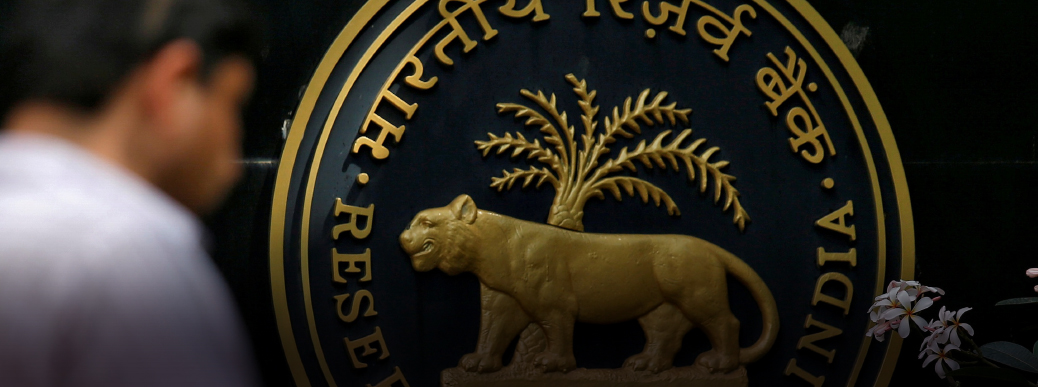
- The Reserve Bank of India (RBI) has started scrutiny of 200 large accounts to assess level of stress and provisioning done against them by respective banks.
About:
- RBI is examining as to whether banks have followed prudential norms in respect of these stressed assets. This exercise comes at a time when gross NPAs in the banking system has risen to around ₹10.3 trillion.
- It is also assessing classification, provisioning and debt recast in respect of those loans.
- This is a part of regular annual inspection of book of the banks that the central bank undertakes each year after the closure of the financial year.
- The government has empowered the RBI to chalk out plans for addressing the bad loans problem, with a focus on large stressed accounts that have been classified partly or wholly as non-performing from amongst the top 500 exposures in the banking system.
Reasons:
- It is a part of effort to contain rising non-performing assets.
- Asset classification practices were not as per the set standards and several banks resorted to ever-greening of accounts.
- Banks were postponing bad-loan classification while depicting accounts as performing.
- For early identification to tackle stressed loans, which gave them a jumpstart, especially in large and complex cases of corporate debt.
Background:
- A non performing asset (NPA) is a loan or advance for which the principal or interest payment remained overdue for a period of 90 days.
- The NPA story is not new in India and several steps have been taken by the government on legal, financial and policy level reforms. Taking note of the existing stressed assets and NPA situation, the RBI introduced a host of schemes and frameworks with the aim of curtailing the growing NPAs. These are tabled as under:
- Joint Lenders‘Forum and Plan
- Strategic Debt Restructuring (SDR)
- Insolvency and Bankruptcy Code, 2016
- Scheme for Sustainable Structuring of Stressed Assets (S4A)
Fall Army worm
09, Aug 2018

- A large-scale outbreak of a new pest named Fall armyworm is devastating maize crop throughout Karnataka.
- The finding is the first report of this pest in Asia.
- The study has confirmed the identity of the pest as Spodopte frugiperda, a native of the Western Hemisphere.
- The pest was first reported from the São Tomé and Príncipe islands and Nigeria in 2016 and spread across sub-Saharan Africa and established in 38 countries within two years.
- It has caused huge losses to staple cereals, especially maize and sorghum, affecting food security and trade.
- Present outbreak of the new pest will only add to the miseries of maize farmers, who have to bear the additional cost of plant protection.
About Fall Armyworm:
- Fall Armyworm is an insect native to tropical and subtropical regions of the Americas
- In the African continent, it was first detected in Central and Western Africa in early 2016
- In the larval stage, the insect causes damage to crops, feeding on more than 80 plant species.
- FAW primarily affects maize, but also rice and sorghum as well as cotton and some vegetables
- The moth can fly up to 100 km per night
- The female moth can lay up to a total of 1000 eggs in her lifetime
FASTAG
25, Jul 2018
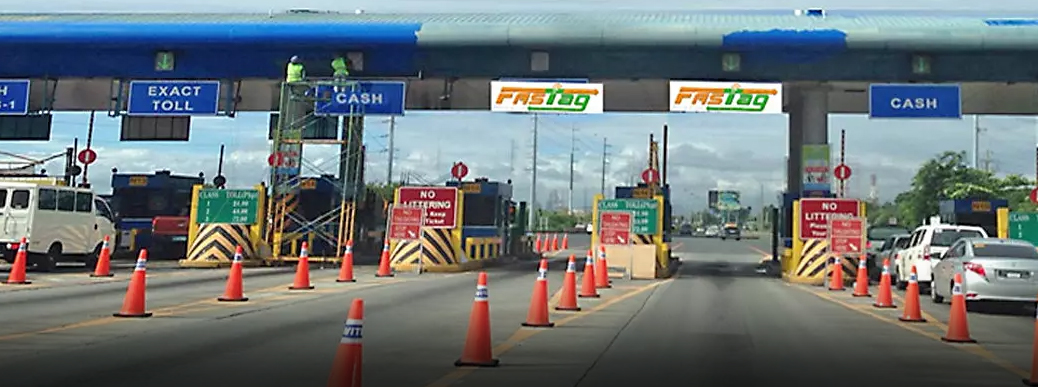
What is it ?
- To Regulate traffic in the tollgates, which has resulted in increasing cost of logistics, the Union Ministry of Road Transport and highways has launched FASTag.
How Does it work?
- It is one of the application of Radio-Frequency identification (RFID) Technology when a car crosses the tollgate, the car is affixed with a Tag on her windscreen which gets scanned automatically and no need to stop the car.
- The Tag is scanned by the workers om Electronic toll collection lanes and the toll tax is deduced from the respected bank that he/she provided.
- Finally a message is sent from the bank for acknowledgement.
Radio-Frequency Identification Technology:
- It is a wireless communication technology which incorporates use of electromagnetic coupling in a radio Frequency portion of the electromagnetic spectrum to uniquely identify an object, animal or person.
Radio-Frequency Identification Technology:
- It is a wireless communication technology which incorporates use of electromagnetic coupling in a radio Frequency portion of the electromagnetic spectrum to uniquely identify an object, animal or person.
- Works from low frequency (30Hz) to Ultra high Frequency upto micro-wave frequency (2.45 GHz)
Challenges:
Reader Collusion:
- When a signal from one RFID Reader interfere with other, Prevented using Anticollission Protocol.
Tag Collusion:
- When too many tags confuse RFID, this collision happens, especially while transmitting data at same time.
Applications:
It is increasingly used in internet of things, combining RFID with smartphone GPS can transfer sensor data including temperature, movement and location to be wirelessly transmitted used for people tracking from hospitals to track their patients to documents.
Health Care:
Used to reduce medical errors, meeting new standards, staff shortages and reducing costs can be done by RFID.
Government Library:
RFID Technology used to read barcodes used in library to browse multiple items simultaneously.
FDI
24, Jul 2018
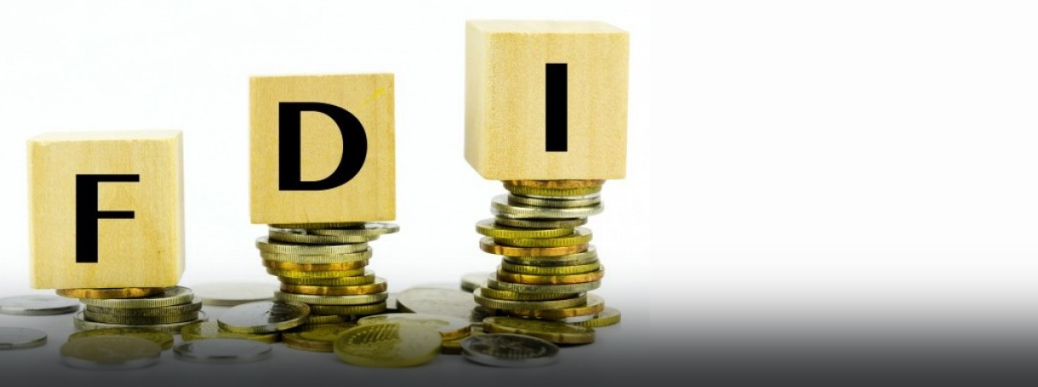
Why In News?
There has been 300% increase in FDI inflows in IT and 1TES in Karnataka and rebound in investment in Tamil Nadu.
What is FDI?
- Foreign direct investment, in which a Multi – national co-operation invest directly into the business of some other nation, mostly in developing countries.
- Green Field and Brown field are the two direct instruments of Investments.
- Other Investment are Foreign portfolio investment which is indirect in nature where a MNC or any other business invest in stock markets, equity shares etc.
Different Types of Investments:
| Invest in a new production place (land) and start a Business. | Invest in an already working or defunct production. |
Advantages of FDI:
- It is a long-term in nature as compared to FPI as the system involves investment in factors of production directly.
- Creates huge Employment but at the same time it is uncertain Example: Nokia production in plant in Sriperumbudur.
- It is a source for forex reserves as production happens in the investing nations.
Disadvantages of FDI:
- BEPS, results in shifting in profits via shell companies.
- No proper convention or laws to govern Goss border Corruption hence results in evasion.
Inter Creditor Agreement
24, Jul 2018
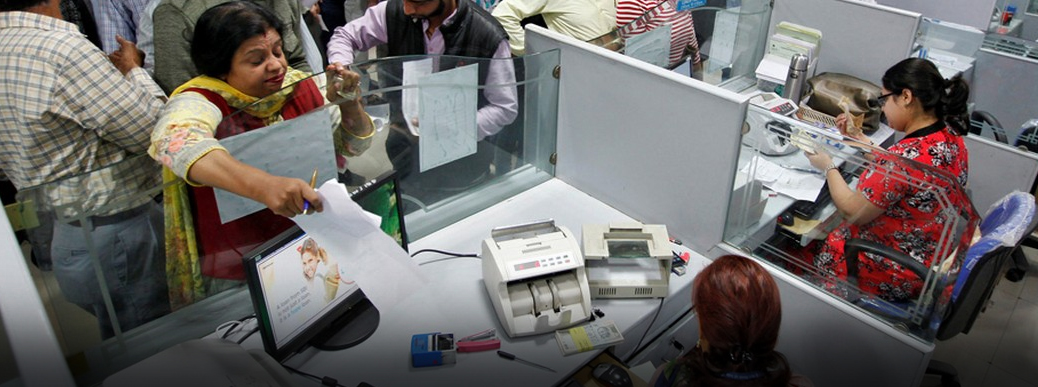
Lenders of the country signed an agreement known as Inter-creditor agreement (ICA) among themselves to grant power to the lead lender of the consortium to draw up a resolution plan for stressed assets.
What Is ICA?
- ICA is an agreement among banks that have dues from a borrower in stress. The pact mandates the lead bank to formulate a resolution plan that will be executed in a time bound manner.
- It was framed under the aegis of Indian banks association, following the recommendation of Sunil Mehta Committee on stressed assert resolution.
Who are all the participant?
Around 22 public sector banks (including India Post Payments Bank), 19 private lenders and 32 foreign banks signed the inter-creditor agreement (ICA) to fast track the resolution of stressed assets.
Applicability:
The ICA is applicable to all corporate borrowers who have availed loans for an amount of 50 crore or more under consortium lending / multiple banking arrangement.
Procedures of ICA:
- Under the ICA, which is part of project ‘Sashakt’, each resolution plan will be submitted by the lead lender to an Overseeing Committee.
- The pact gives more powers to the lead lender in a consortium and allows a resolution plan to be approved if 66 percent of the banks in the group agree to it.
- The lead lender, that is the lender with the highest exposure, shall be authorised to formulate the resolution plan, which shall be presented to the lenders for their approval.
- The decision-making will be by way of approval of ‘majority lenders’, those with 66 % share in the aggregate exposure.
- The lead lender will submit the resolution plan along with the recommendations of the Overseeing Committee to all the relevant lenders.
- Once a resolution plan is approved by the majority lenders, it will be binding on all the lenders that are a party to the ICA.
- Dissenting lenders can either sell their exposure to another lender at a 15% discount or buy the entire exposure of all the banks involved at a 25% premium.
- The framework authorises the lead bank to implement a resolution plan in 180 days and the leader would then prepare a resolution plan including empanelling turnaround specialists and other industry experts for operation turnaround of the assets within RBI’s stipulated time-frame of 180 days.
Project sashakt:
- The plan envisages creating a large asset management company (AMC) with wider participation from banks that will provide equity investments to the new AMC. An Alternative Investment Fund (AIM) is also on the cards that will mobilise funds for the buyout of stressed assets.
- The plan talks about dealing with stressed assets of up to Rs 50 crore within the bank itself; an inter-creditor agreement with a 180-days deadline for Rs 50-500 crore loans; and an independent AMC for loans above Rs 500 crore.
Explore the potential of the real estate market with the property leads available at https://www.propertyleads.com/virtual-assistant-for-real-estate-investors/ and stay ahead in your industry.
Policy Induced Inefficiencies are Export Policy
23, Jul 2018

Trade policy measures. a variety of trade policy measures applied in 2000-16 – such as export prohibitions, export quotas, export duties, or minimum export prices – have impeded the export of several key commodities and further contributed to depressing producer prices.
Recommendations:
- Streamline and clarify trade policy roles and responsibilities across the different ministries and agencies to iron out inconsistencies and simplify procedures.
- Move away from the use of export restrictions in order to create a stable and predictable market environment.
- Reduce tariffs and relax the other restrictions on imports which are applied from time to time with a view to creating a more open and predictable import regime.
Domestic policies:
- Minimum support prices being set below international prices for several commodities at different periods between 2000 and 2016.
- Policies that govern the marketing of agricultural commodities include the Essential Commodities Act and APMCs. Through these Acts, producer prices are affected by regulations influencing pricing, procuring, stocking, and trading commodities.
- Restrictions caused by both the ECA and APMC Acts also deter private sector investment in marketing infrastructure.
- Differences among the states in the status of their respective APMC Acts and in how these Acts are implemented add to the uncertainties in supply chains and drive up transaction costs.
Recommendation:
- Bring MSP on par with international price.
- Reform market regulations and strengthen market functioning across states build on and reinforce initiatives already underway (E-NAM, Model Acts).
- Prioritise institutional reforms to allow development of a single market for agricultural products.
- Support farmers to integrate in competitive markets and allow the private sector to play a greater role.
Budget Policy:
- Virtually all of the budgetary transfers to agricultural producers in India are subsidies for variable input use, with overwhelmingly subsidised fertilisers, electricity, and irrigation water.
- On the other hand, public expenditures financing general services to the sector have declined over the last decades.
- Most of this expenditure is in development and maintenance , followed by the cost of public stockholding and expenditure on the agricultural knowledge and innovation system.
- The sum of all agriculture and food-related spending (budgetary transfers to producers, to agriculture as a whole, and transfers to consumers from taxpayers), without accounting for the negative market price support, amounts to 1.9% of India’s GDP in 2014-16.
- This shows the high cost to the Indian economy and contrasts with the sector’s poor performance in productivity growth, highlighting the need for resources to be applied more effectively.
Recommendations:
- Strengthen the overall access to credit and particularly encourage long-term loans.
- Re-focus investments on fostering the agriculture enabling environment, such as infrastructure and education in rural areas.
- Increase research intensity and implementation on field.
- Move gradually to targeted Direct Benefit Transfers & allow the private sector to play a role in managing remaining stocking operation.
- Clarify roles and responsibilities at central level by bringing key policy areas under a single umbrella.
- Strengthen co-ordination among central ministries and agencies and between the centre and the states.
Conclusion:
Many policy initiatives are already underway or in the pipeline and these should be continued or reinforced. Only by shifting scarce budgetary resources to investments that will increase resilience and sustainability, while allowing better functioning markets to determine farmers’ remuneration to a much greater degree, can the potential of the sector to contribute to growth and jobs be fully realised.
It would help India improve food security for its vast population, advance the quality of life of its millions of smallholders, overcome severe resource and climate pressures, while generating sustainable productivity growth and creating a modern, efficient and resilient agro-food system that can contribute to inclusive growth and jobs throughout the economy.
India Post-Life Insurance
23, Jul 2018
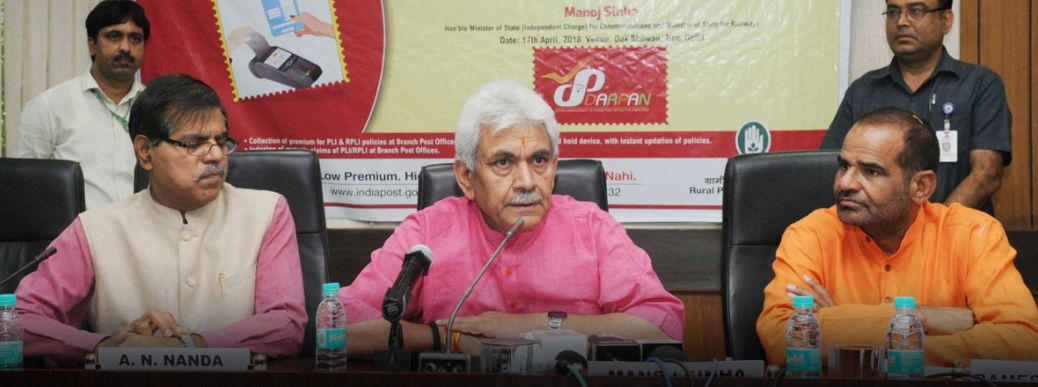
The Department of Posts plans to build on its life insurance, which can be seen as part two of the government’s flagship Jan Dhan Yojana for financial inclusion.
Schemes:
The Department of Post has two life insurance schemes Postal Life Insurance (PLI) and Rural Postal Life Insurance (RPLI).
Postal Life Insurance (PLI):
Postal Life Insurance (PLI), the oldest insurer in the country was introduced under the Queen Empress of India in 1884.The scheme at the time was intended as welfare scheme to benefit Postal service employees. It was later extended to employees of Telegraph department.
Eligible:
- This policy is offered by the Government of India, to employees of Central and State Public Sector Enterprises, Central and State Governments, Government Aided Educational Institutions, Universities, Government aided Educational Institutions, Autonomous Bodies, Local Bodies, Cooperative Societies, Joint Ventures having a minimum of 10% Government/ PSU stake, etc and later extended to professionals.
- The minimum age limit for entry is 19 years and maximum age limit for entry is 55 years.
Features:
- Postal Life Insurance Scheme offers Life Insurance cover with high returns on premium.
- The maximum sum assured offered under this scheme is Rs. 50 Lakhs minimum 20,000.
- Loan facility is available against this policy.
- The insured can avail income tax exemption as provided under Sec. 88 of the Income Tax Act.
- The policy can be transferred to any Circle within India, at no additional charges.
- Name of nomination can be changed by the insured at any given time.
- Government of India, guarantees Postal Life Insurance.
Rural Postal Life Insurance:
Rural Postal Life Insurance (RPLI) came into being as a sequel to the recommendation of the Official Committee for Reforms in the Insurance Sector (Malhotra Committee RPLI is the only insurance provider in the country to give the highest returns to customers at the lowest premium amount.
Eligible:
- Customers who come within a rural area can only apply for schemes under RPLI.
- The minimum age limit for entry is 19 years and maximum age limit for entry is 55 years.
- Government and private employee are eligible.
Features:
- Sum assured Rs10.000 to maximum of 10 lakhs.
- Policyholders of rural postal insurance schemes can avail credit by pledging their schemes as collateral for security.
- Insurance policies can be converted from one scheme to another under rural postal insurance. So if a customer is not satisfied with features and benefits of one scheme, he/she can get it converted to another as per rules set by postal insurance department.
- Government of India, guarantees Postal Life Insurance.
Name of nomination can be changed by the insured at any given time.
Study on Agriculture Policy in INDIA – ICRIER & OECD
23, Jul 2018
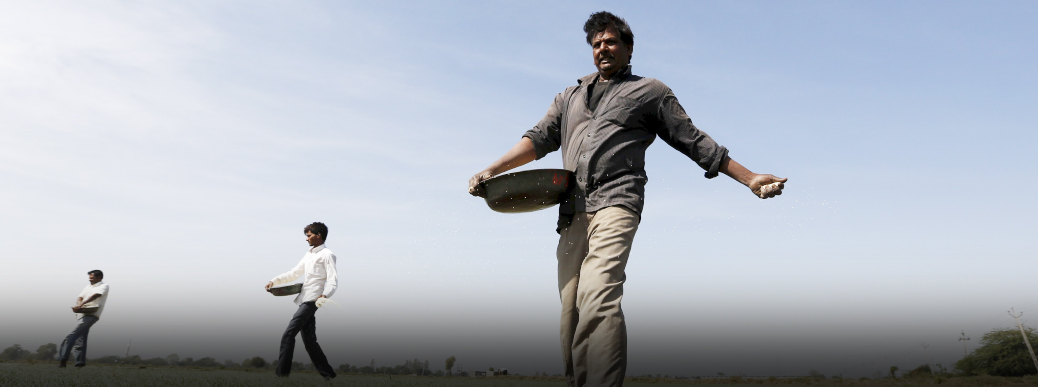
Agriculture Policies in India – proposes a set of policy measures that, taken together, would improve the incomes of farm households, improve nutrition outcomes for the most vulnerable members of Indian society, enable the farm and food sector to grow sustainably, and strengthen India’s competitiveness in global food markets.
The Report Highlights :
1. Notable progress made by the country’s agricultural sector over the past two decades.
2. The important challenges confronting the sector.
3. Declining but still persistent food insecurity and nutrition deficiencies, large numbers of small and resource poor farms
4. Increasing water scarcity, low productivity growth, and the uncertain impacts of climate change.
Findings:
1. There is no sufficiently strong mechanism exists to bring state and central level policy makers together to discuss problems, design solutions, and monitor performance for agriculture and allied sector.
2. Farmers in India are impacted by a combination of complex domestic market regulations and by import and export trade restrictions, which together often lead to producer prices that are below comparable international market levels.
3. Despite large subsidies to fertilisers, power, and irrigation, which offset somewhat the price-depressing effect of market interventions, the overall effect is that policy intervention actually reduces gross farm revenues by over 6% per year.
4. This is partly policy-induced and partly related to other inefficiencies in the marketing chain.
5. The report finds that consumers pay on average 25% less on all commodities as the result of policy interventions.
MSP Hiked
23, Jul 2018
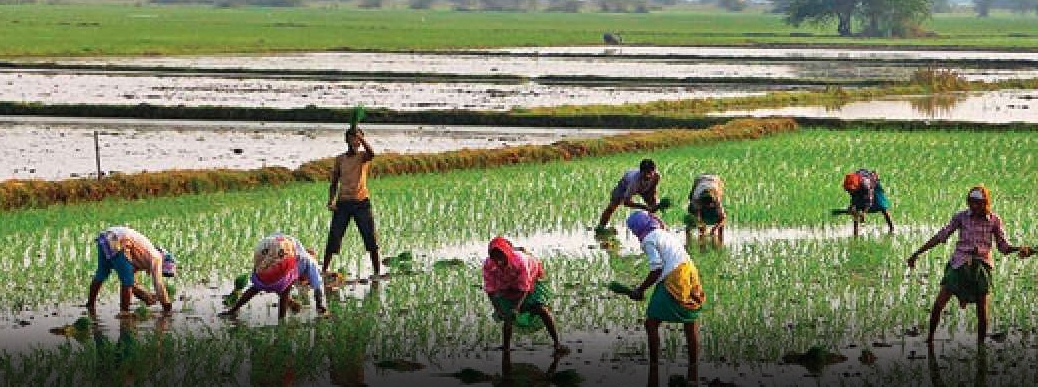
Union government hiked MSP for 15 kharif crops including paddy and pulses.
MSP:
What:
Minimum Support Price (MSP) is a form of market intervention by the Government of India to insure agricultural producers against any sharp fall in farm prices. It is a price at which the government buys crops from farmers, irrespective of its price.
When:
The minimum support prices are announced by the Government of India at the beginning of the sowing season for certain crops on the basis of the recommendations of the Commission for Agricultural Costs and Prices (CACP).
How:
CACP takes into account a comprehensive view of the entire structure of the economy of a particular commodity or group of commodities and include cost of production, changes in input prices, input-output price parity, trends in market prices, demand and supply, inter-crop price parity, effect on industrial cost structure, effect on cost of living, effect on general price level, international price situation, parity between prices paid and prices received by the farmers and effect on issue prices and implications for subsidy.
Different Ministries and Departments help the Commission to arrive at the MSP.
The lowest base A2- the one at which the minimum support price of most crops is at now, calculates only the cost of inputs for the farmer.
- The second base A2+FL-includes the imputed cost of unpaid family labour.
- The highest base C2- all of this and the imputed value of fixed capital assets and rental value.
Commodities covered:
- The MSP covers 23 crops that includes Cereals-paddy, wheat, barley, jowar, bajra, maize and ragi. Pulses-gram, arhar/tur, moong, urad and lentil.
- Oilseeds – groundnut, rapeseed/mustard, toria, soybeans, sunflower seed, sesamum, safflower seed and Niger seed. Others-copra, raw cotton, raw jute and Virginia flu cured (VFC) tobacco.
OR -
Khari crops:
Paddy, Bajra, Jowar, Maize, Ragi, Arhar, Moong, Urad, Cotton, Groundnut, Sunflower seed, soyabean black, Sesamum, Nigerseed.
-
Rabi crops:
Wheat, Barely, Gram, Masur, Rapseed, Safflower, Toria.
-
Other crops:
Copra, cotton, Jute, Sugarcane, Tobacco.
How it helps:
- MSP provide guarantee market for agriculture produce.
- The MSP helps to incentivize the framers and thus ensures adequate food grains production in the country.
- Support prices generally affect farmers decisions indirectly, regarding land allocation to crops, quantity of the crops to be produced etc. It is in this angle that the MSP becomes a big incentive for the farmers to produce more quantity.
- I gives sufficient remuneration to the farmers, provides food grains supply to buffer stocks and supports the food security programme through PDS and other programmes.
Problems in MSP:
- A rise in the MSP will lead to increase in food inflation.
- The Government of India has an MSP for 25 crops, but official procurement at the MSP is effectively limited to rice and wheat, and that too concentrated in a few States only.
- The procurement price will be announced soon after the harvest. Normally, the procurement price will be higher than the MSP, but lower than the market price.
- National Sample Survey’s (NSS) Situation Assessment Survey of Agricultural Households 2013, even for paddy and wheat, less than one-third of farmers were aware of the MSP; for other crops, such awareness was negligible.
Global Mobility Summit
22, Jul 2018
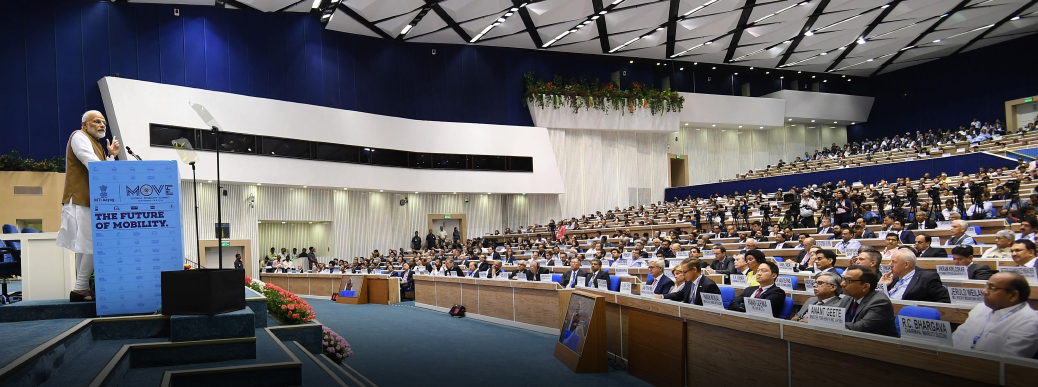
- NITI Aayog, in collaboration with various ministries and industry partners, is organising ‘MOVE: Global Mobility Summit’ in New Delhi.
- This Summit will help drive Government’s goals for vehicle electrification, renewable energy integration and job growth and also speed up India’s transition to a clean energy economy.
- Participants include both government and non-government organisations.
The six tracks or themes for the Summit will focus on:
1. Asset Utilization and Services
2. Comprehensive Electrification
3. Alternative Energy
4. Reinventing Public Transit
5. Logistics and Goods Transport
6. Data Analytics and Mobility
Movement:
The Expo will feature exciting future technologies and cutting edge innovations which will shape the mobility paradigm, showcasing India’s push towards transformative mobility solutions. will offer a first-hand perspective on automotive solutions, upcoming trends in the logistics sector.
Sunil Mehta Committee
22, Jul 2018

A committee under Sunil Mehta was set up to give recommendation on formation of an Asset Reconstruction Company for quicker resolution on stressed assets.
Committee has submitted report to Finance Minister. It recommended 5 point plan to fight stressed assets called Project ‘Sashakt’
1. Outlining on SME resolution approach-loans up to 50 crores, resolution to be completed by 90 days.
2. Bank led resolution approach-loans between 50cr to 500cr,resolution plan within 180 days. In case the lead bank is unable to complete the resolution process within 180 days, the asset would be resolved through Bankruptcy Code.
3. AMC(asset management company) led resolution approach for loans over 500crores.Set up by state run banks. They will also set up alternate investment funds to raise money and back this asset management company.
4. NCLT(National Company Law Tribunal) led resolution approach
5. Asset trading platform for both performing and non-performing assets.
NPA – An asset, including a leased asset, becomes non-performing when it ceases to generate income for the bank. A ‘non-performing asset’ (NPA) was defined as a credit facility in respect of which the interest and/ or instalment of principal has remained ‘past due’ for a specified period of time.
Banks are required to classify non-performing assets further into the following three categories based on the period for which the asset has remained non-performing and the realizability of the dues:
- Sub-standard Assets- which was classified as NPA for a period not exceeding 12 months.
- Doubtful Assets- which remained sub-standard for a period exceeding 12 months.
- oss Assets- A loss asset is one where loss has been identified by the bank or internal or external auditors or the RBI inspection but the amount has not been written off wholly.
Index of Eight Core Industries
21, Jul 2018
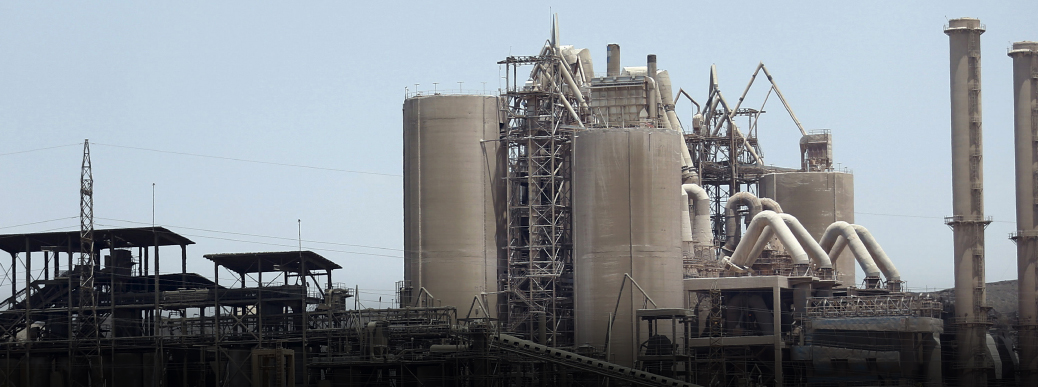
- Index of eight core industries was released by ministry of commerce and industries. The Eight Core Industries comprise 40.27 per cent of the weight of items included in the Index of Industrial Production (IIP).
- It is called core industries because of their likely impact on general economic activity as well as other industrial activity
- The Index of Eight Core Industries is a monthly production index, which is also considered as a lead indicator of the monthly industrial performance. The Index of Eight Core Industries is compiled based on the monthly production information received from the Source Agencies.
- It contains index, production and growth of Eight Core Industries. Eight Core Industries and their weightage are:
| 1 | coal | 10.33% |
| 2 | Natural Gas | 8.98 |
| 3 | Crude Oil production | 6.88 |
| 4 | Petroleum Refinery | 28.04% |
| 5 | Fertilizers | 2.63% |
| 6 | Steel | 17.92% |
| 7 | Cement production | 5.37% |
| 8 | Electricity generation | 19.85% |
The index is calculated by using the Laspeyre’s formula of weighted arithmetic mean of quantity relatives.
The objective of the ICI is to provide an advance indication on production performance of industries of ‘core’ nature before the release of Index of Industrial Production (IIP) by Central Statistics Office.
The Index is compiled and released by Office of the Economic Adviser (OEA), Department of Industrial Policy & Promotion (DIPP), Ministry of Commerce & Industry, Government of India, on last working day of every month at 5.00 P.M.
Base year 2011-2012.
GST Council
21, Jul 2018
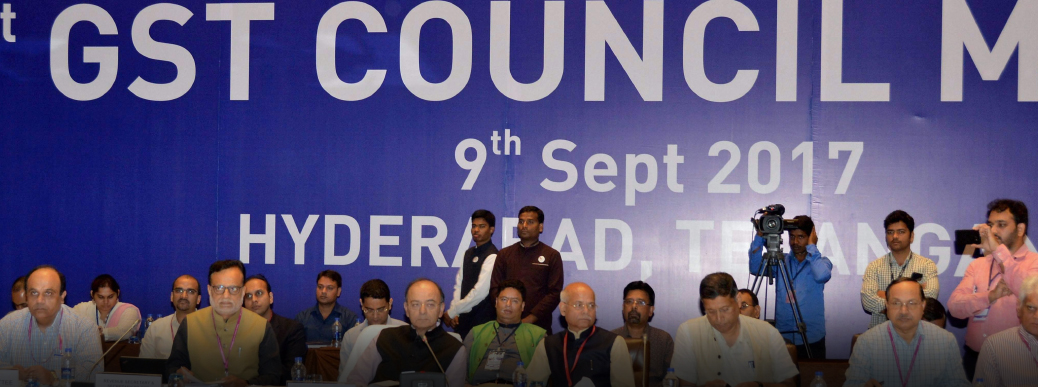
Conceding to a long standing demand, the GST council has exempted several goods from the GST net.
Background:
- Goods & Services Tax Council is a constitutional body for making recommendations to the Union and State Government on issues related to Goods and Service Tax.
- Article 279A says that President shall by order constitute a Council to be called the Goods and Services Tax Council.
- The Union Finance Minister – Chairperson;
- The Union Minister of State in charge of Revenue or Finance – Member;
- The minister in charge of finance or taxation or any other minister nominated by each state government – members.
- One-half of the total number of members of GSTC form quorum in meetings of GSTC. Decision in GSTC are taken by a majority of not less than three-fourth of weighted votes cast. Centre has one-third weightage of the total votes cast and all the states taken together have two-third of weightage of the total votes cast.
- The Goods and Services Tax Council shall make recommendations to the Union and the States on.
- The taxes, cesses and surcharges levied by the Union, the States and the local bodies which may be subsumed in the goods and services tax.
- The goods and services that may be subjected to, or exempted from the goods and services tax.
- Model Goods and Services Tax Laws, principles of levy, apportionment of Goods and Services Tax levied on supplies in the course of inter-State trade or commerce under article 269A and the principles that govern the place of supply.
- The threshold limit of turnover below which goods and services may be exempted from goods and services tax.
- The rates including floor rates with bands of goods and services tax.
- Any special rate or rates for a specified period, to raise additional resources during any natural calamity or disaster.
- Special provision with respect to the States of Arunachal Pradesh, Assam, Jammu and Kashmir, Manipur, Meghalaya, Mizoram, Nagaland, Sikkim, Tripura, Himachal Pradesh and Uttarakhand; and any other matter relating to the goods and services tax, as the Council may decide.
- The Goods and Services Tax Council shall recommend the date on which the goods and services tax be levied on petroleum crude, high speed diesel, motor spirit (commonly known as petrol), natural gas and aviation turbine fuel.
- The Council, made up of state finance ministers and with the Union finance minister as the chairperson, has served up a superb template for cooperative federalism. there will be disagreements, sometimes very fundamental, yet convergence for the cause of the larger global good is very much possible.
- Both the Centre and the States agreed to share their powers to achieve uniformity and remove compartmentalisation in indirect taxation.
- GST Implementation Committee (GIC), Standing Committees and Sectoral Groups have representation of Centre and State Officers in to ensure quick administrative decisions.
- Realising the future potential of India will require states to be key (if not equal) stakeholders in policy decisions, the traditional top-down approach with the Union government at the helm will no longer work.
- Given the deep political divide—given fundamentally differing political ideologies—between the Union government and some of the state governments, convergence of views is tough.
- And the way the council is structured, things can’t go forward without a consensus or at least a majority of the votes carrying the resolution. This is because the states together account for two-thirds of the votes and the centre holds only a third; given this structure, a consensus would be the preferred option instead of demanding a vote.
- The council’s decisions, if detrimental, cannot be undone by the states and the states will accordingly have to compromise on their budgets and the entire fiscal policies.
- It is not possible to attain the desired majority if Union doesn’t vote for the recommendation. In fact, Union can veto the recommendations of the Council.
- Therefore, it will not be out of place to say that council might act as an instrument for the backdoor entry of the central government into the decision and policy making sphere of a duly elected state government.
- The above implies that the Council has the power to make binding recommendations, and Union has attained veto over the law making power of the States. This is in clear violation of concept of federal structure of the Constitution of India. This is a clear abrogation of the fundamental tenet of the Constitution’s federal structure viz. the political sovereignty of states.
- It is then clear that the GST Council has shown the light on cooperative federalism. This intangible gain is as important as the fact that India is on the threshold of rolling out a monumental piece of reform.
Composition of GST Council:
GST Council which will be a joint forum of the Centre and the States, shall consist of the following members: –
Vision:
To establish highest standards of co-operative federalism in the functioning of GST Council, which is the first constitutional federal body vested with powers to take all major decision relating to GST.
Mission:
Evolving by a process of wider consultation, a Goods and Services Tax structure, which is information technology driven and user friendly.
Mandate of GST Council:
GST and Centre – State Financial Relations:
Reverse Charge Mechanism
20, Jul 2018
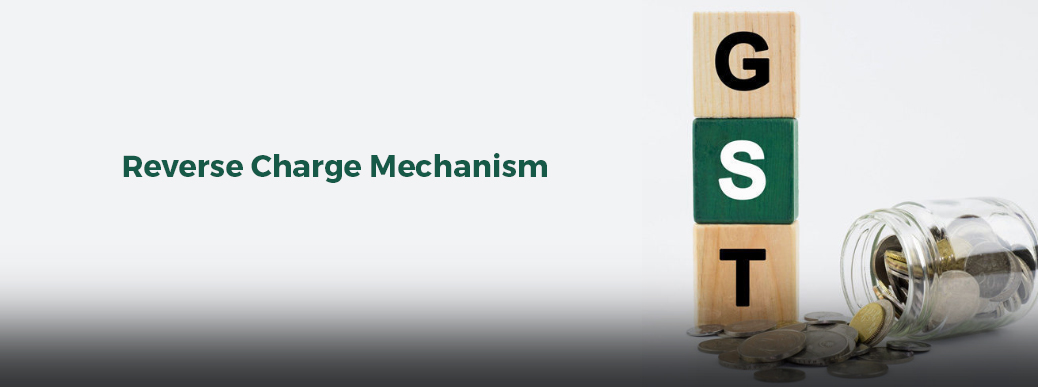
Definition:
Reverse charge is a mechanism where the recipient of the goods and/or services is liable to pay tax instead of the supplier.
Application of Reverse Charge in GST:
- If a vendor who is not registered under GST, supplies goods to a person who is registered under GST, then Reverse Charge would apply.
- This means that the GST will have to be paid directly by the receiver to the Government instead of the supplier.
- The registered dealer who has to pay GST under reverse charge has to do self-invoicing for the purchases made.
- For Inter-state purchases the buyer has to pay IGST. For Intra-state purchased CGST and SGST has to be paid under RCM by the purchaser.
GST Day
20, Jul 2018
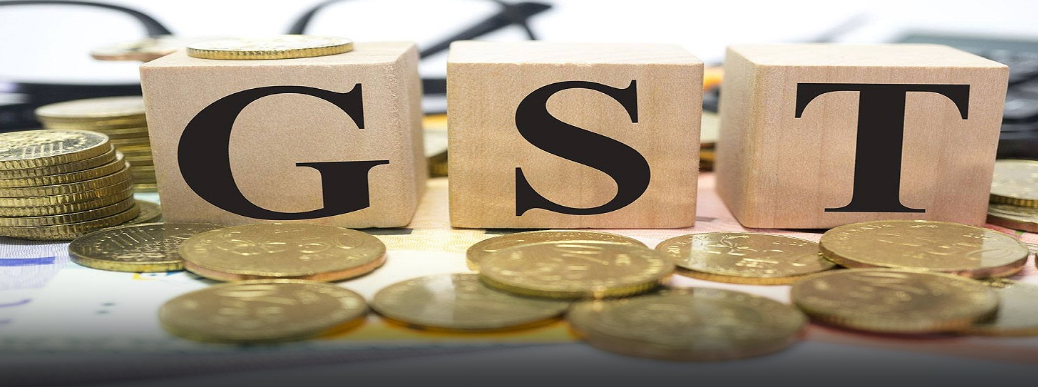
To commemorate first year of GST reform GST day was celebrated on 1st July 2018.
Constitution 101st Amendment Act- an indirect tax on the supply of goods and services. Goods and services are divided into five tax slabs for collection of tax – 0%, 5%, 12%,18% and 28%.
Goods & Services Tax Law in India is a comprehensive, multi-stage, destination-based tax that is levied on every value addition.
Components of GST:
1. CGST(central GST)-Collected by central govt
2. SGST(state GST)-collected by state govt
3. IST(interstate GST)-collected by central govt
GST council – constitutional body make recommendation to state and central government on issues related to GST.
Chair-Union Finance minister
Member-the union minister of state in charge of Revenue or Finance, State finance ministers
GST council govern:
1. Place of supply
2.Threshold limit
GST Rates
Special rates to be raised during natural calamity
Special GST for certain states
Goads exempted from GST: Petroleum products, alcoholic drink, electricity, and real estate are taxed separately by the individual state Governments.
RBI report on inward remittance
17, Jul 2018

- The United Arab Emirates (UAE) has emerged as the top source of inward remittances, while Kerala has received the maximum funds sent from abroad.
Remittance:
- Inward remittances are the money, which are transferred or sent by the overseas Indian diaspora to their family, friends, and relatives back in India.
- It can be in the form of foreign currency, traveller’s cheque or demand draft.
Impacts of Remittance in Economy:
- India is the largest recipient of migrants’ remittances in the world which comes to roughly 4 per cent of India’s Gross Domestic Product (GDP).
- Remittances play an important part in developing the countries’ economic systems, individual households, and businesses.
- The World Bank has acknowledged the importance of remittances by including them in its measure of creditworthiness, allowing nations with high remittance levels to borrow more money than they otherwise could.
- Remittances positively contributes to the overall economic development of a country that ultimately results in poverty reduction, social empowerment and technological progress.
- Though India does not heavily depend on this money, but still it adds up to the economy.
- Microfinance institutions can play a significant role by capturing and transferring remittances to entrepreneurs who can fuel productive activities
- It definitely enhances a country’s access to international capital market, that is, foreign institutional investments for financing a number of infrastructural and development projects.
- Migration remittances can be used for creating assets, small savings or setting up some small businesses. The investment in education and health can have positive impact on the human capital formation which will be beneficial for both the country and the family as a whole.
Anti – Dumping Measures Against China Ineffective, says Parliamentary committee
09, Jul 2018

Companies in India are side-stepping the anti-dumping measures imposed by the government by deliberately misclassifying items imported from China.
Report by Parliamentary Standing Committee on Commerce:
Findings:
- The report notes that the government has been reluctant to review the effectiveness of its anti-dumping measures.
- The anti-dumping framework also suffers with lax implementation.
- The unscrupulous elements are able to import the Chinese goods by circumventing the goods put under the anti-dumping framework through misclassification of products.
- This mis-declaration while importing the goods which otherwise have been put under anti-dumping measures nullify the whole effort to protect the domestic industry from unfair trade practices.
- The Standing Committee named the steel industry as one of the major offenders in this regard, saying that there have been complaints from the domestic steel industry that Chinese non-alloy steel is being imported by being declared as alloy steel.
- The committee noted that though nearly 75-80% of Chinese steel imports are covered under the anti-dumping duty, the import of such steel products have increased 8%.
- The committee finds that while anti-dumping measures are being evaded on the one hand proving to be ineffective; on the other hand, there is a general reluctance on the part of the government to review the effectiveness of anti-dumping measures undertaken by it.
- The committee feels that the government must take strong punitive measures so that the importers desist from such activities.
- The committee recommended that the Ministry of Steel, in consultation with the Directorate General Of Anti-Dumping And Allied Duties (now the Directorate General of Trade Remedies),to look into the rationalisation of anti-dumping duties and make them realistic to prevent adverse consequences of dumping of Chinese steel goods in the country.
- The committee finds it unfortunate that in the name of Ease of Doing Business, we are more than willing to give market access to Chinese goods which is destroying our manufacturing while China is smartly protecting its industry from Indian competition.
- Anti-dumping duty is an import duty imposed by government on imported products which have prices less than their normal values or domestic price.
- It is protectionist and counter import measure used by country under multilateral World Trade Organisation (WTO) regime to protect its domestic product and market from cheap import.
- Anti-dumping duty to be levied is recommended by Union Ministry of Commerce (i.e. by DGAD), while the Union Finance Ministry imposes it.
- By adopting the policies and measures taken by the US and the European Union where they adopted aggressive steps to keep a check on the Chinese imports.
- Government can be more proactive in protecting the local business by introducing measures such as anti-dumping and anti-subsidy actions while imposing other restrictions.
- The impact of Chinese imports has been such that India is threatened to become a country of importers and traders with domestic factories either cutting down their production or shutting down completely,” the committee said.
- According to commerce ministry data, India’s trade deficit with China increased more than two-fold at 219% from $16 billion in 2007-08 to $51 billion in 2016-17. India’s imports of $61 billion from China were six times its exports of $10 billion in 2016-17, making rising trade imbalance a major concern. India is negotiating a deal to get greater market access to China since last few years.






